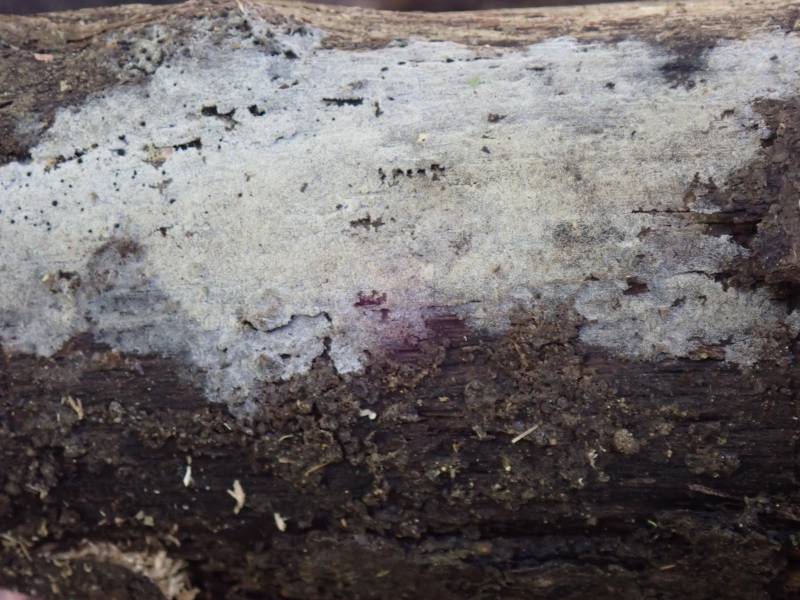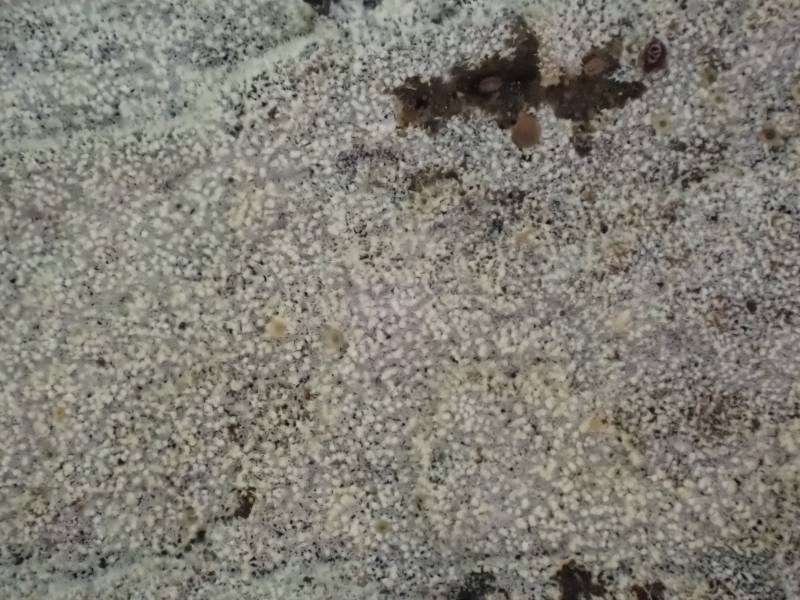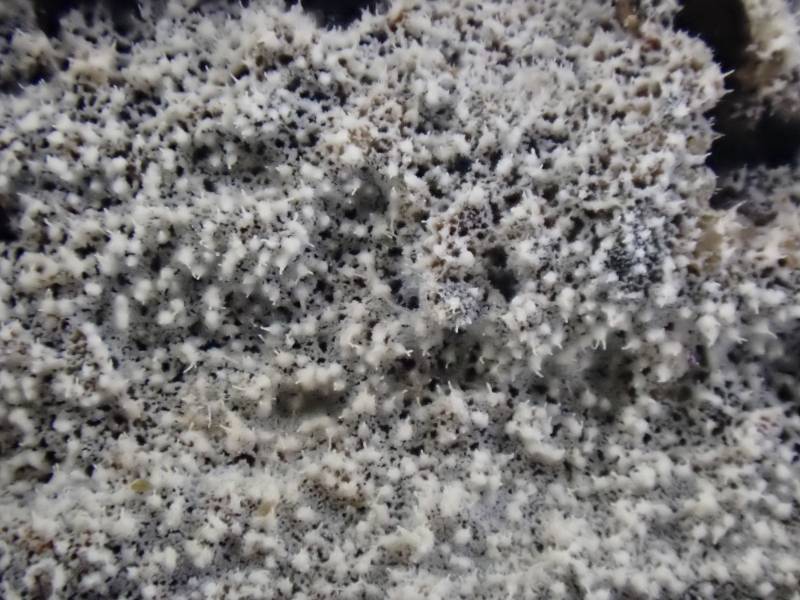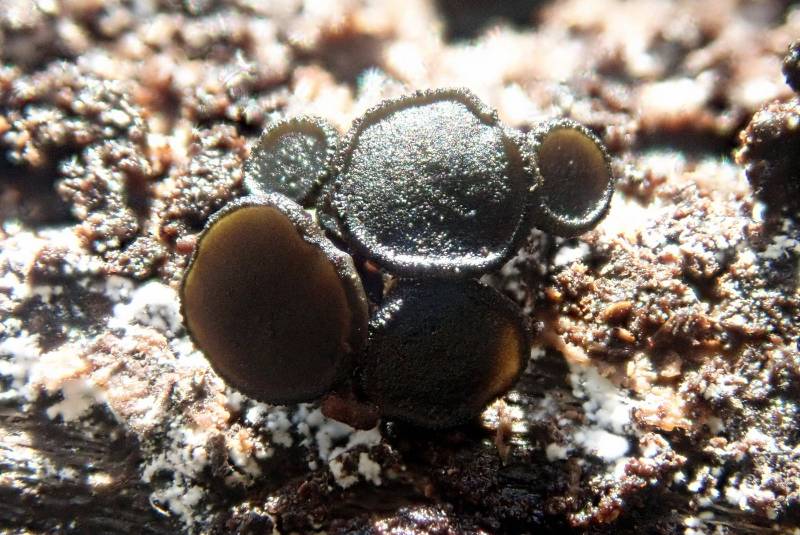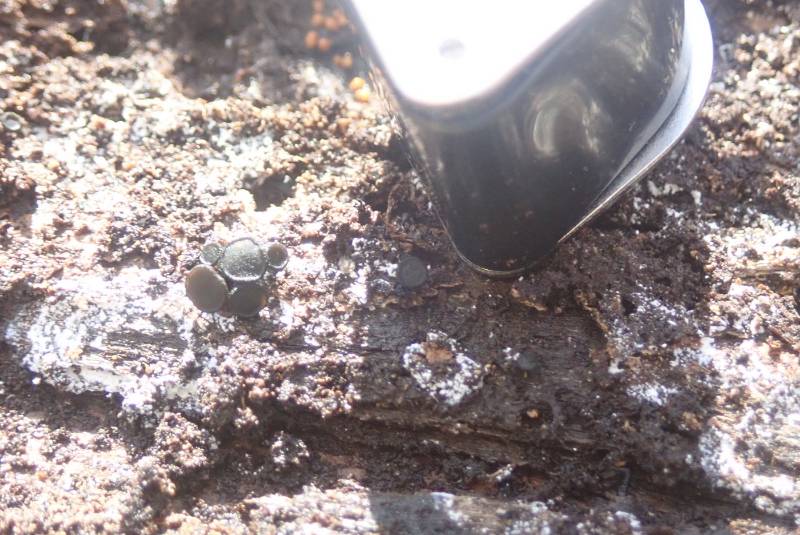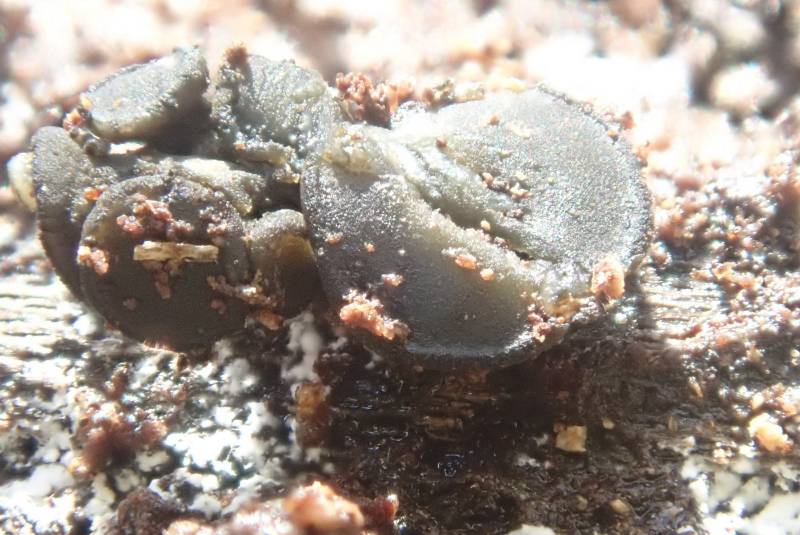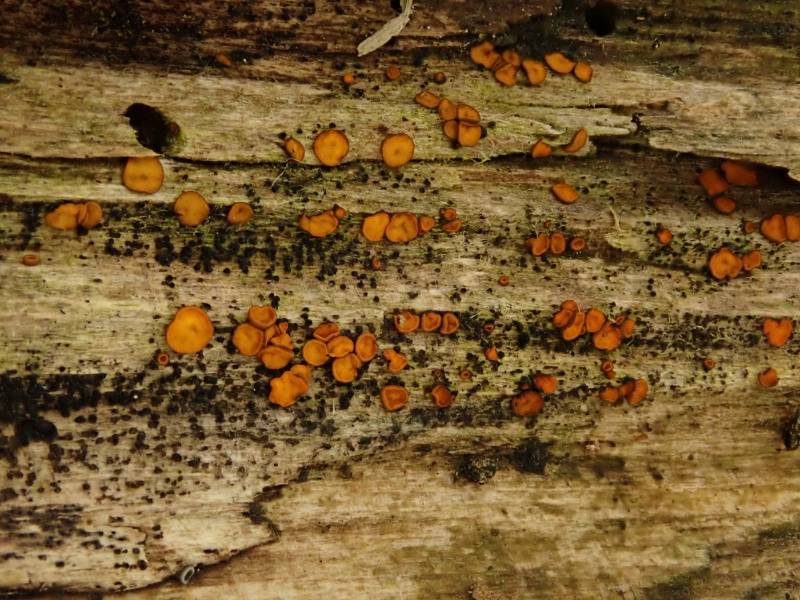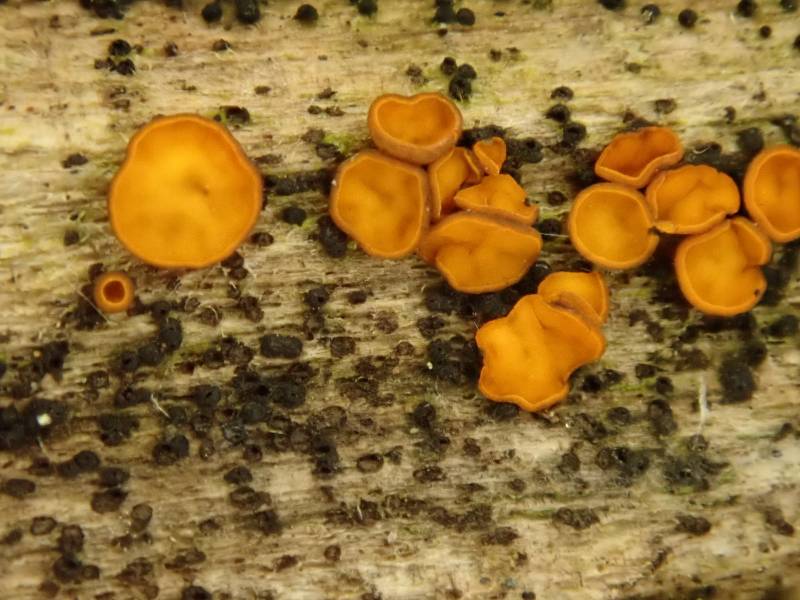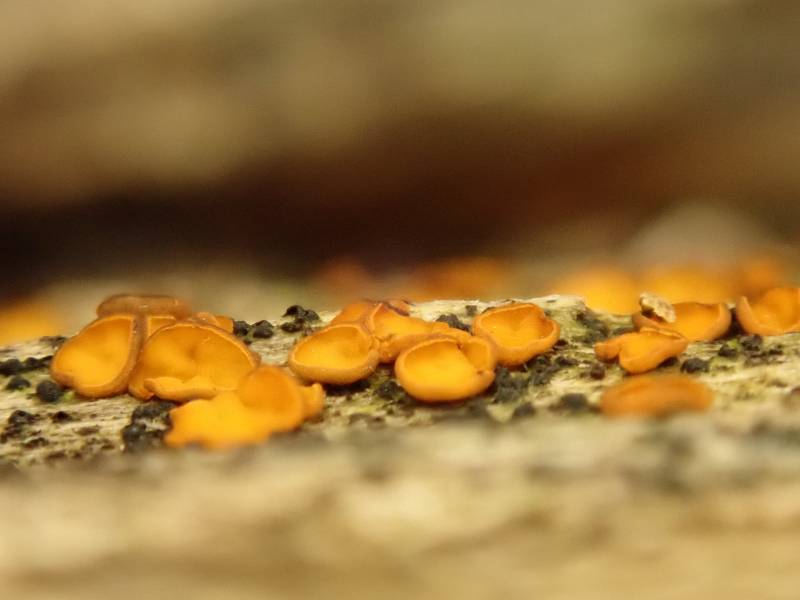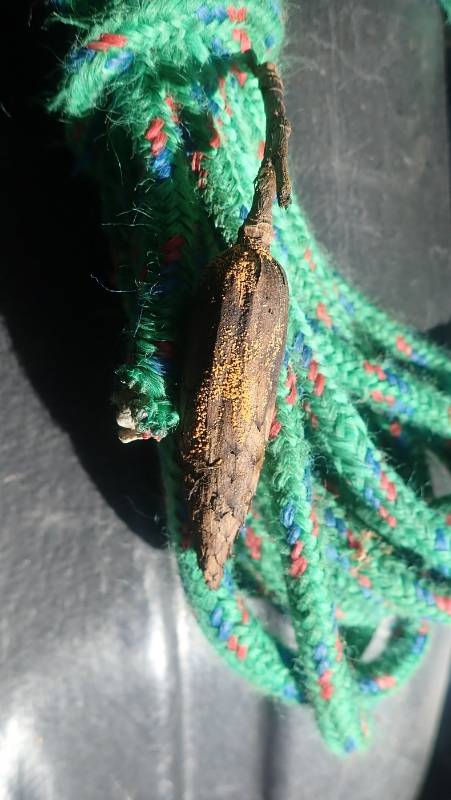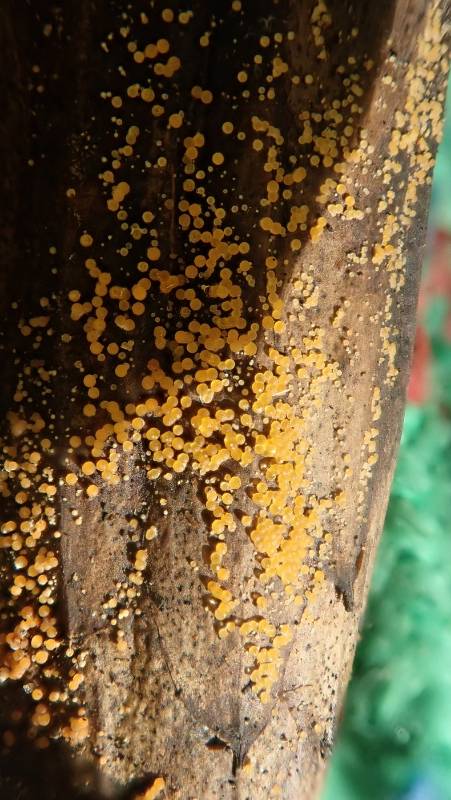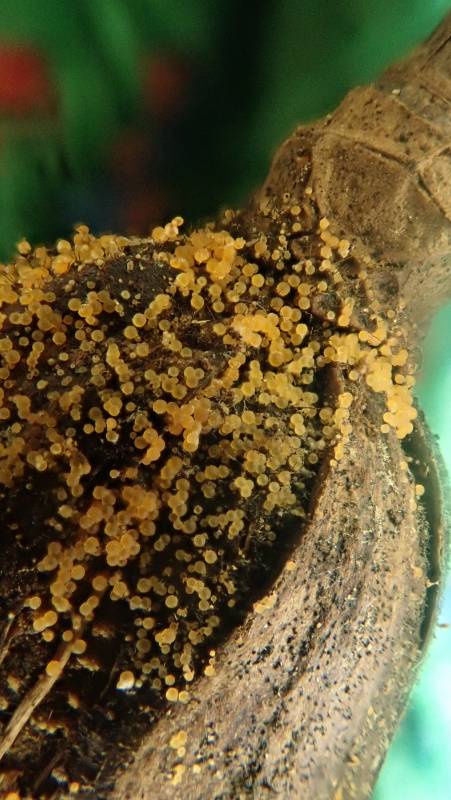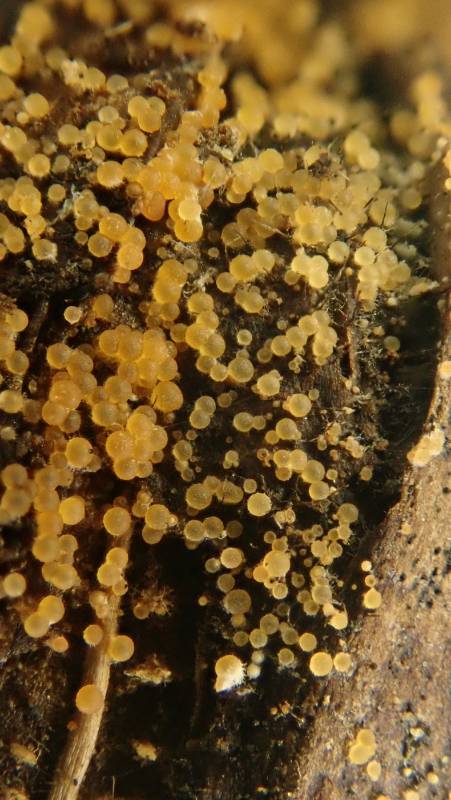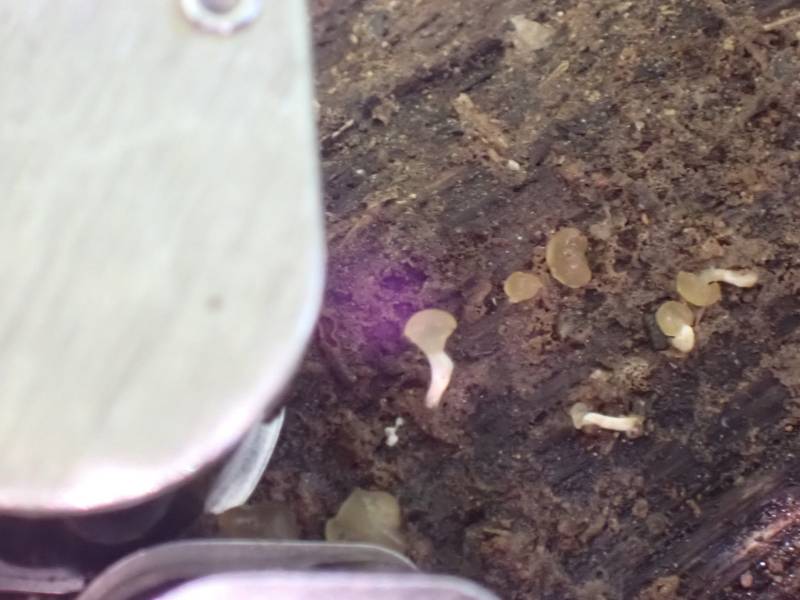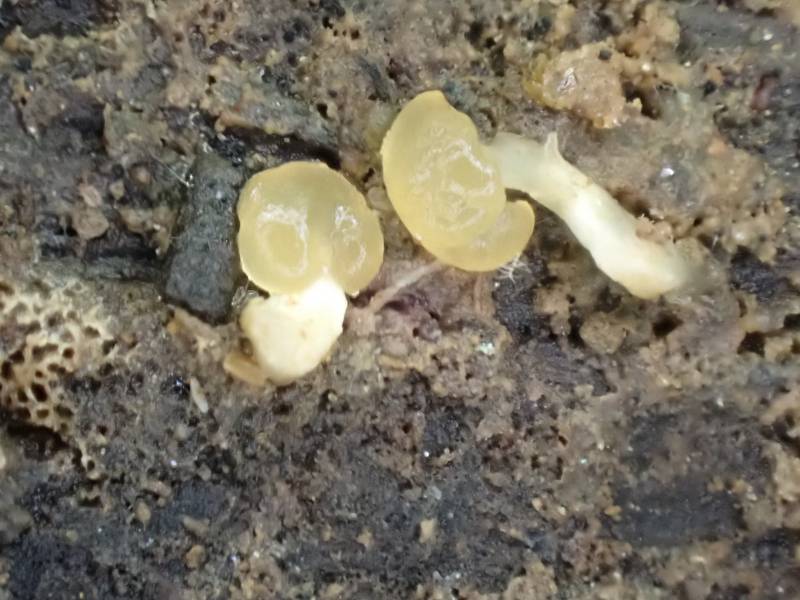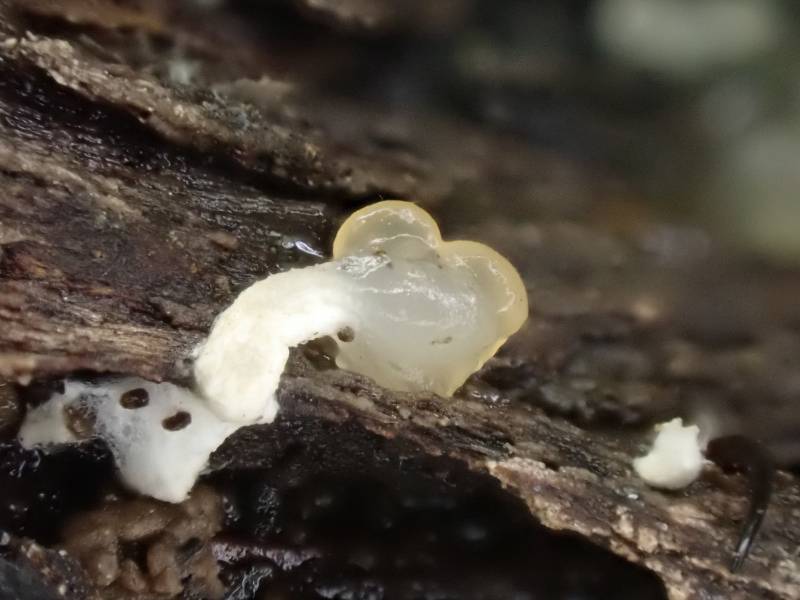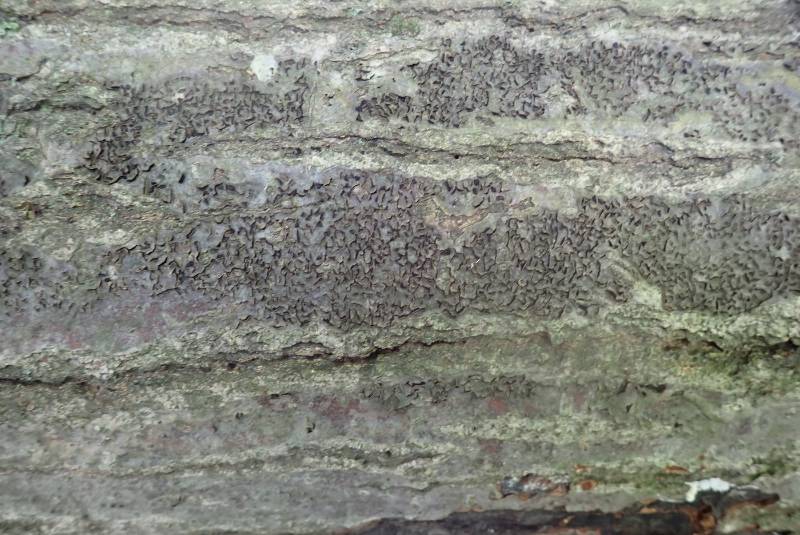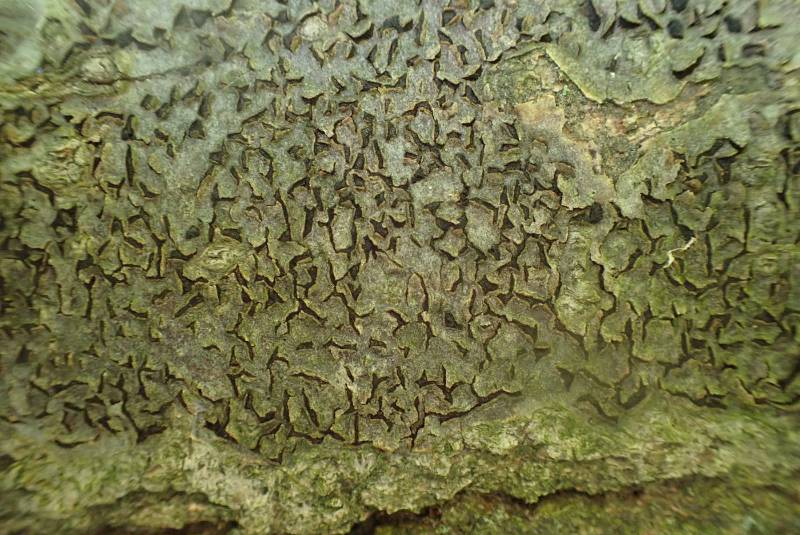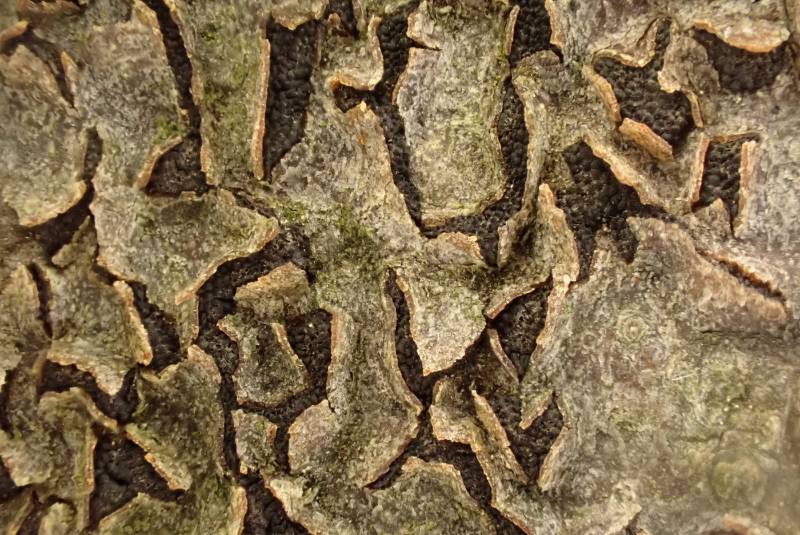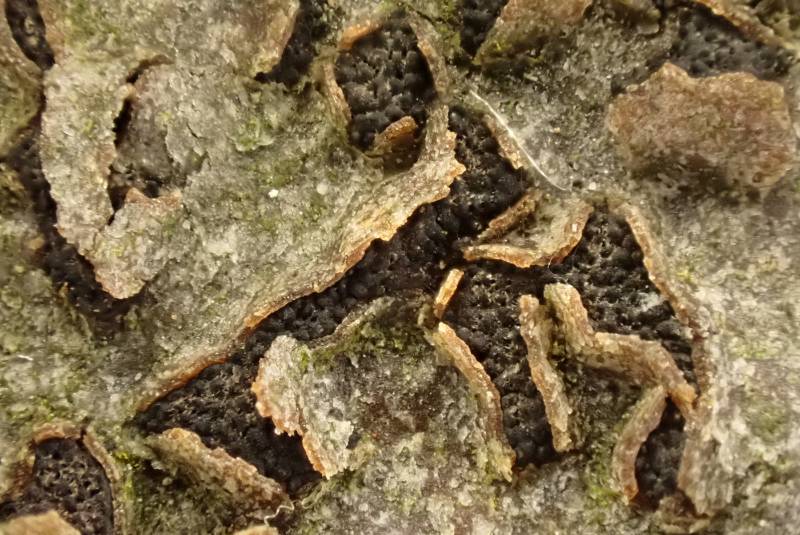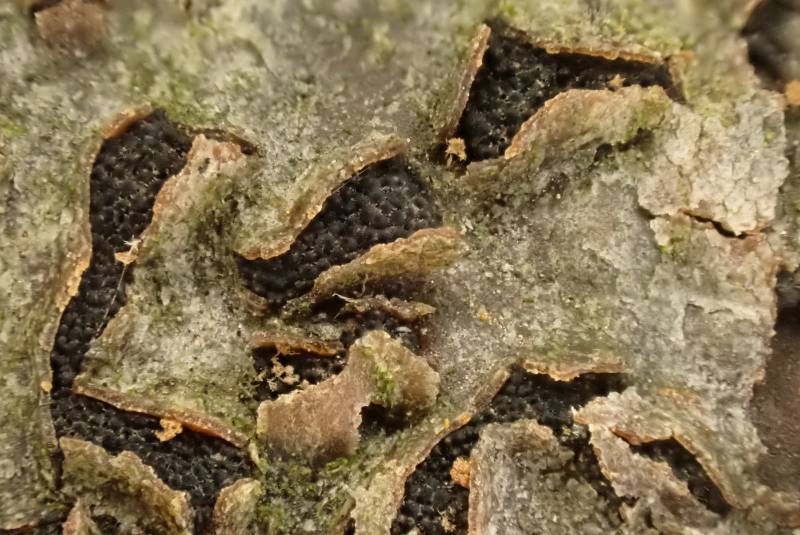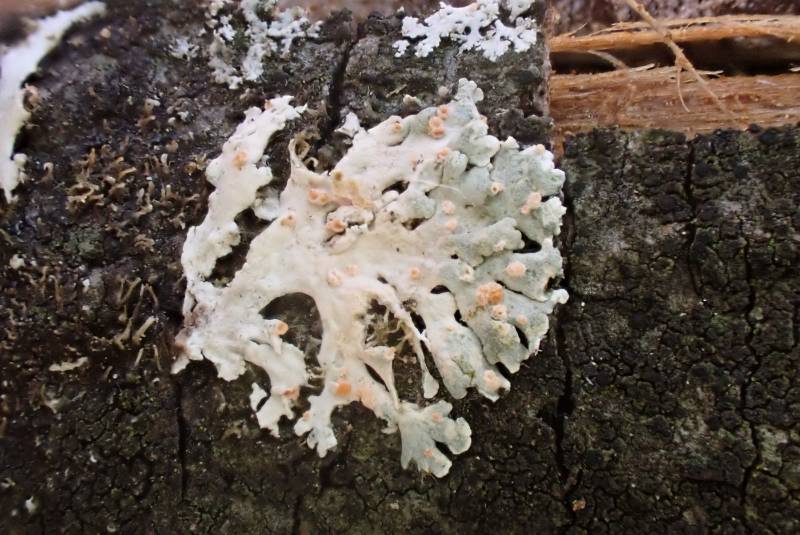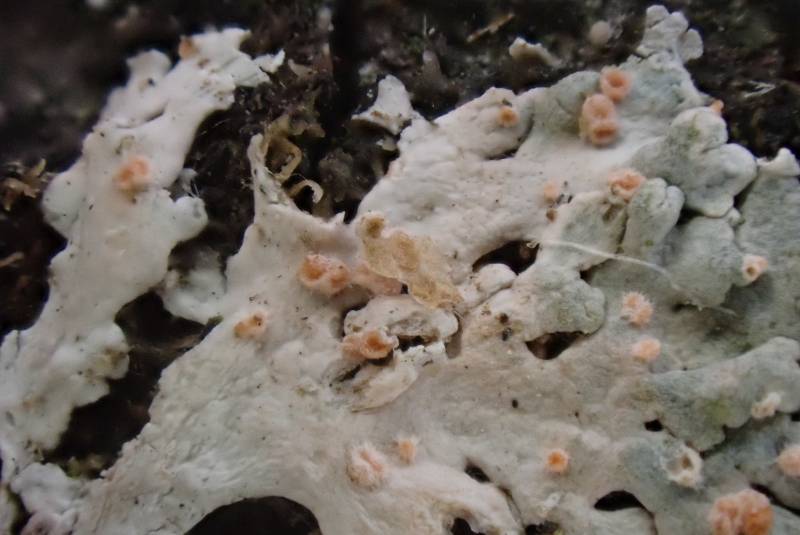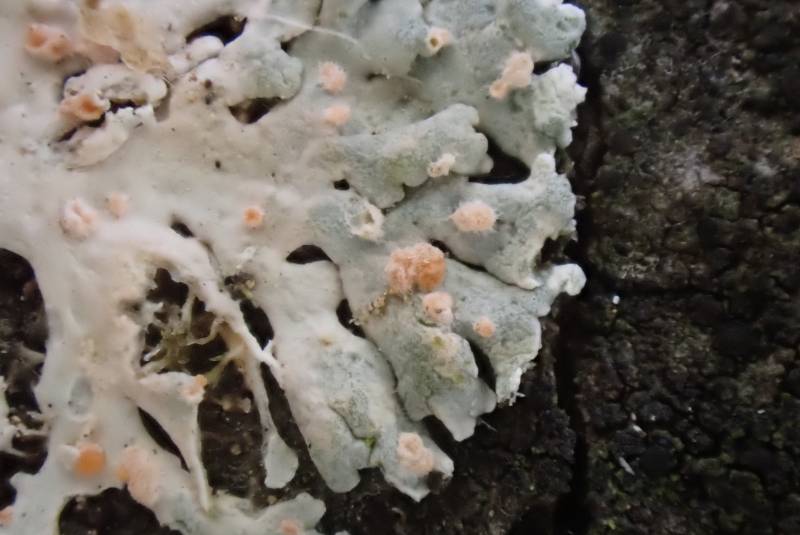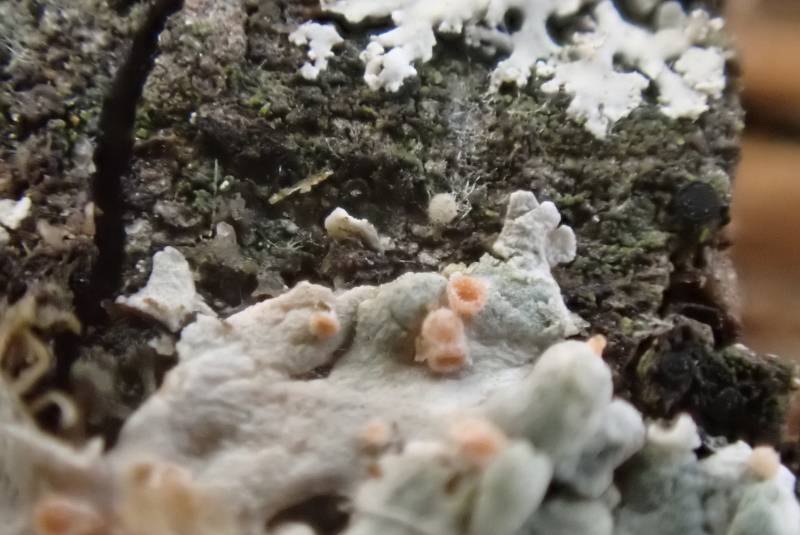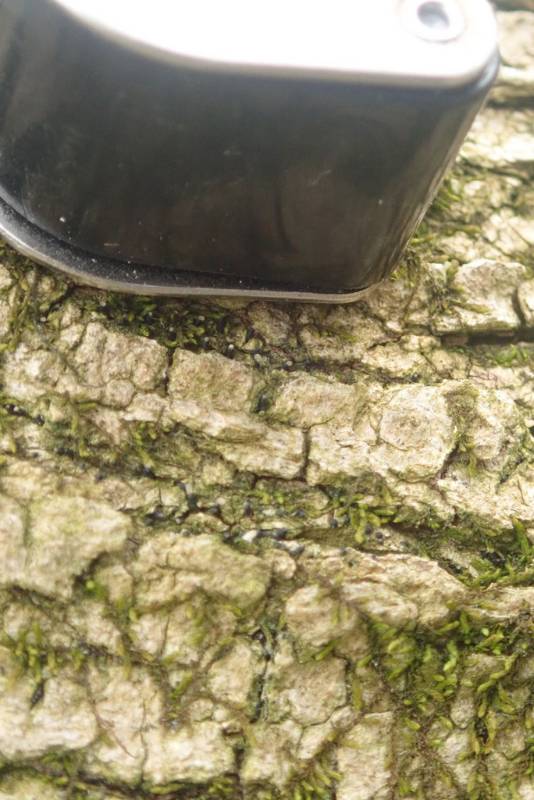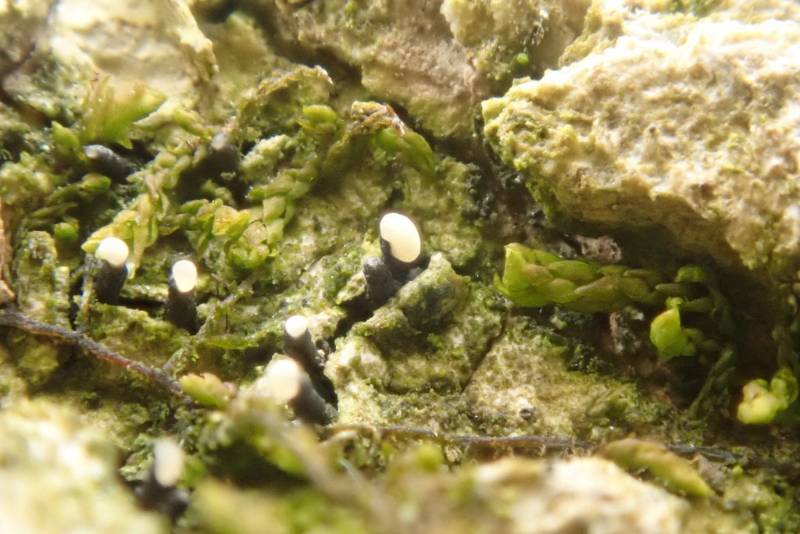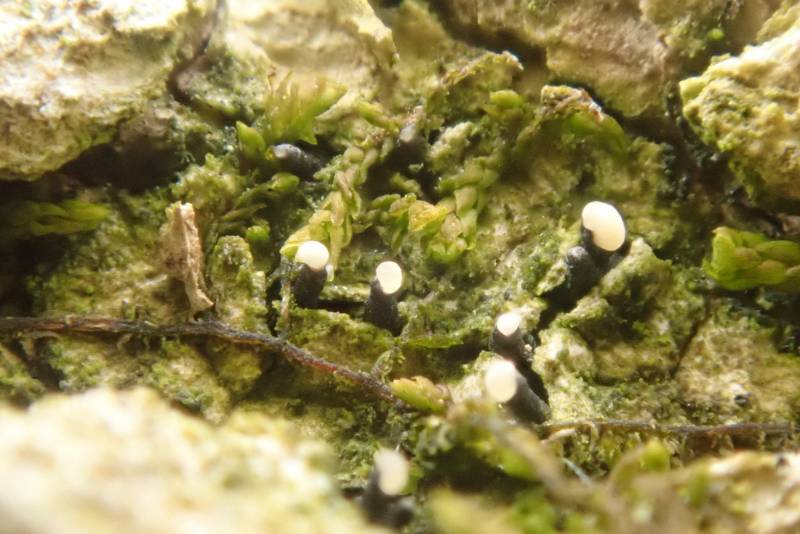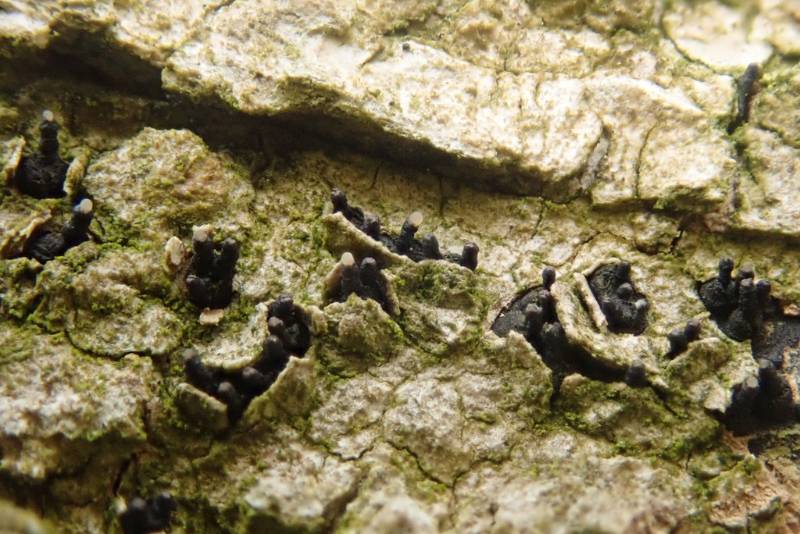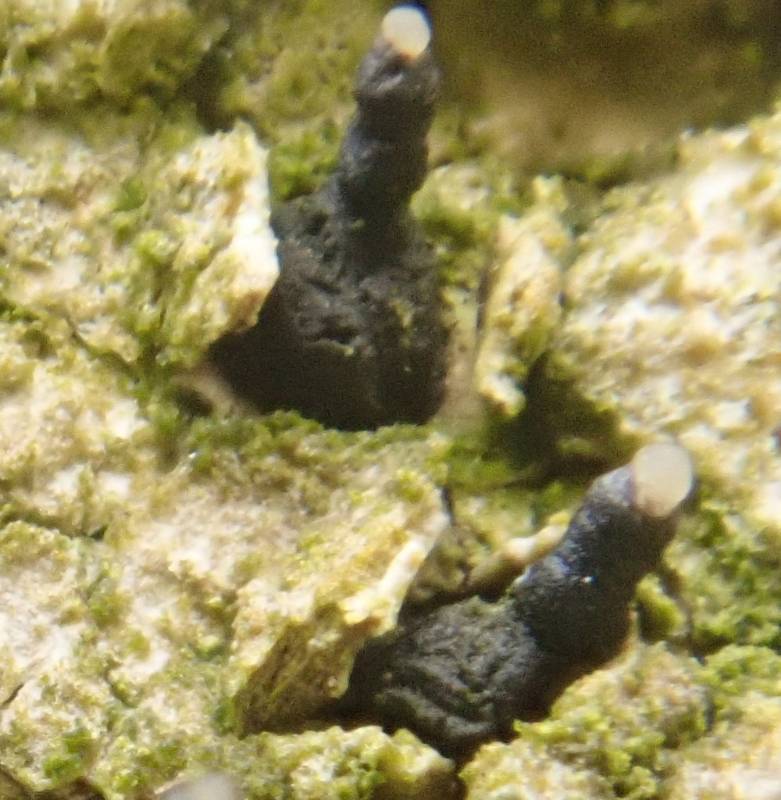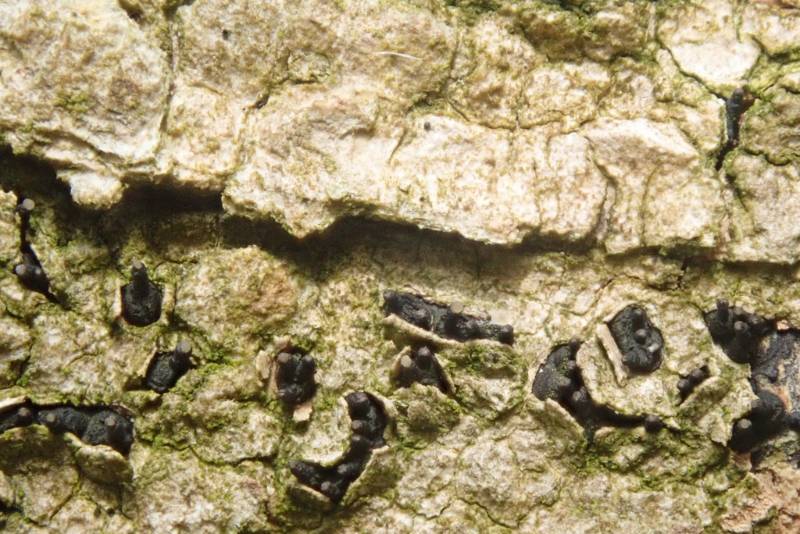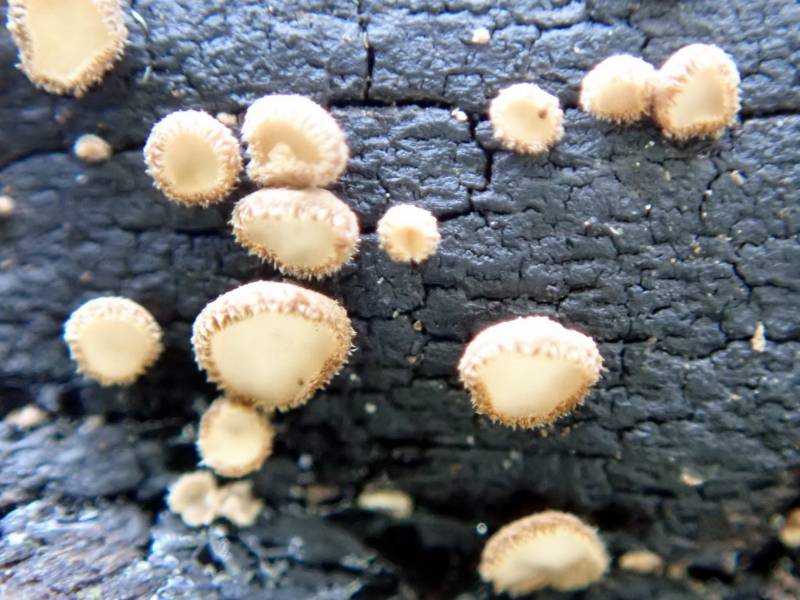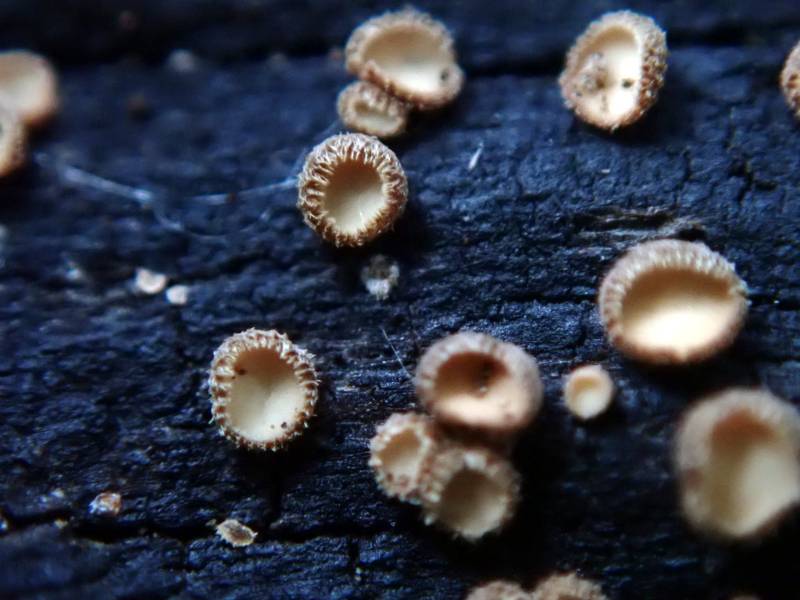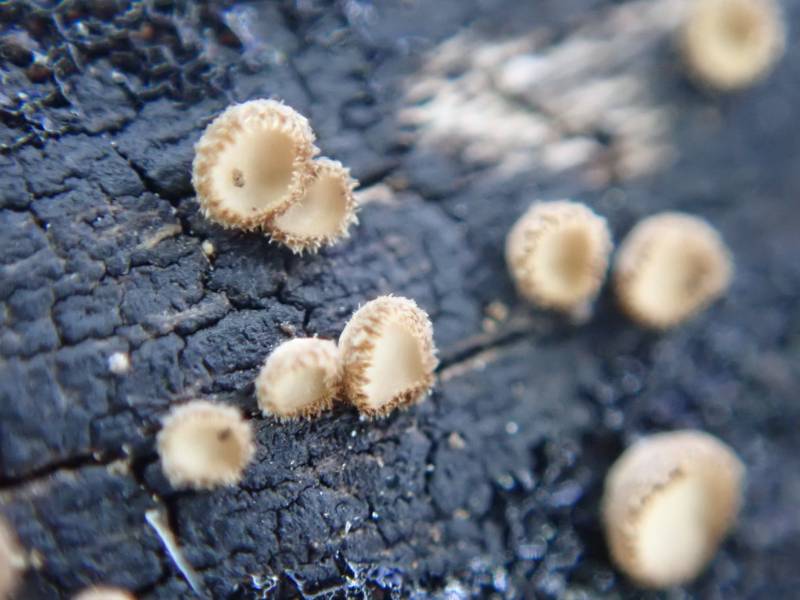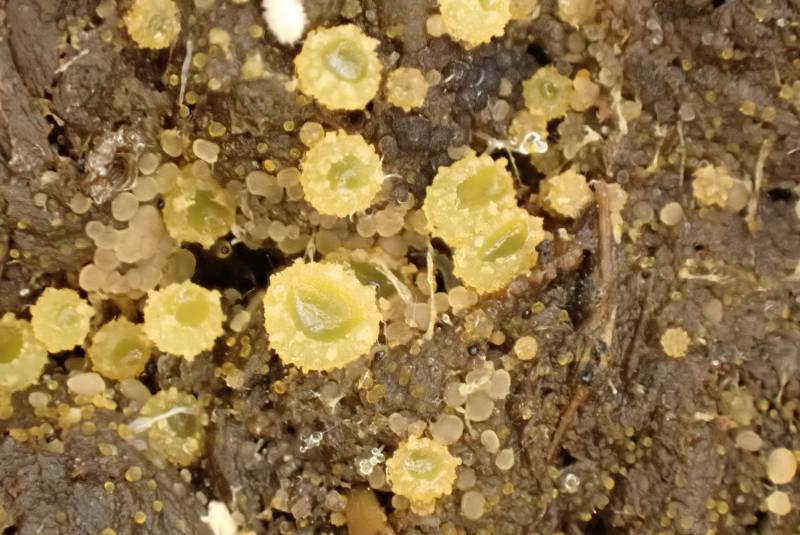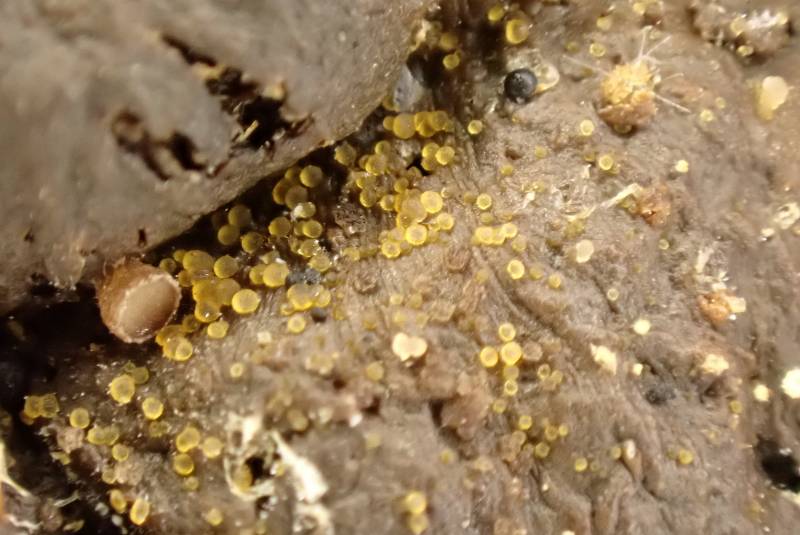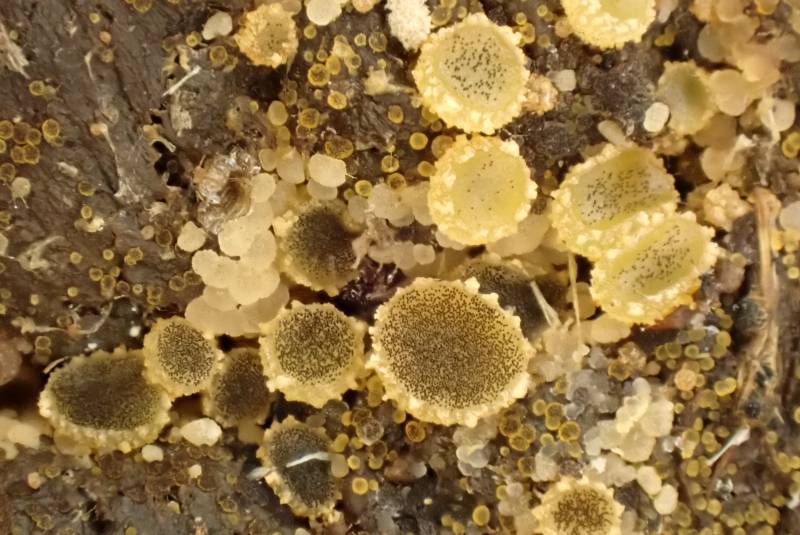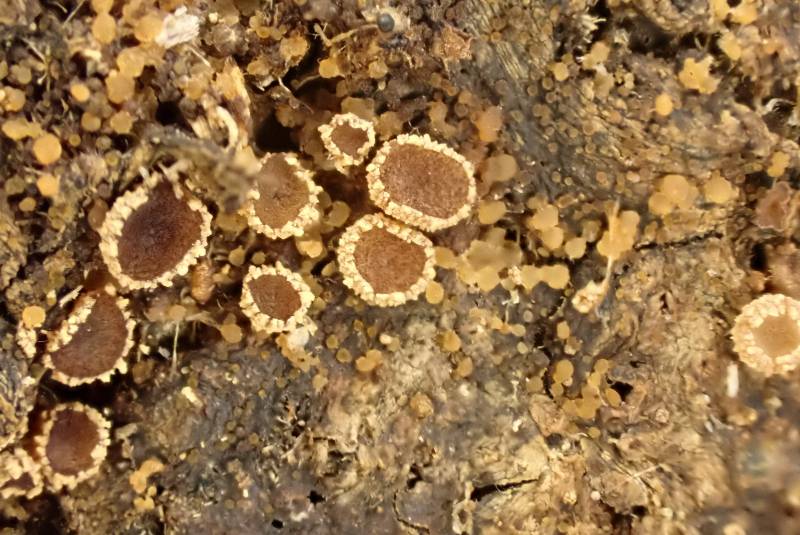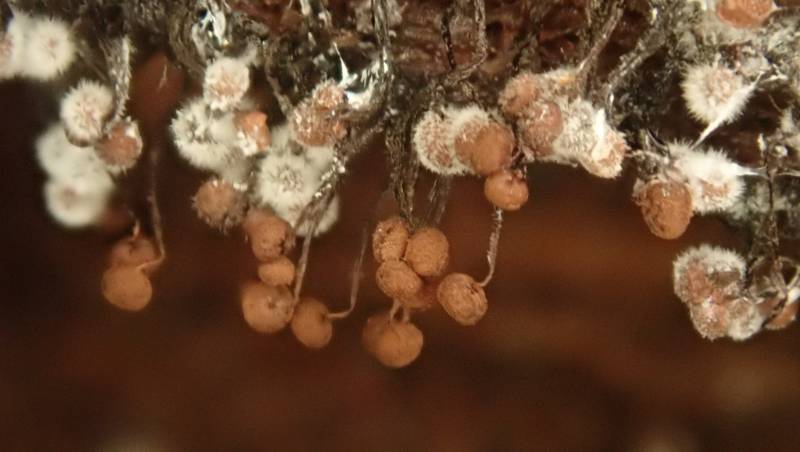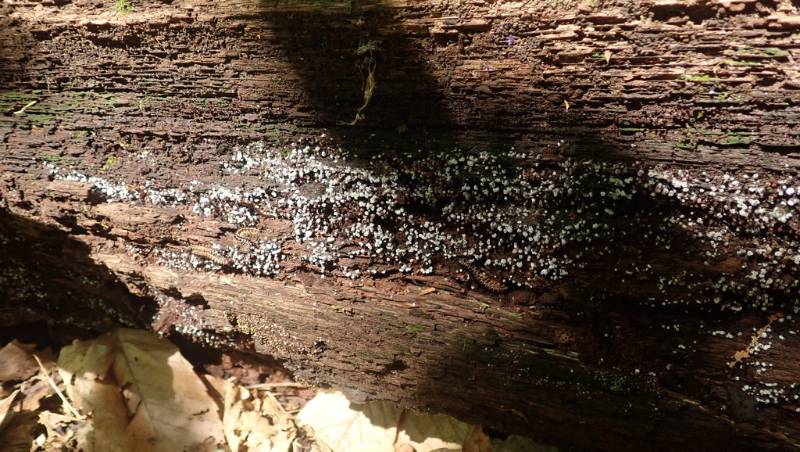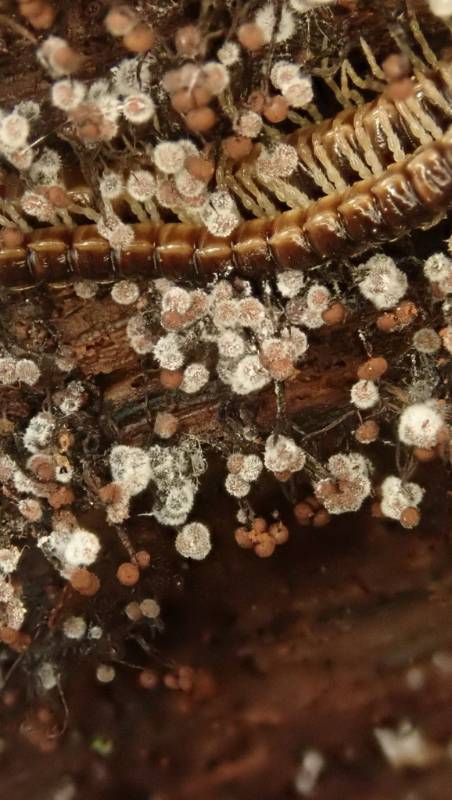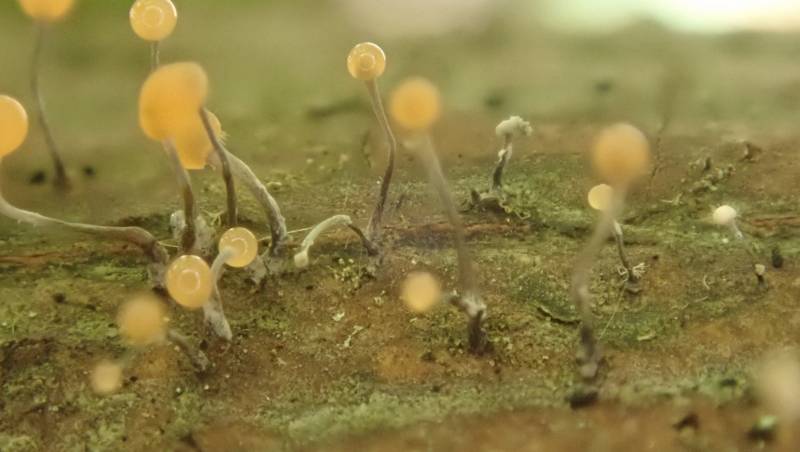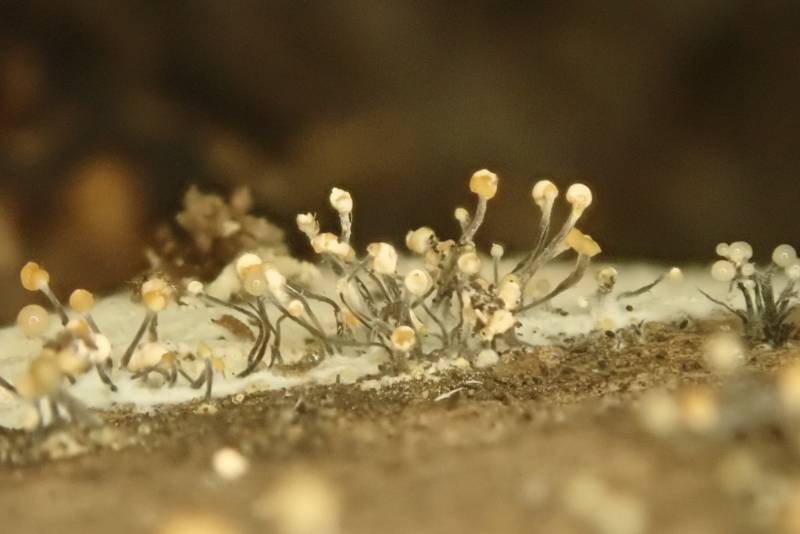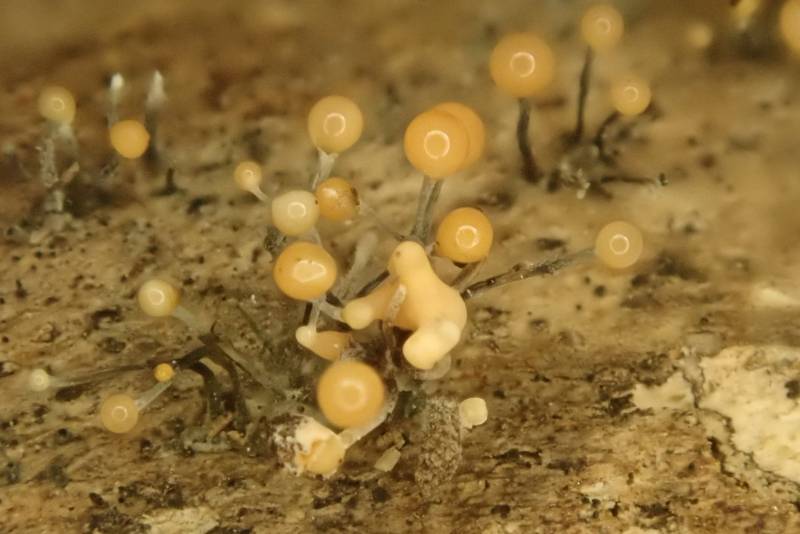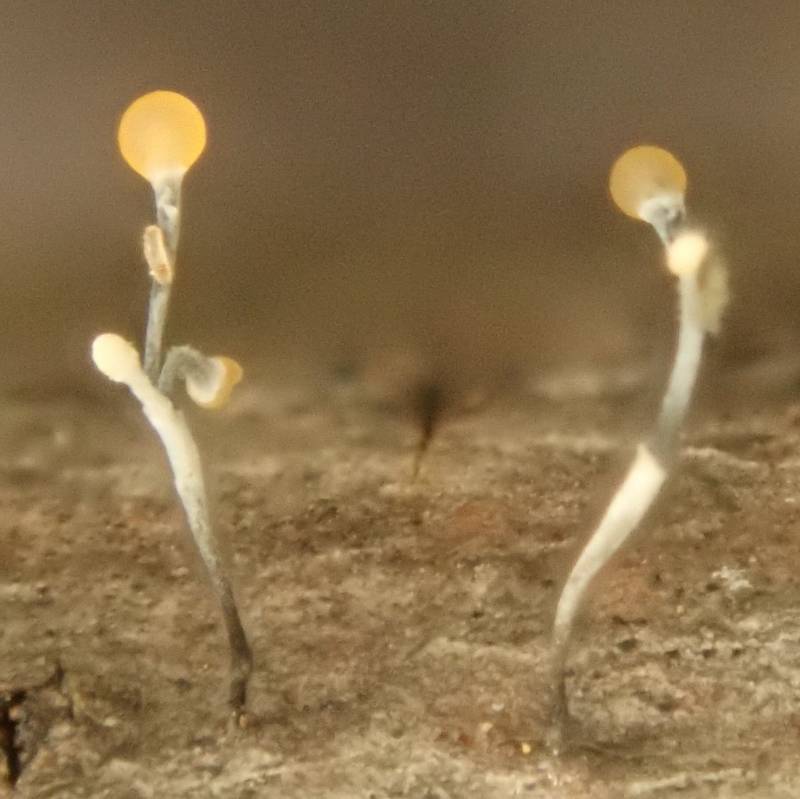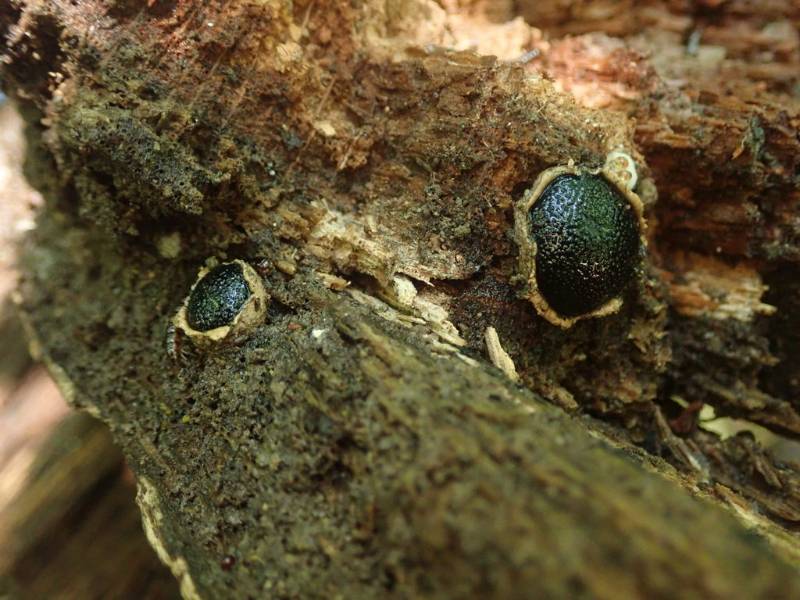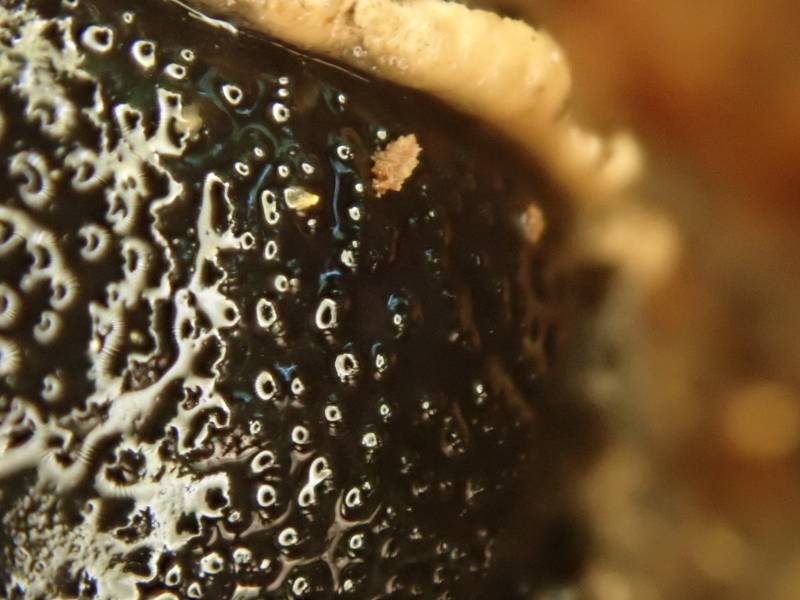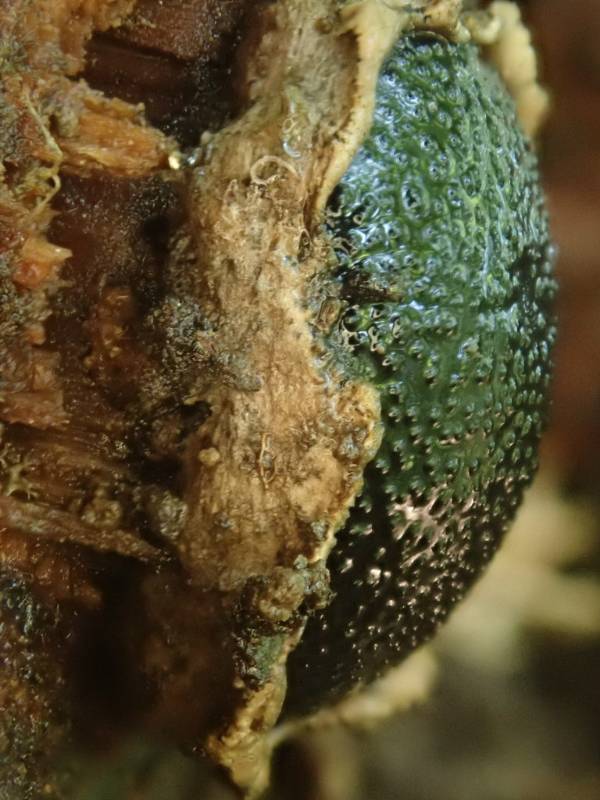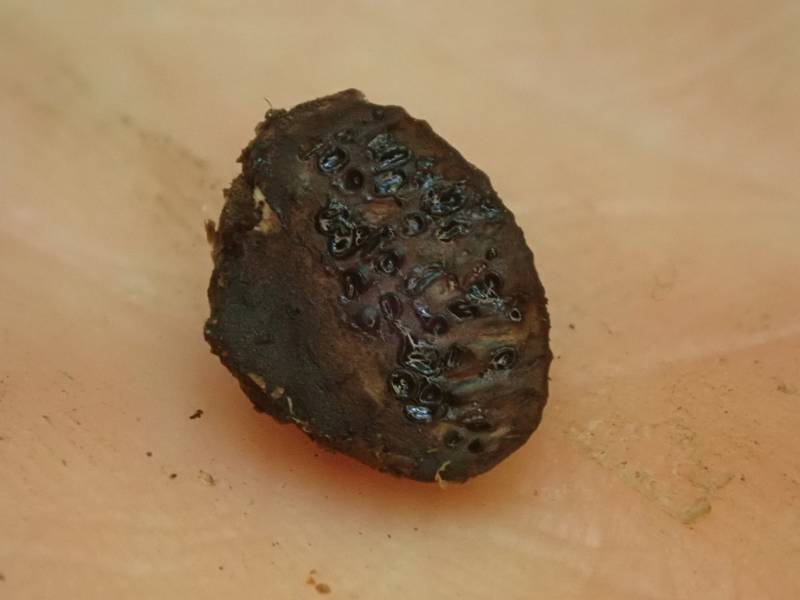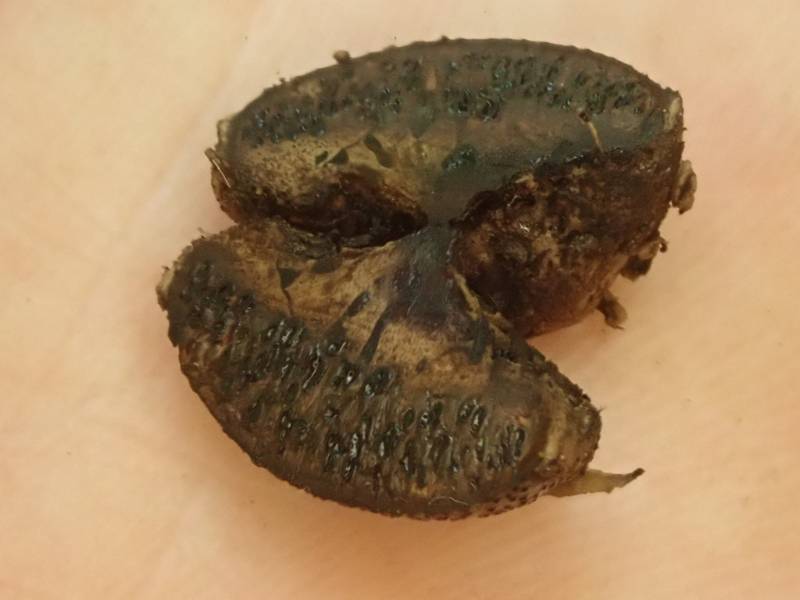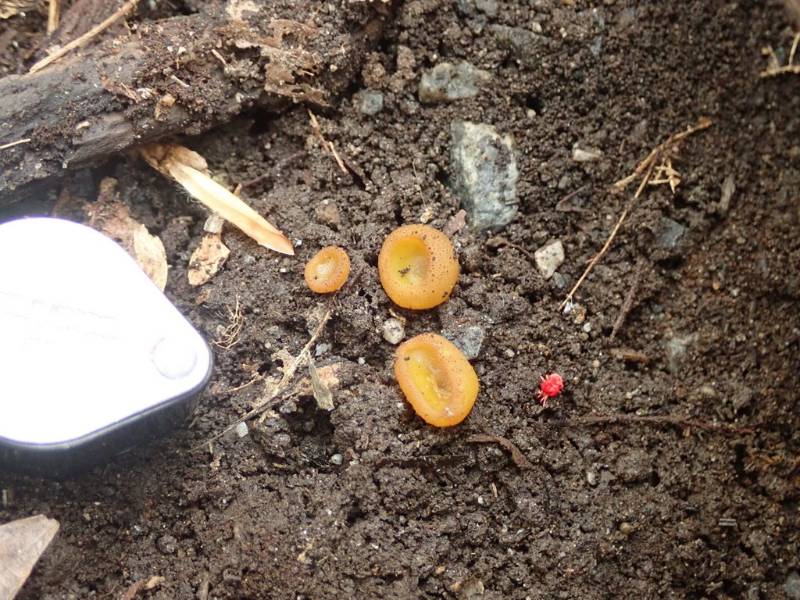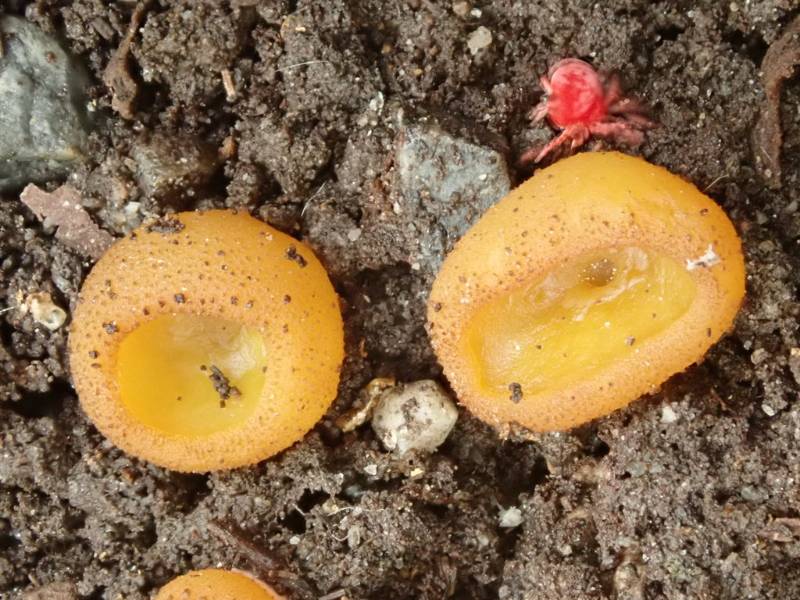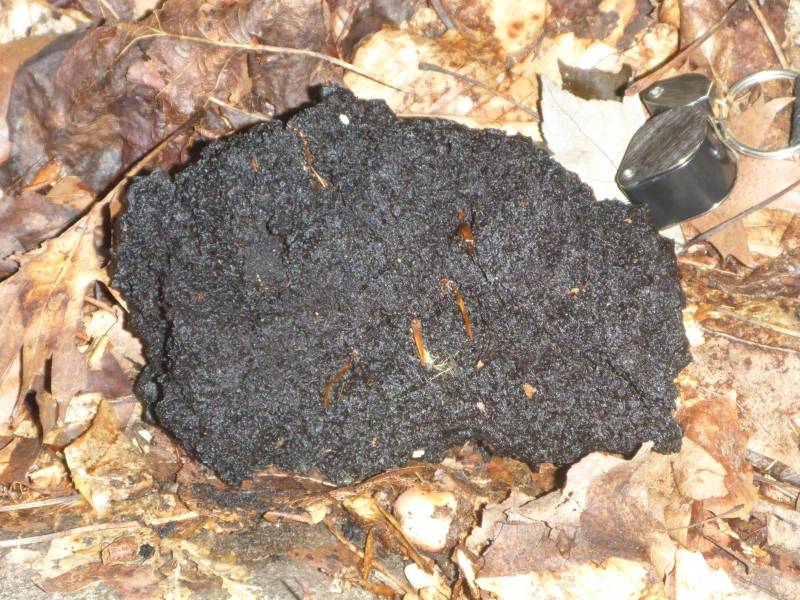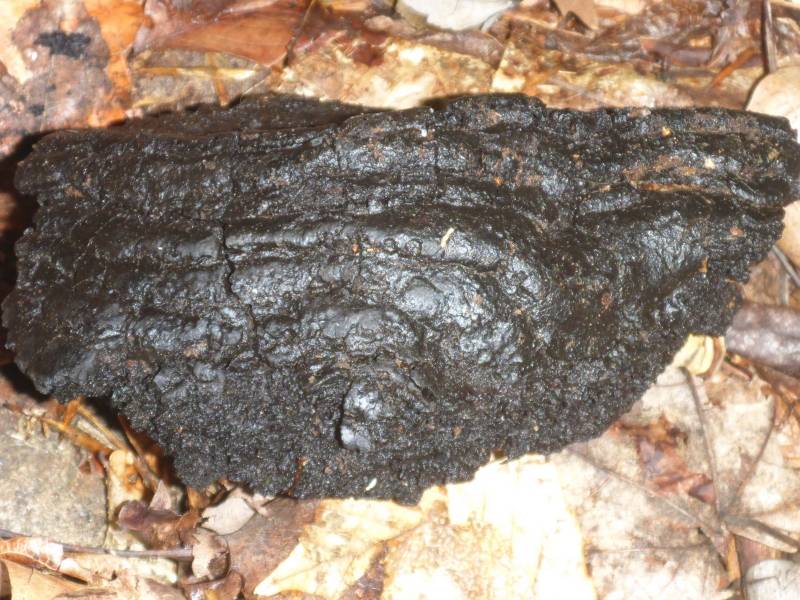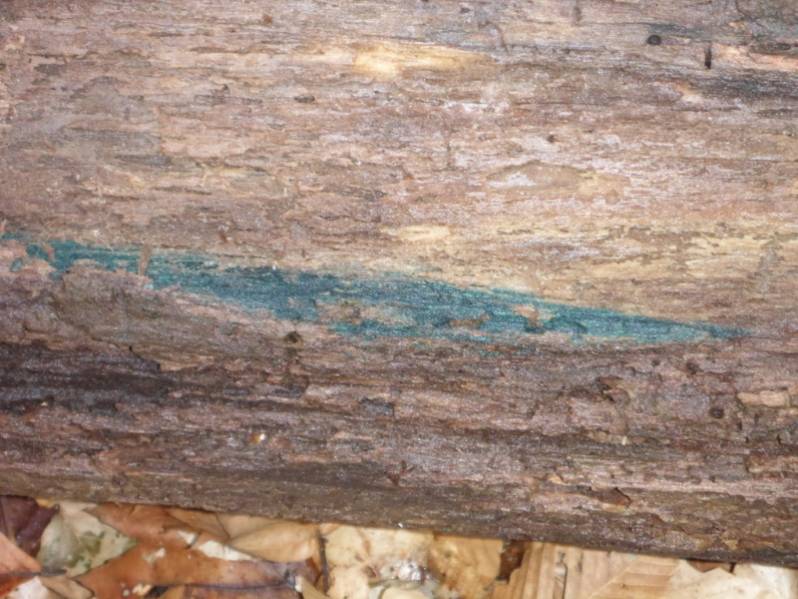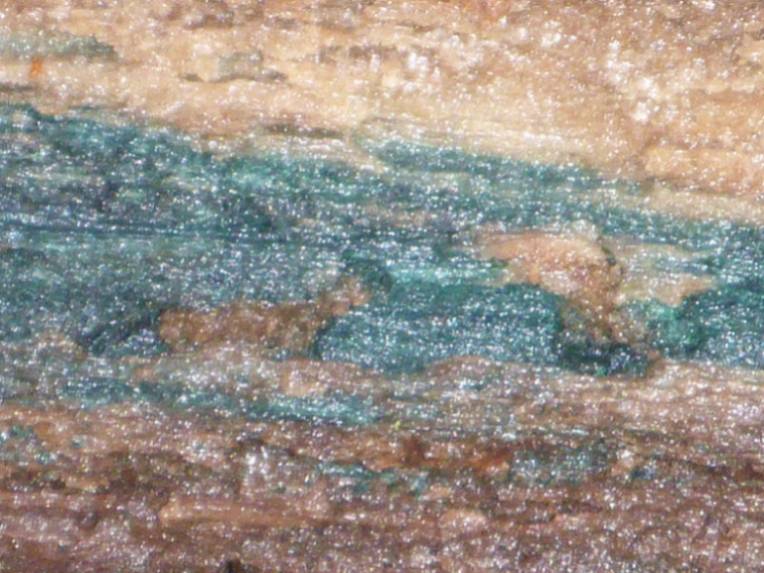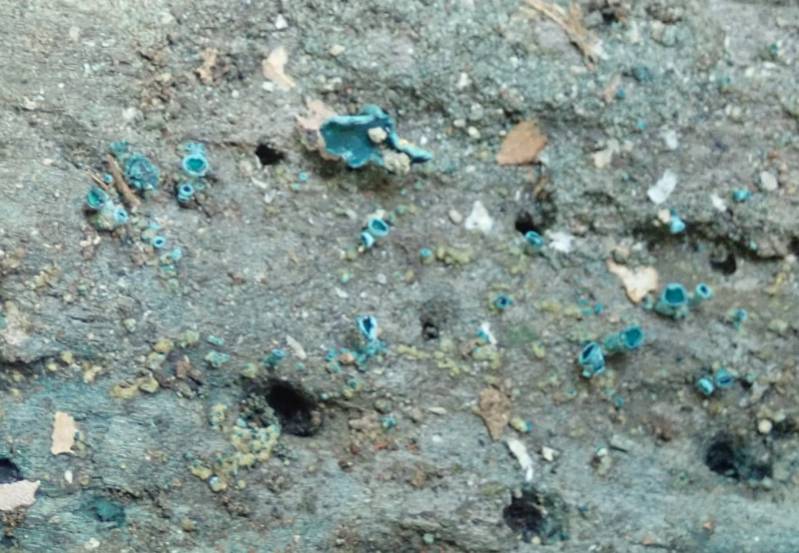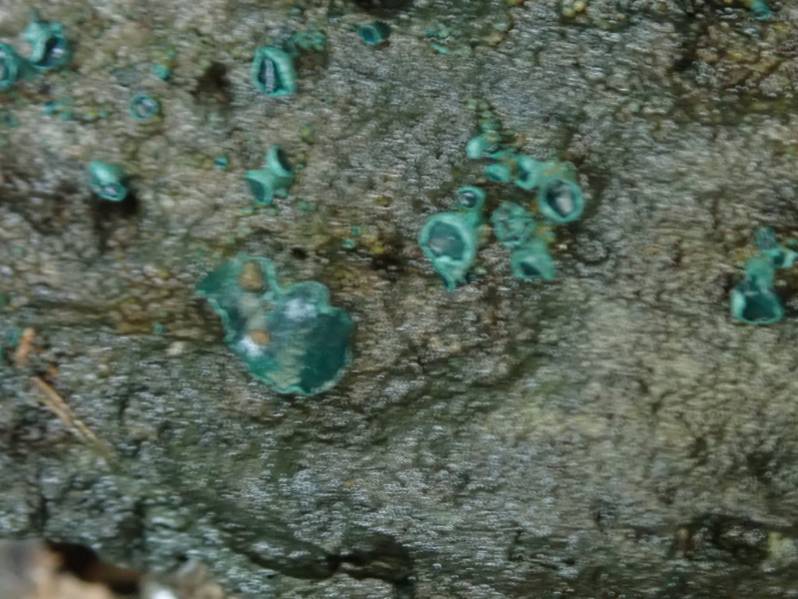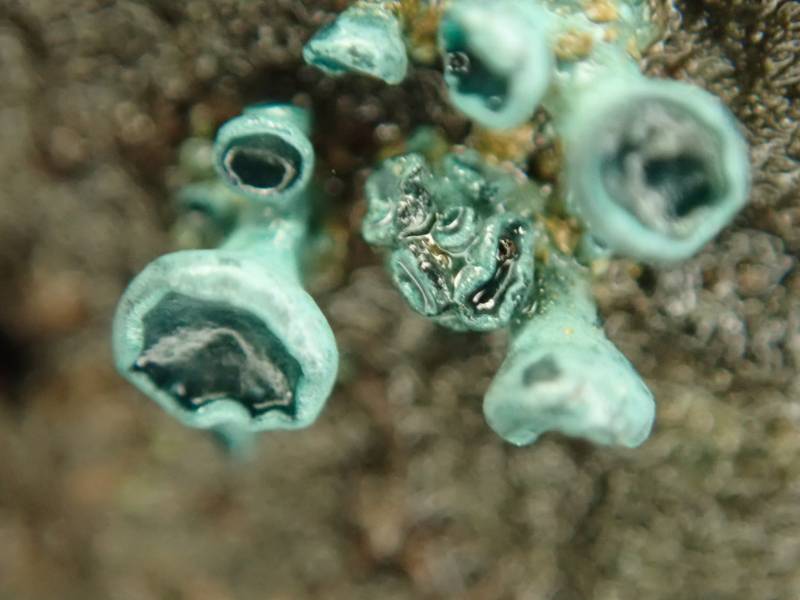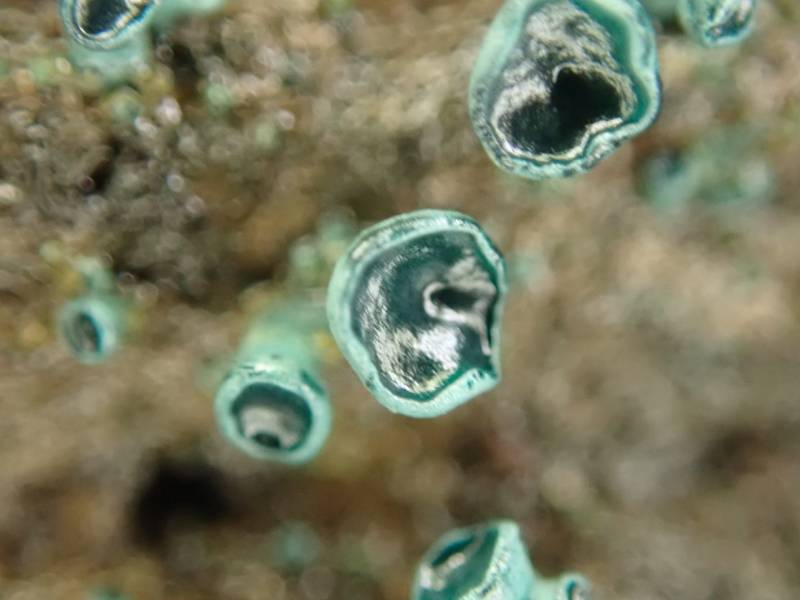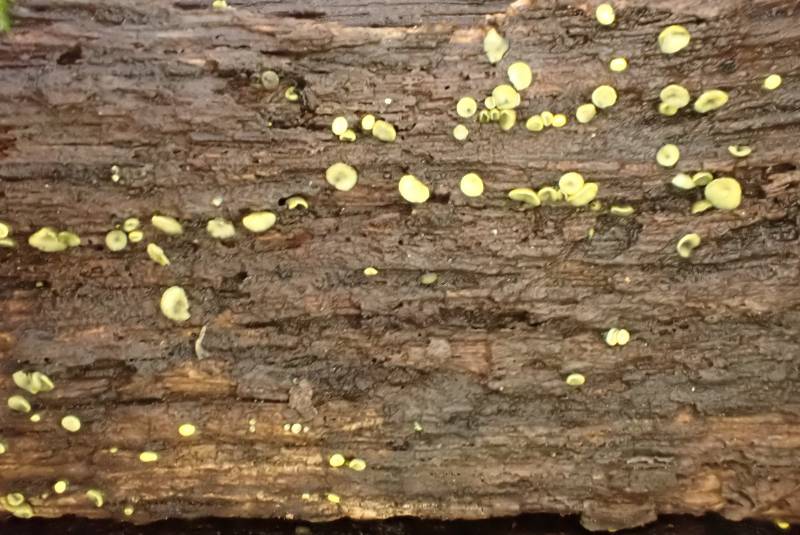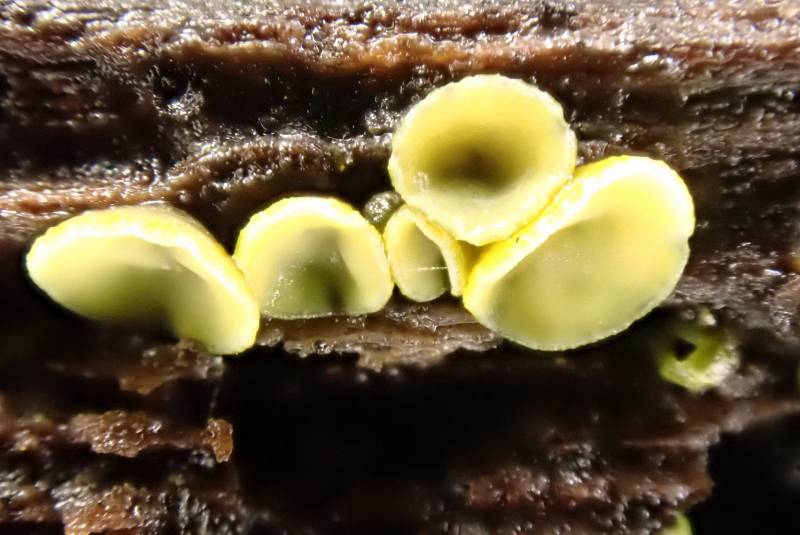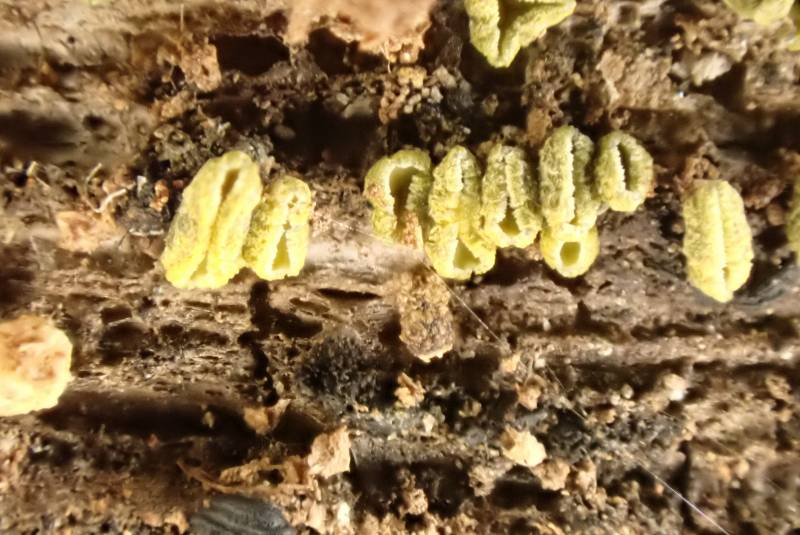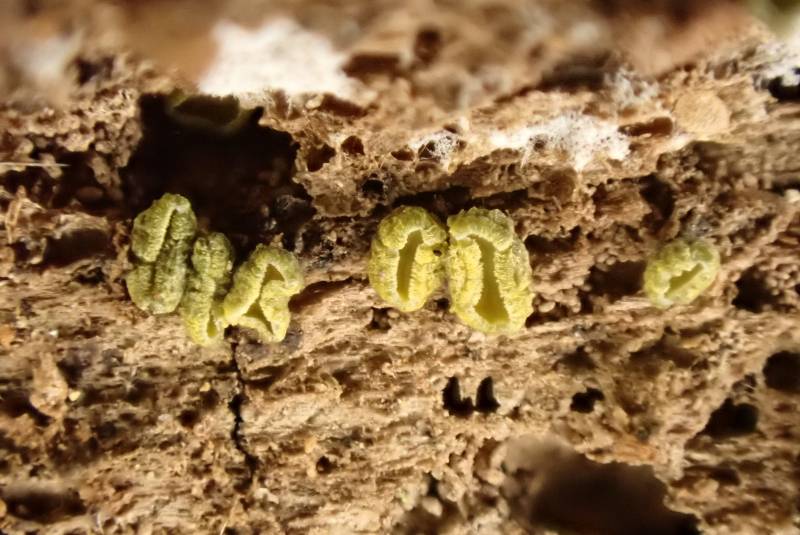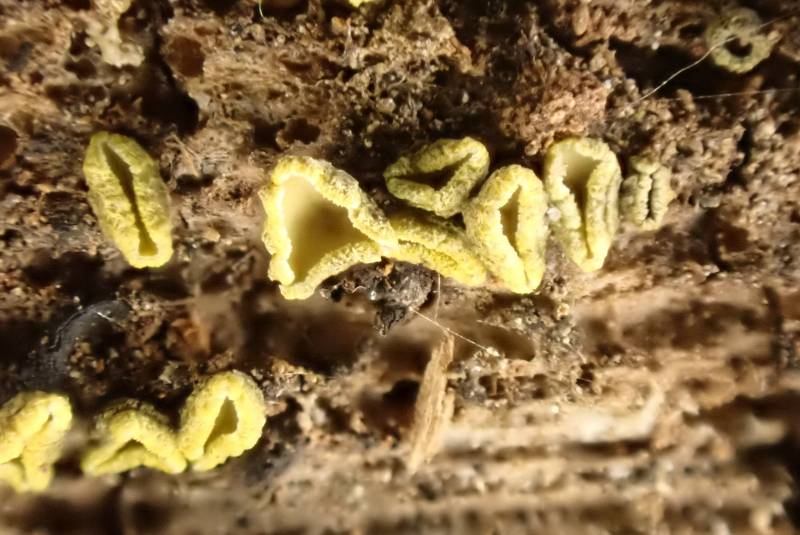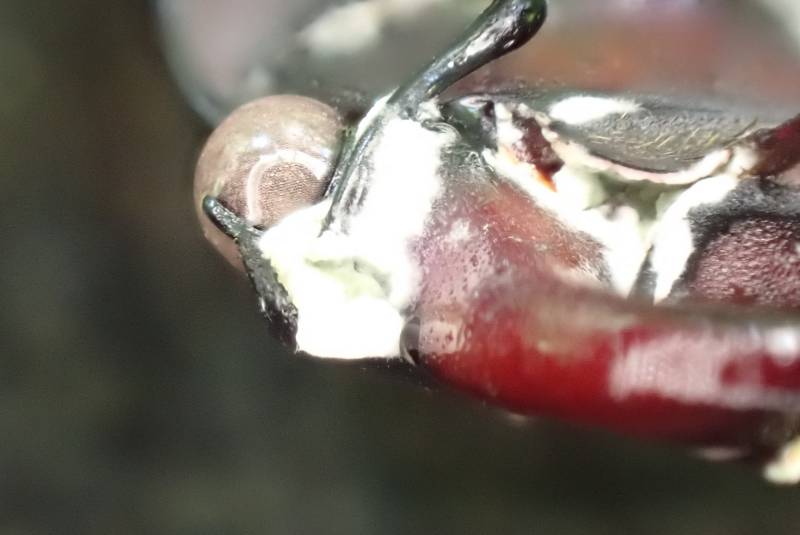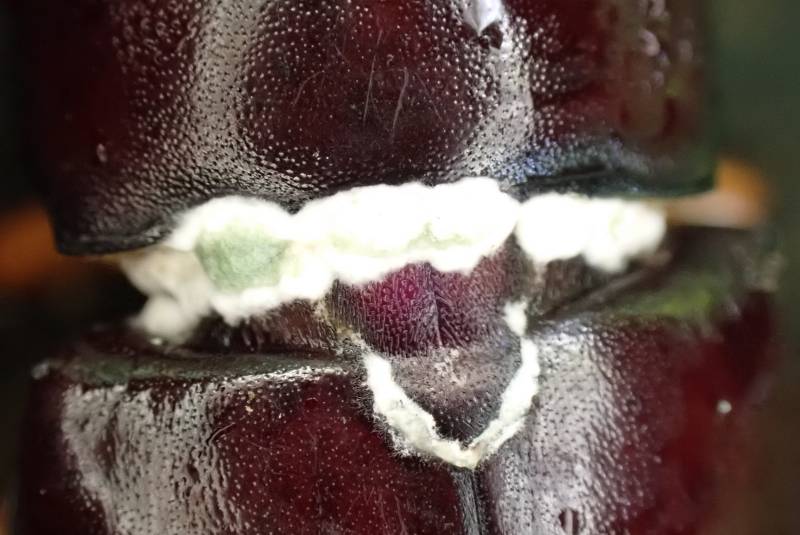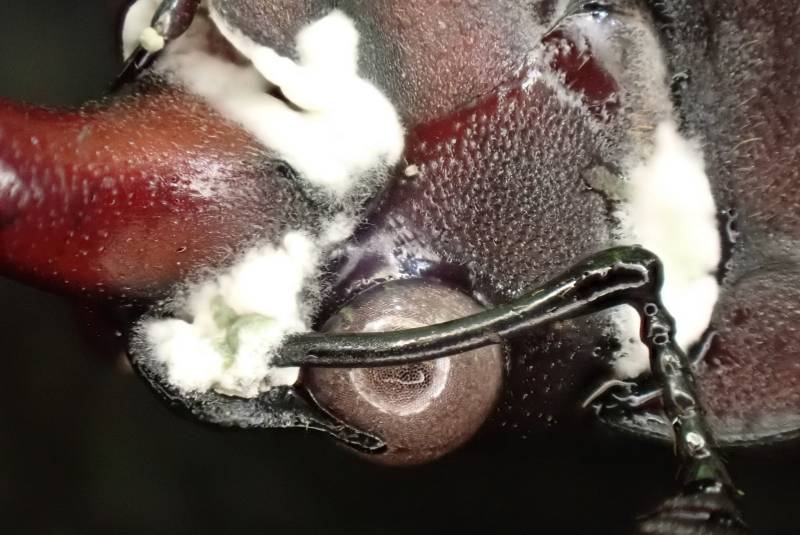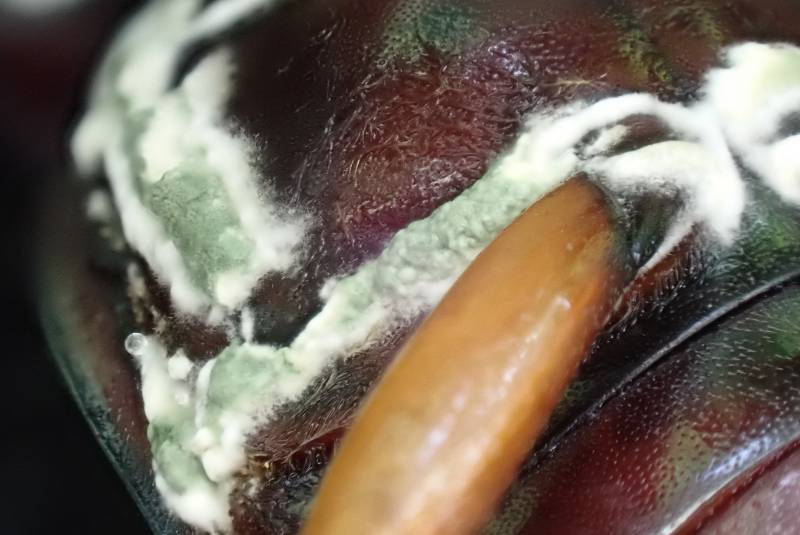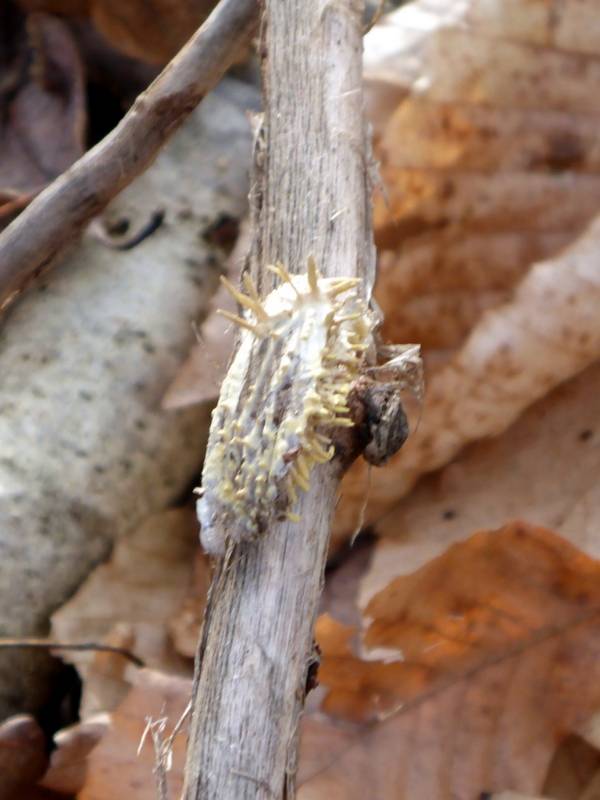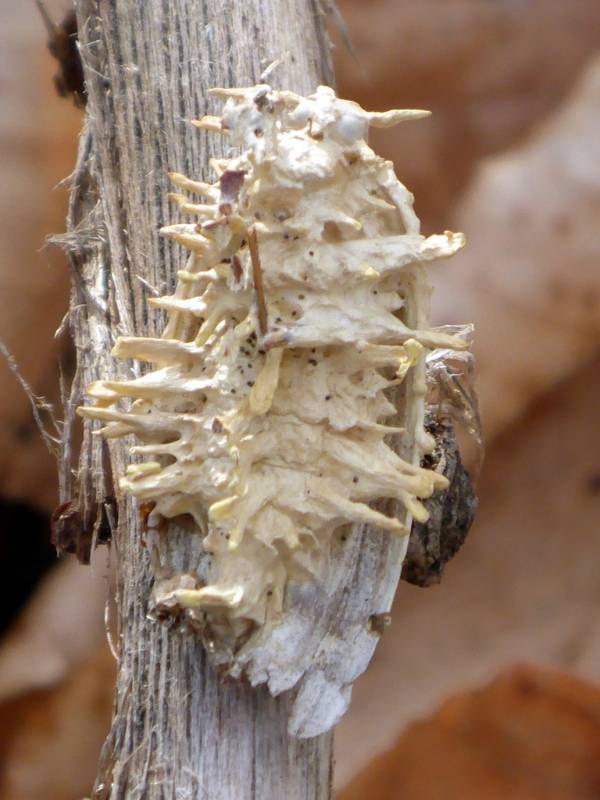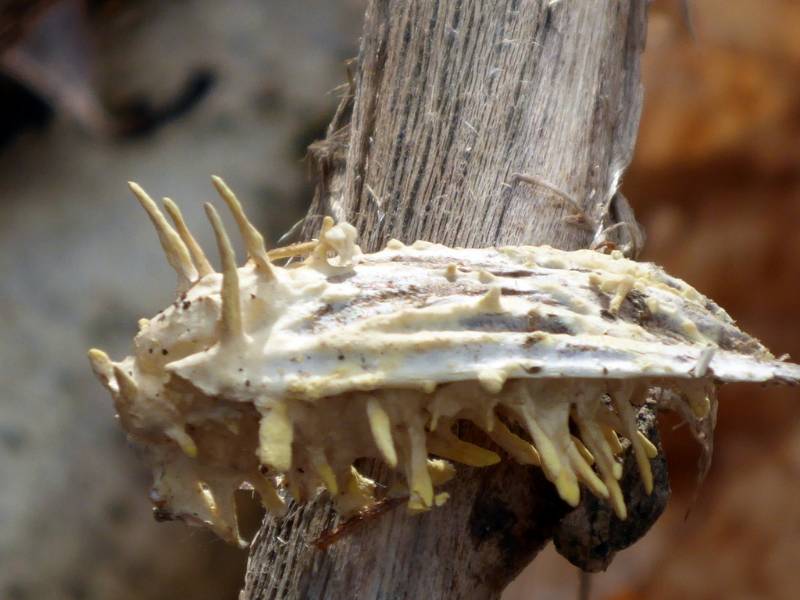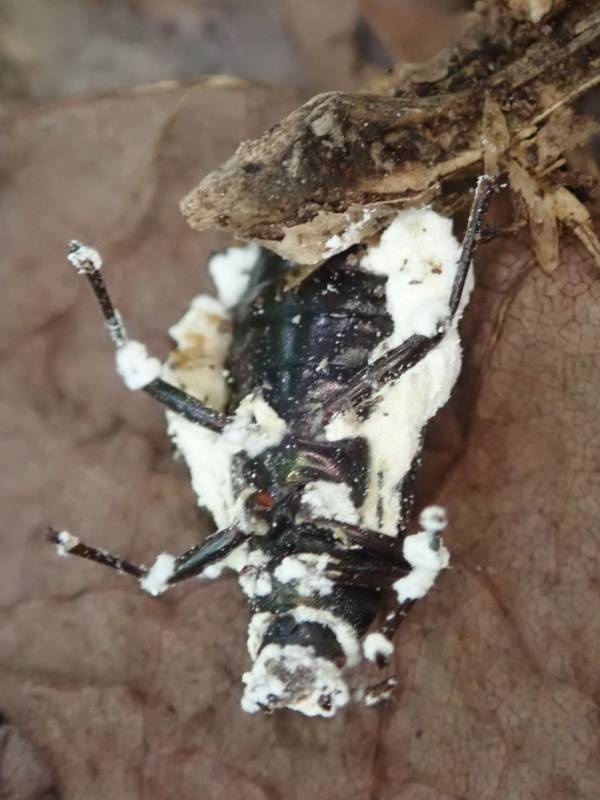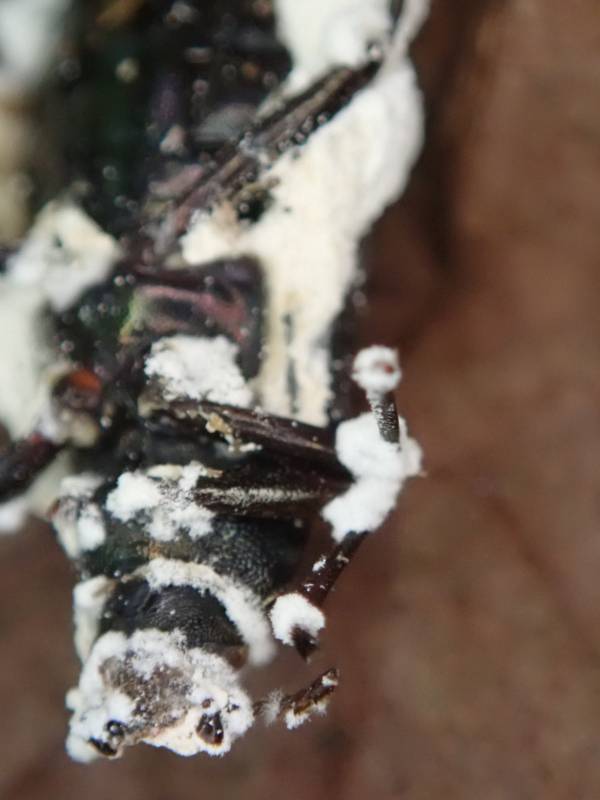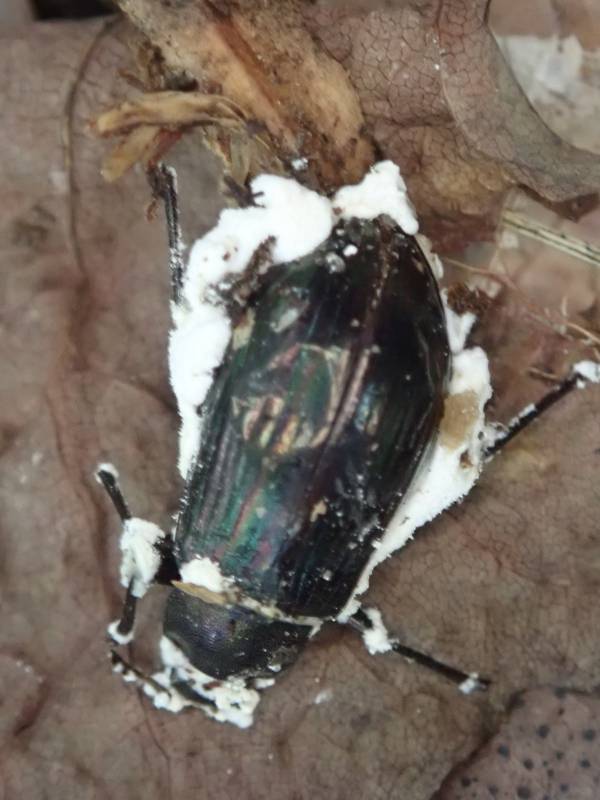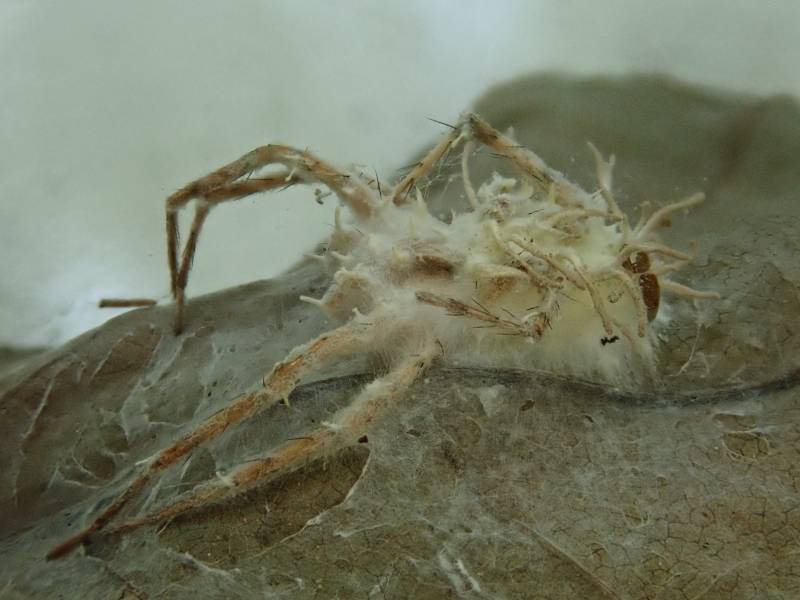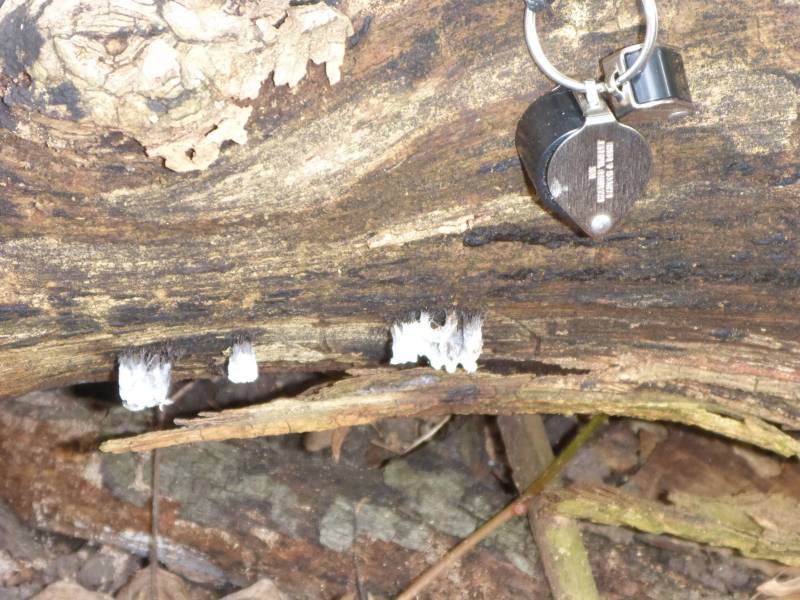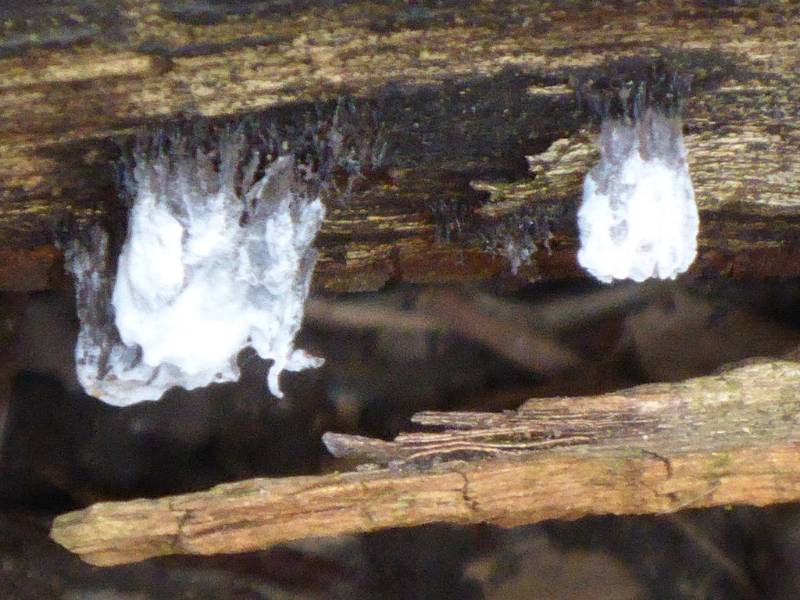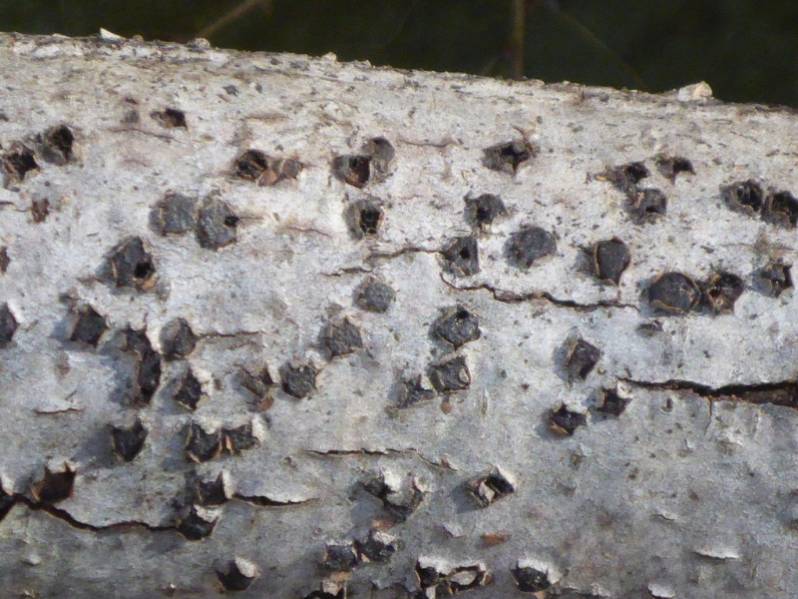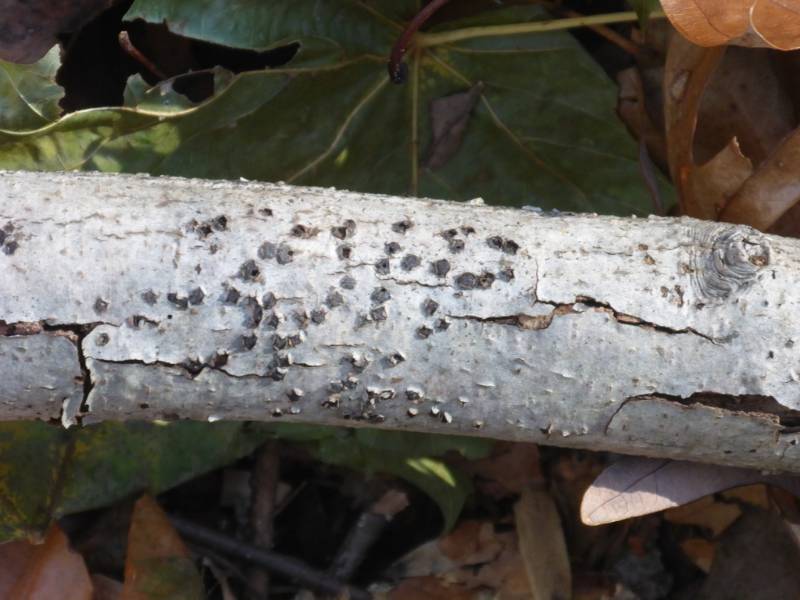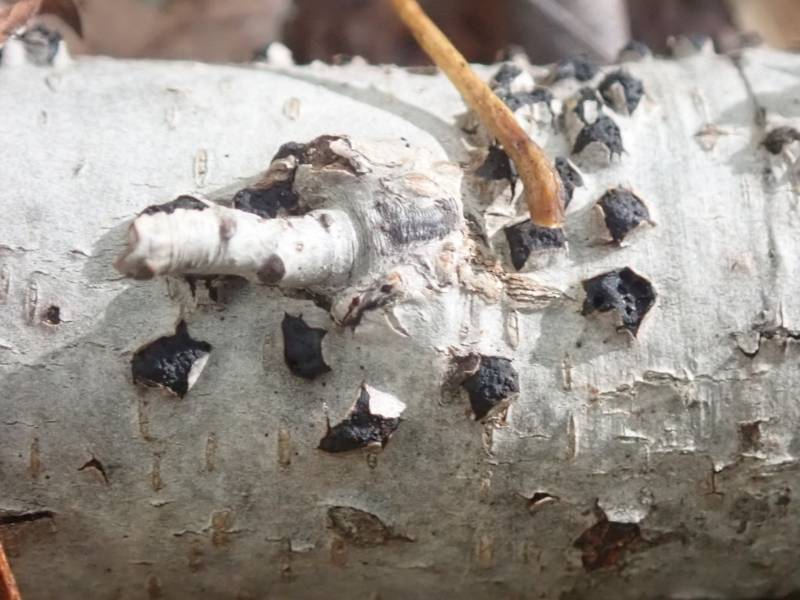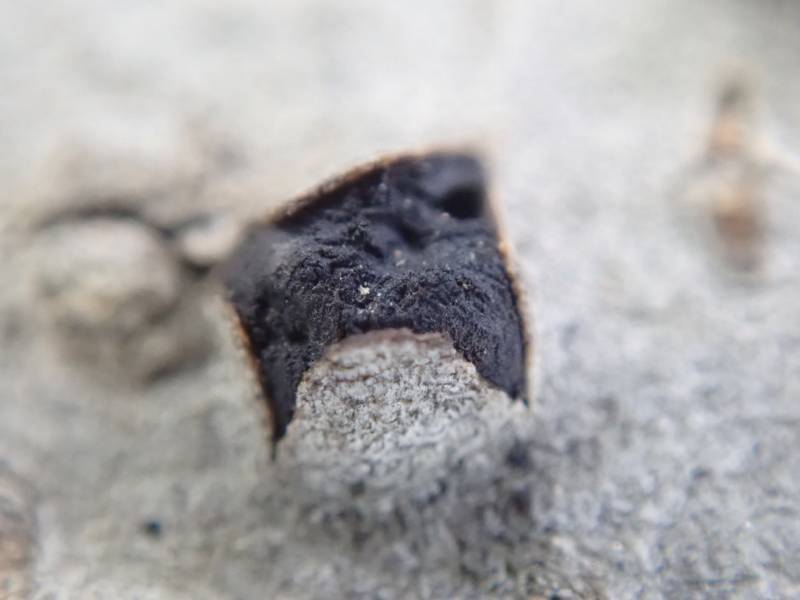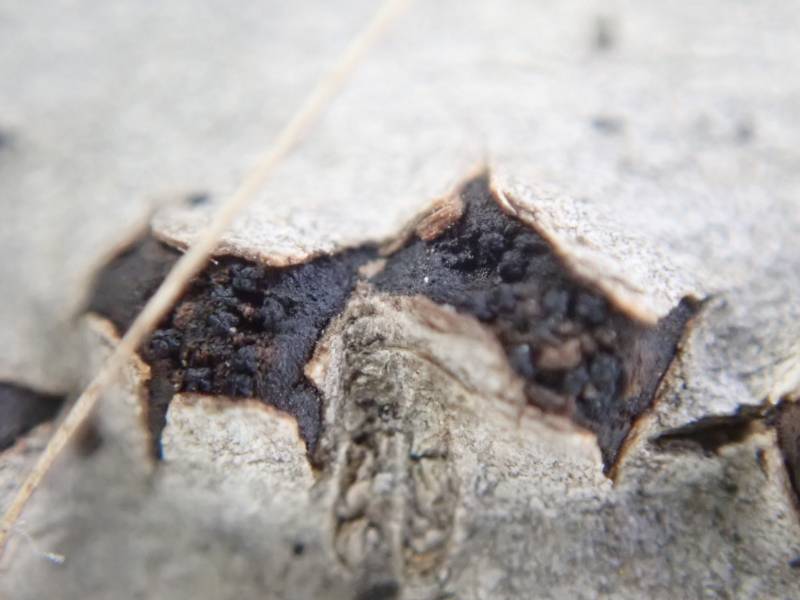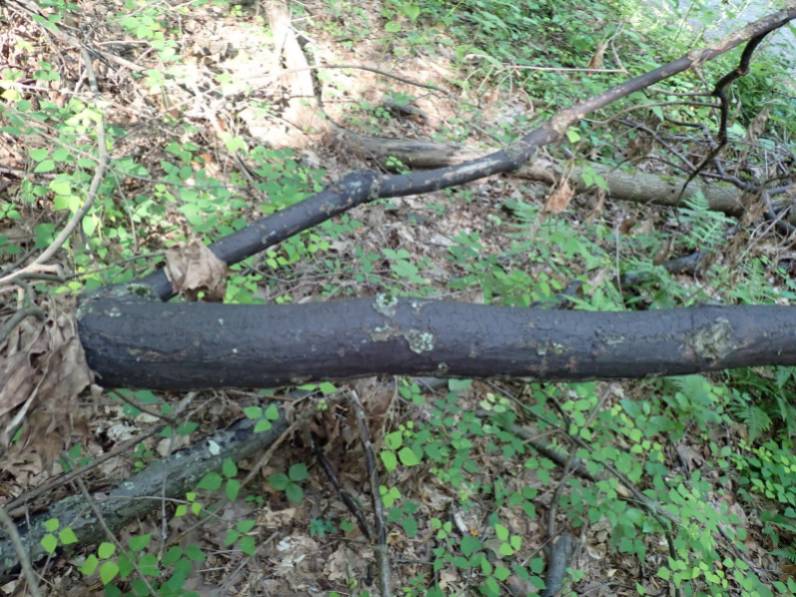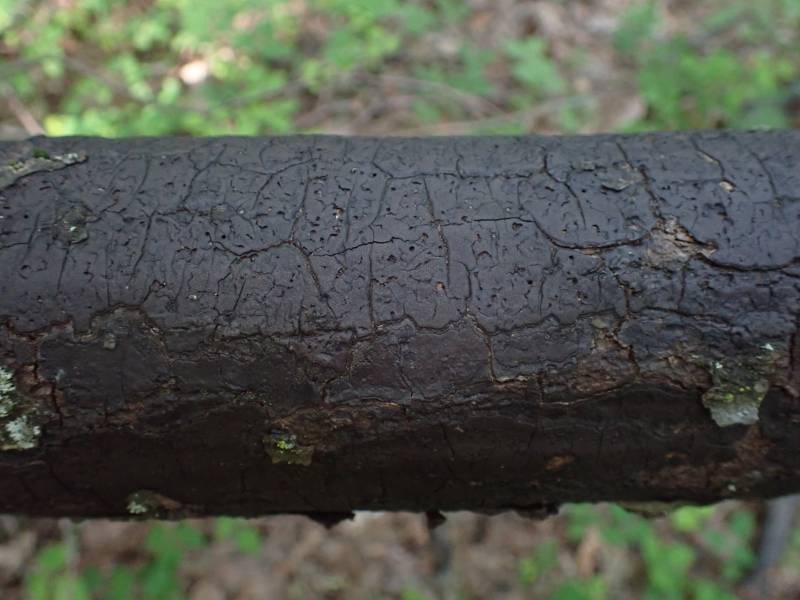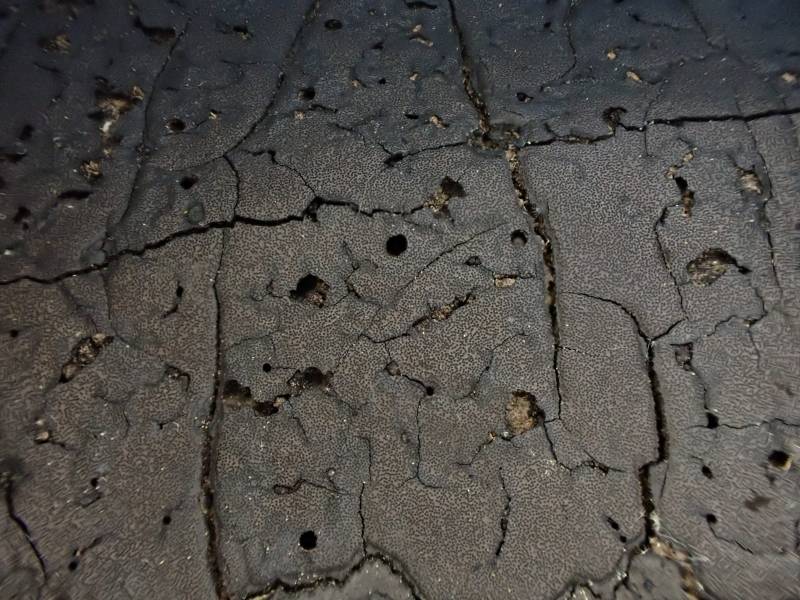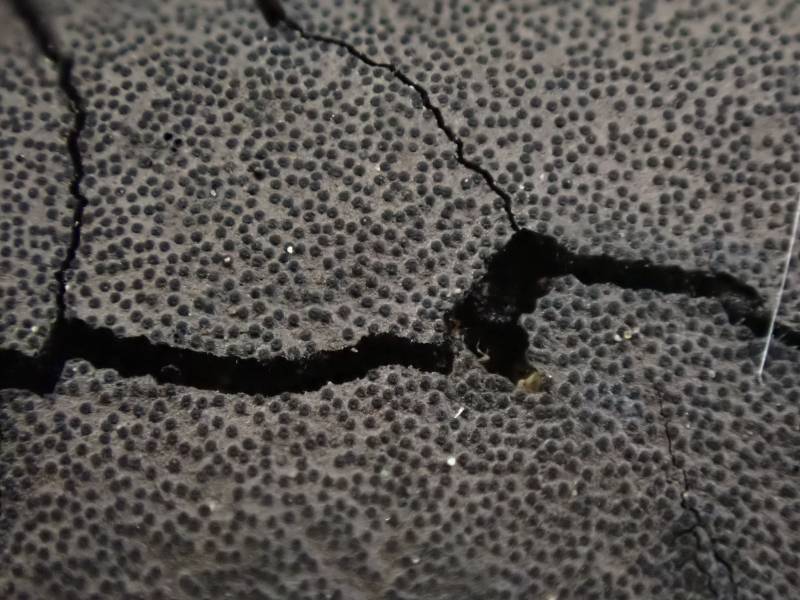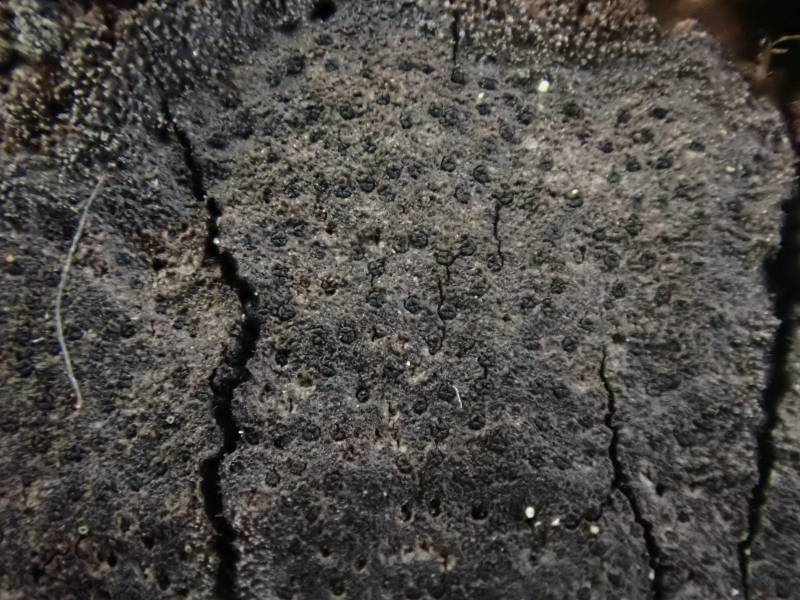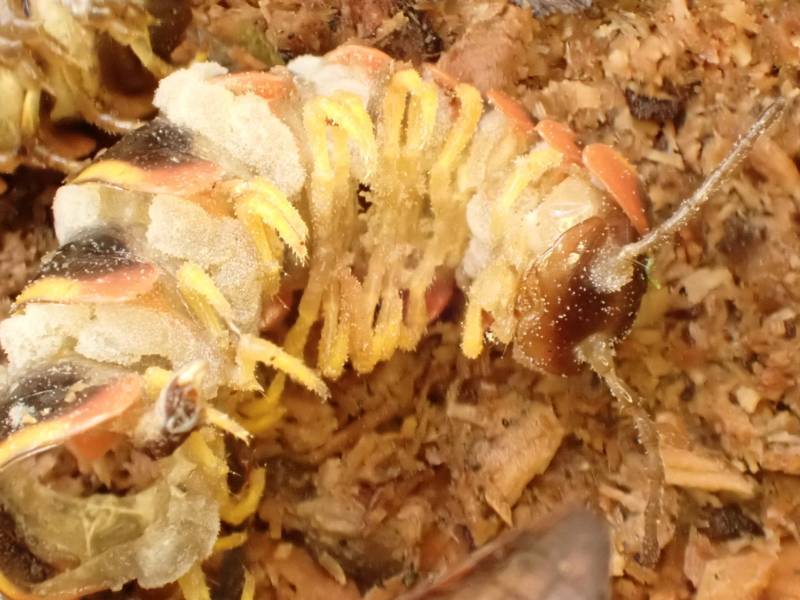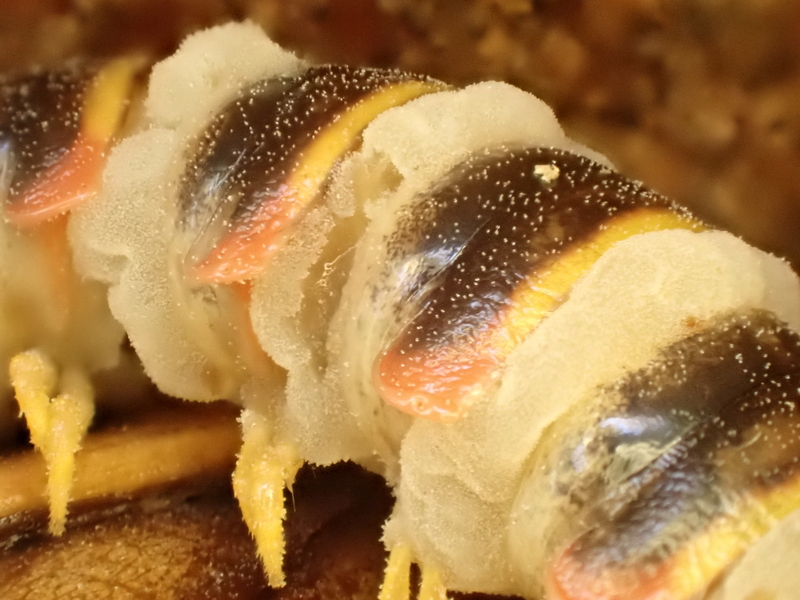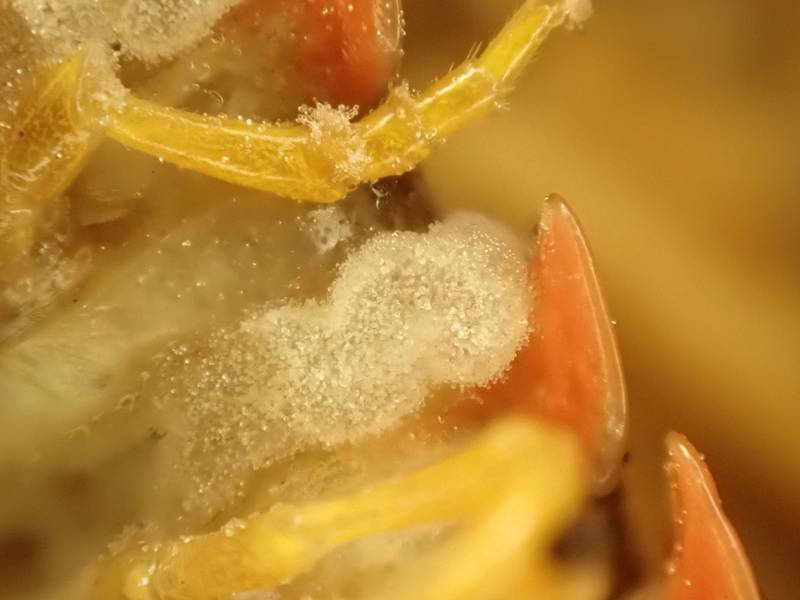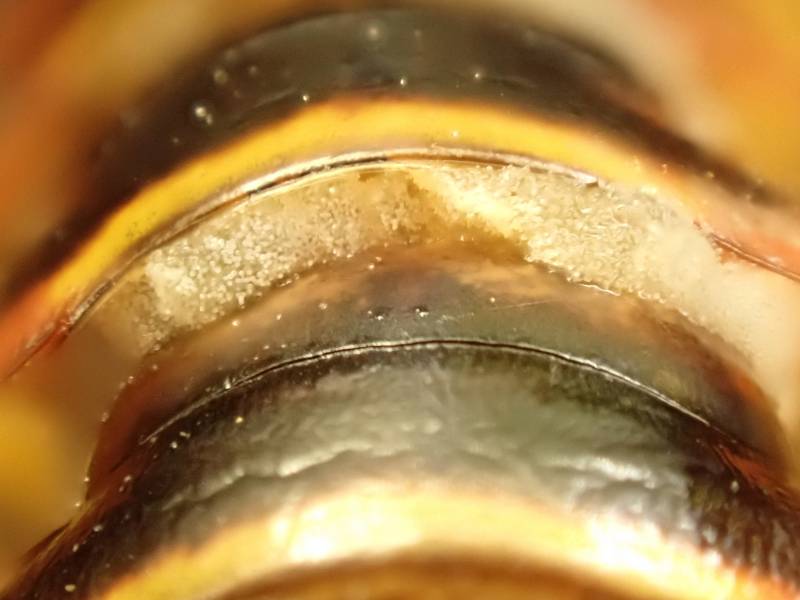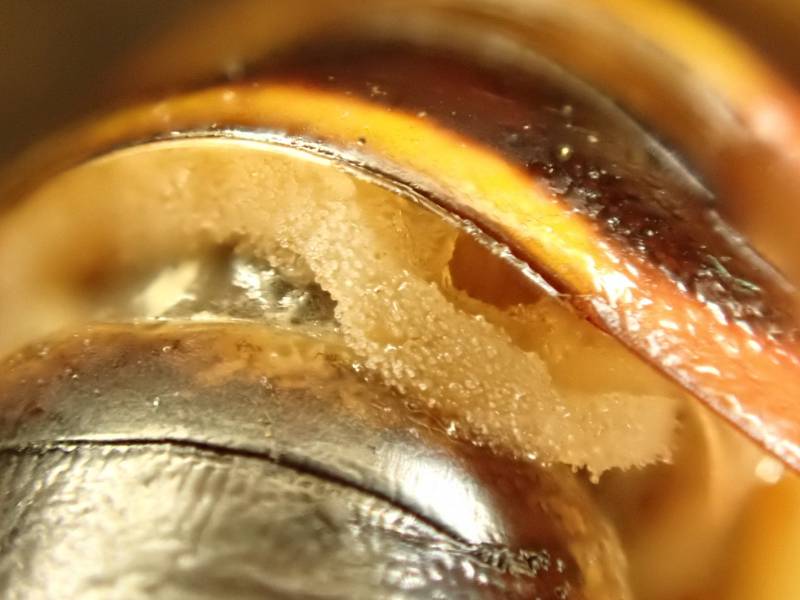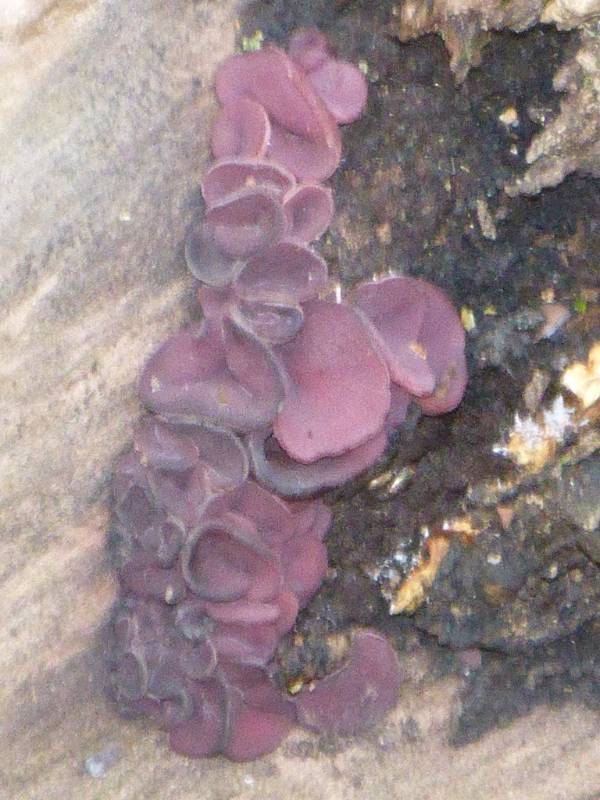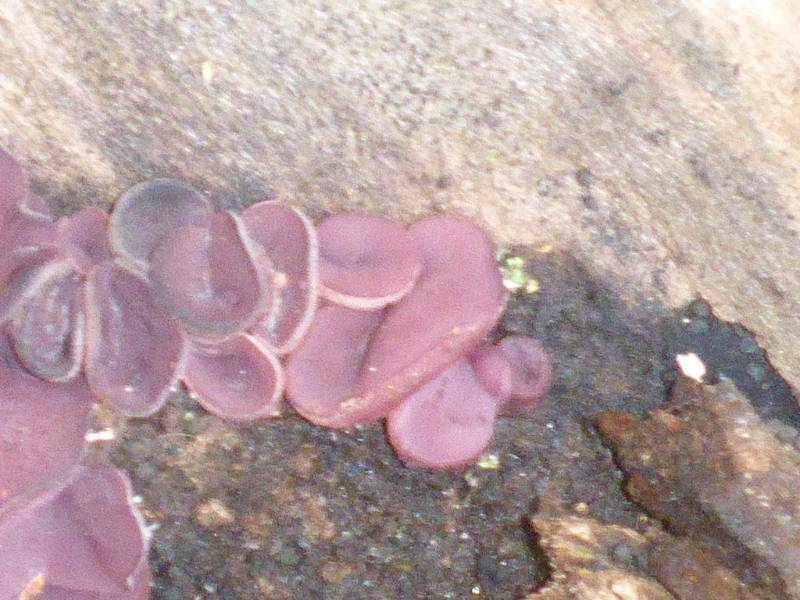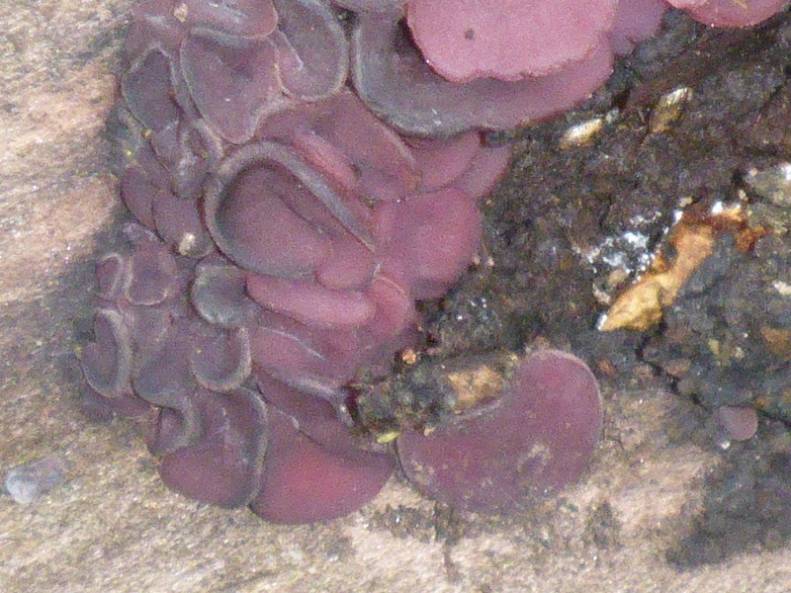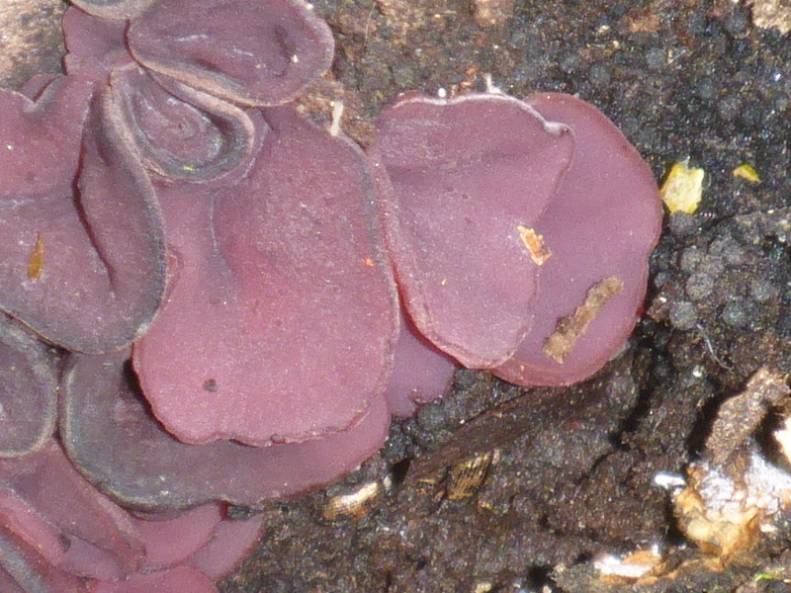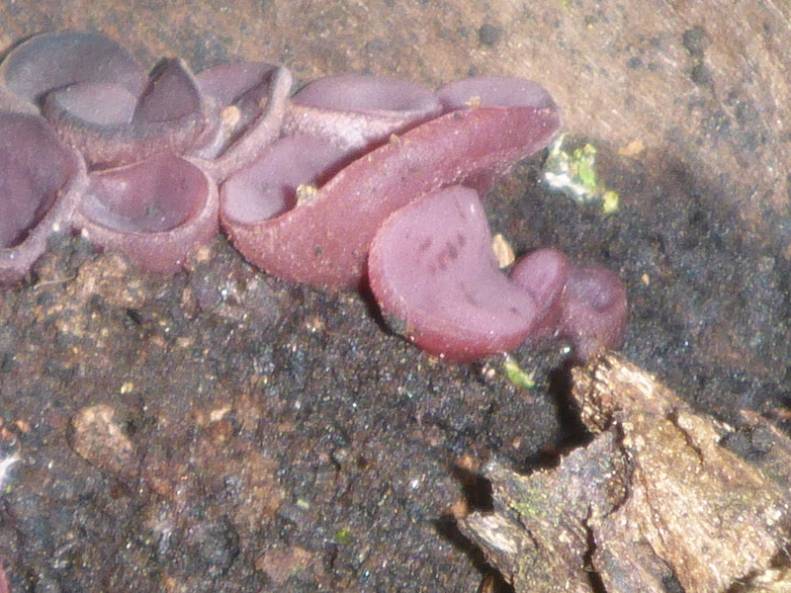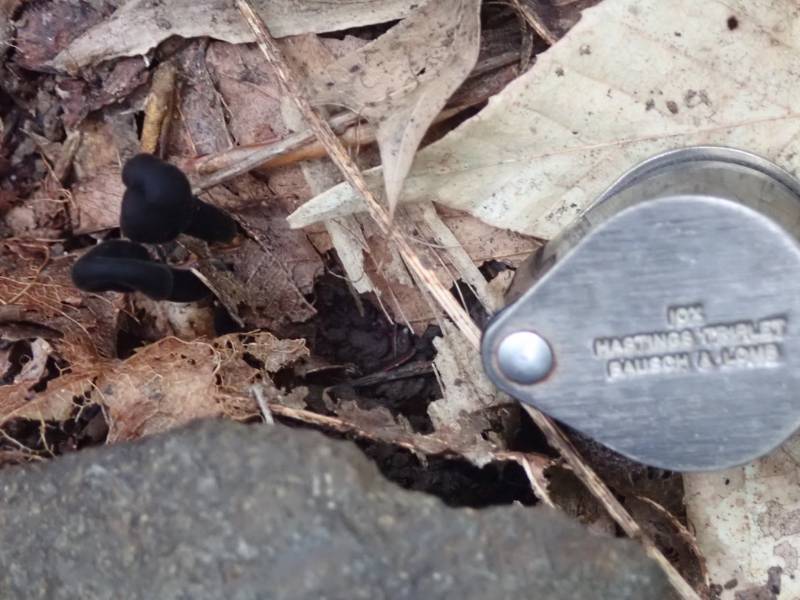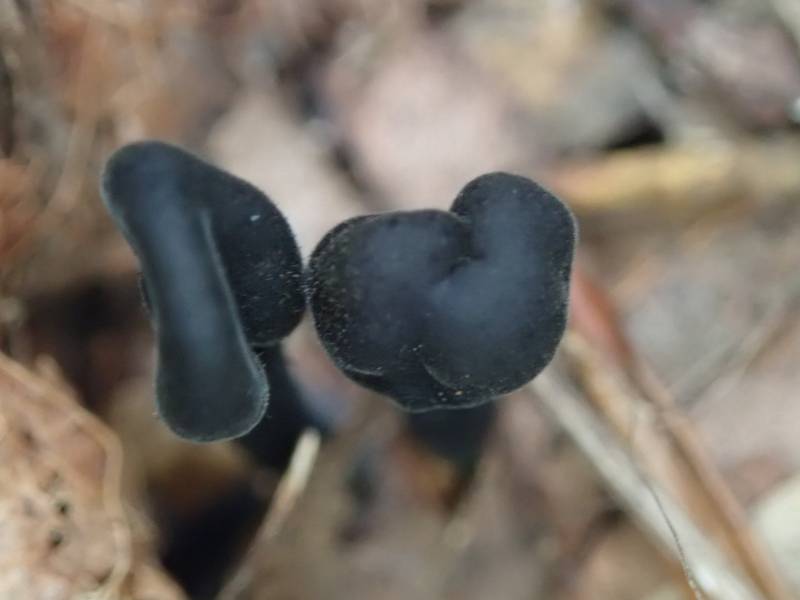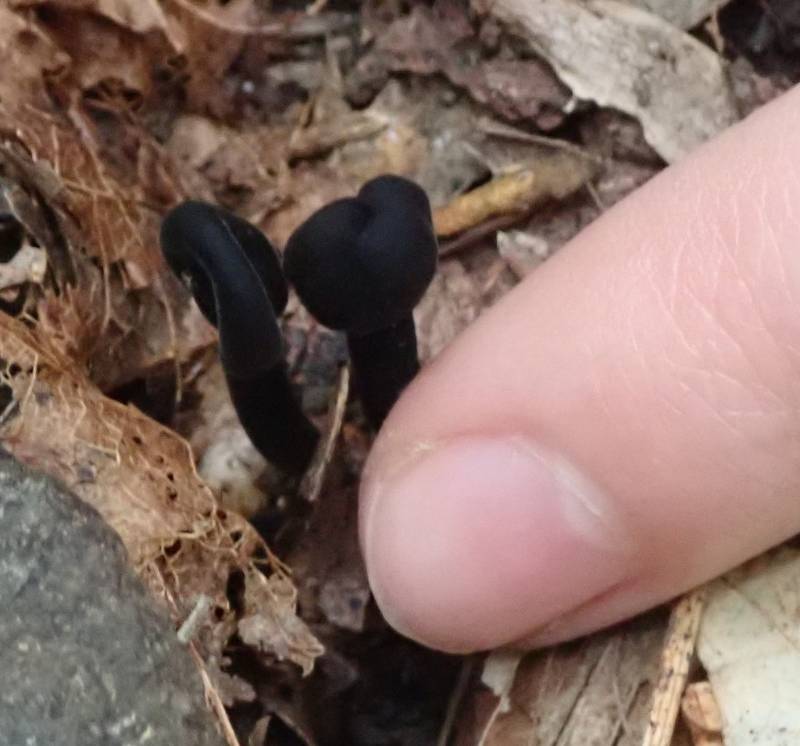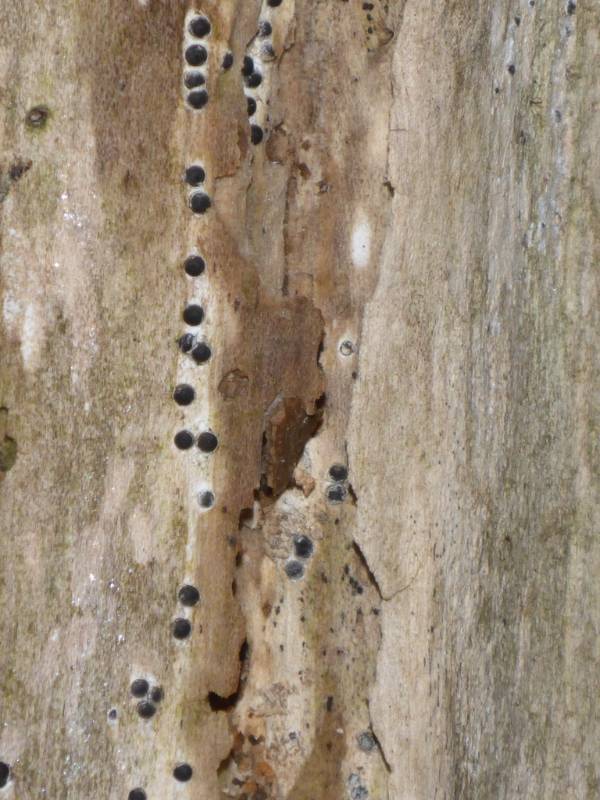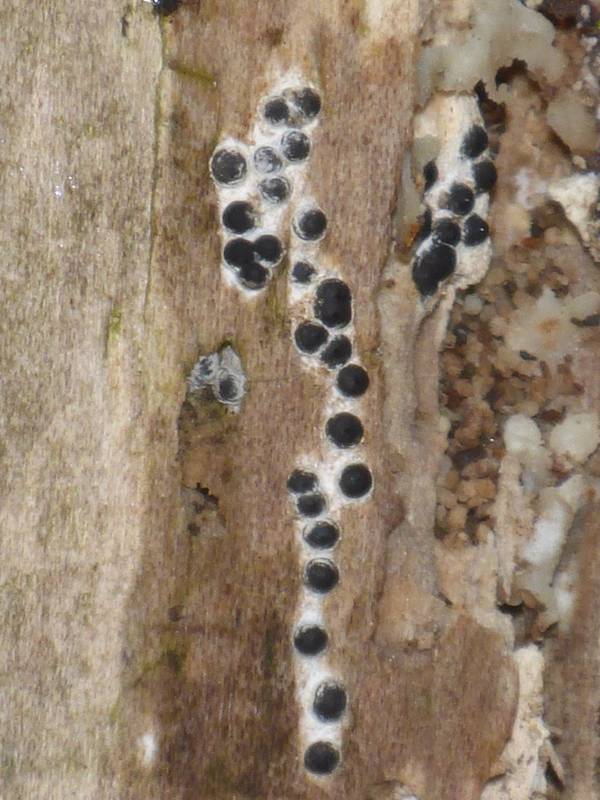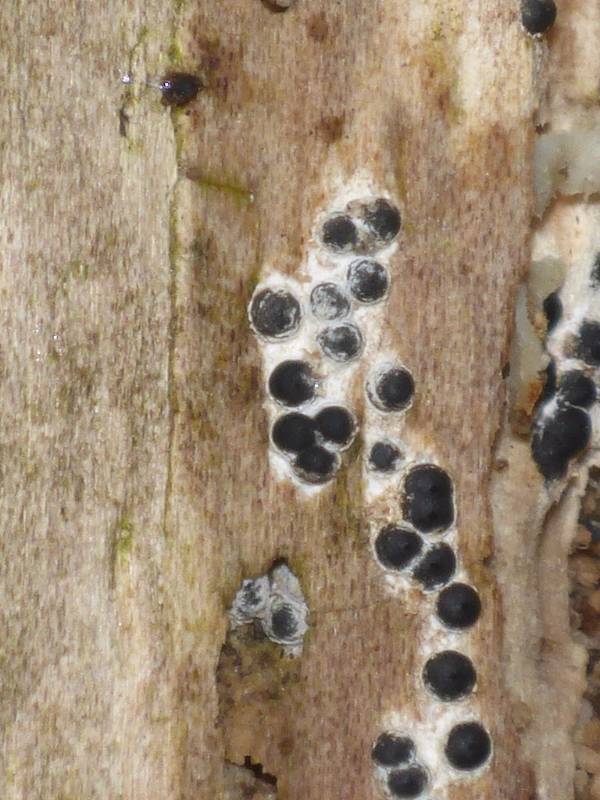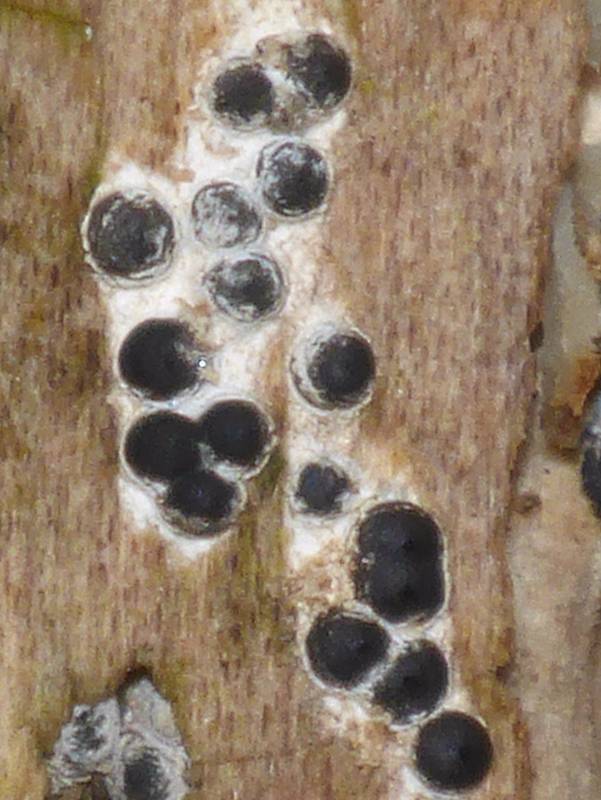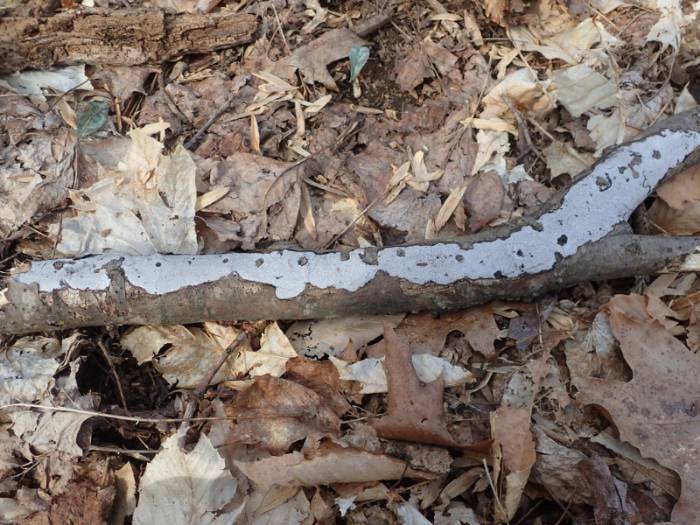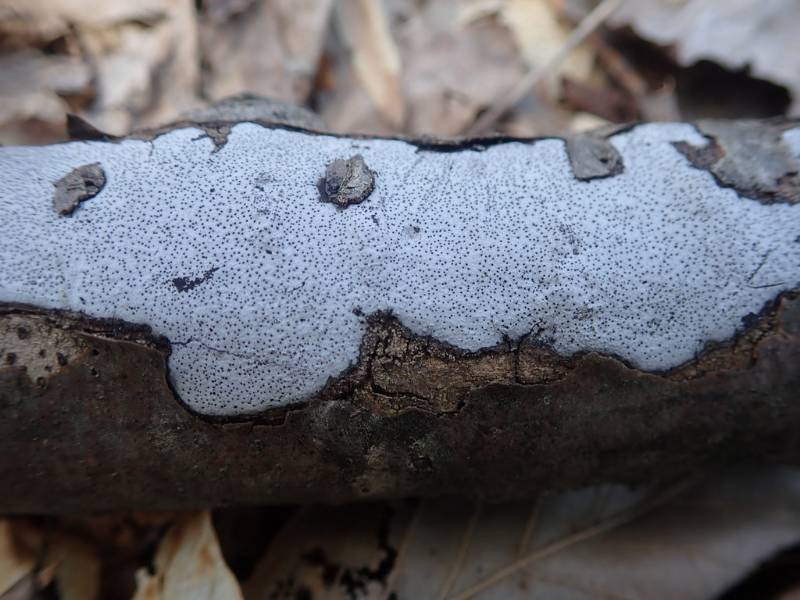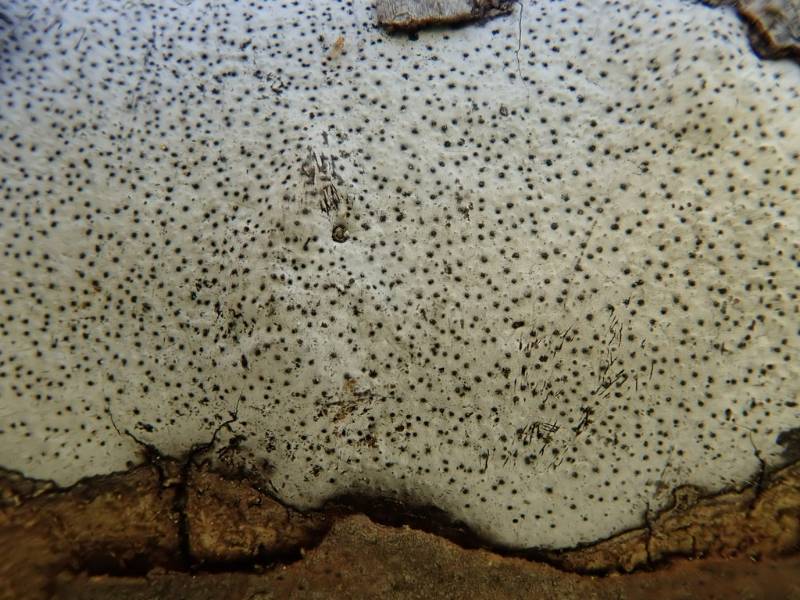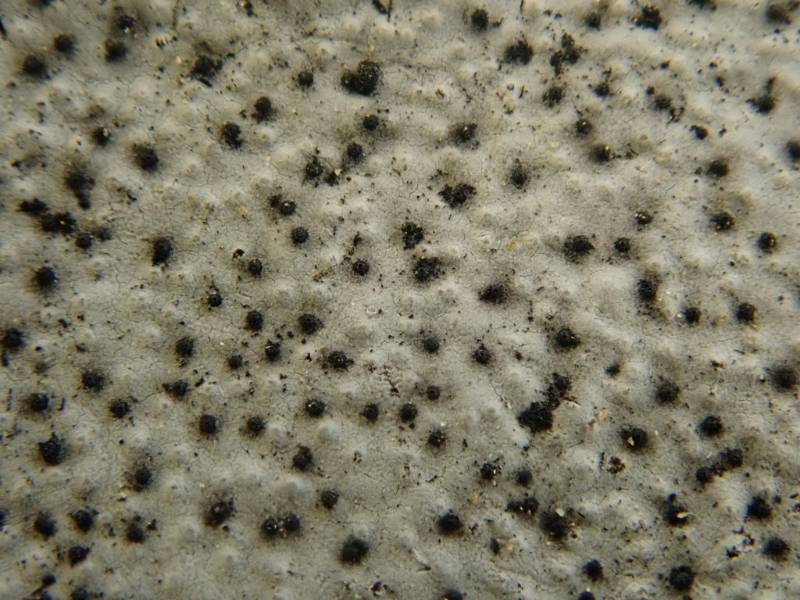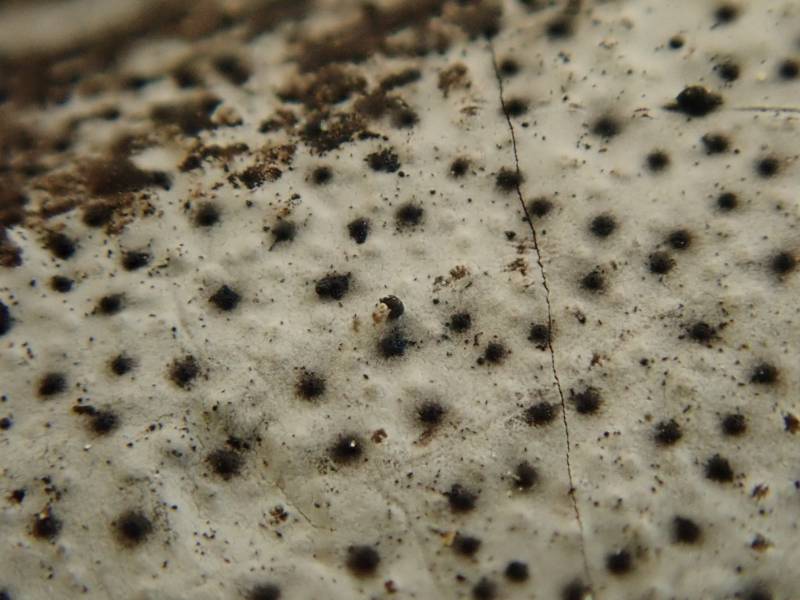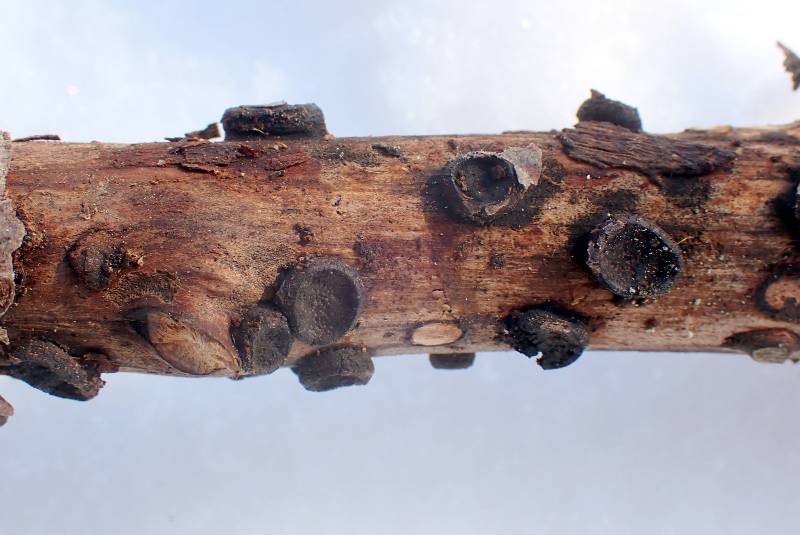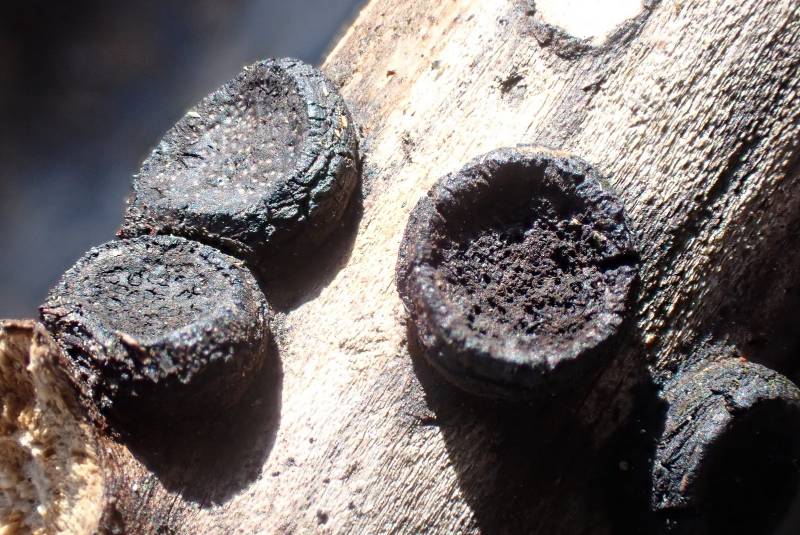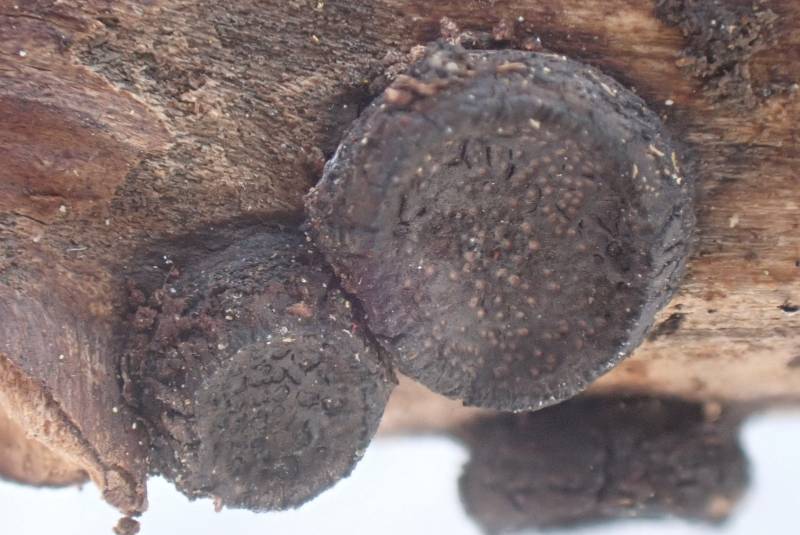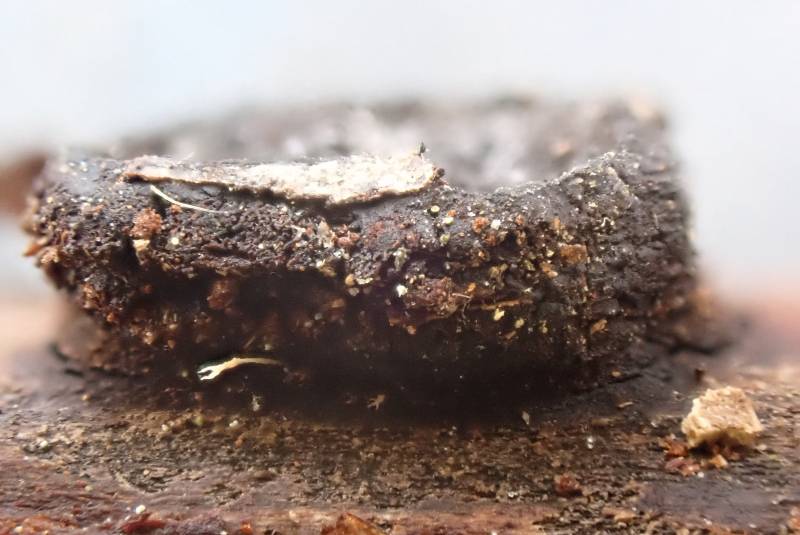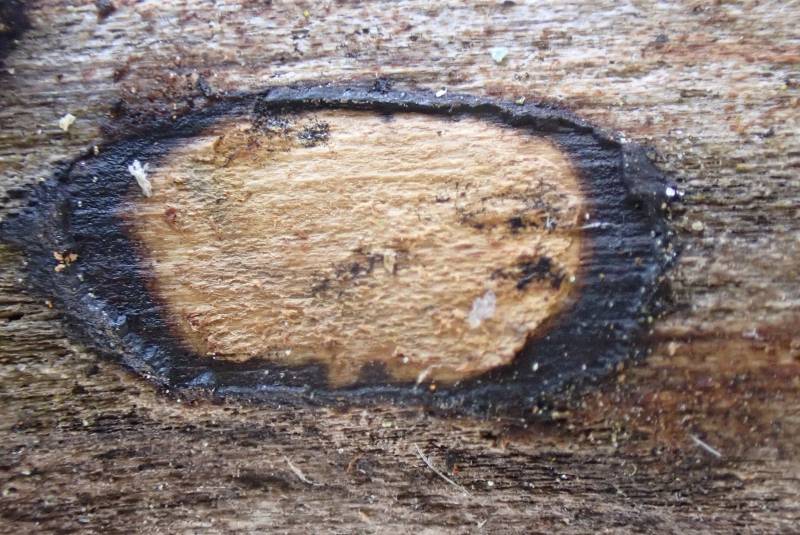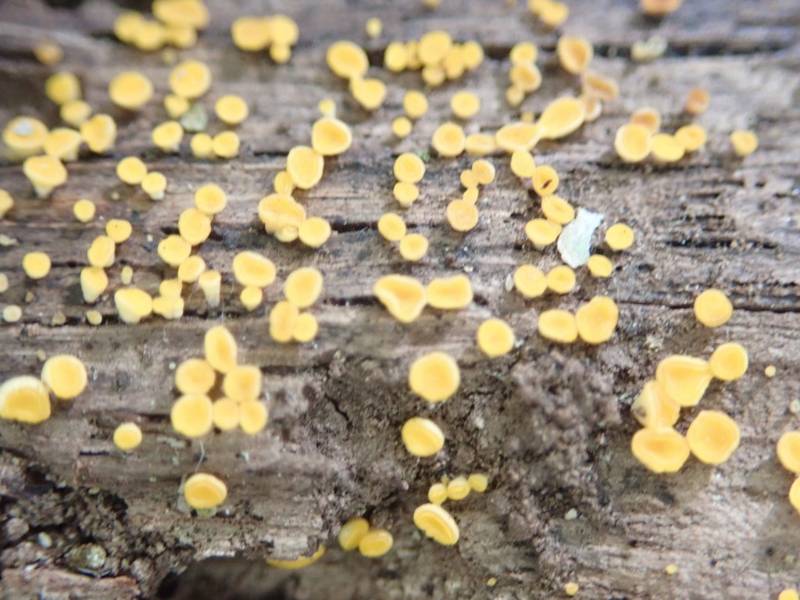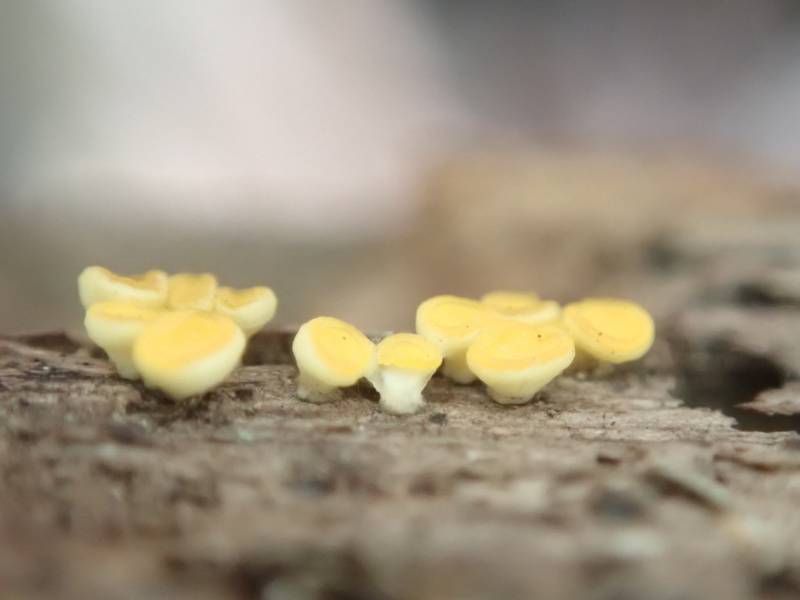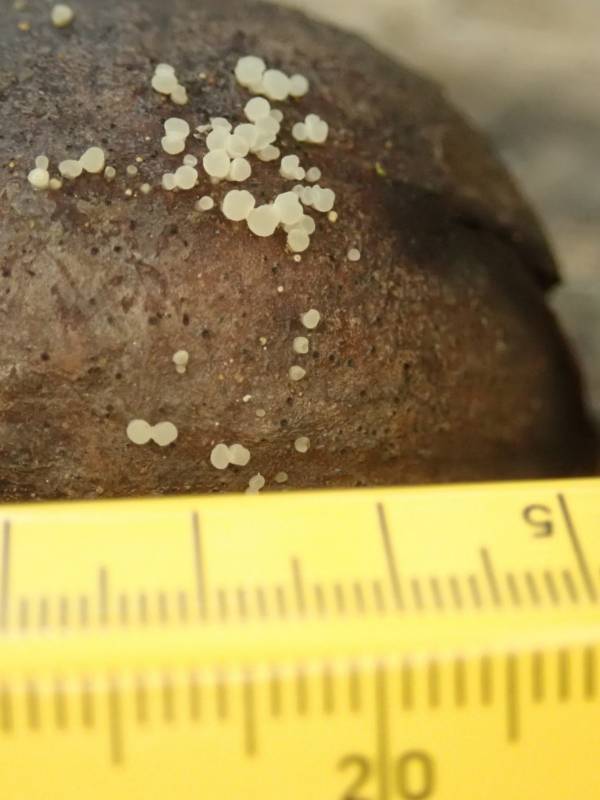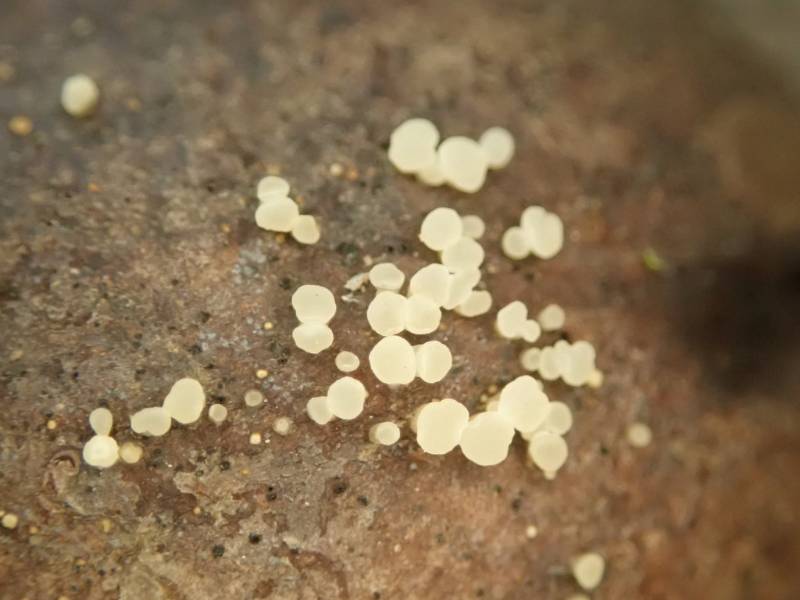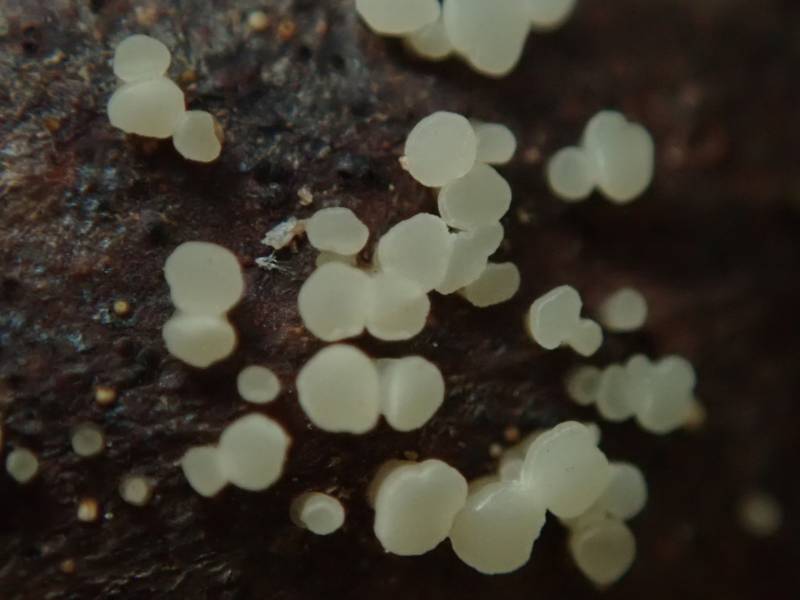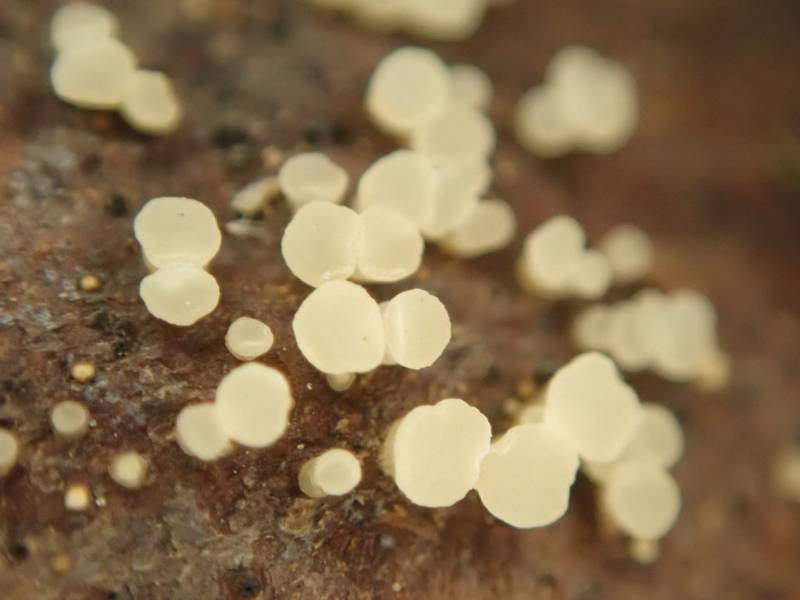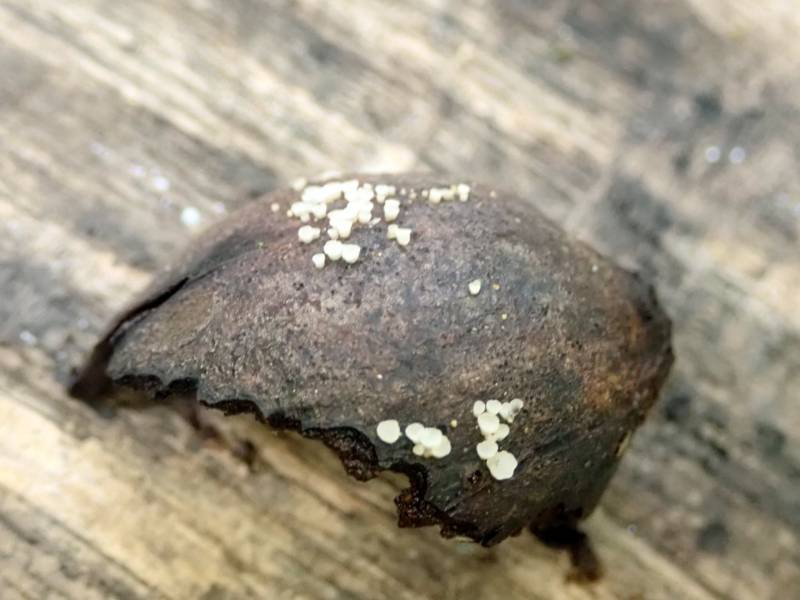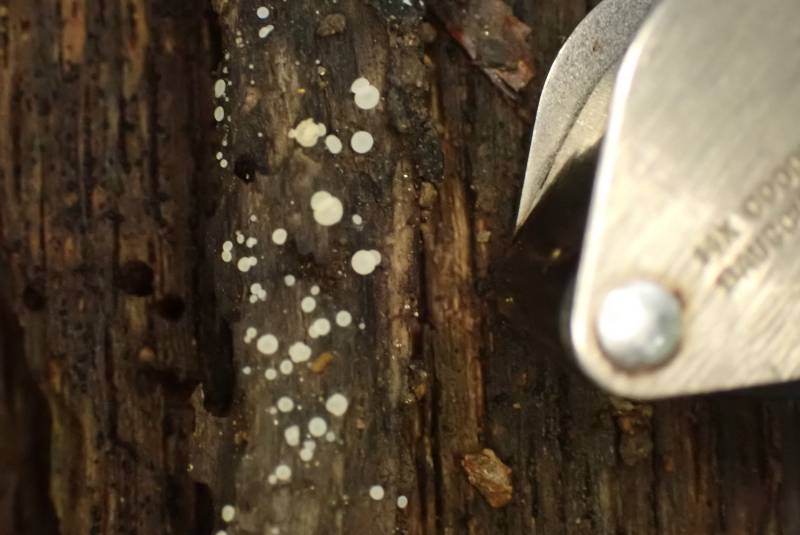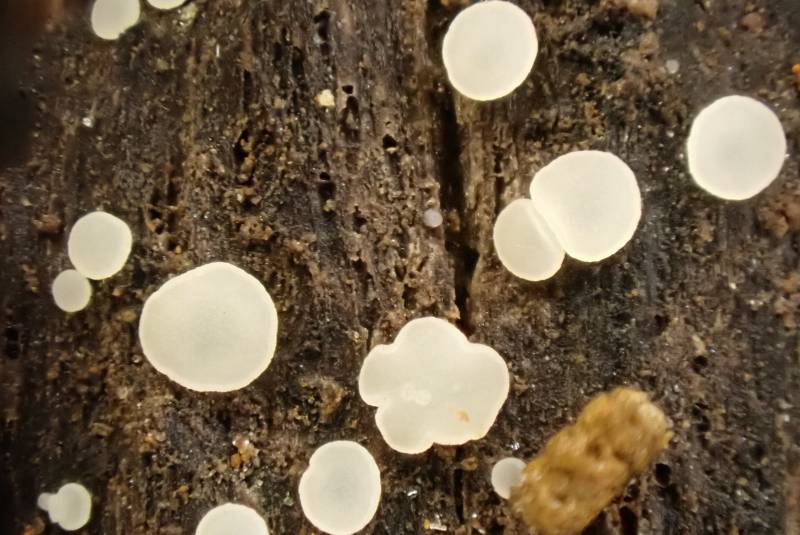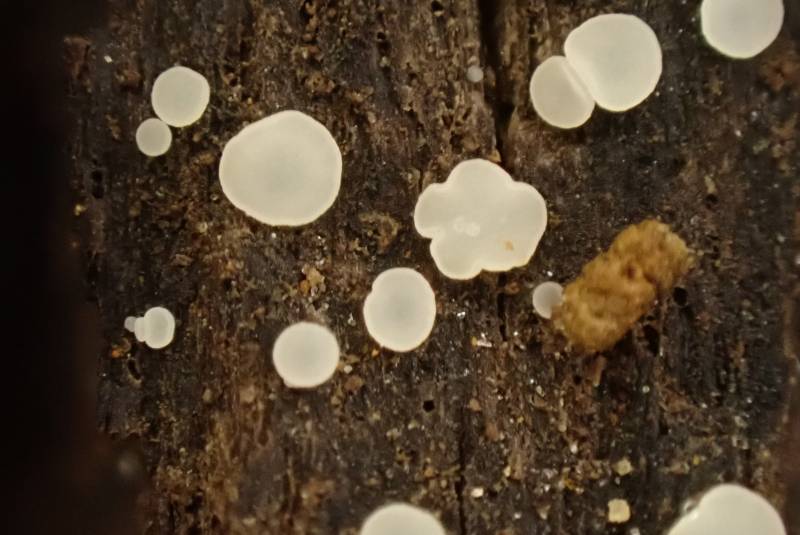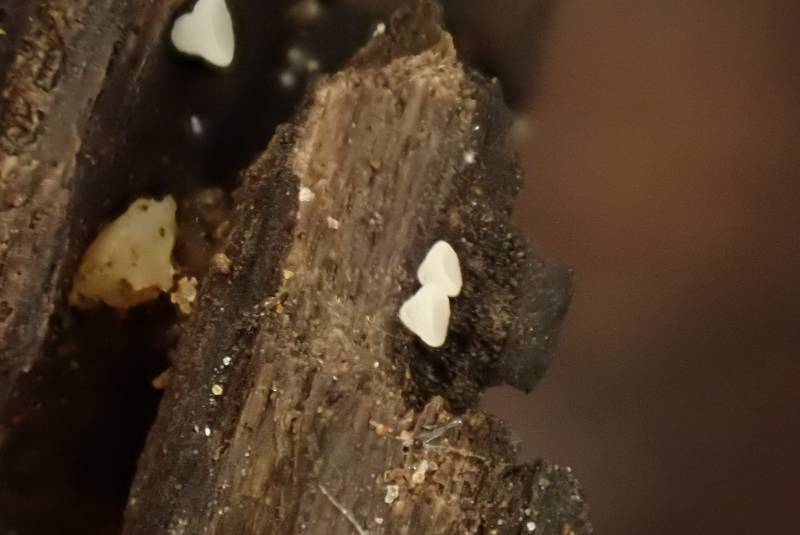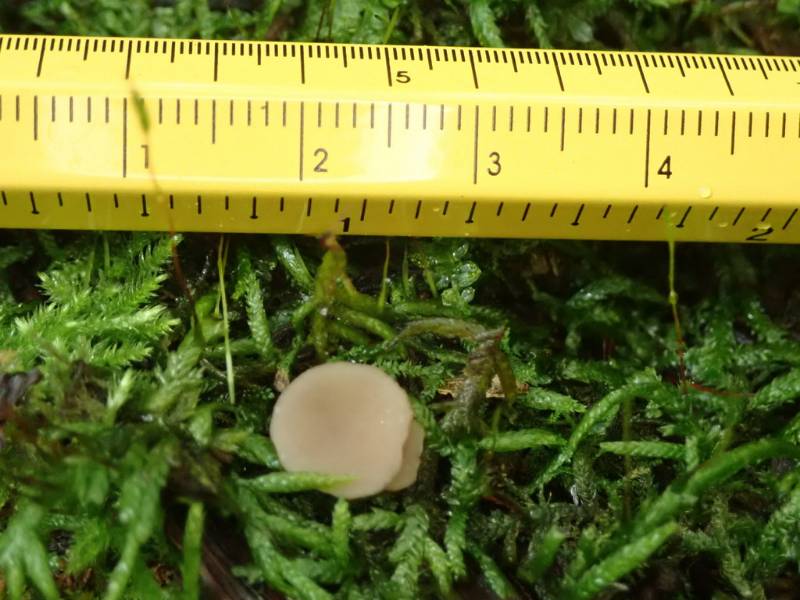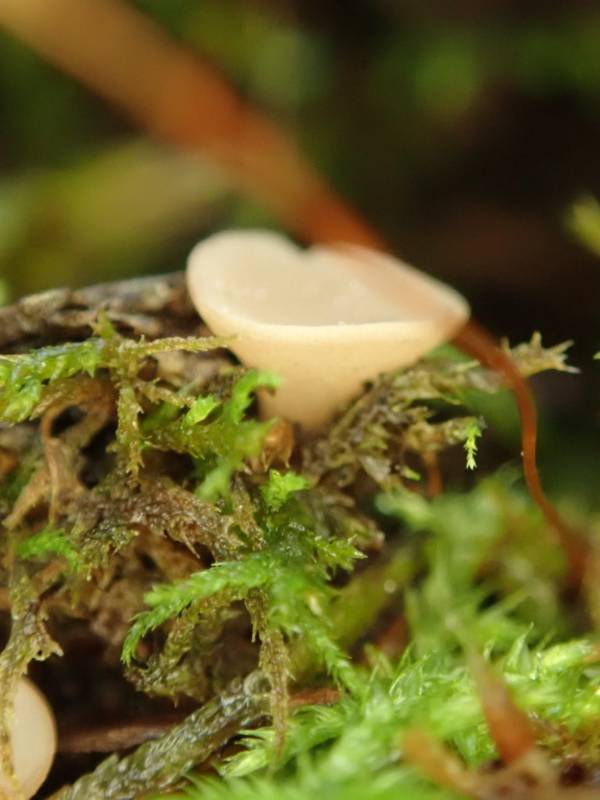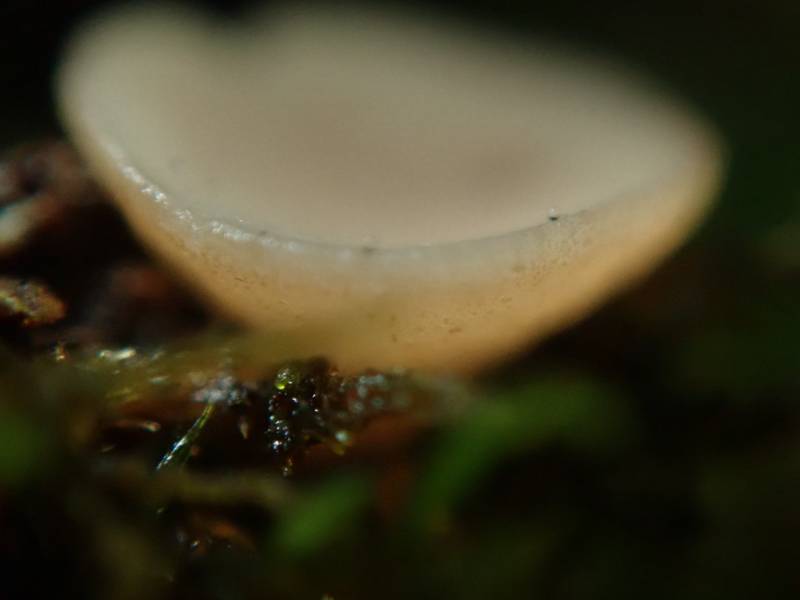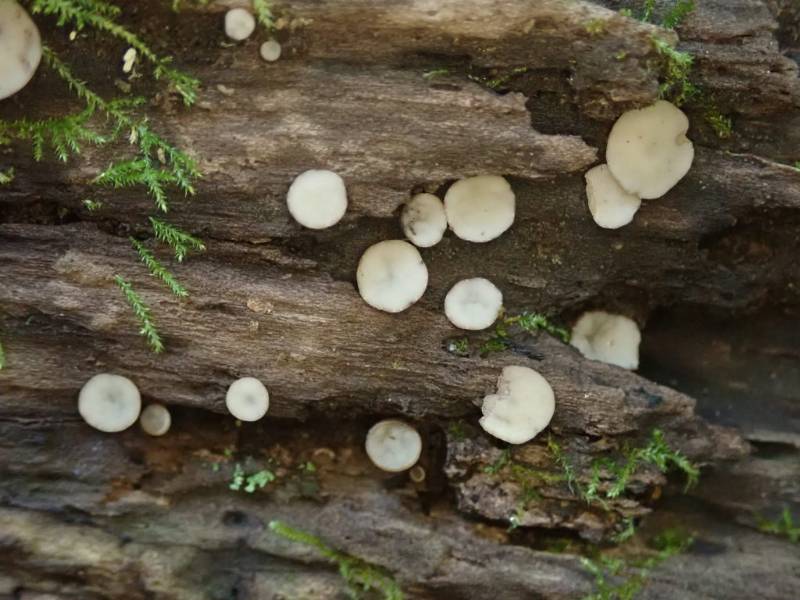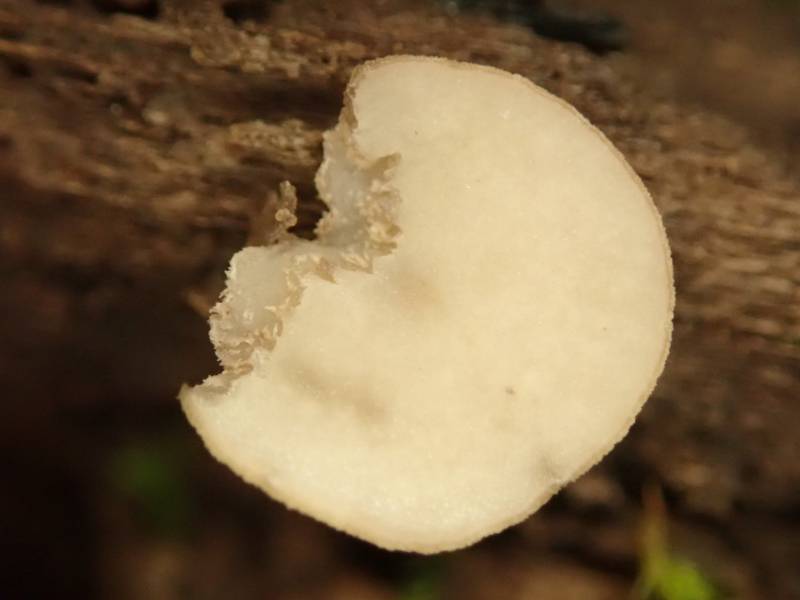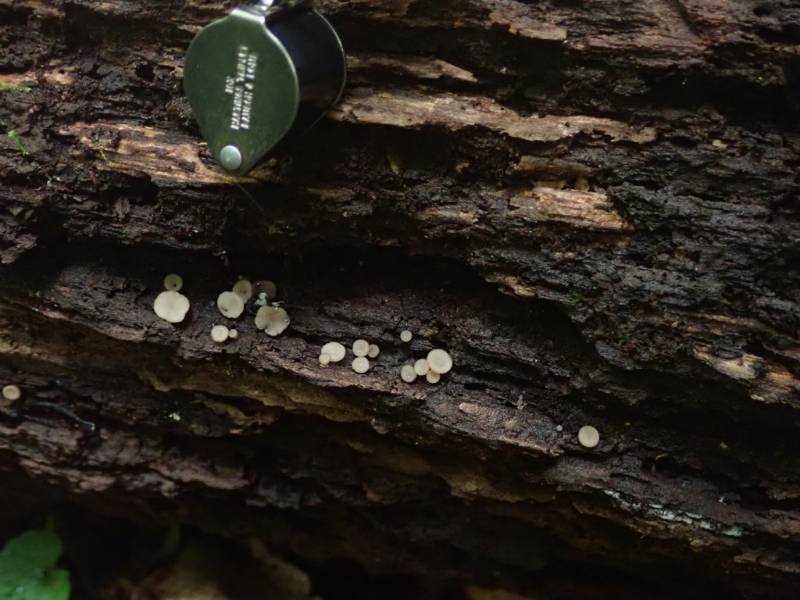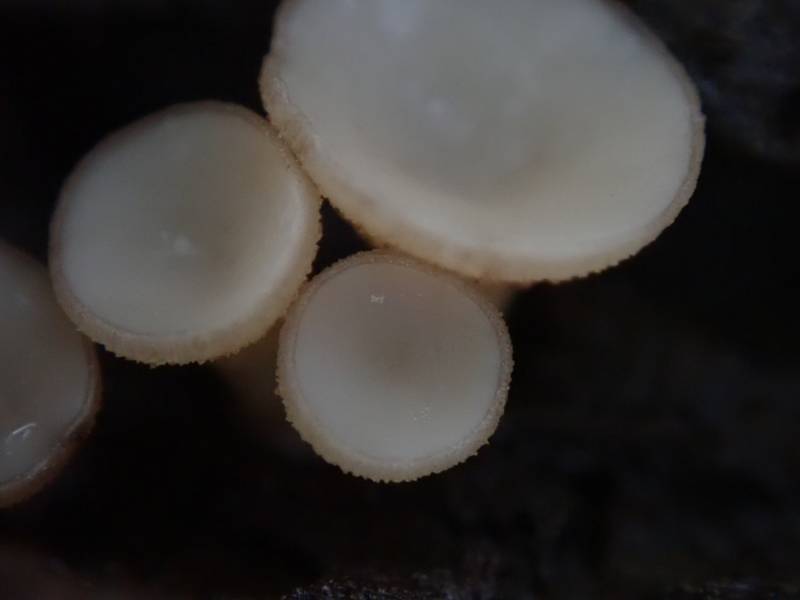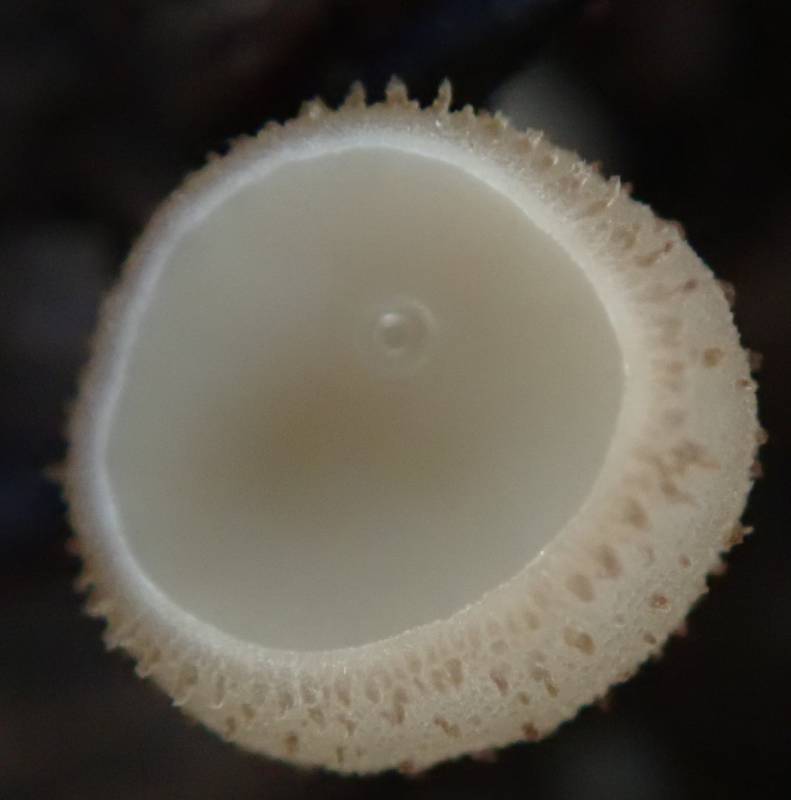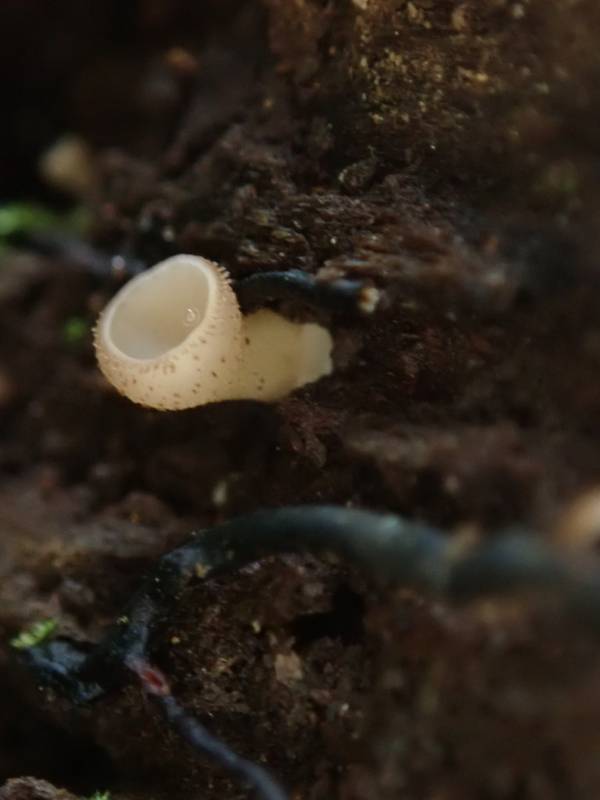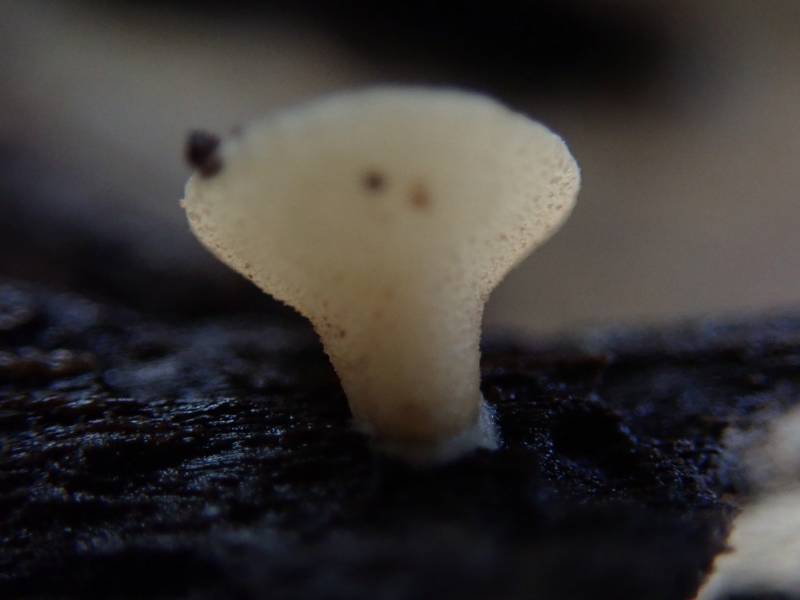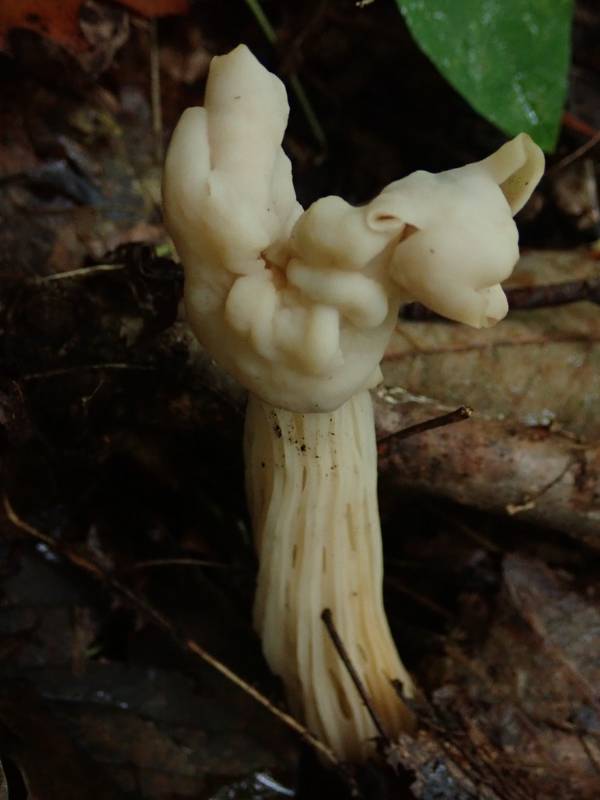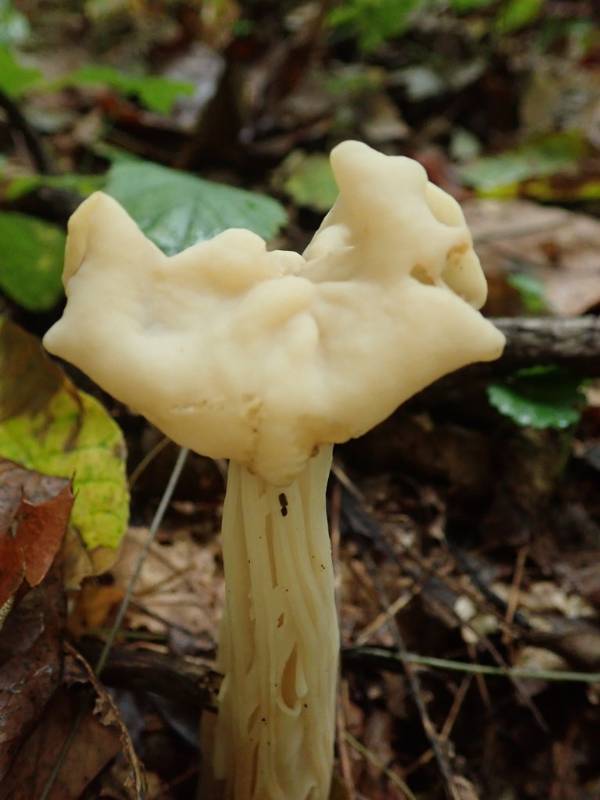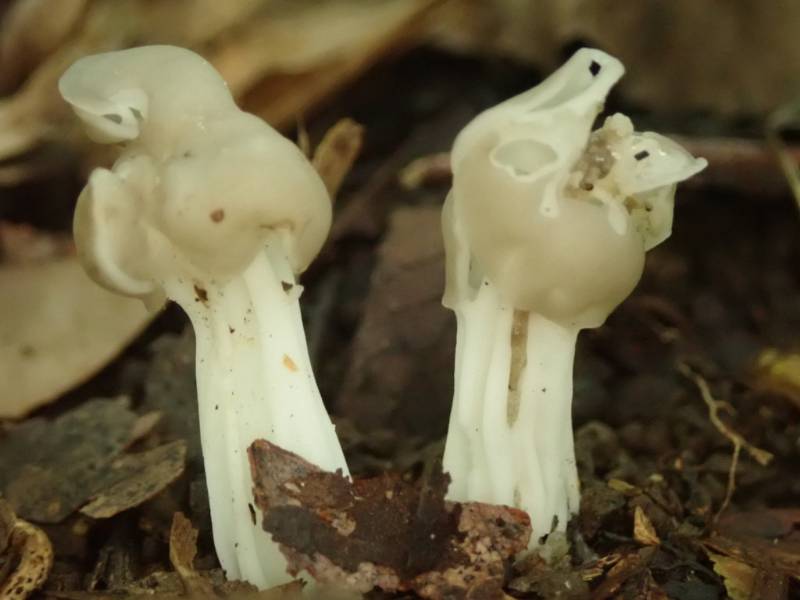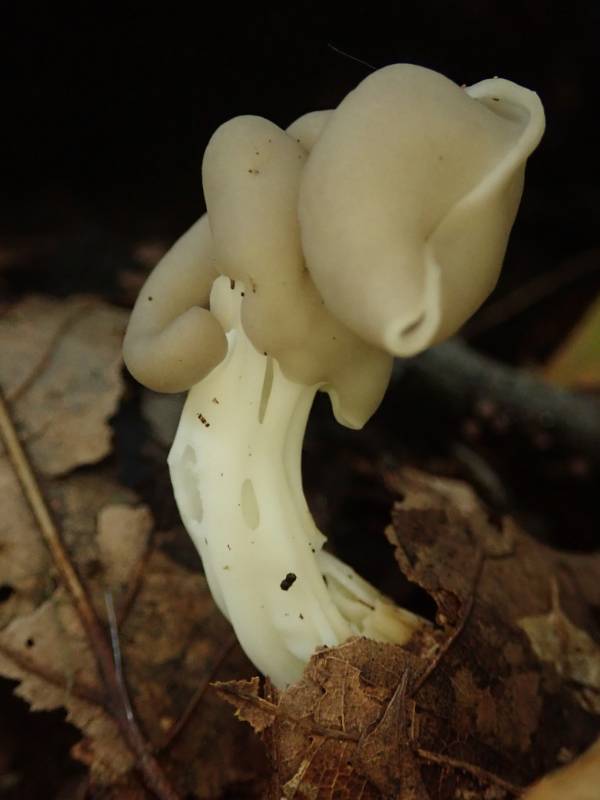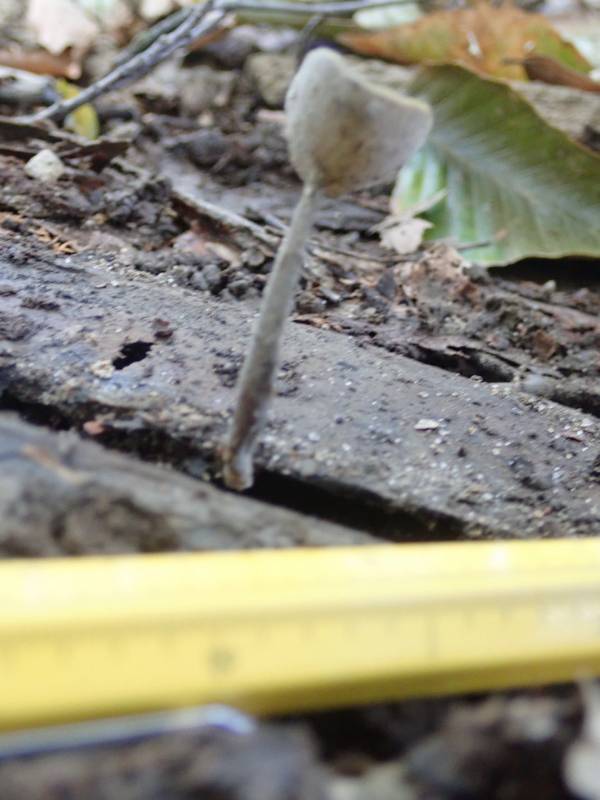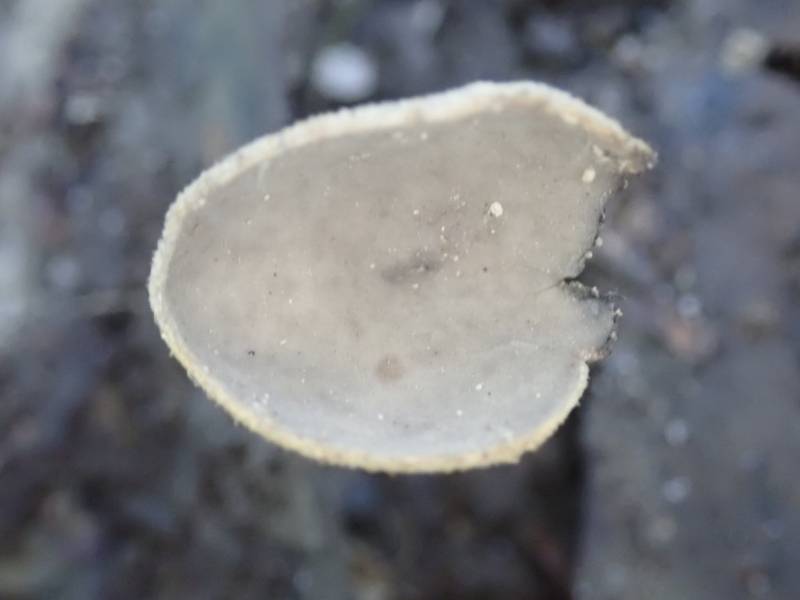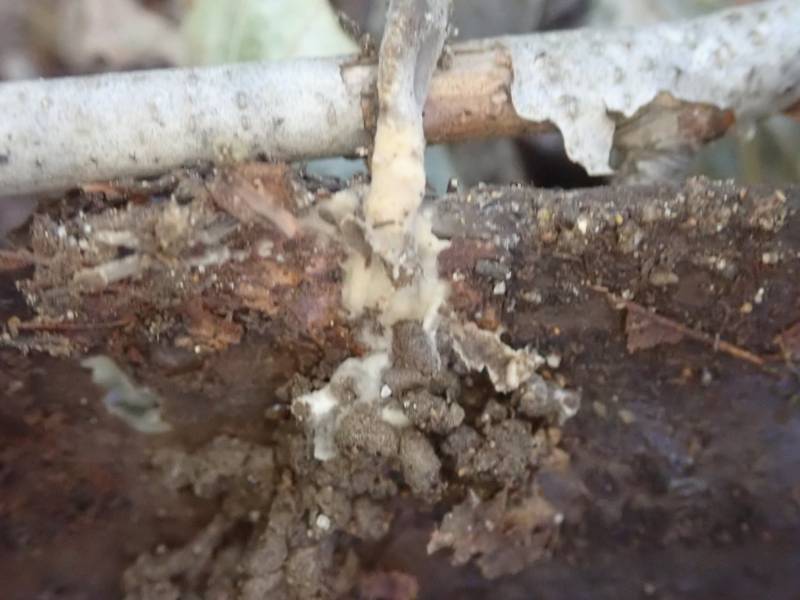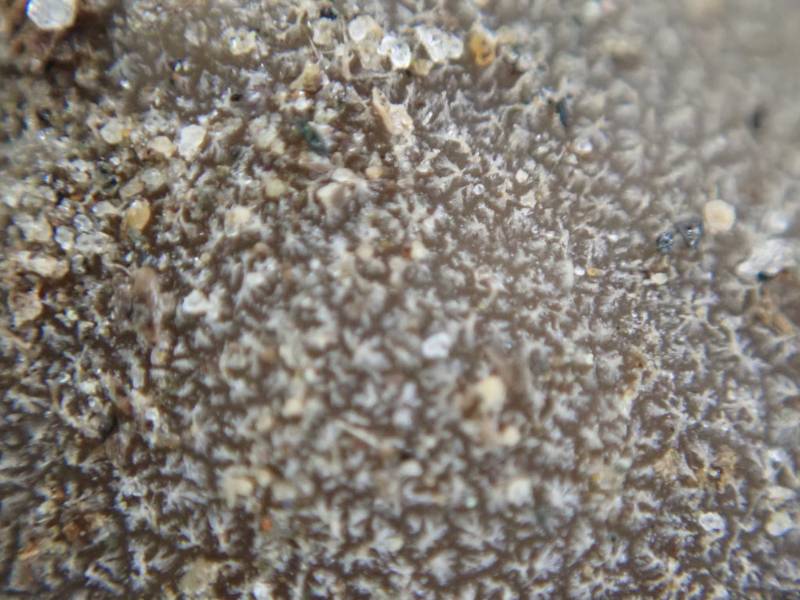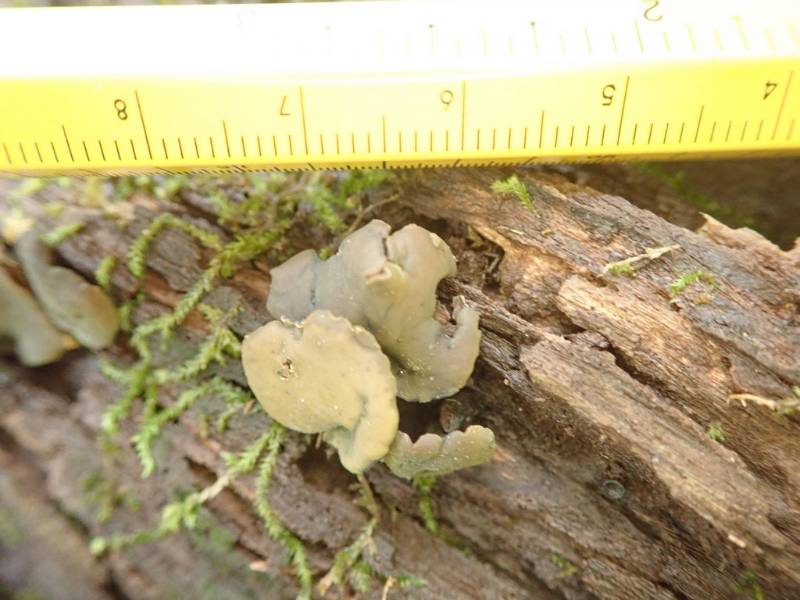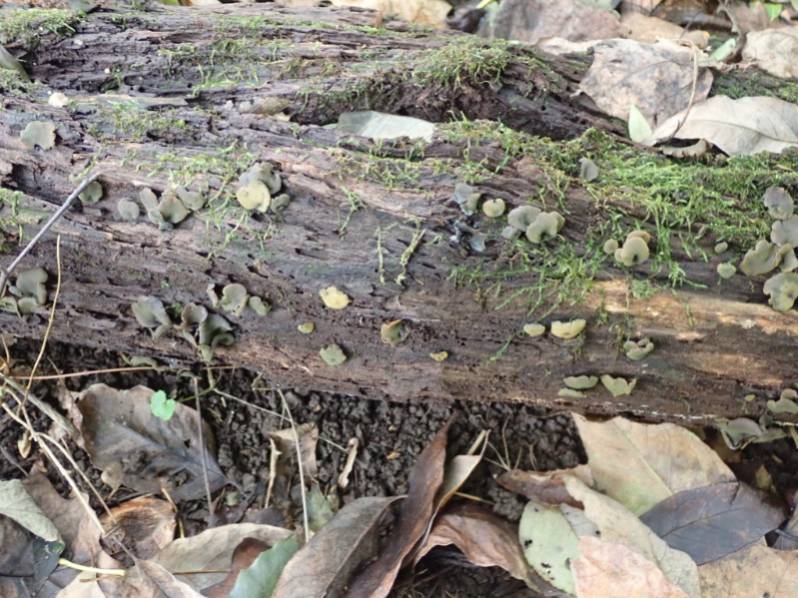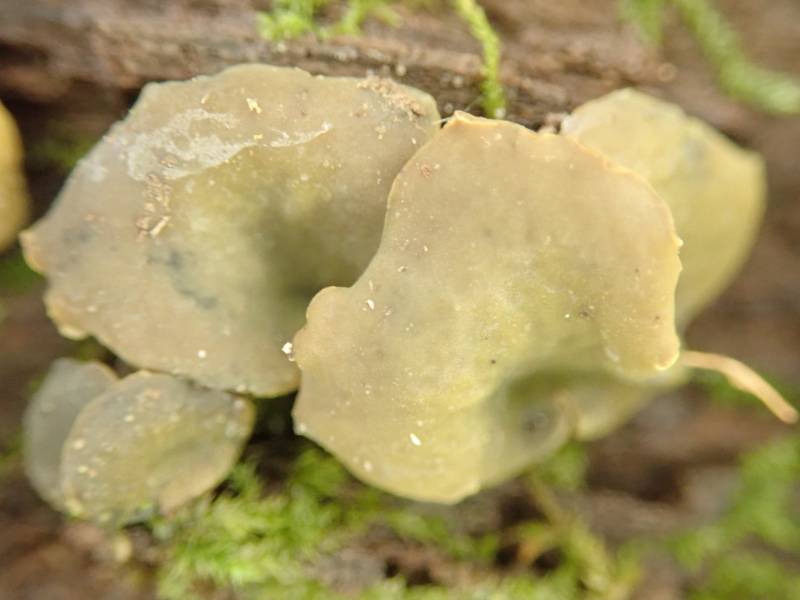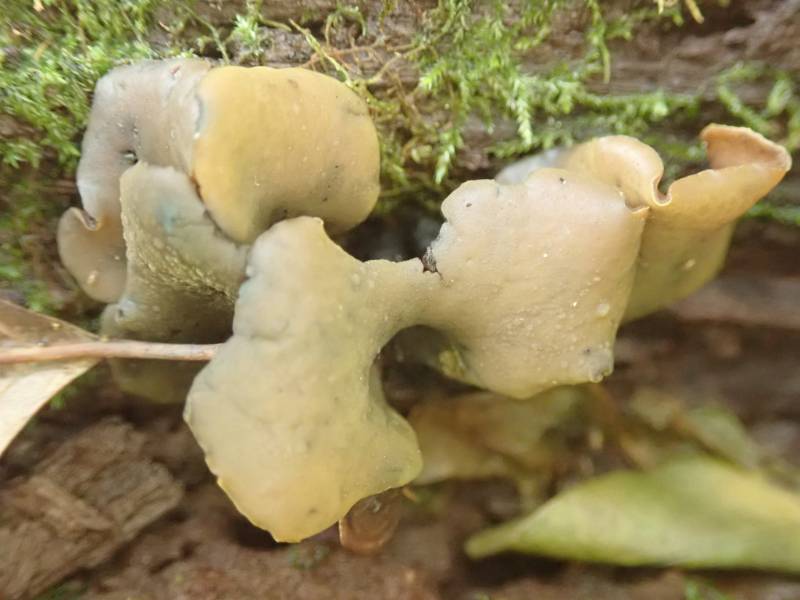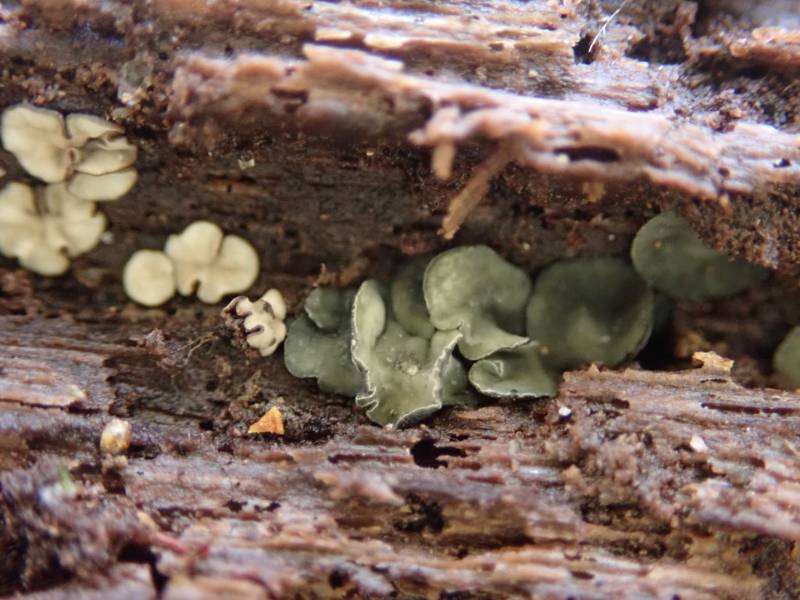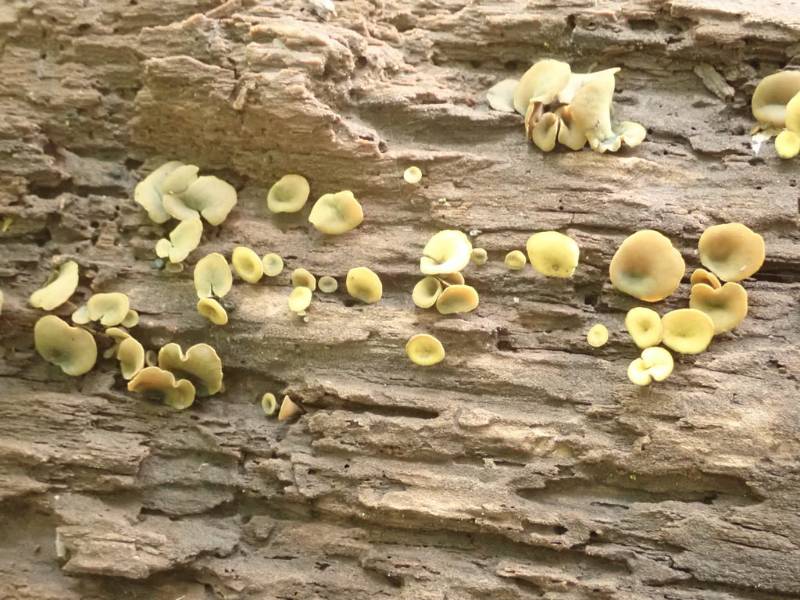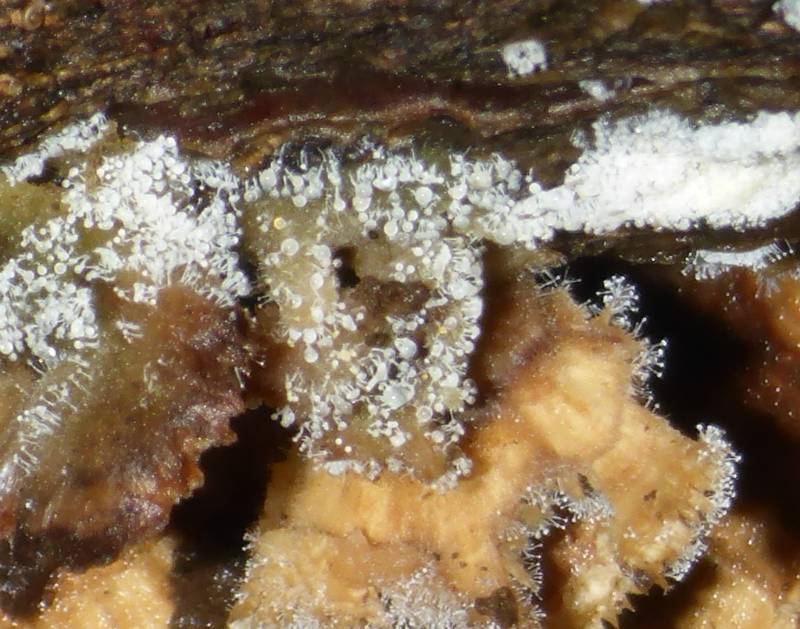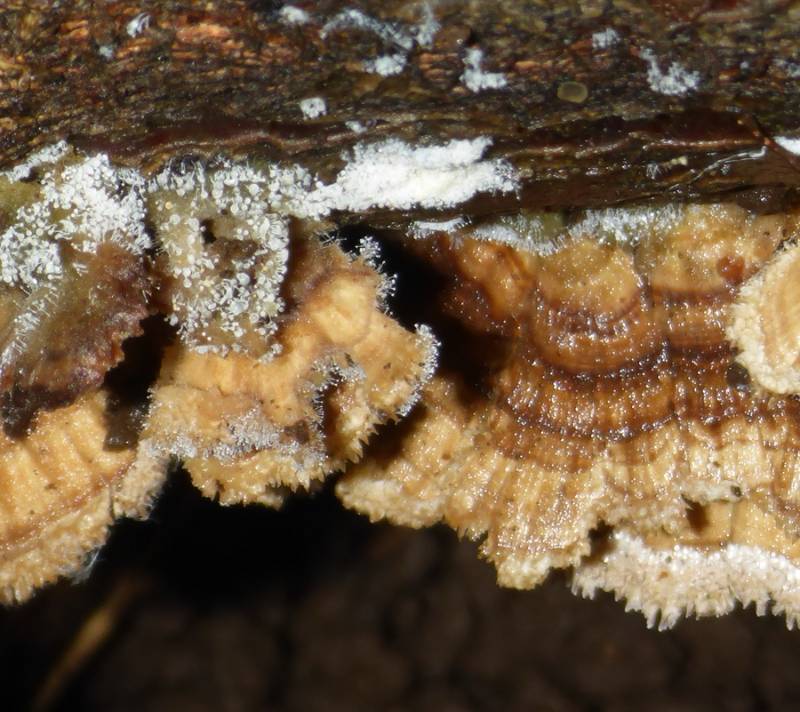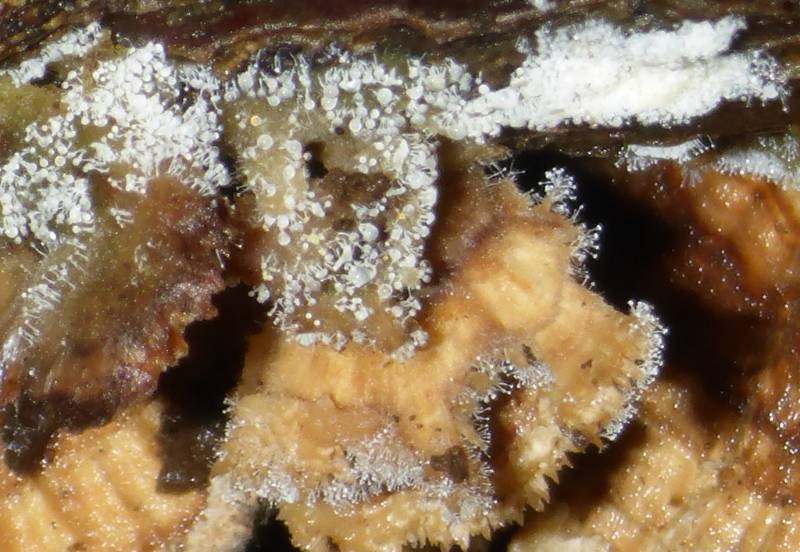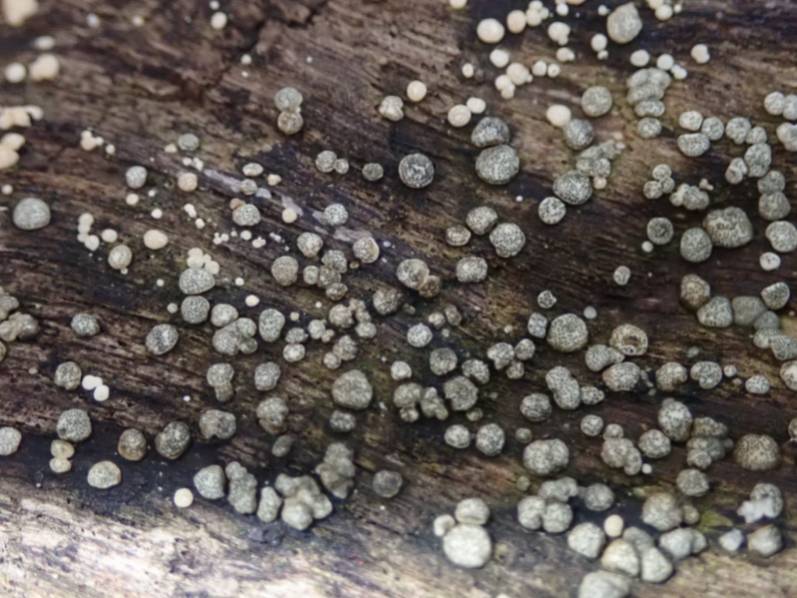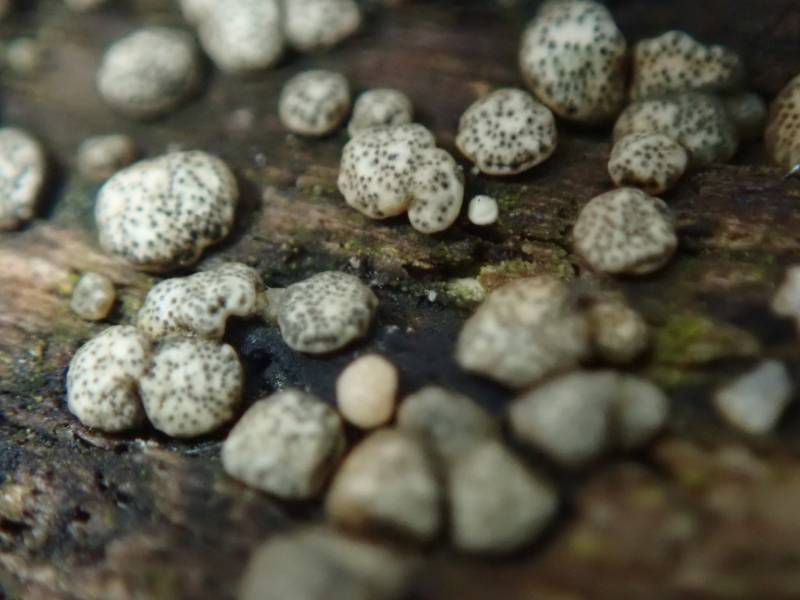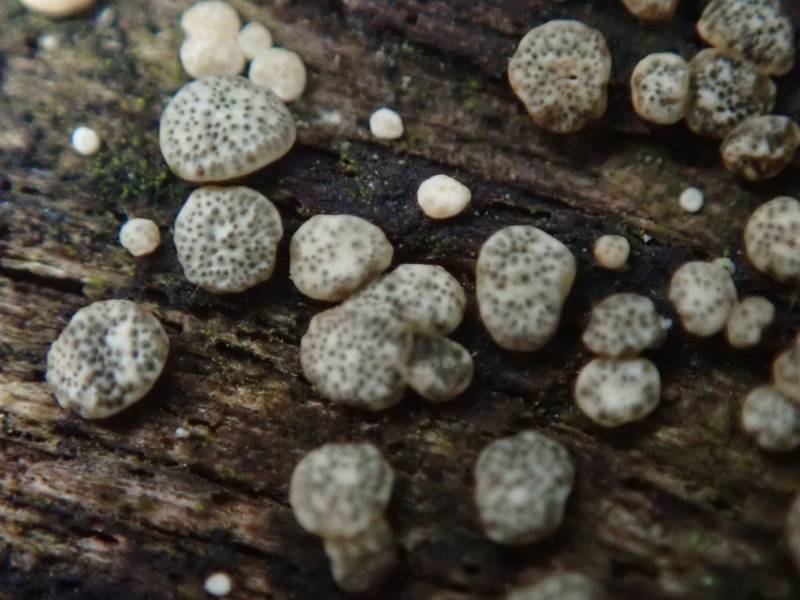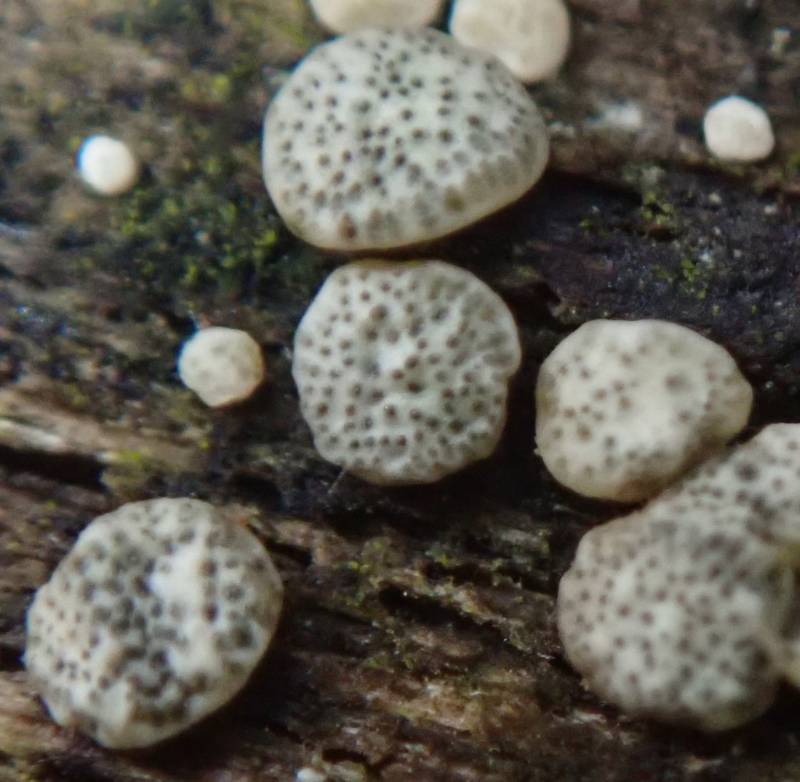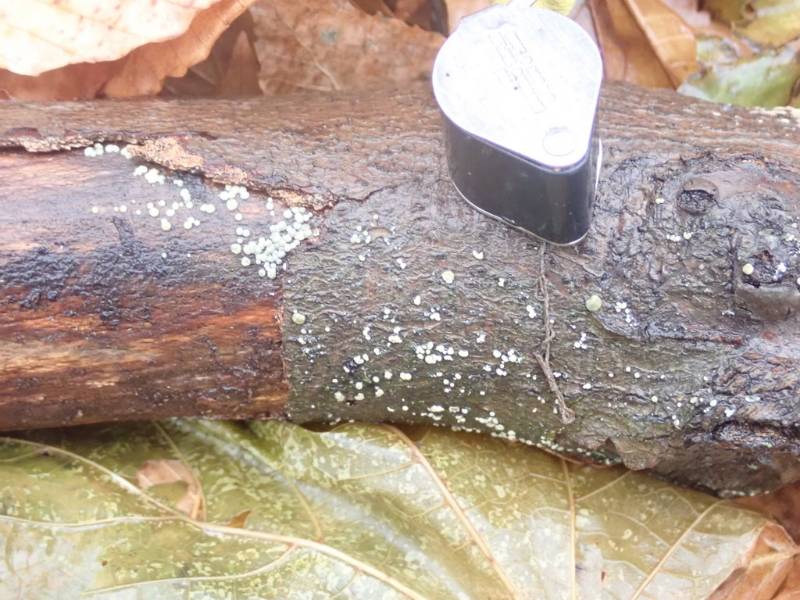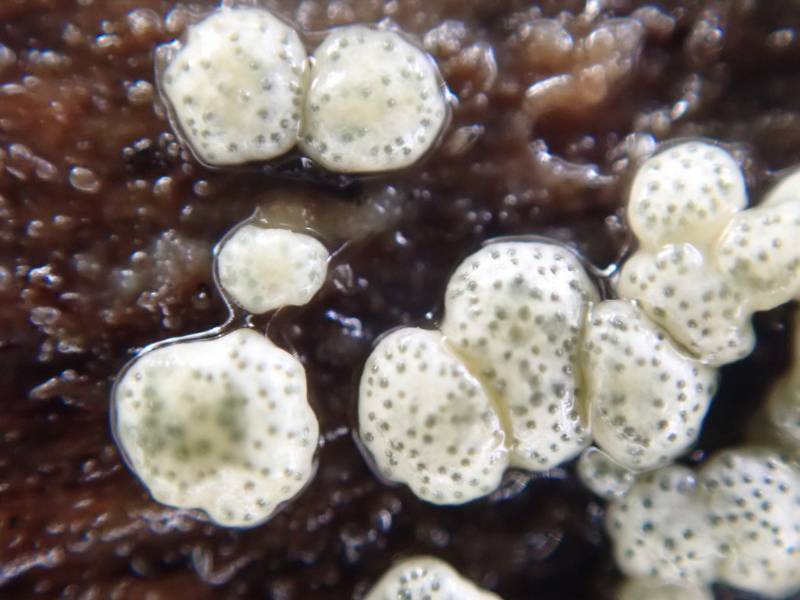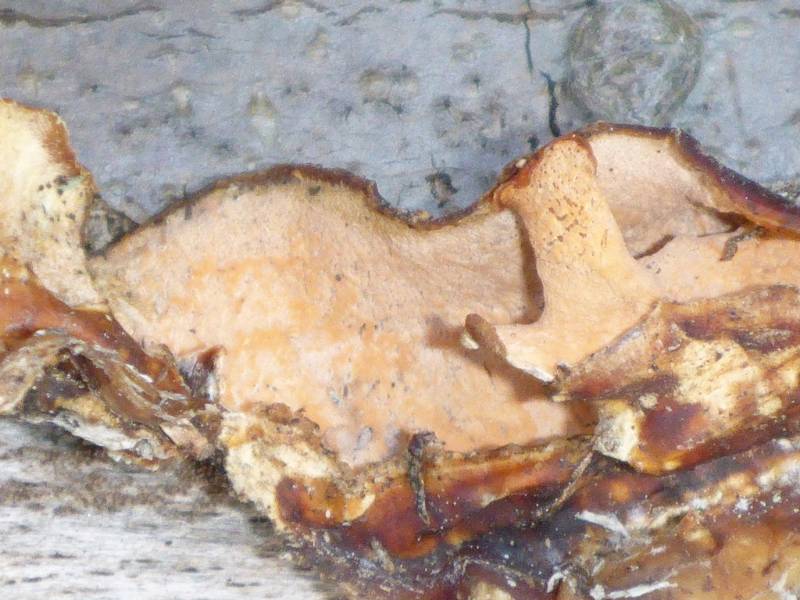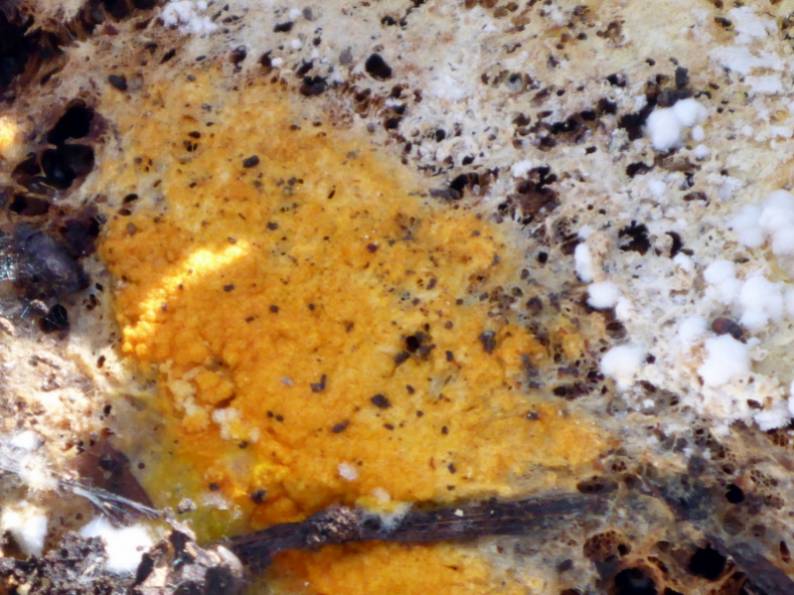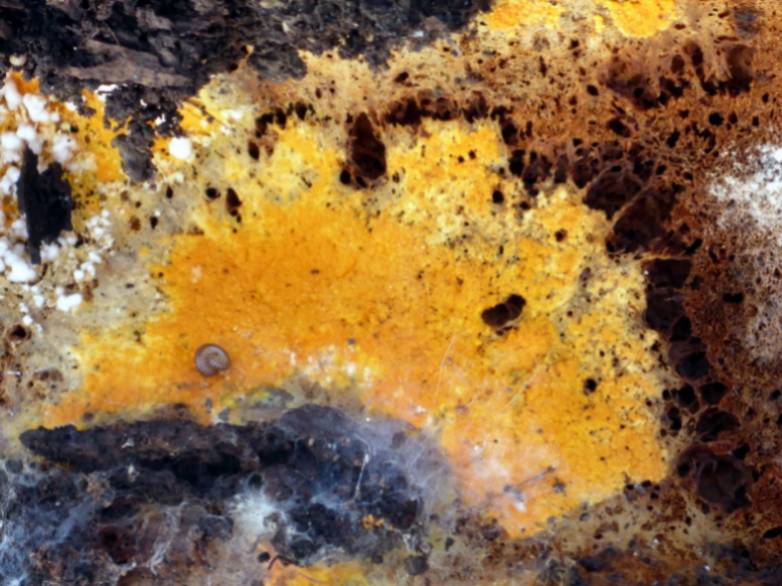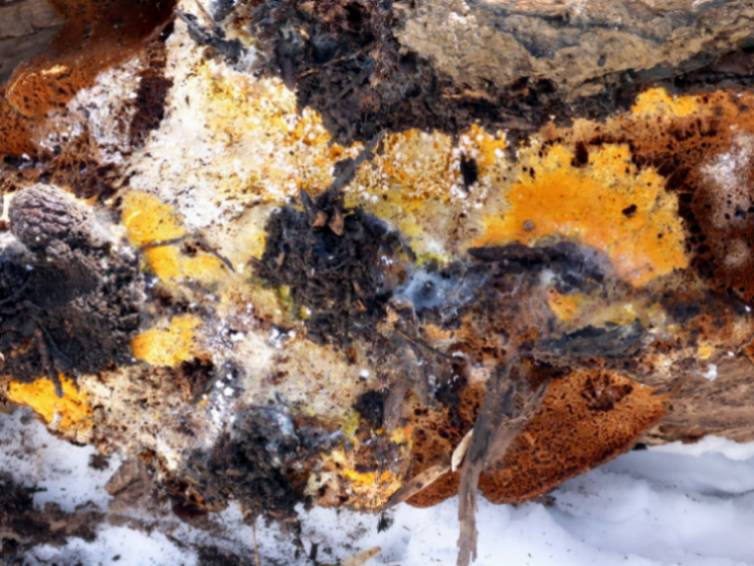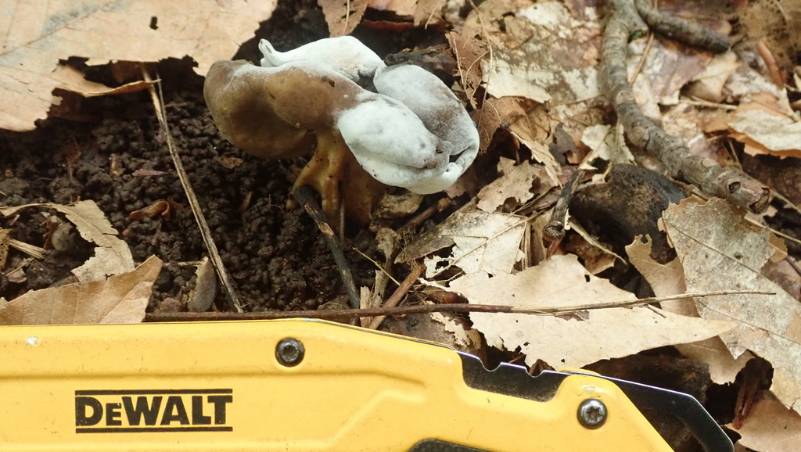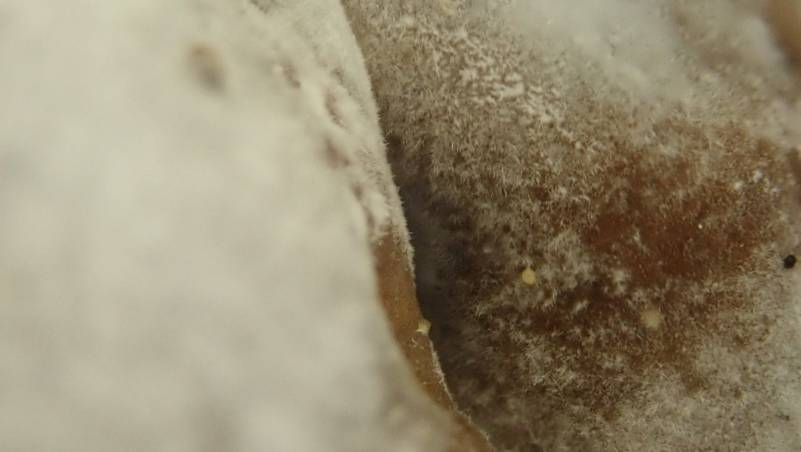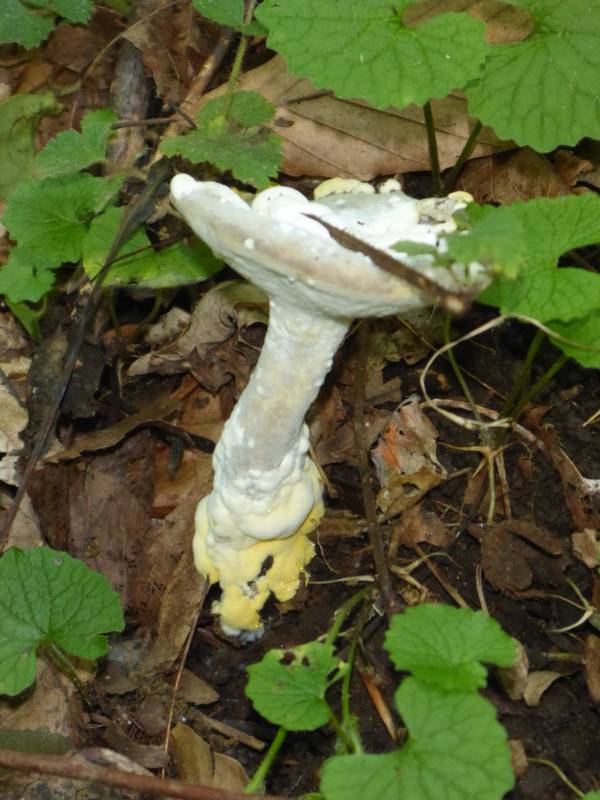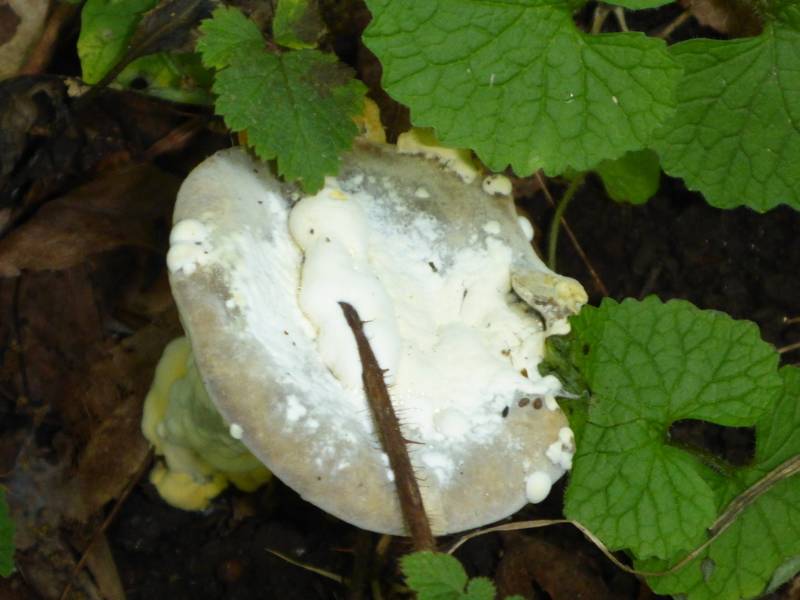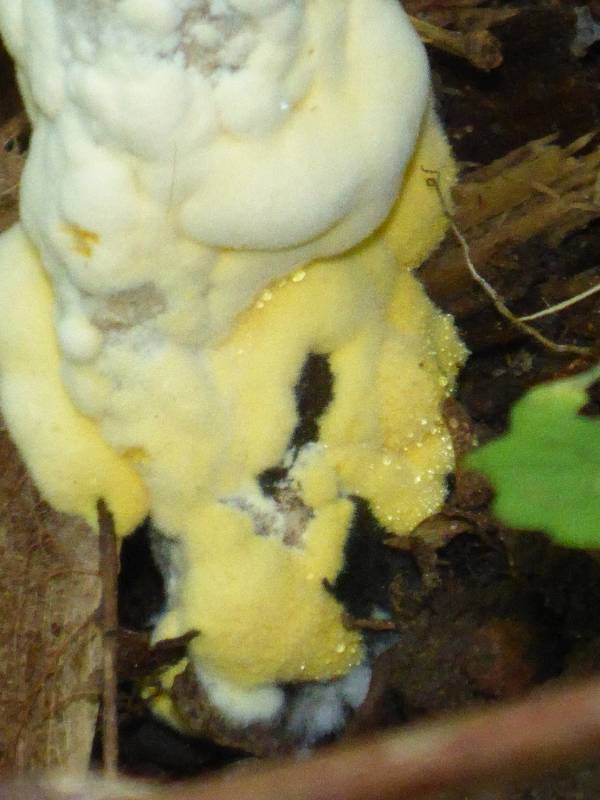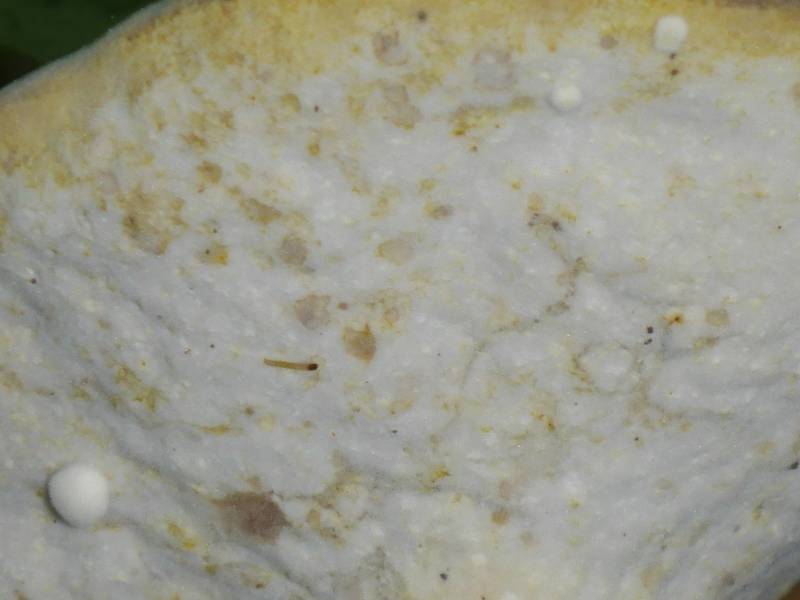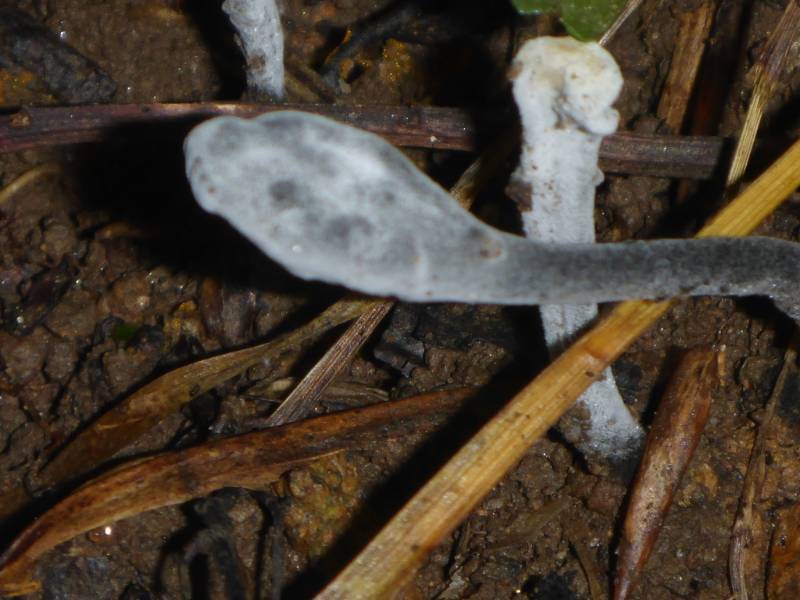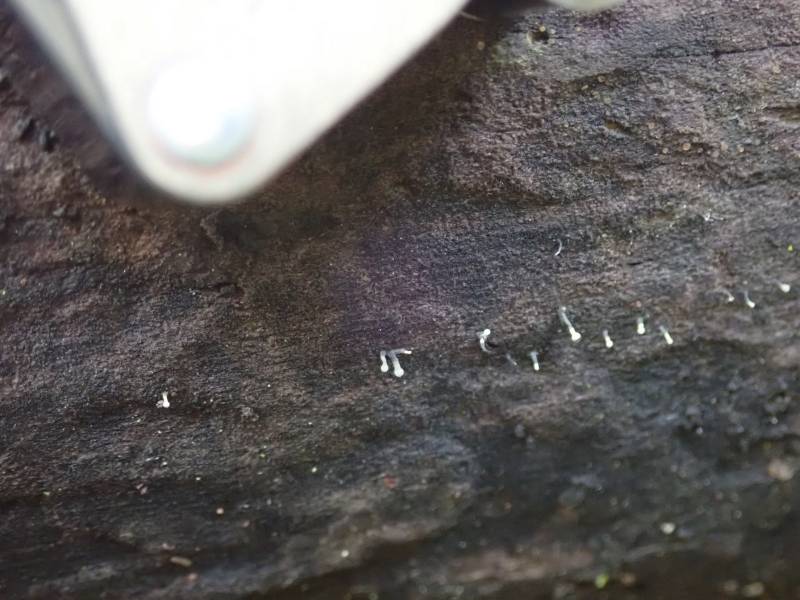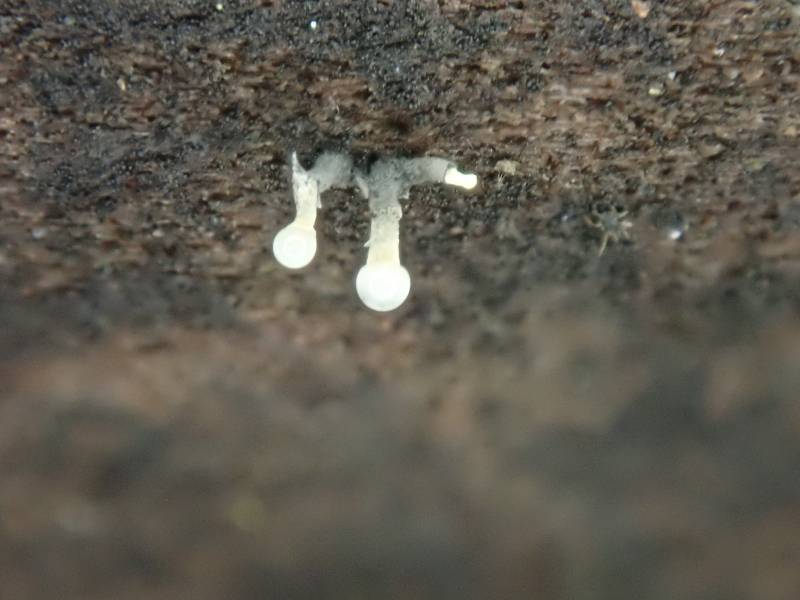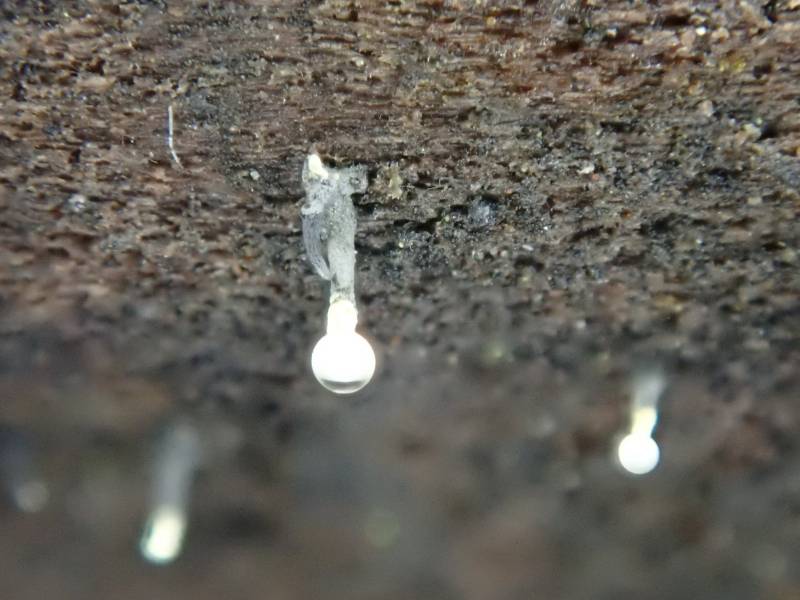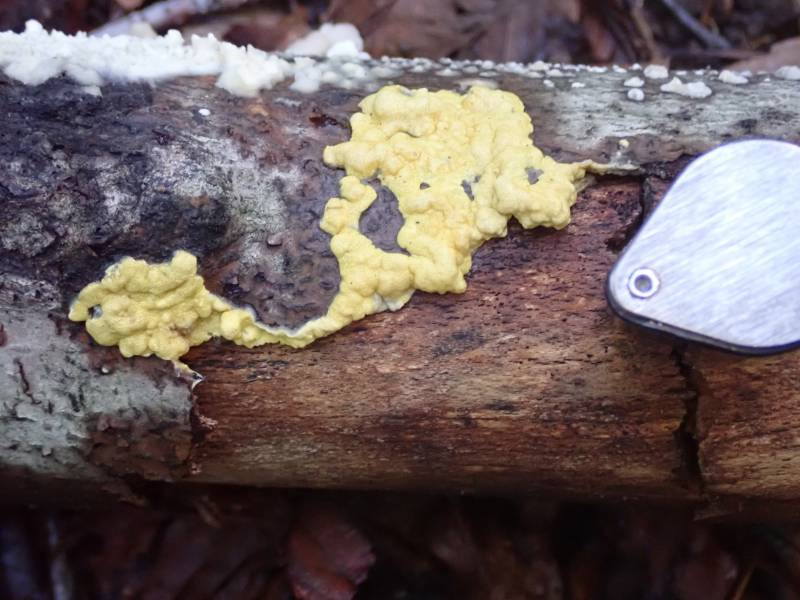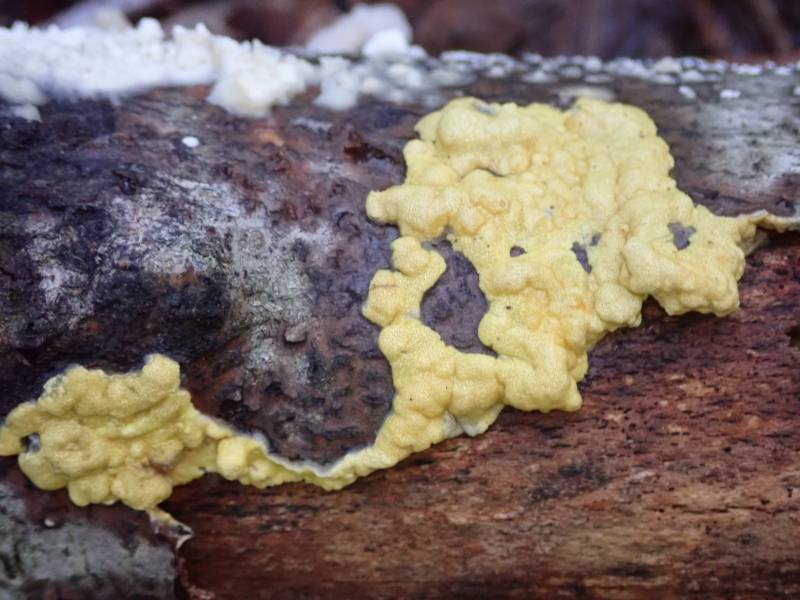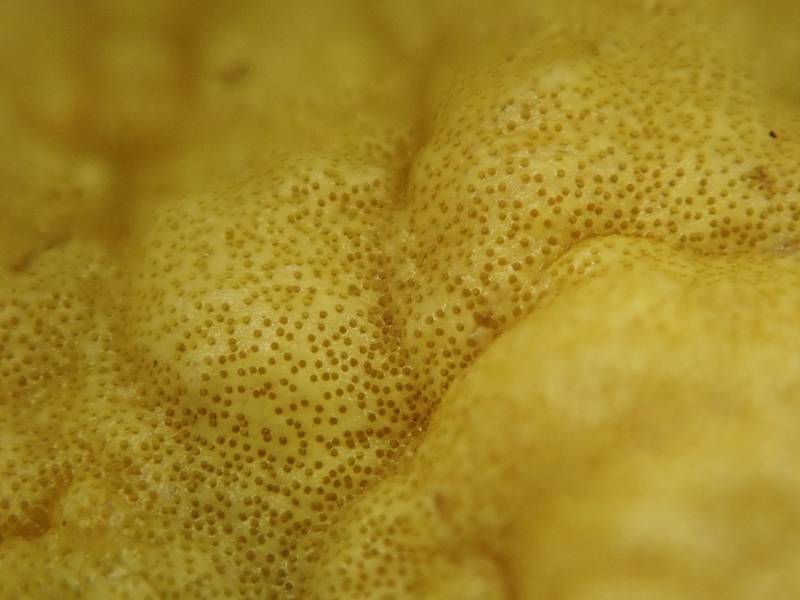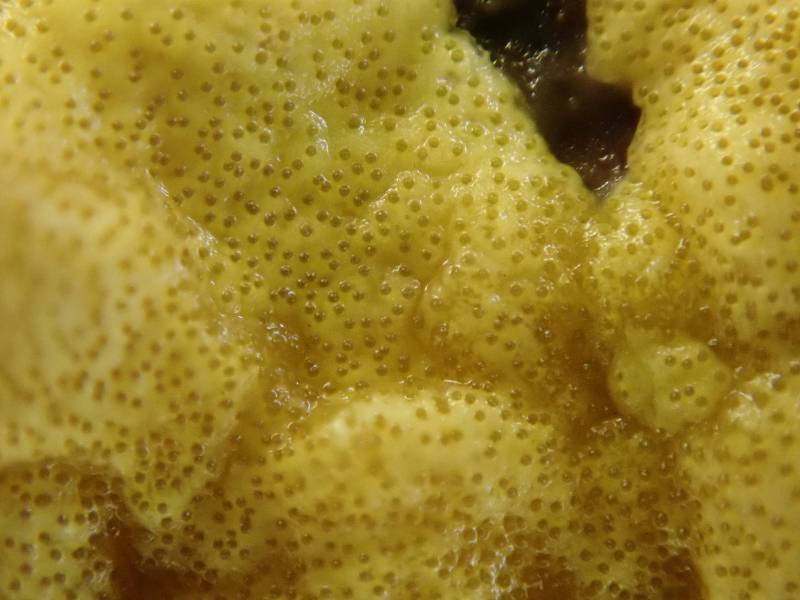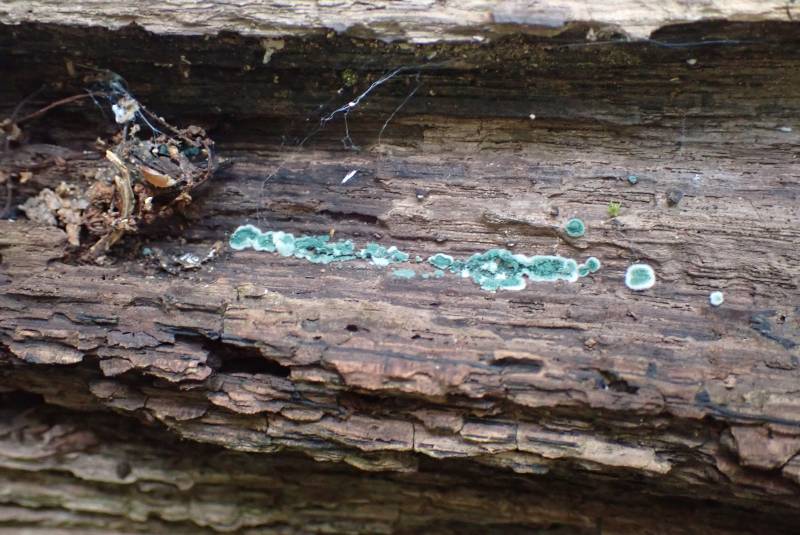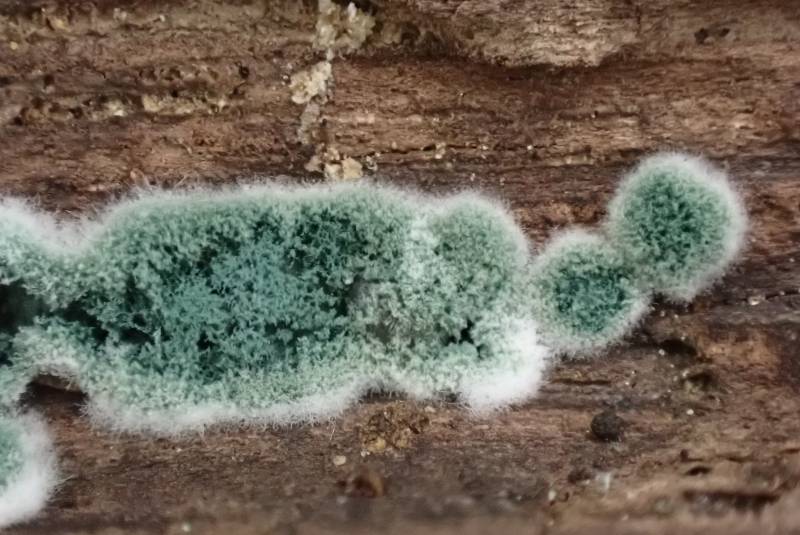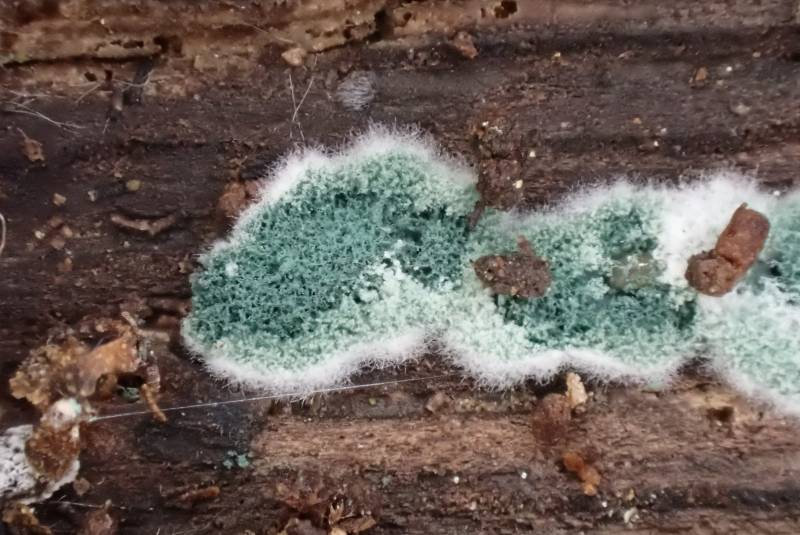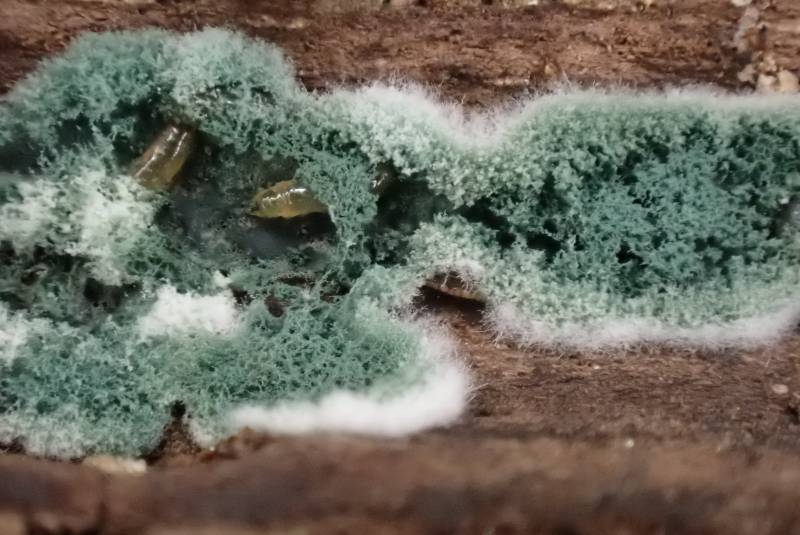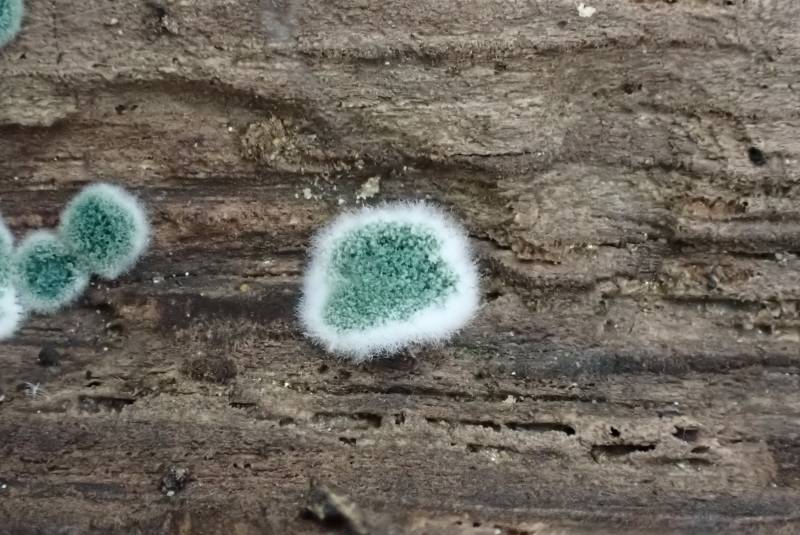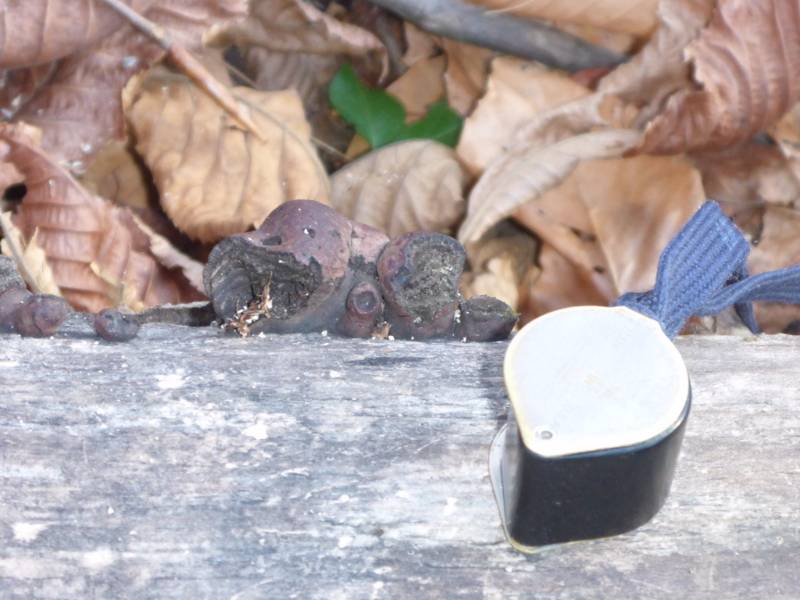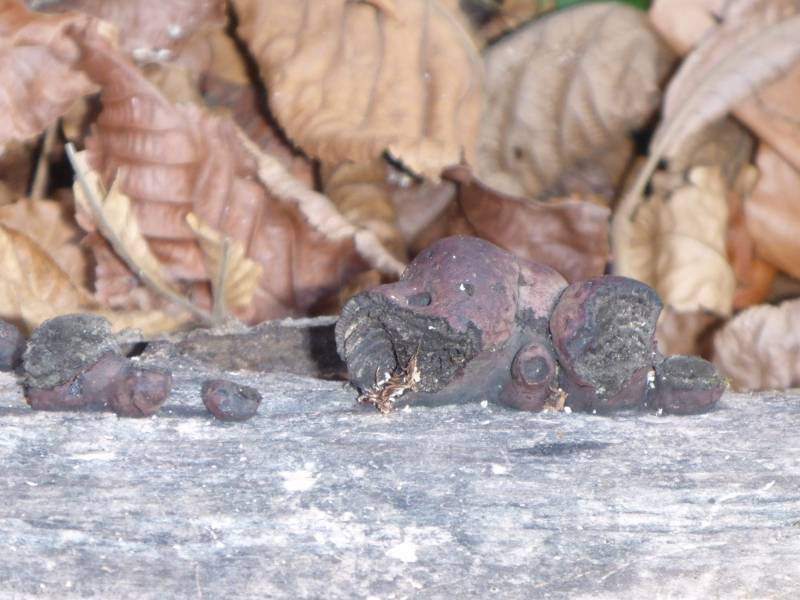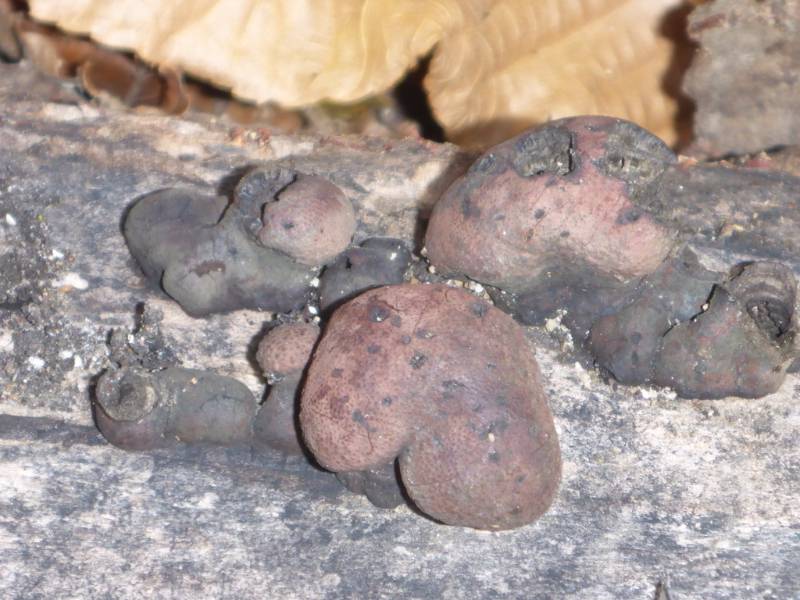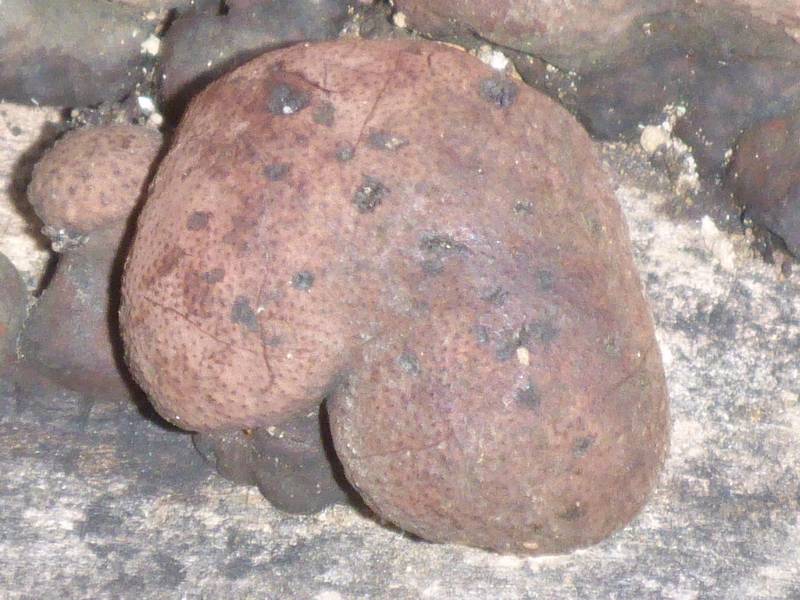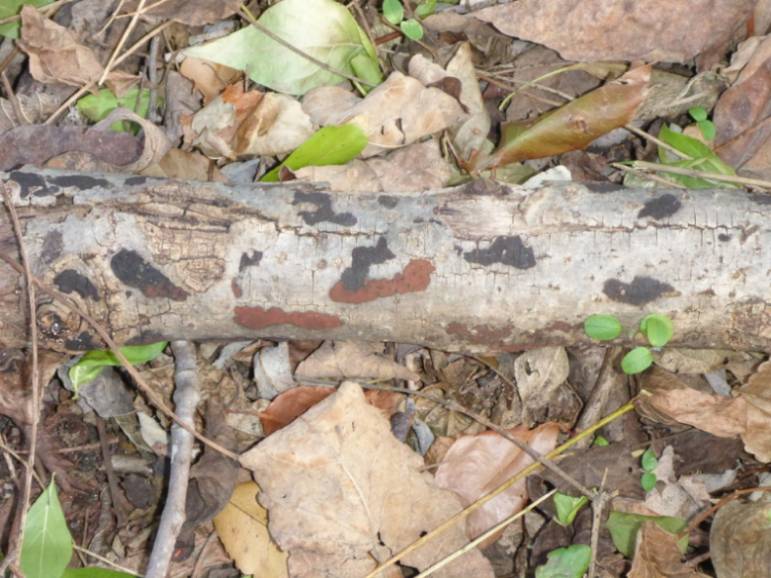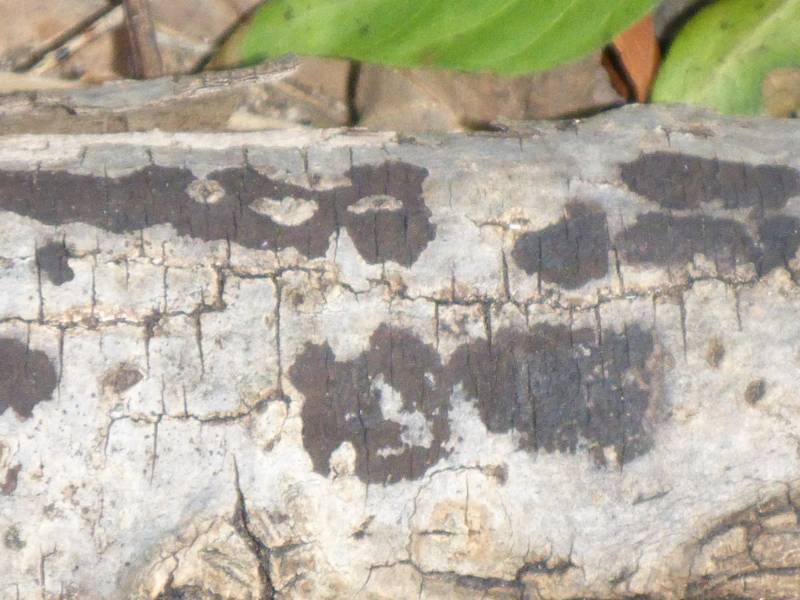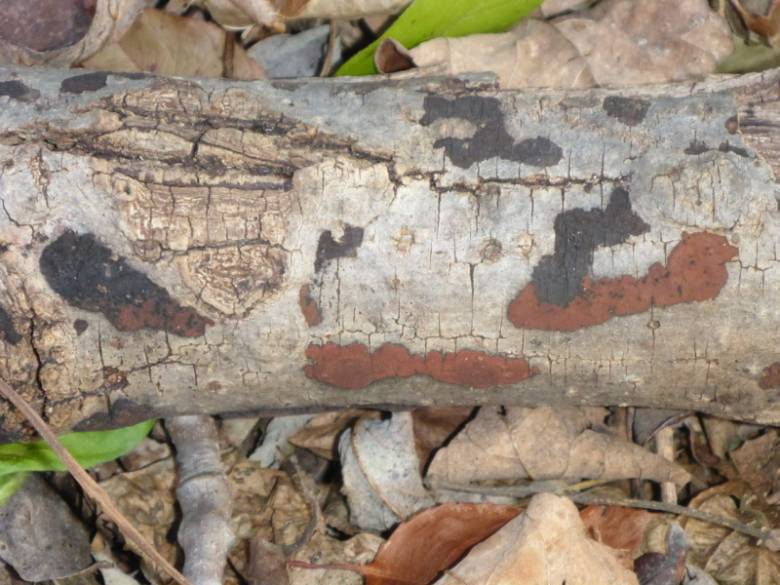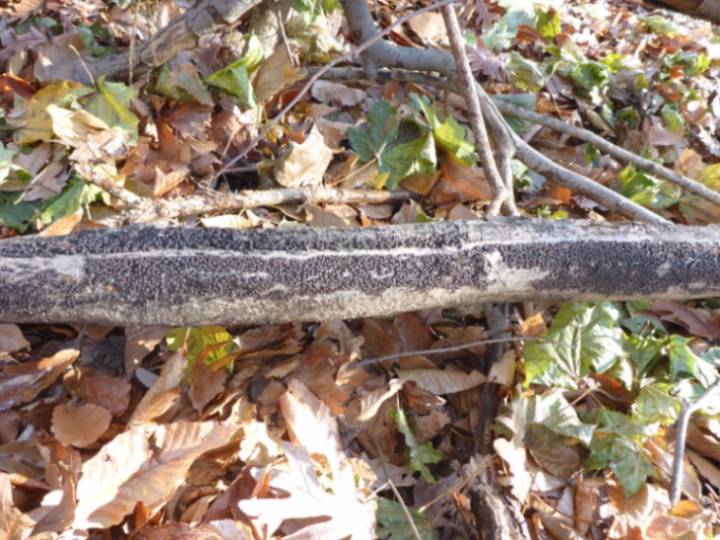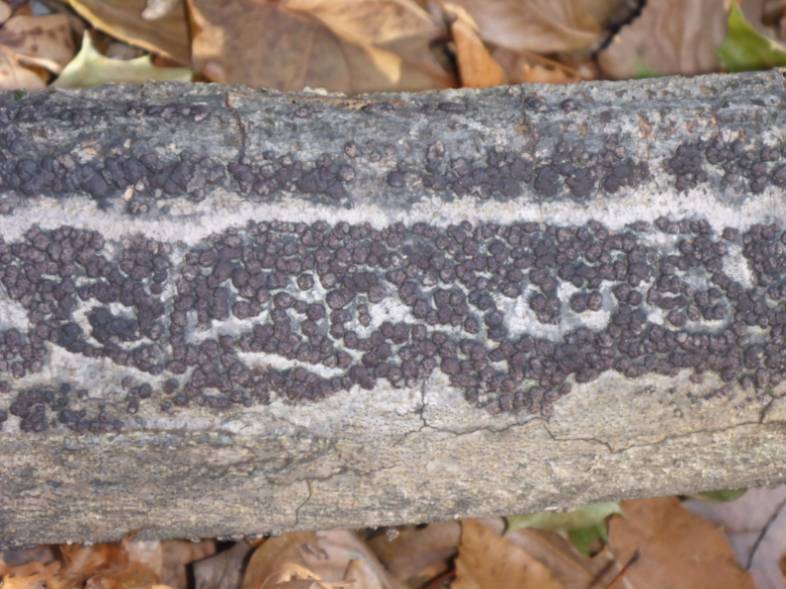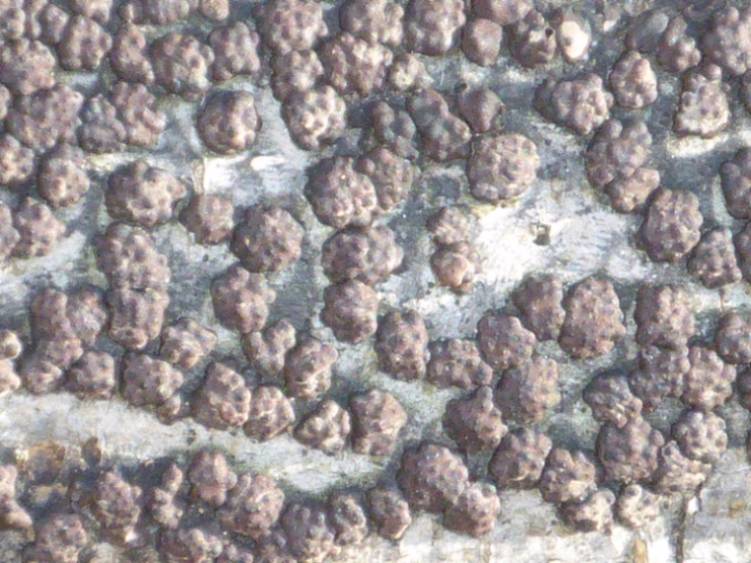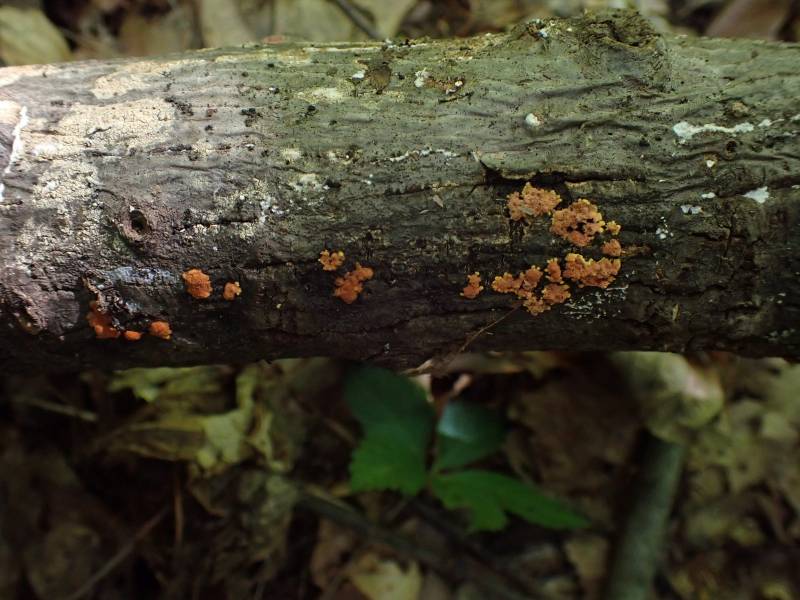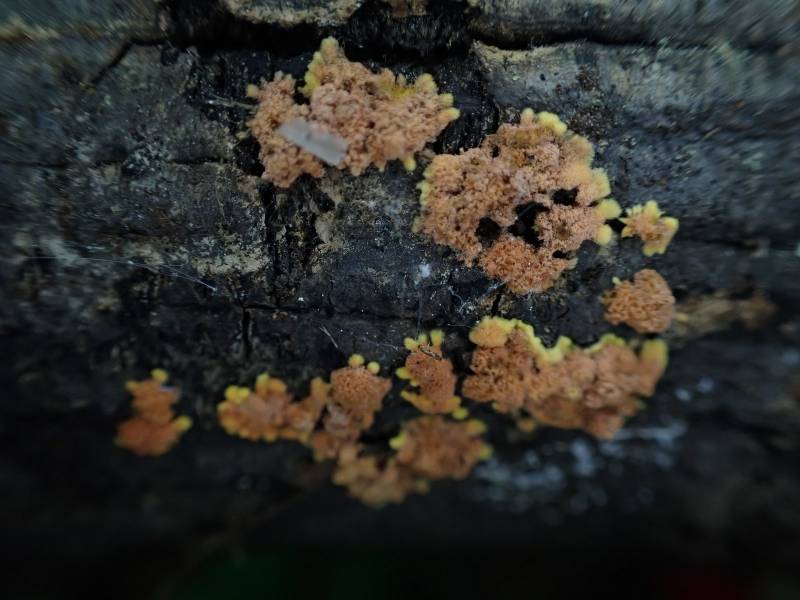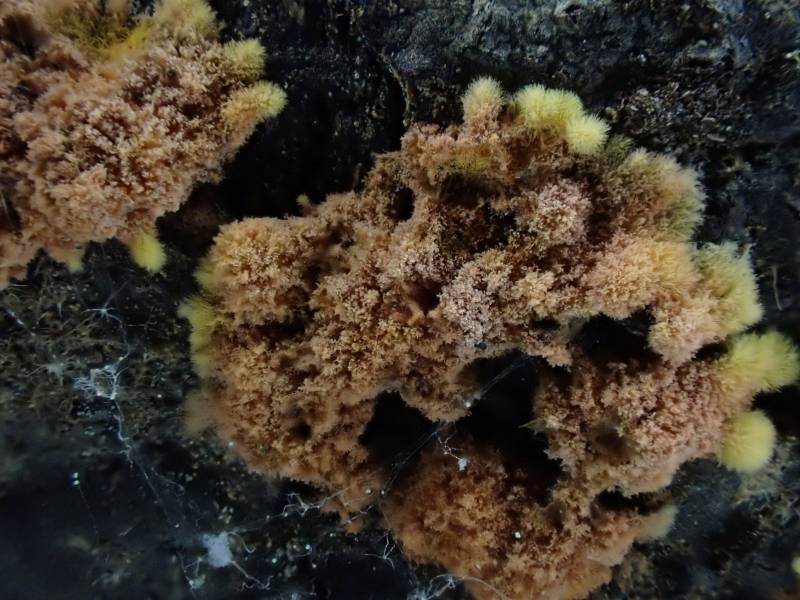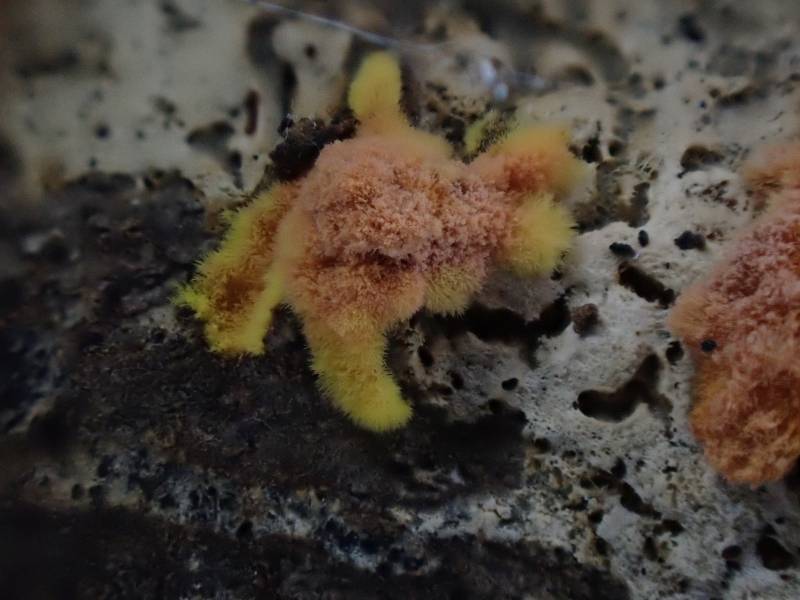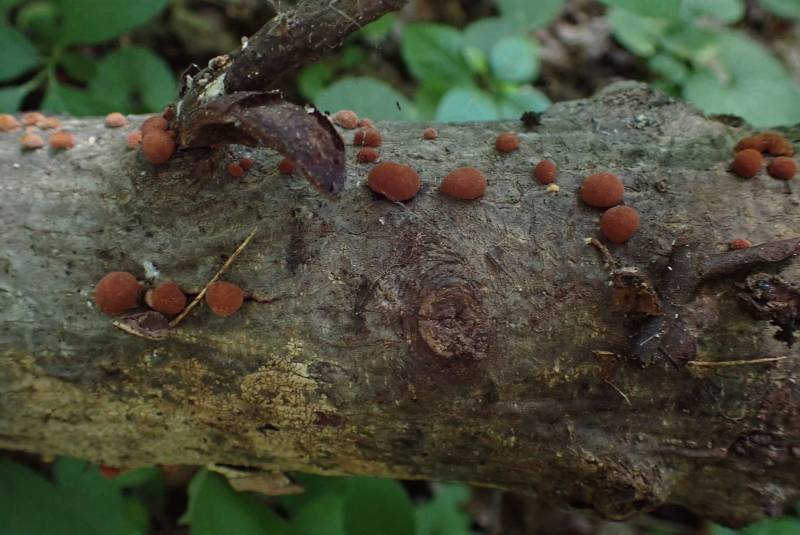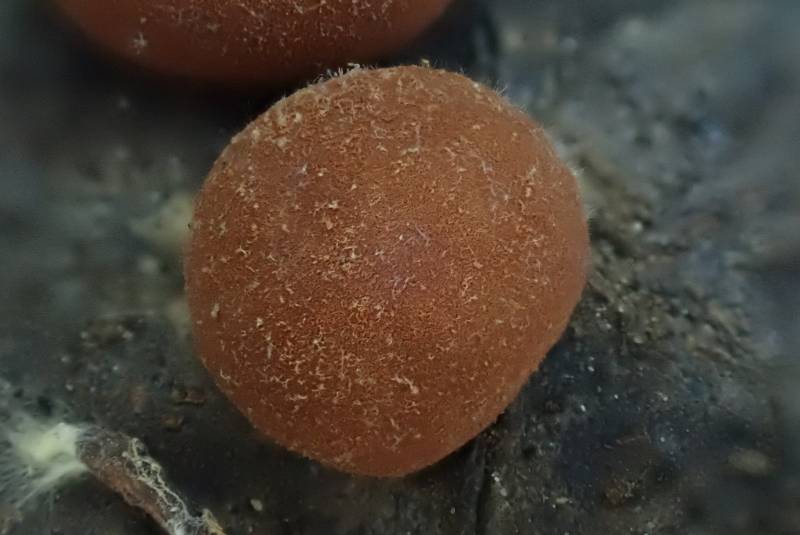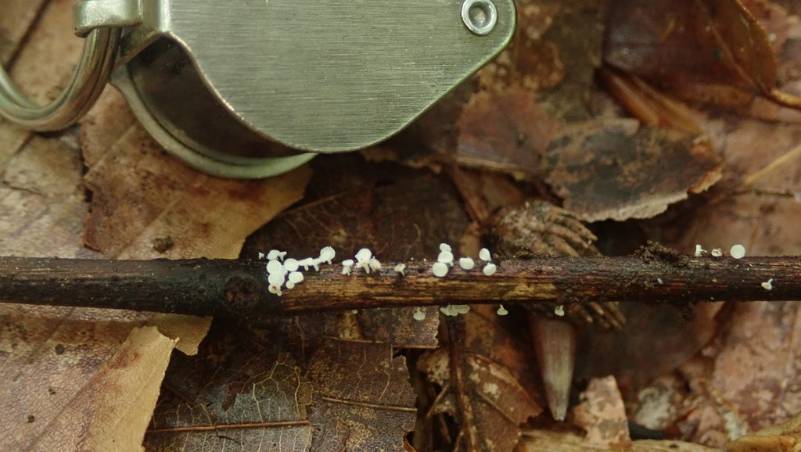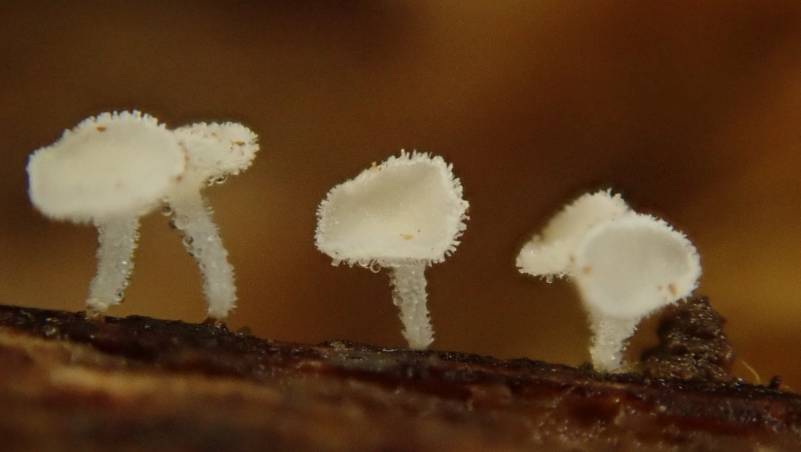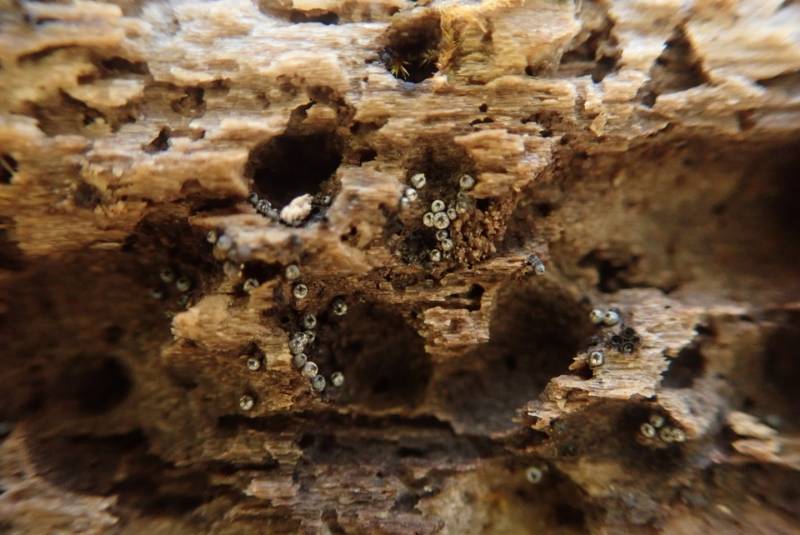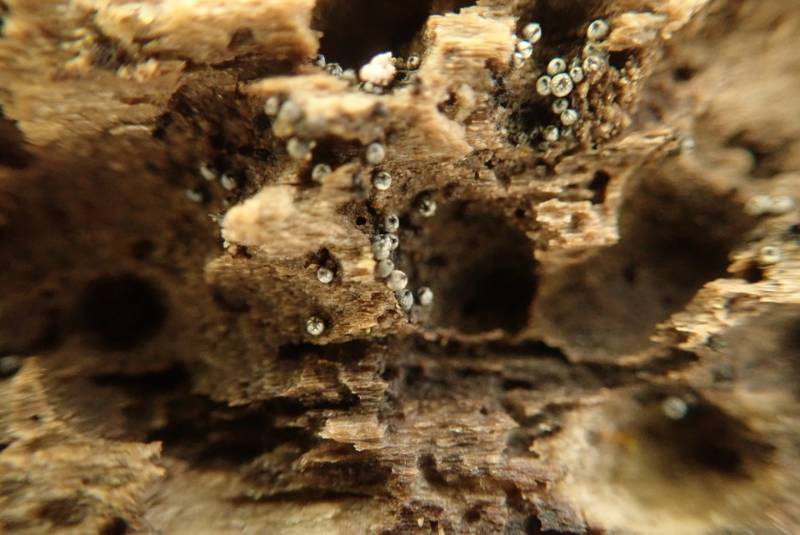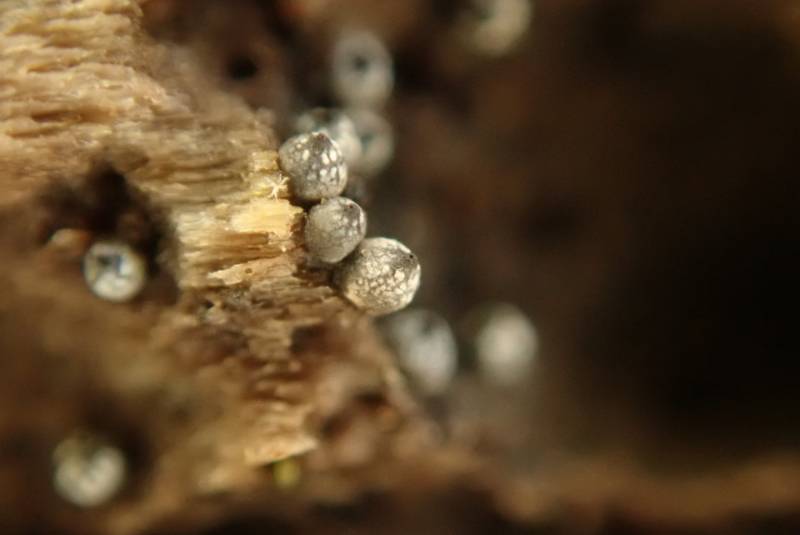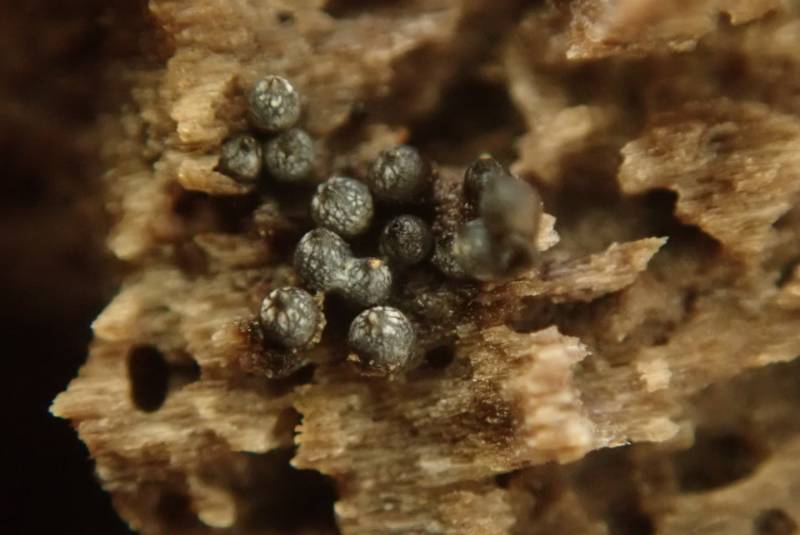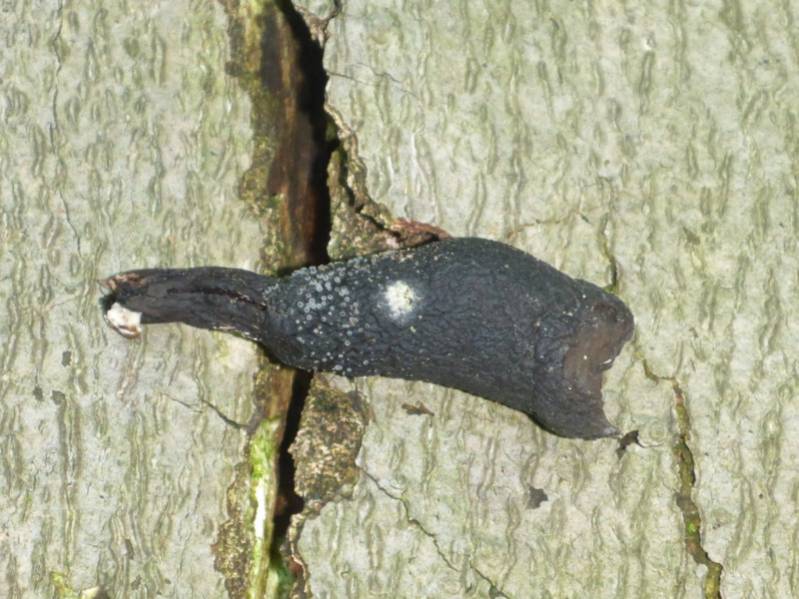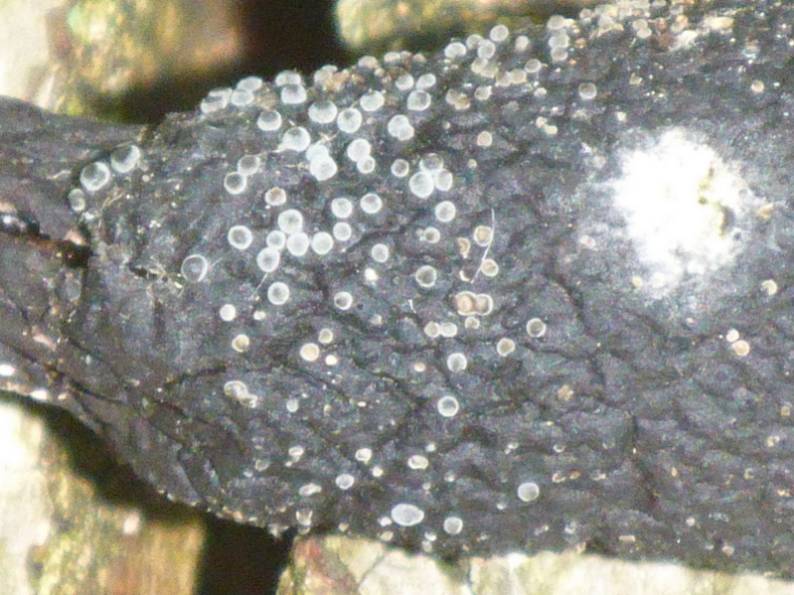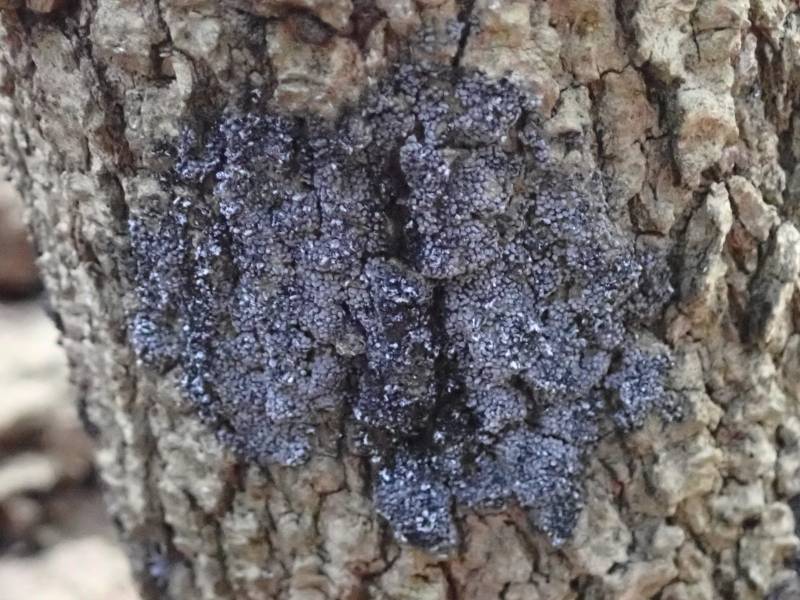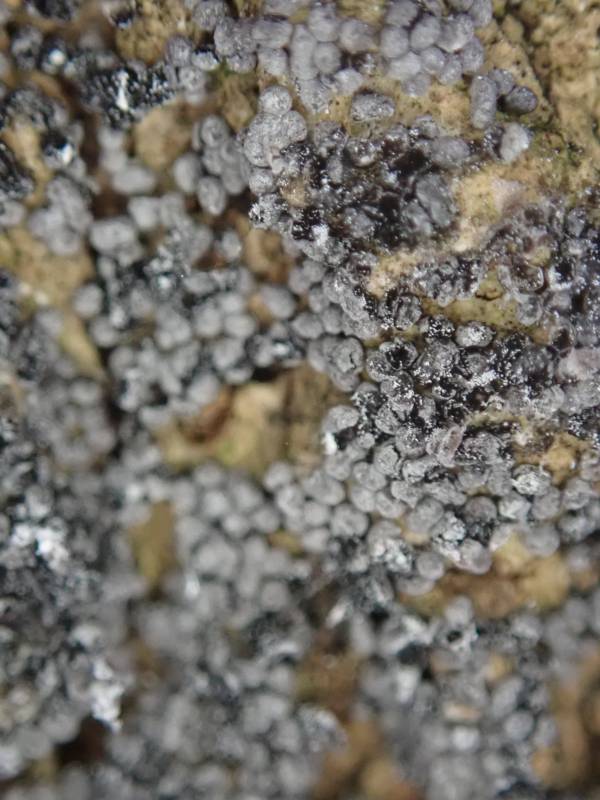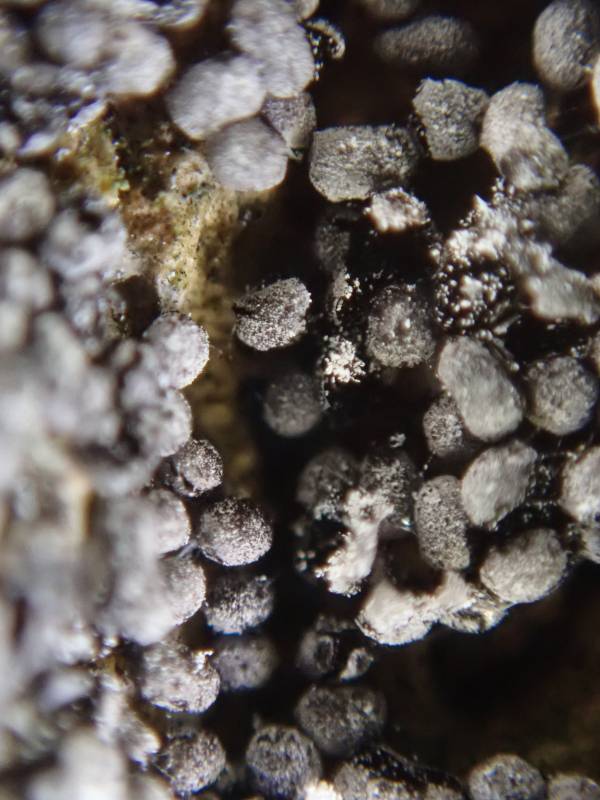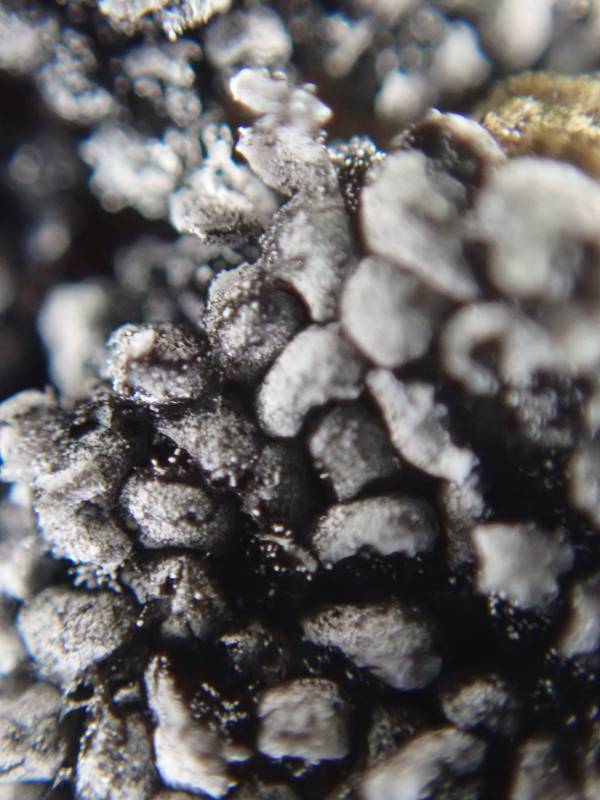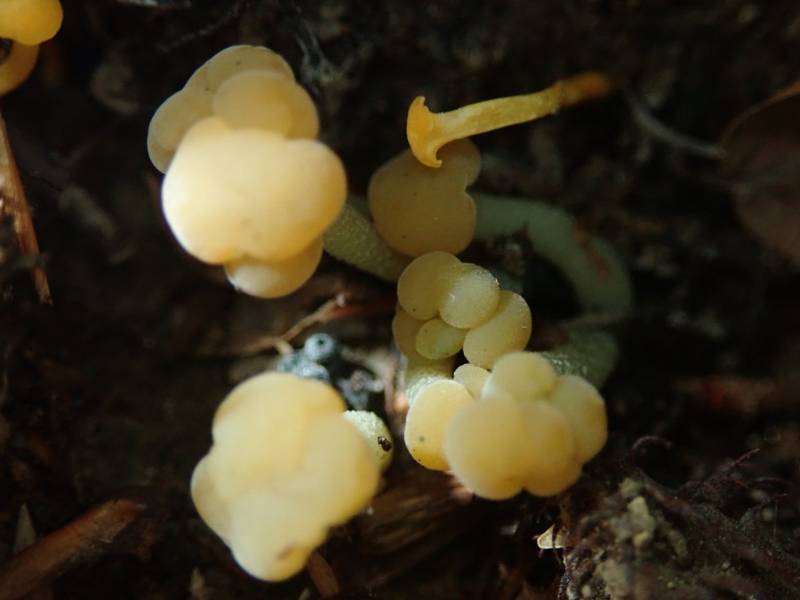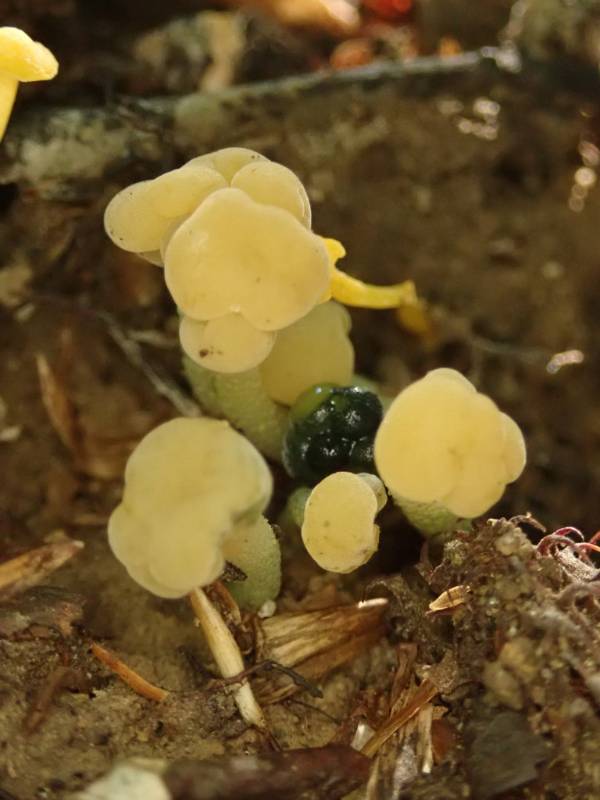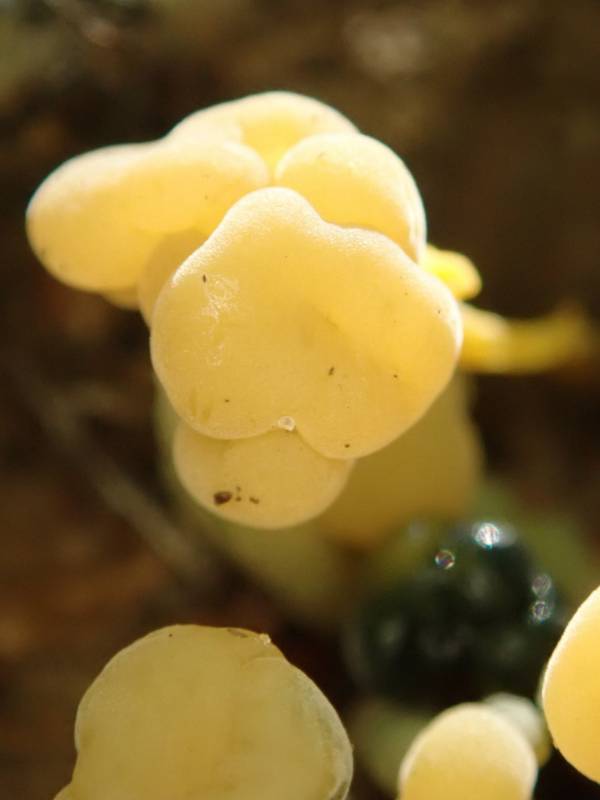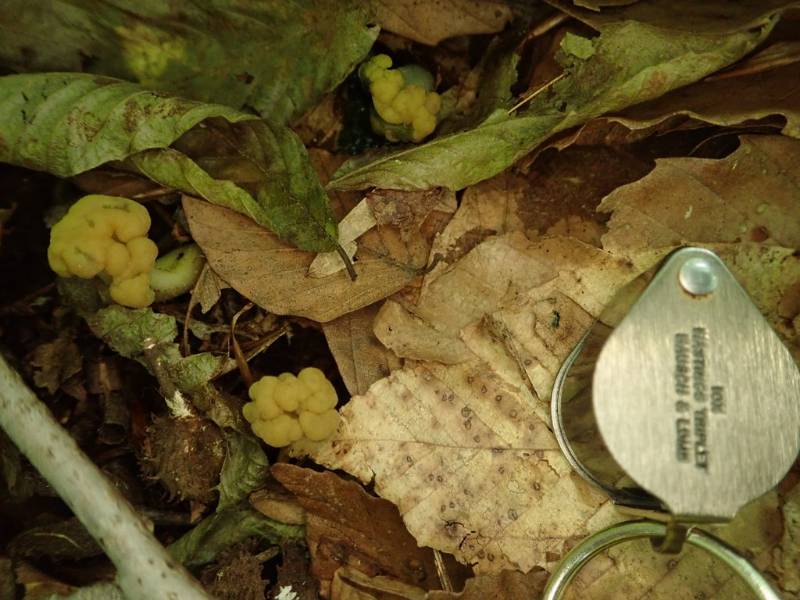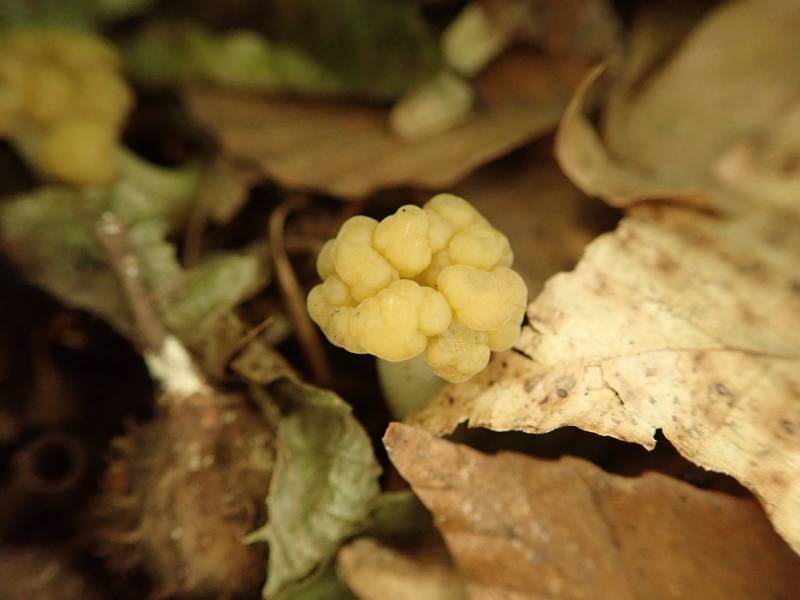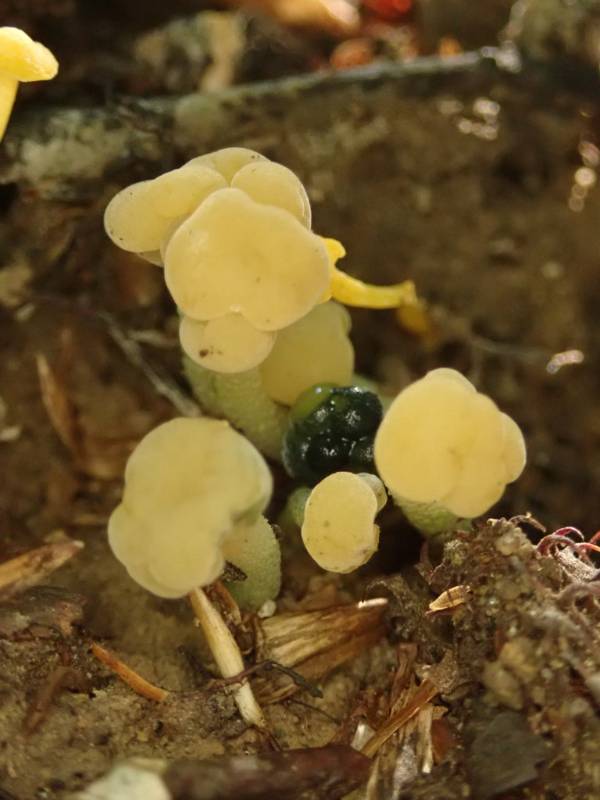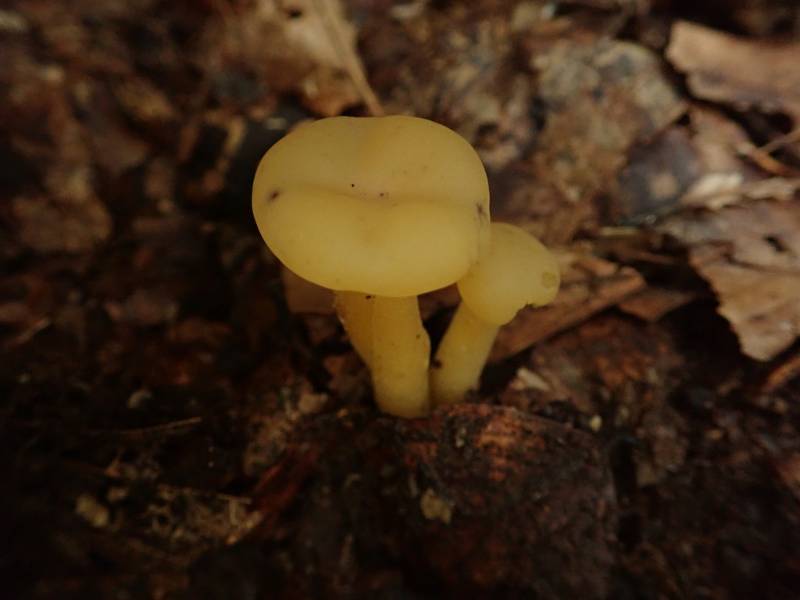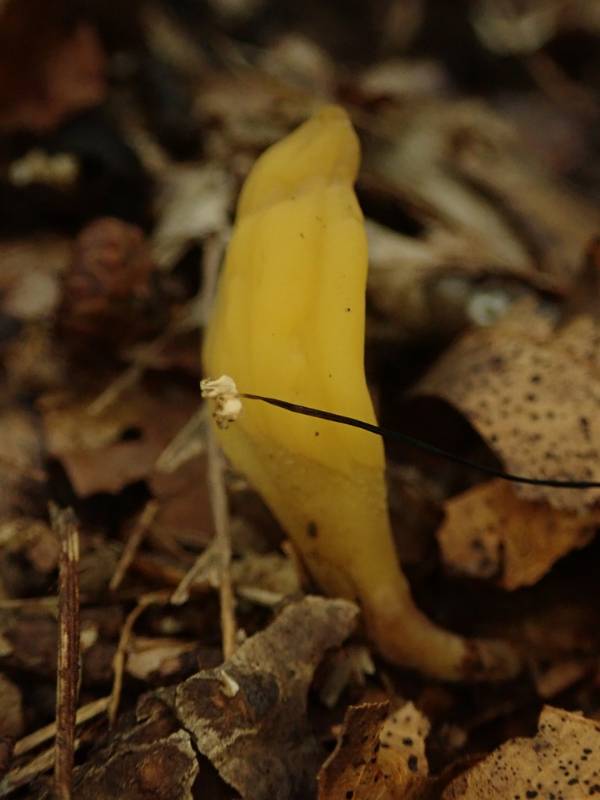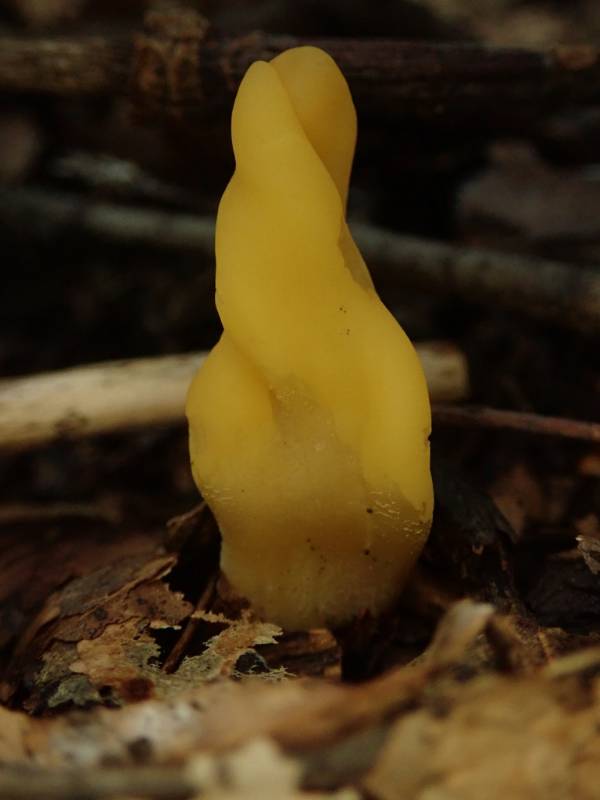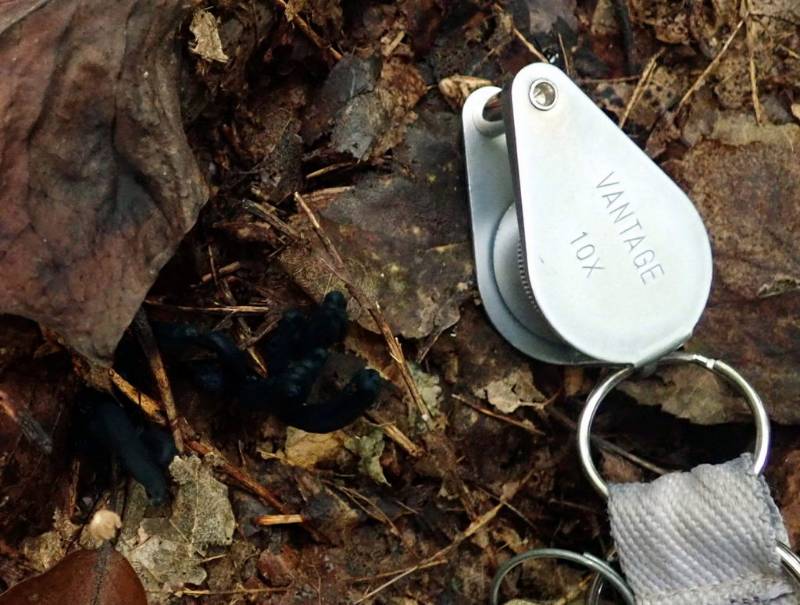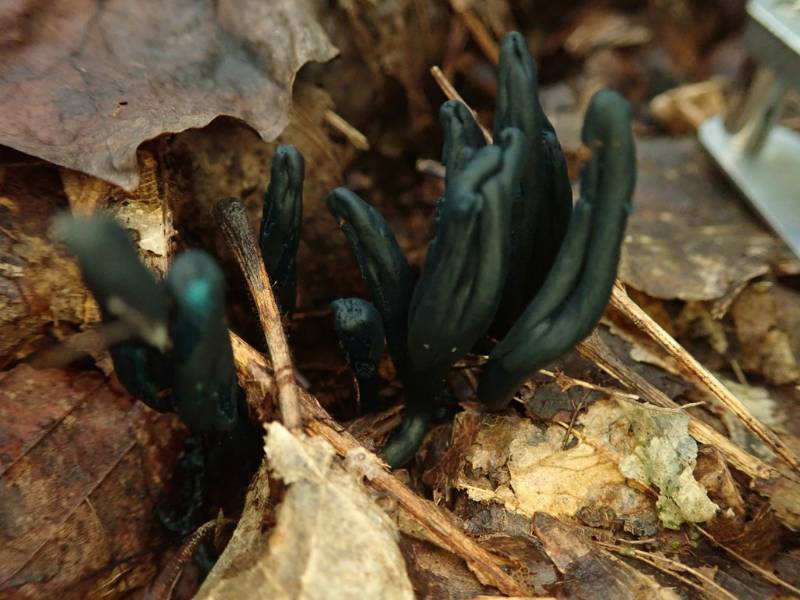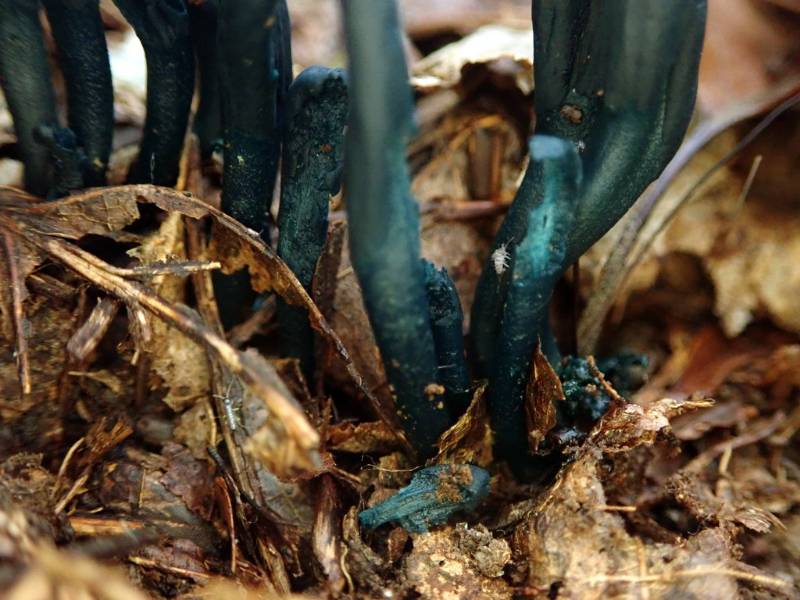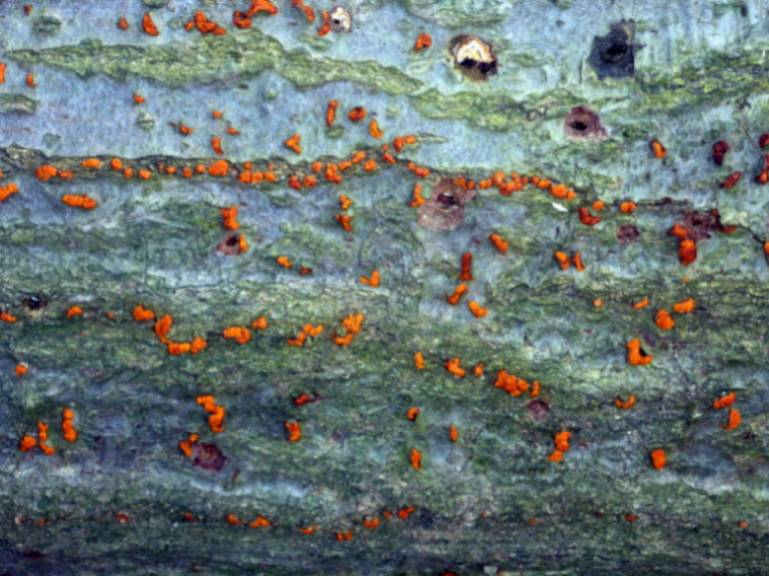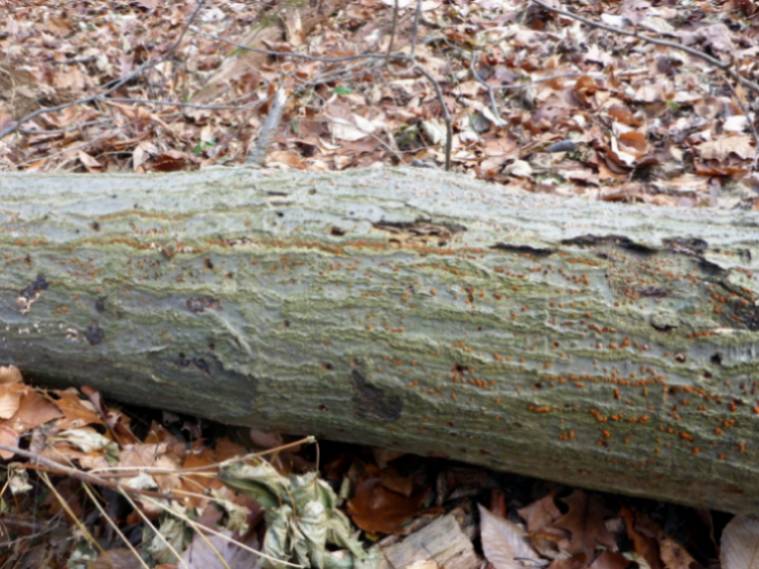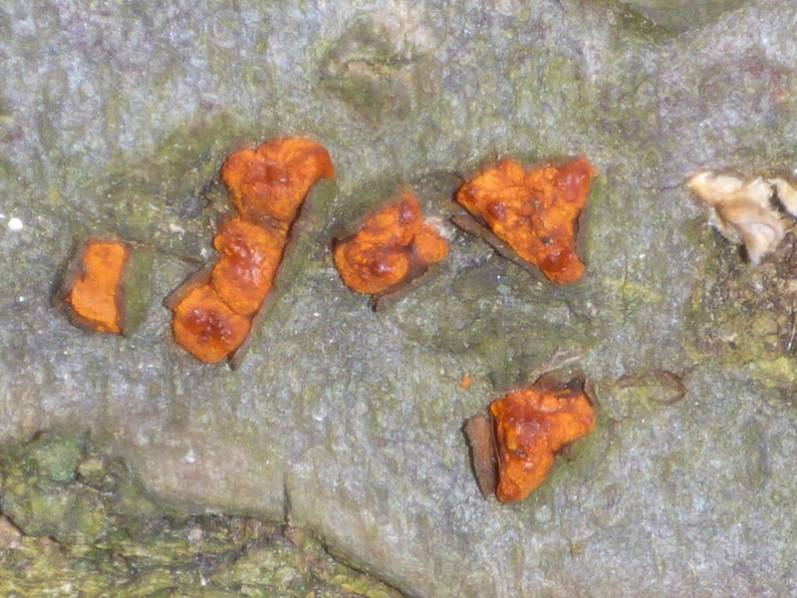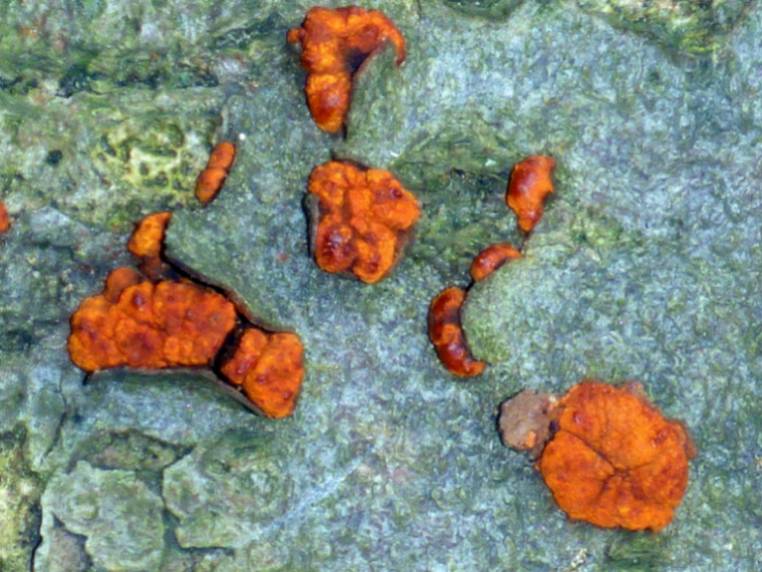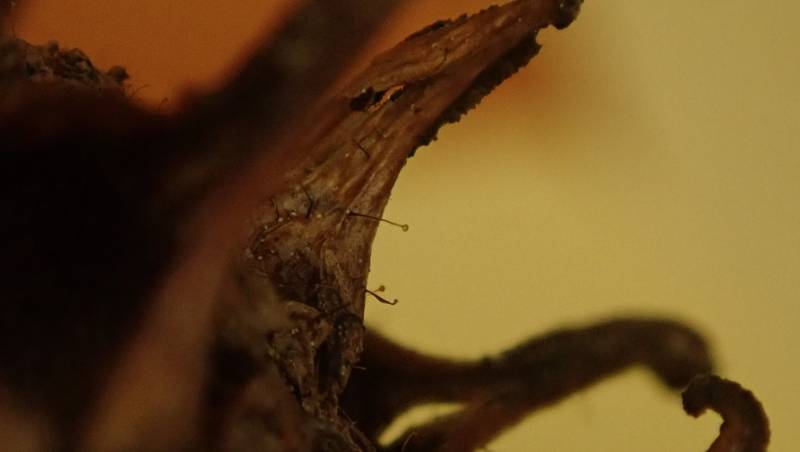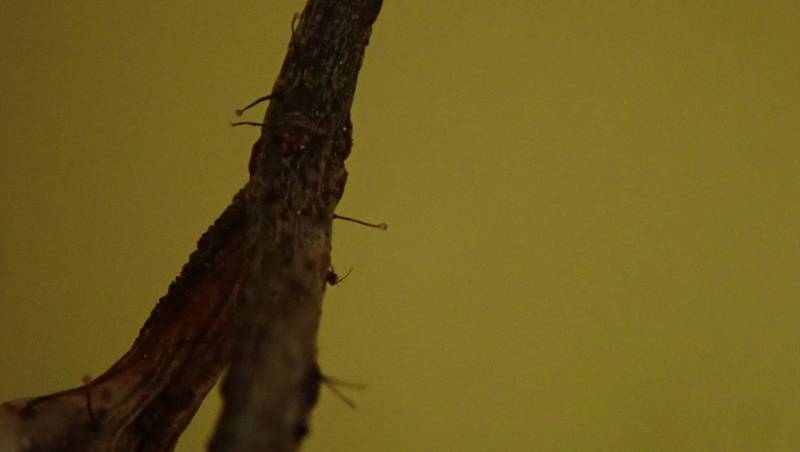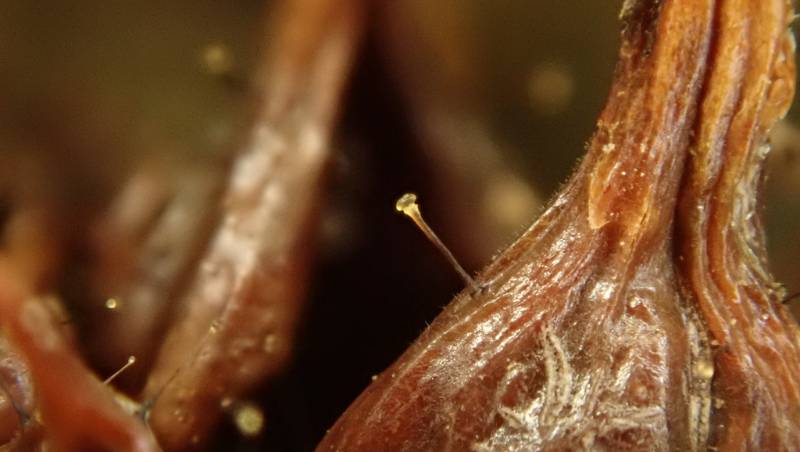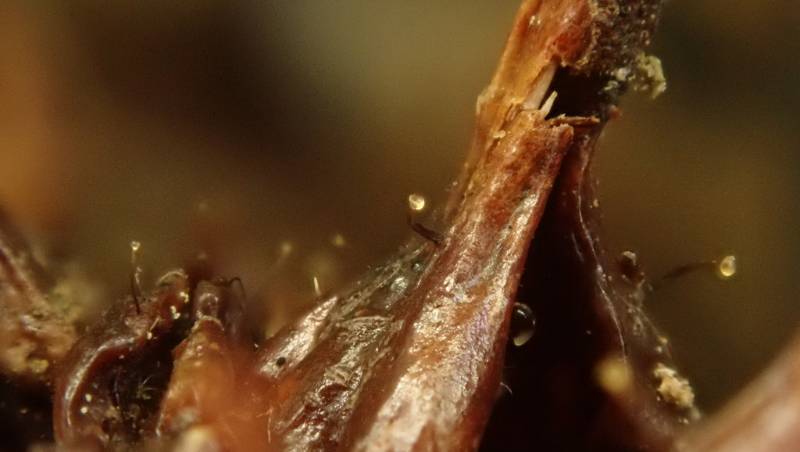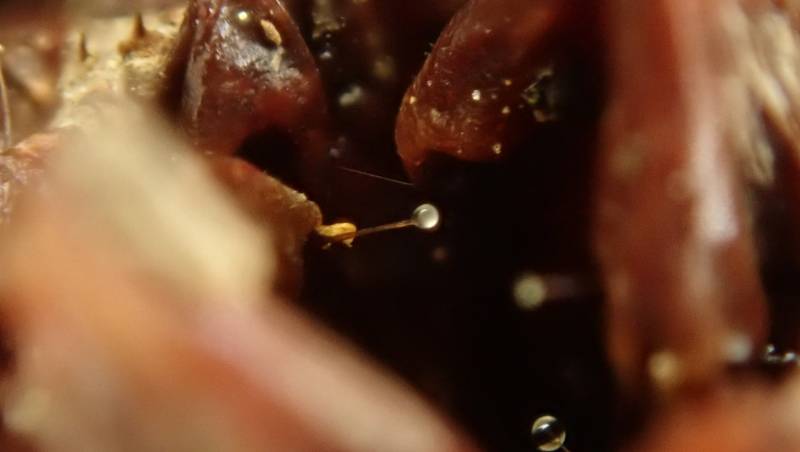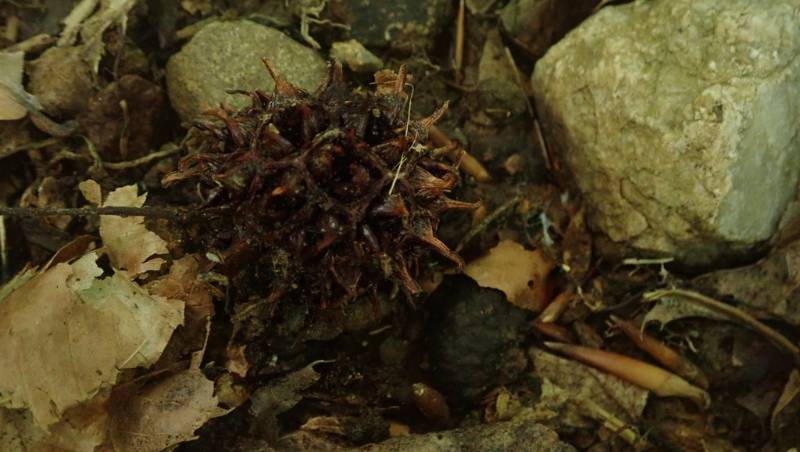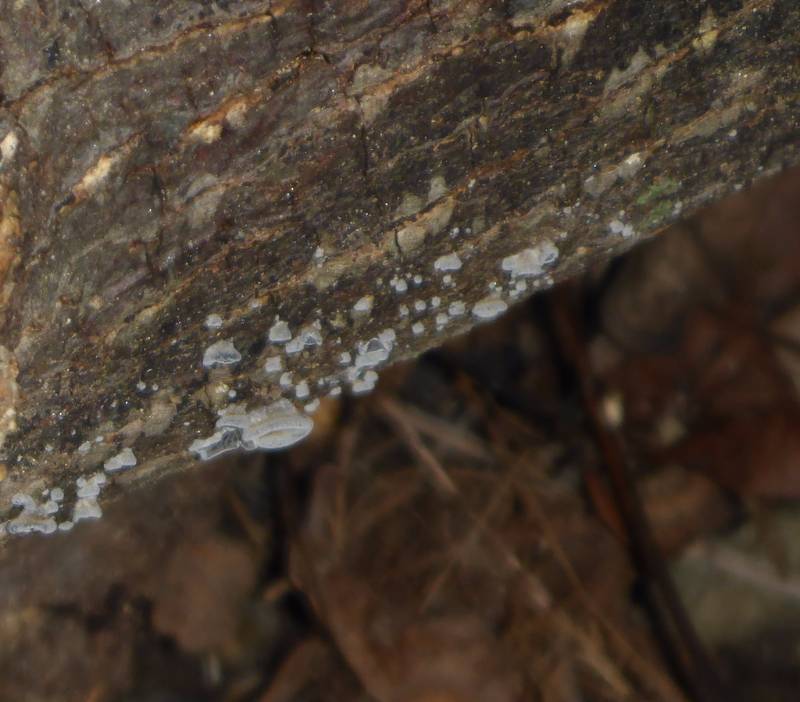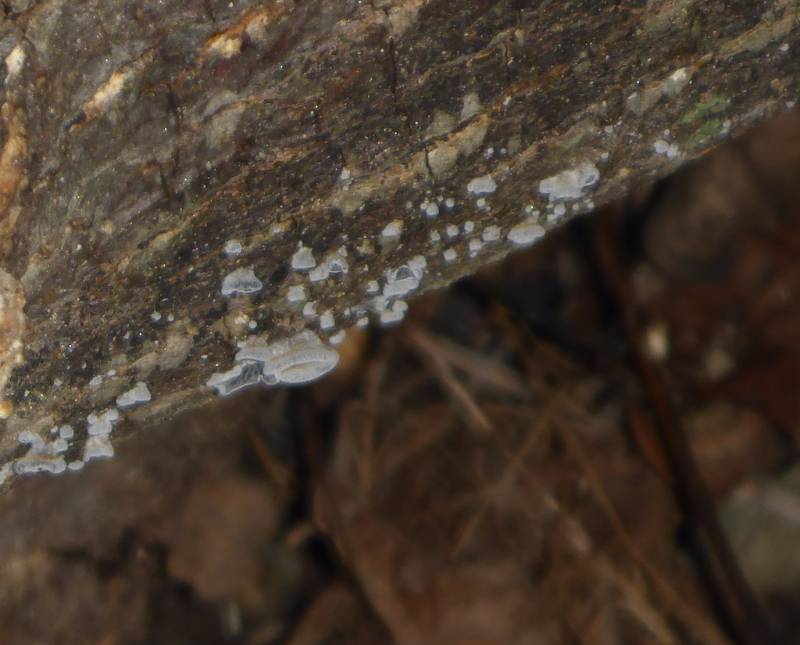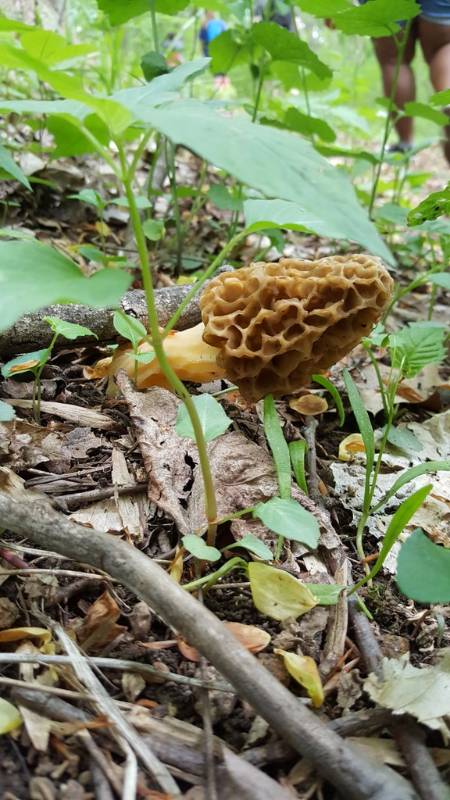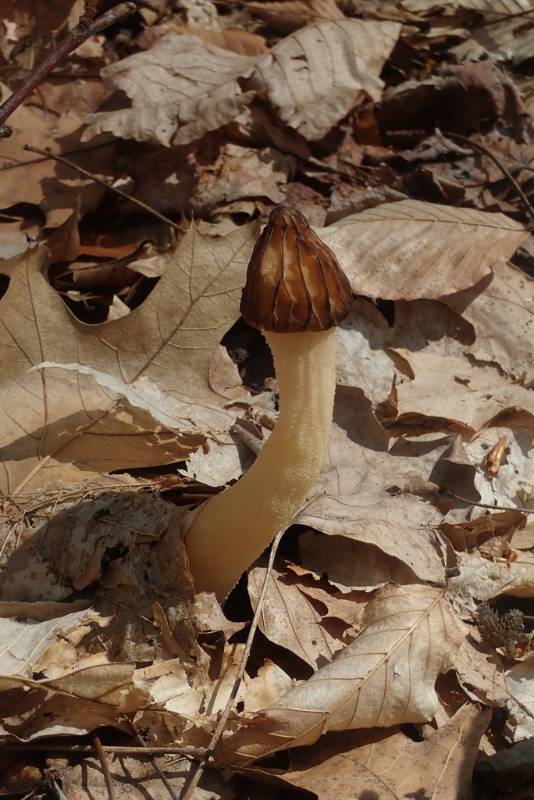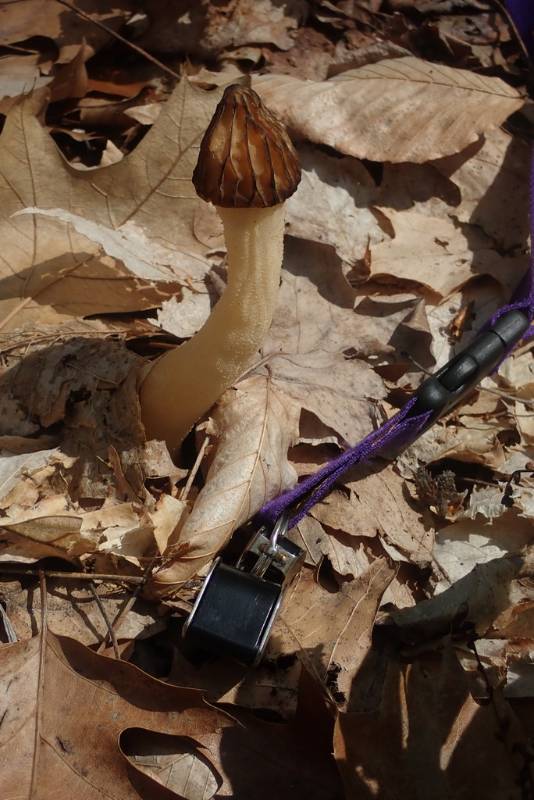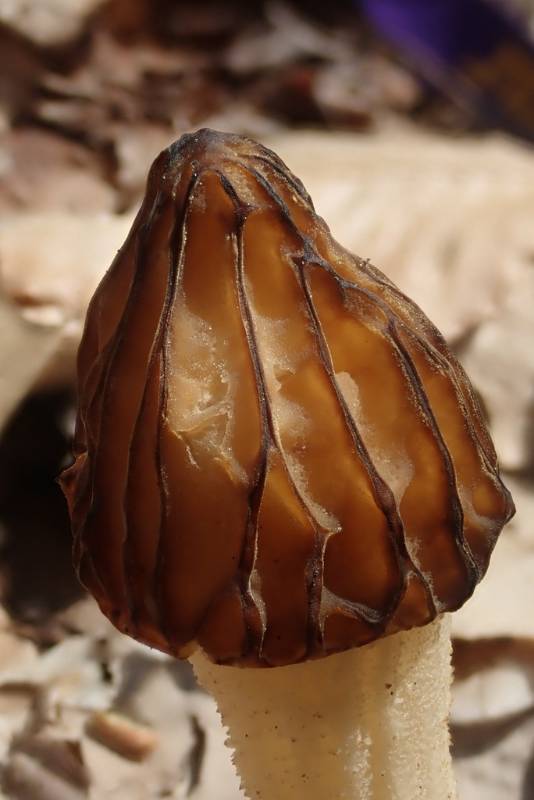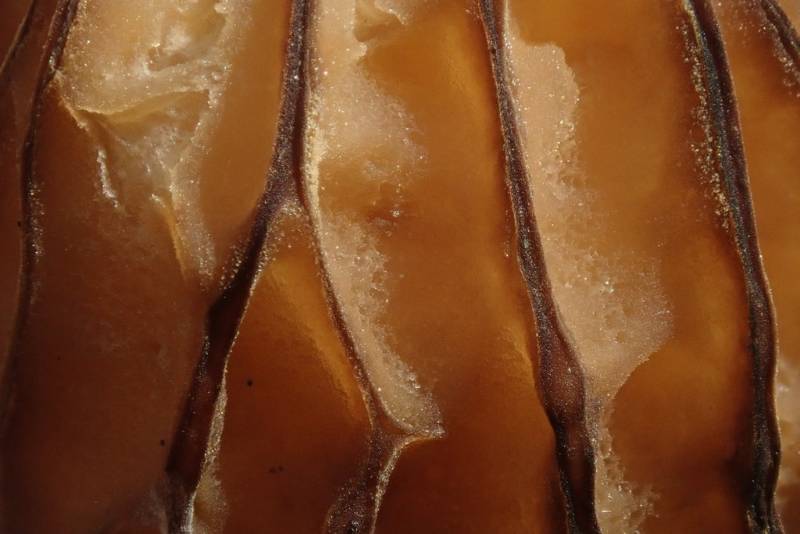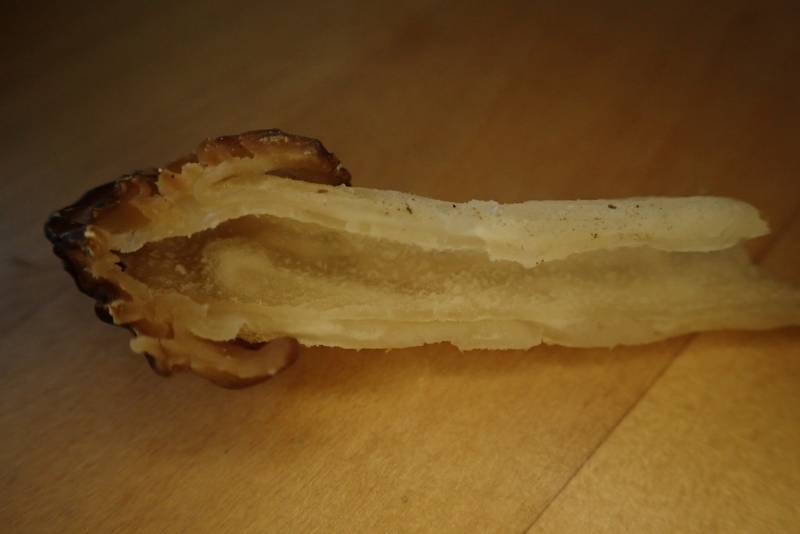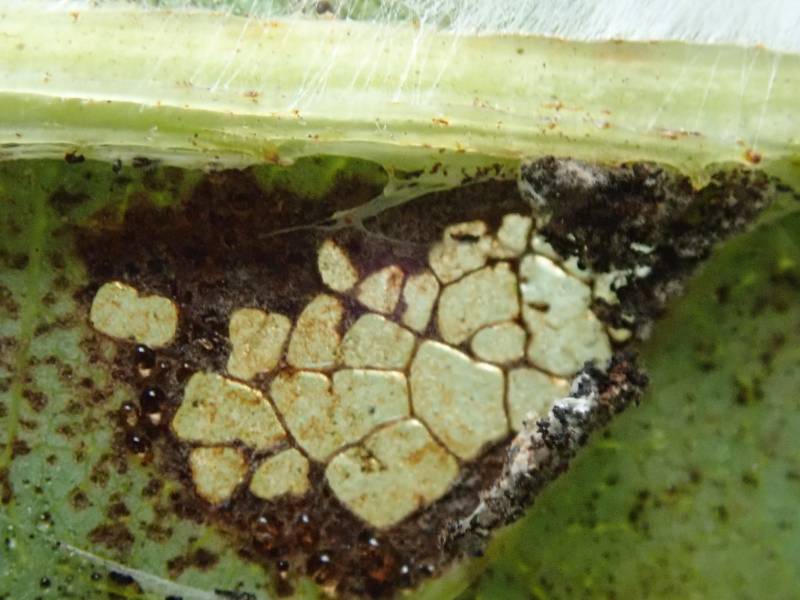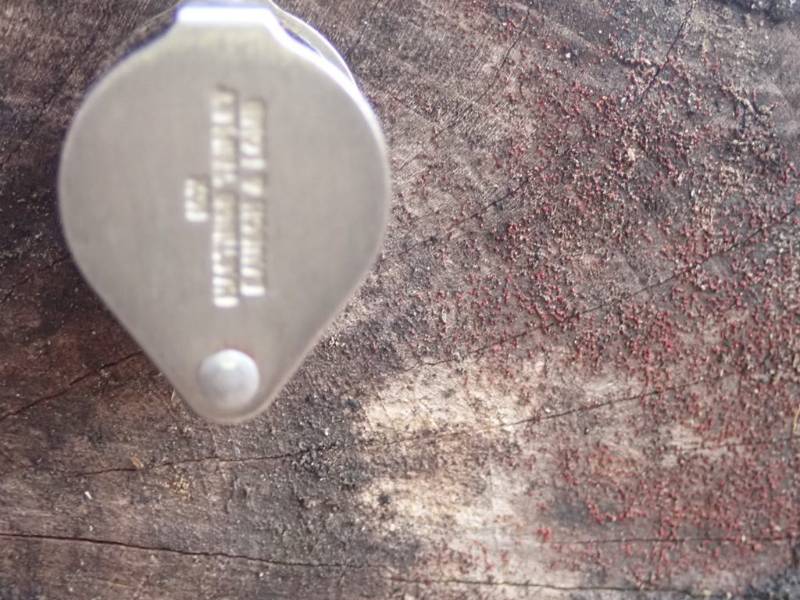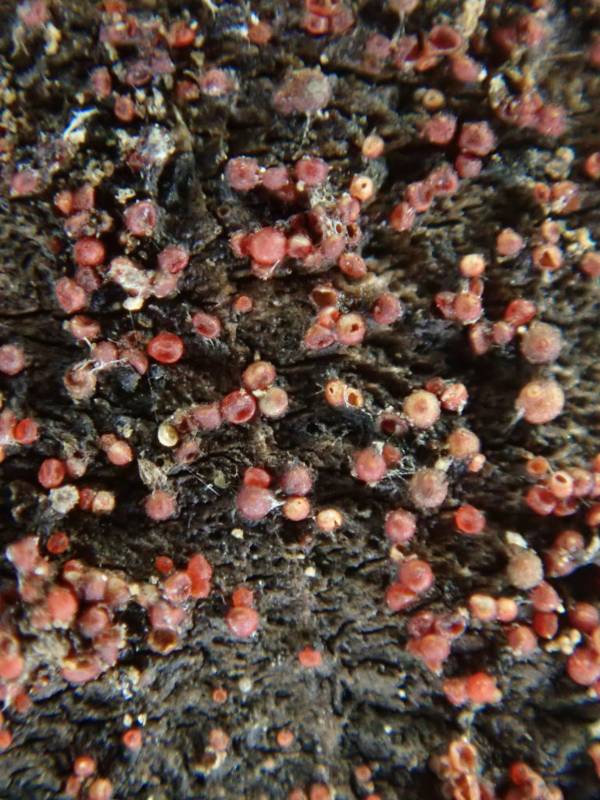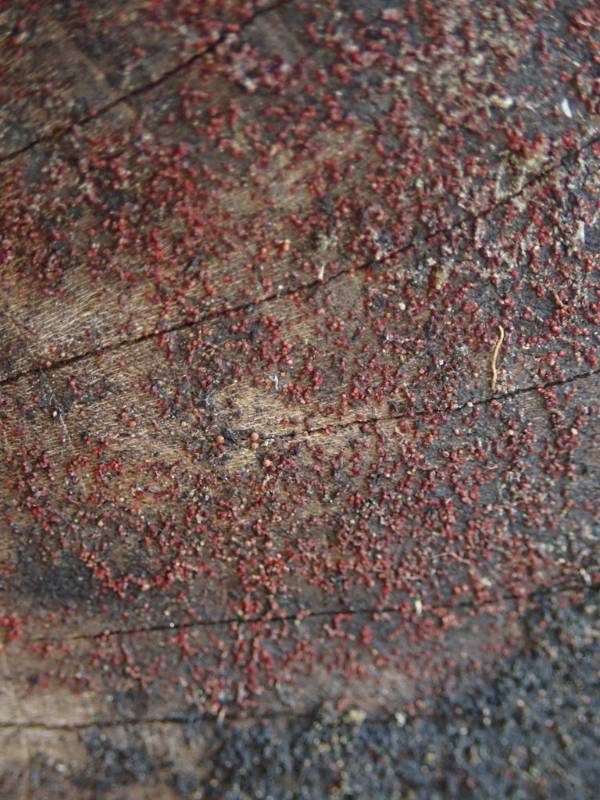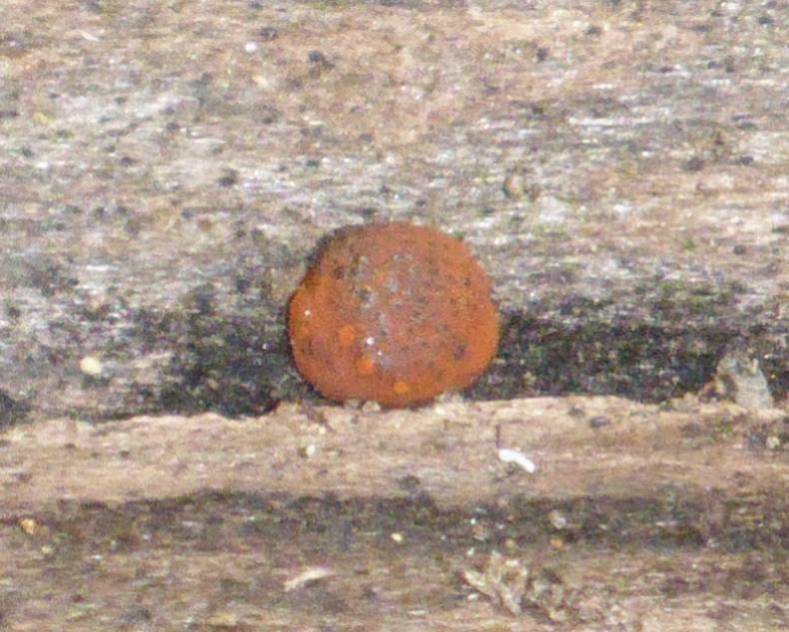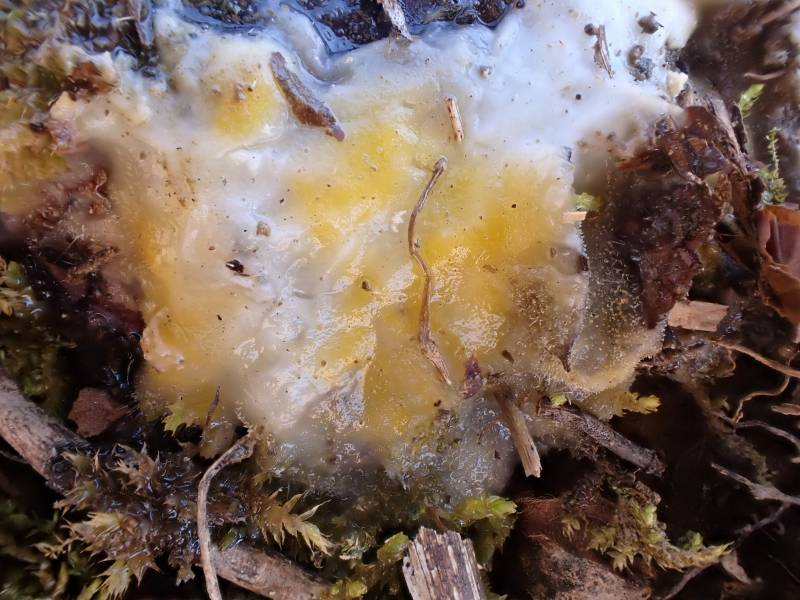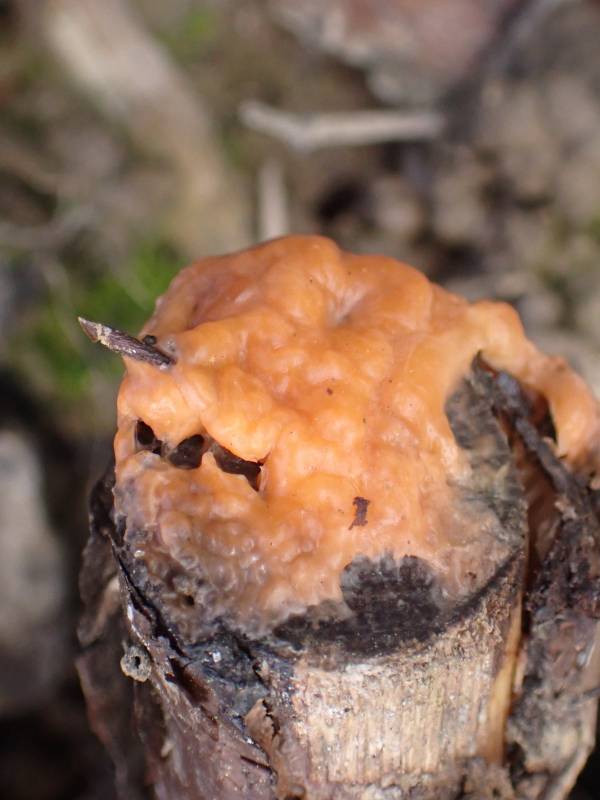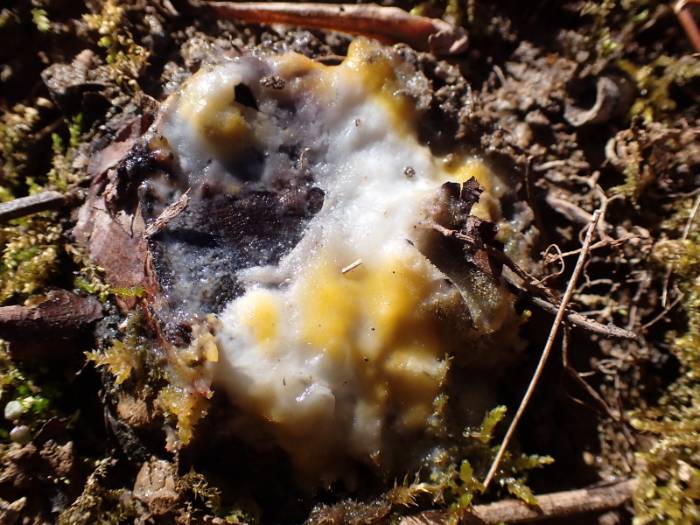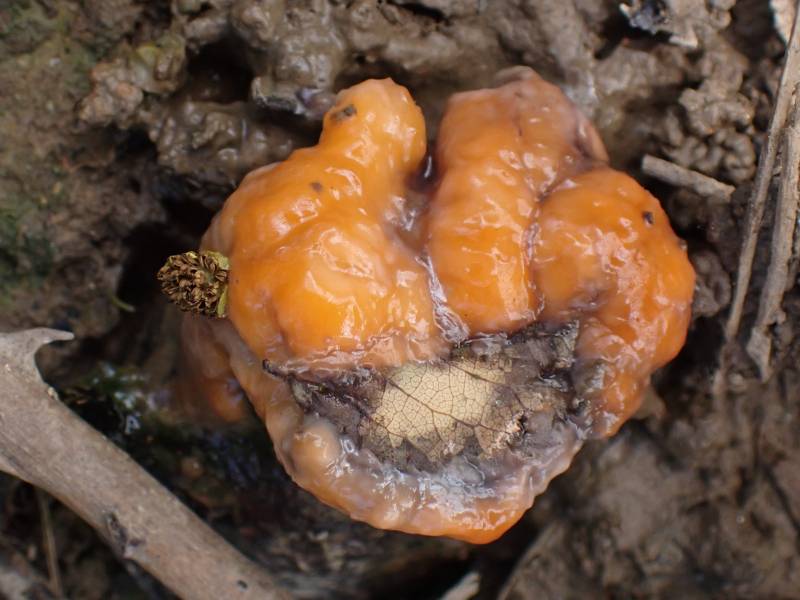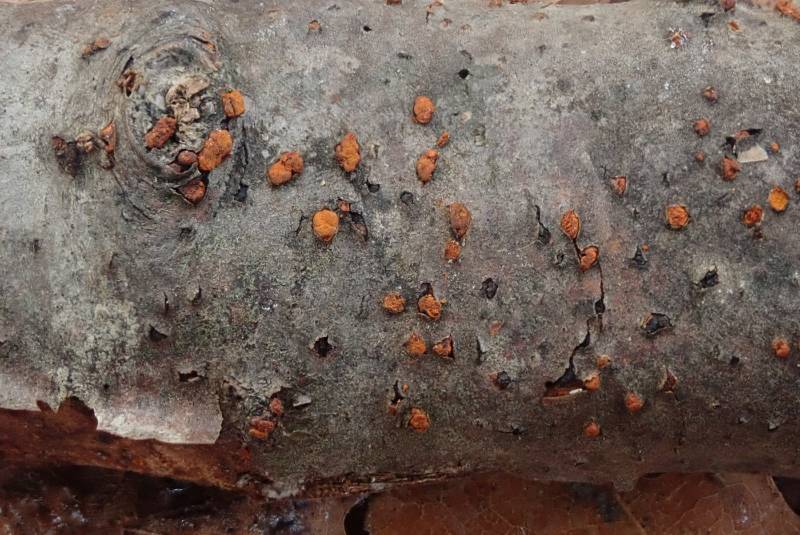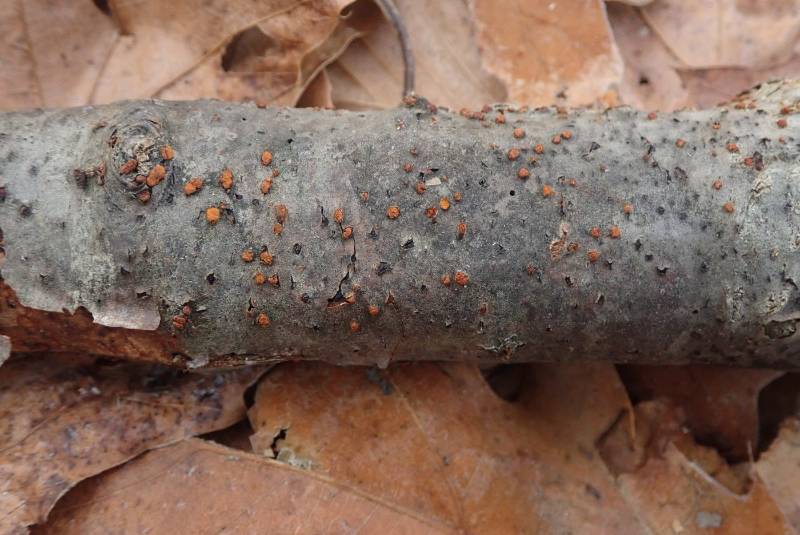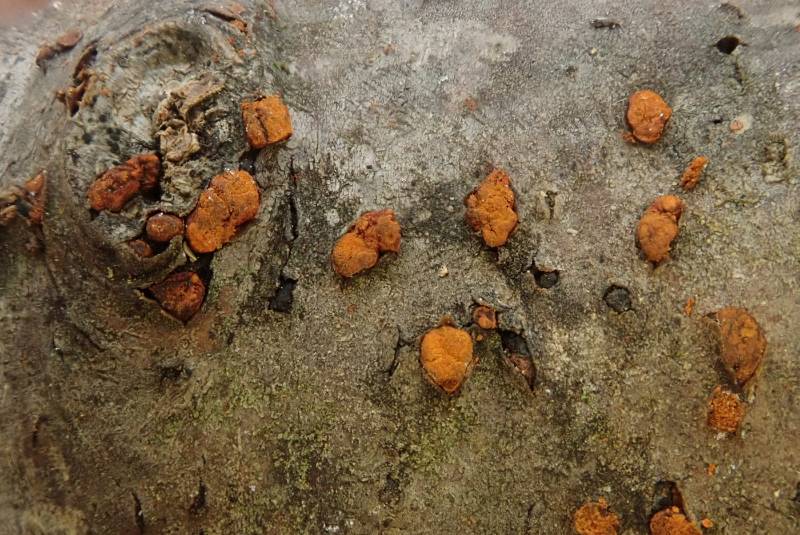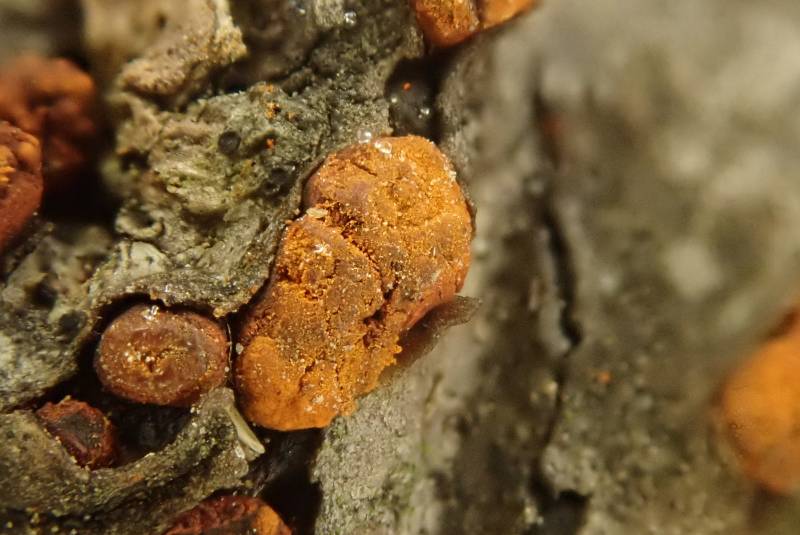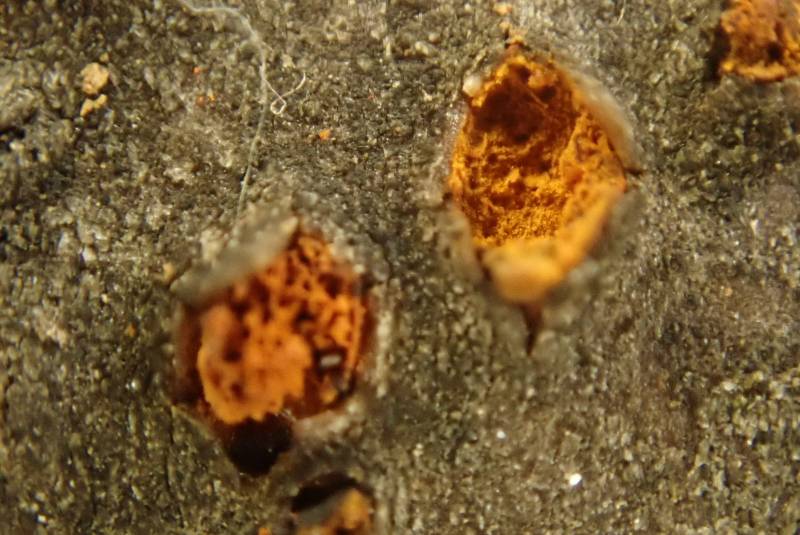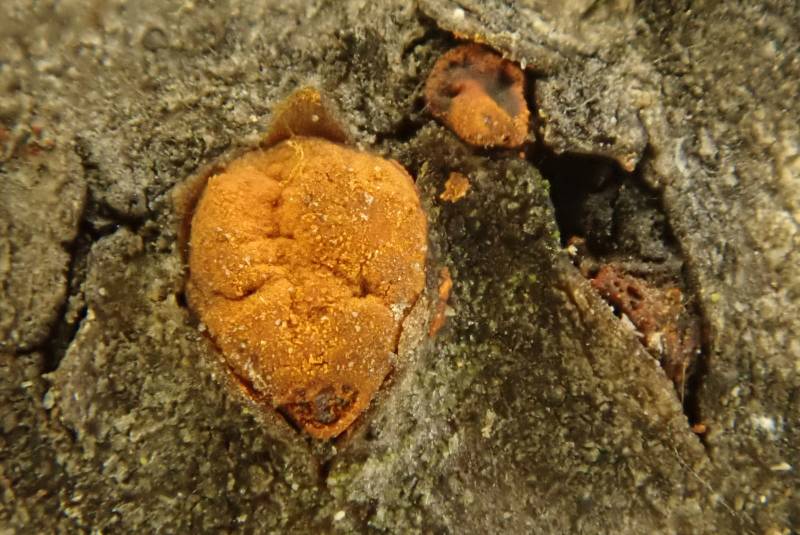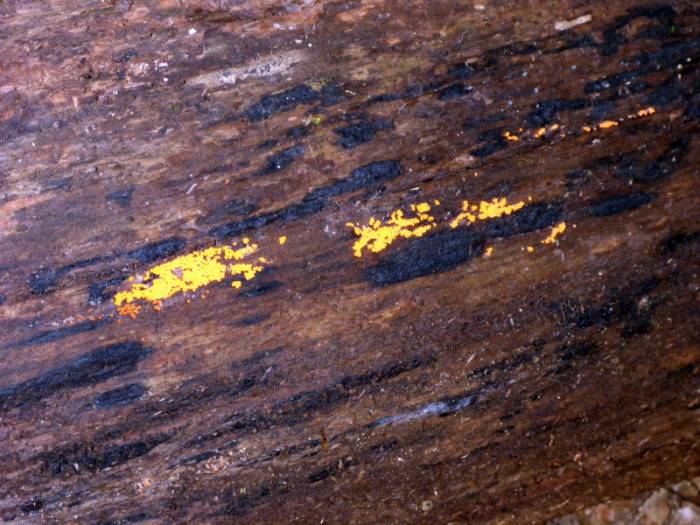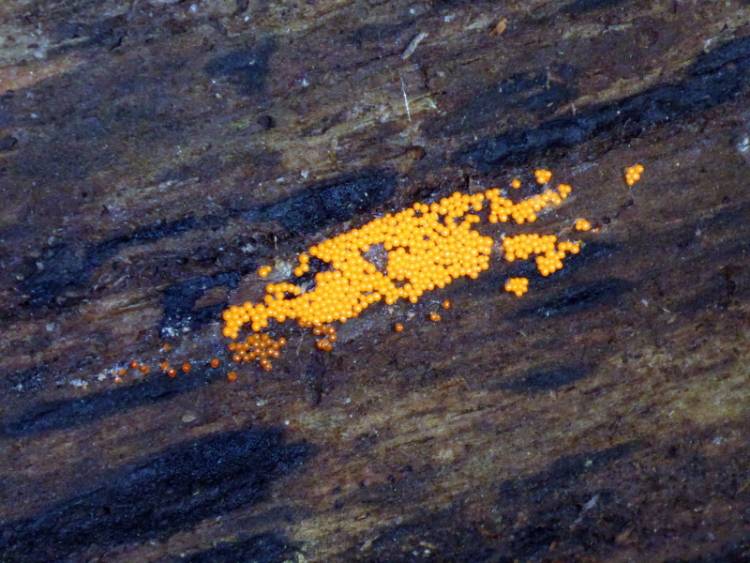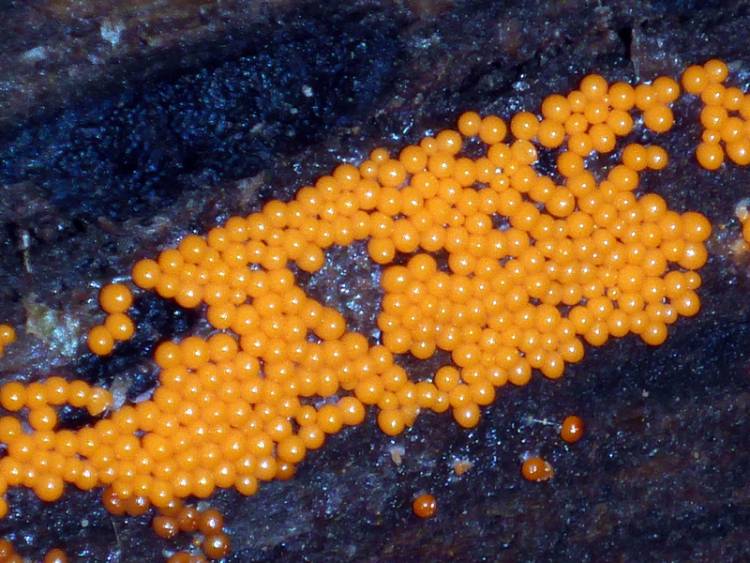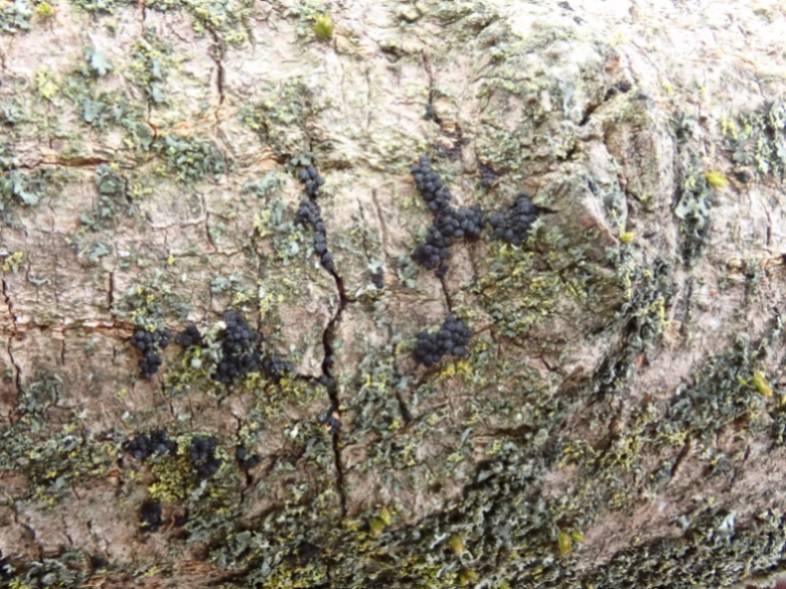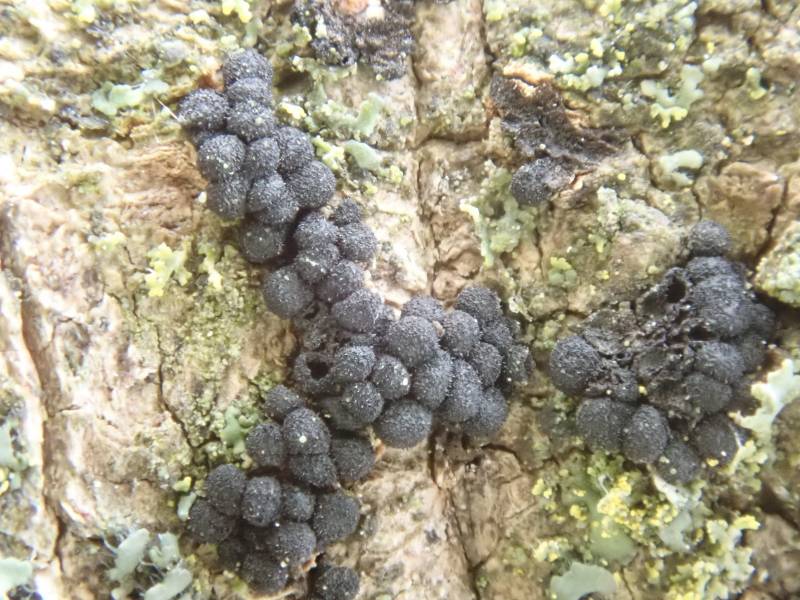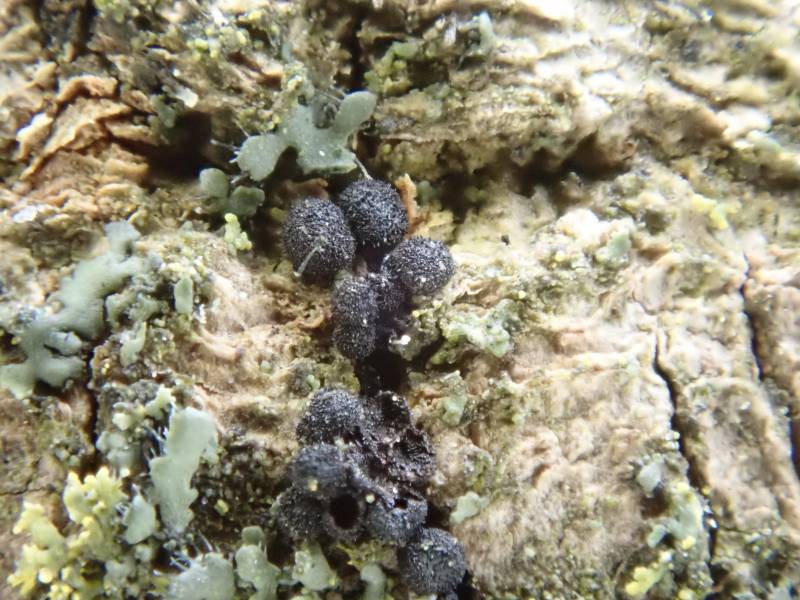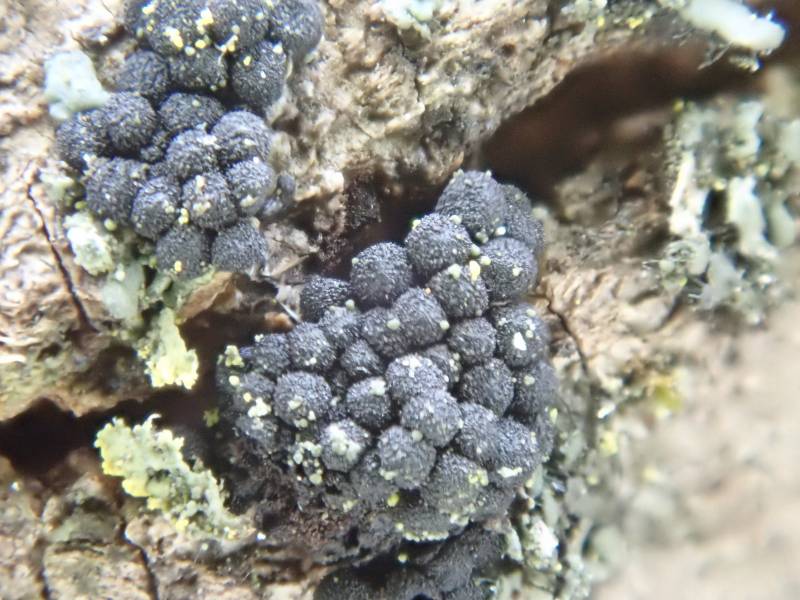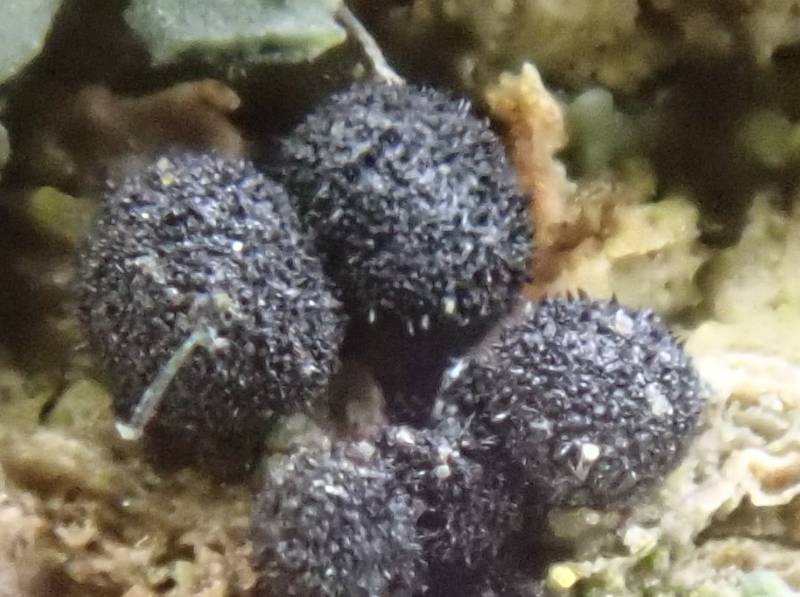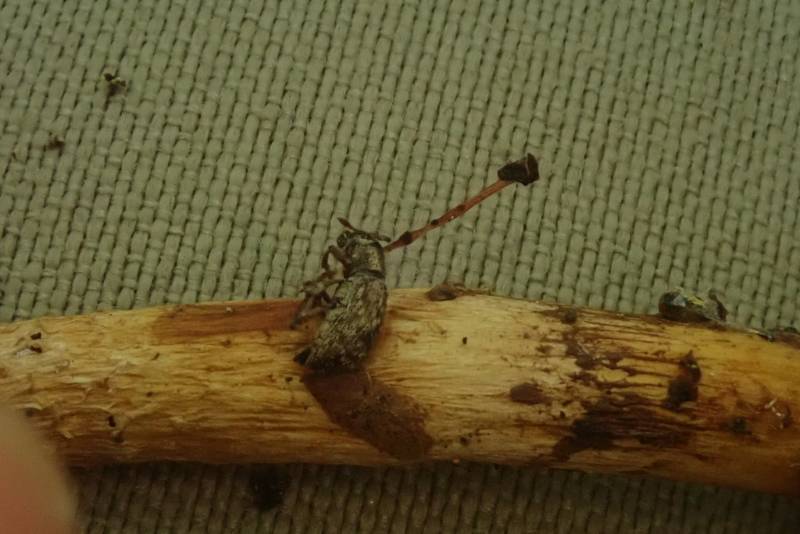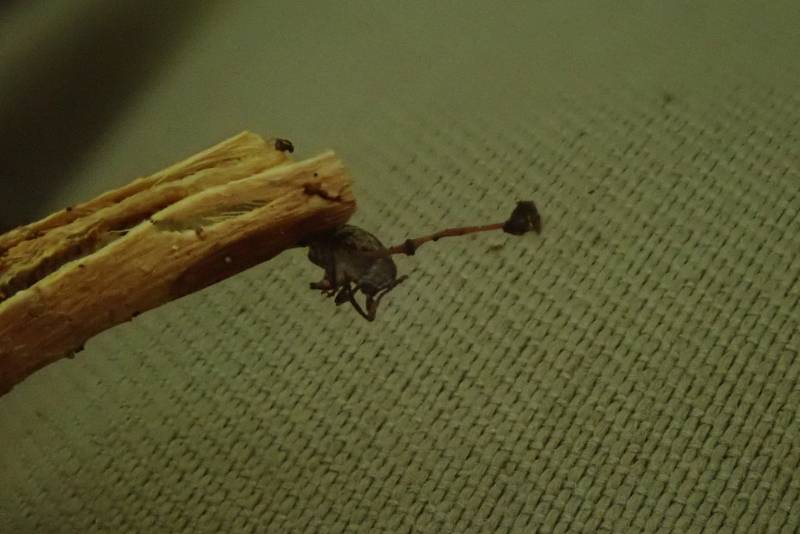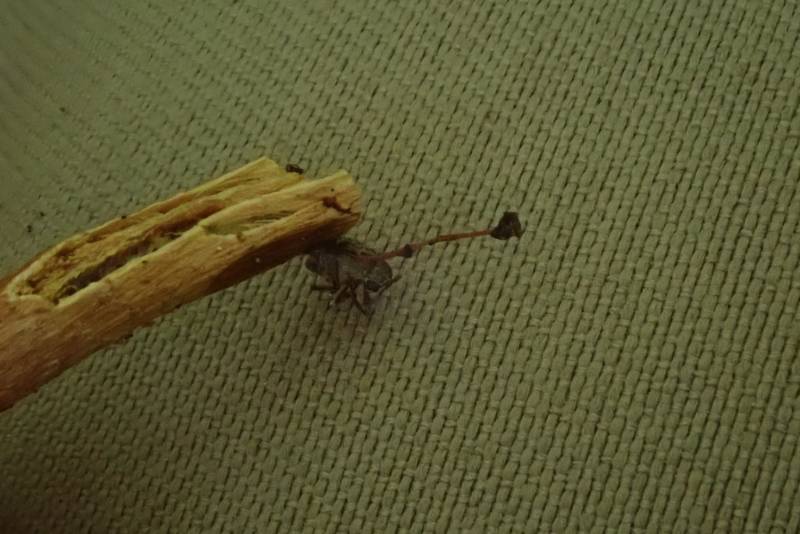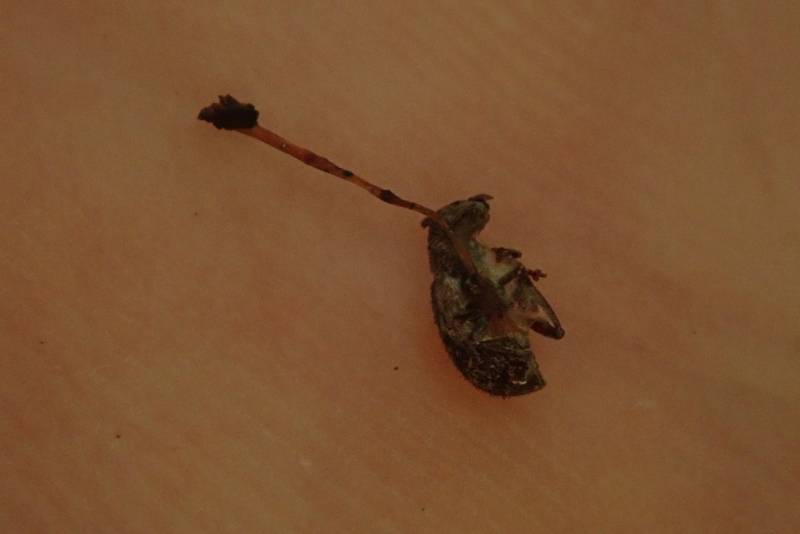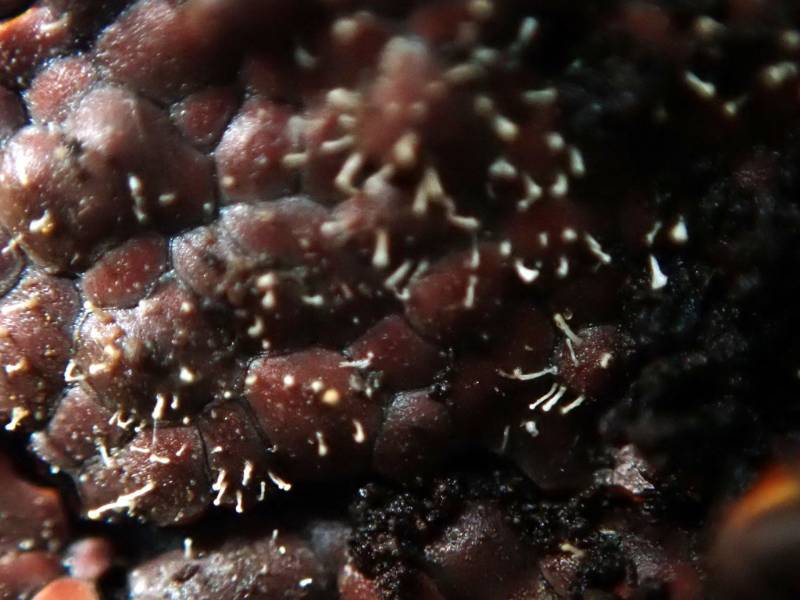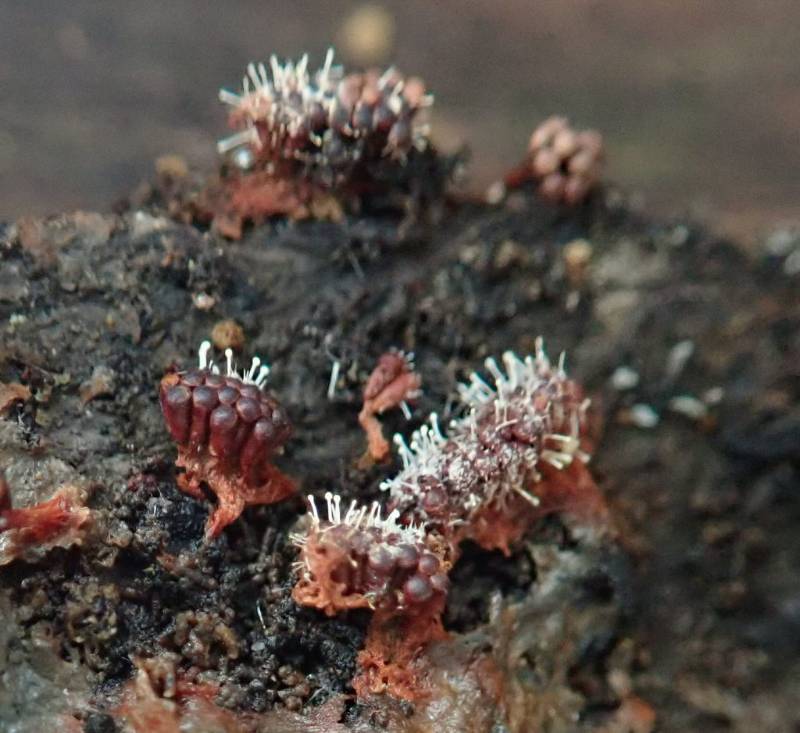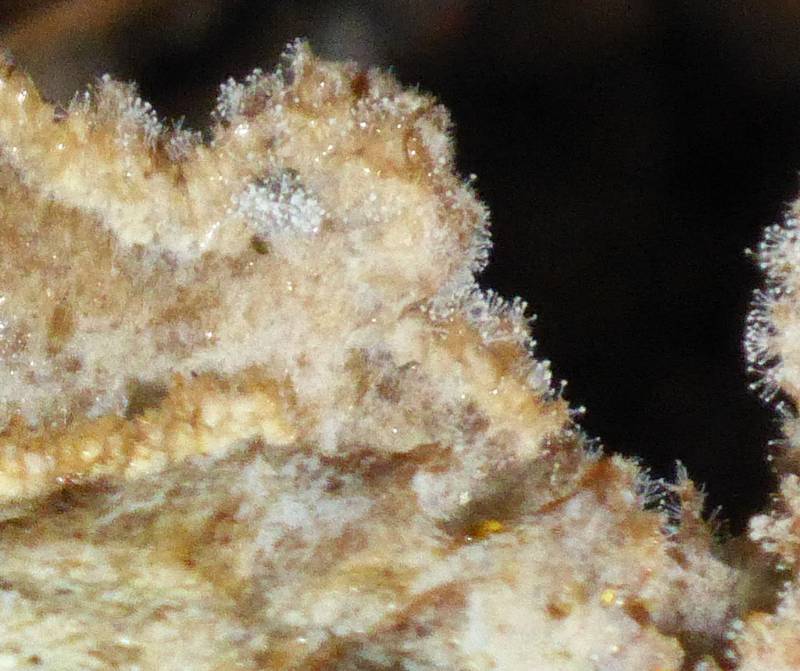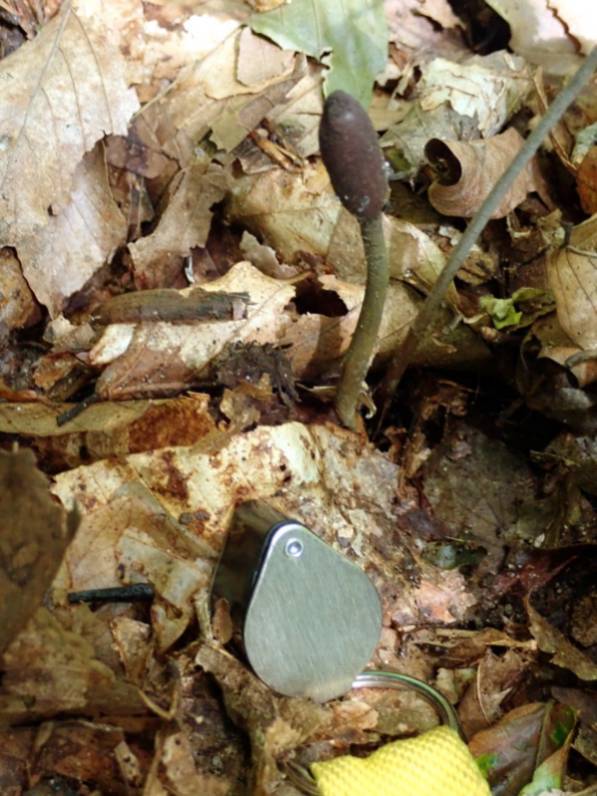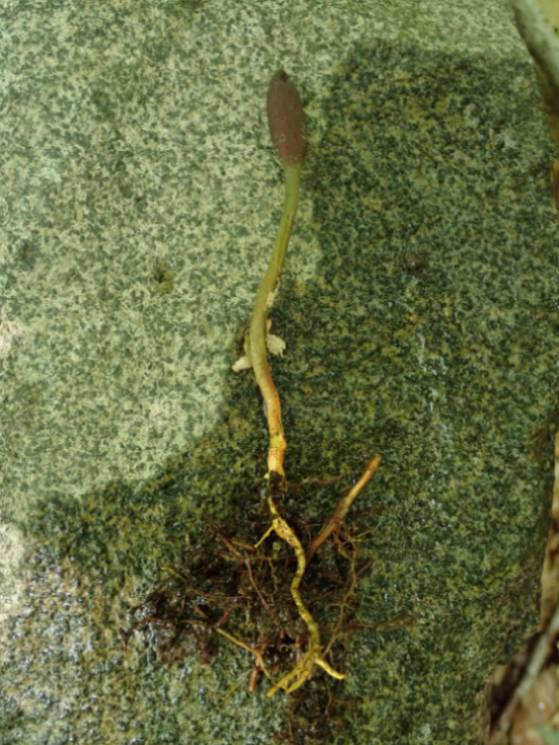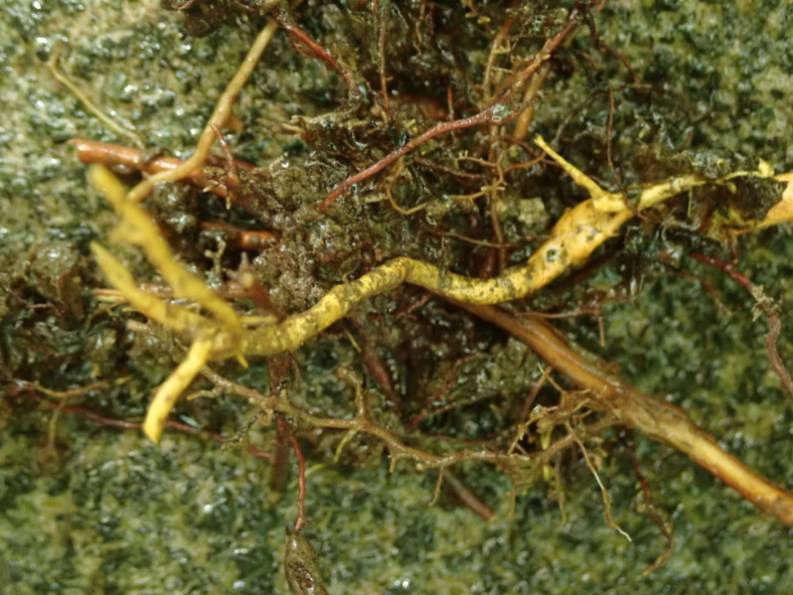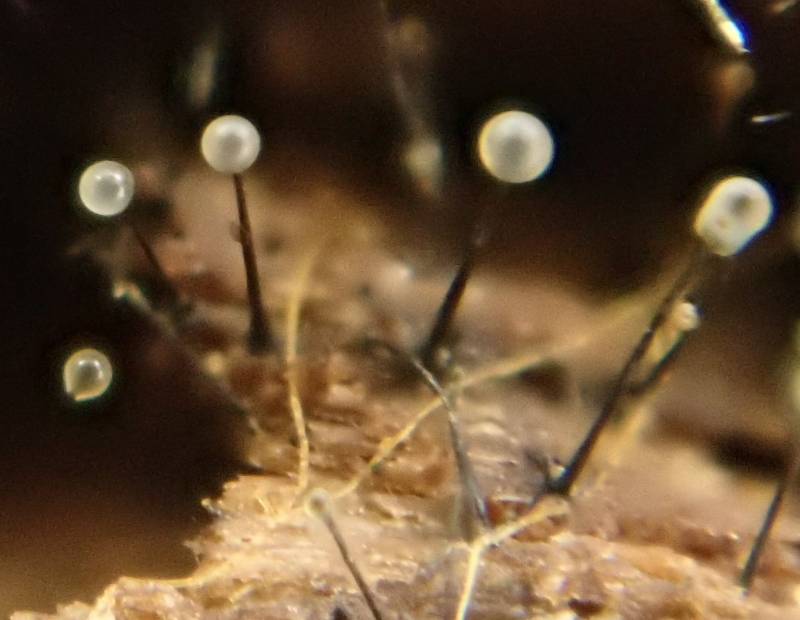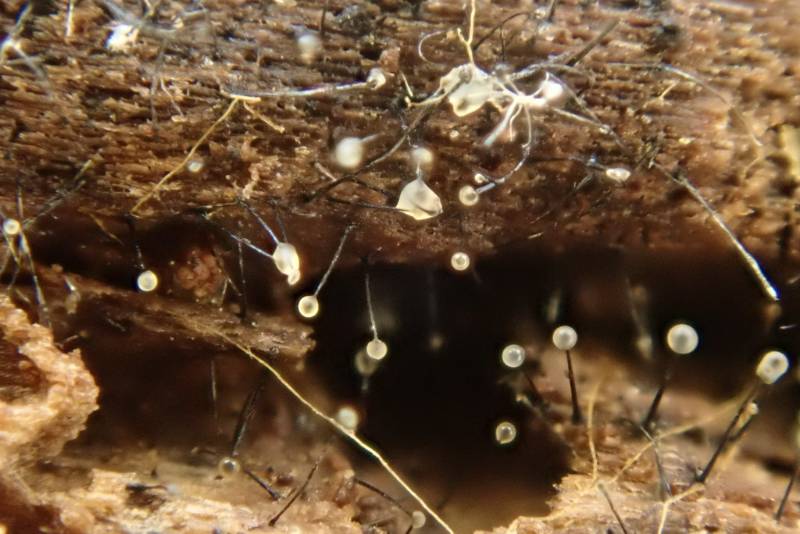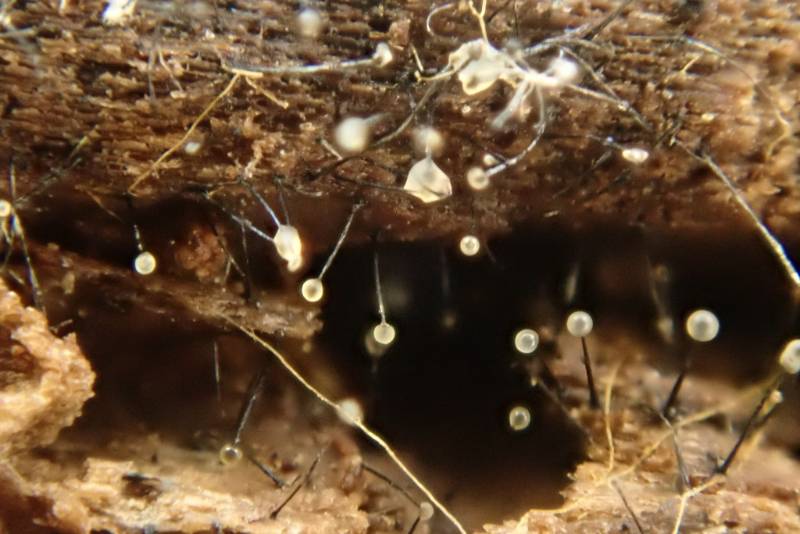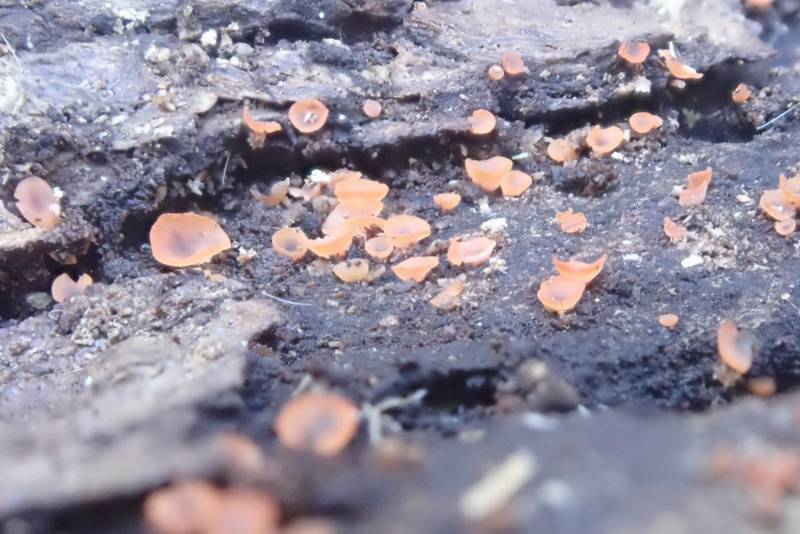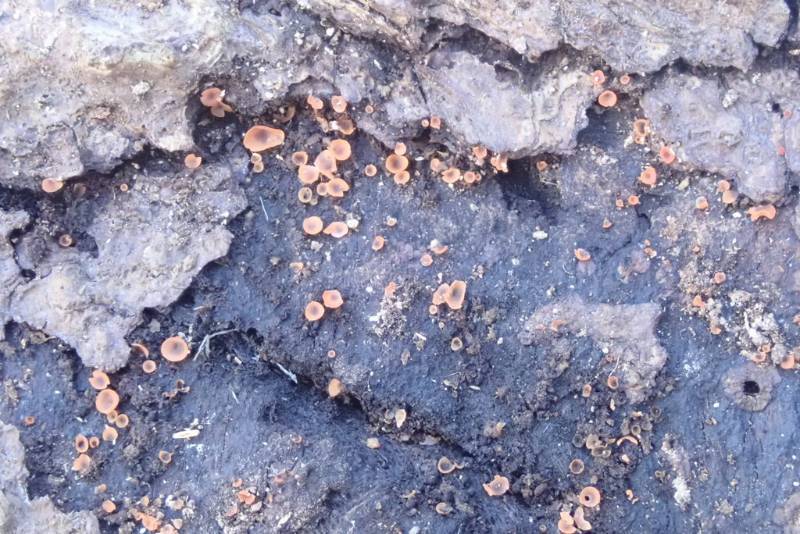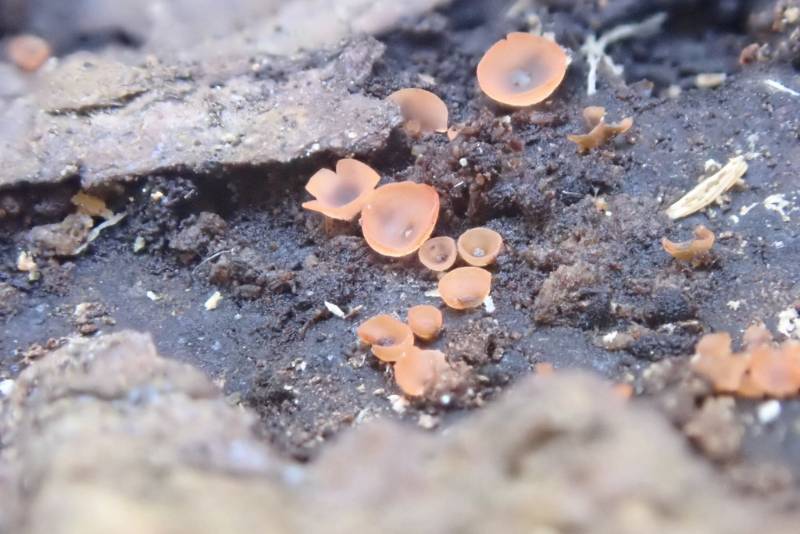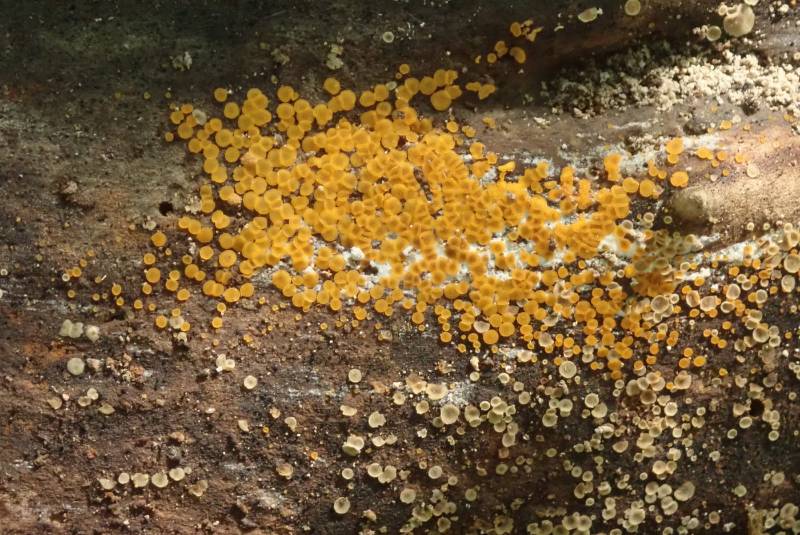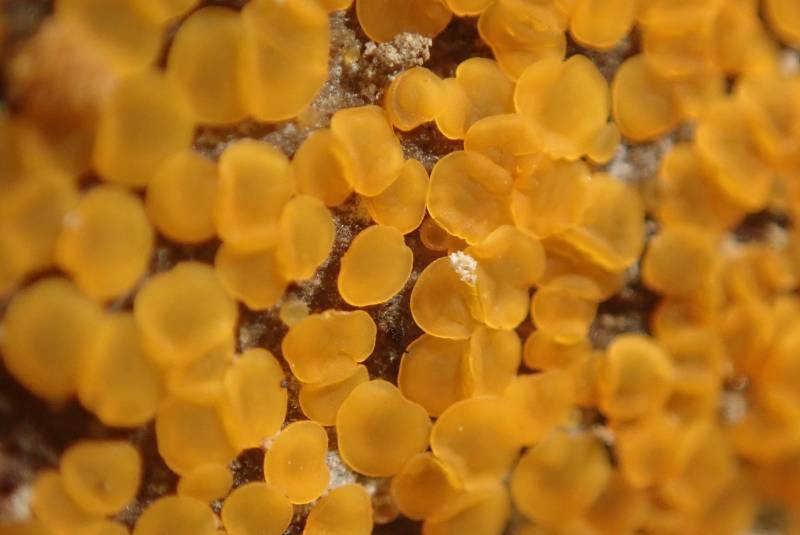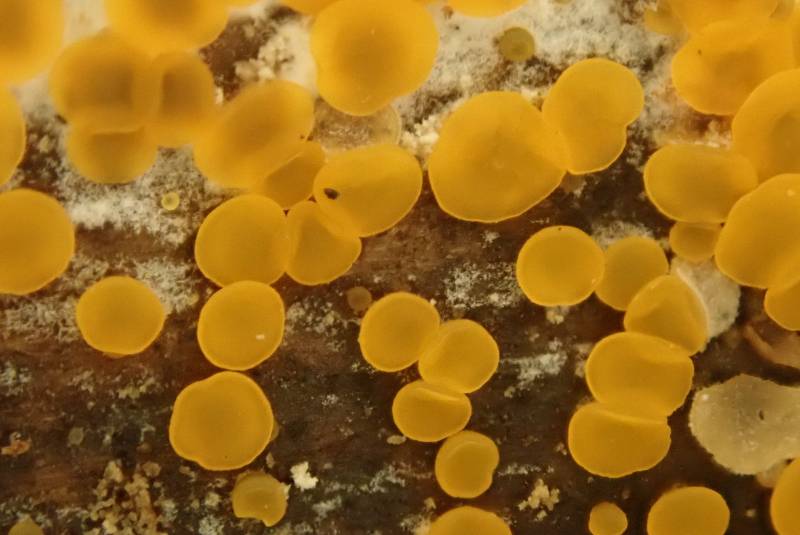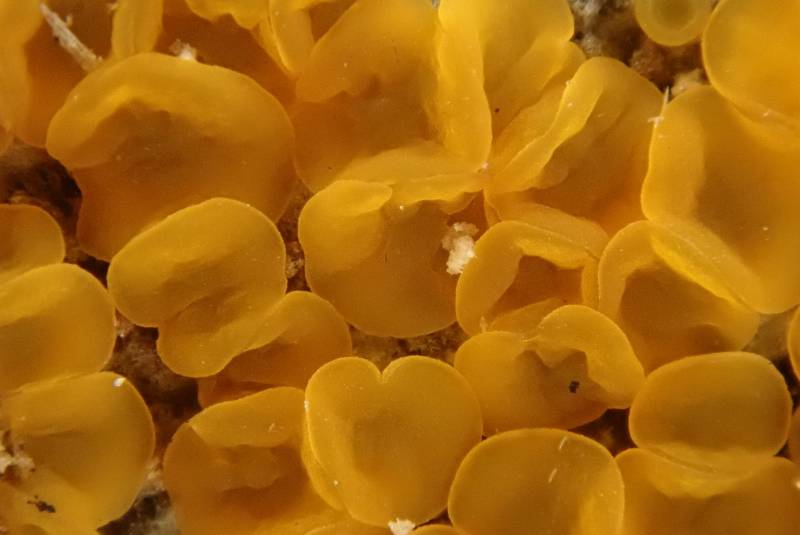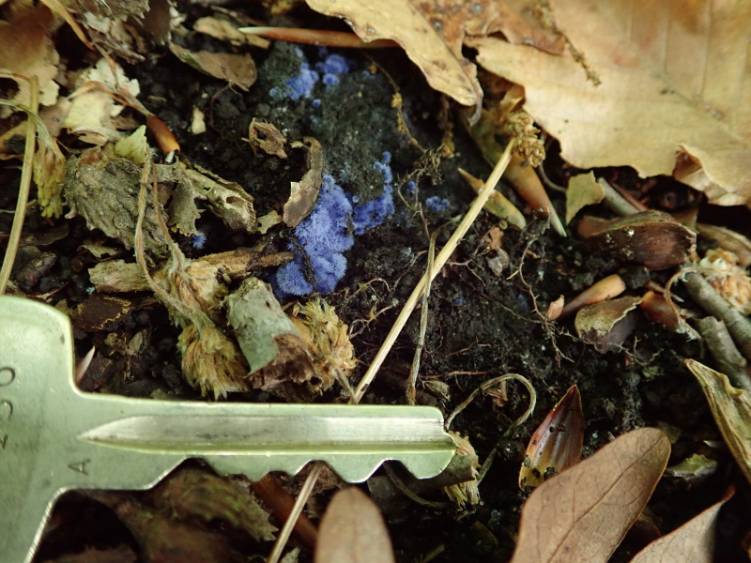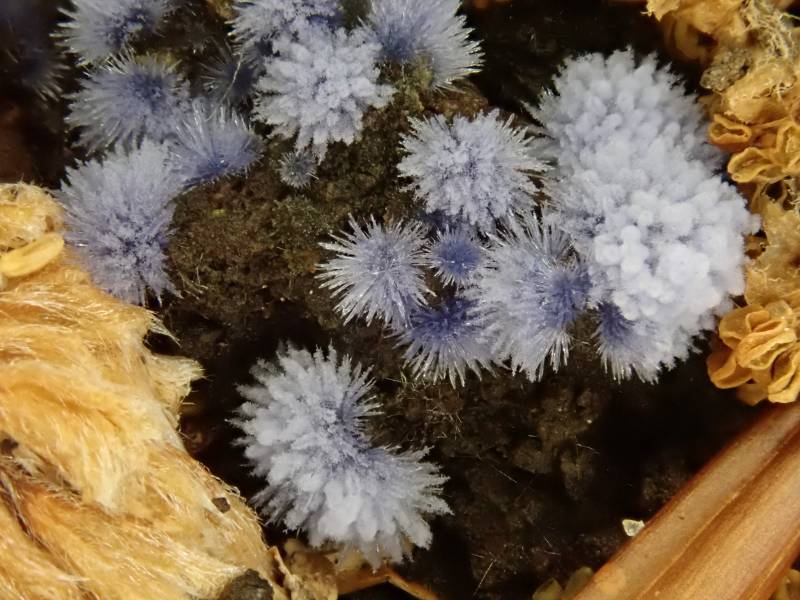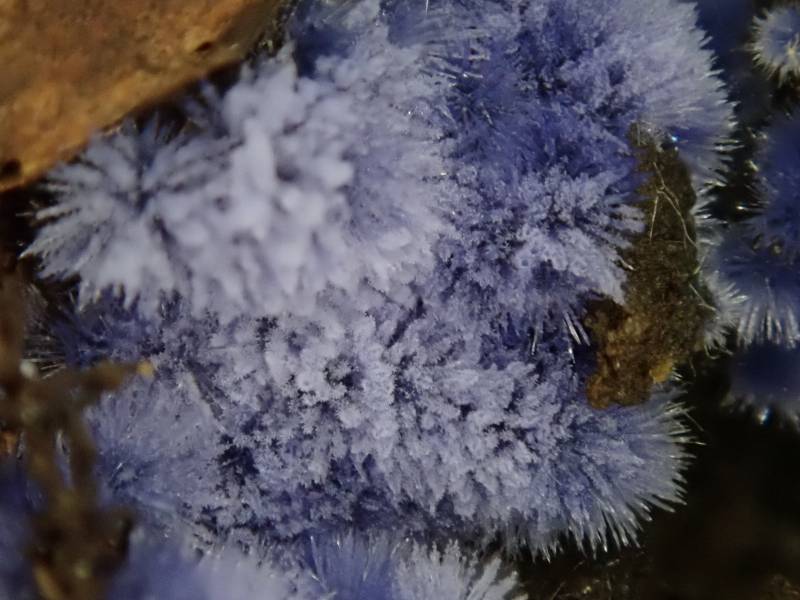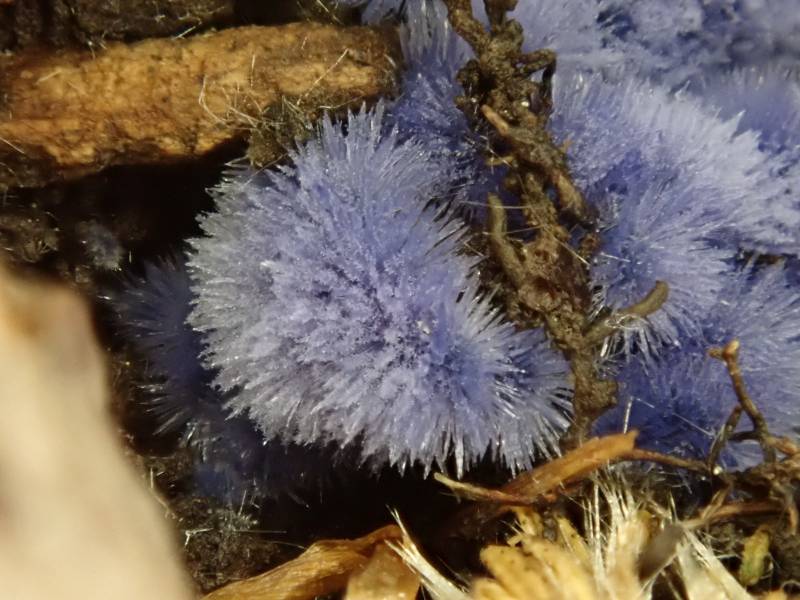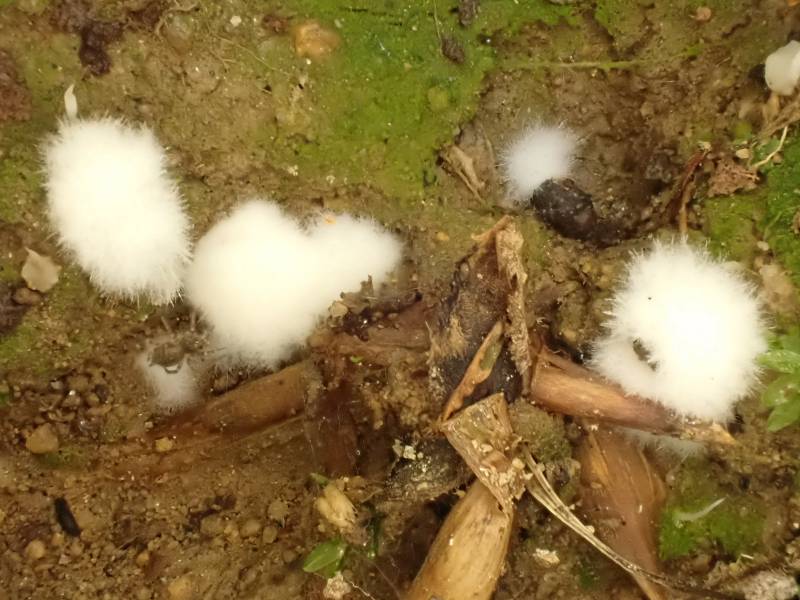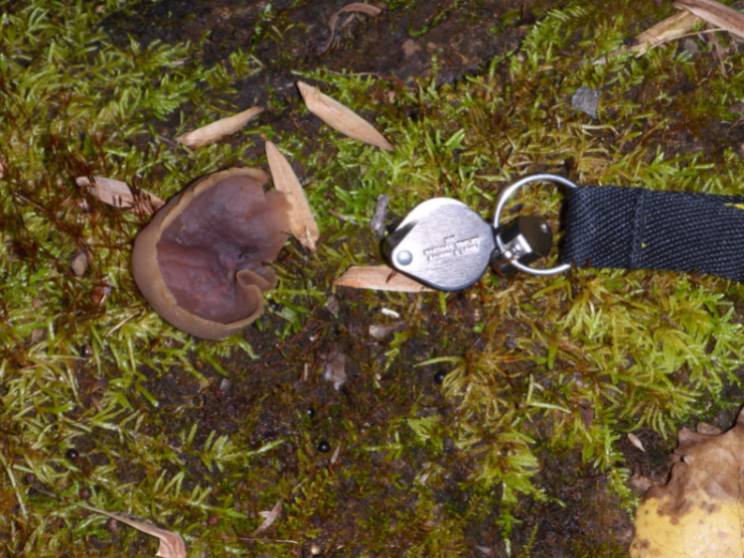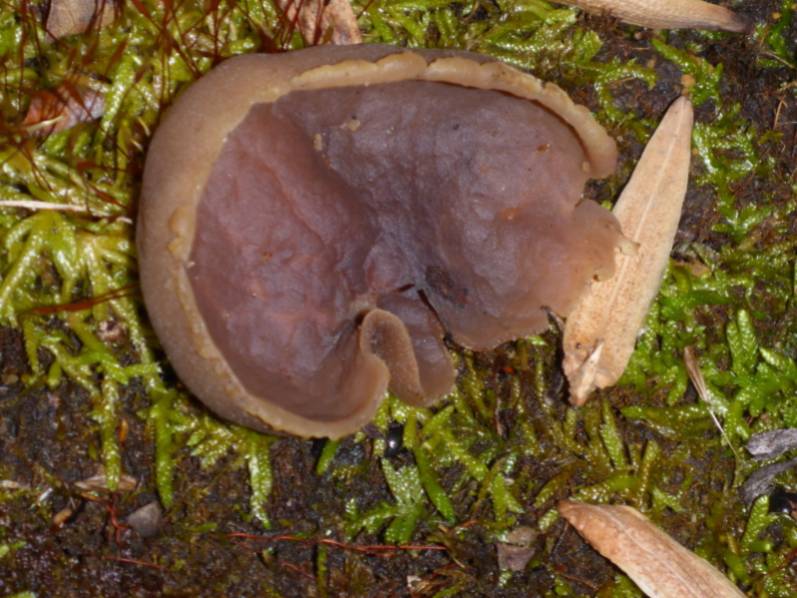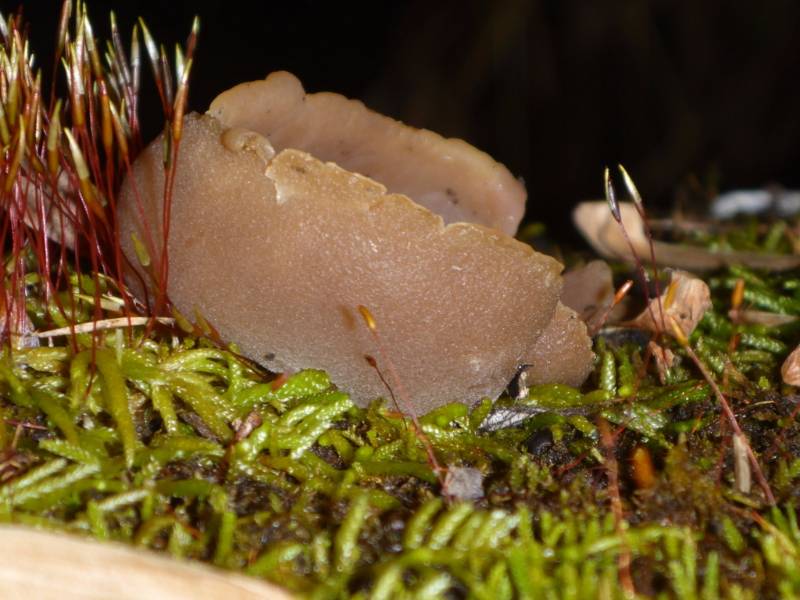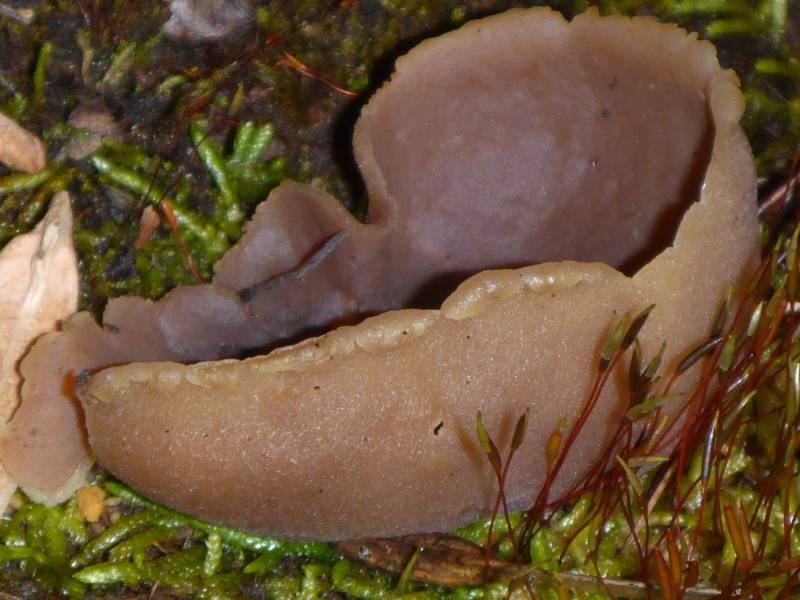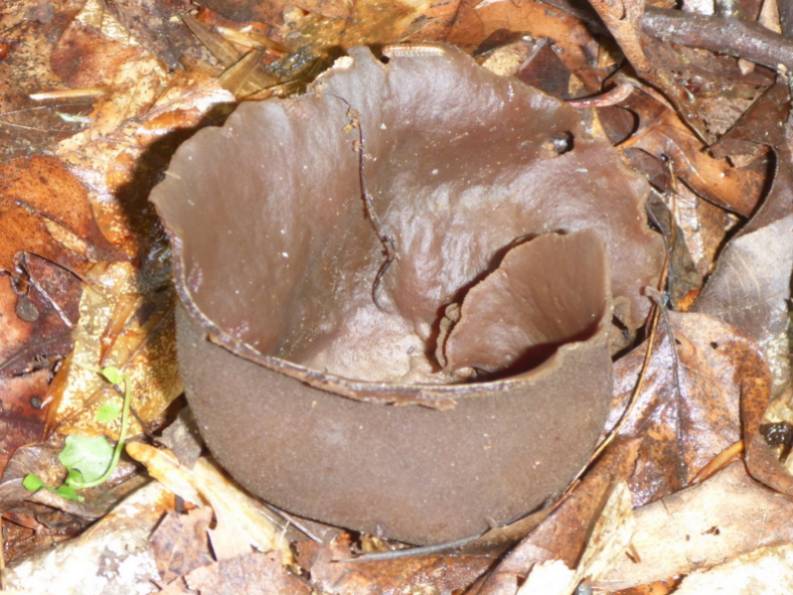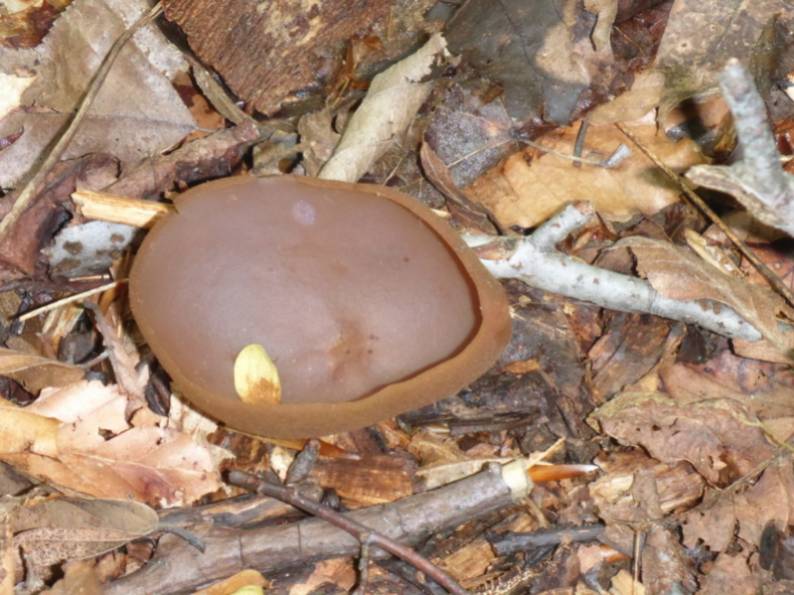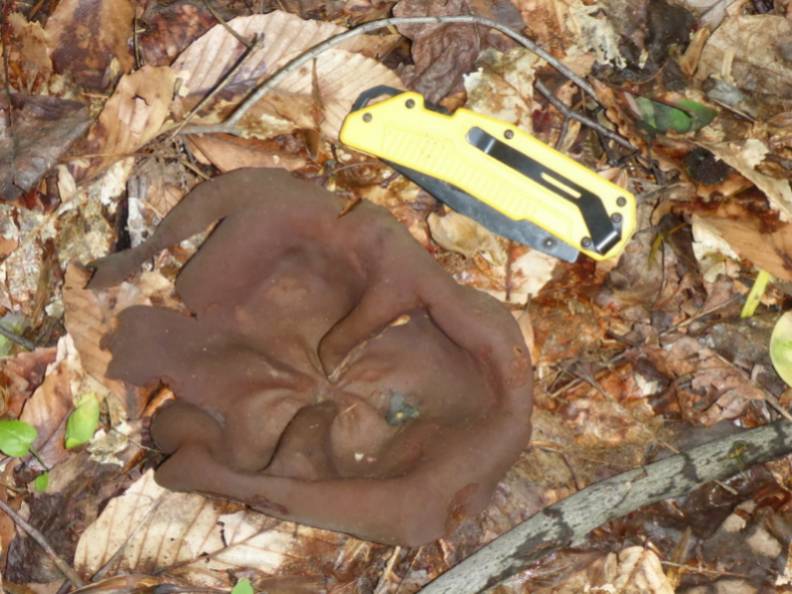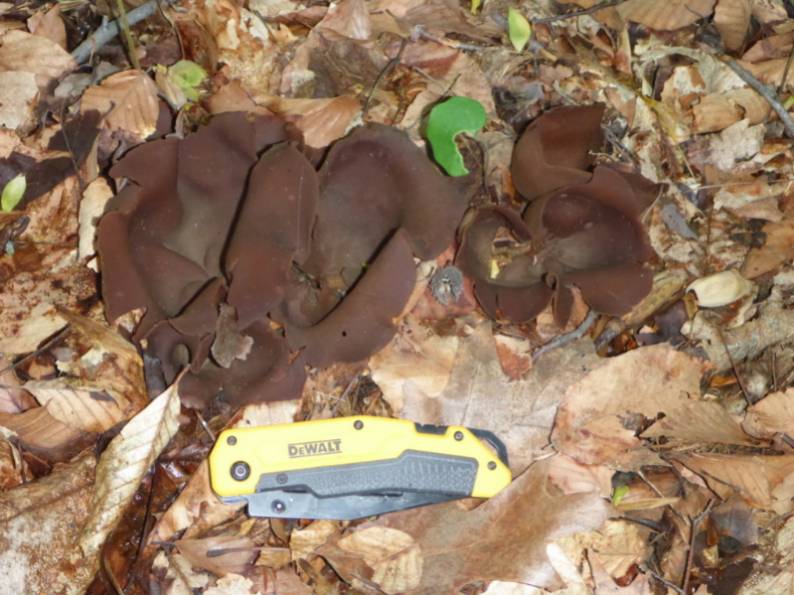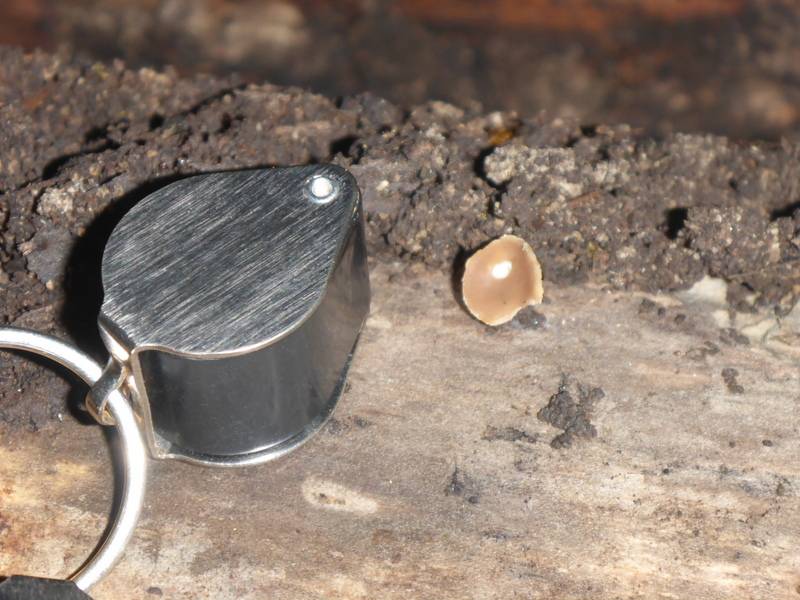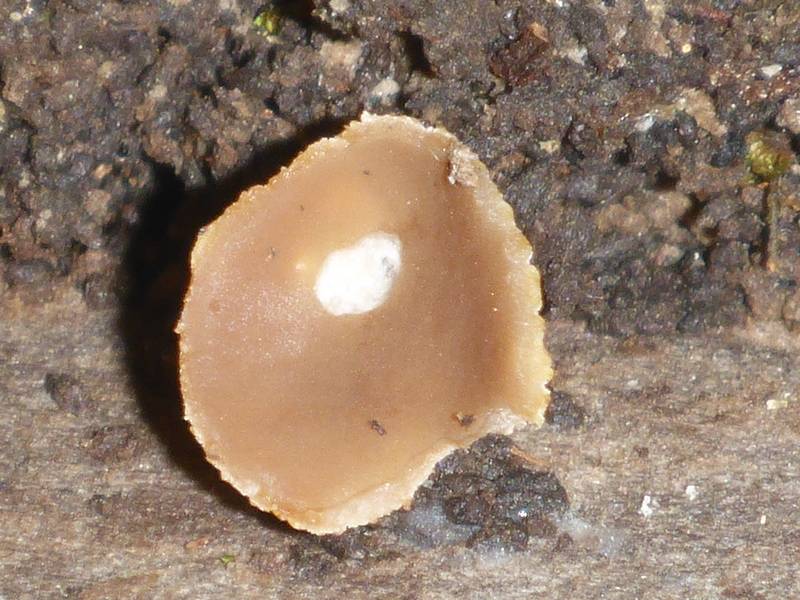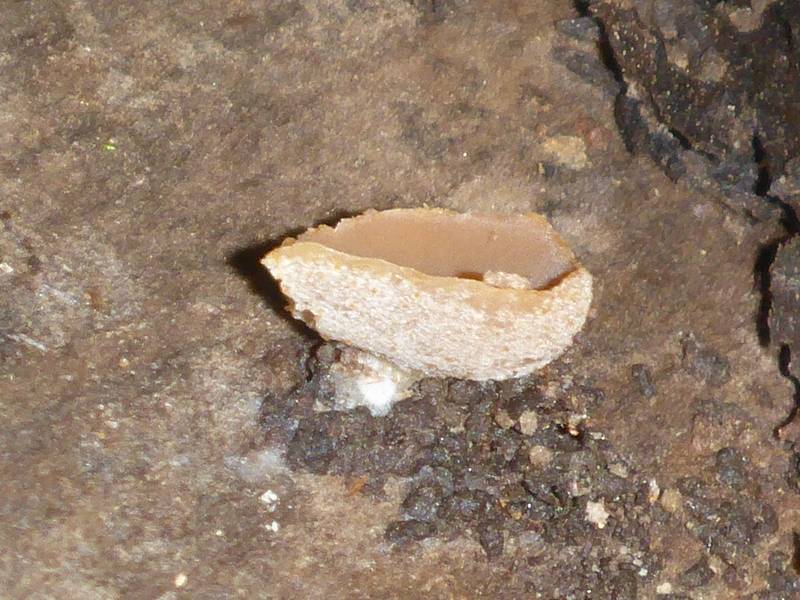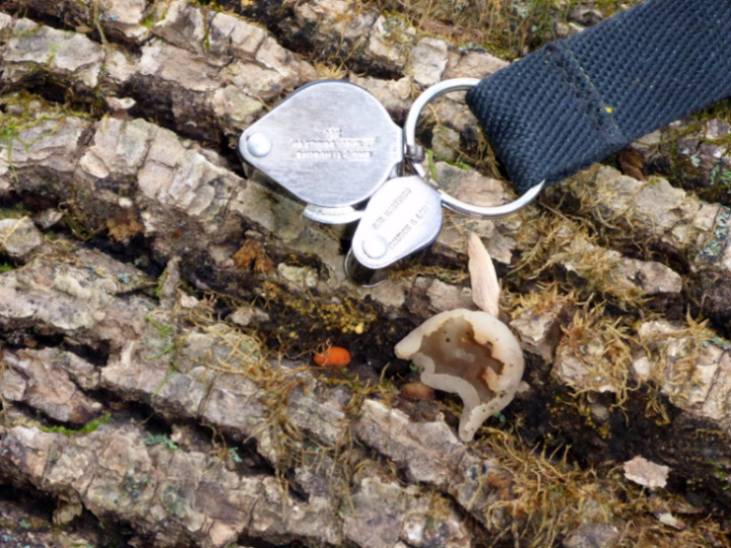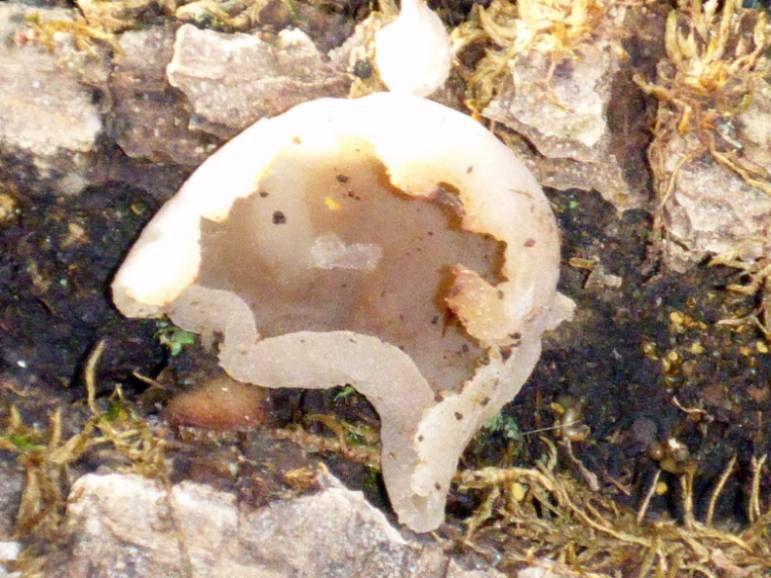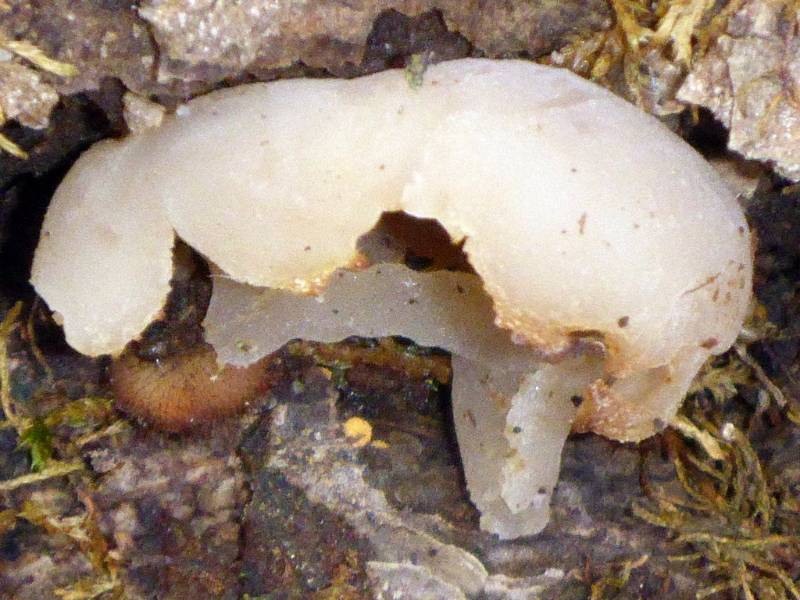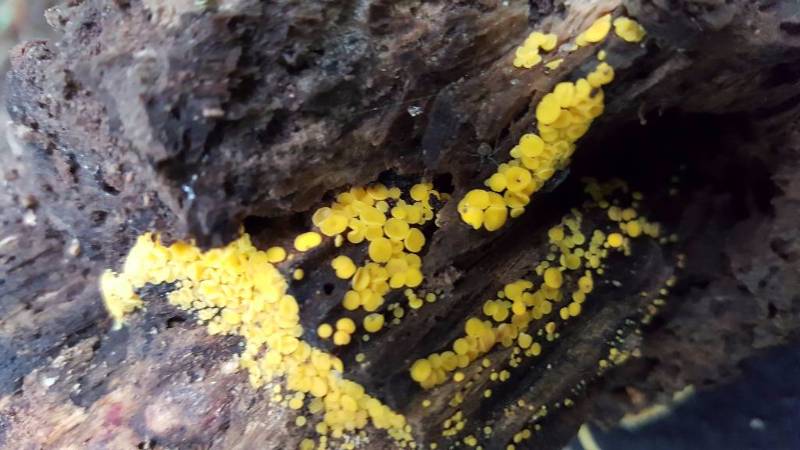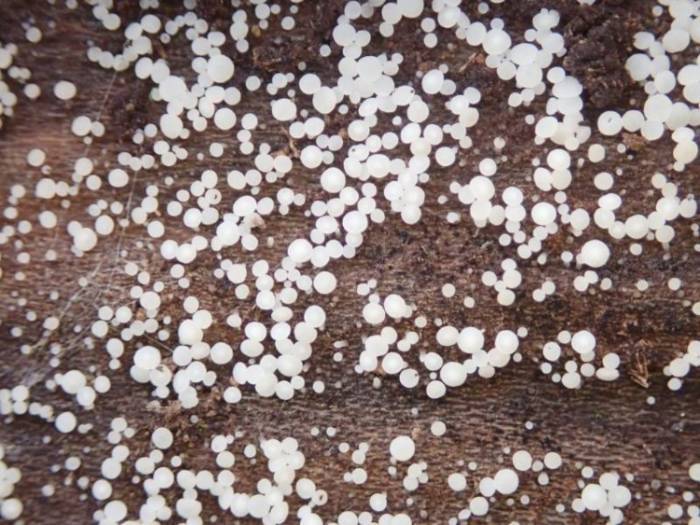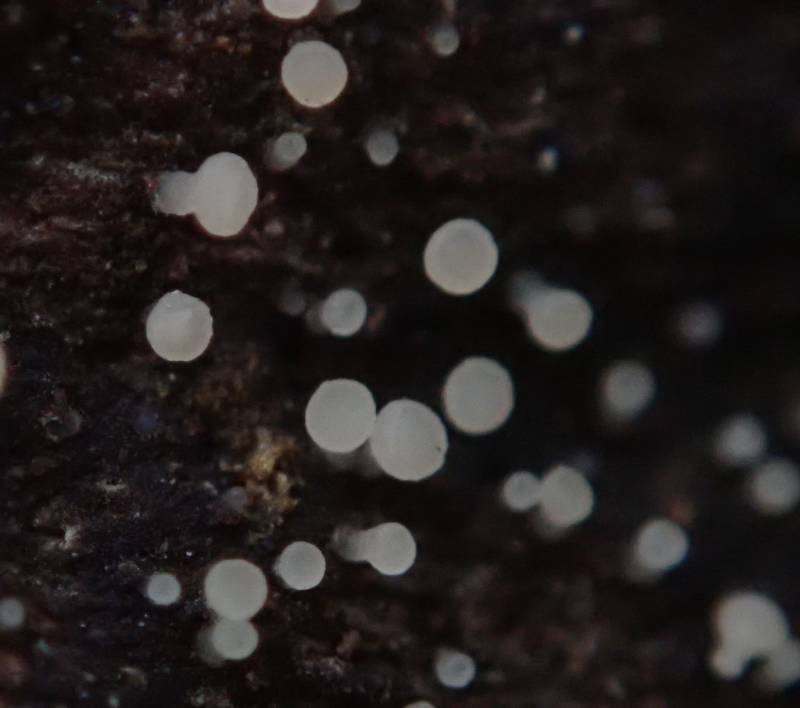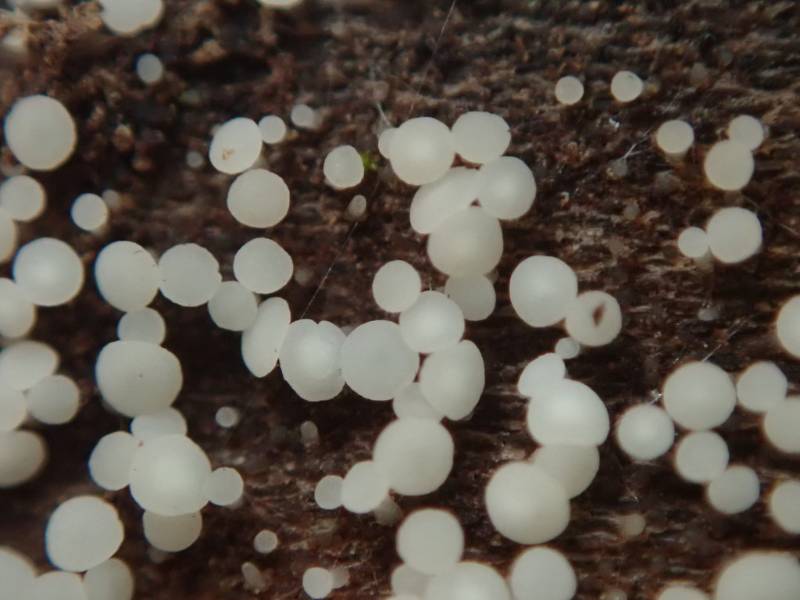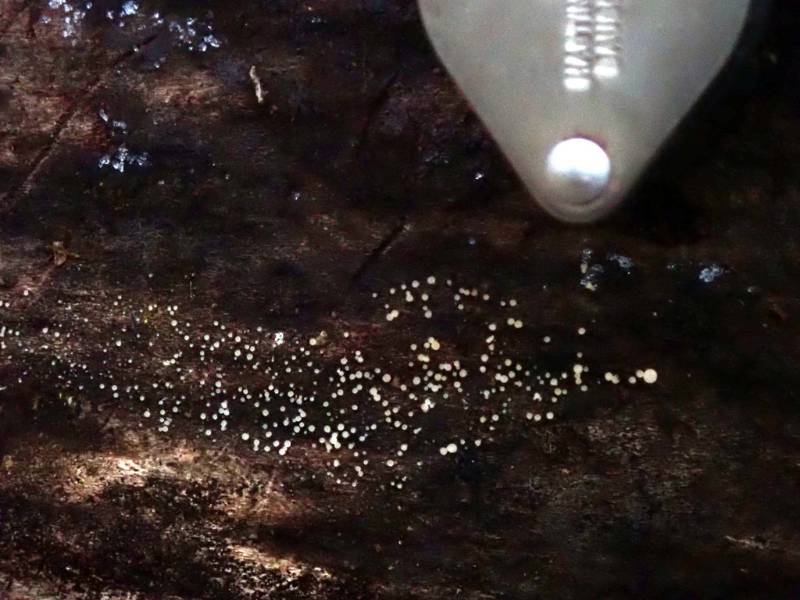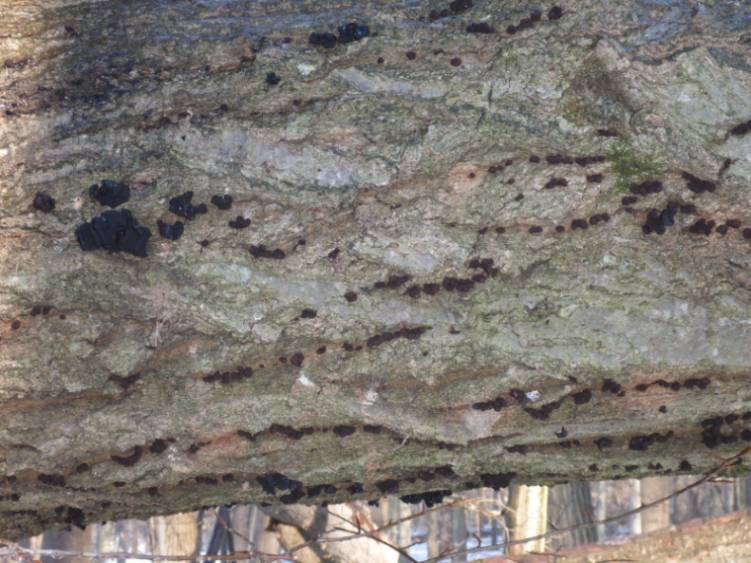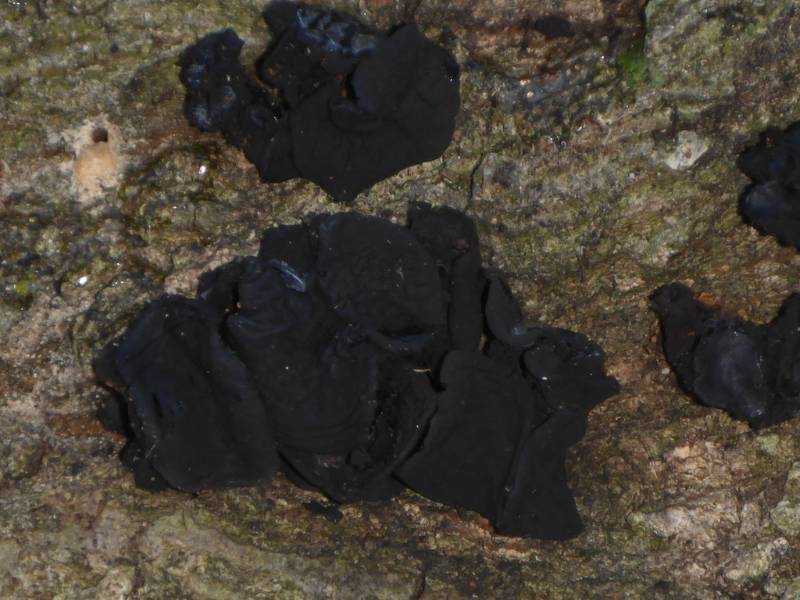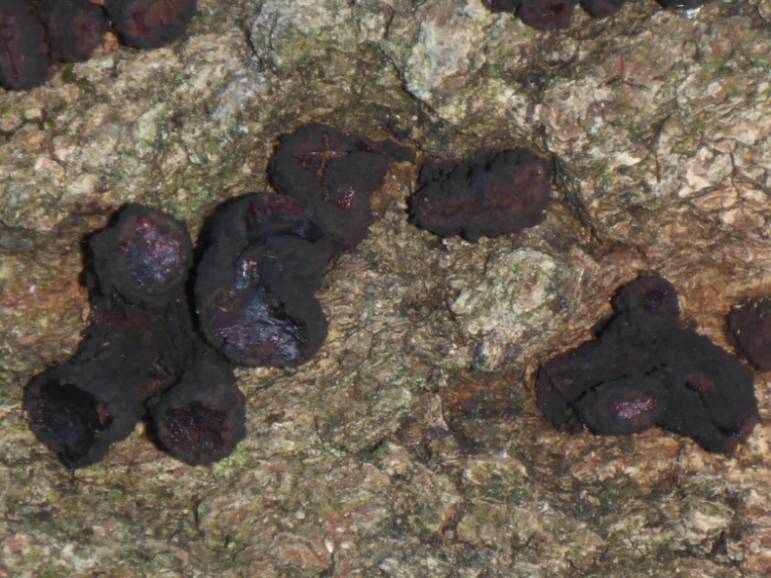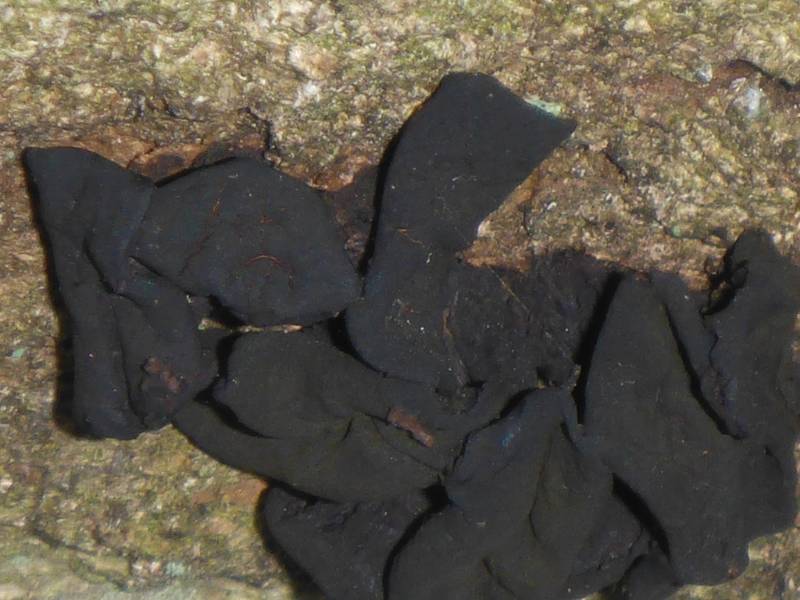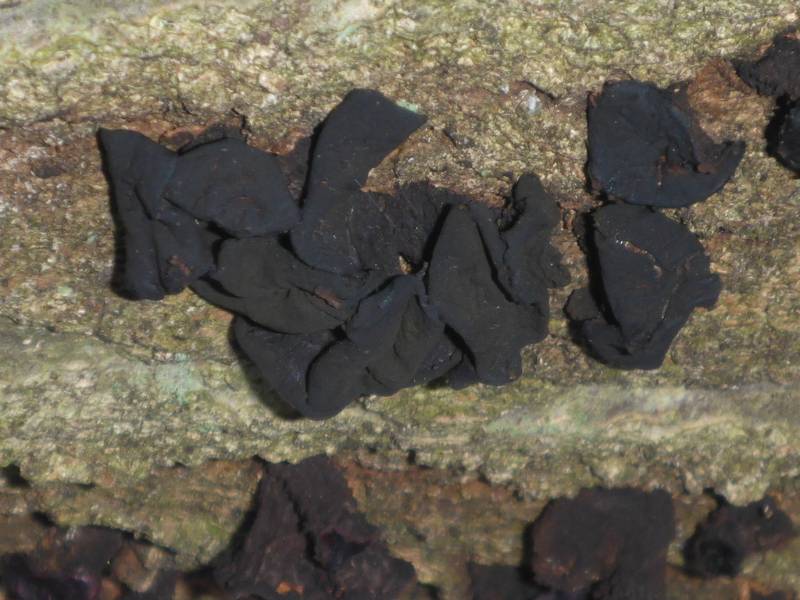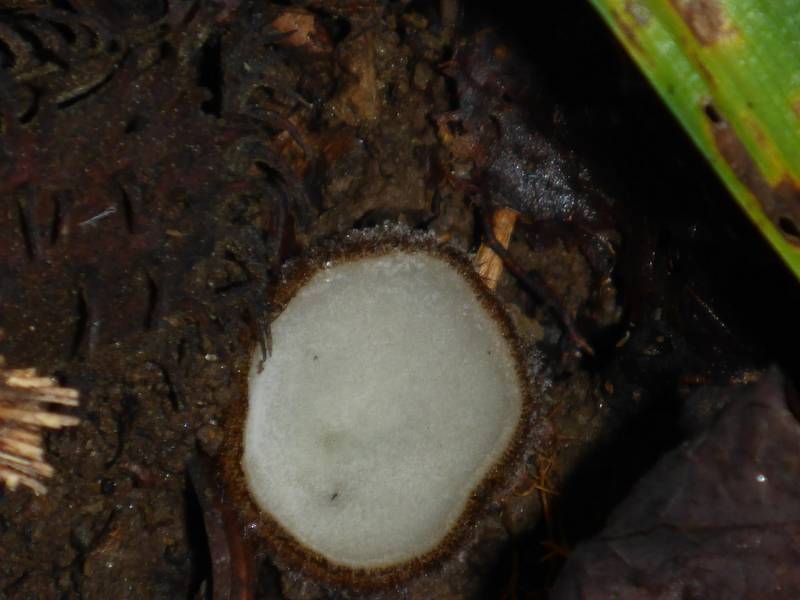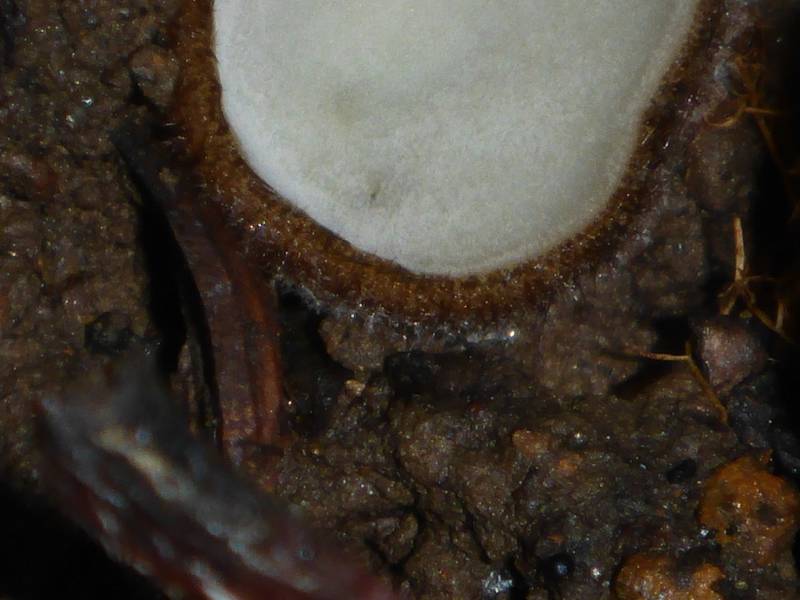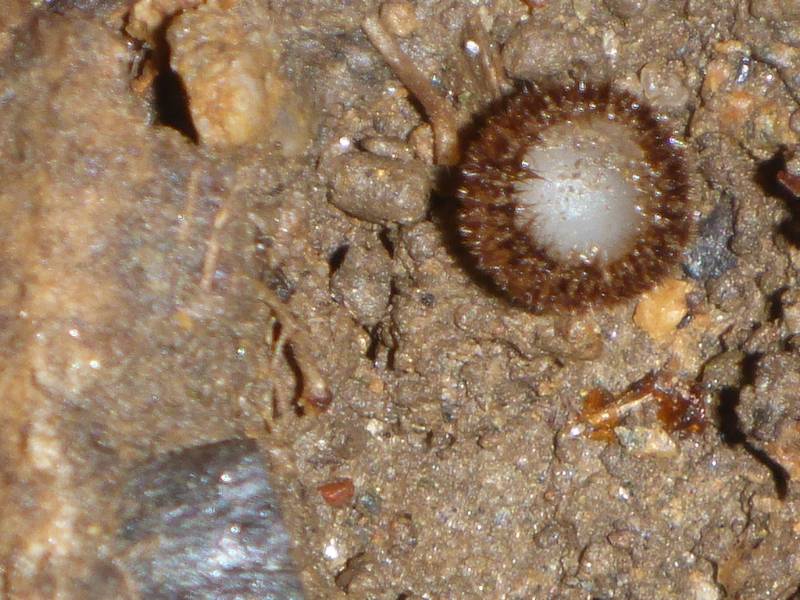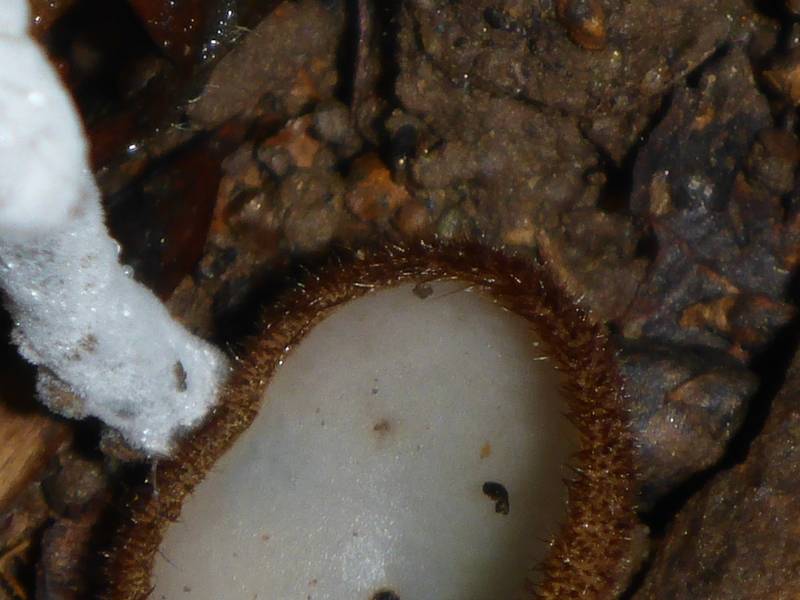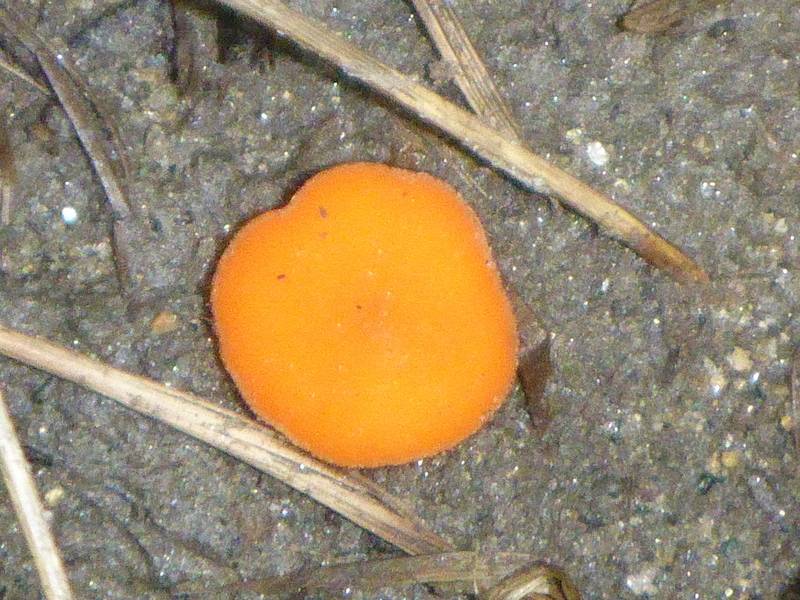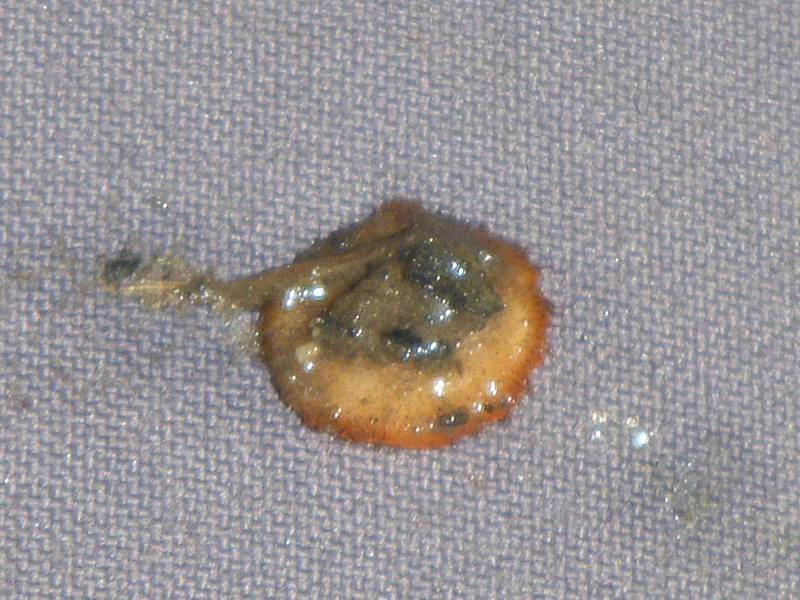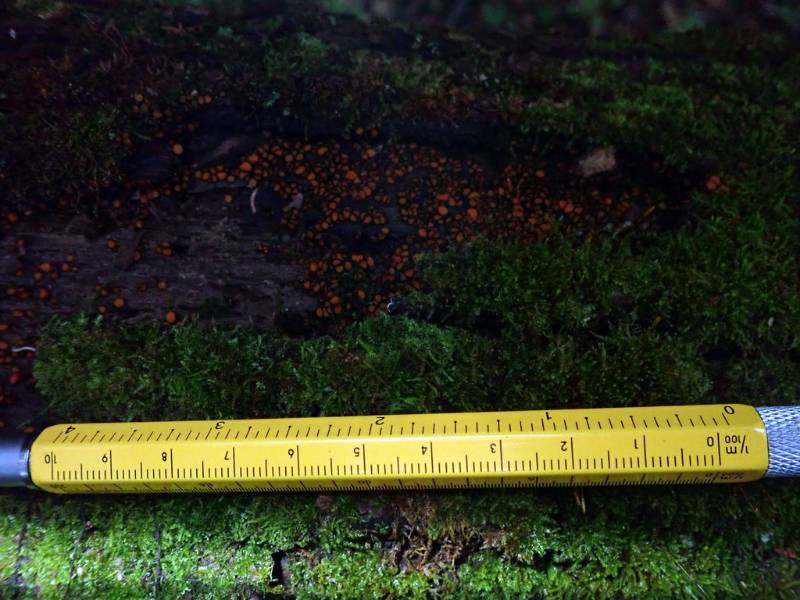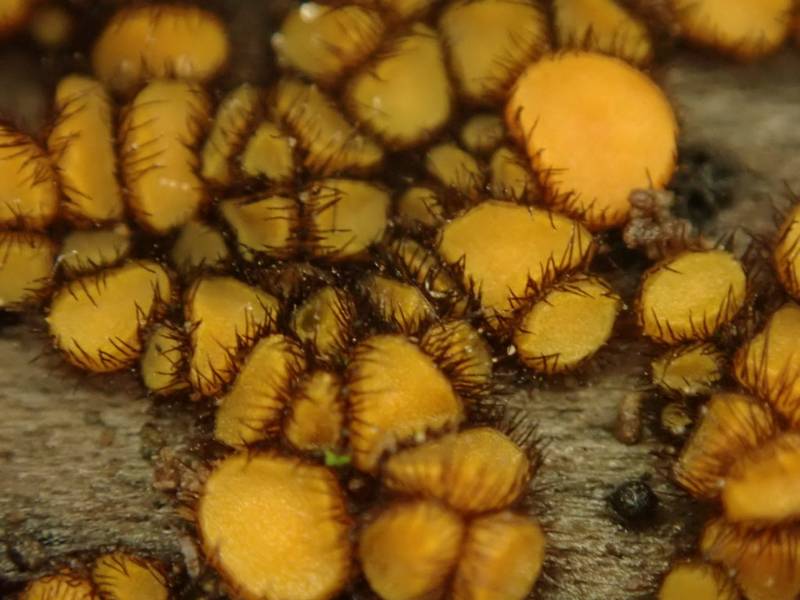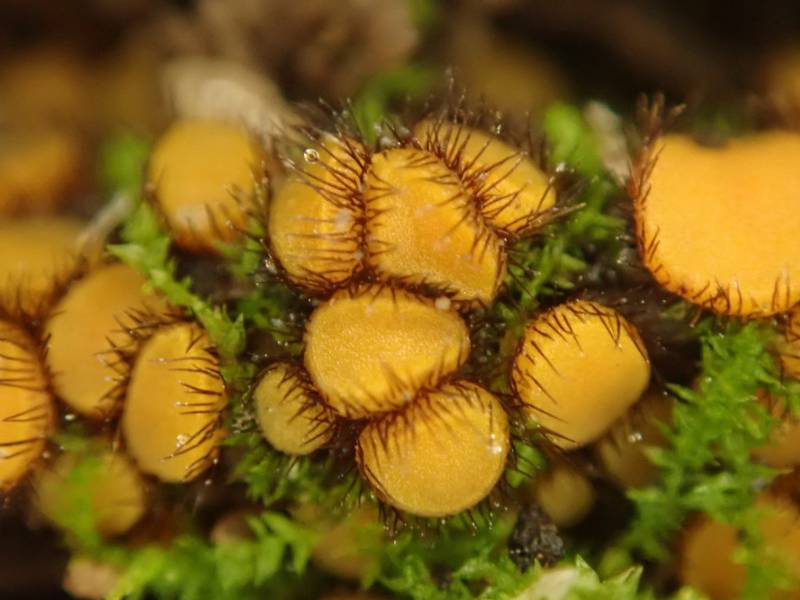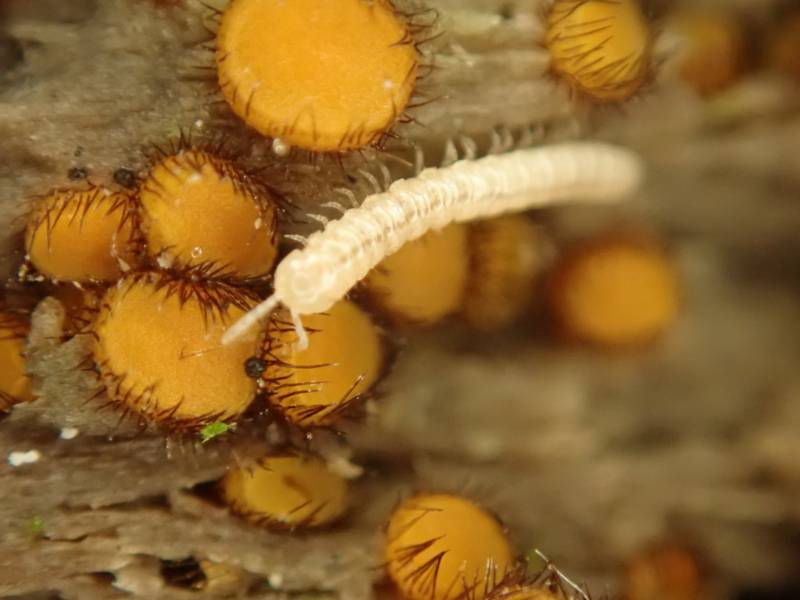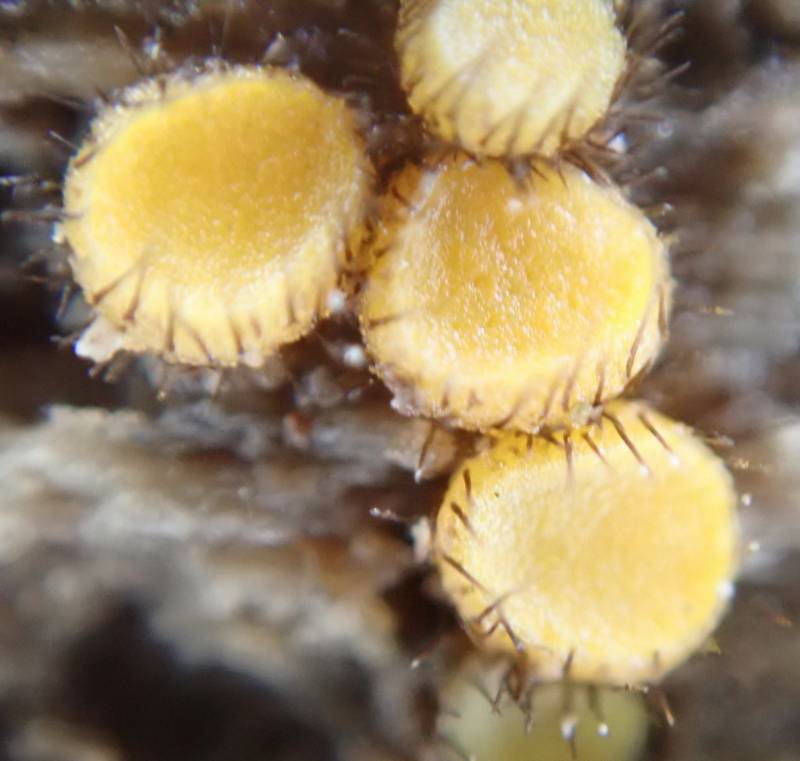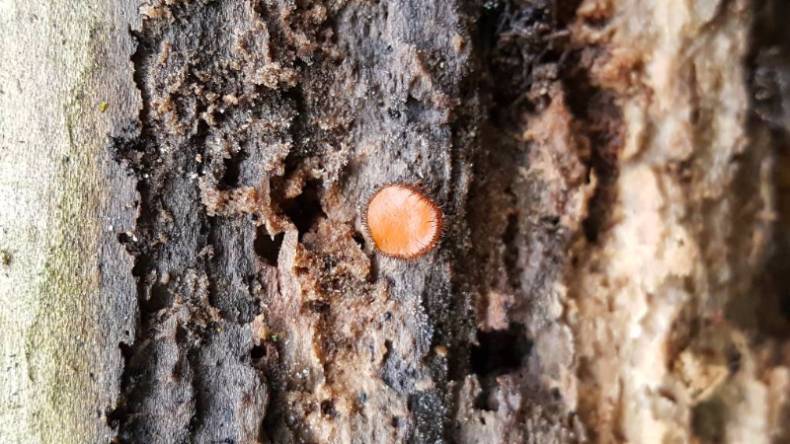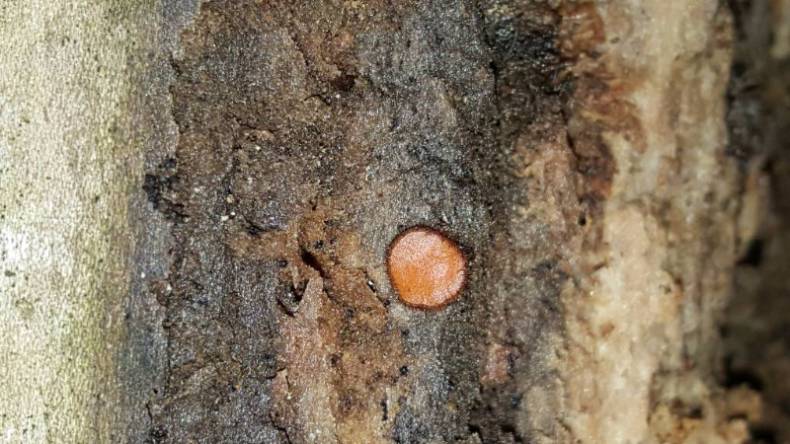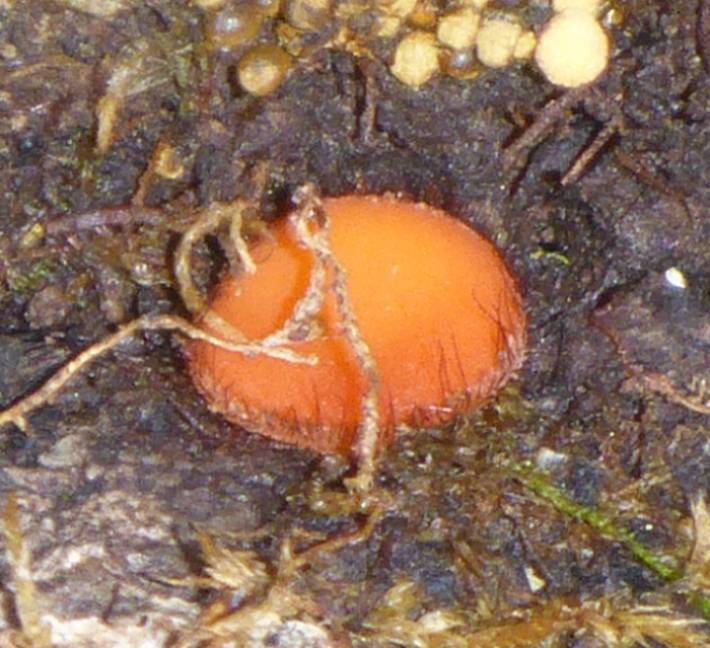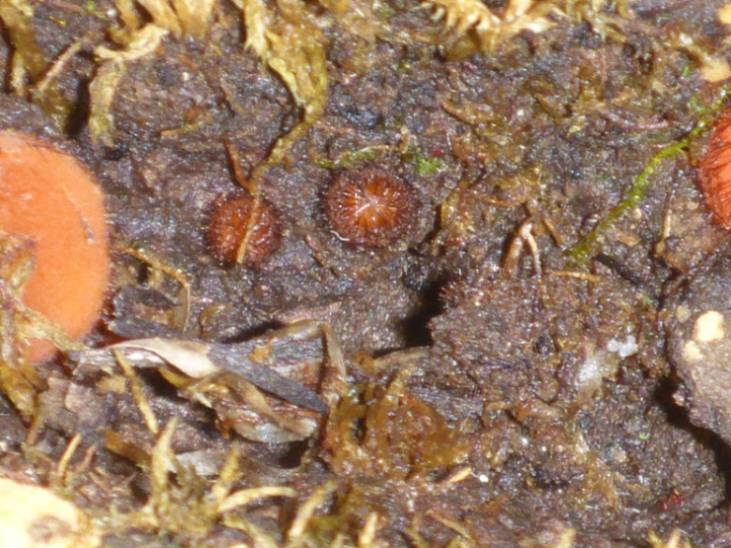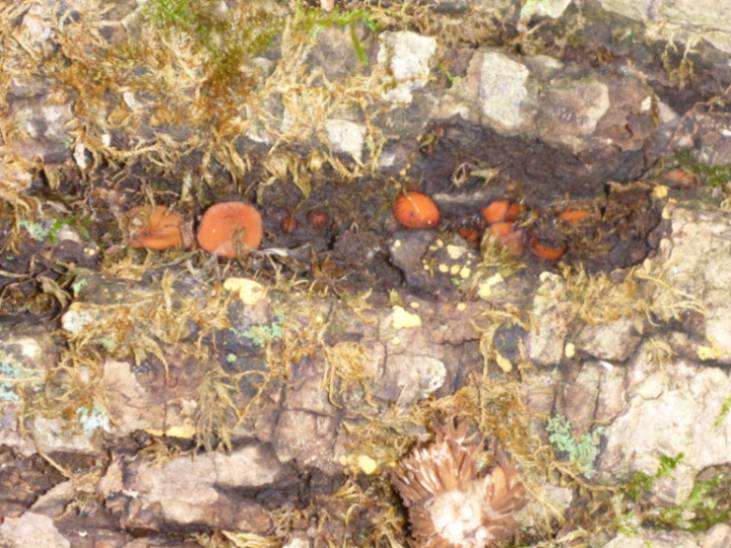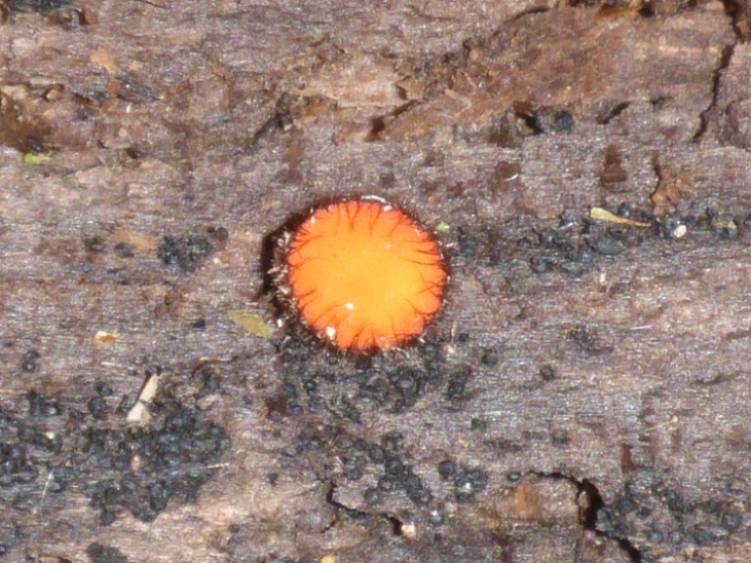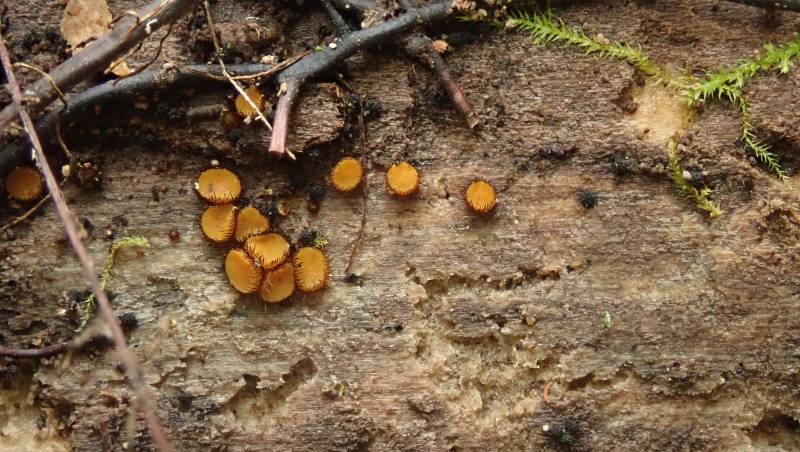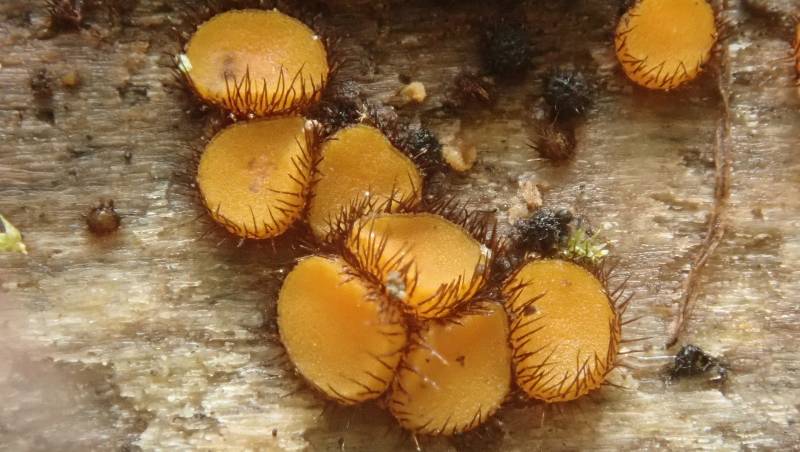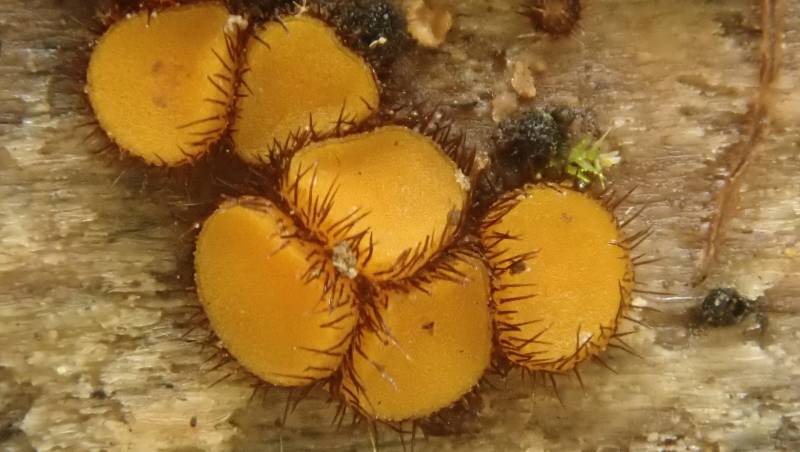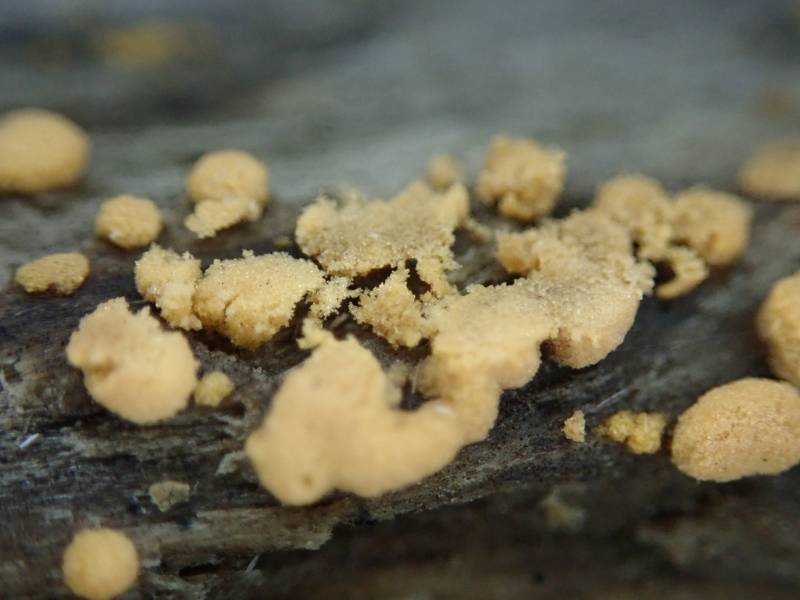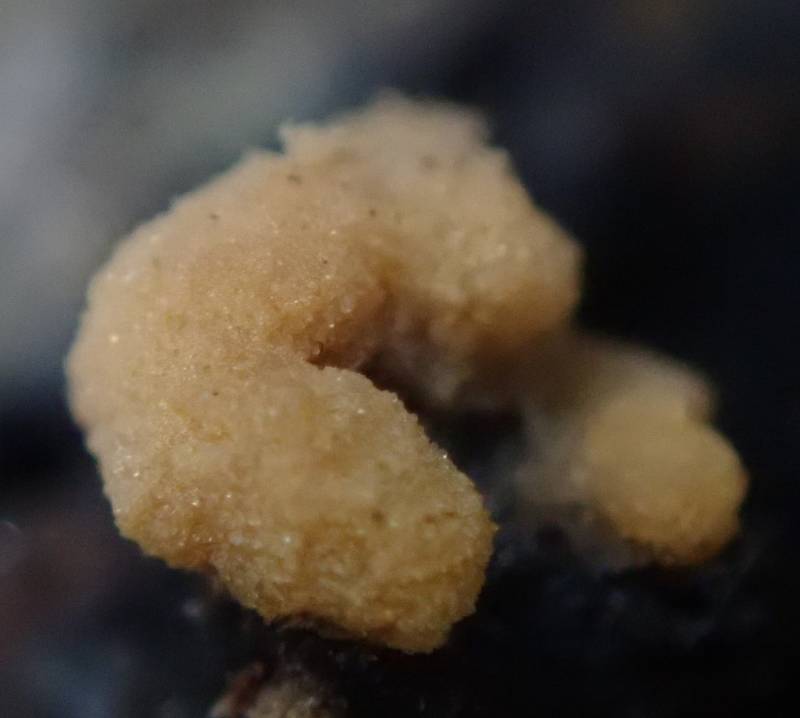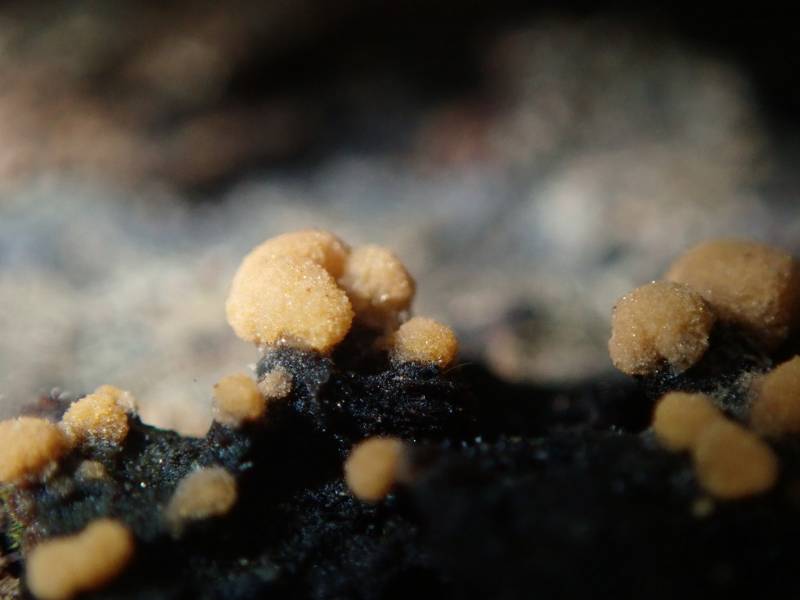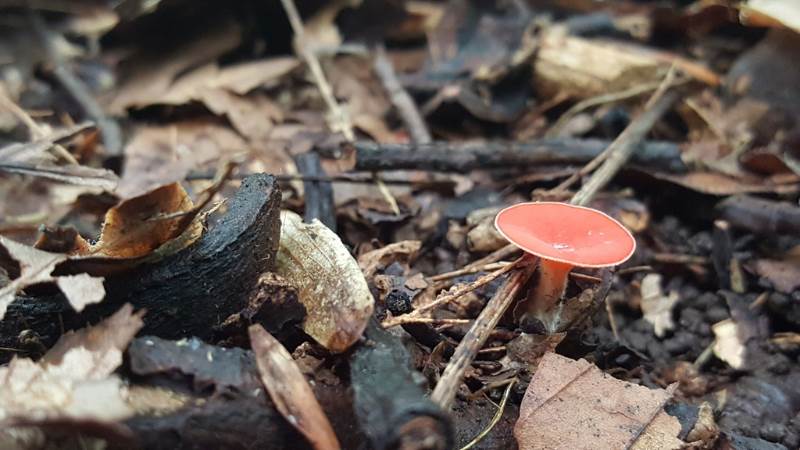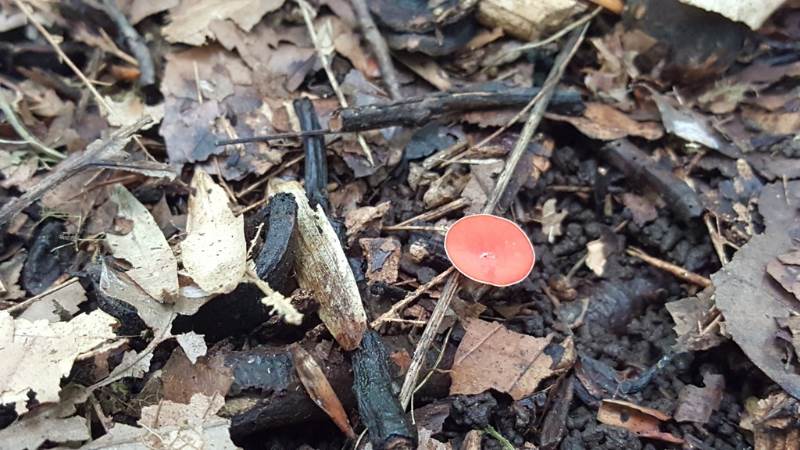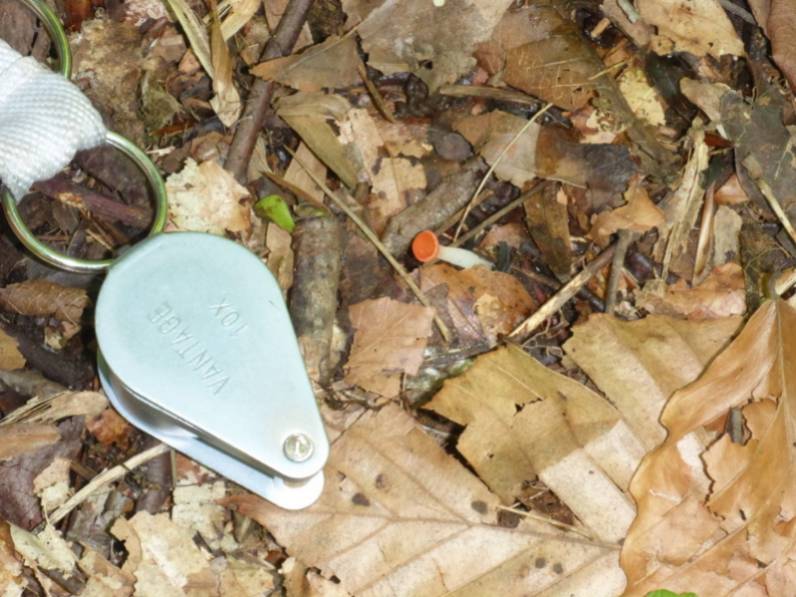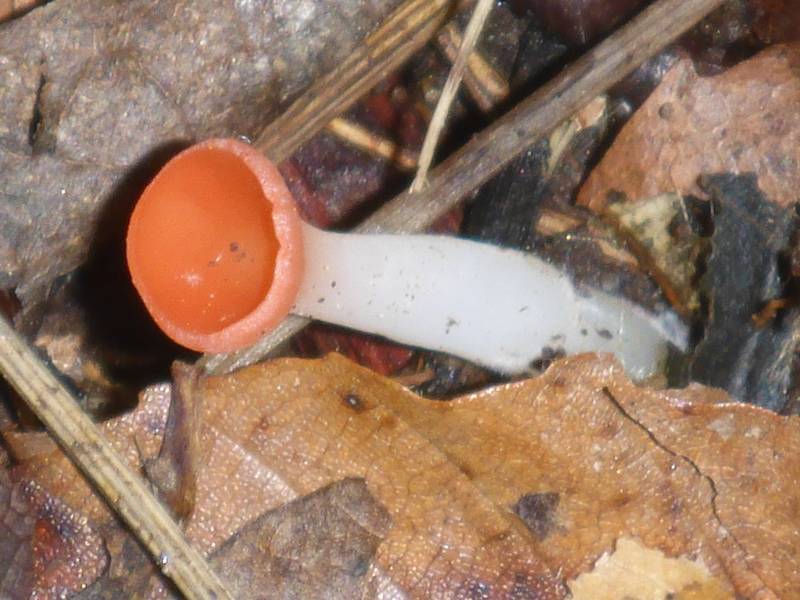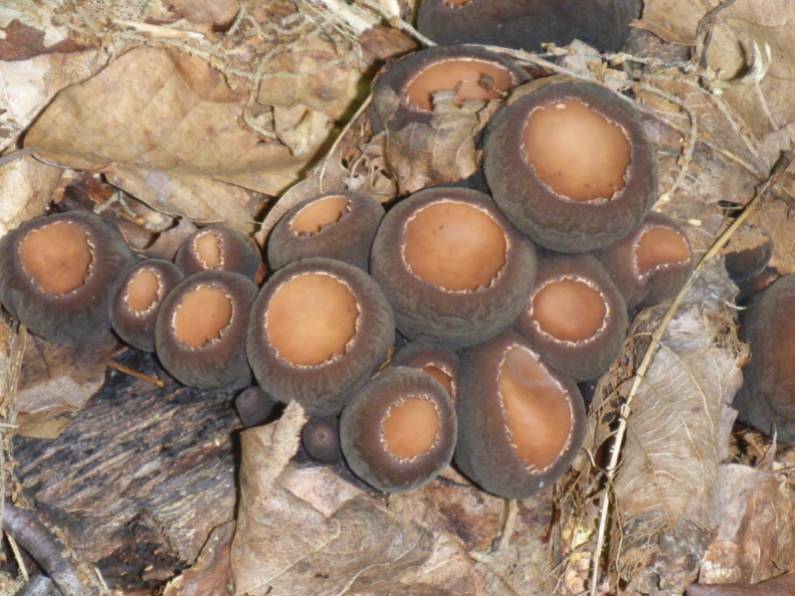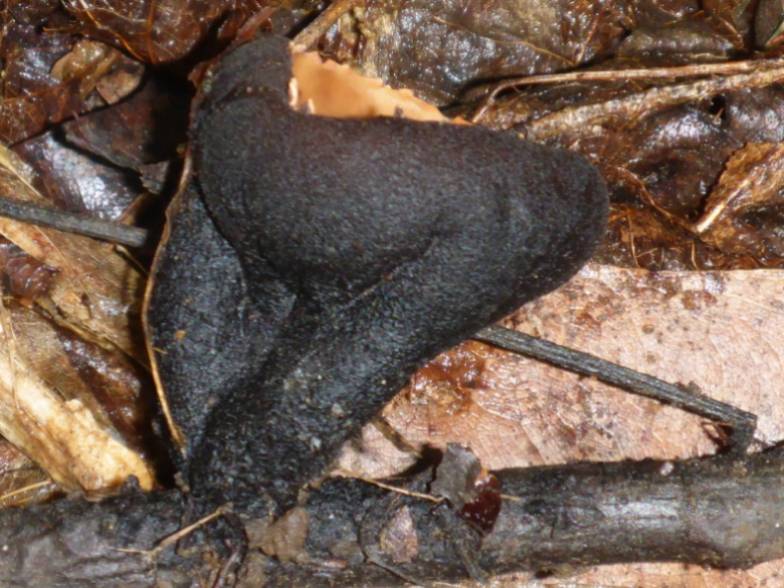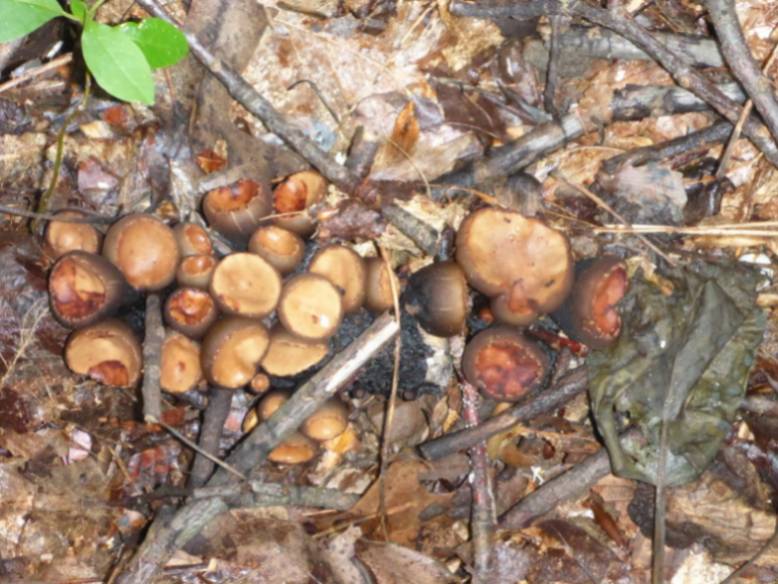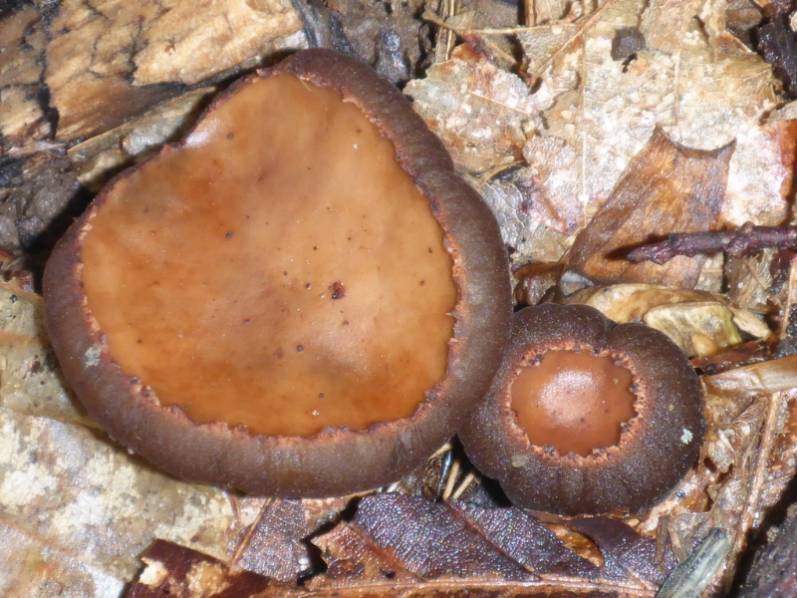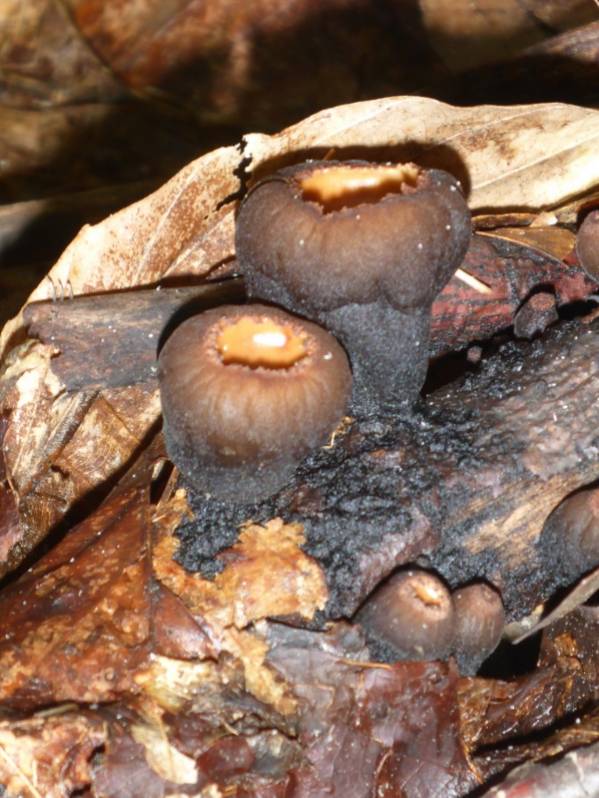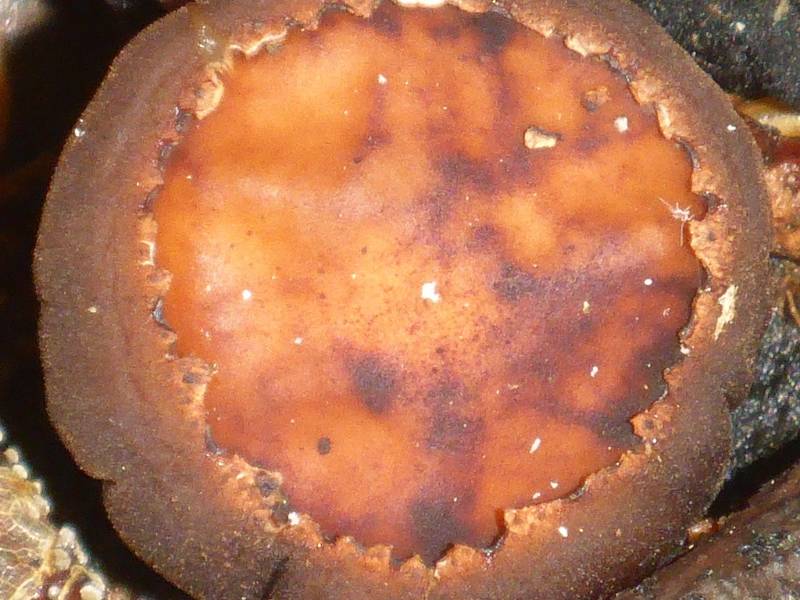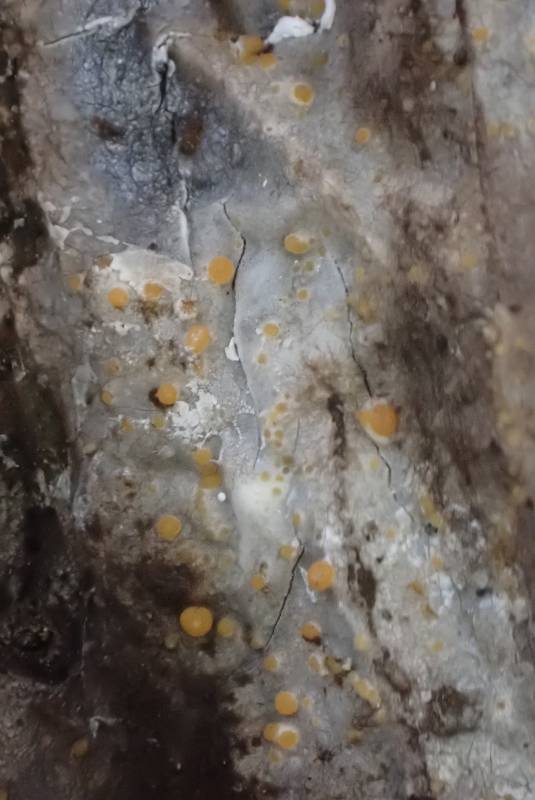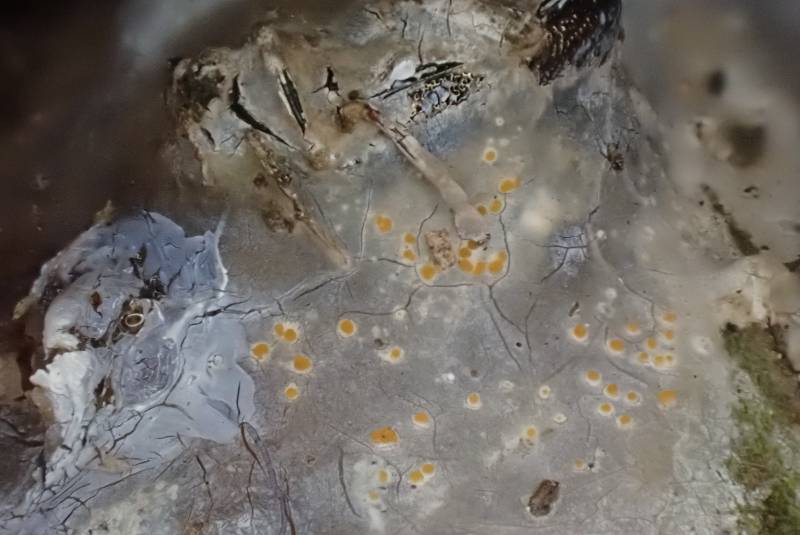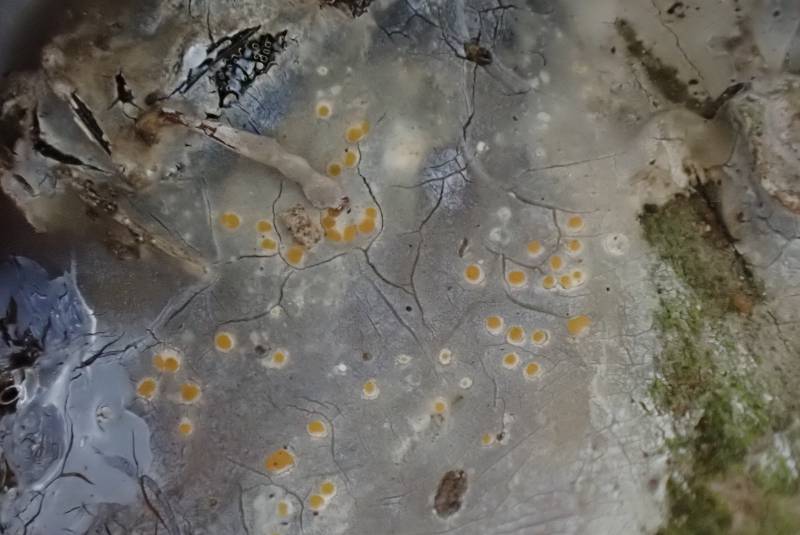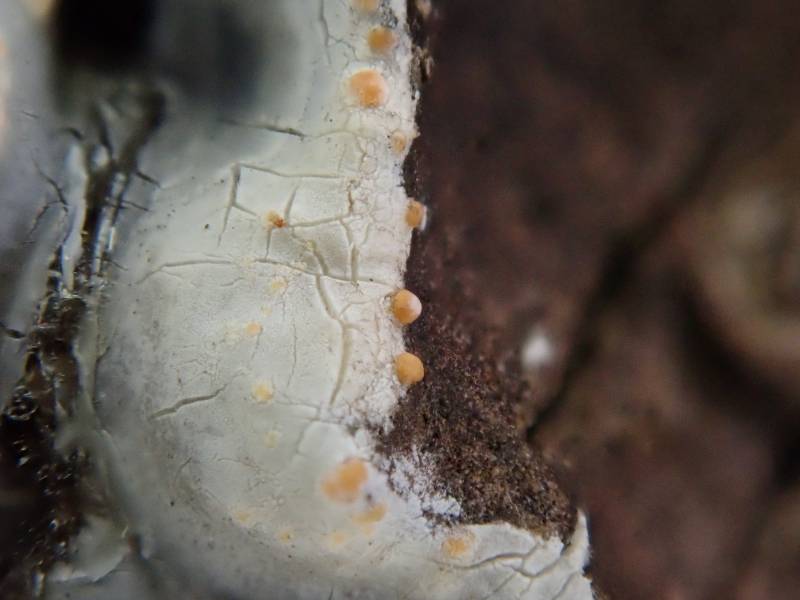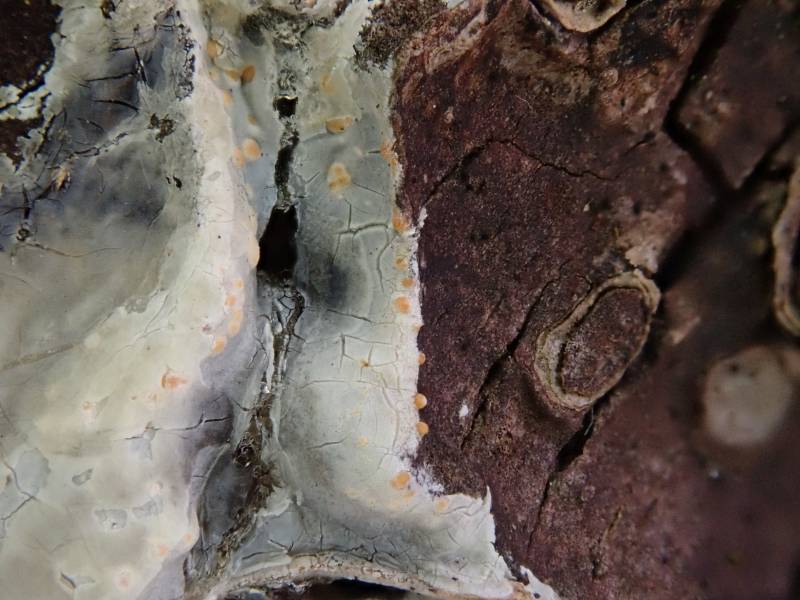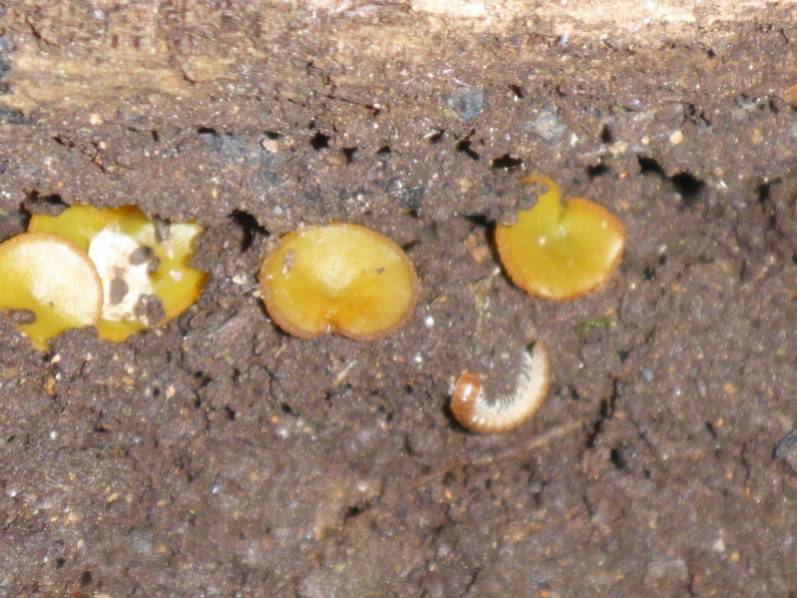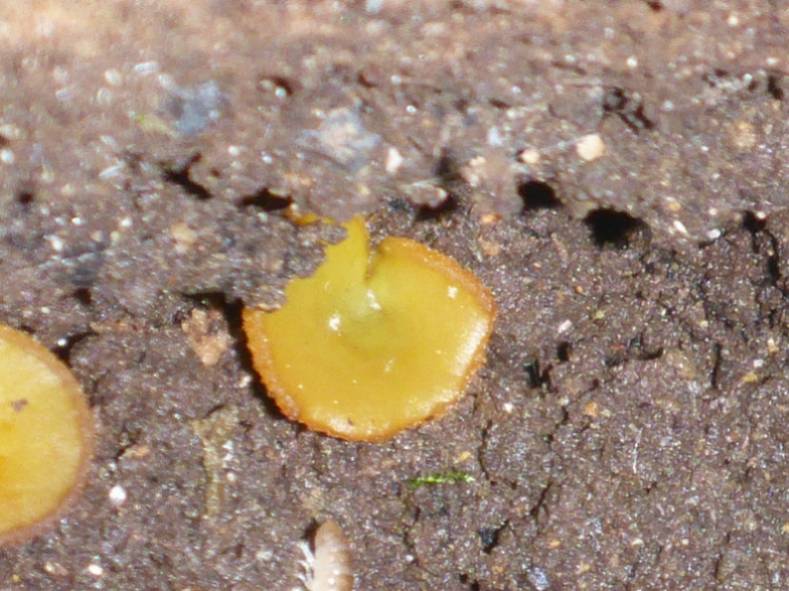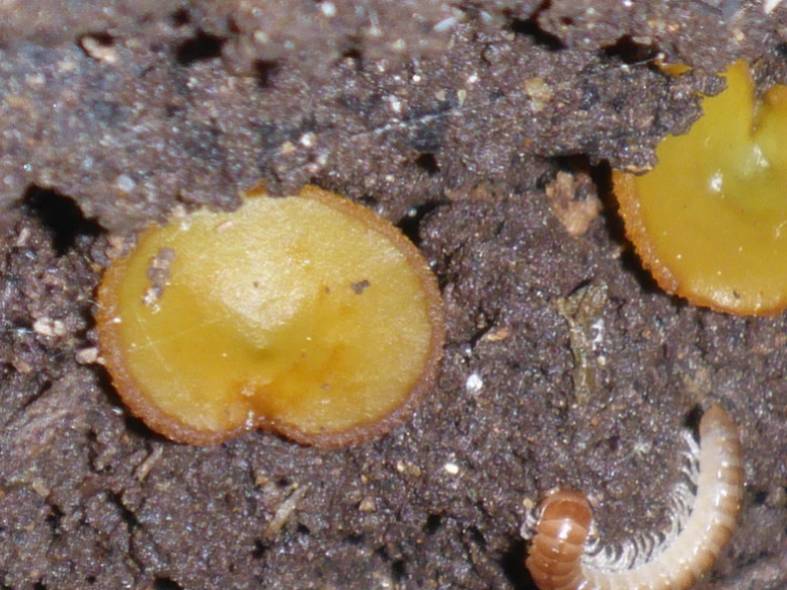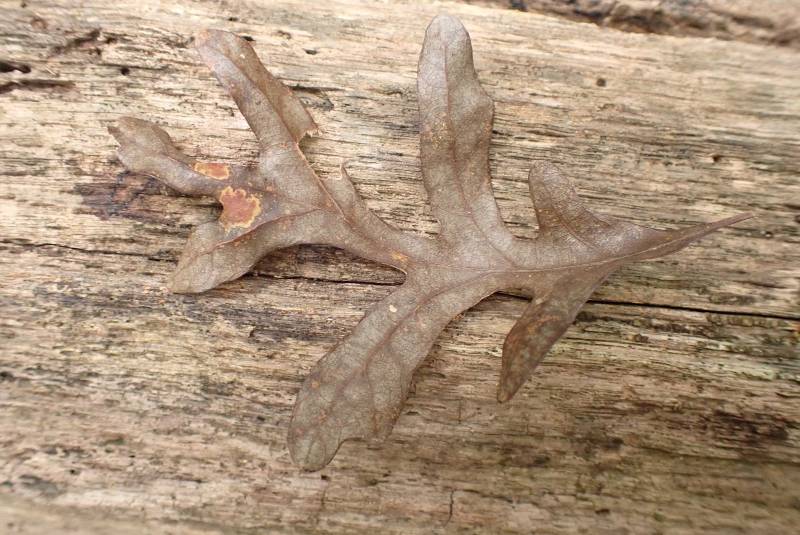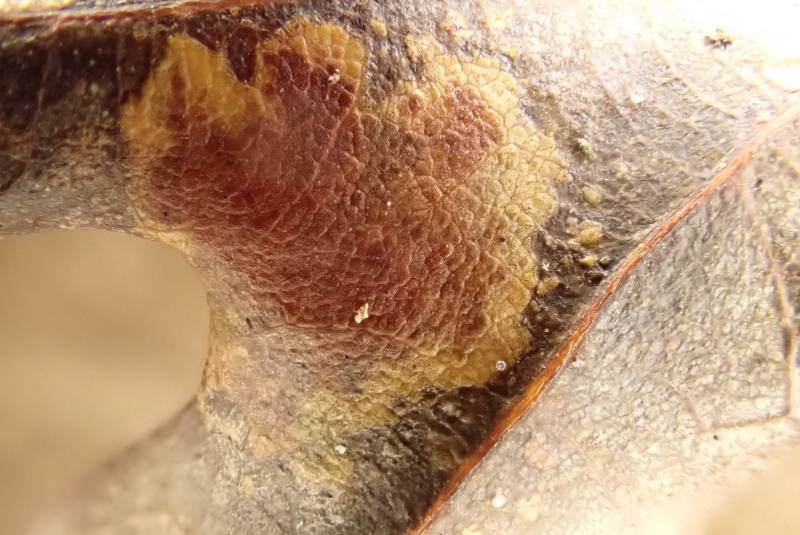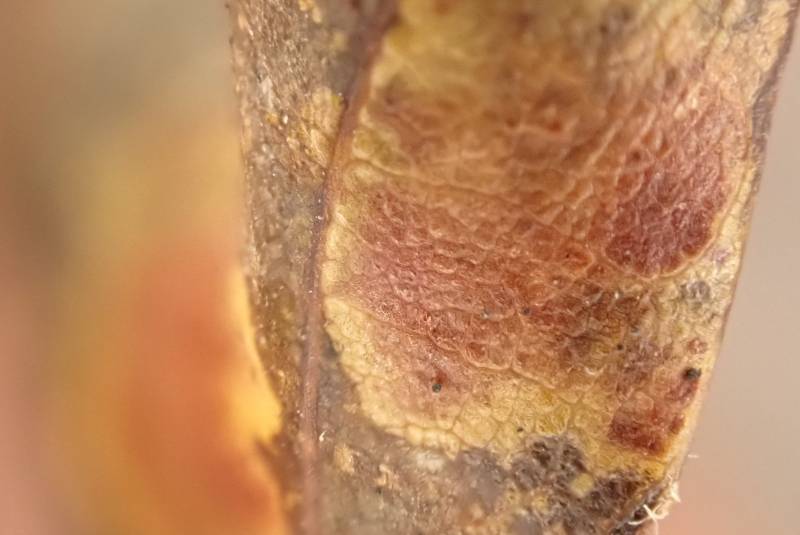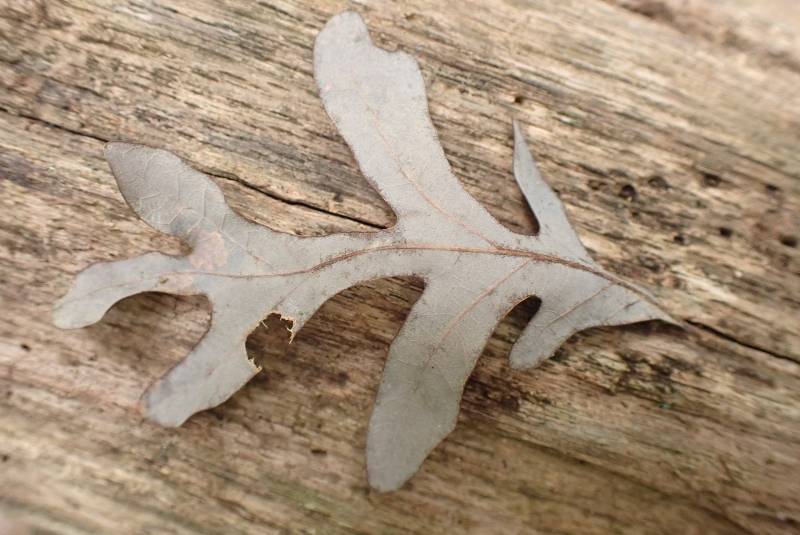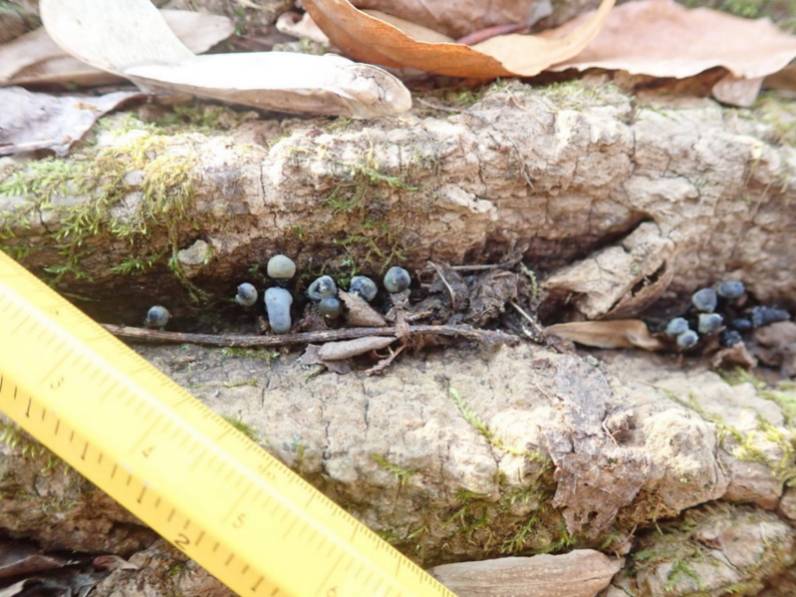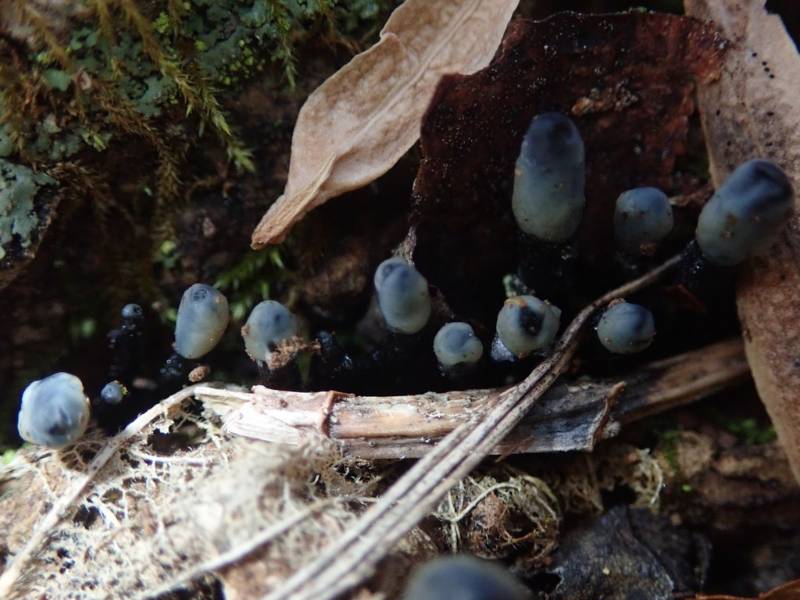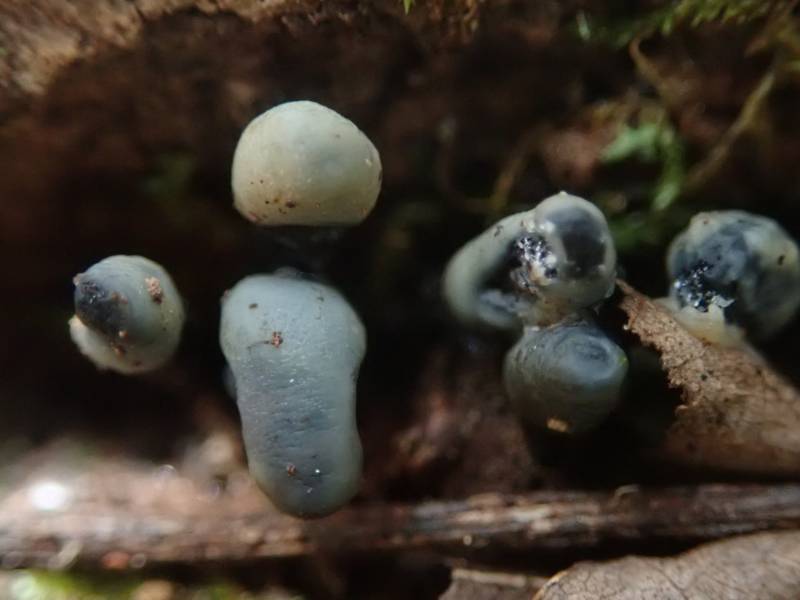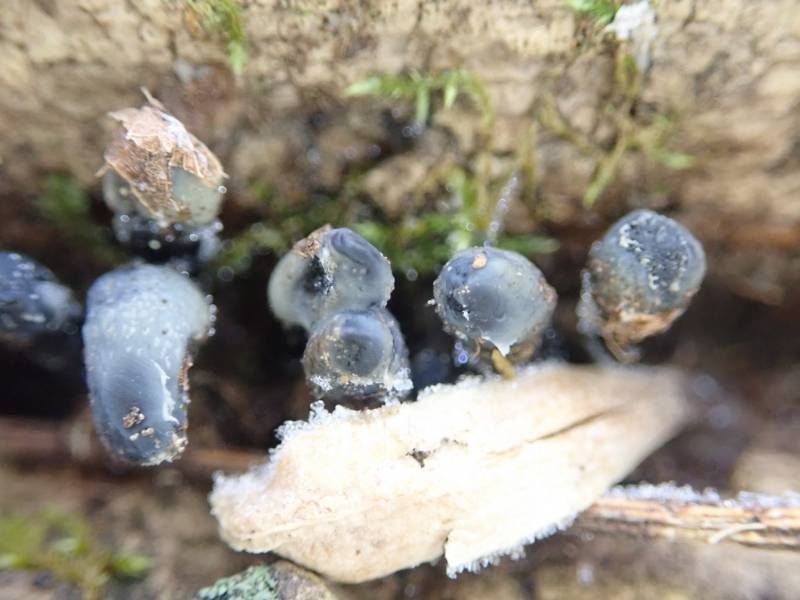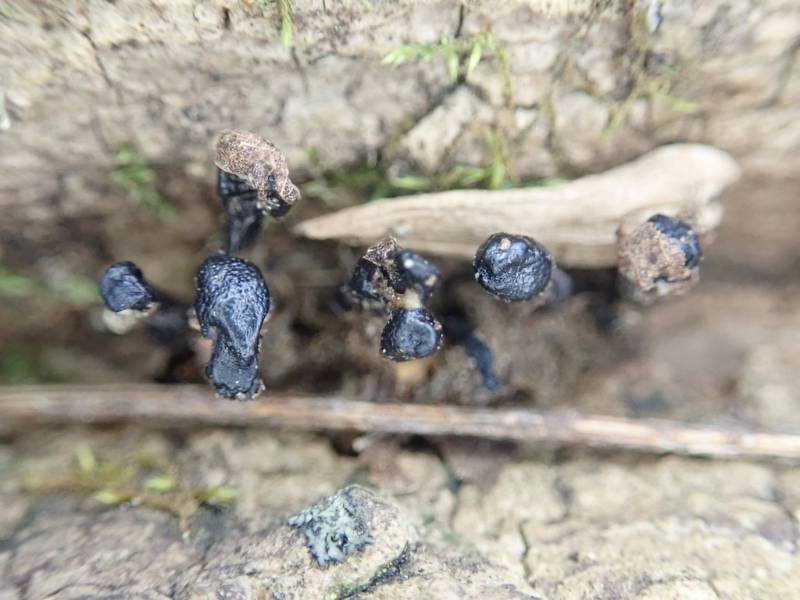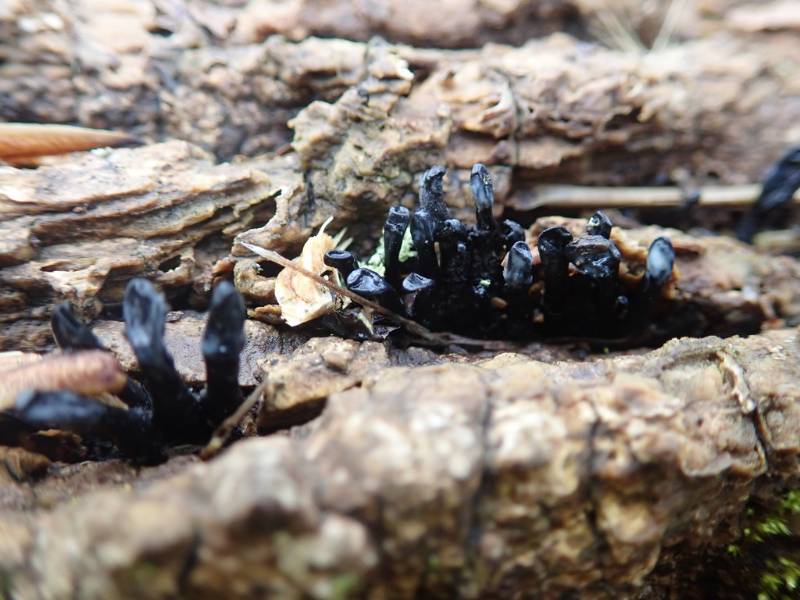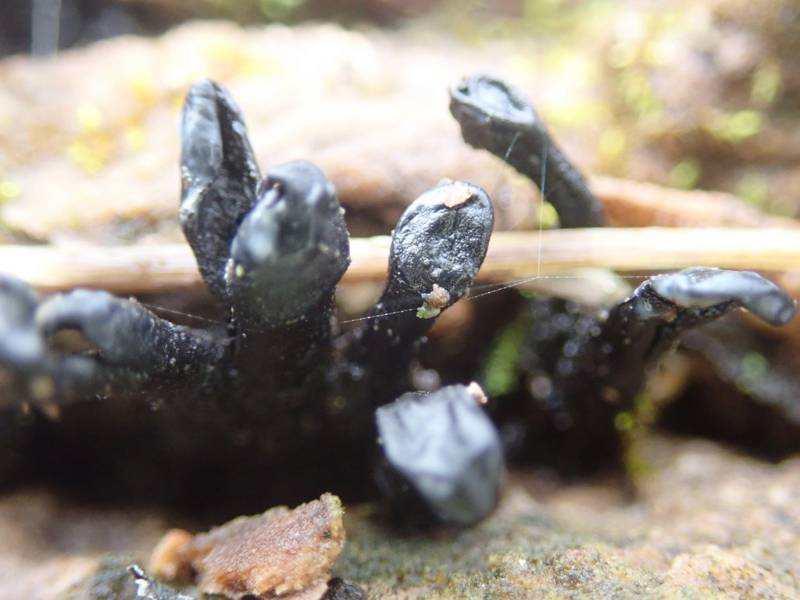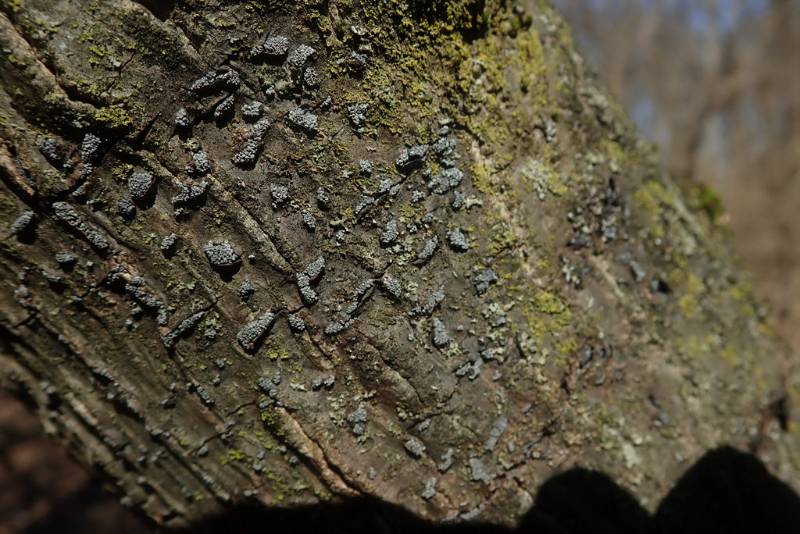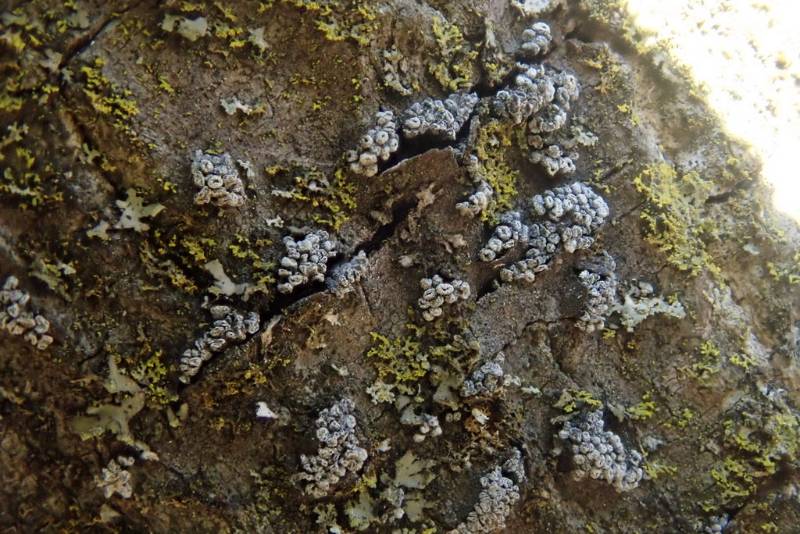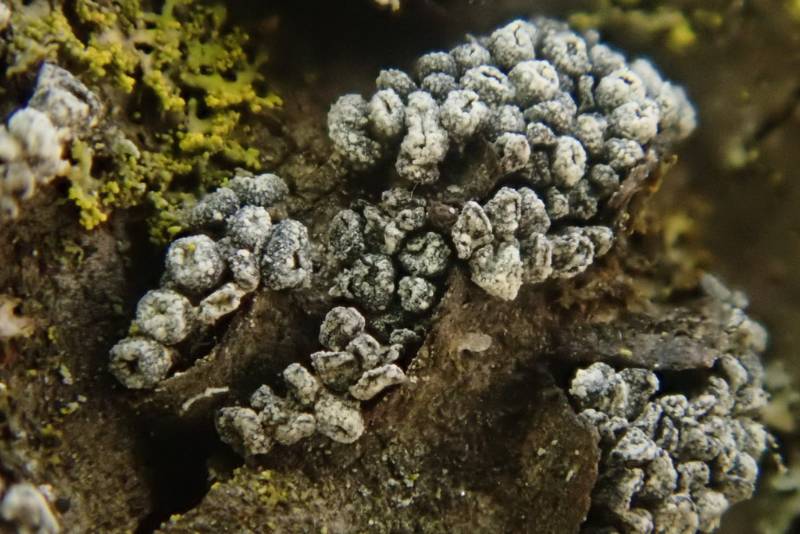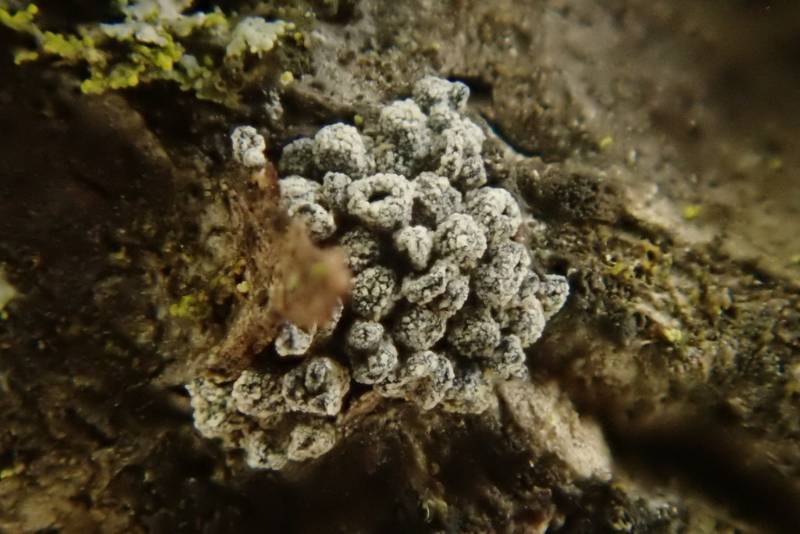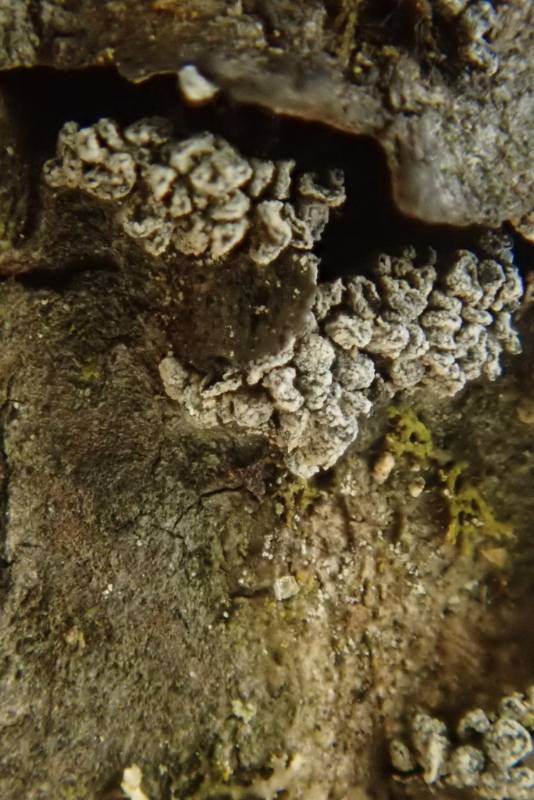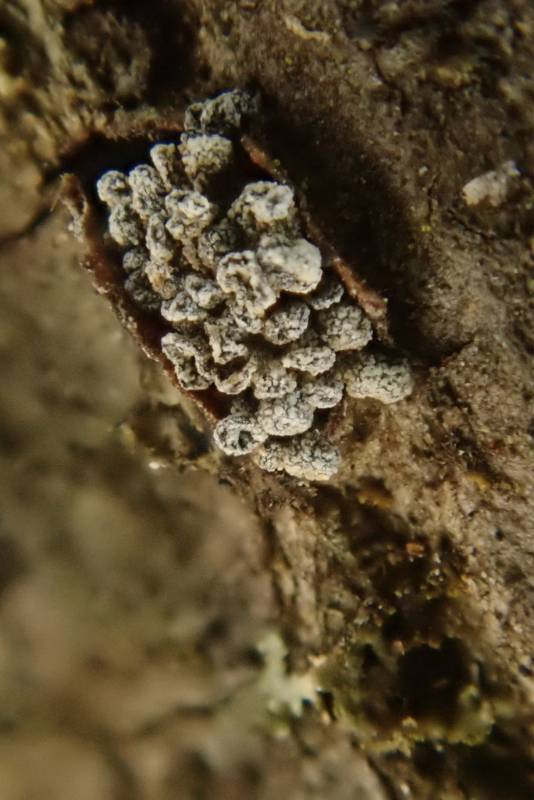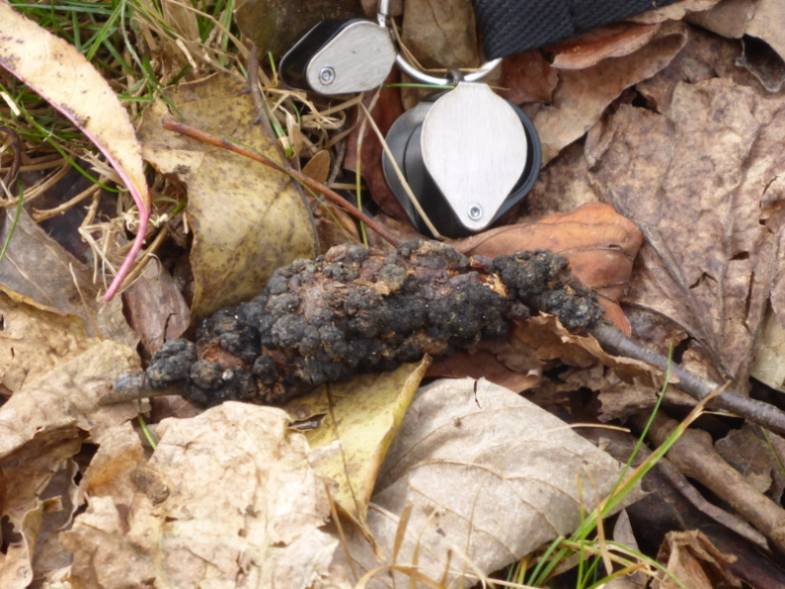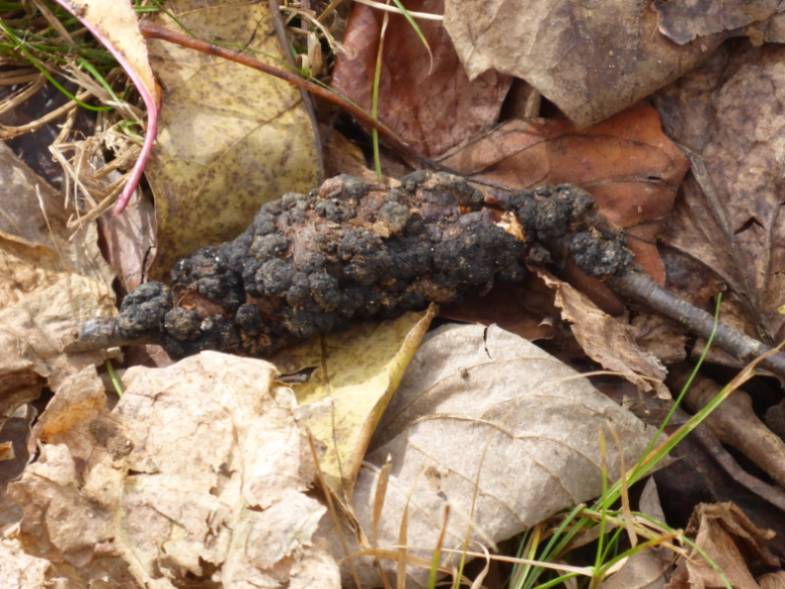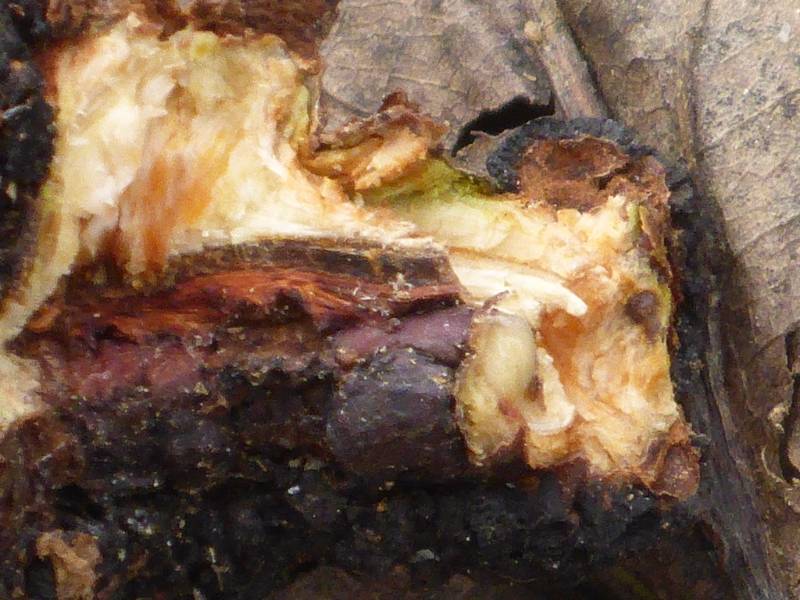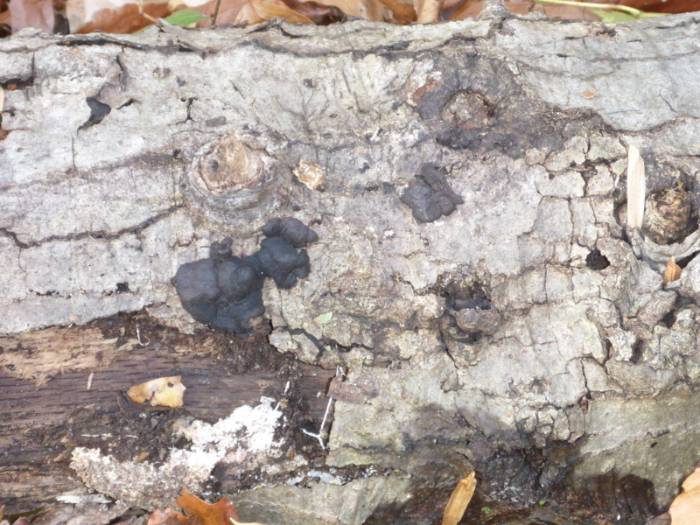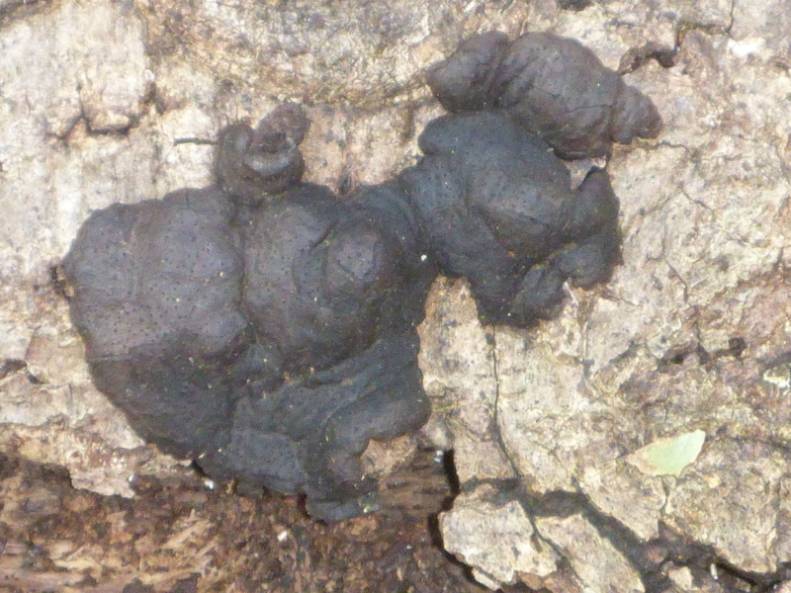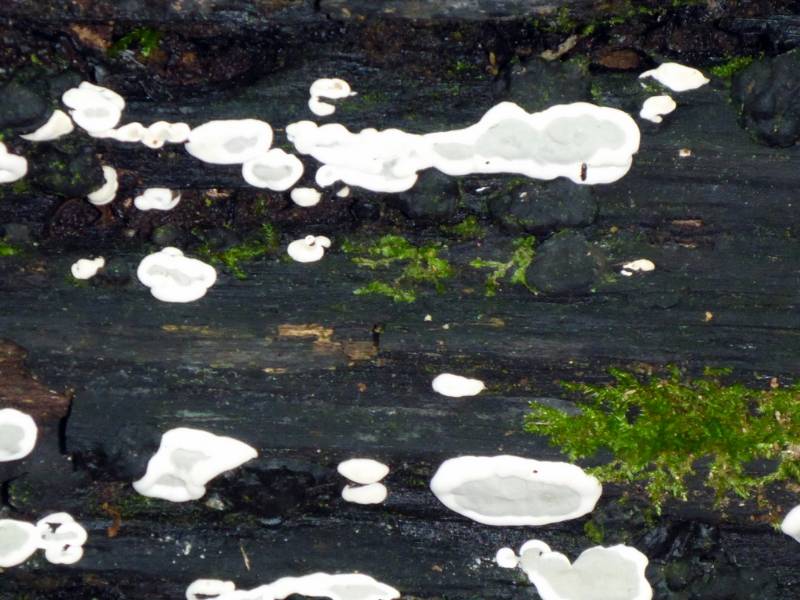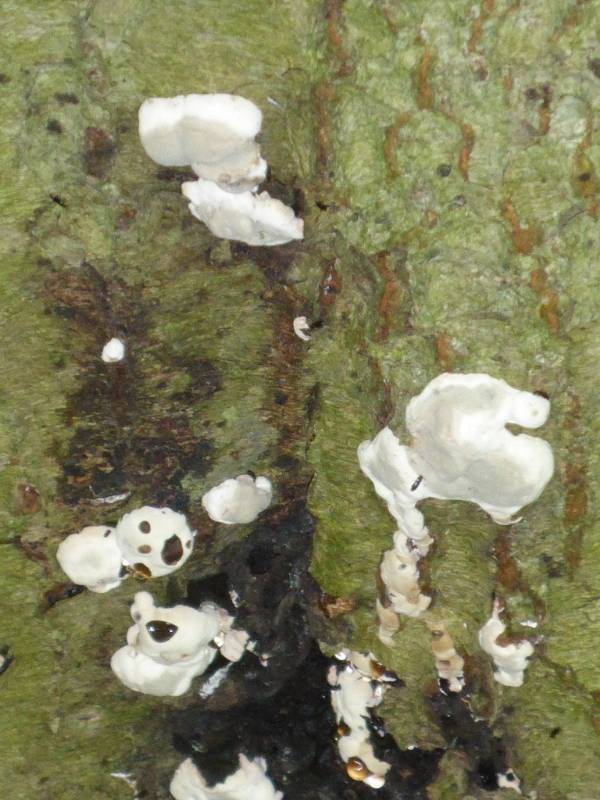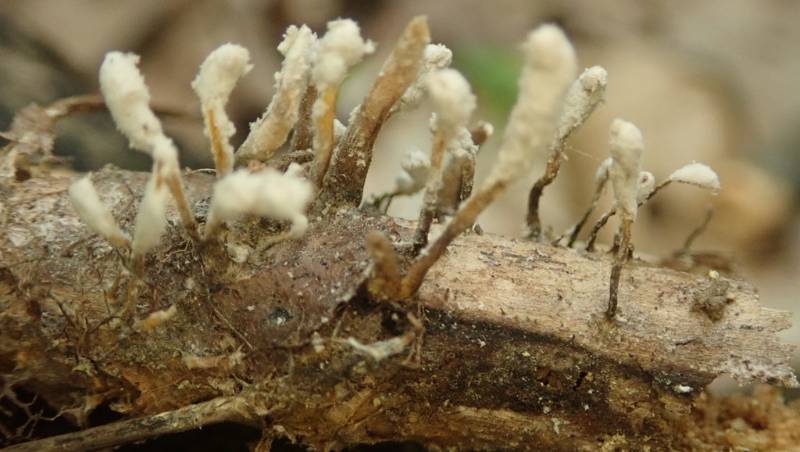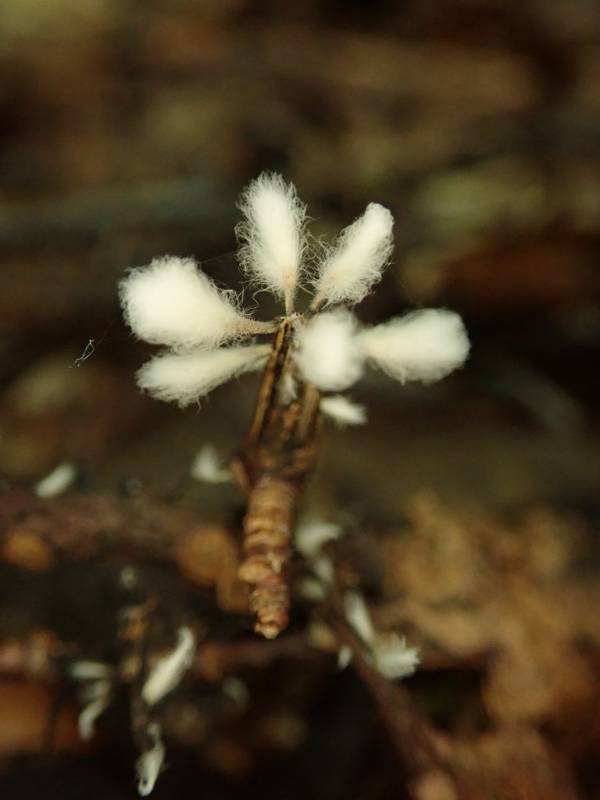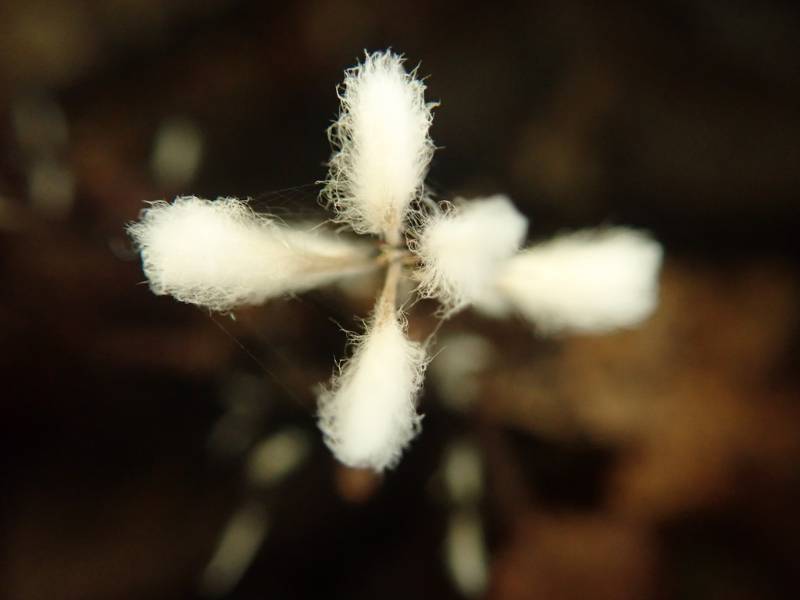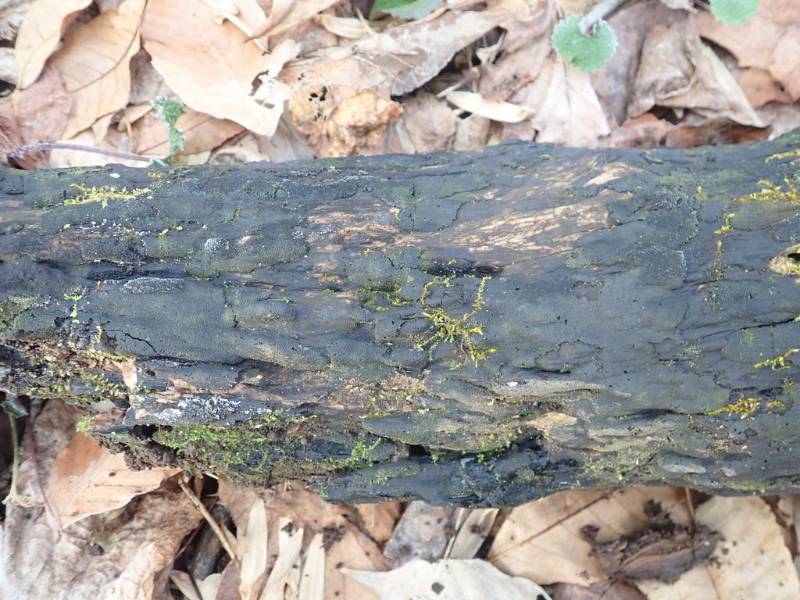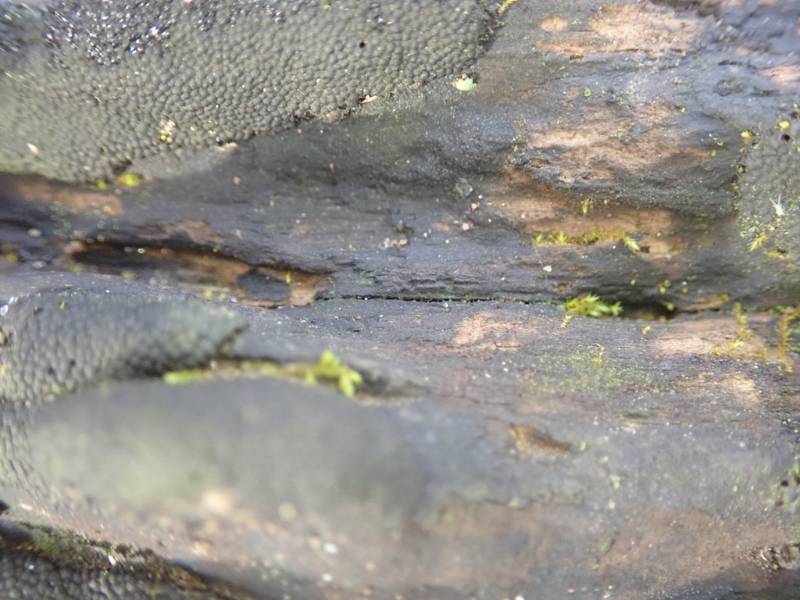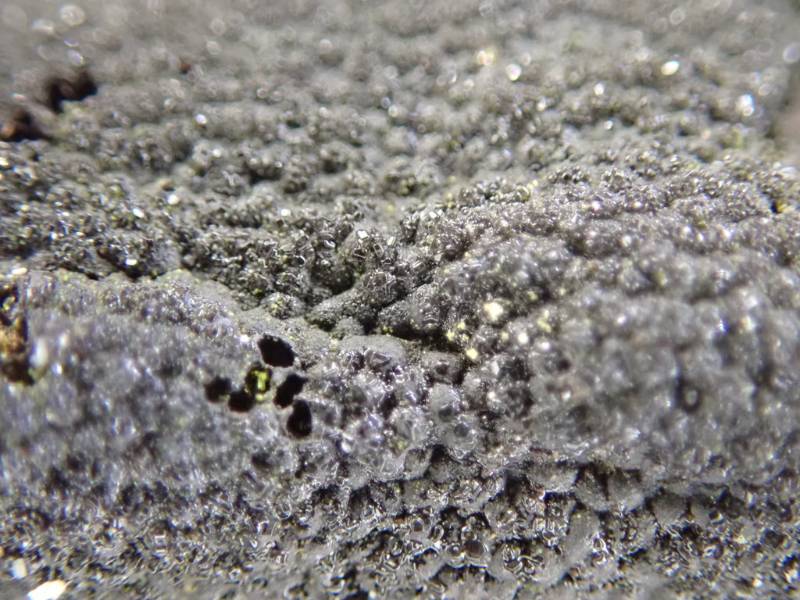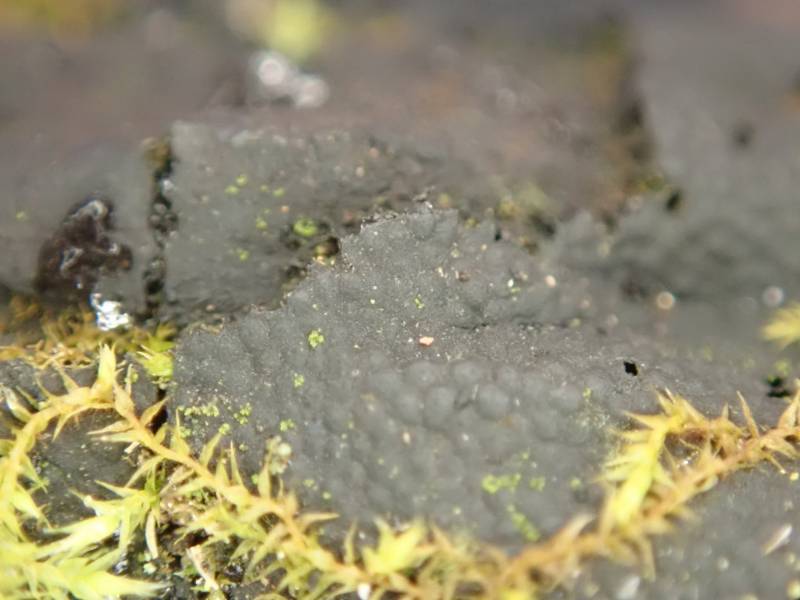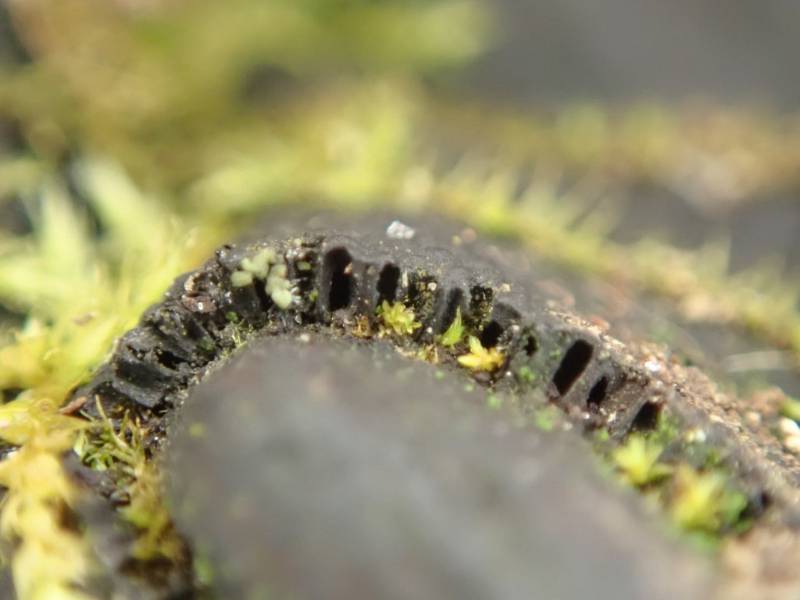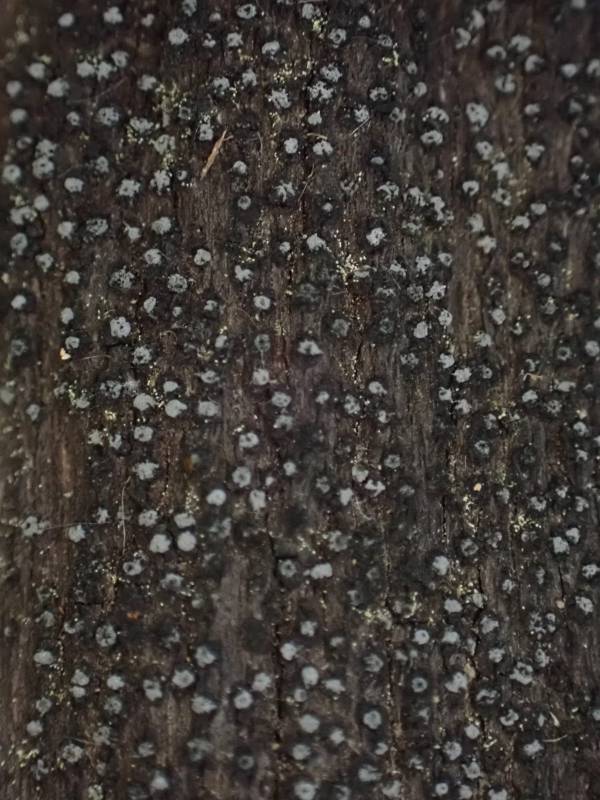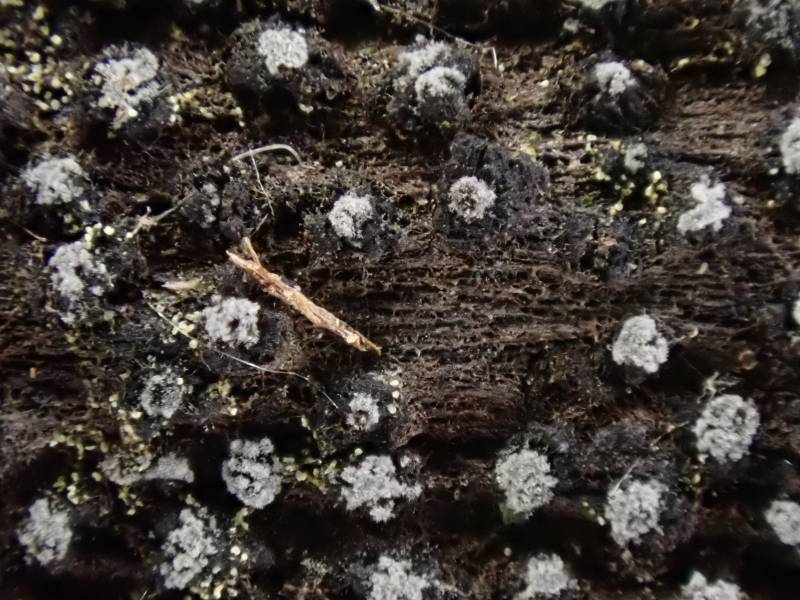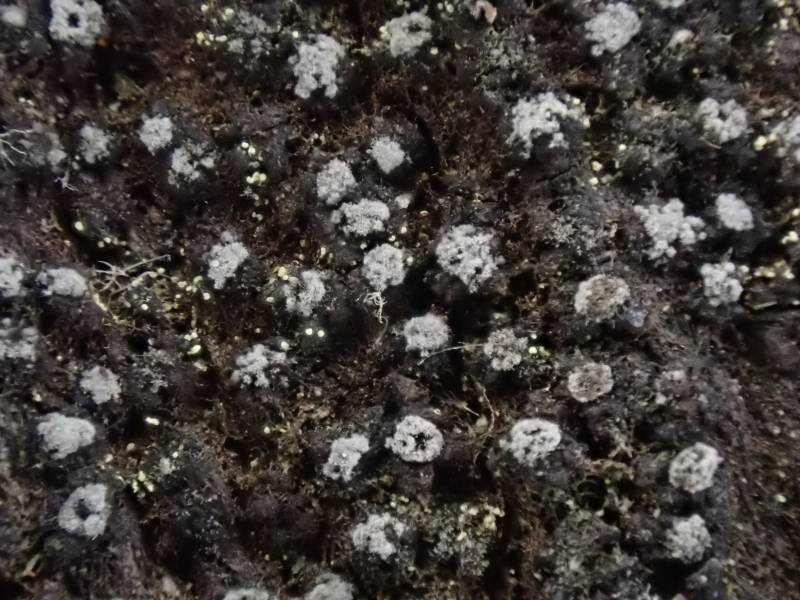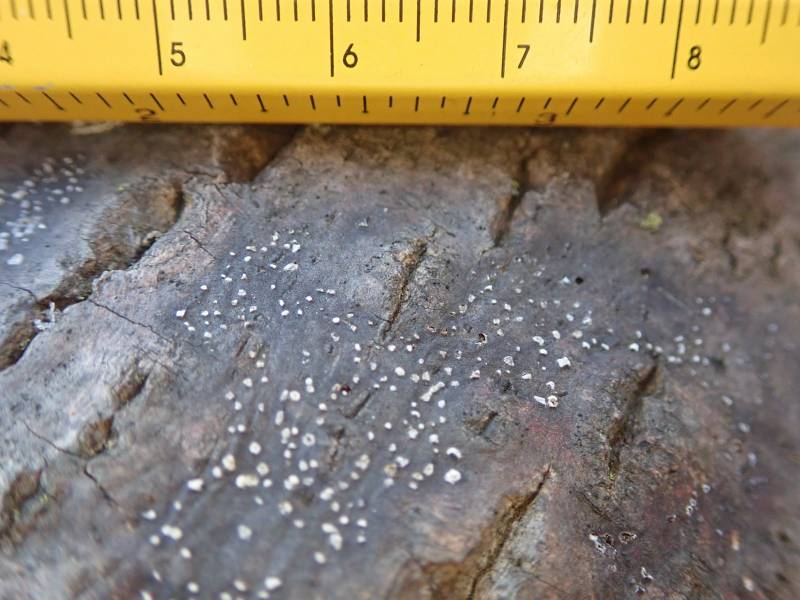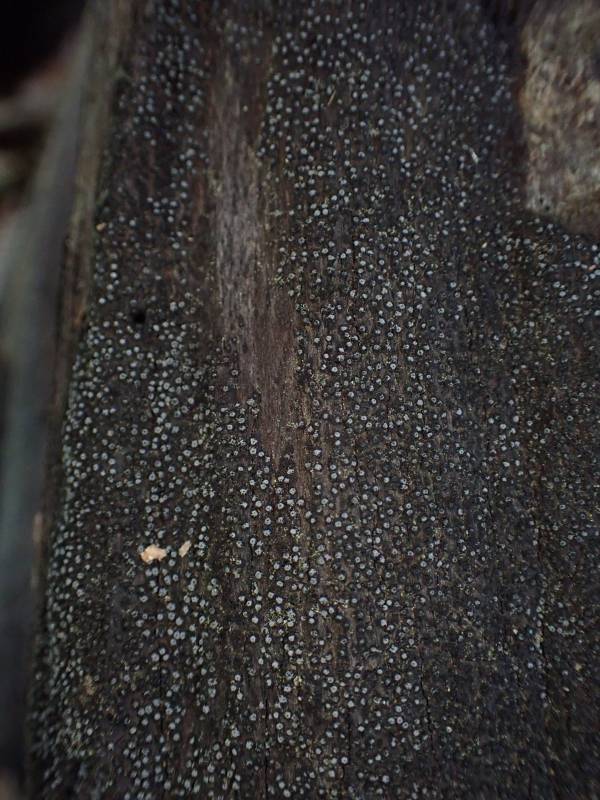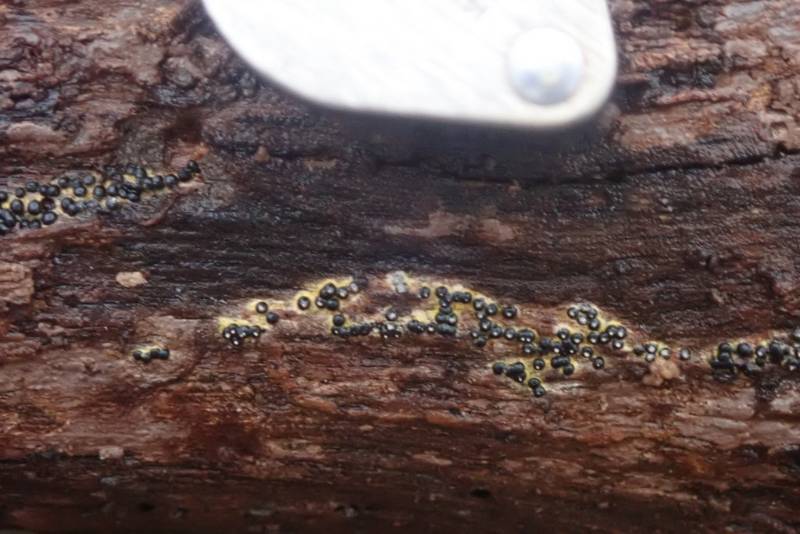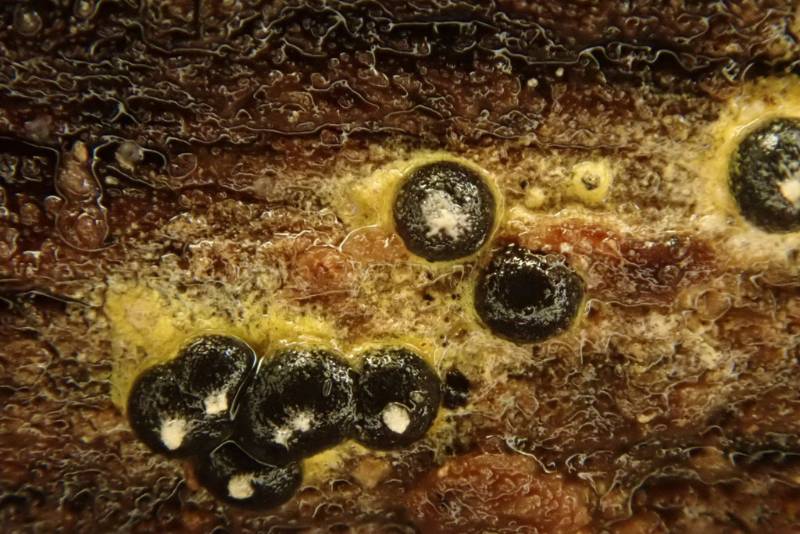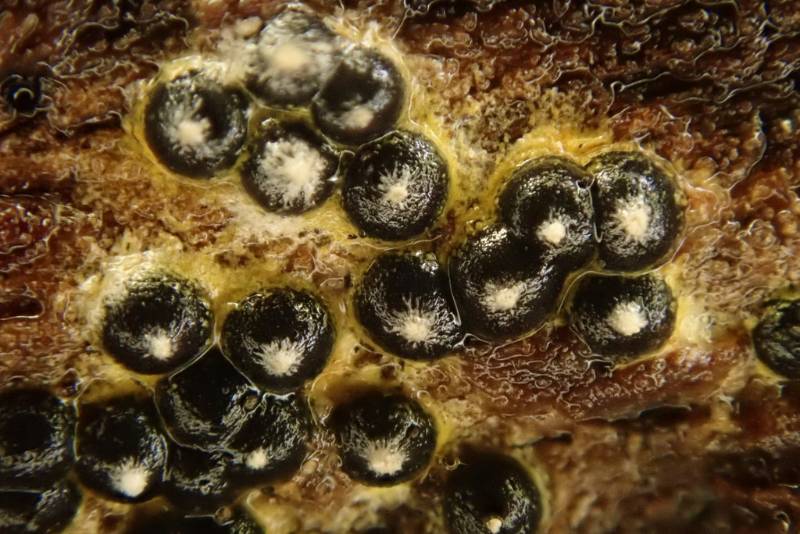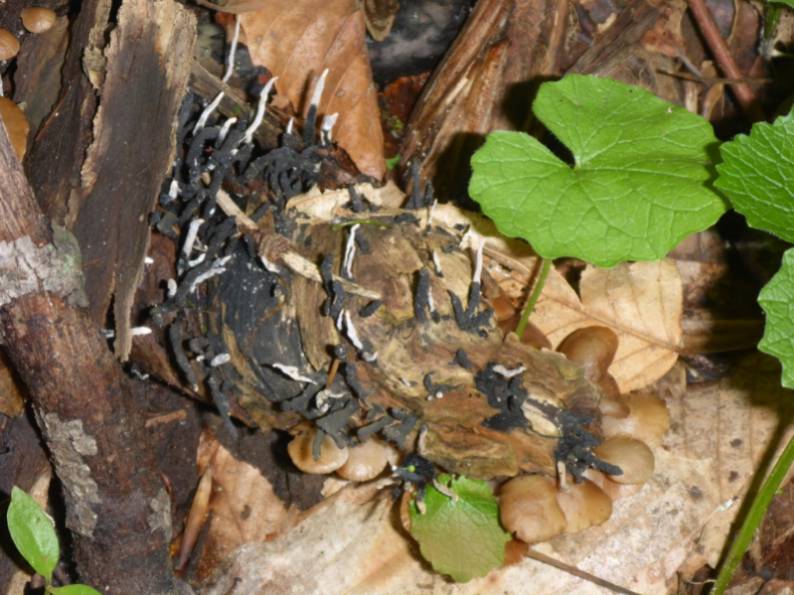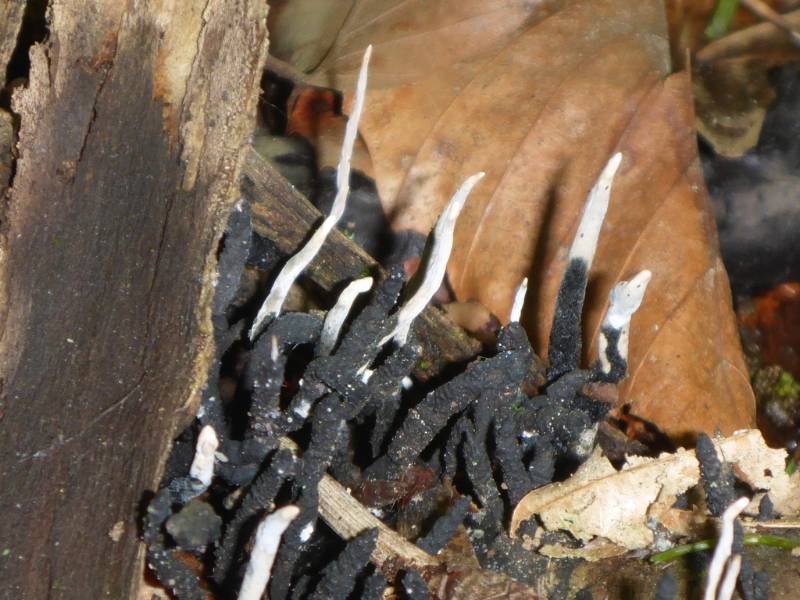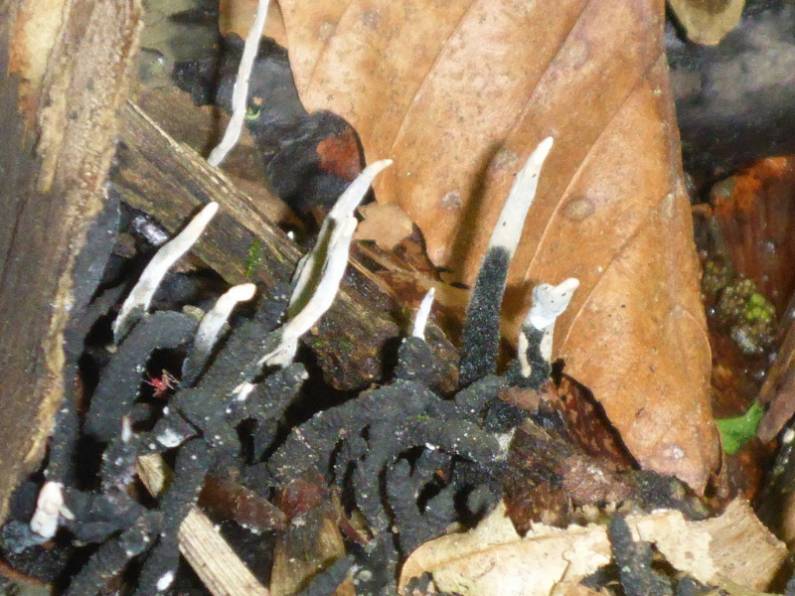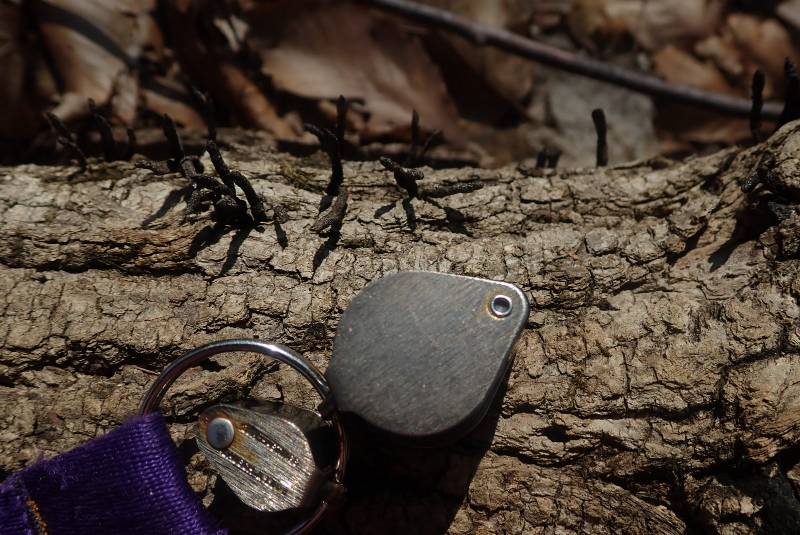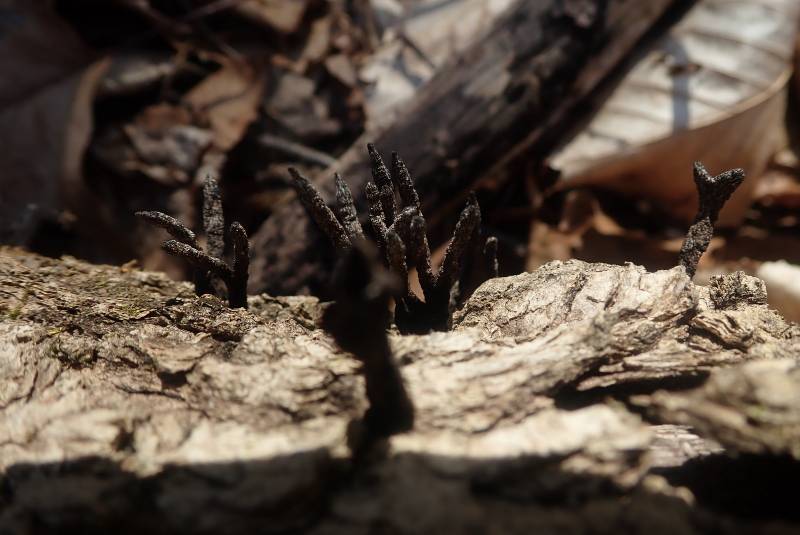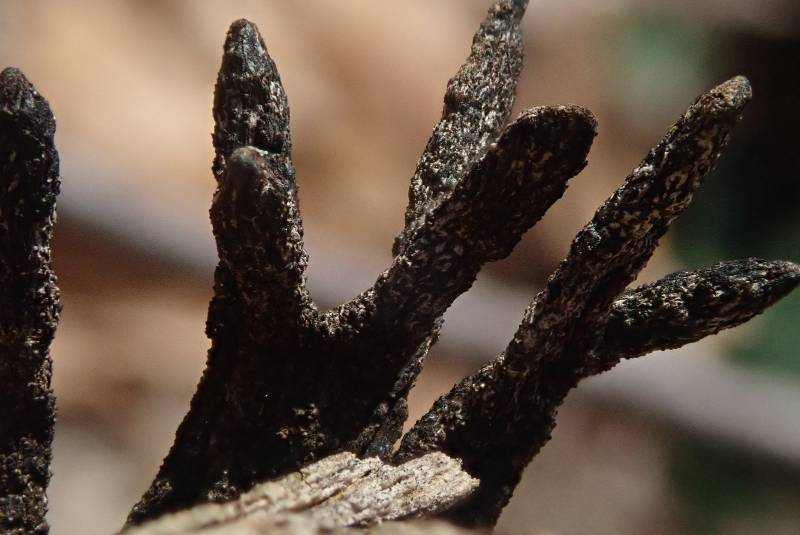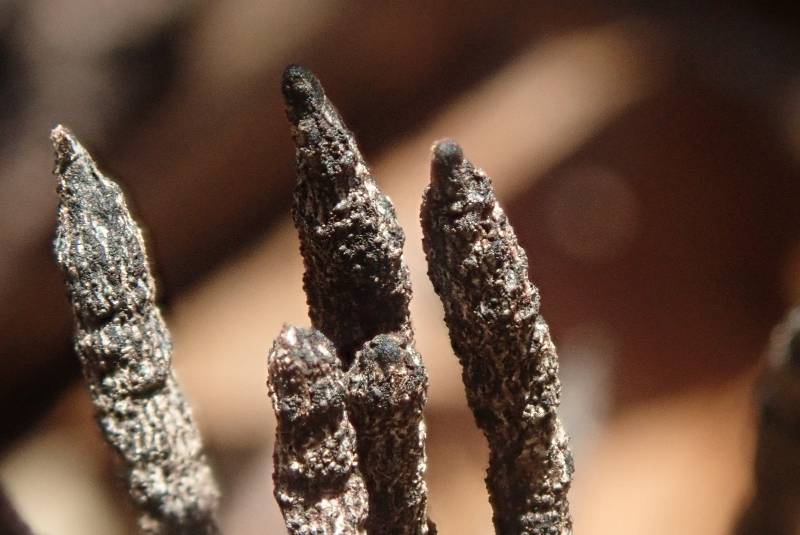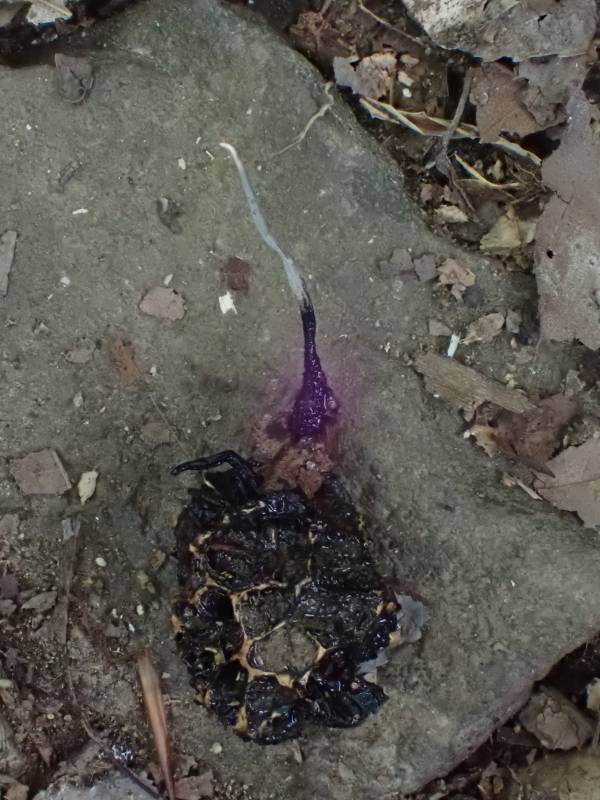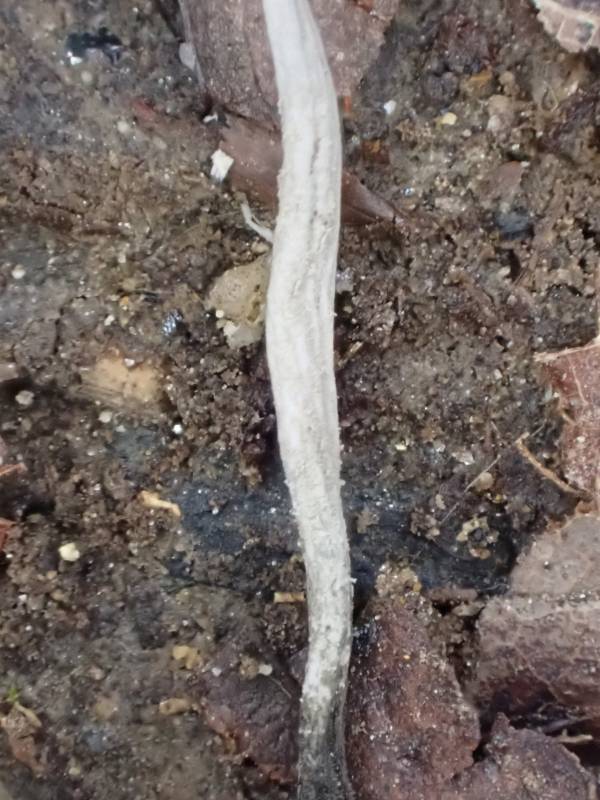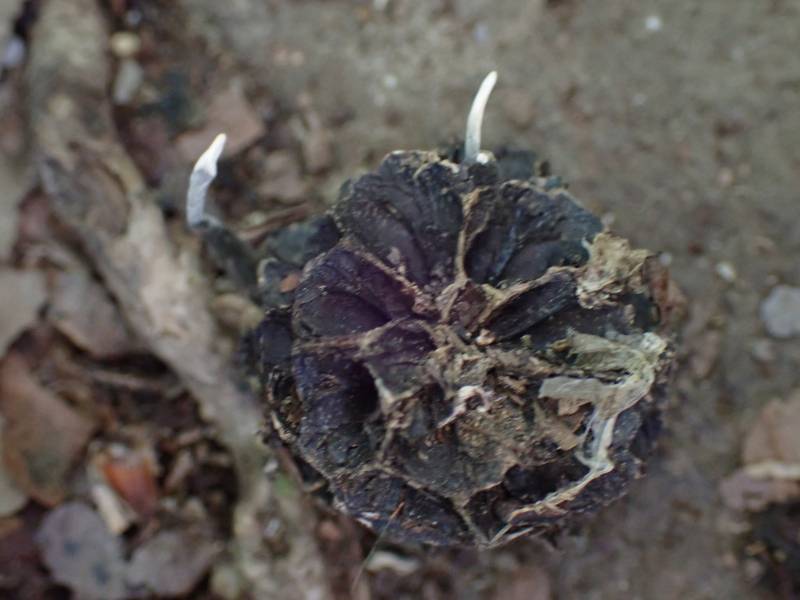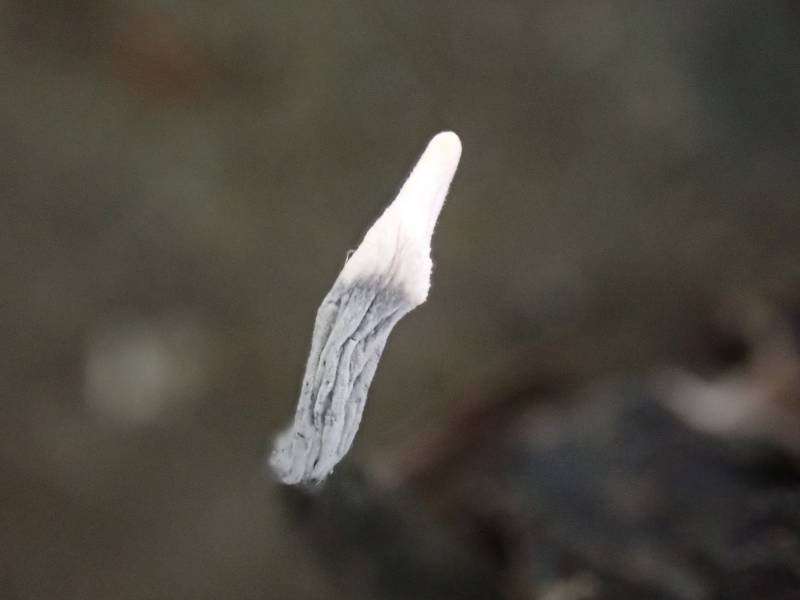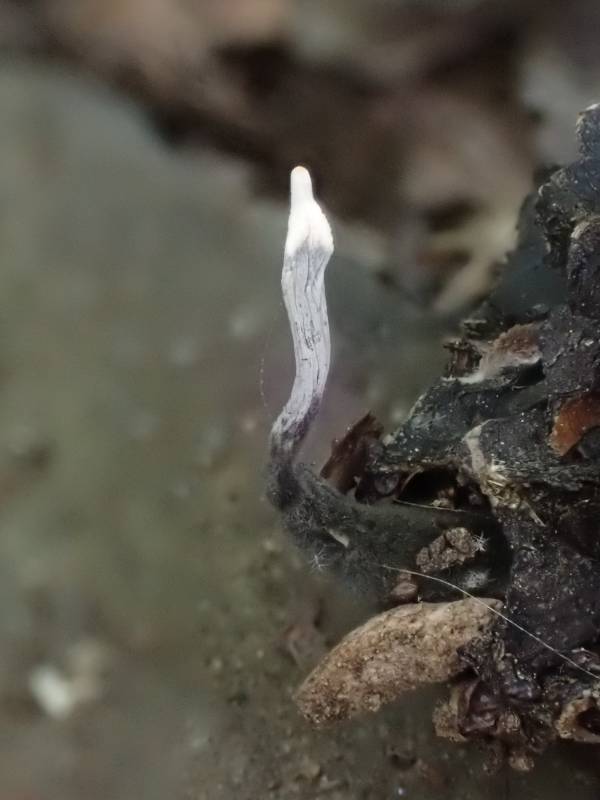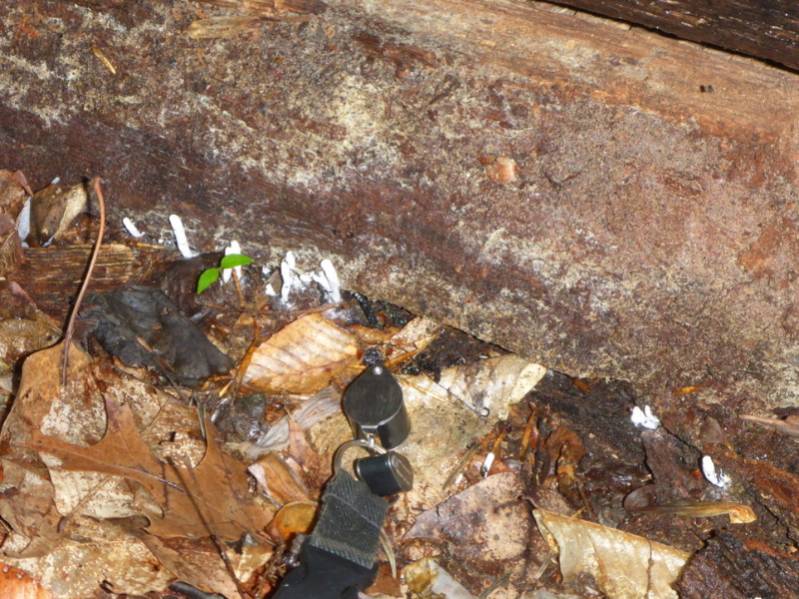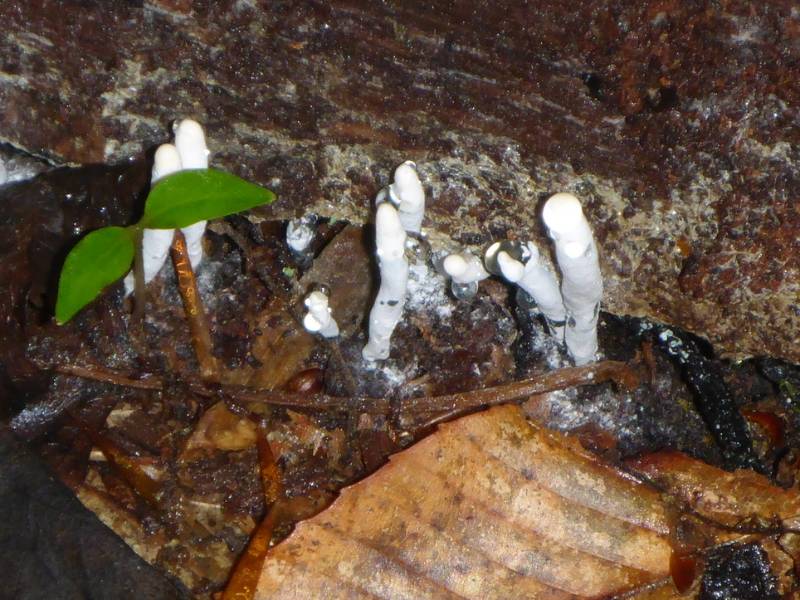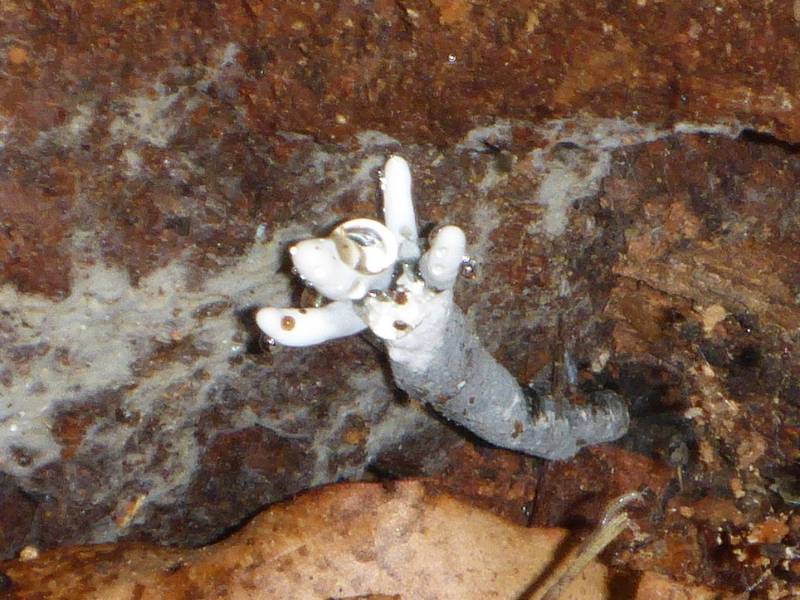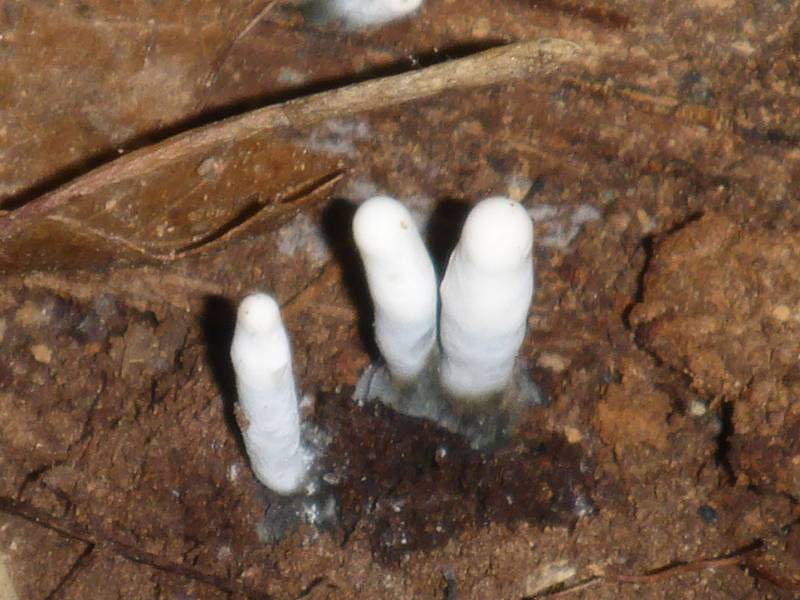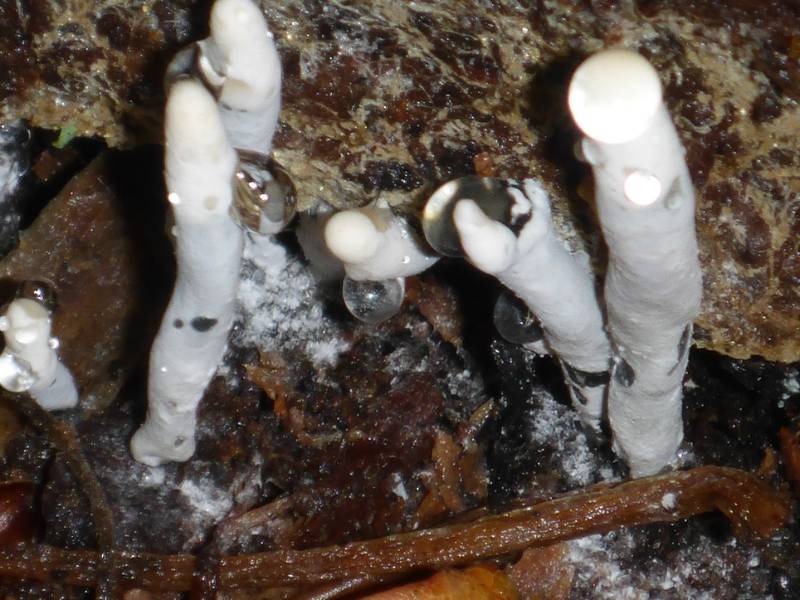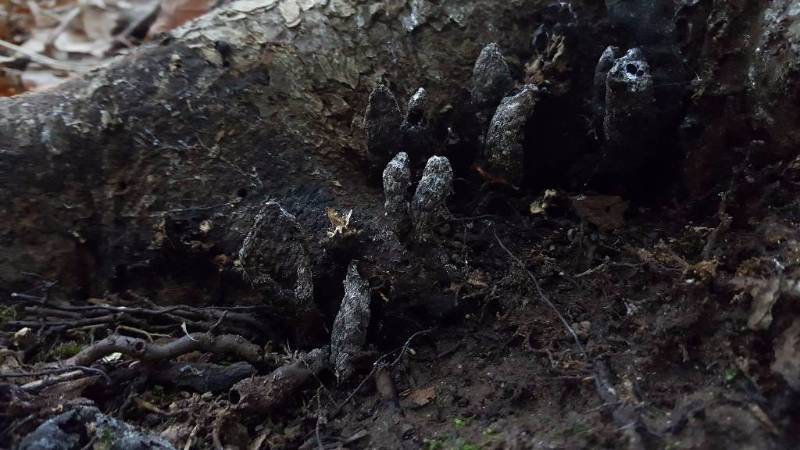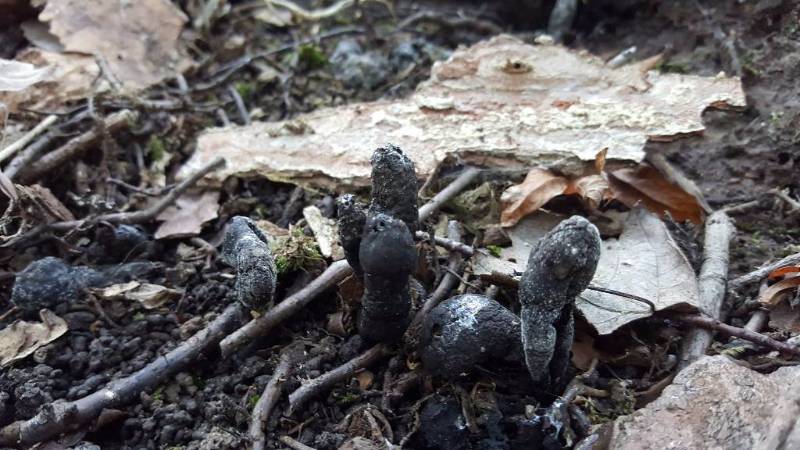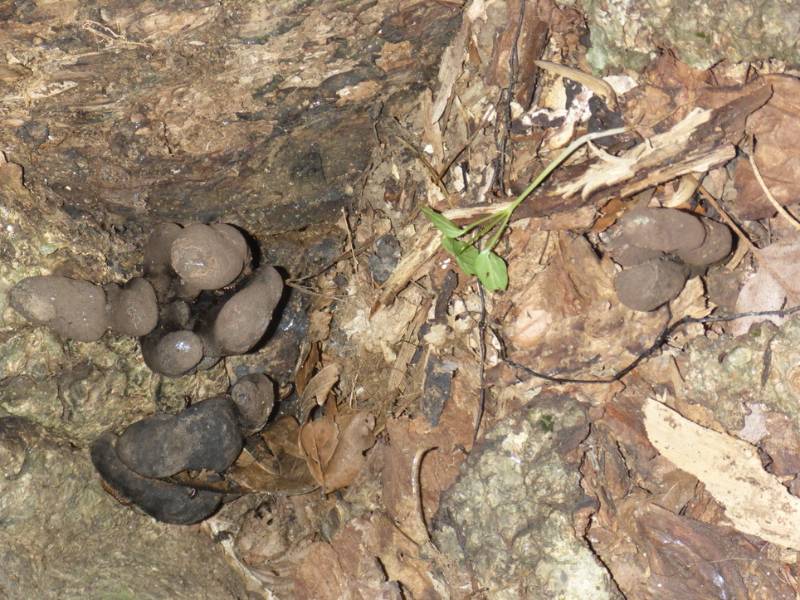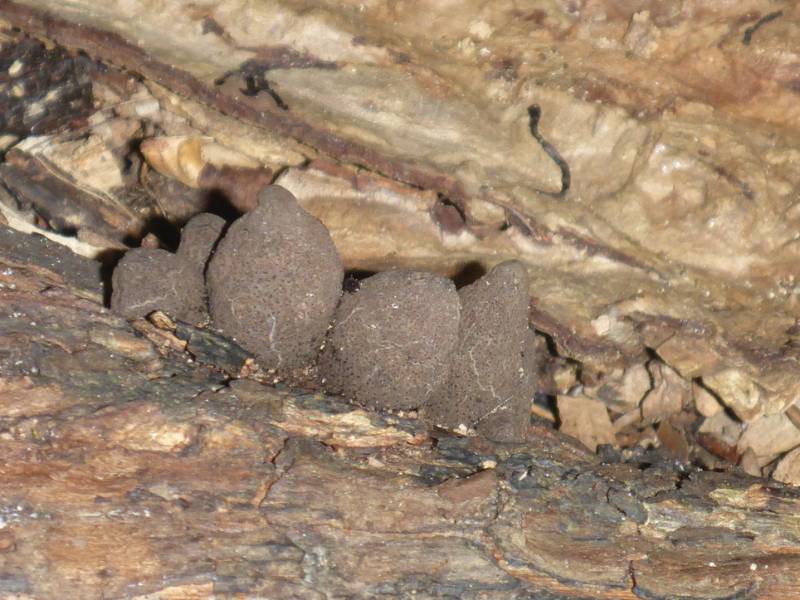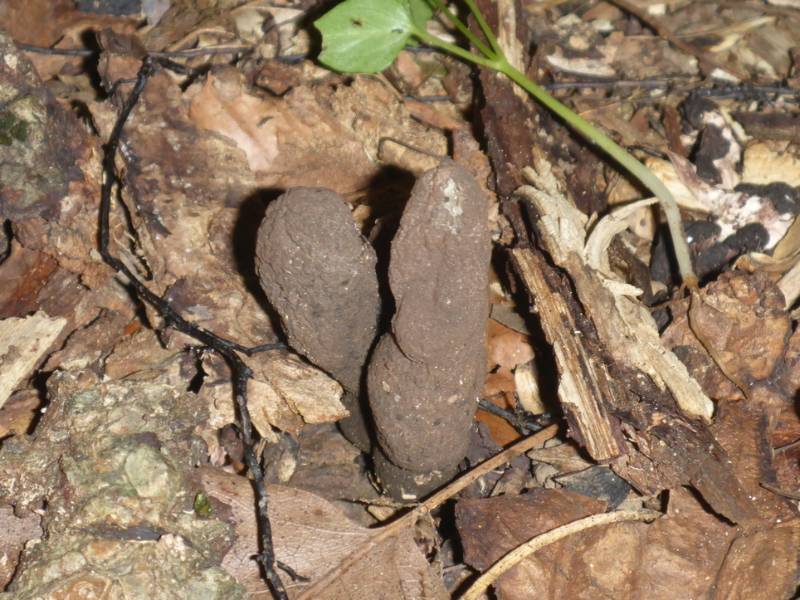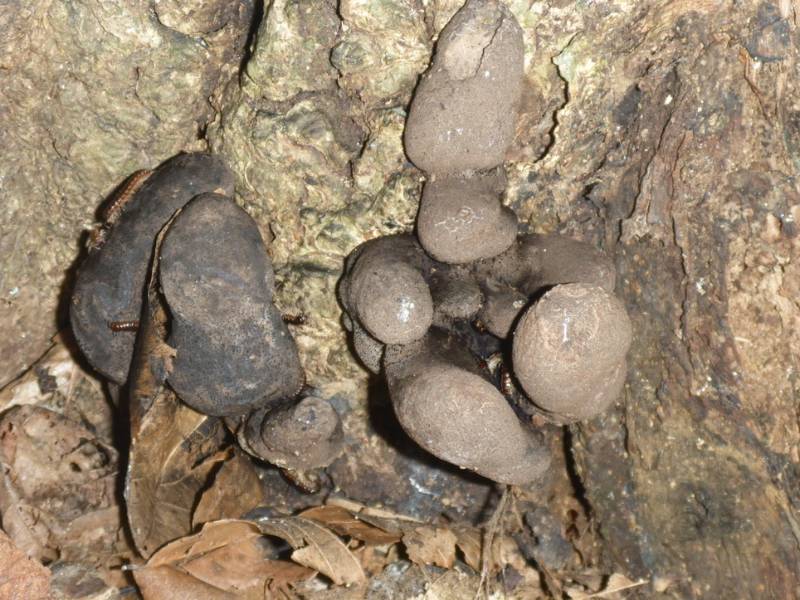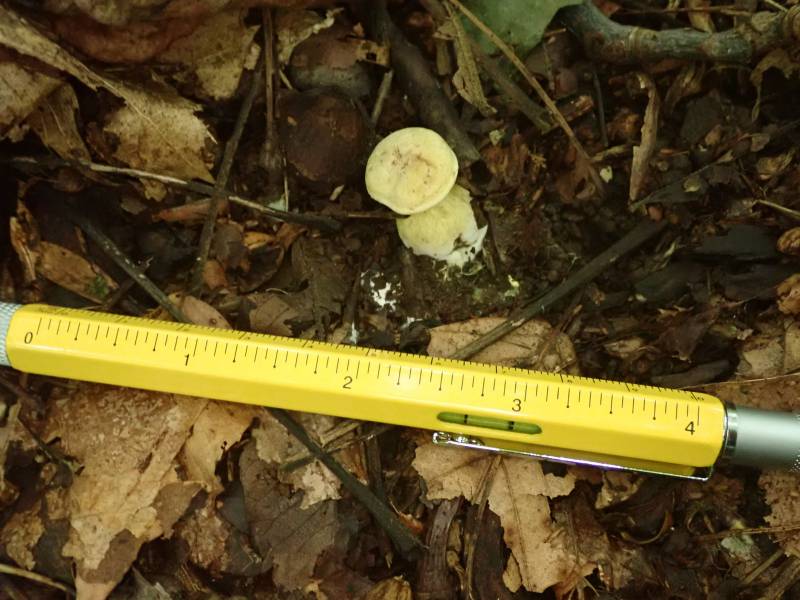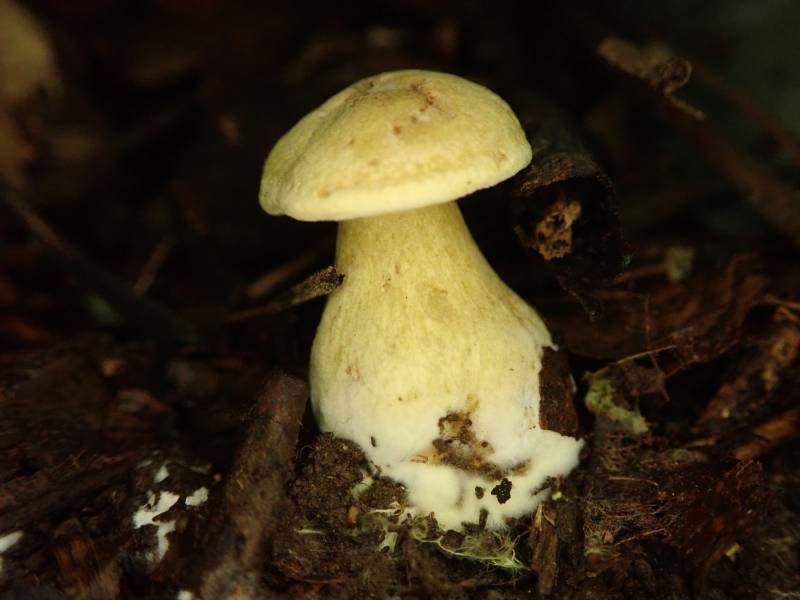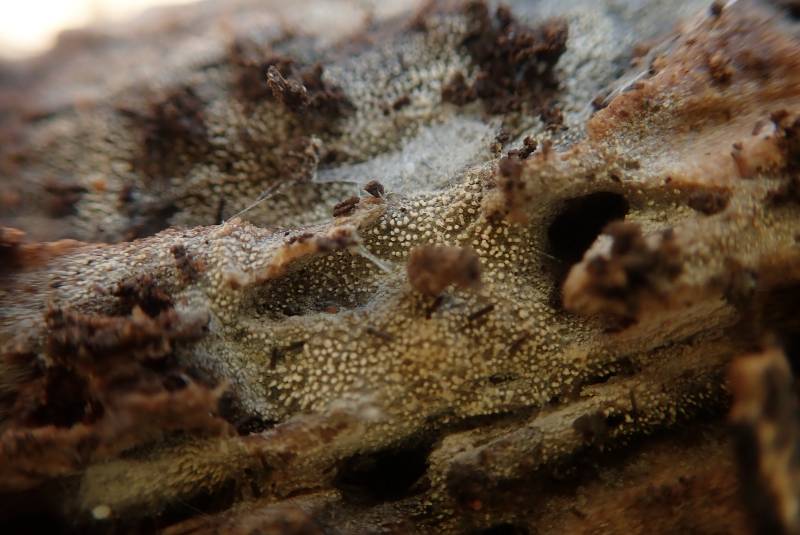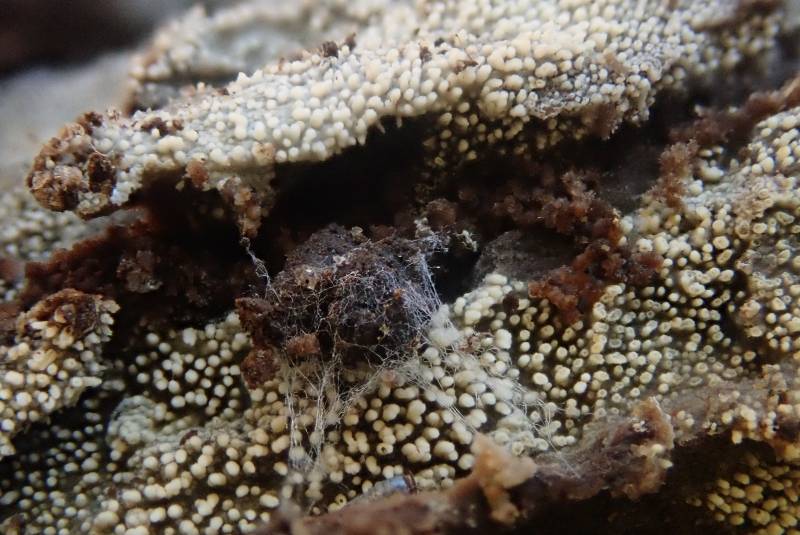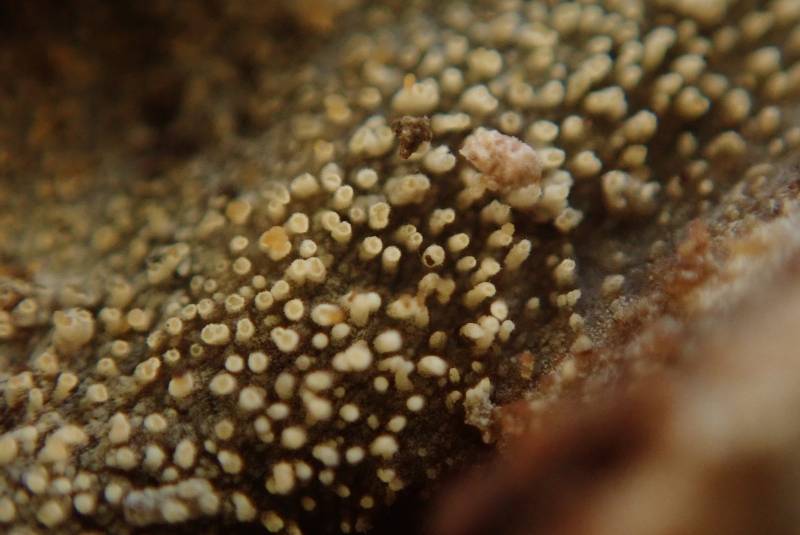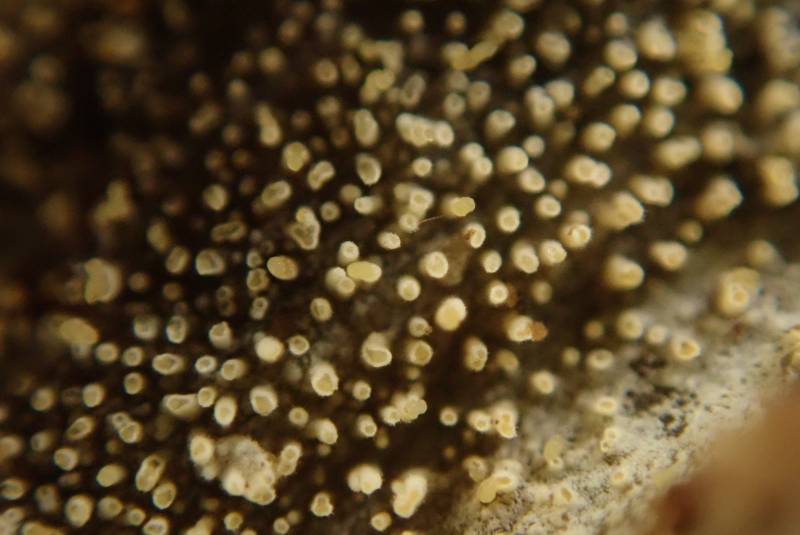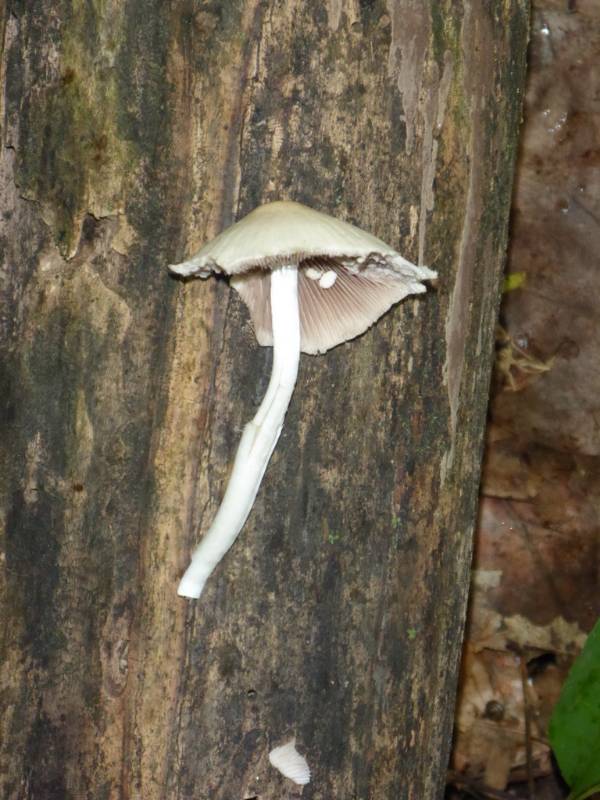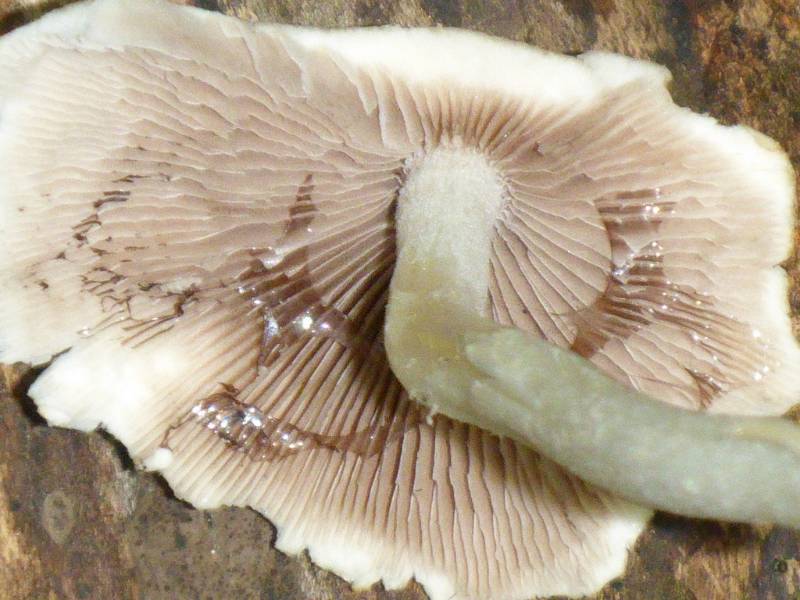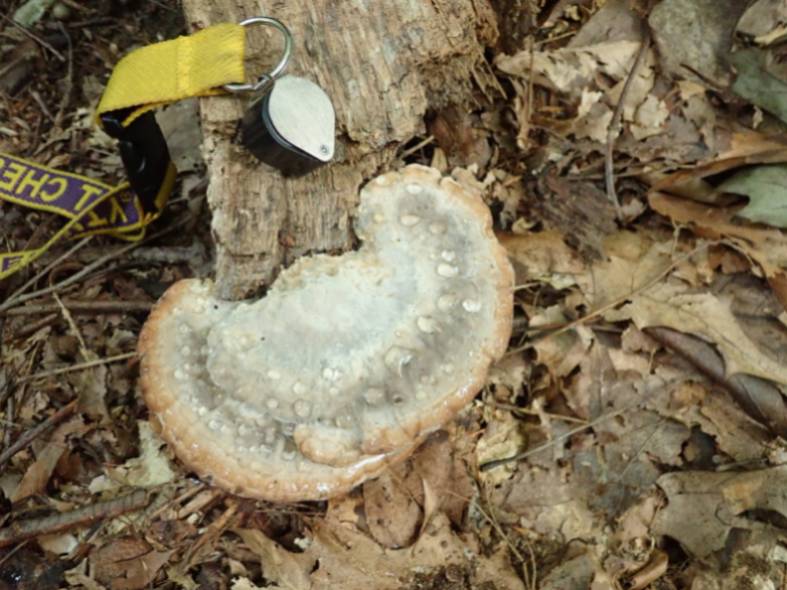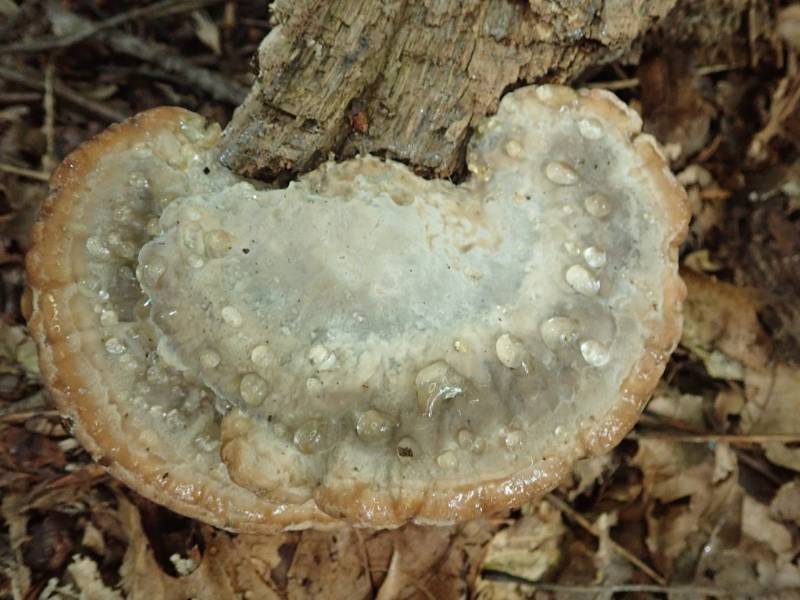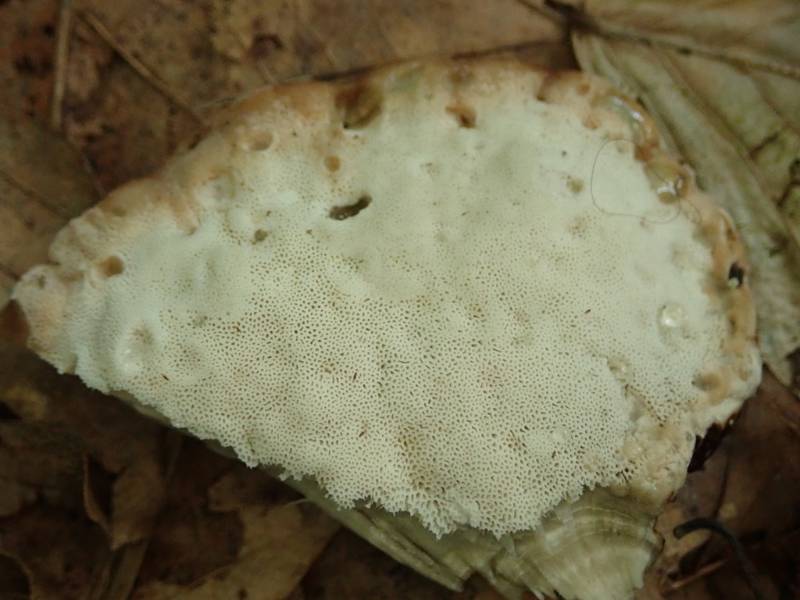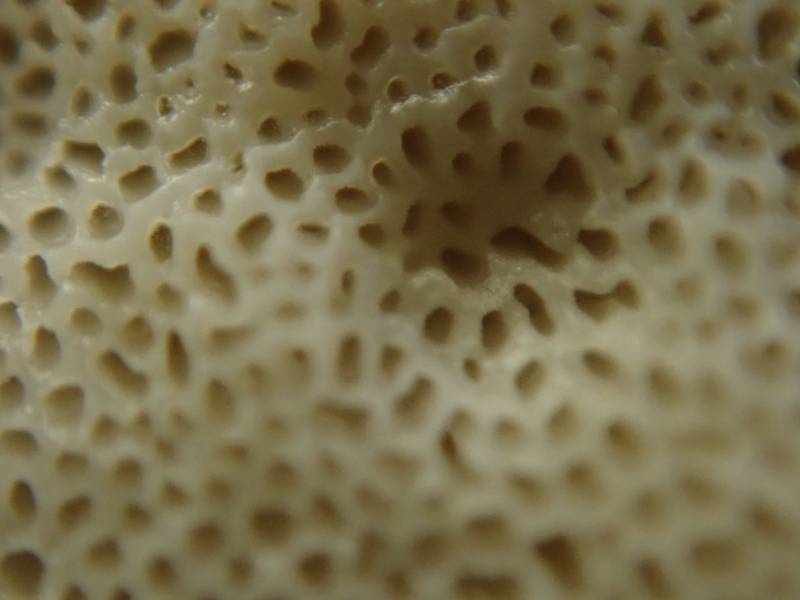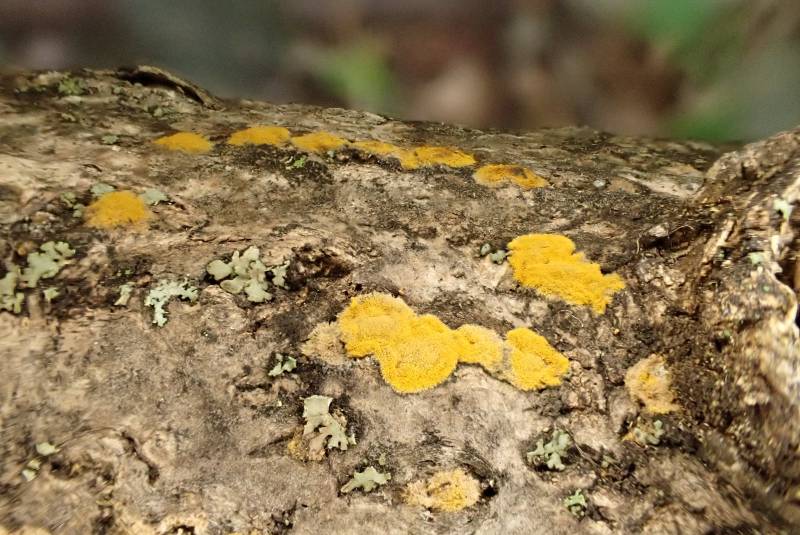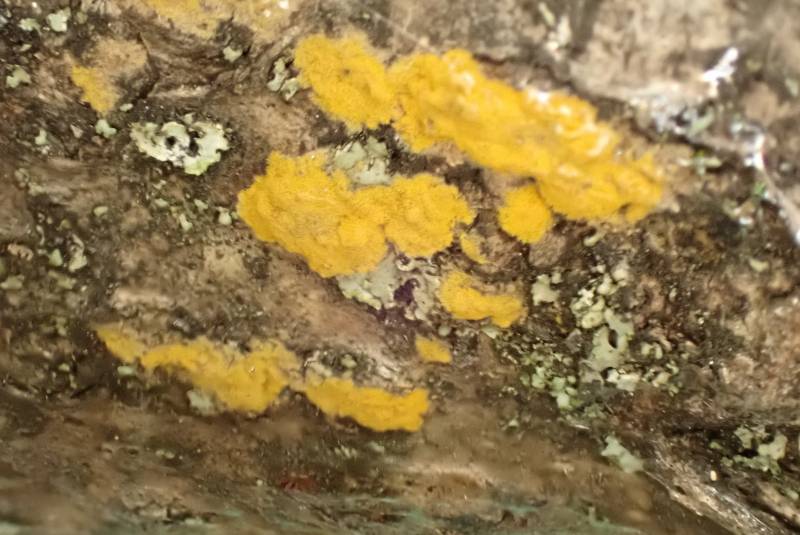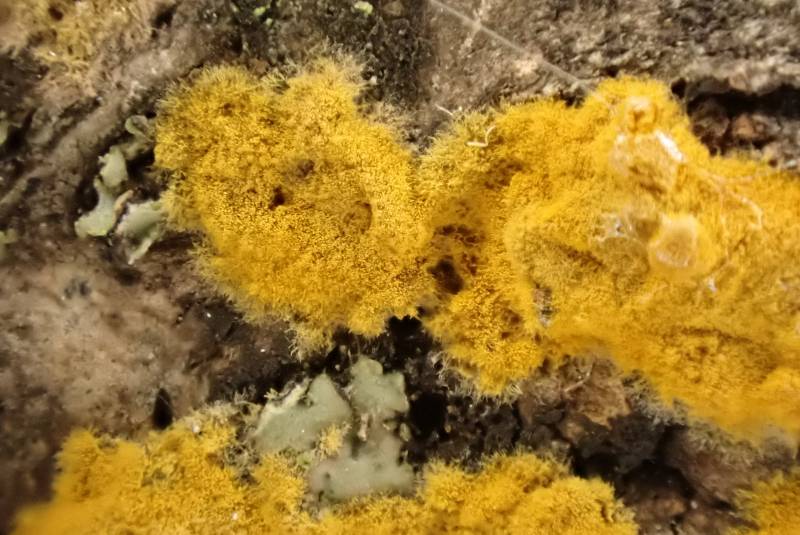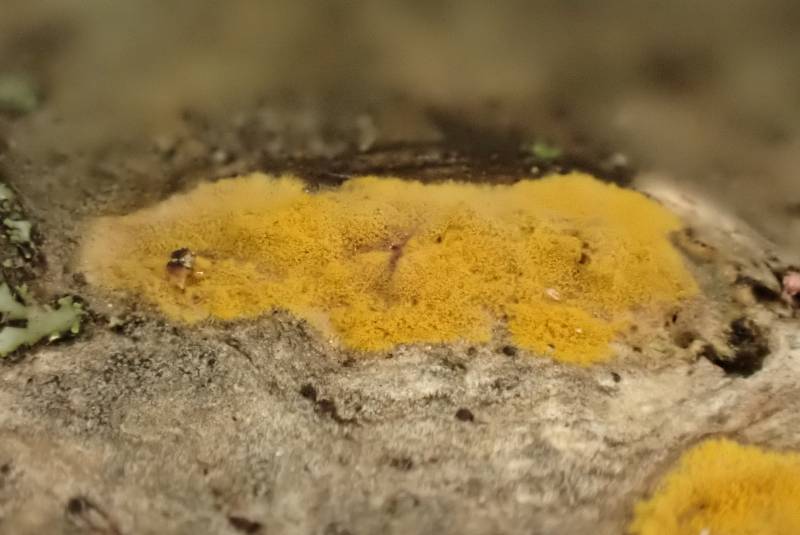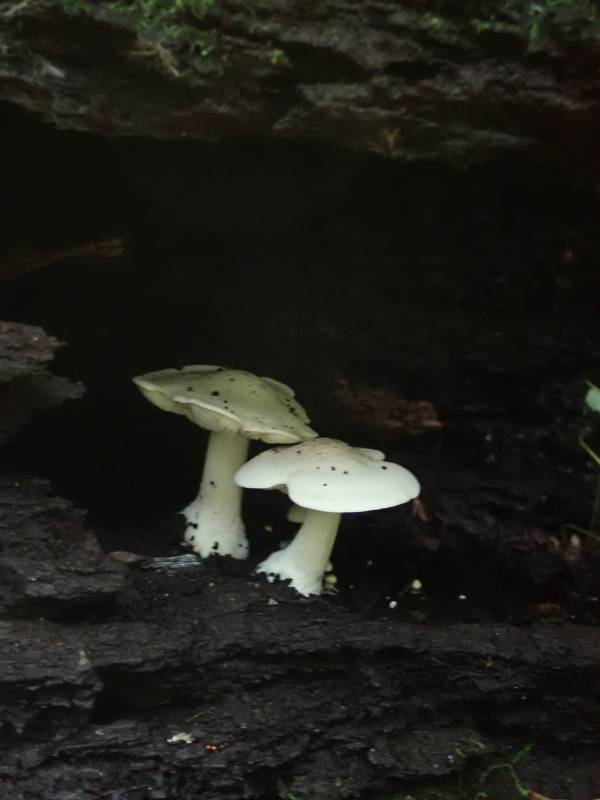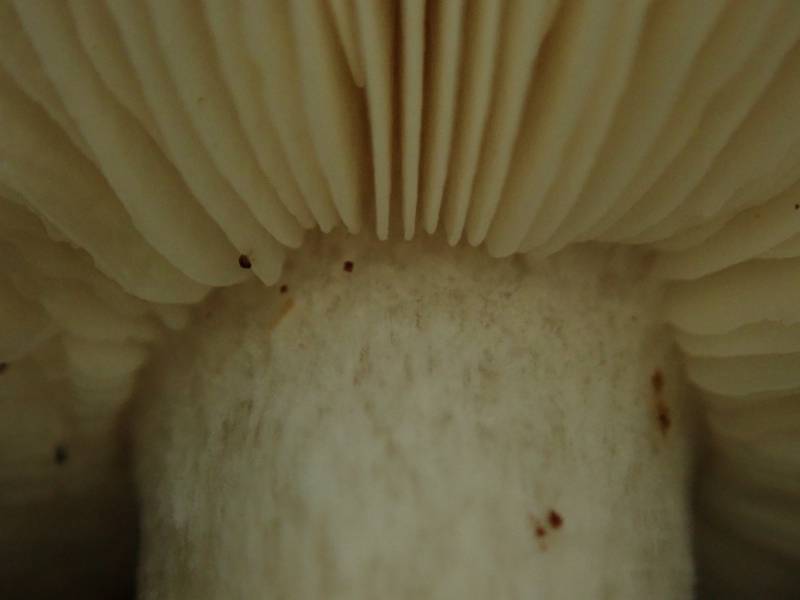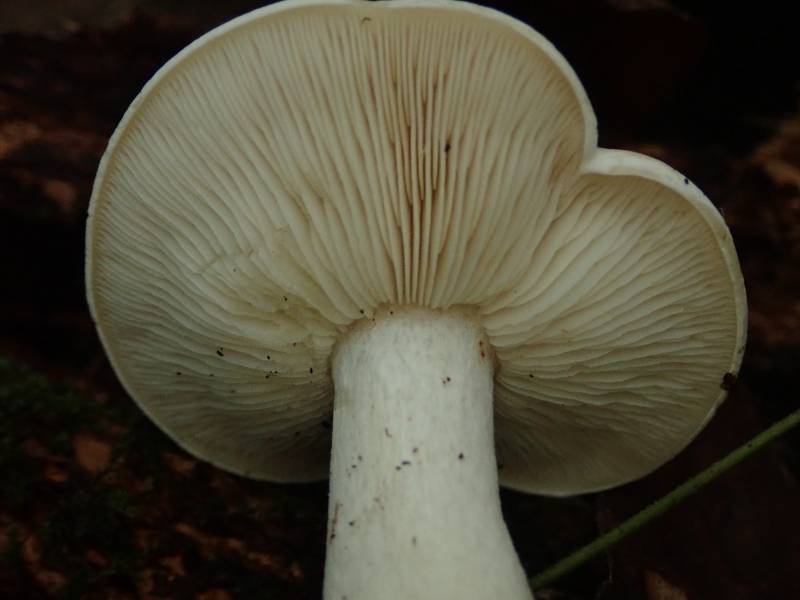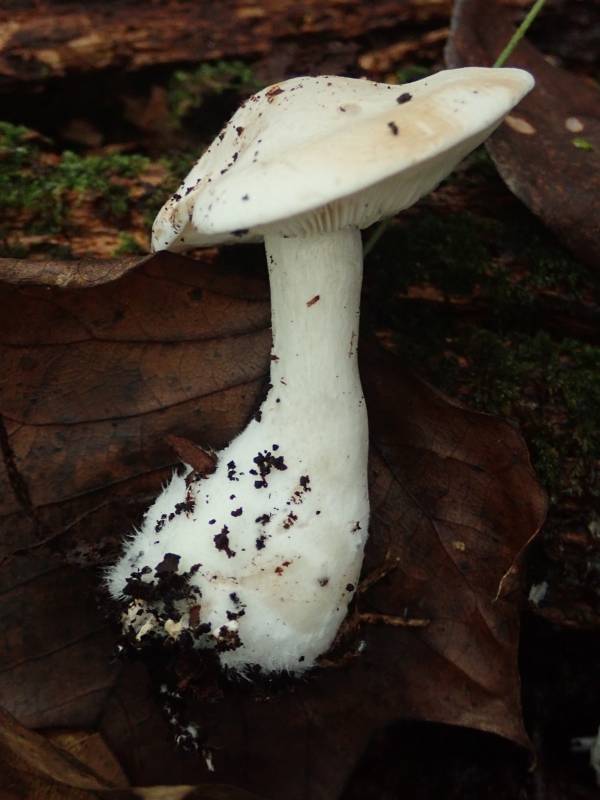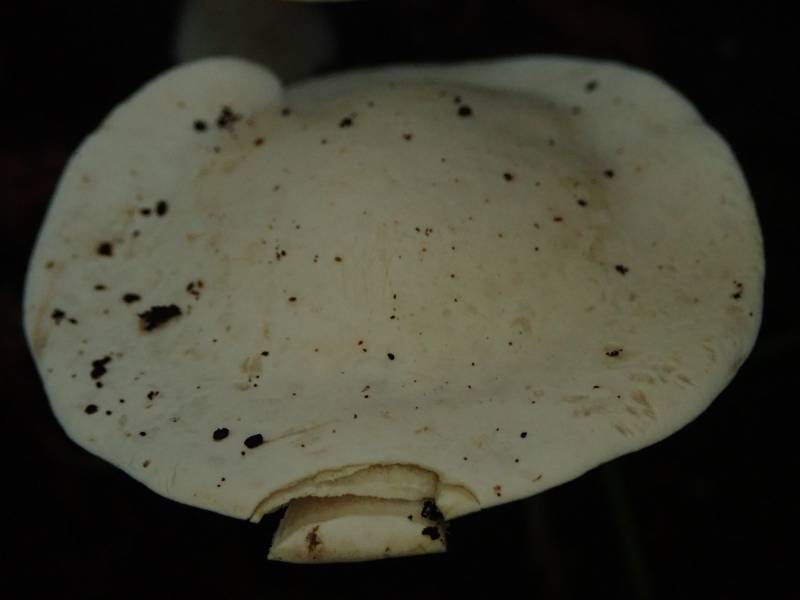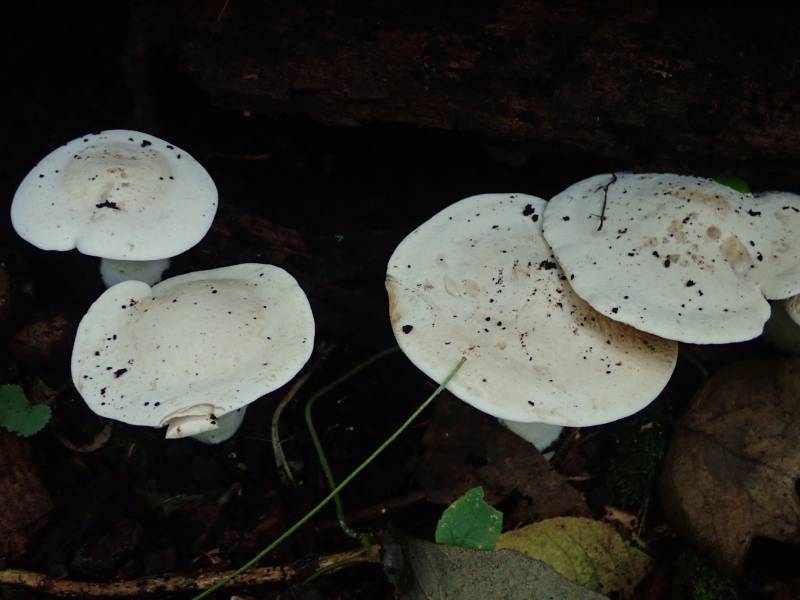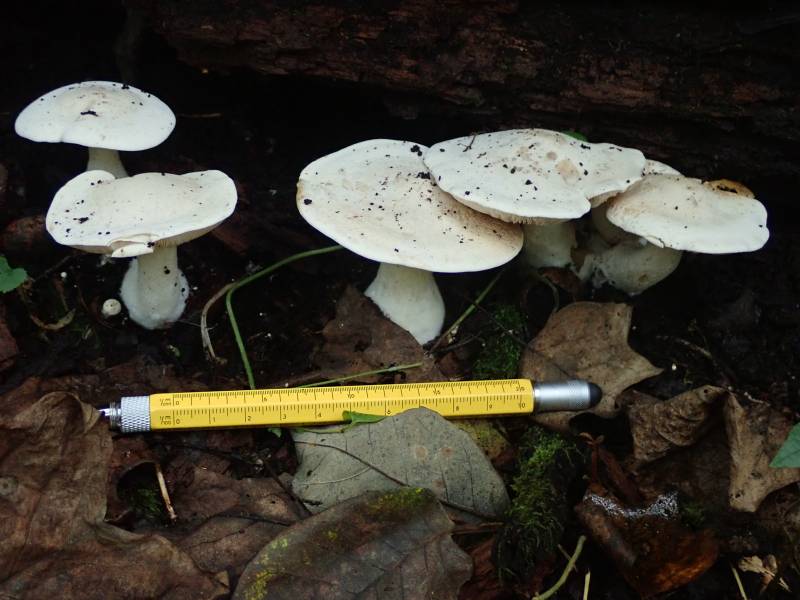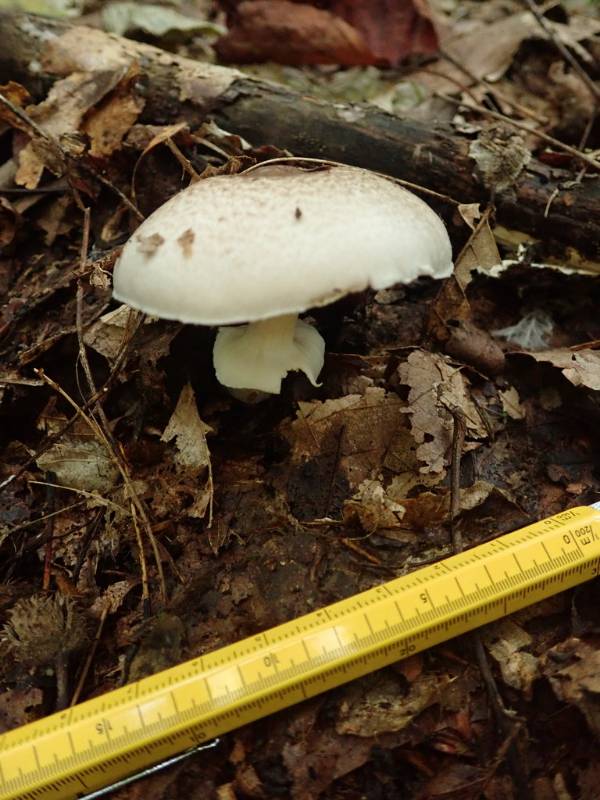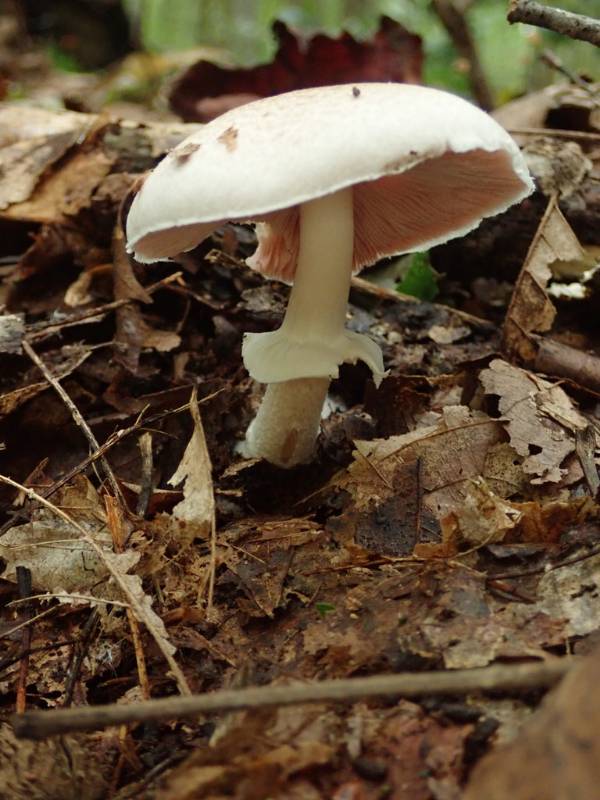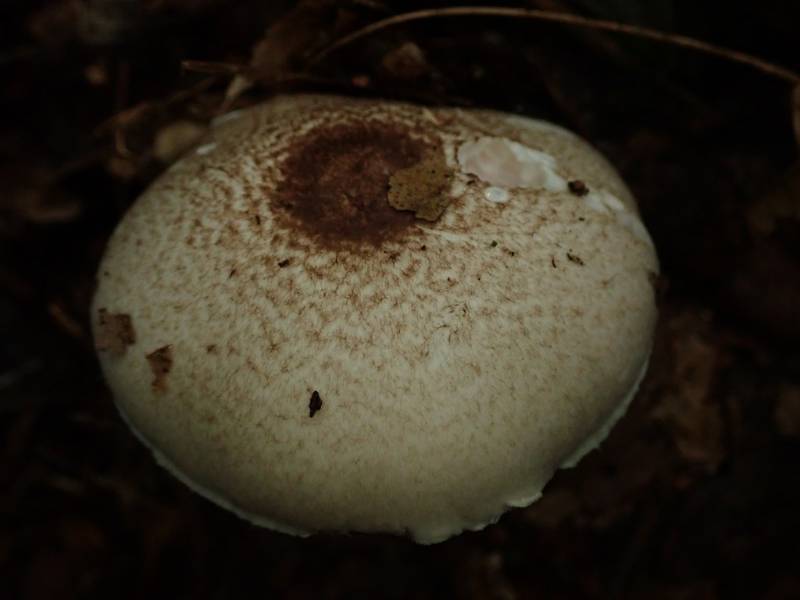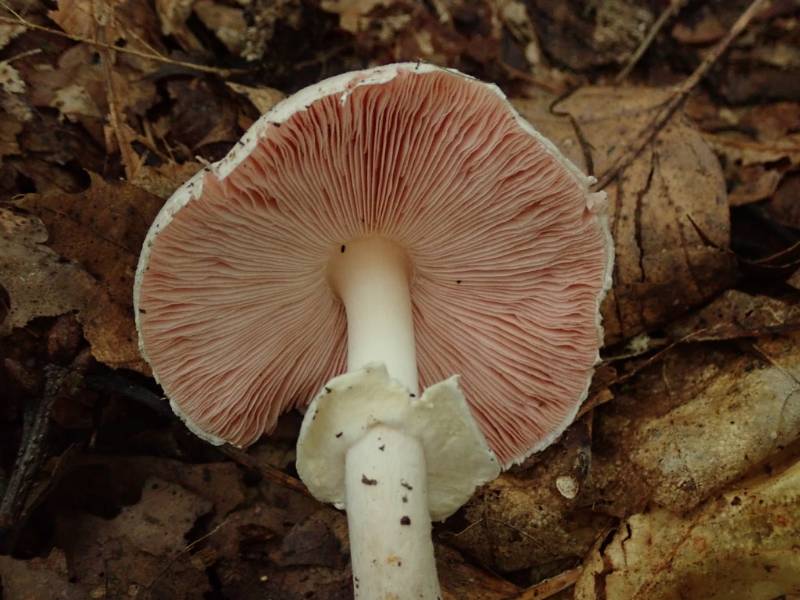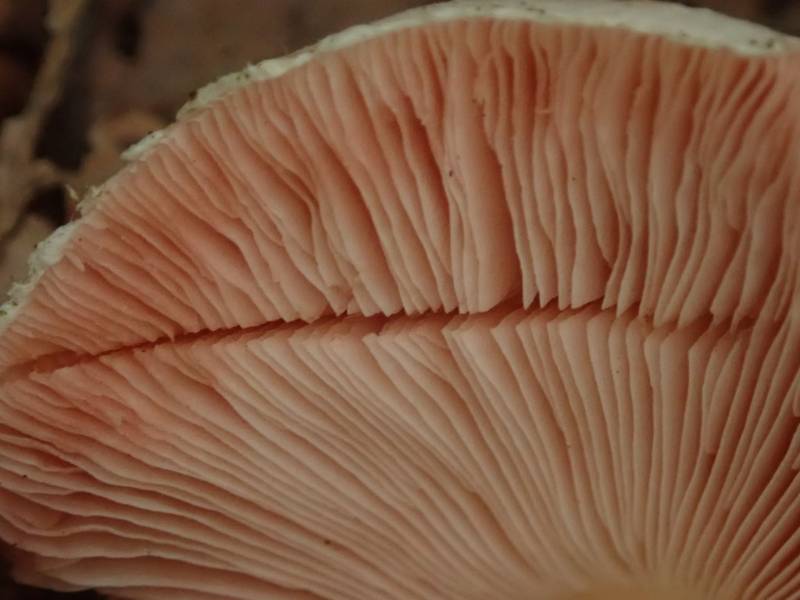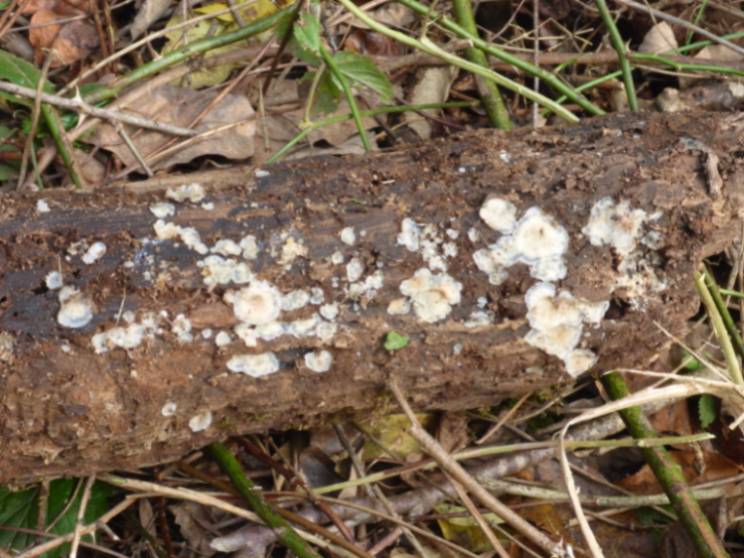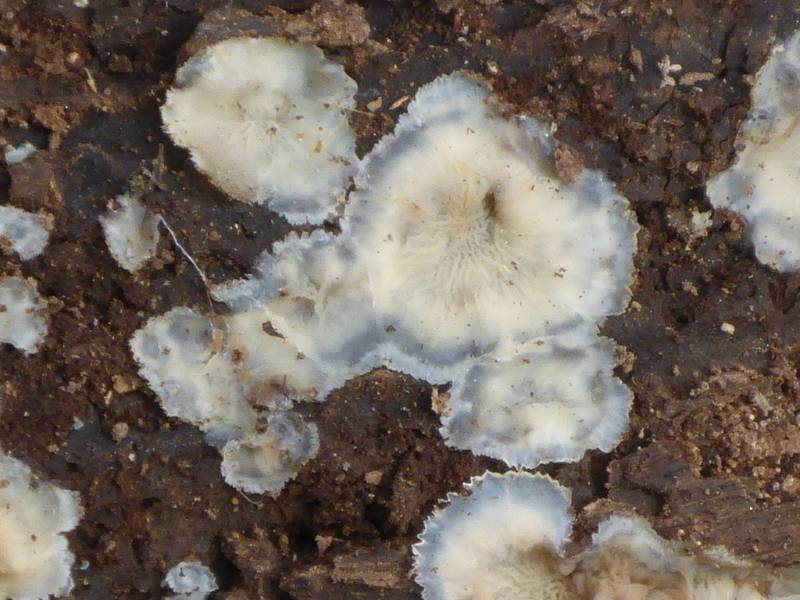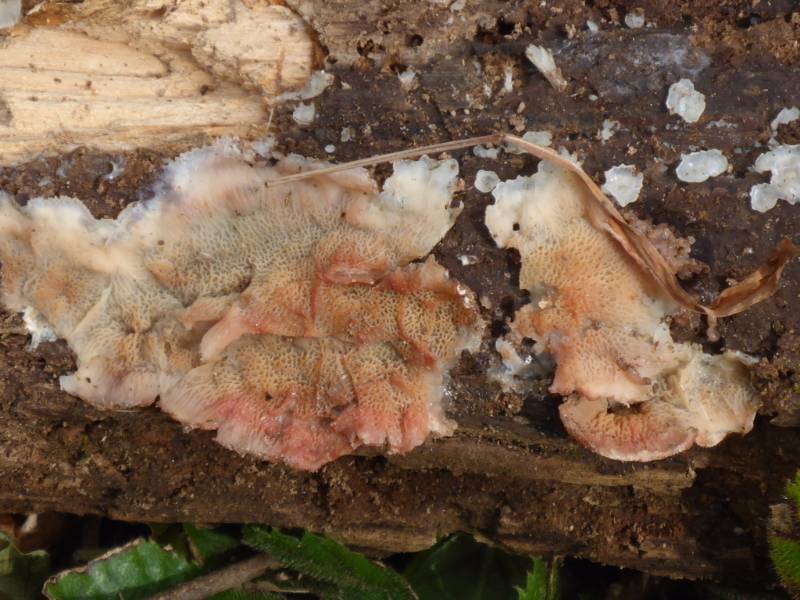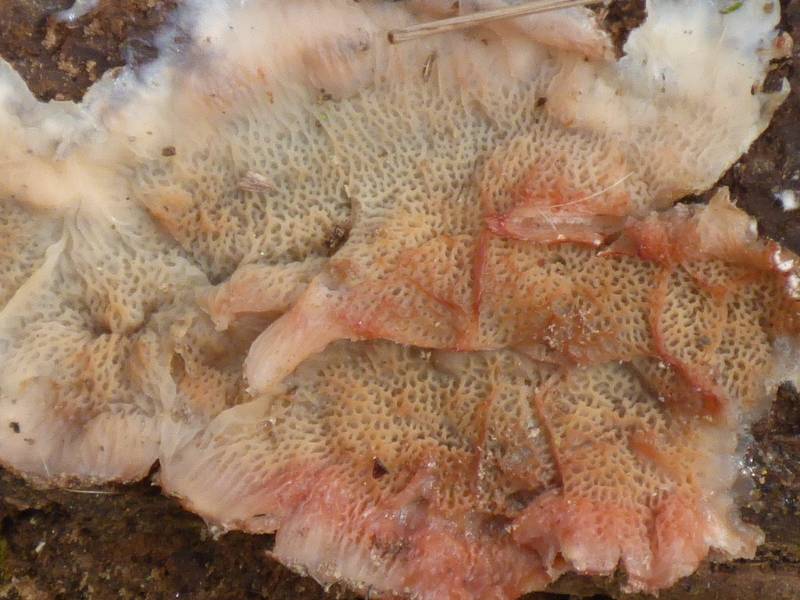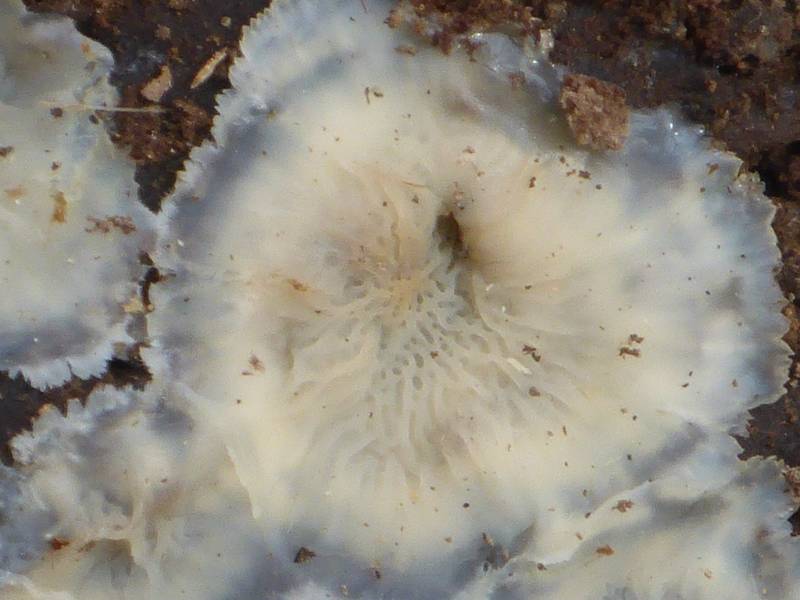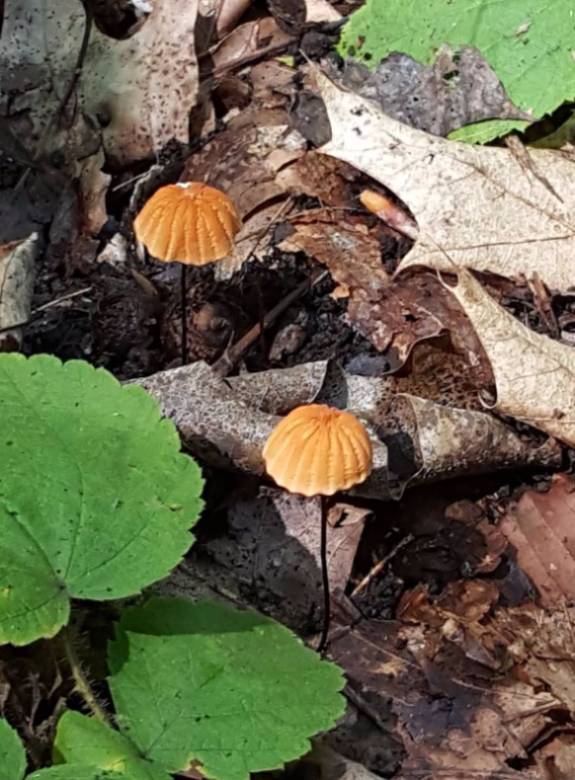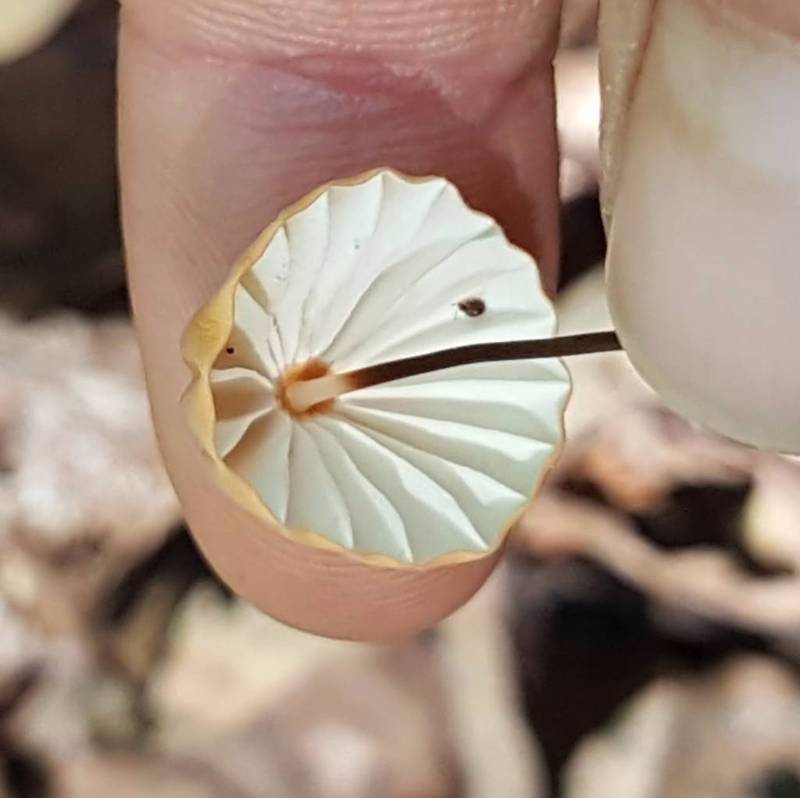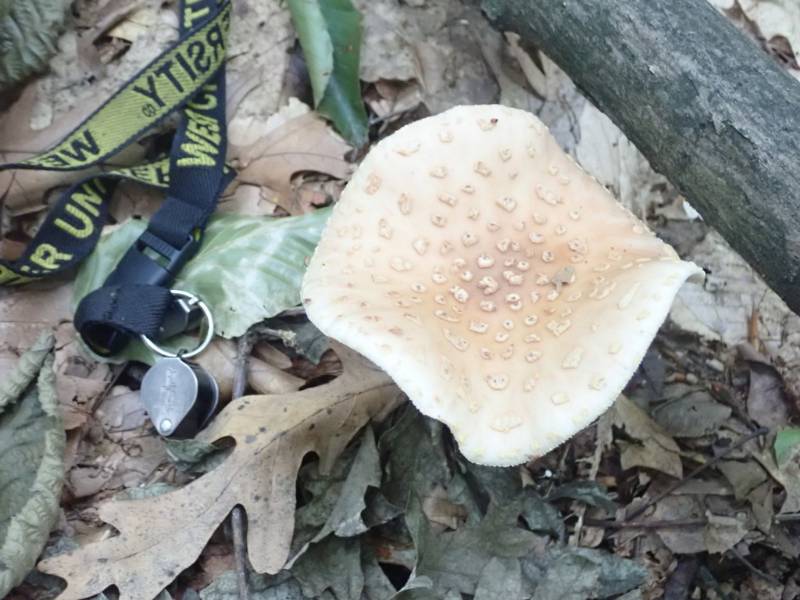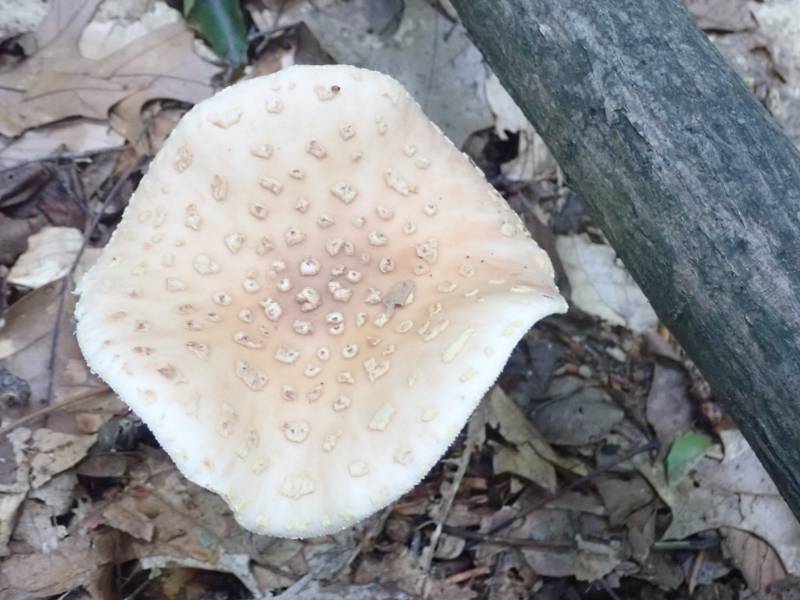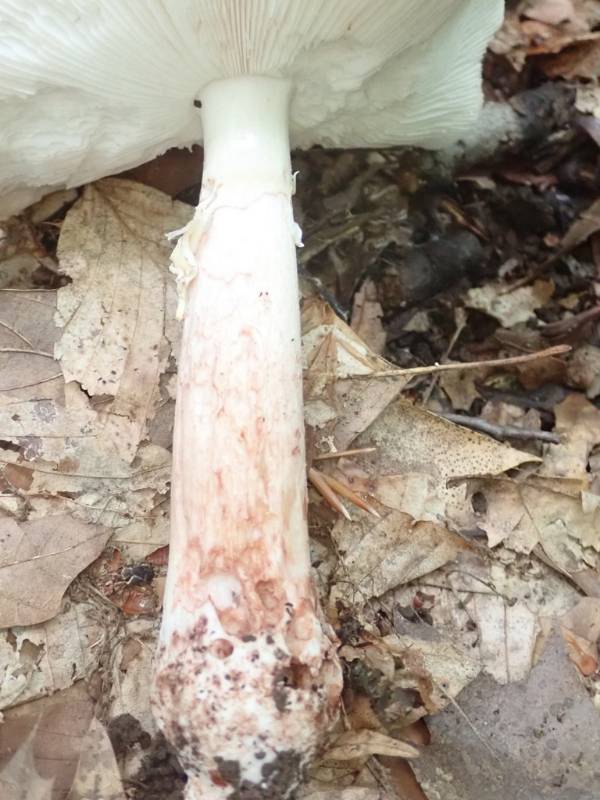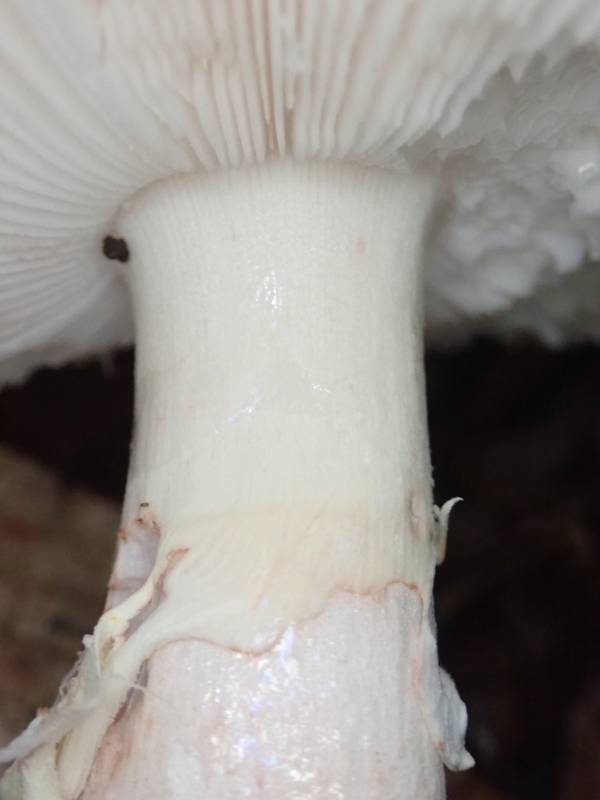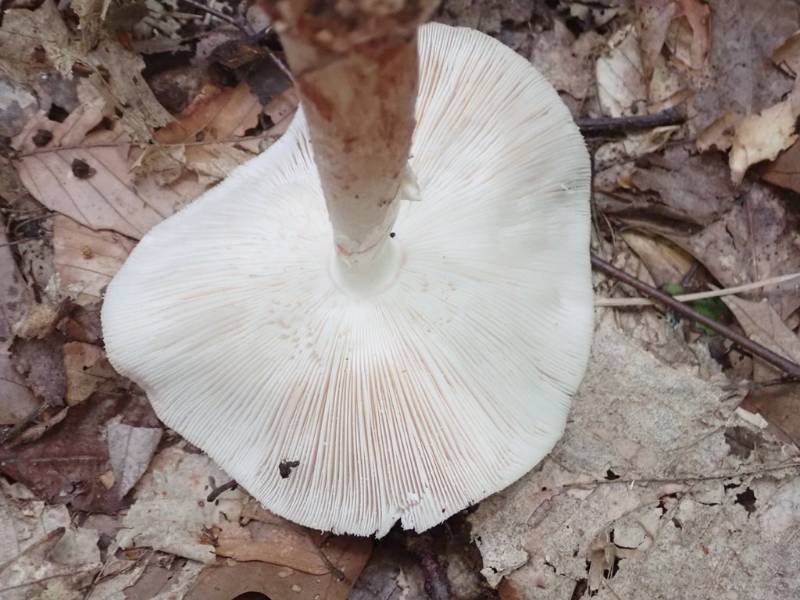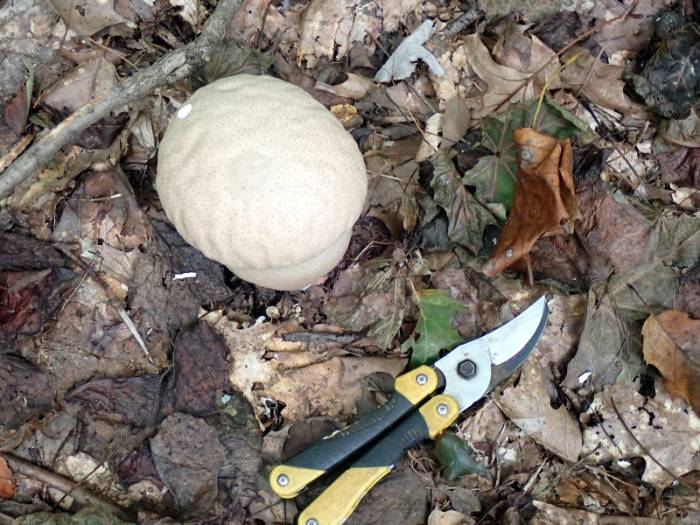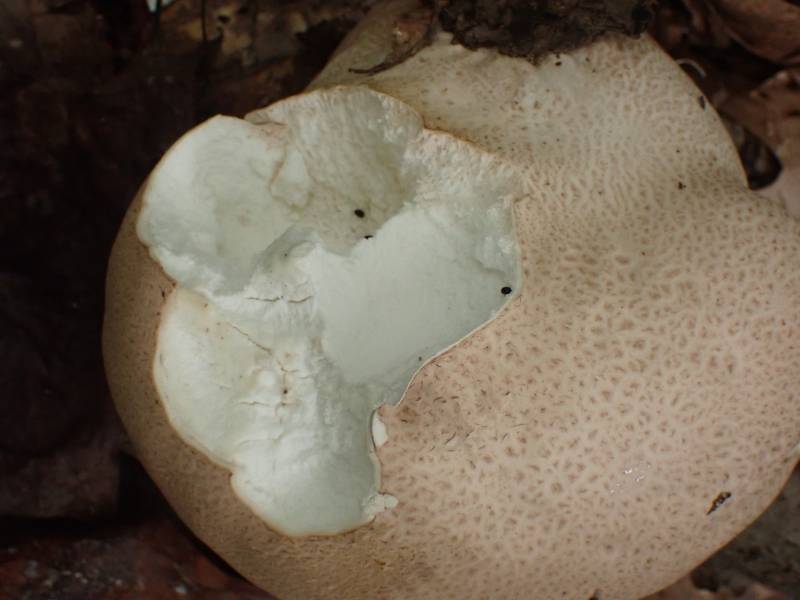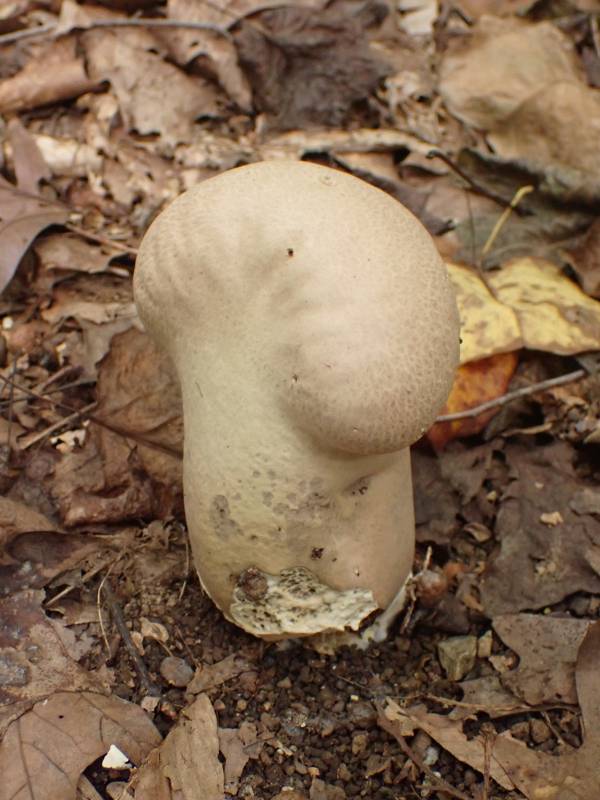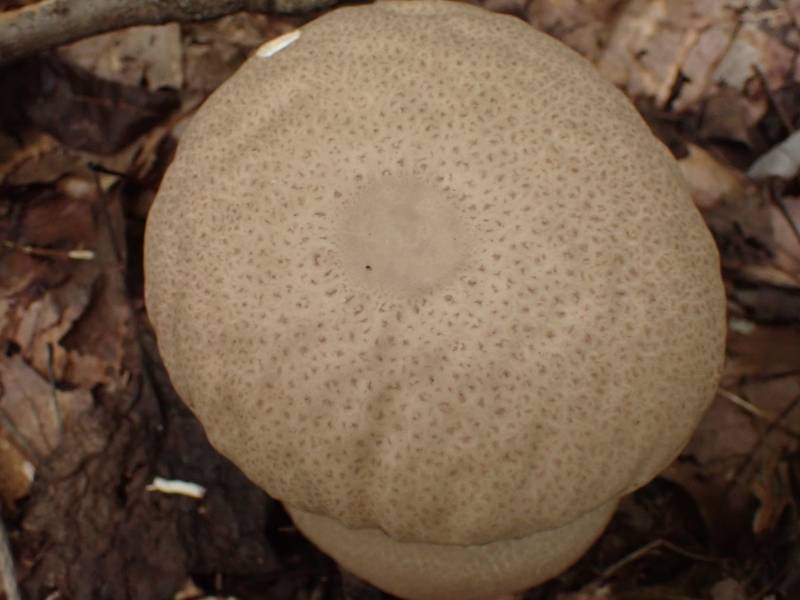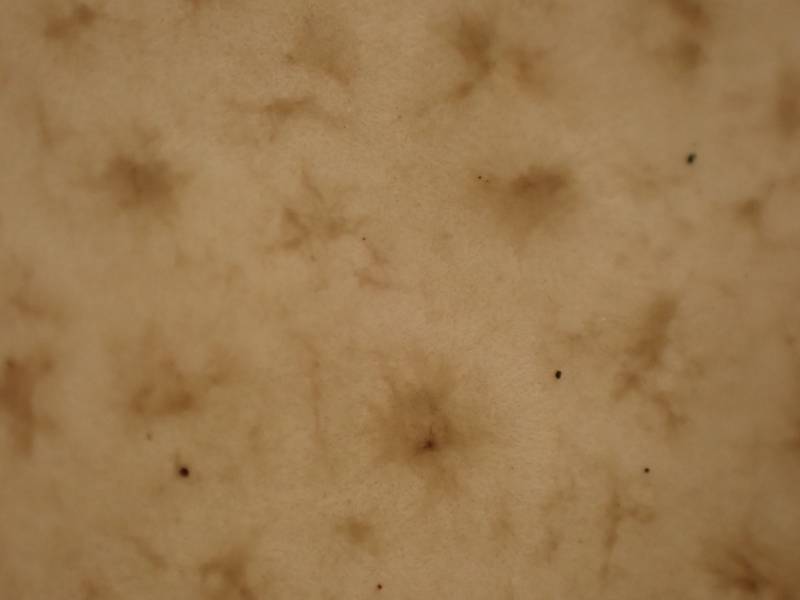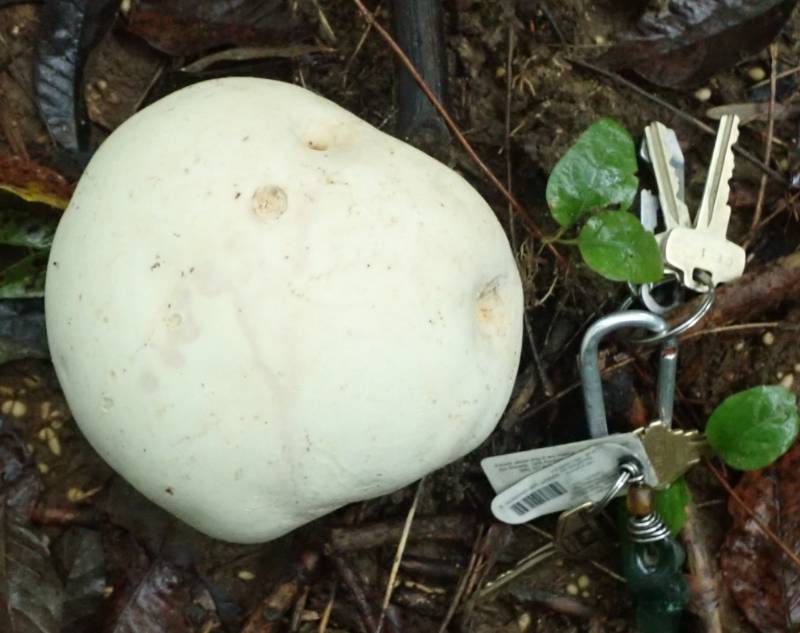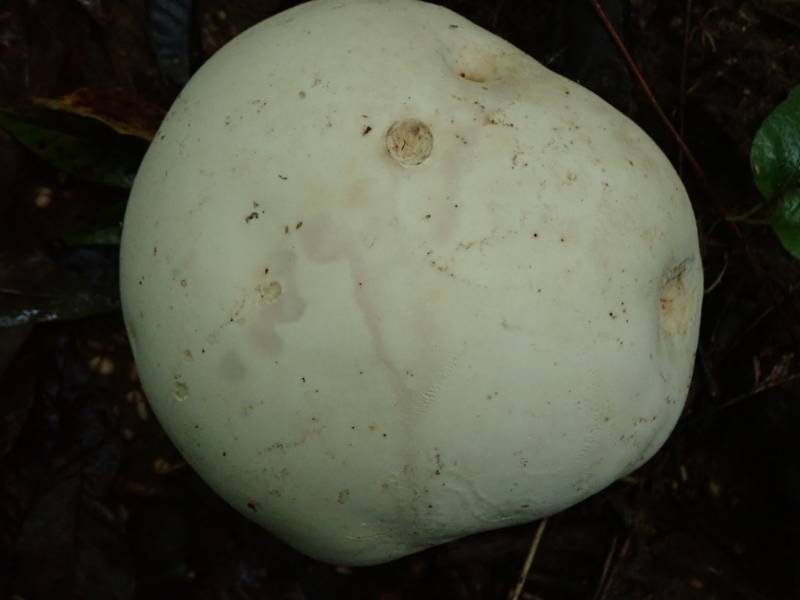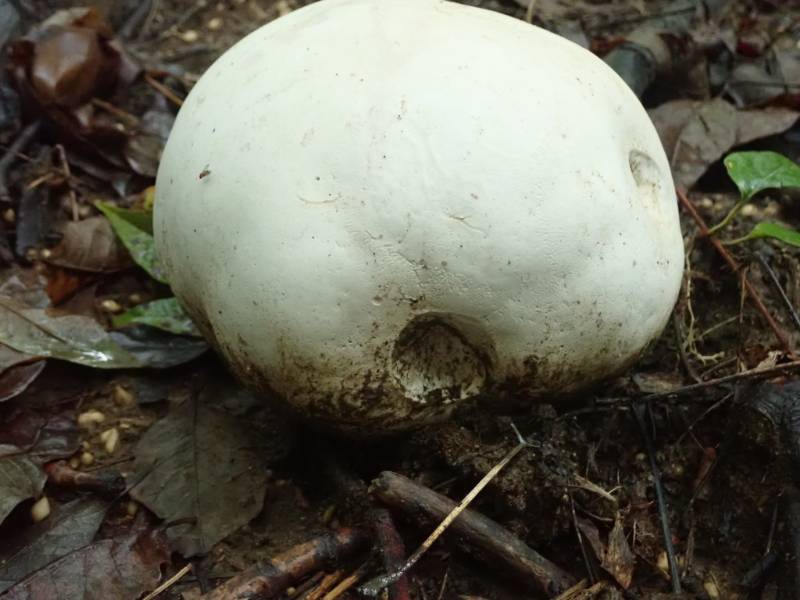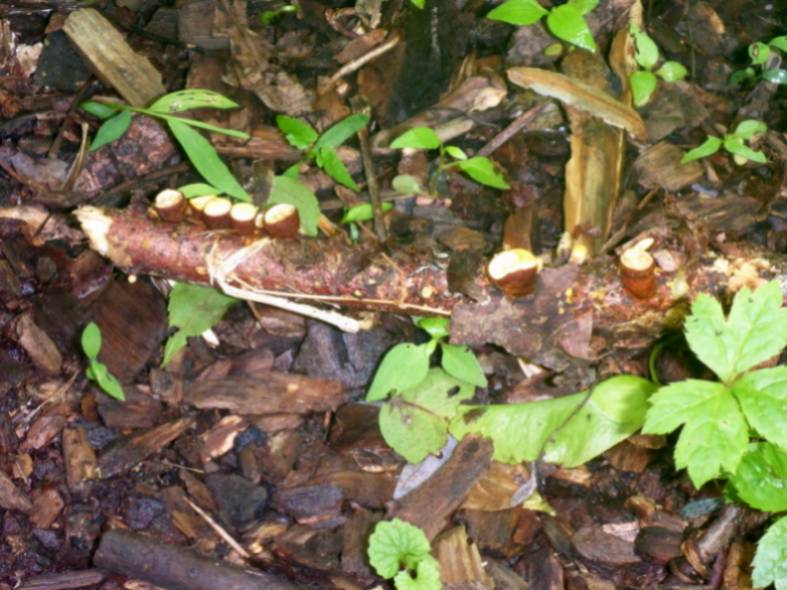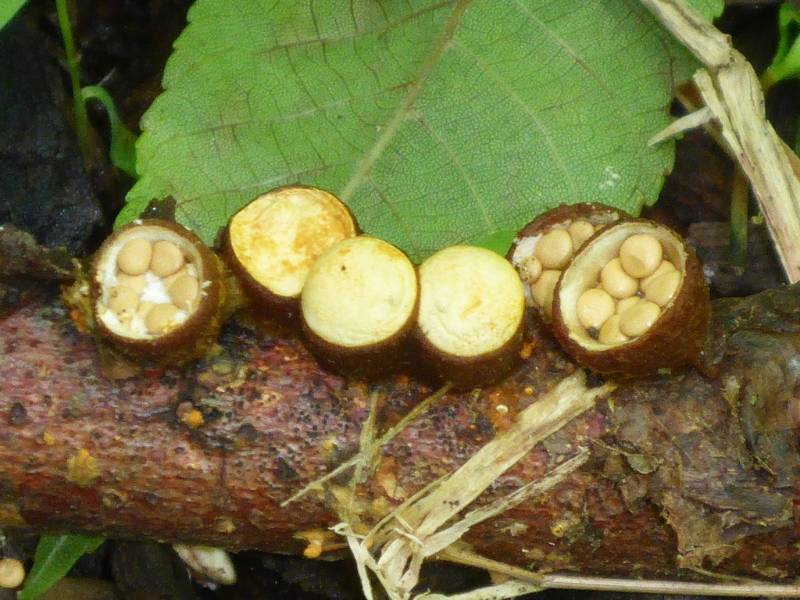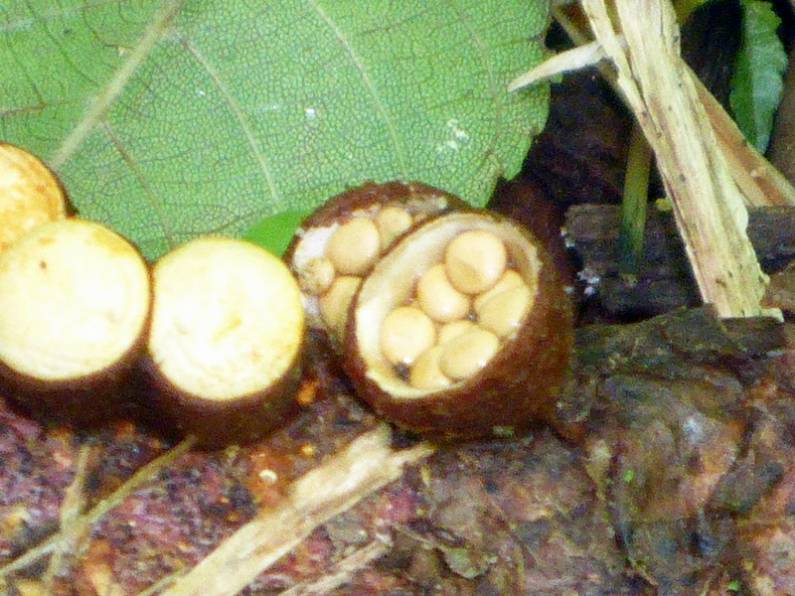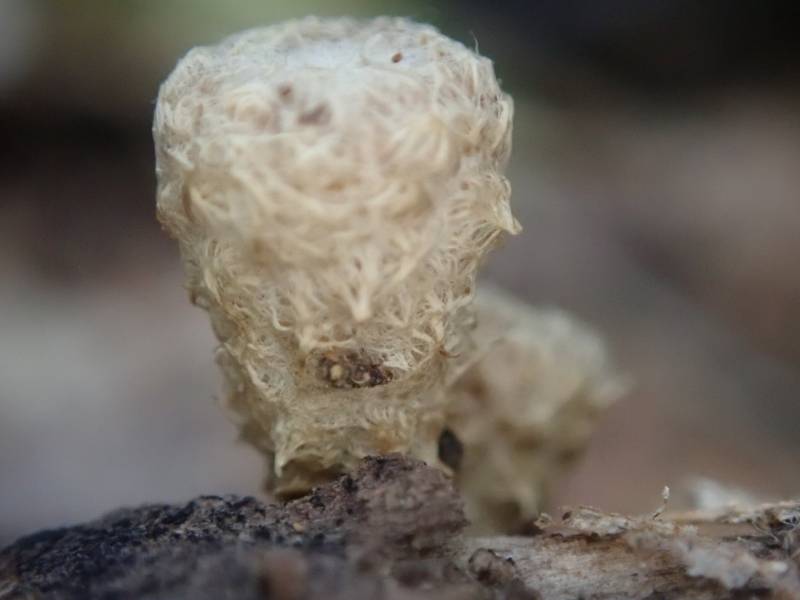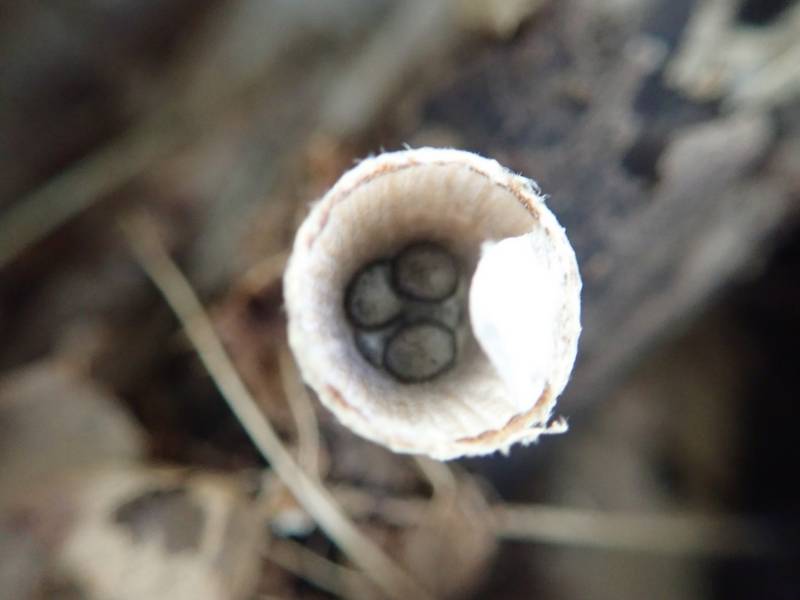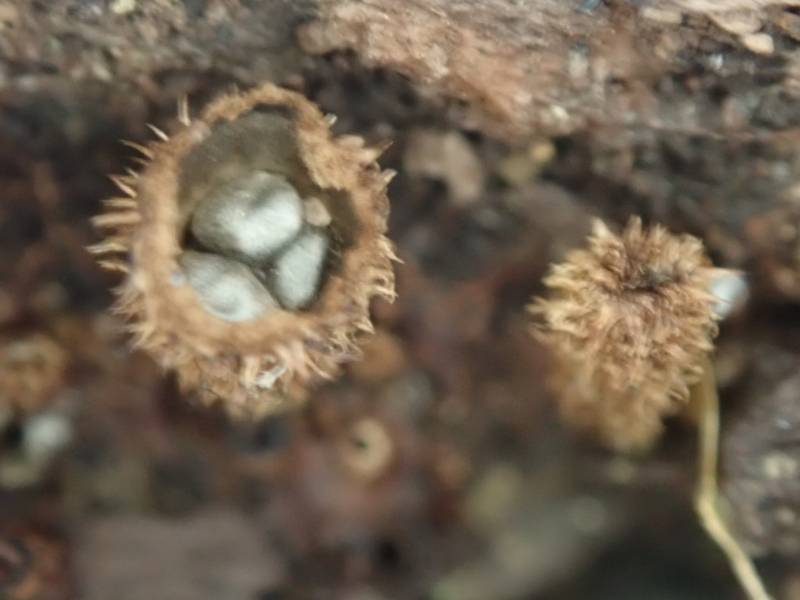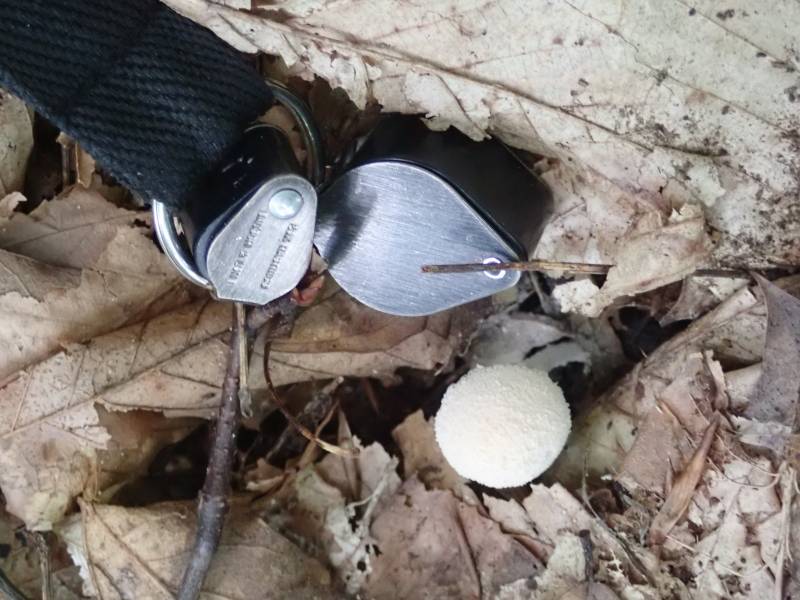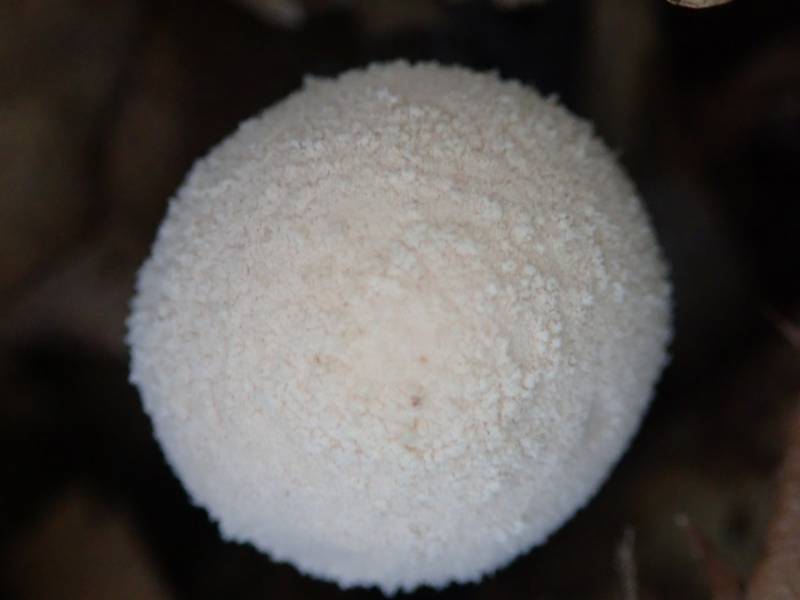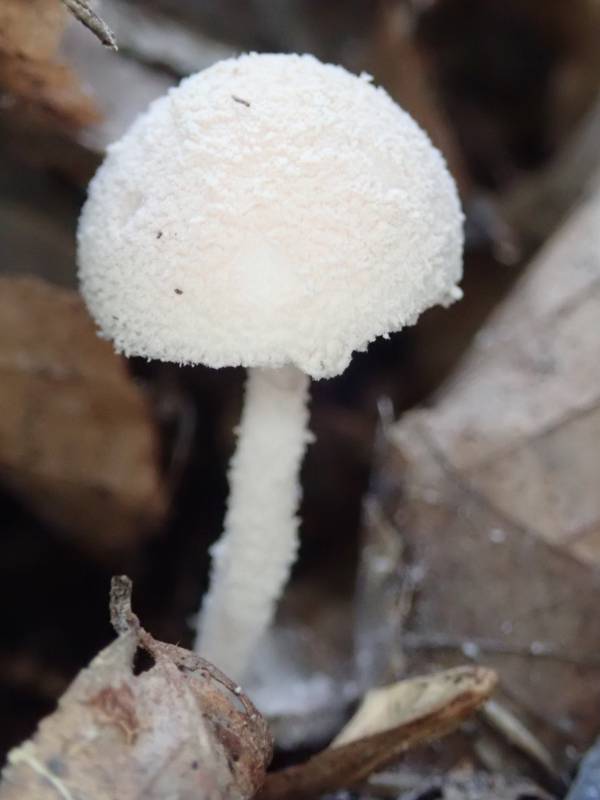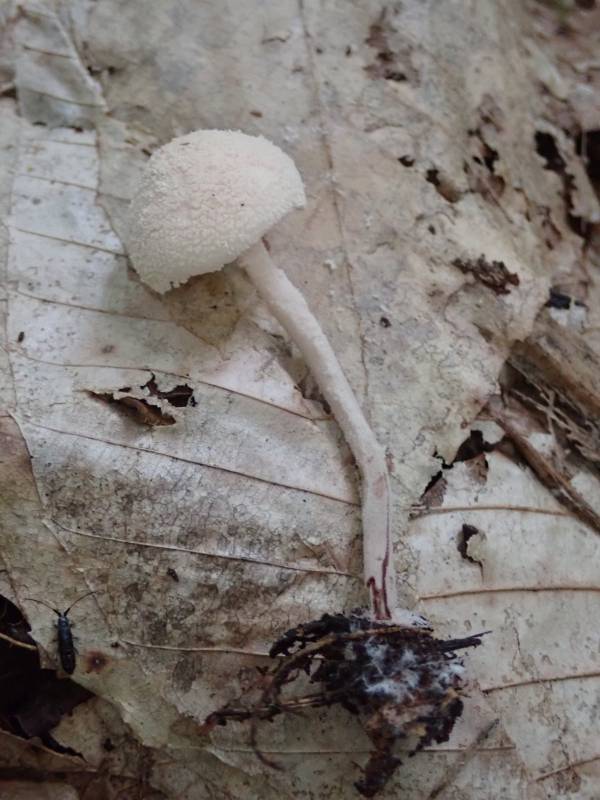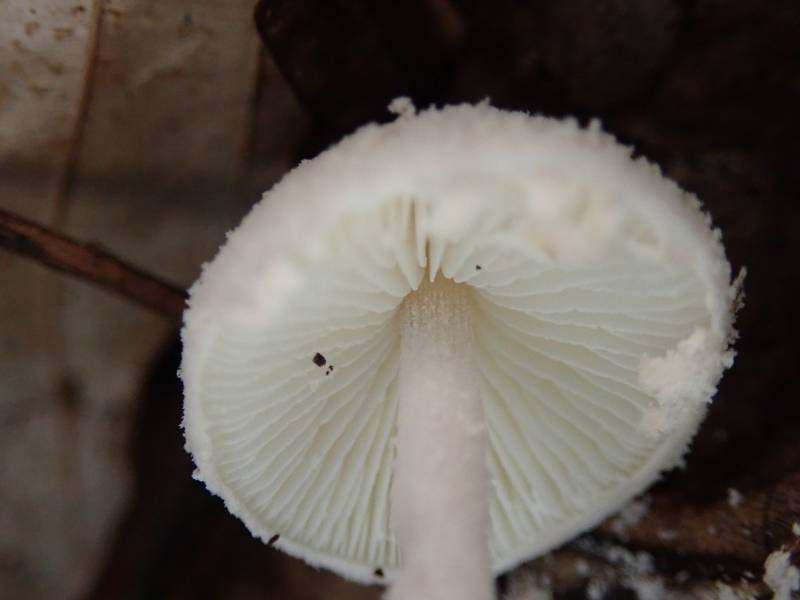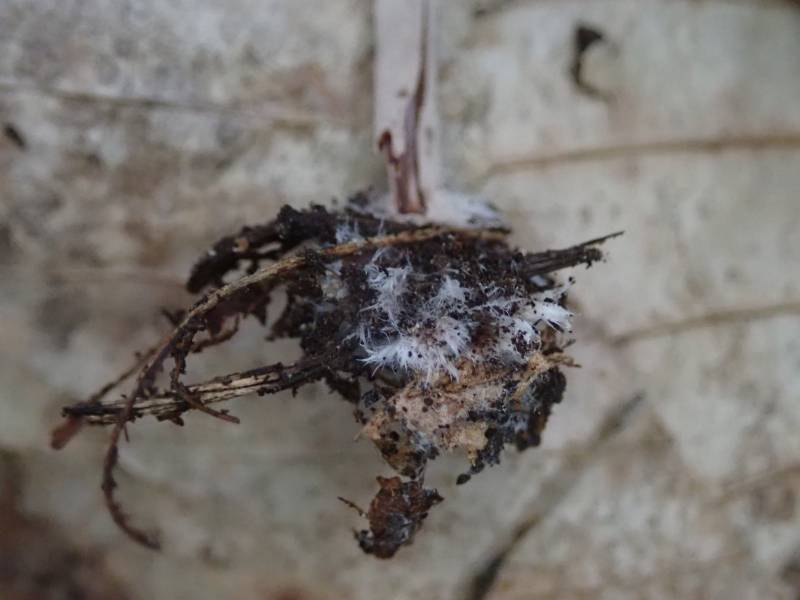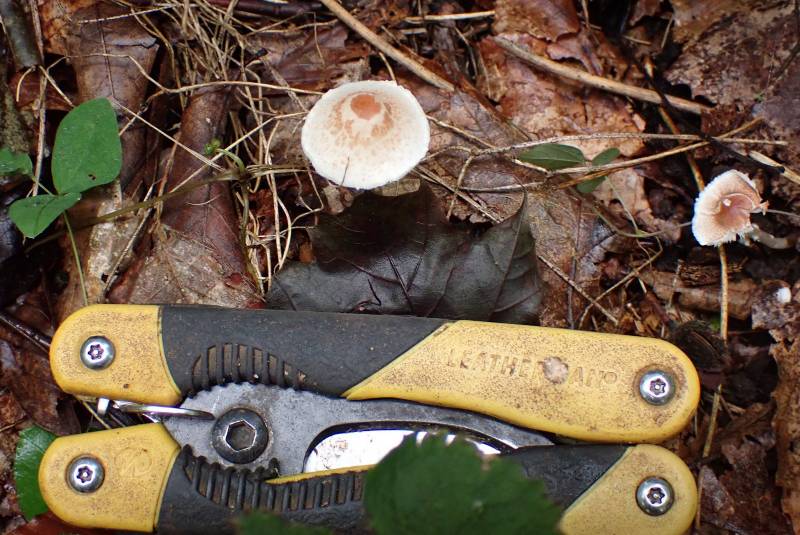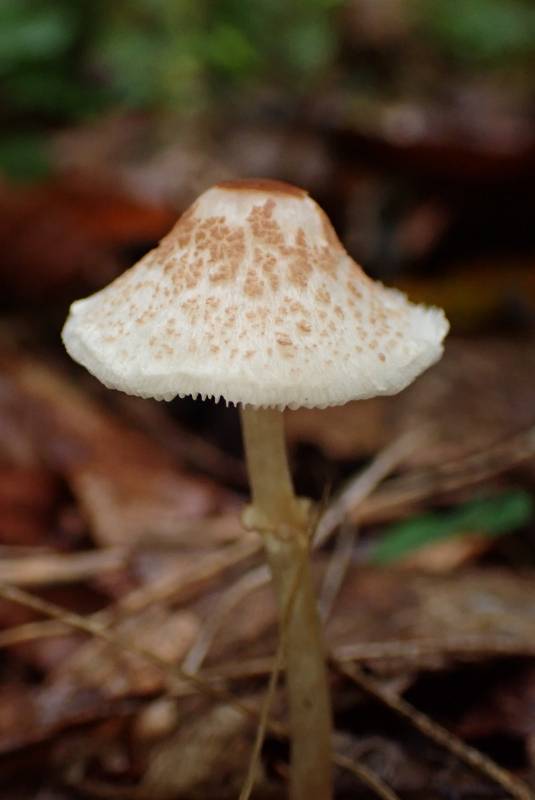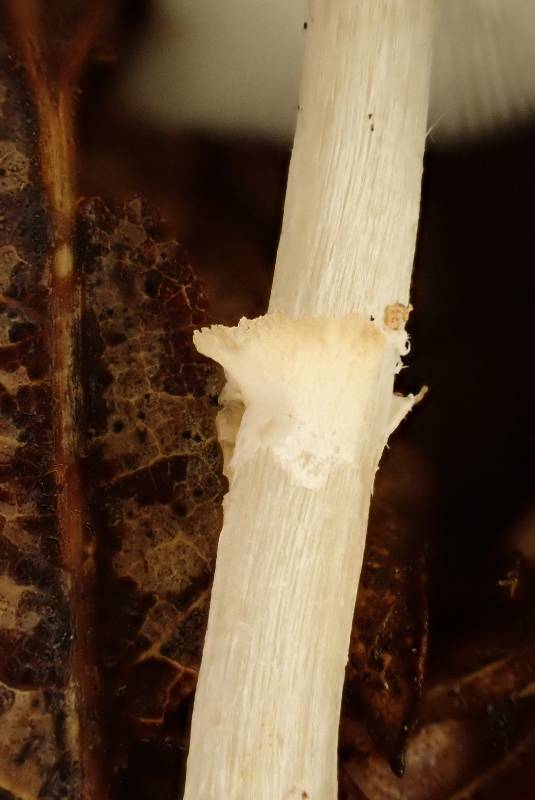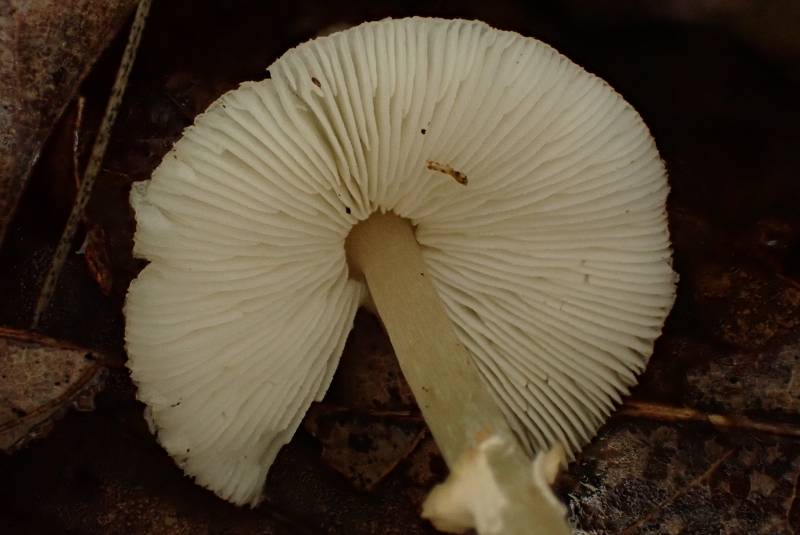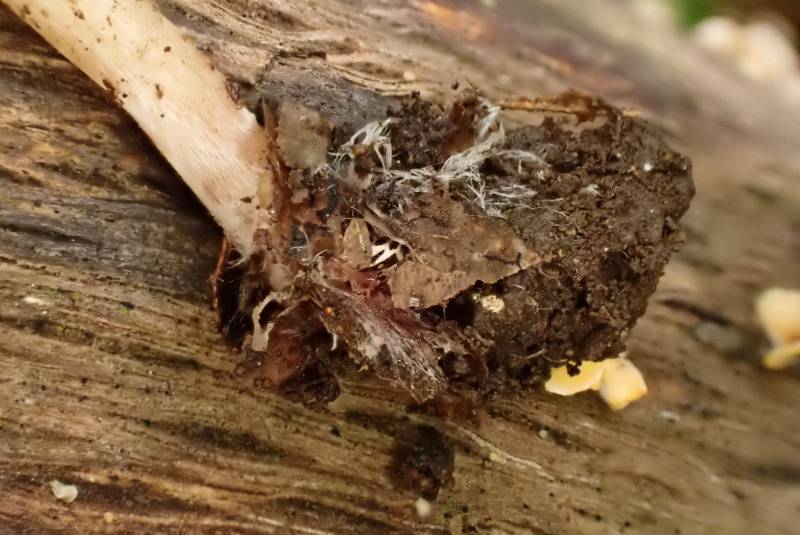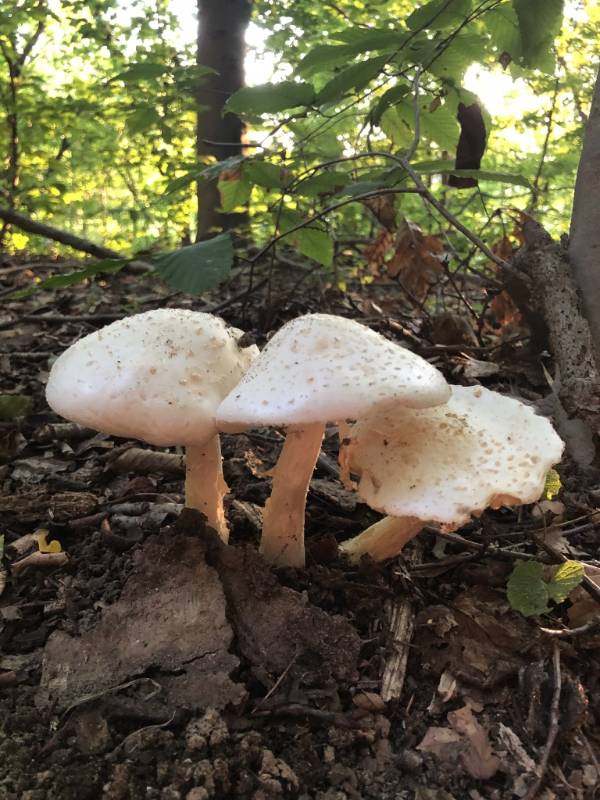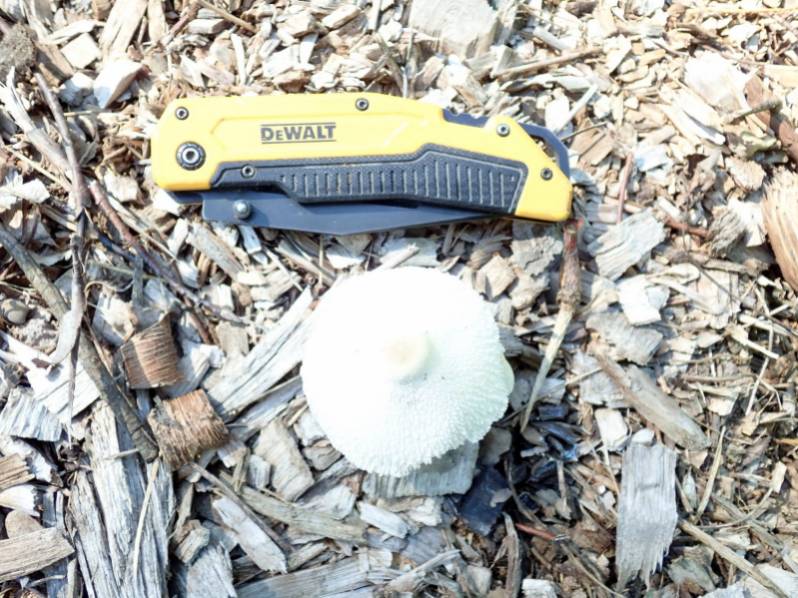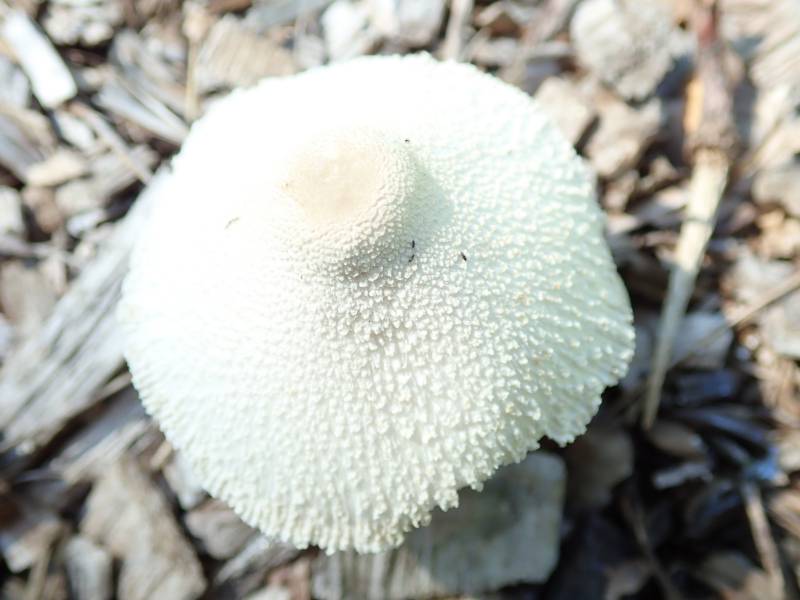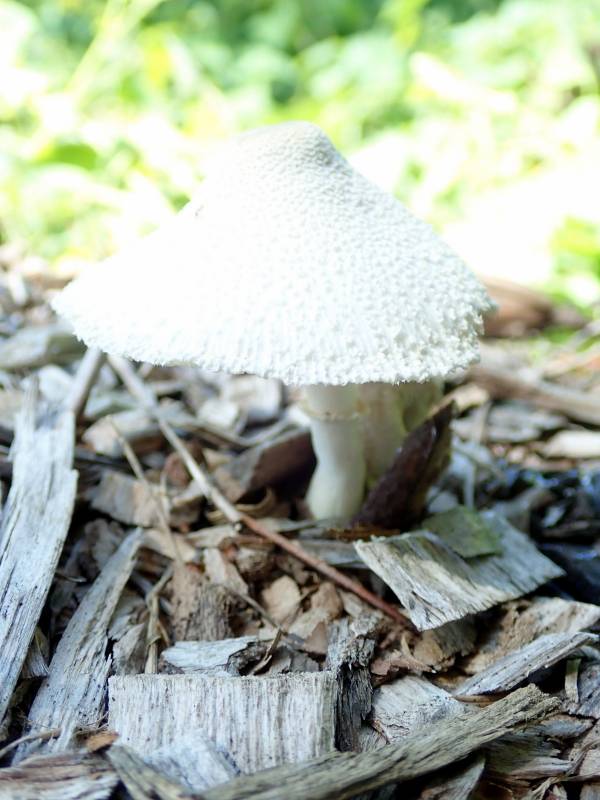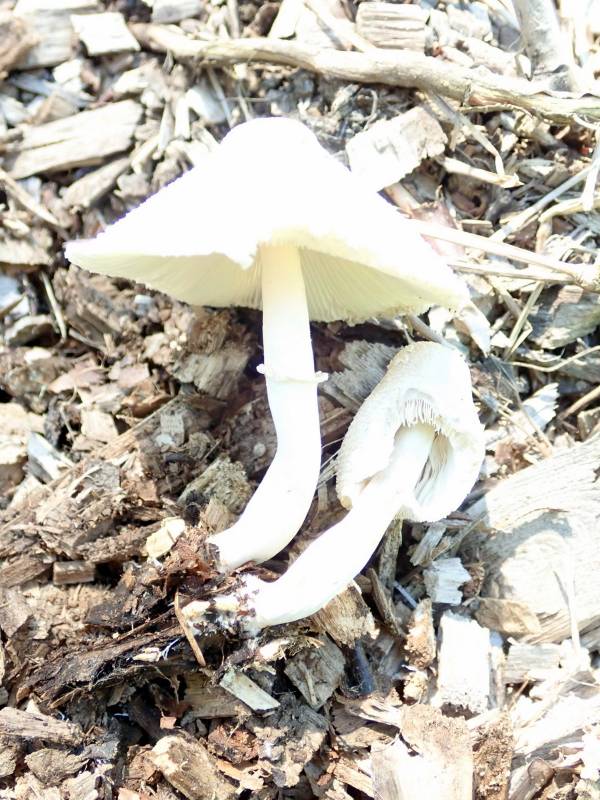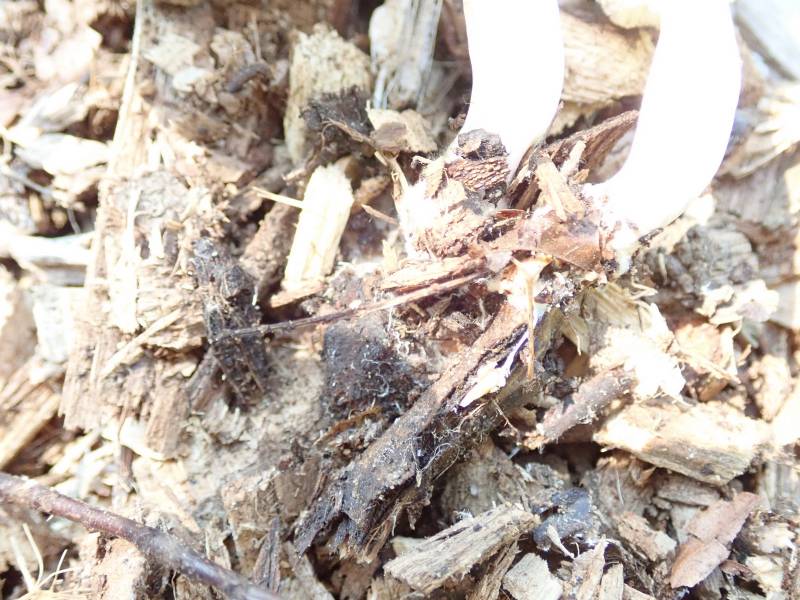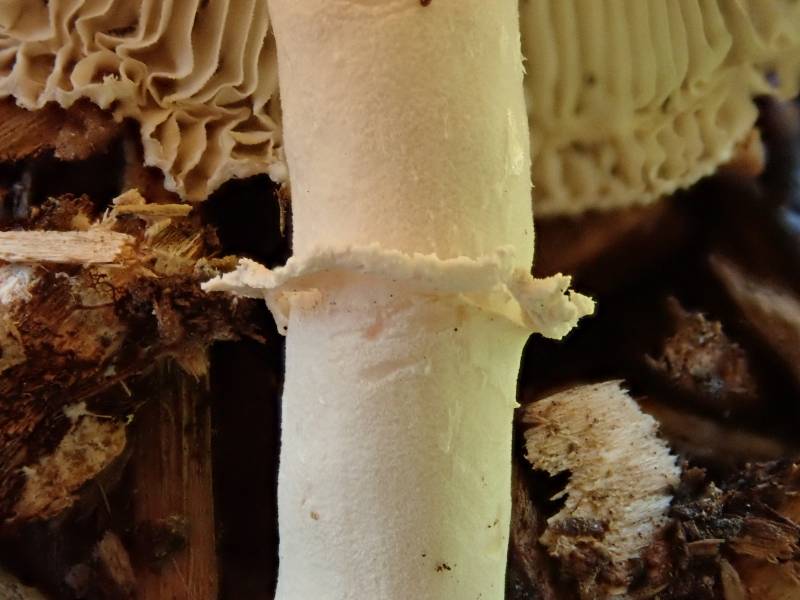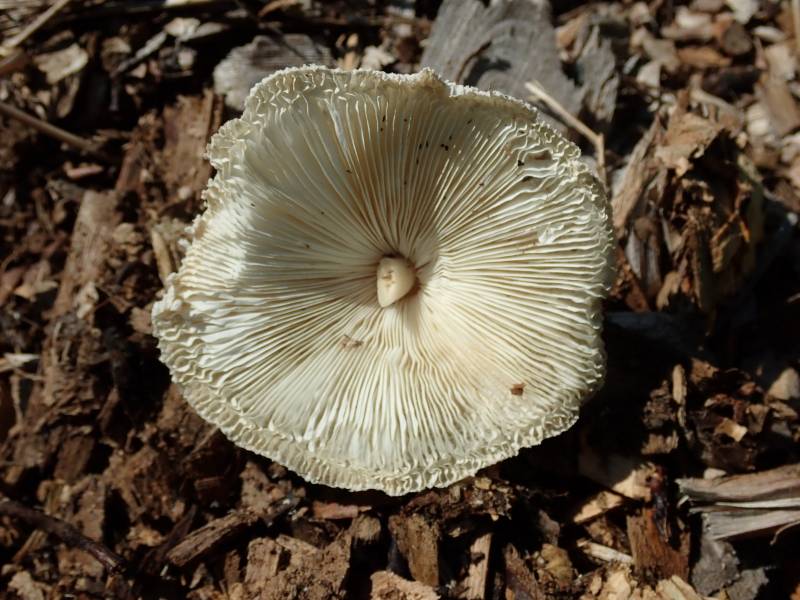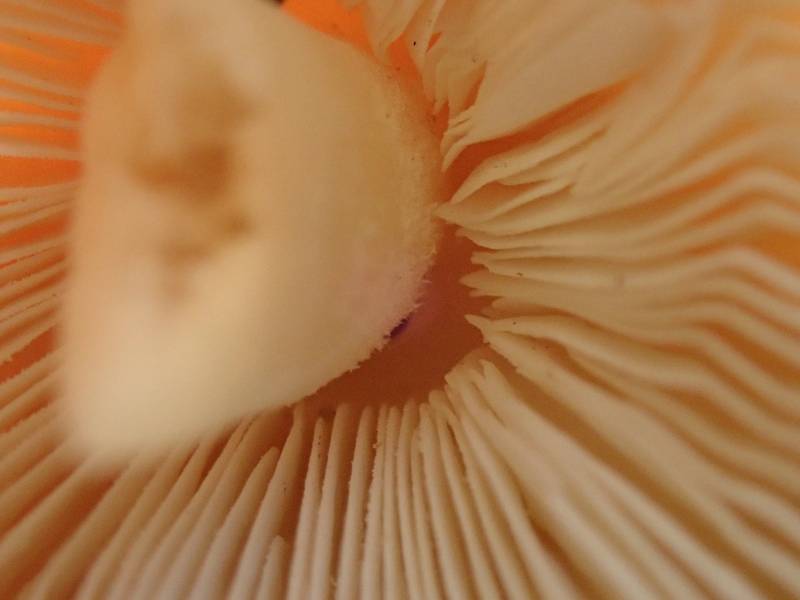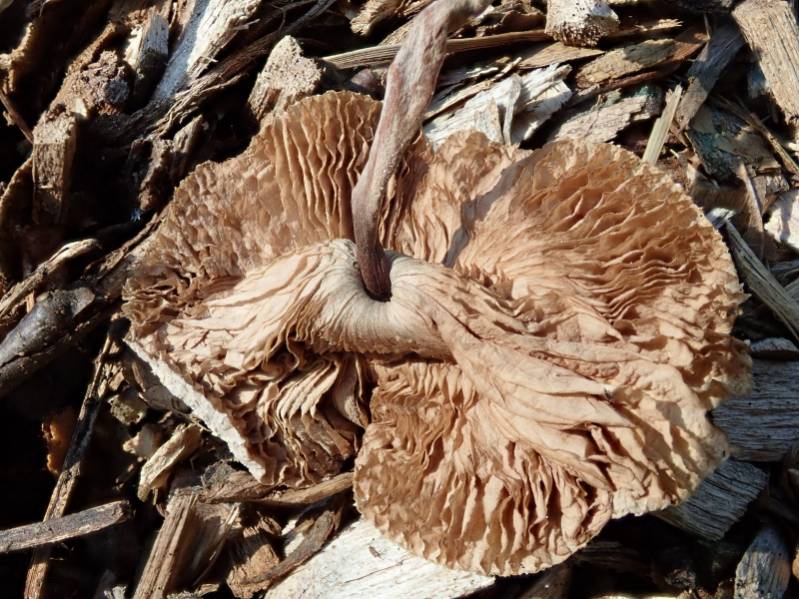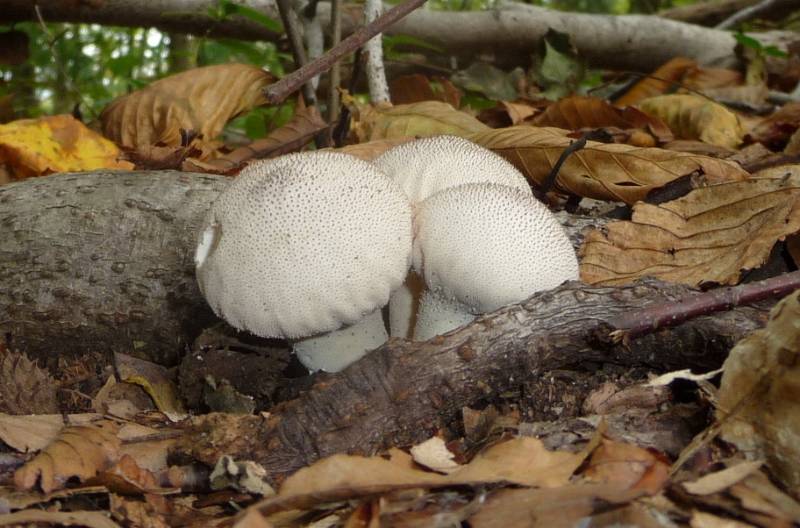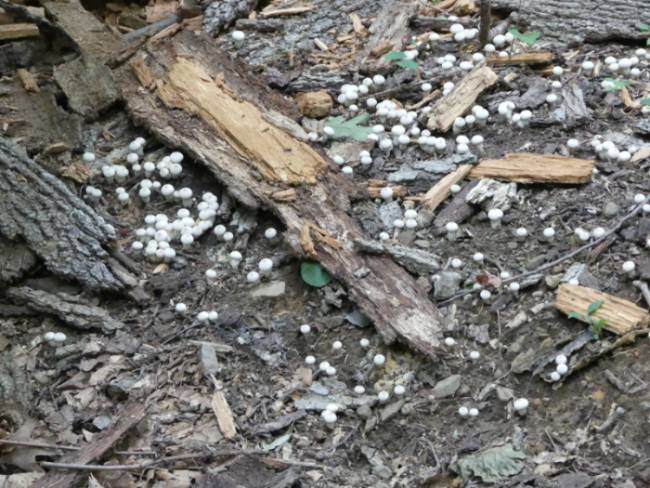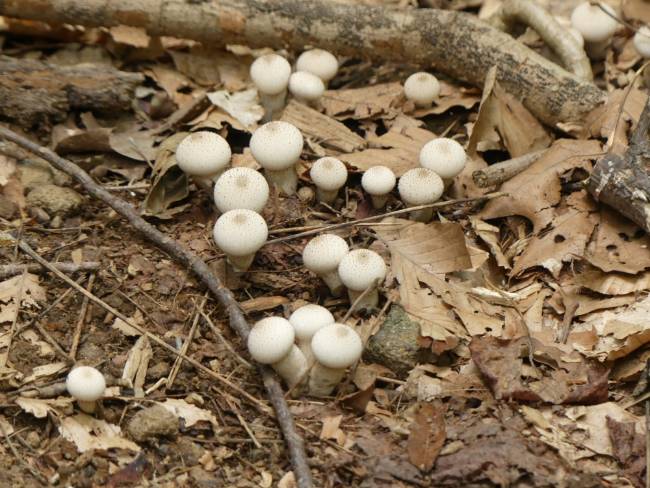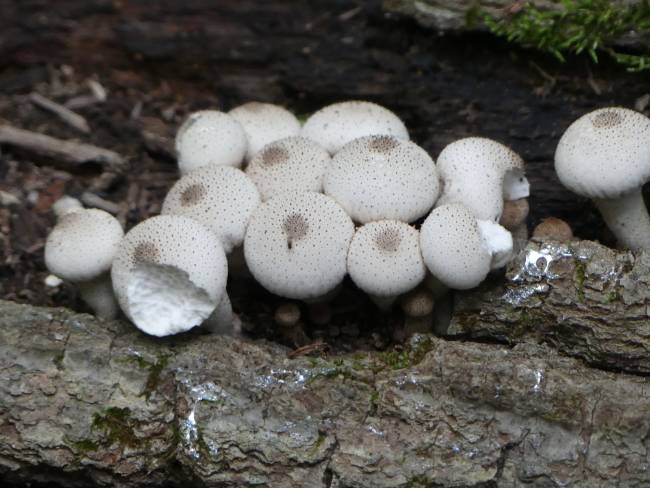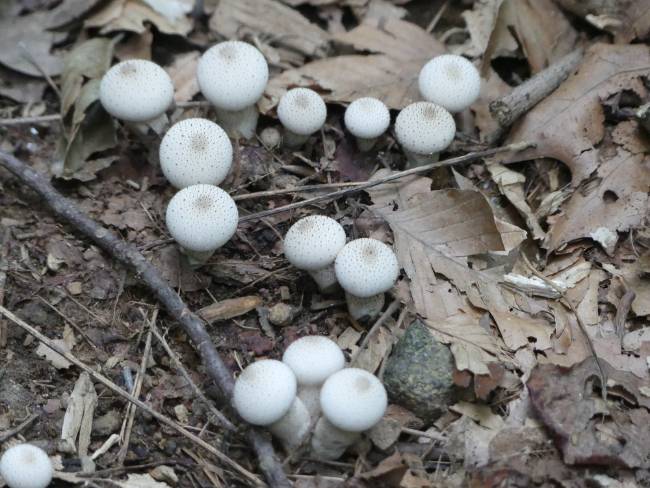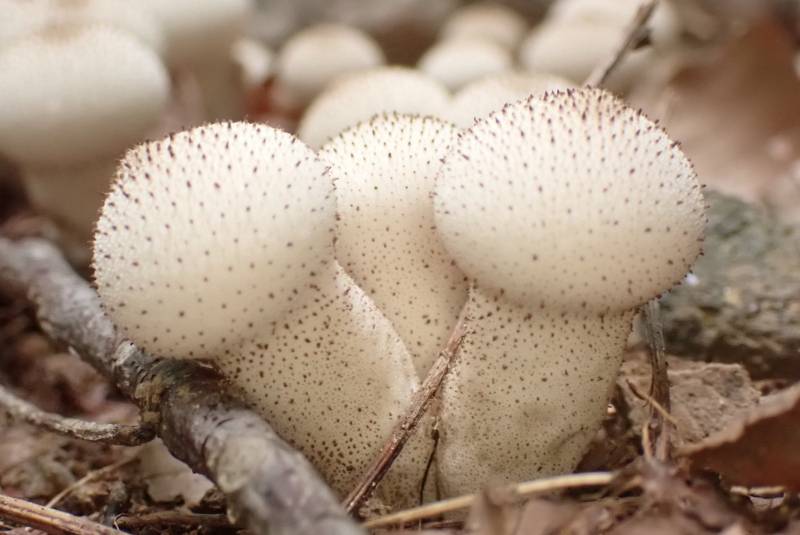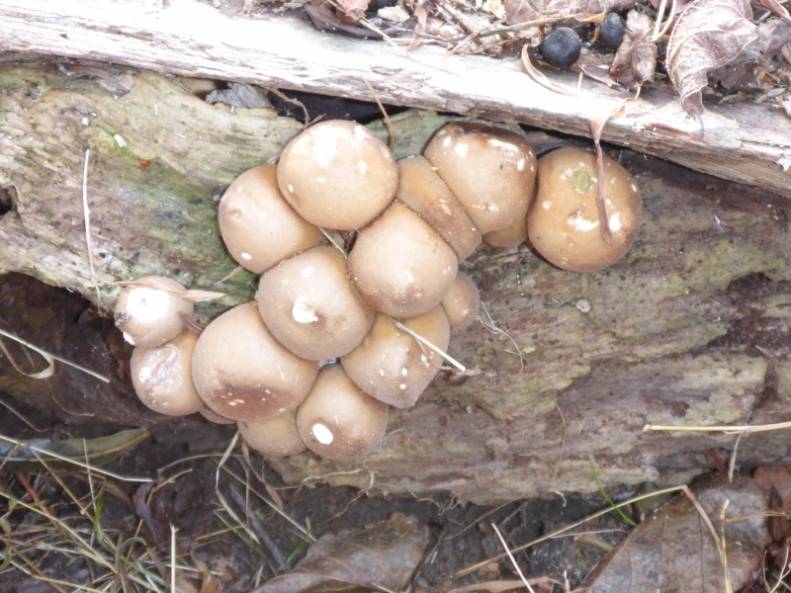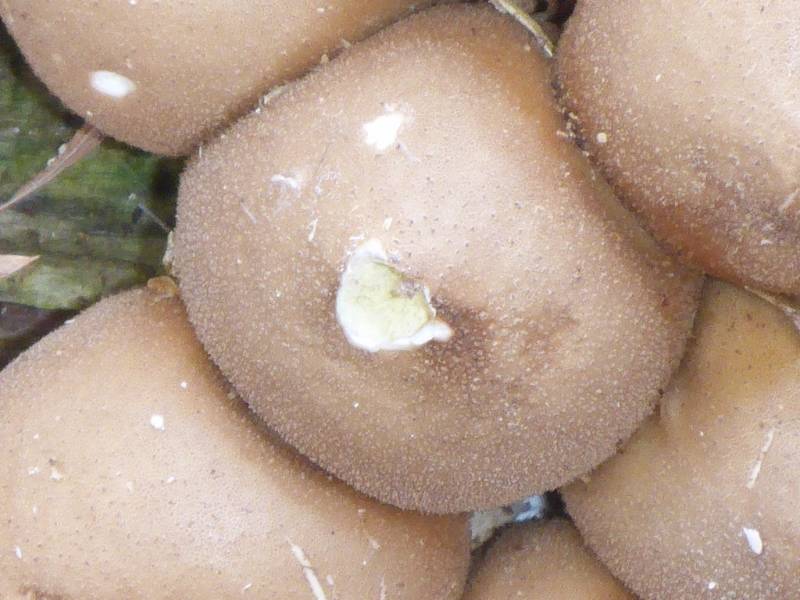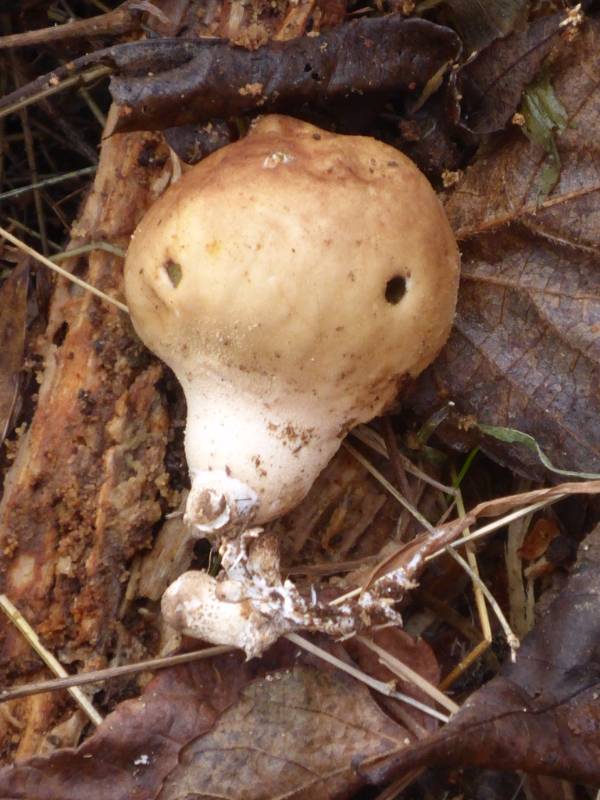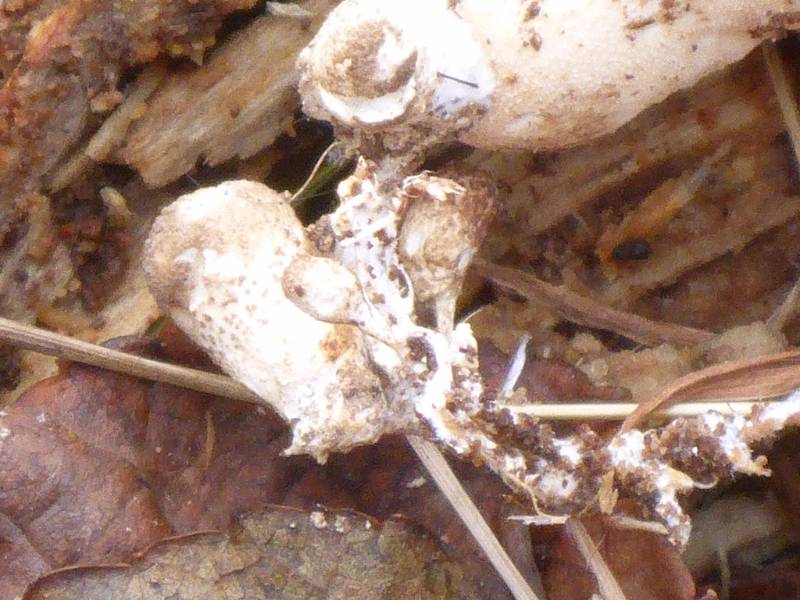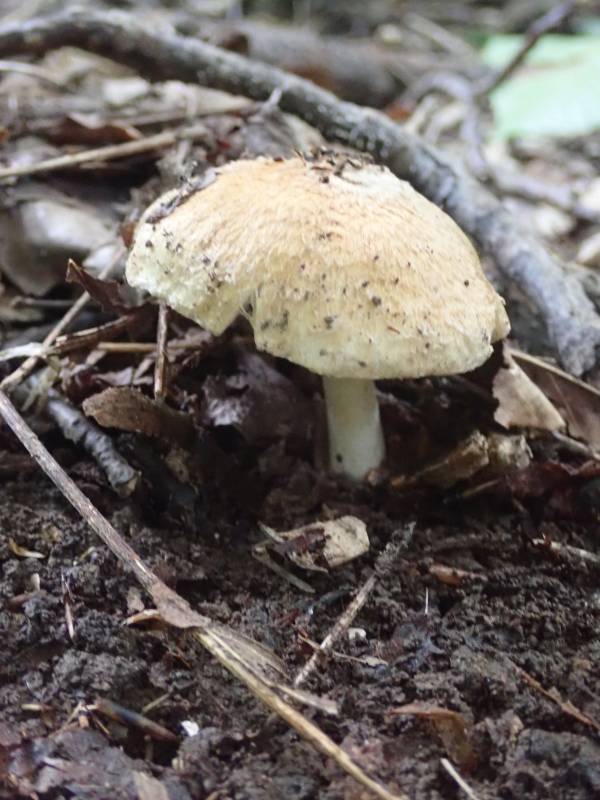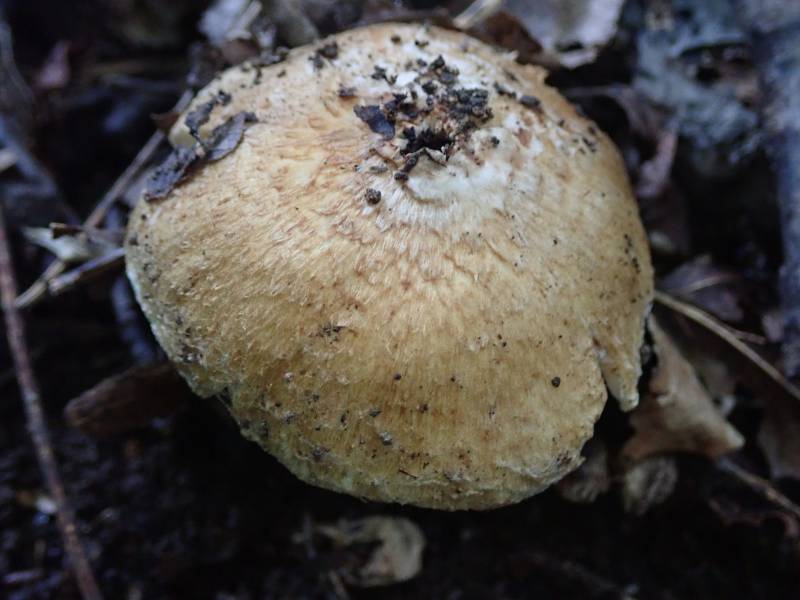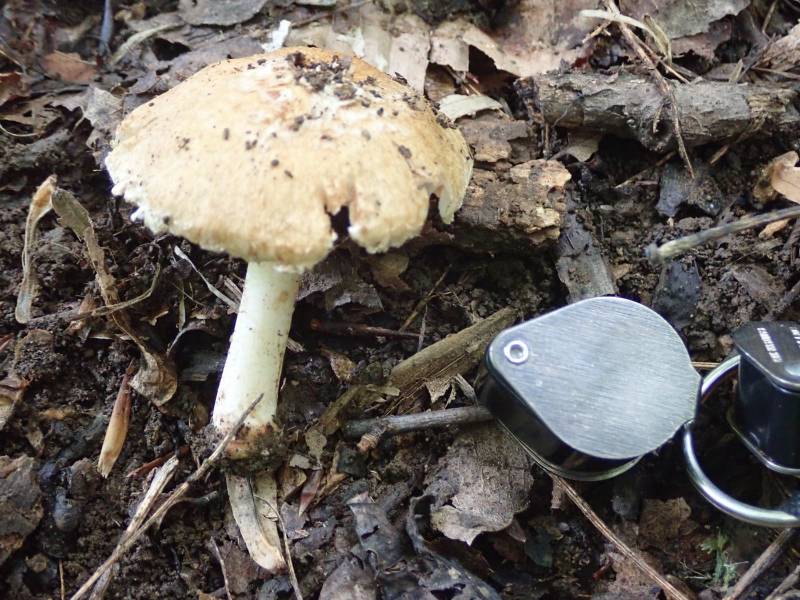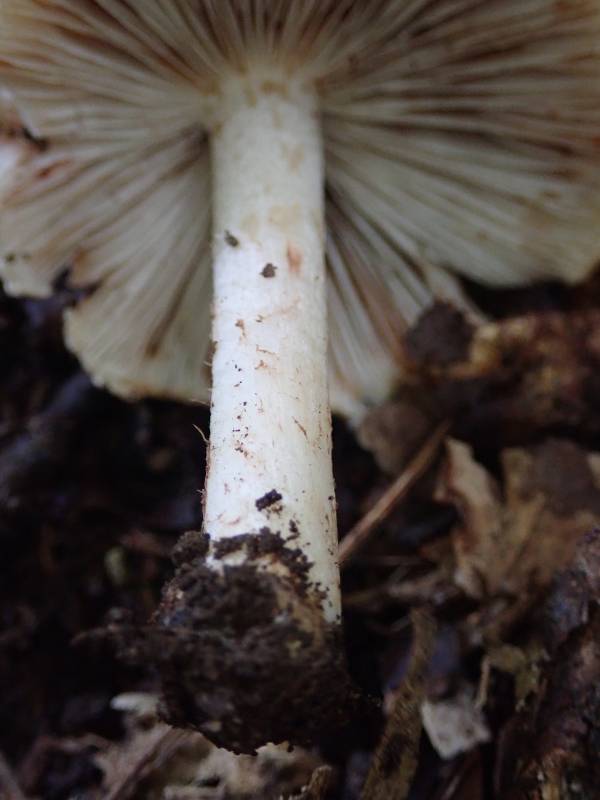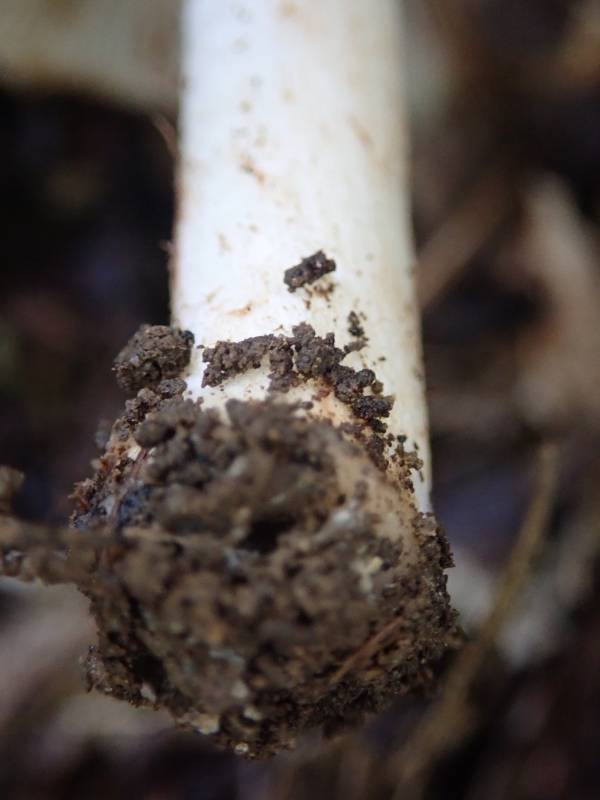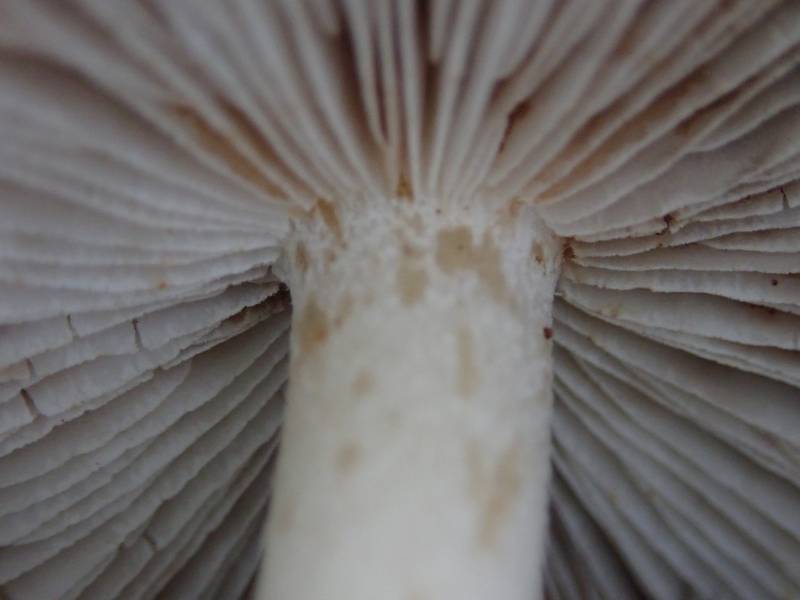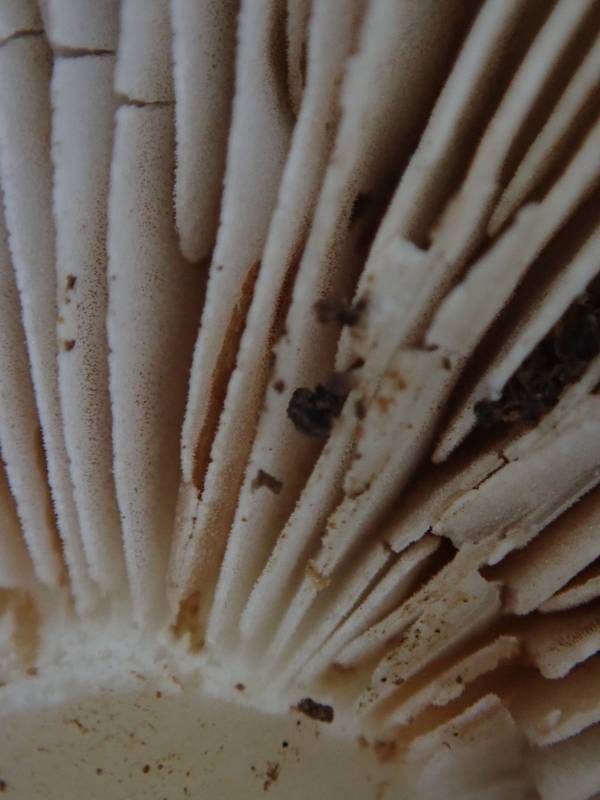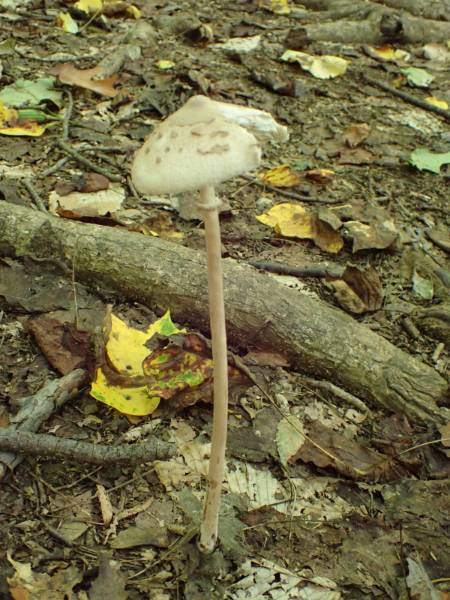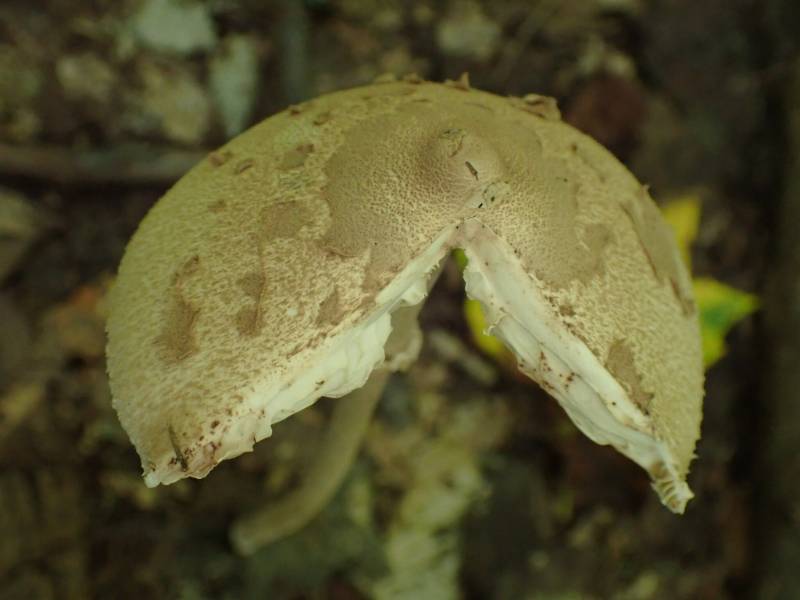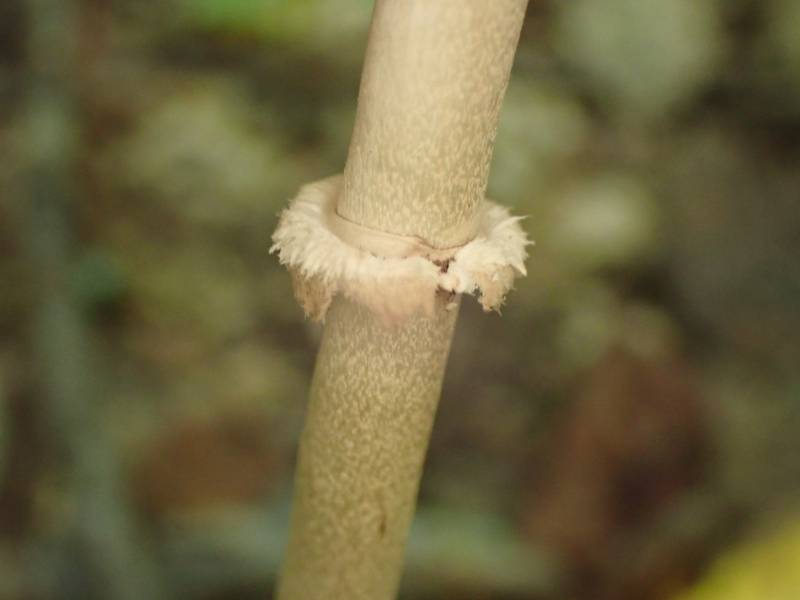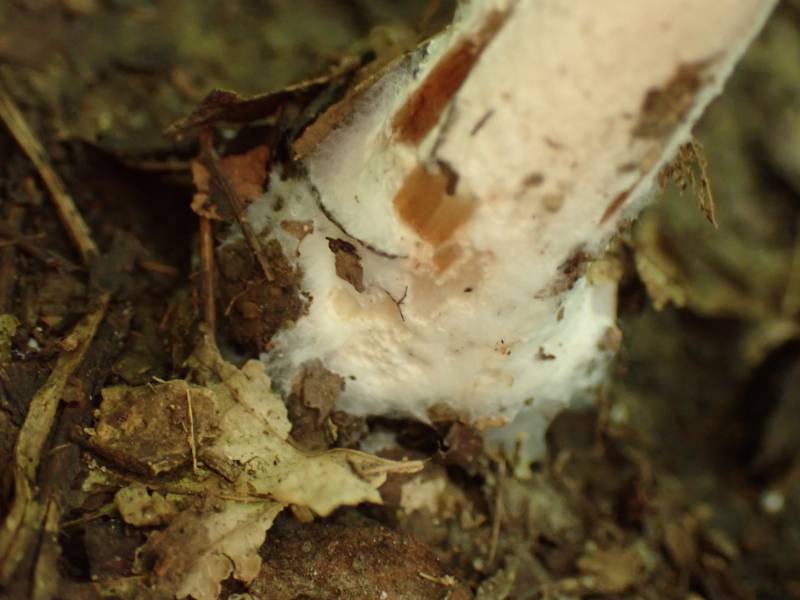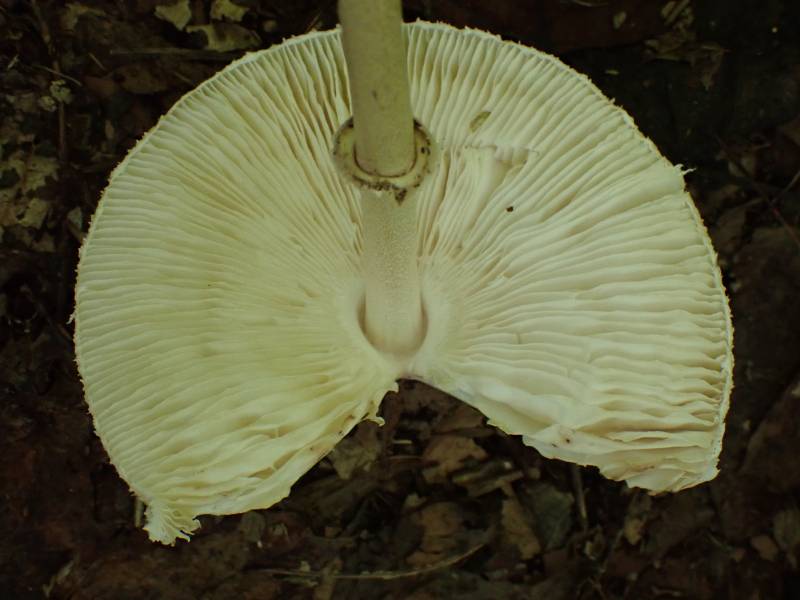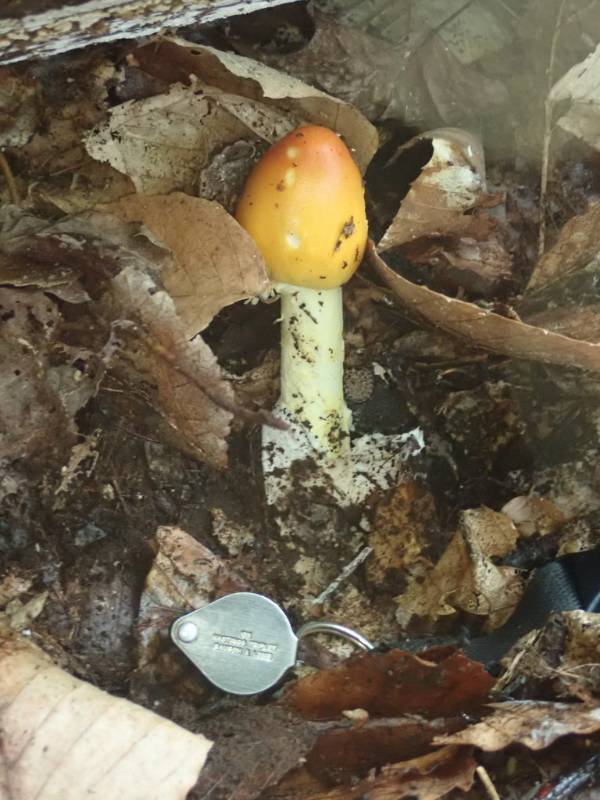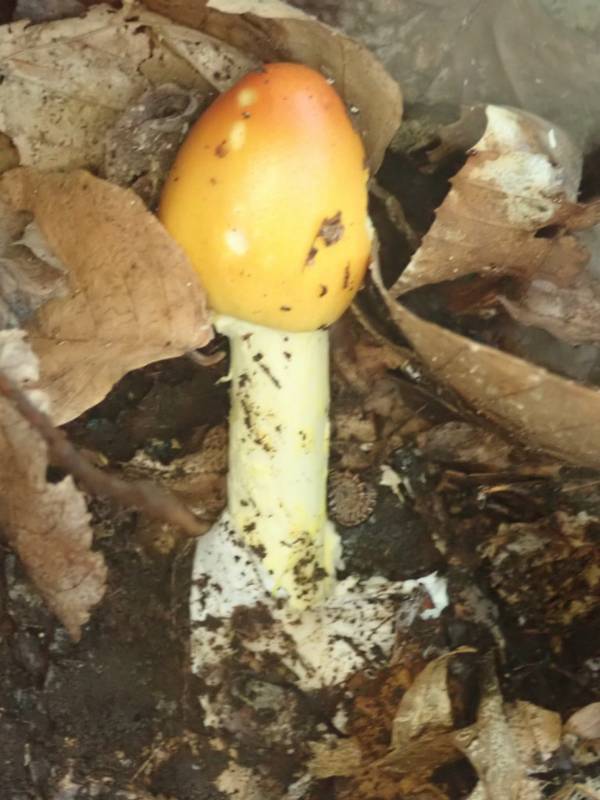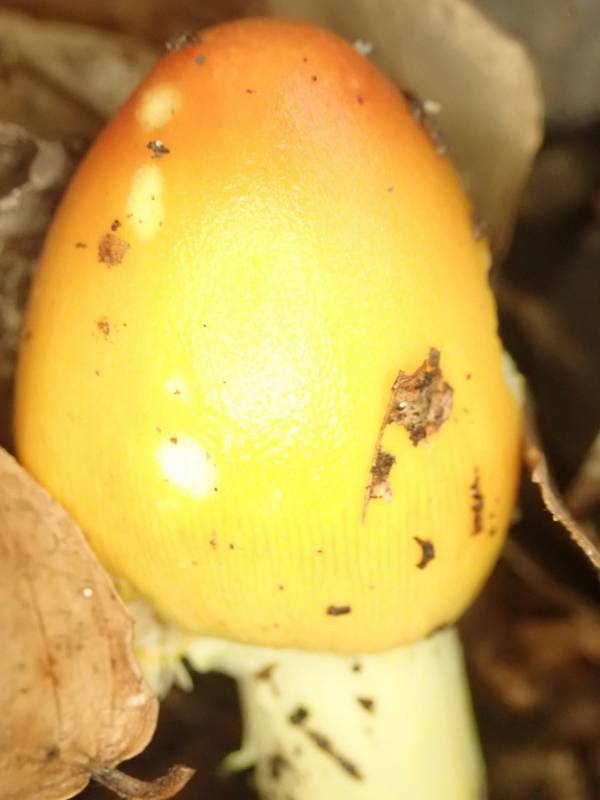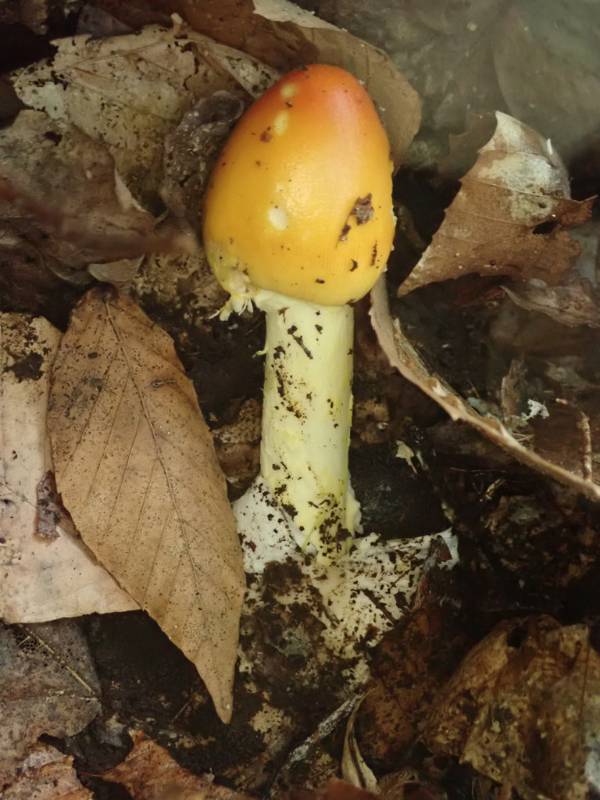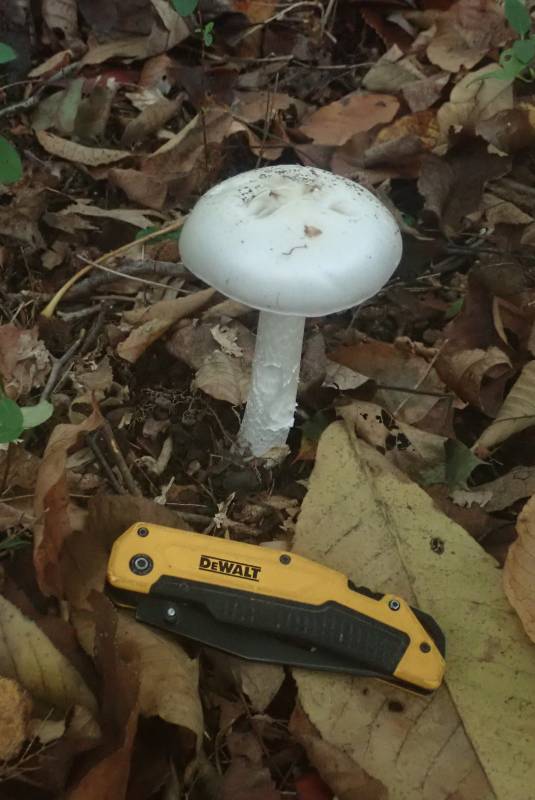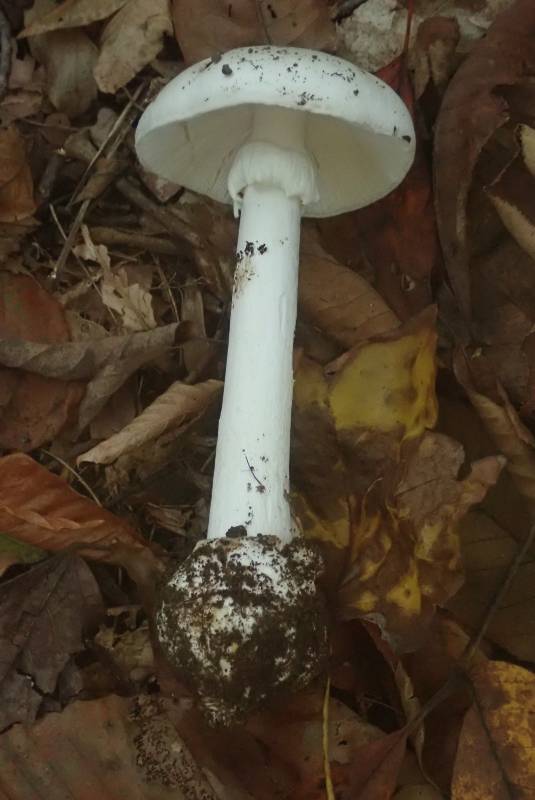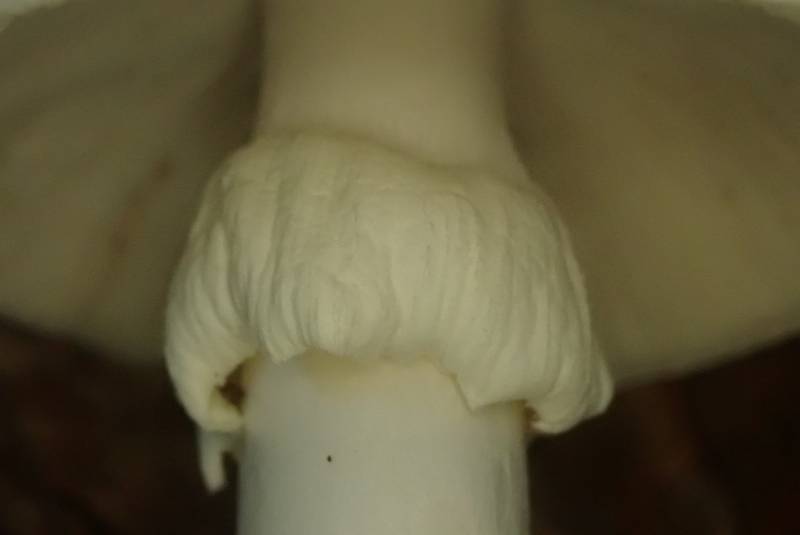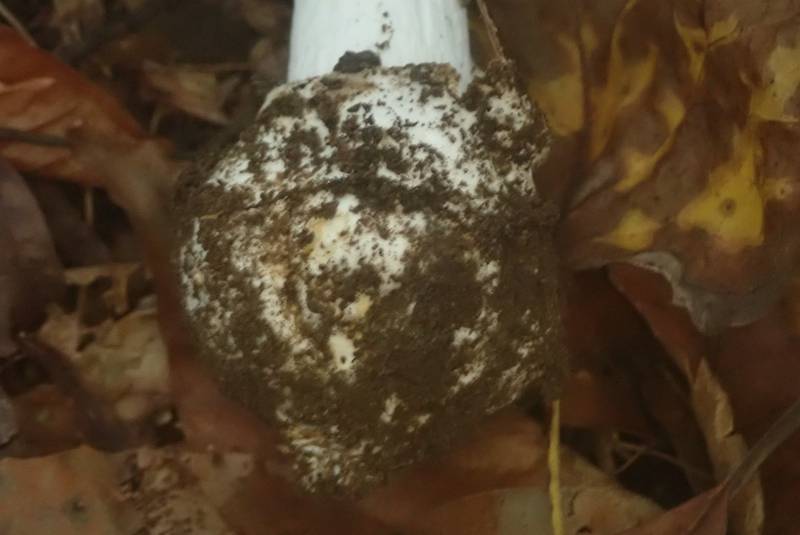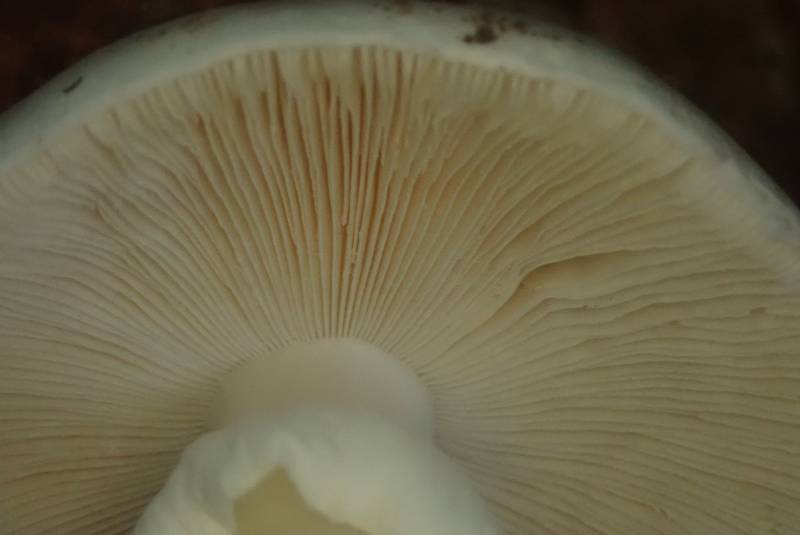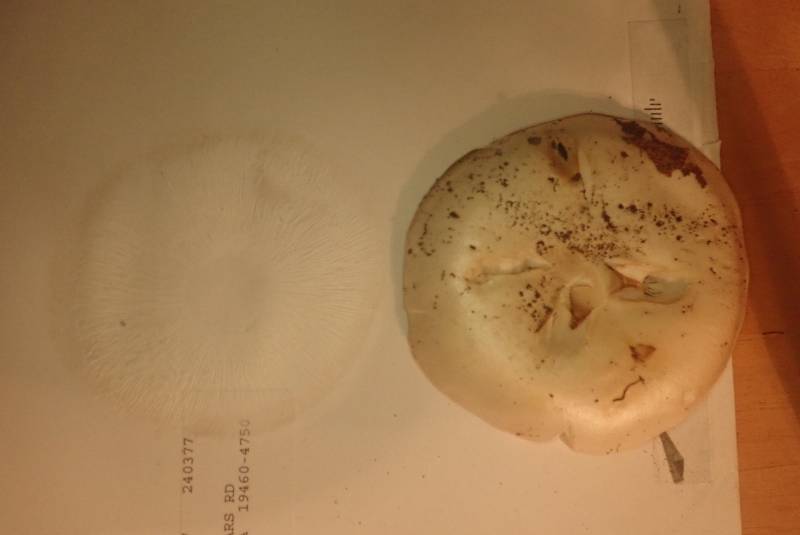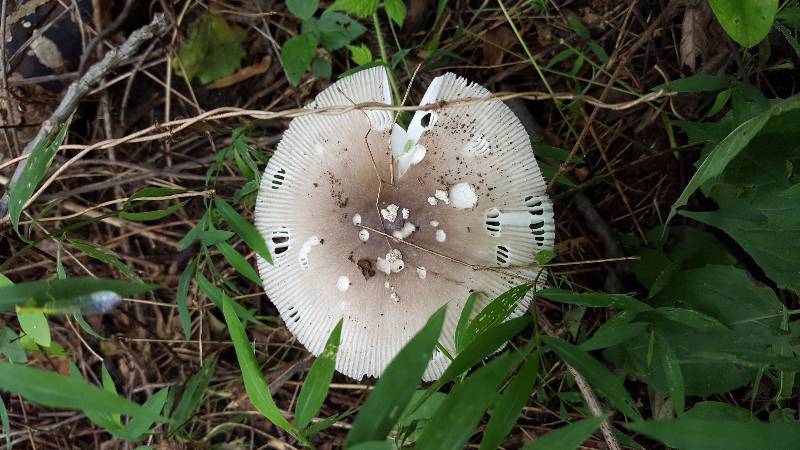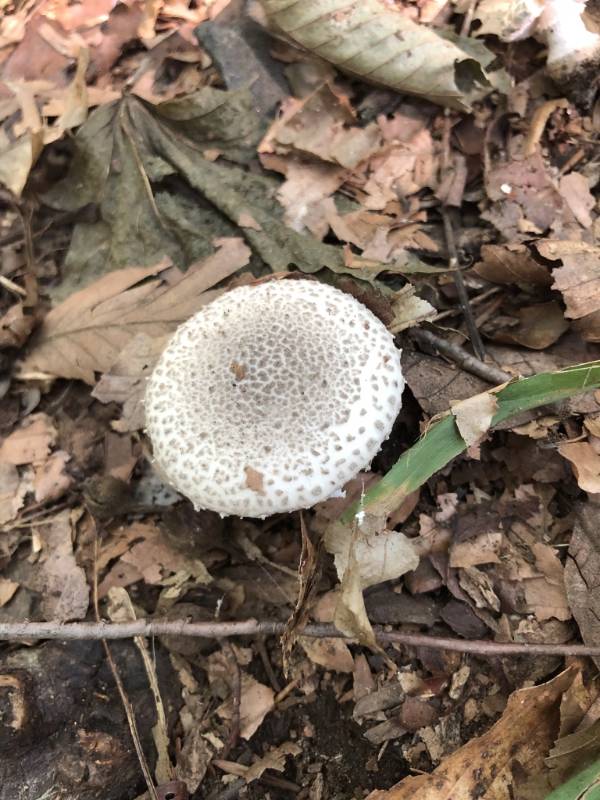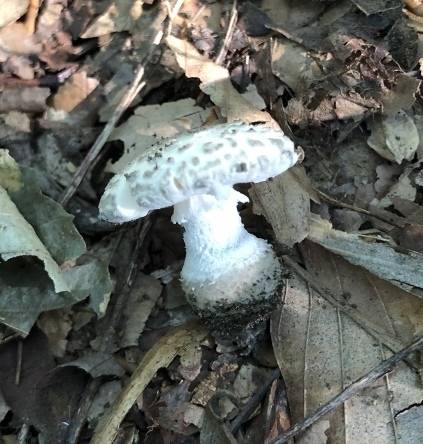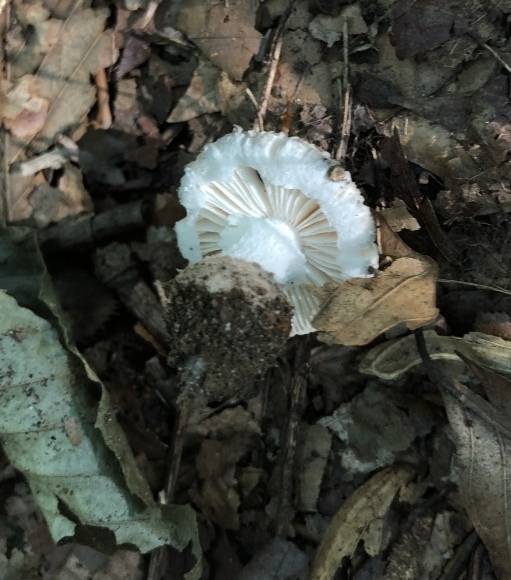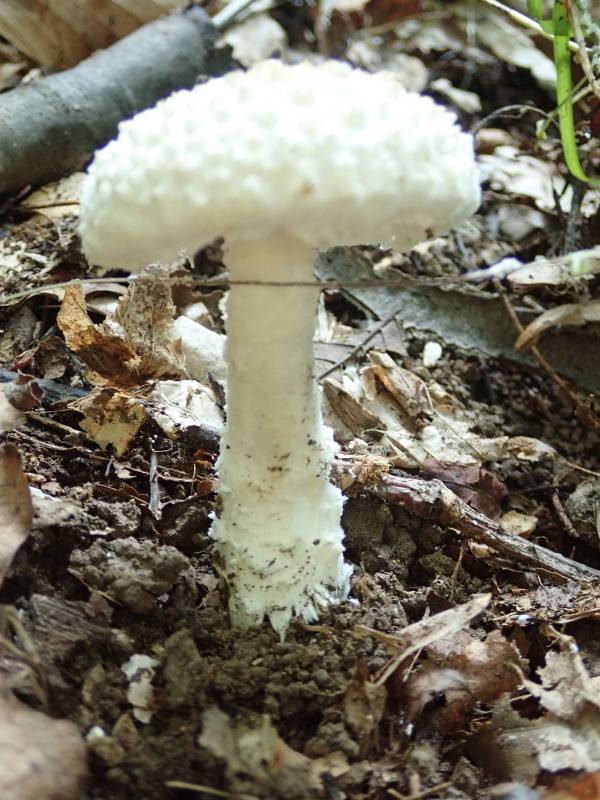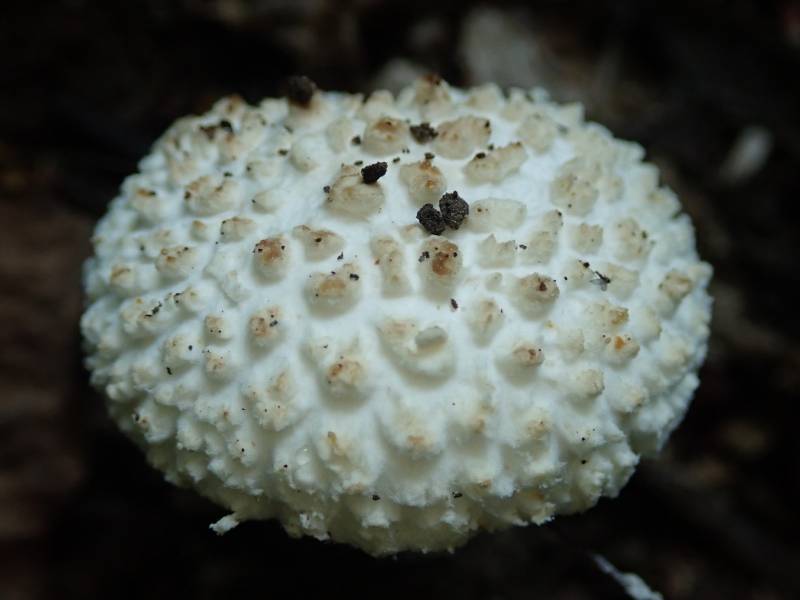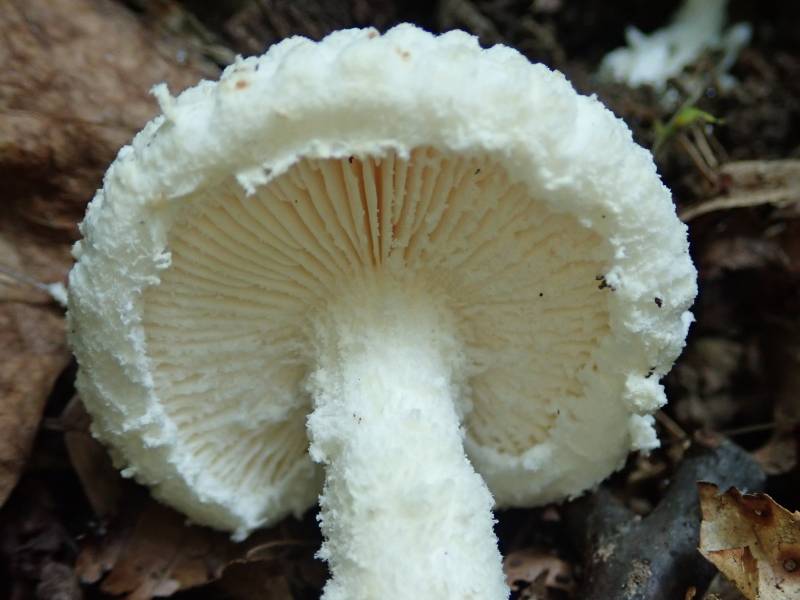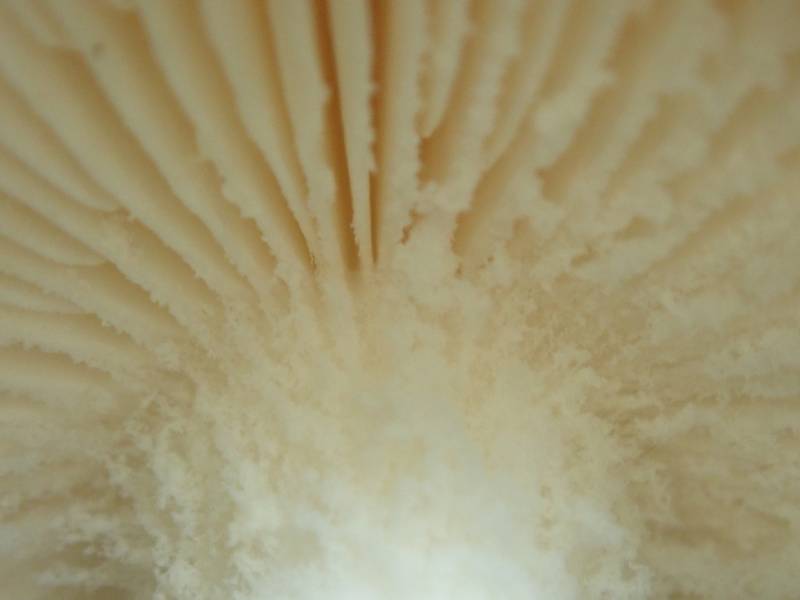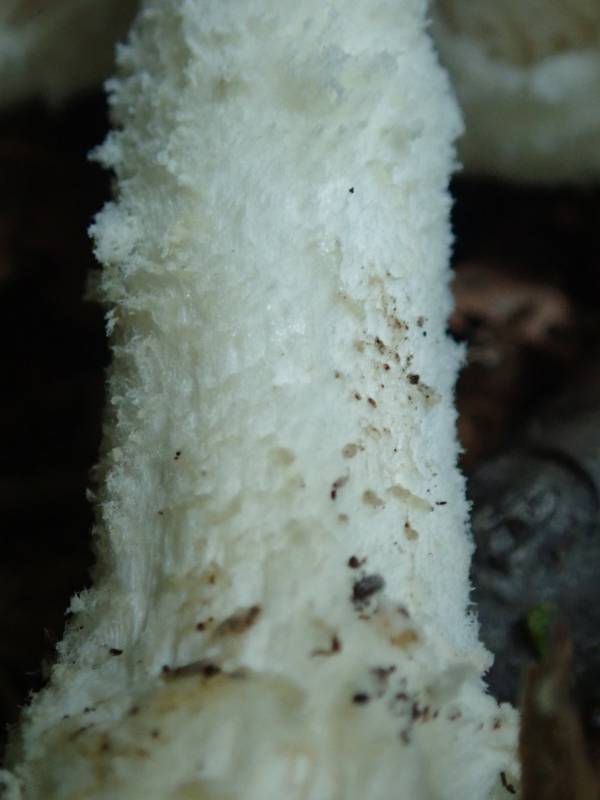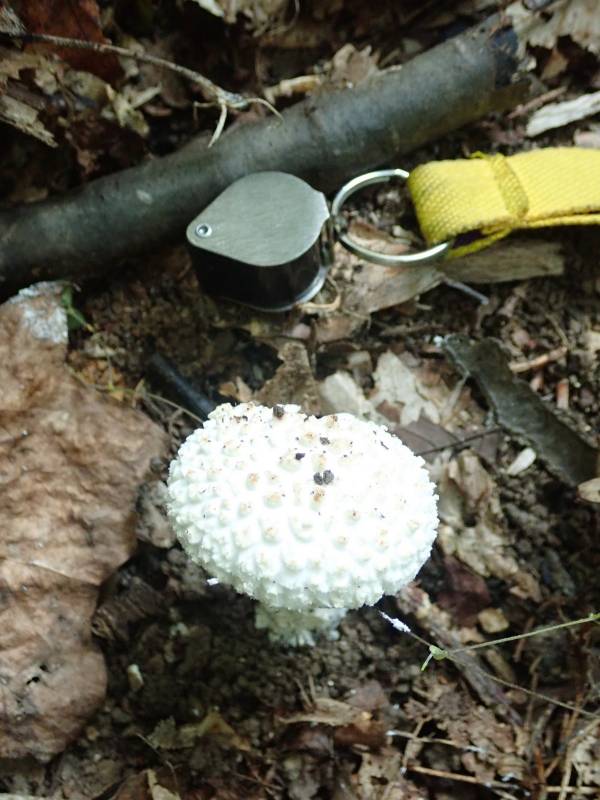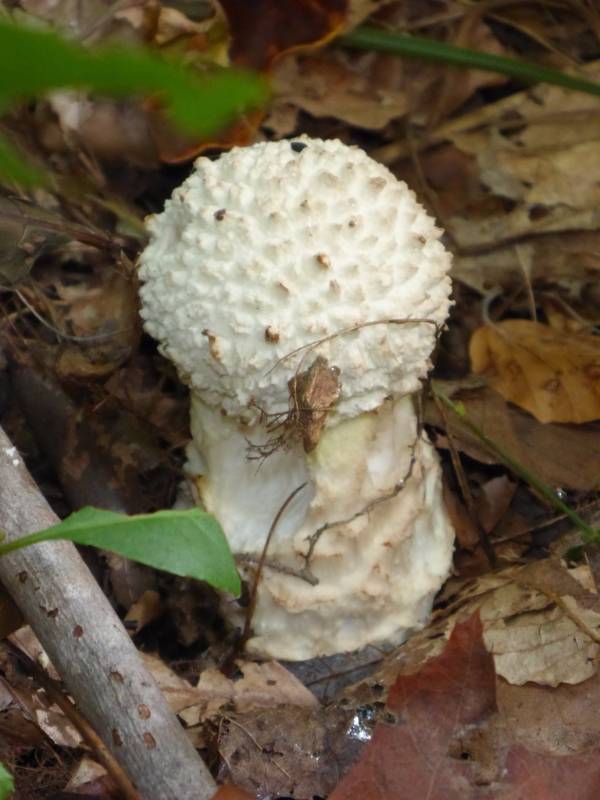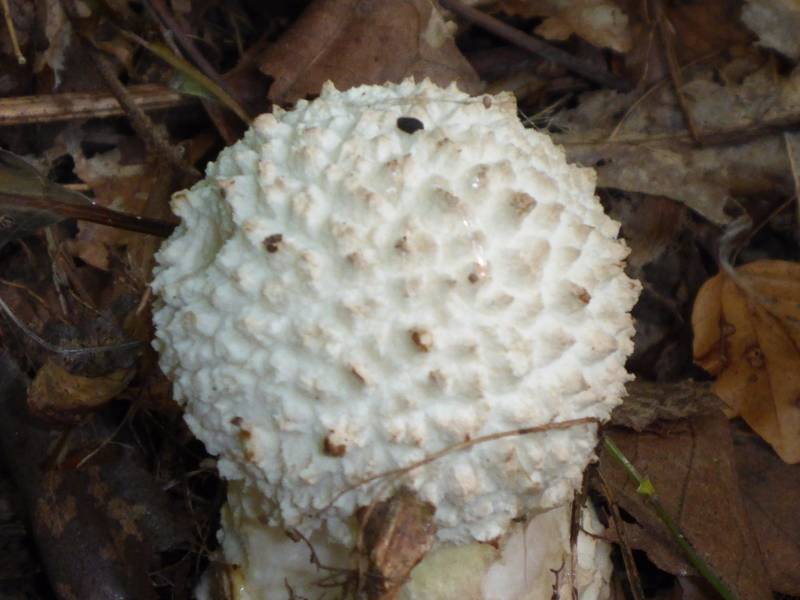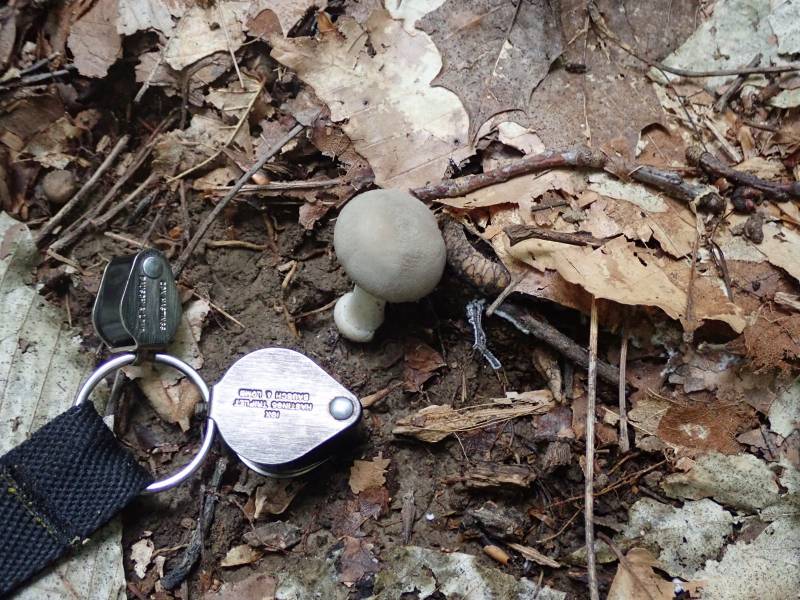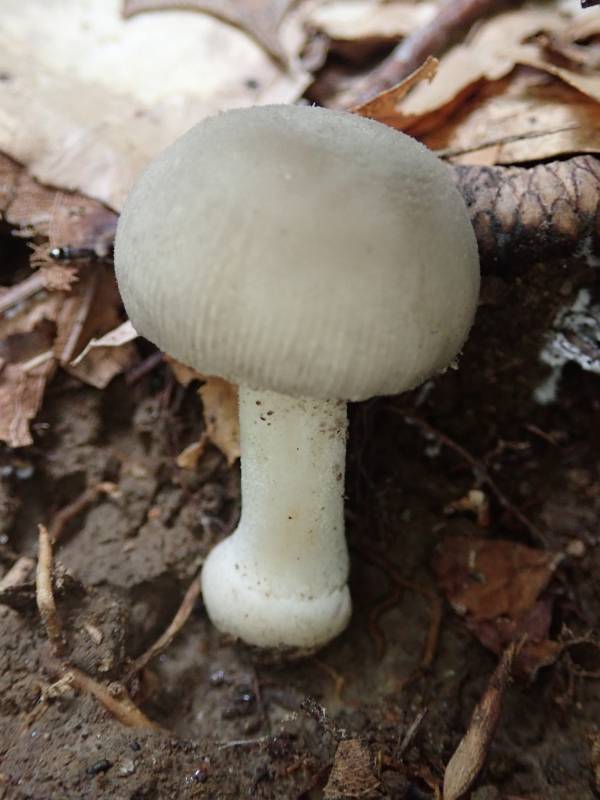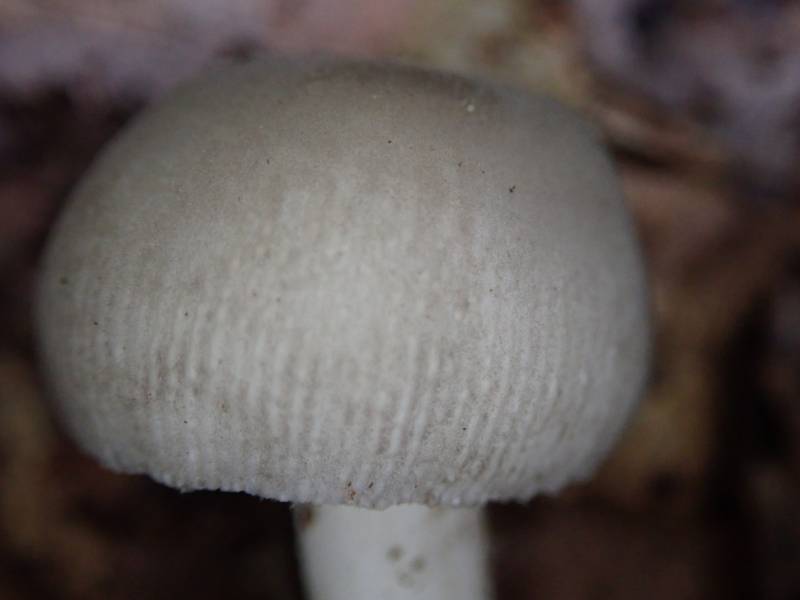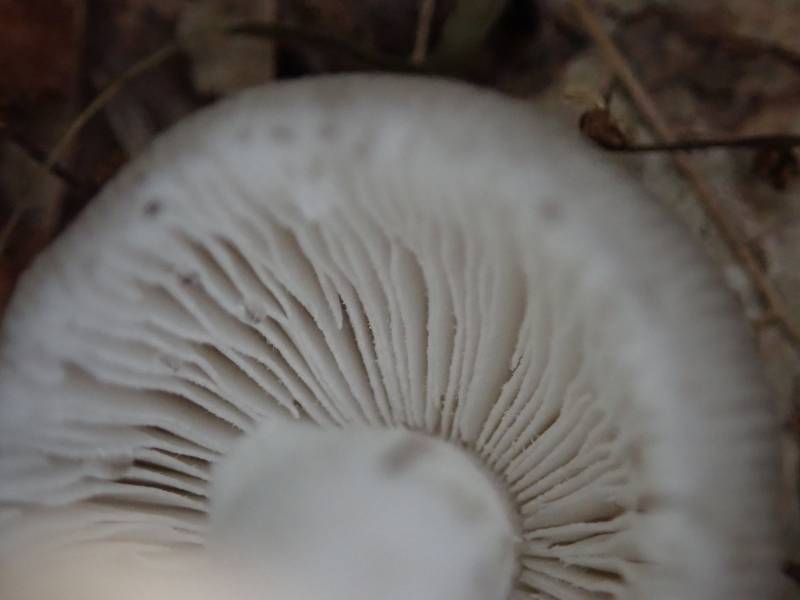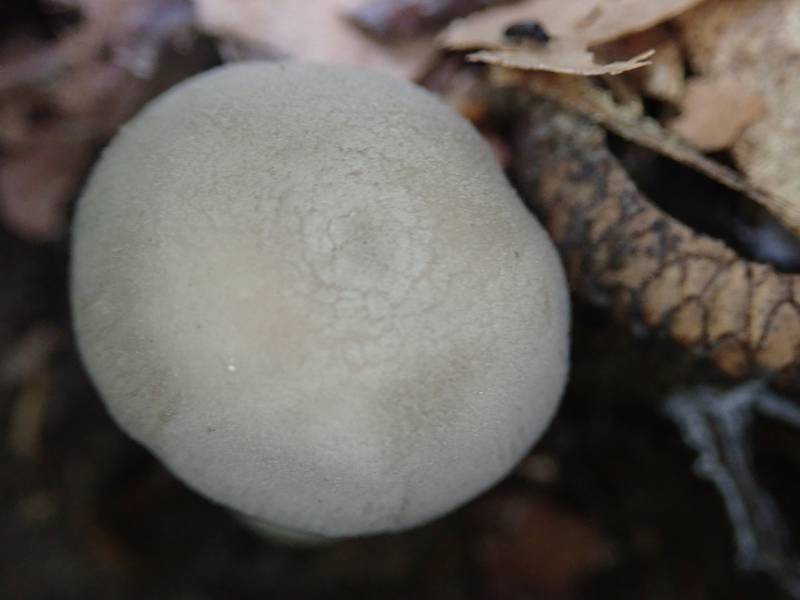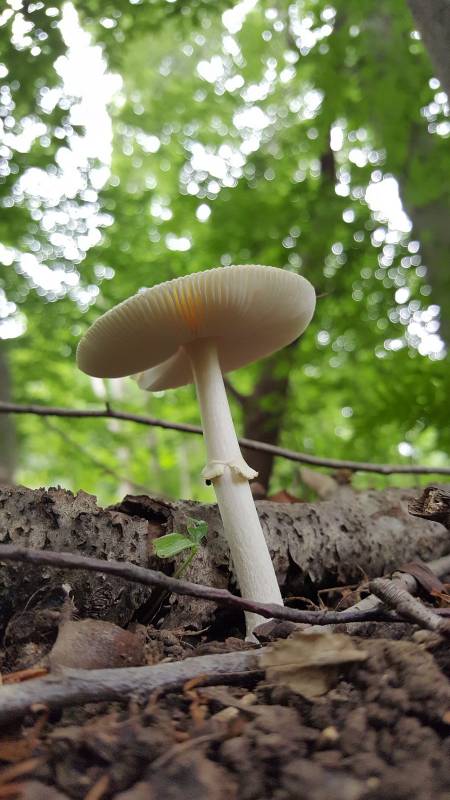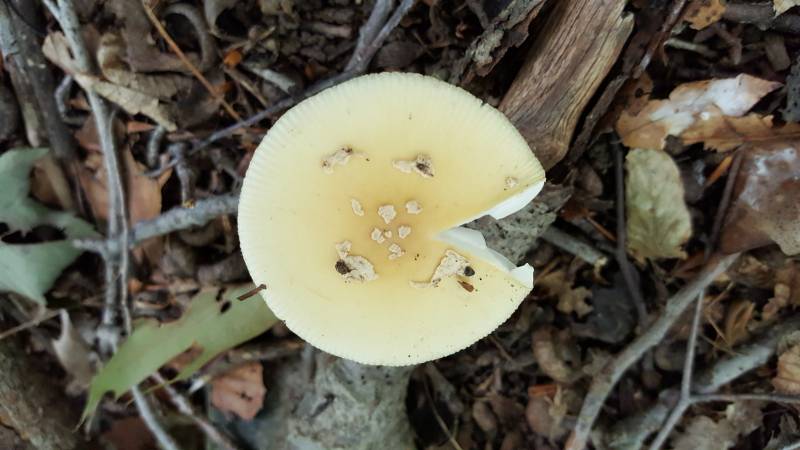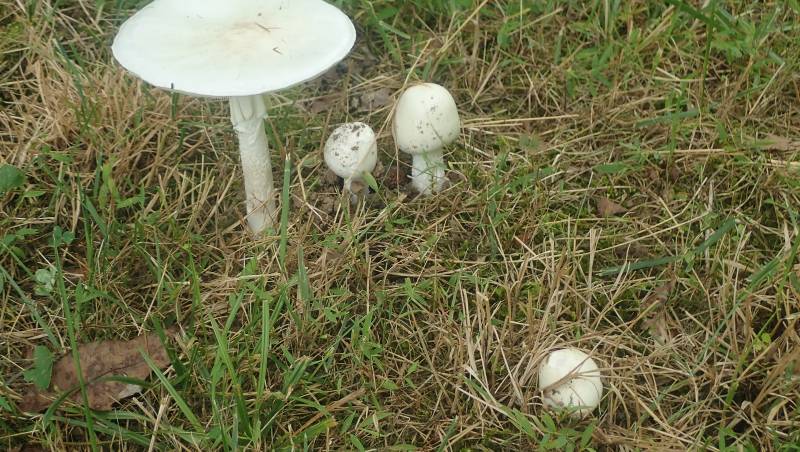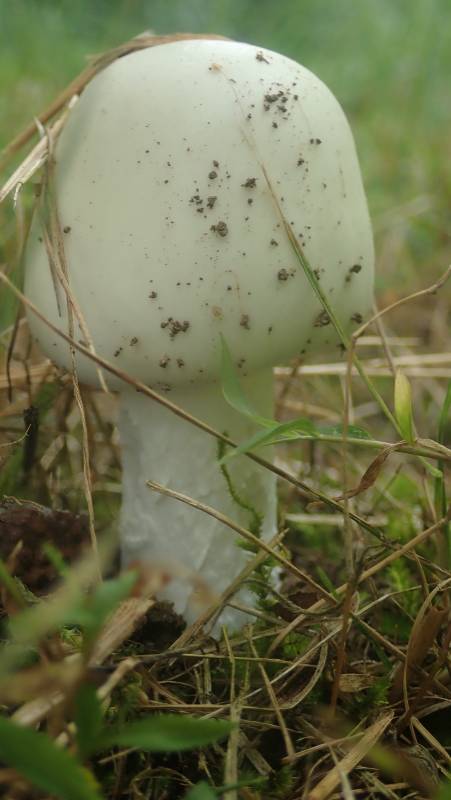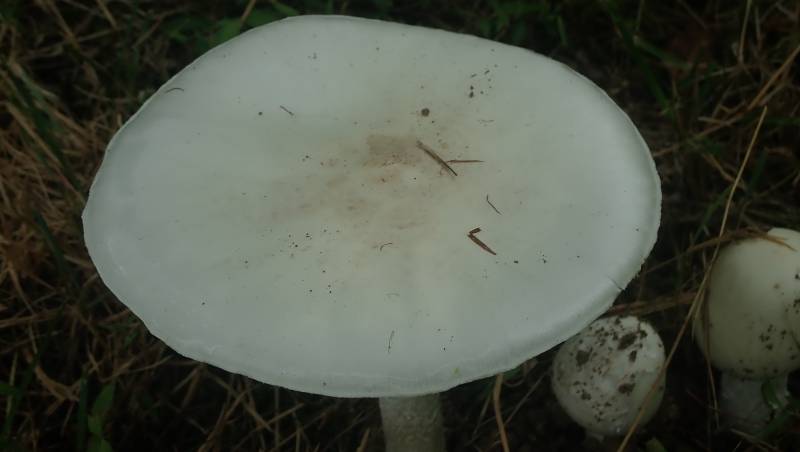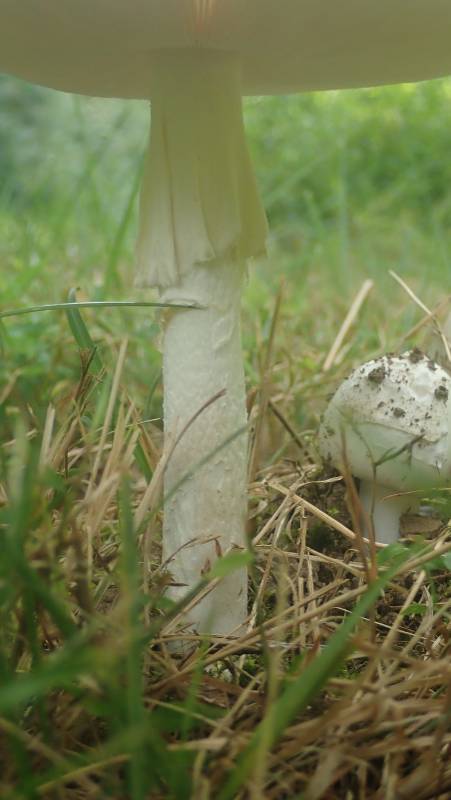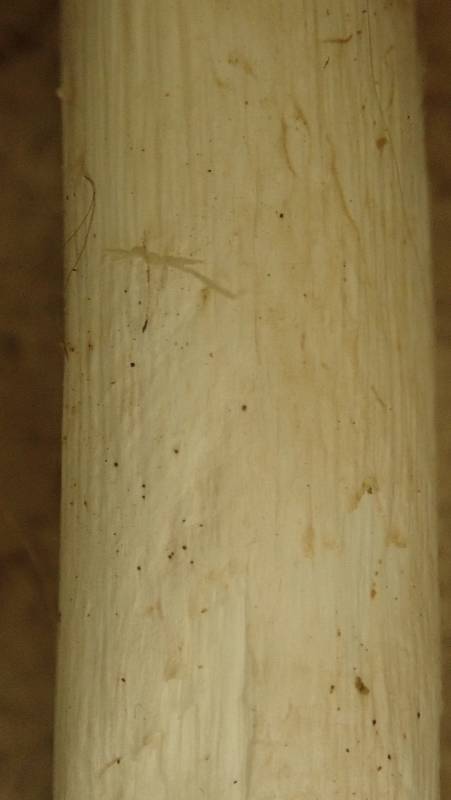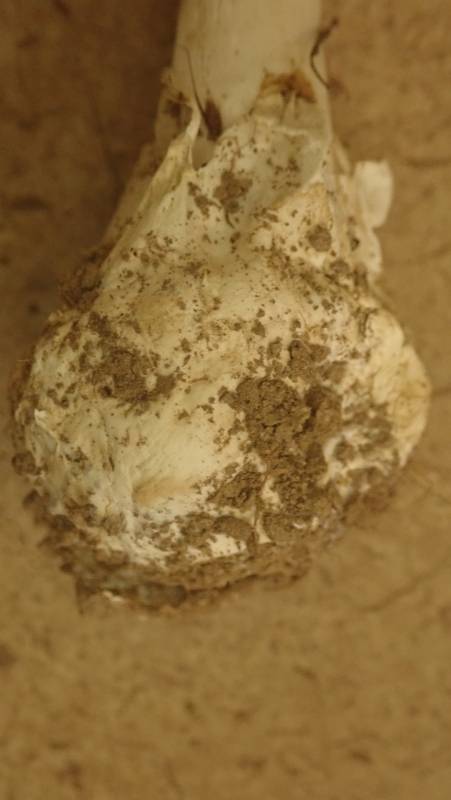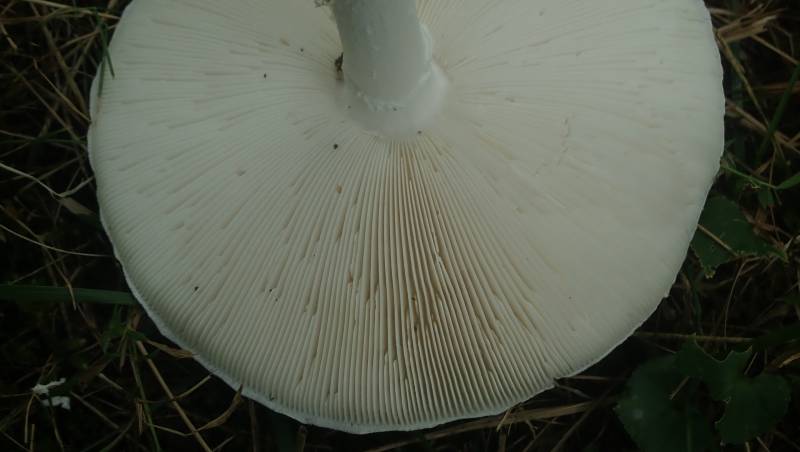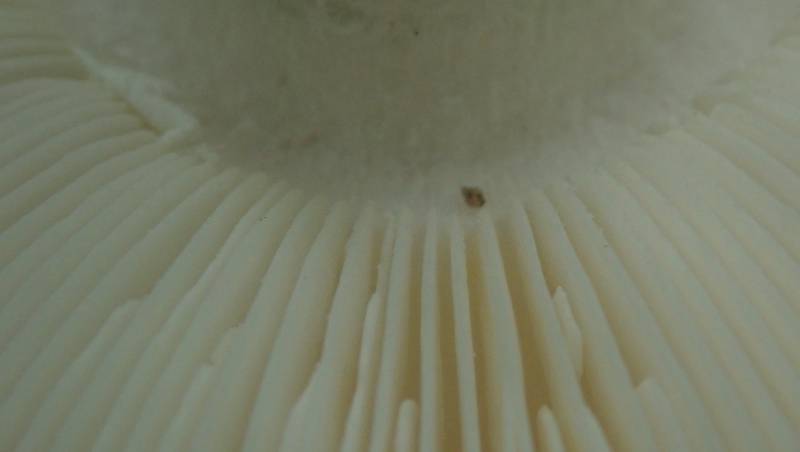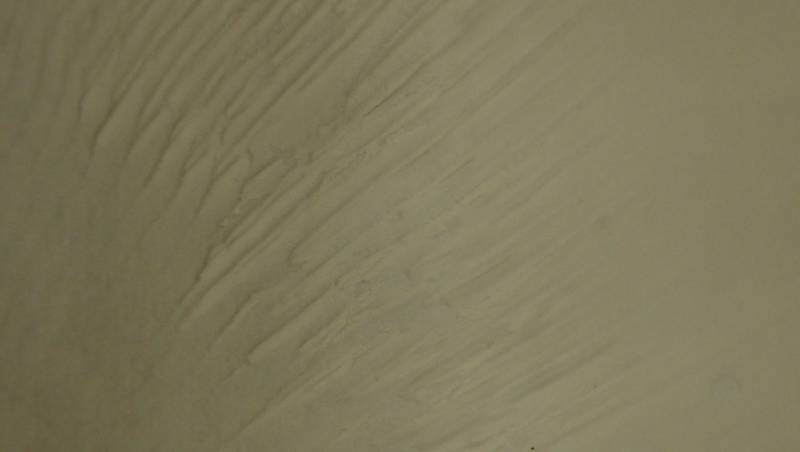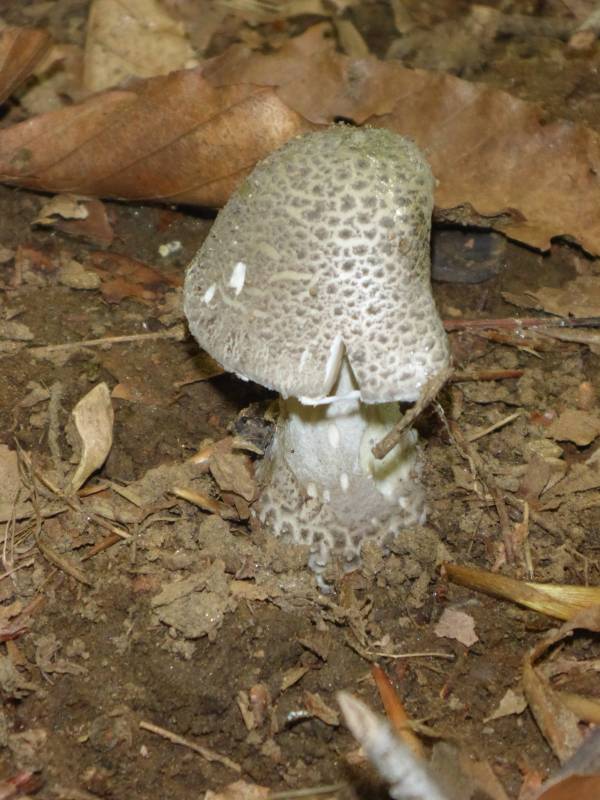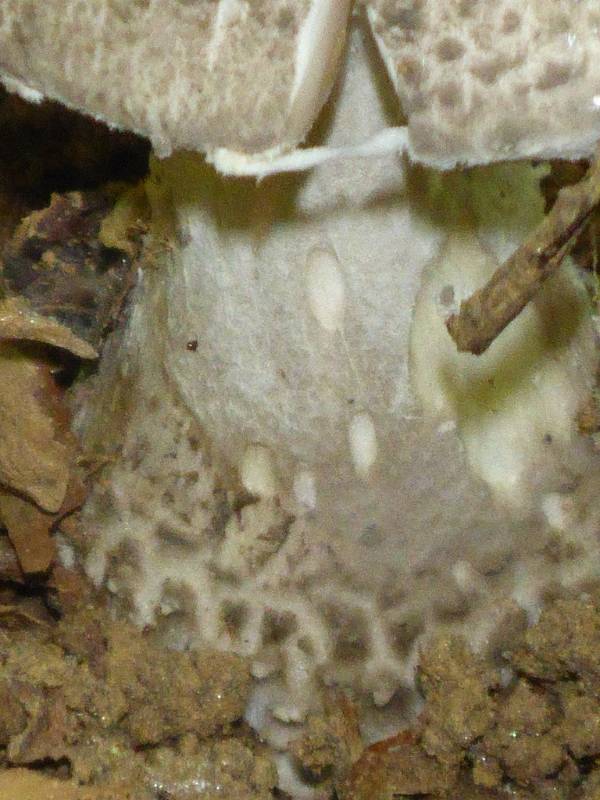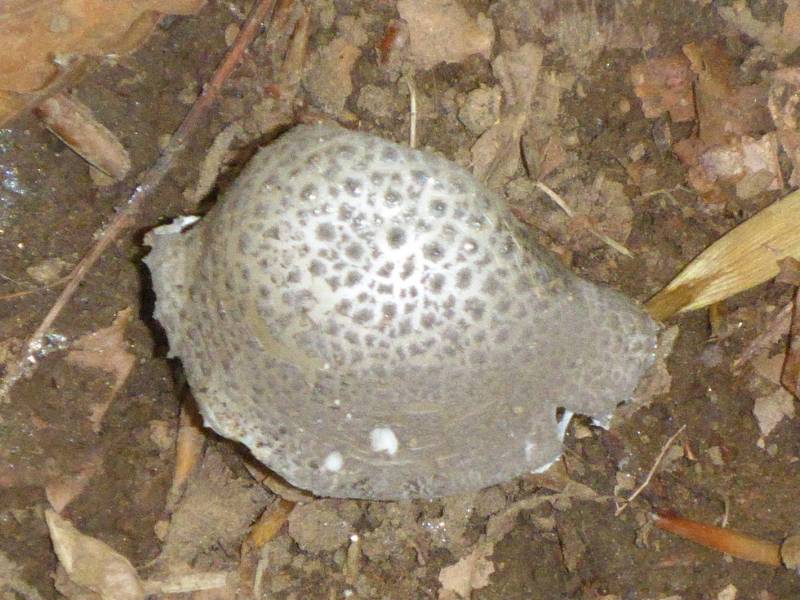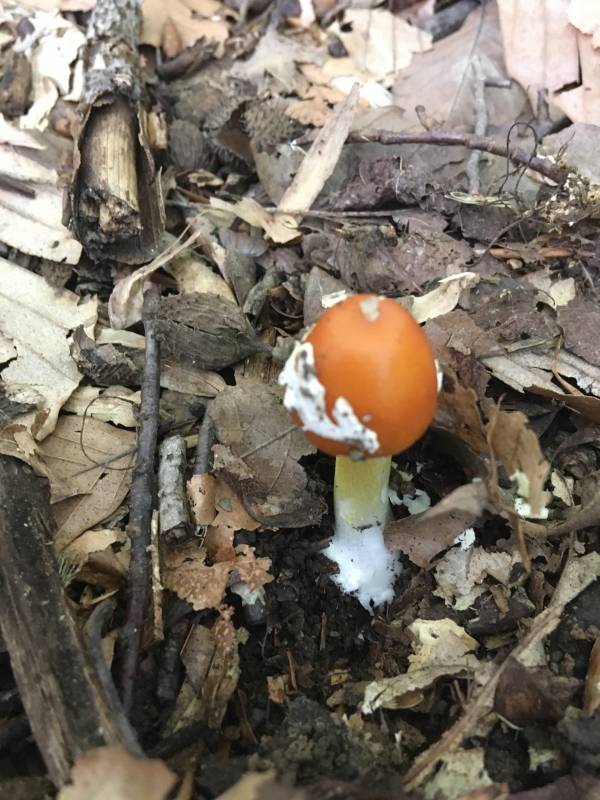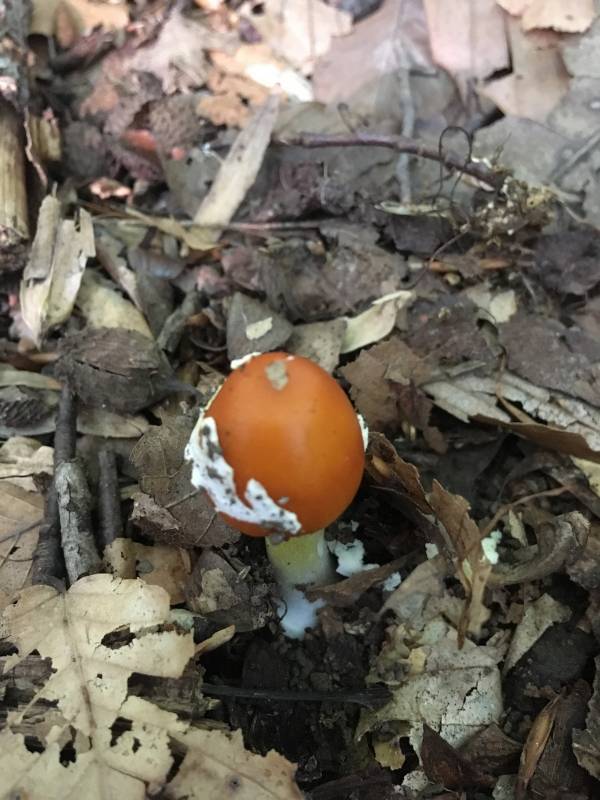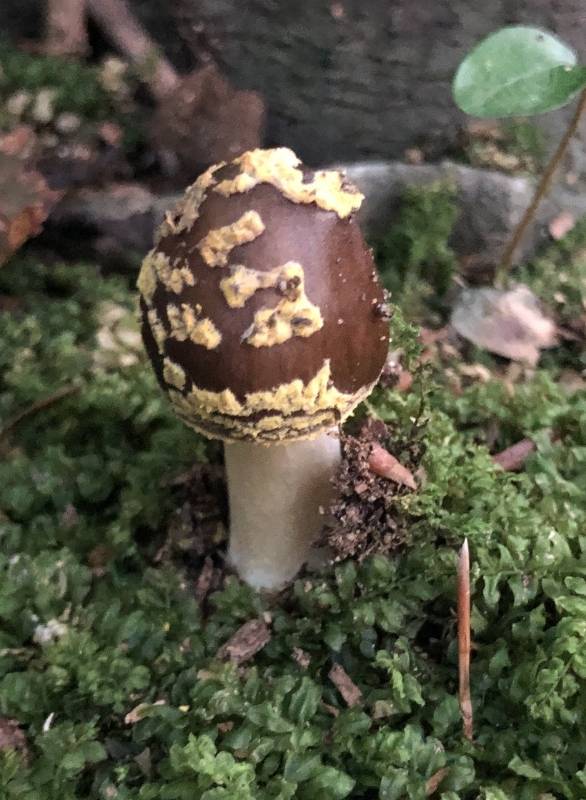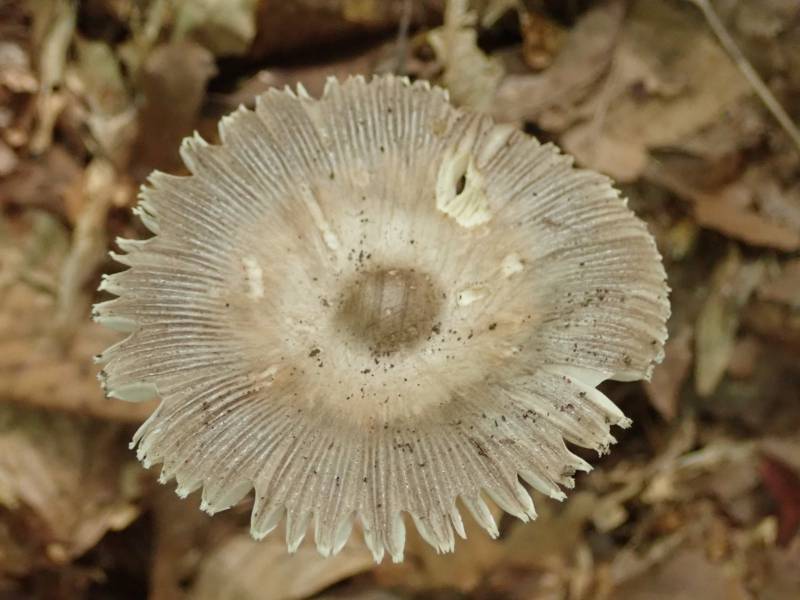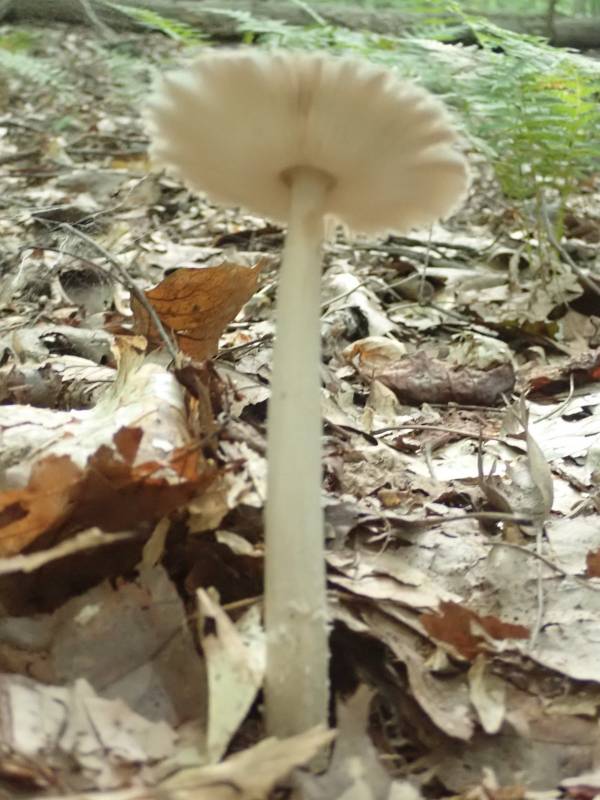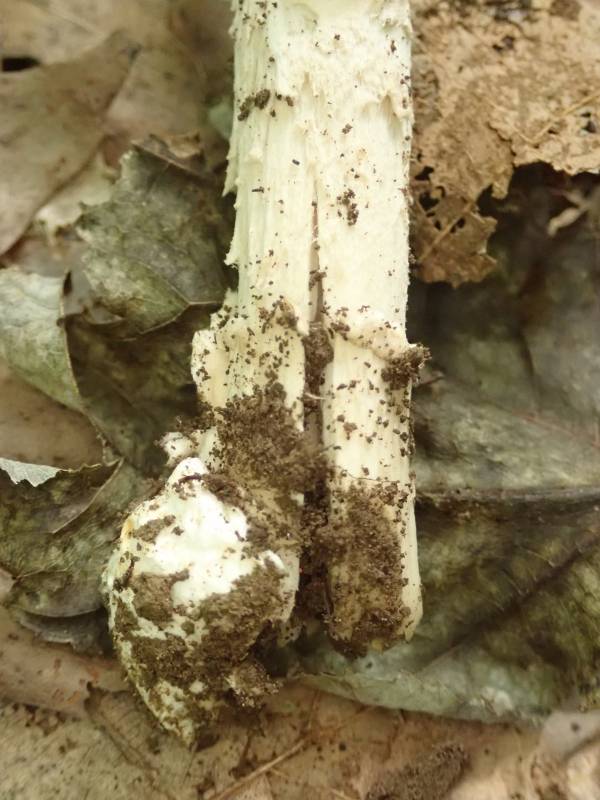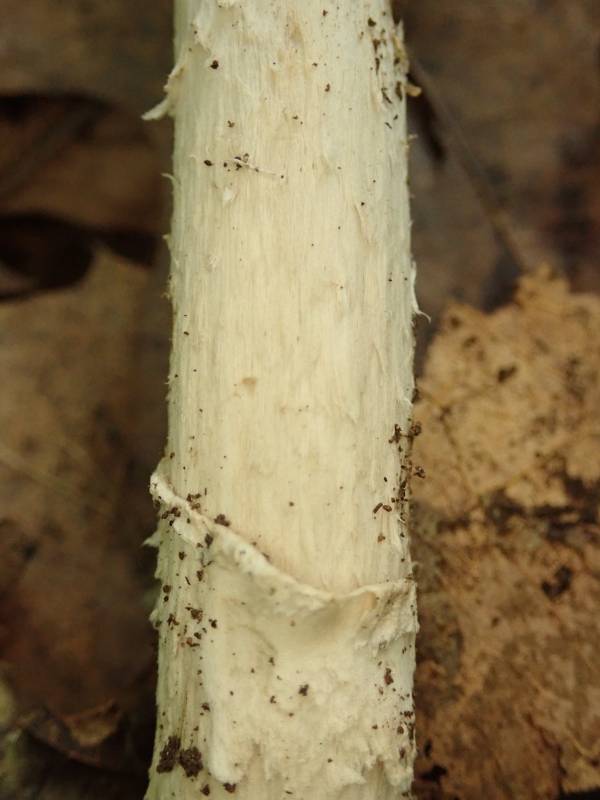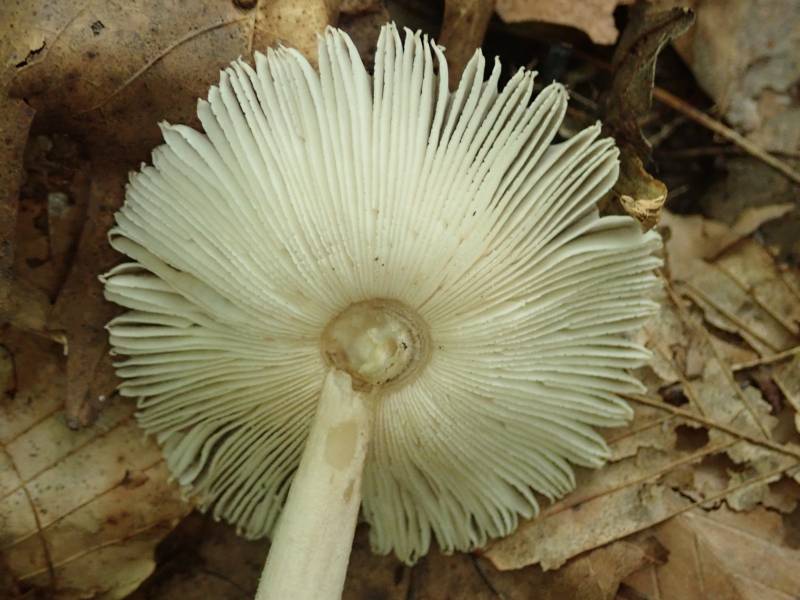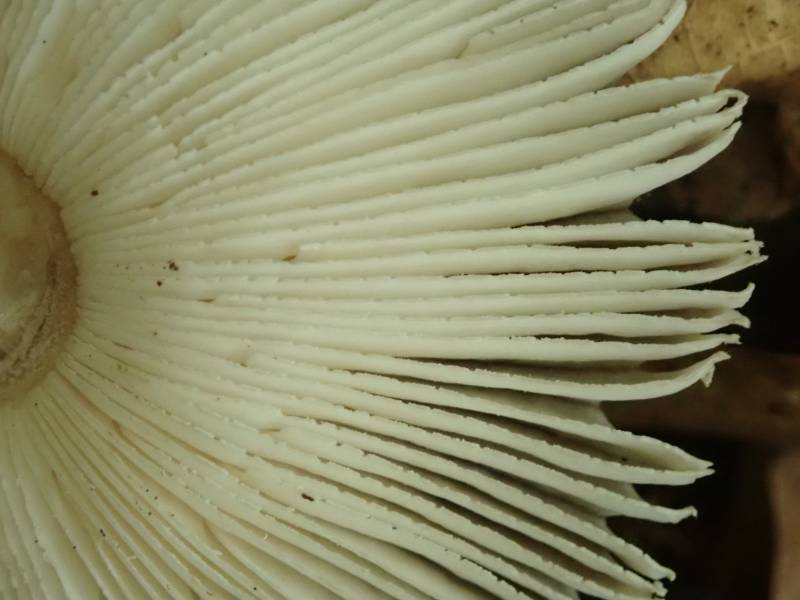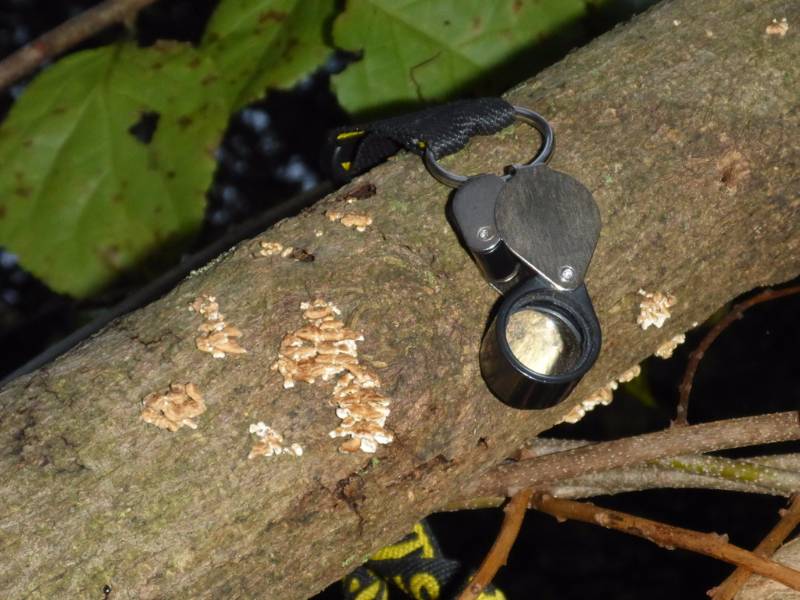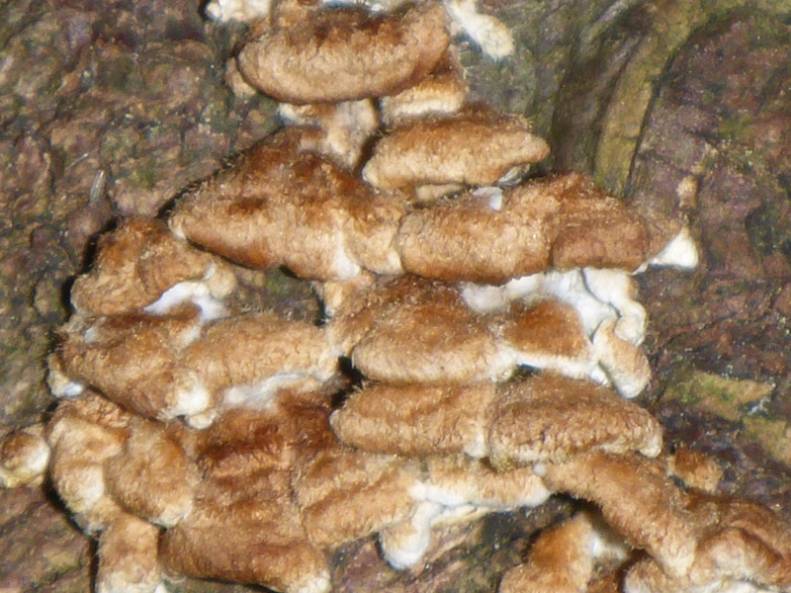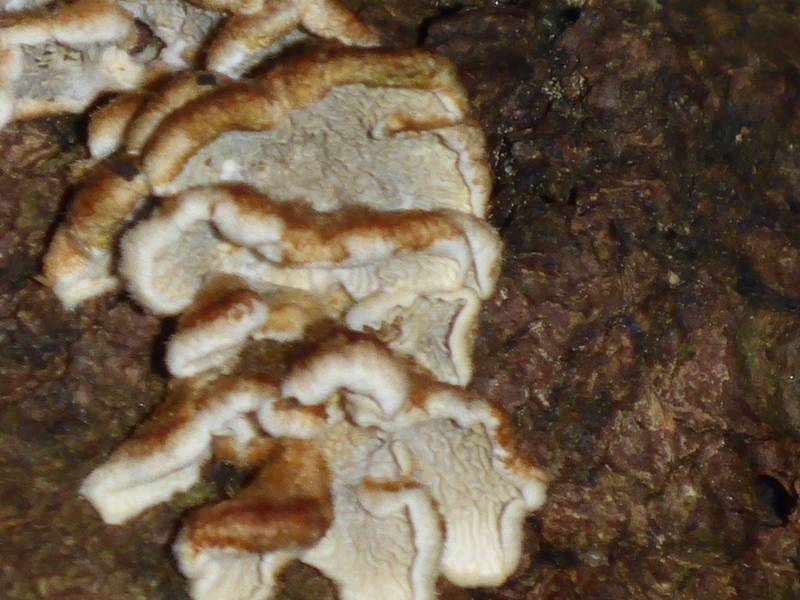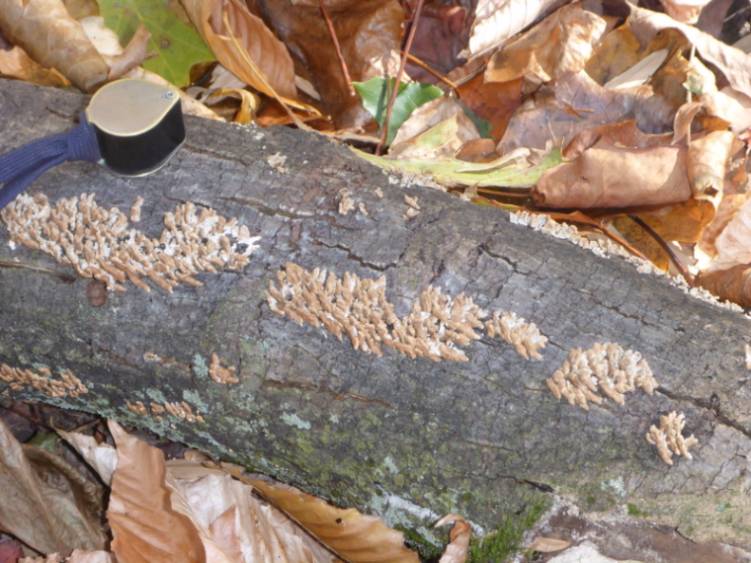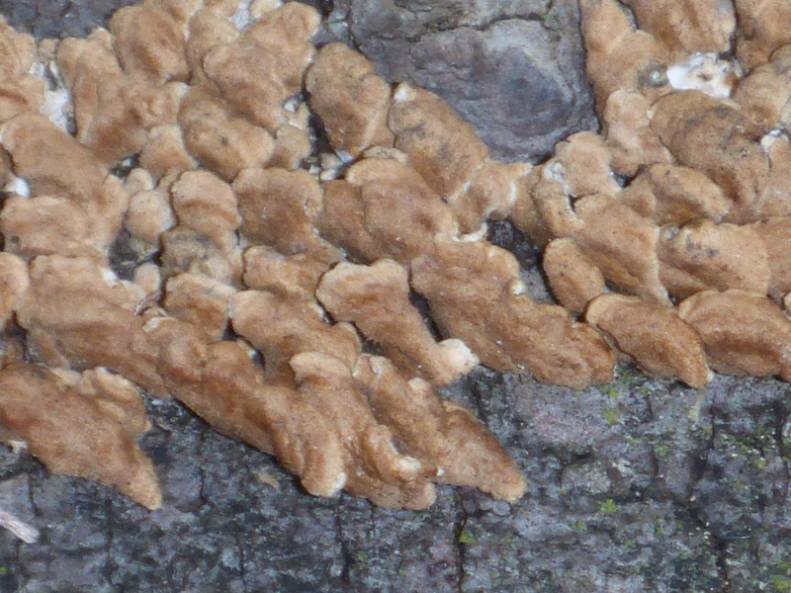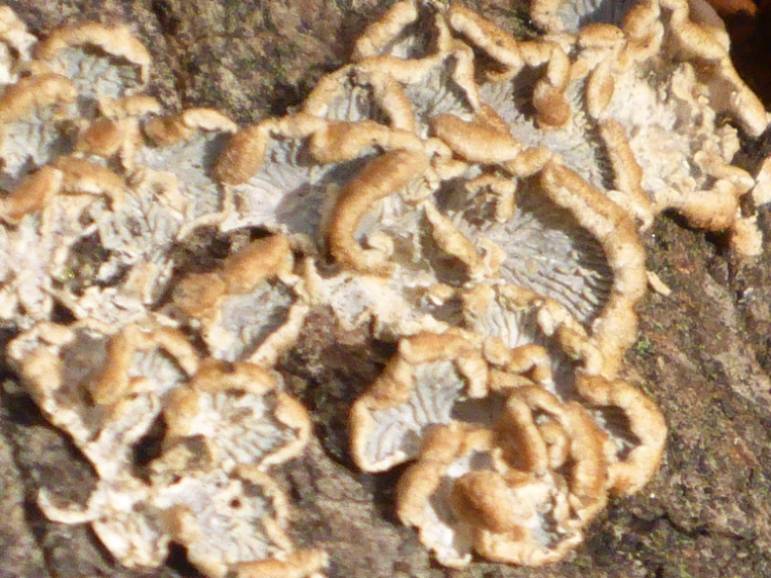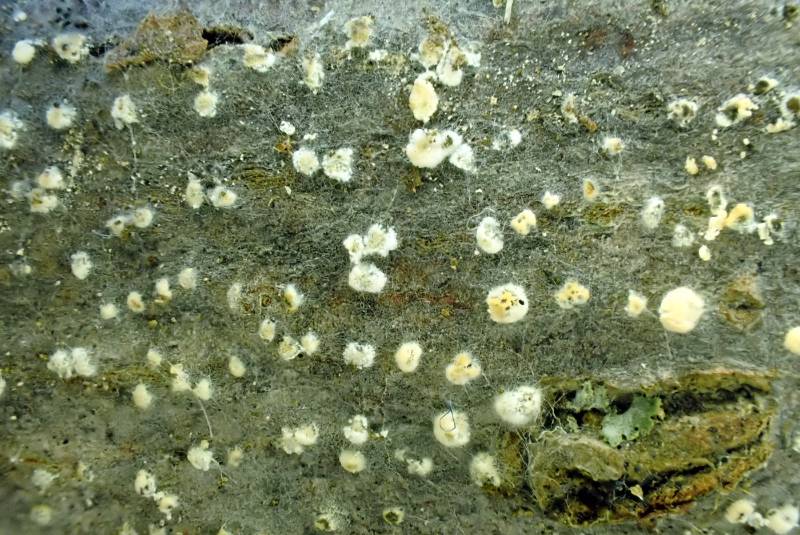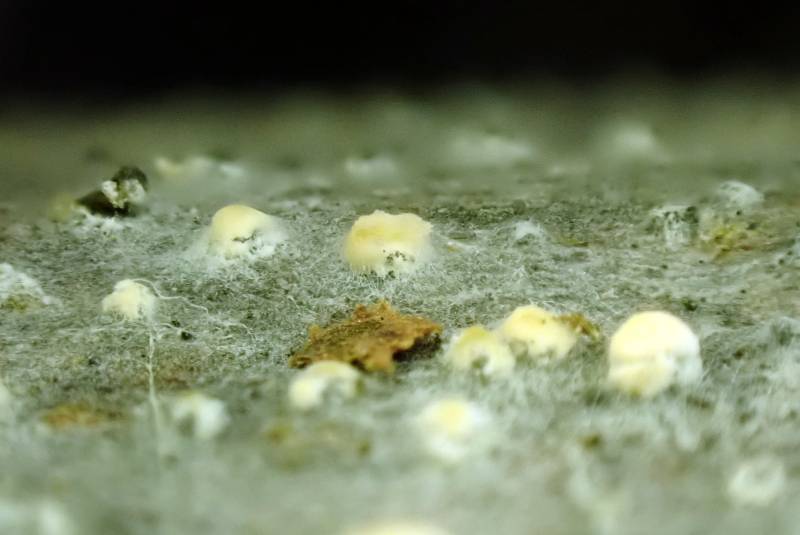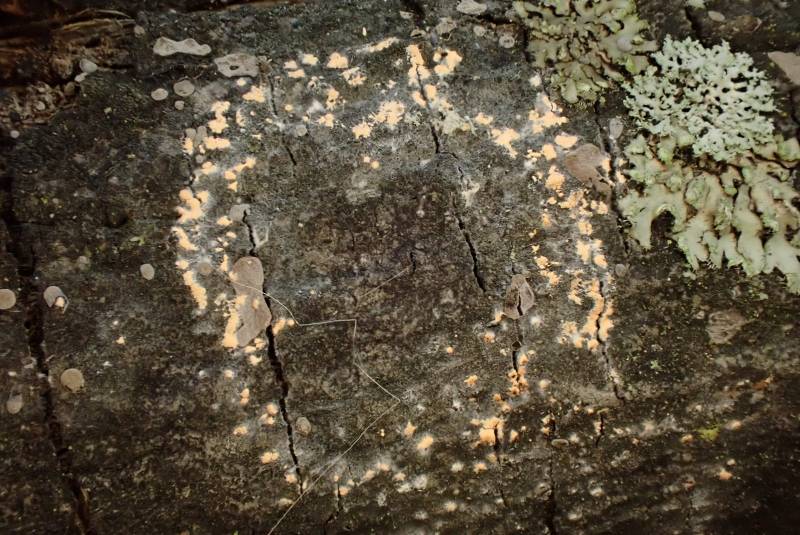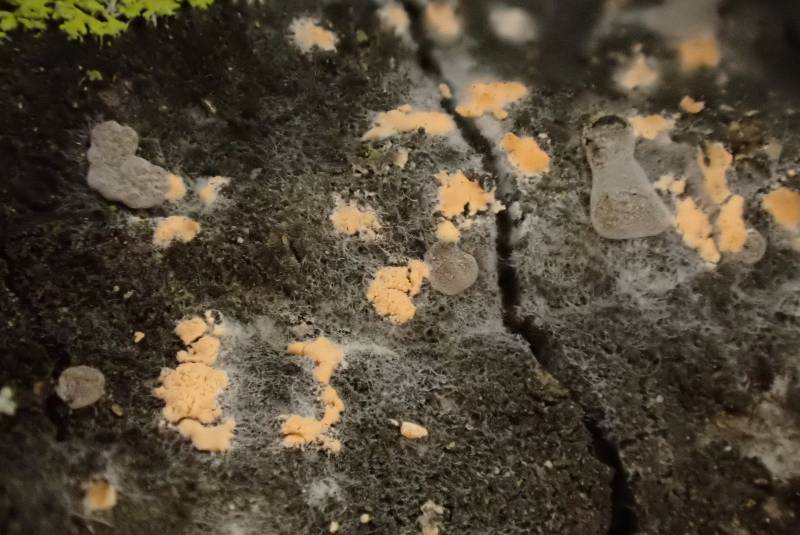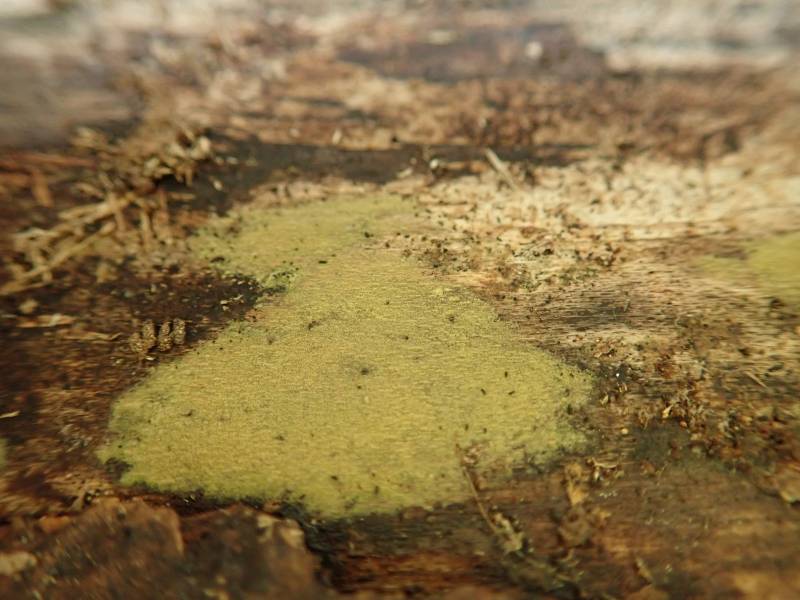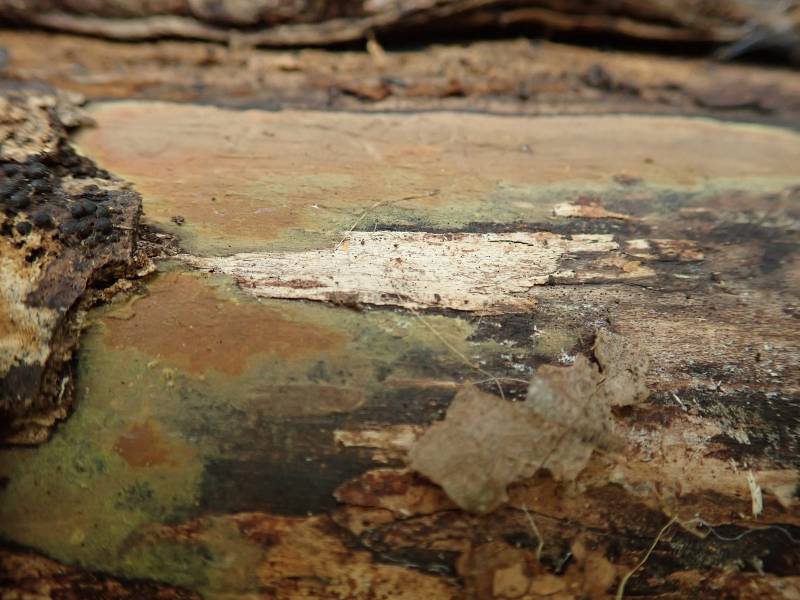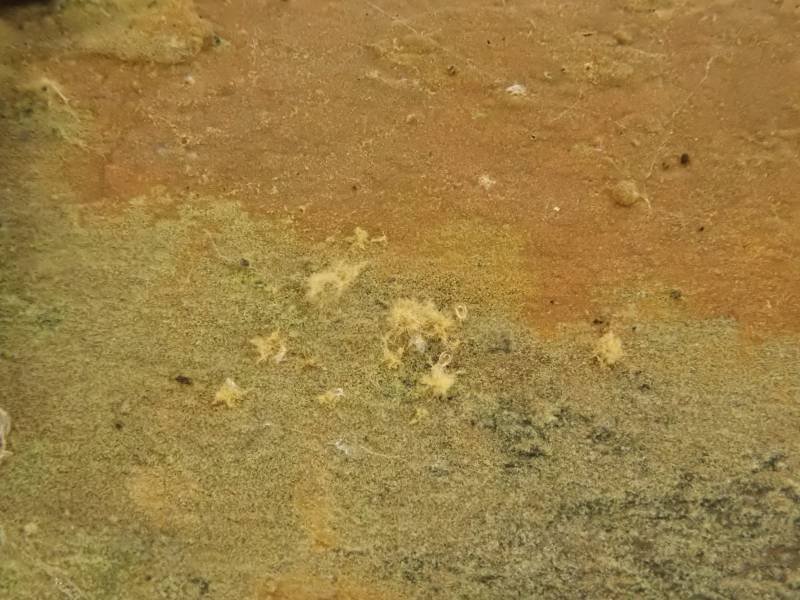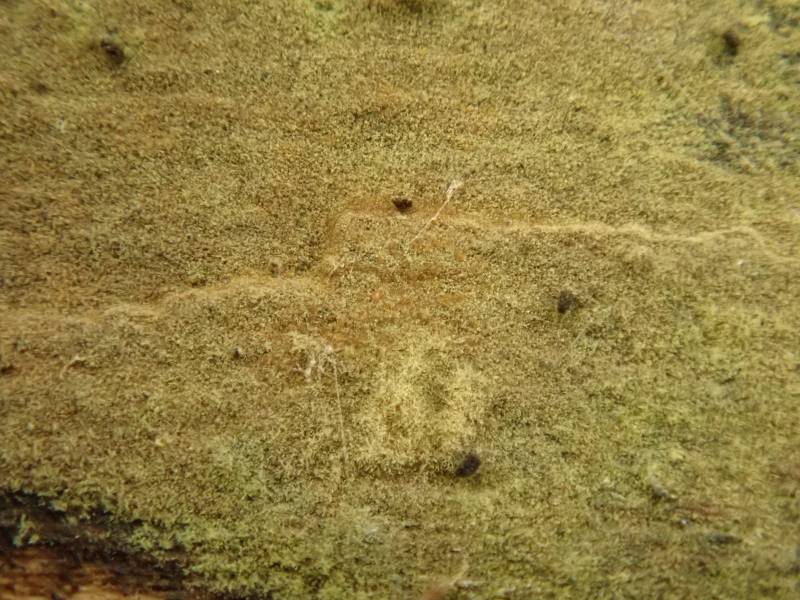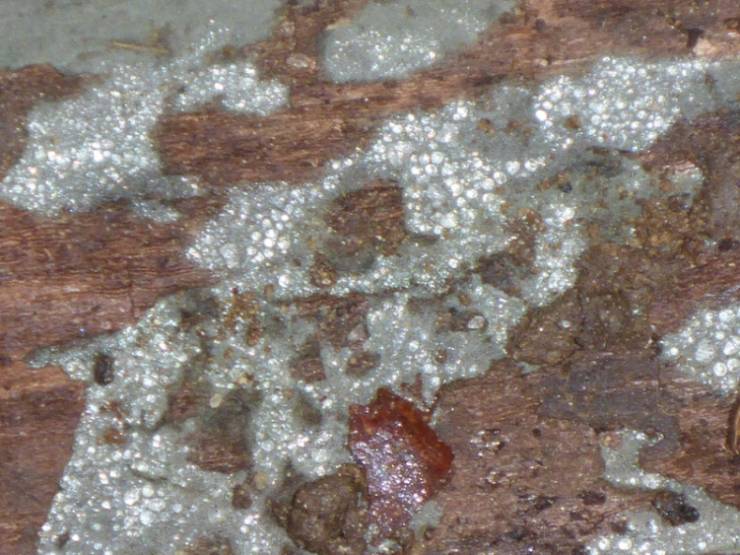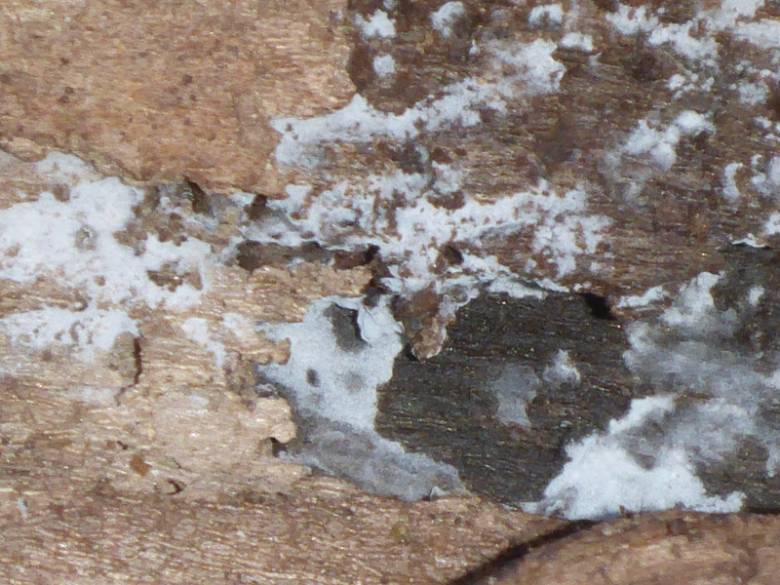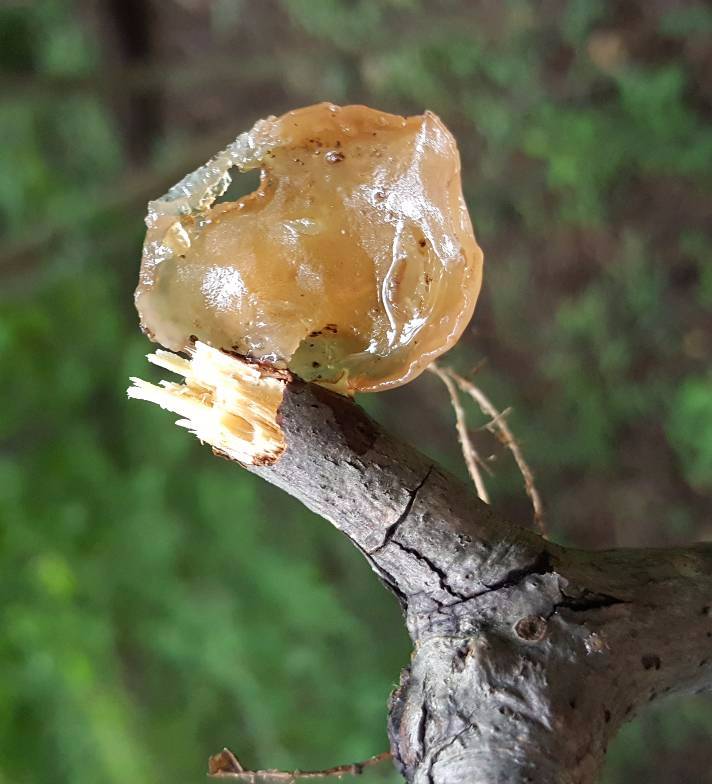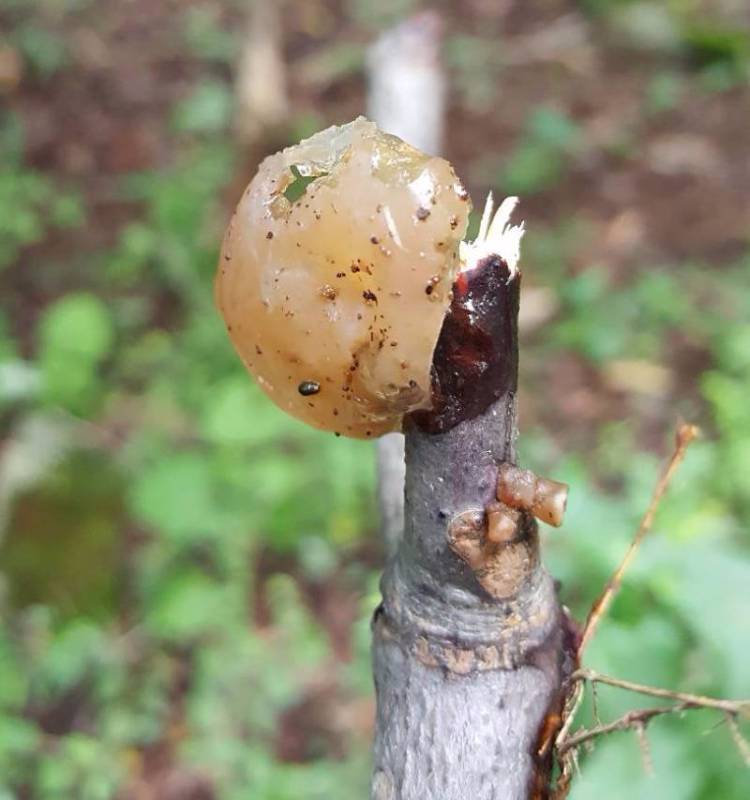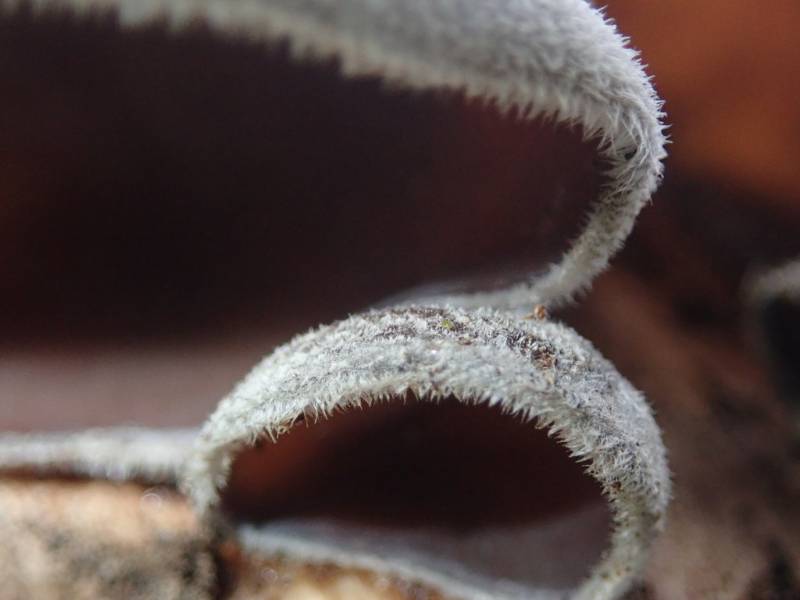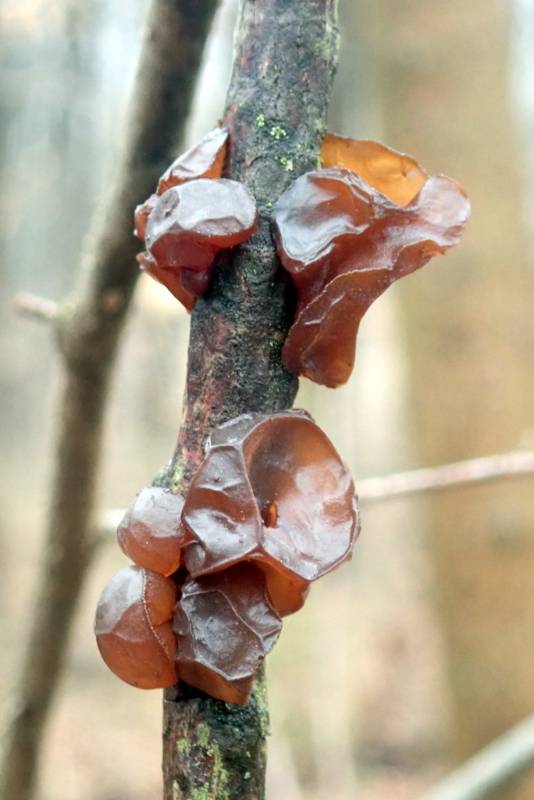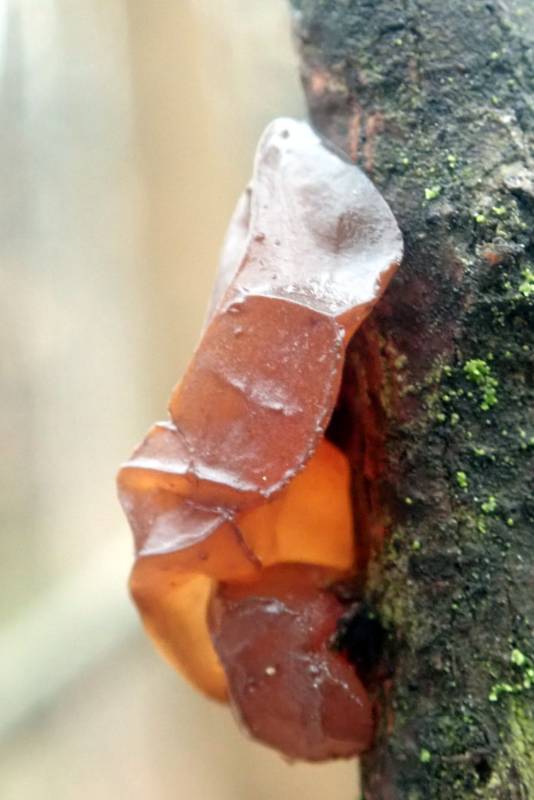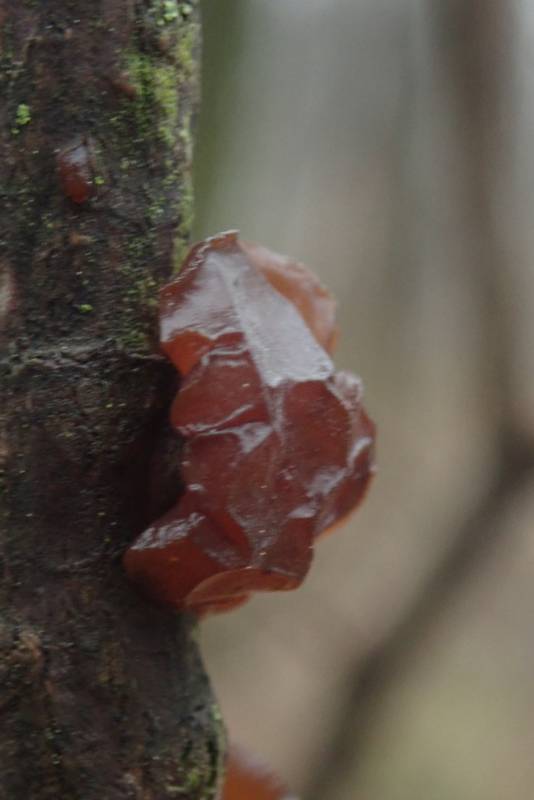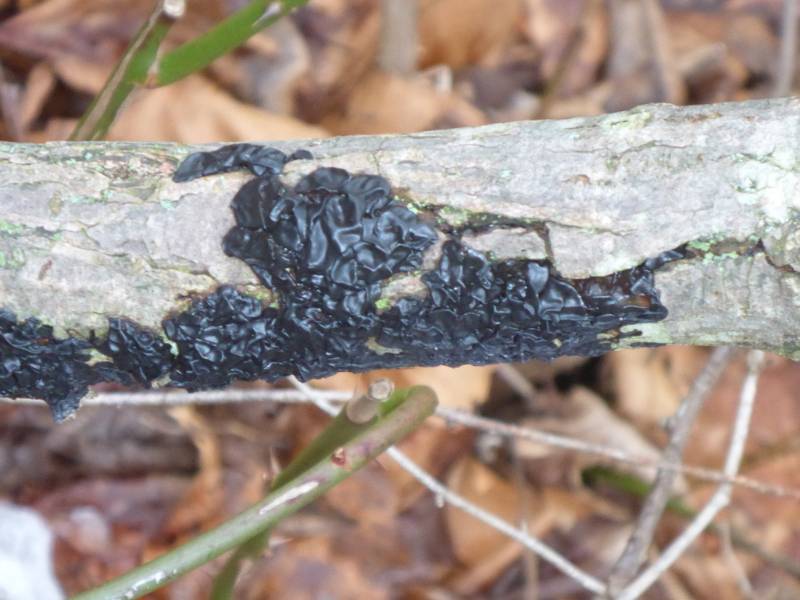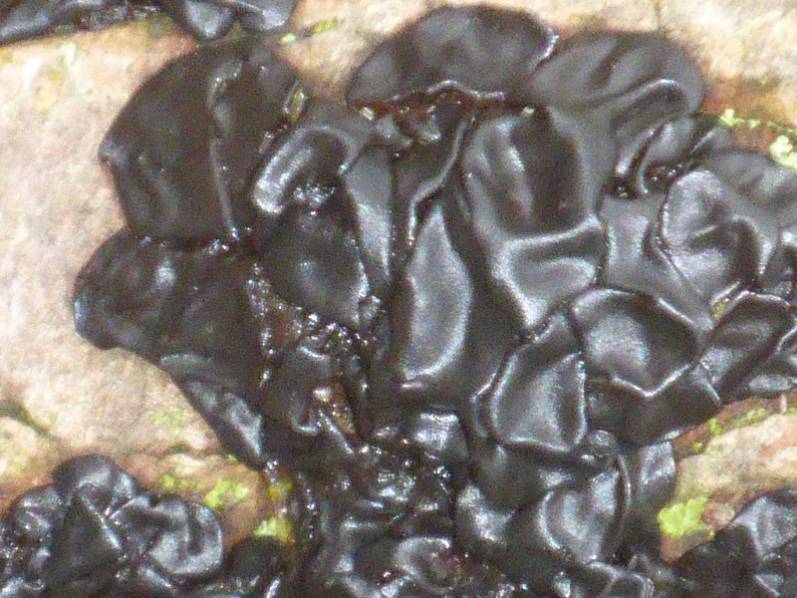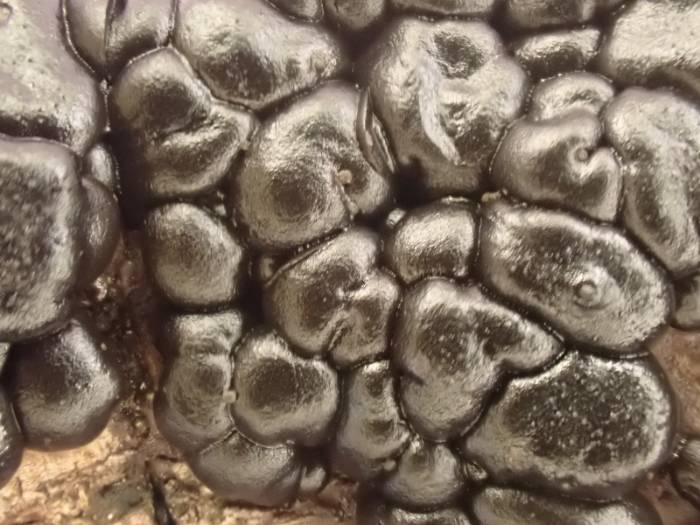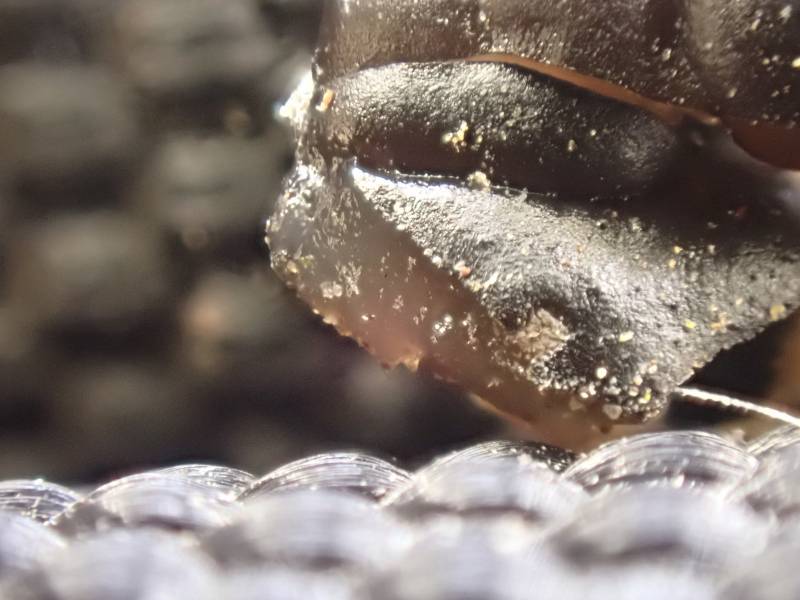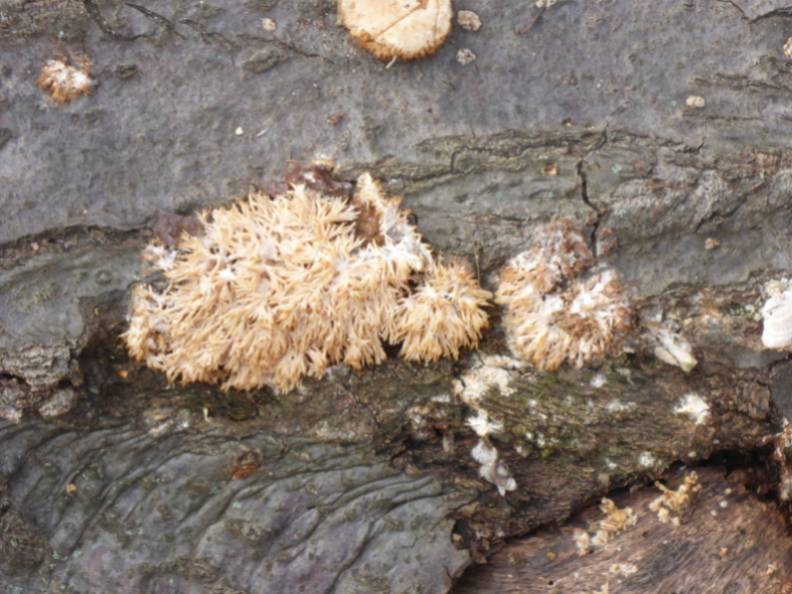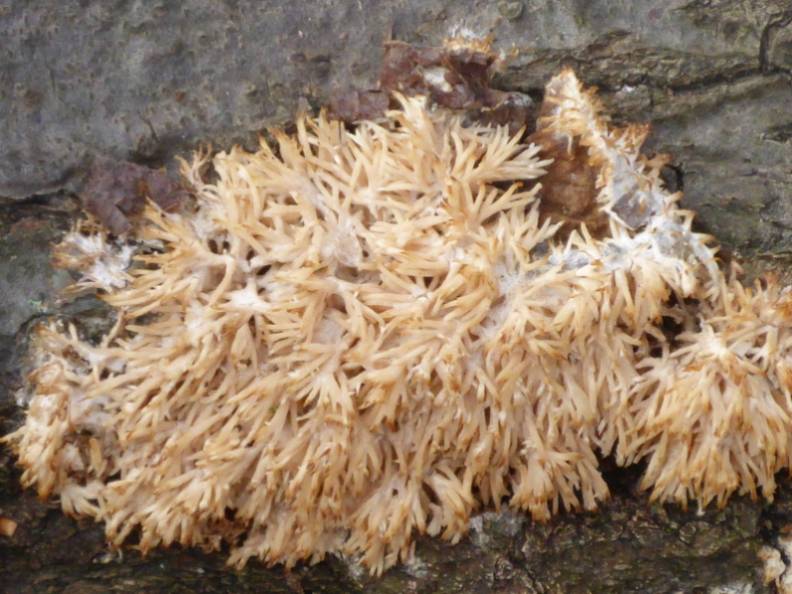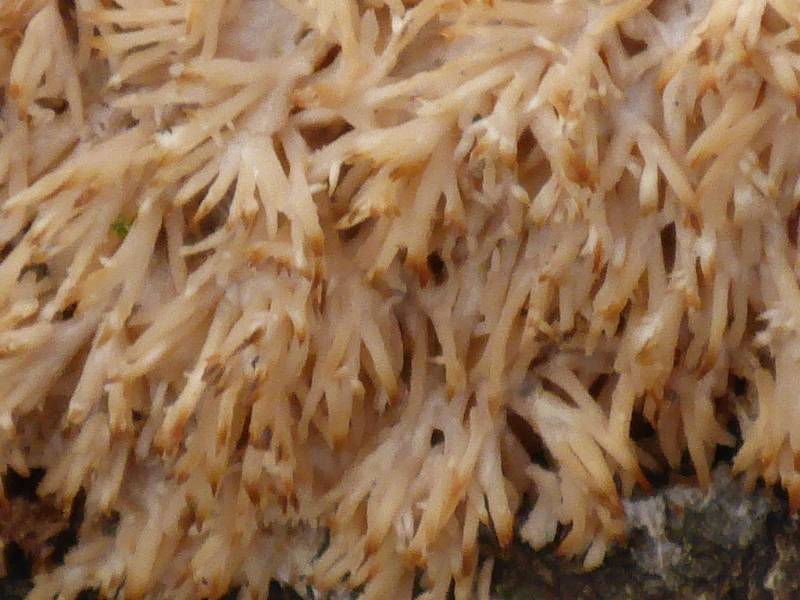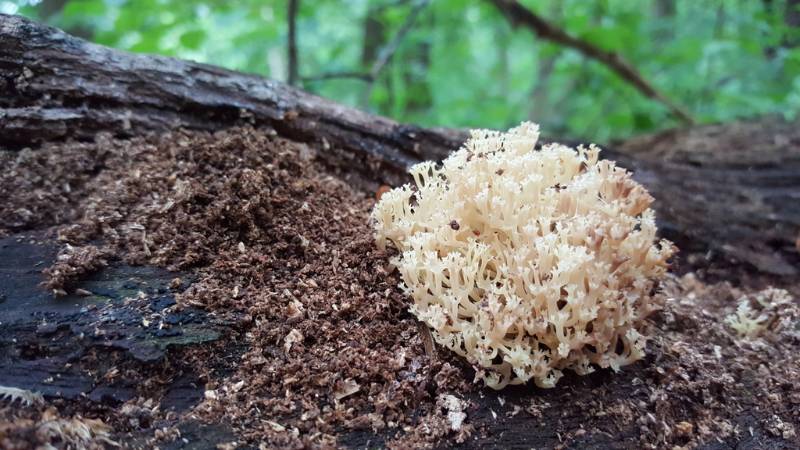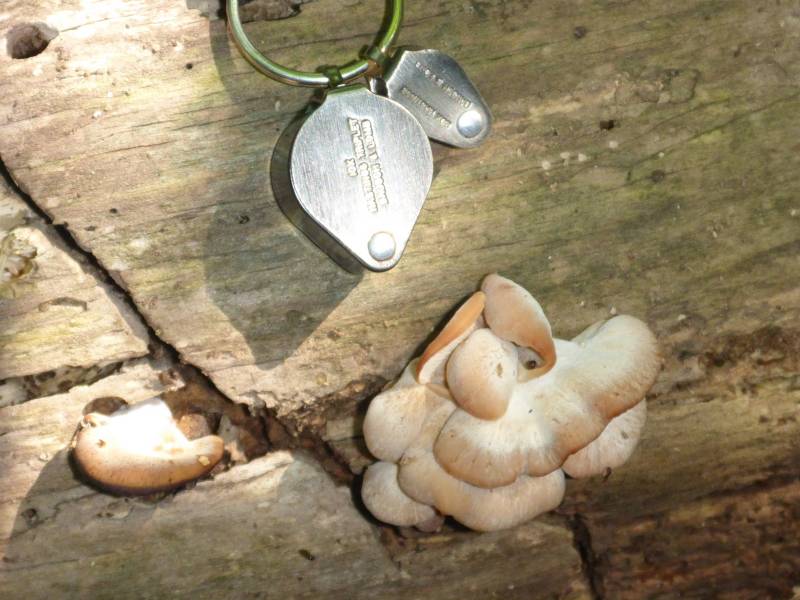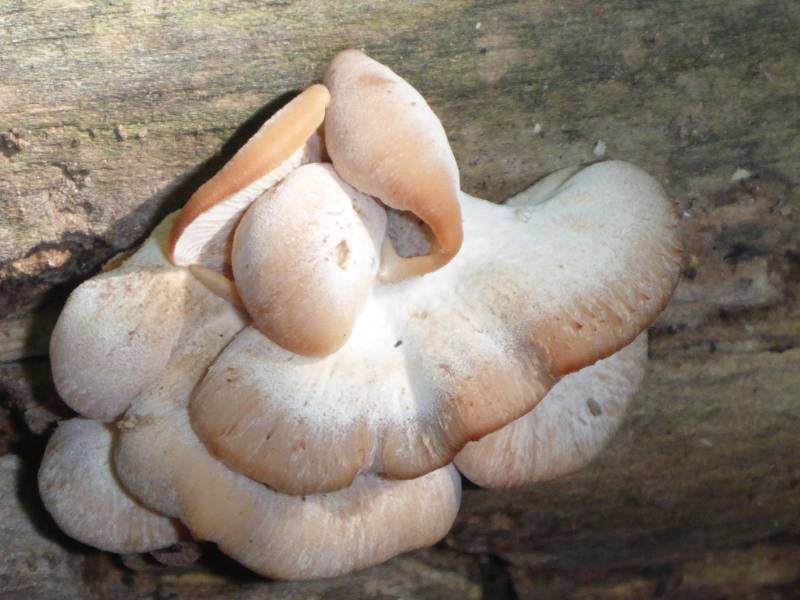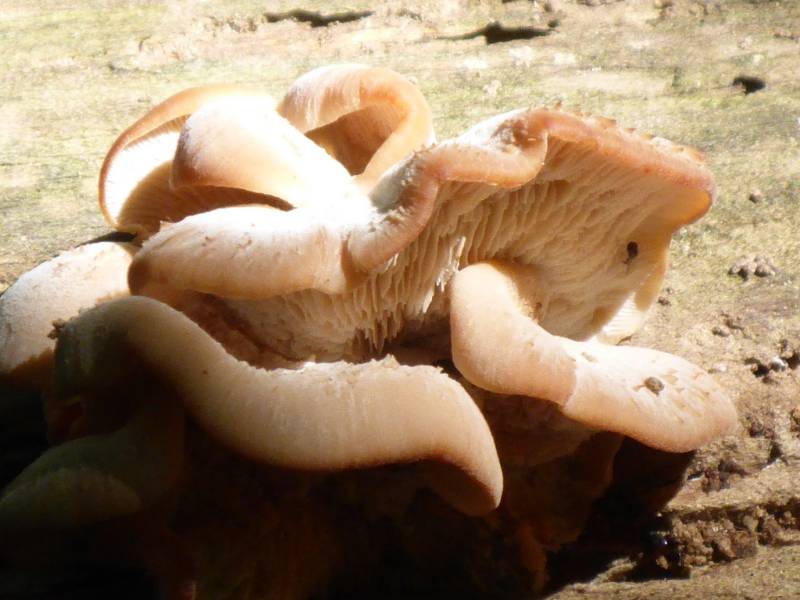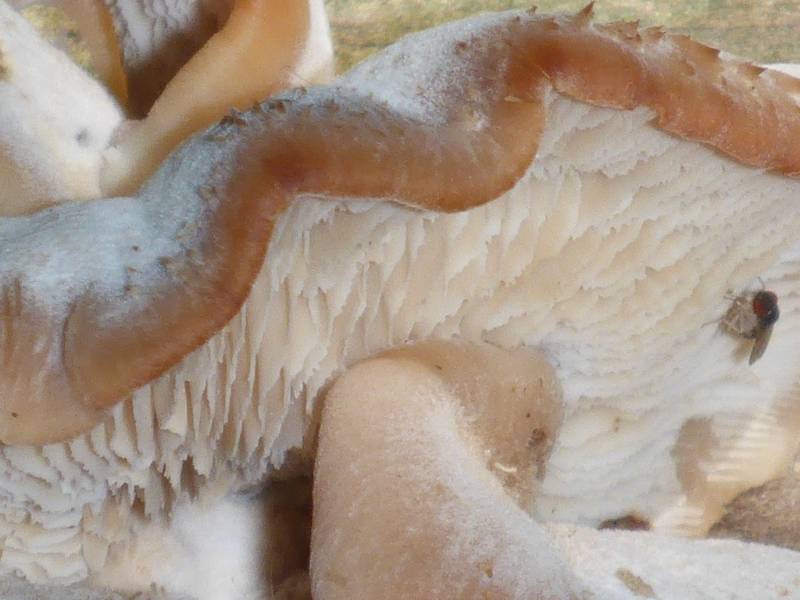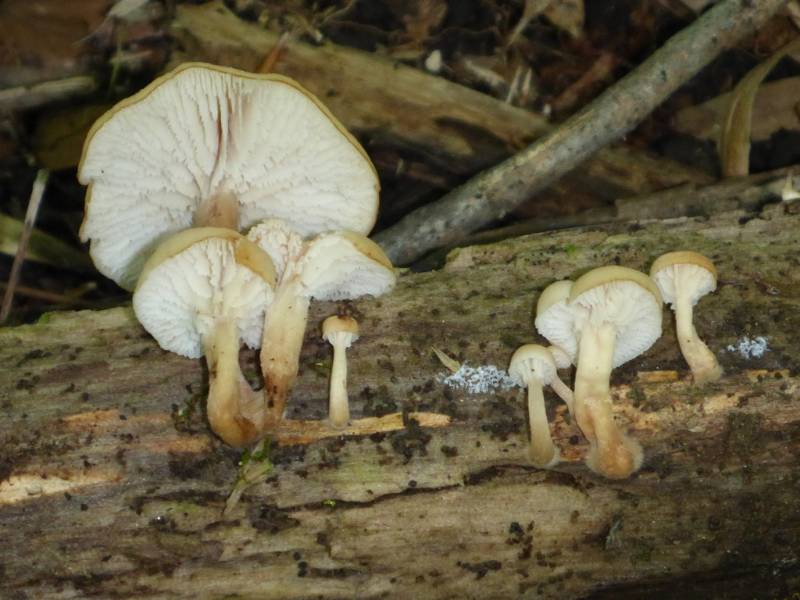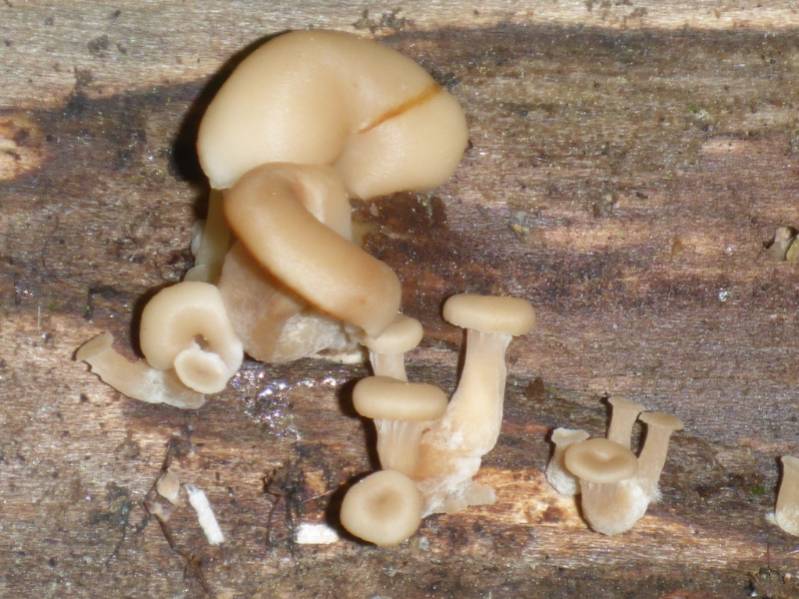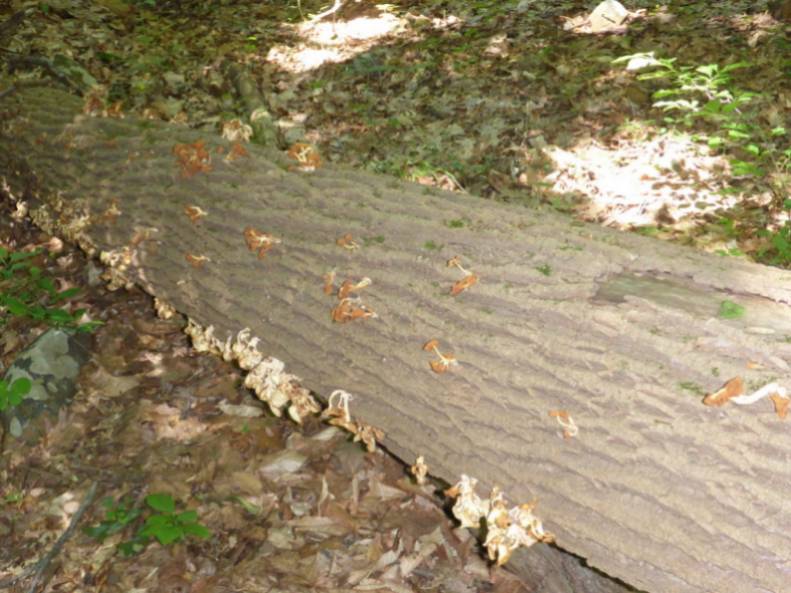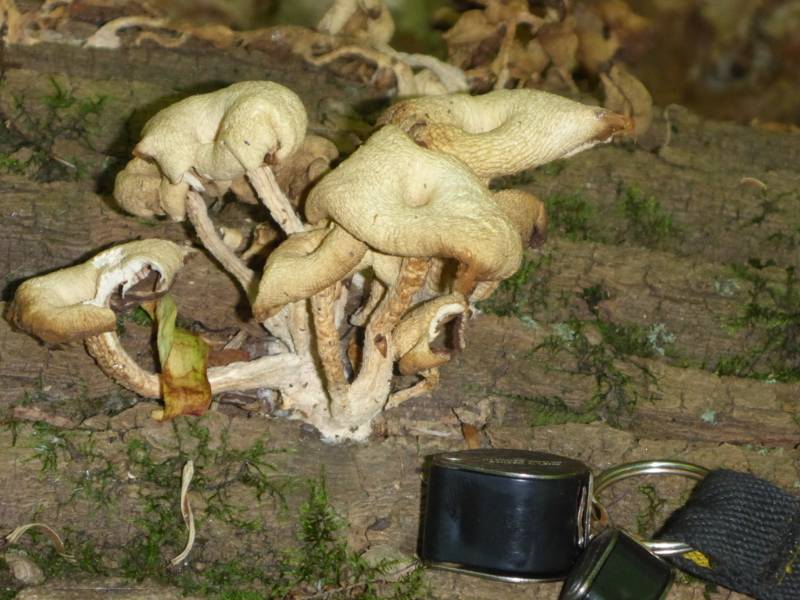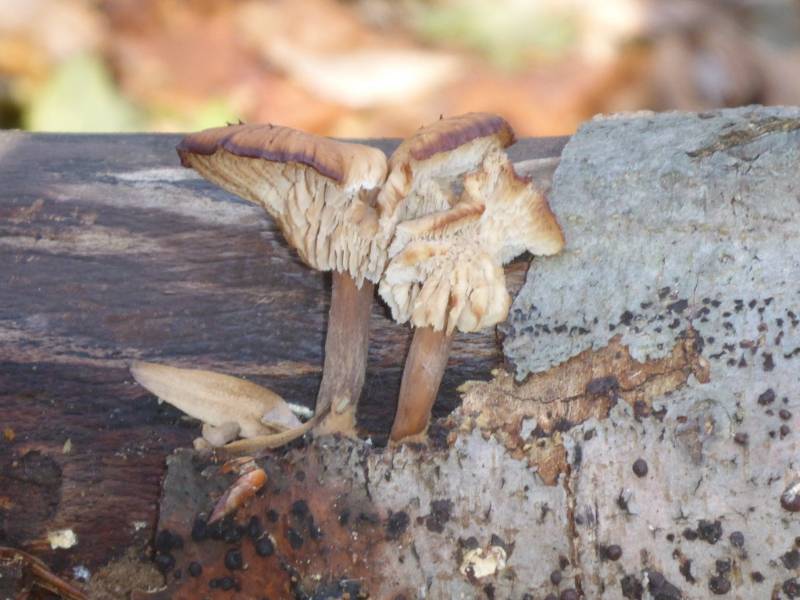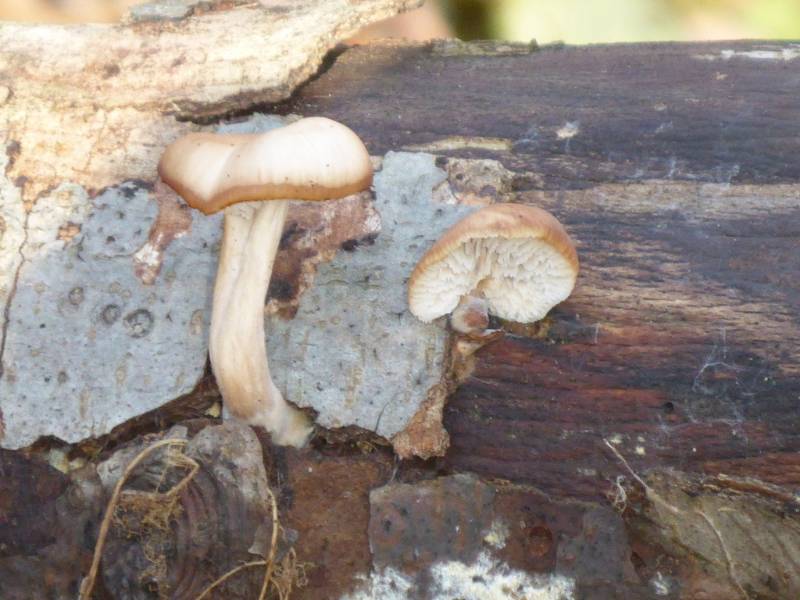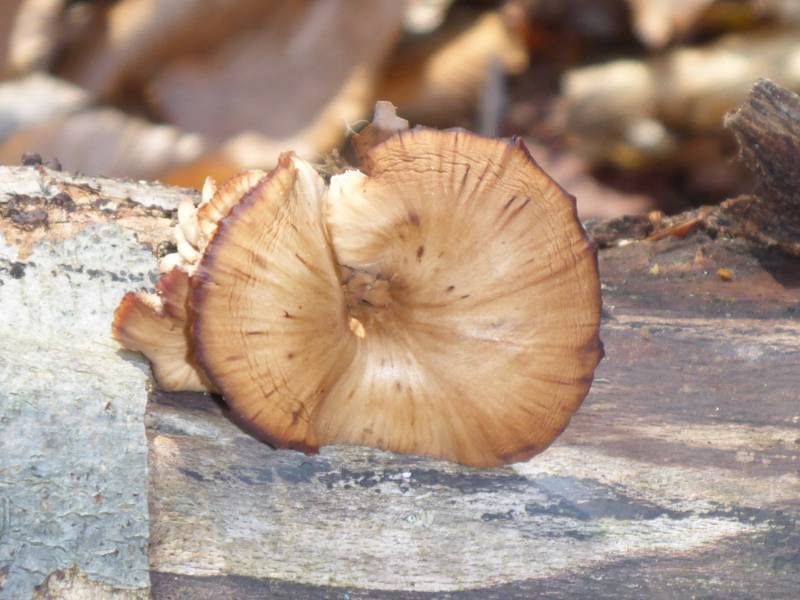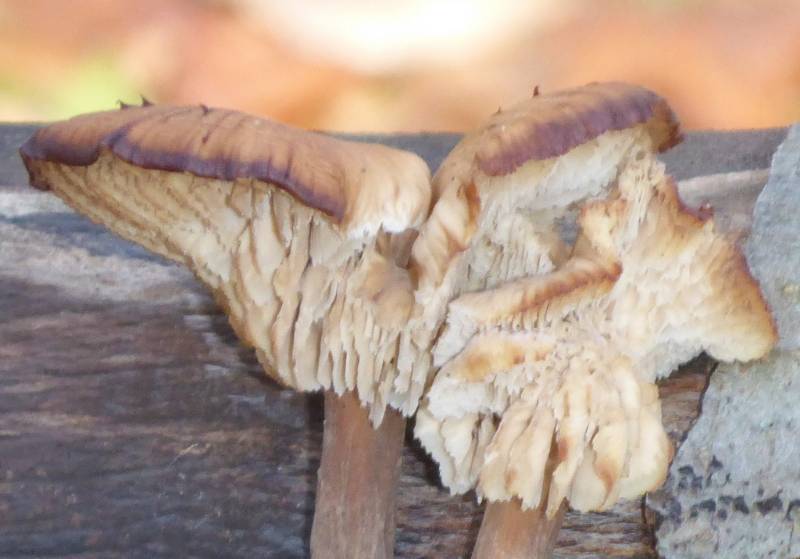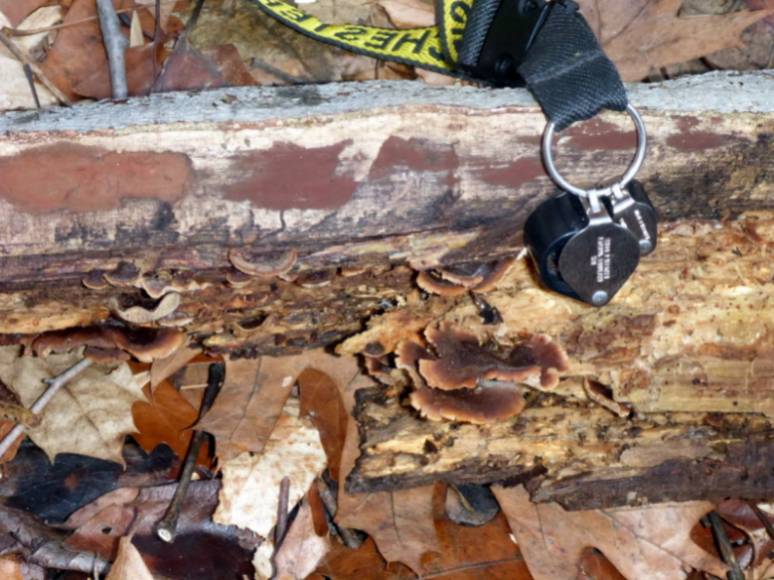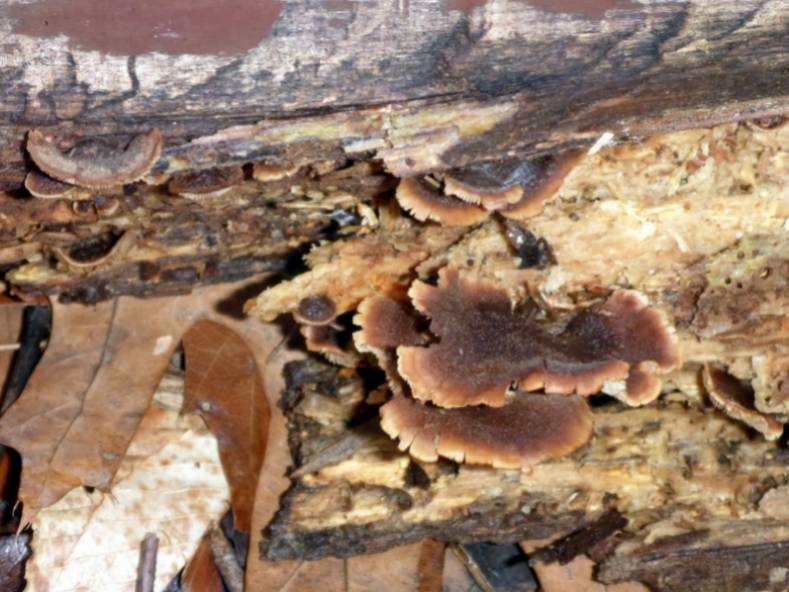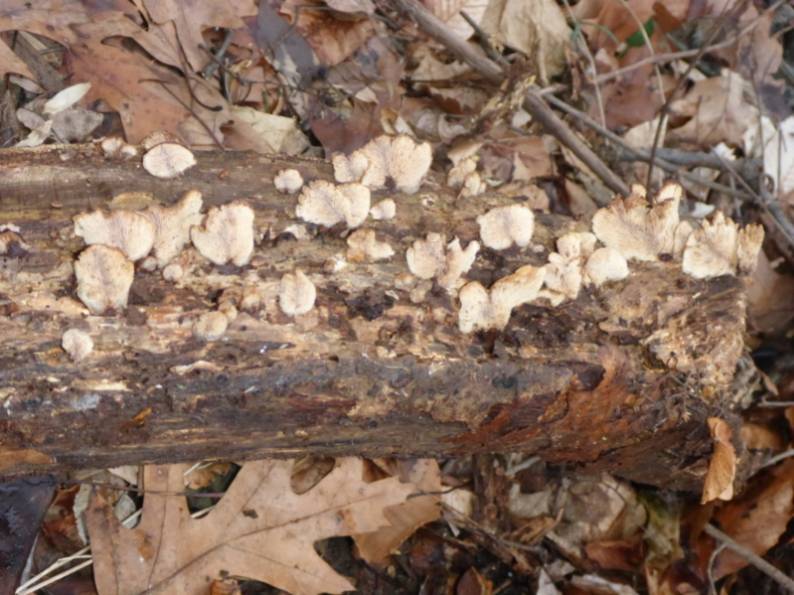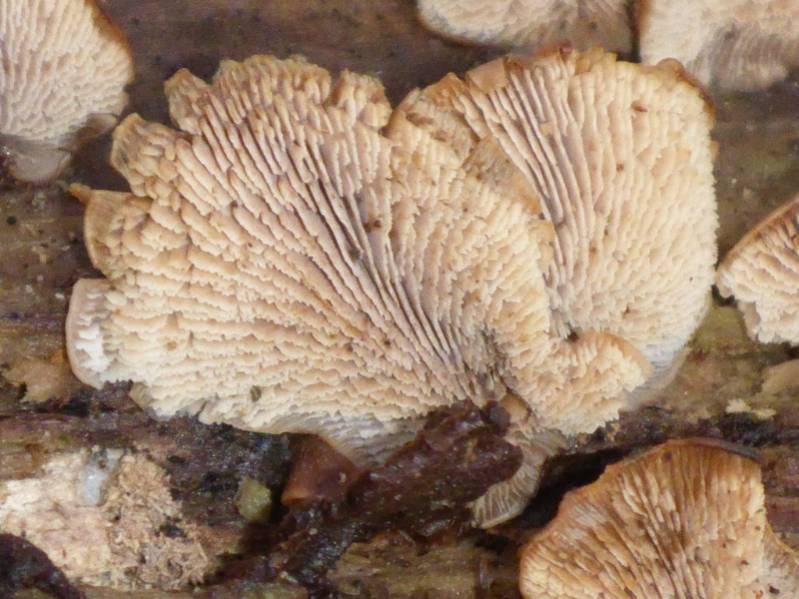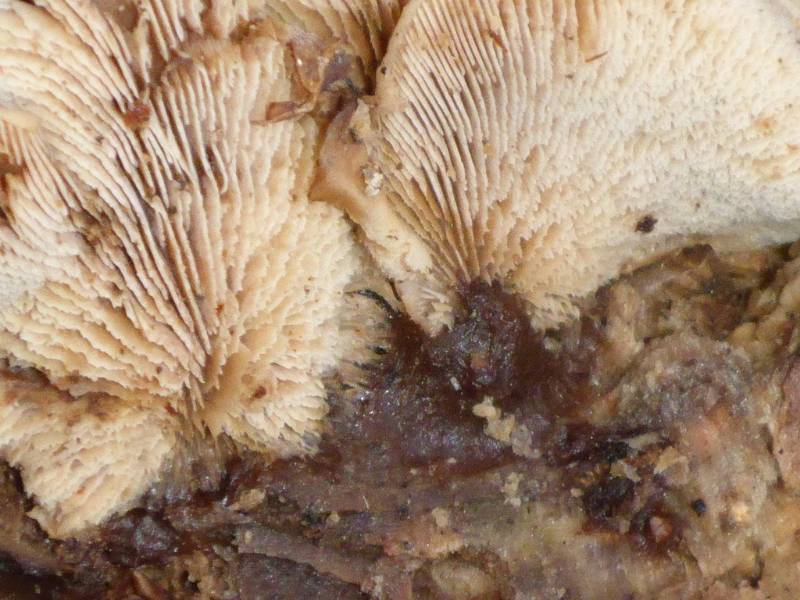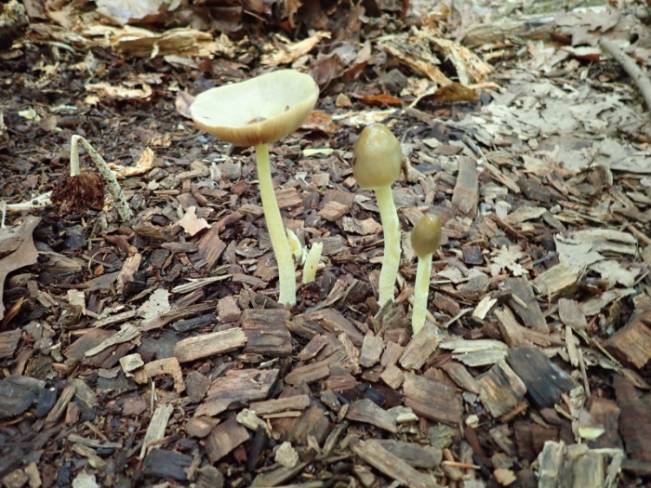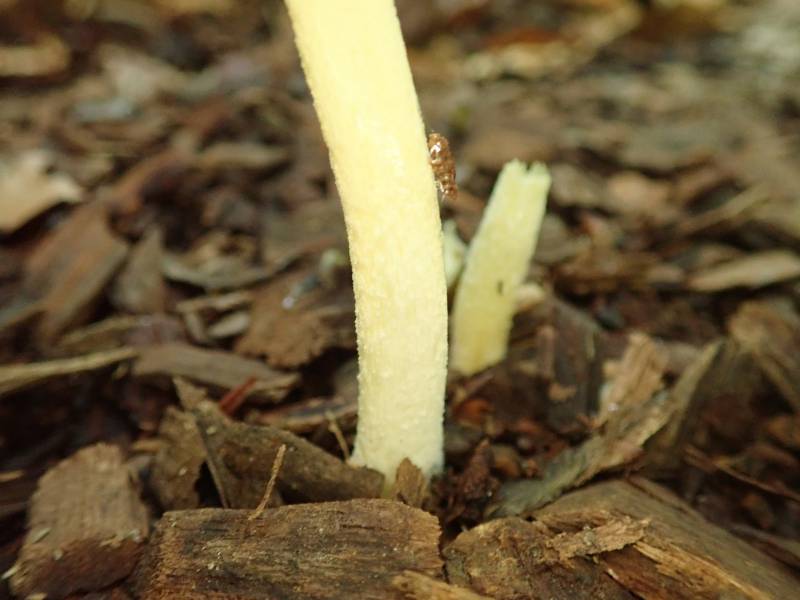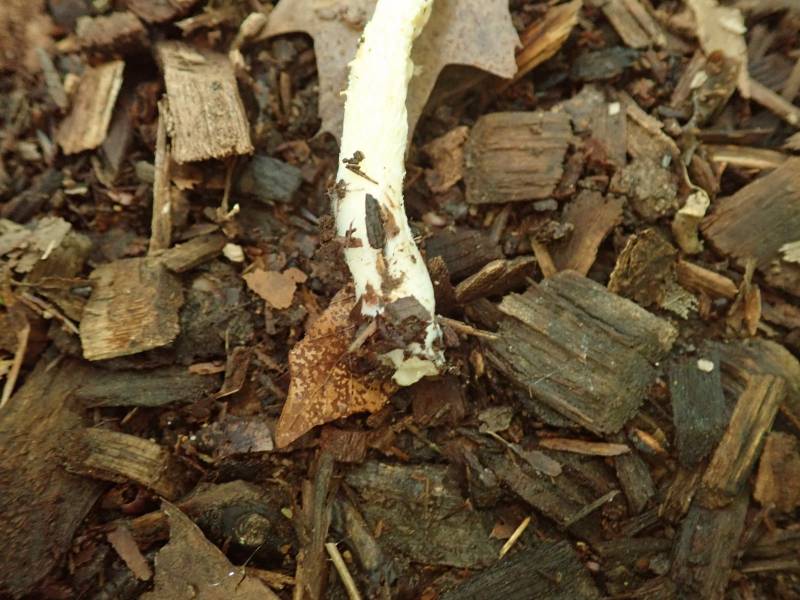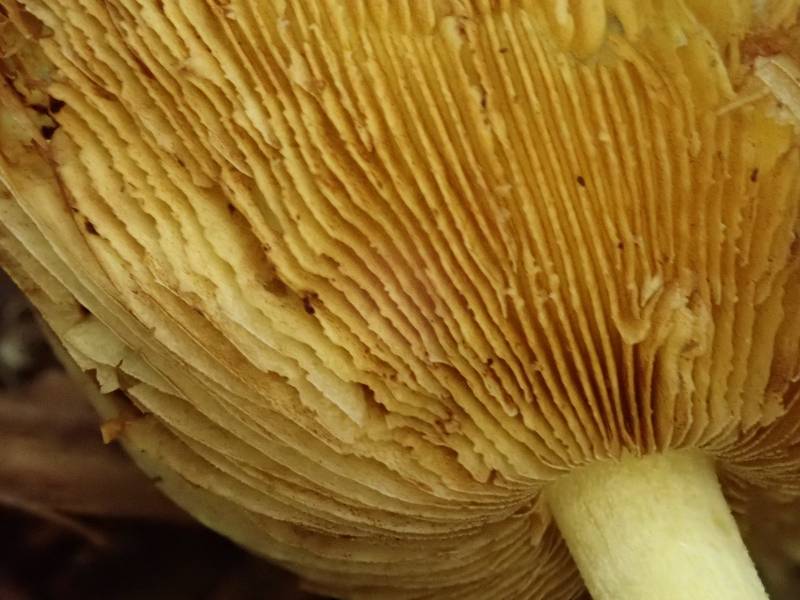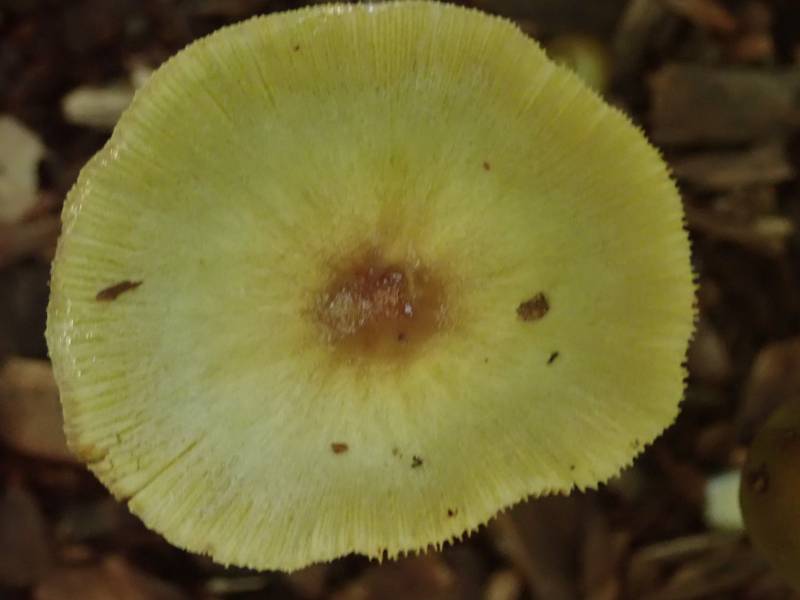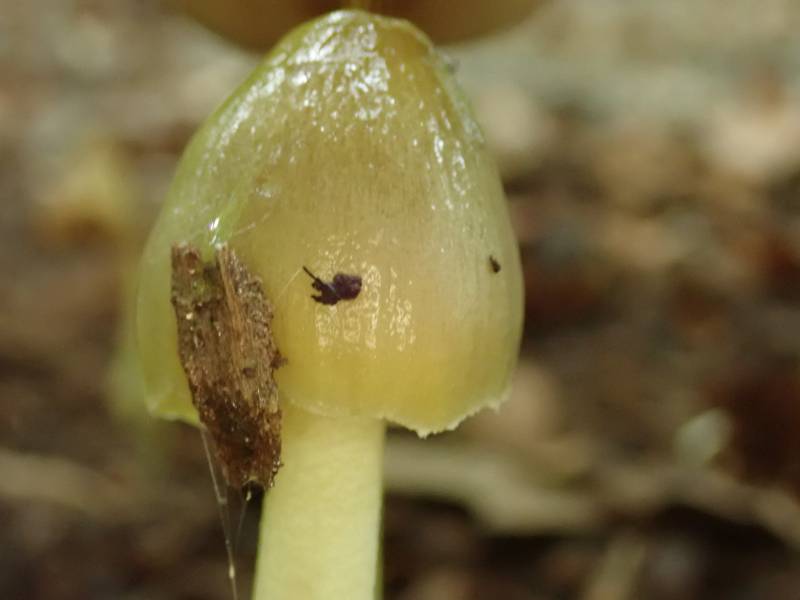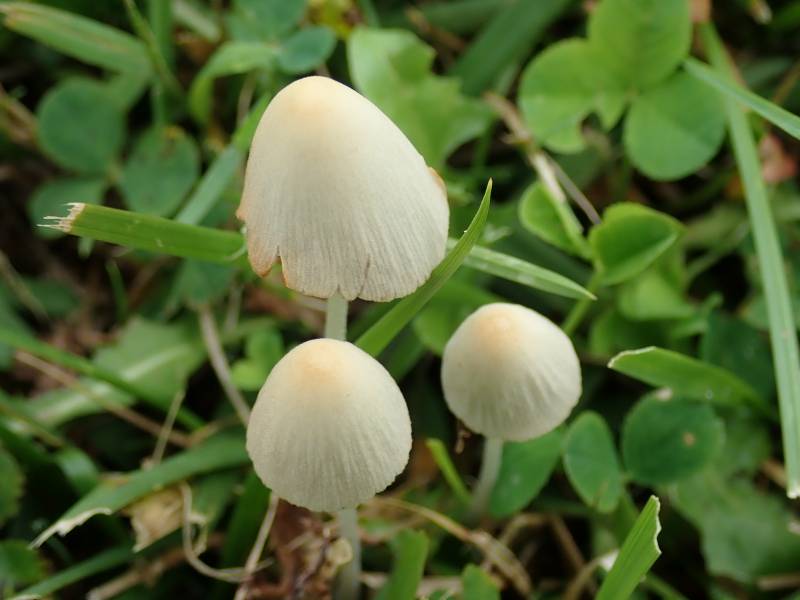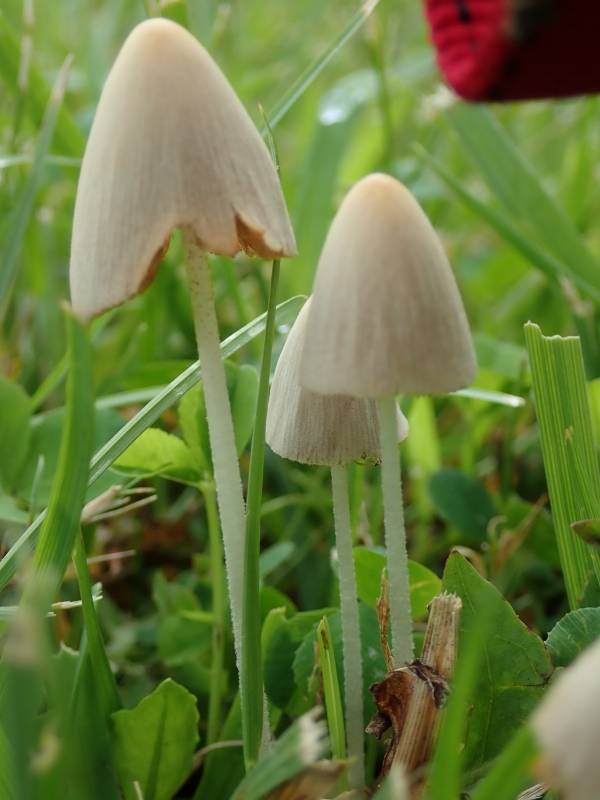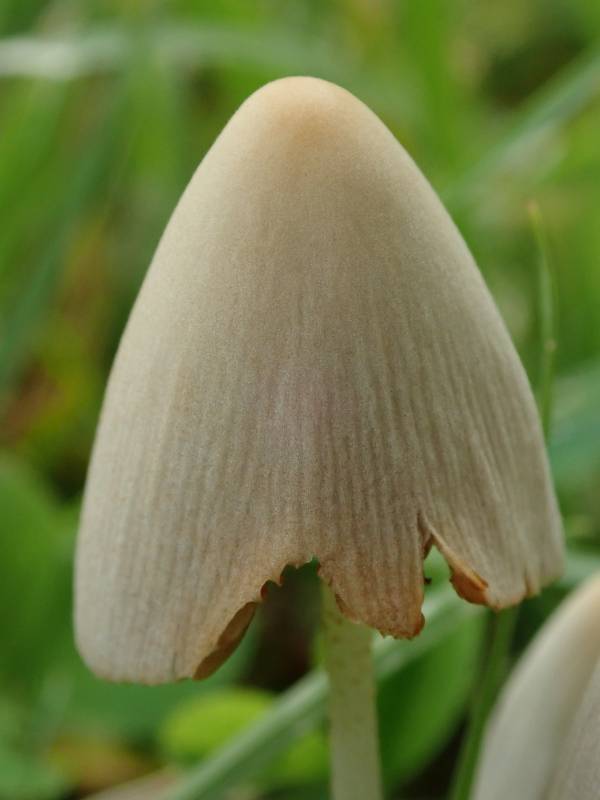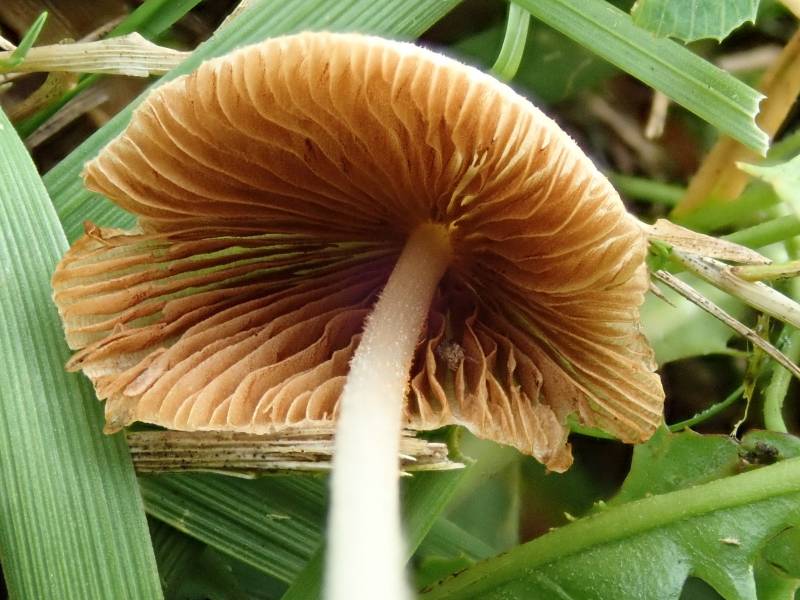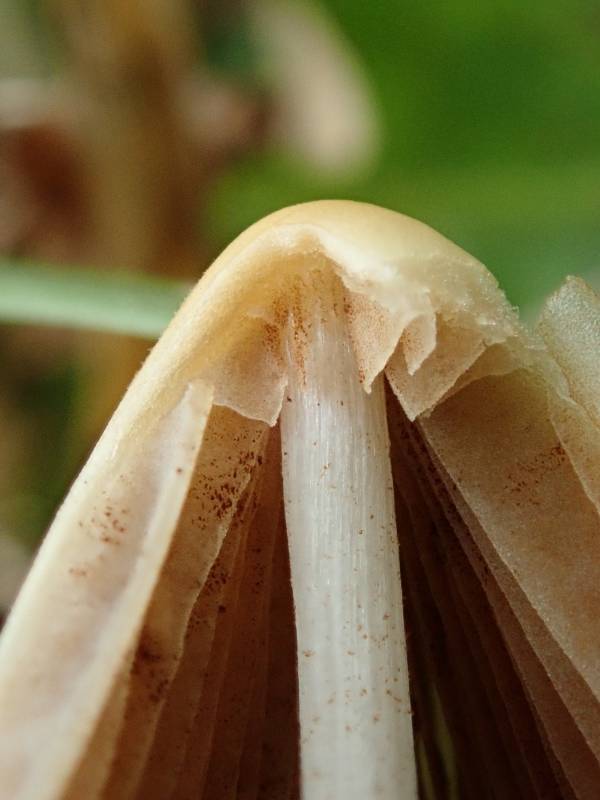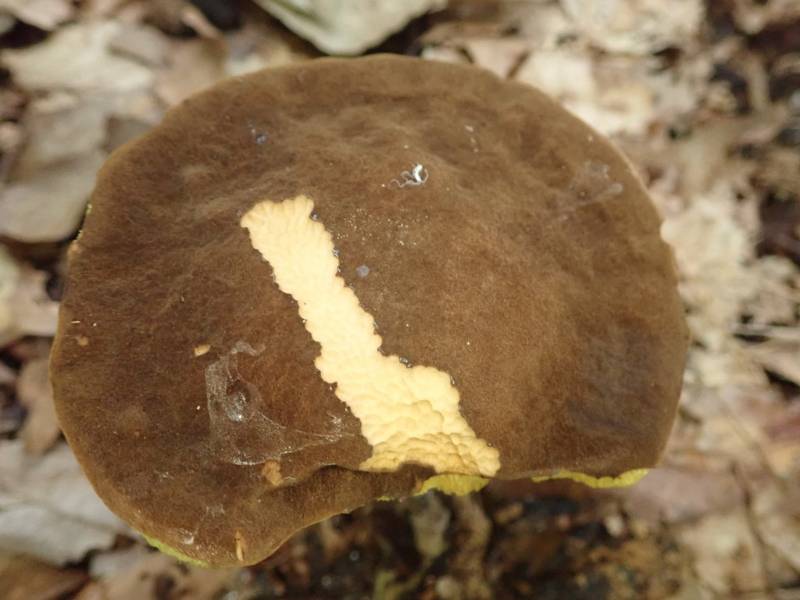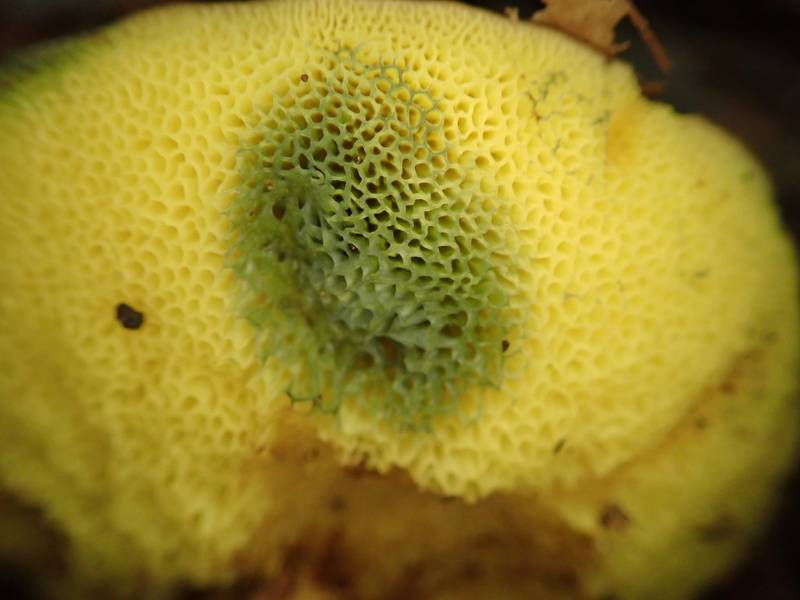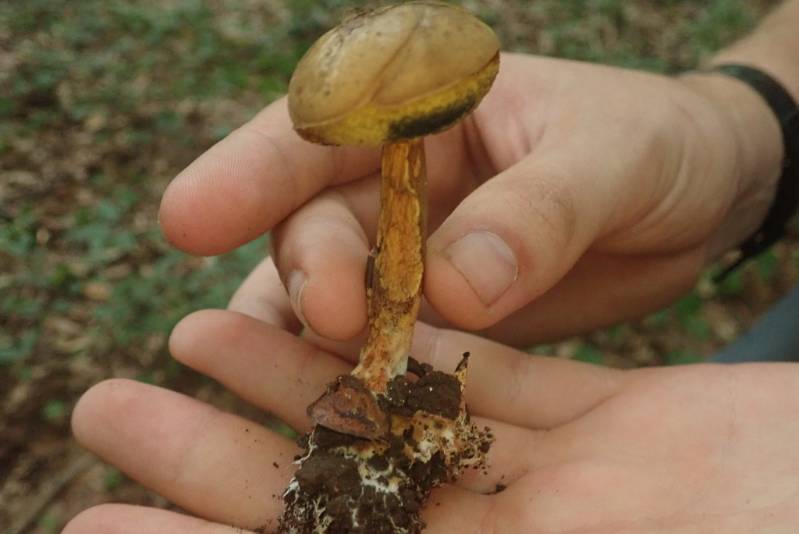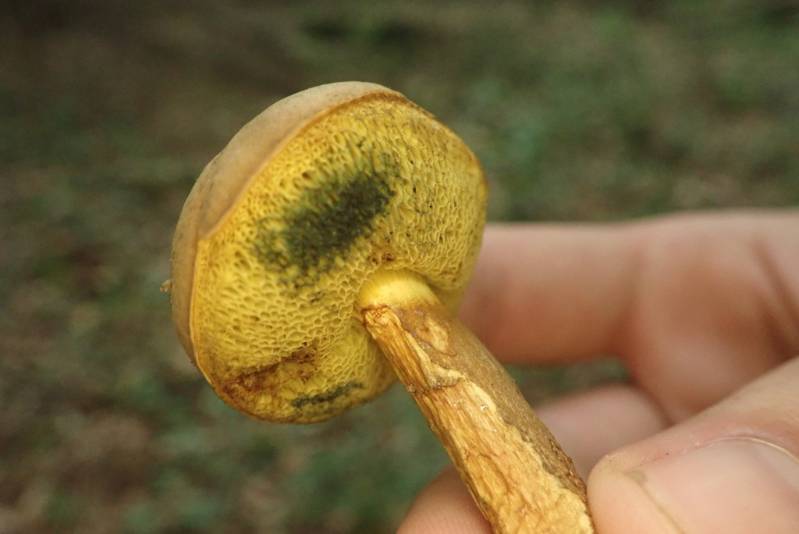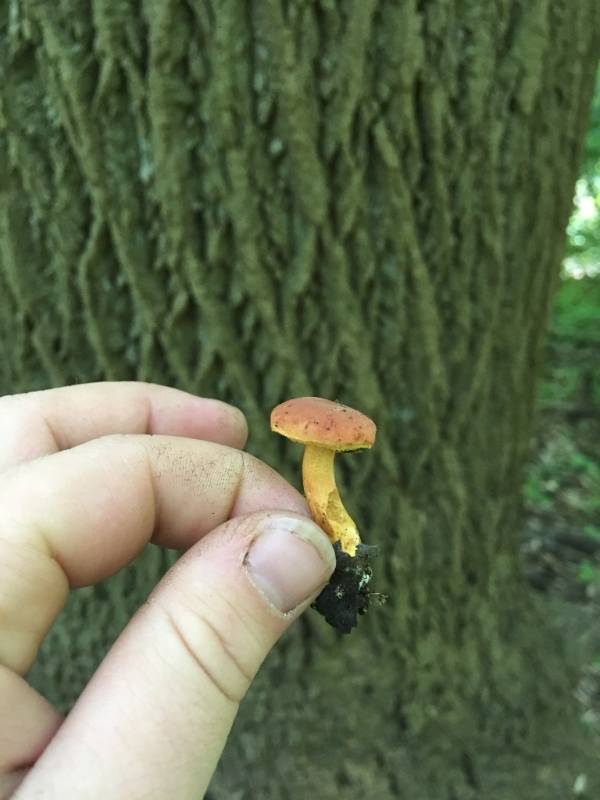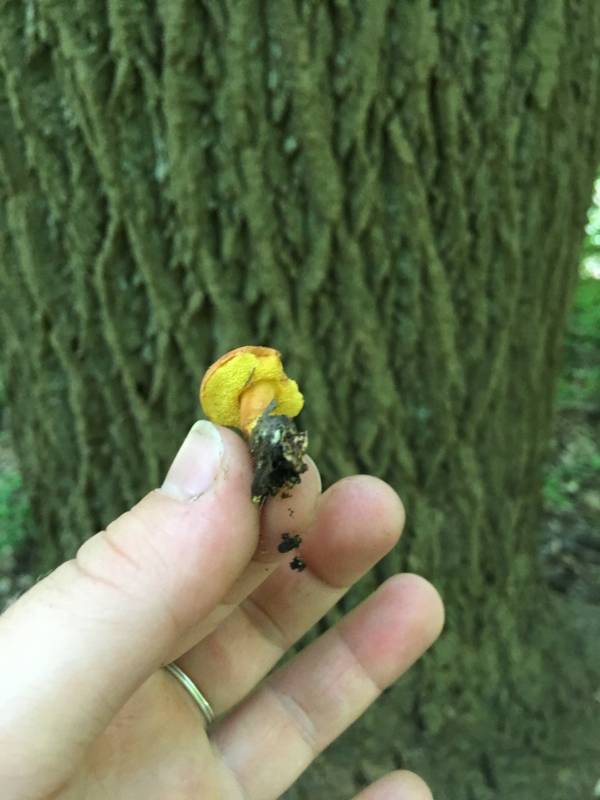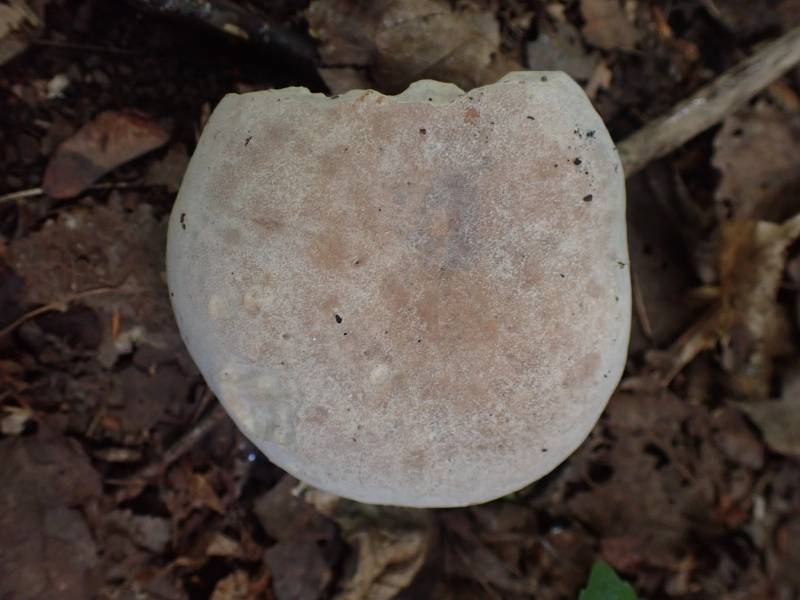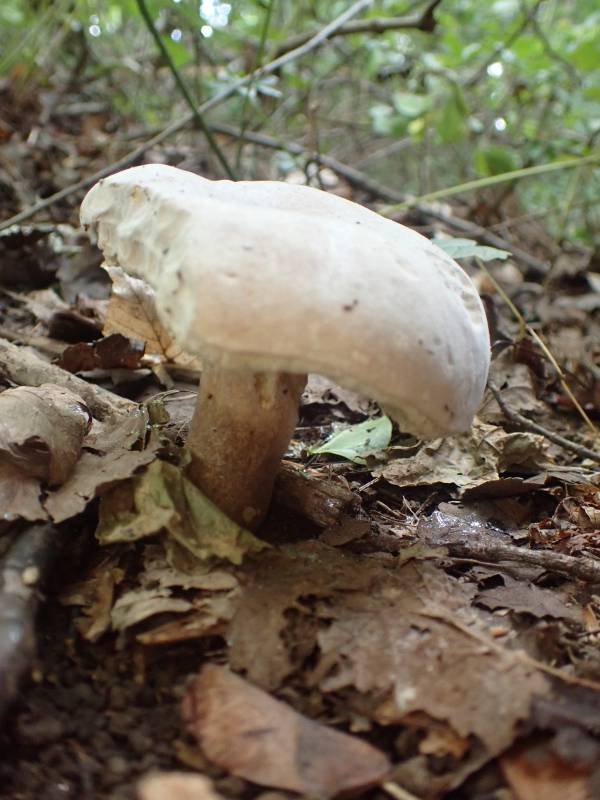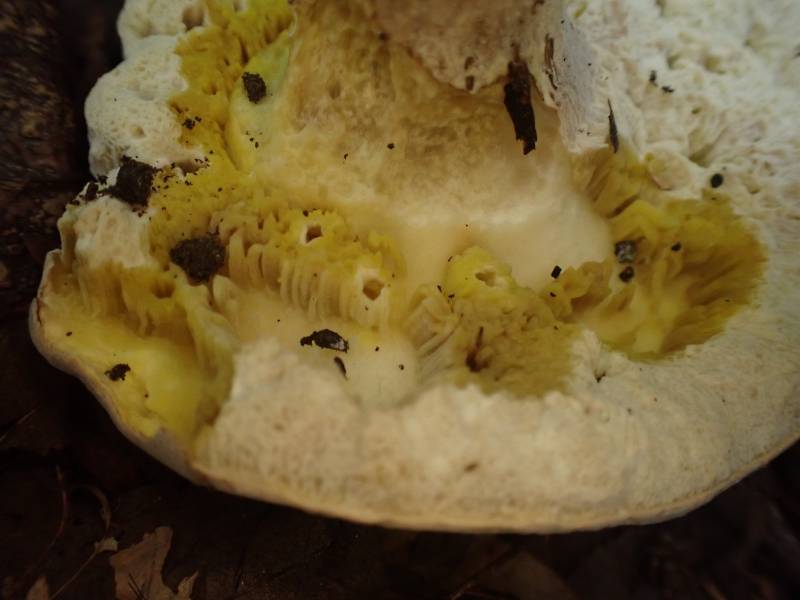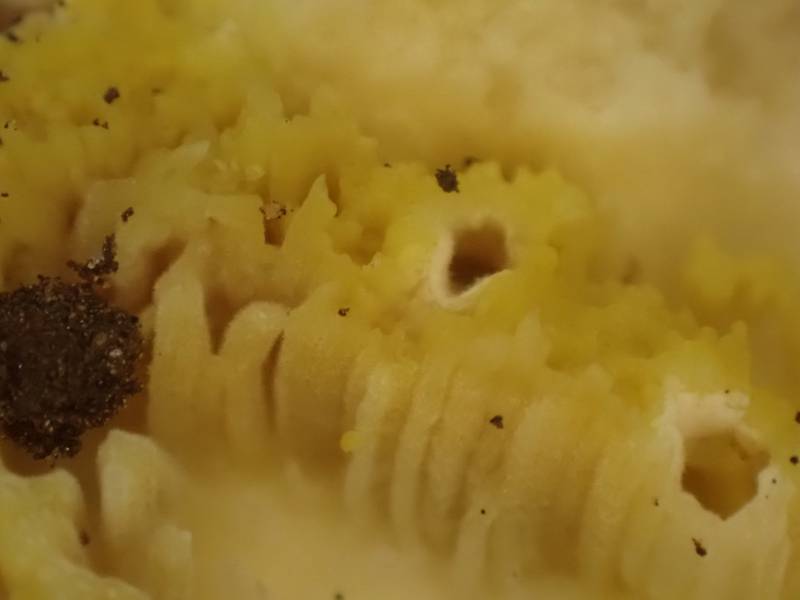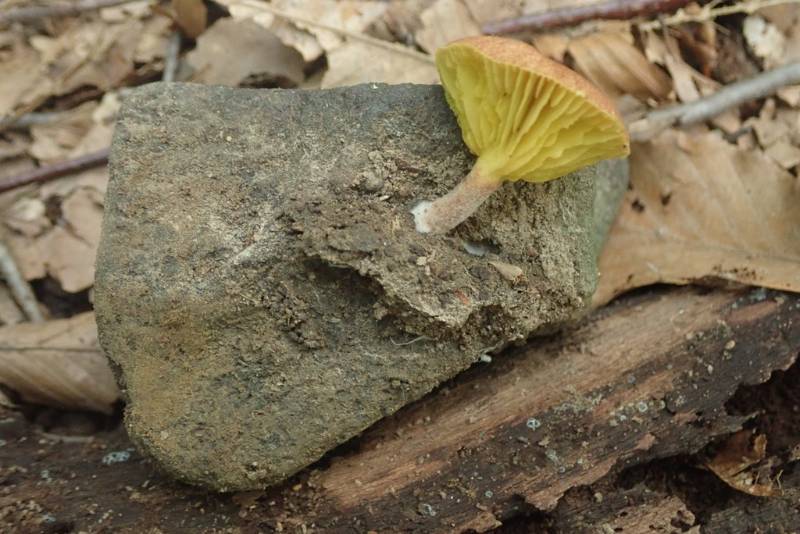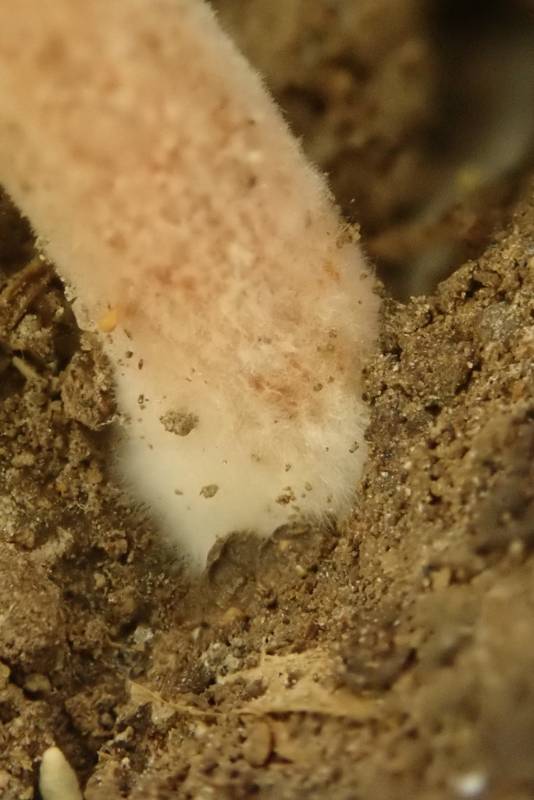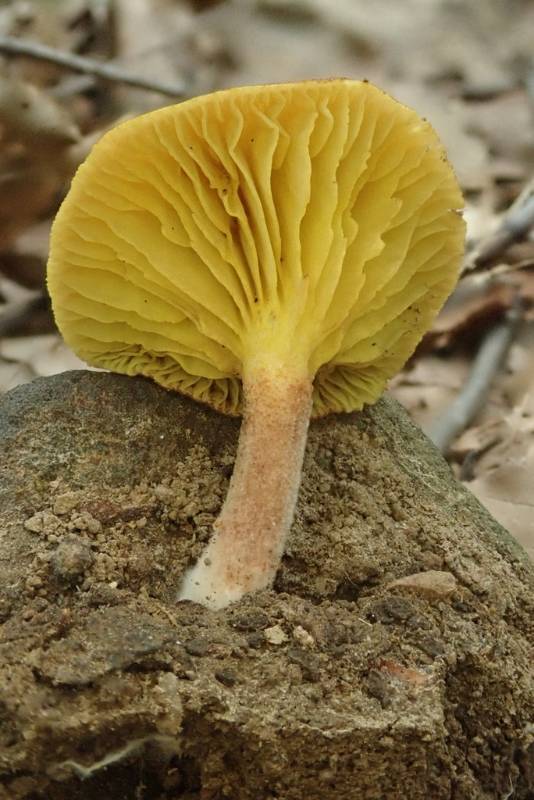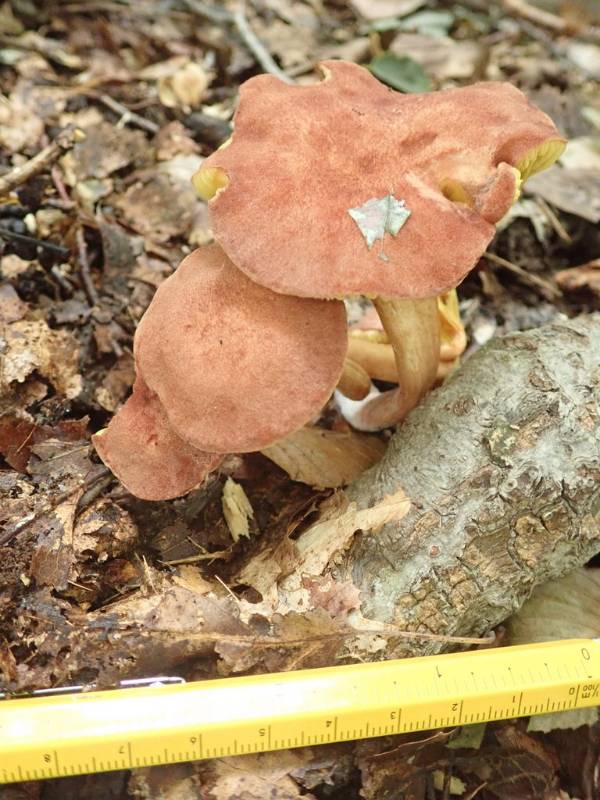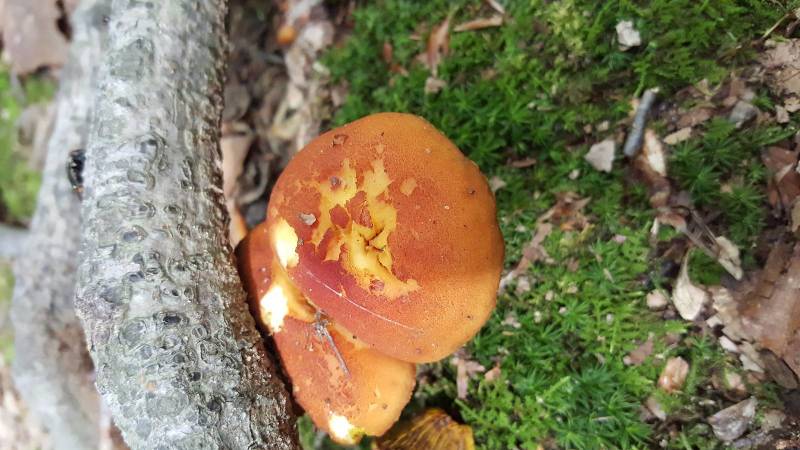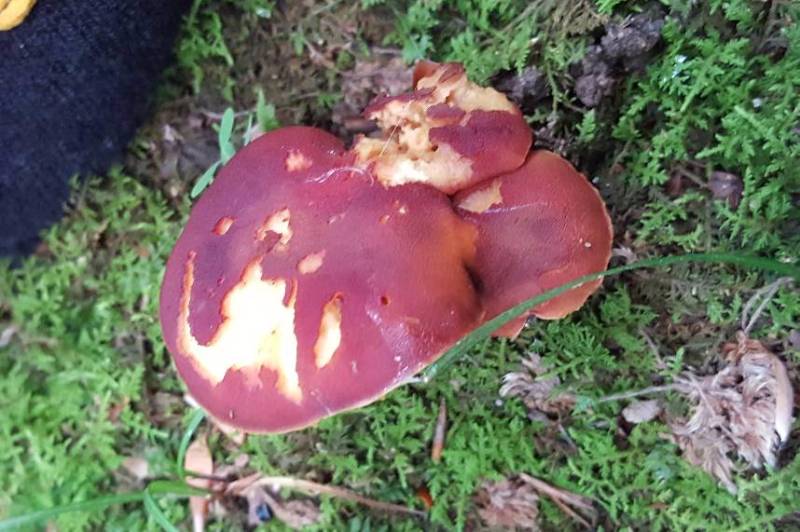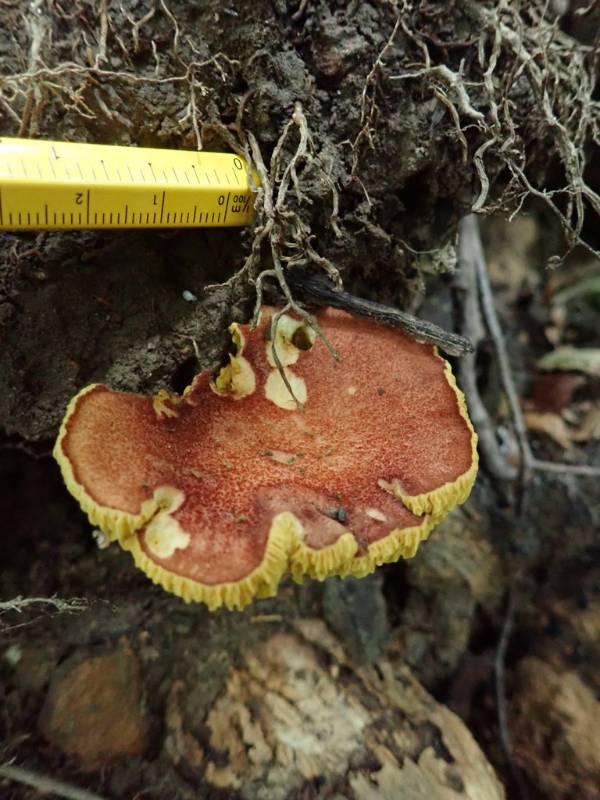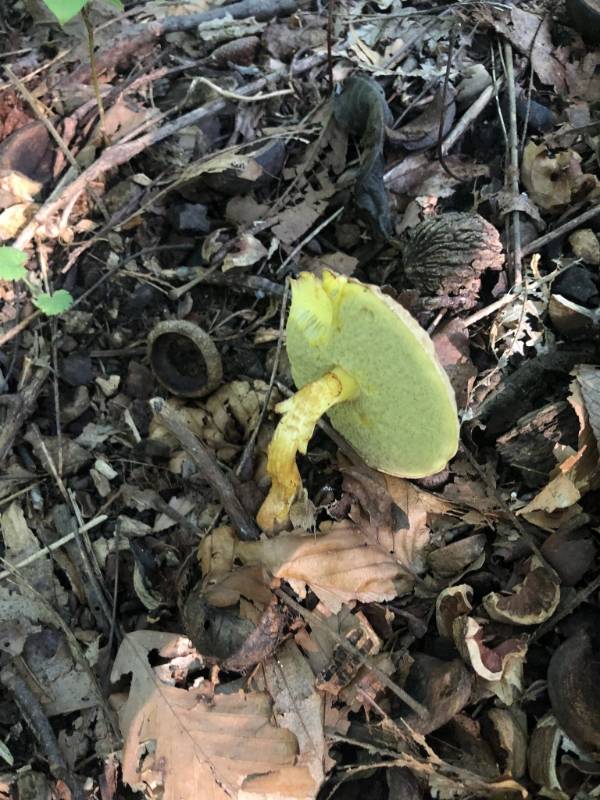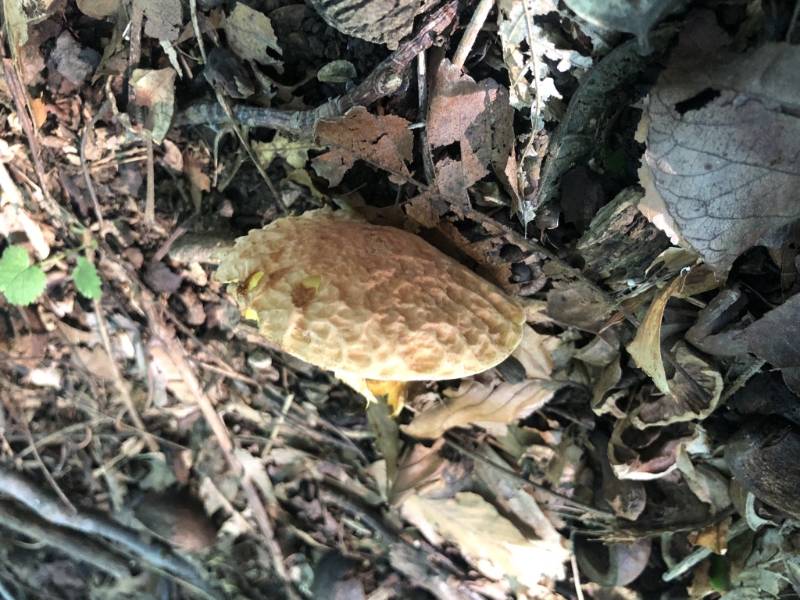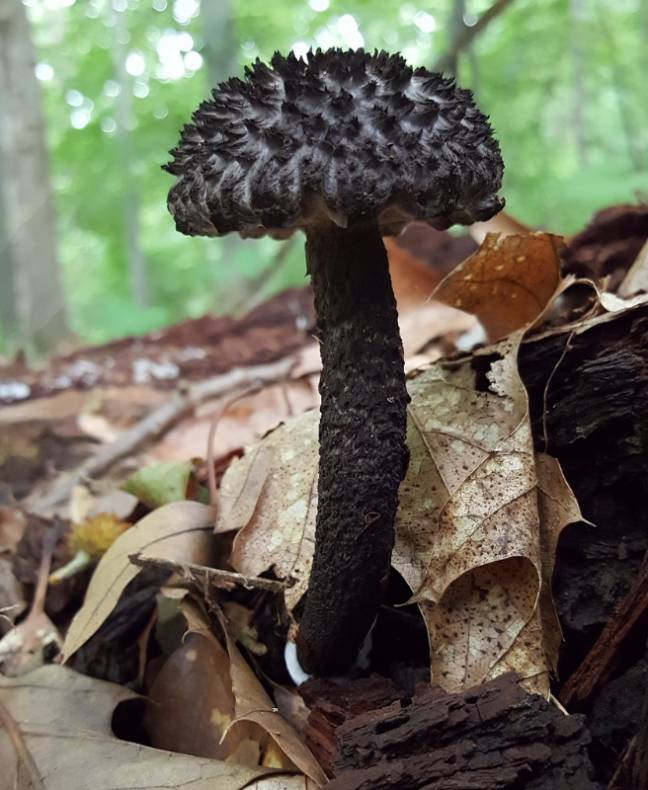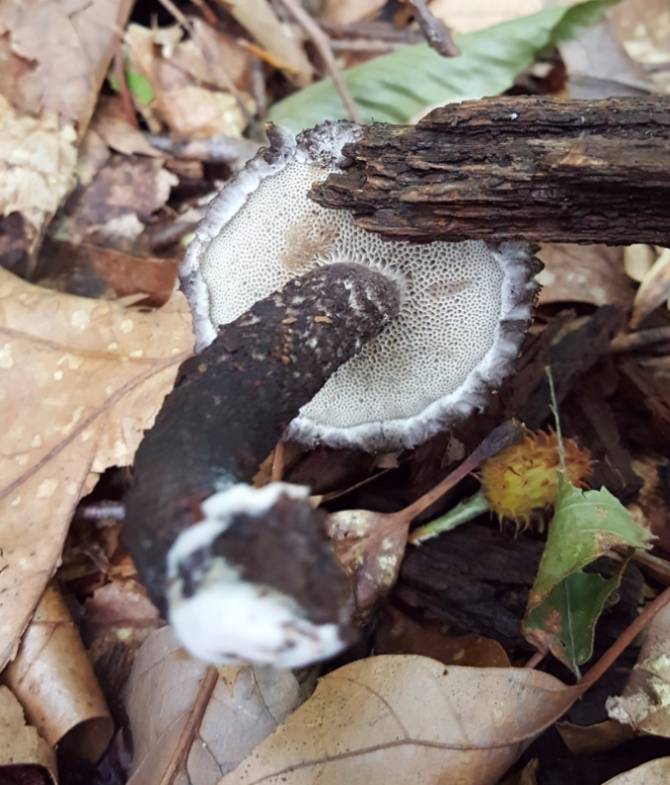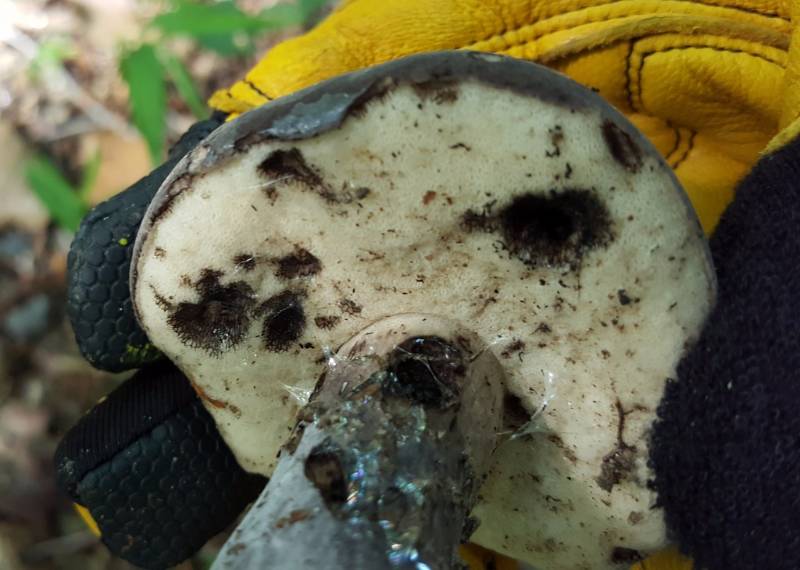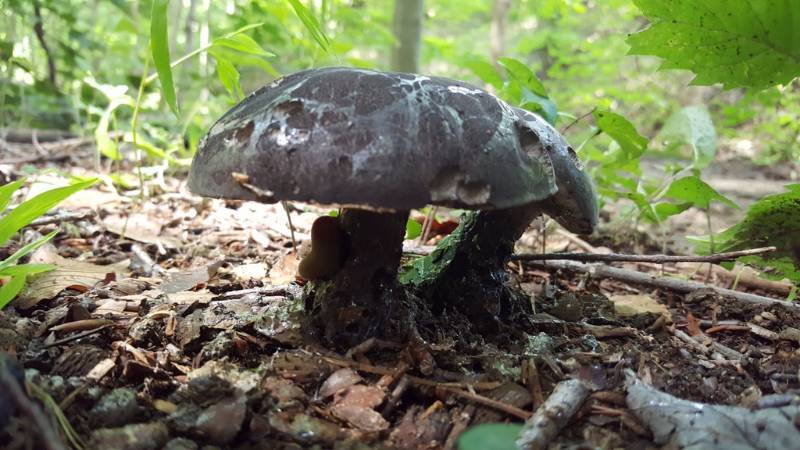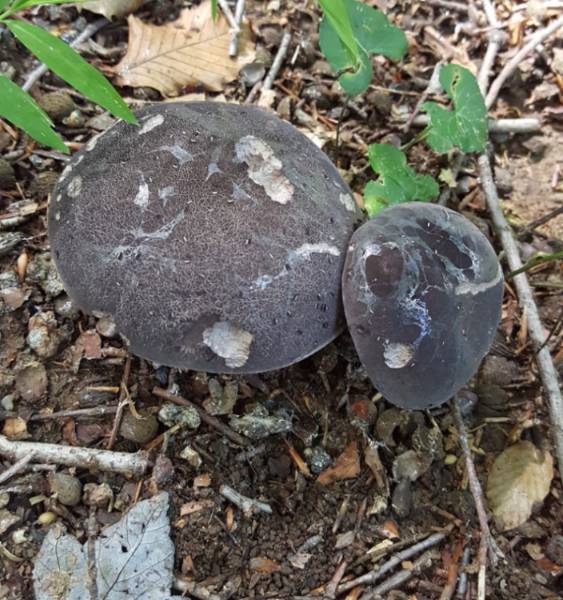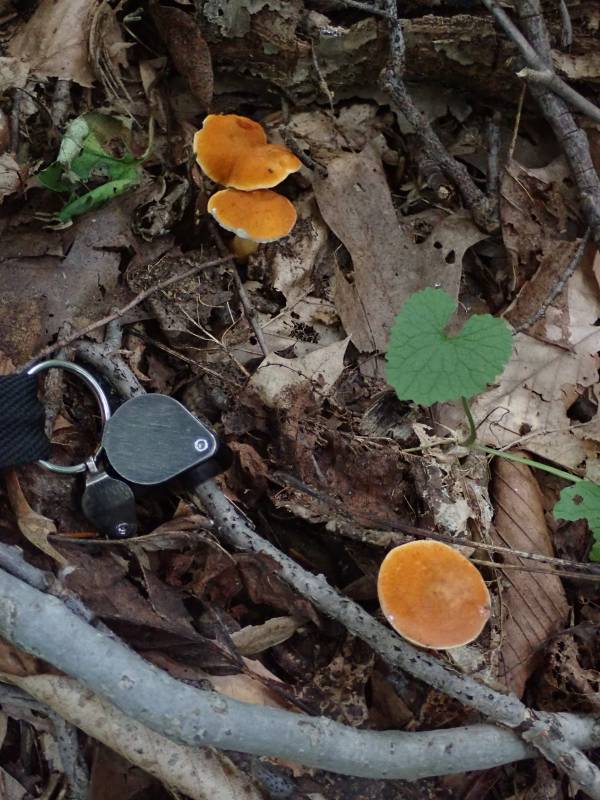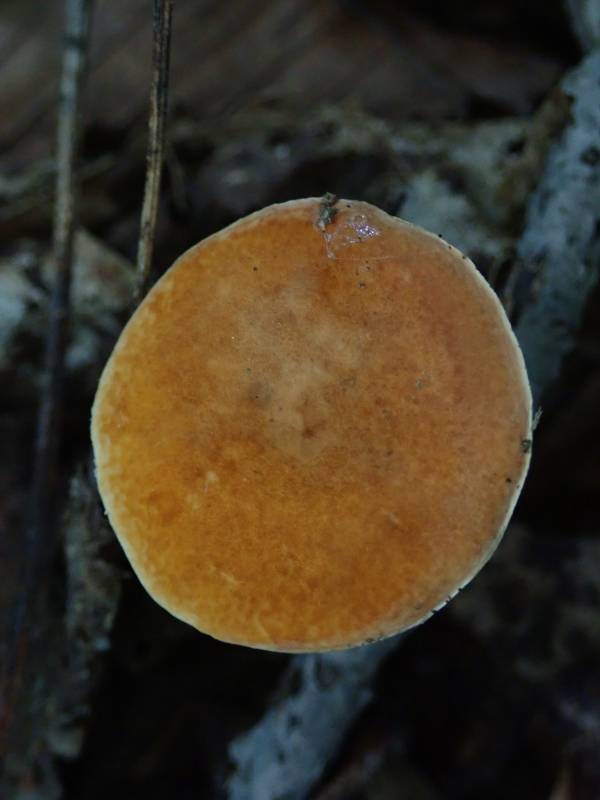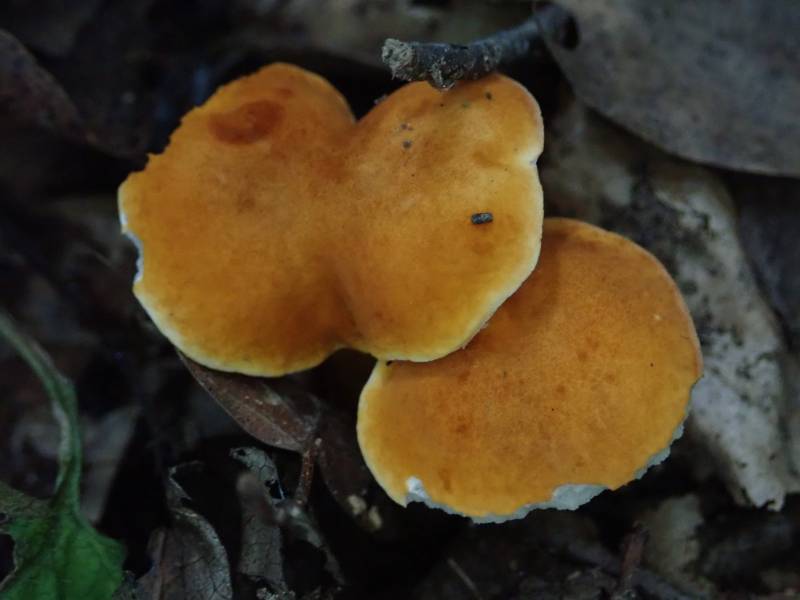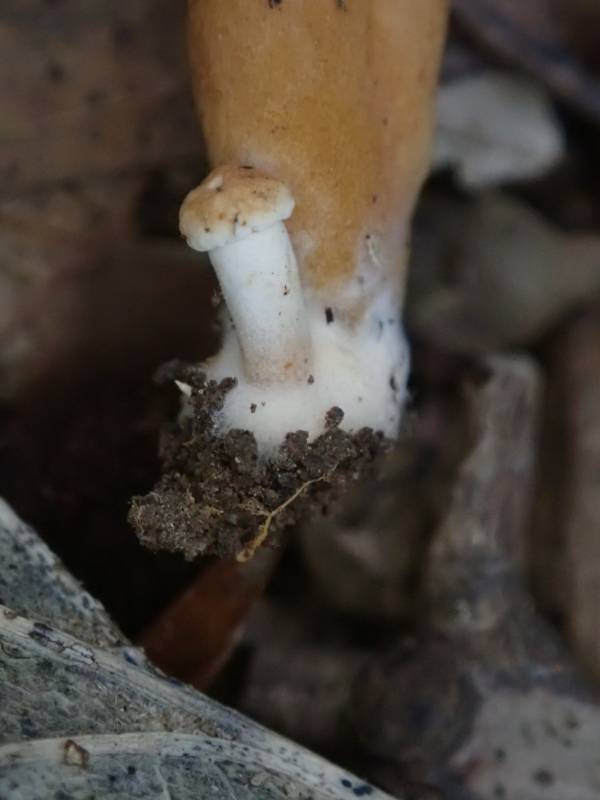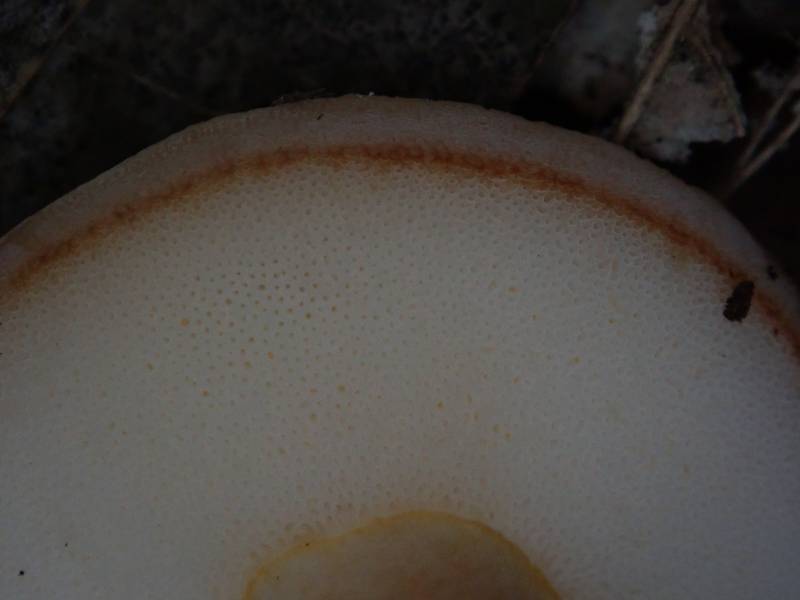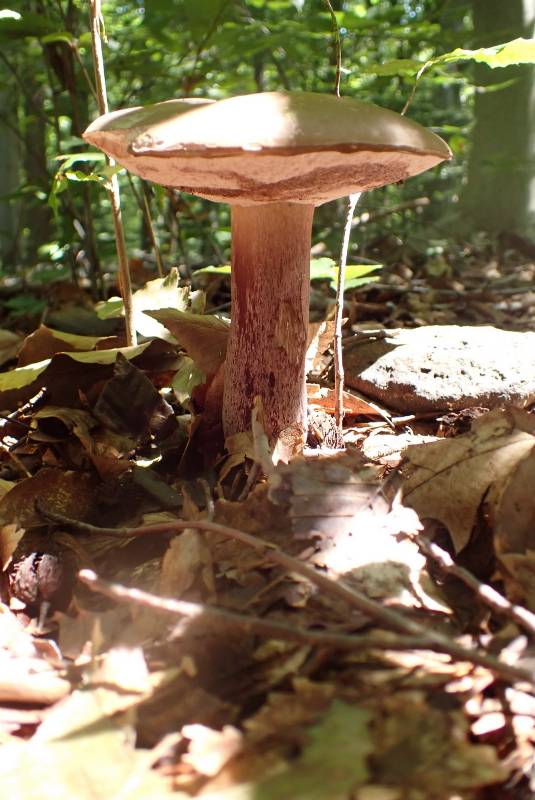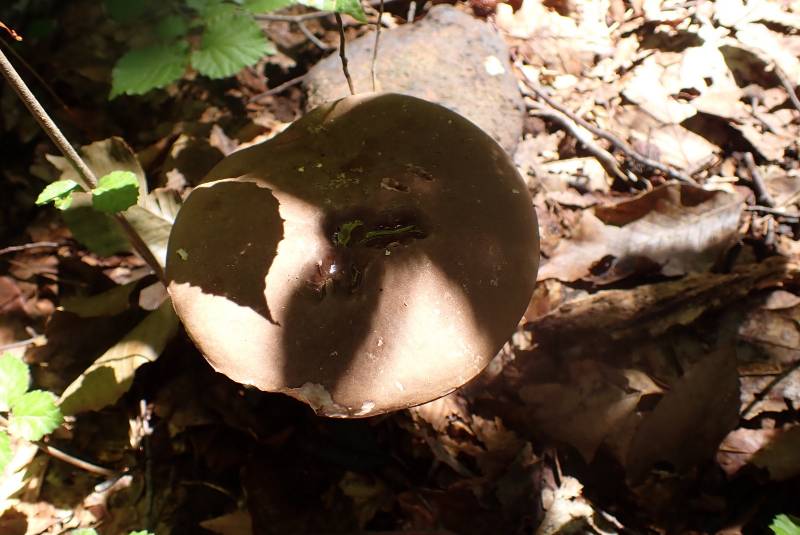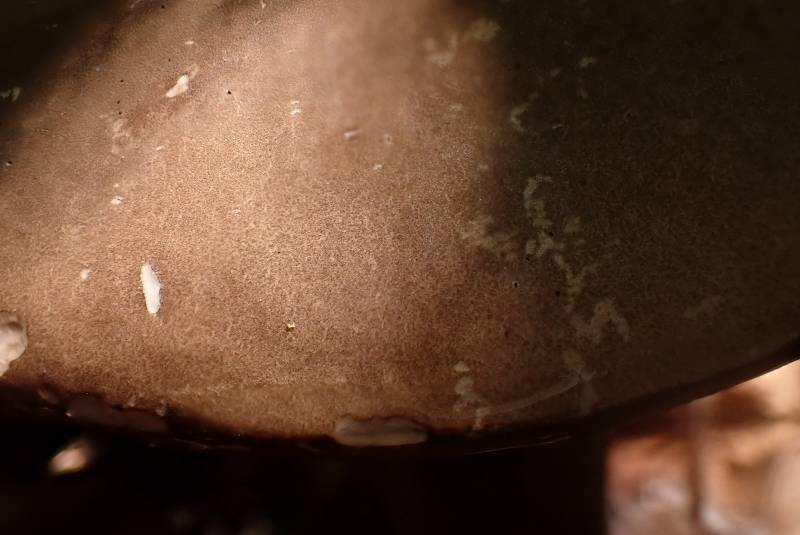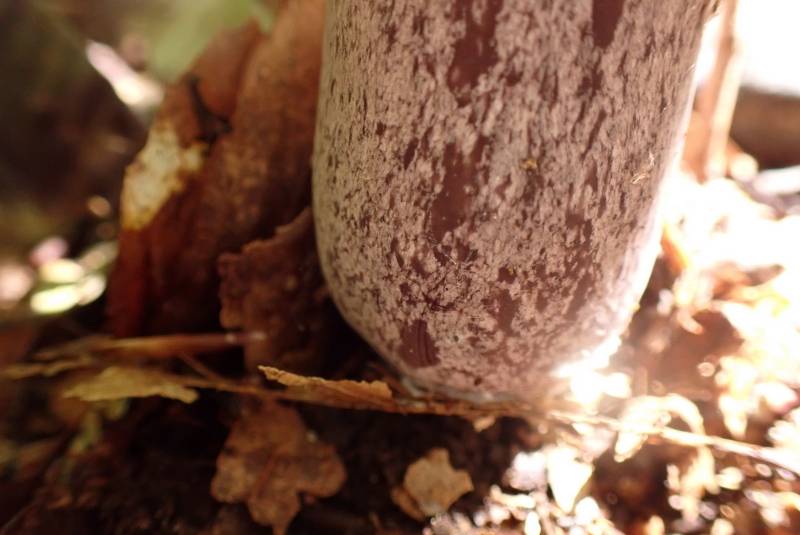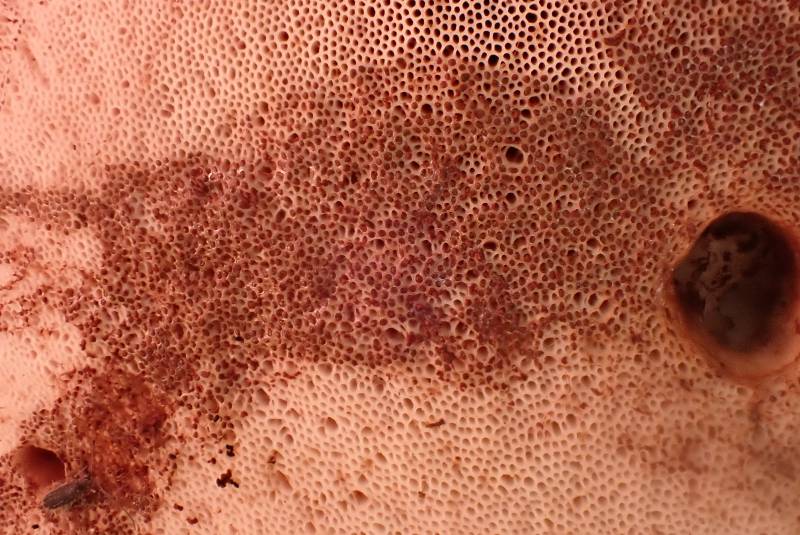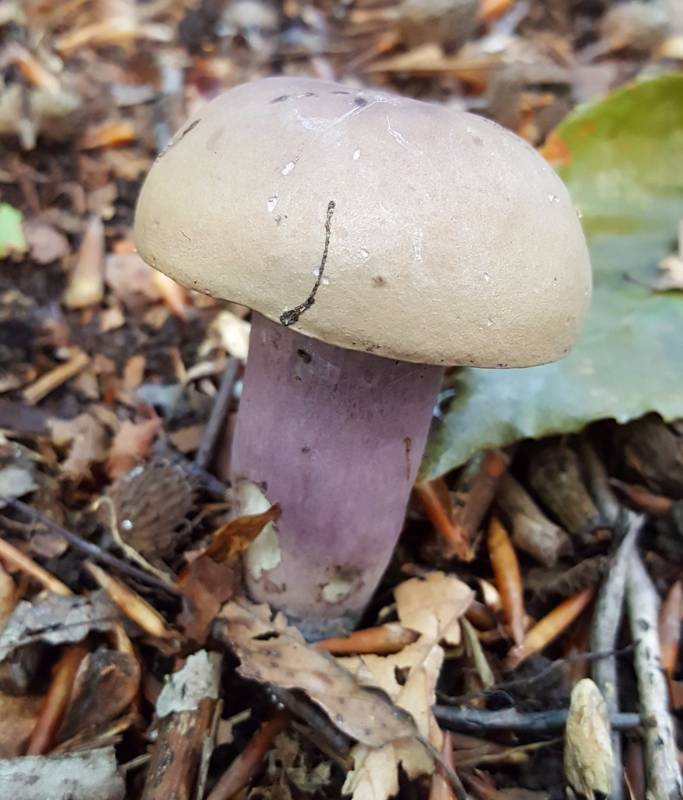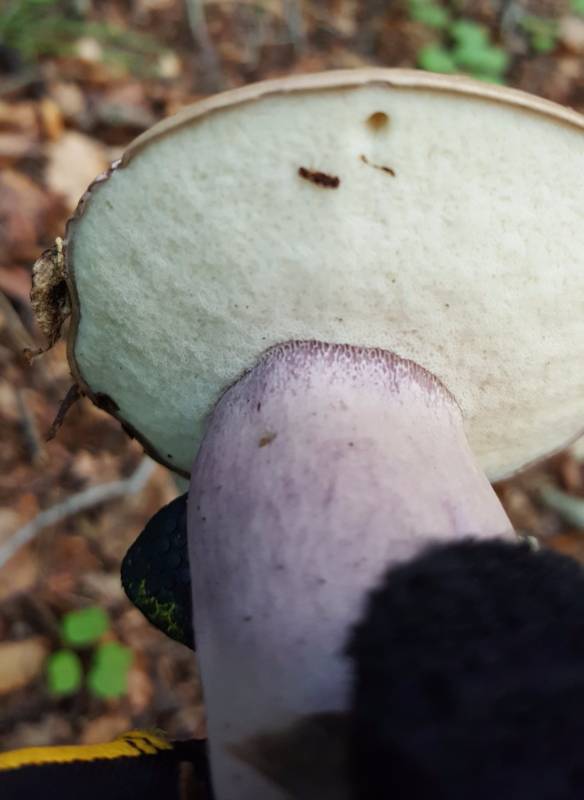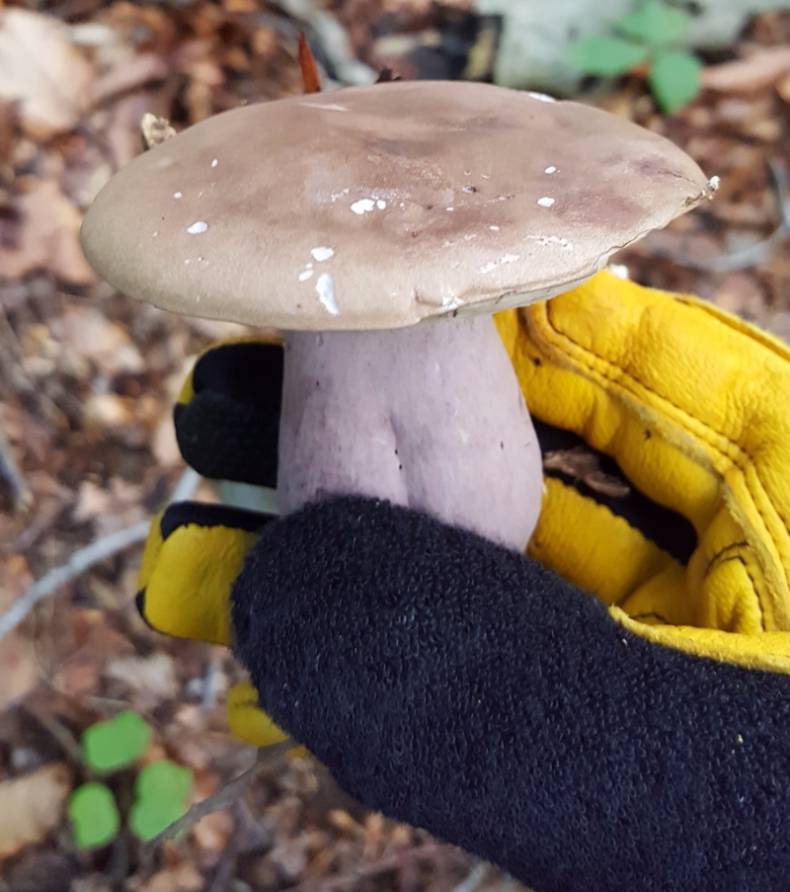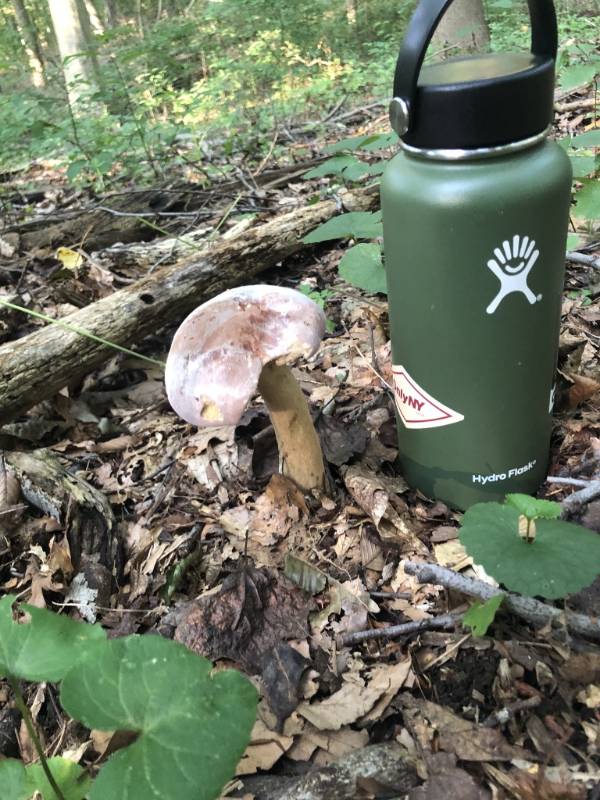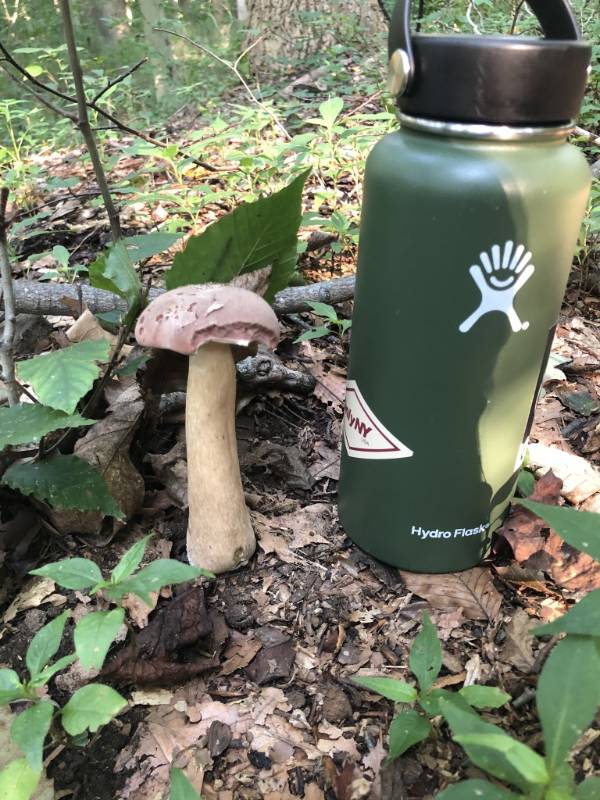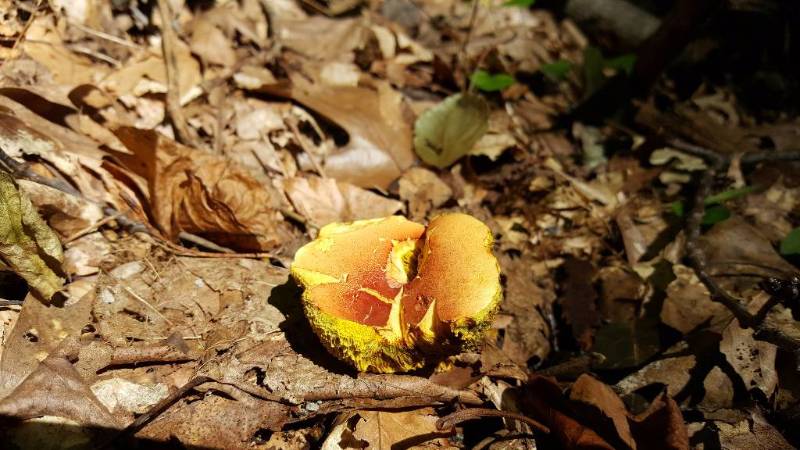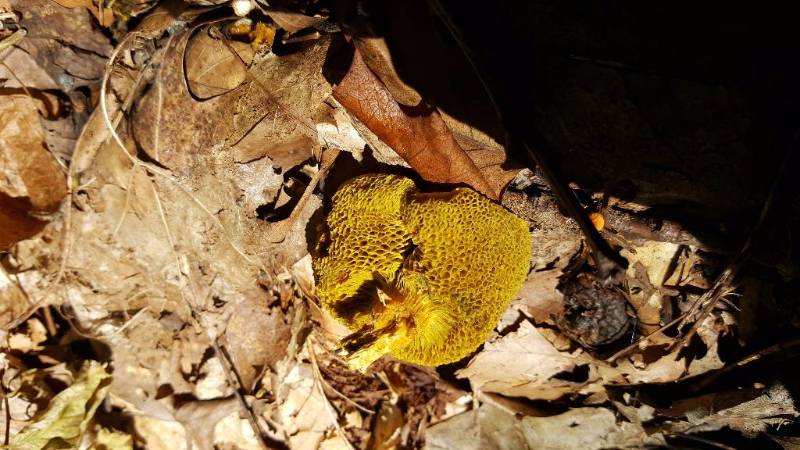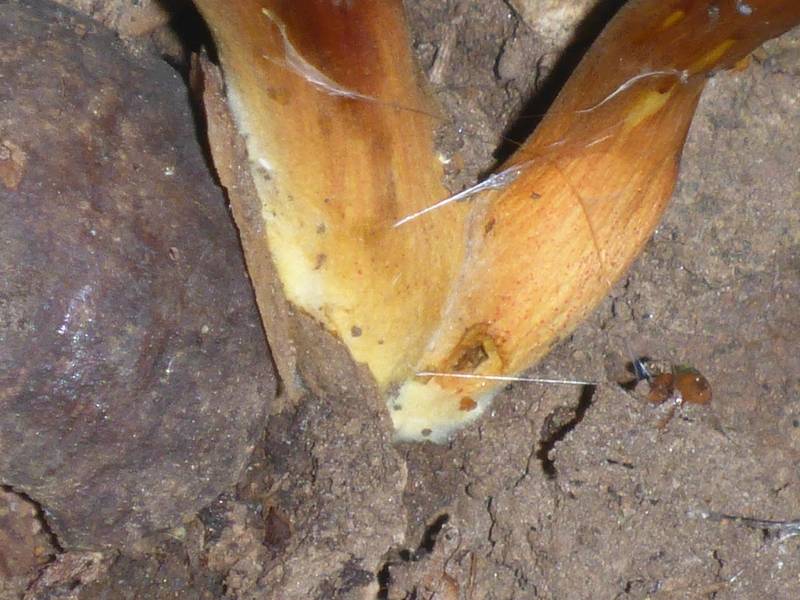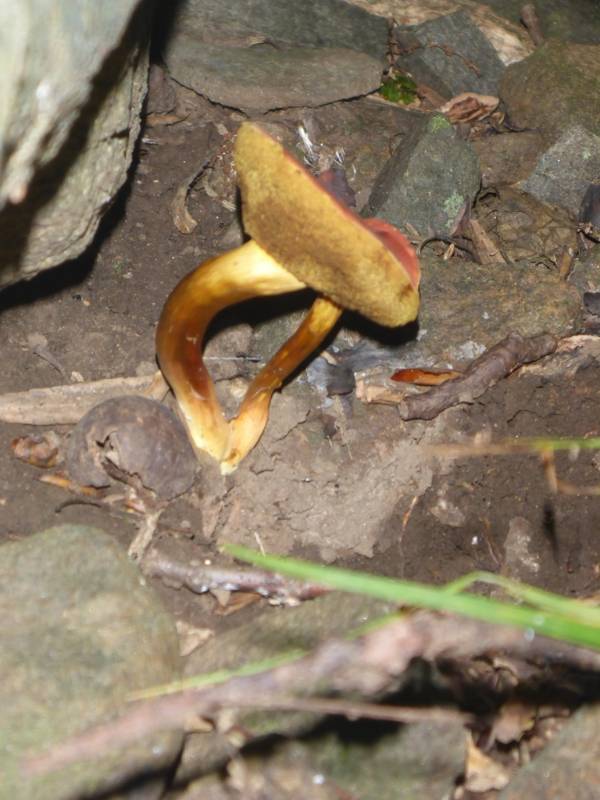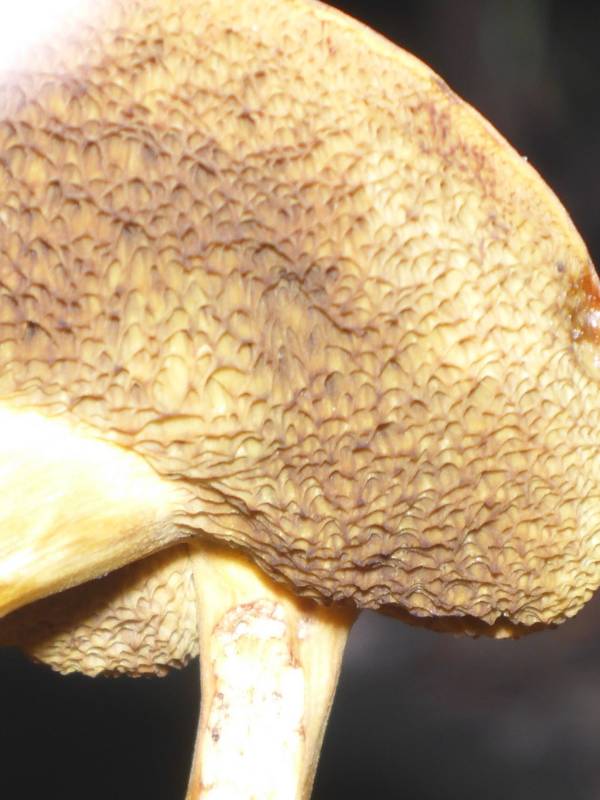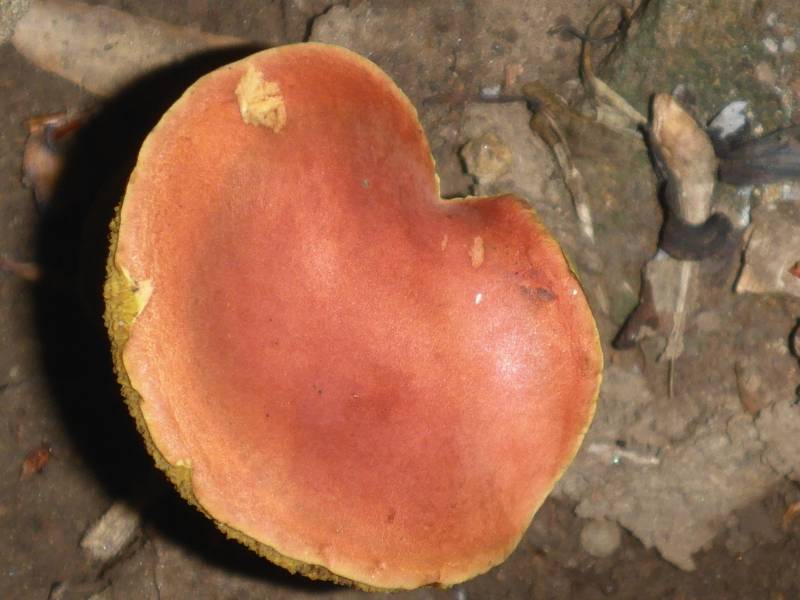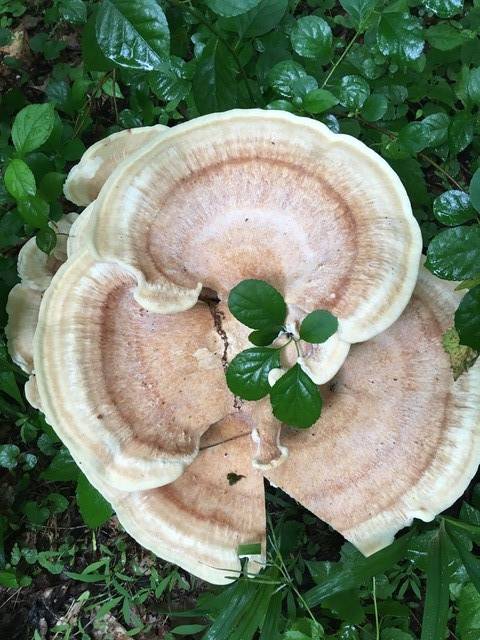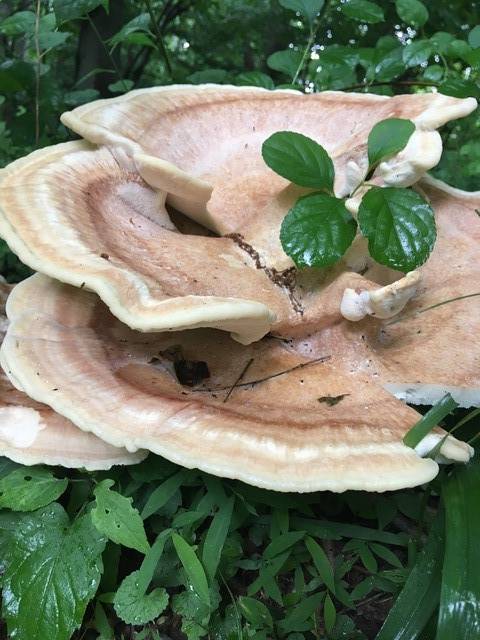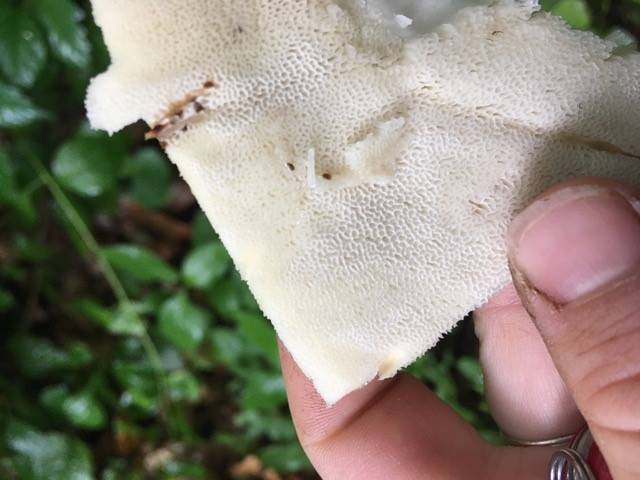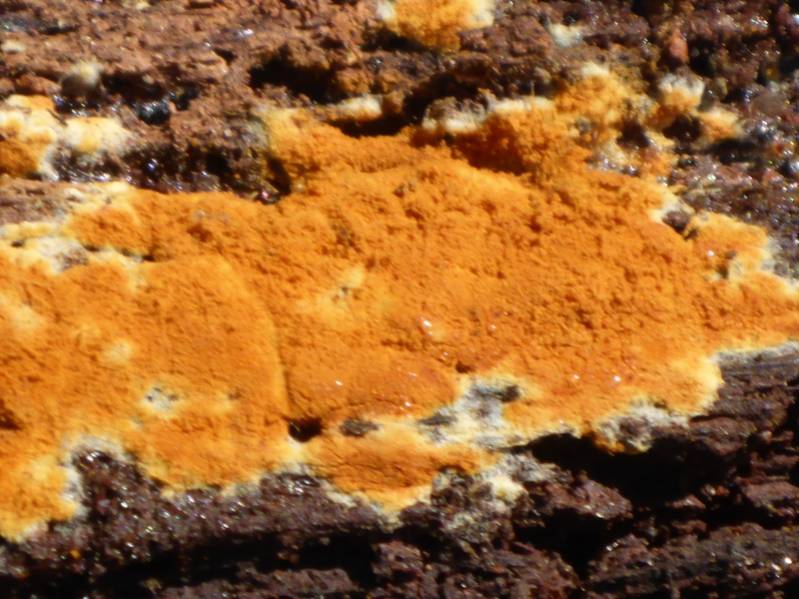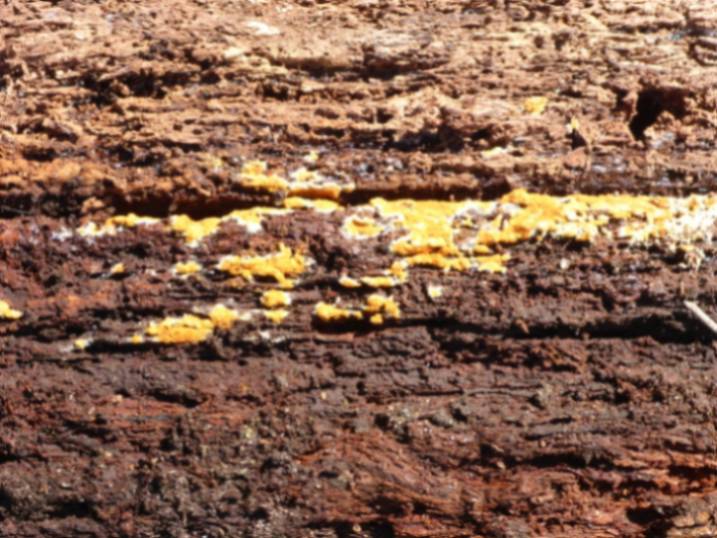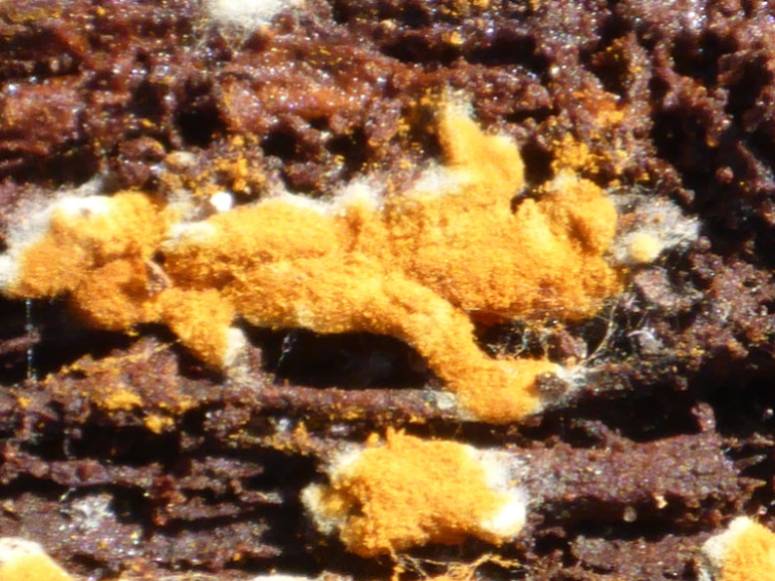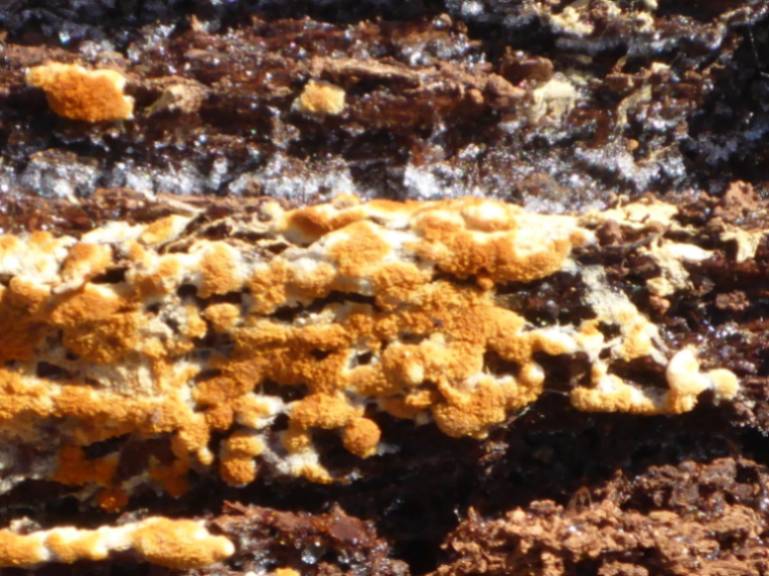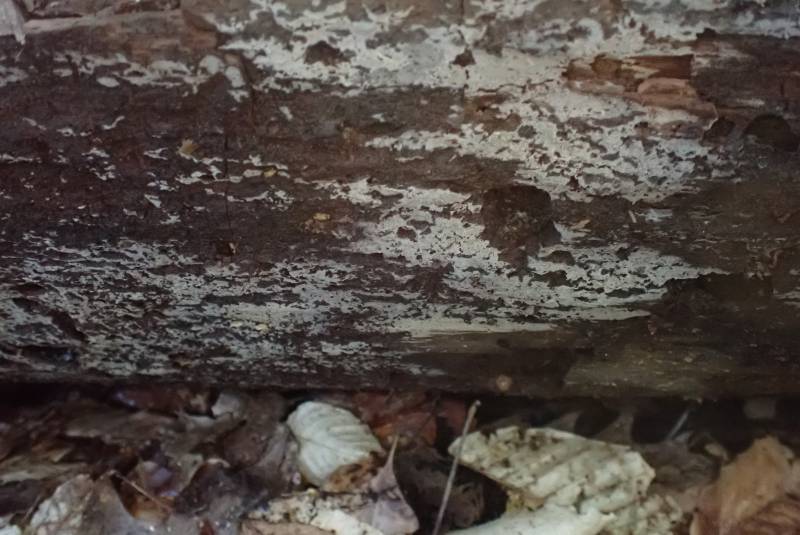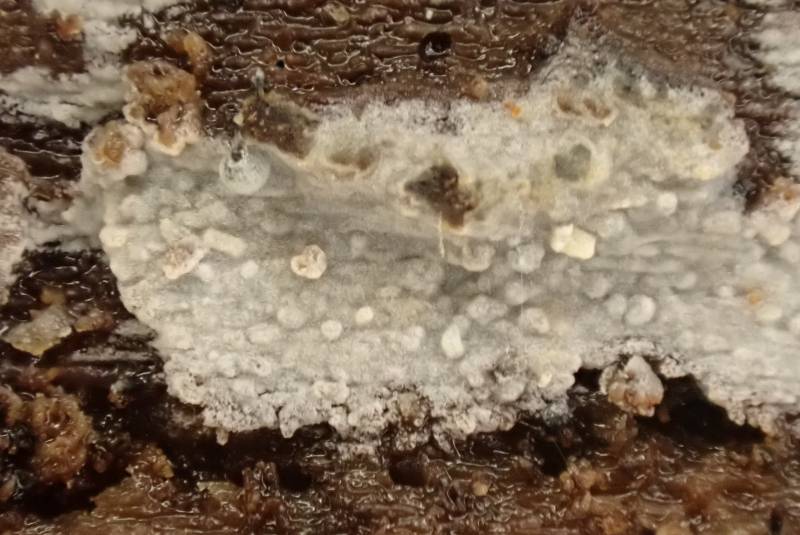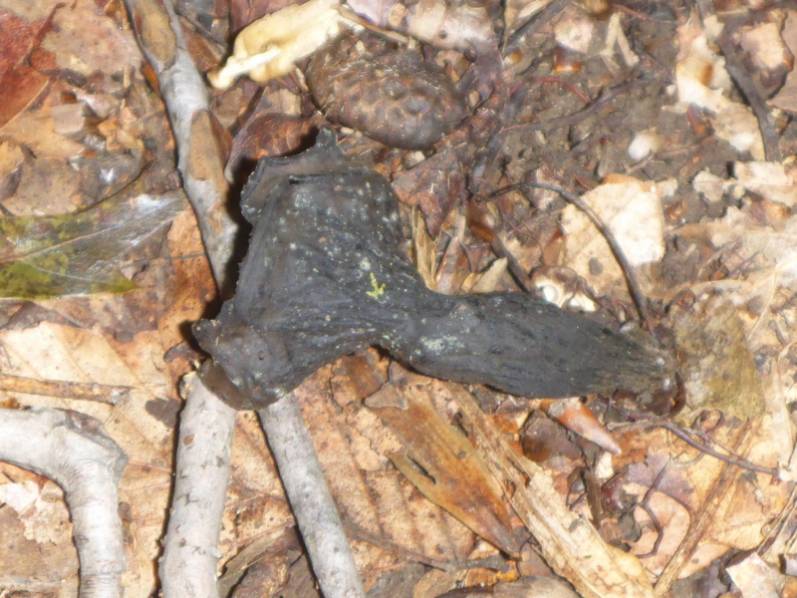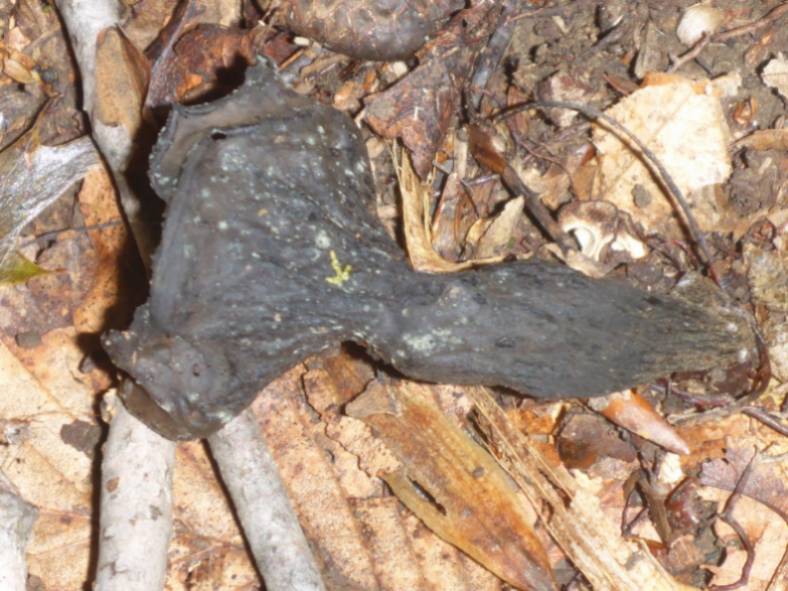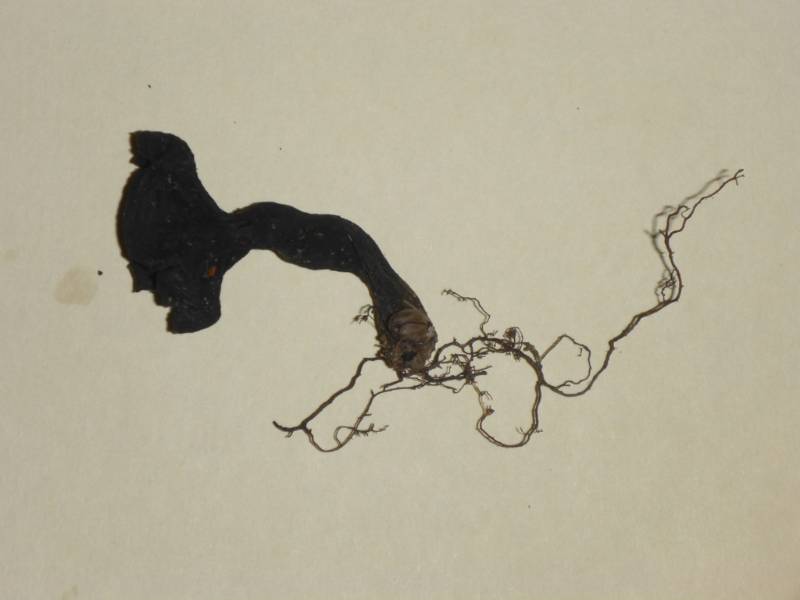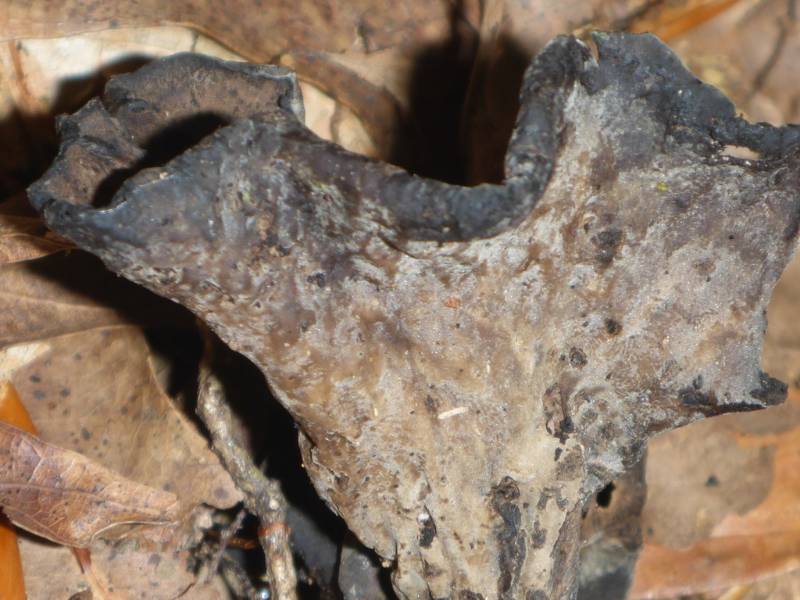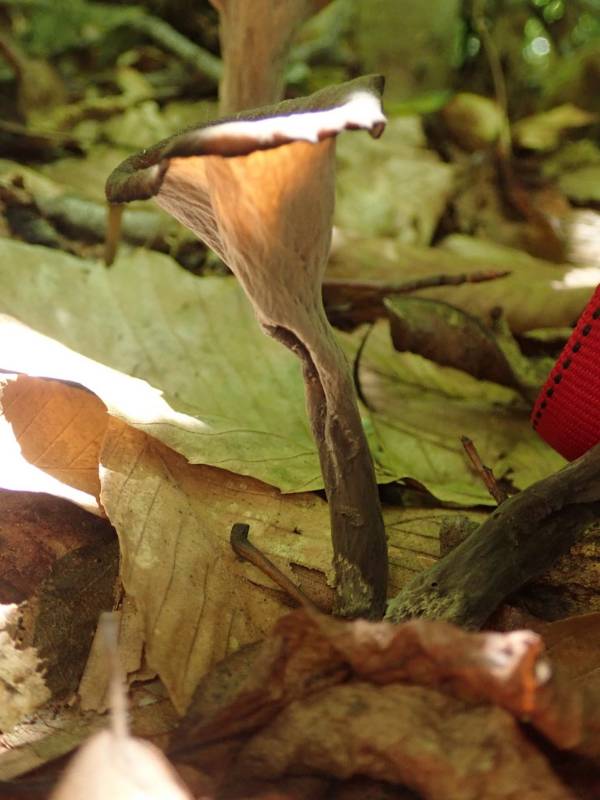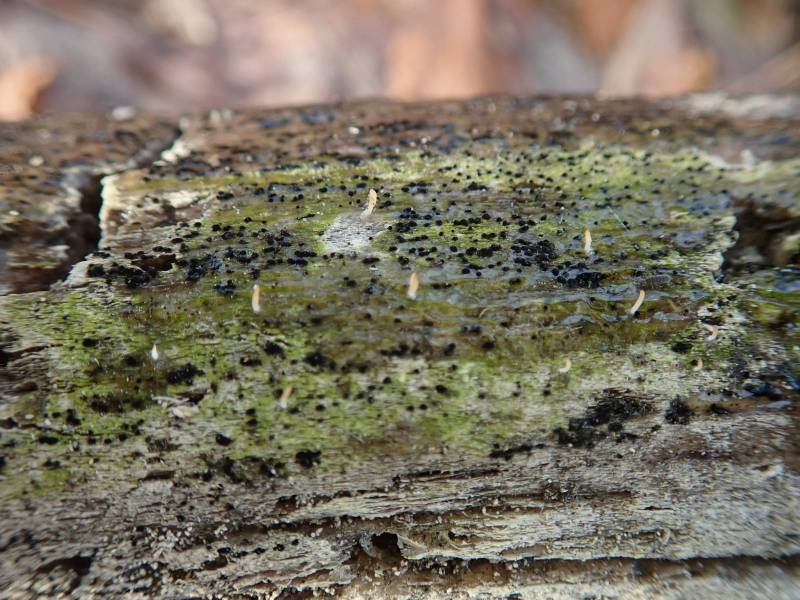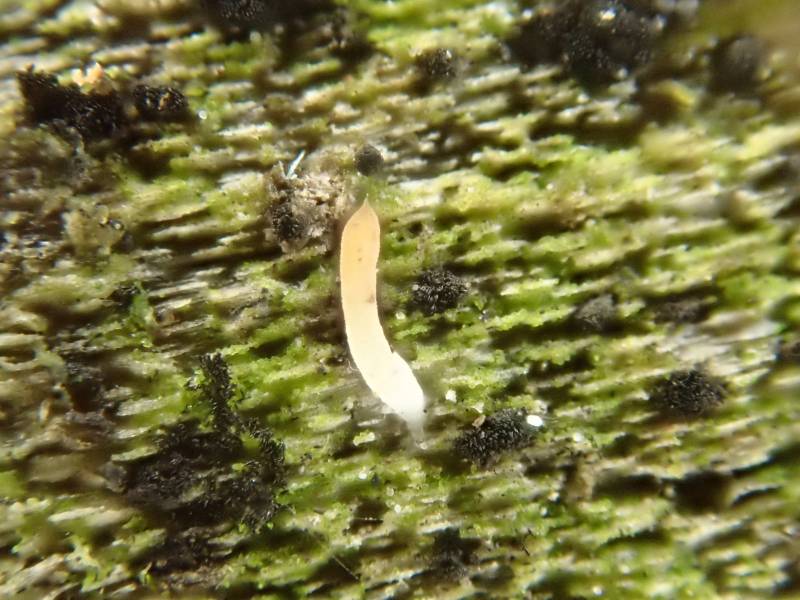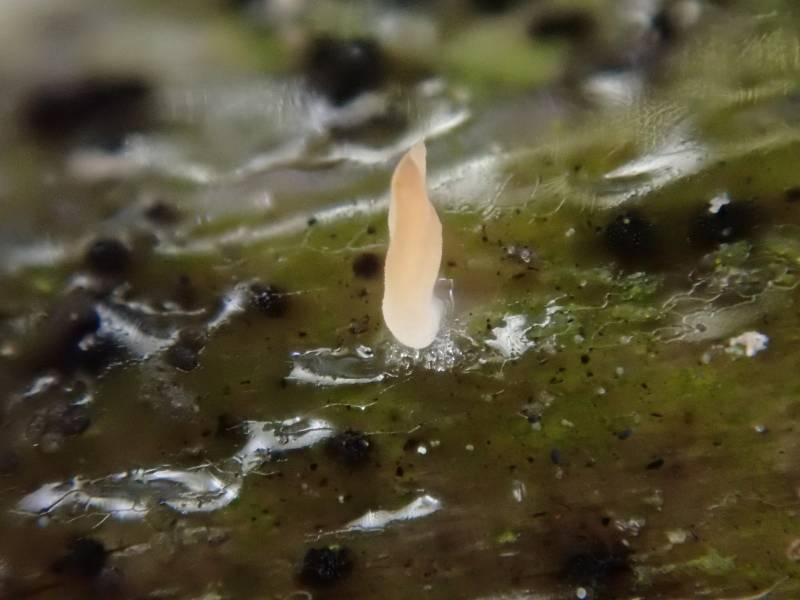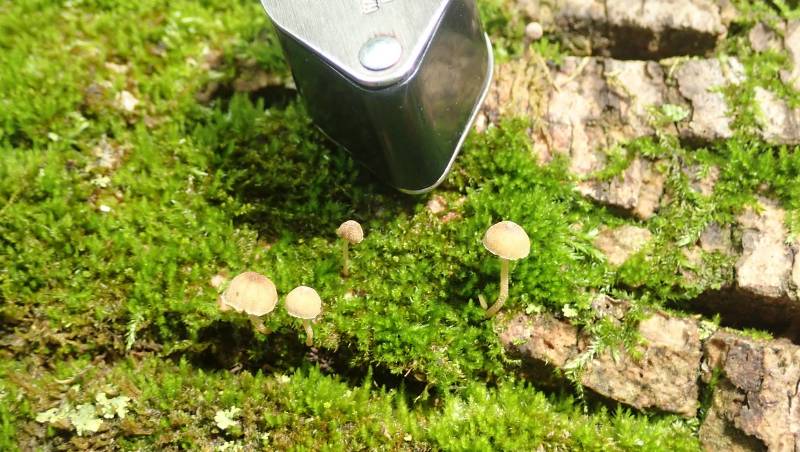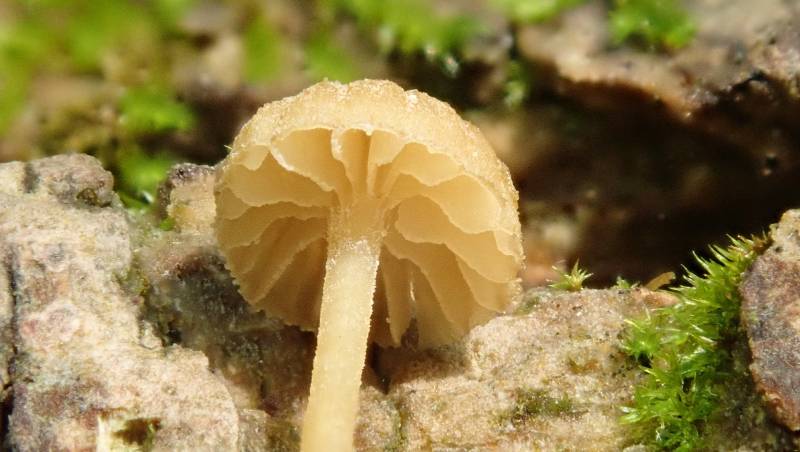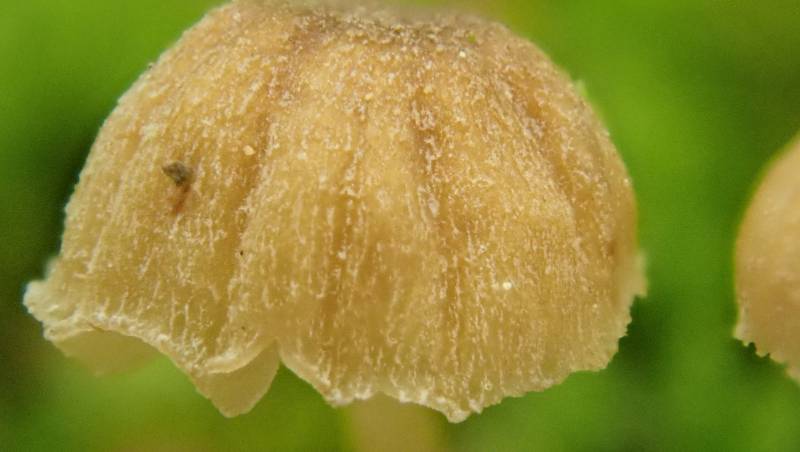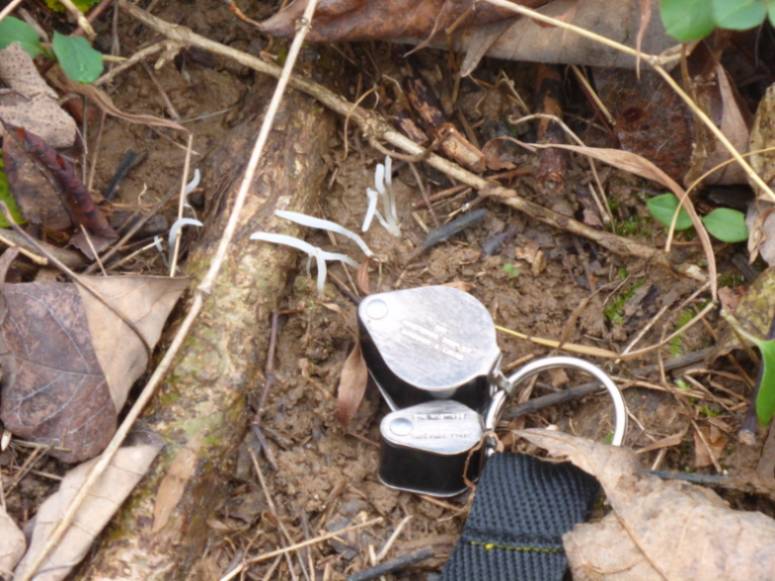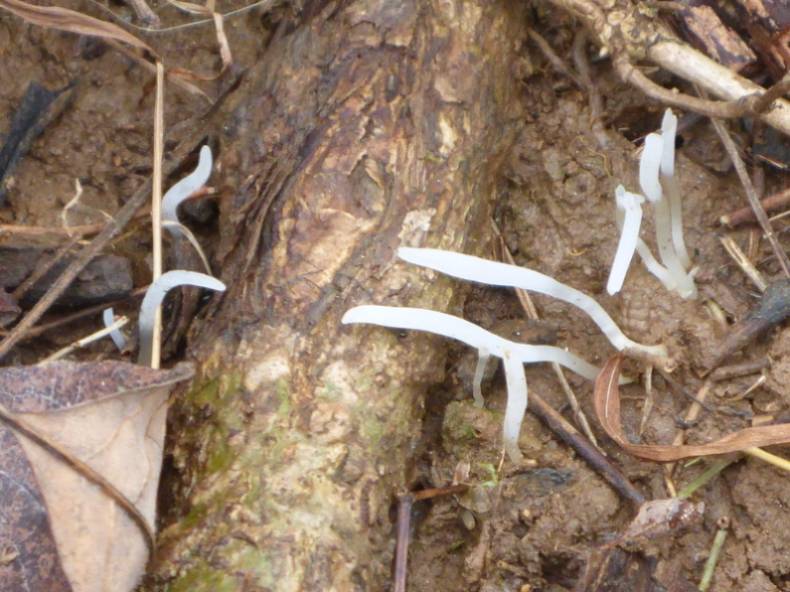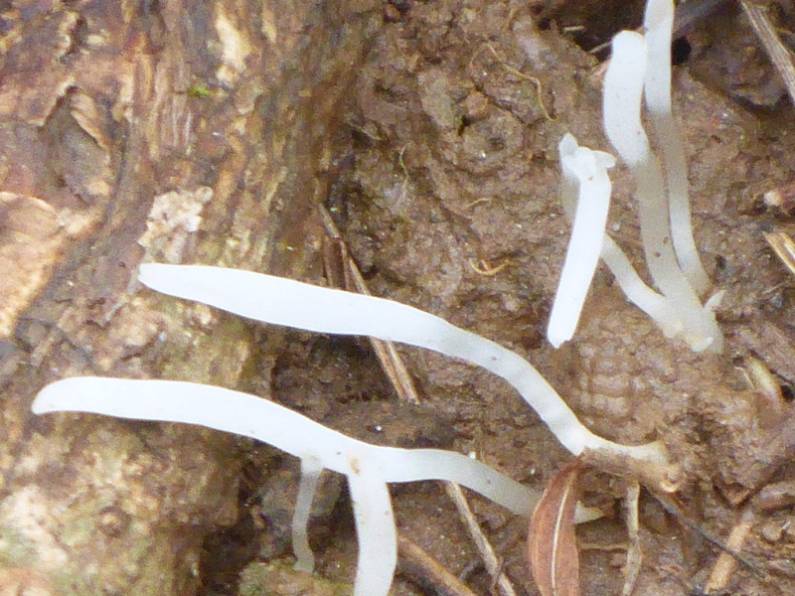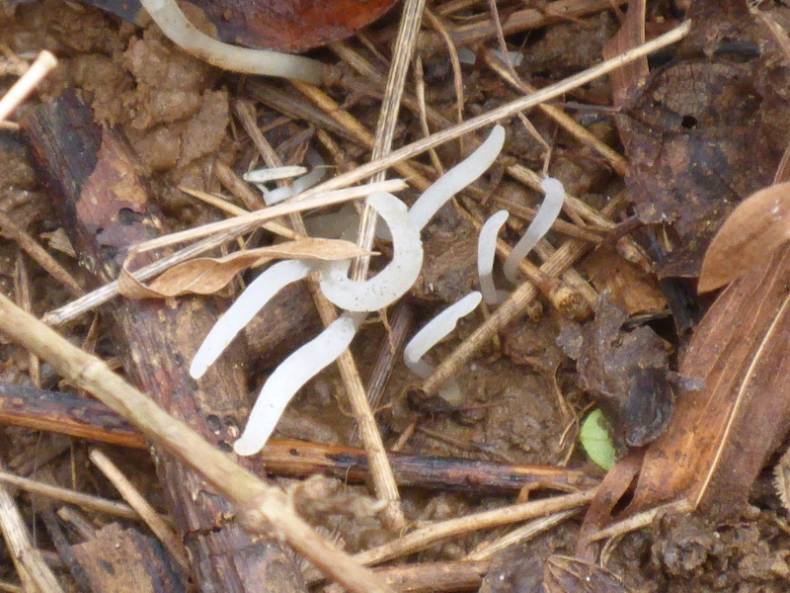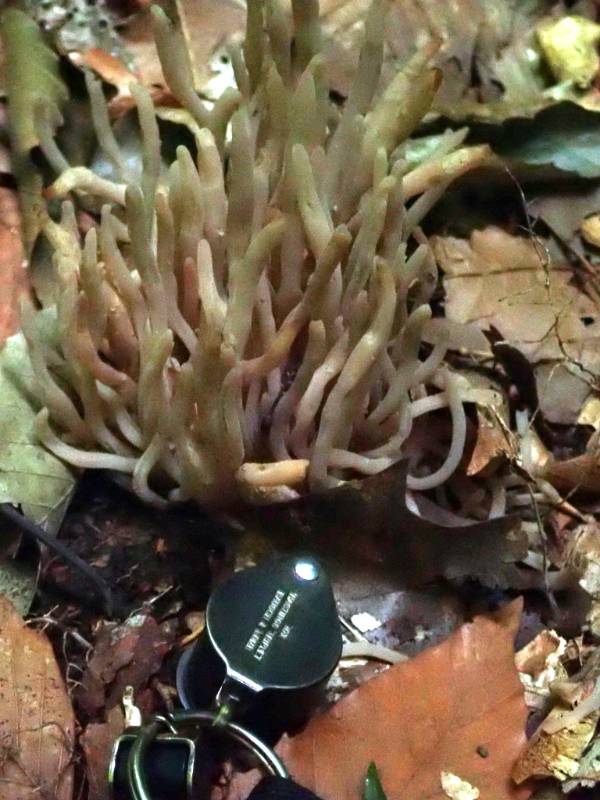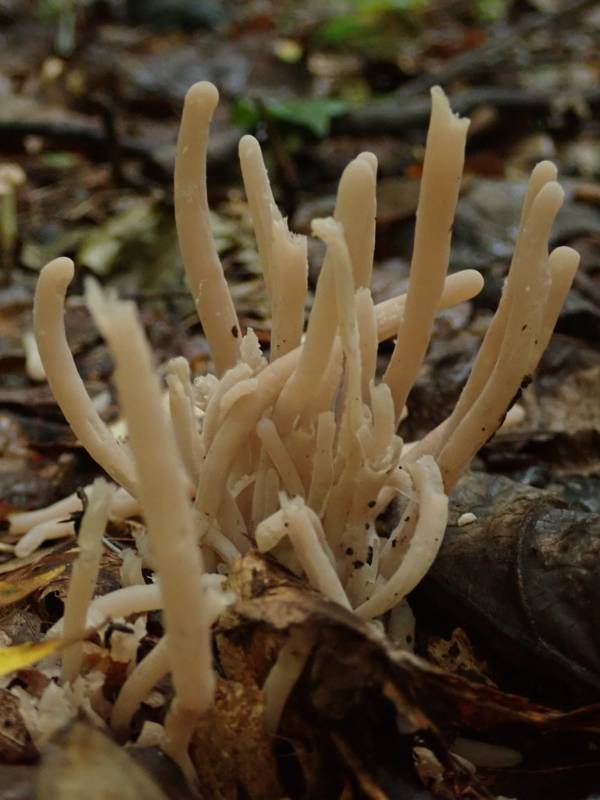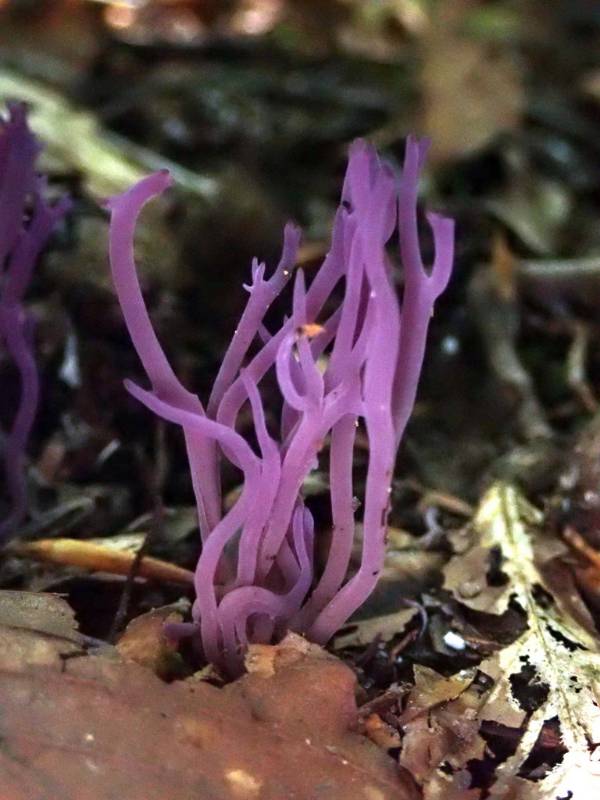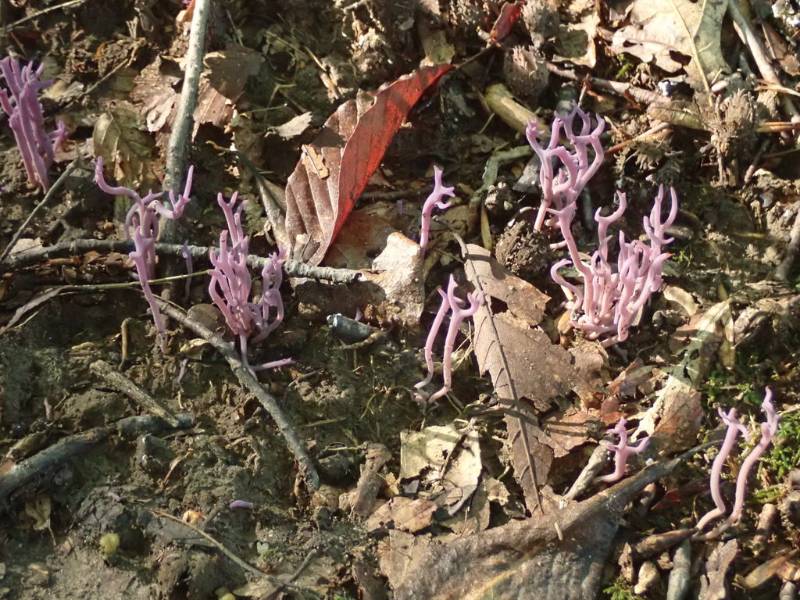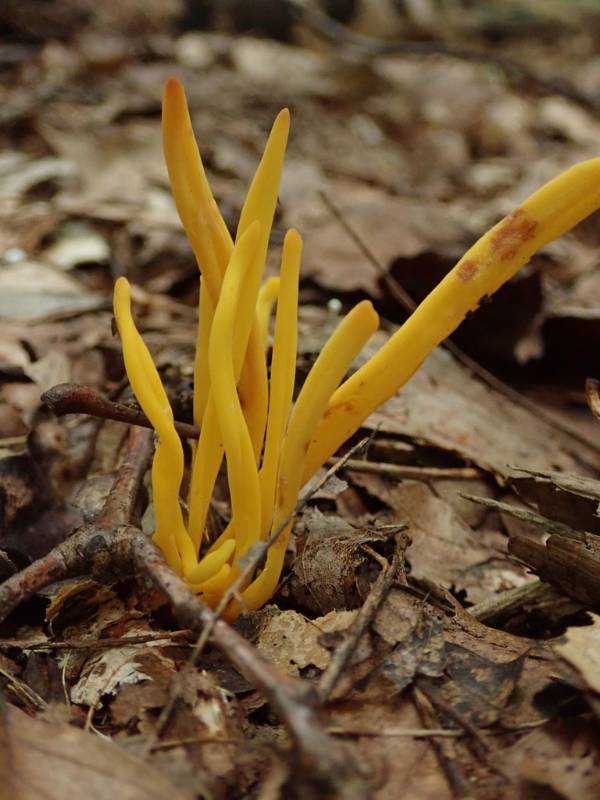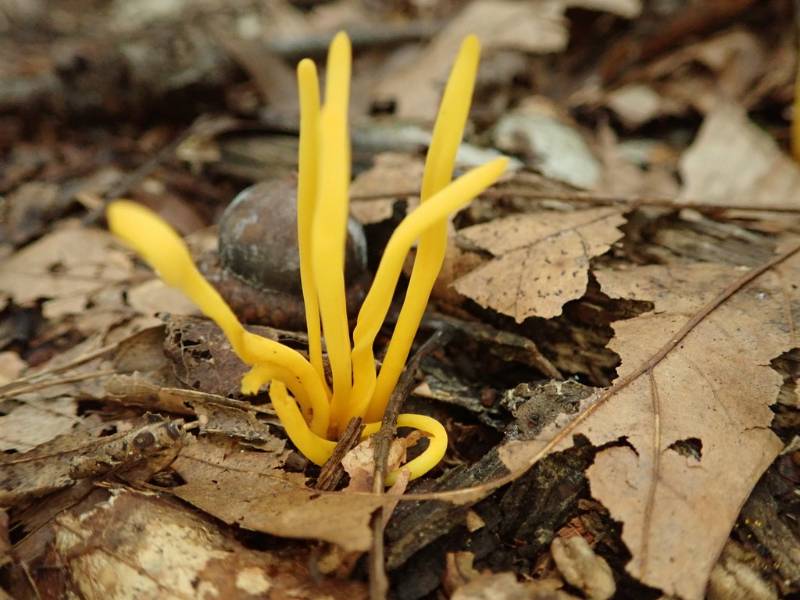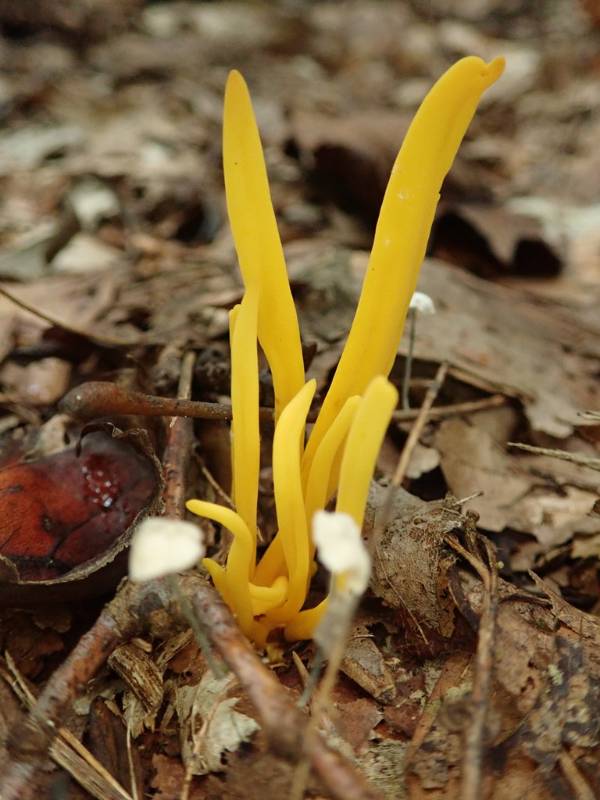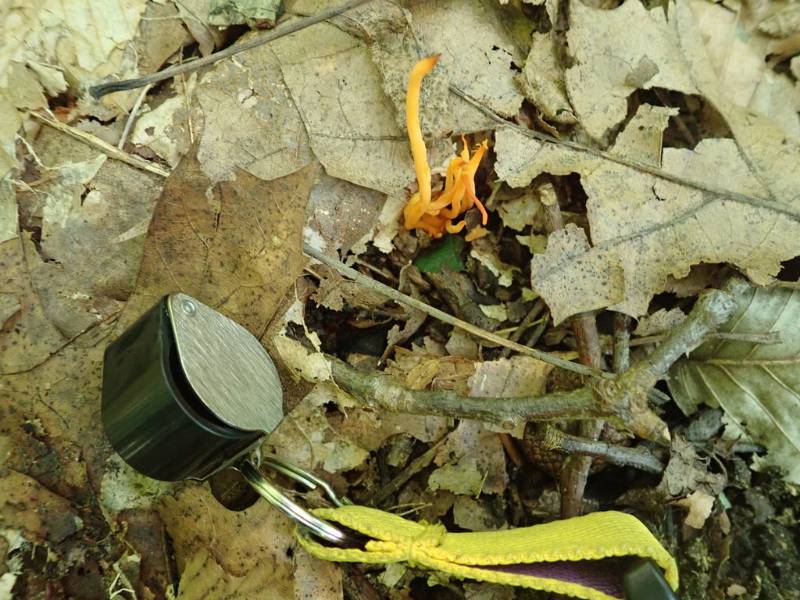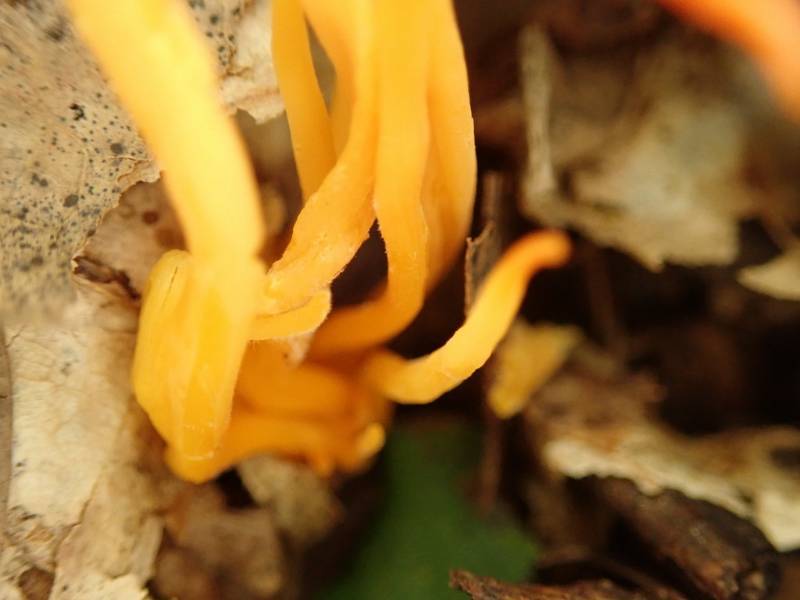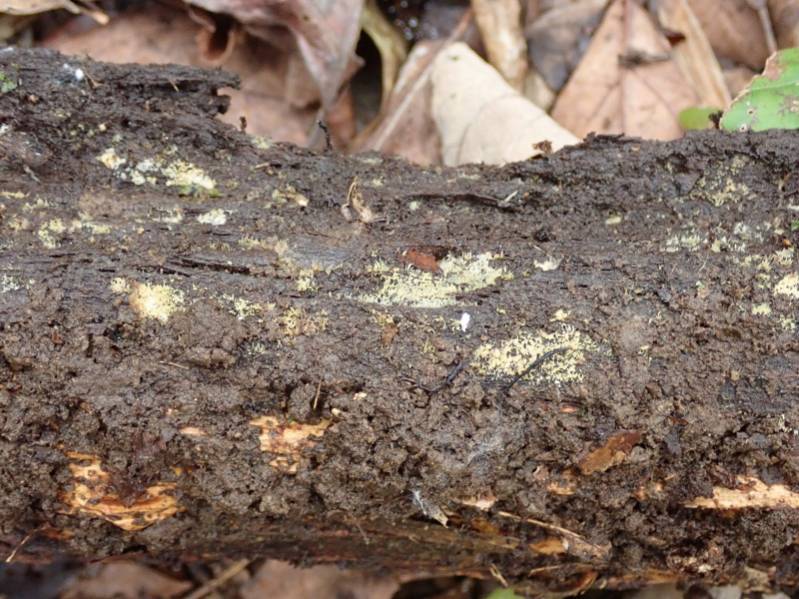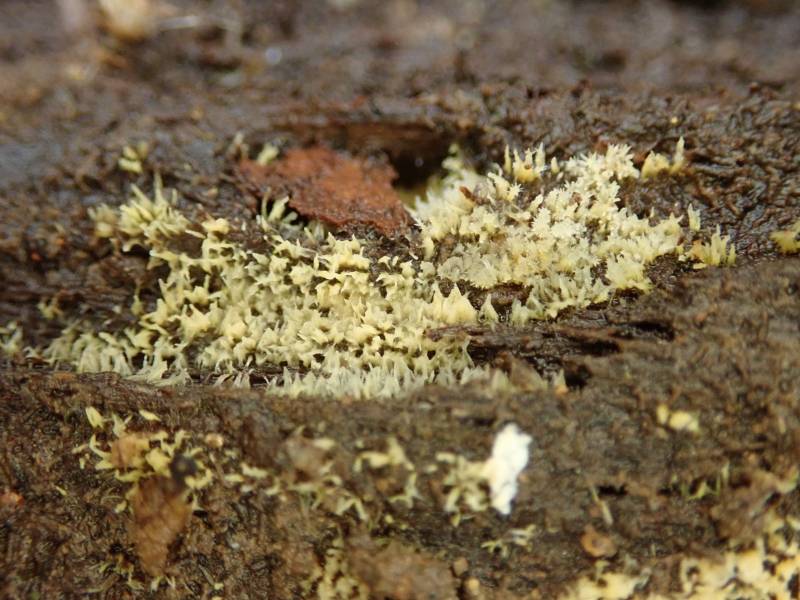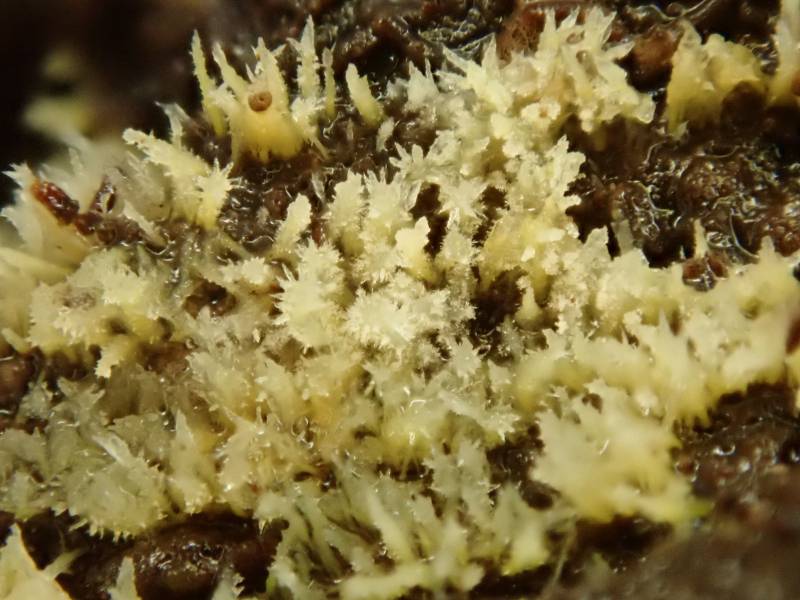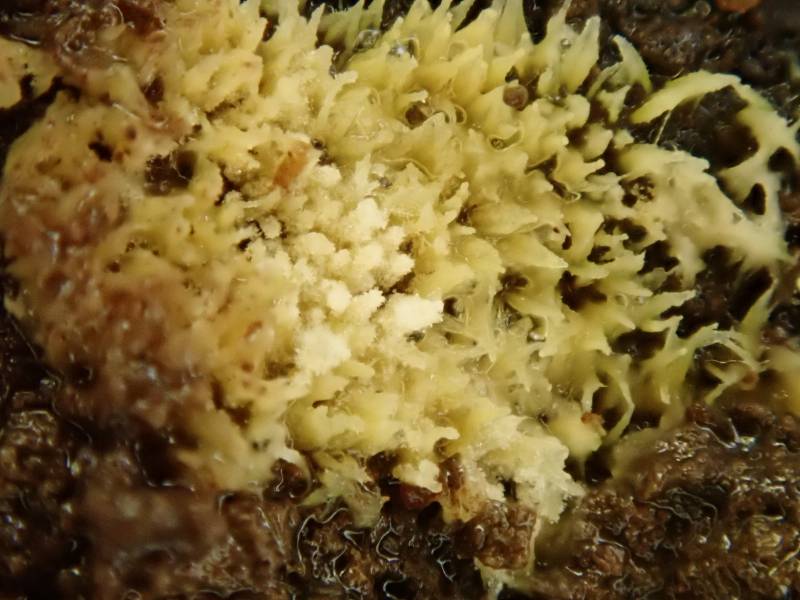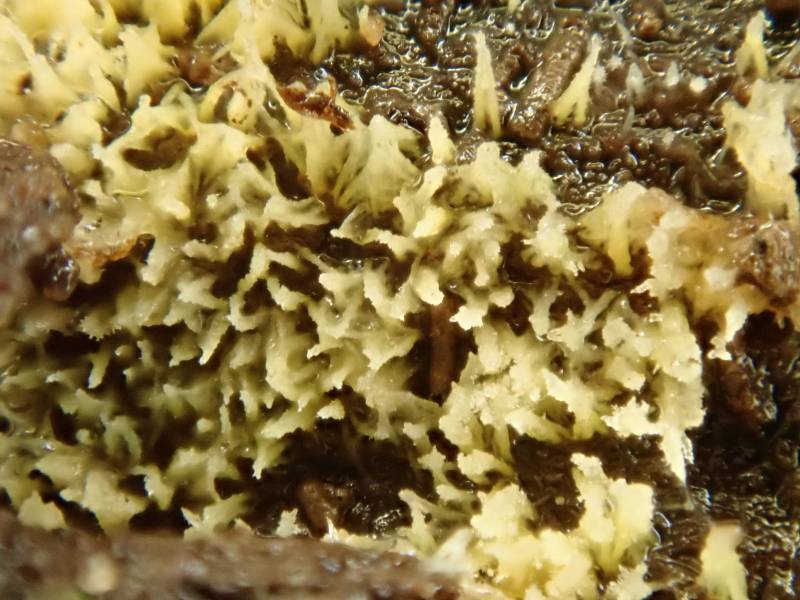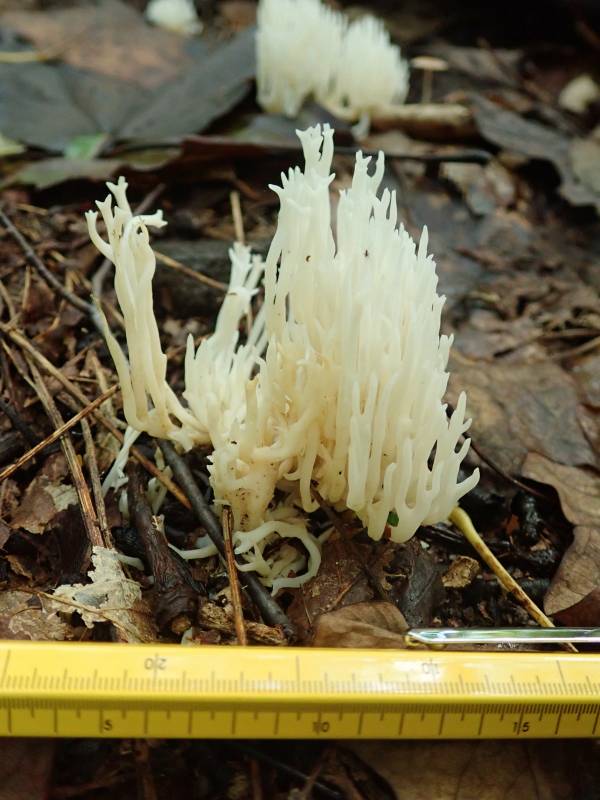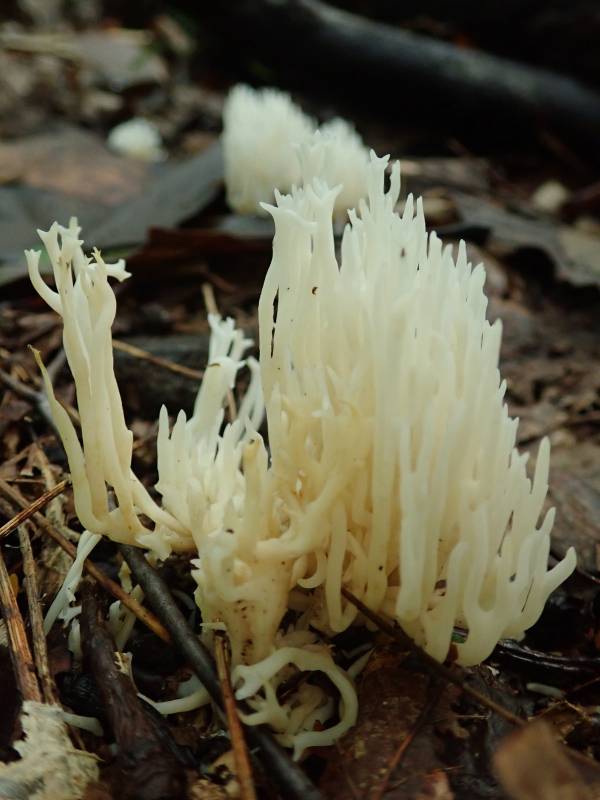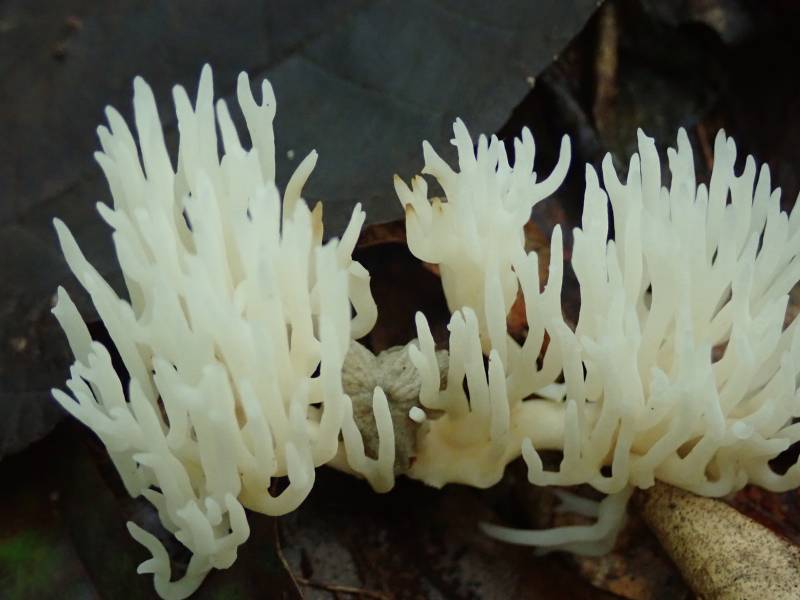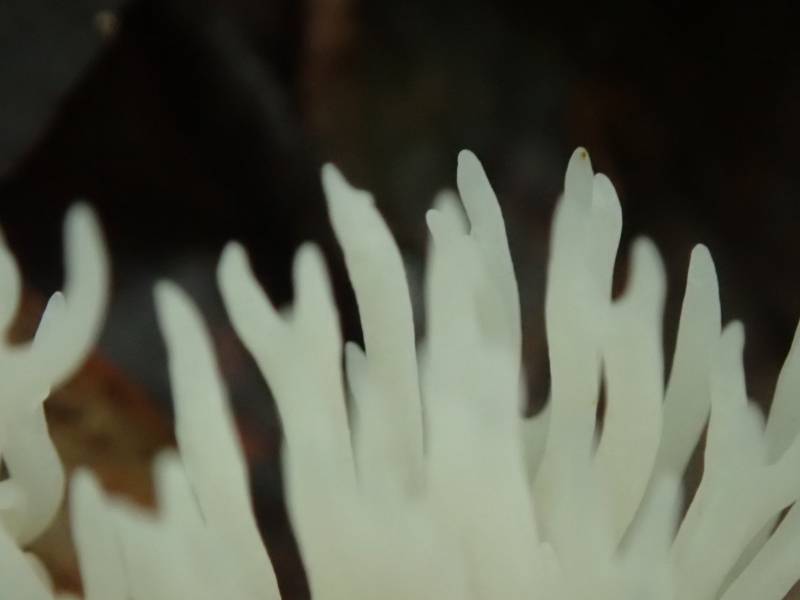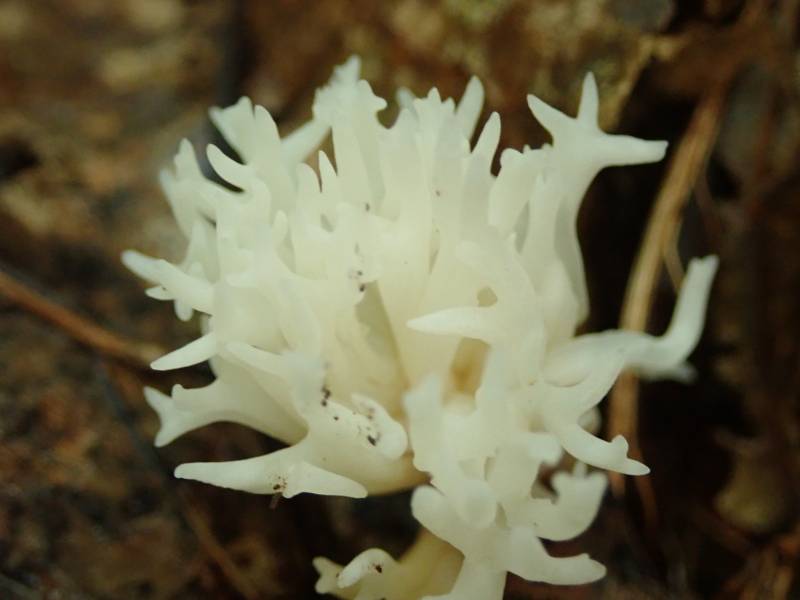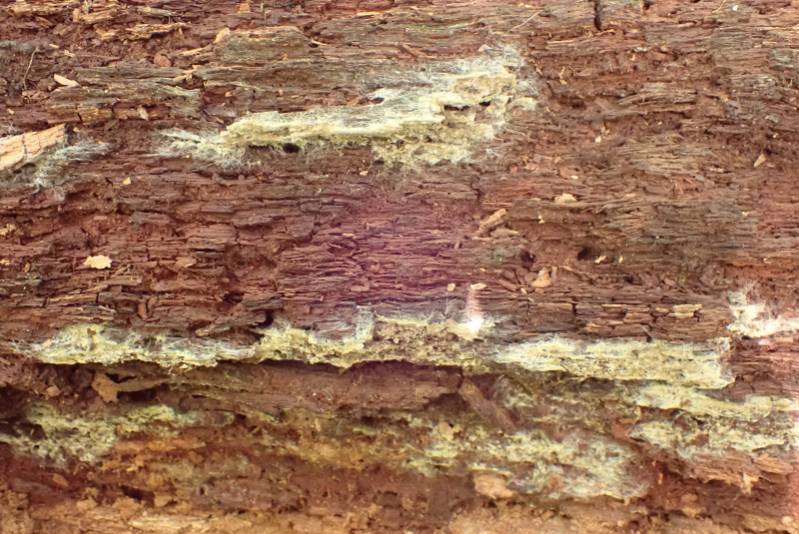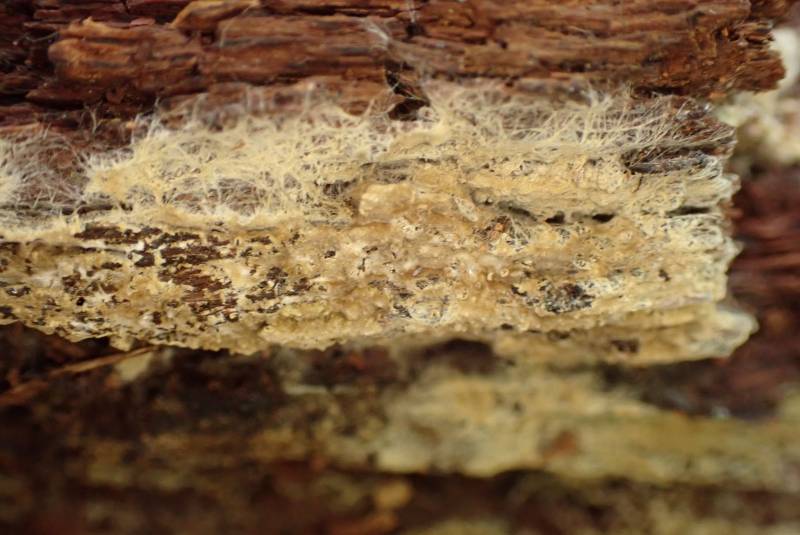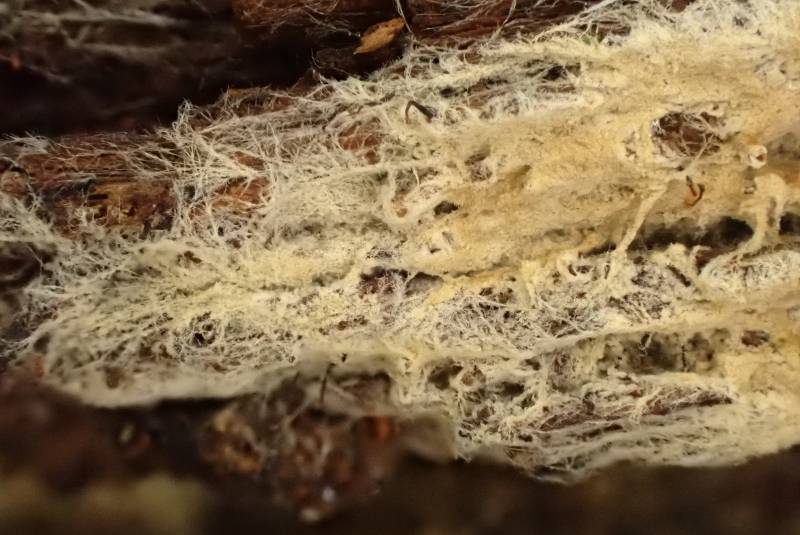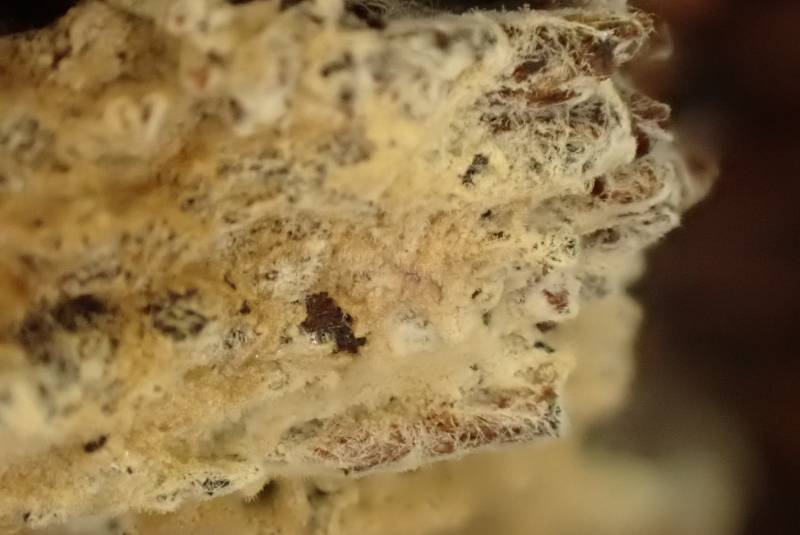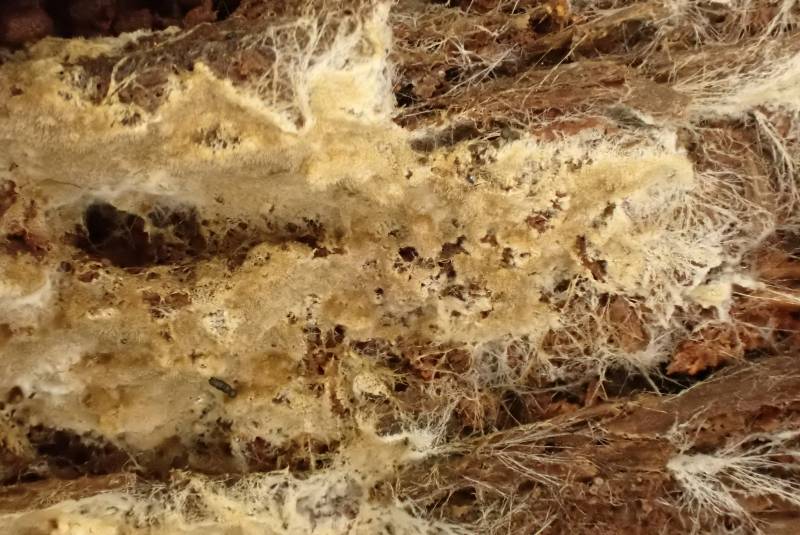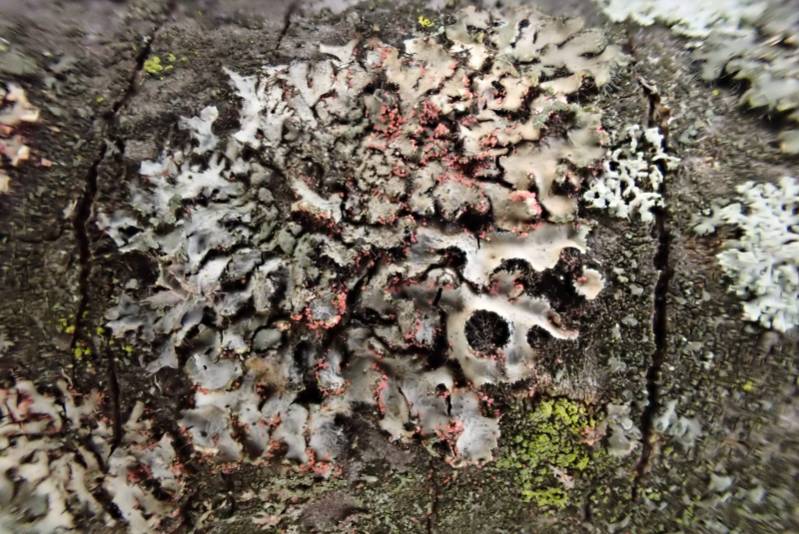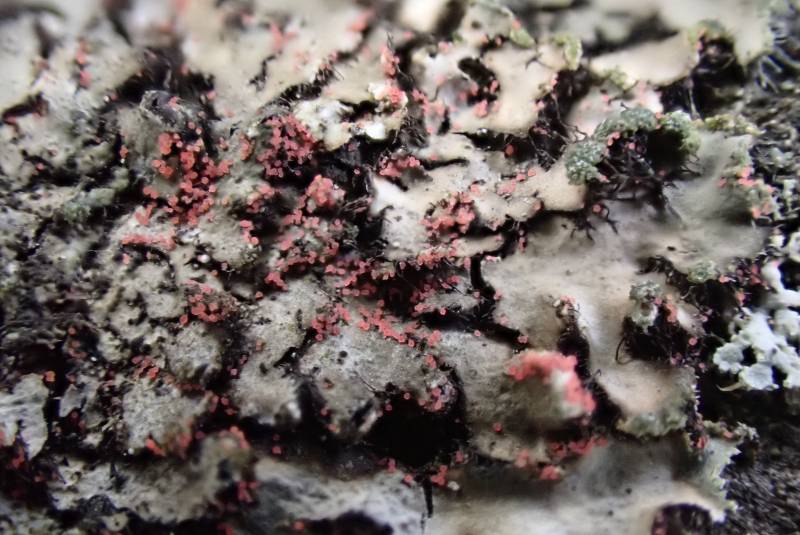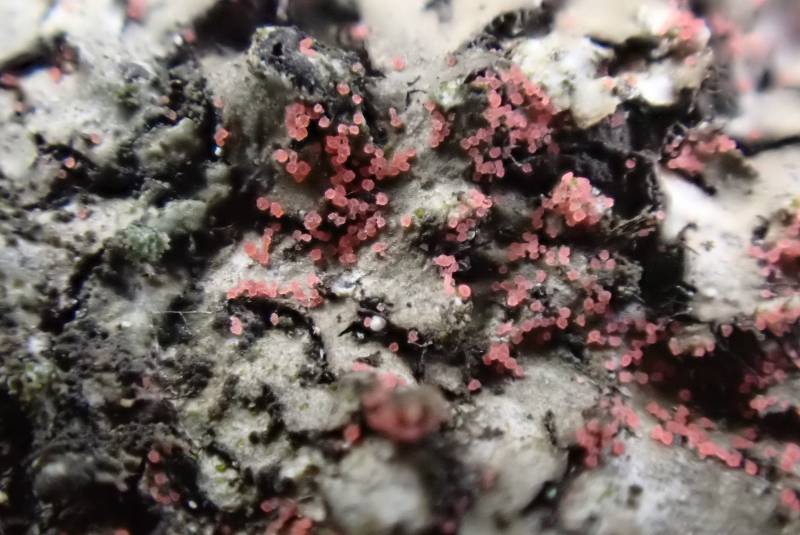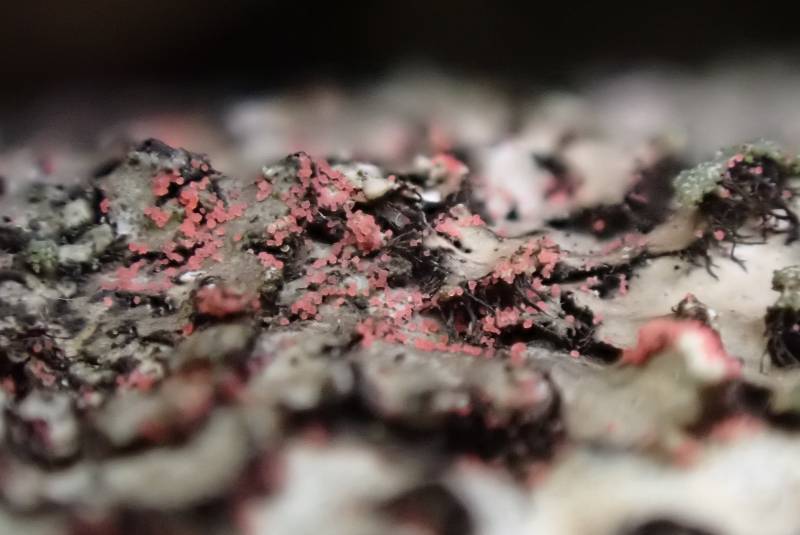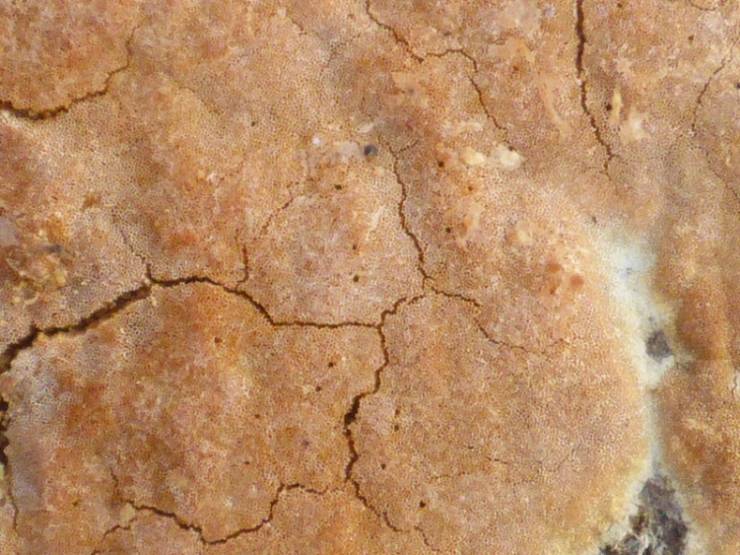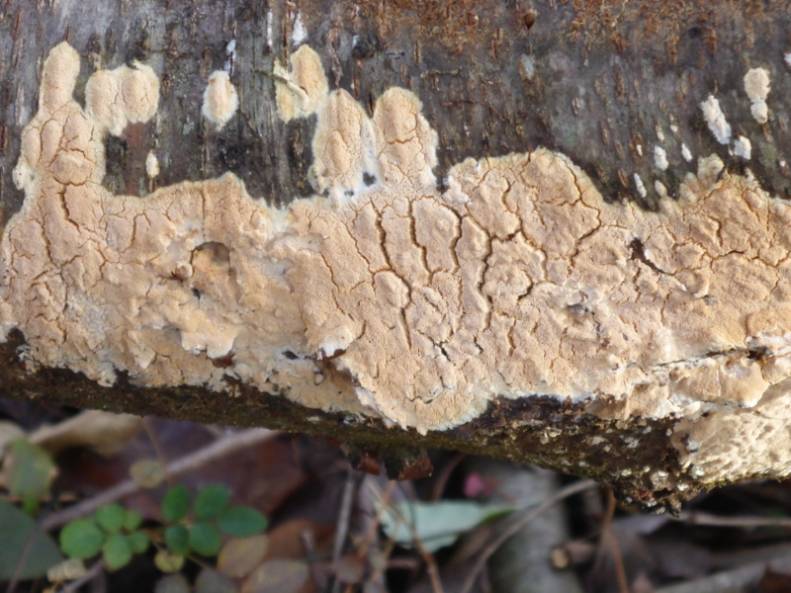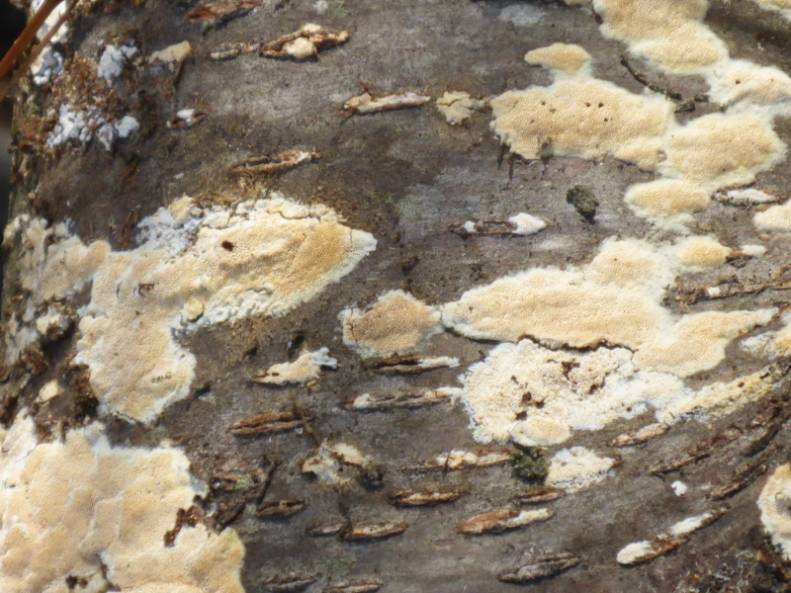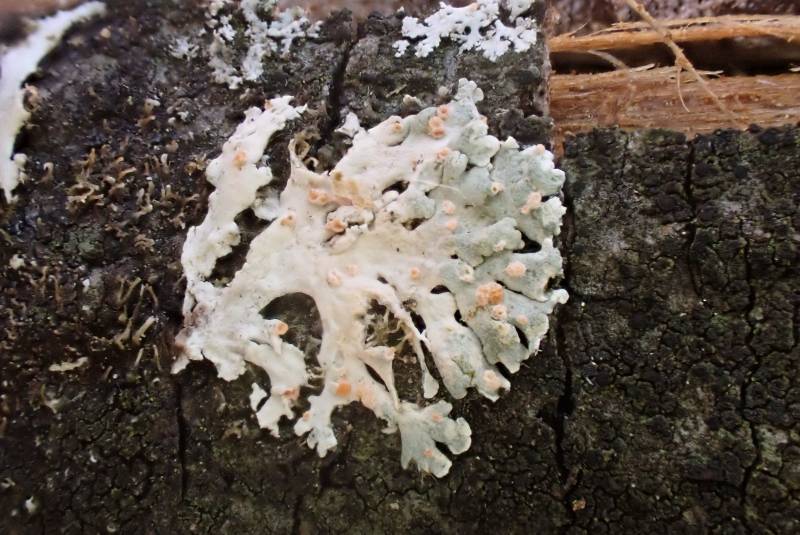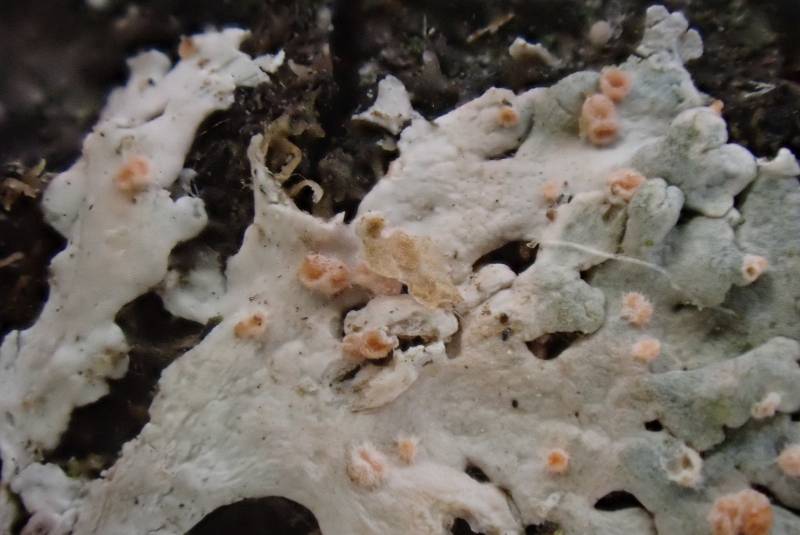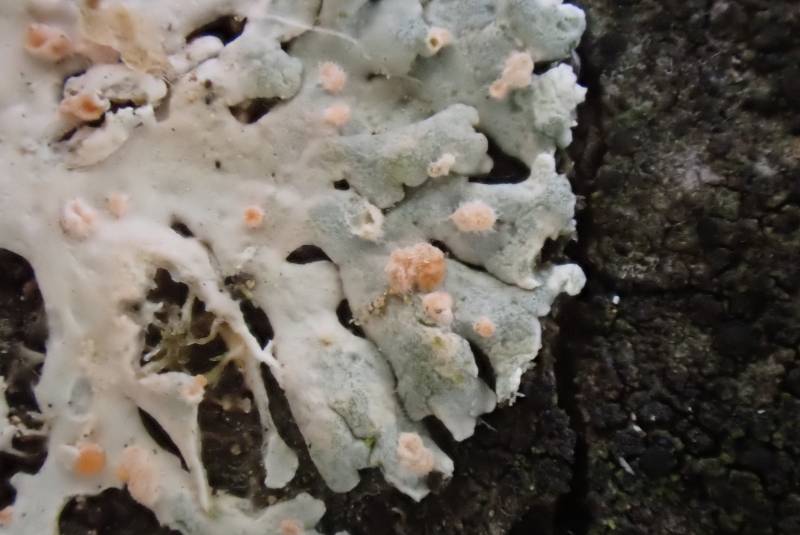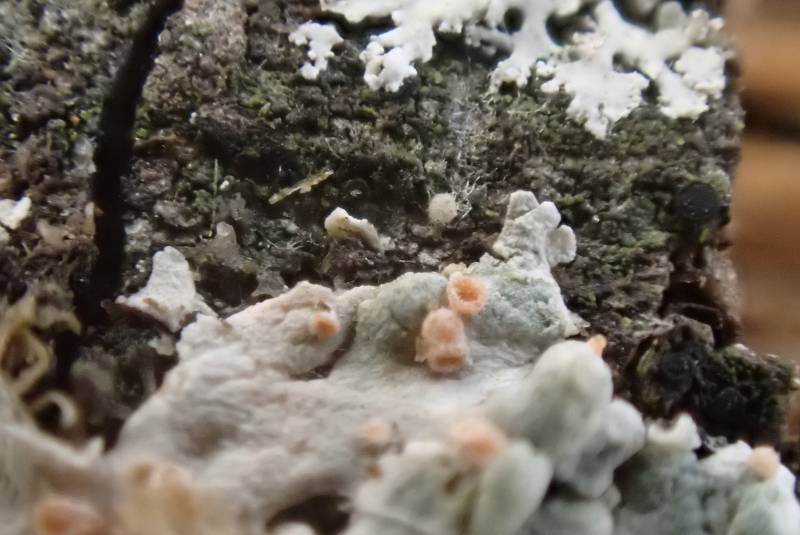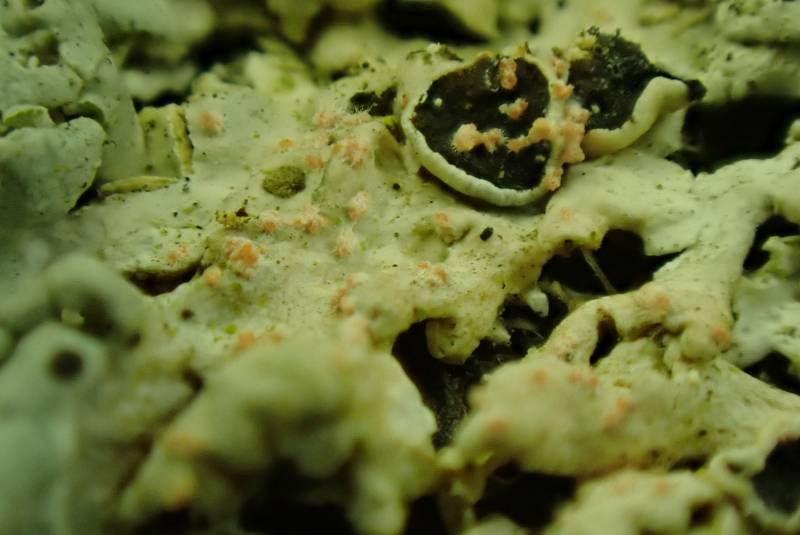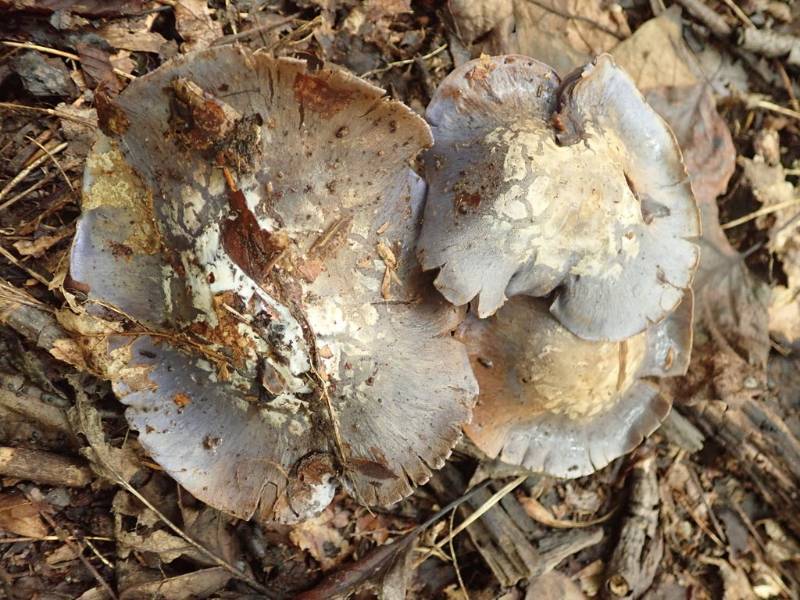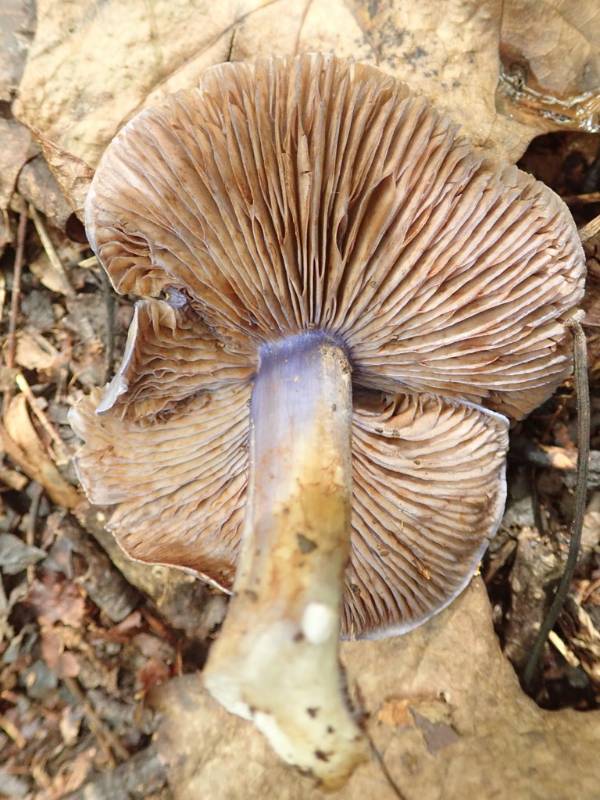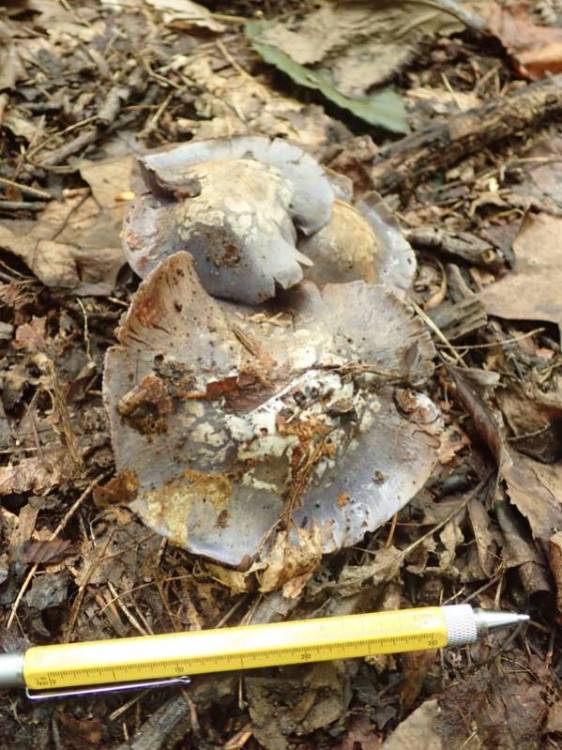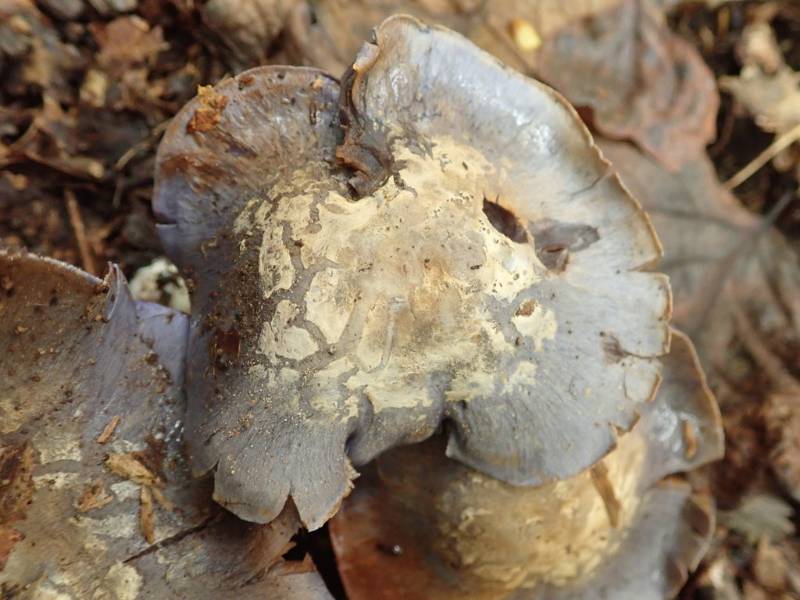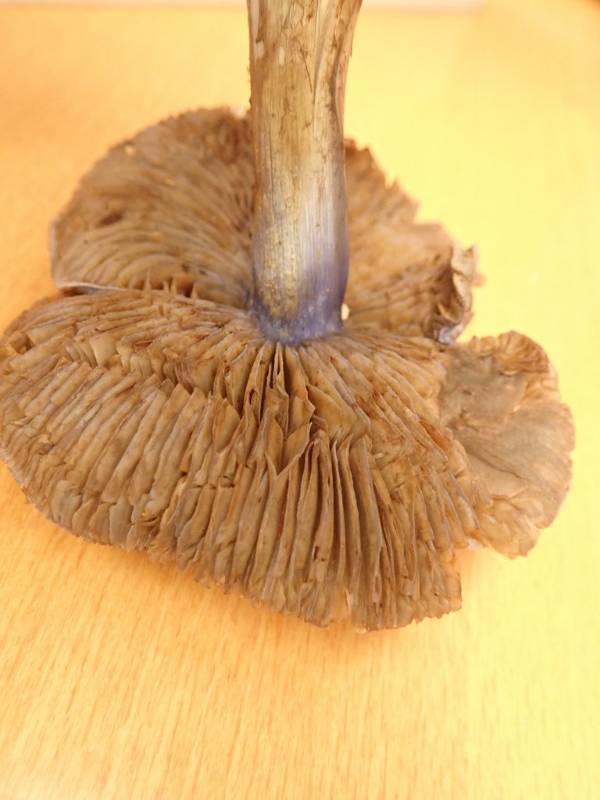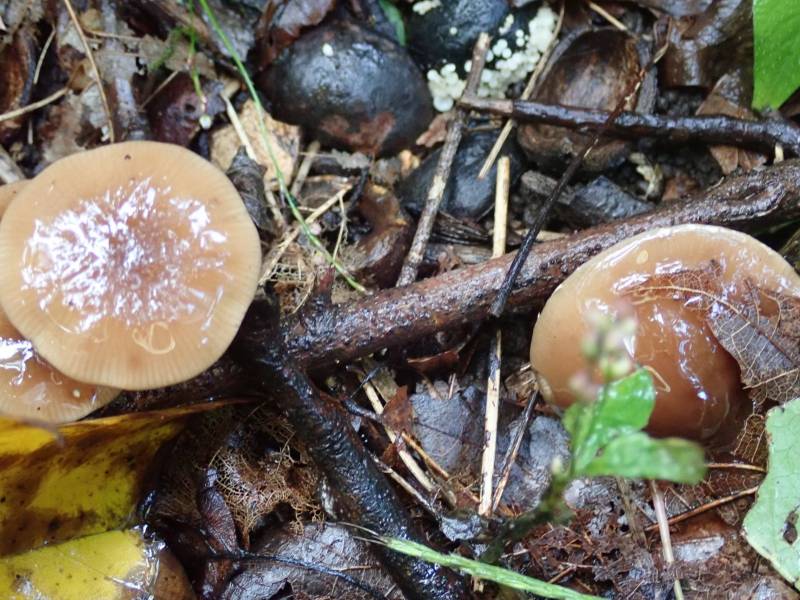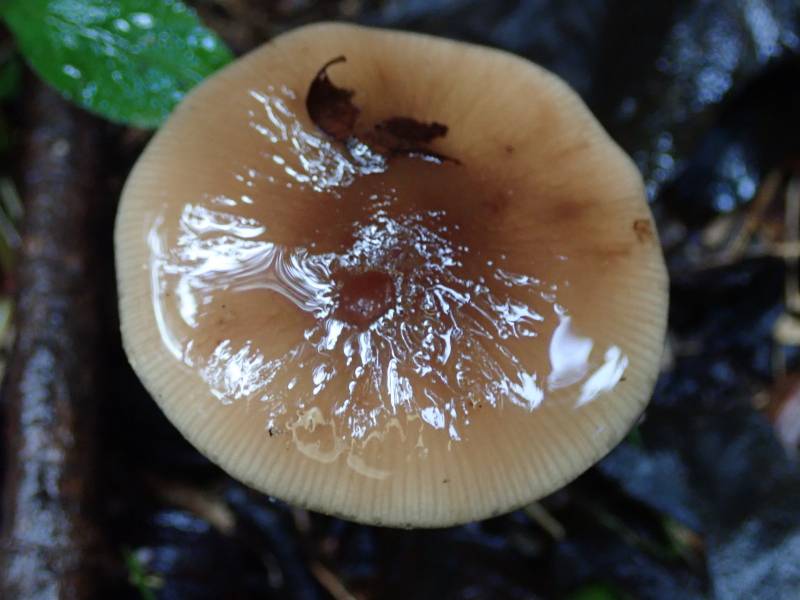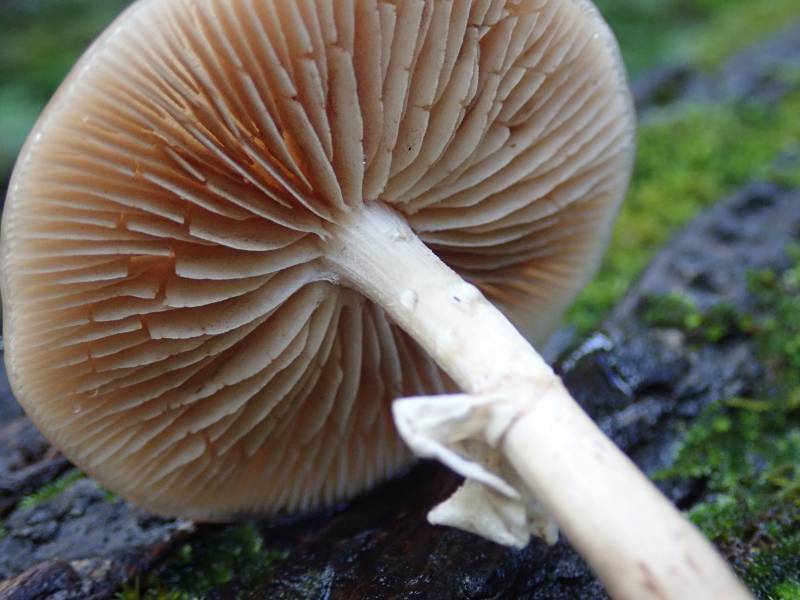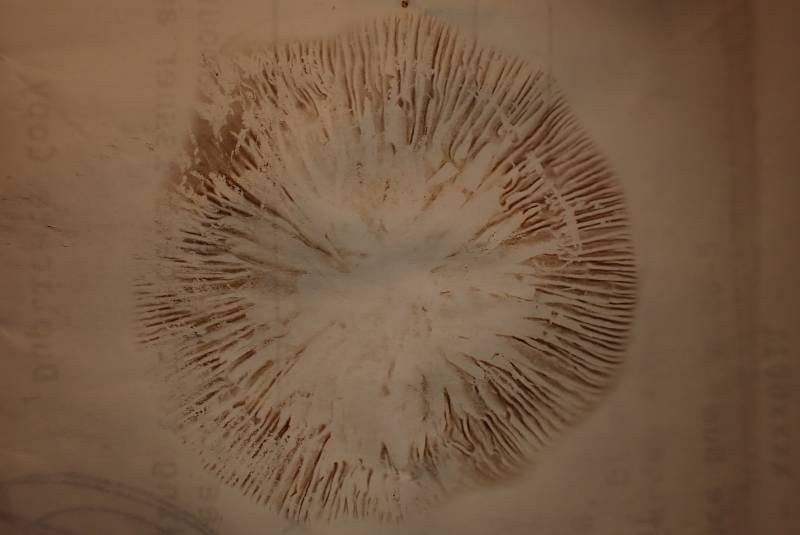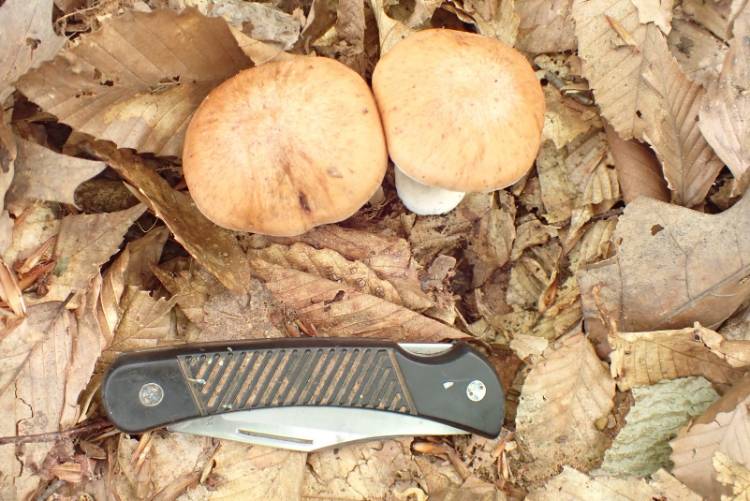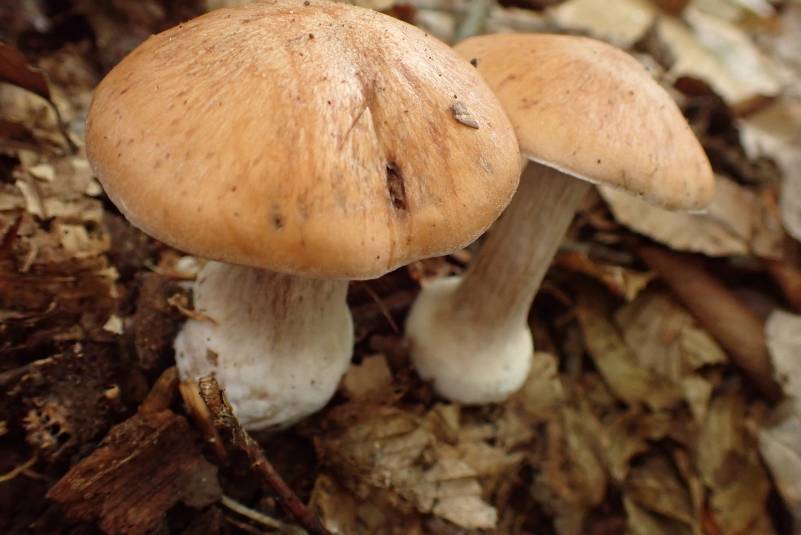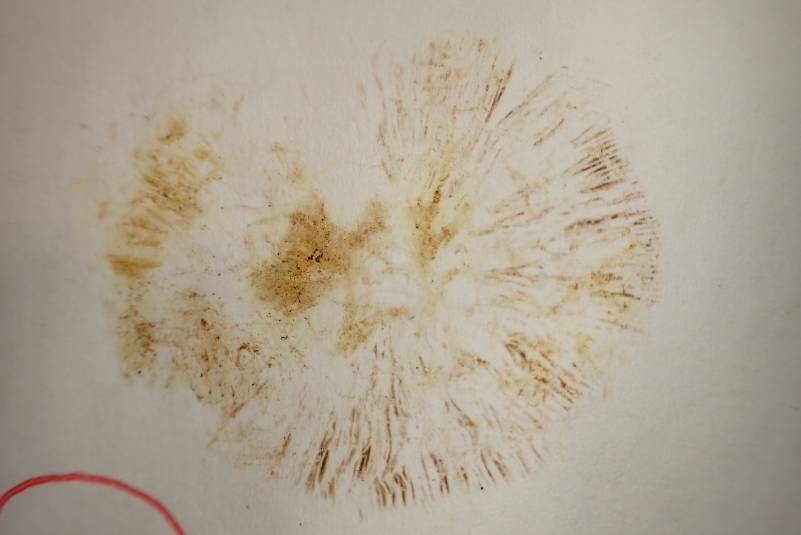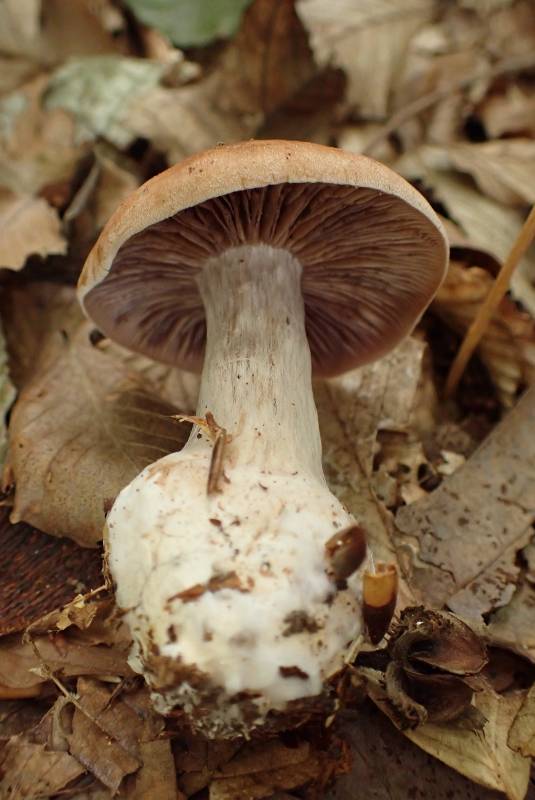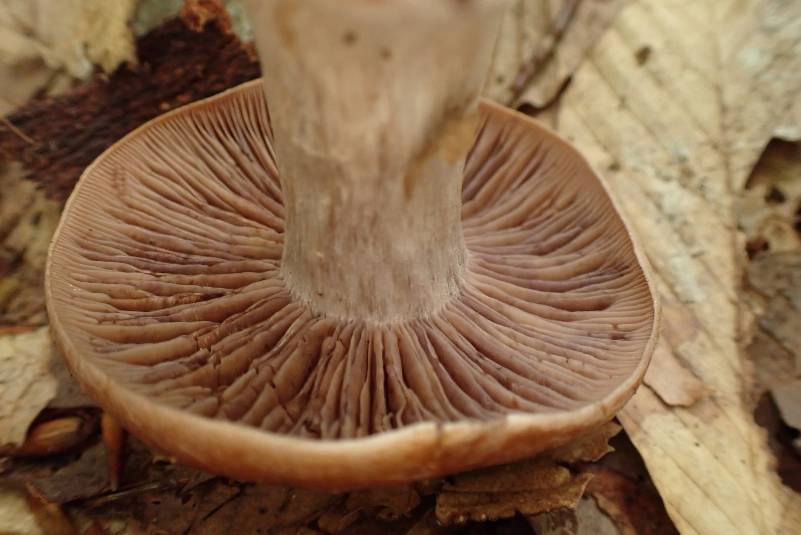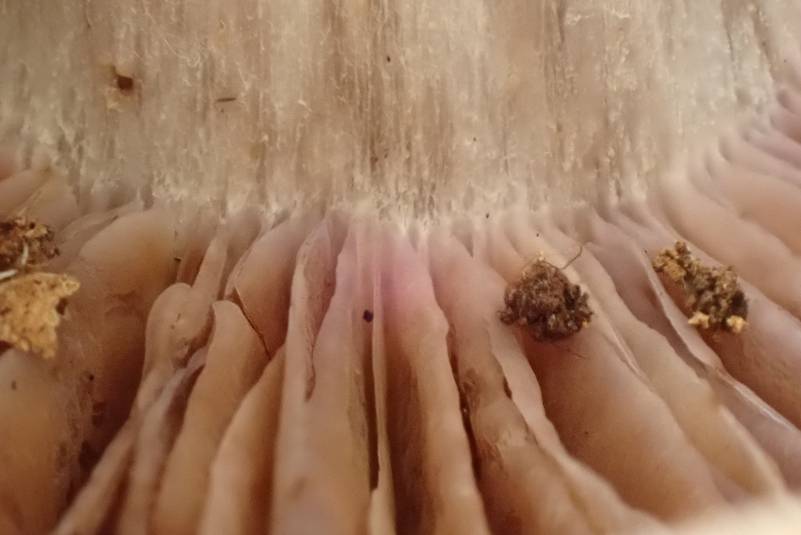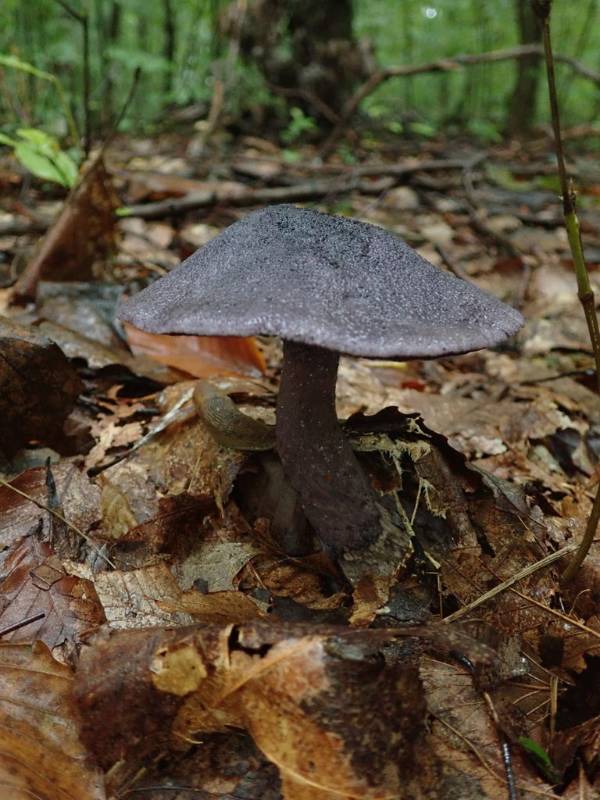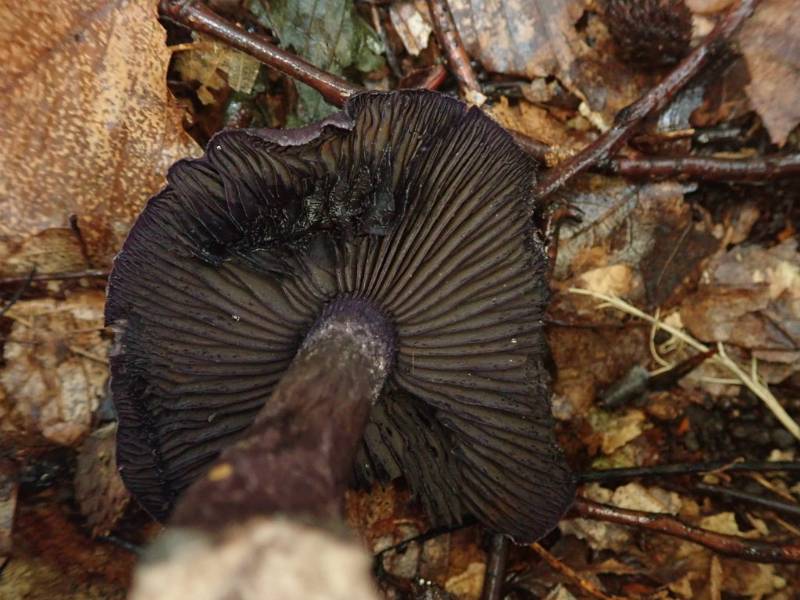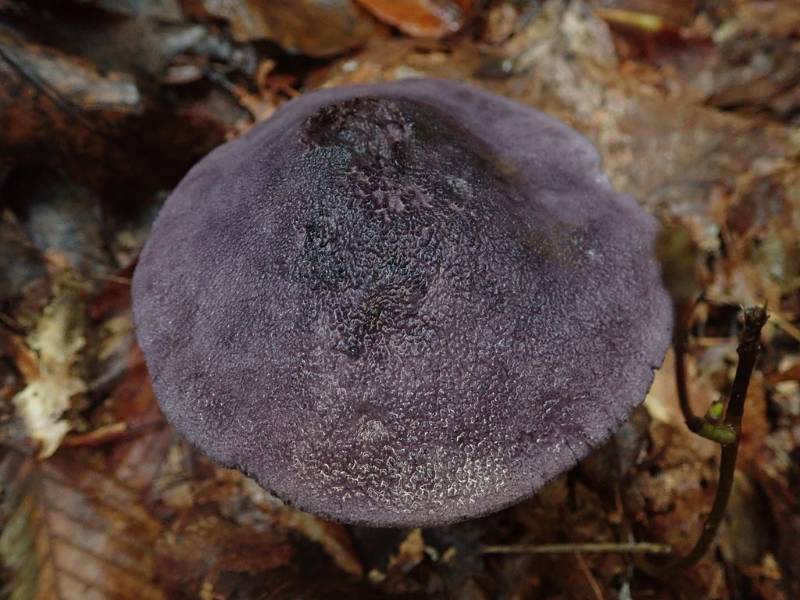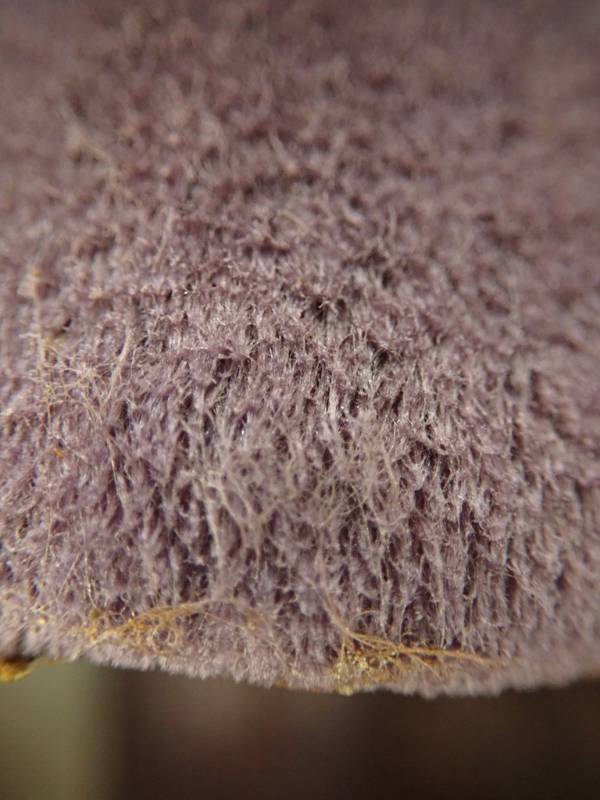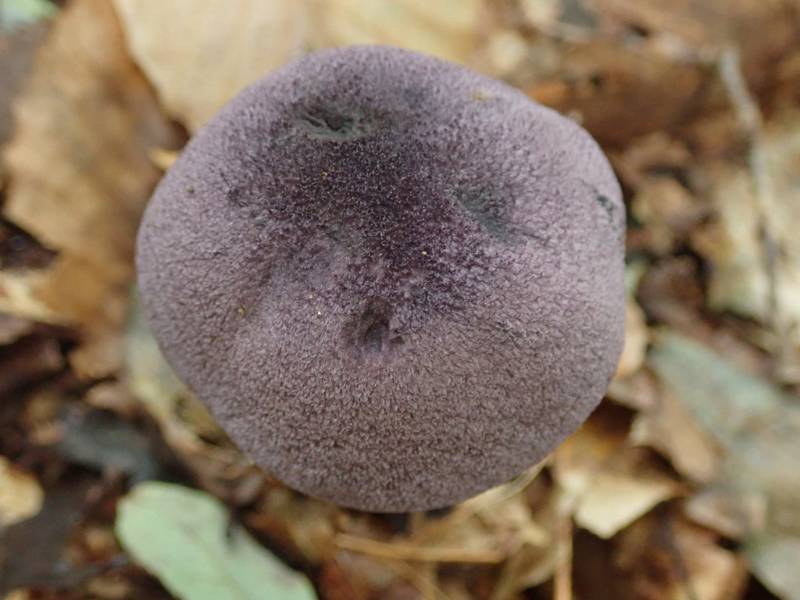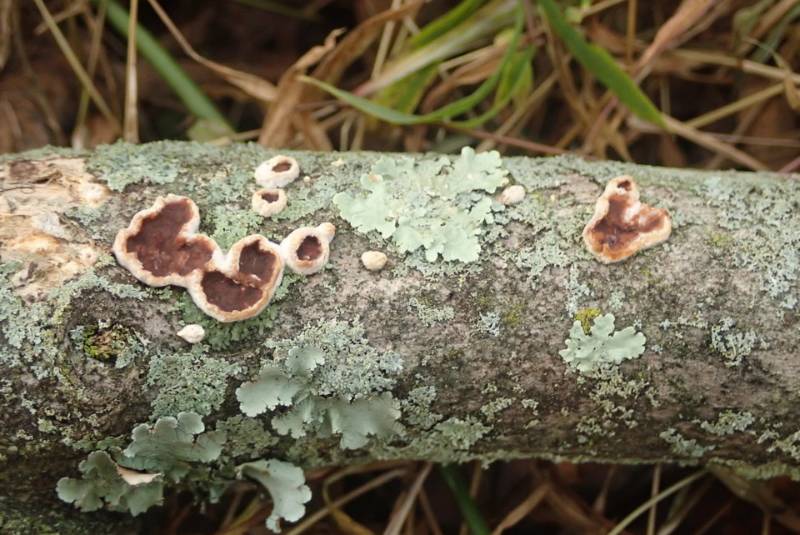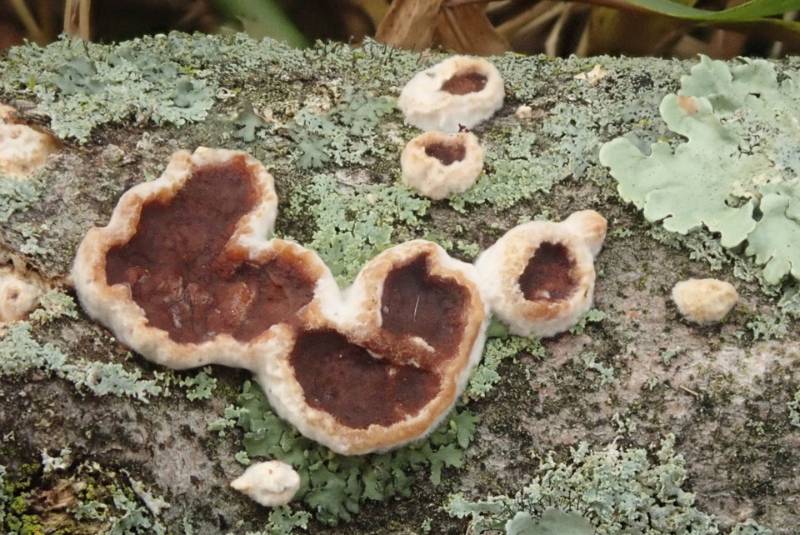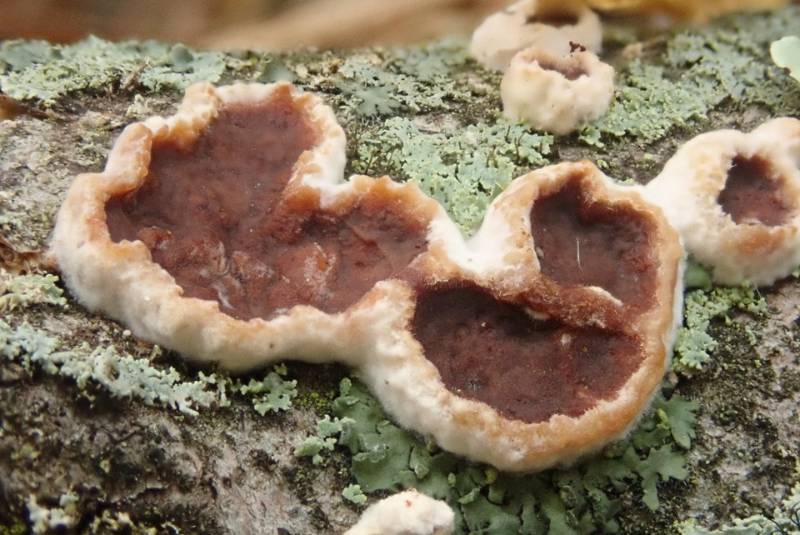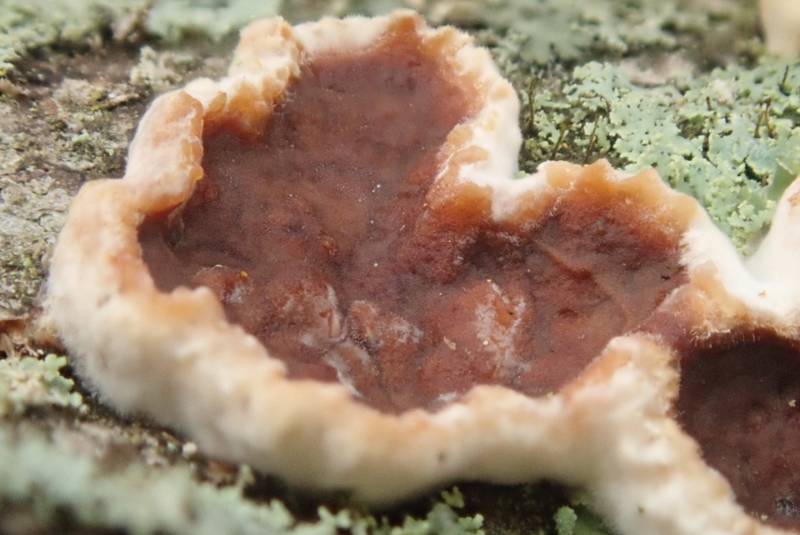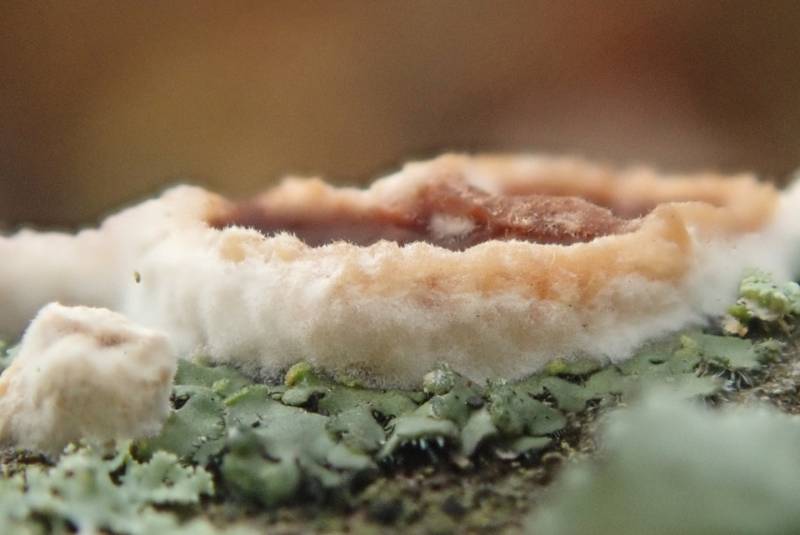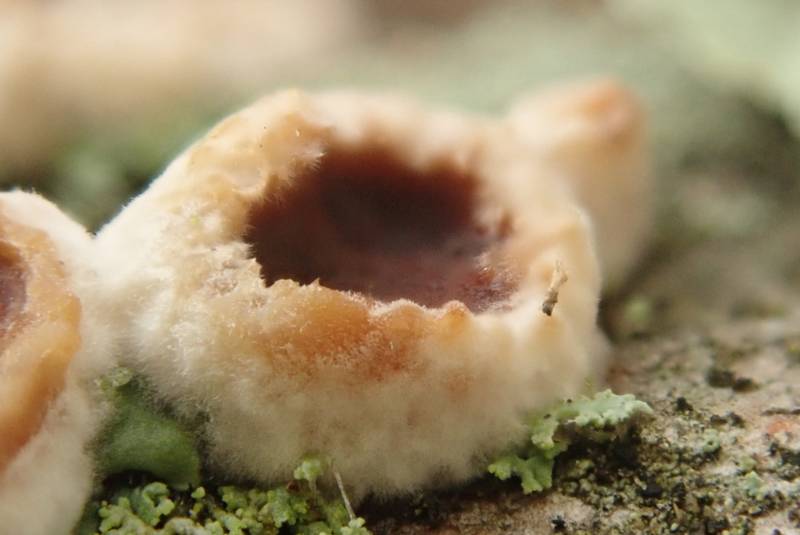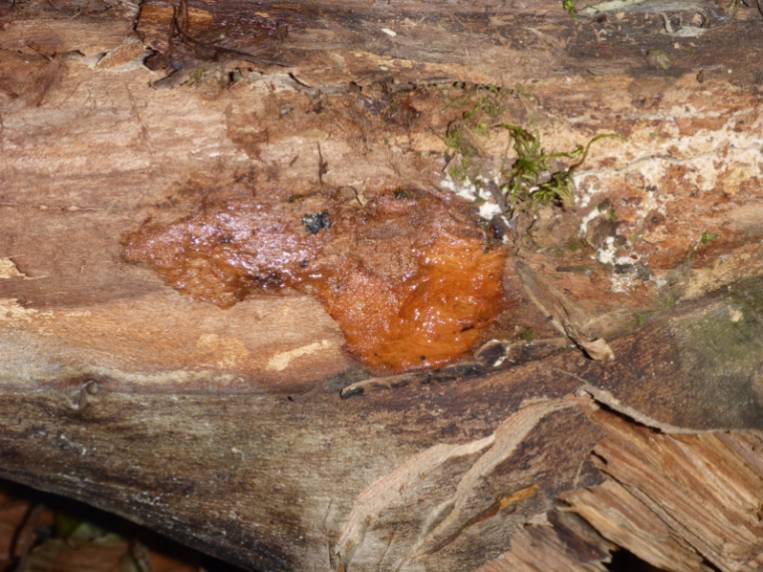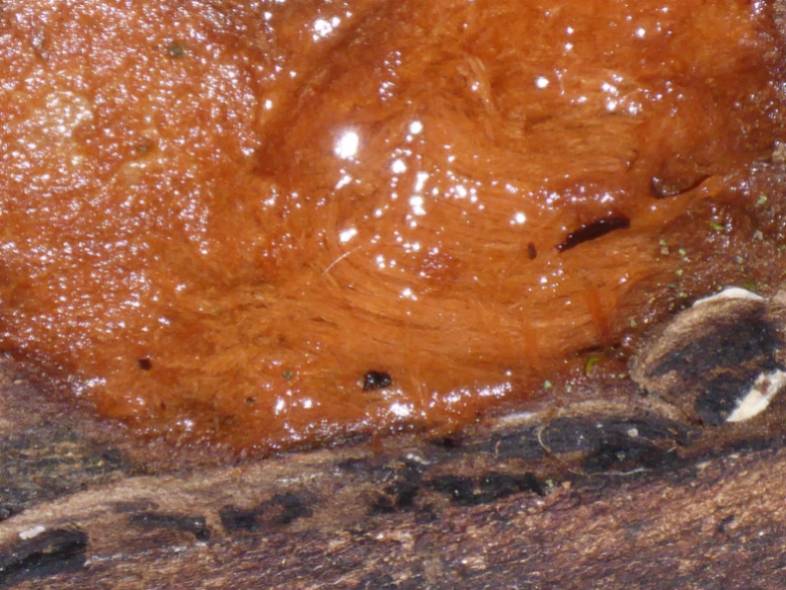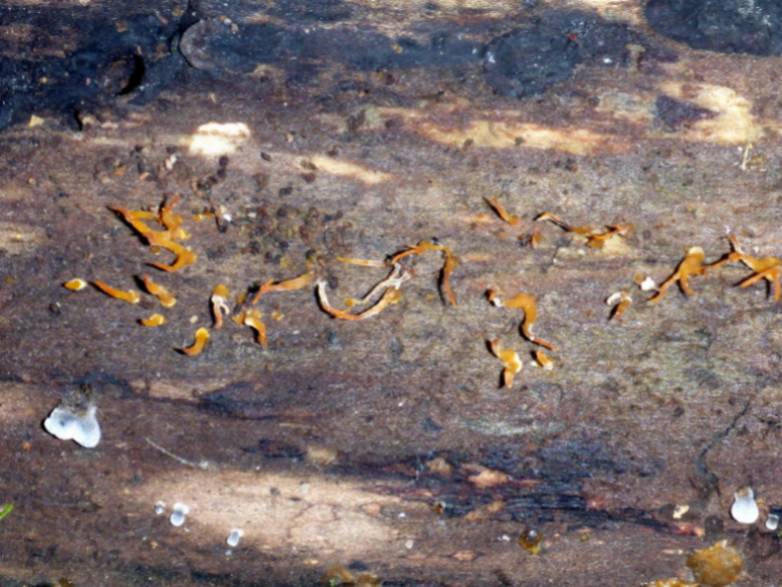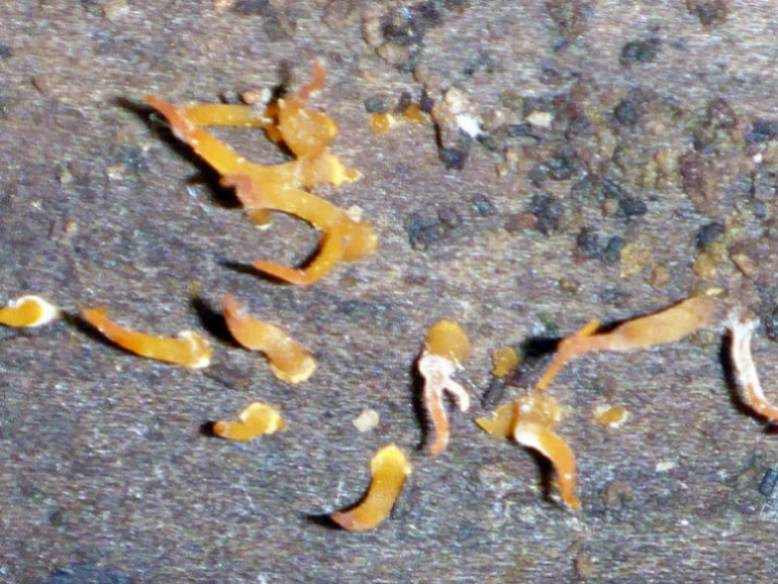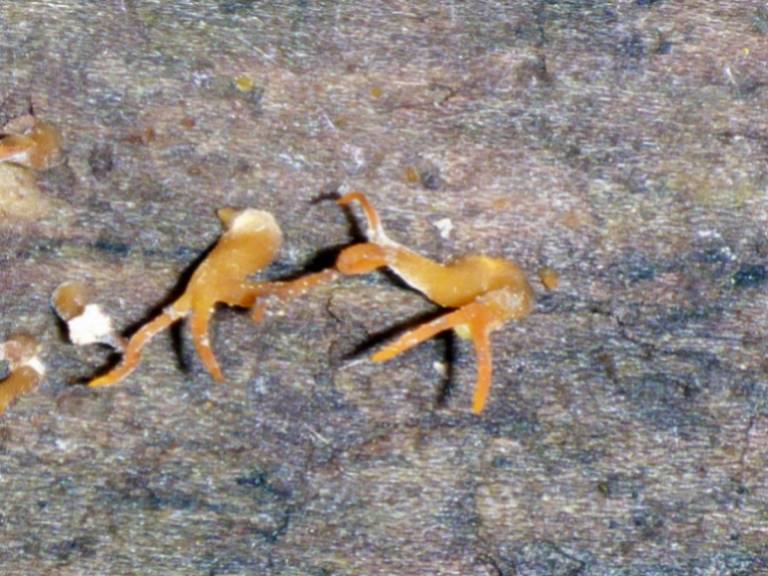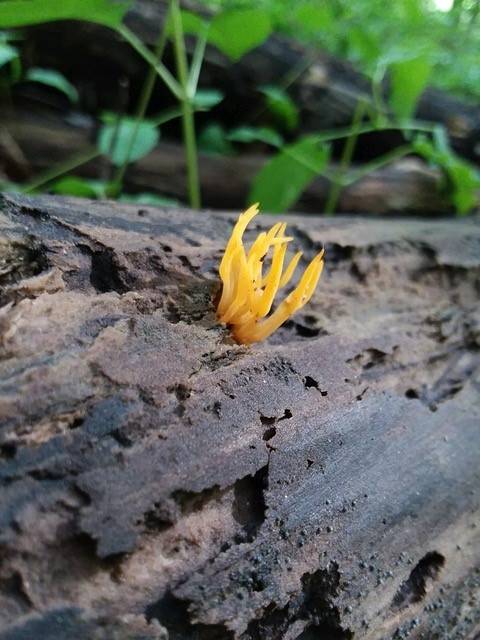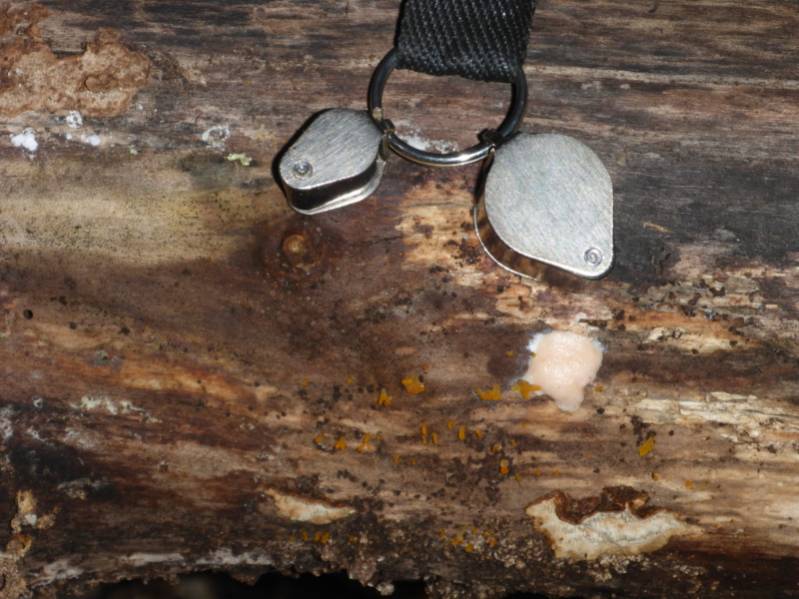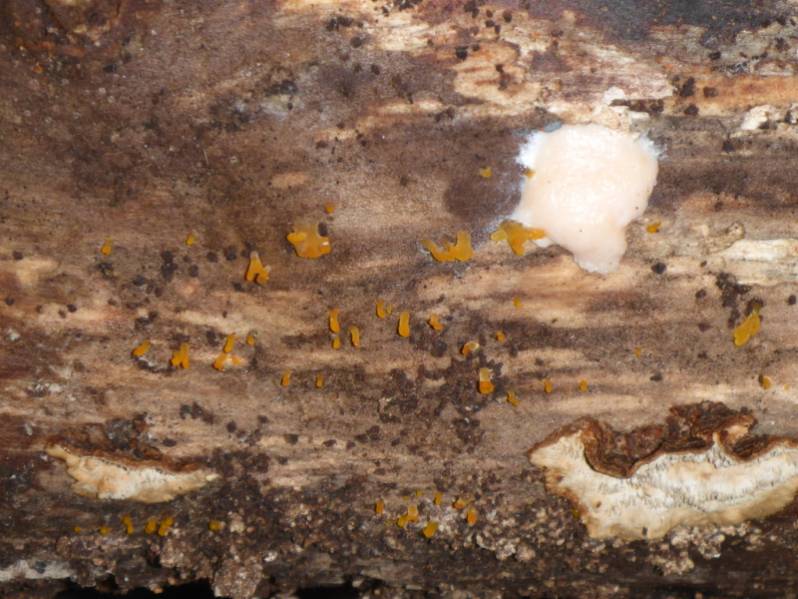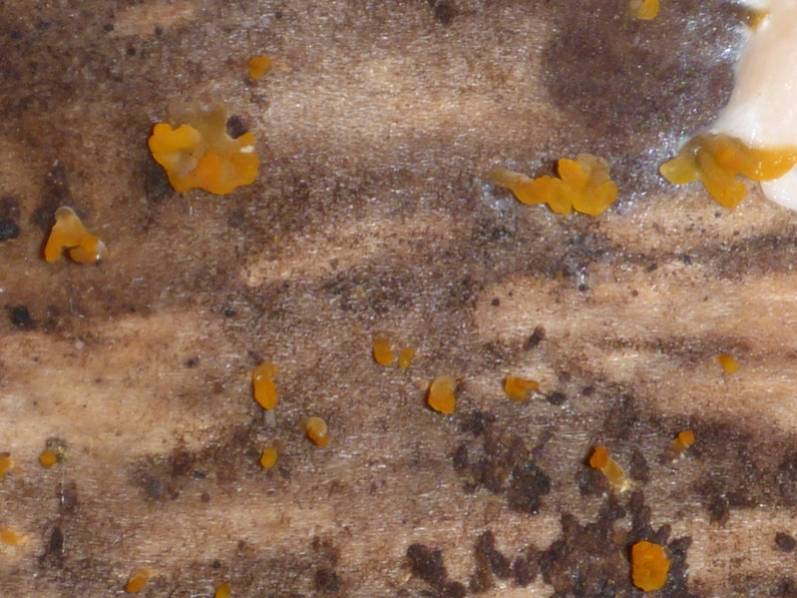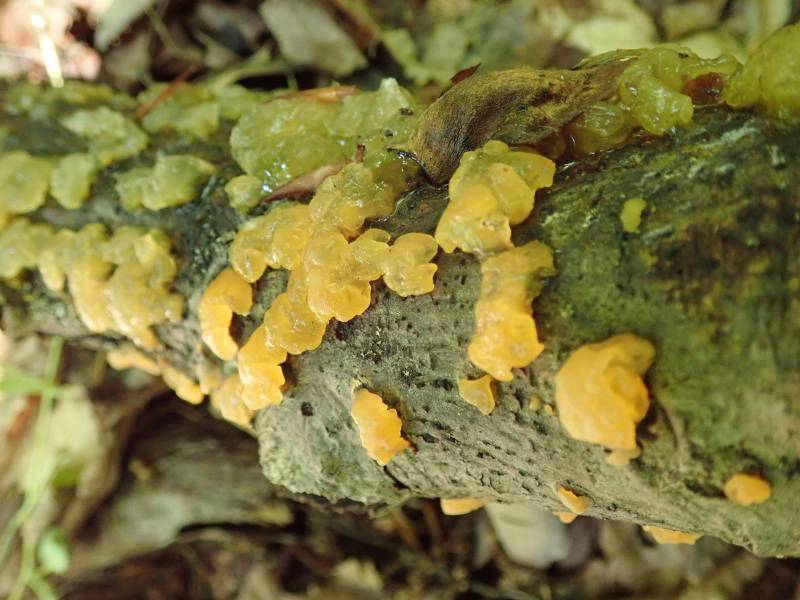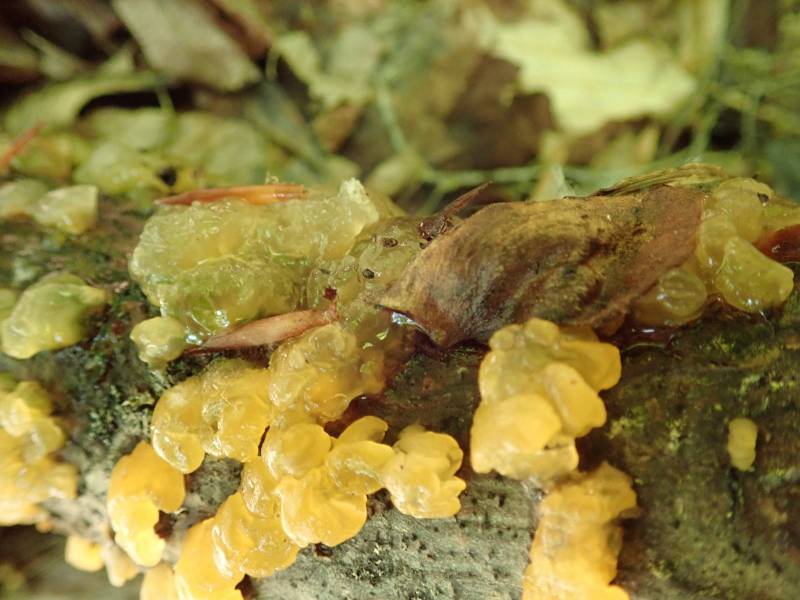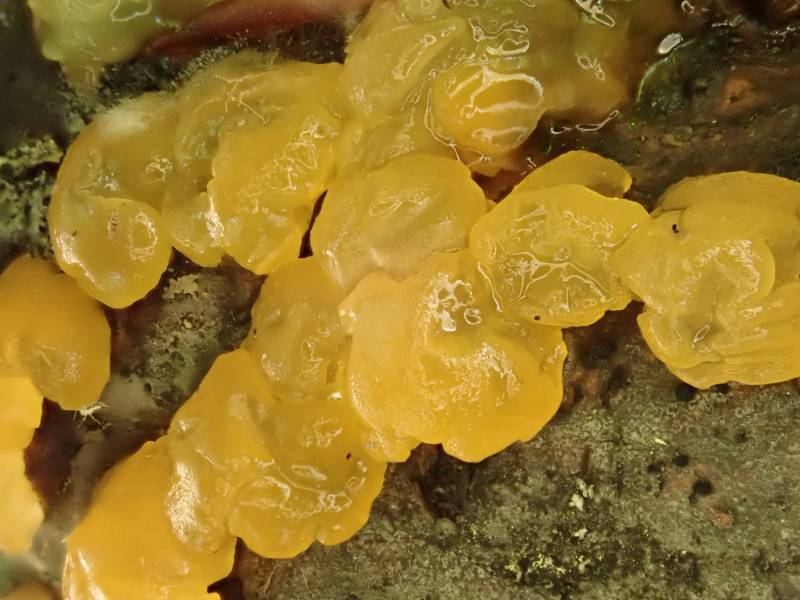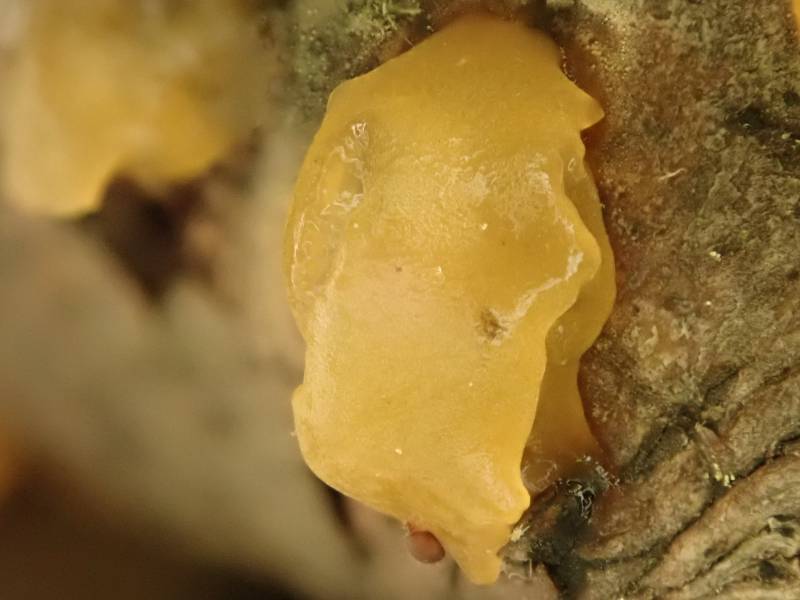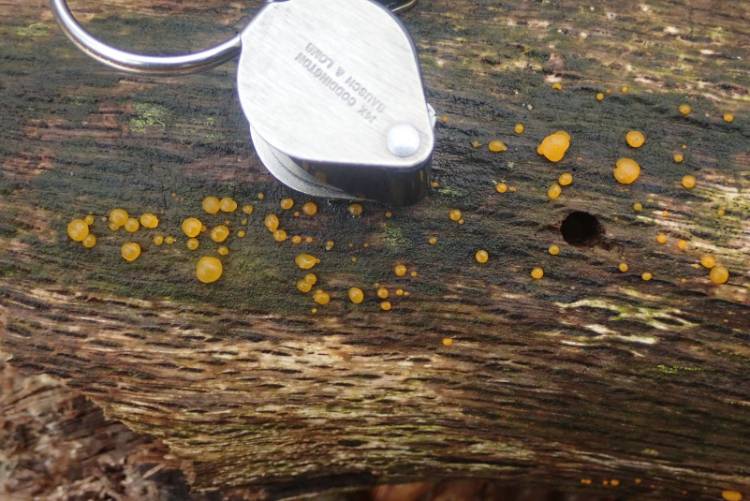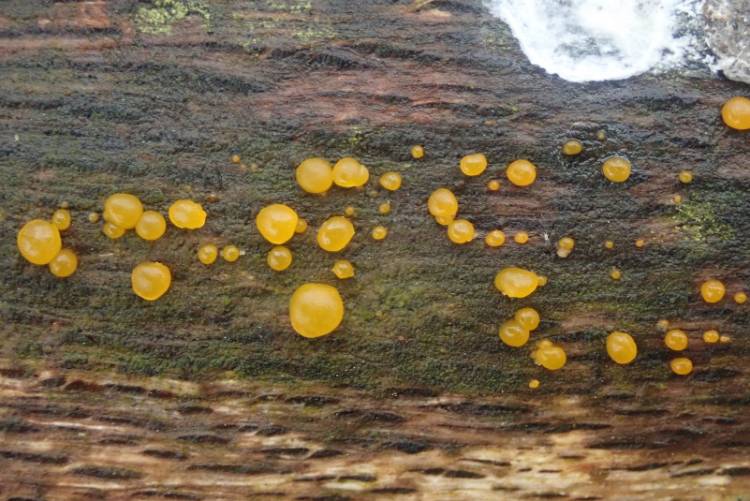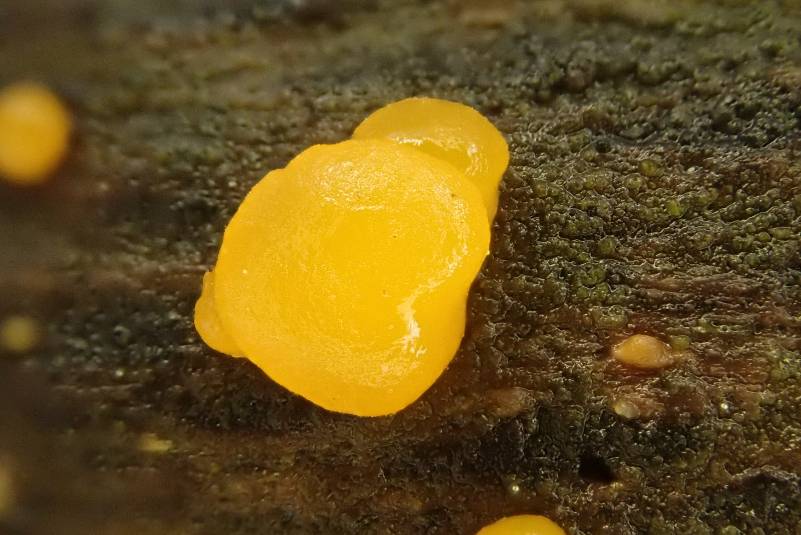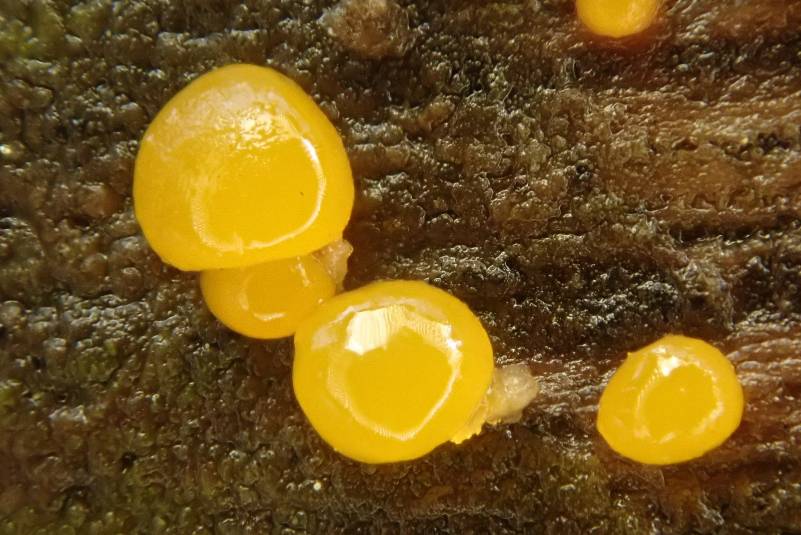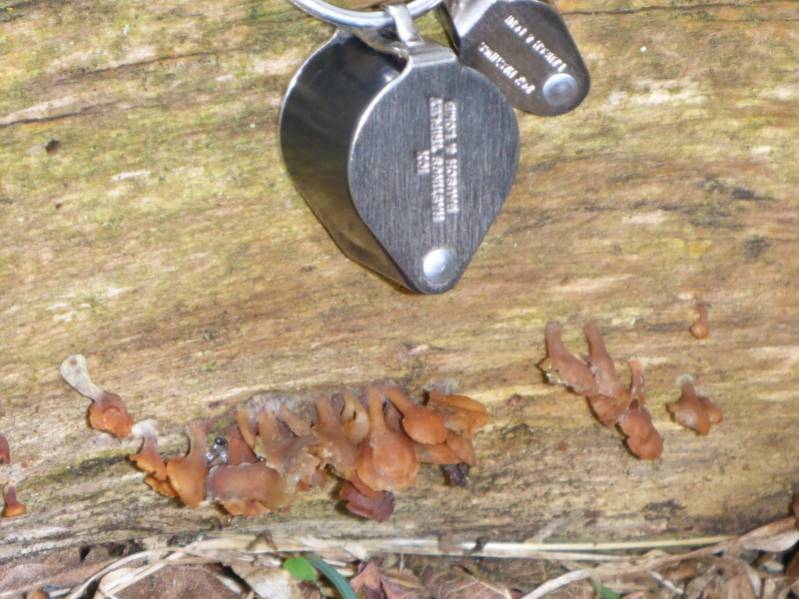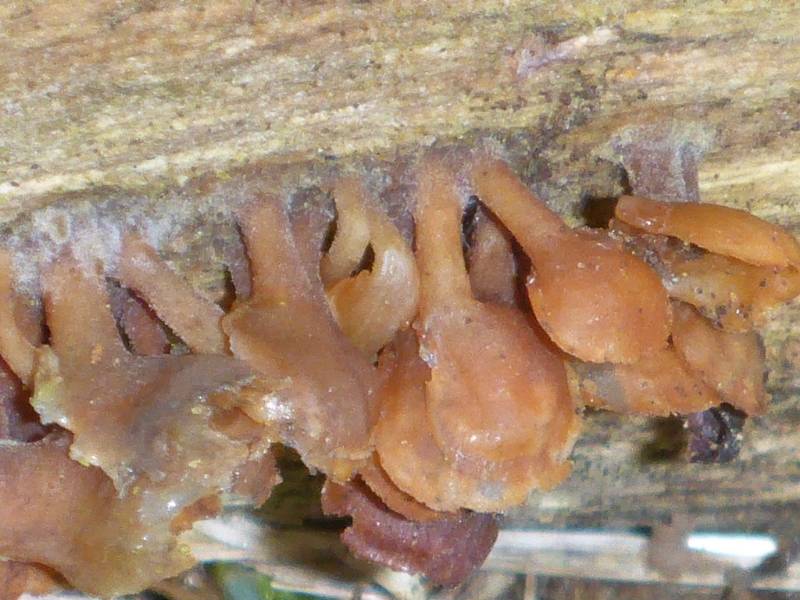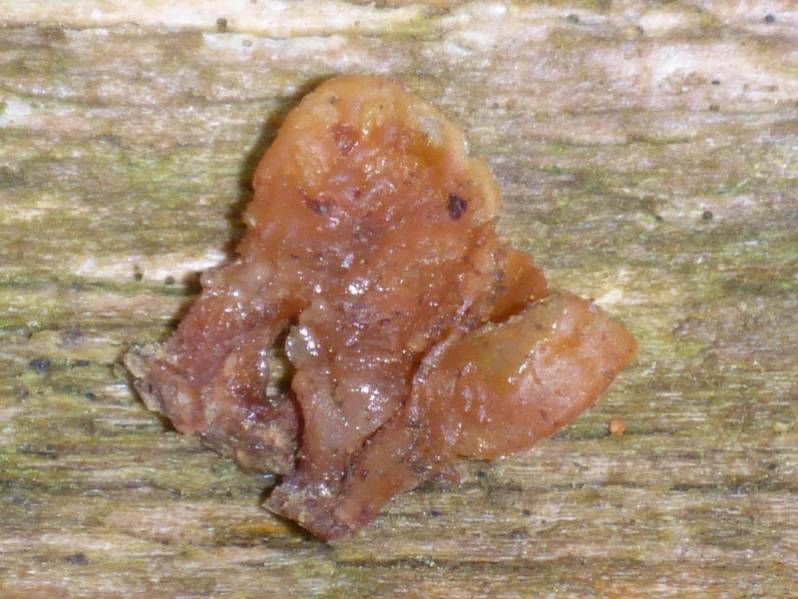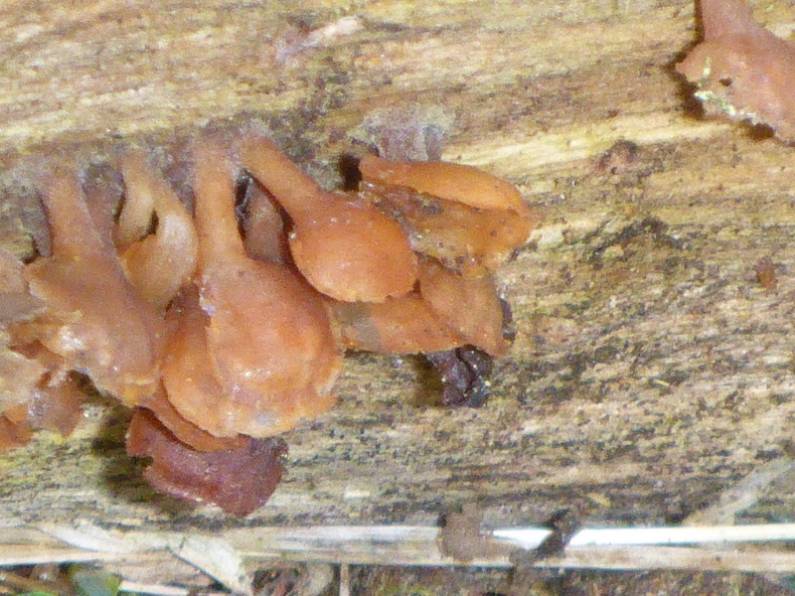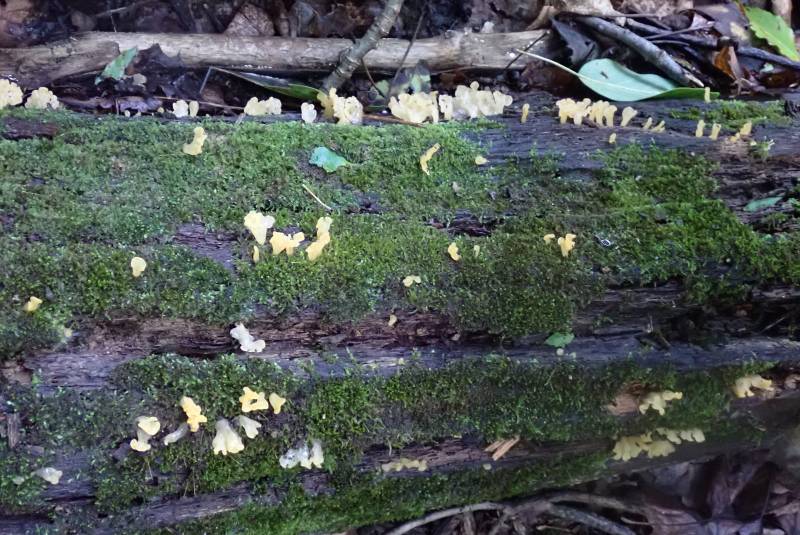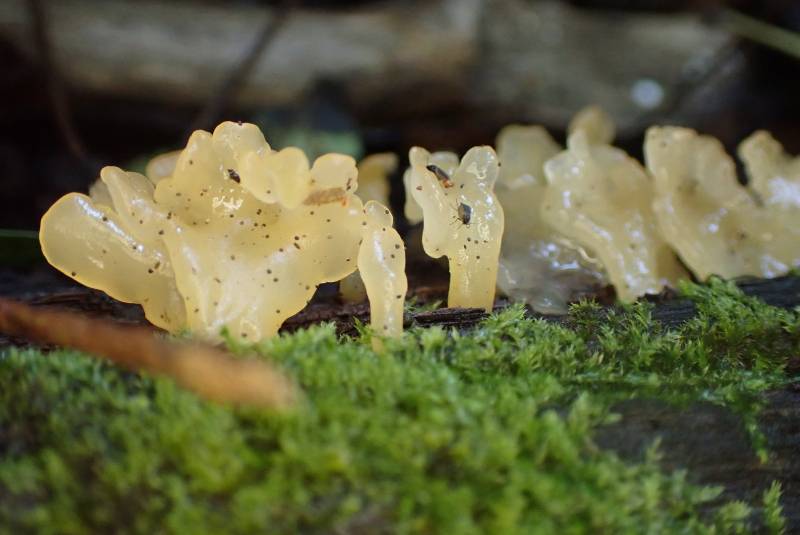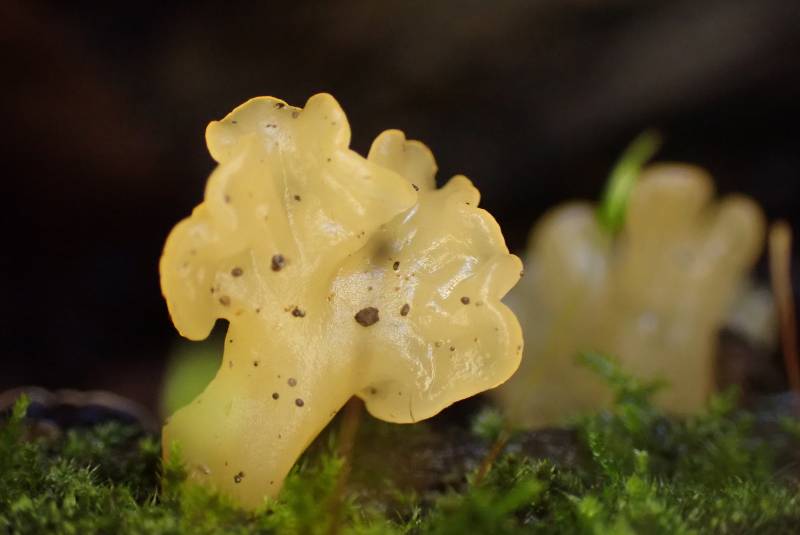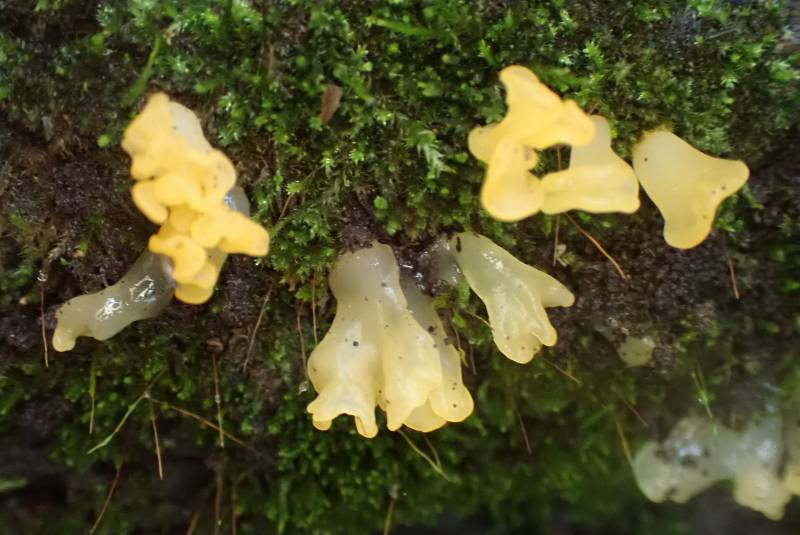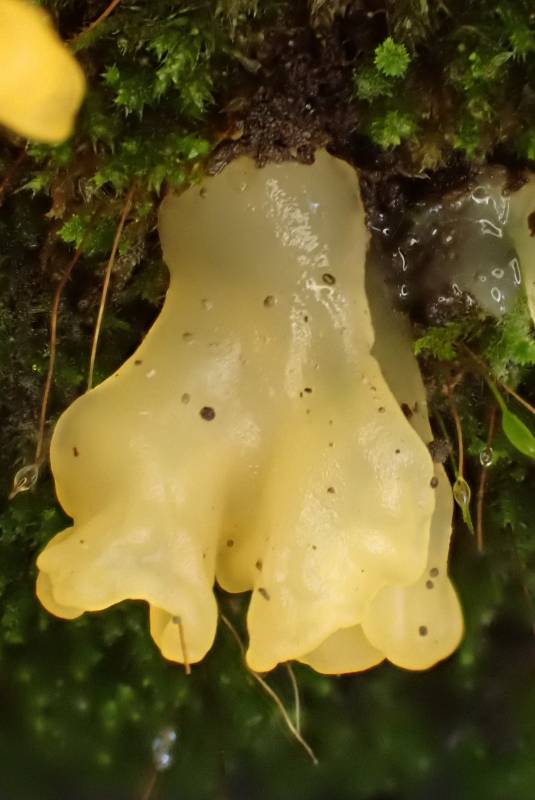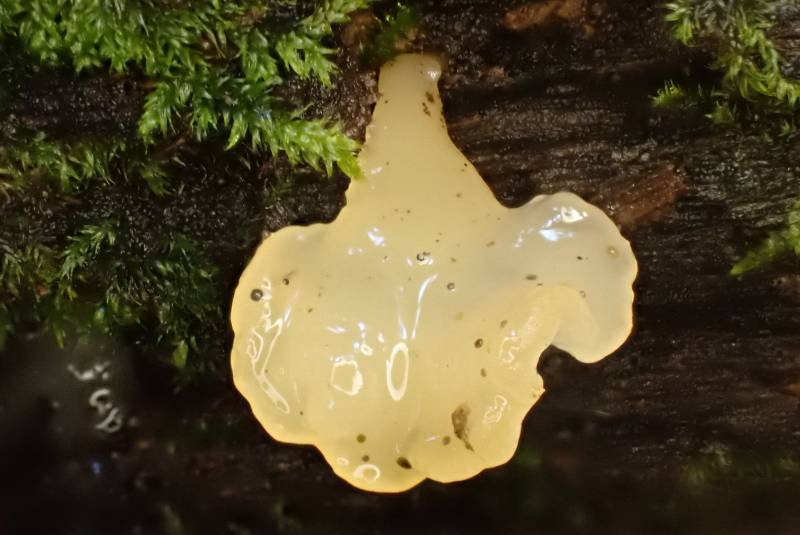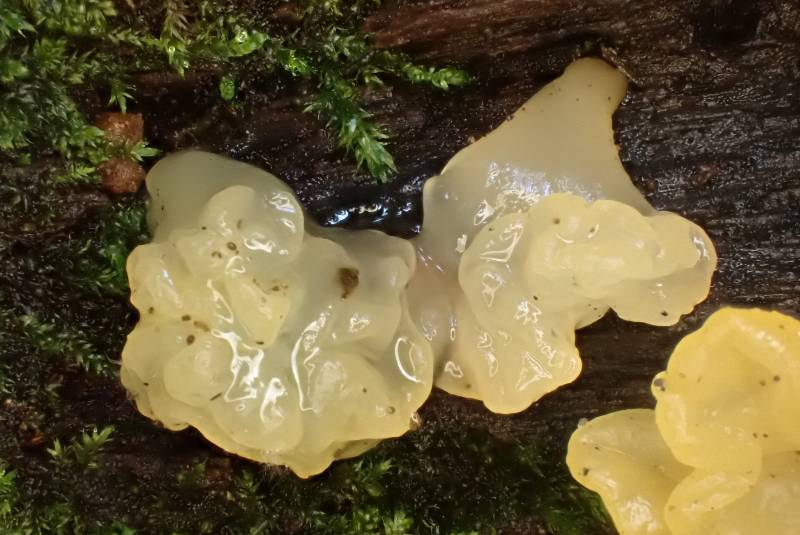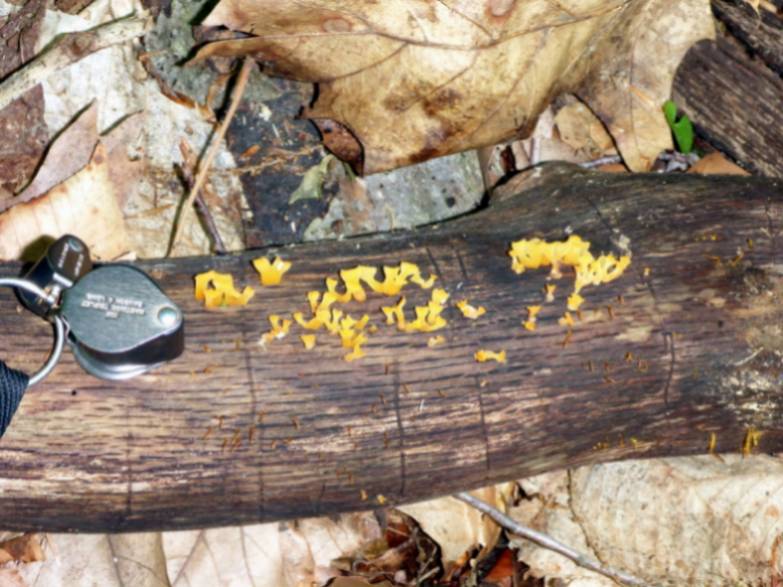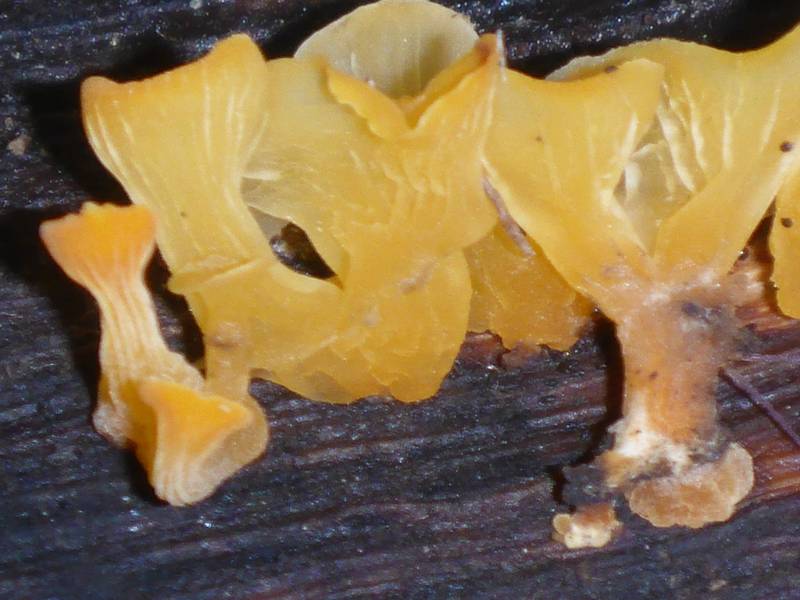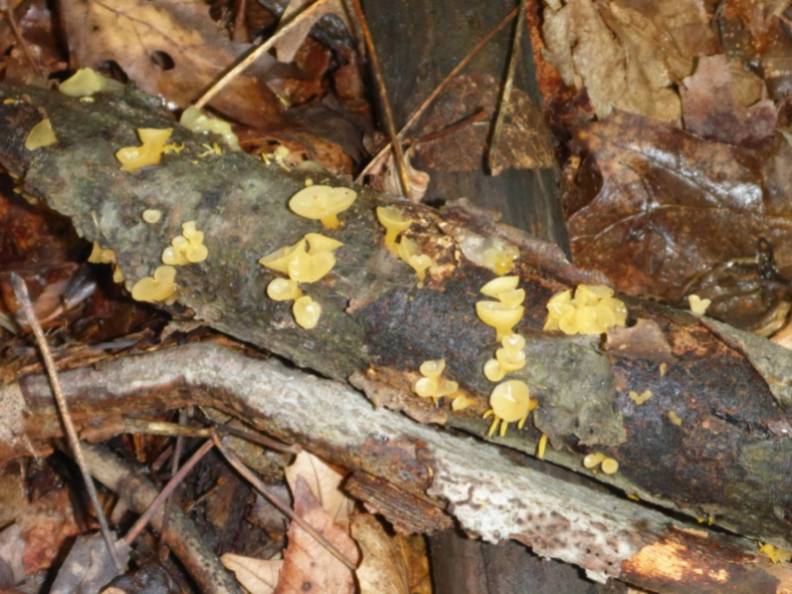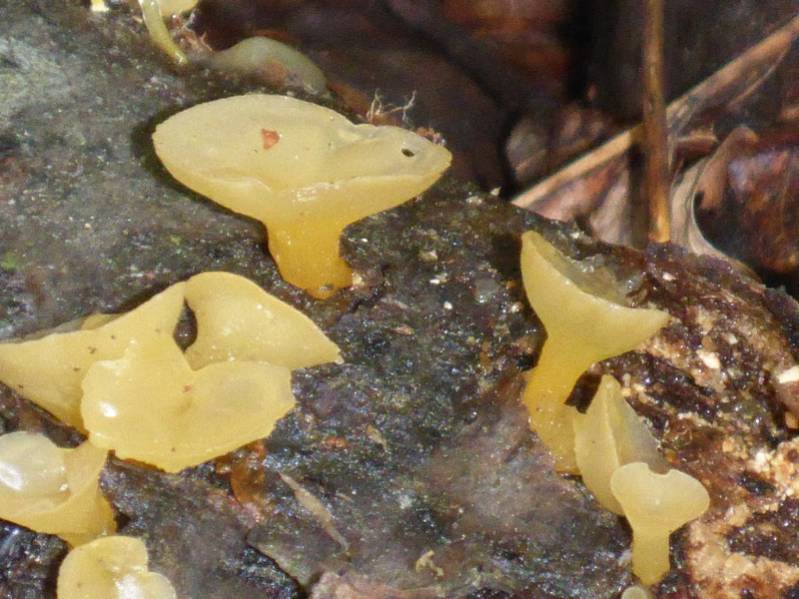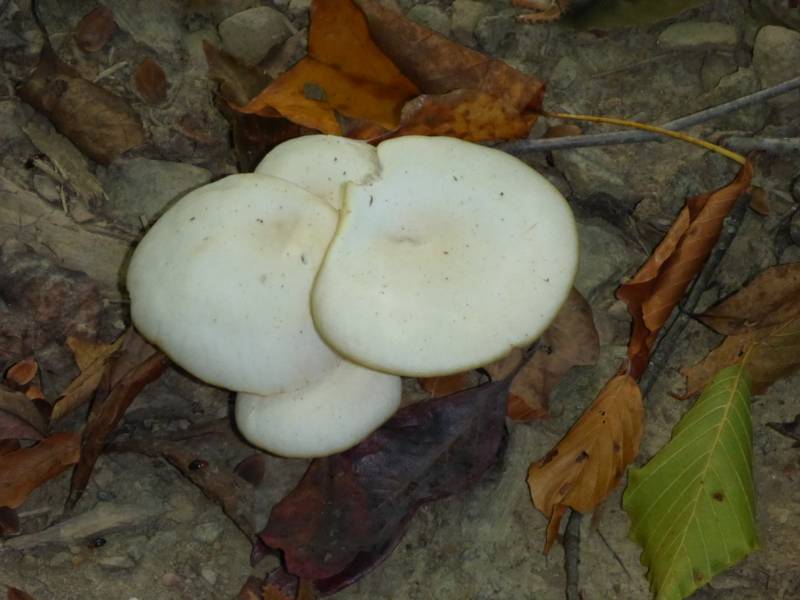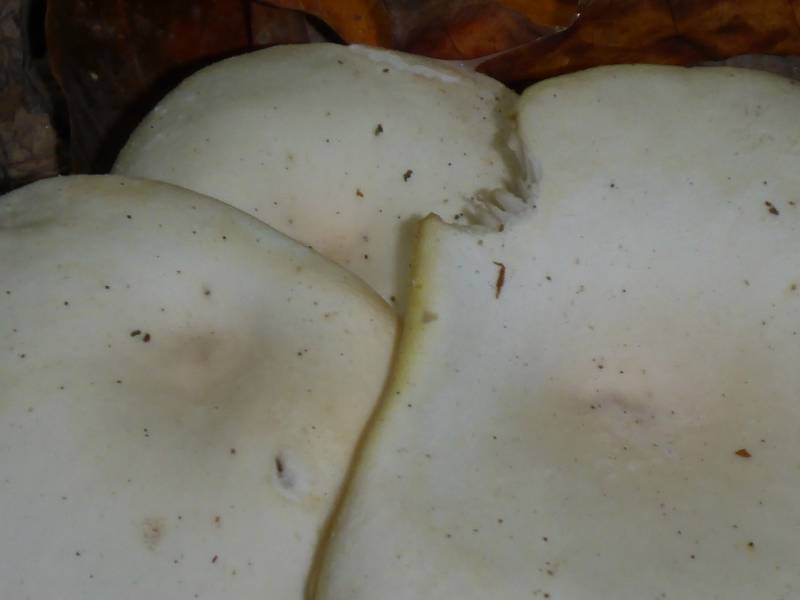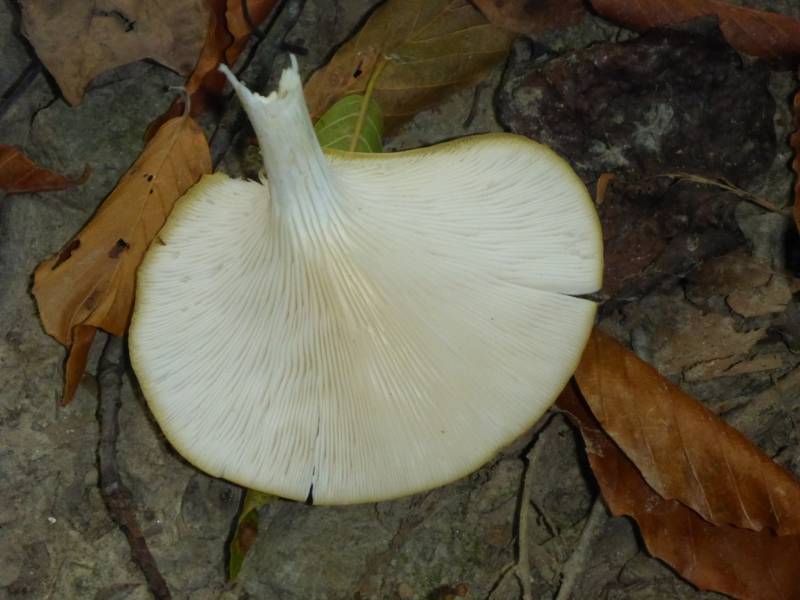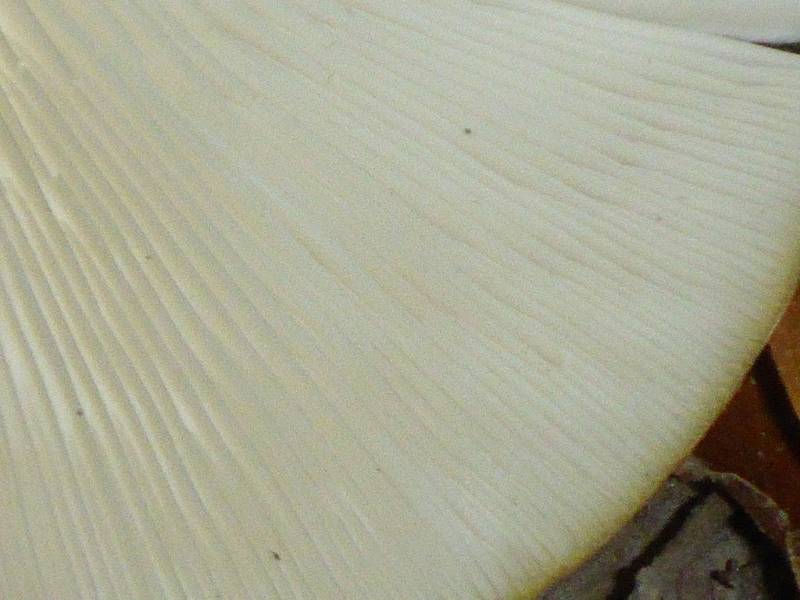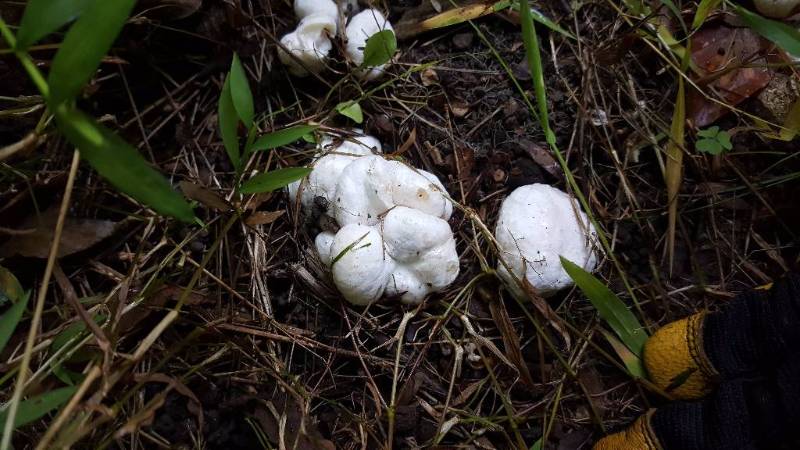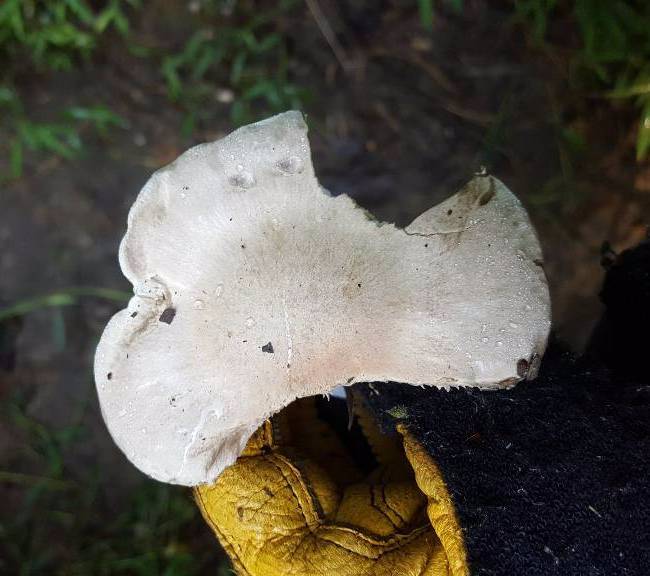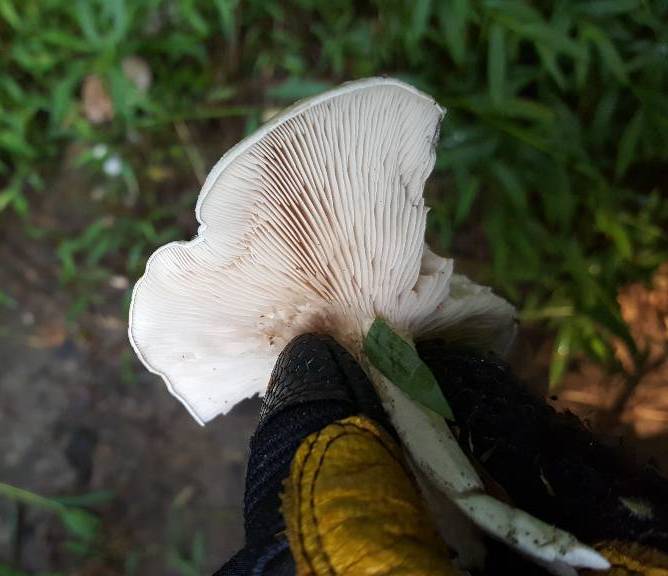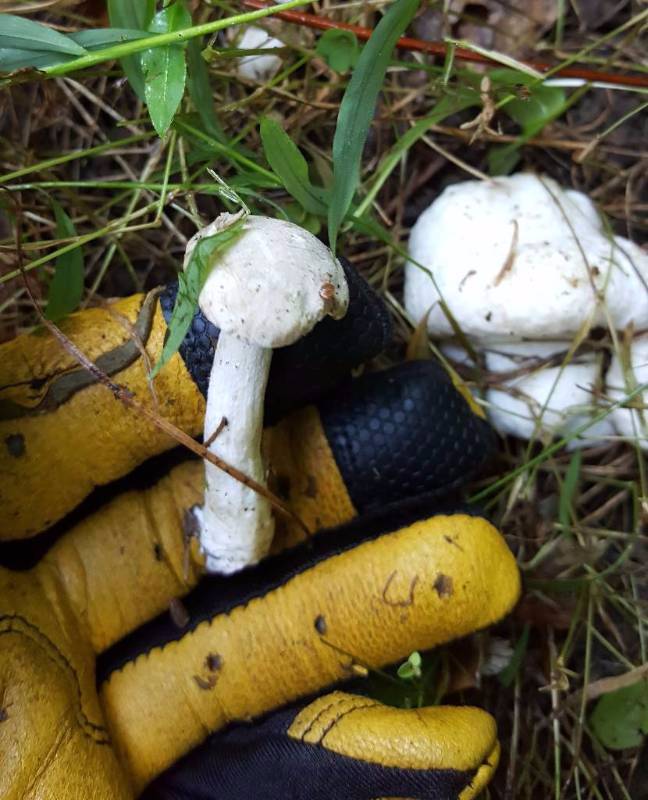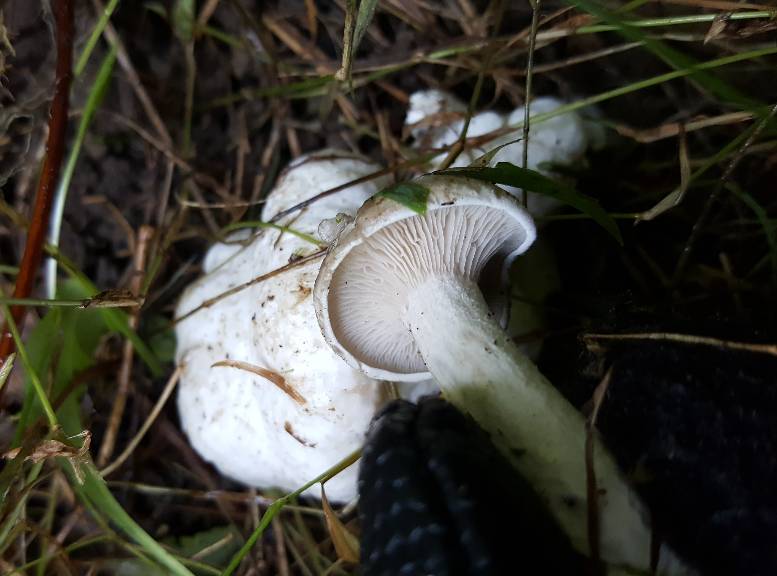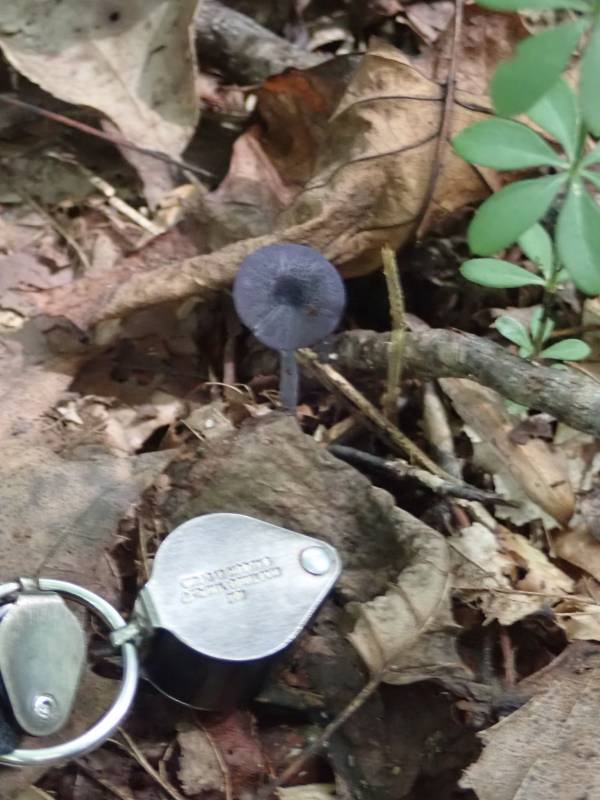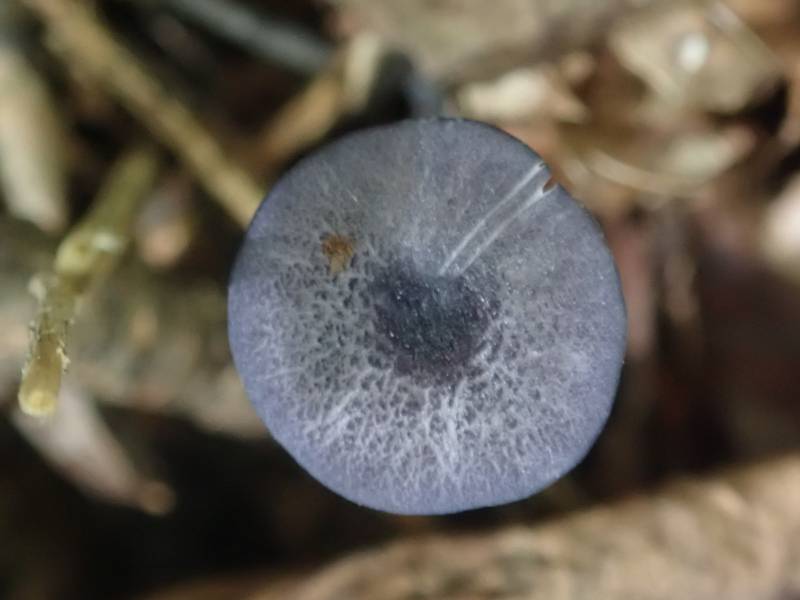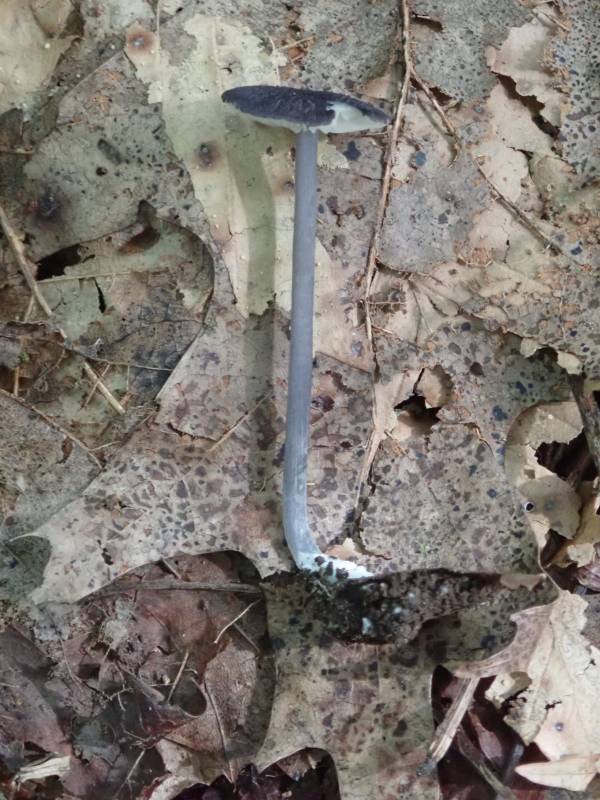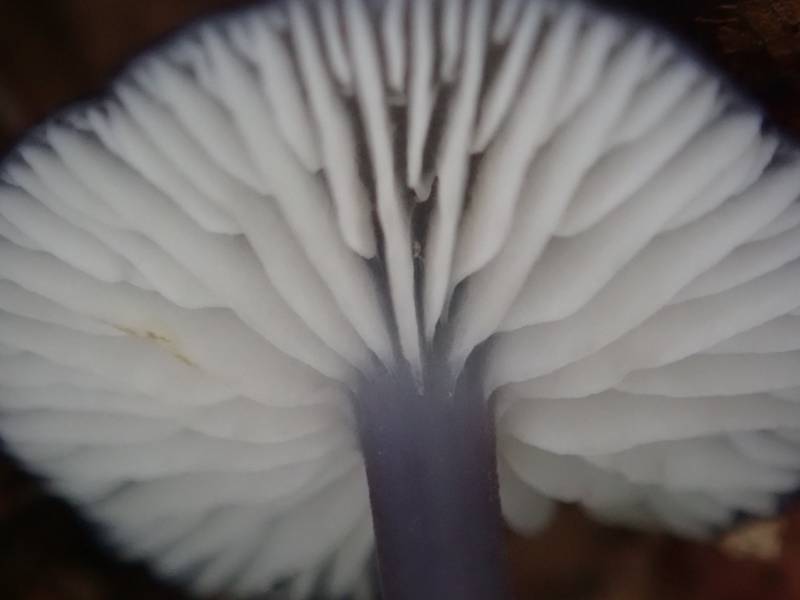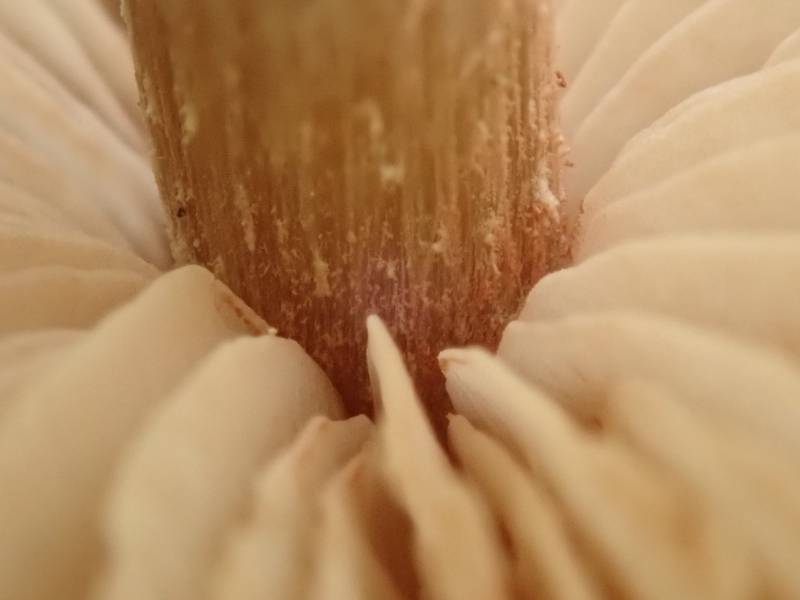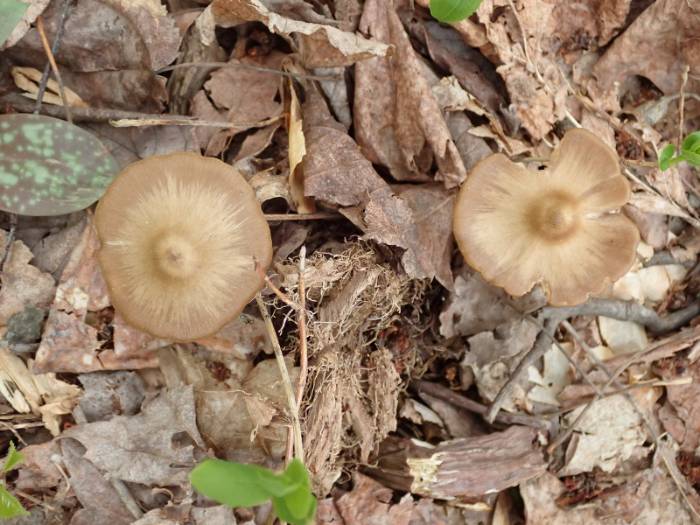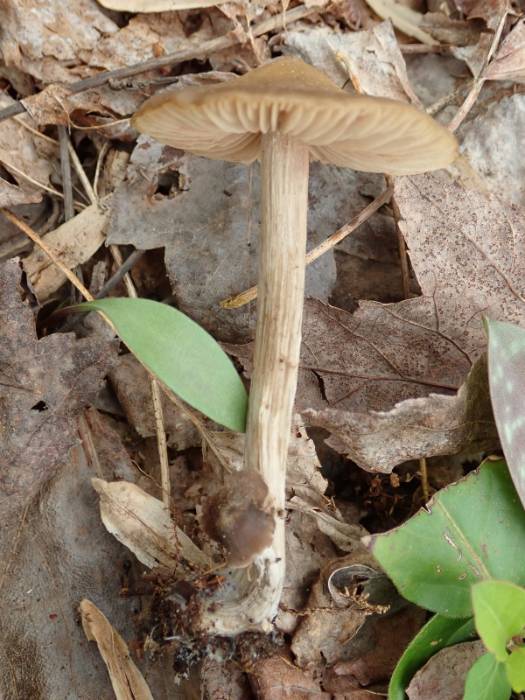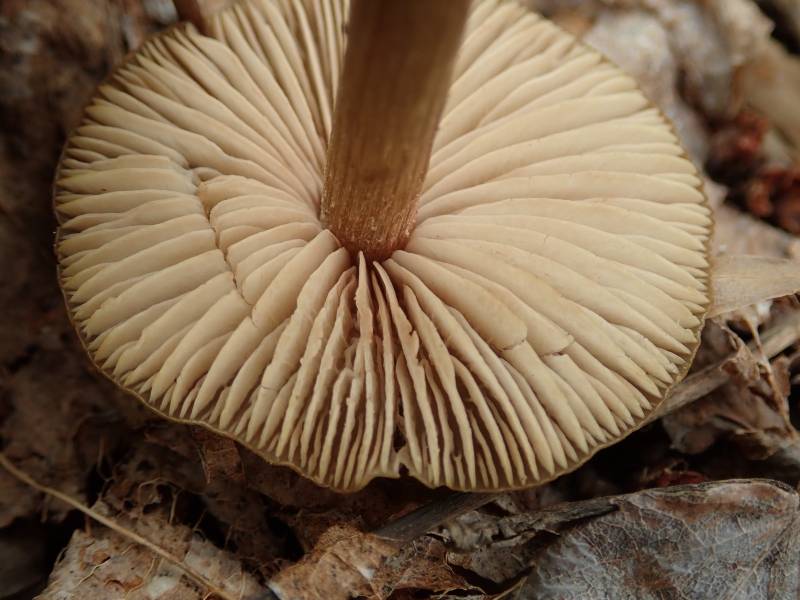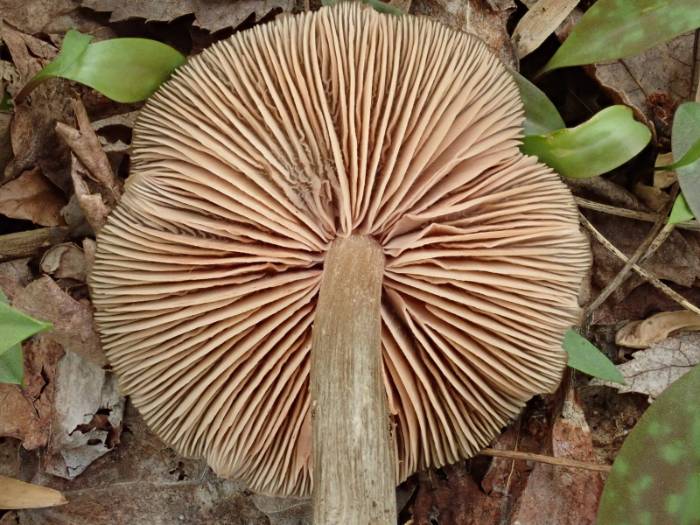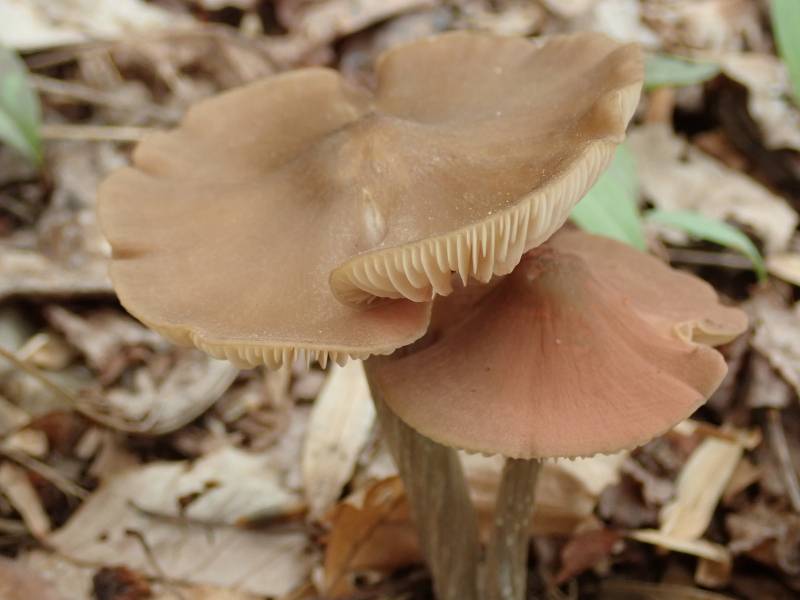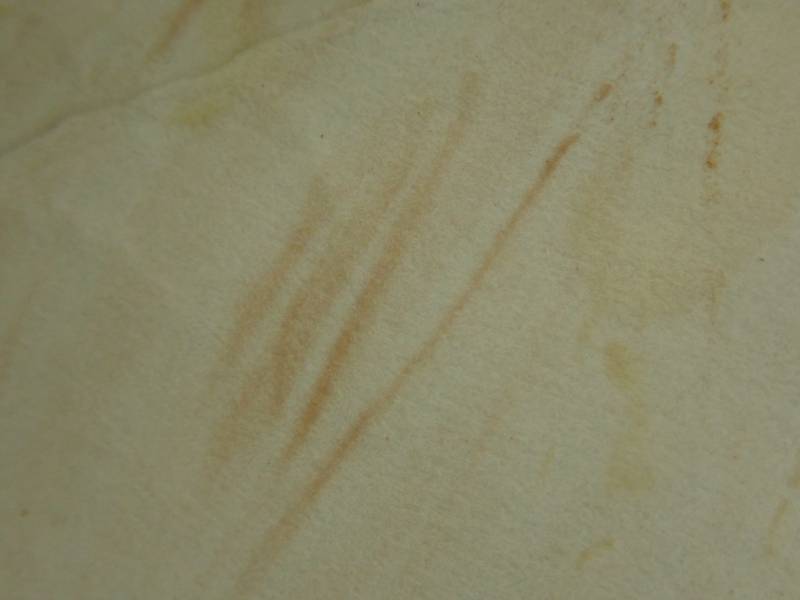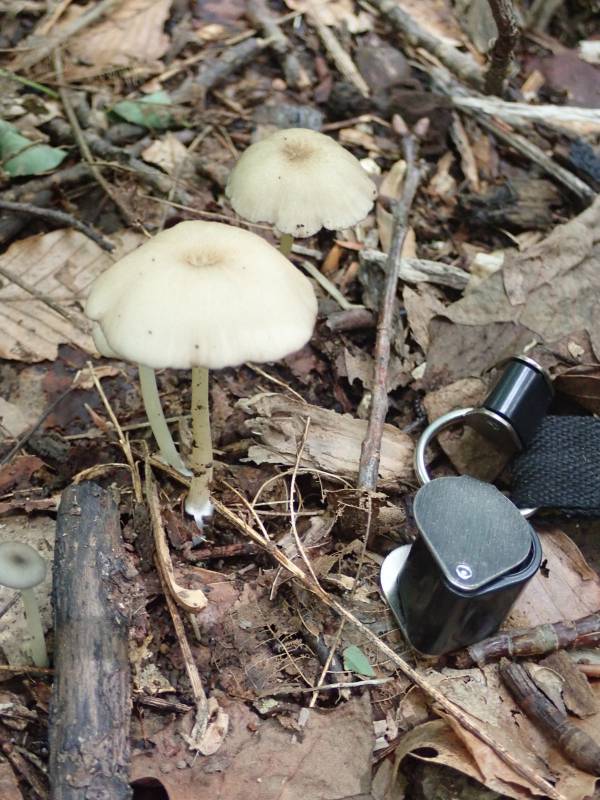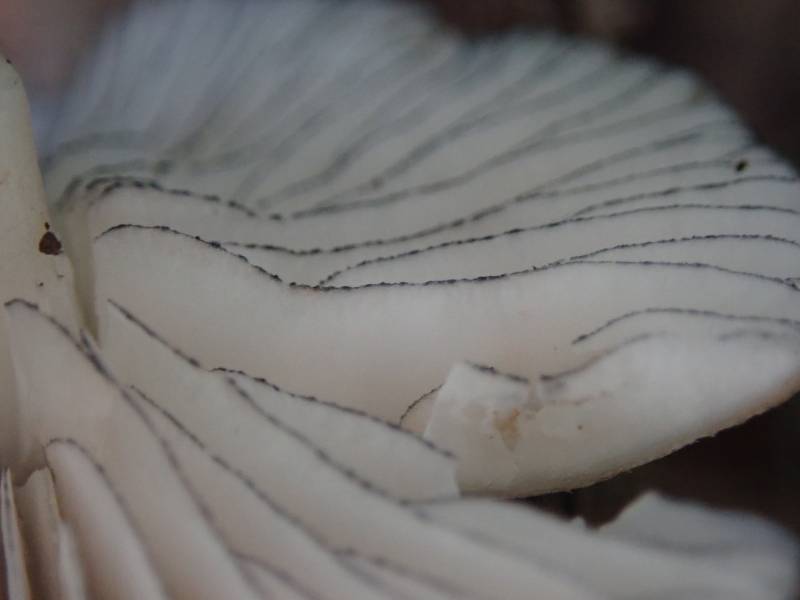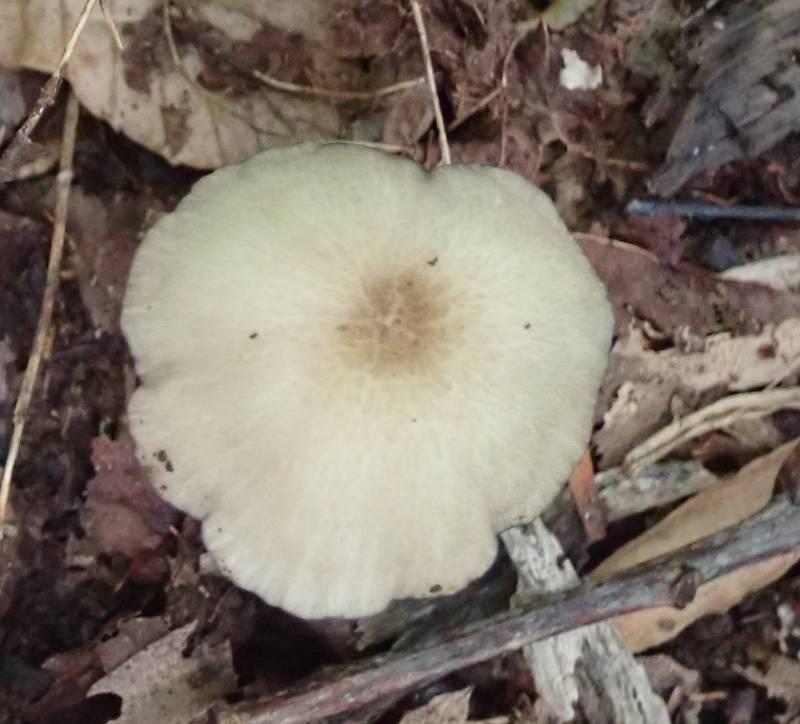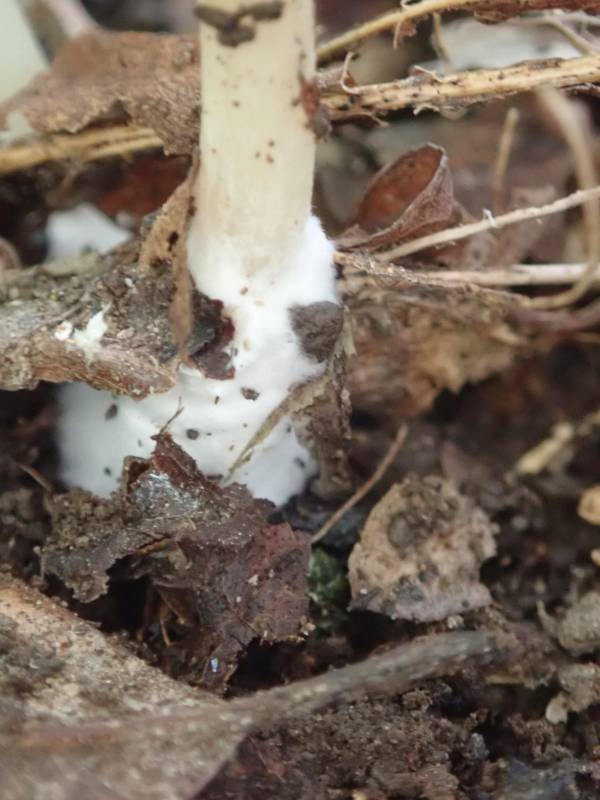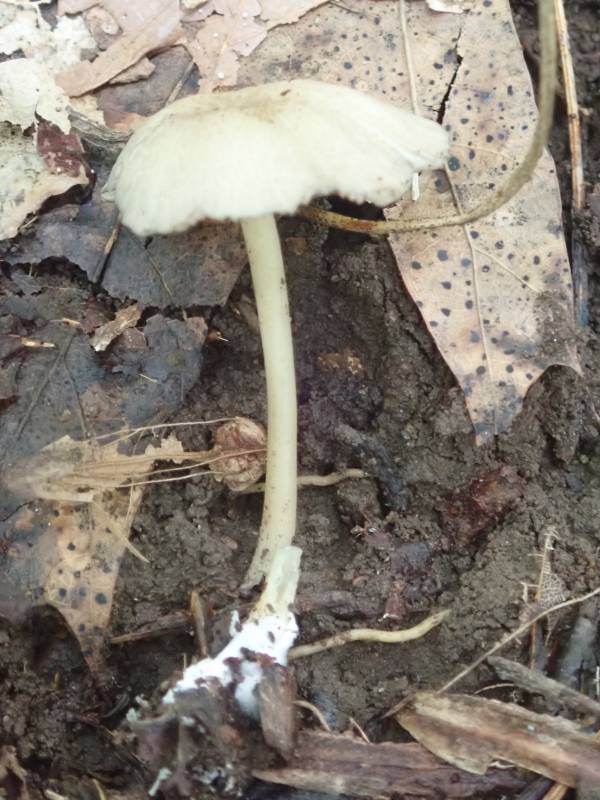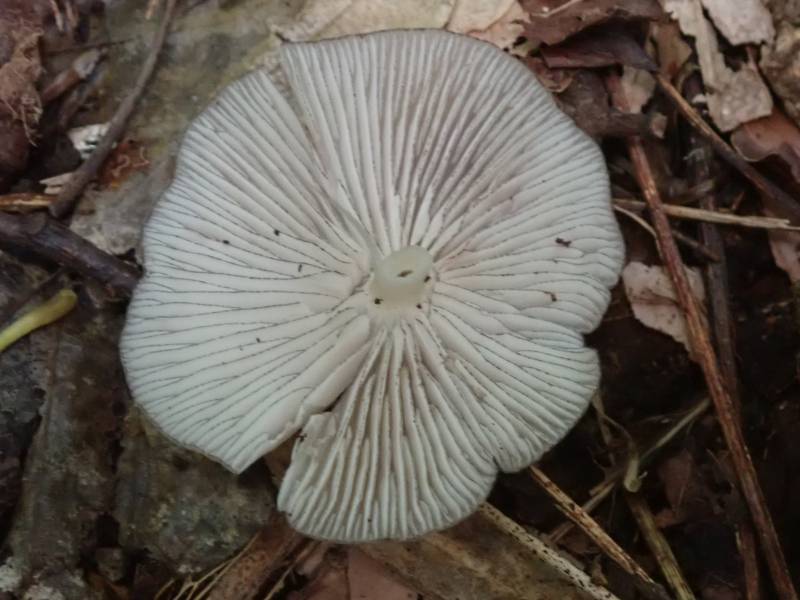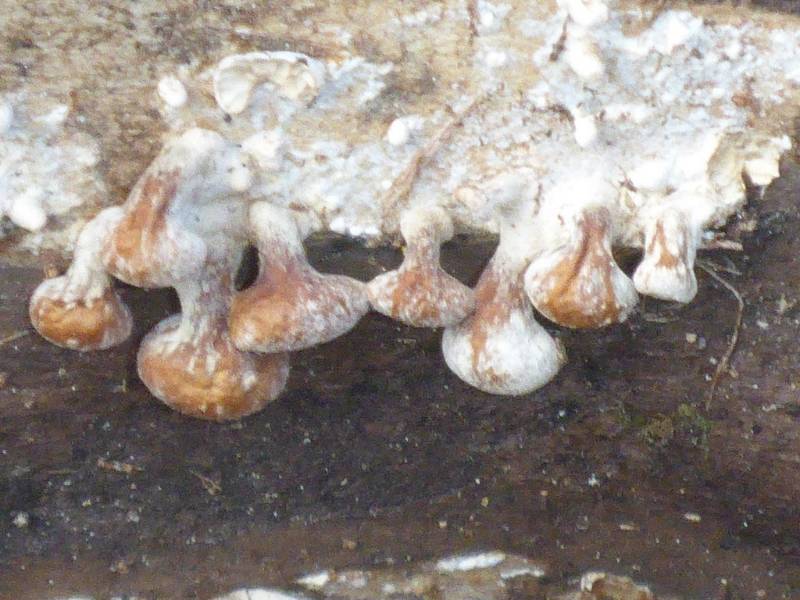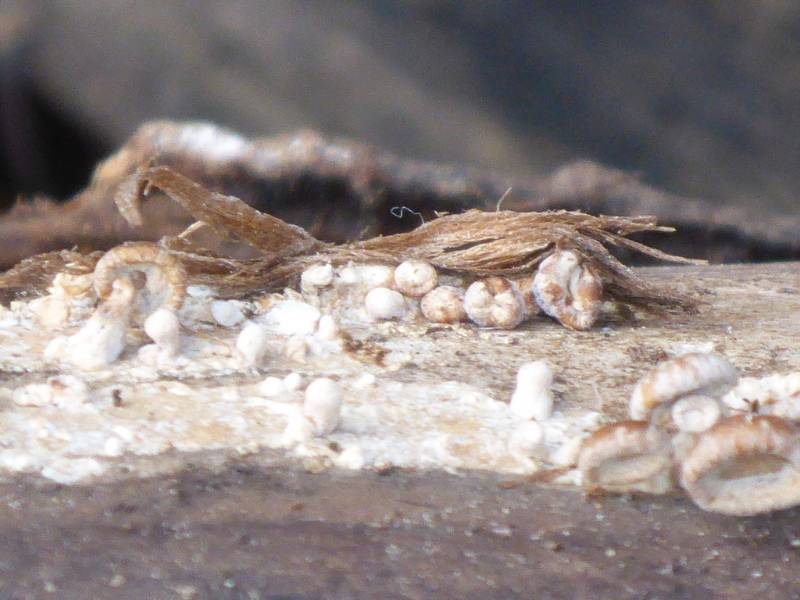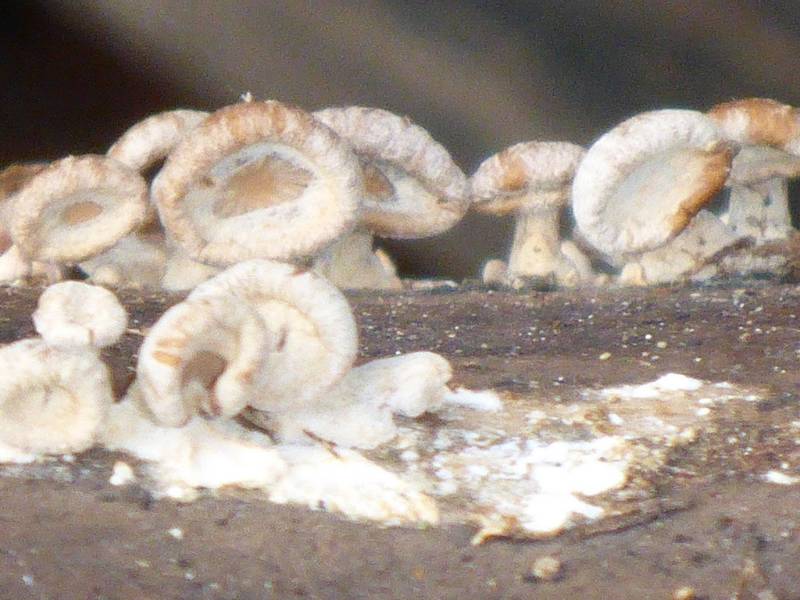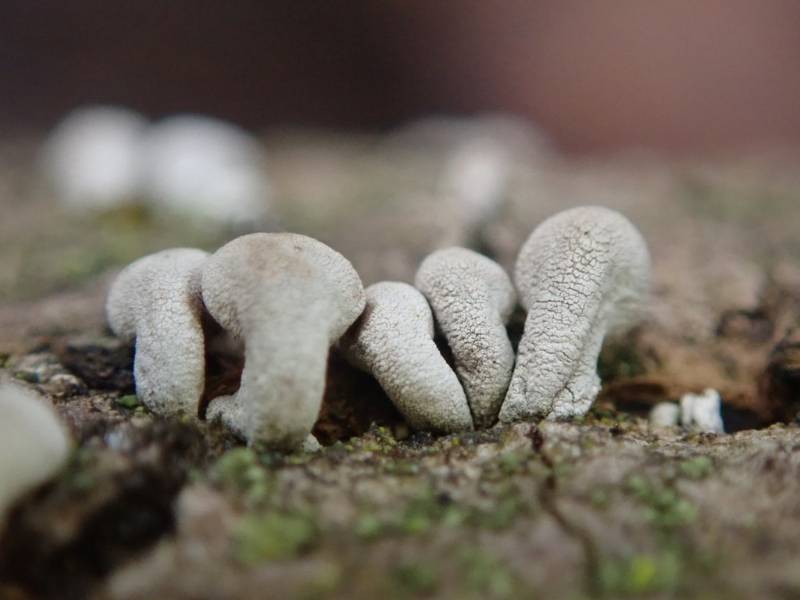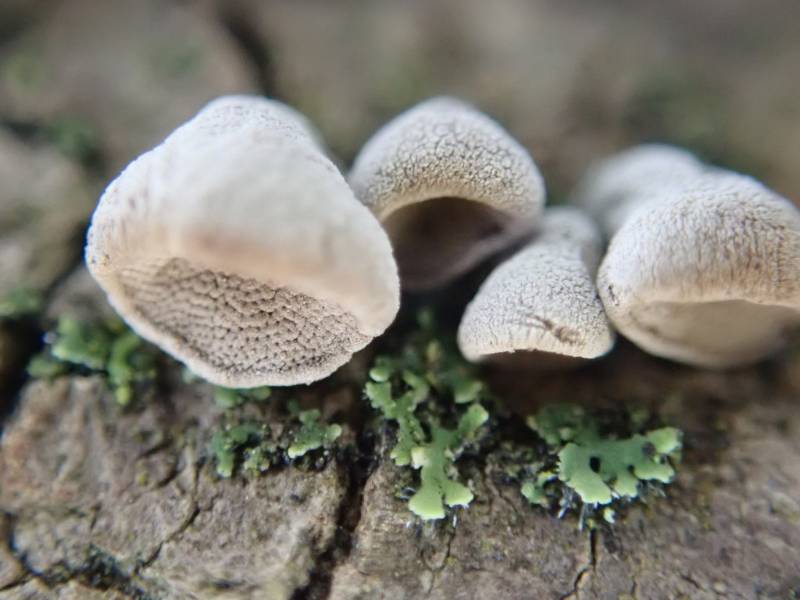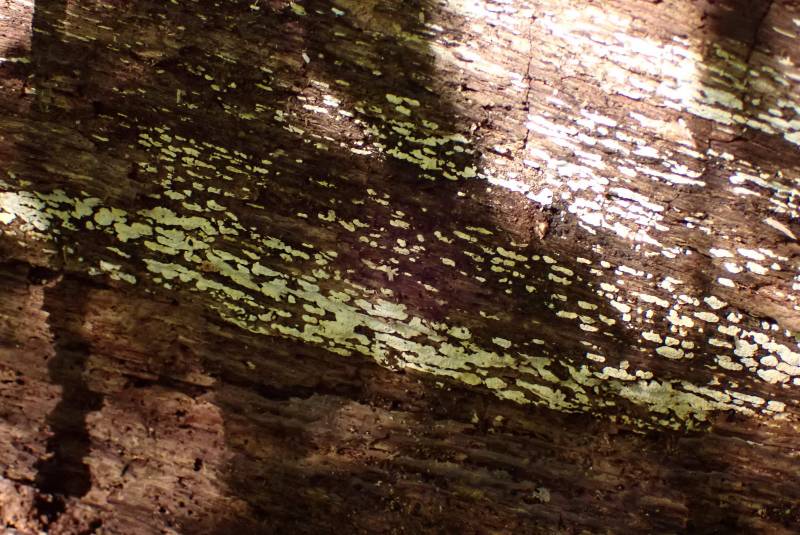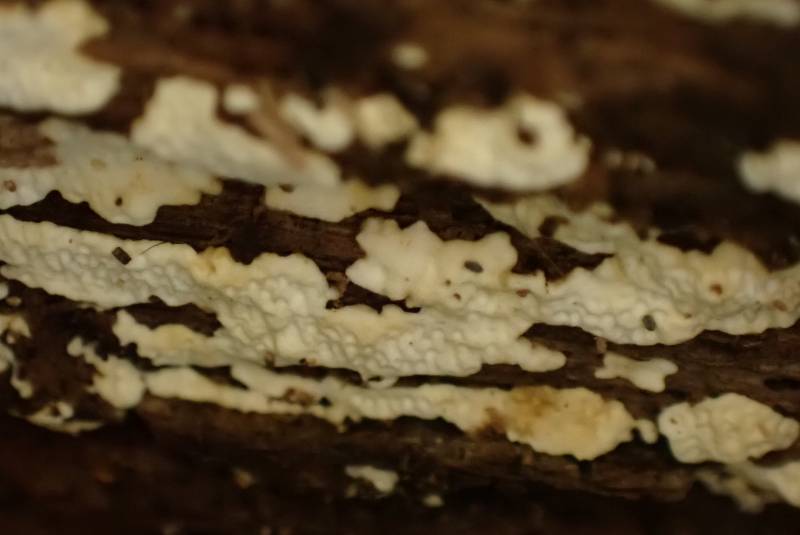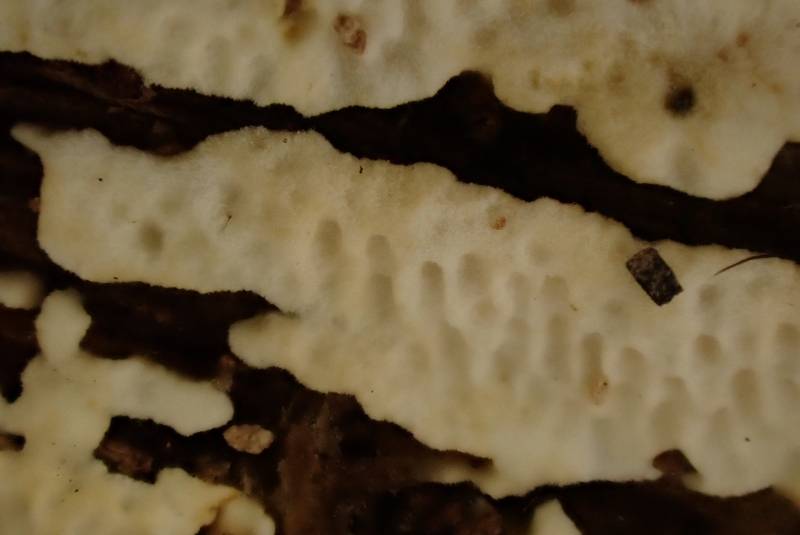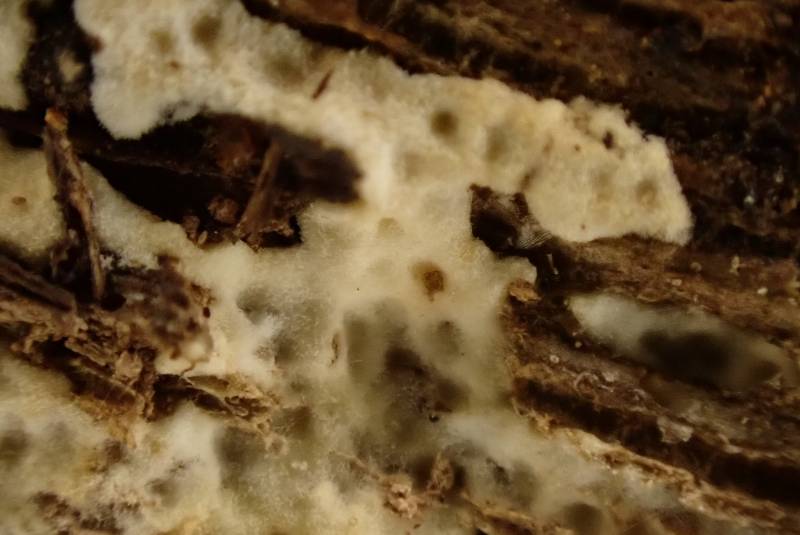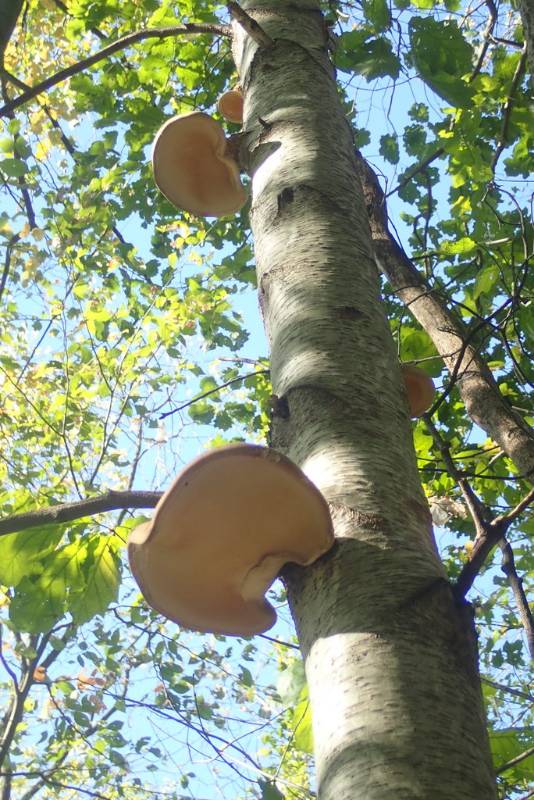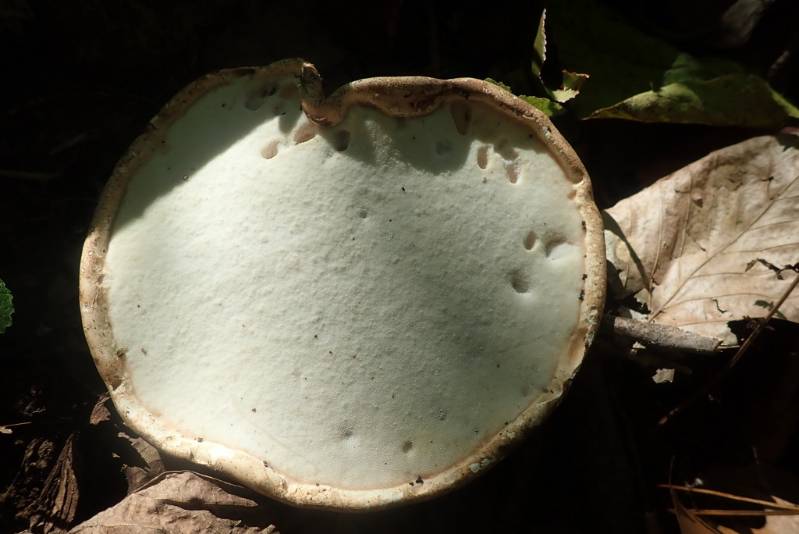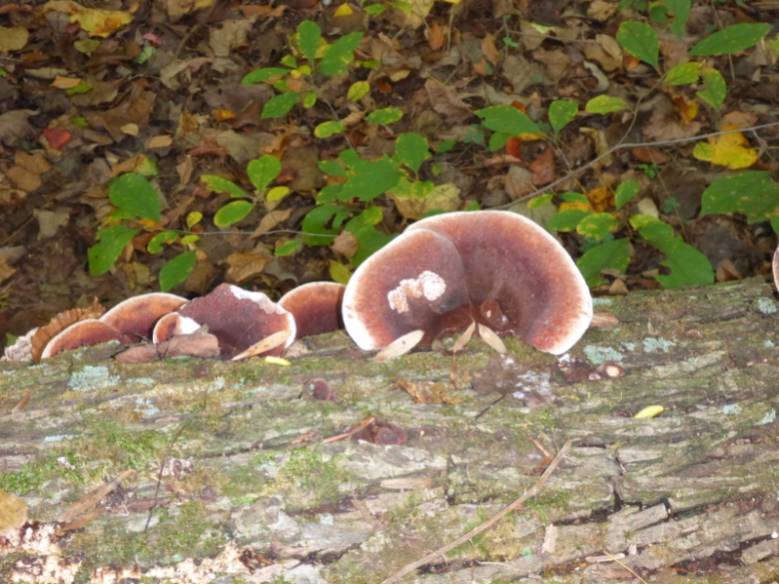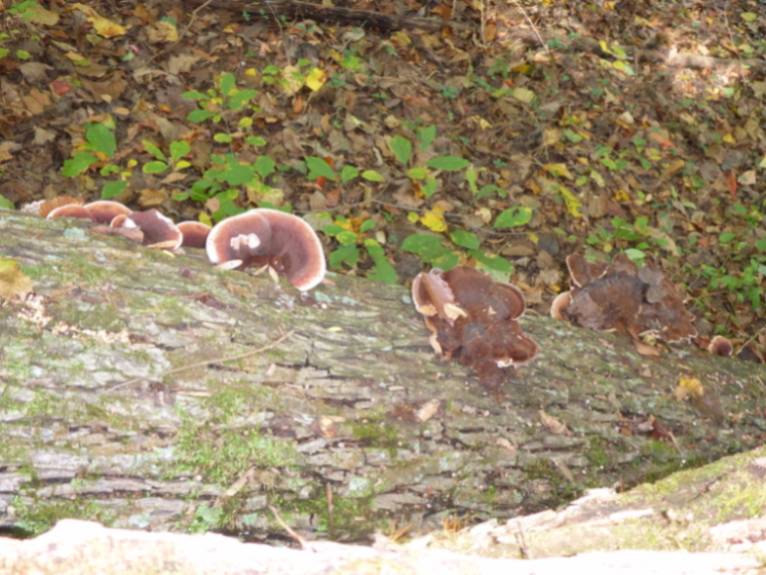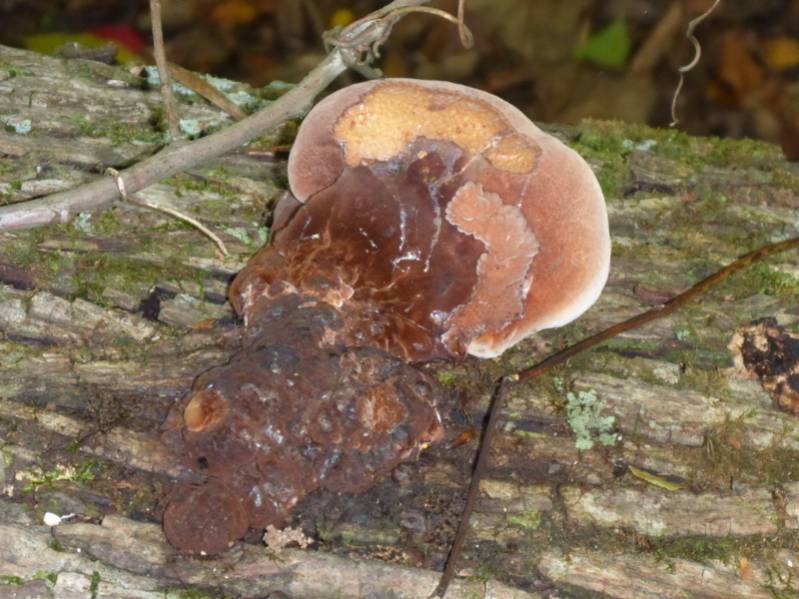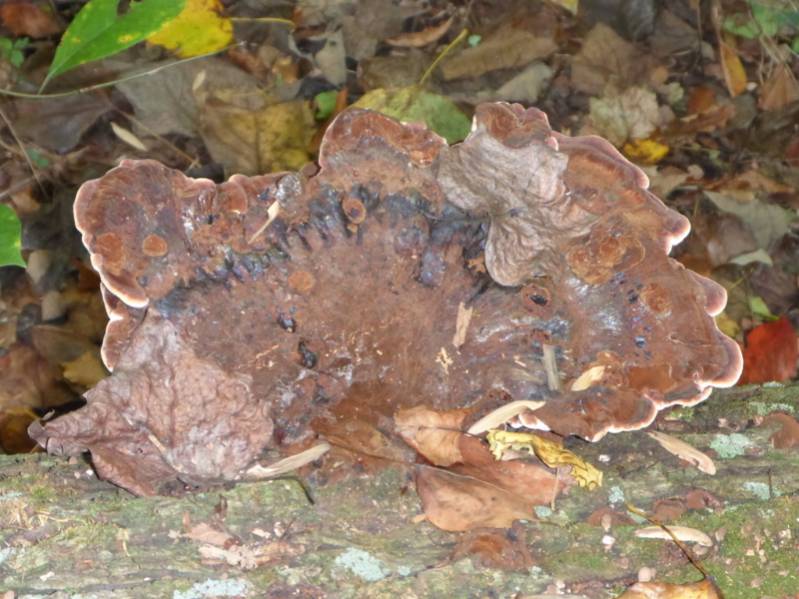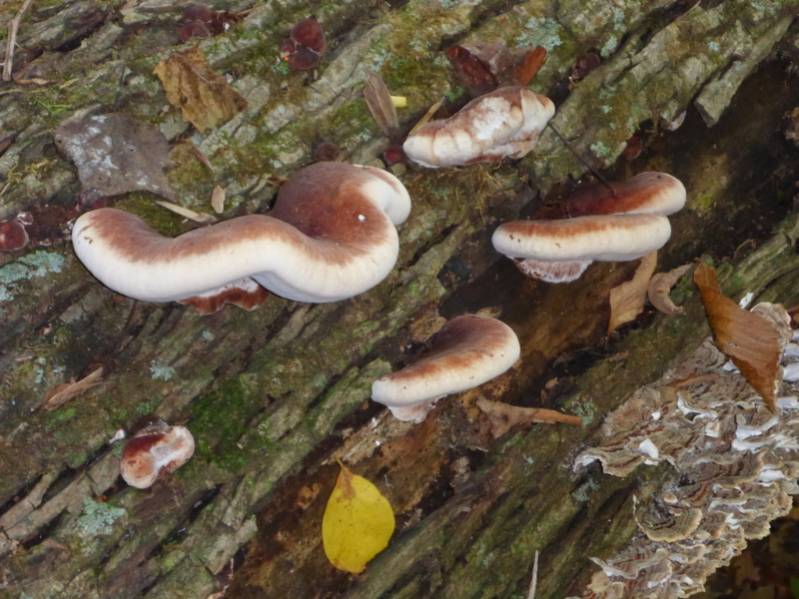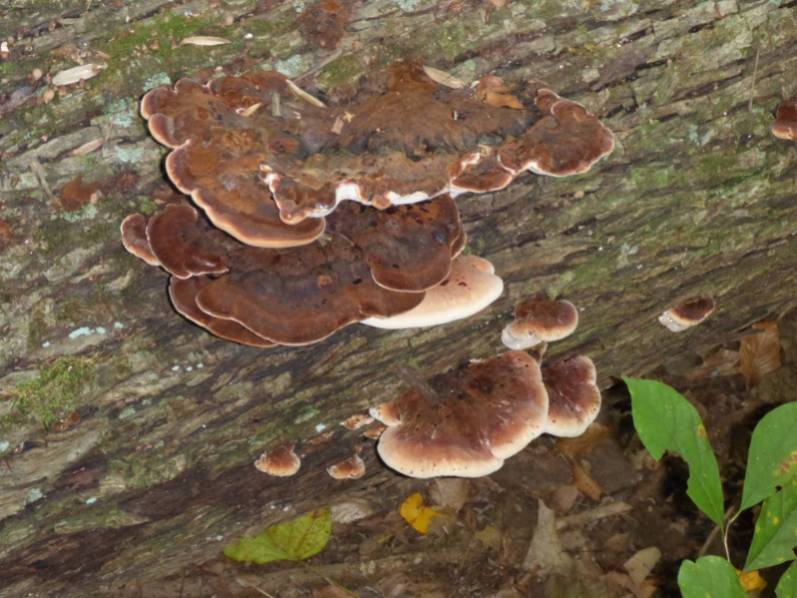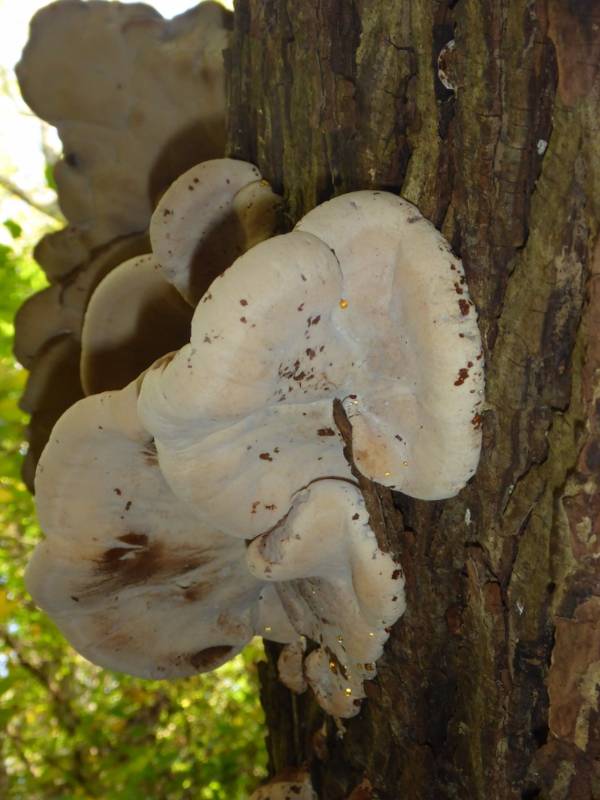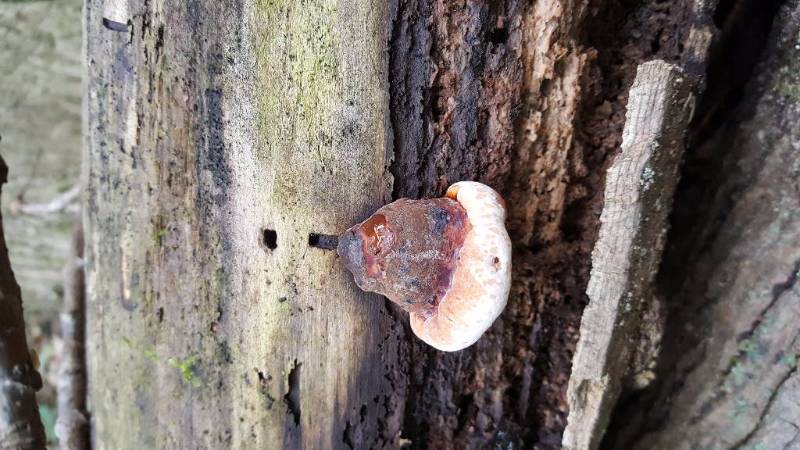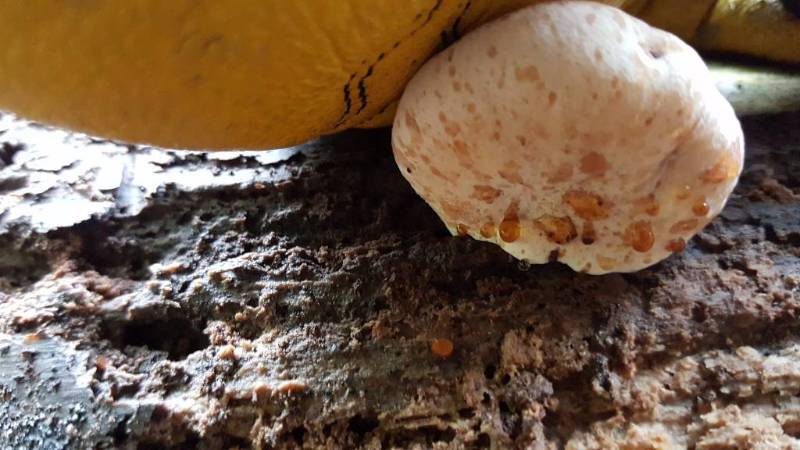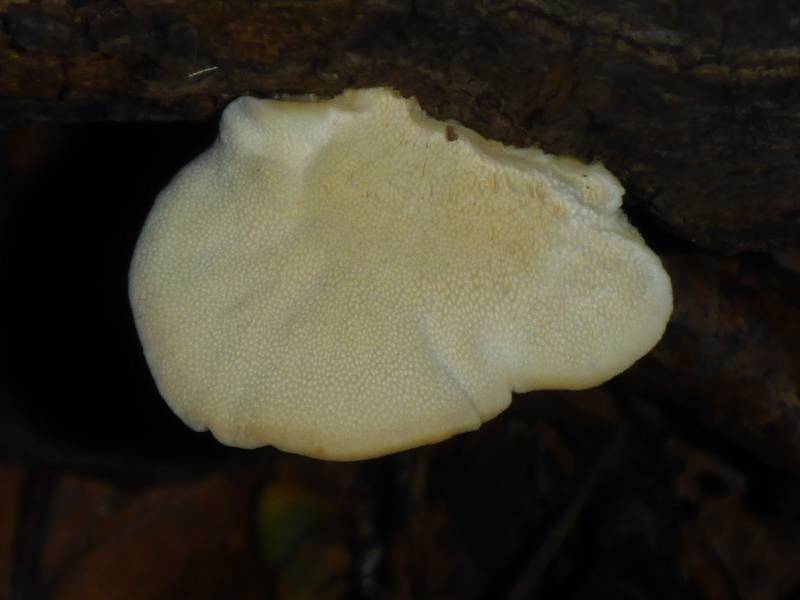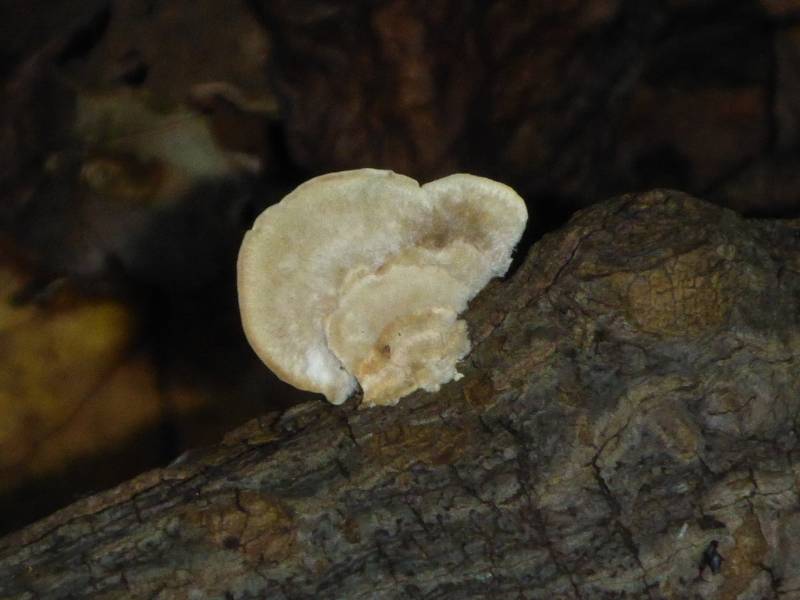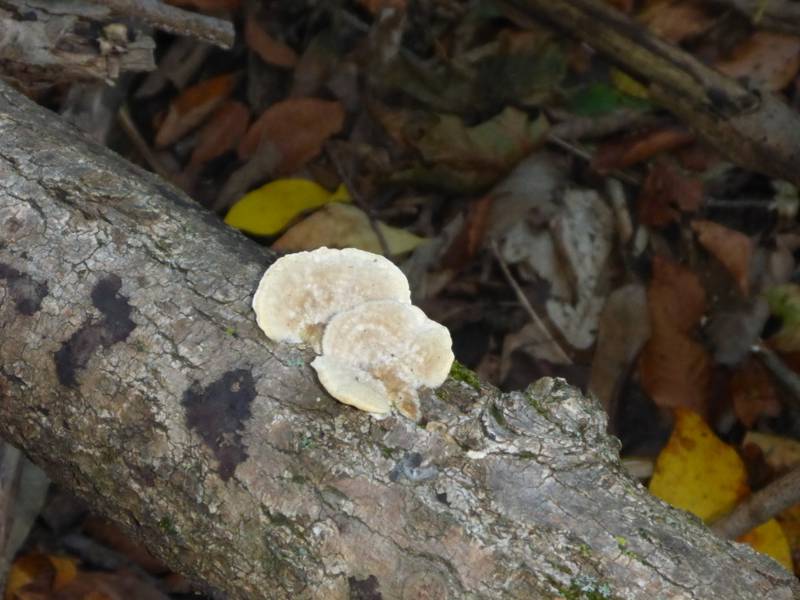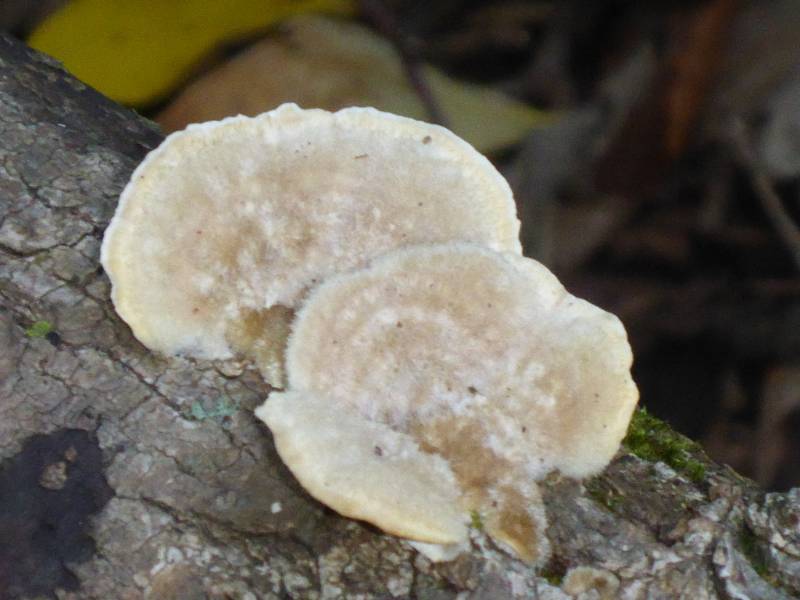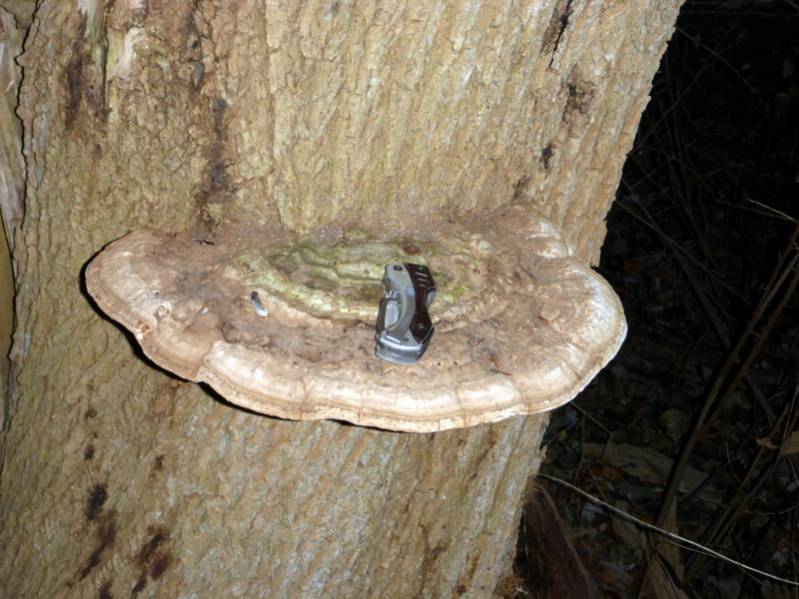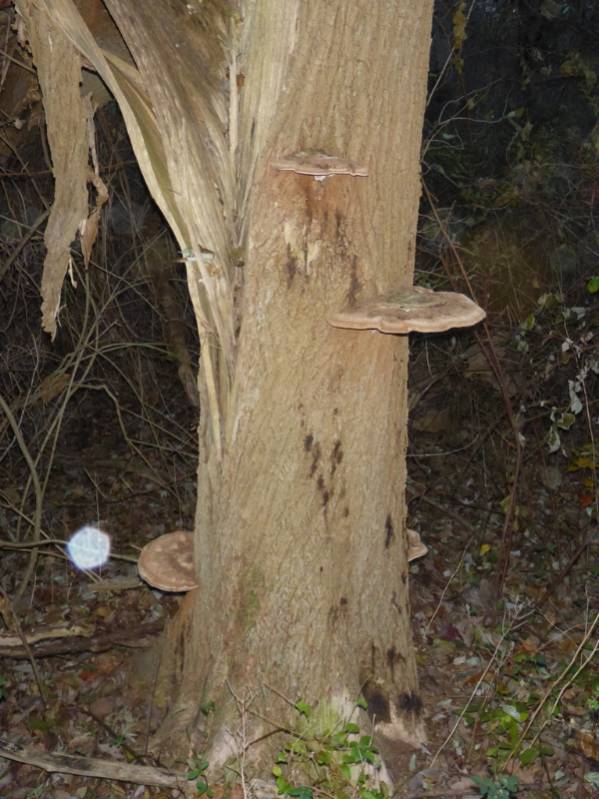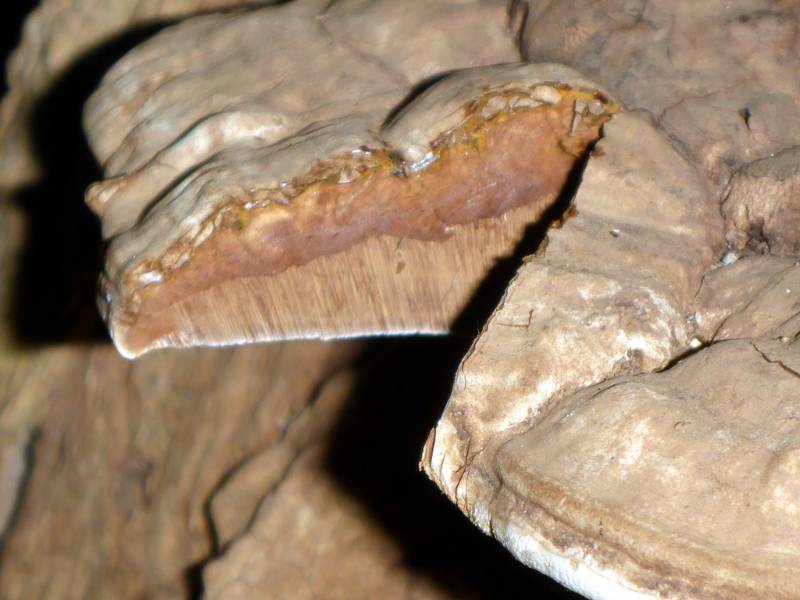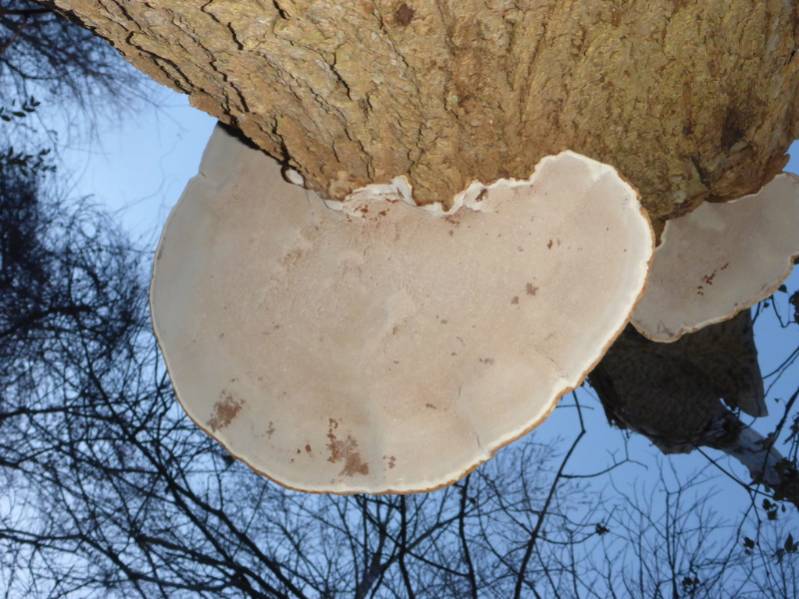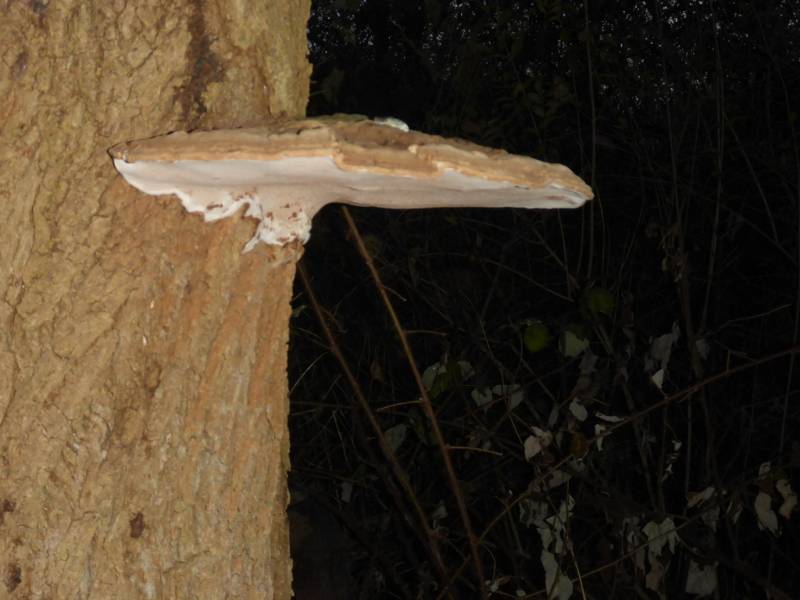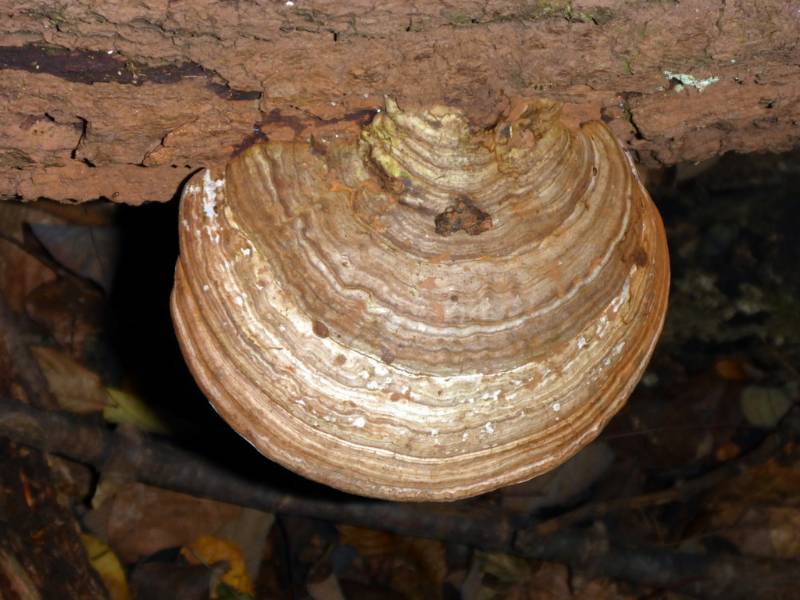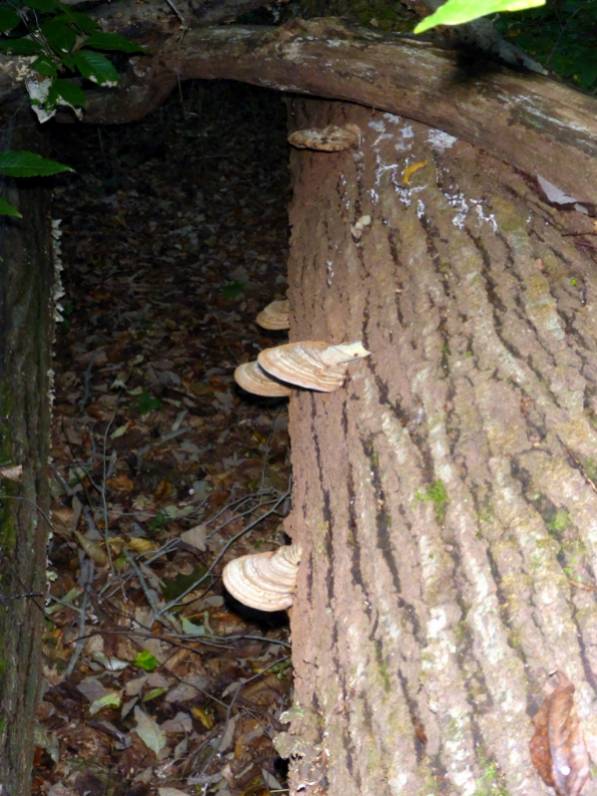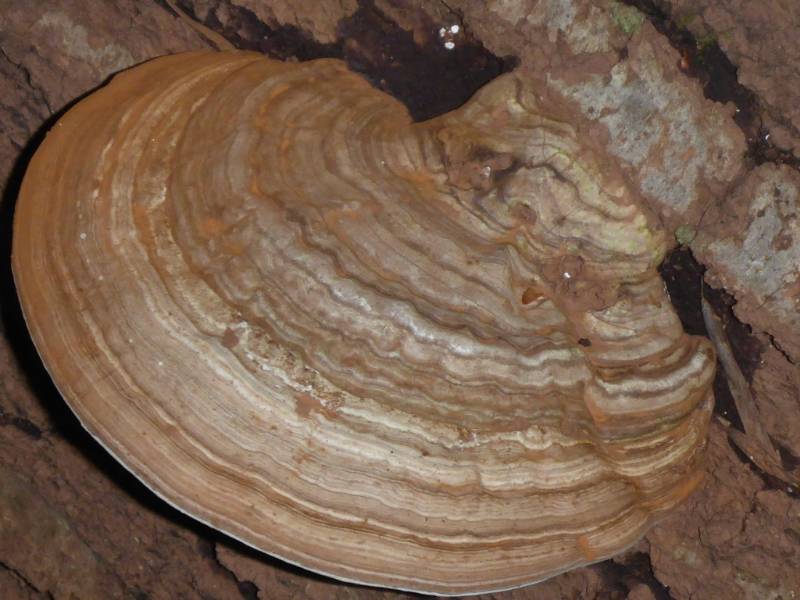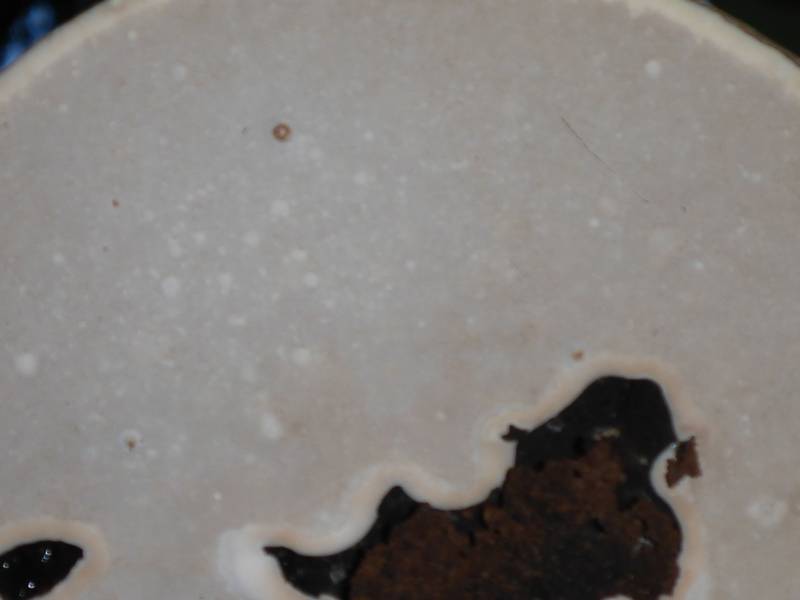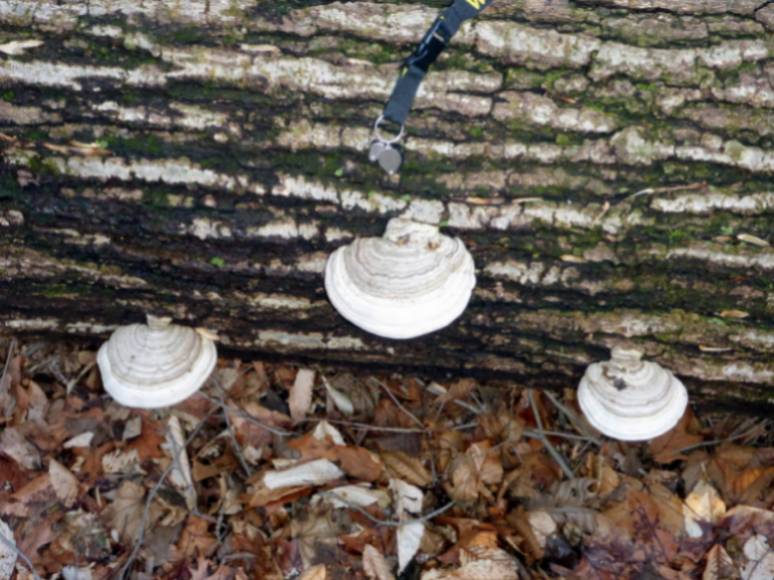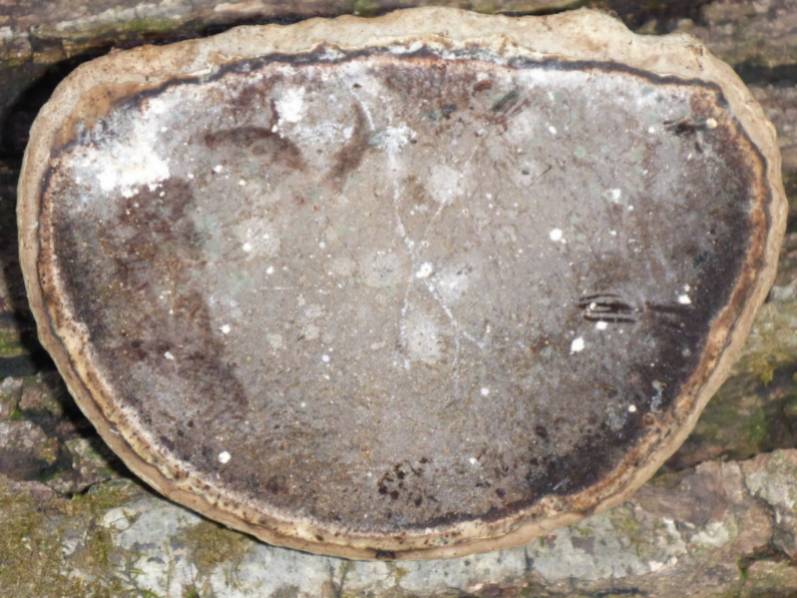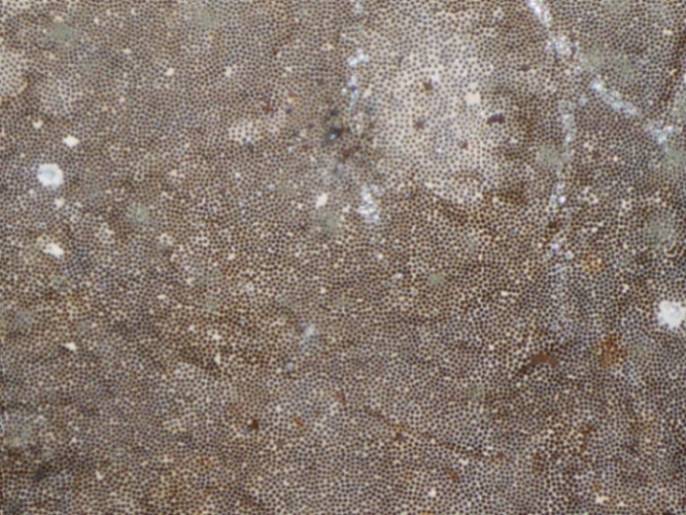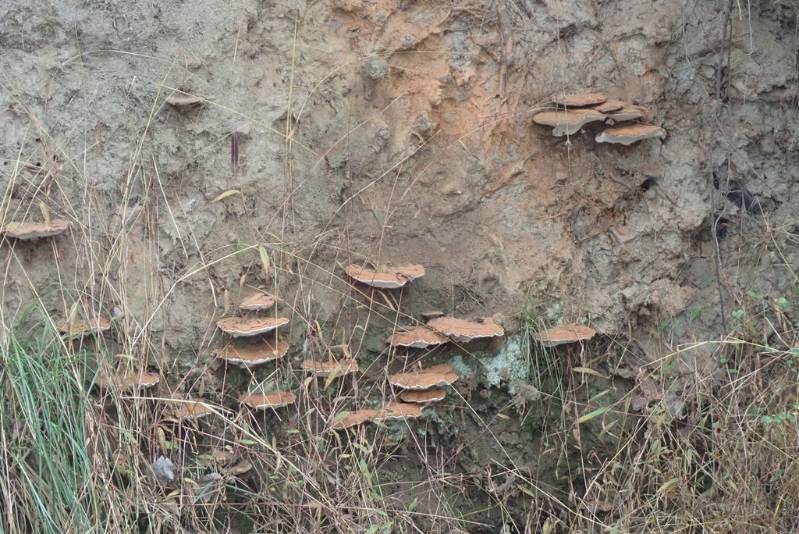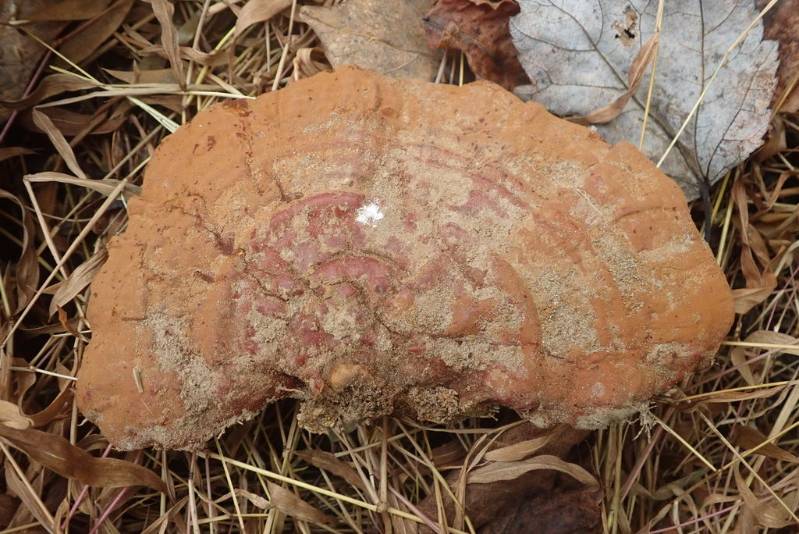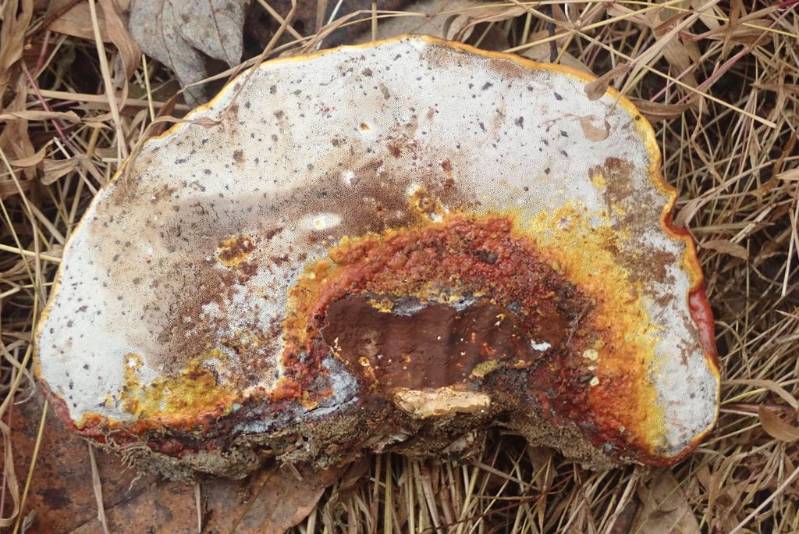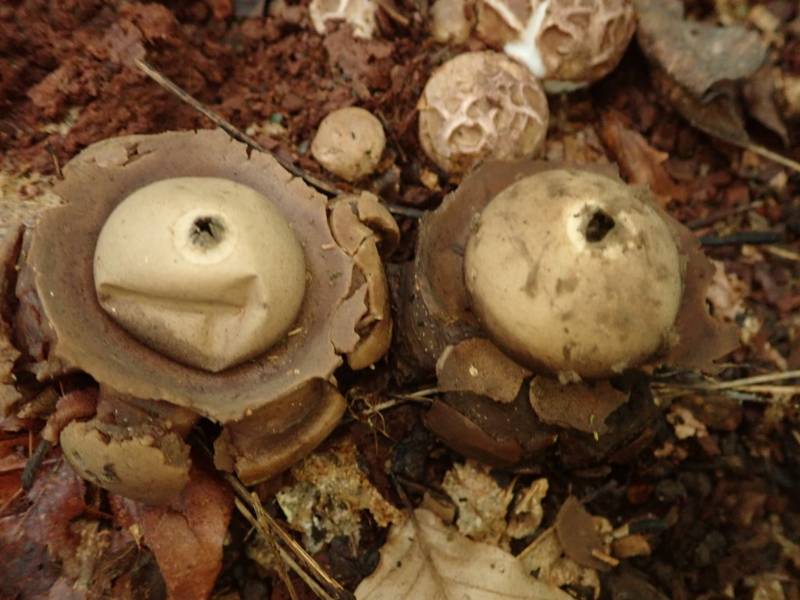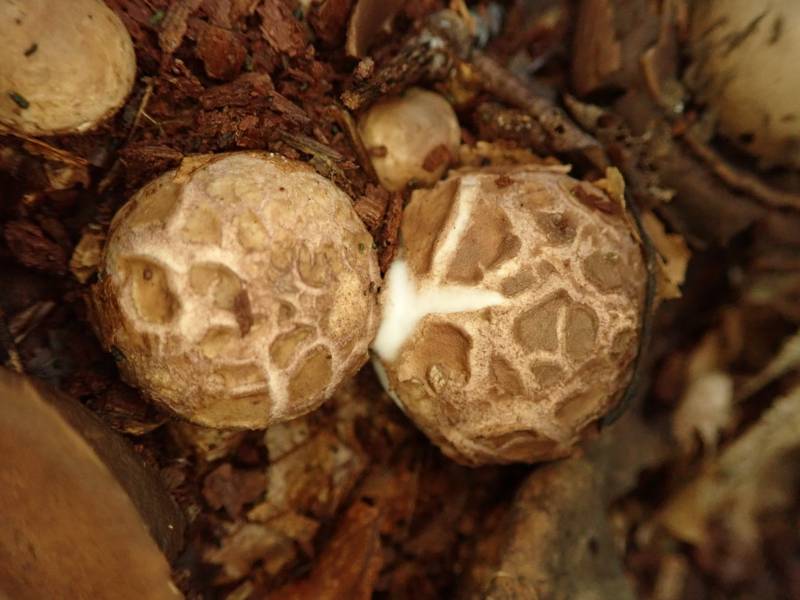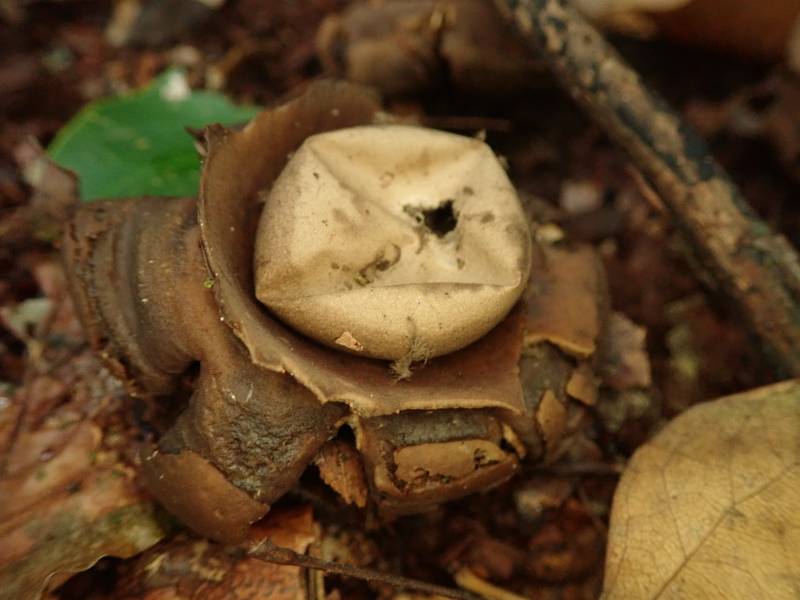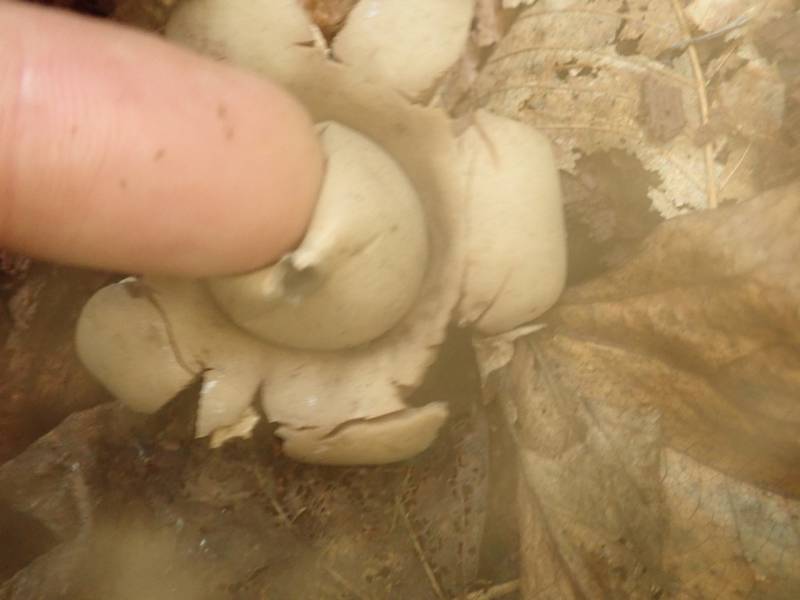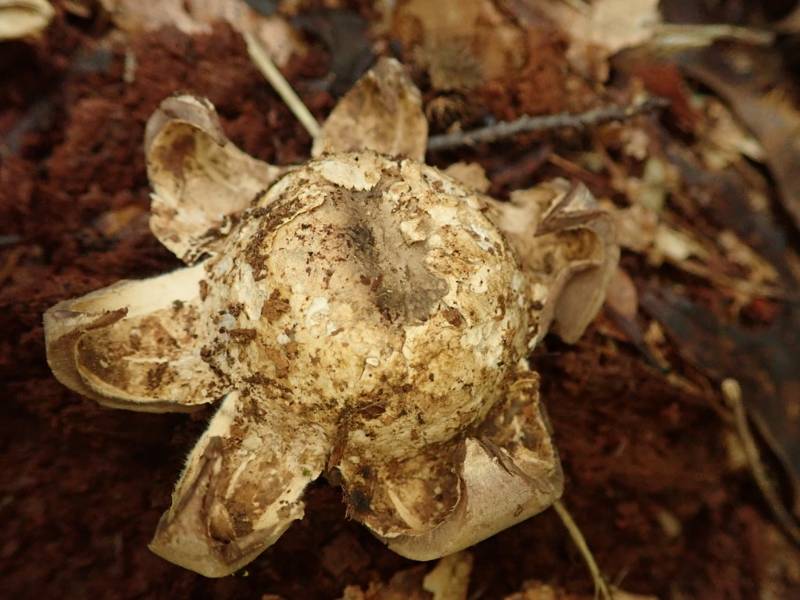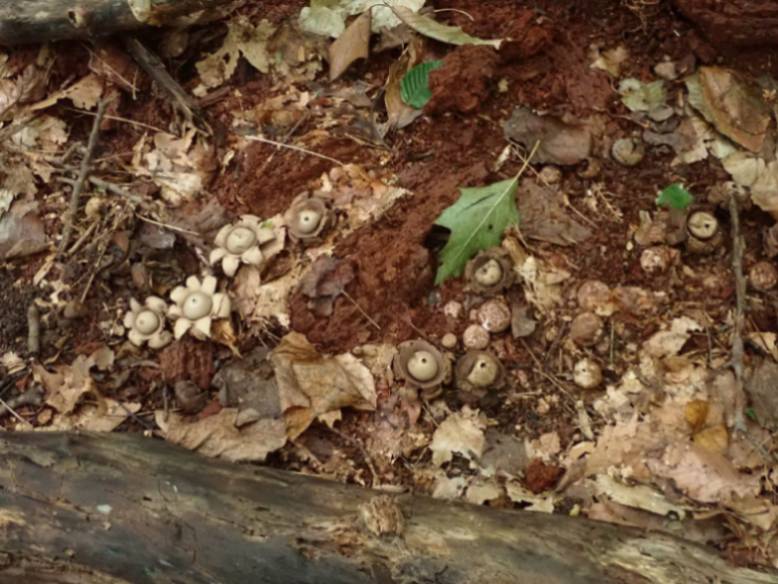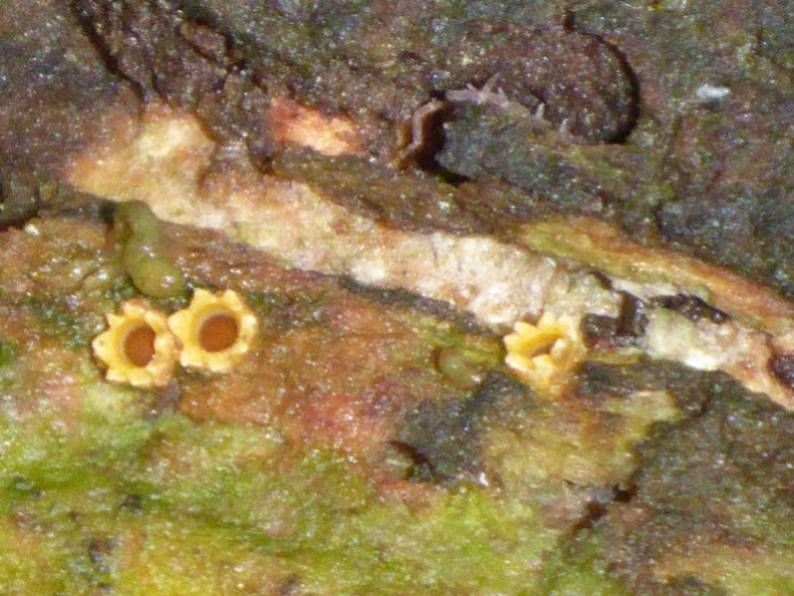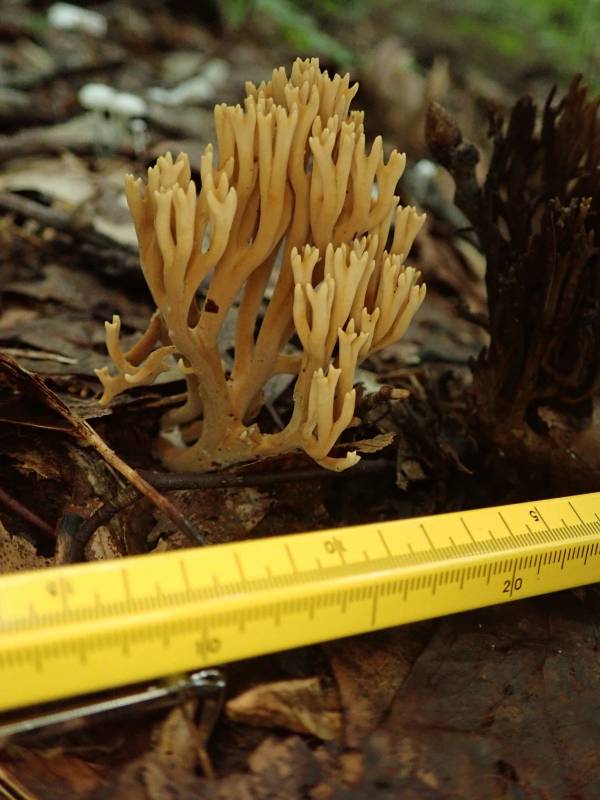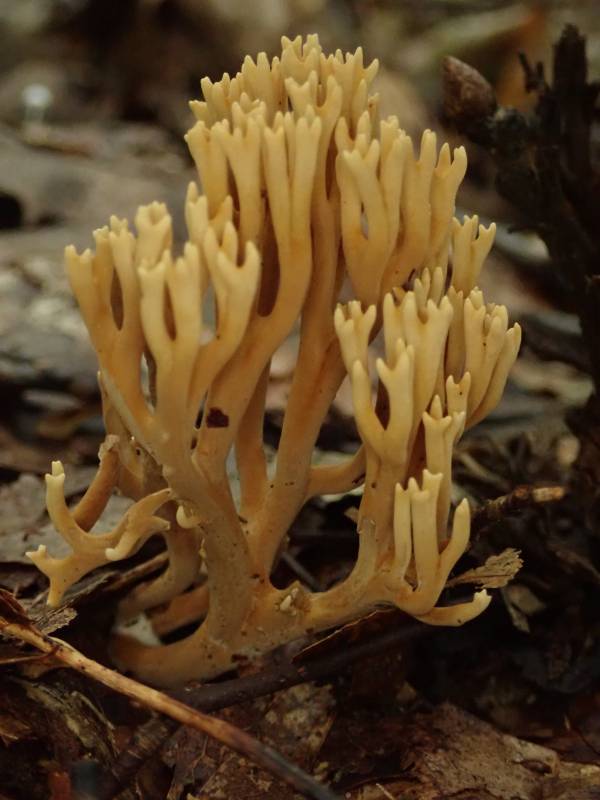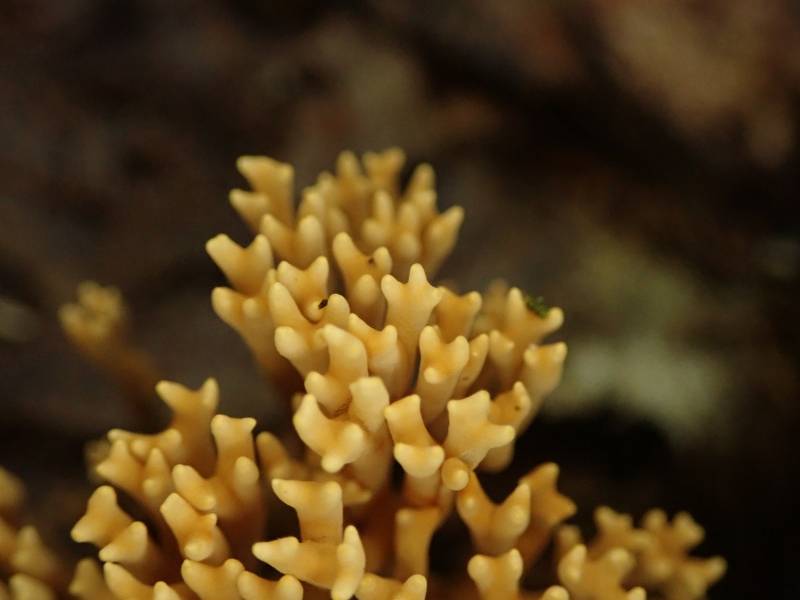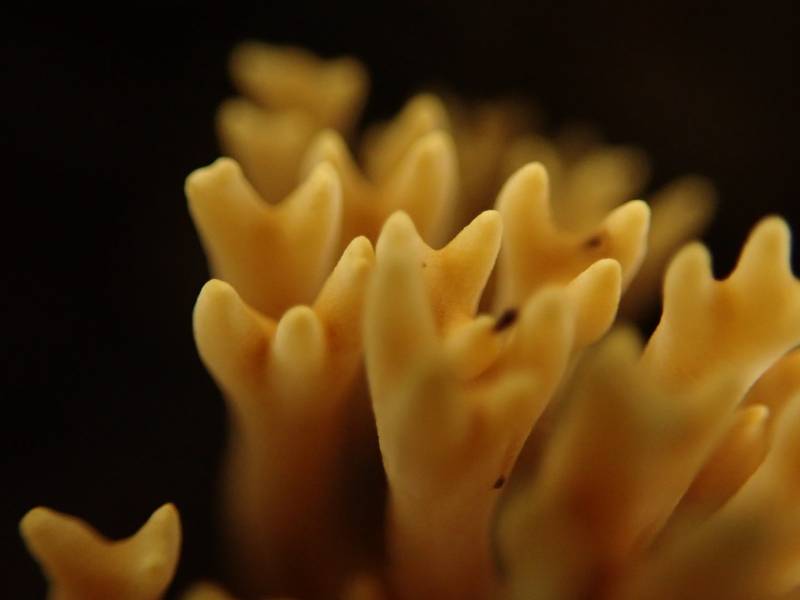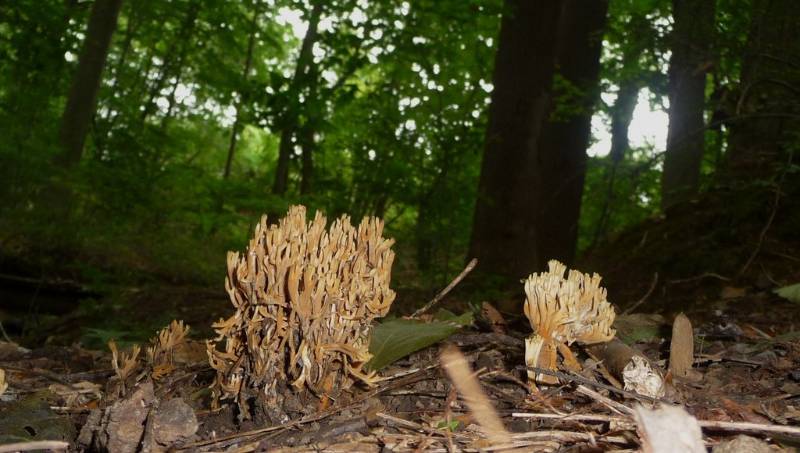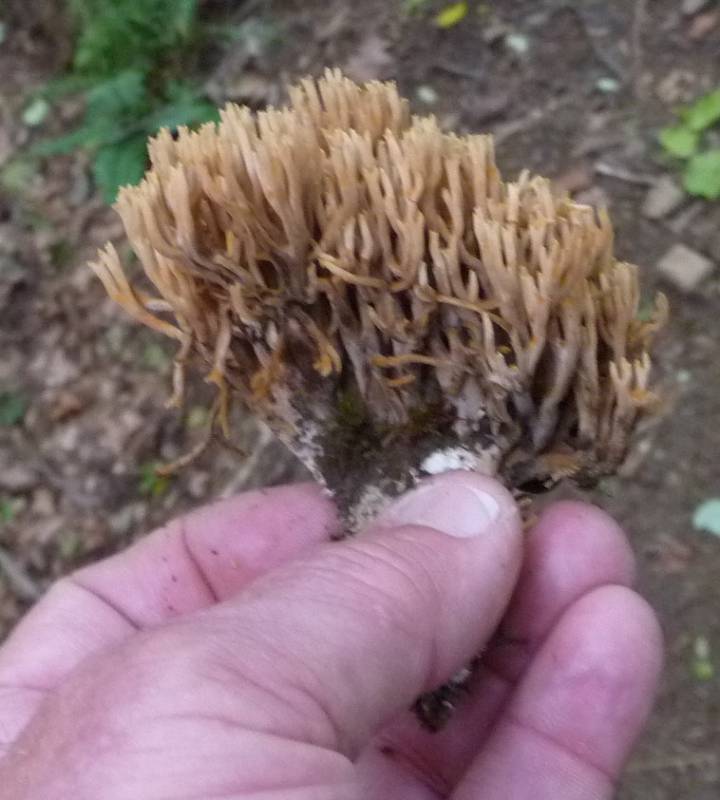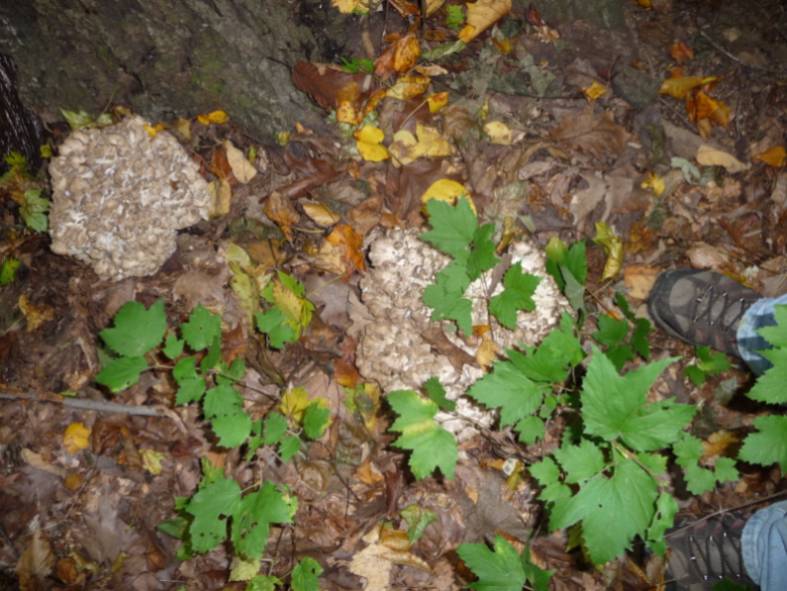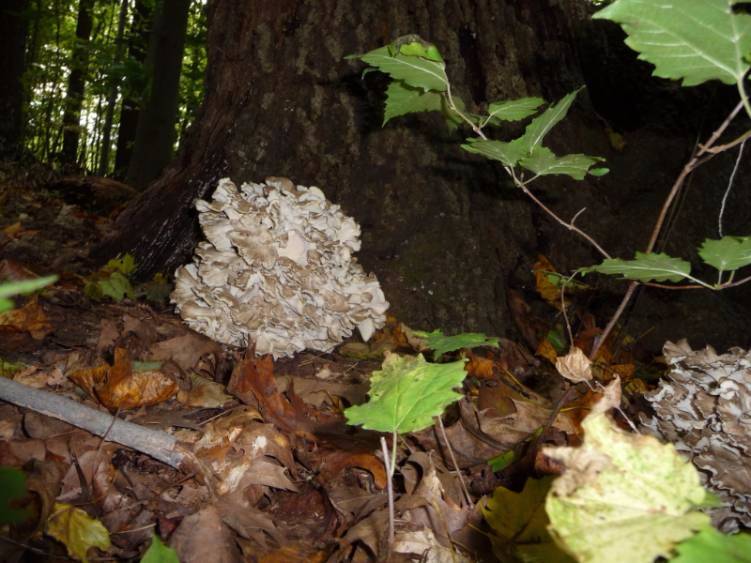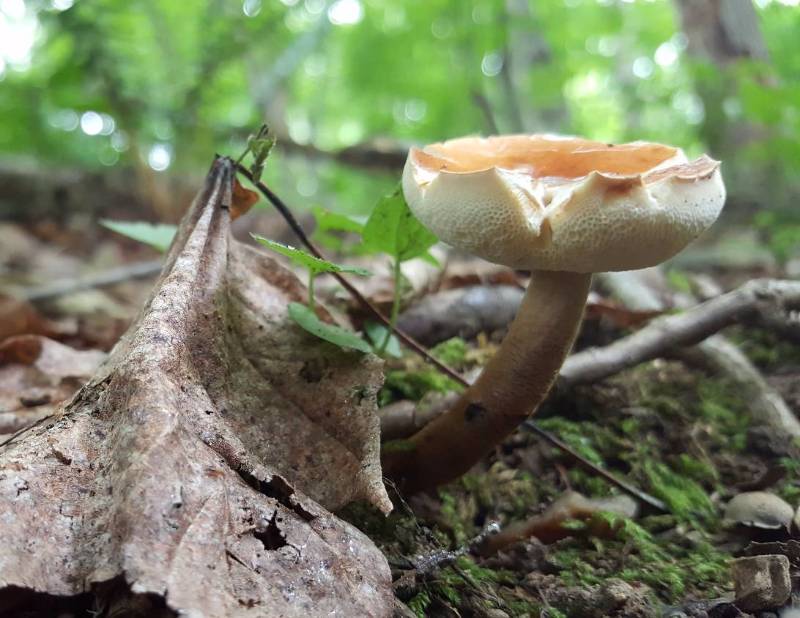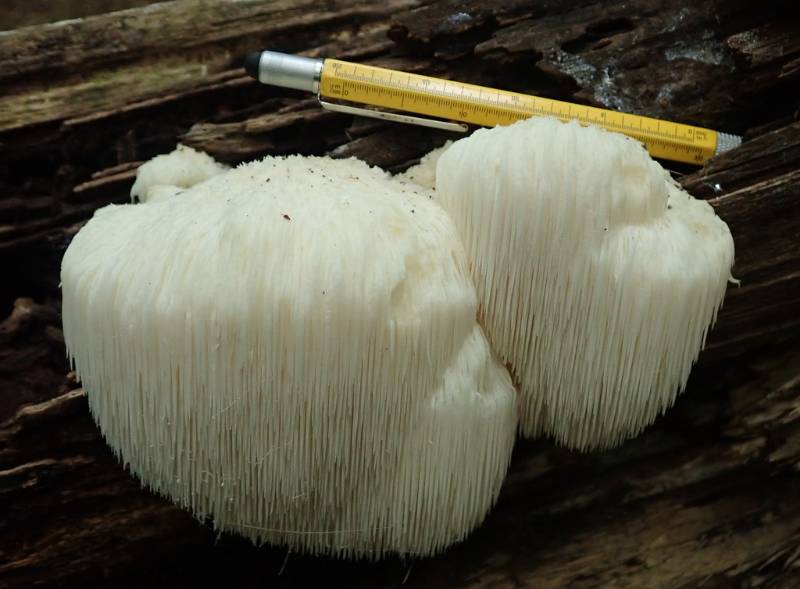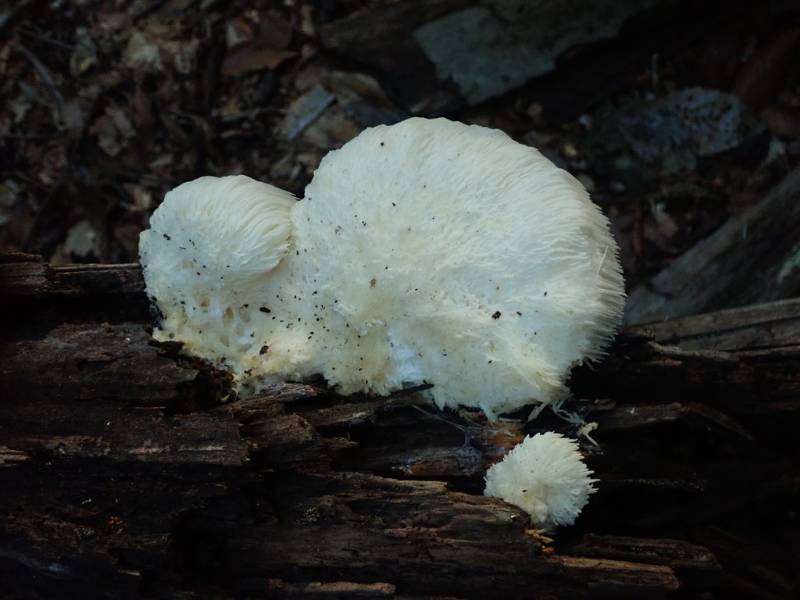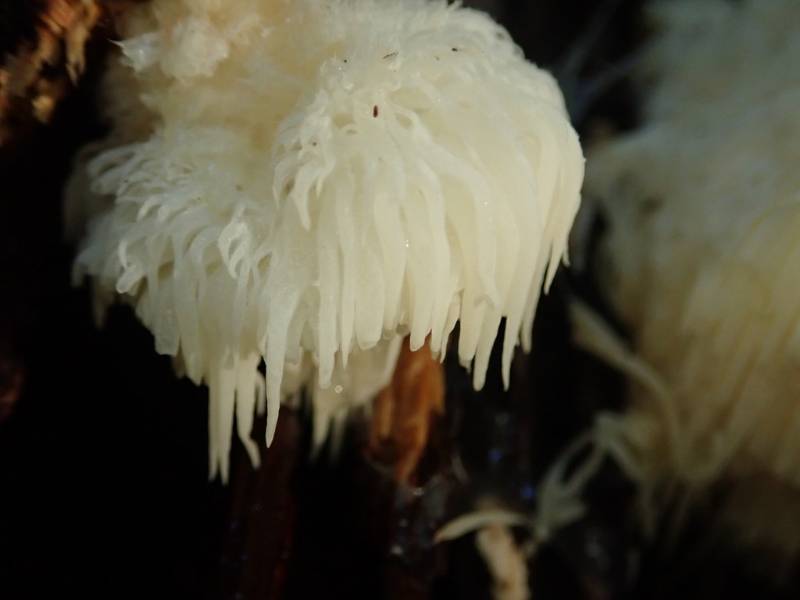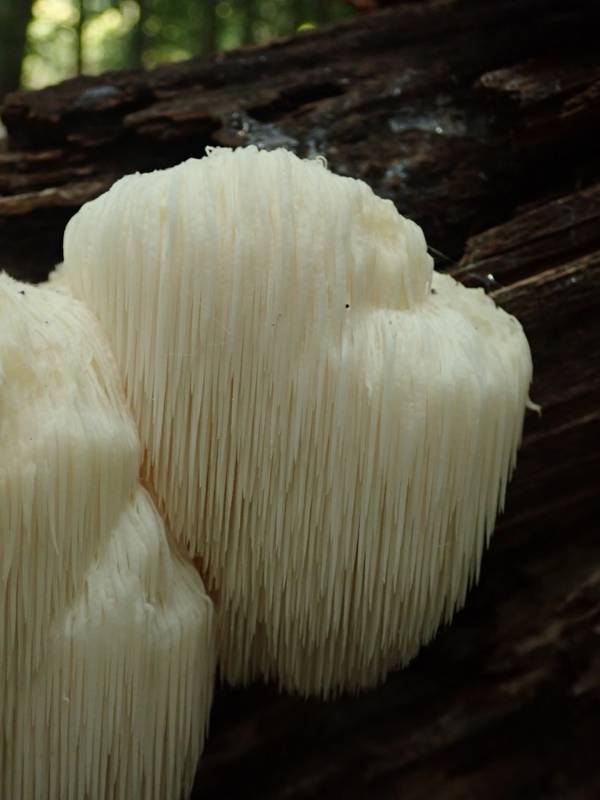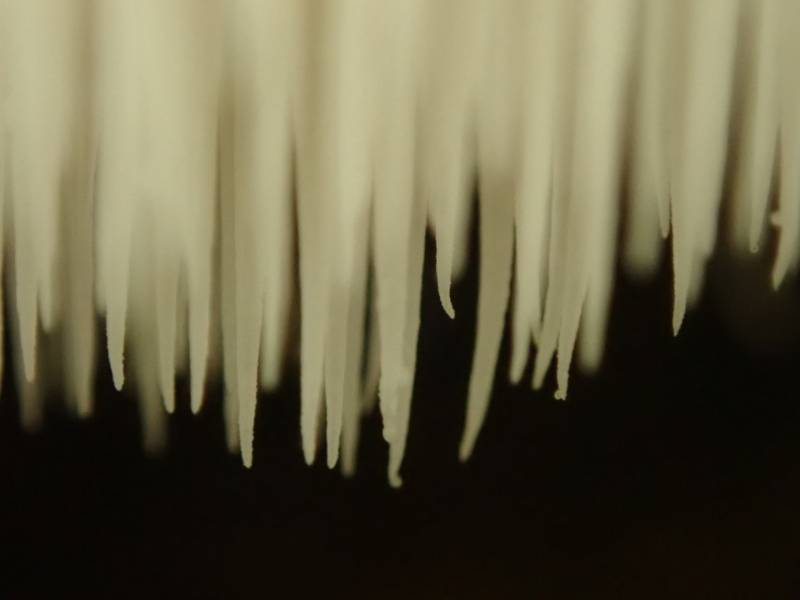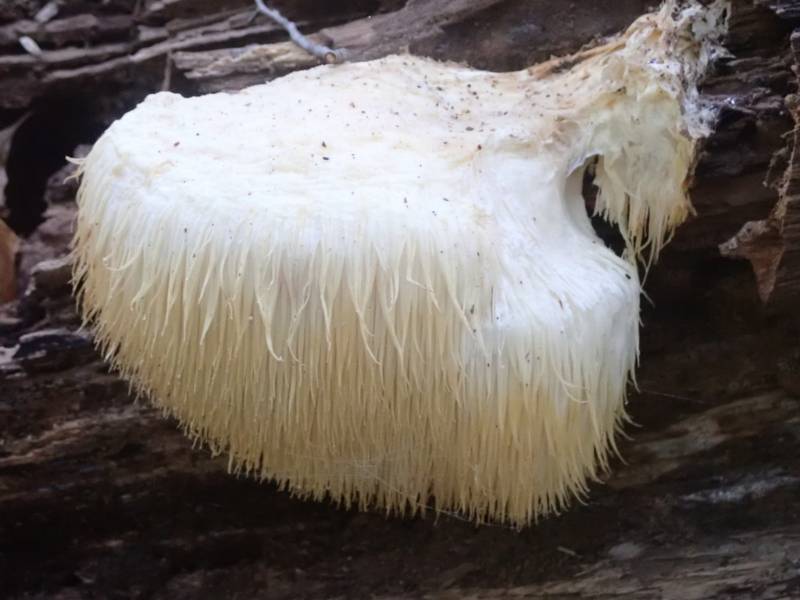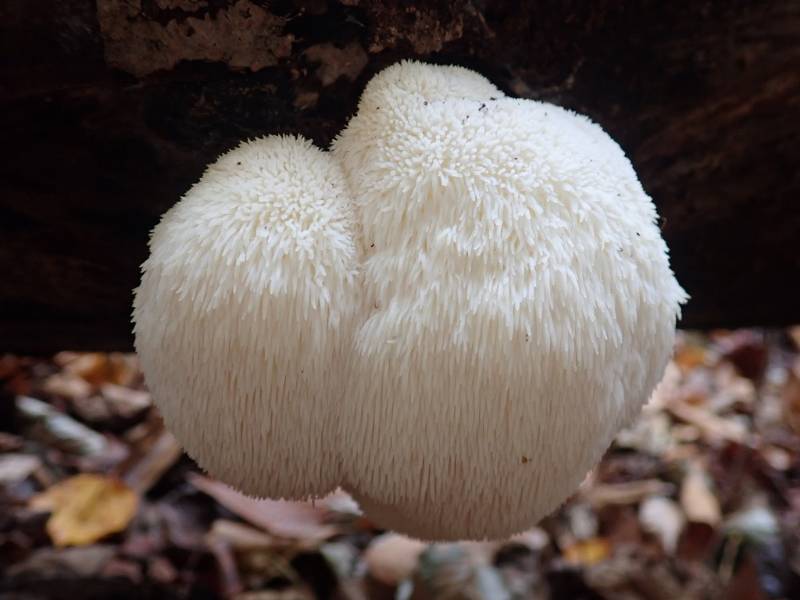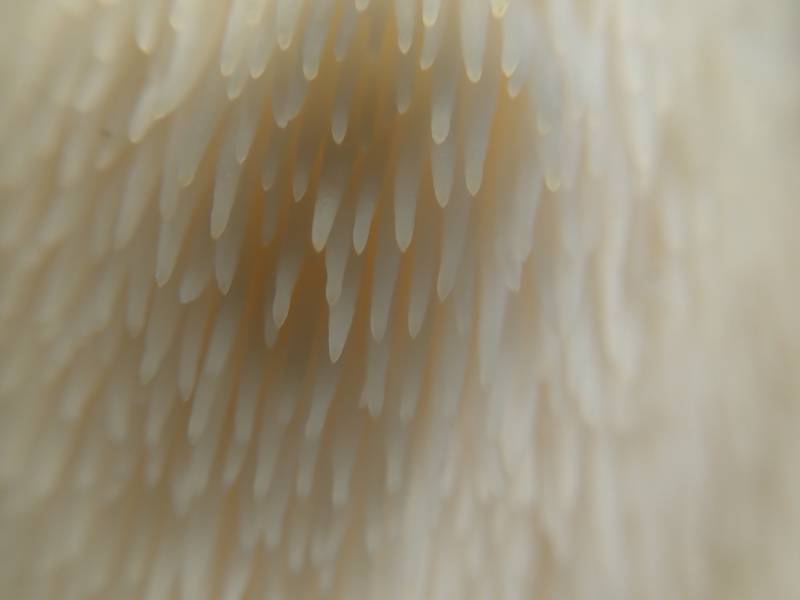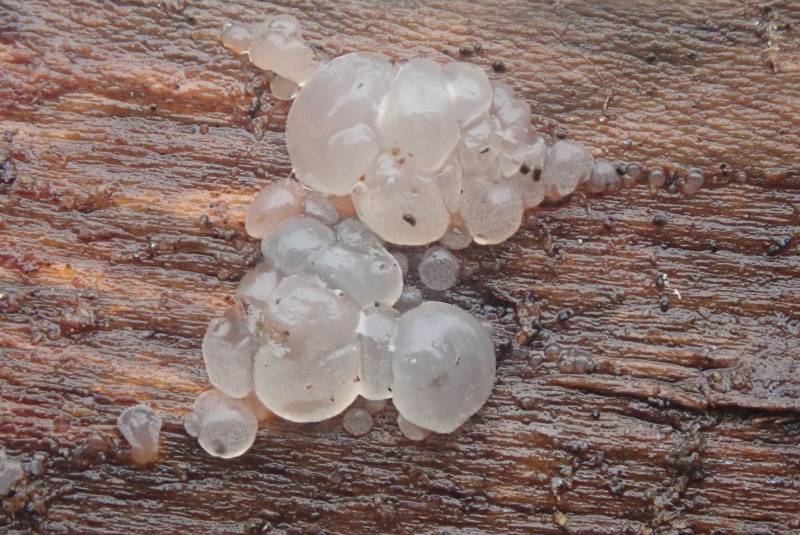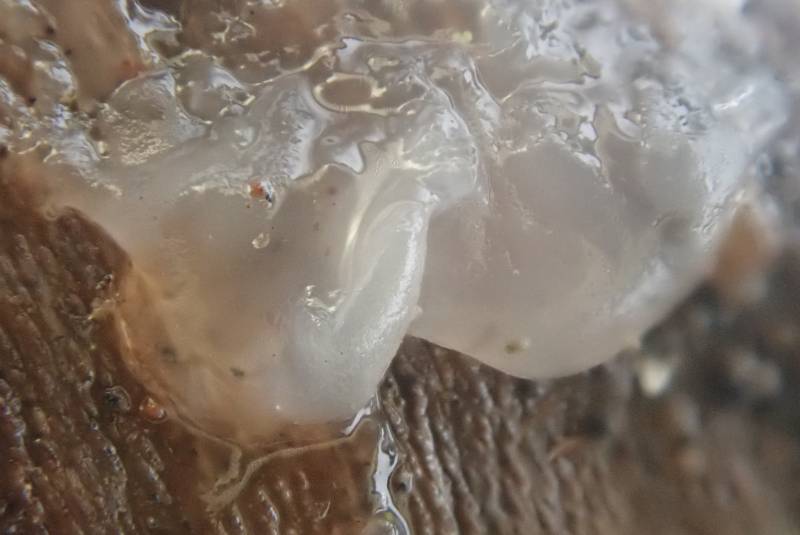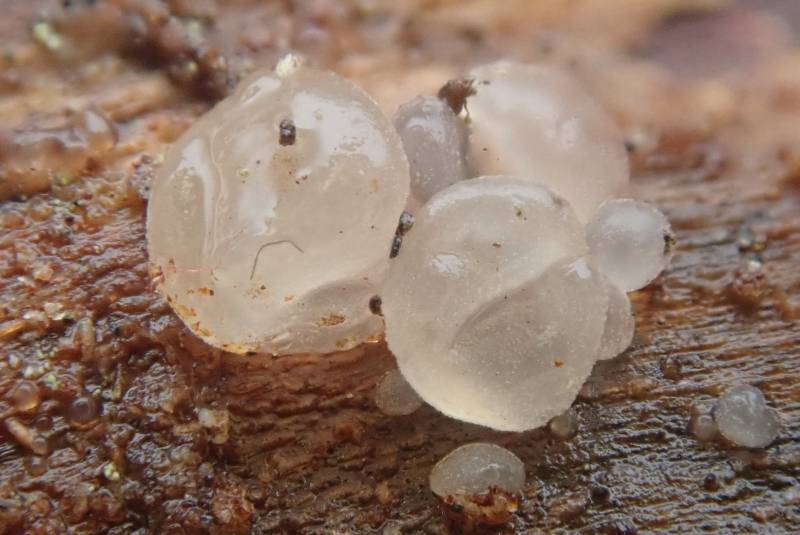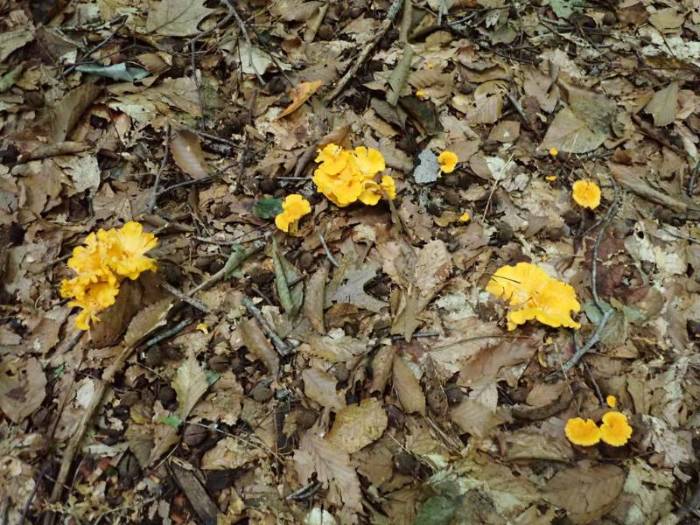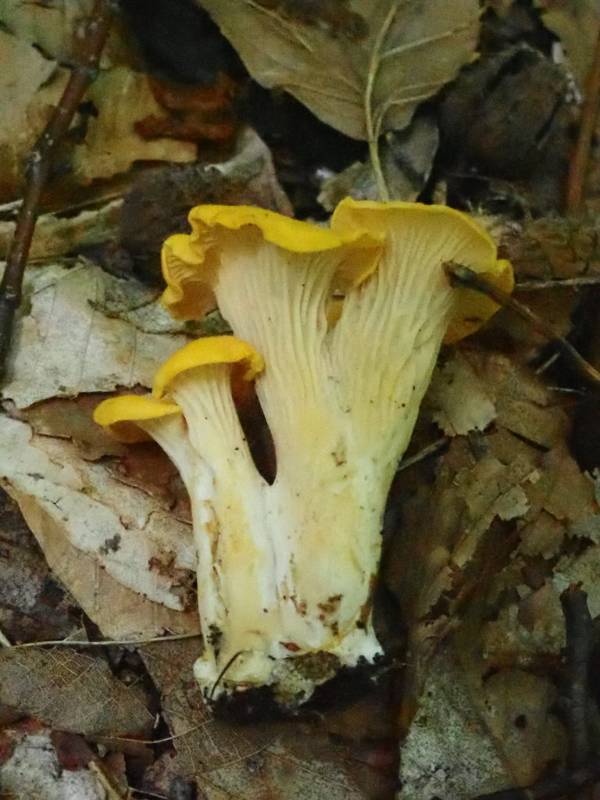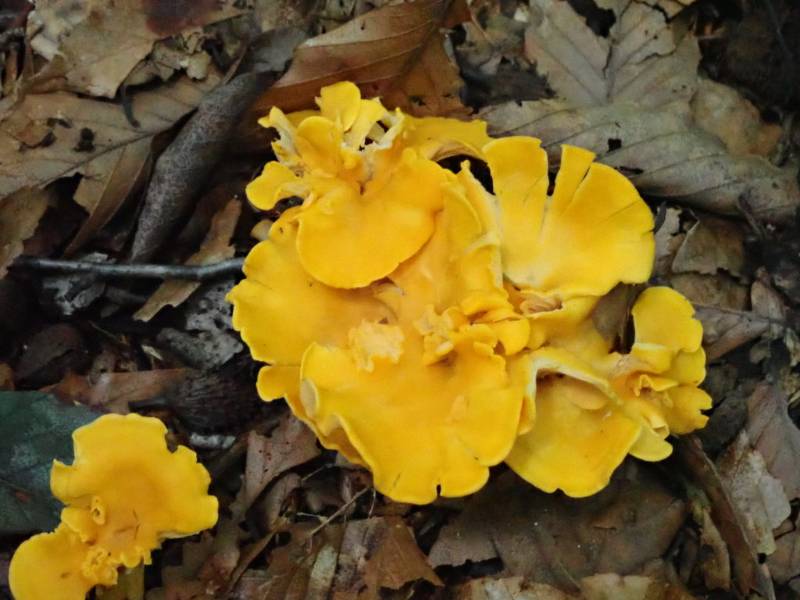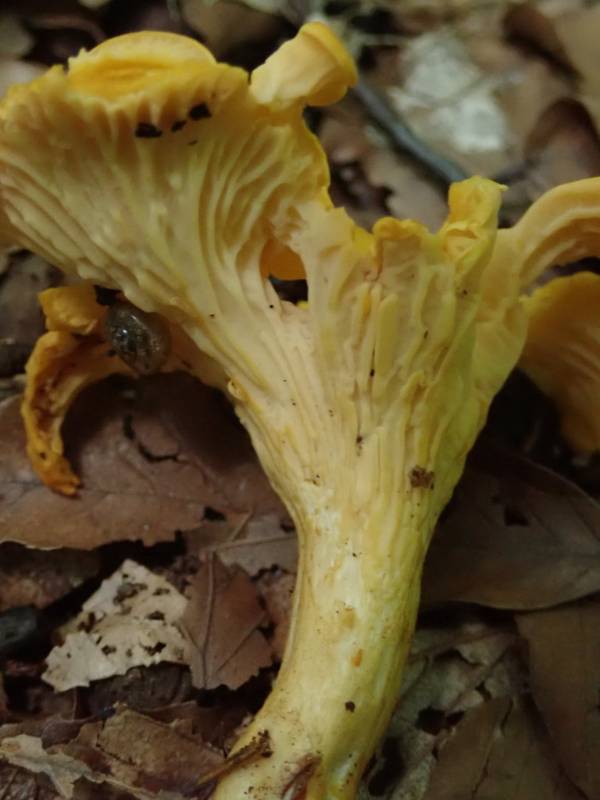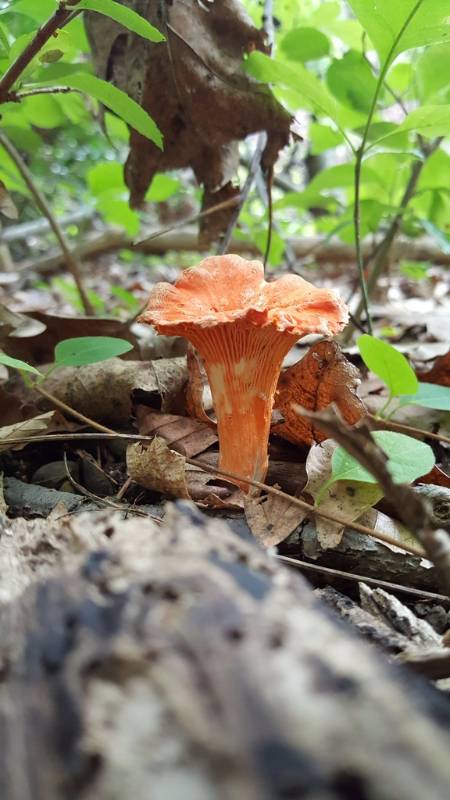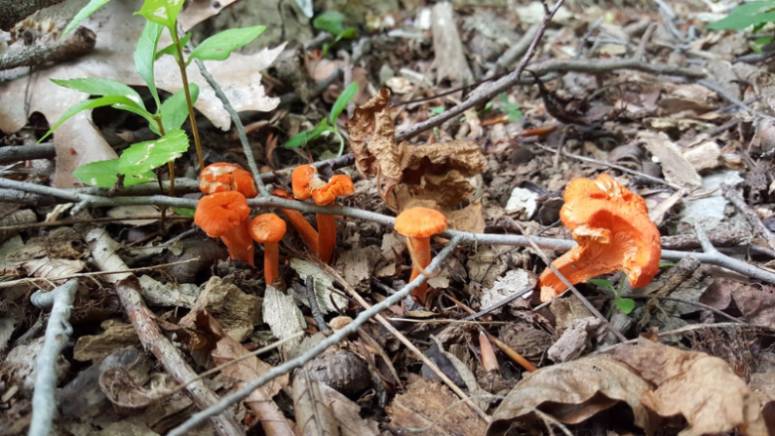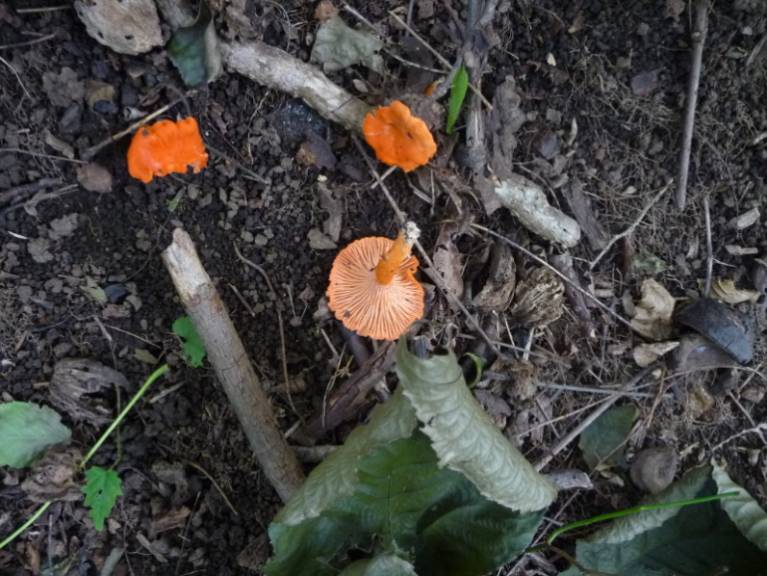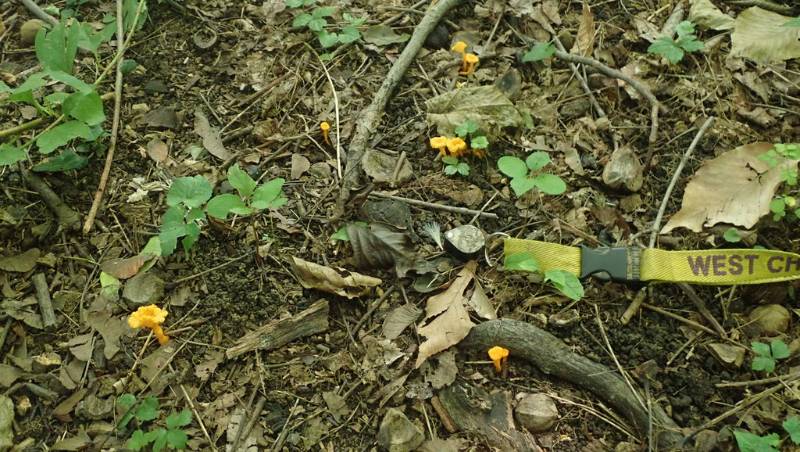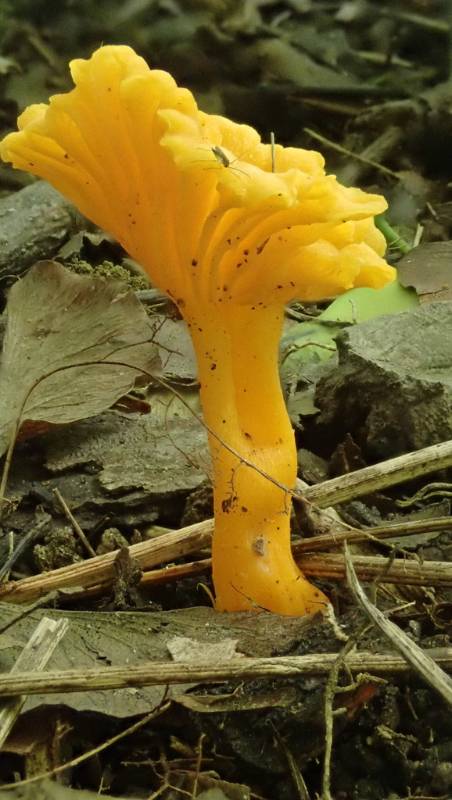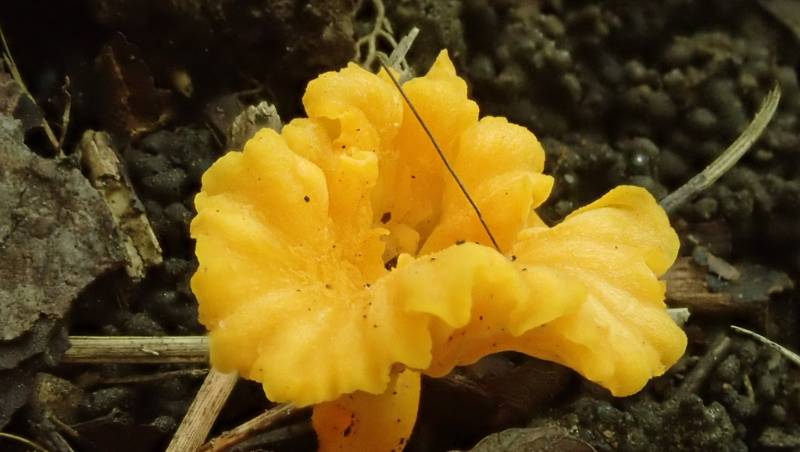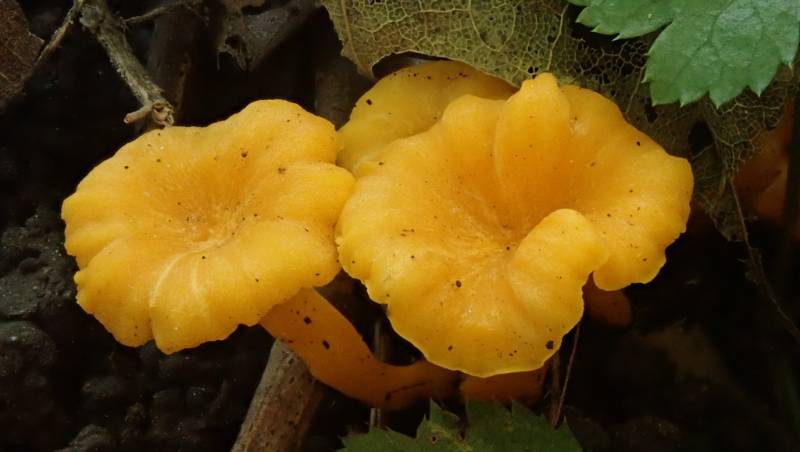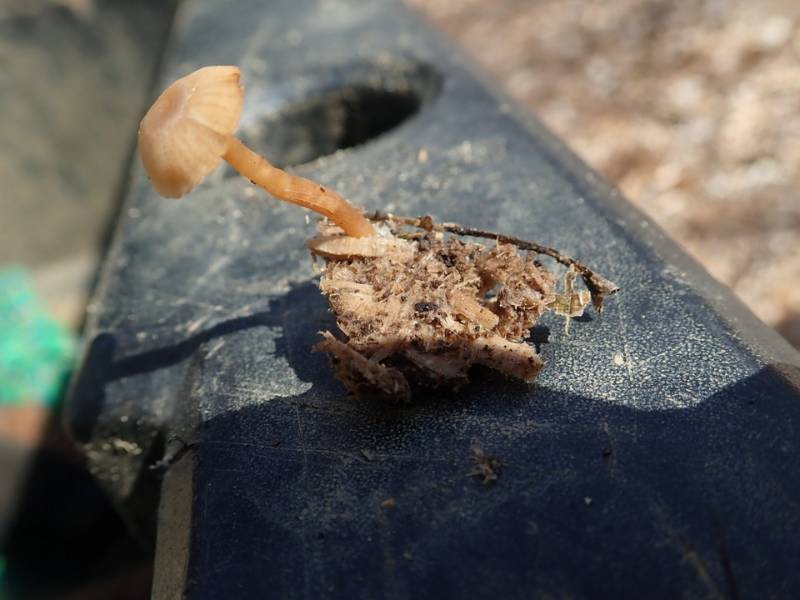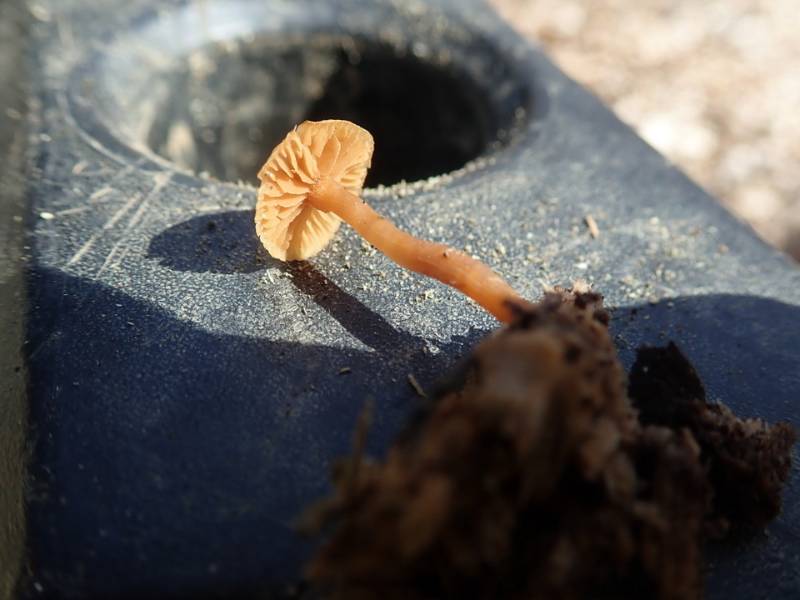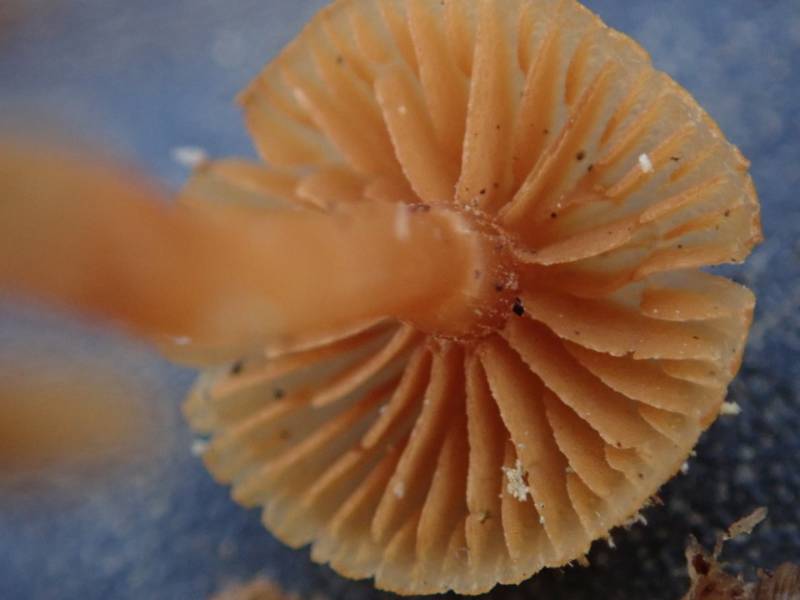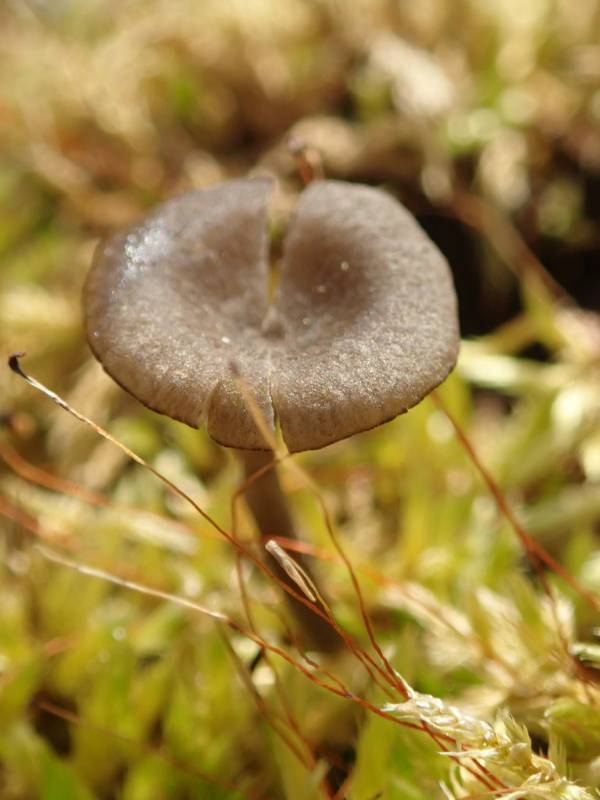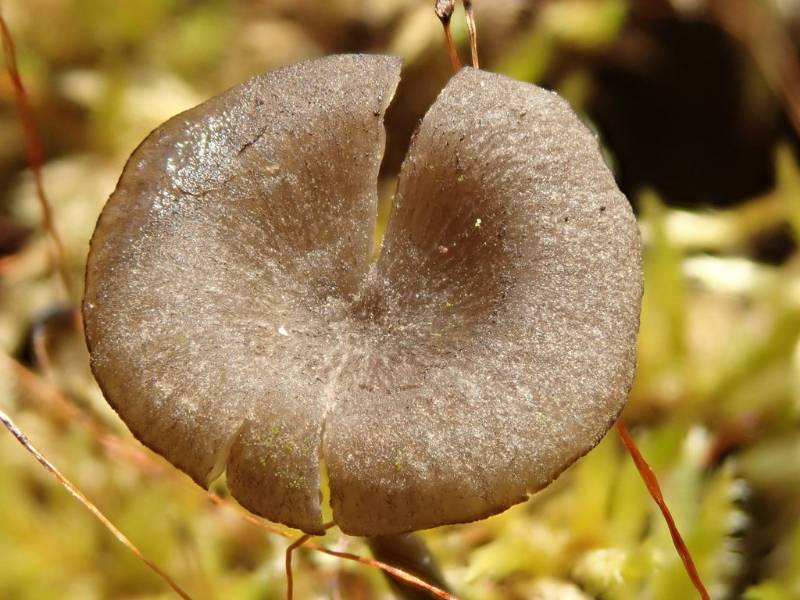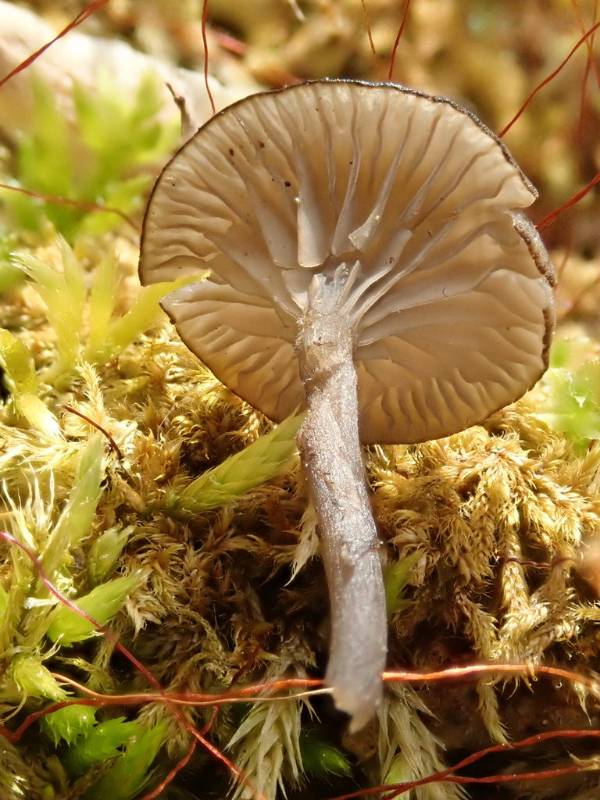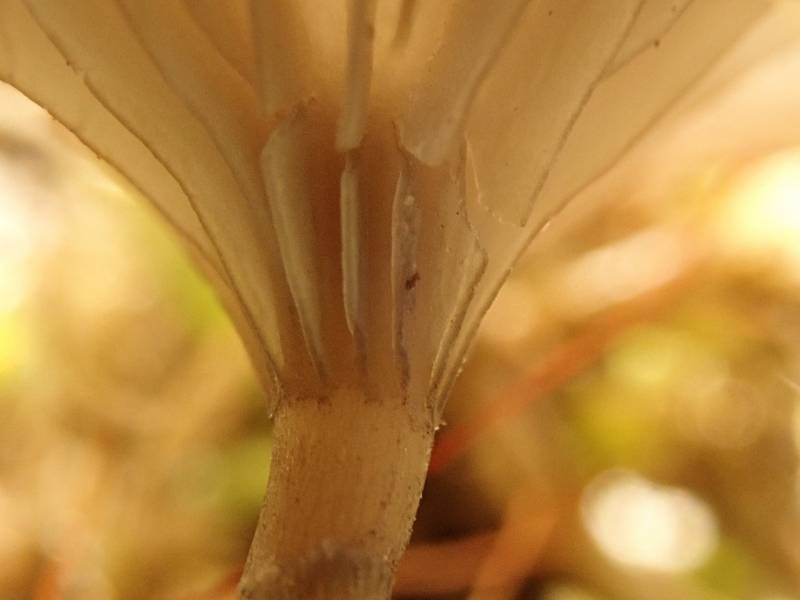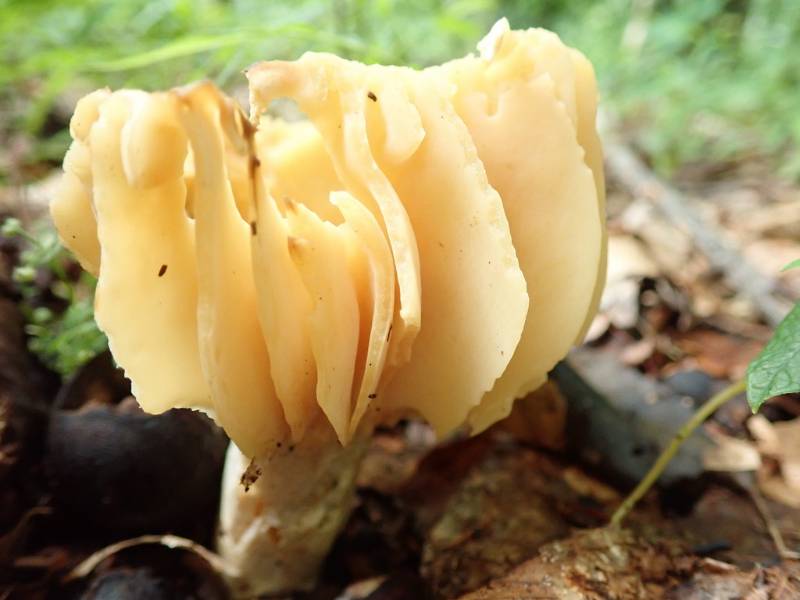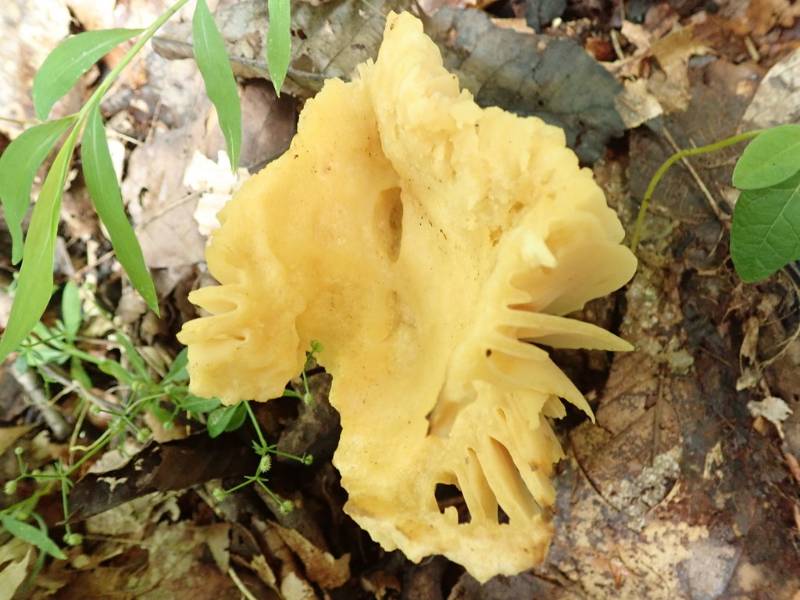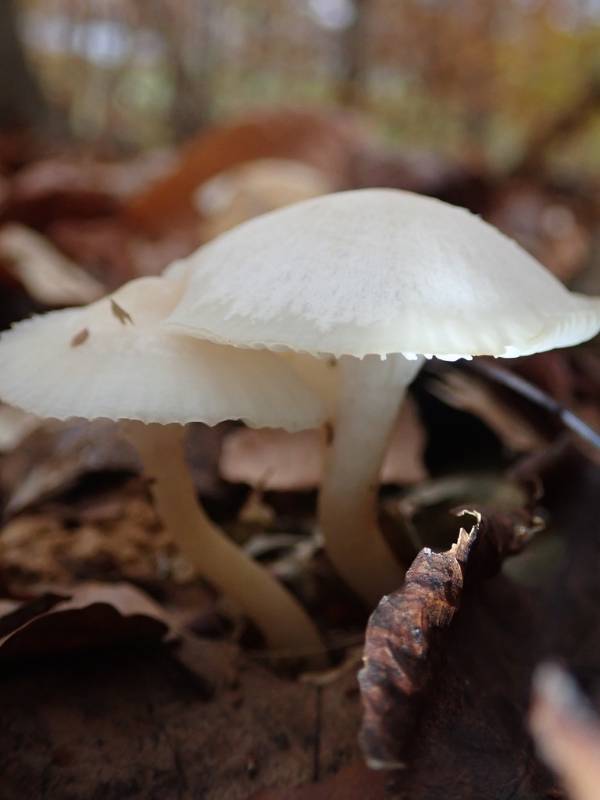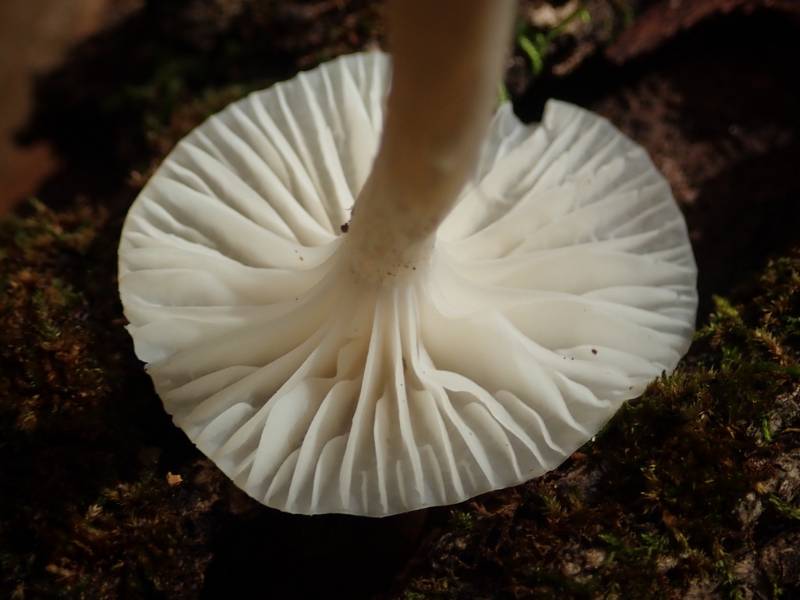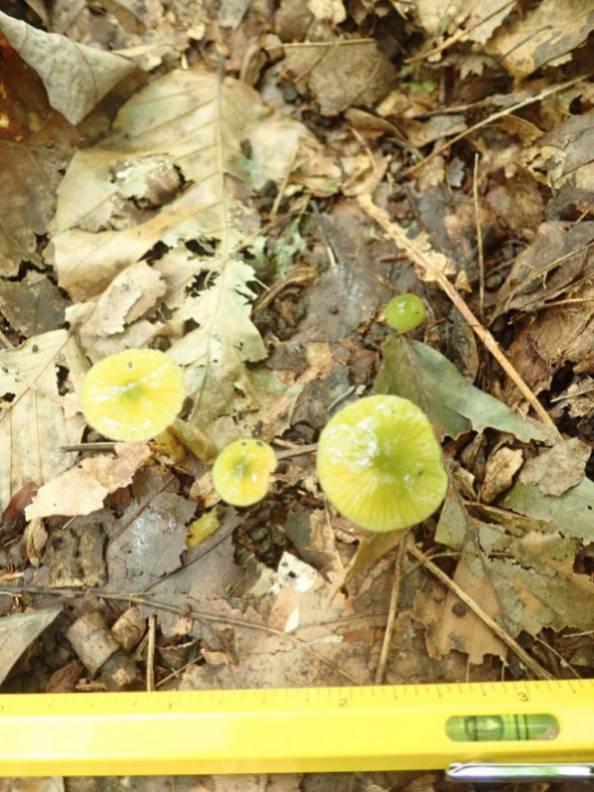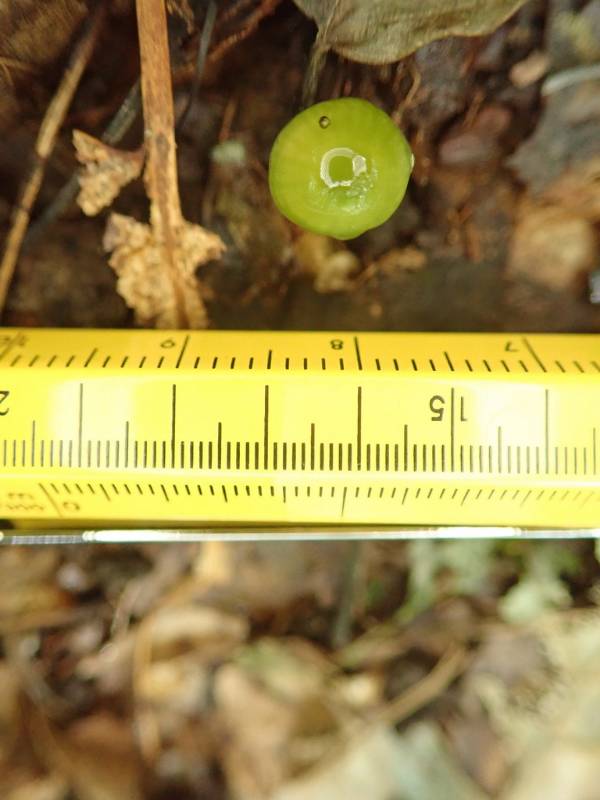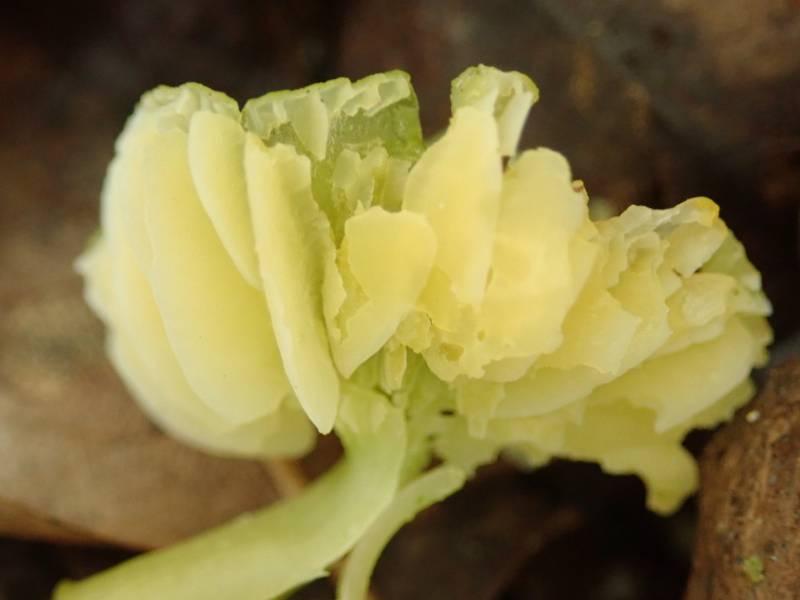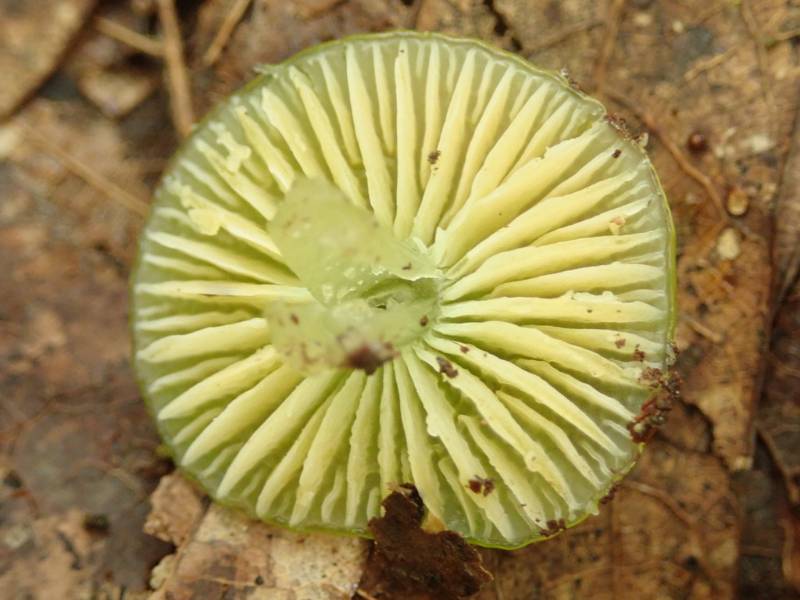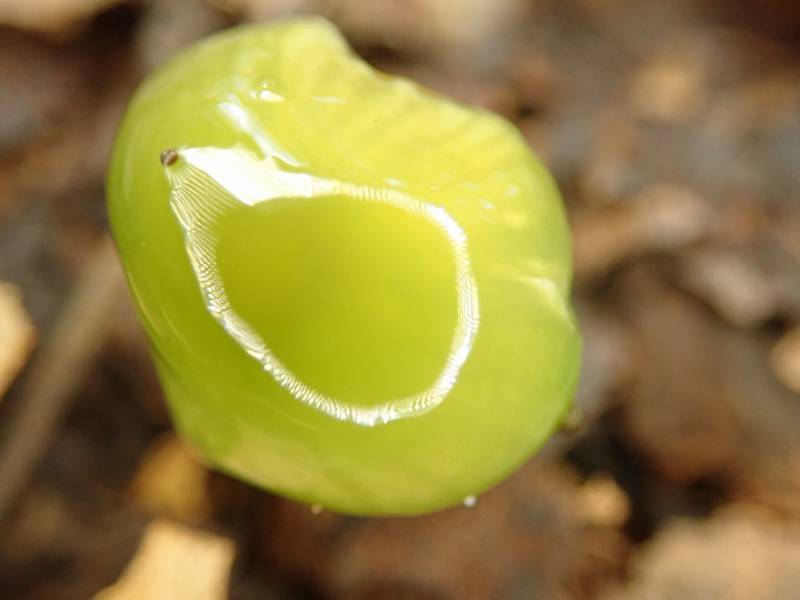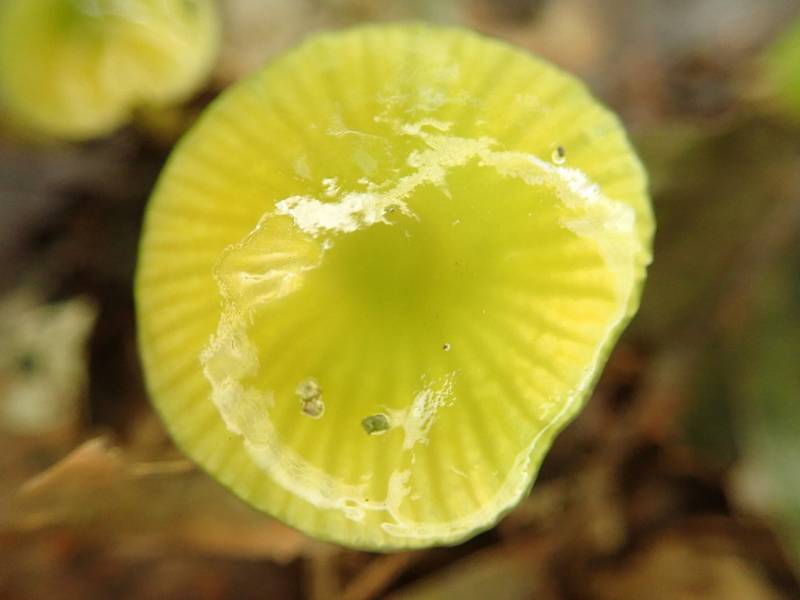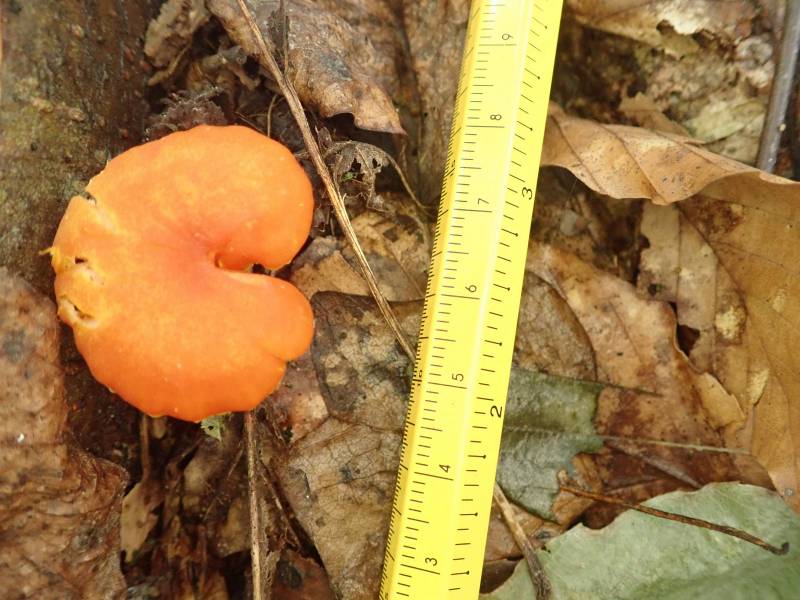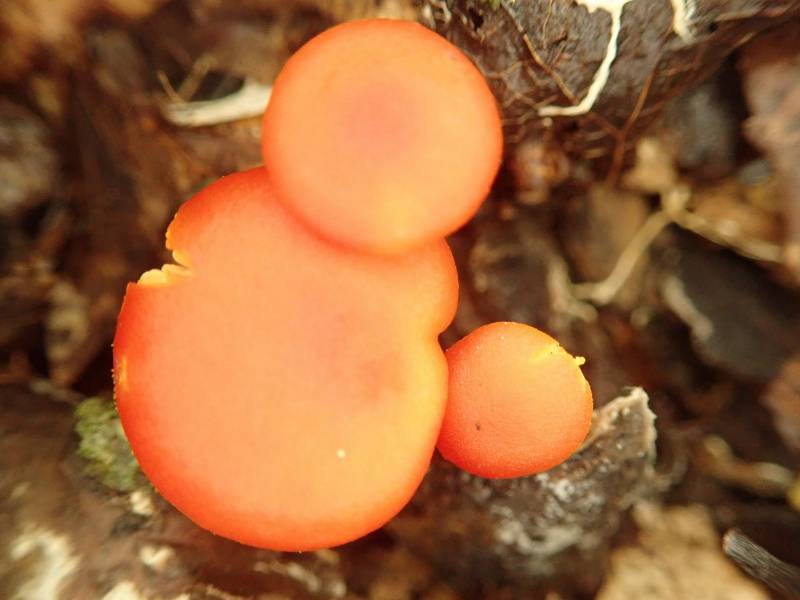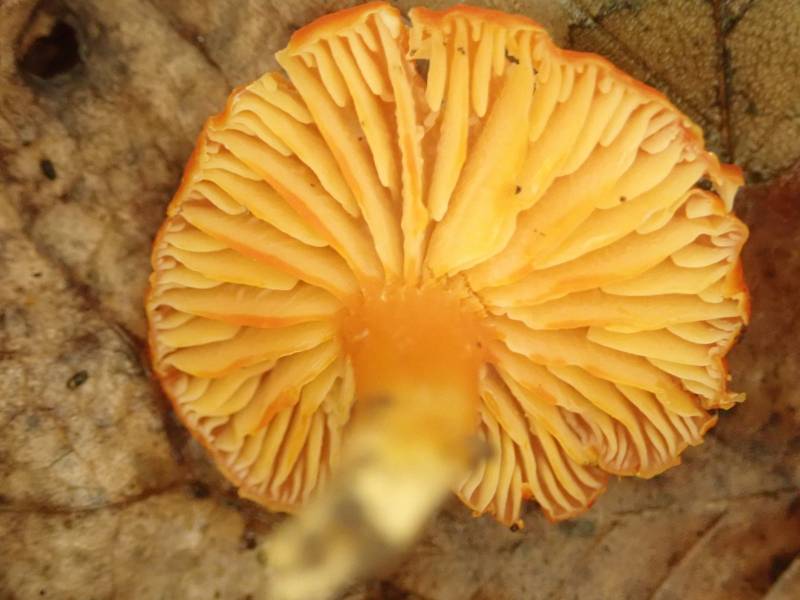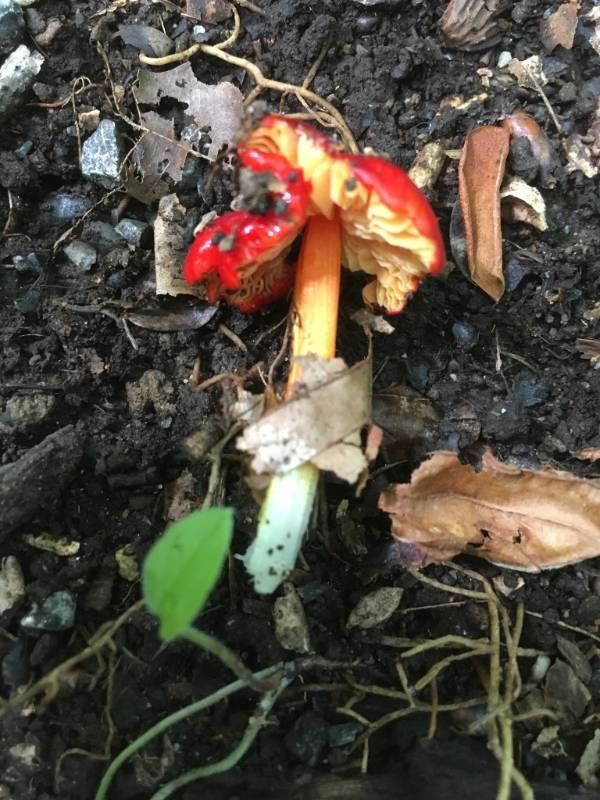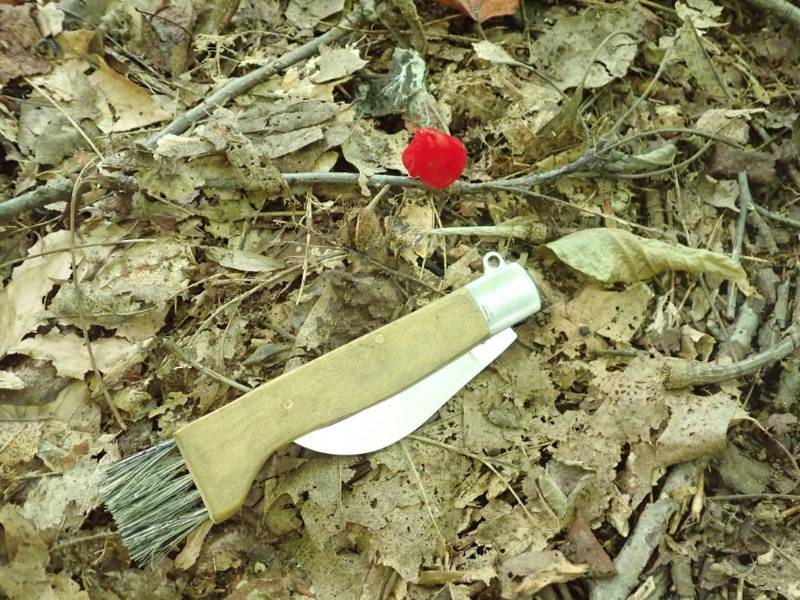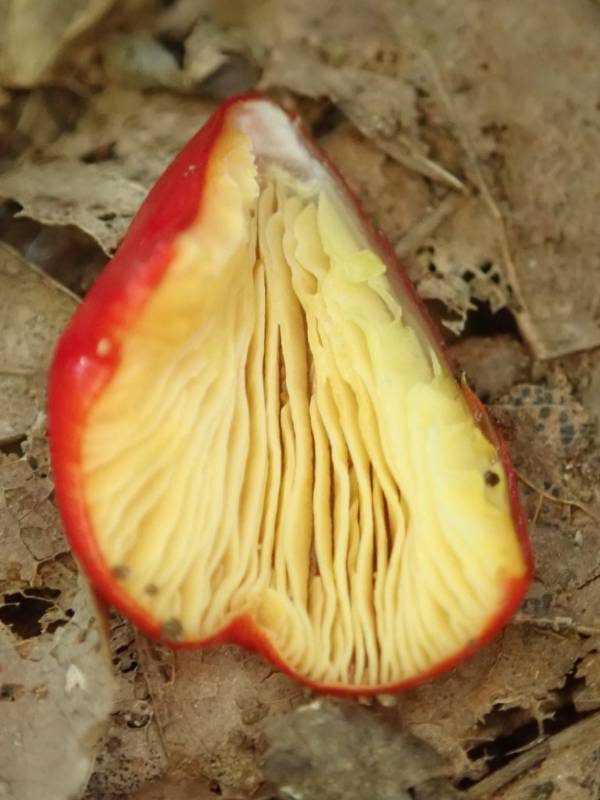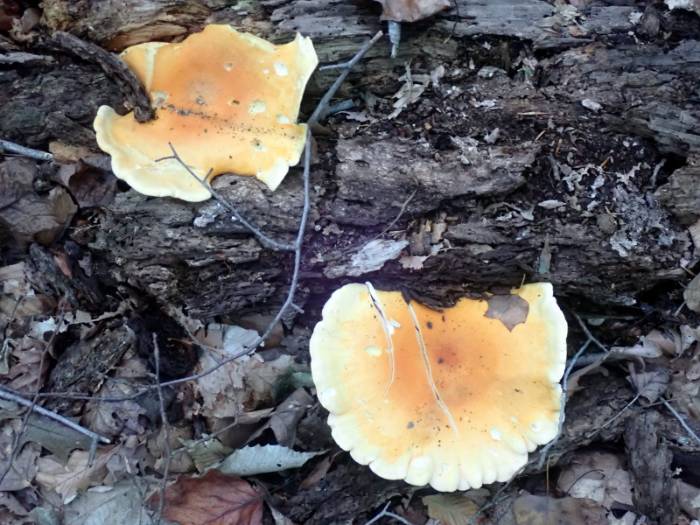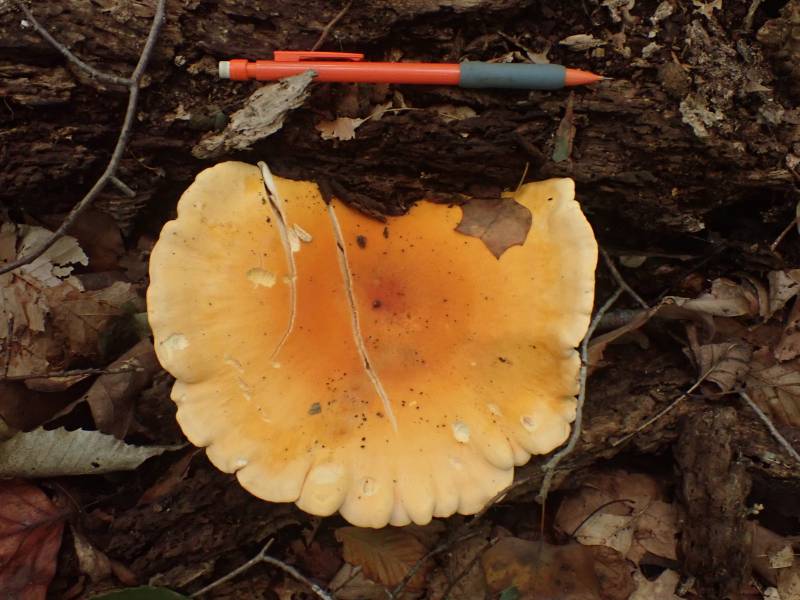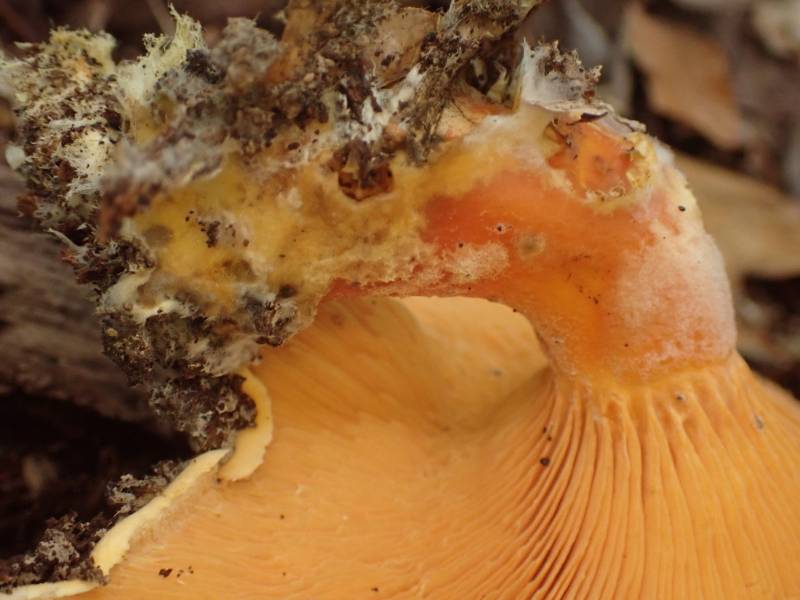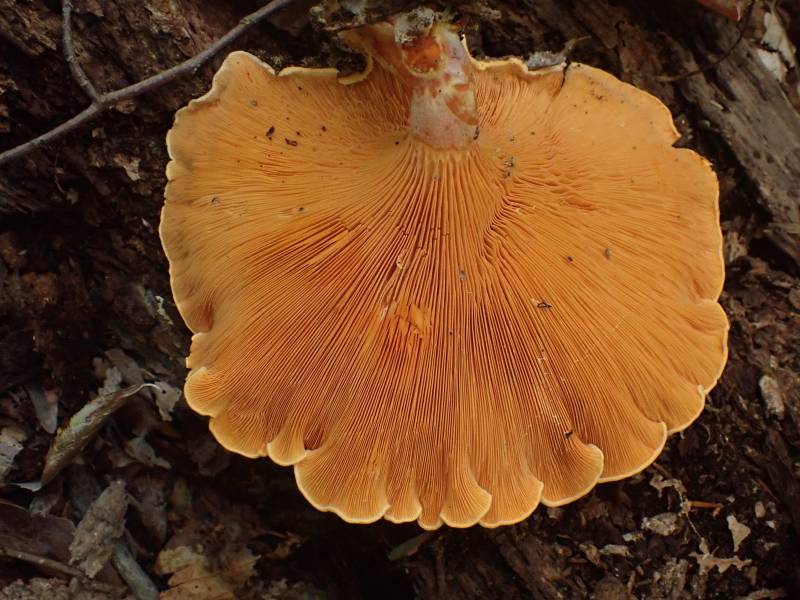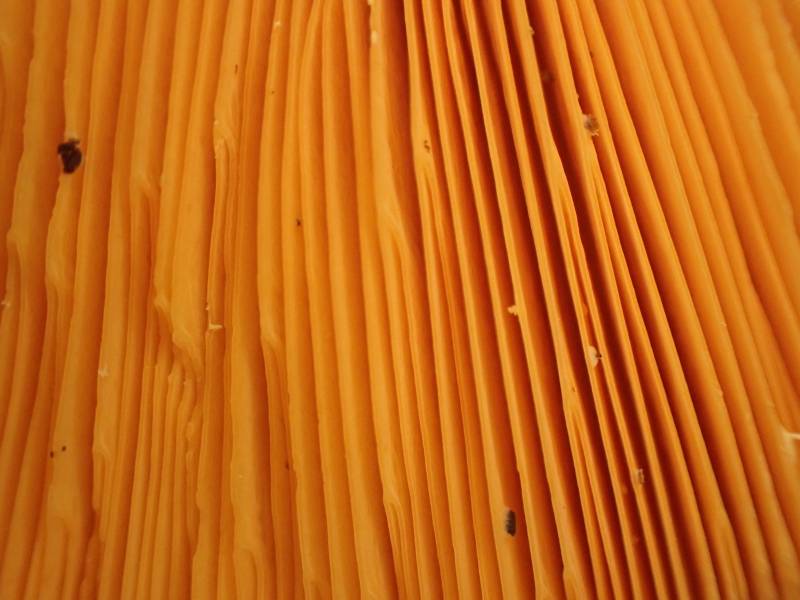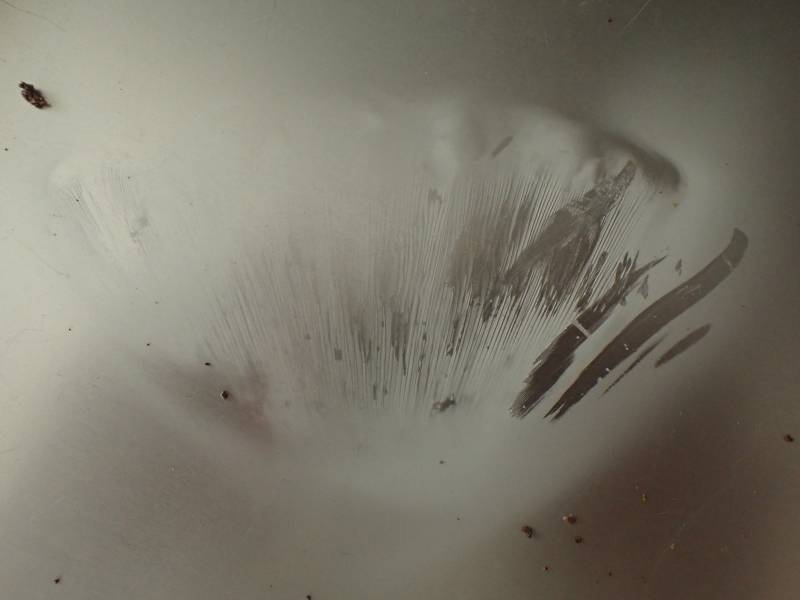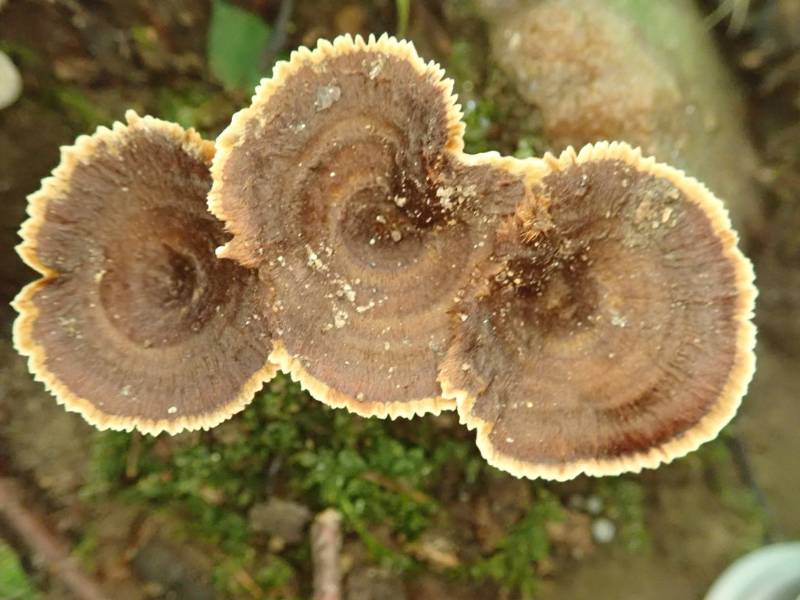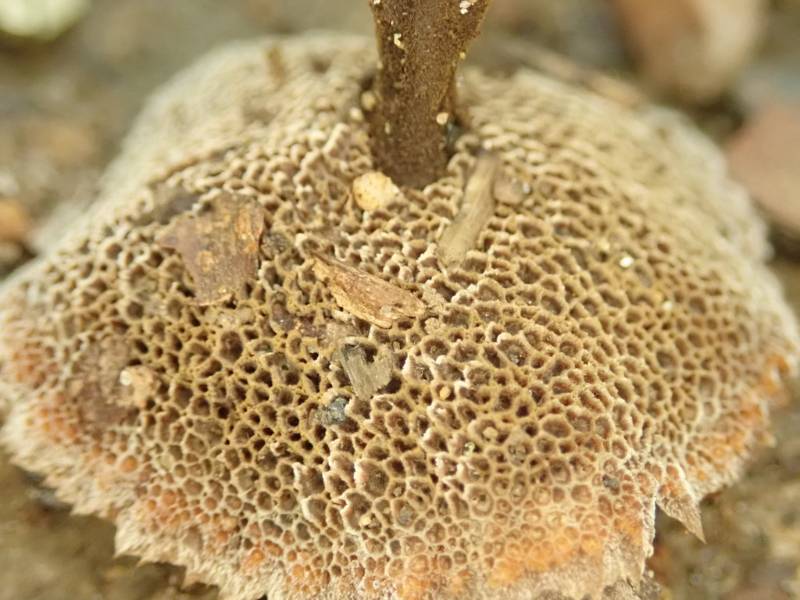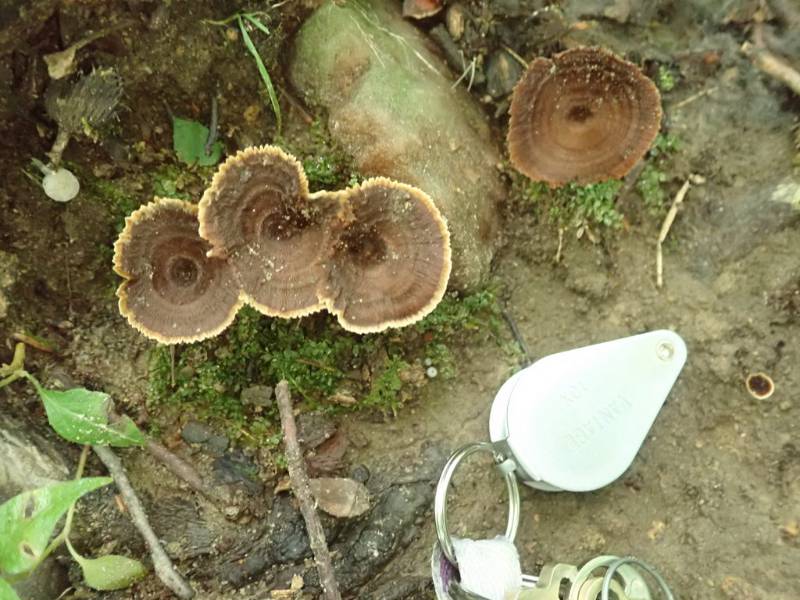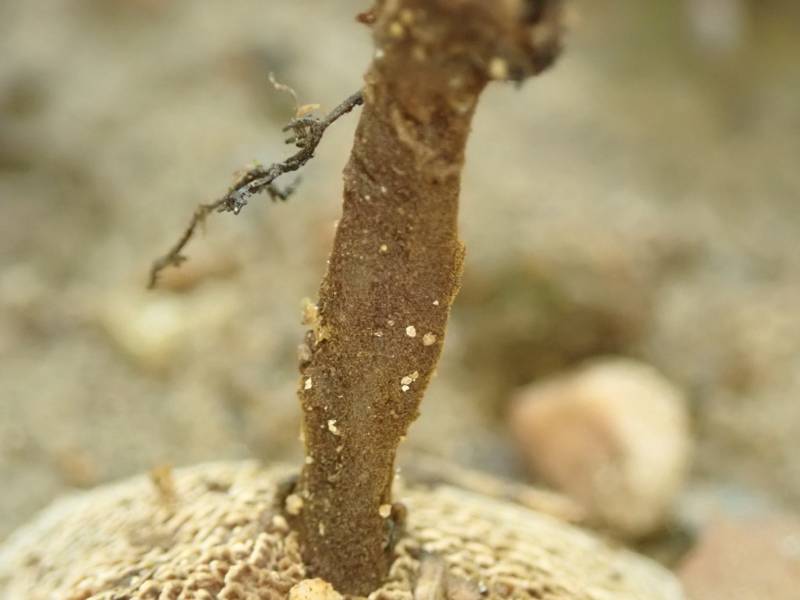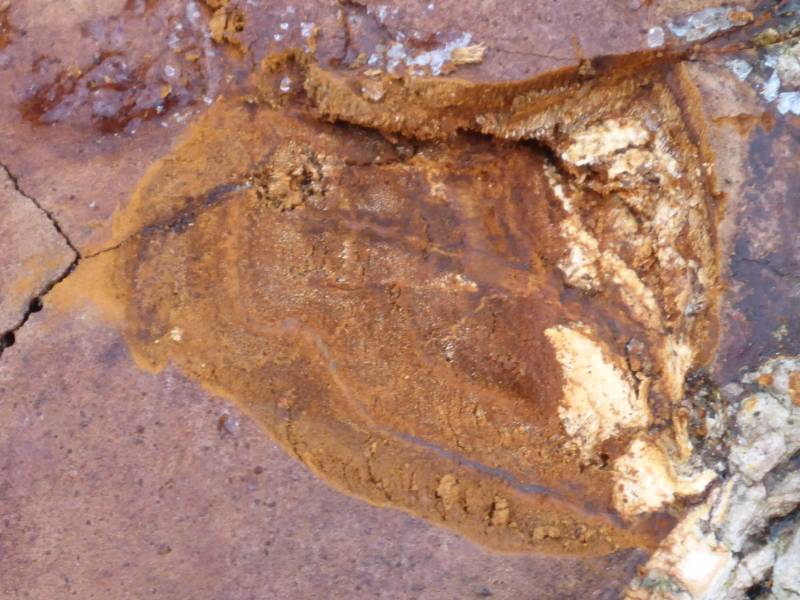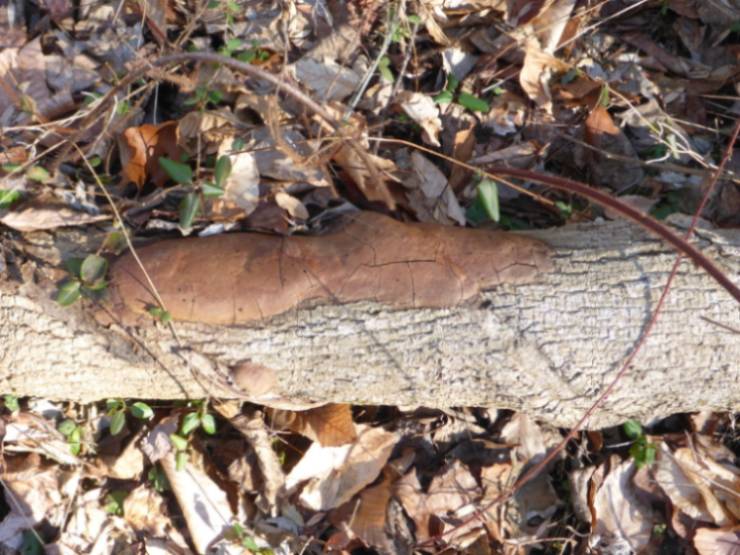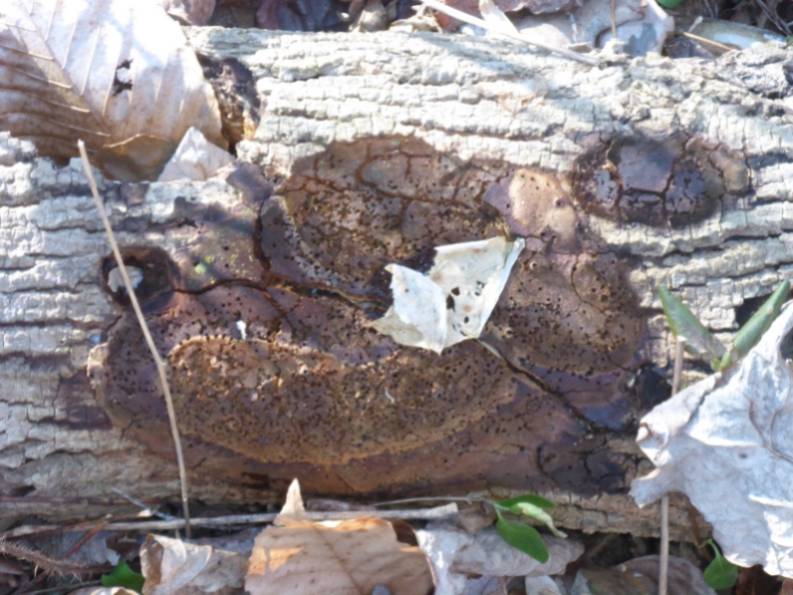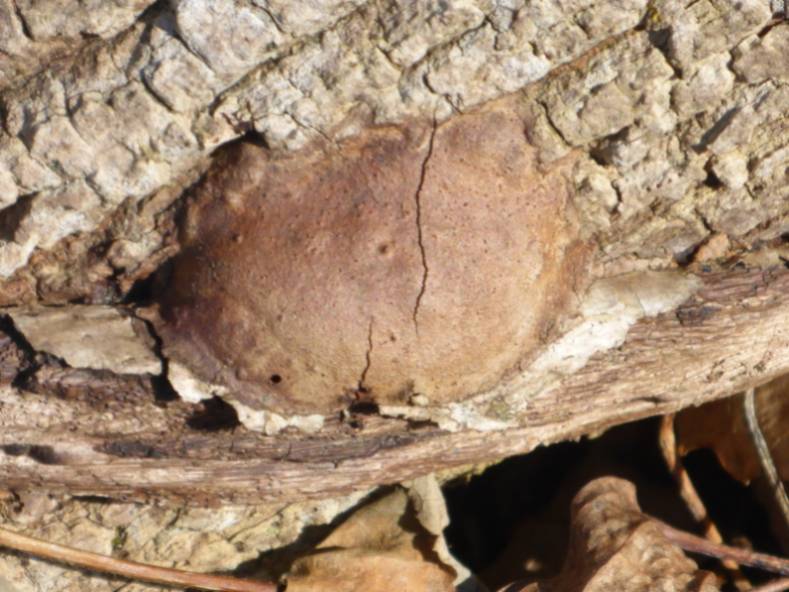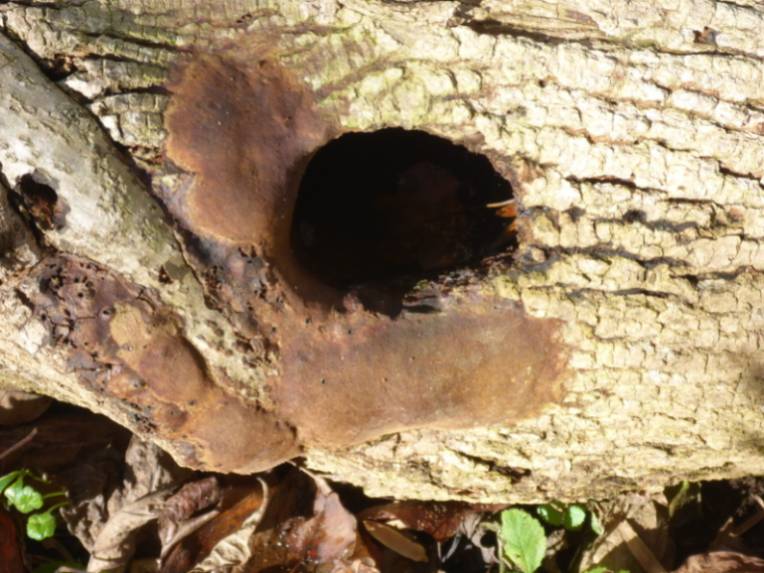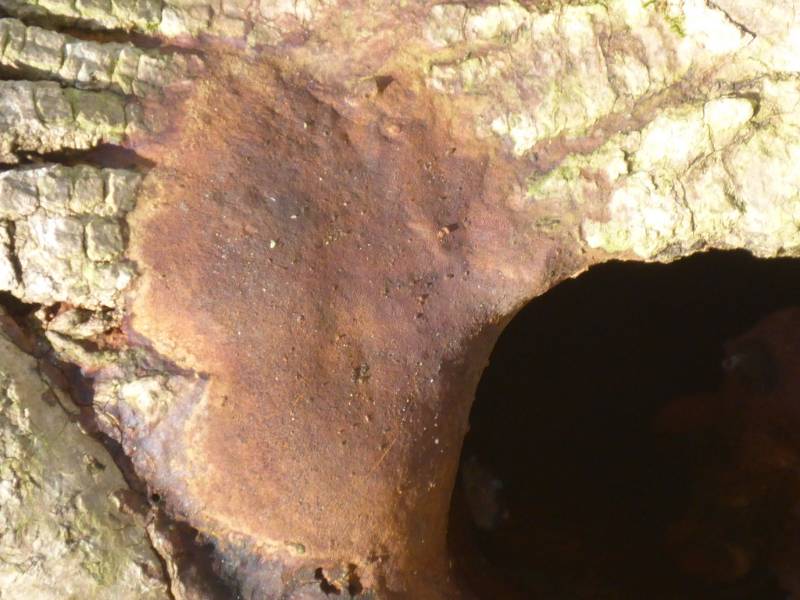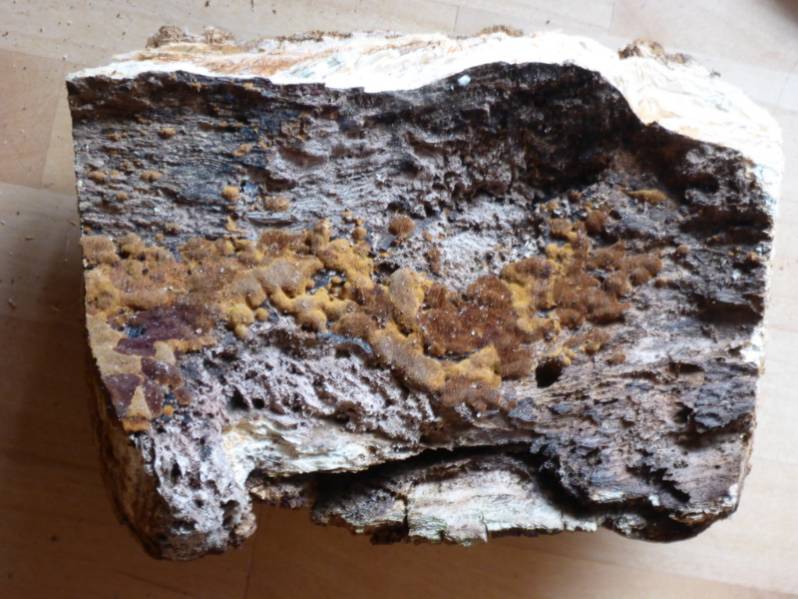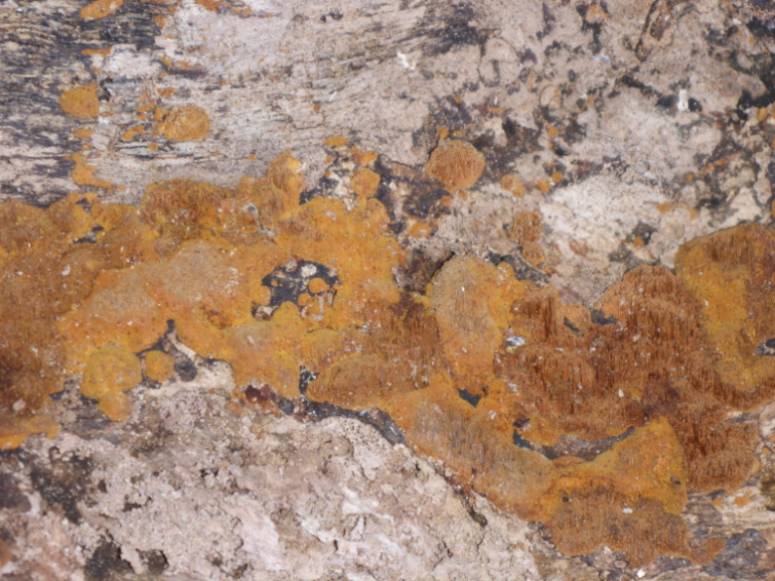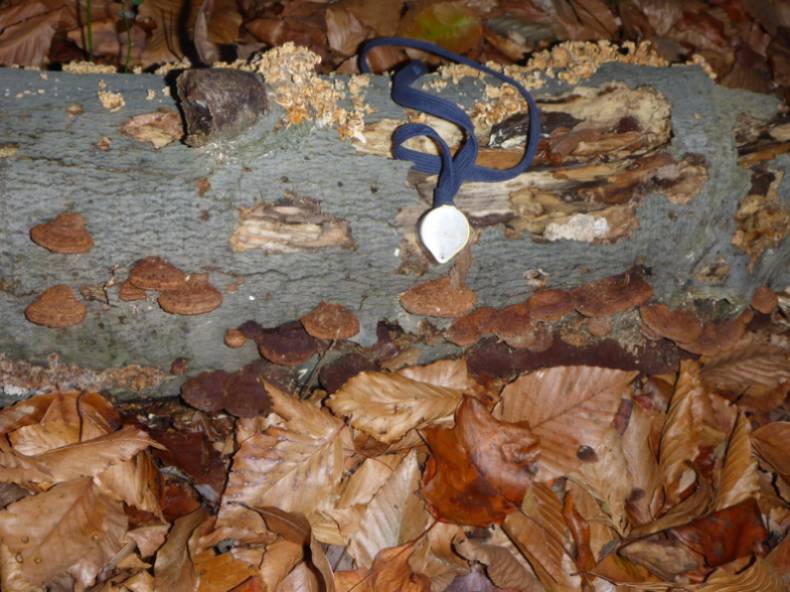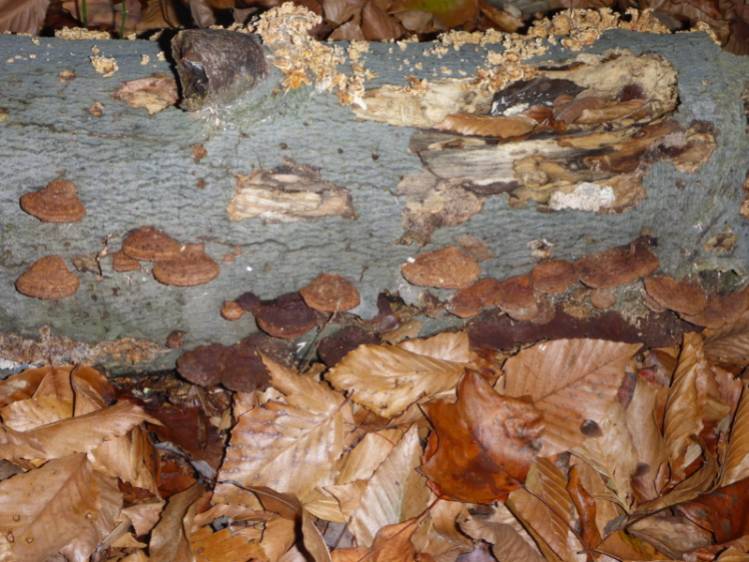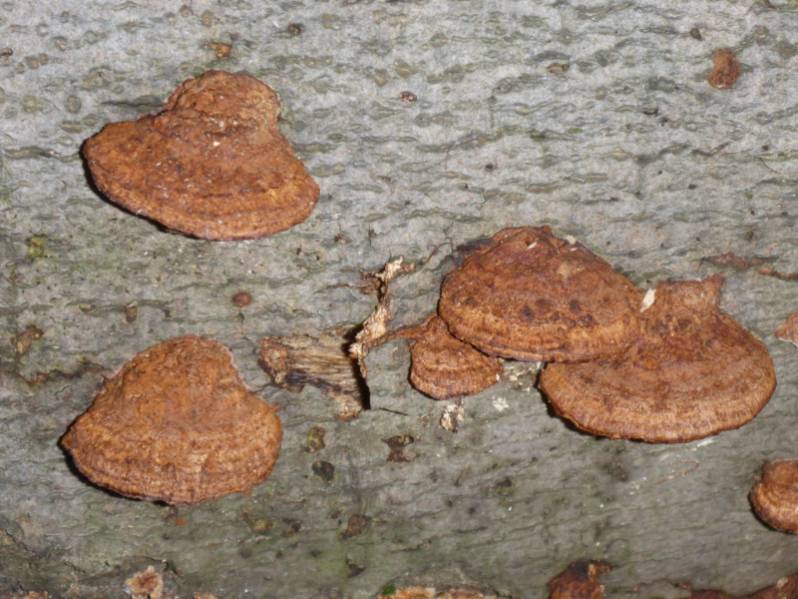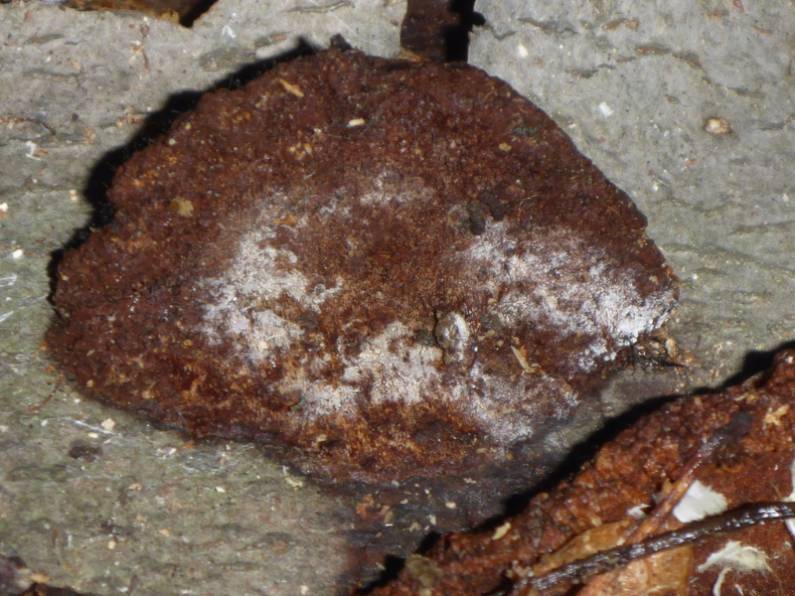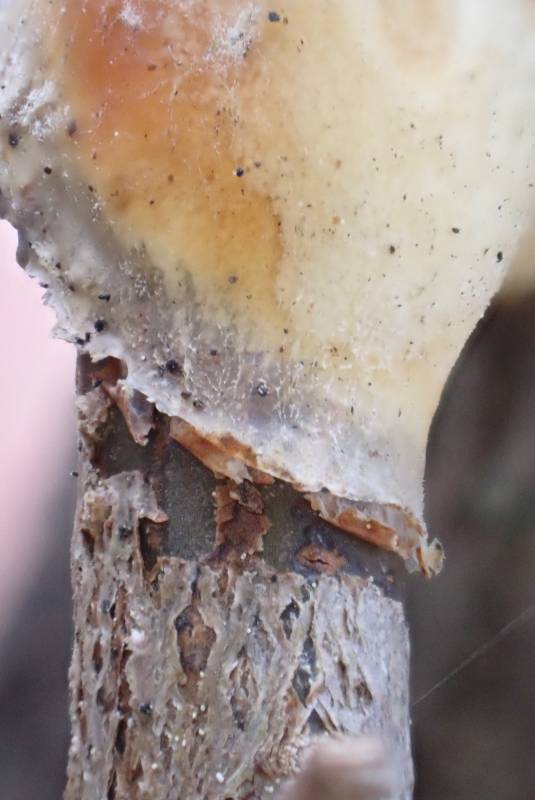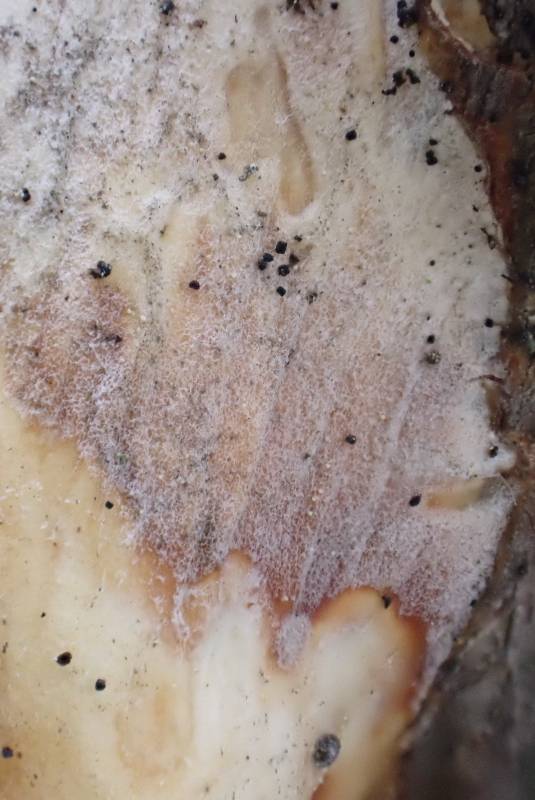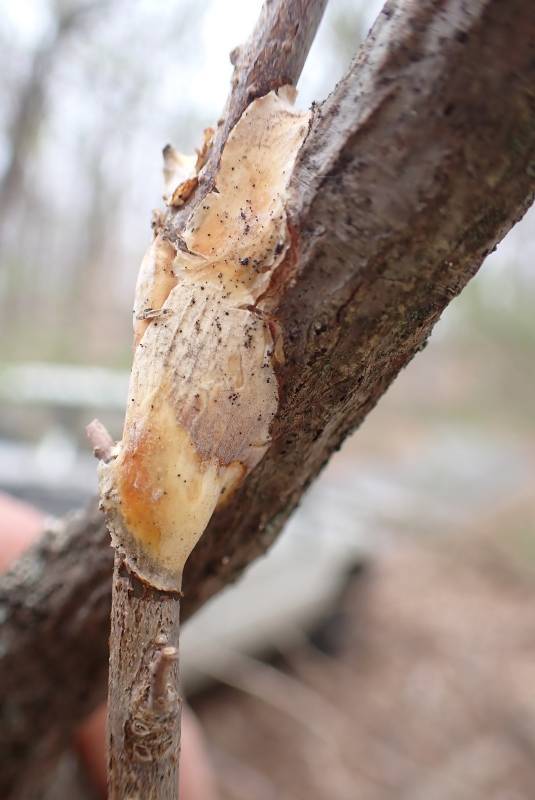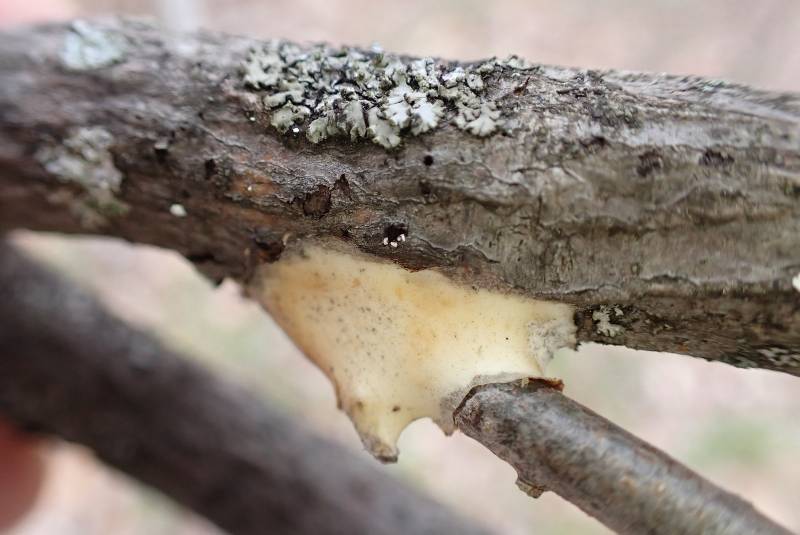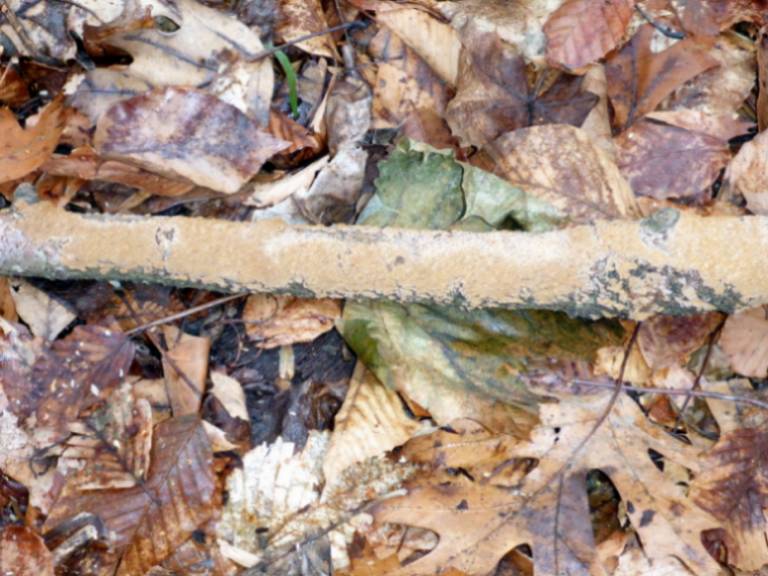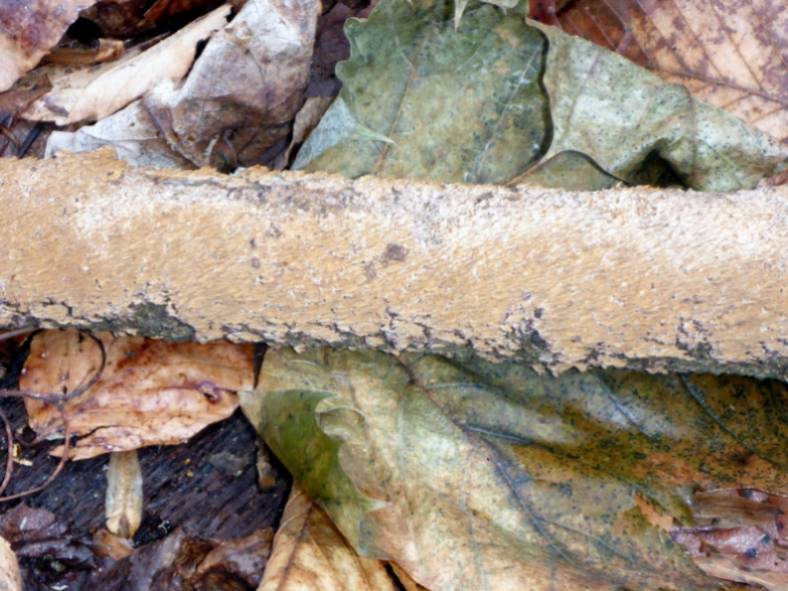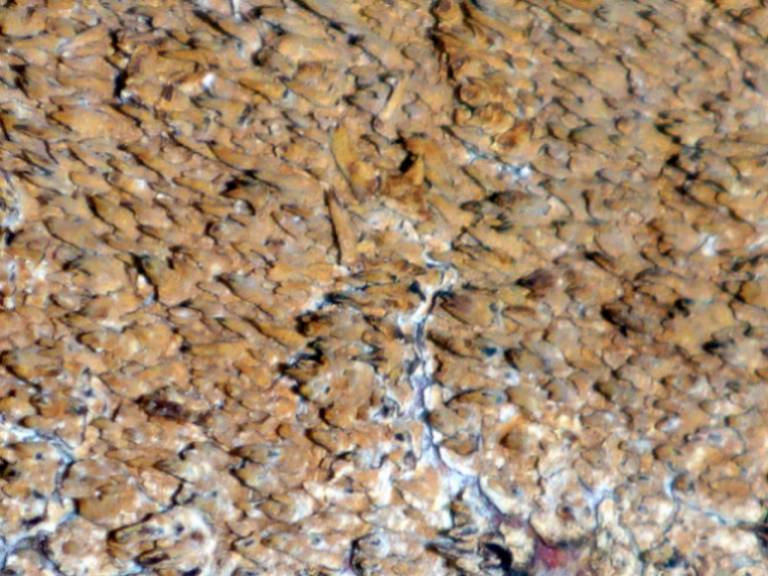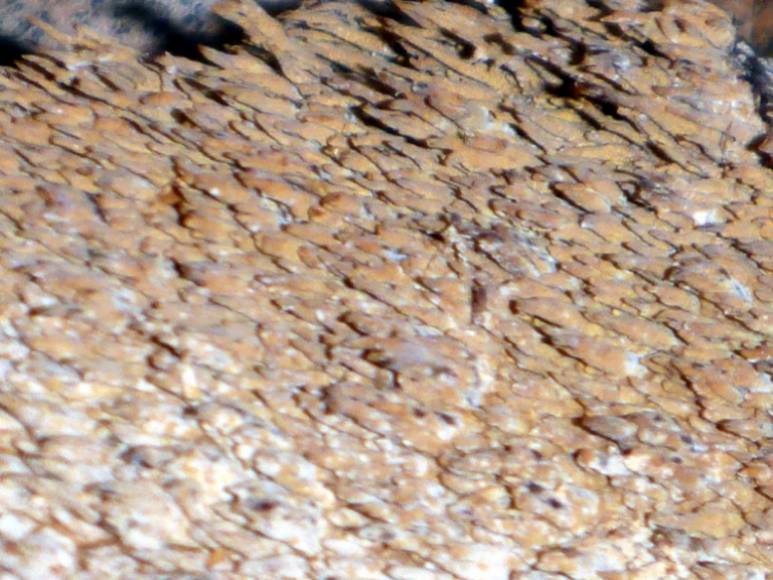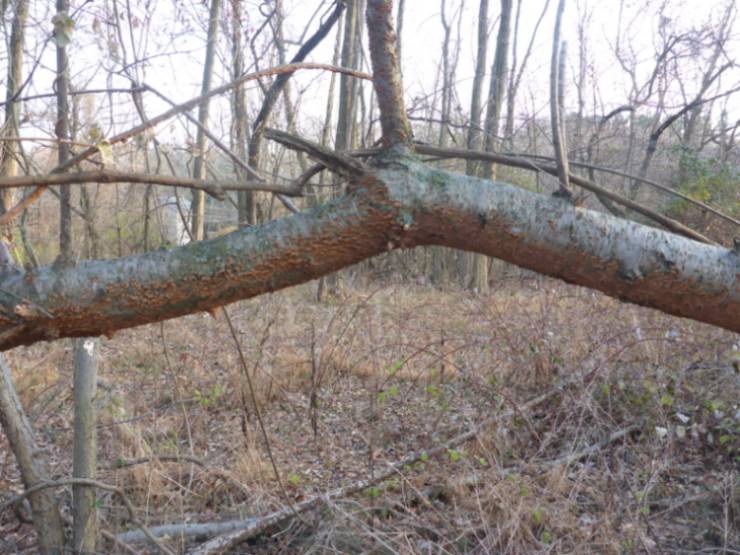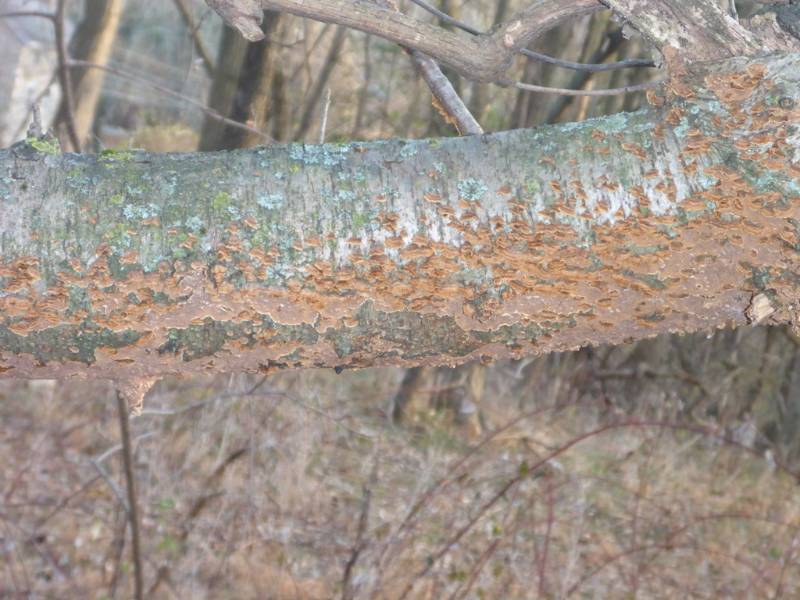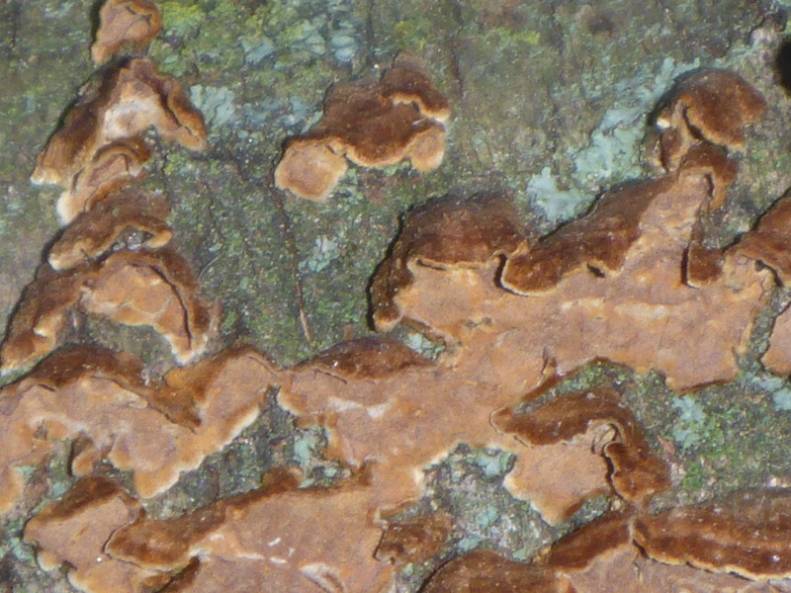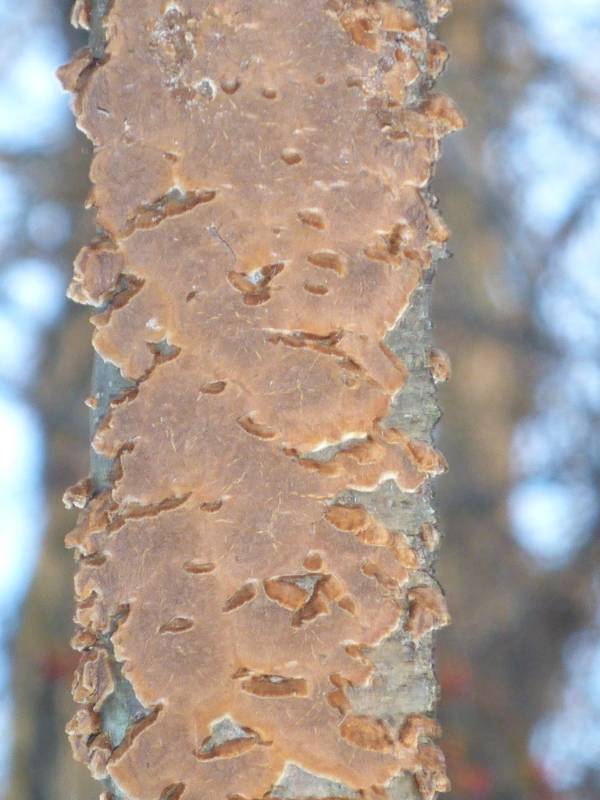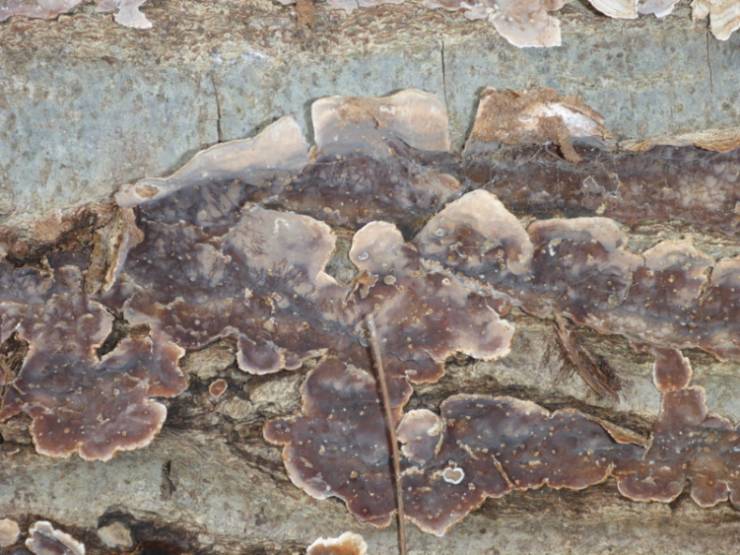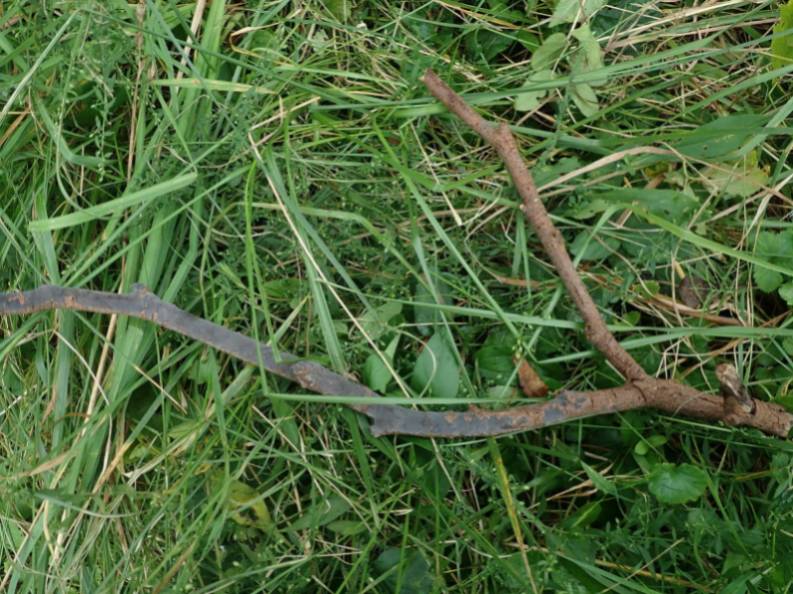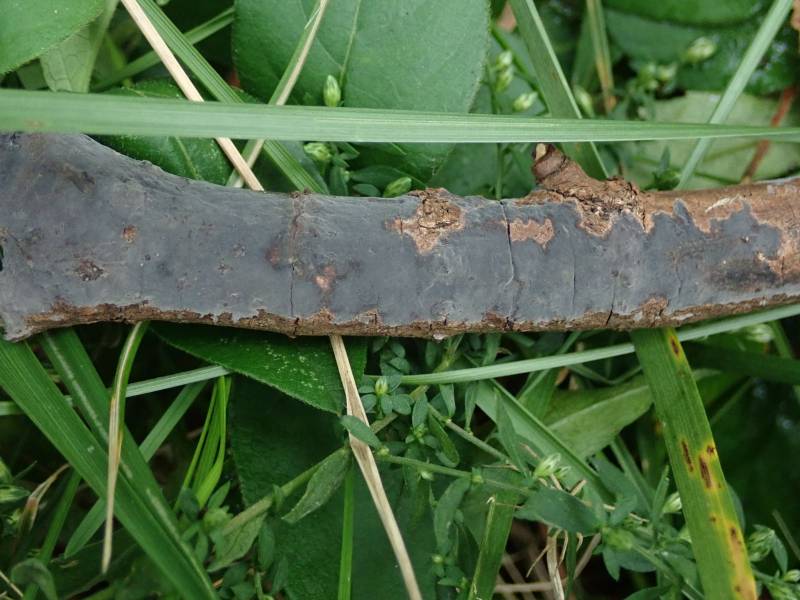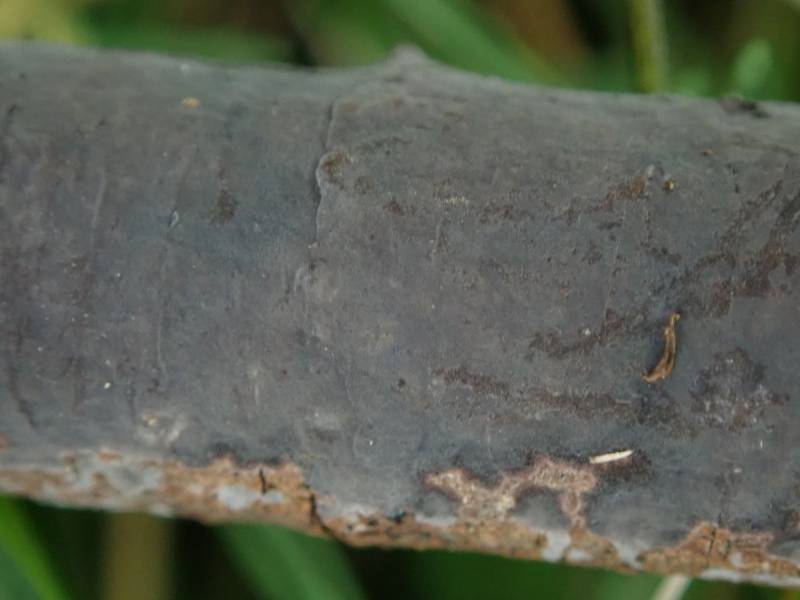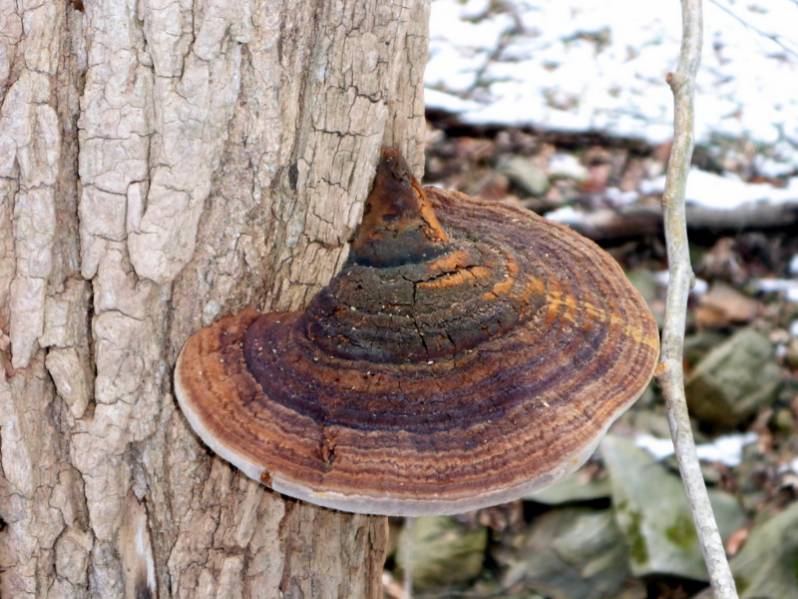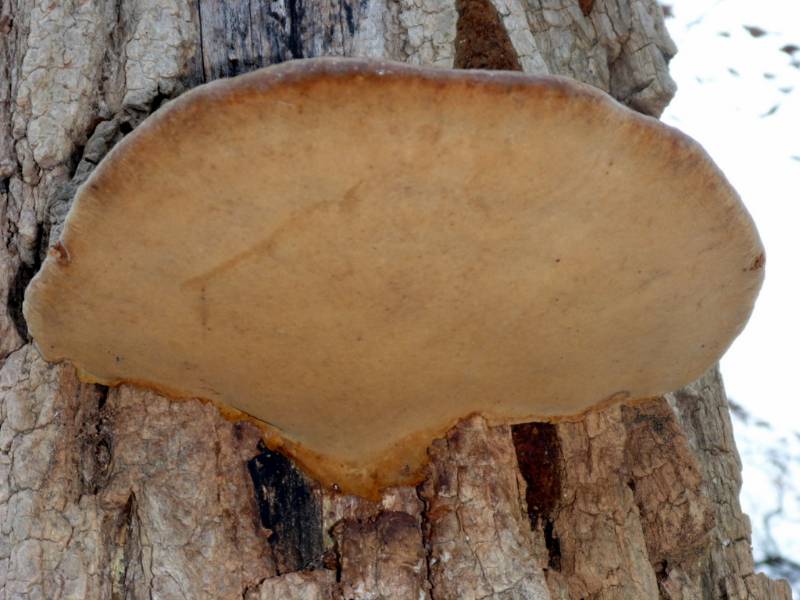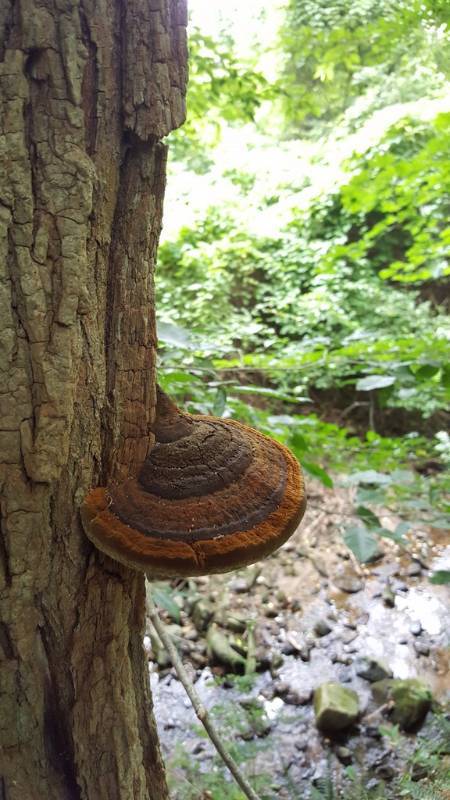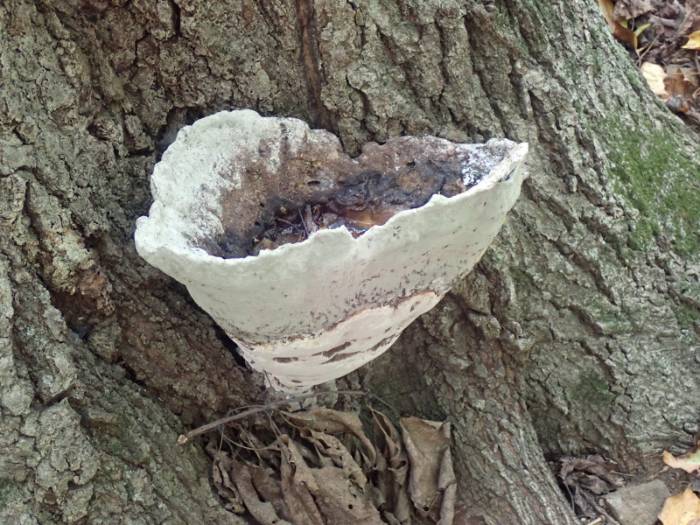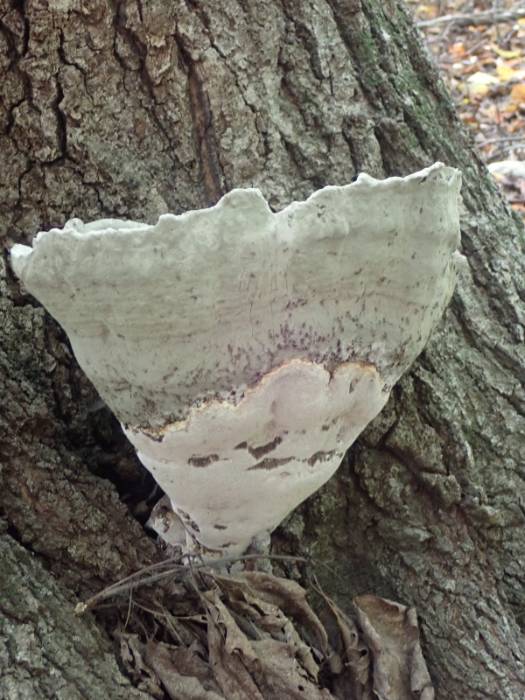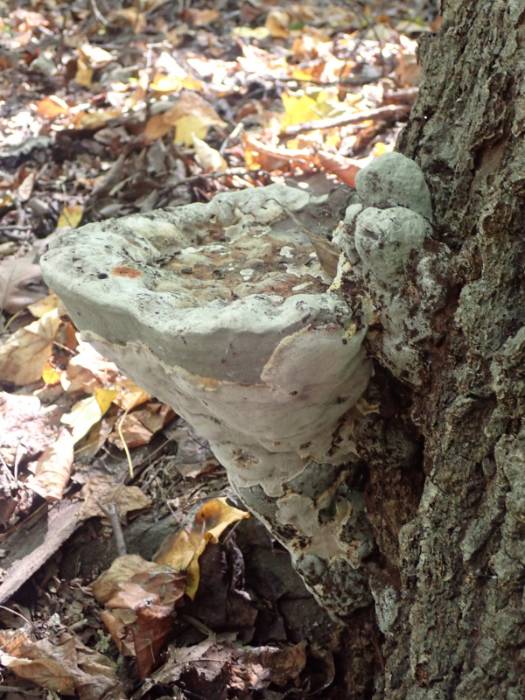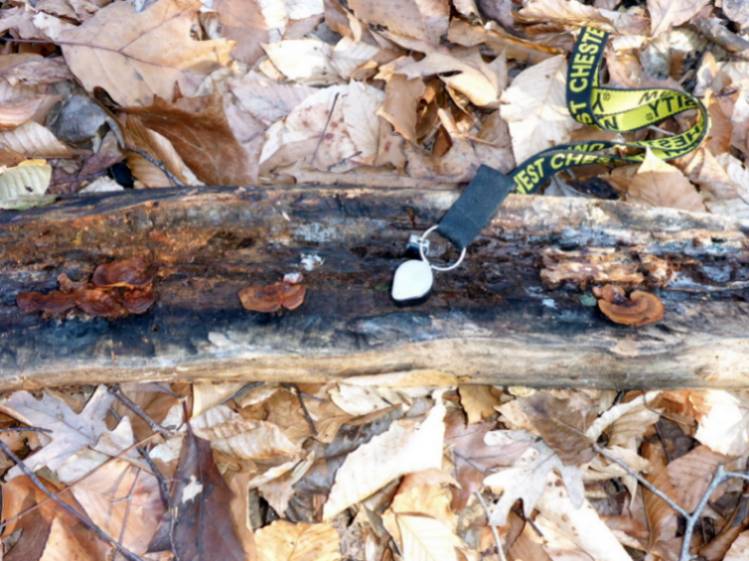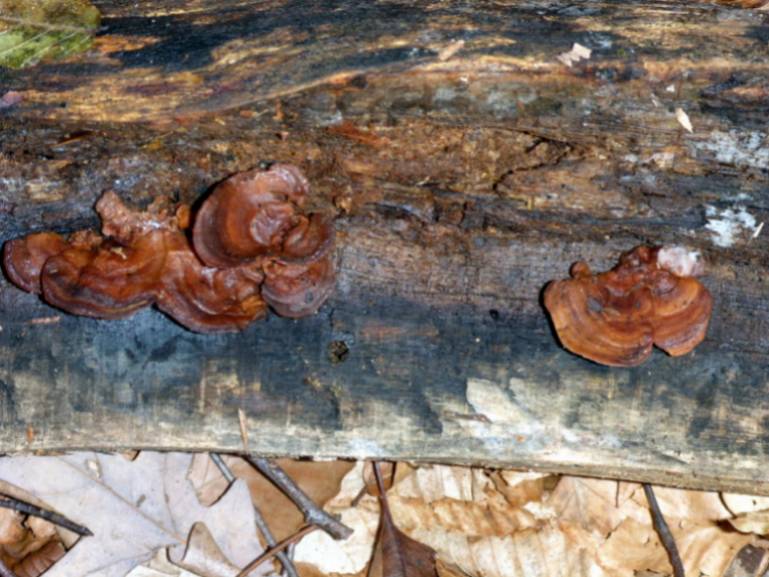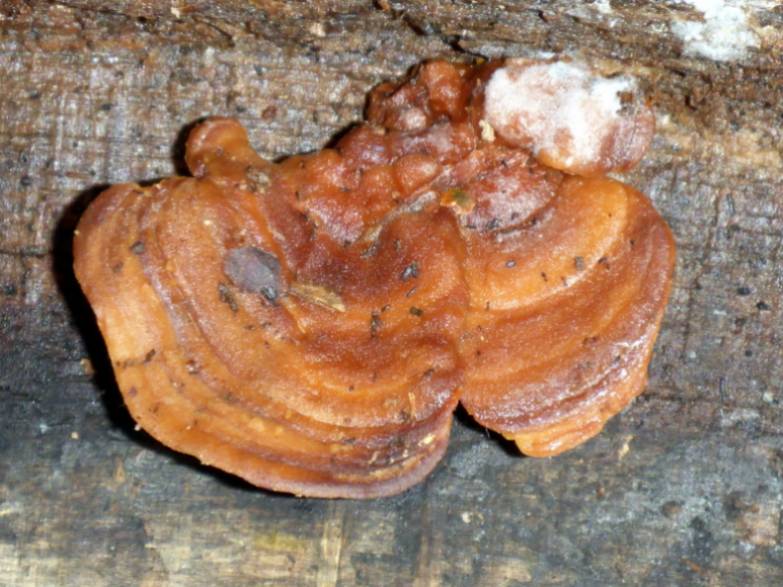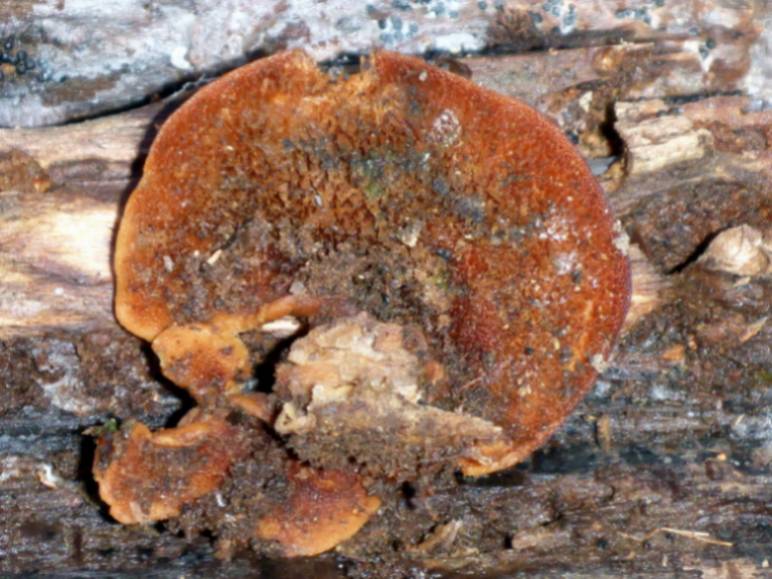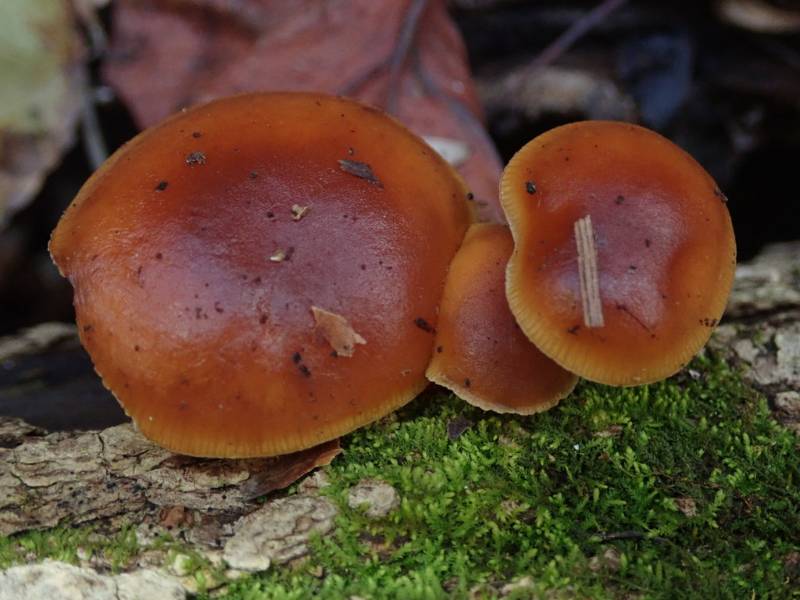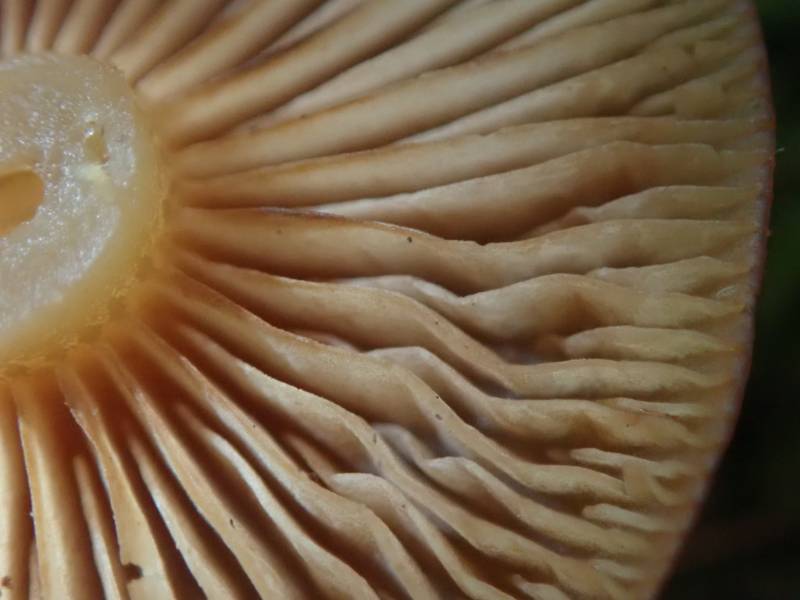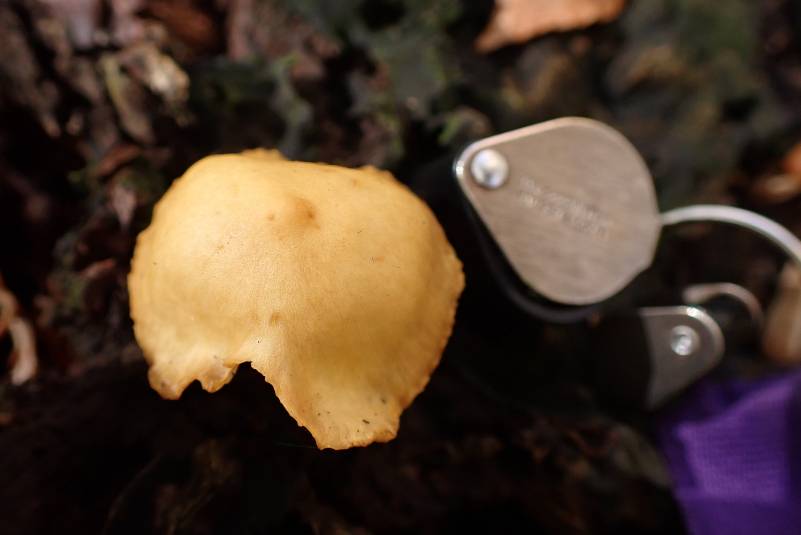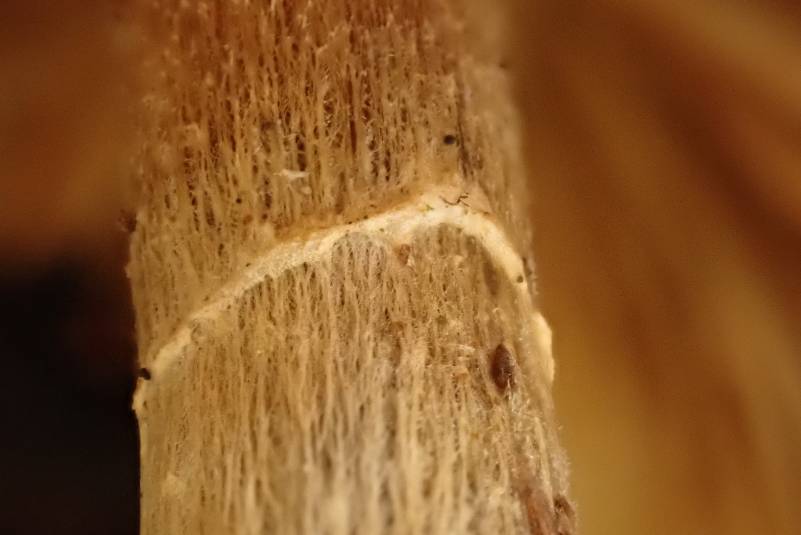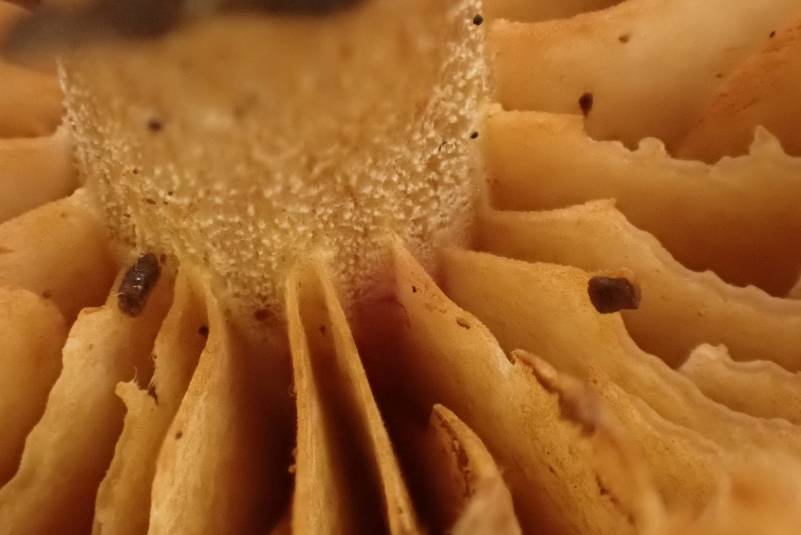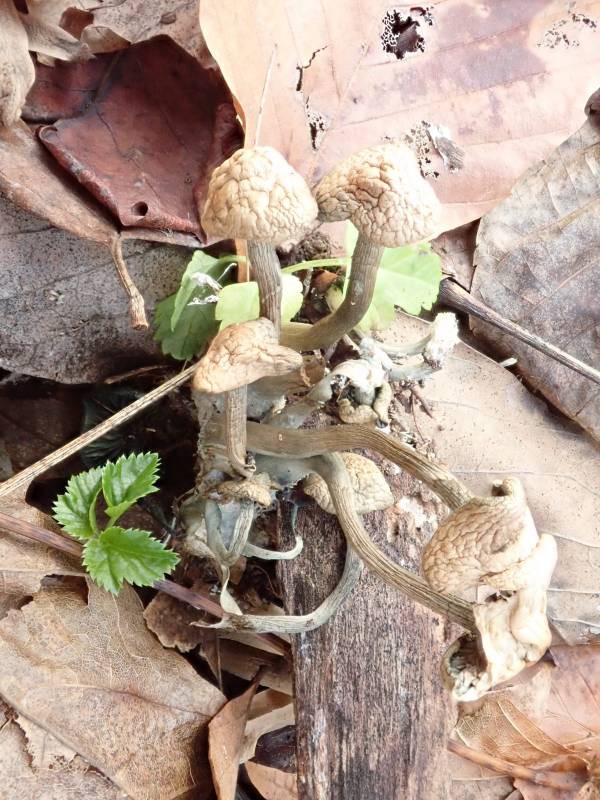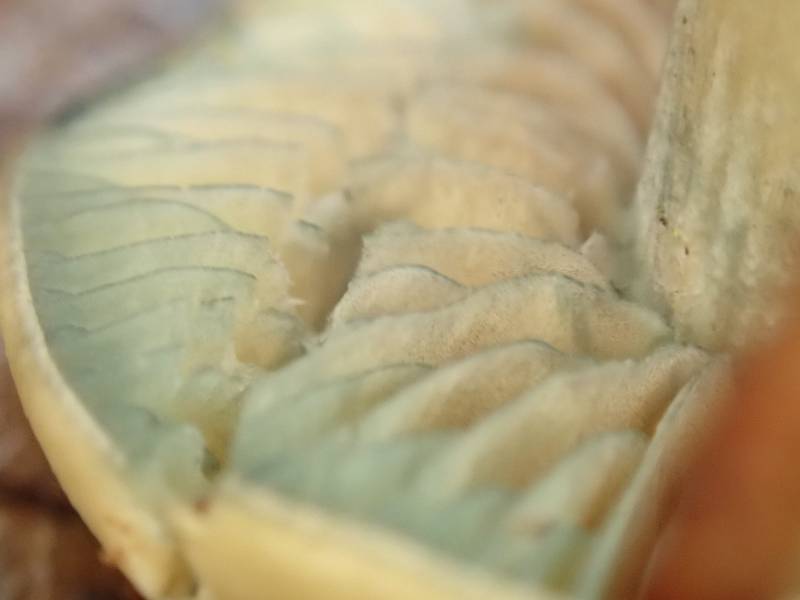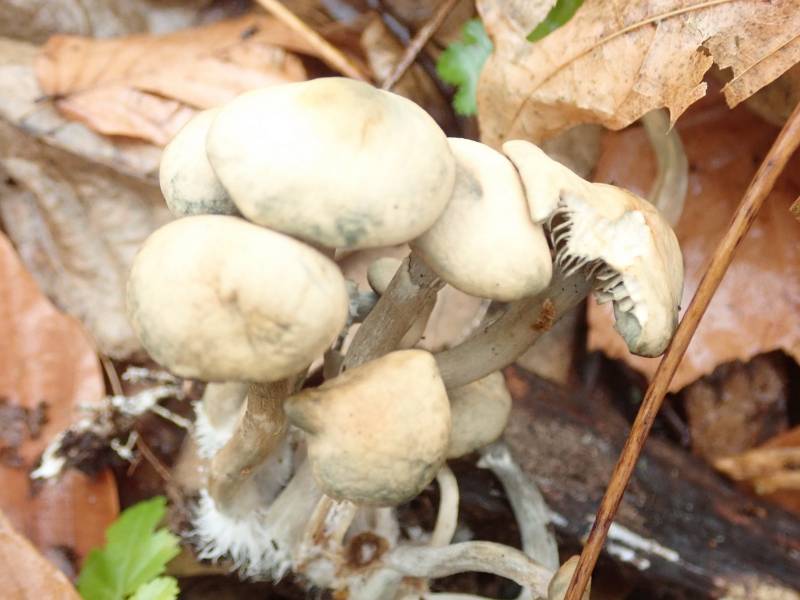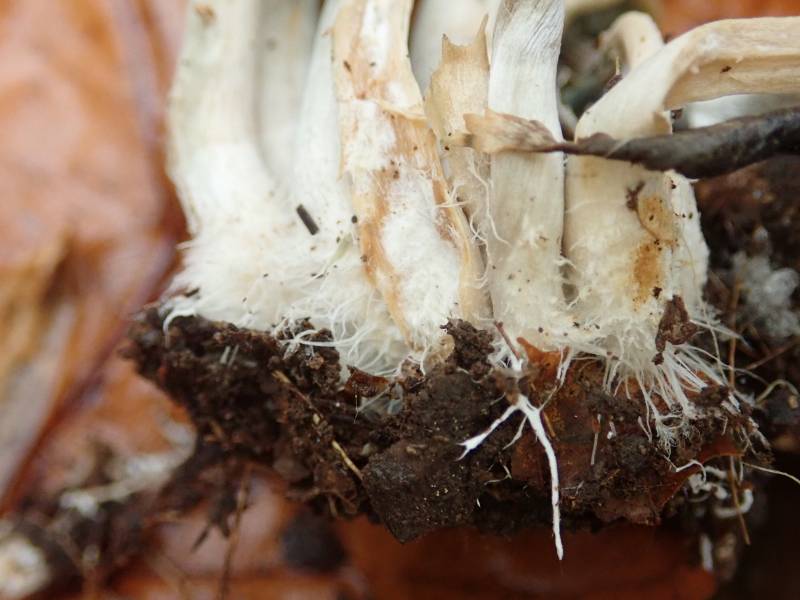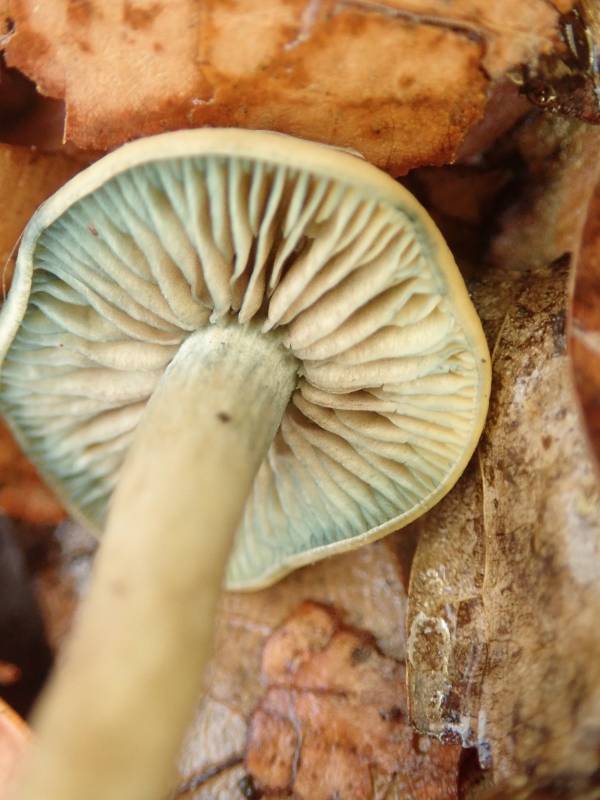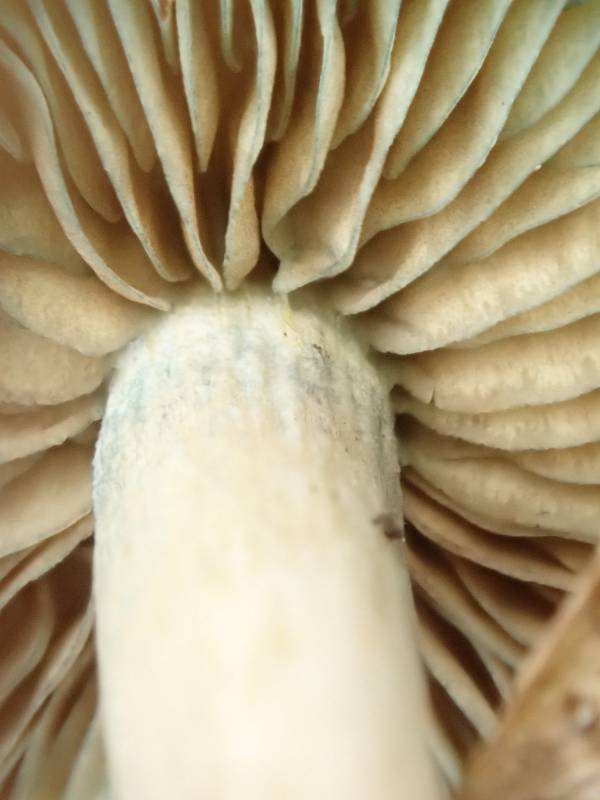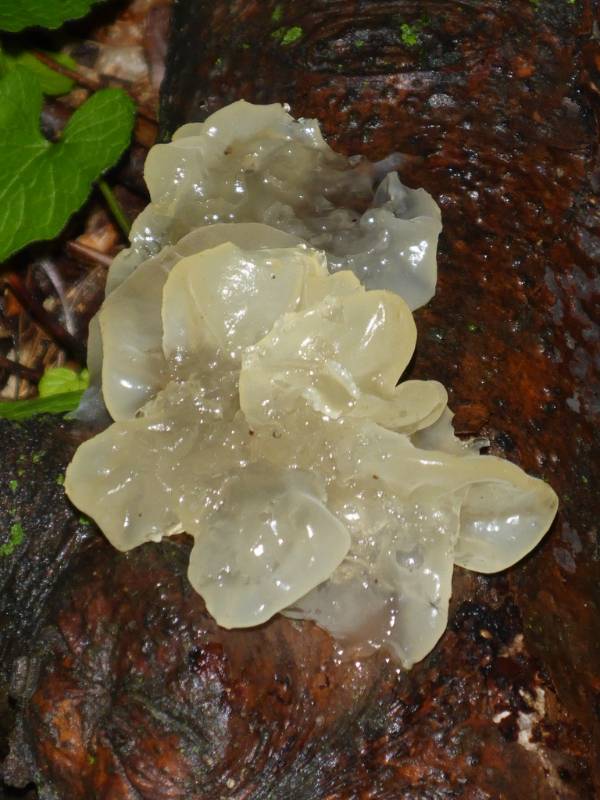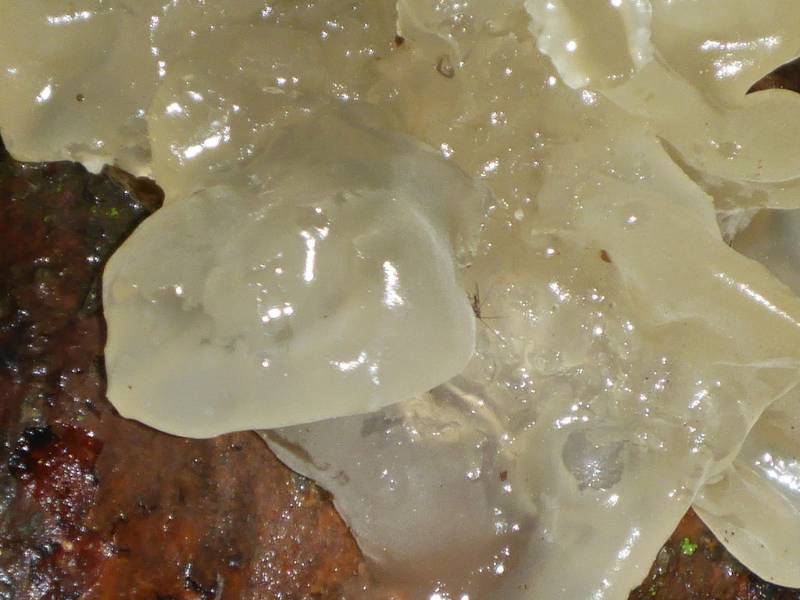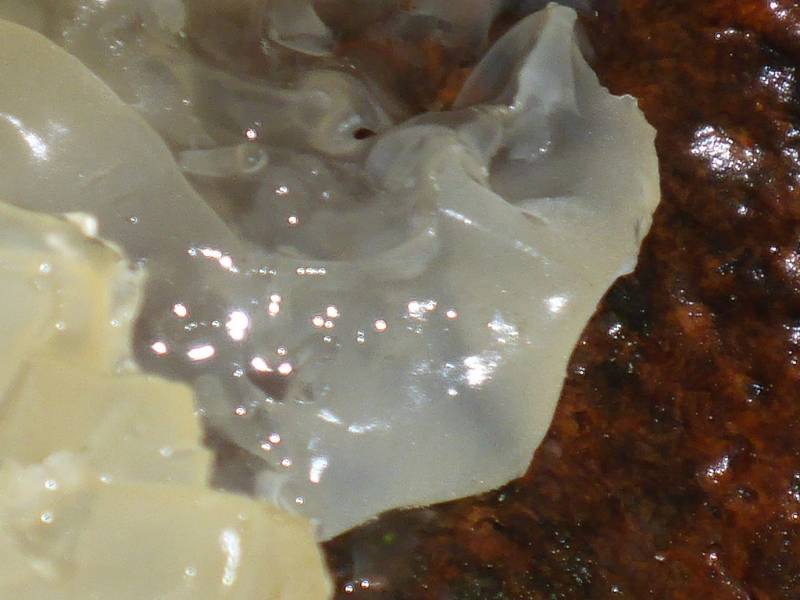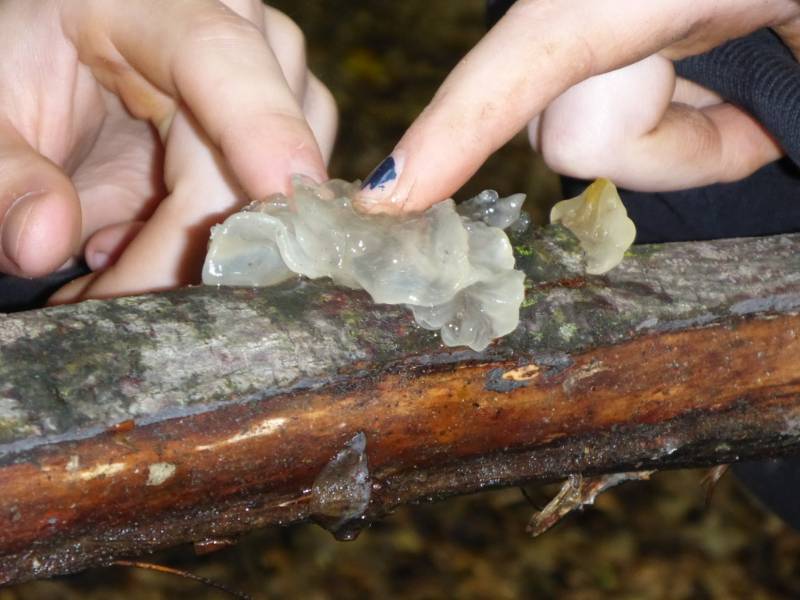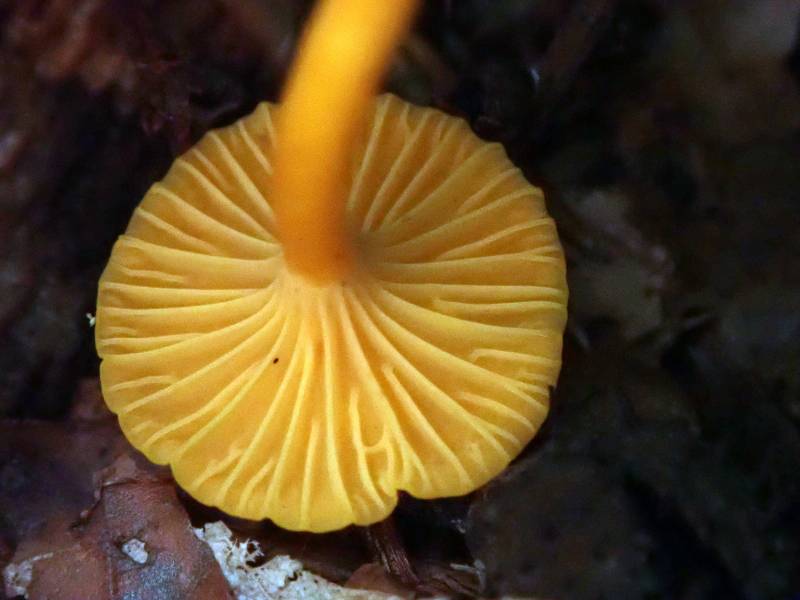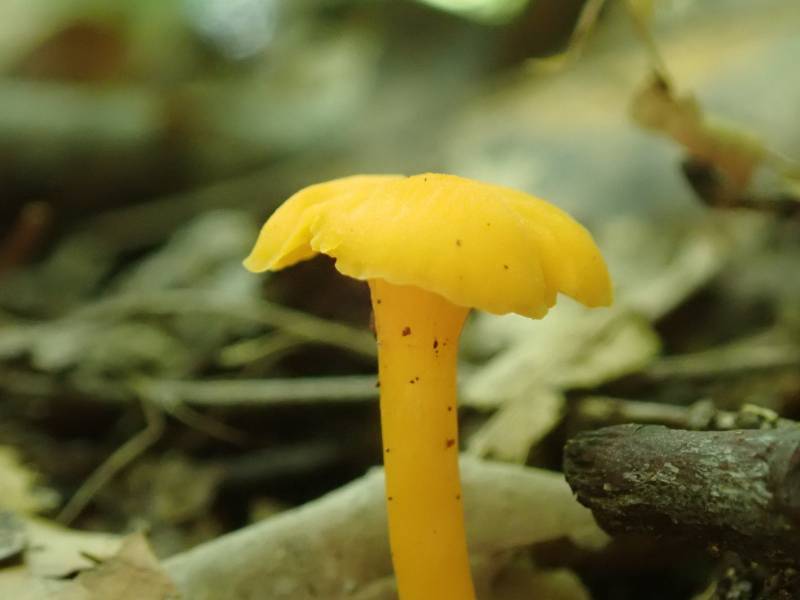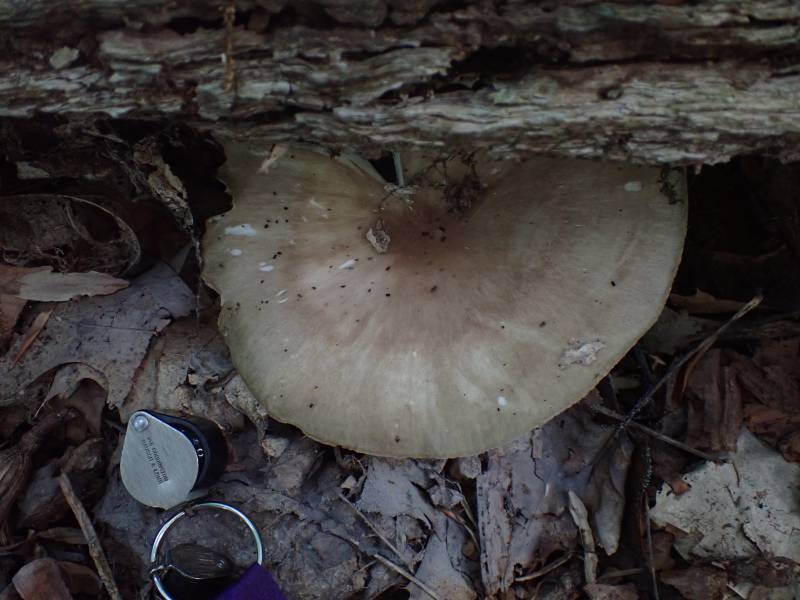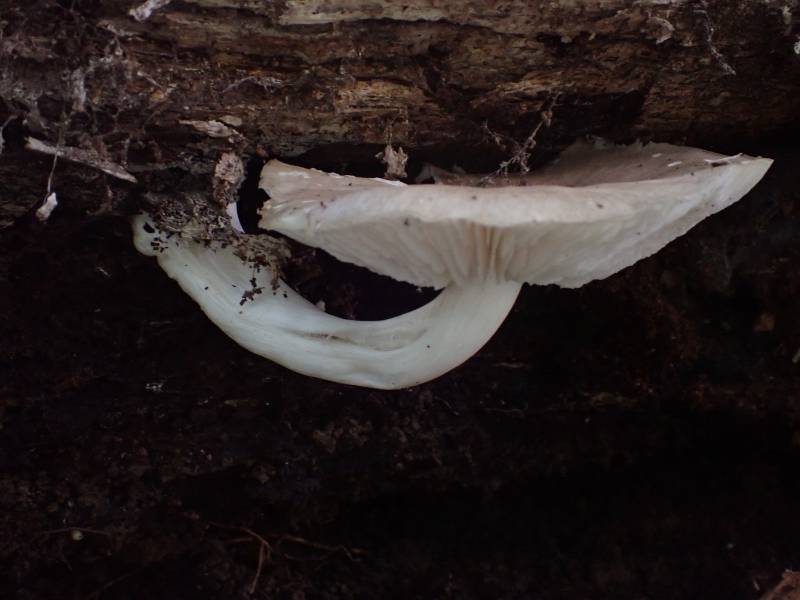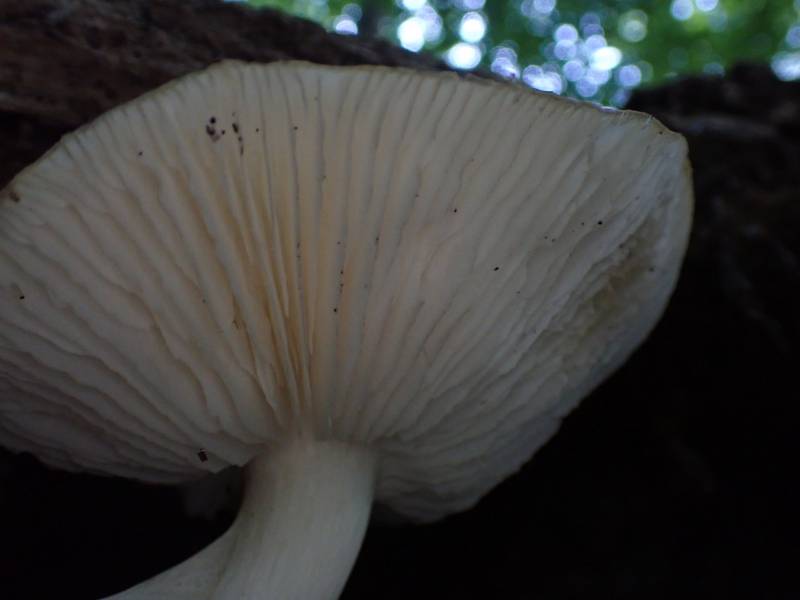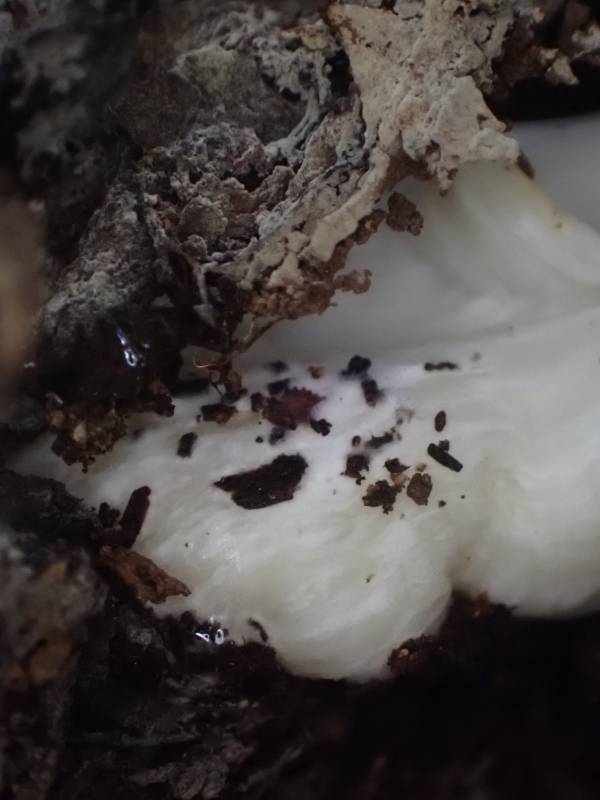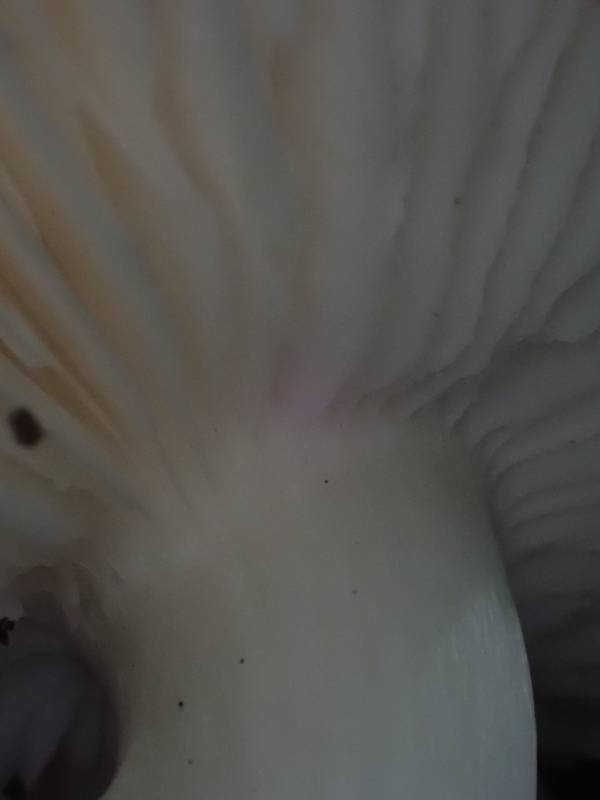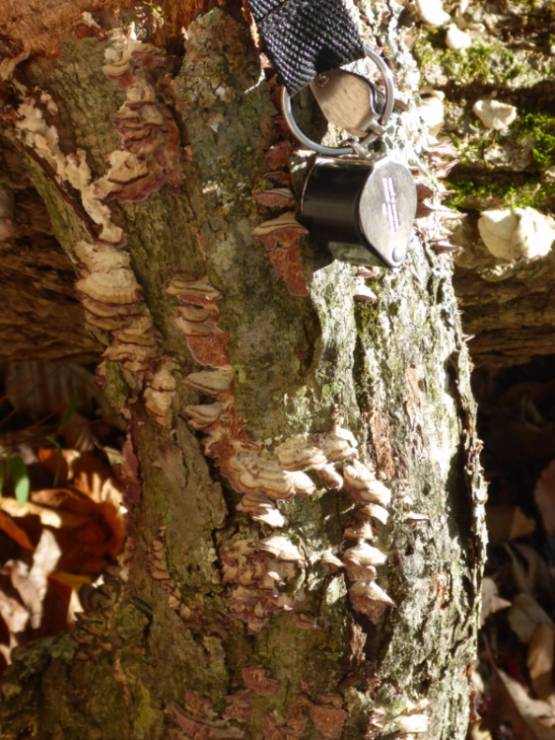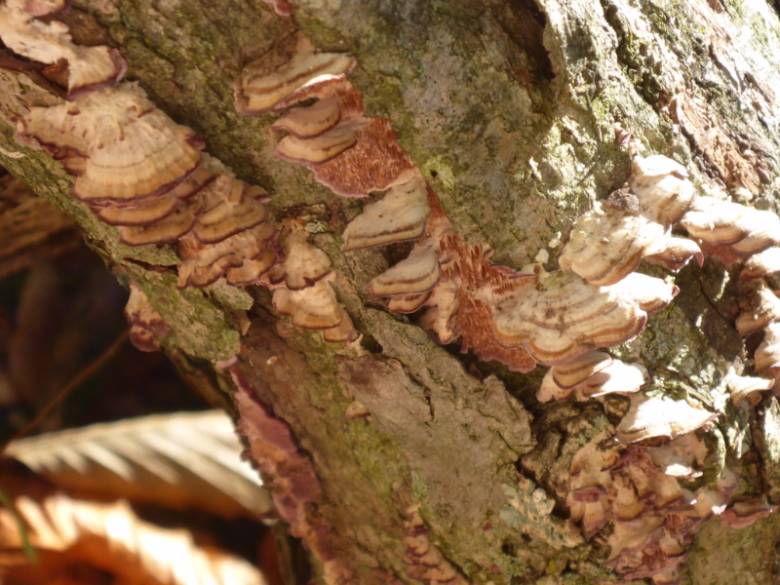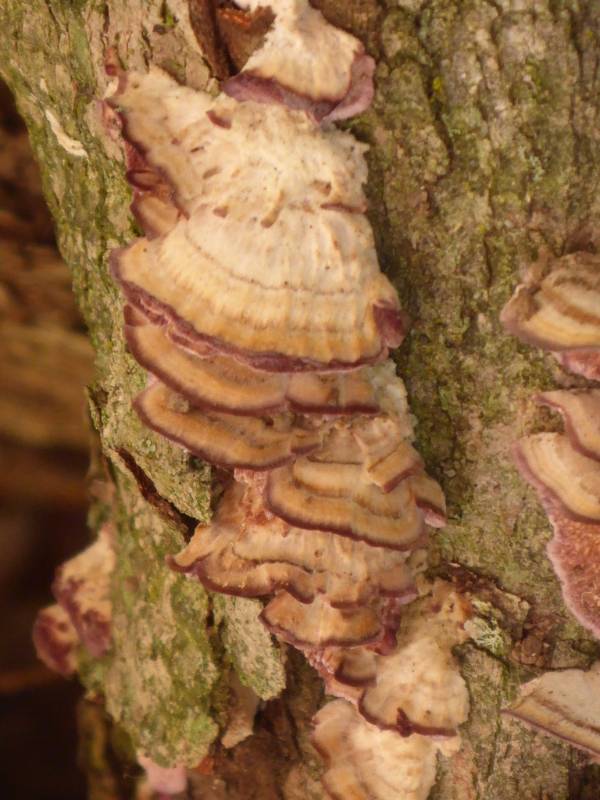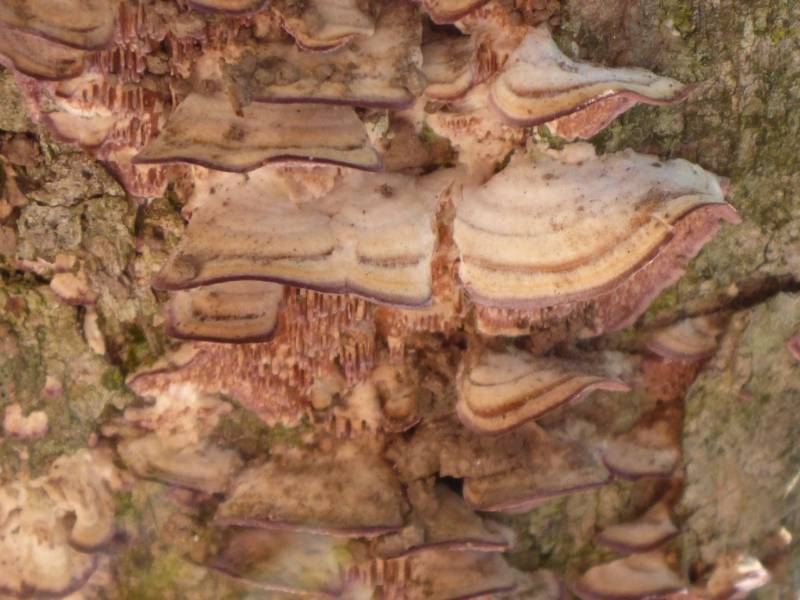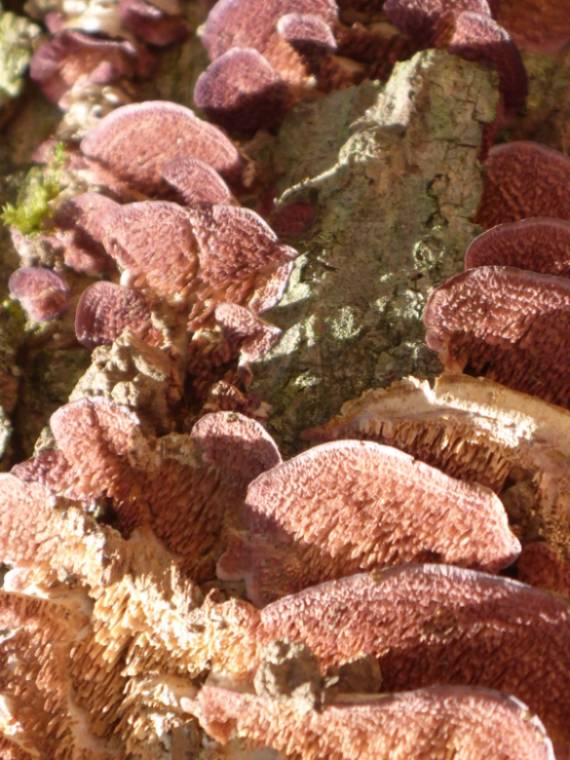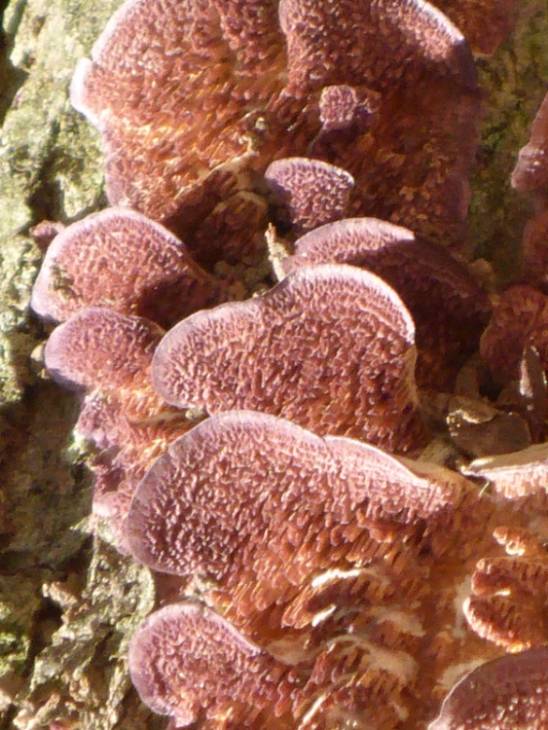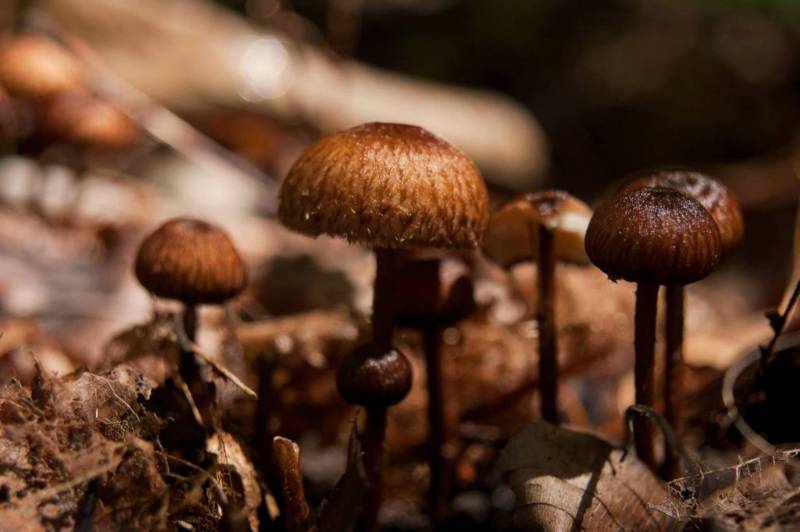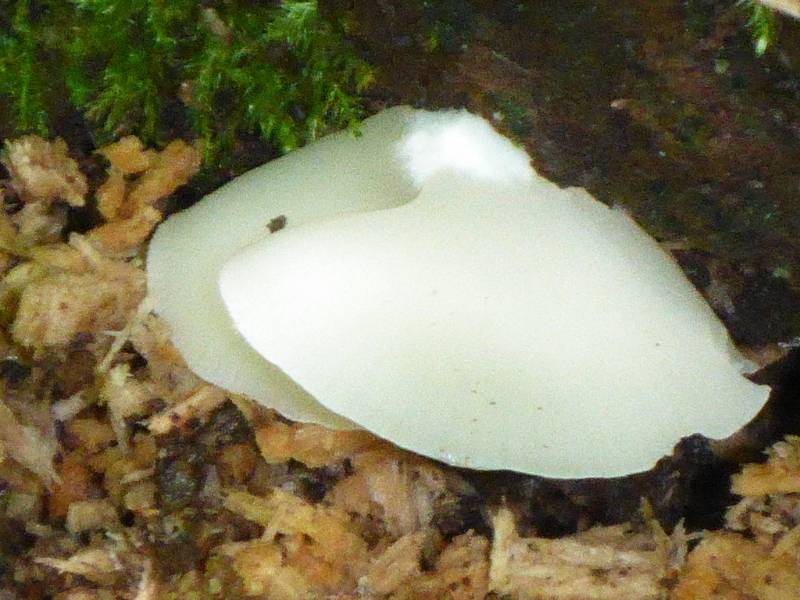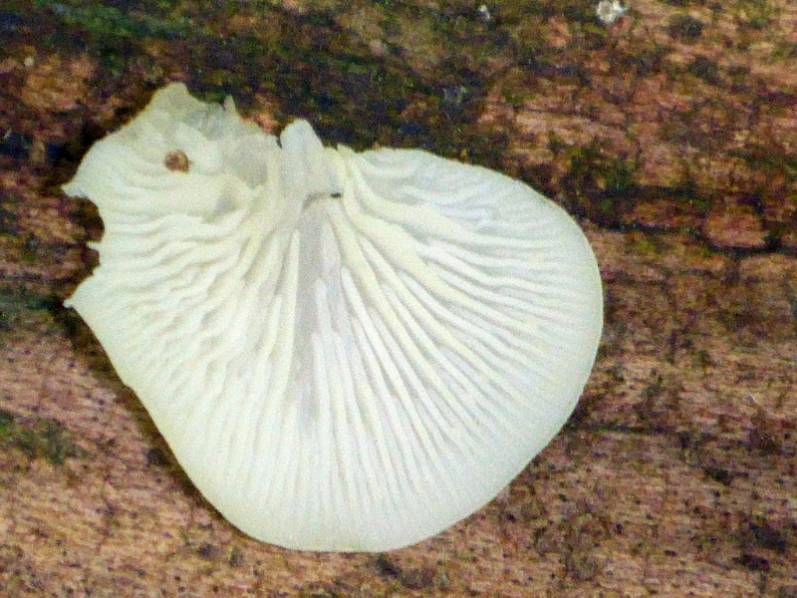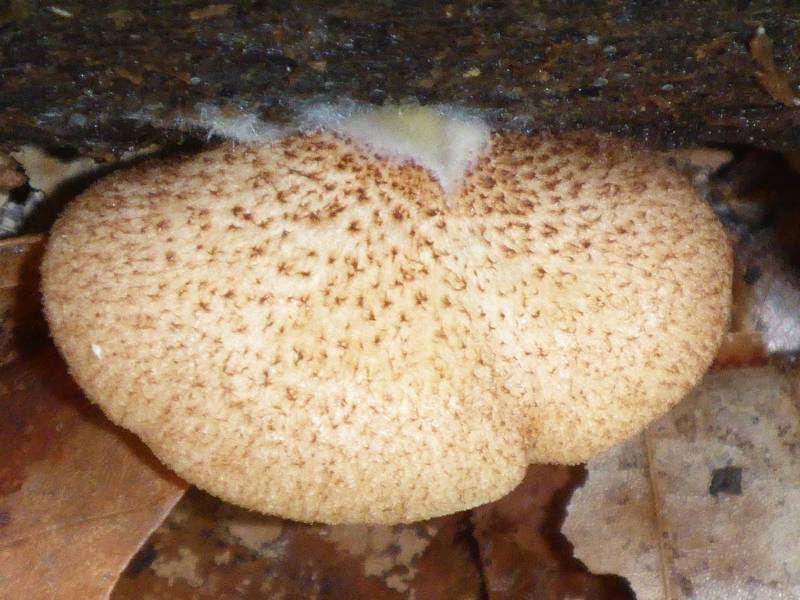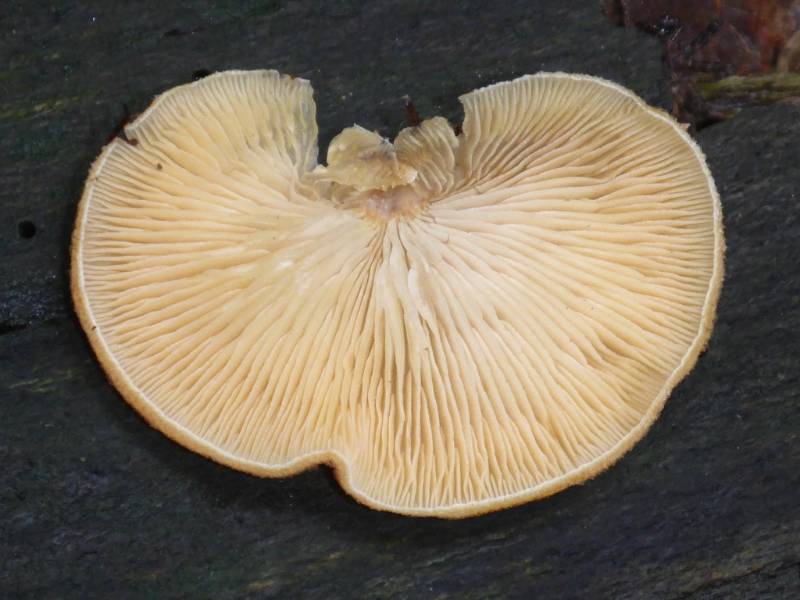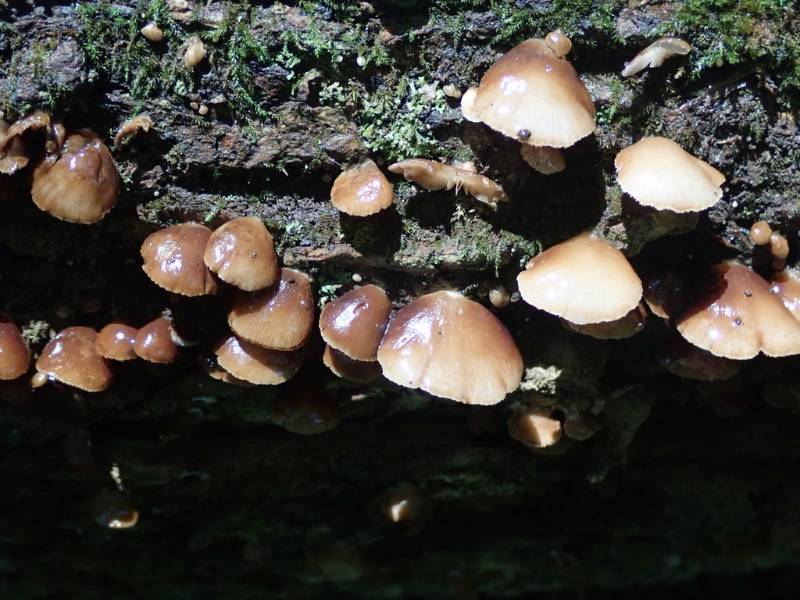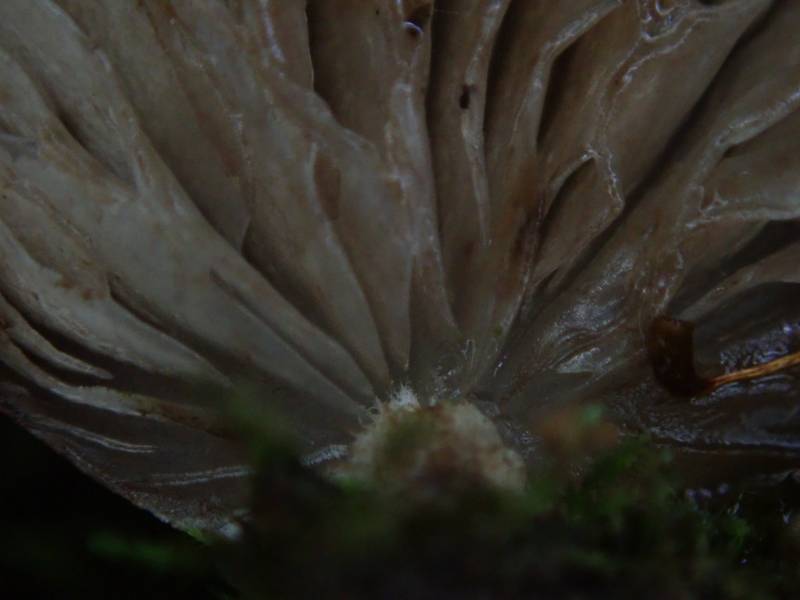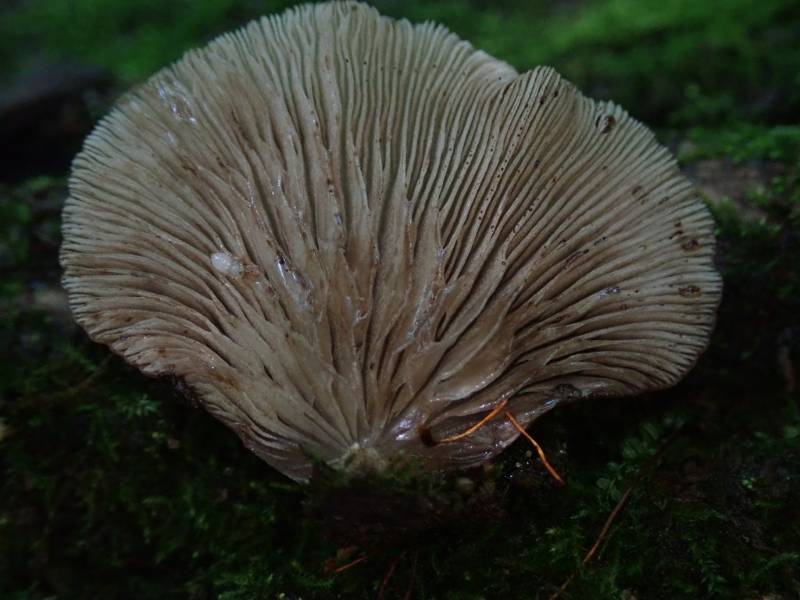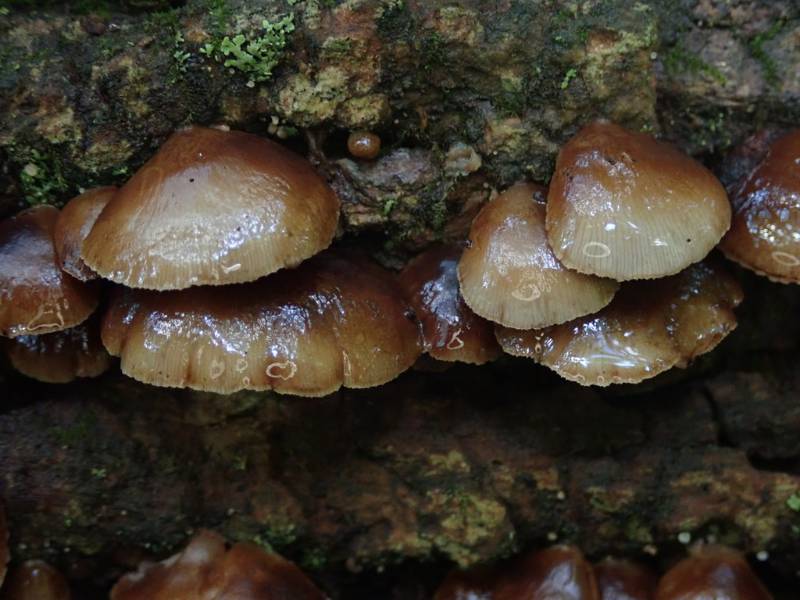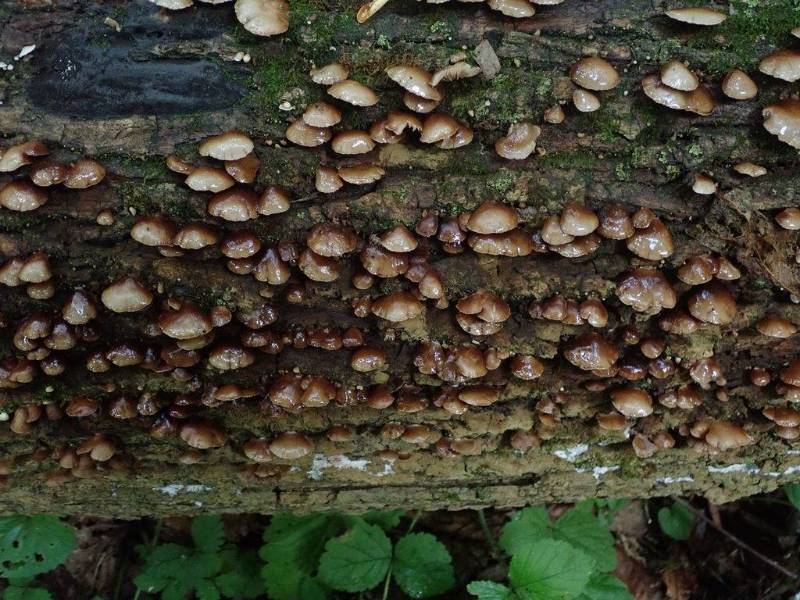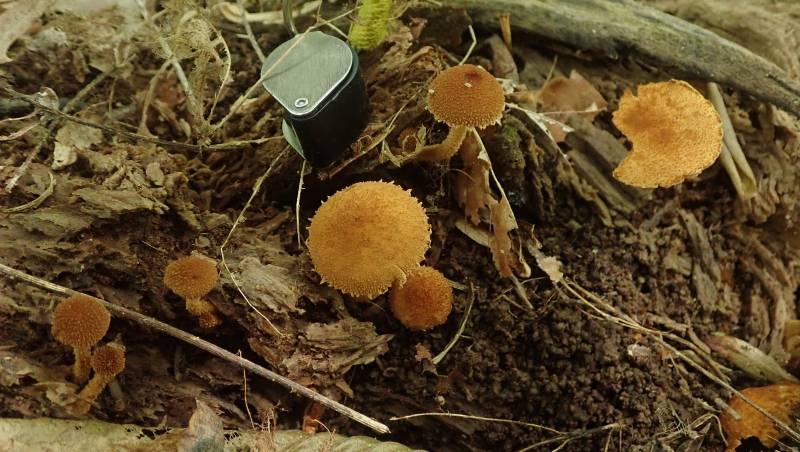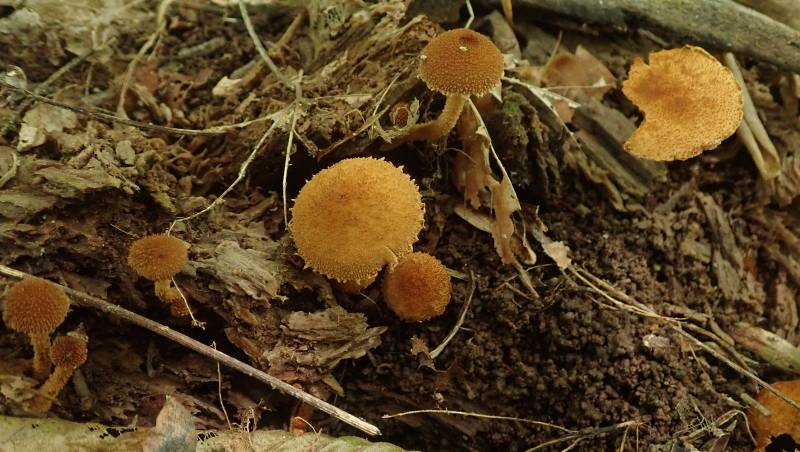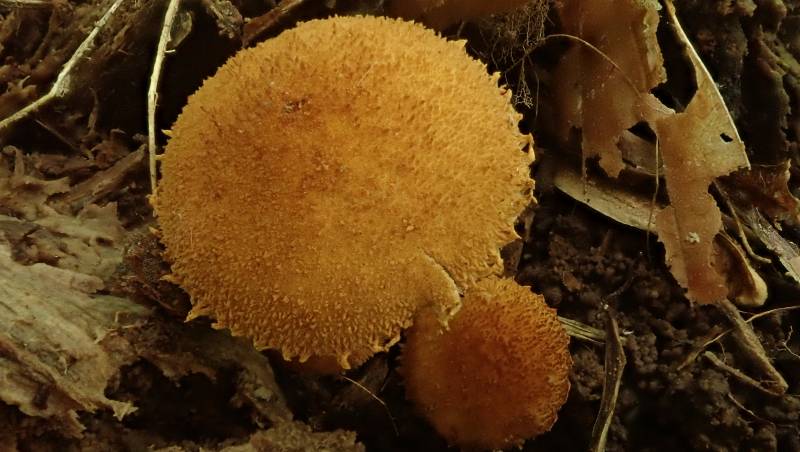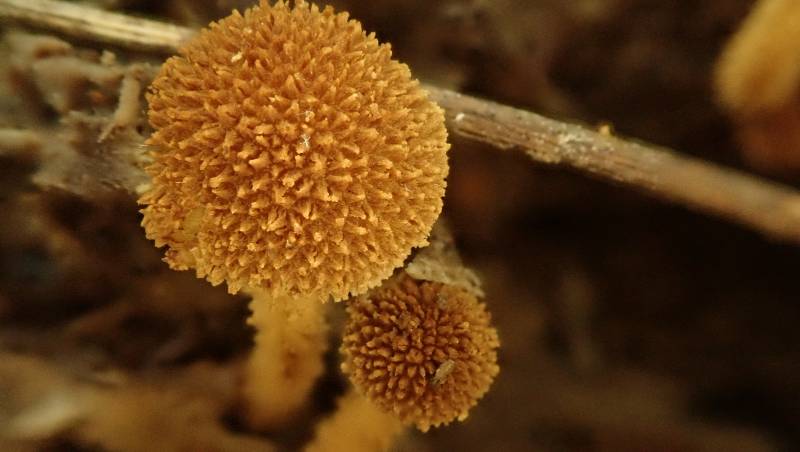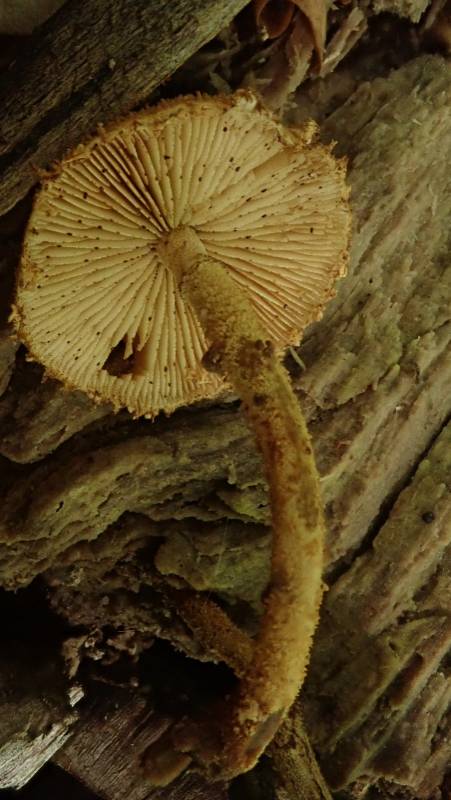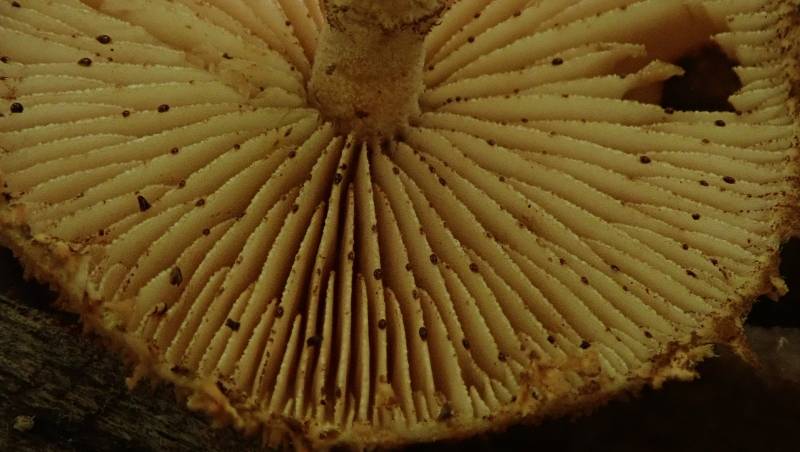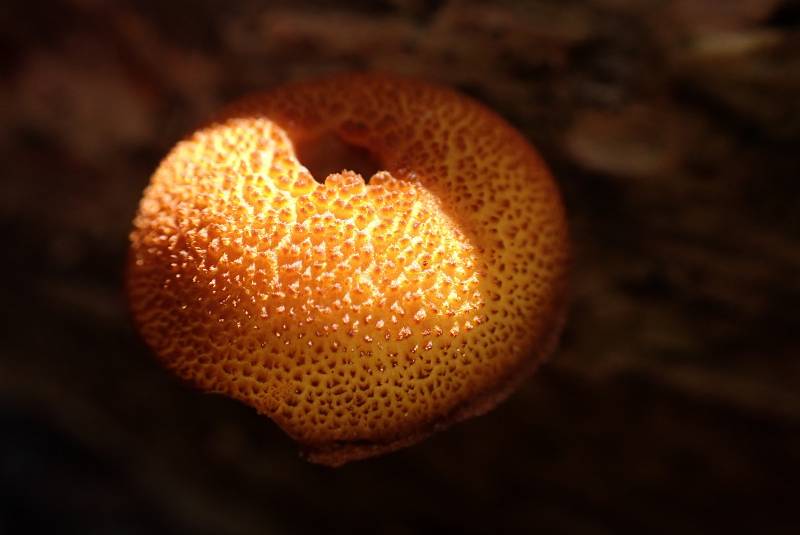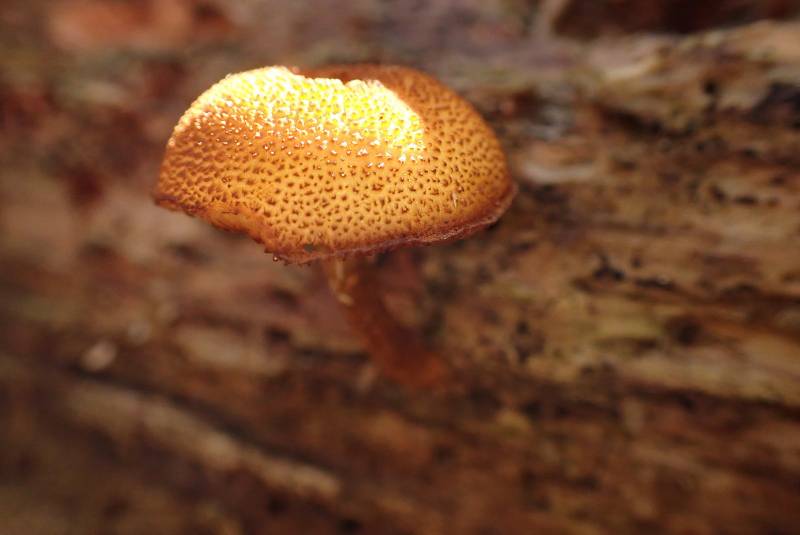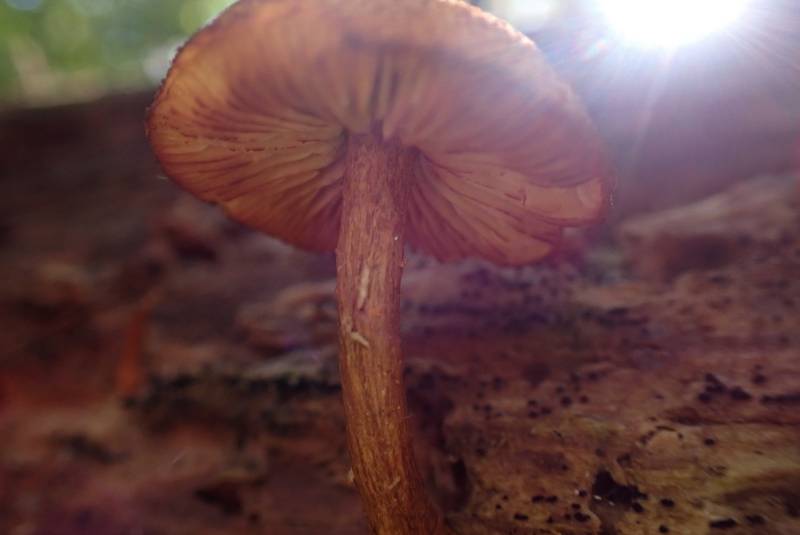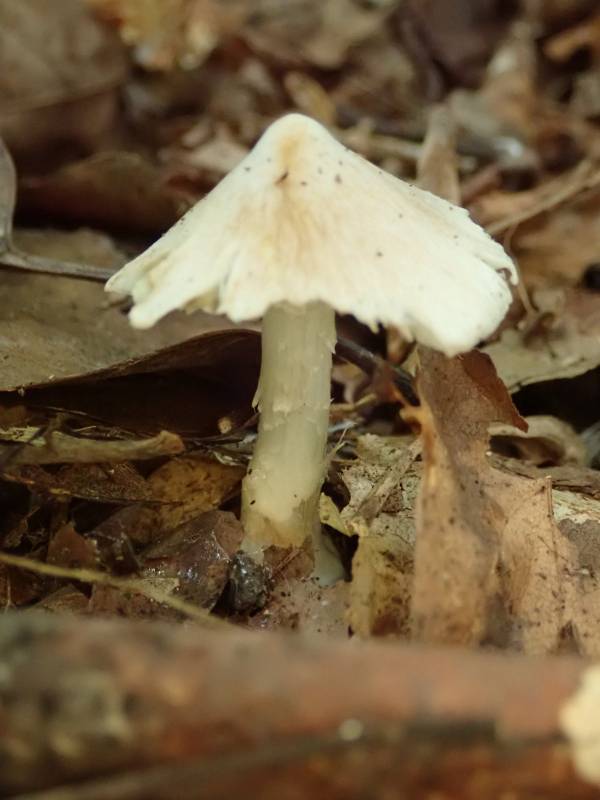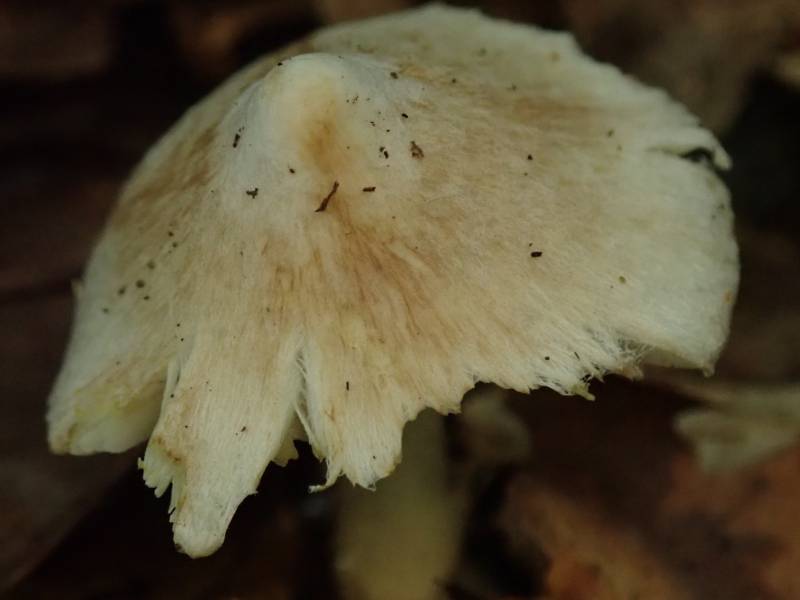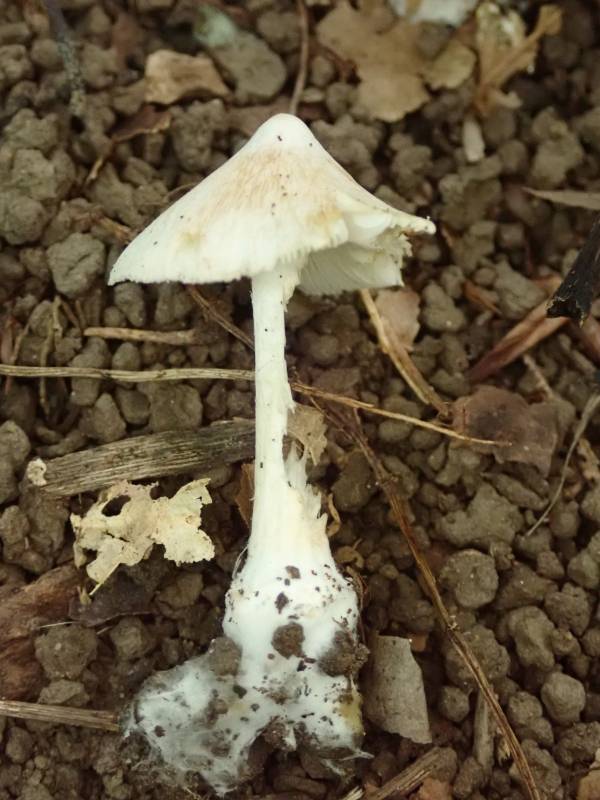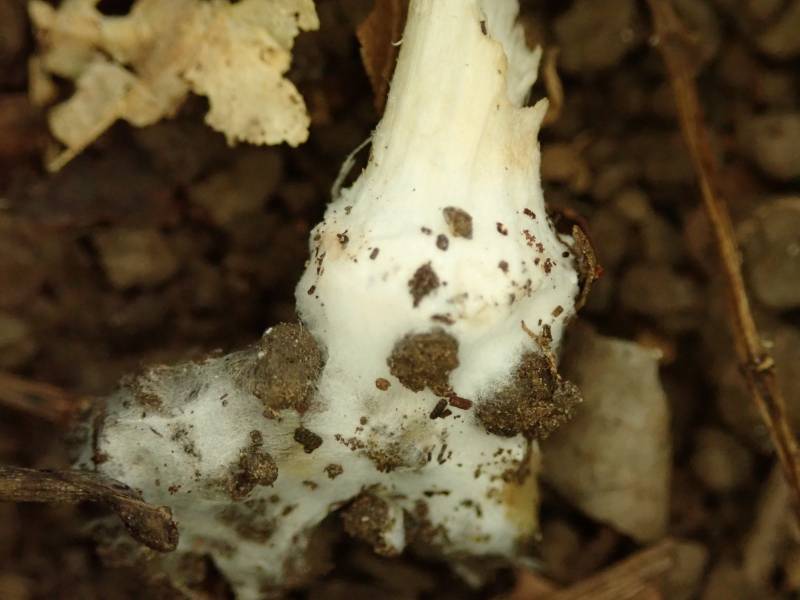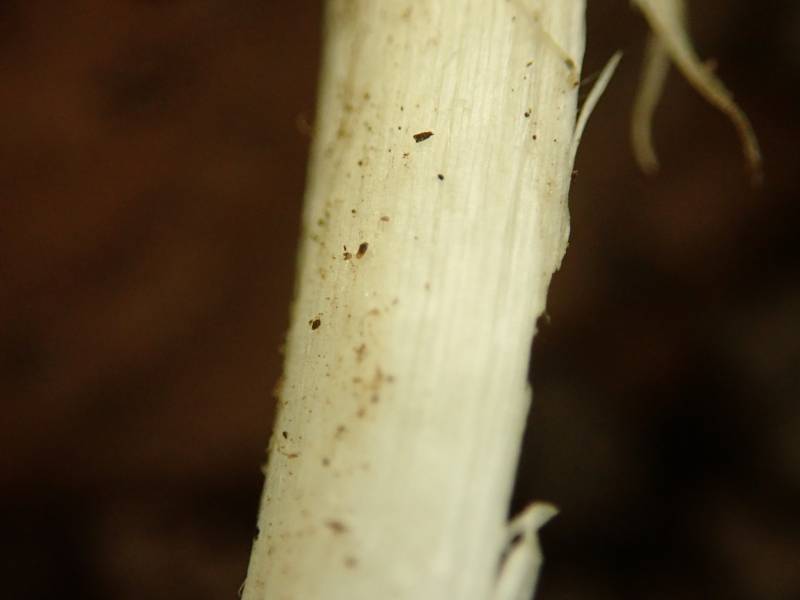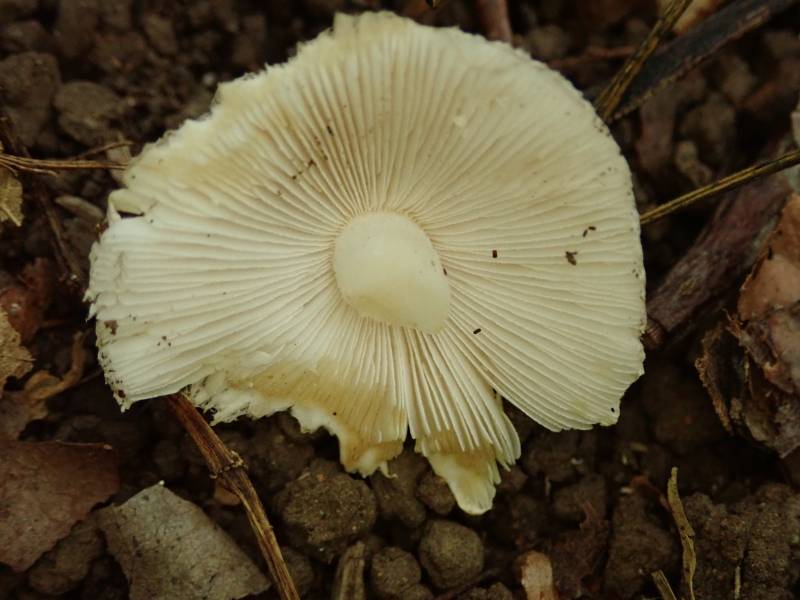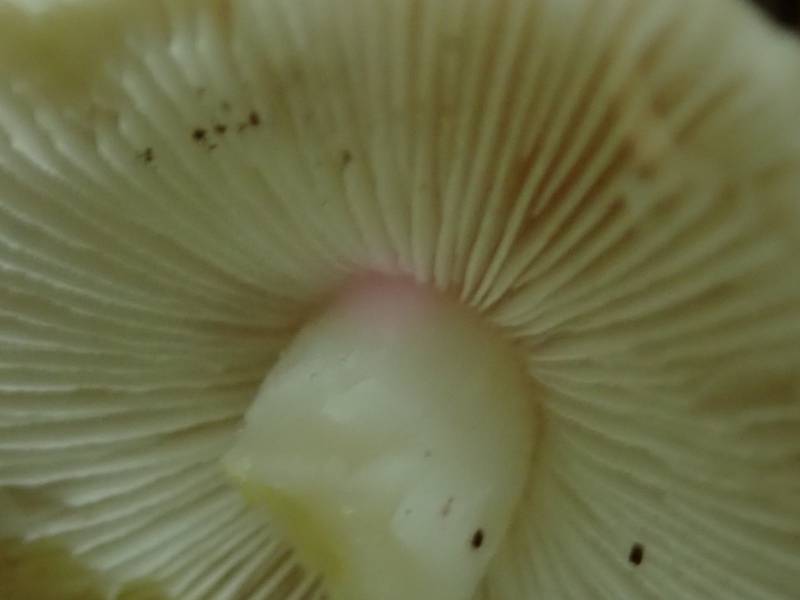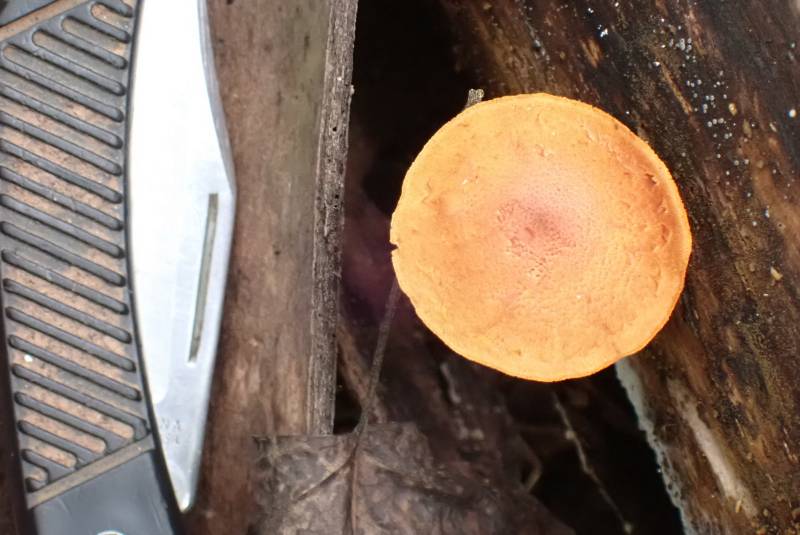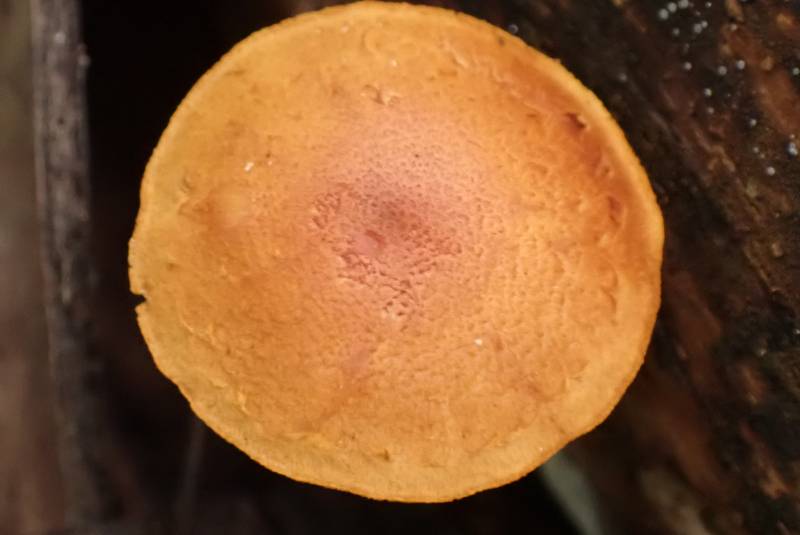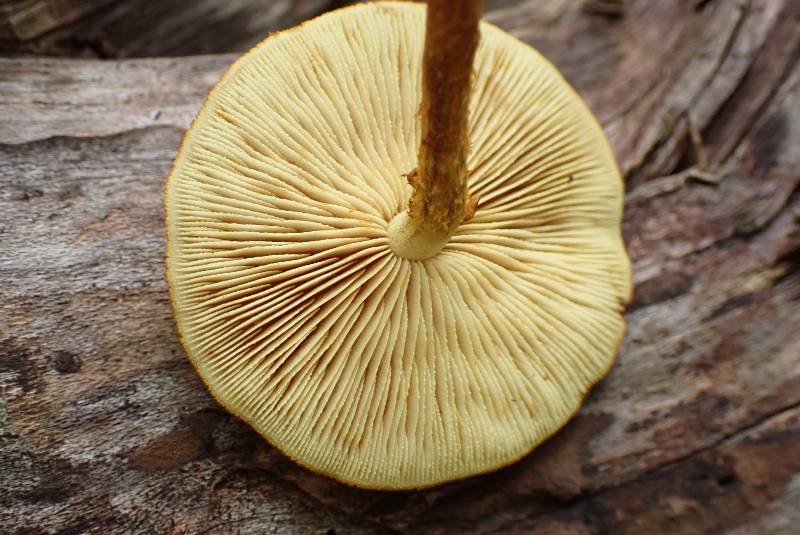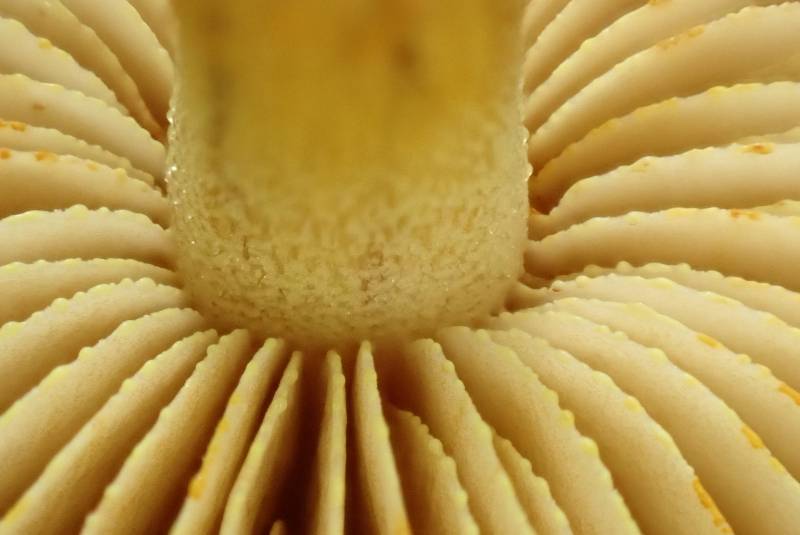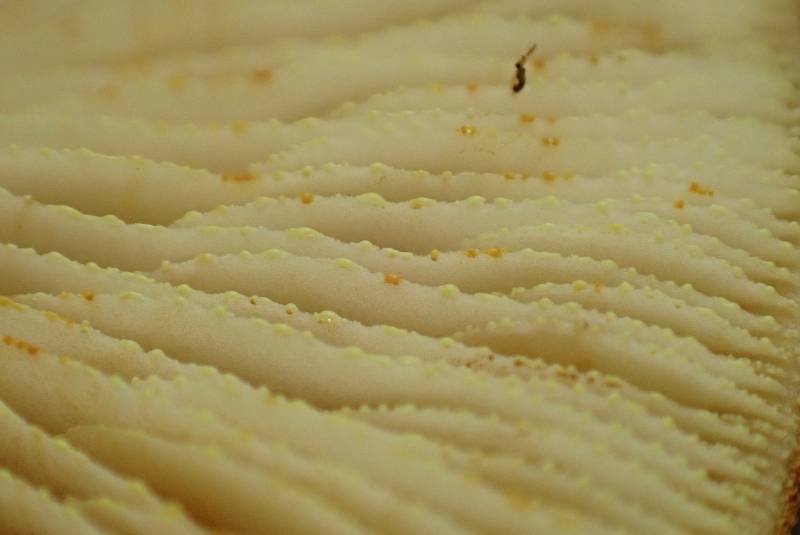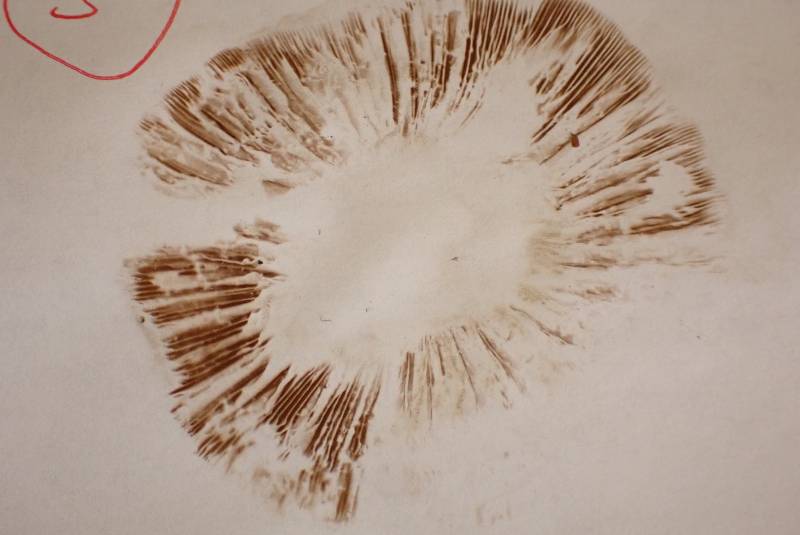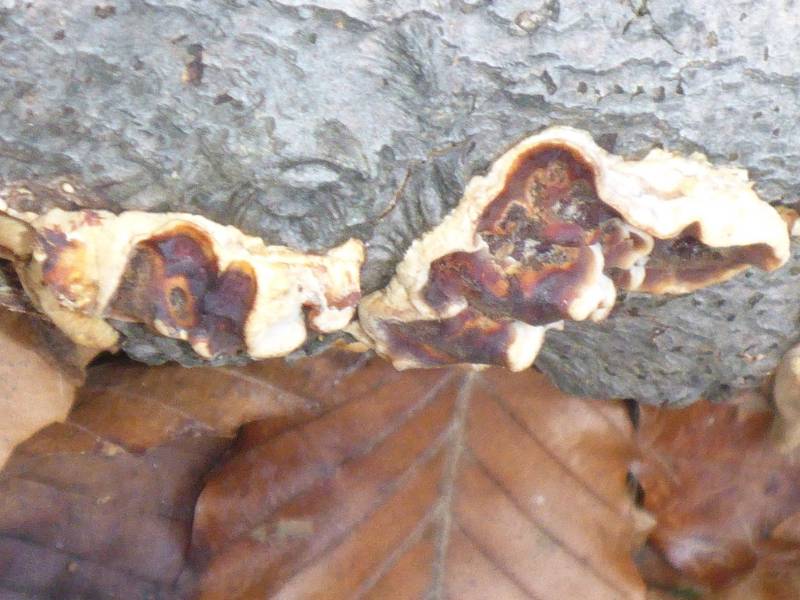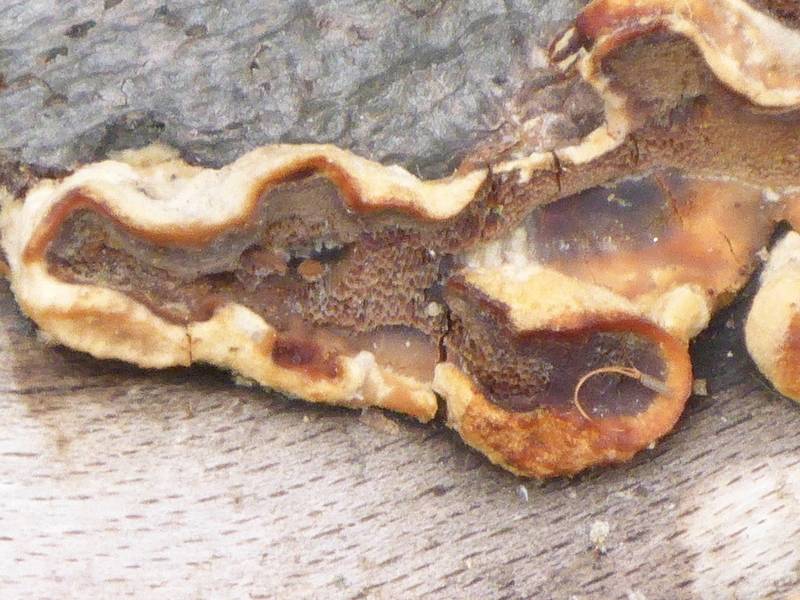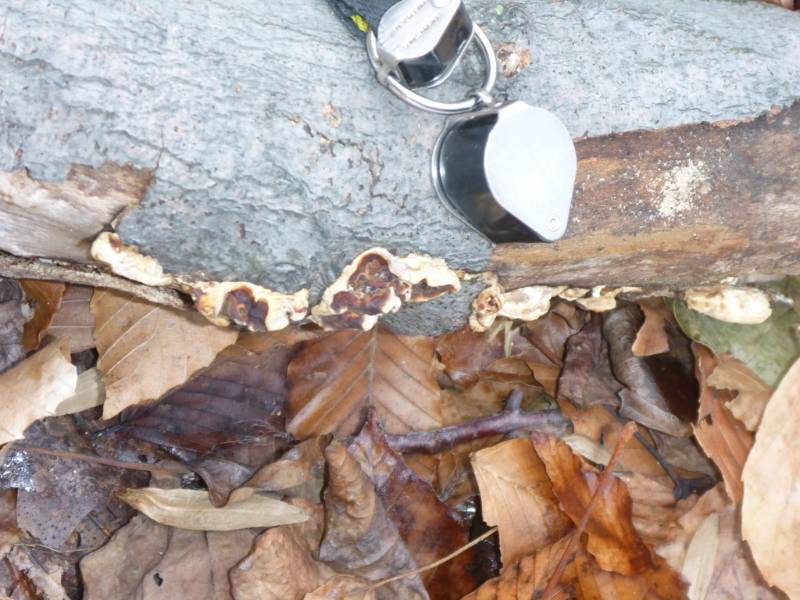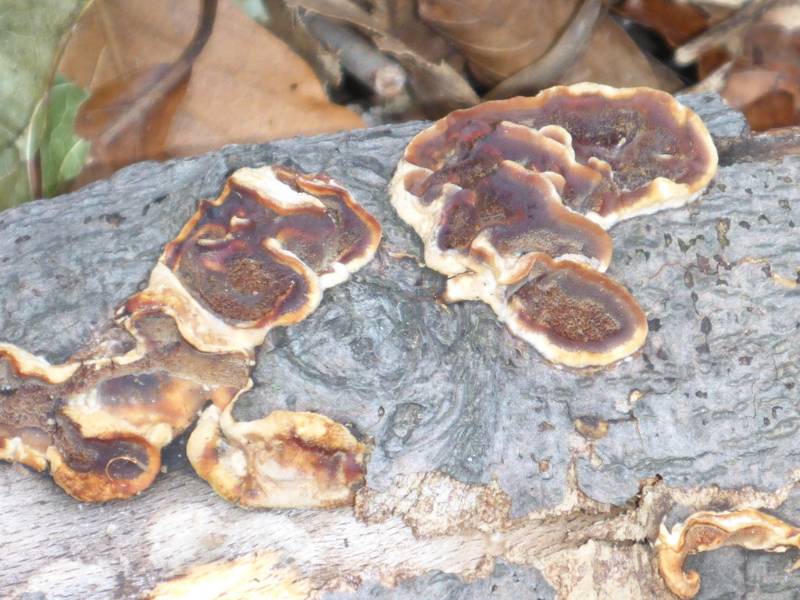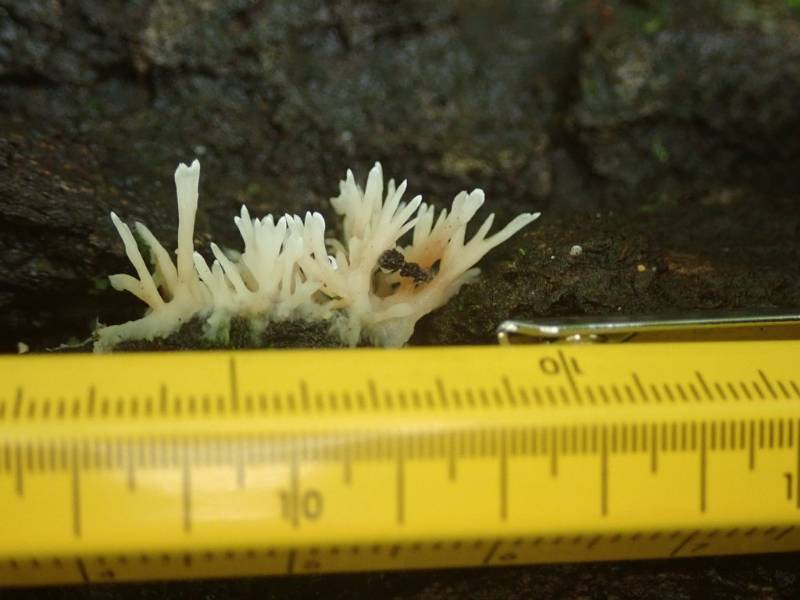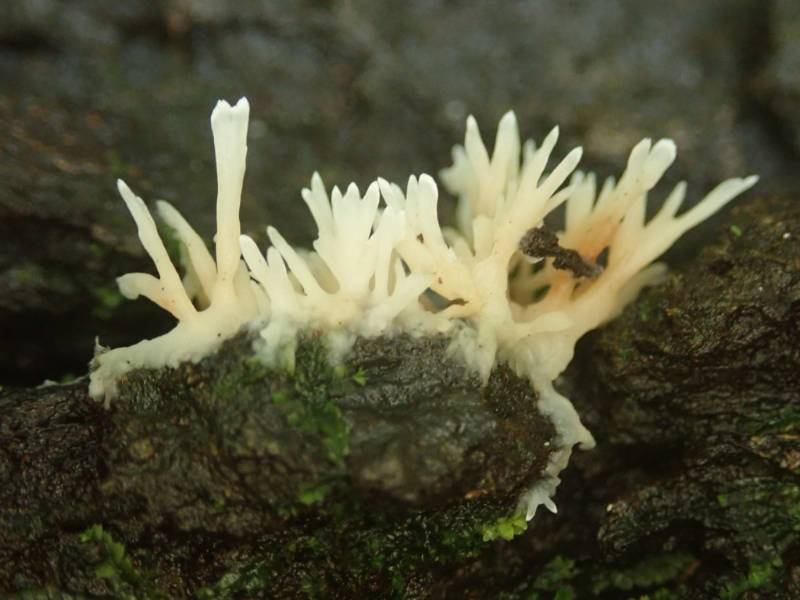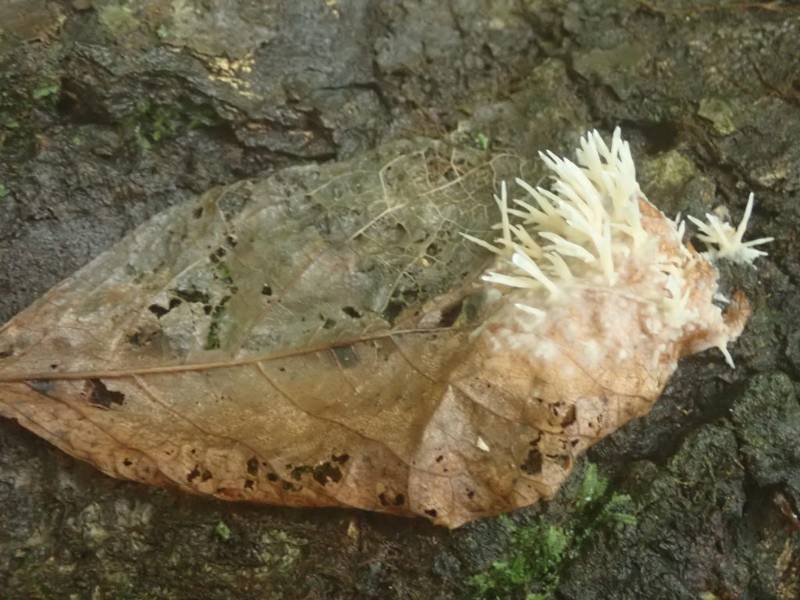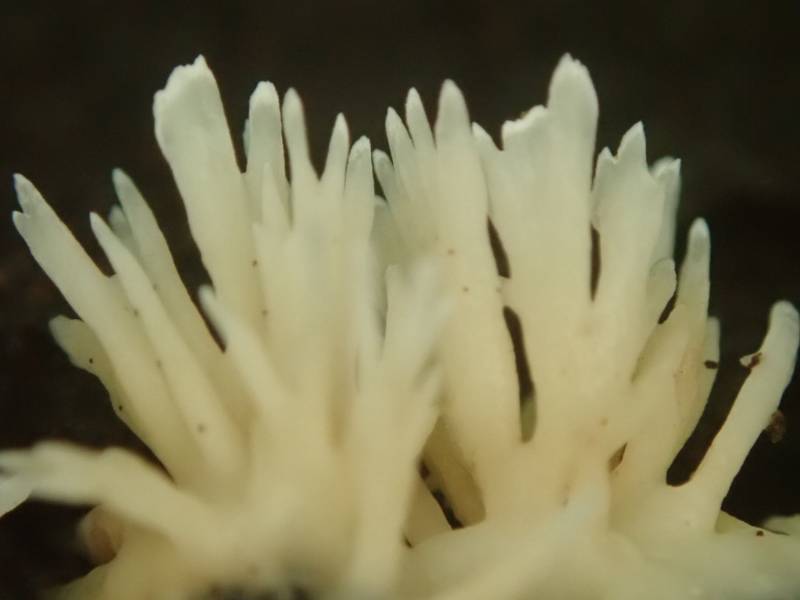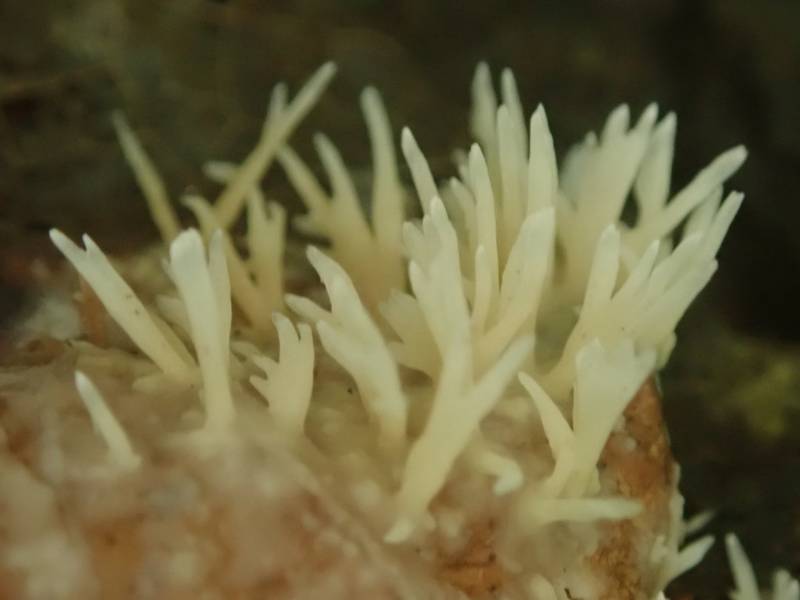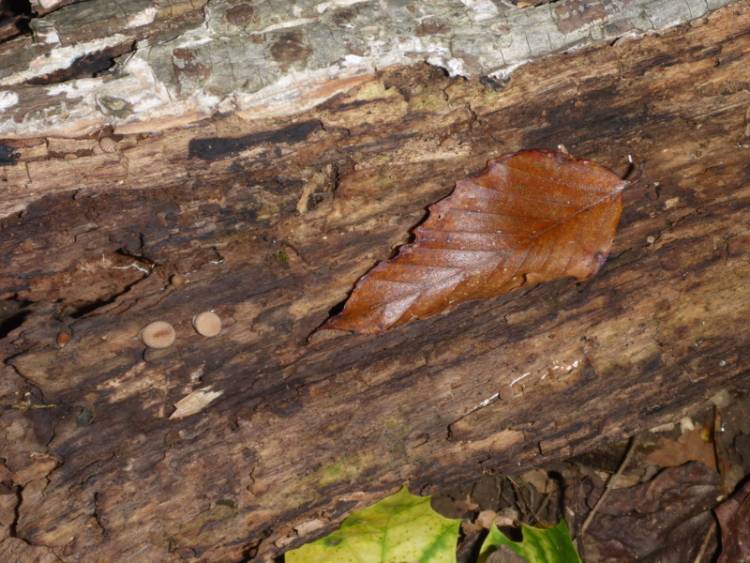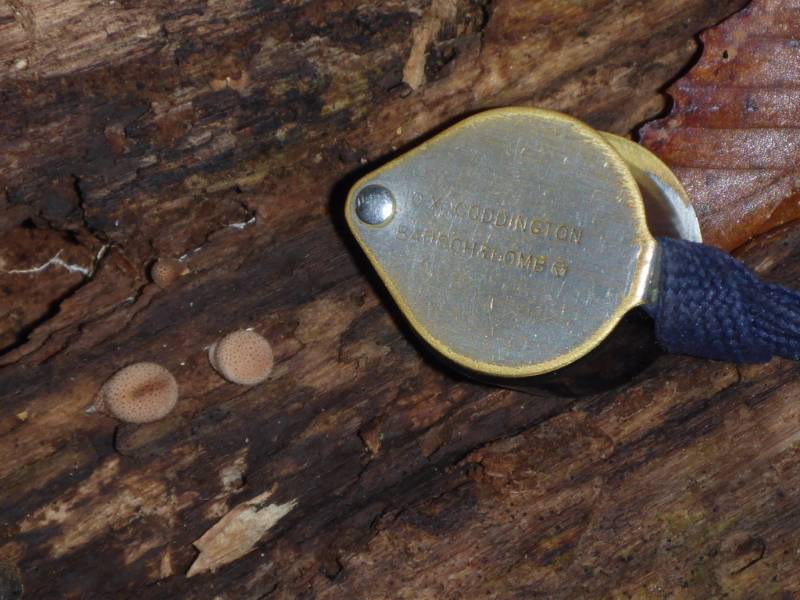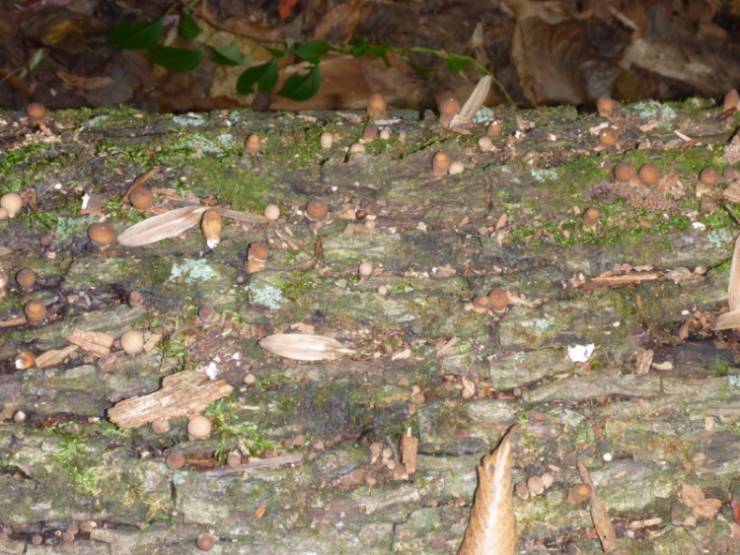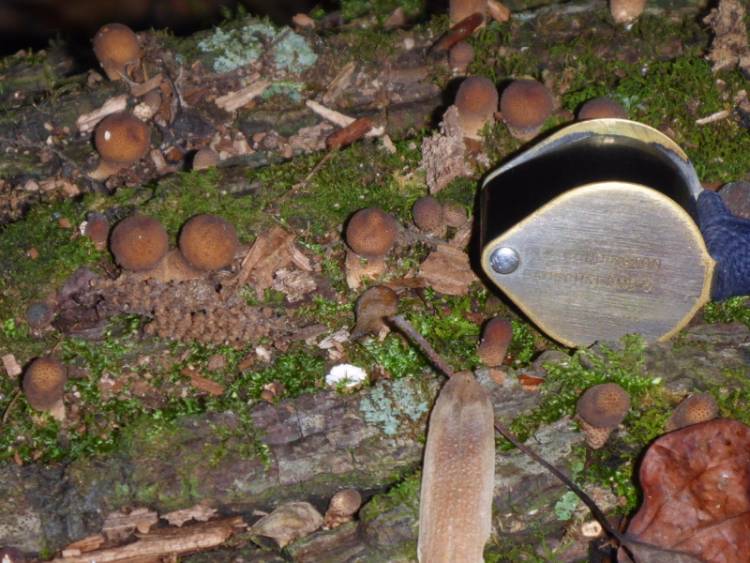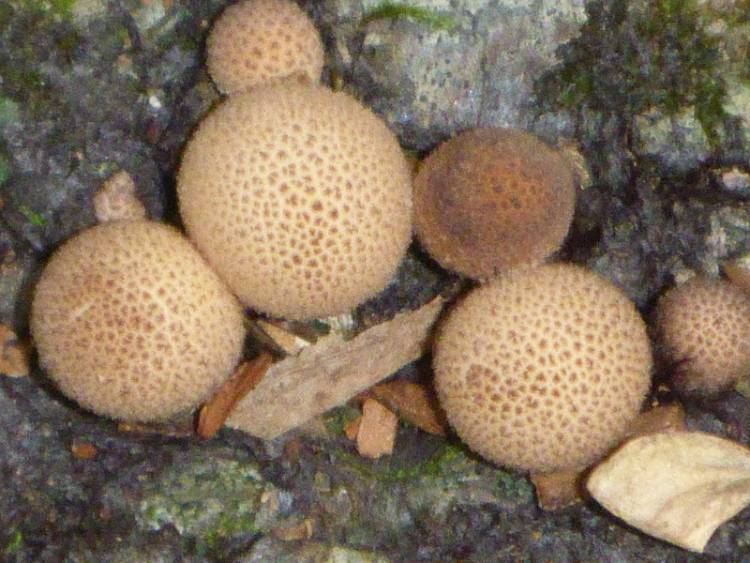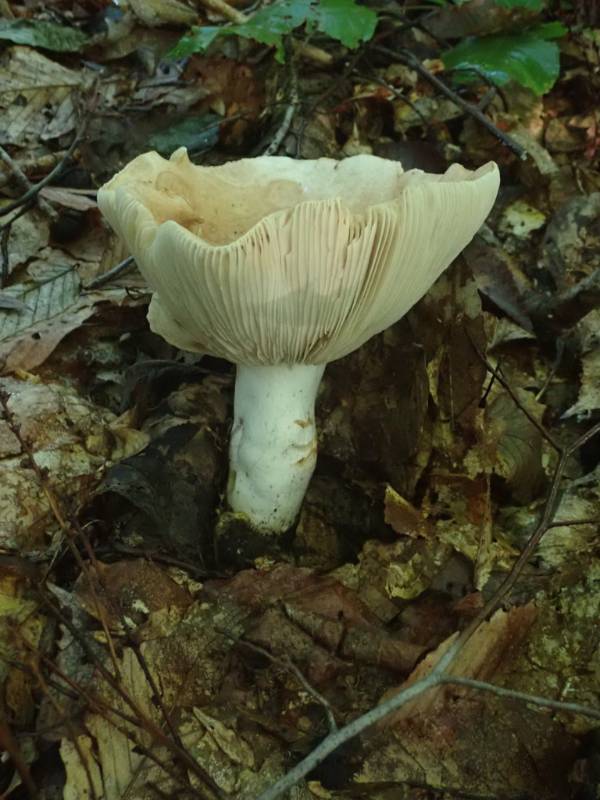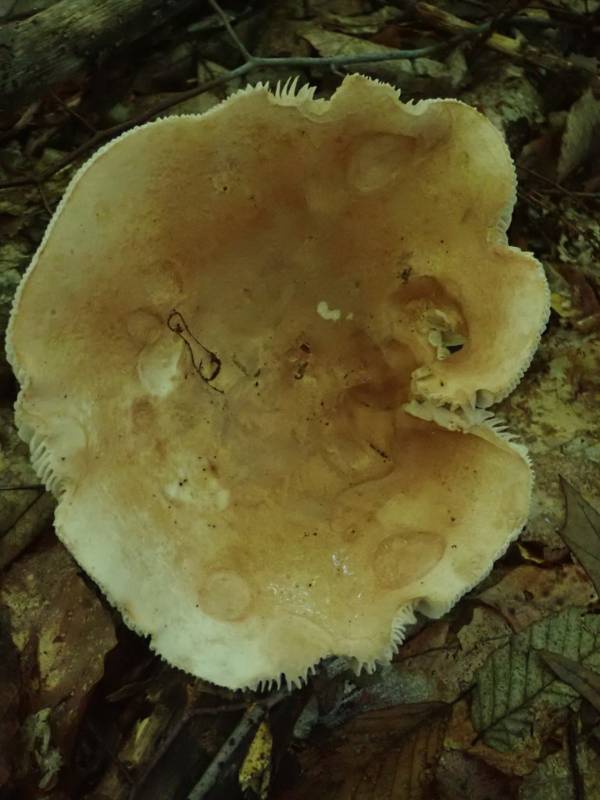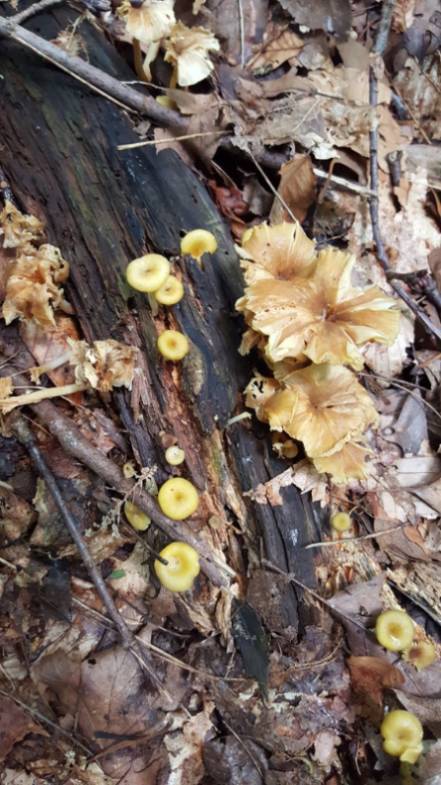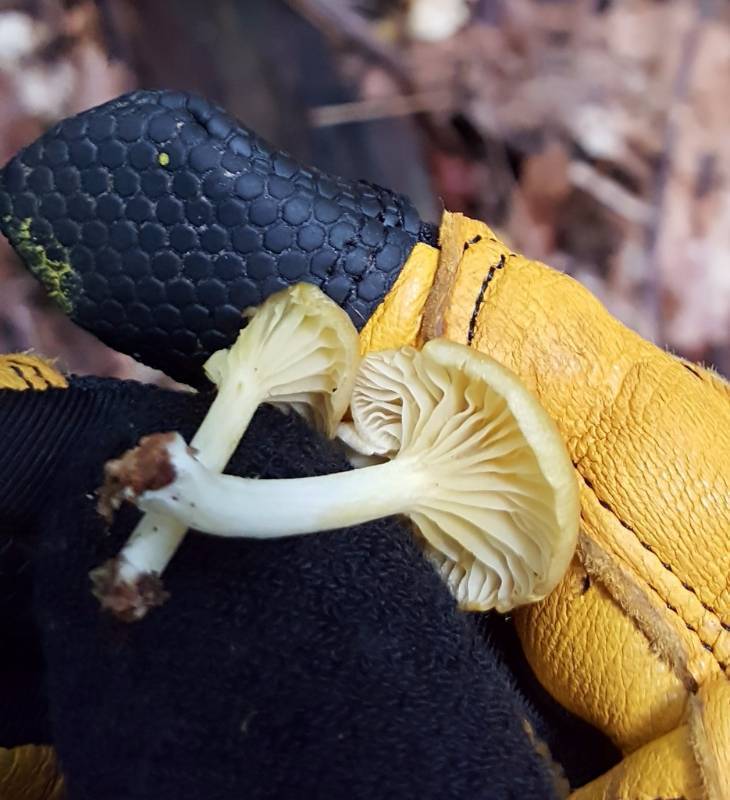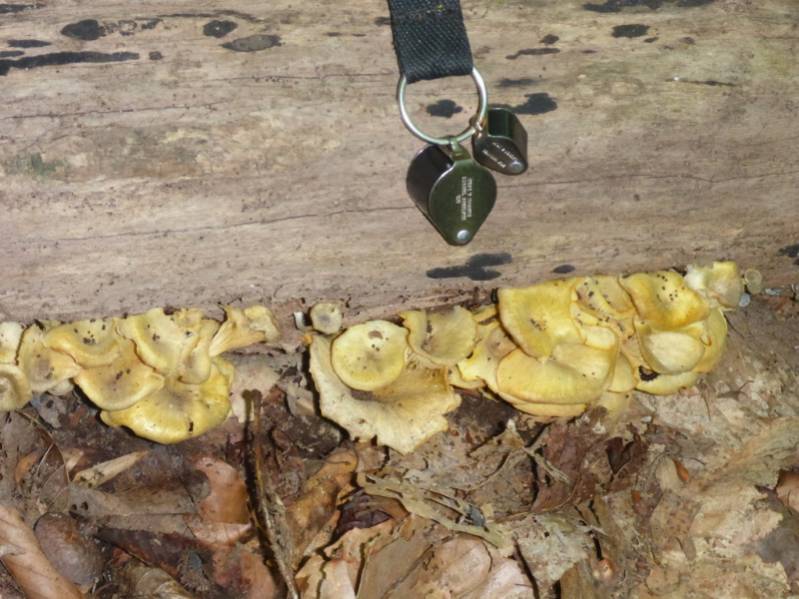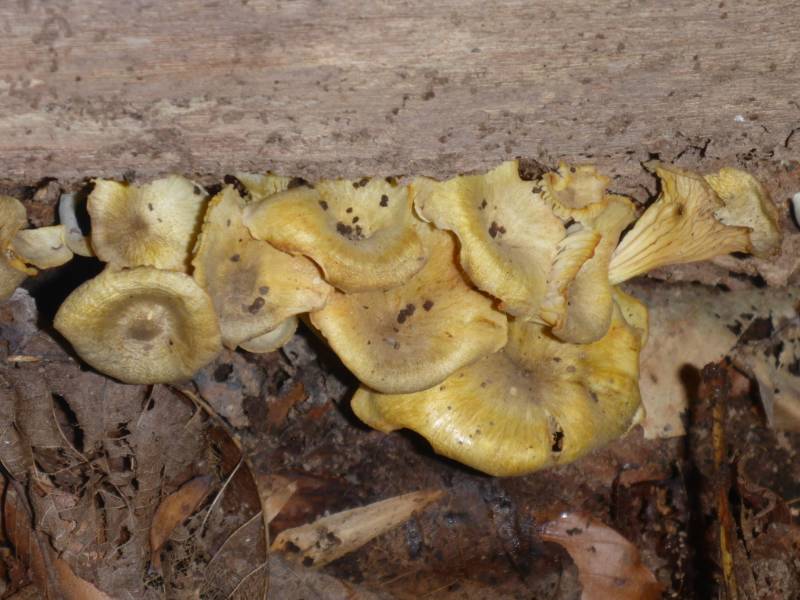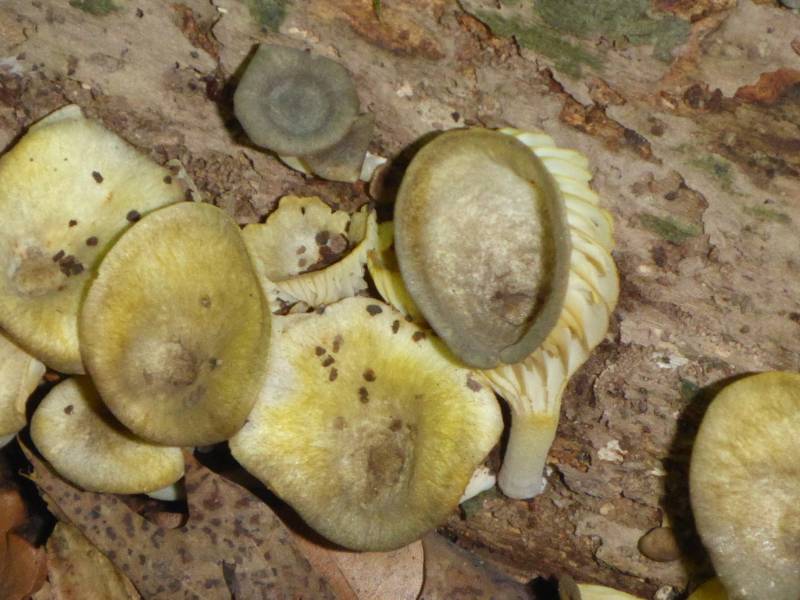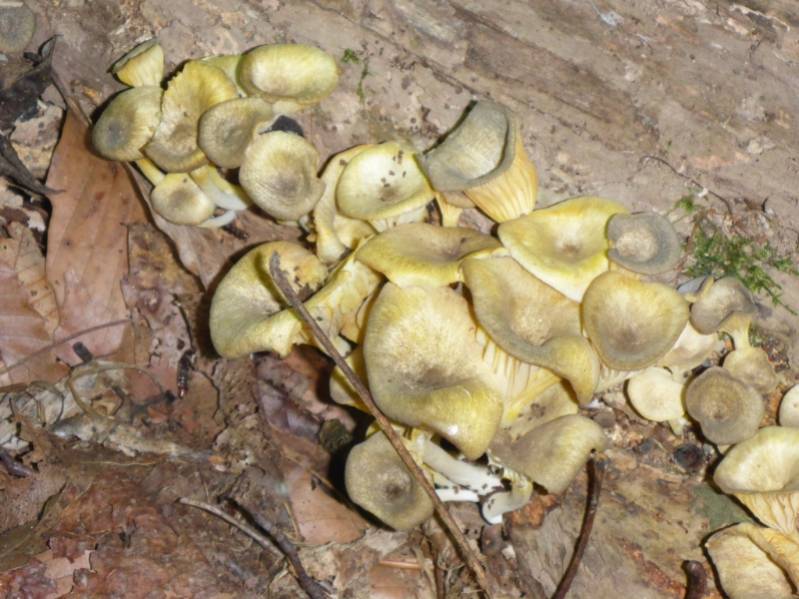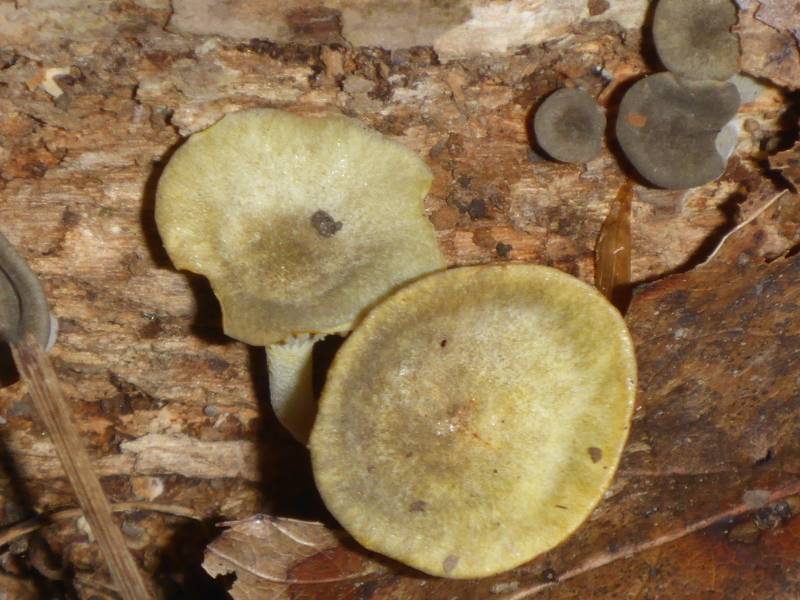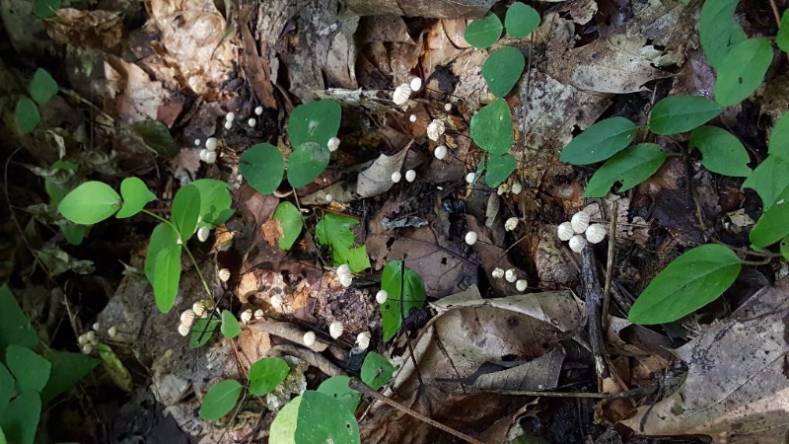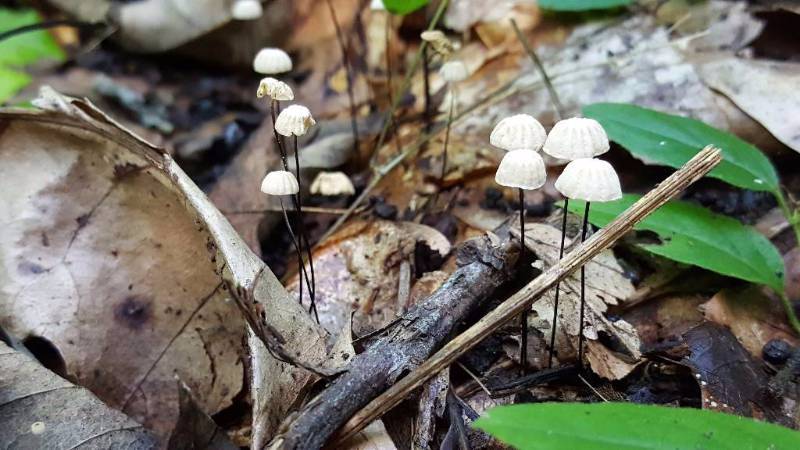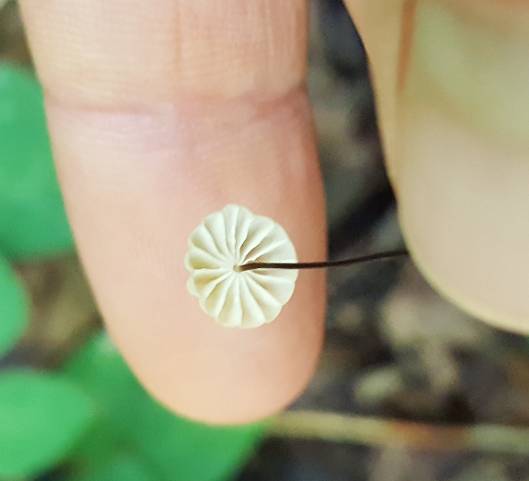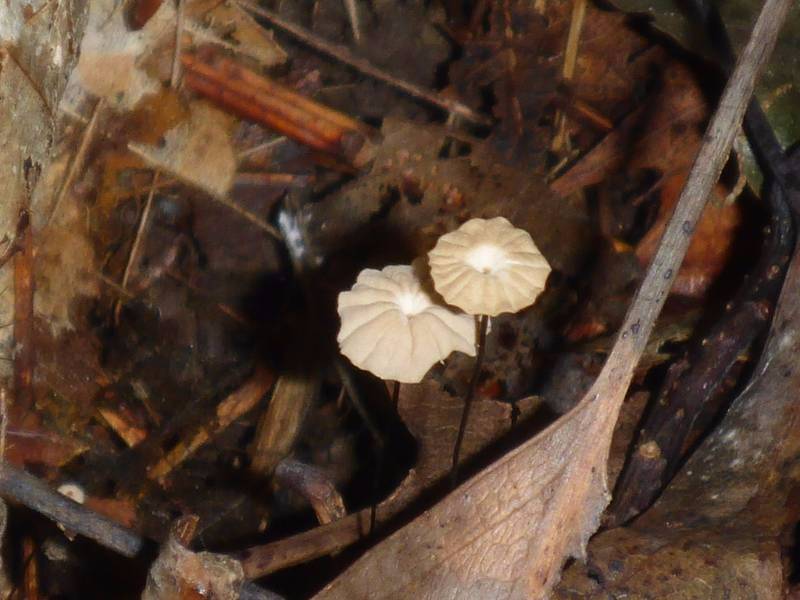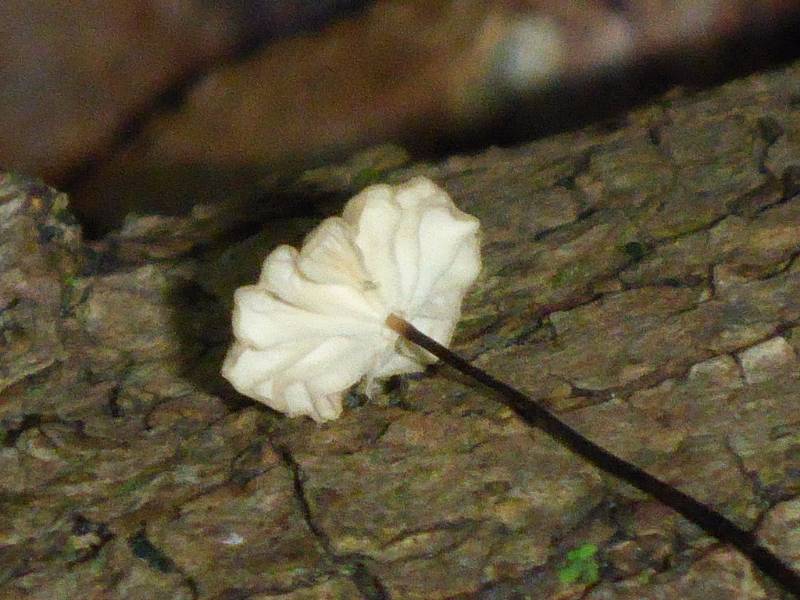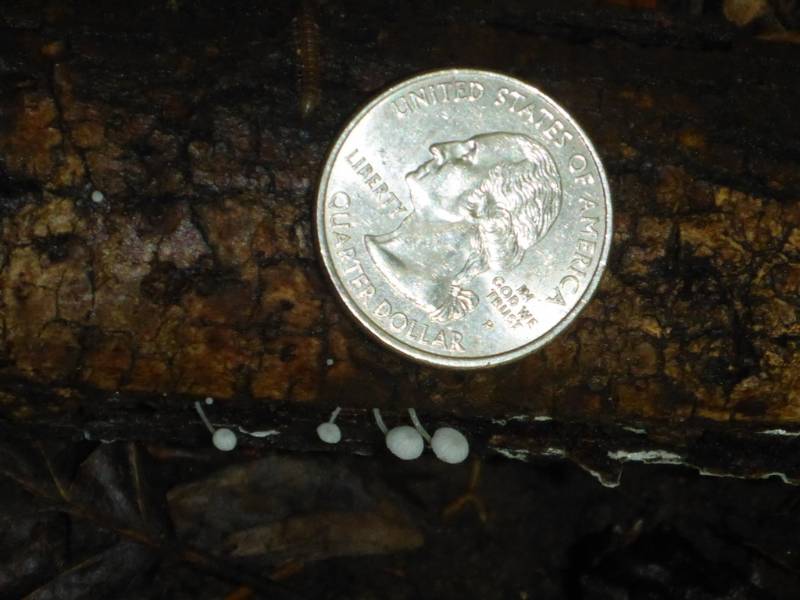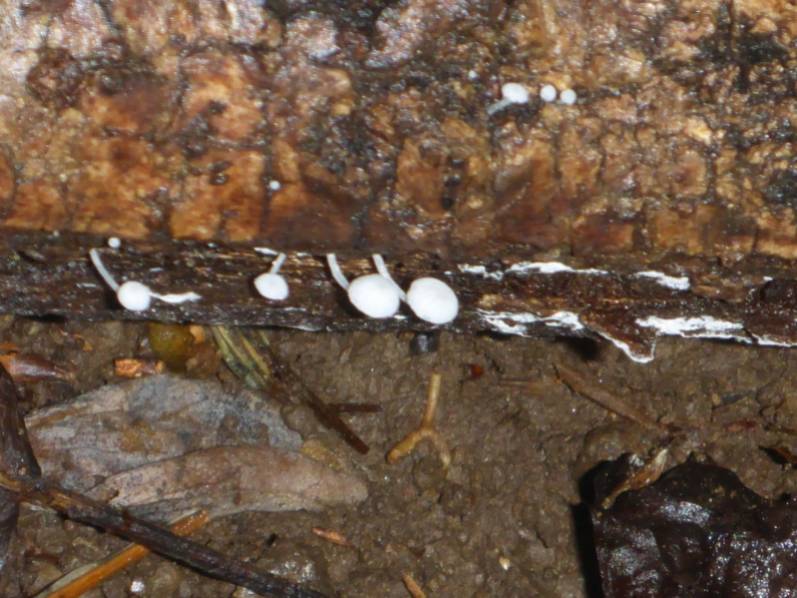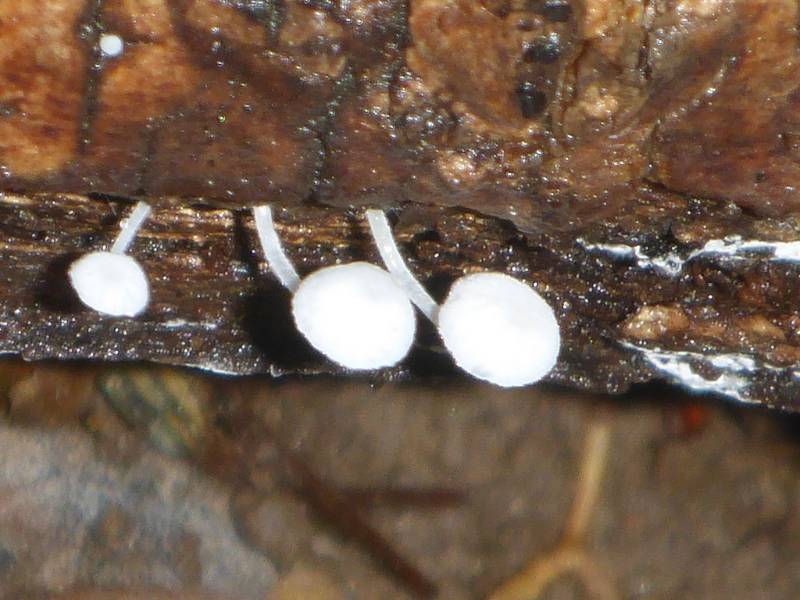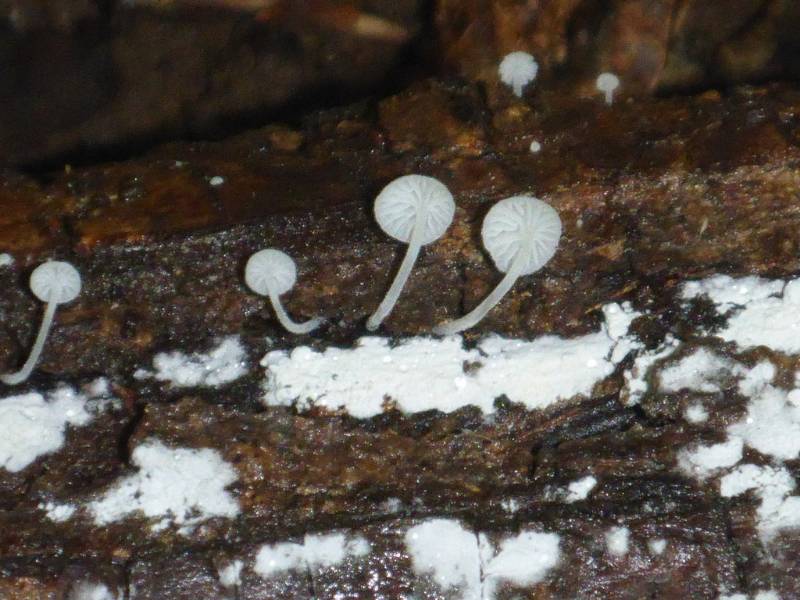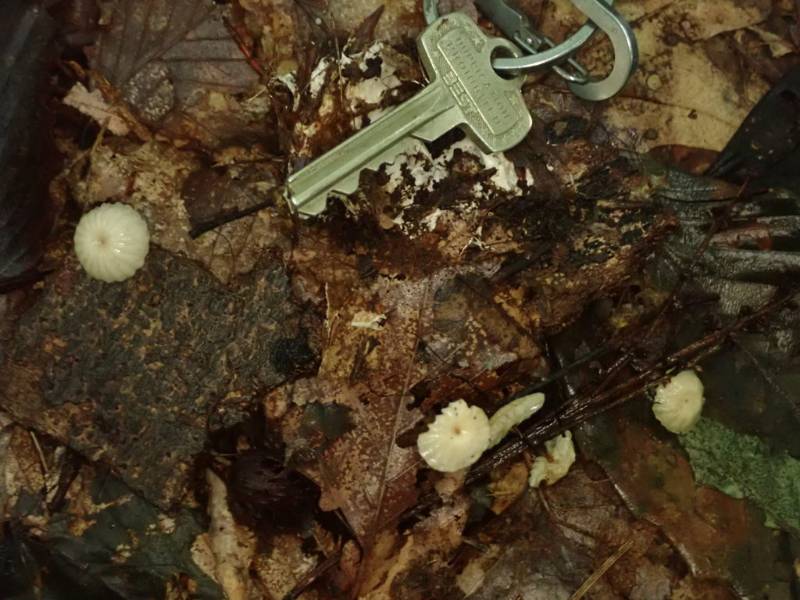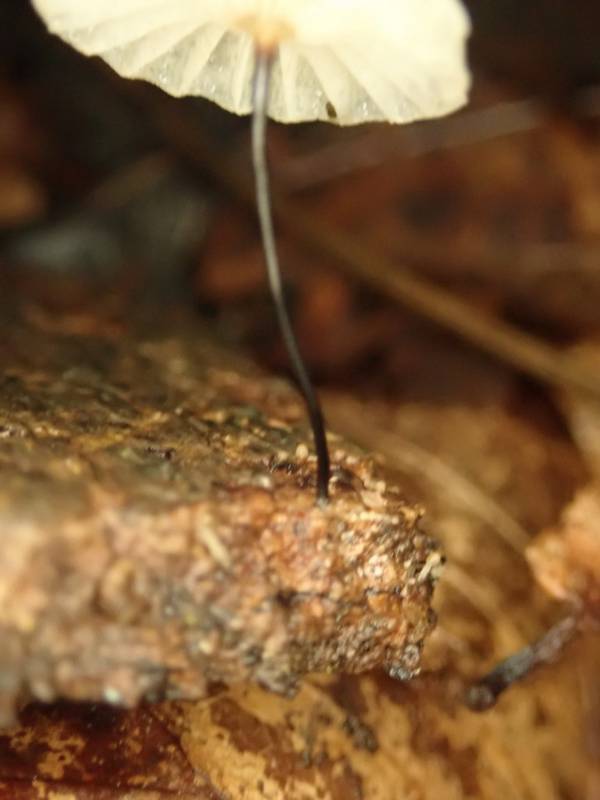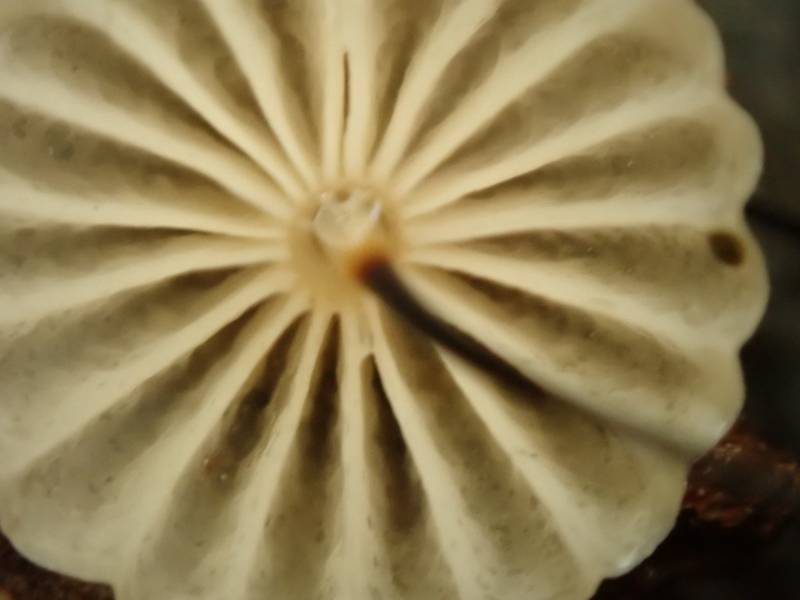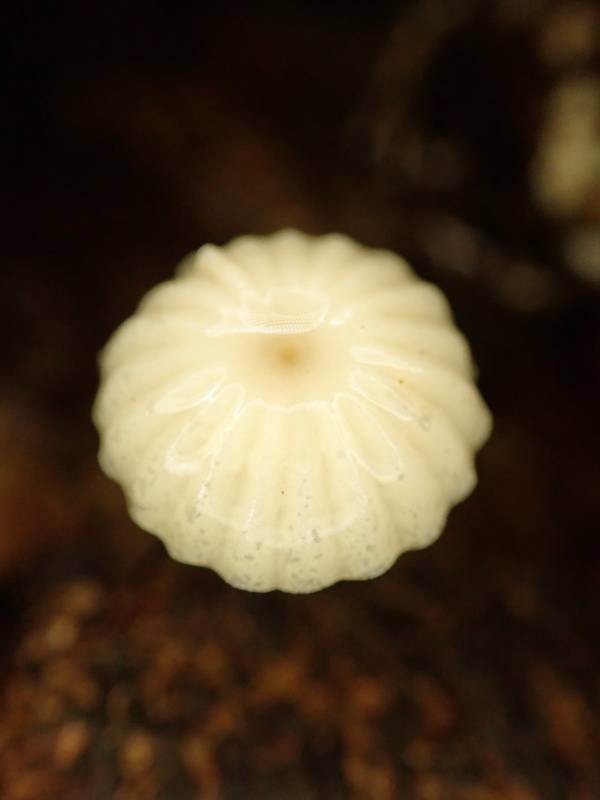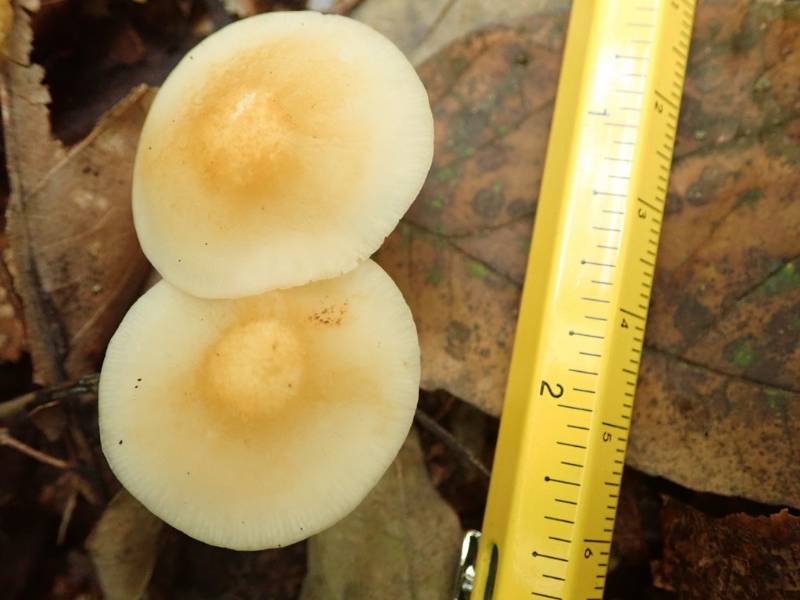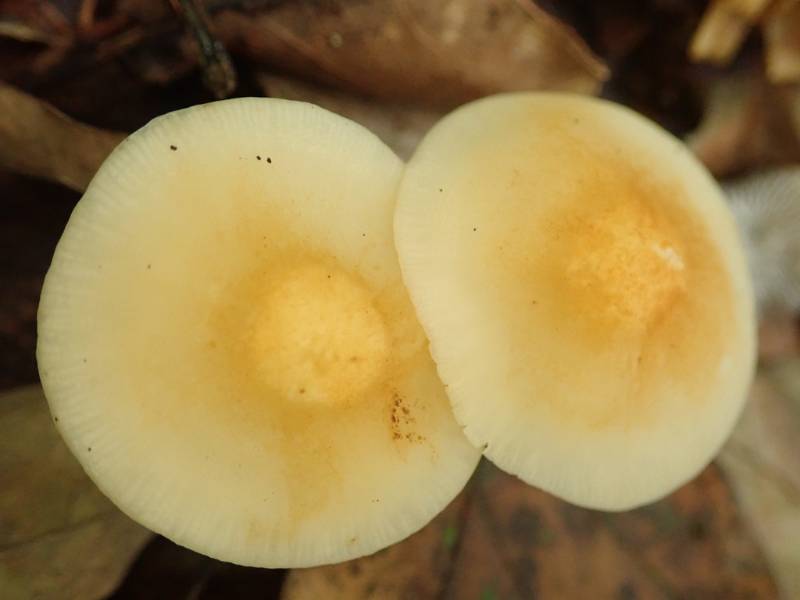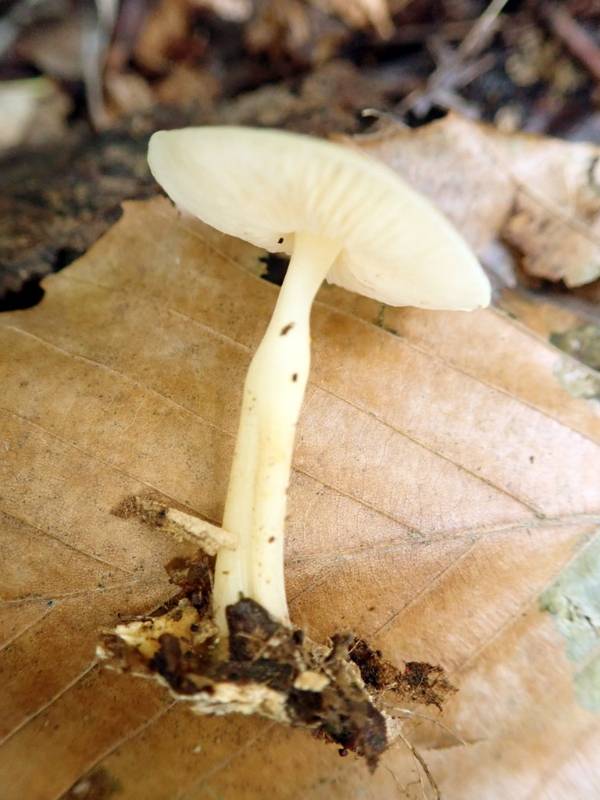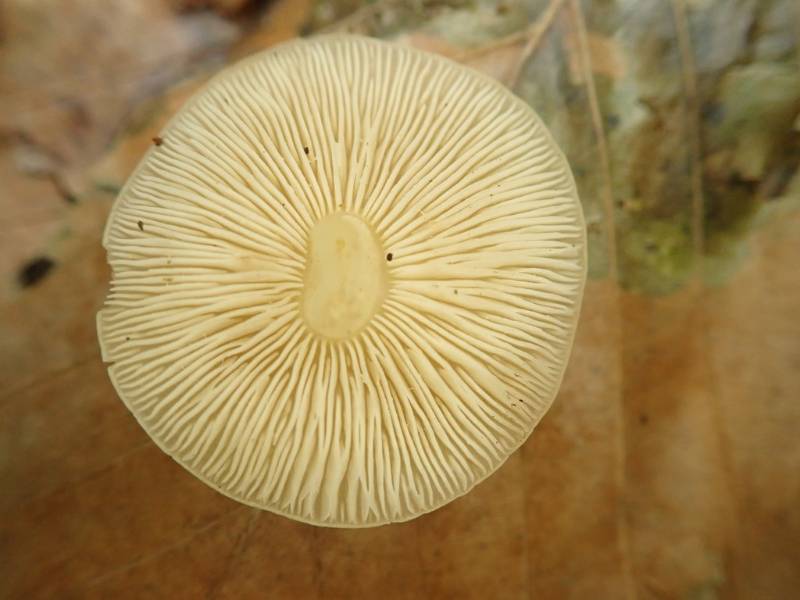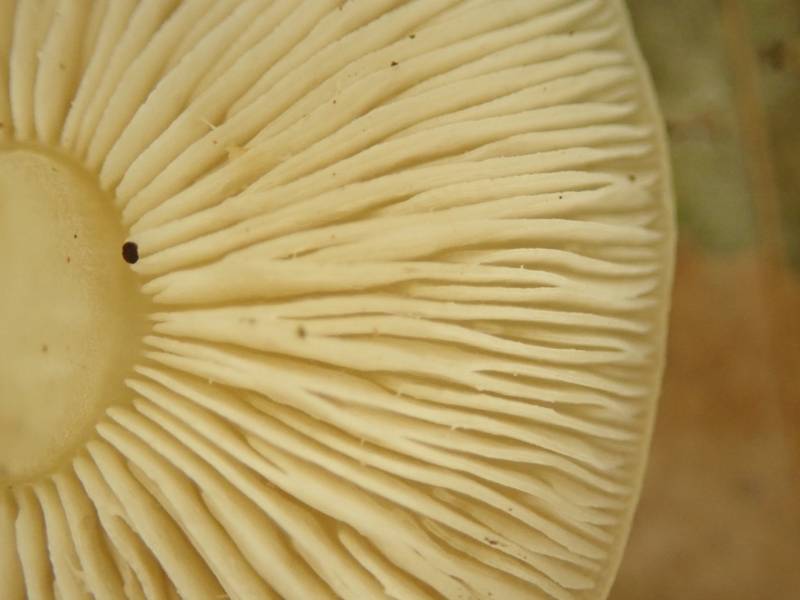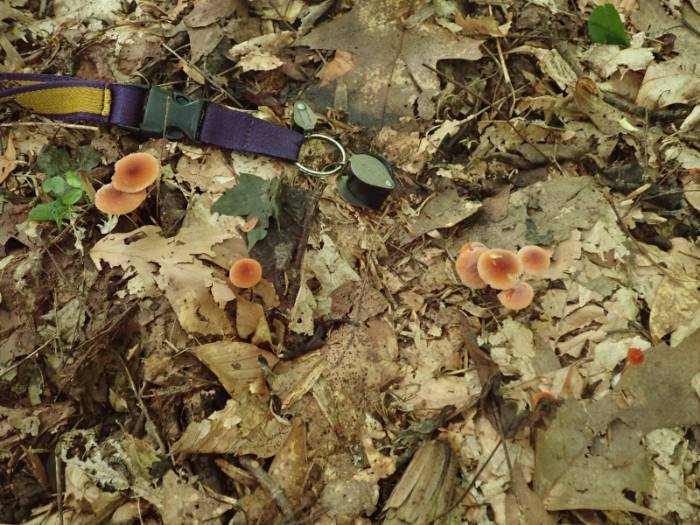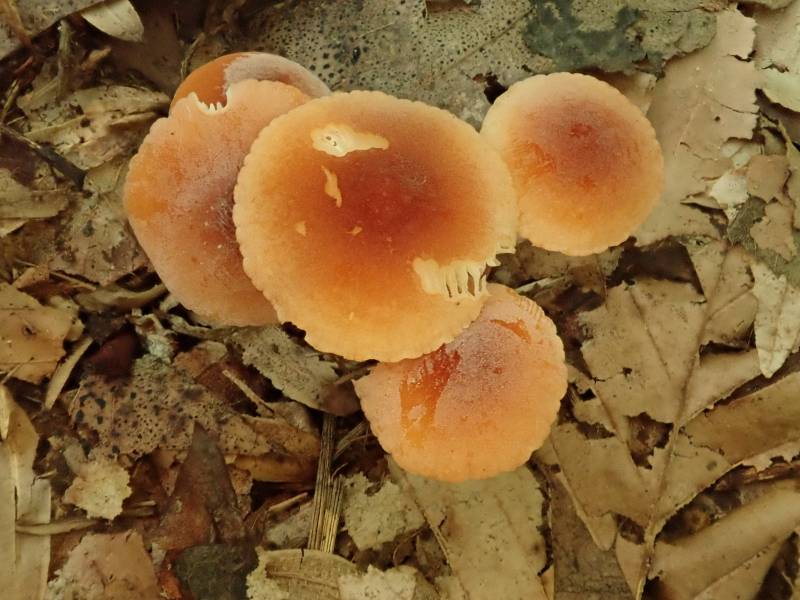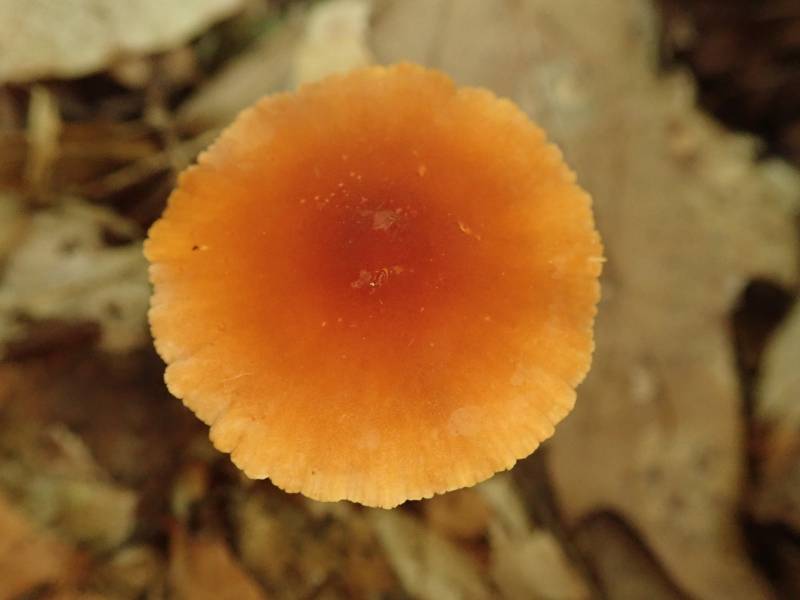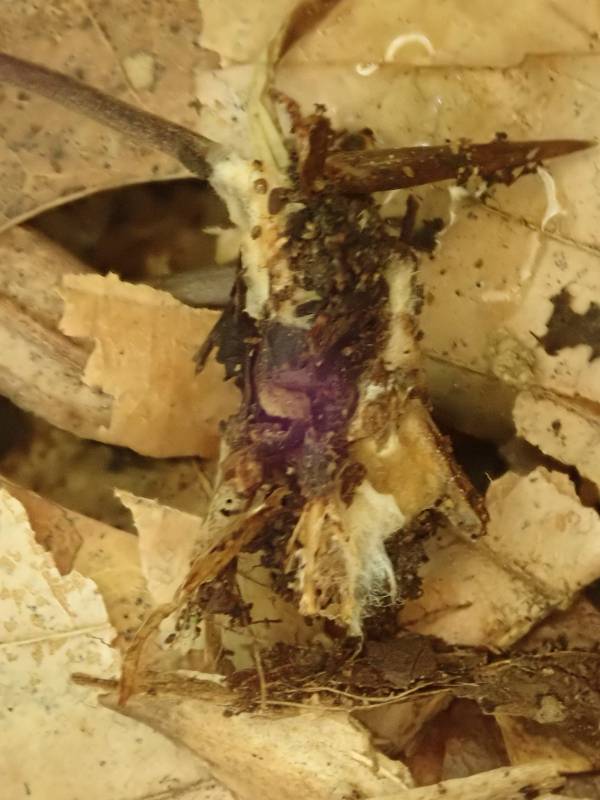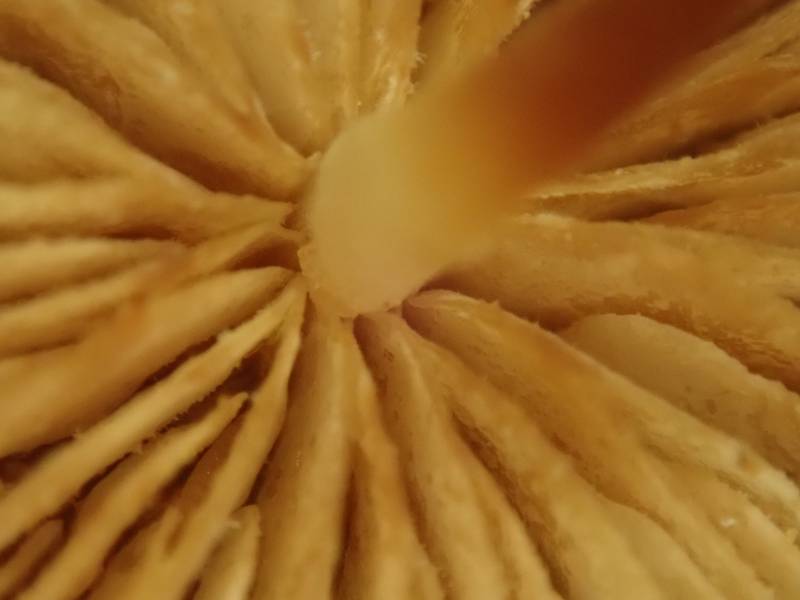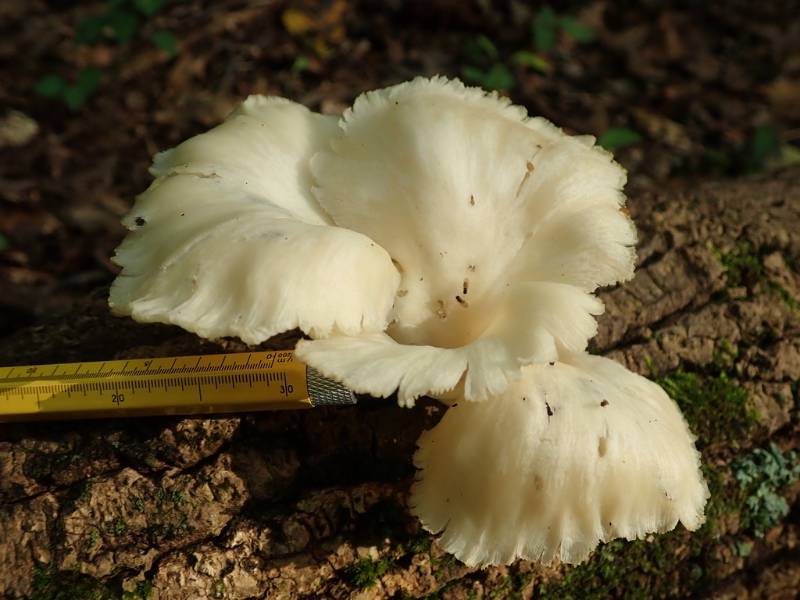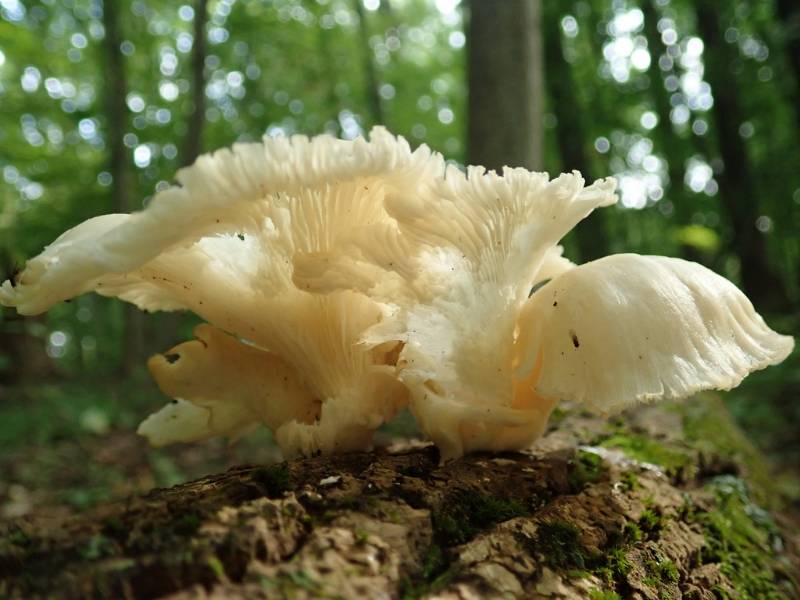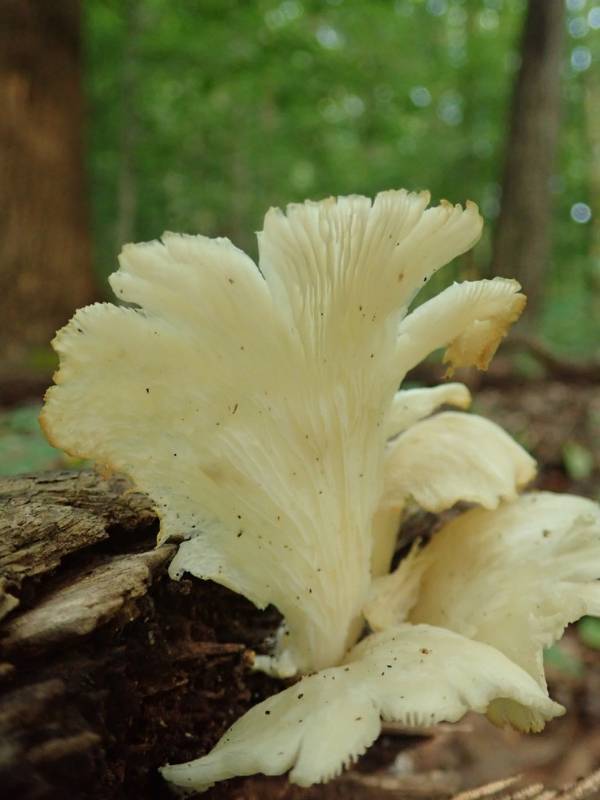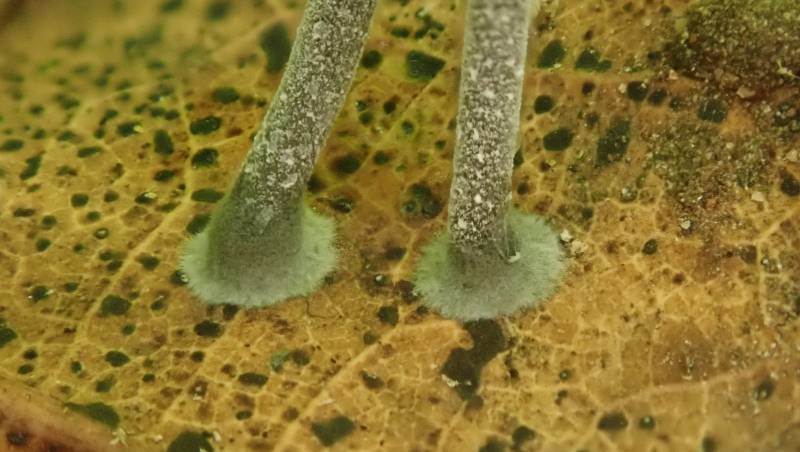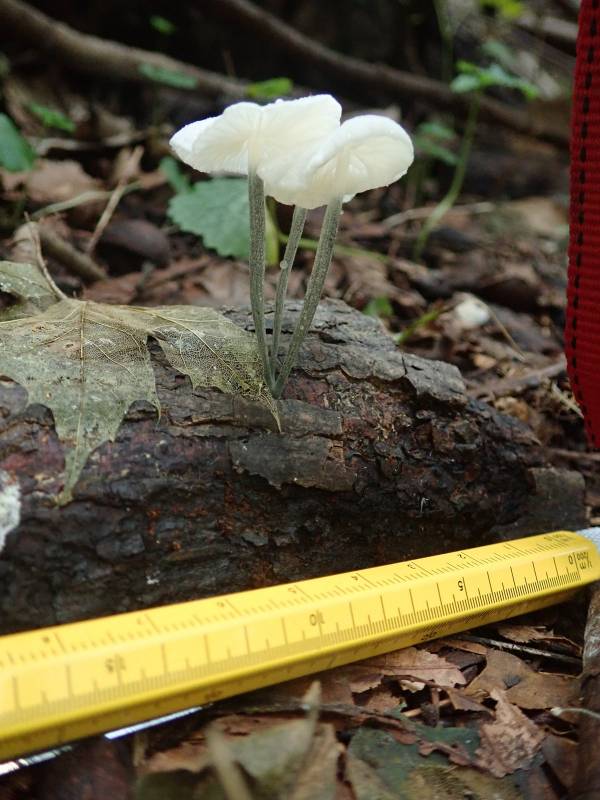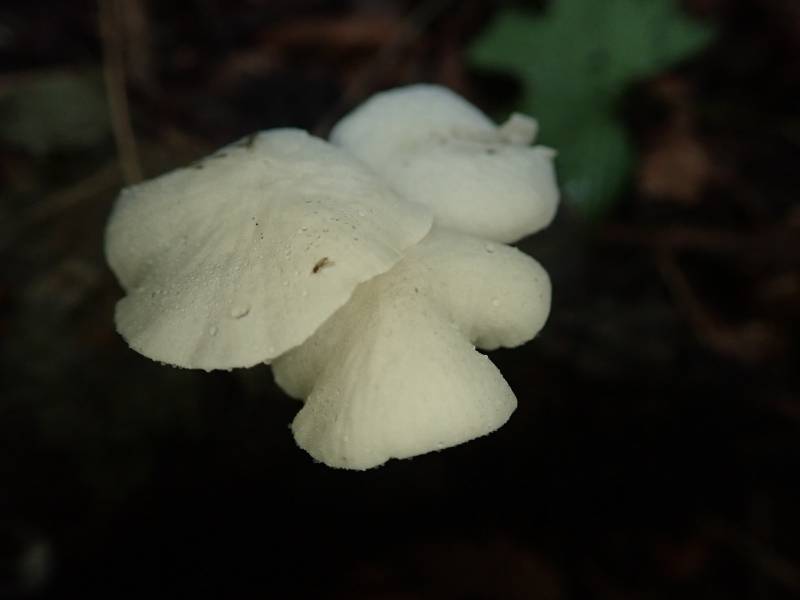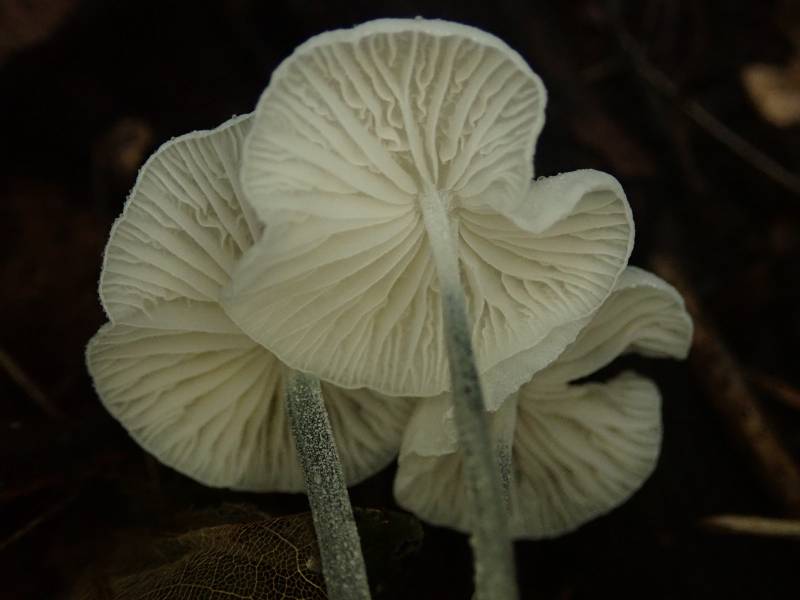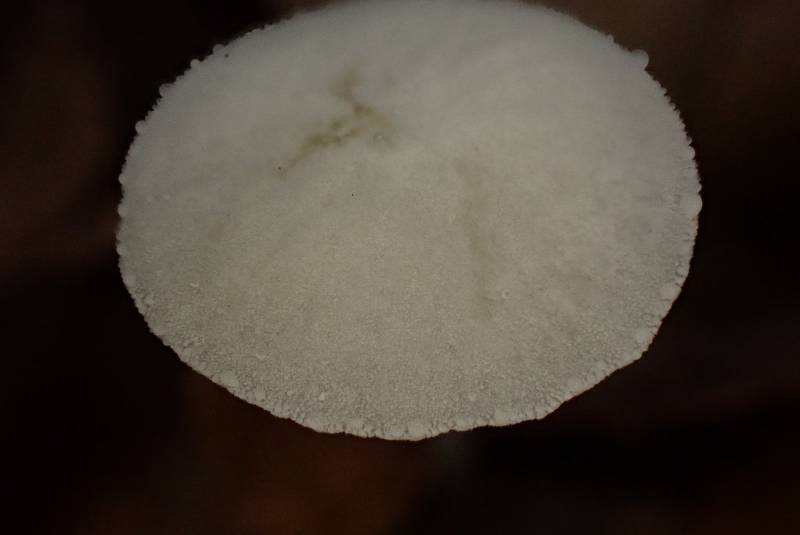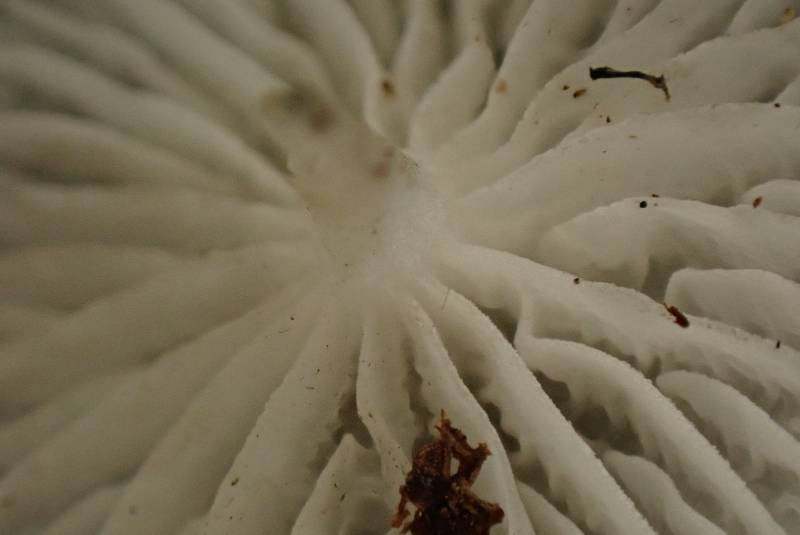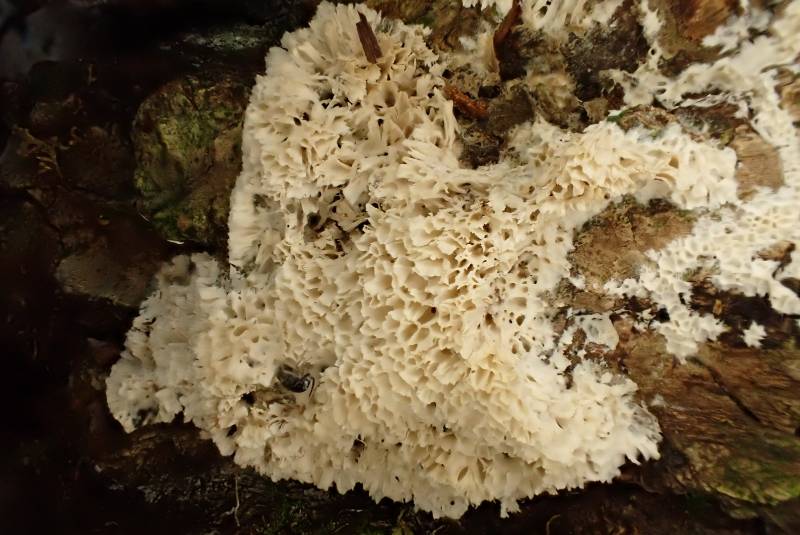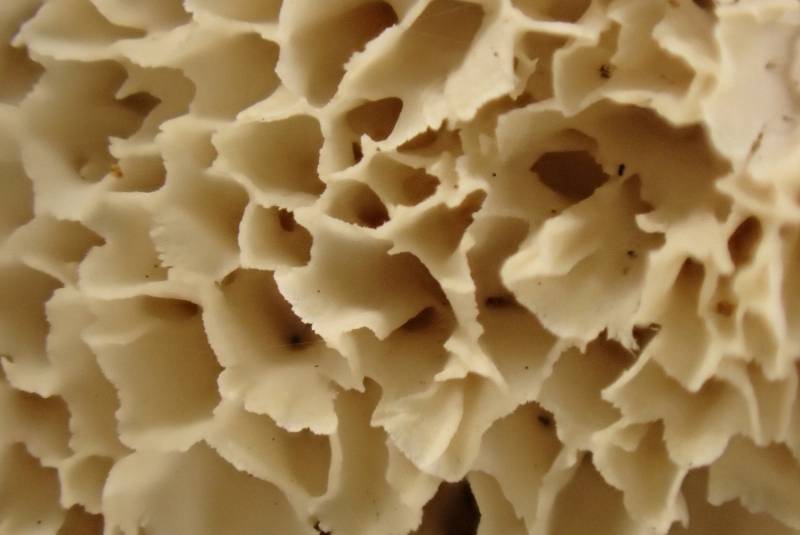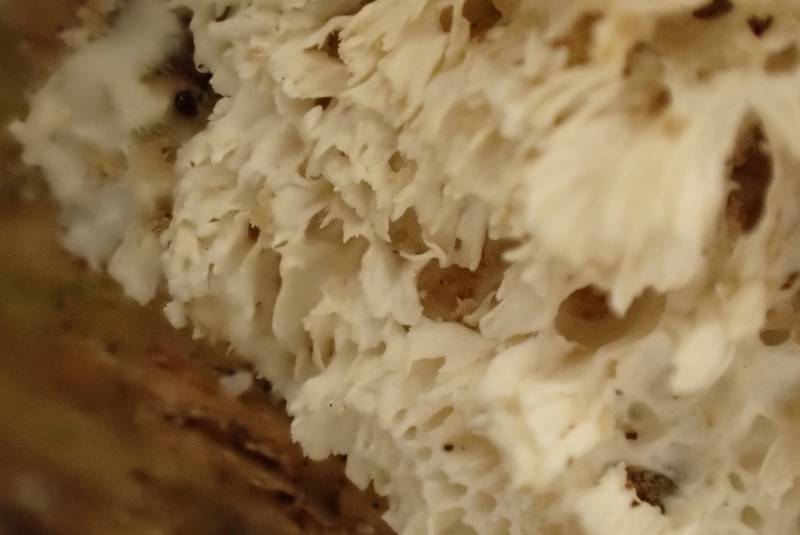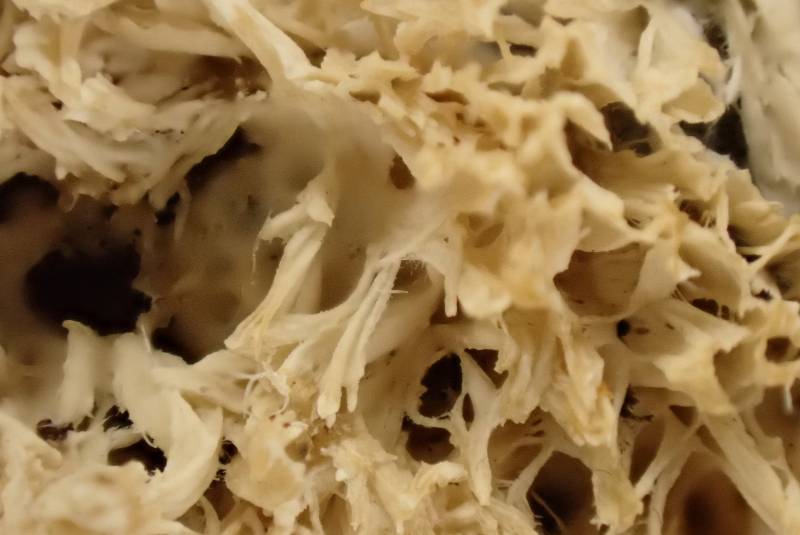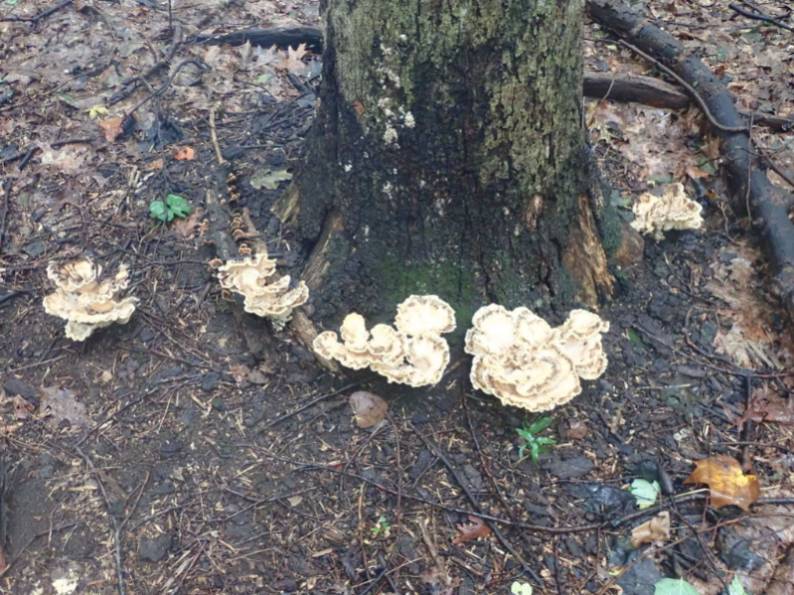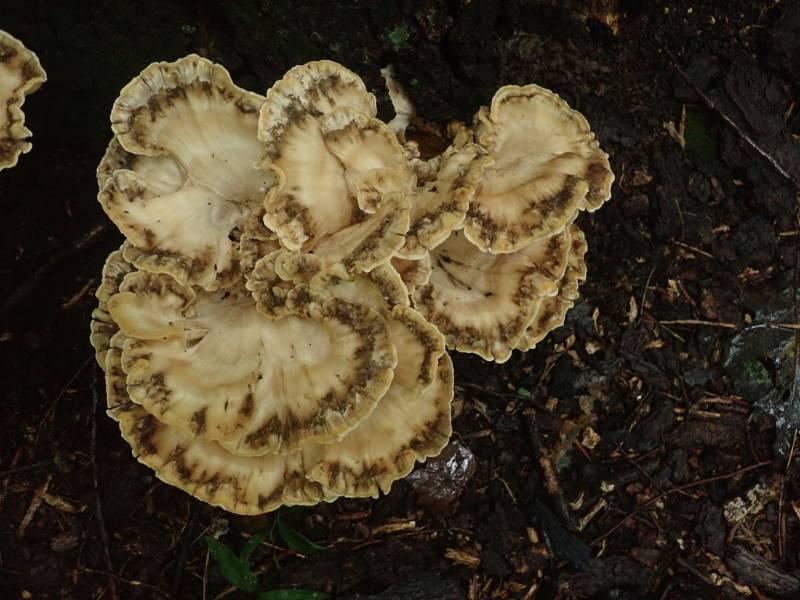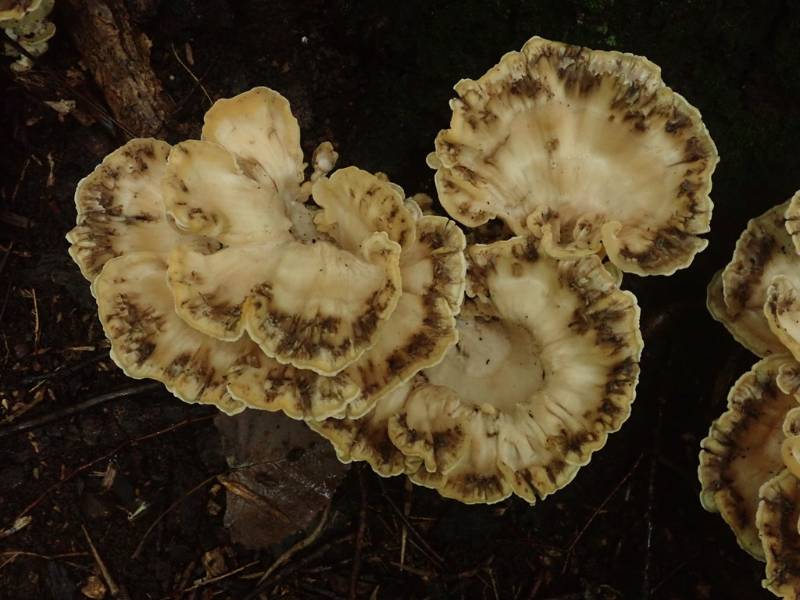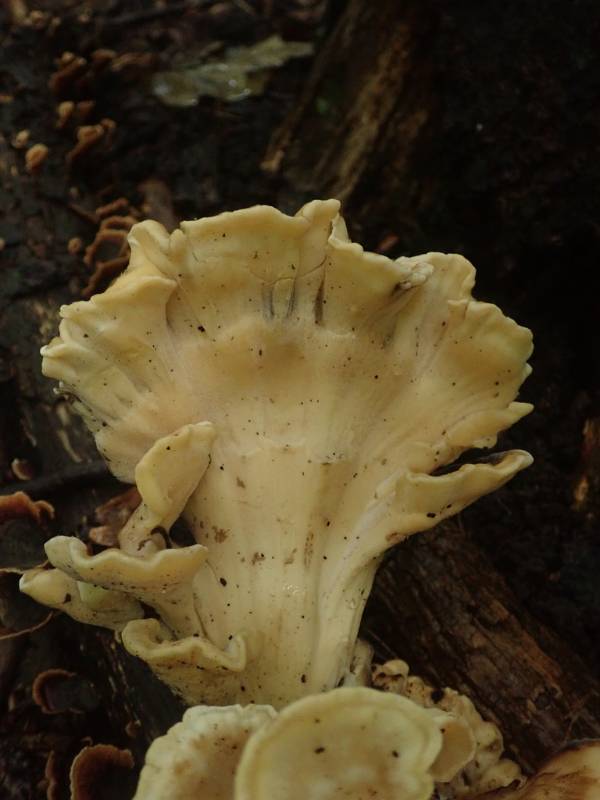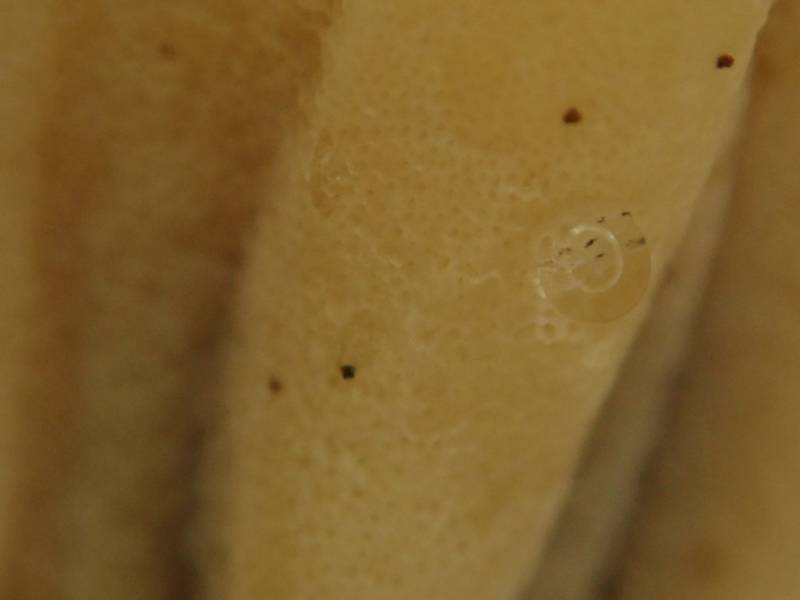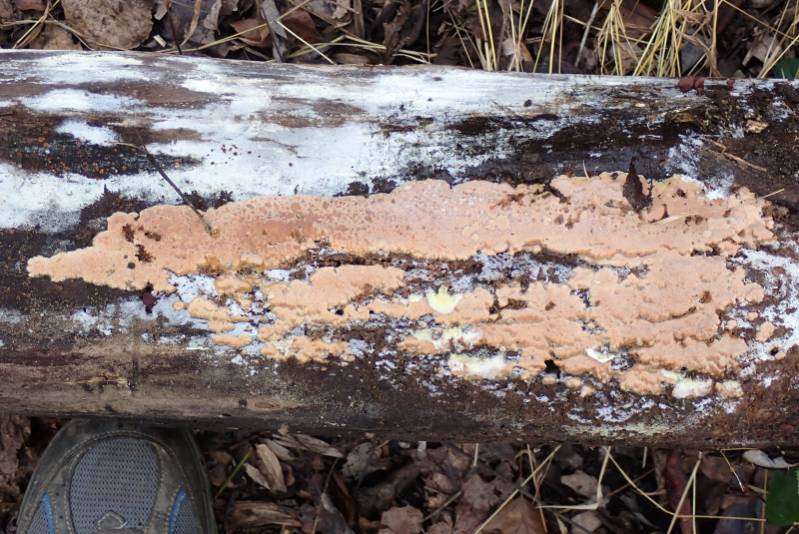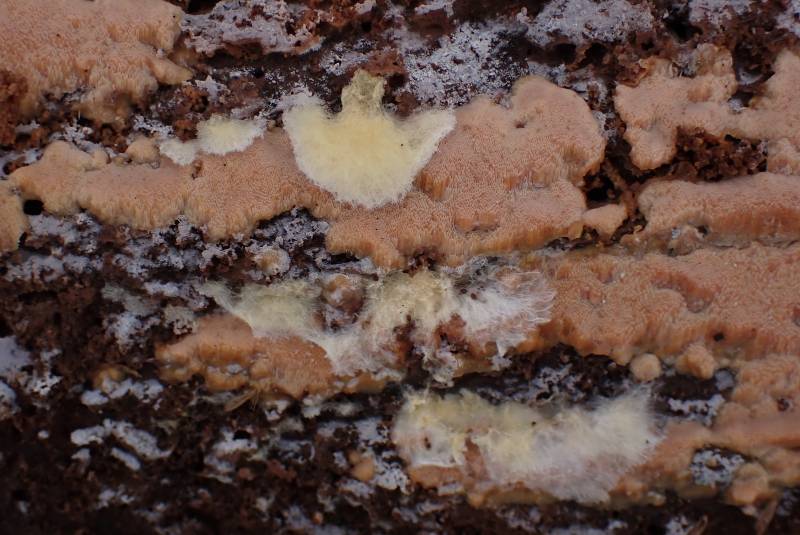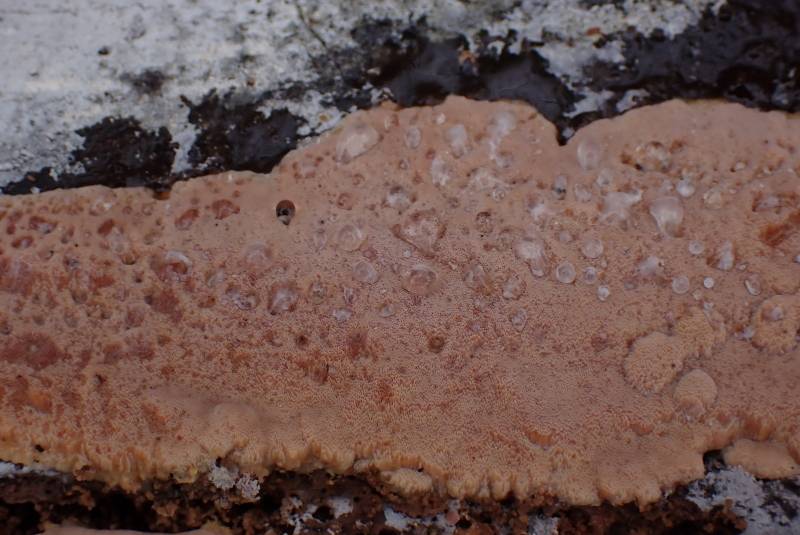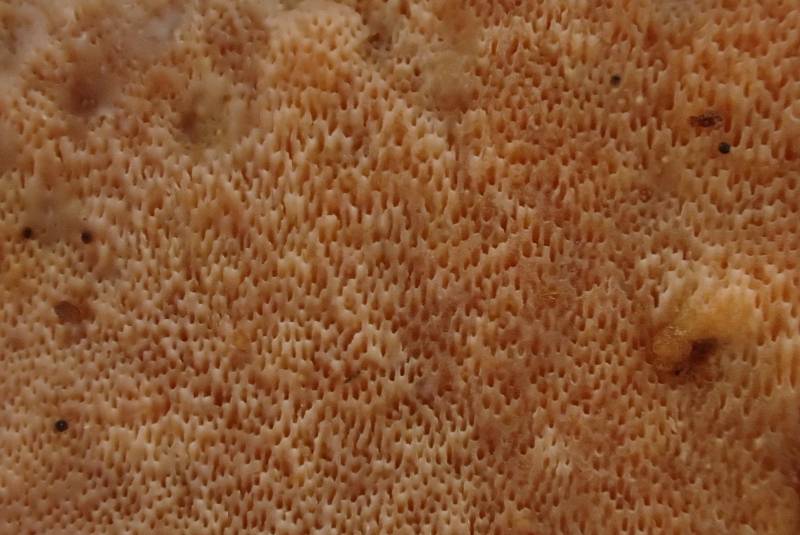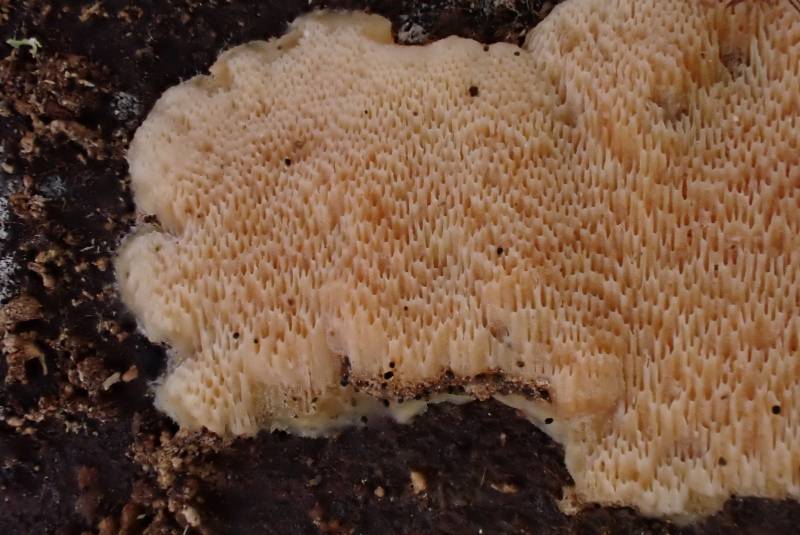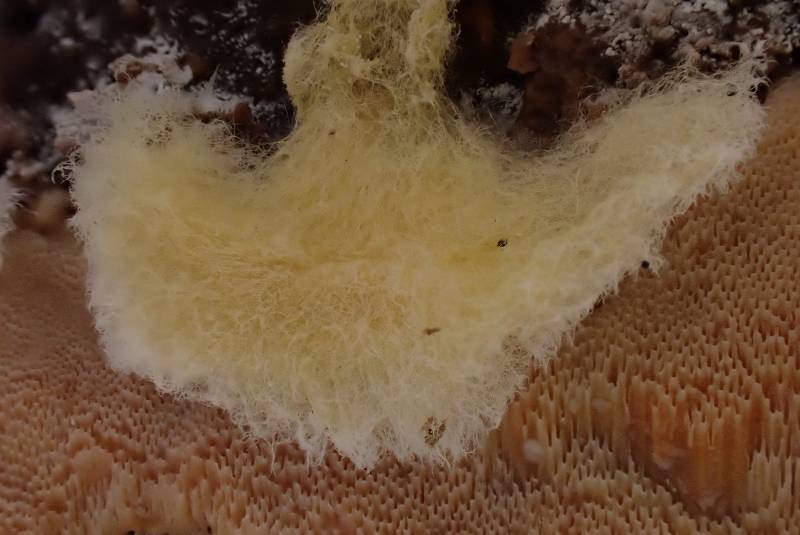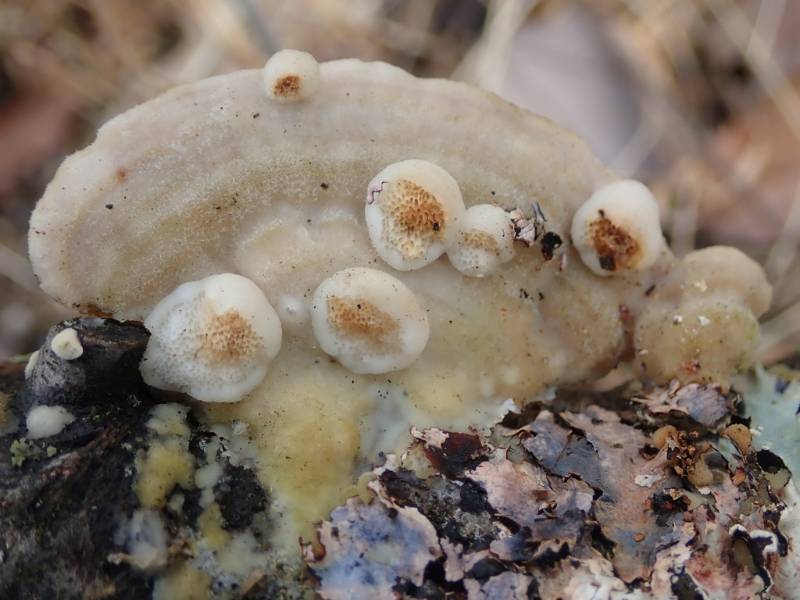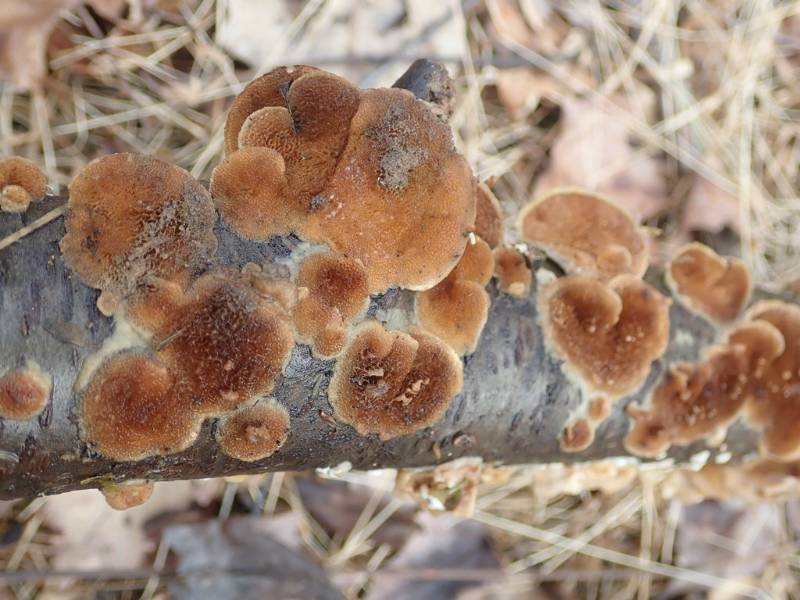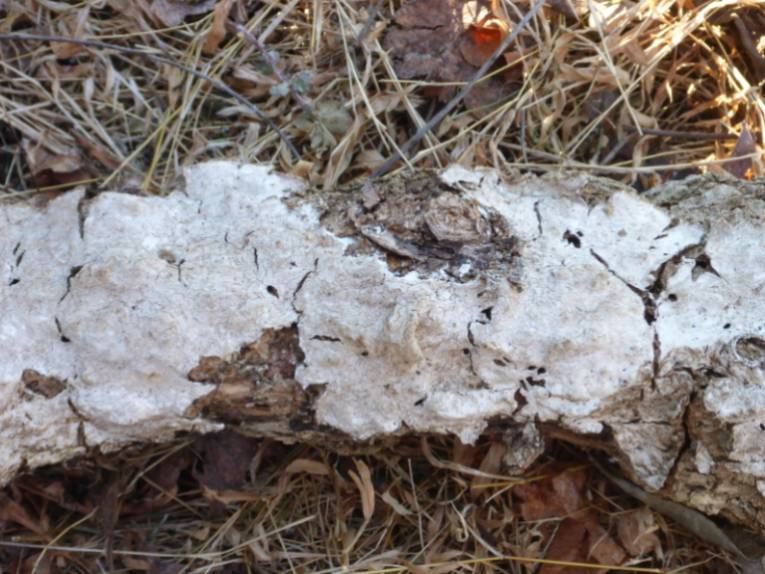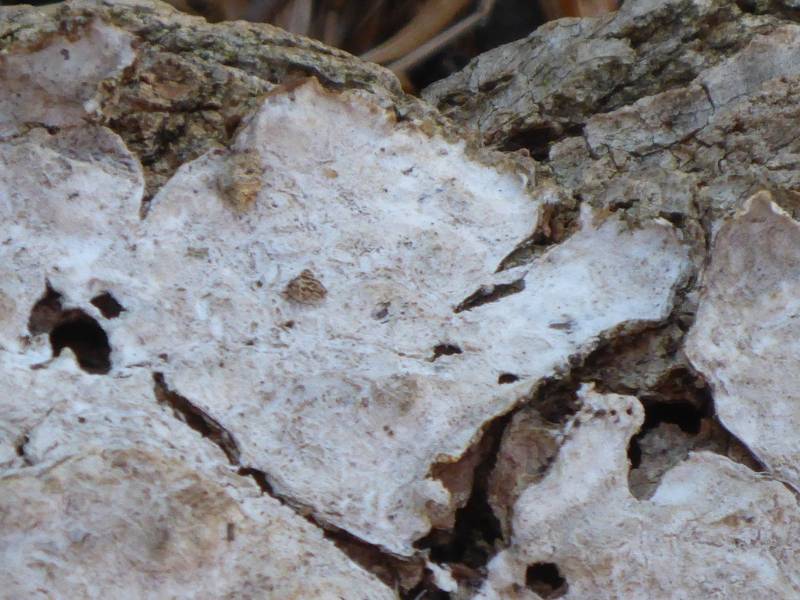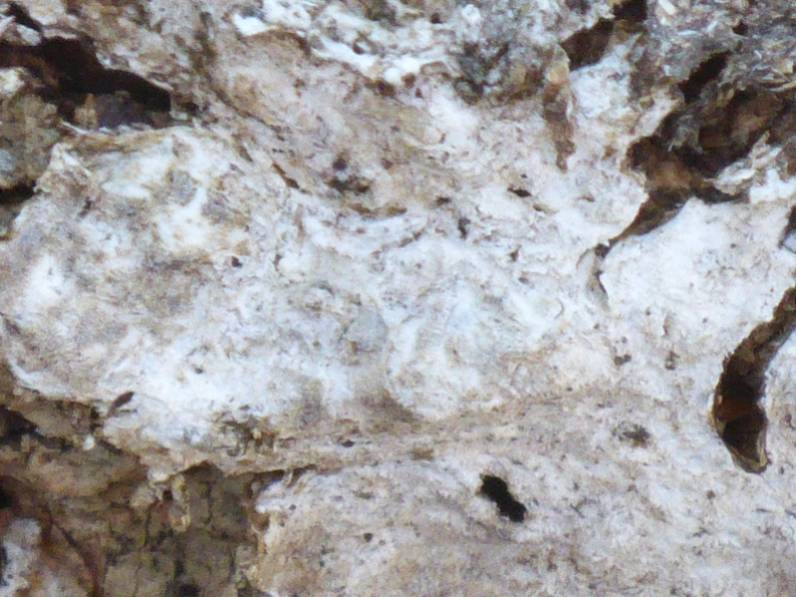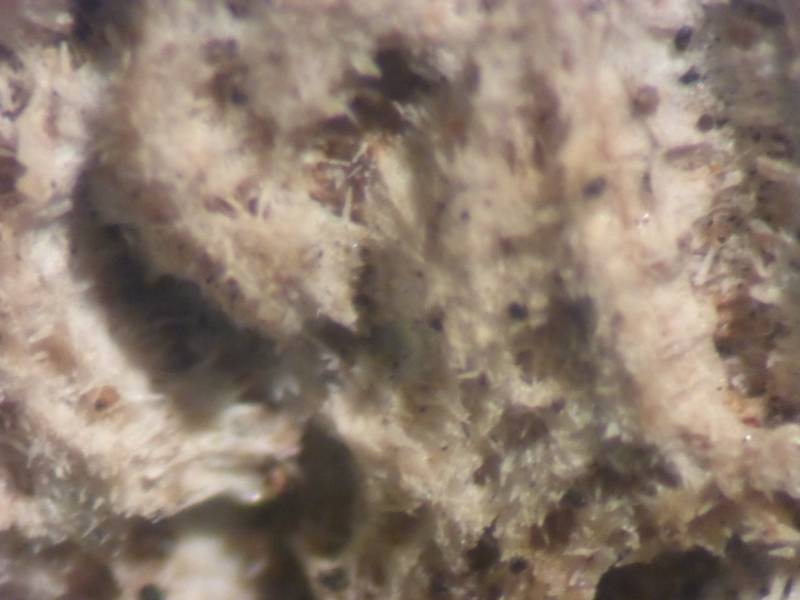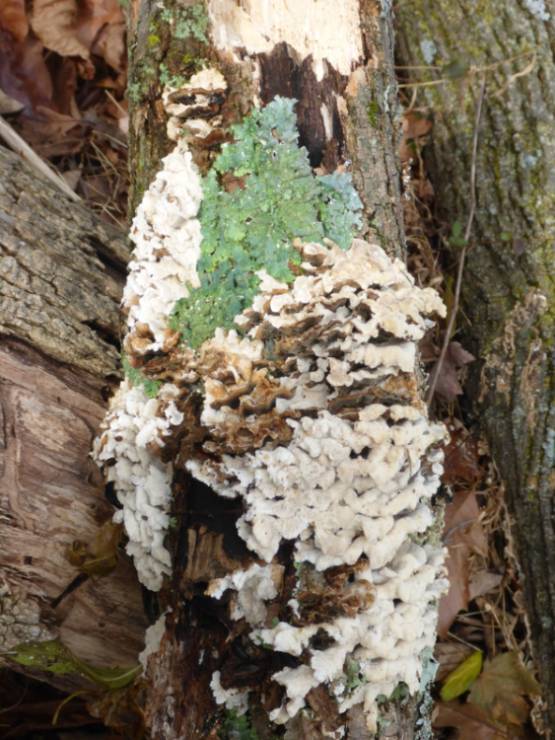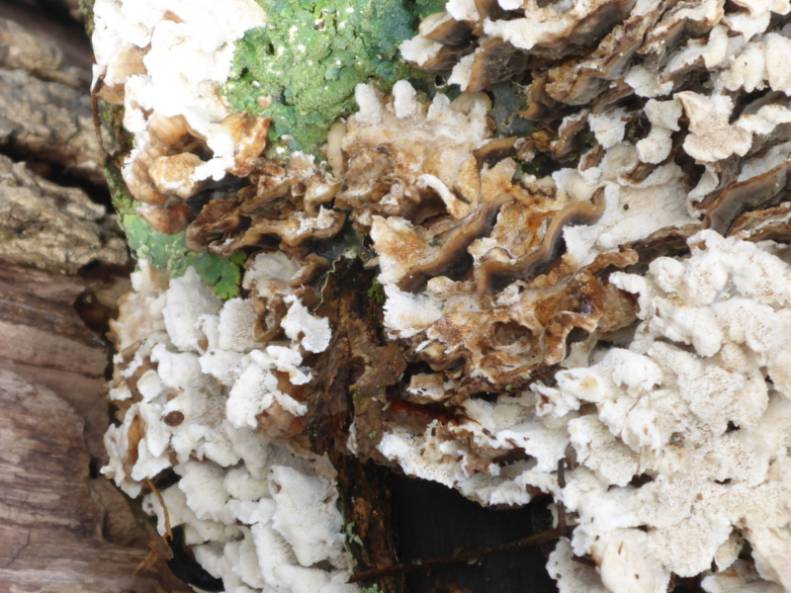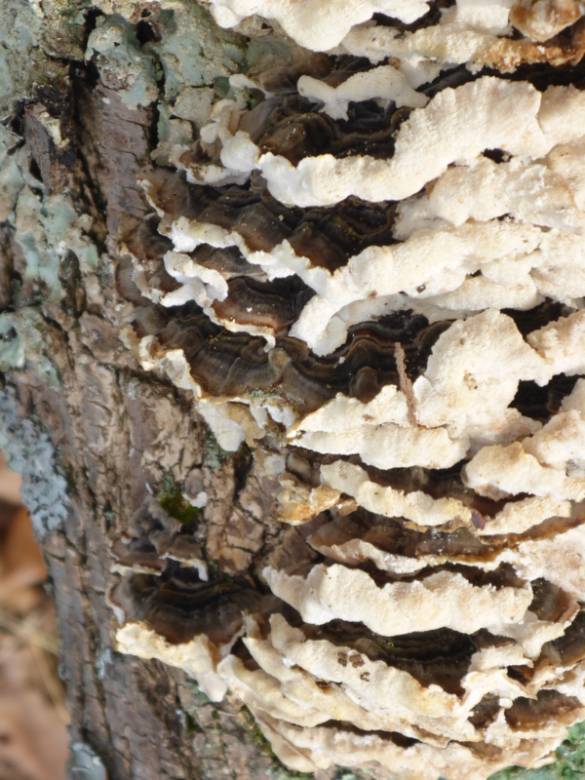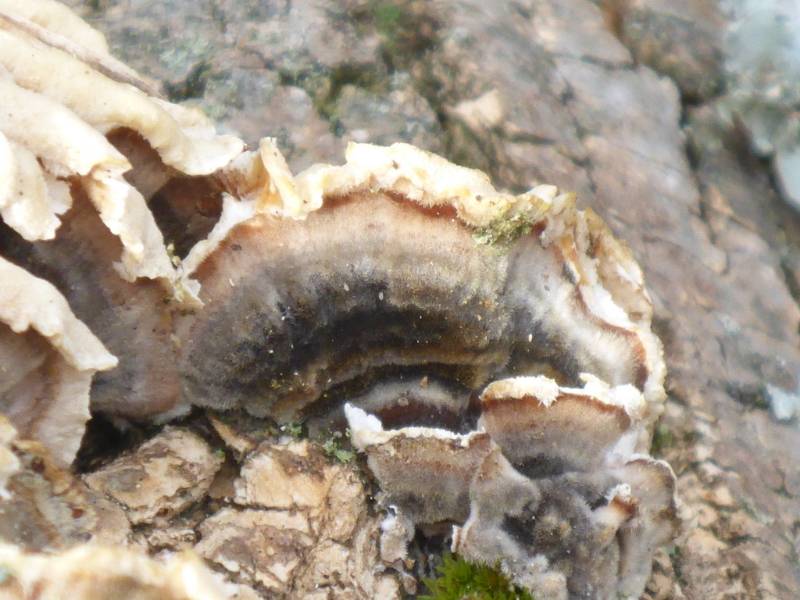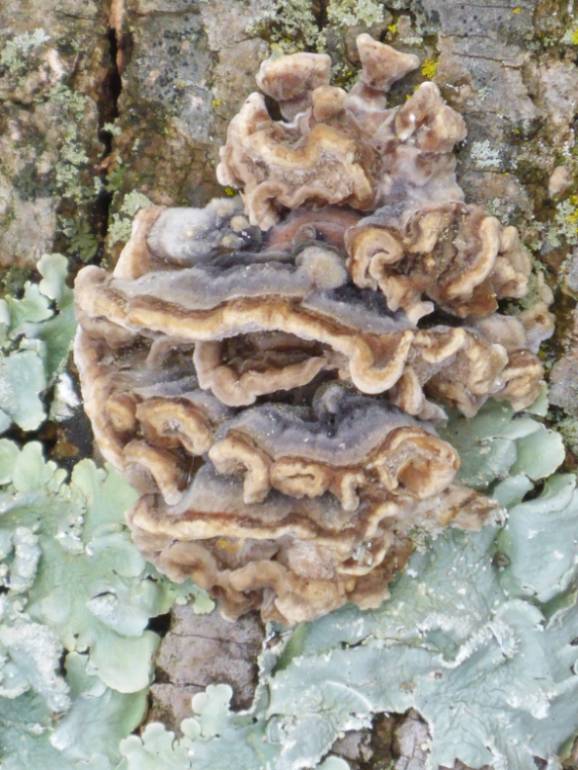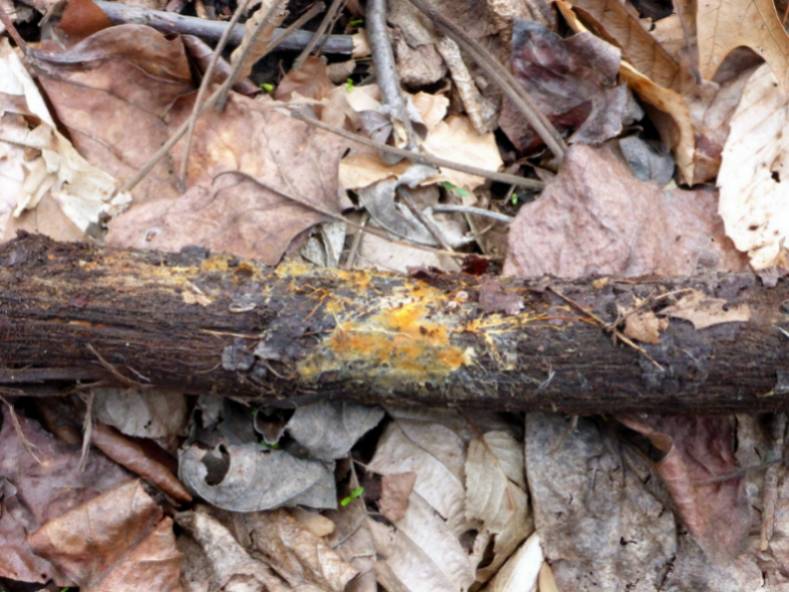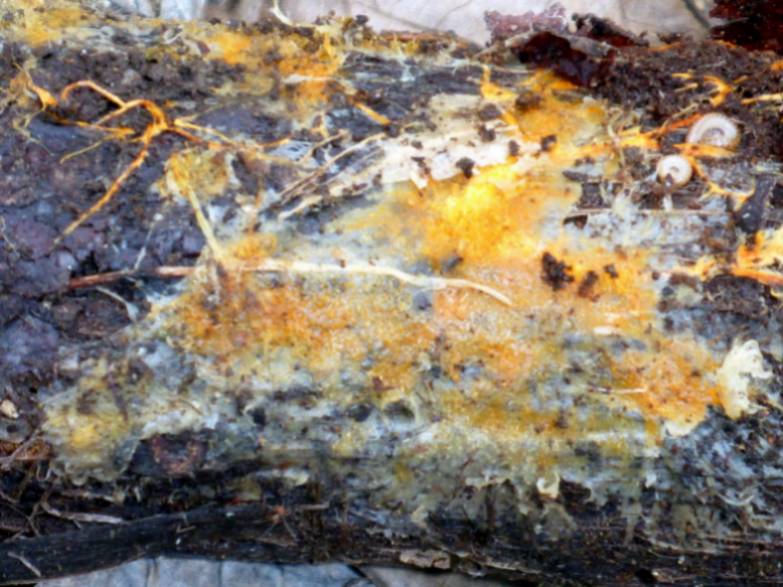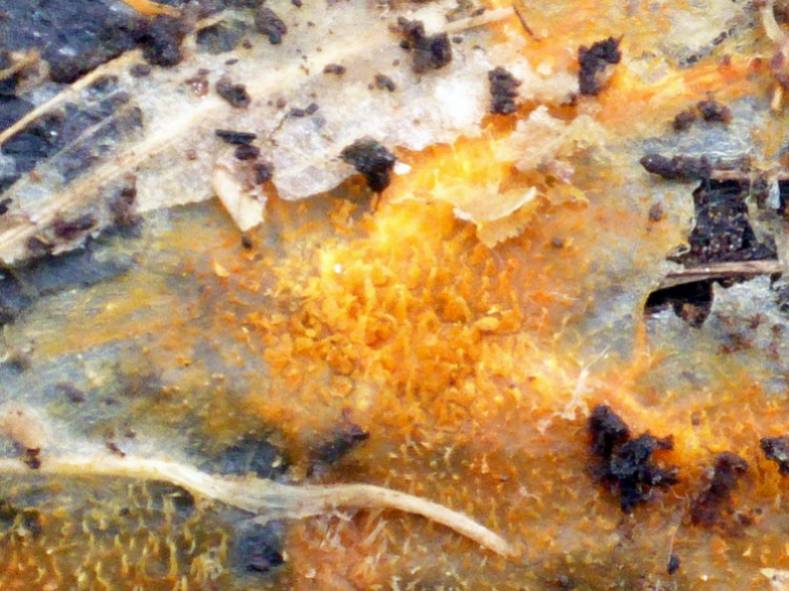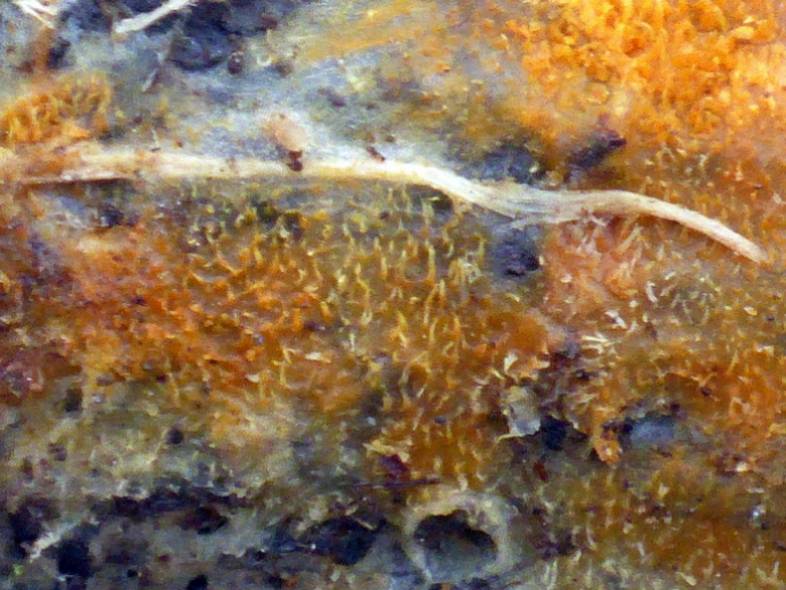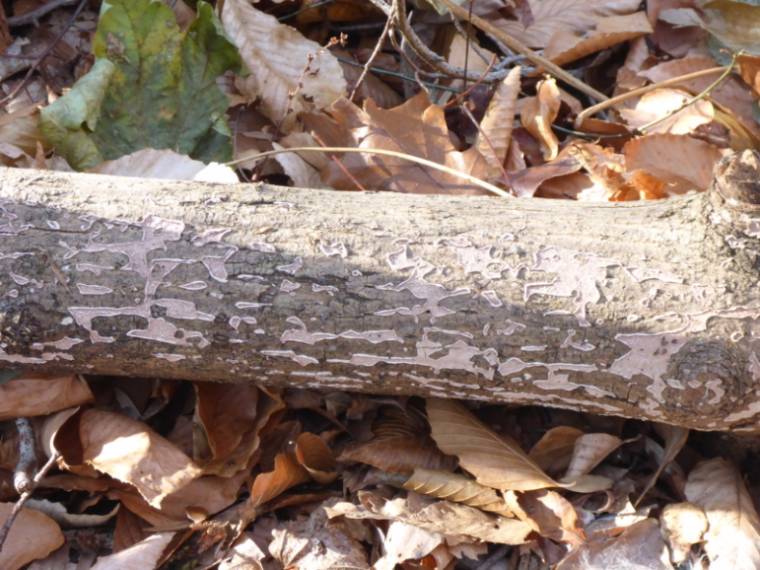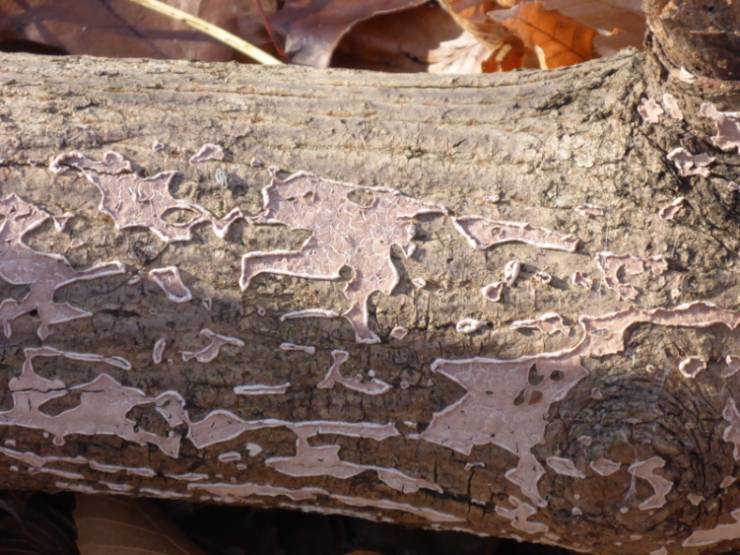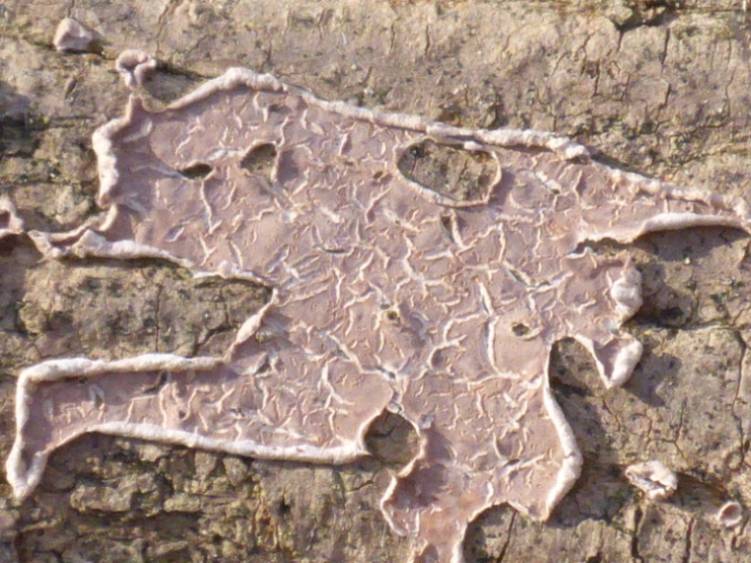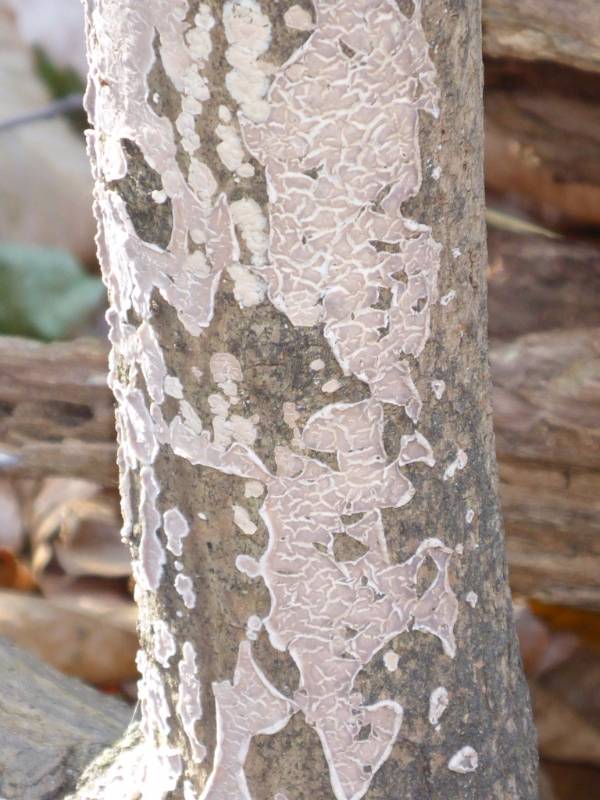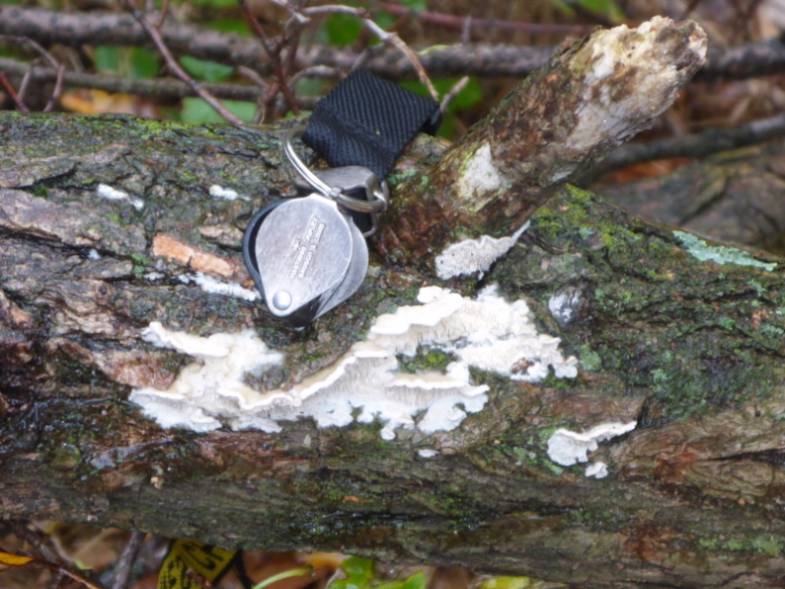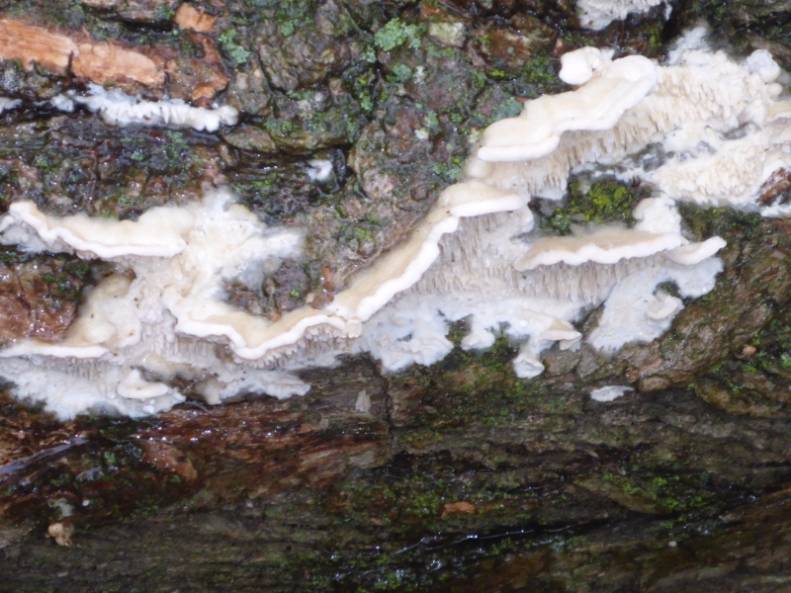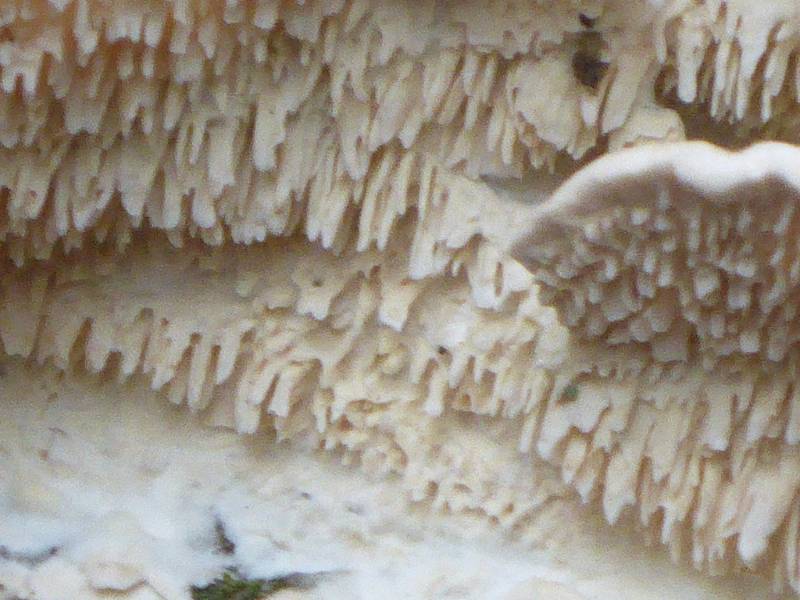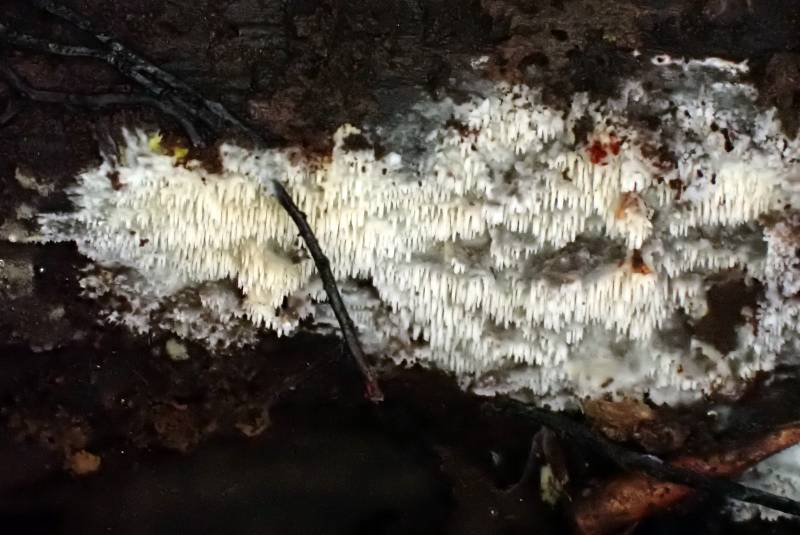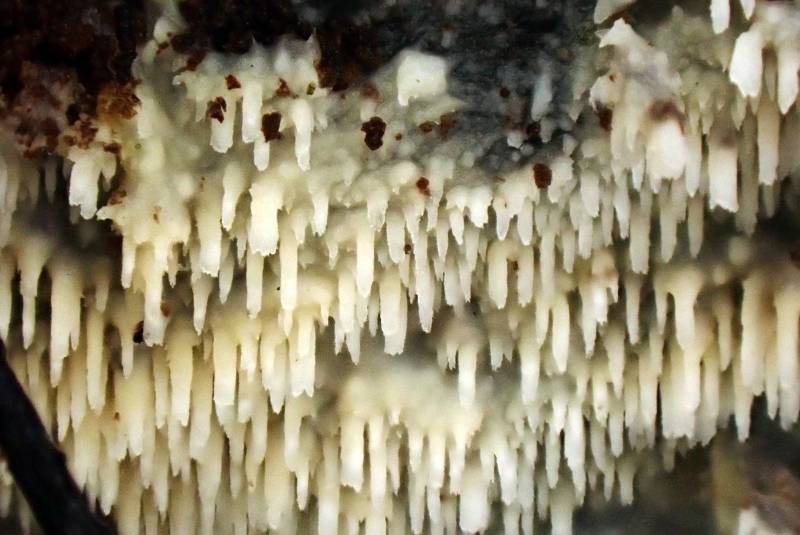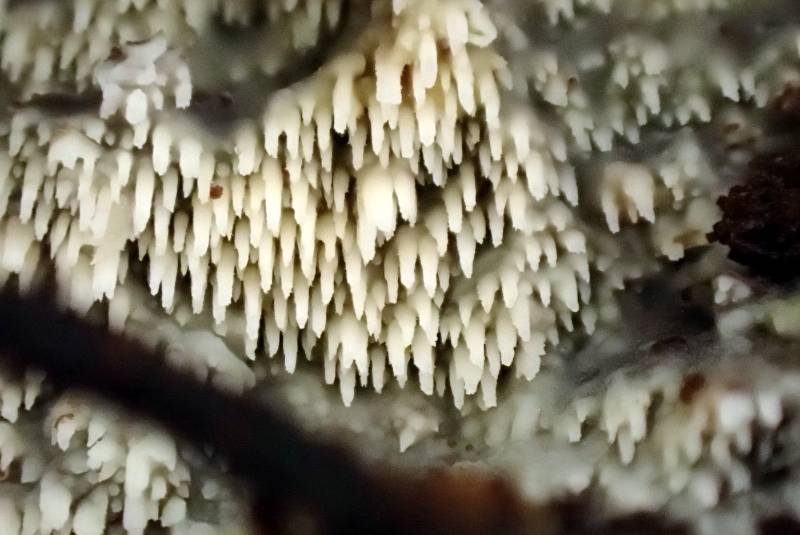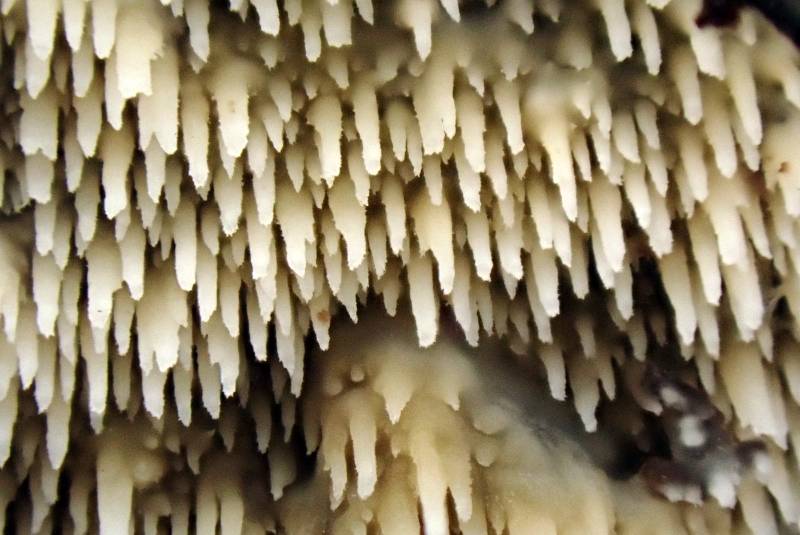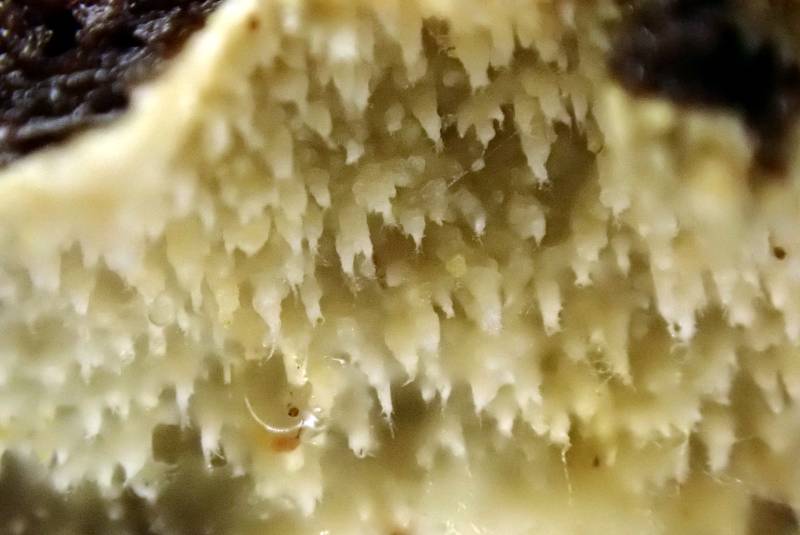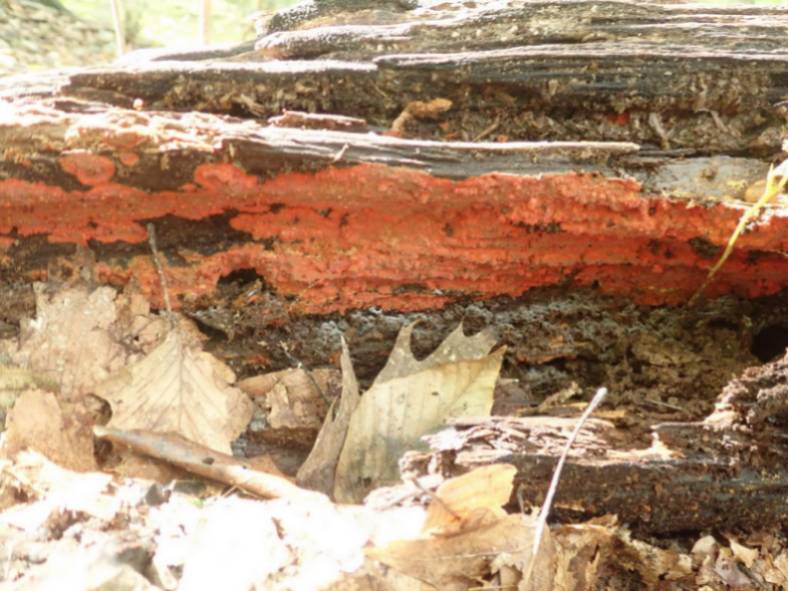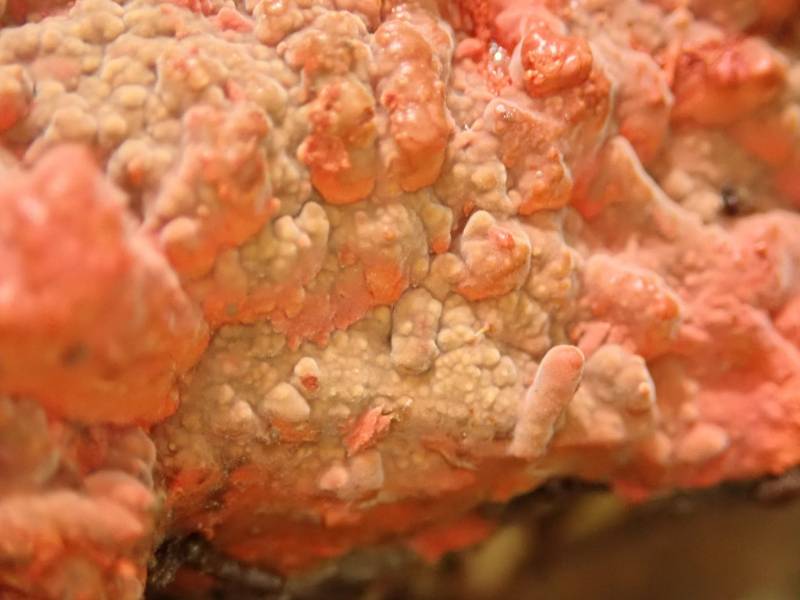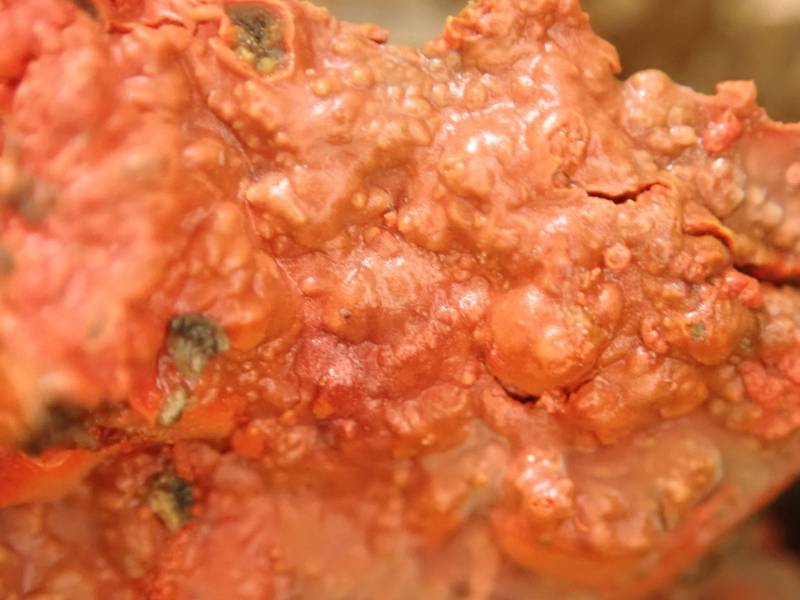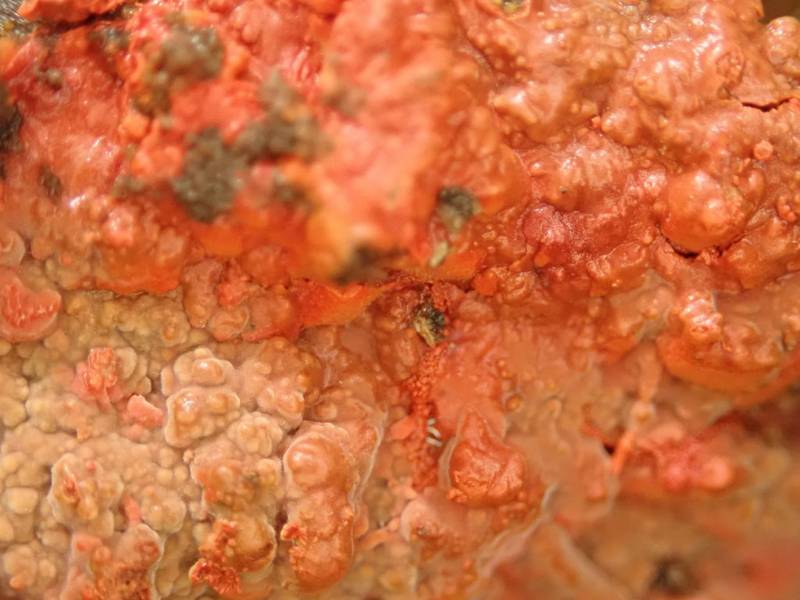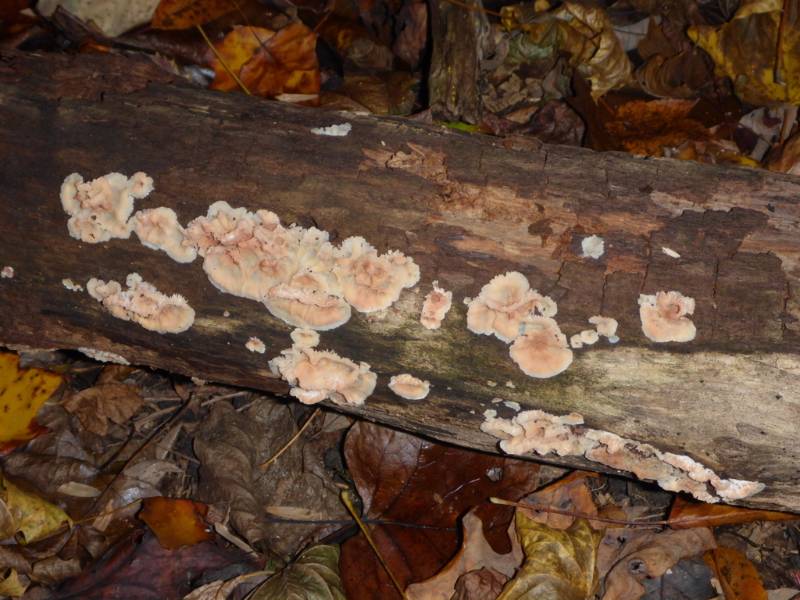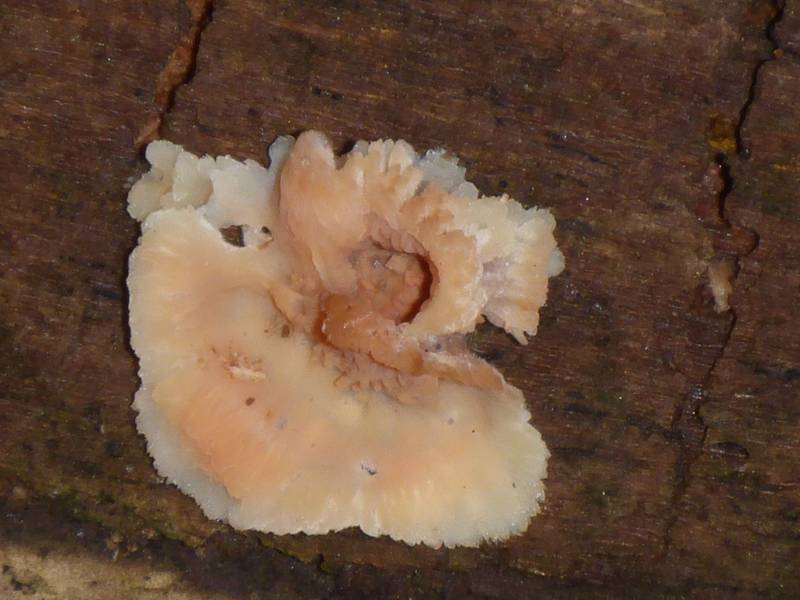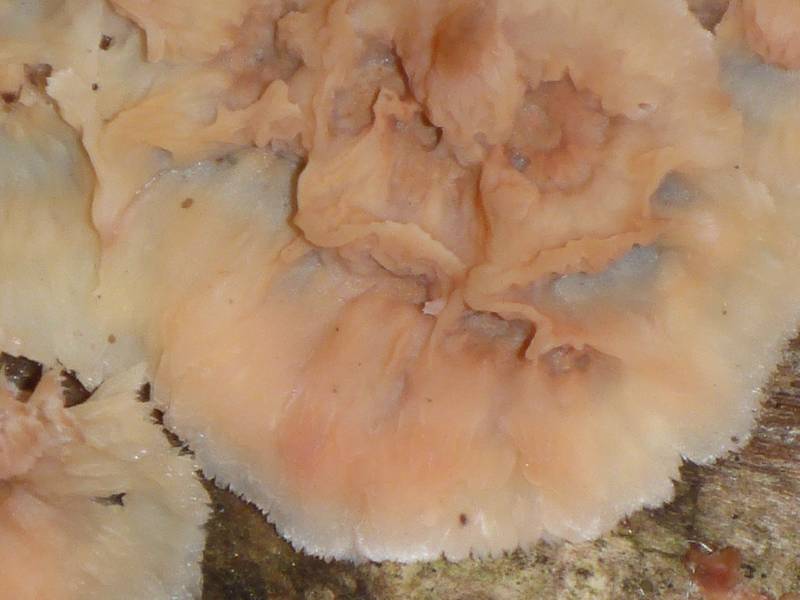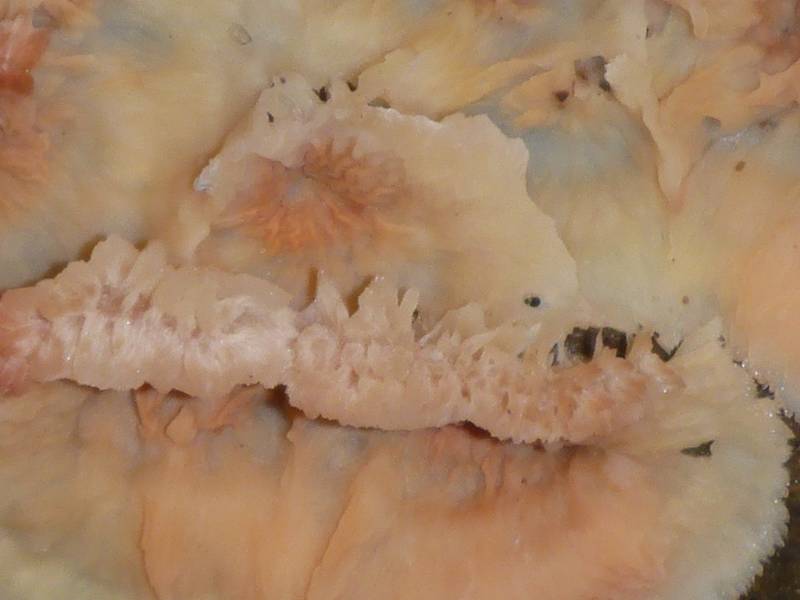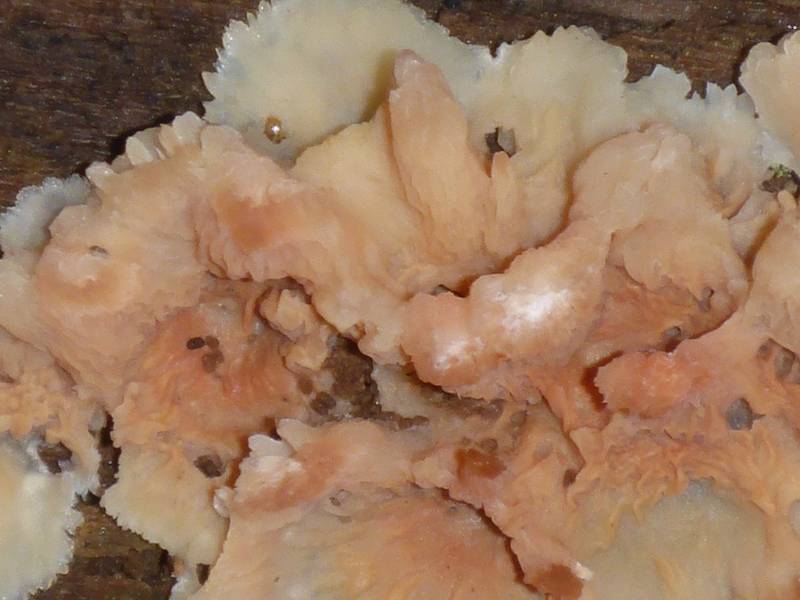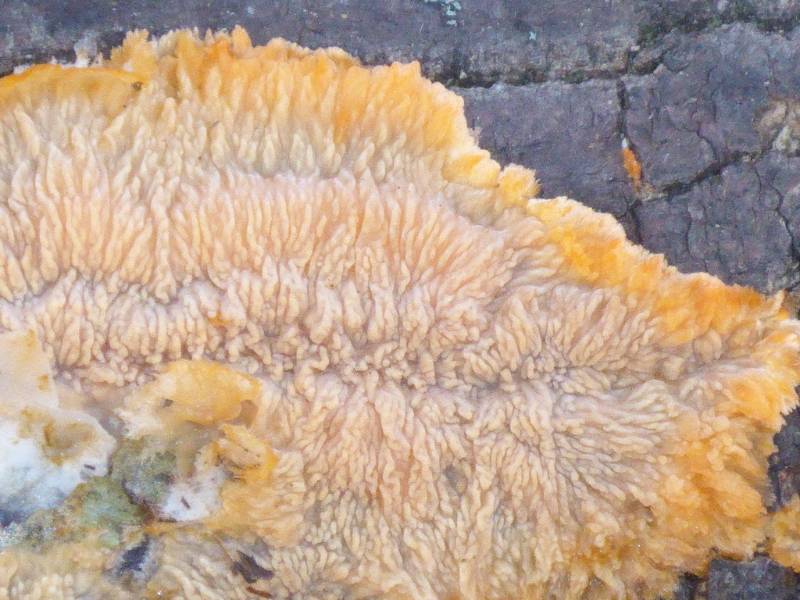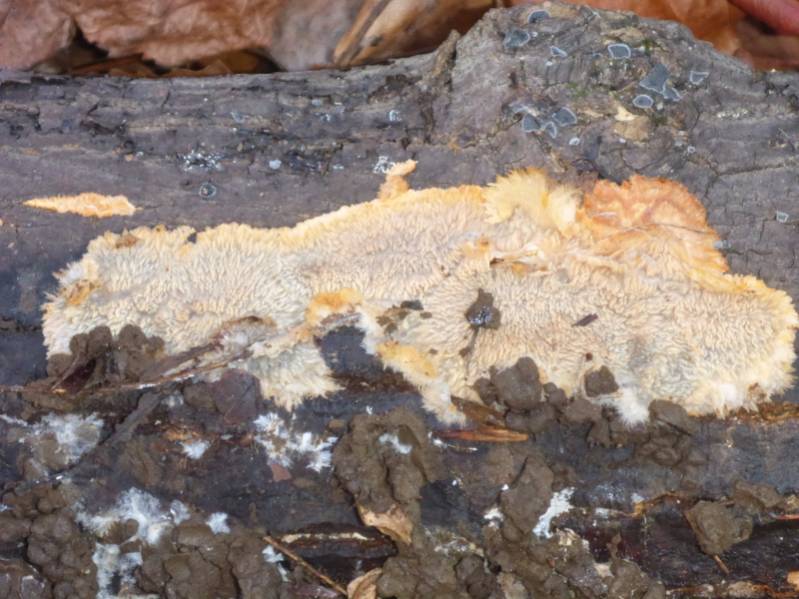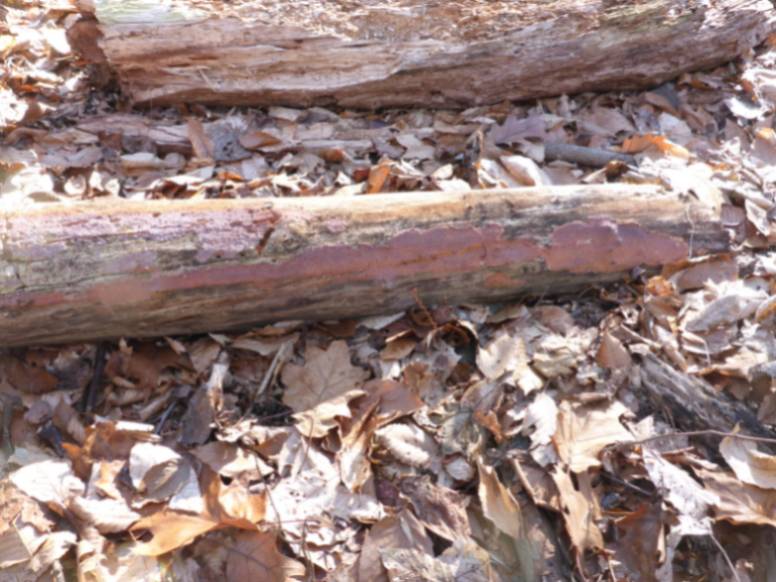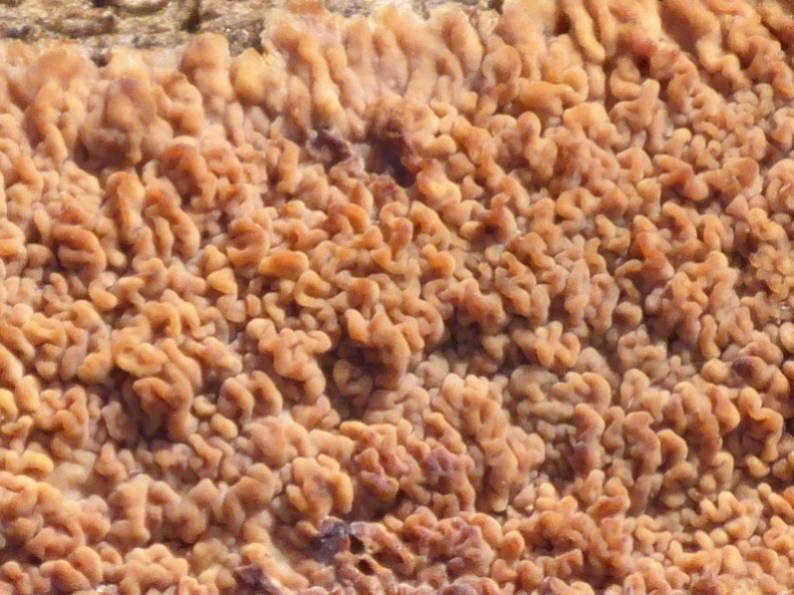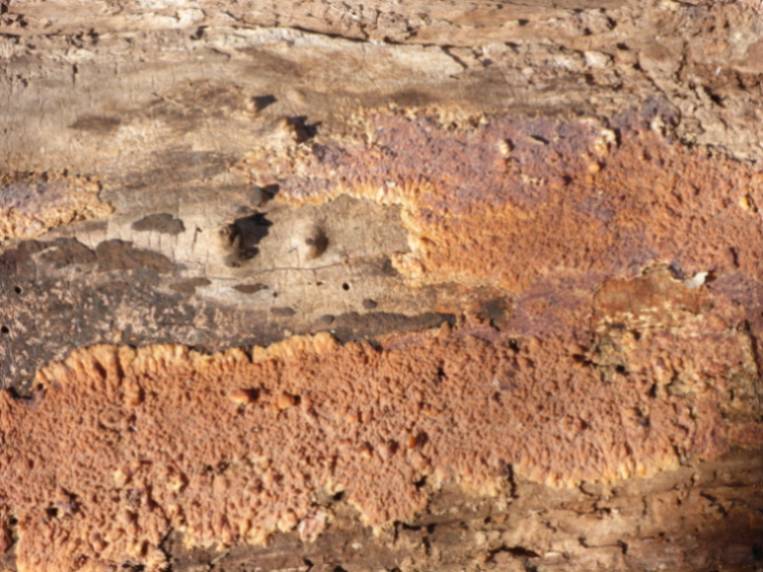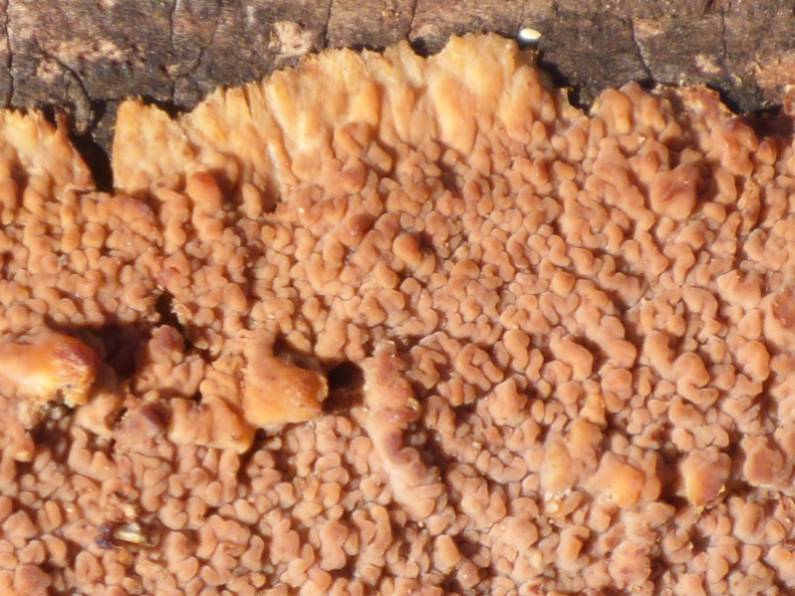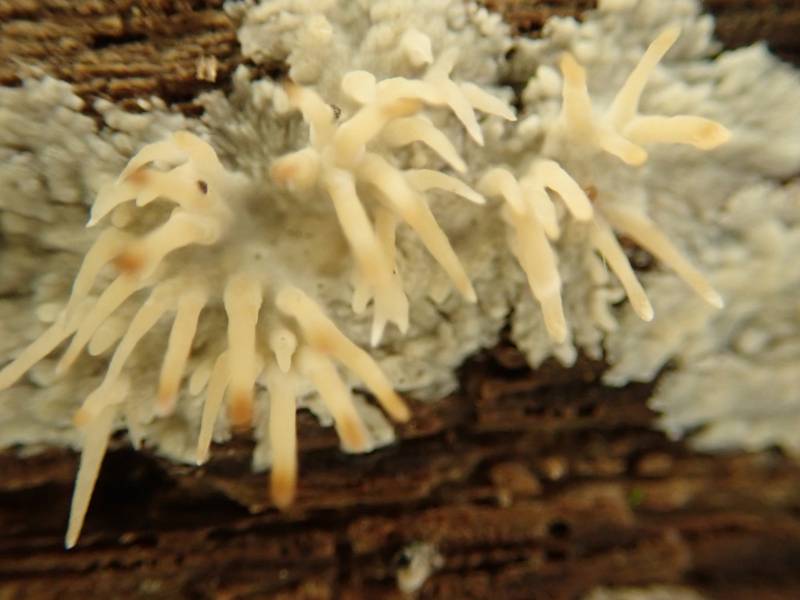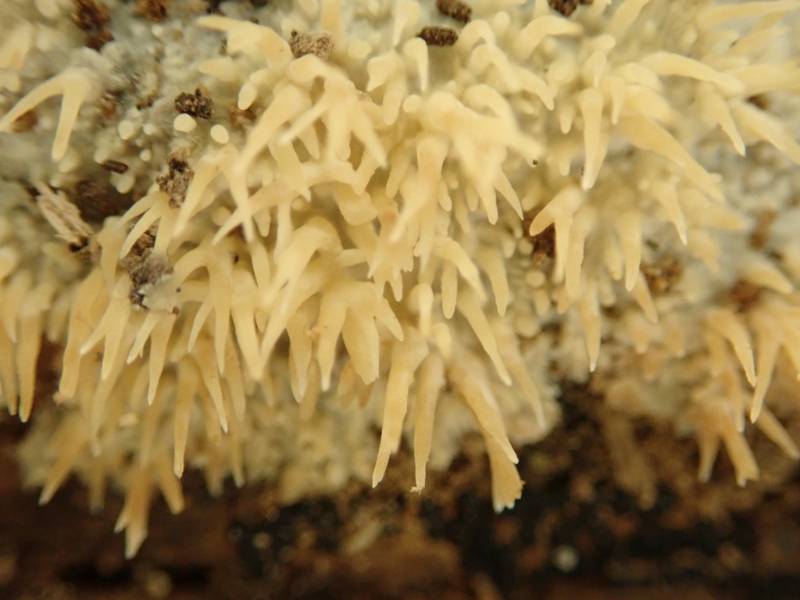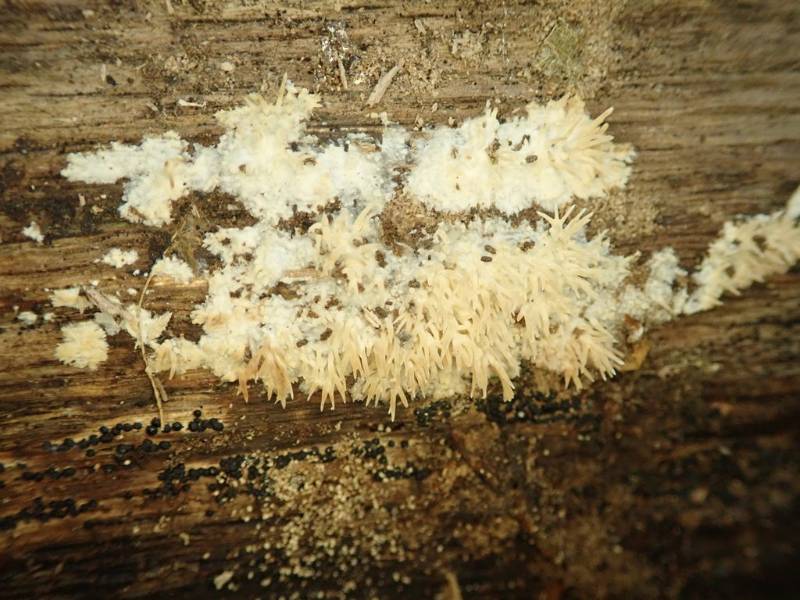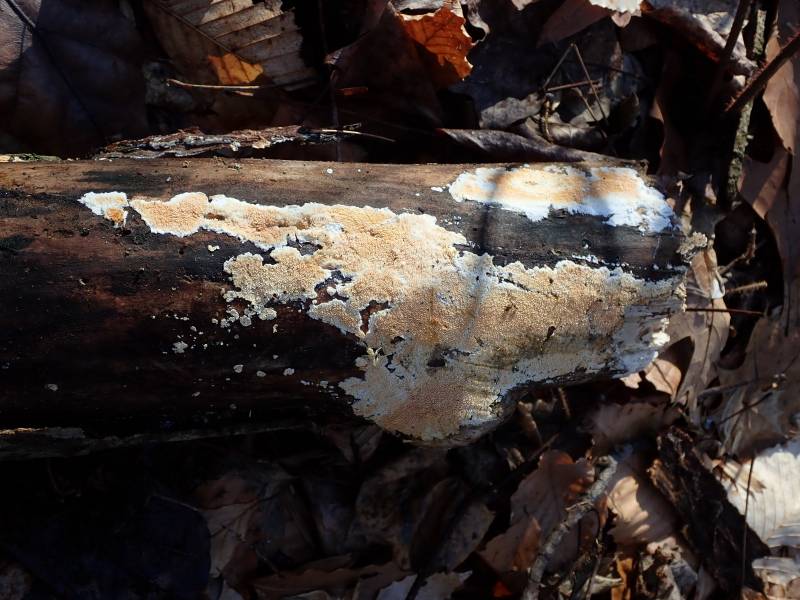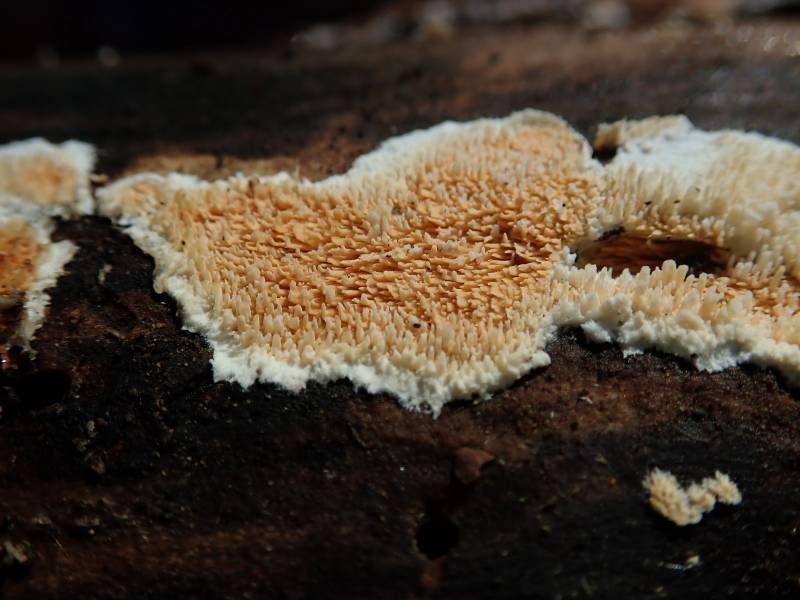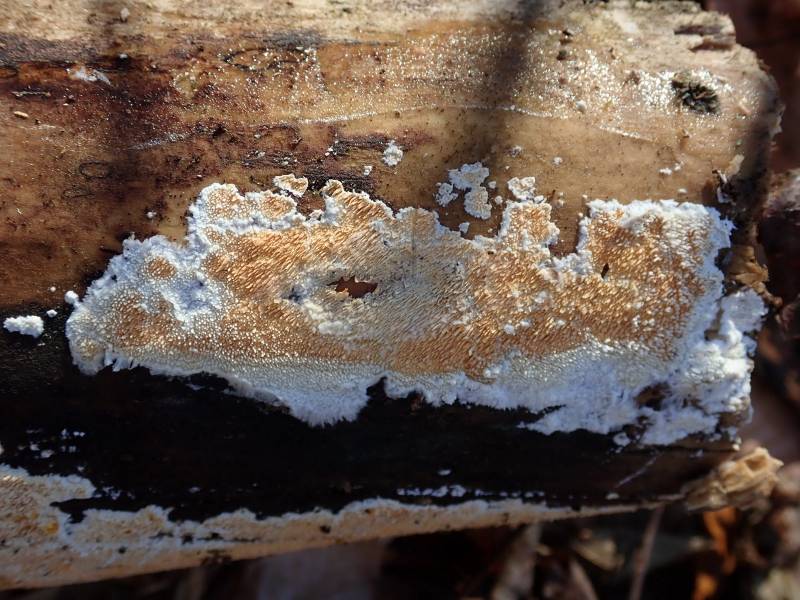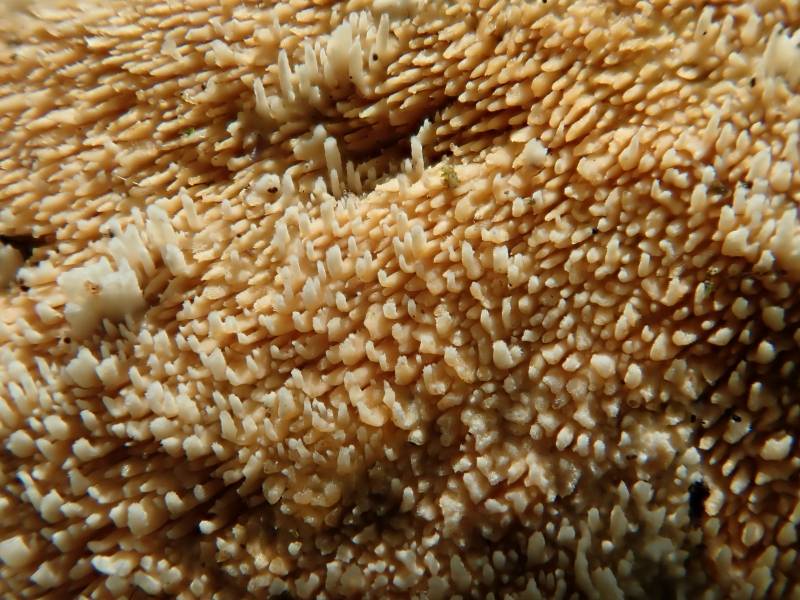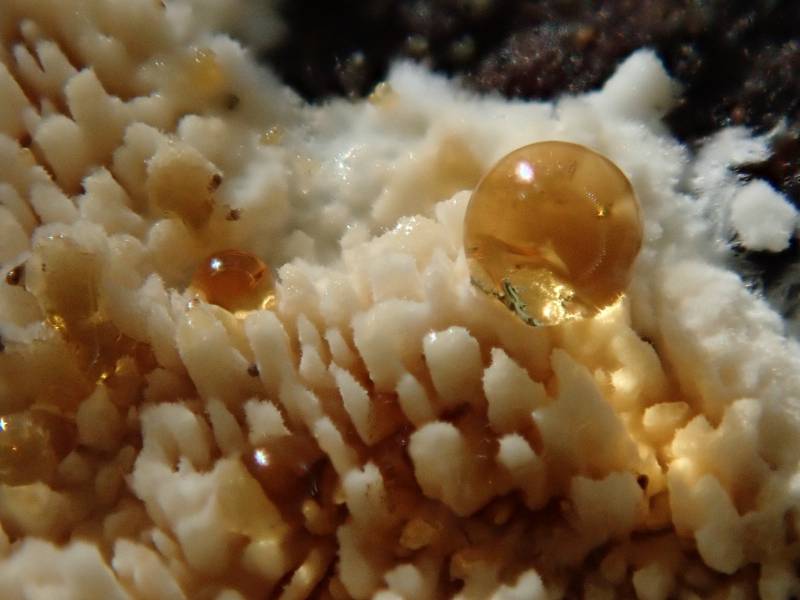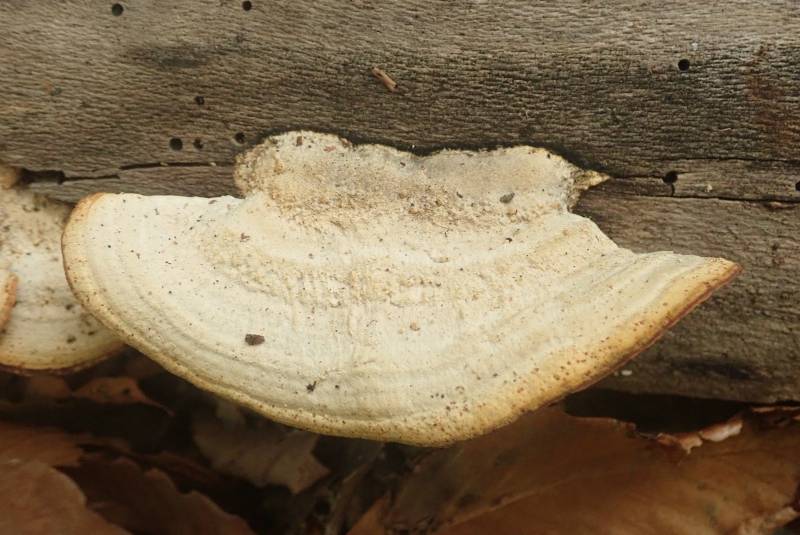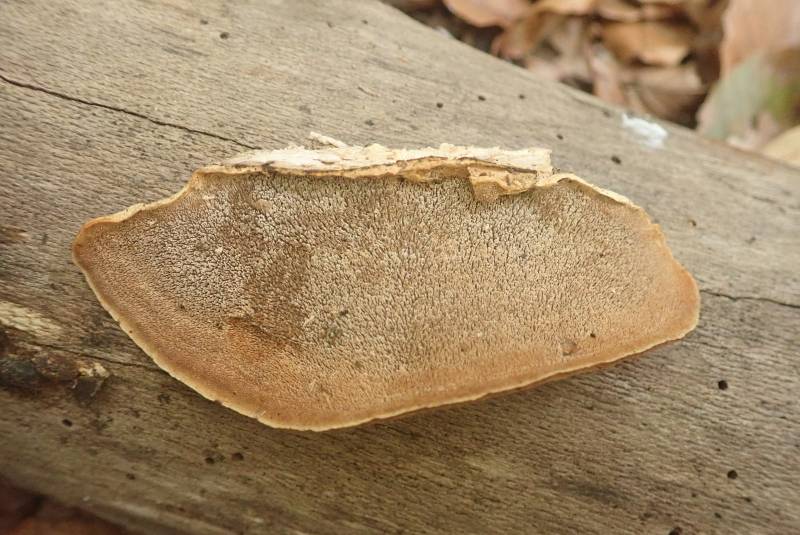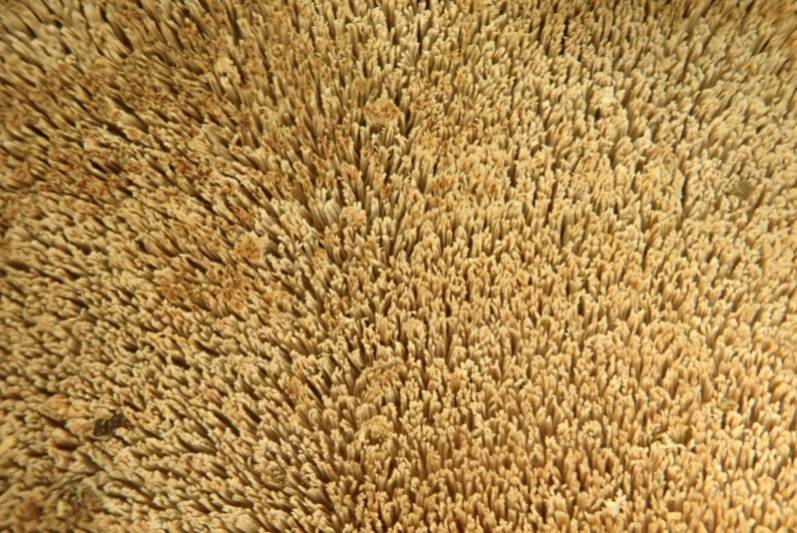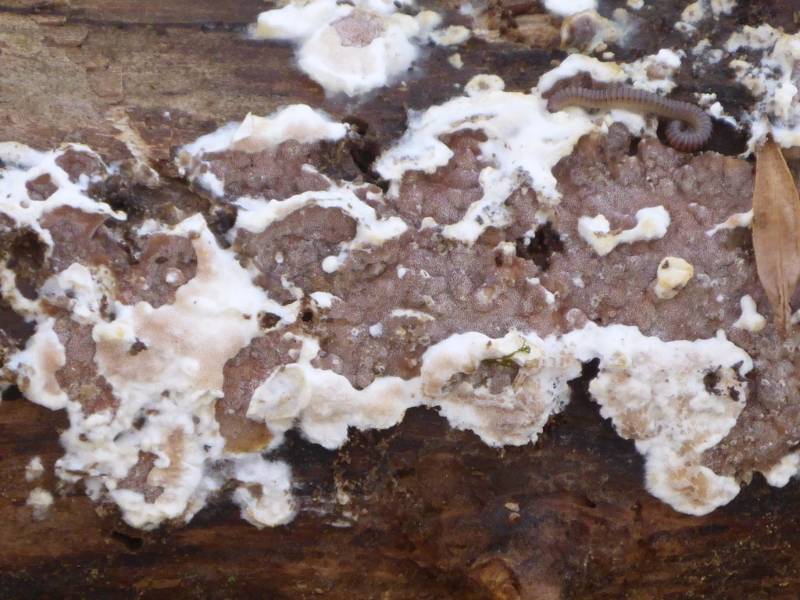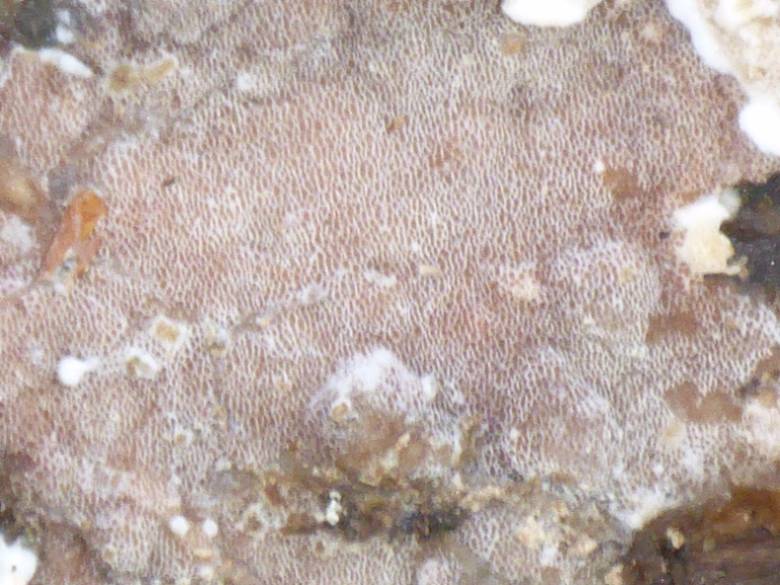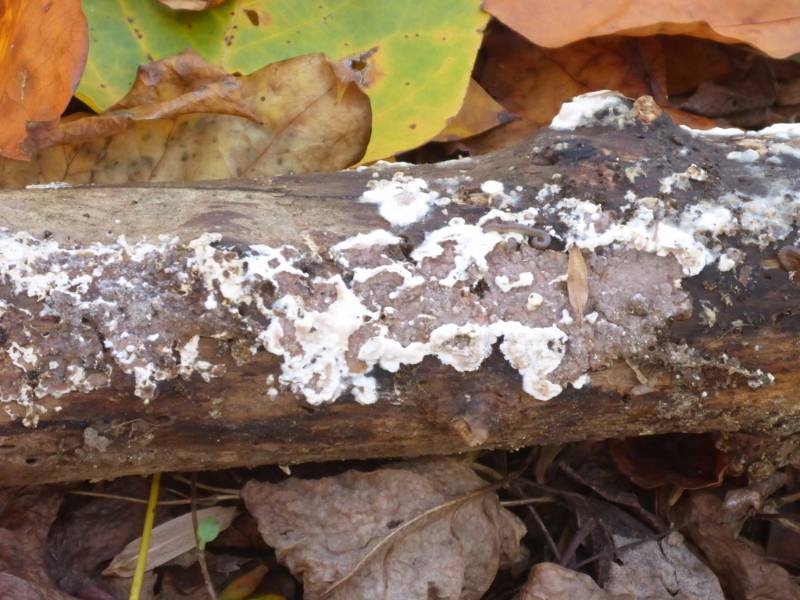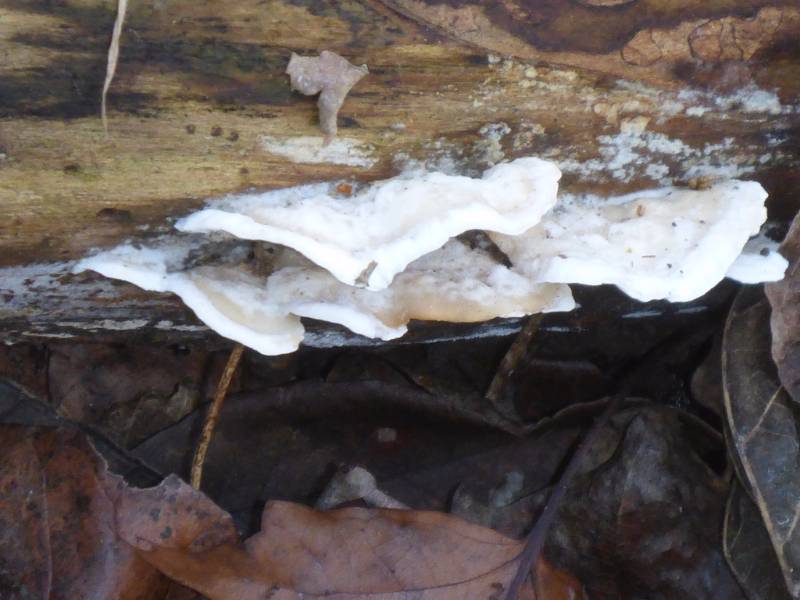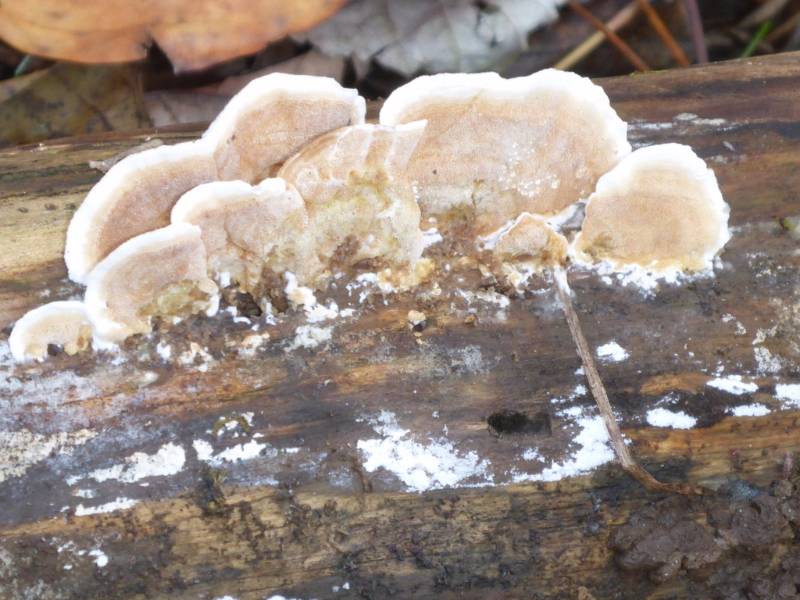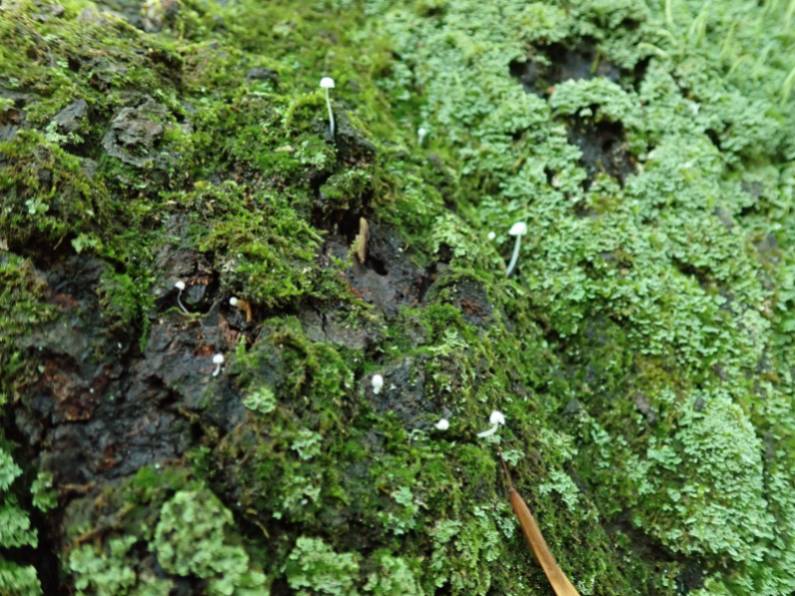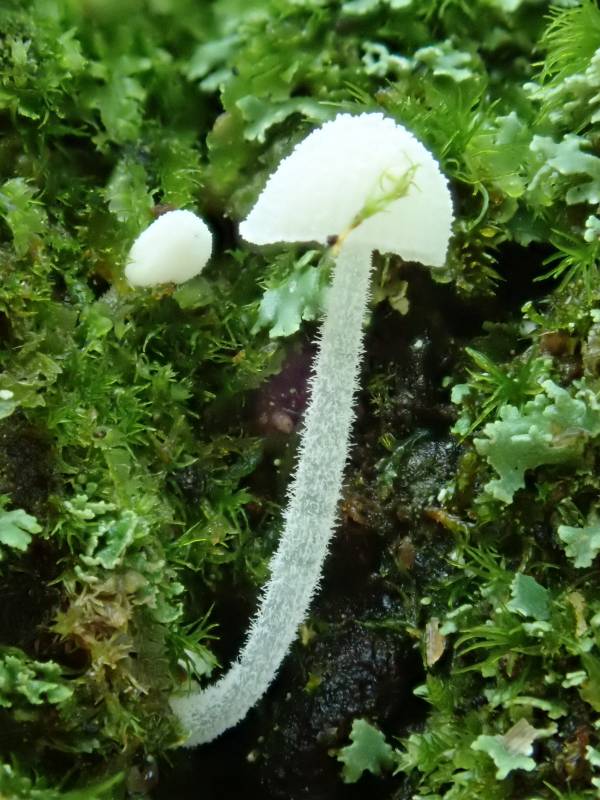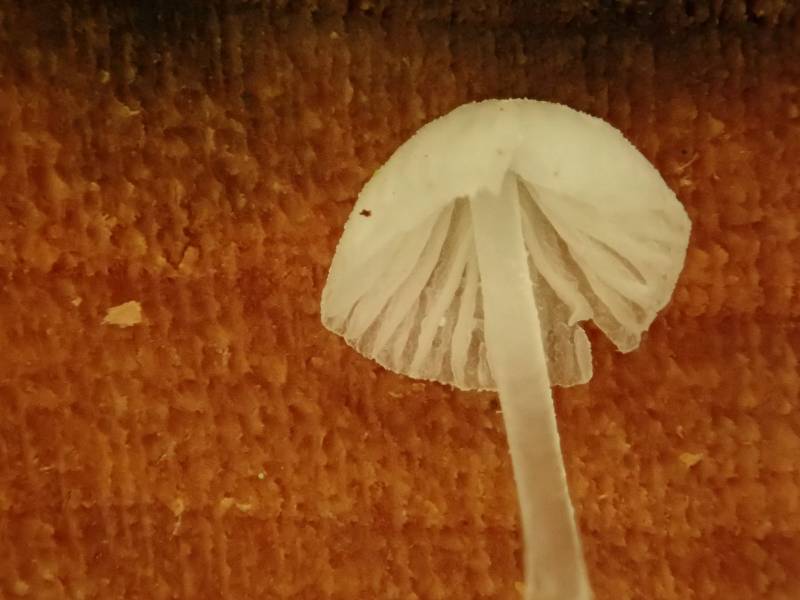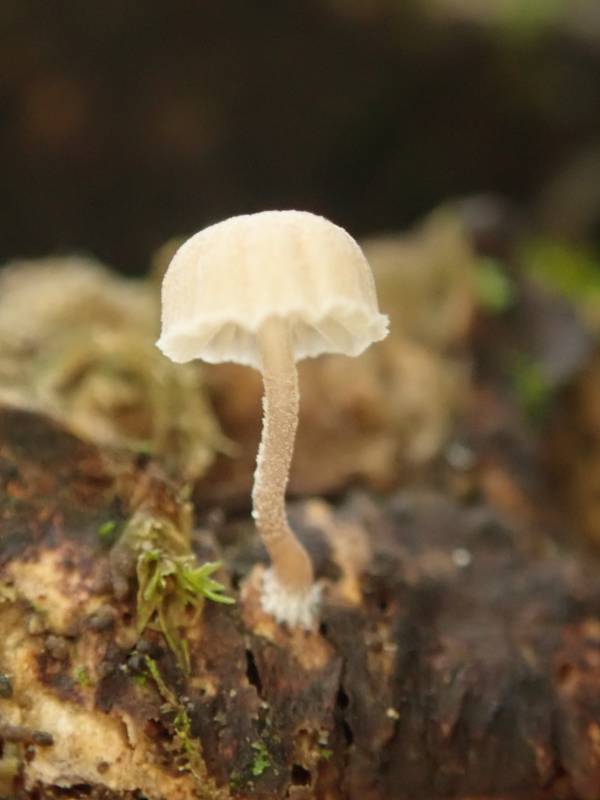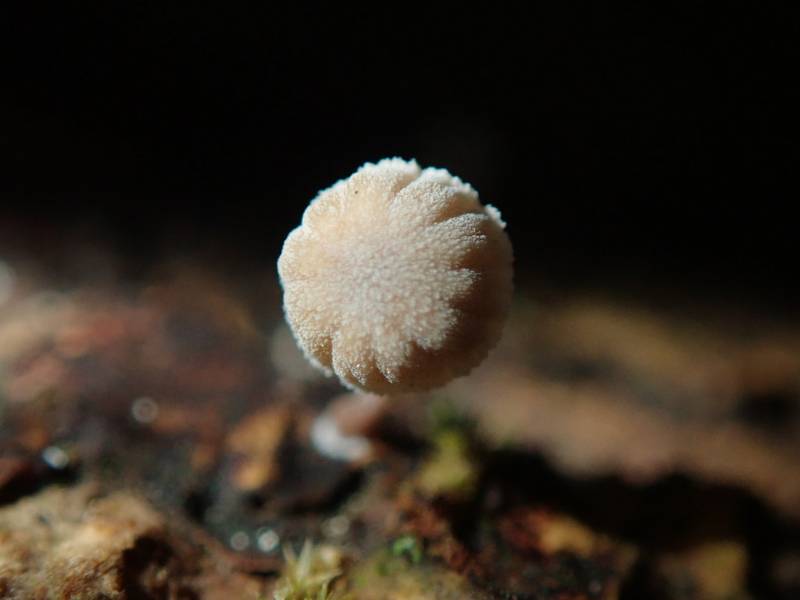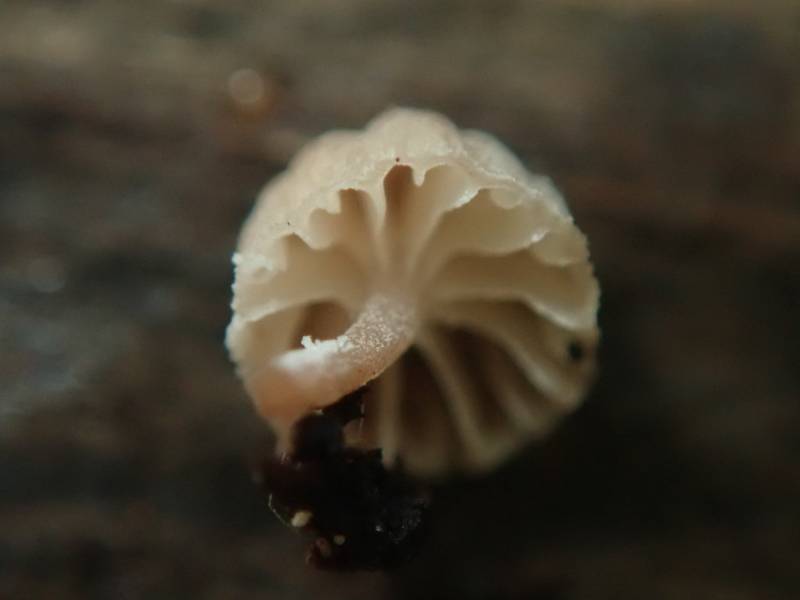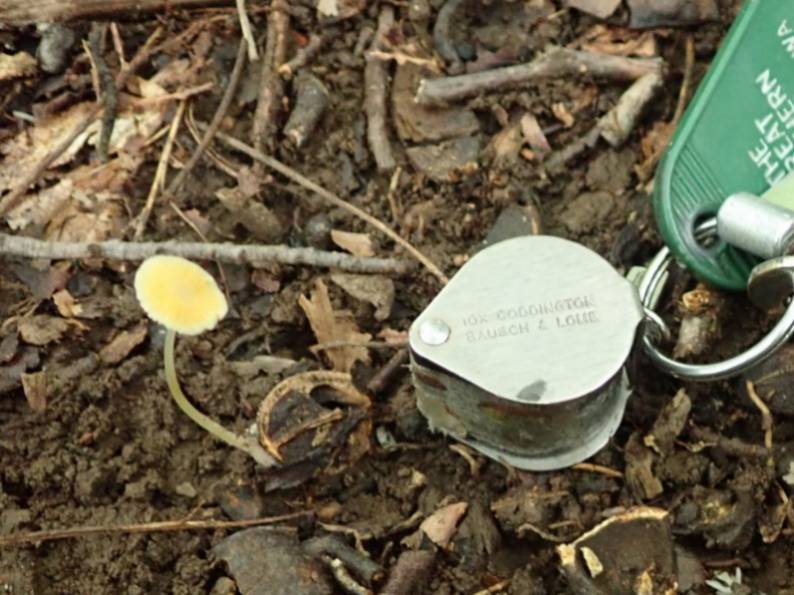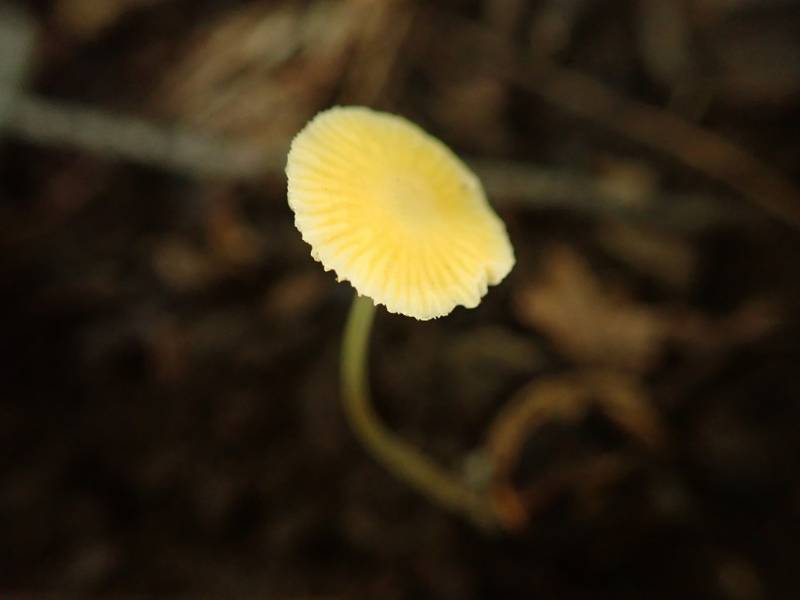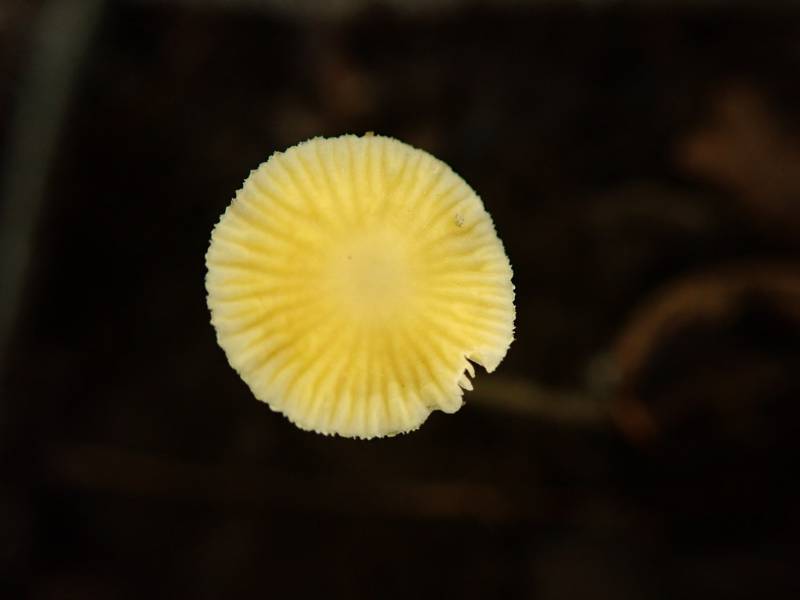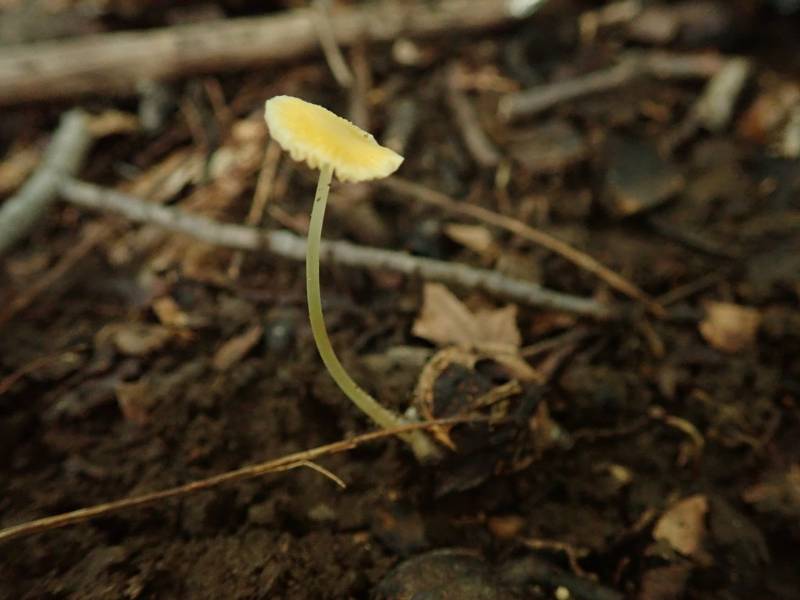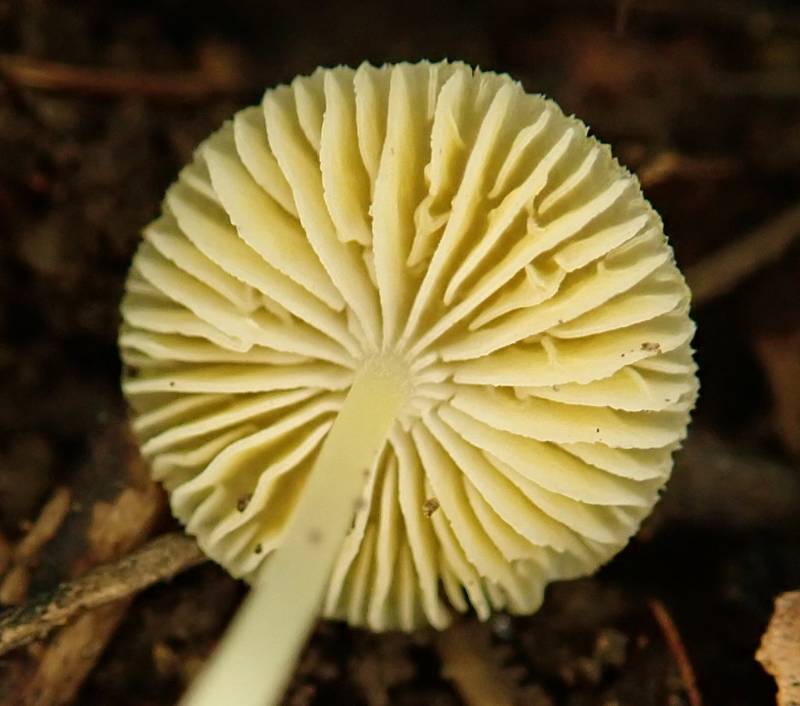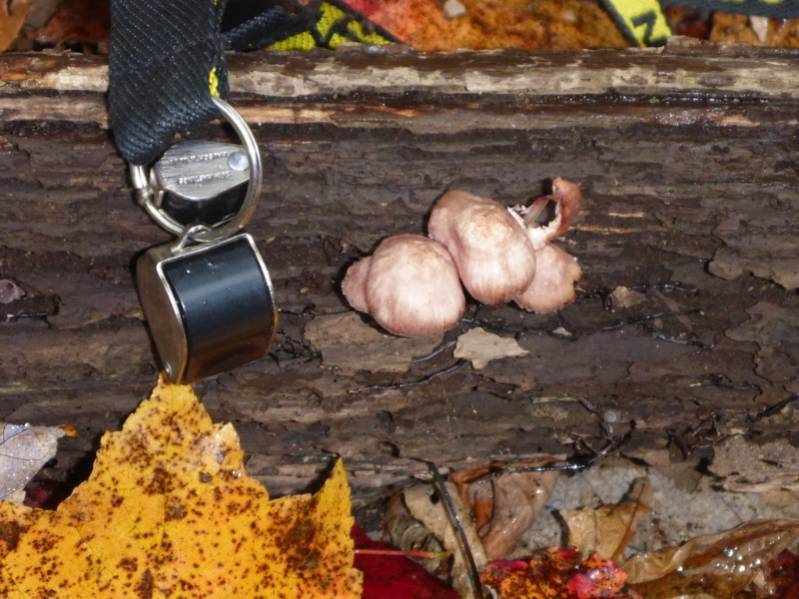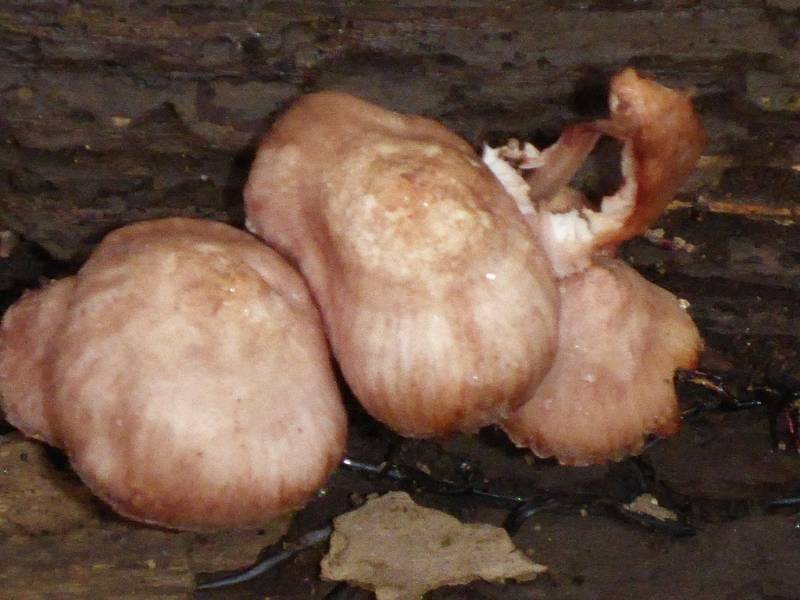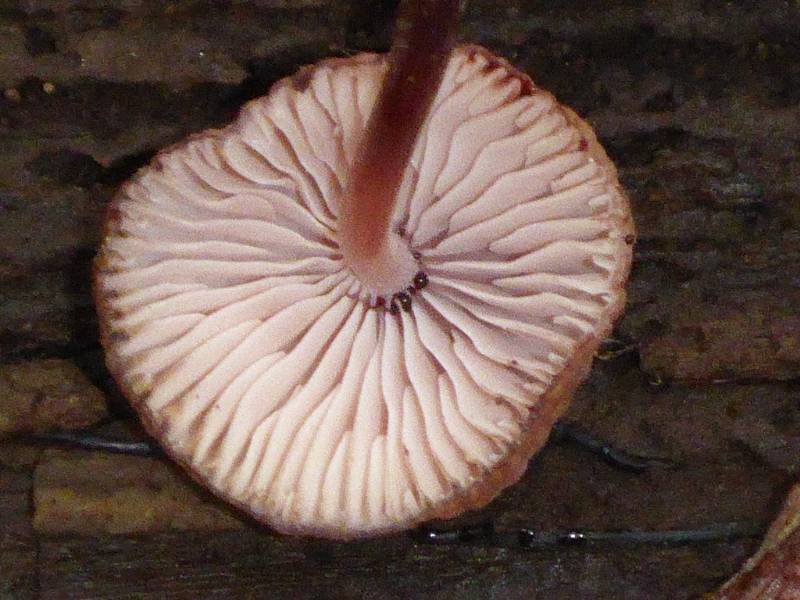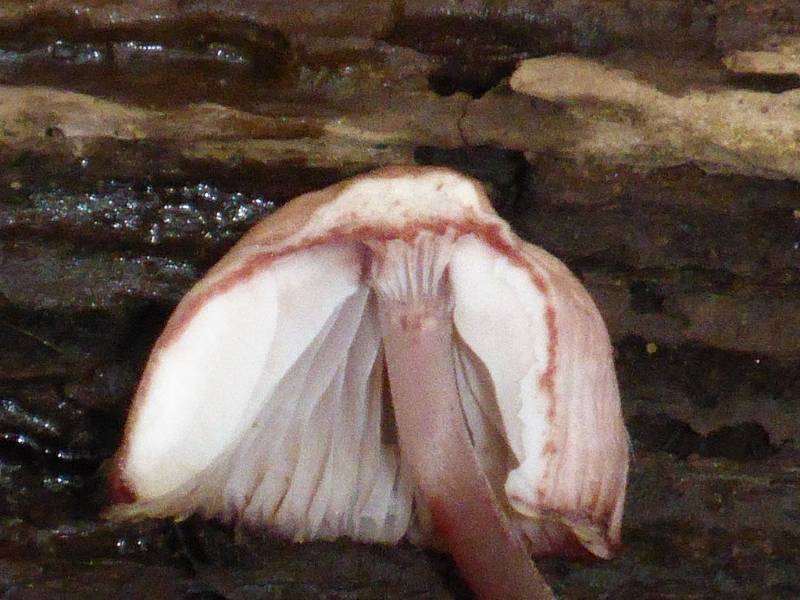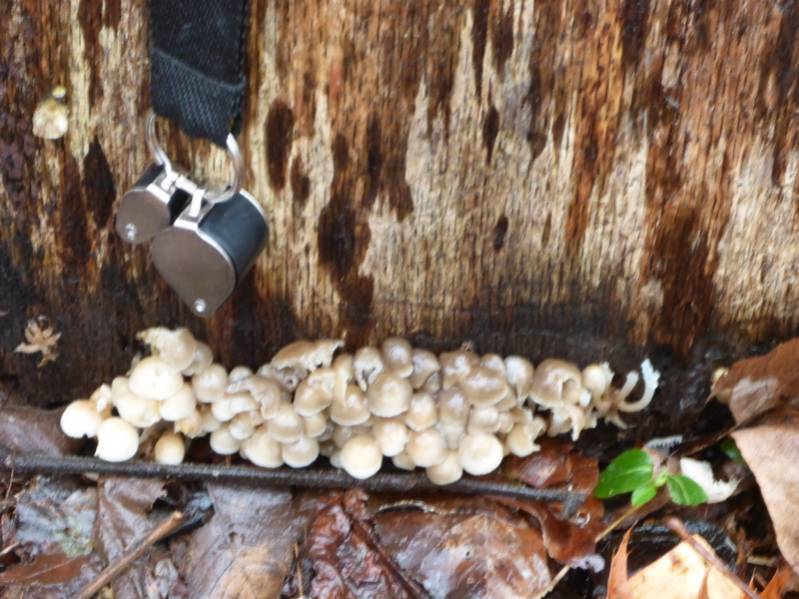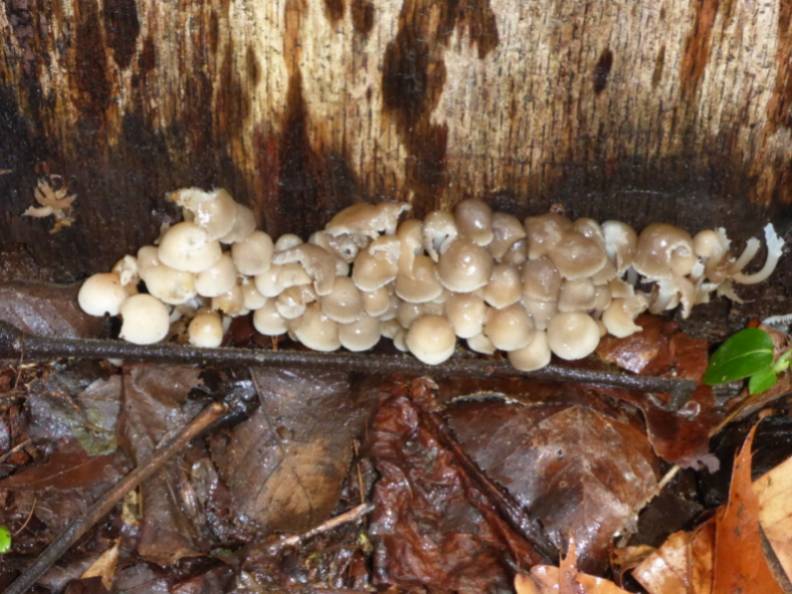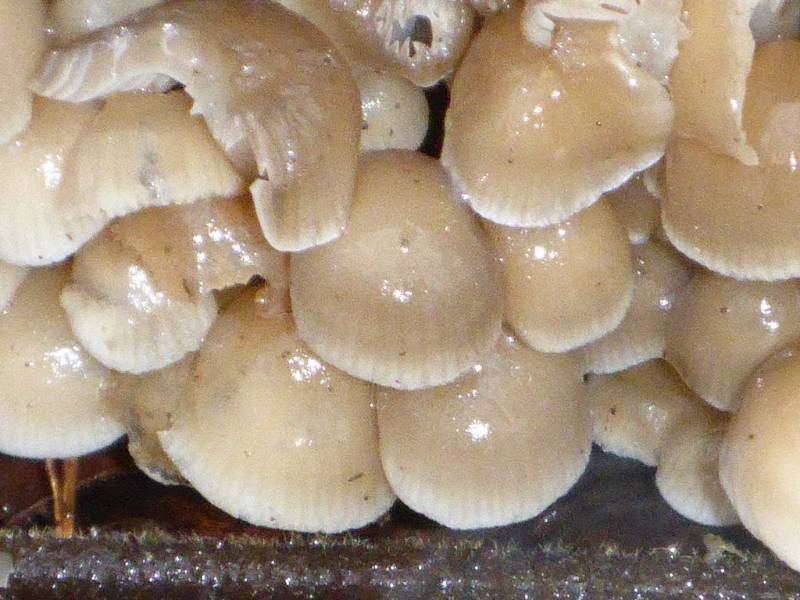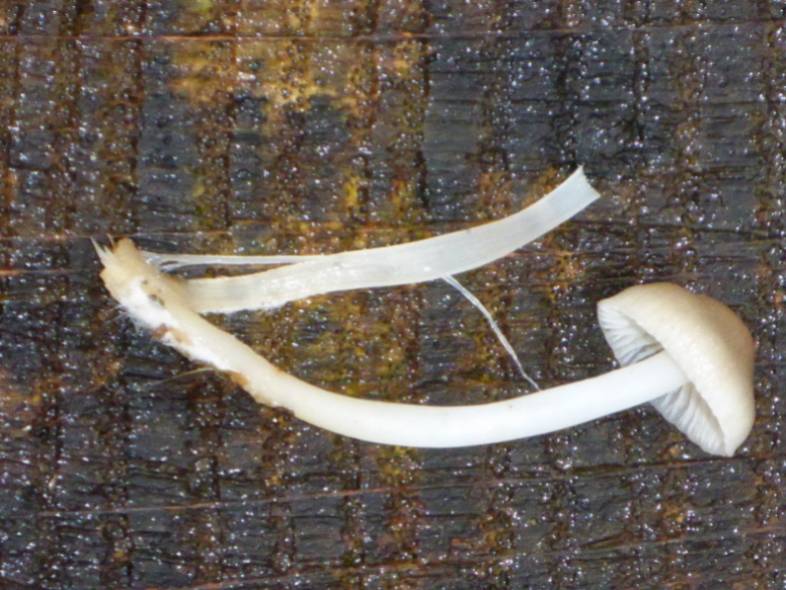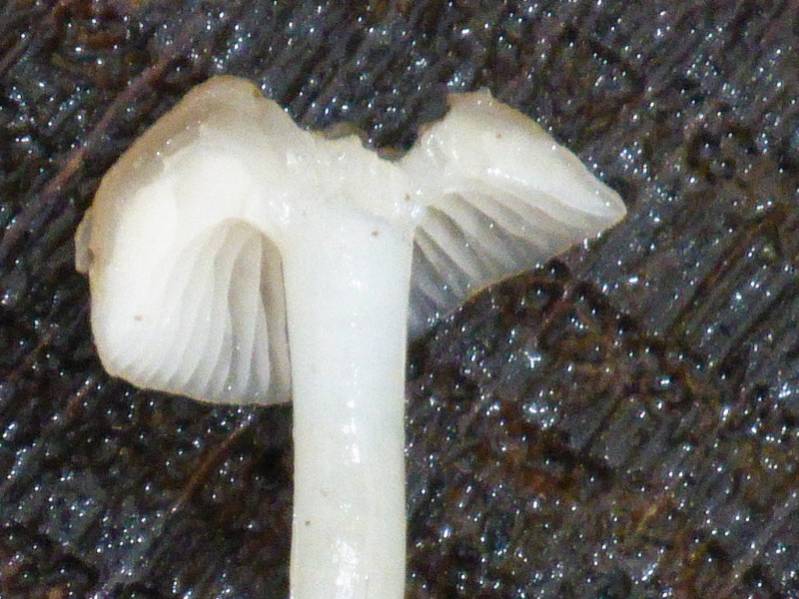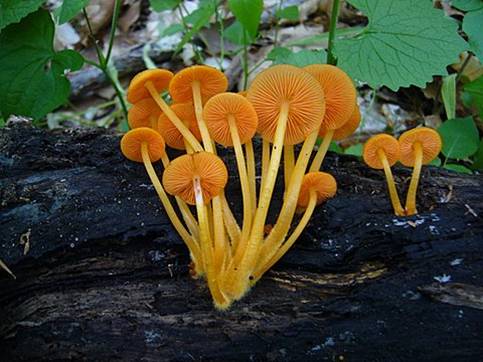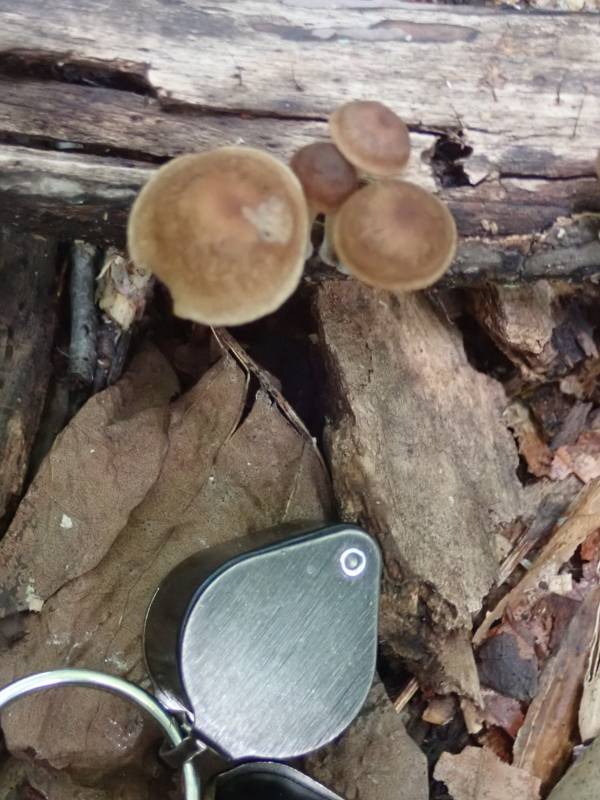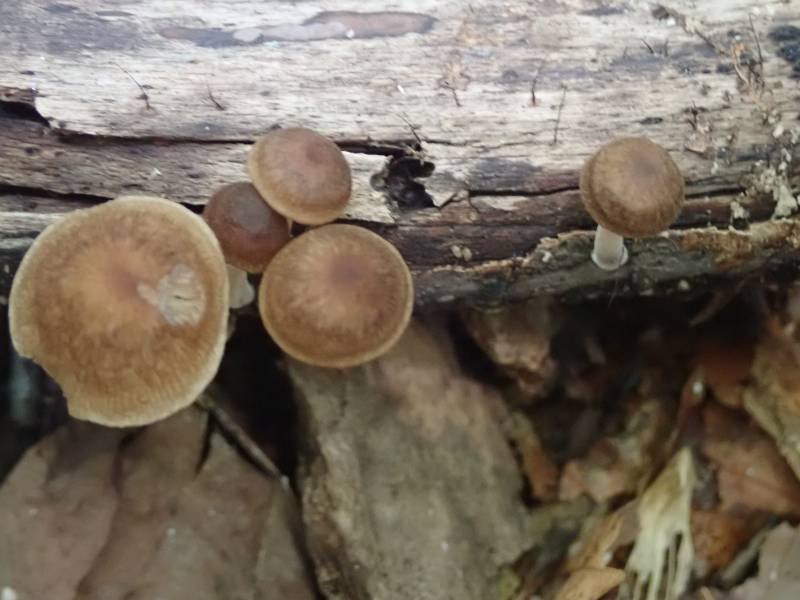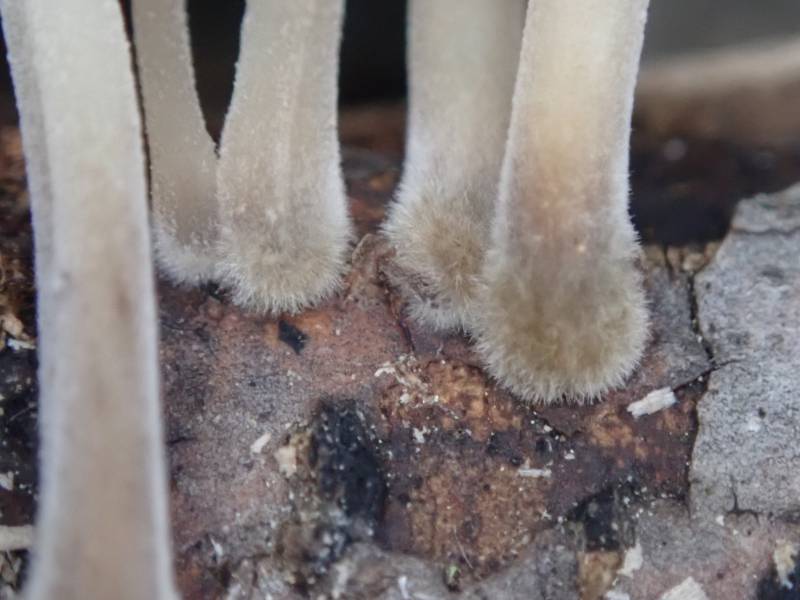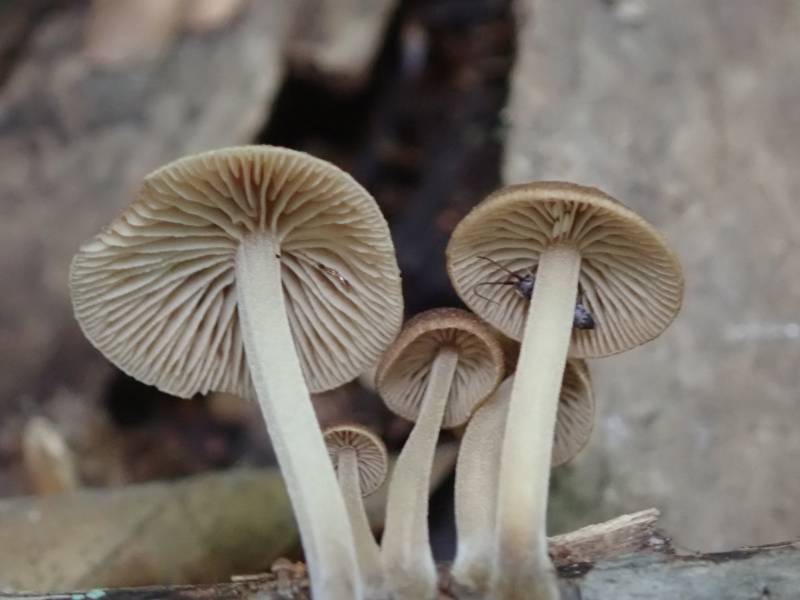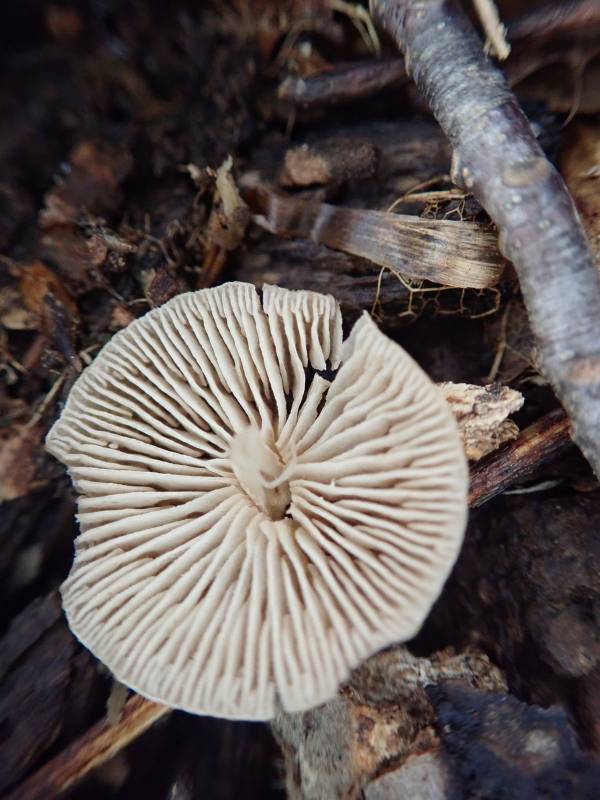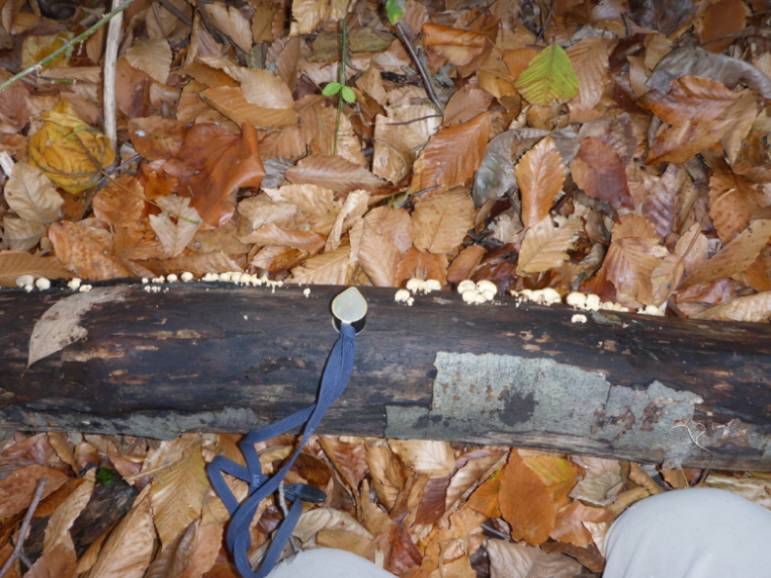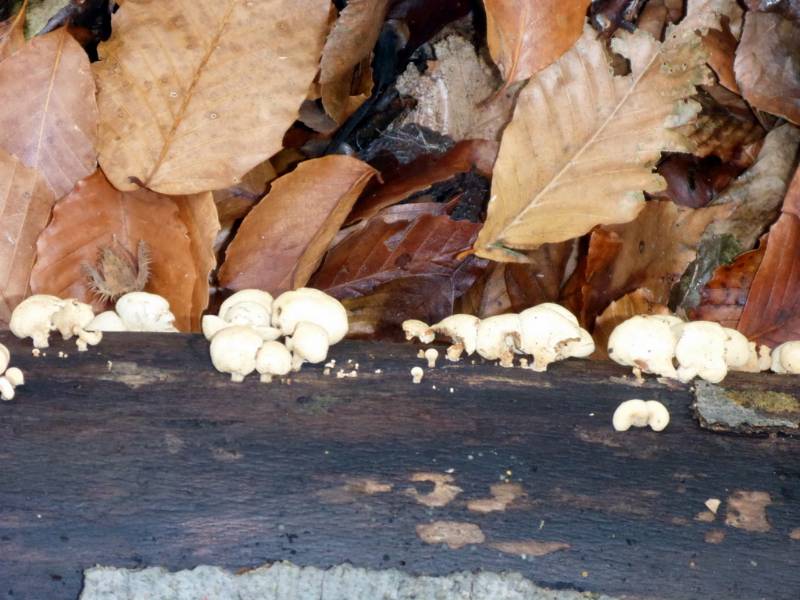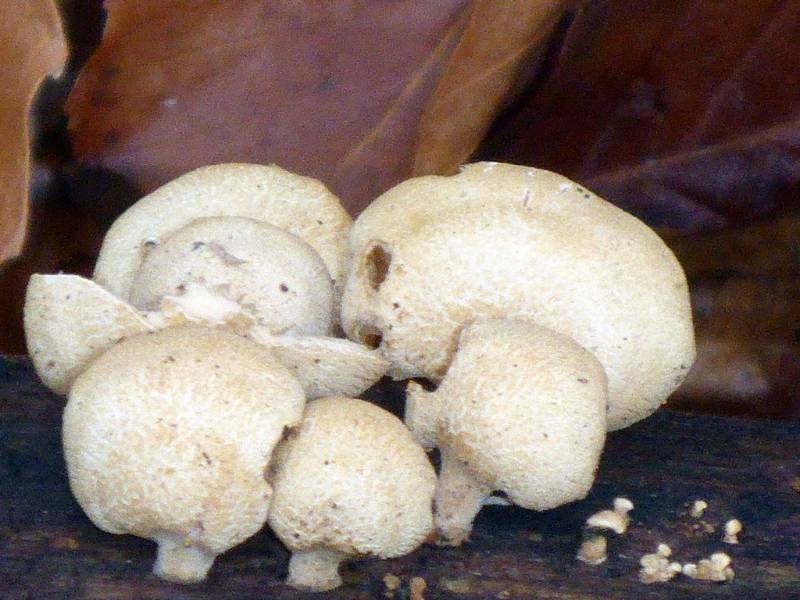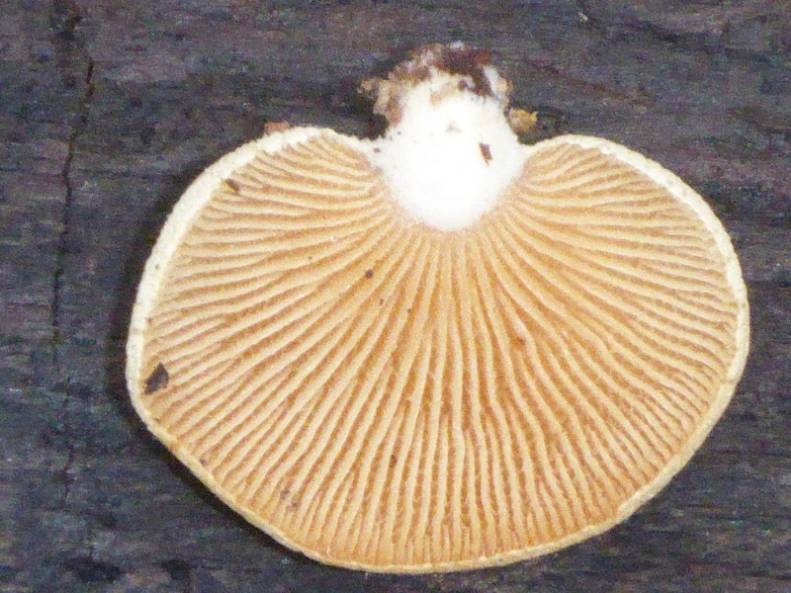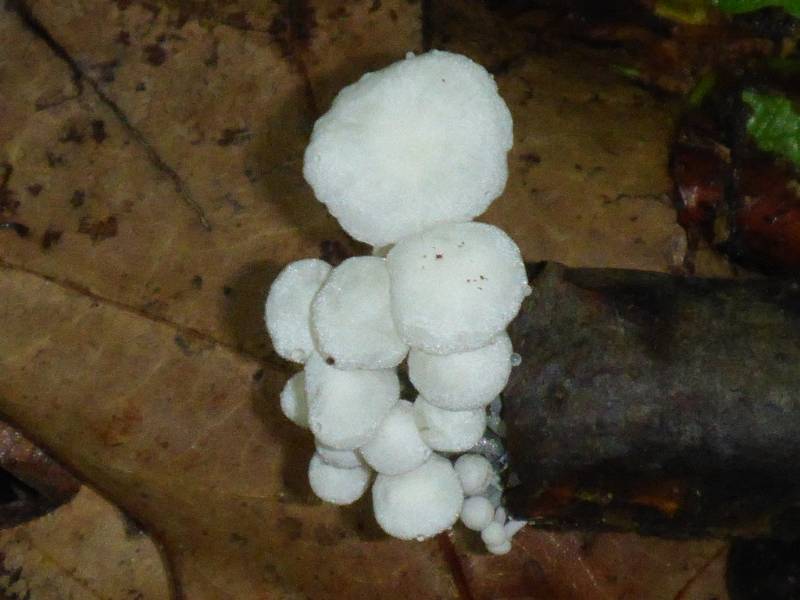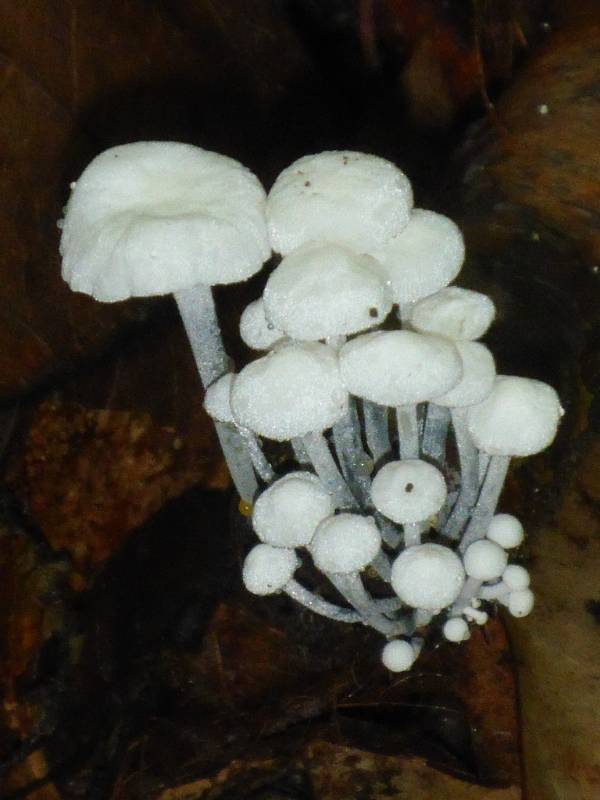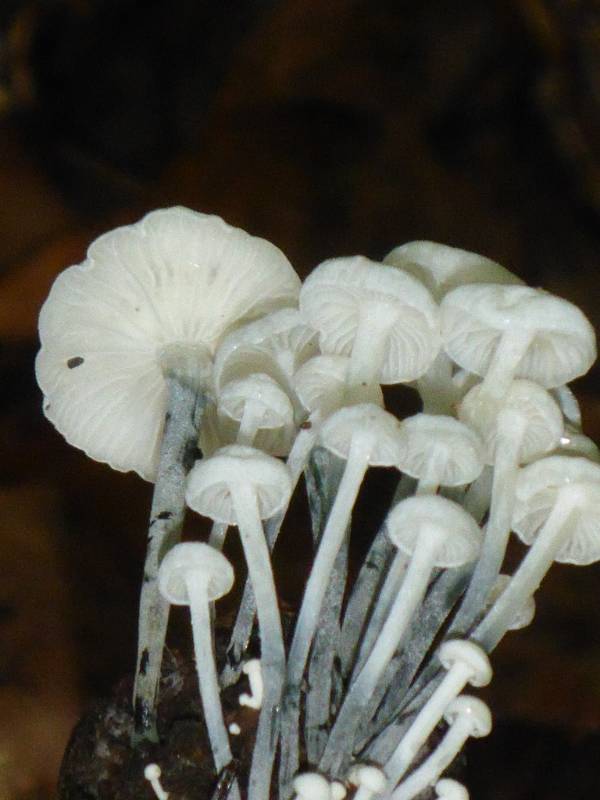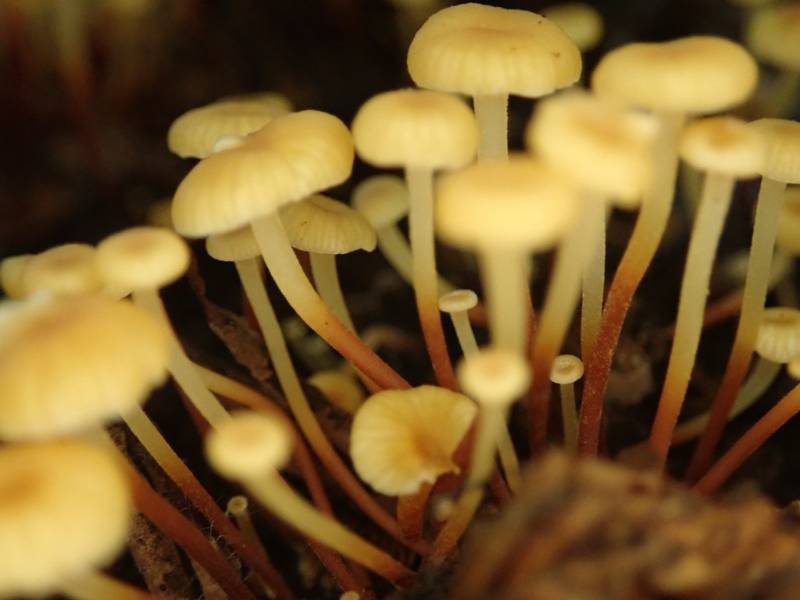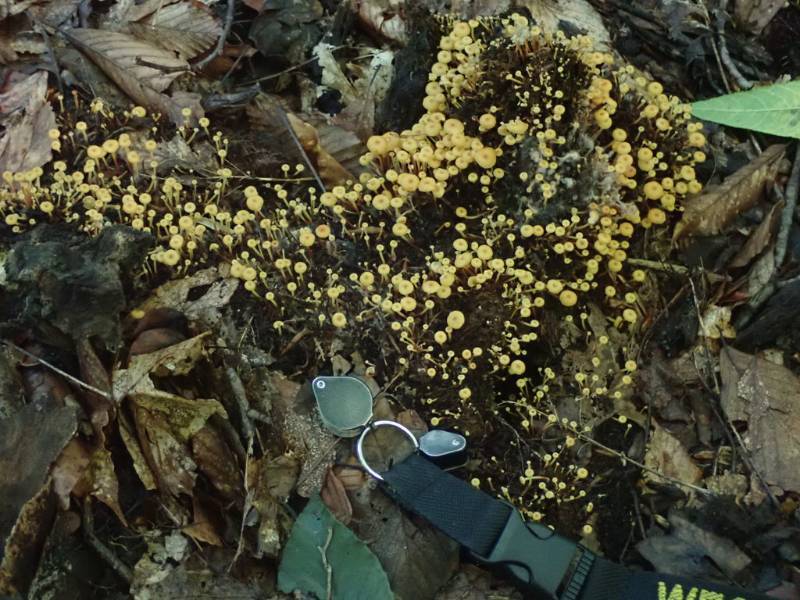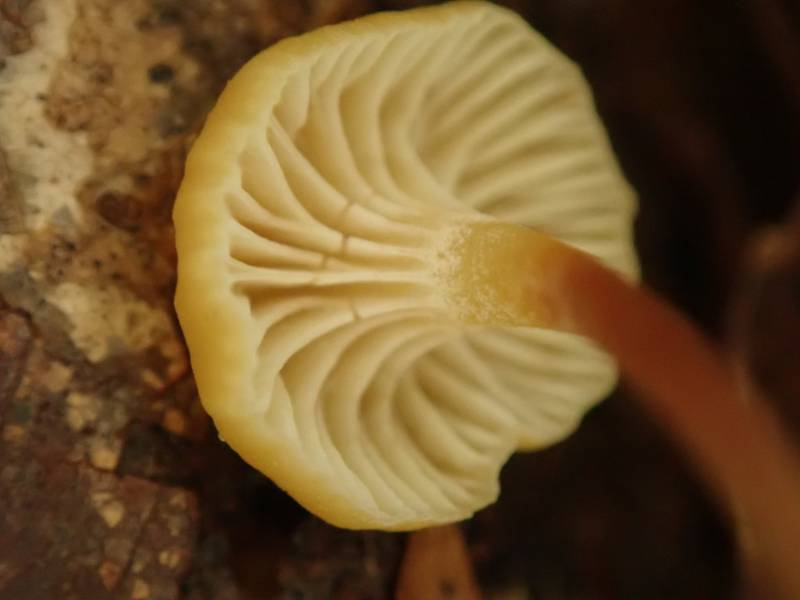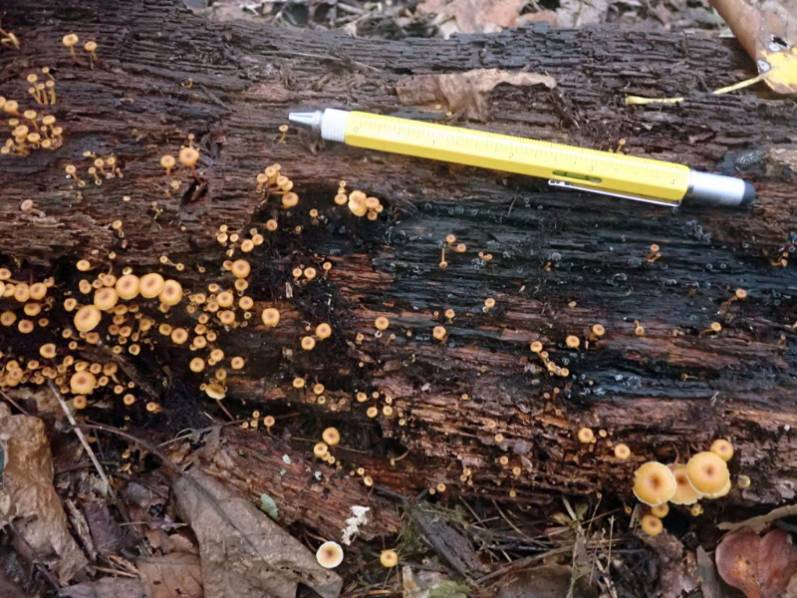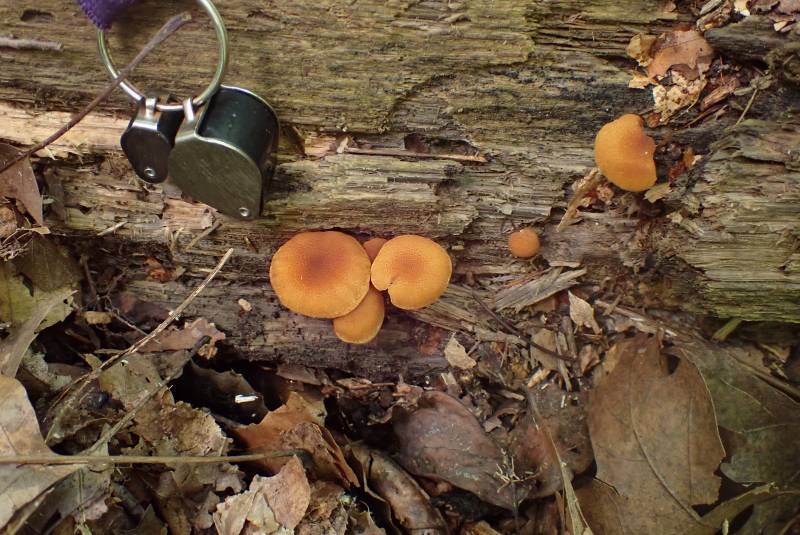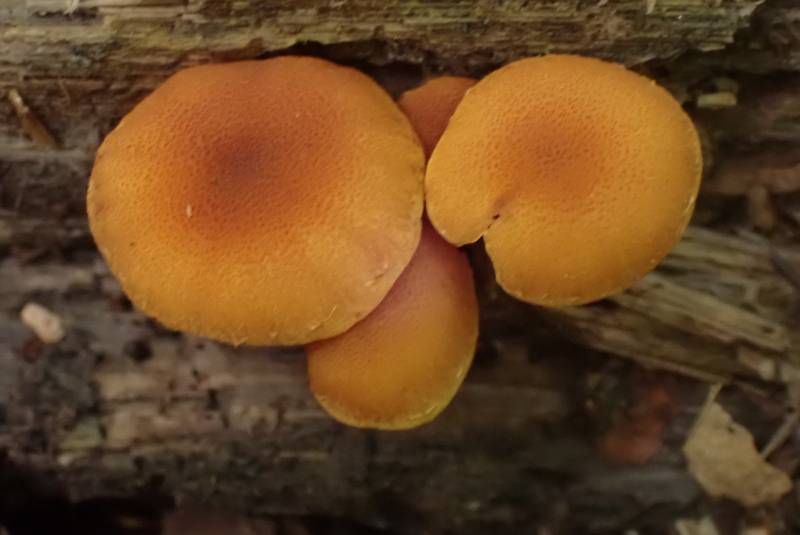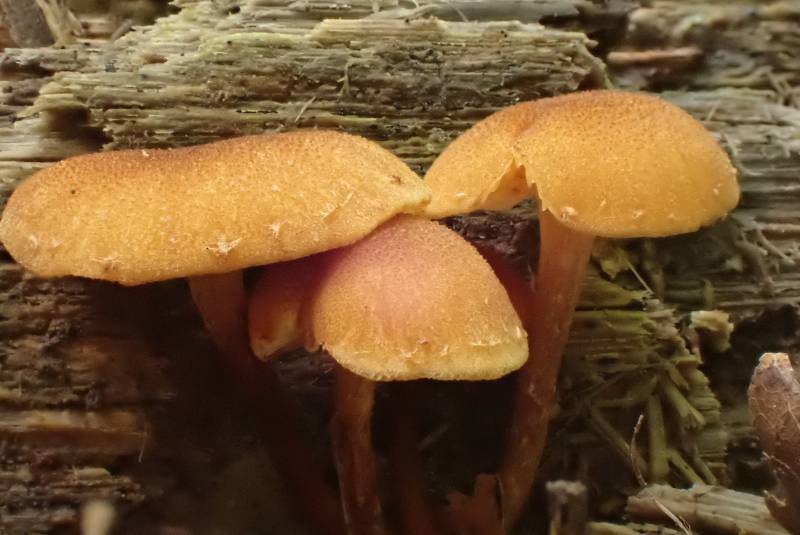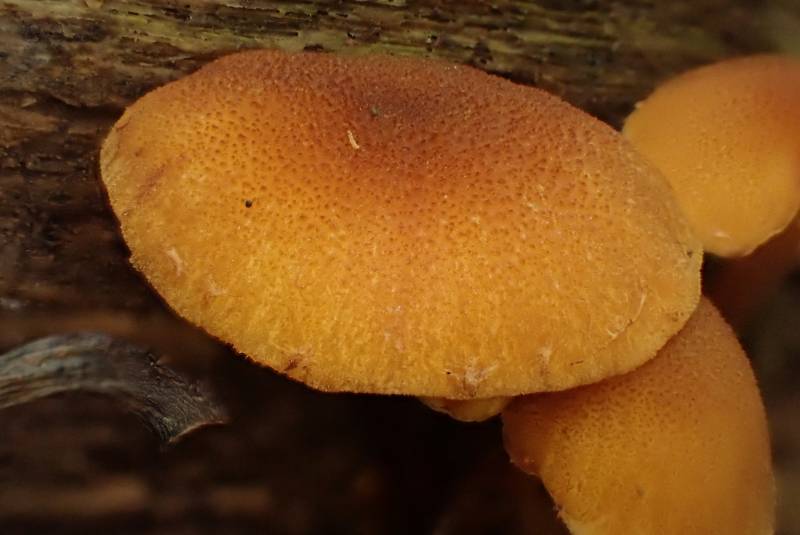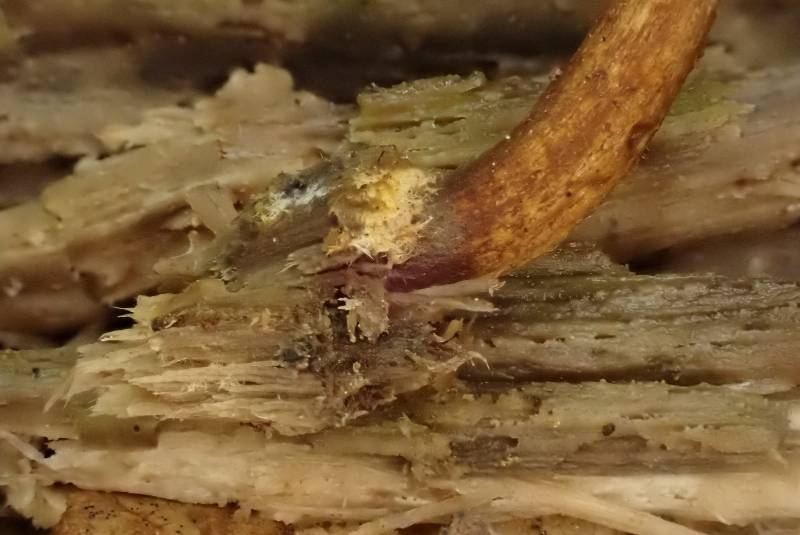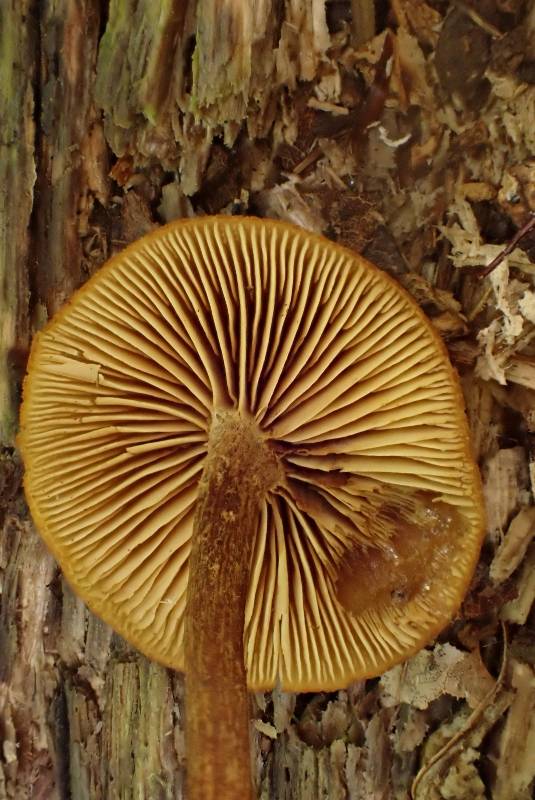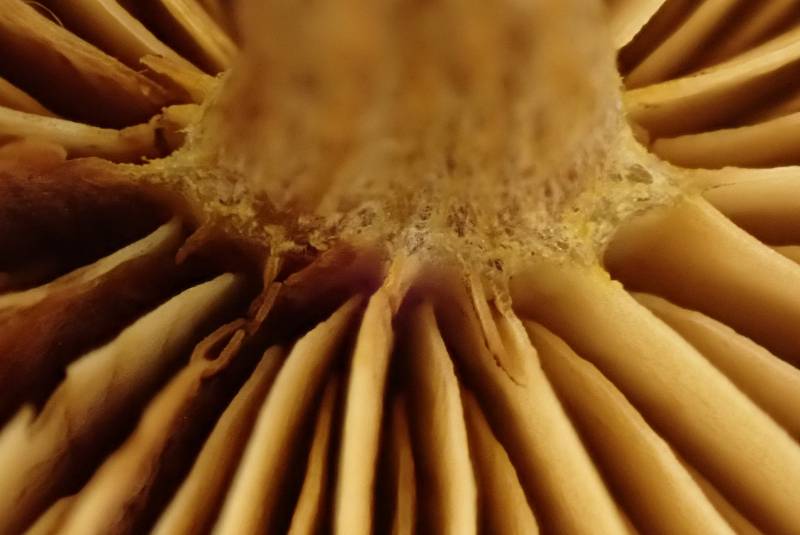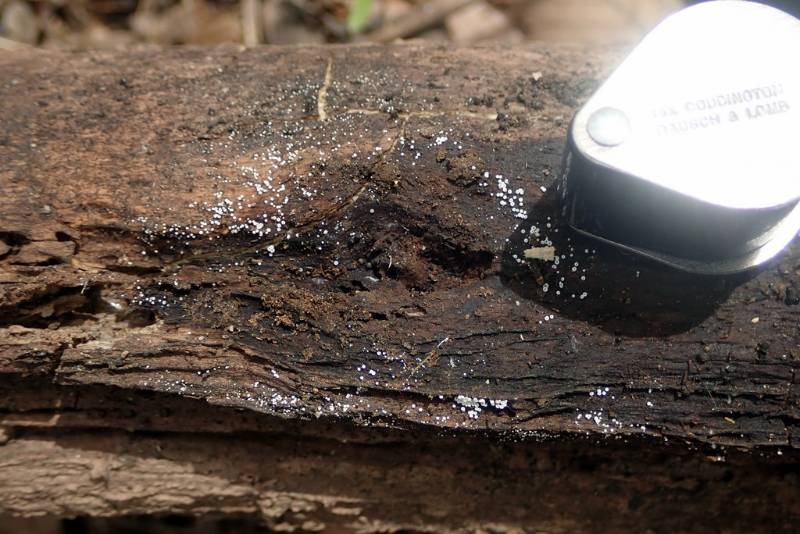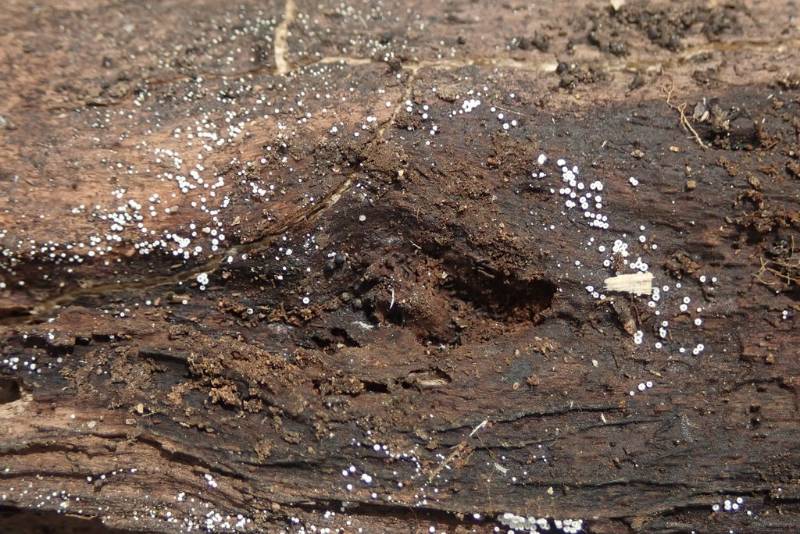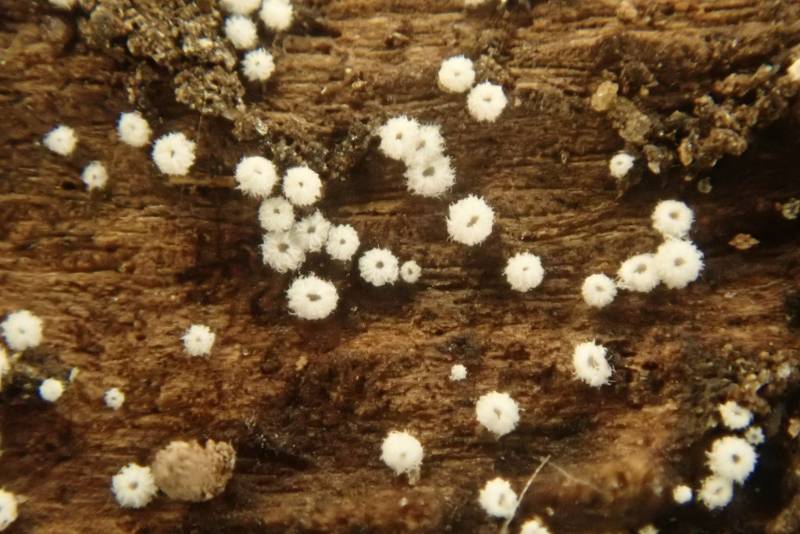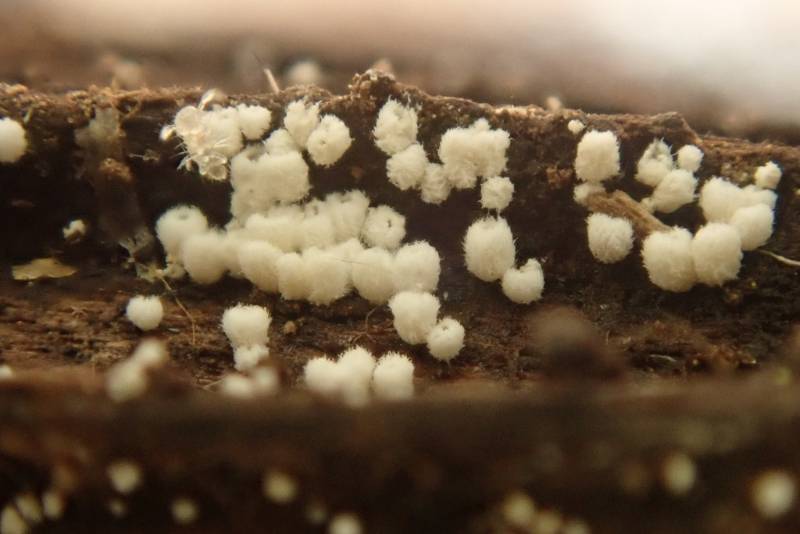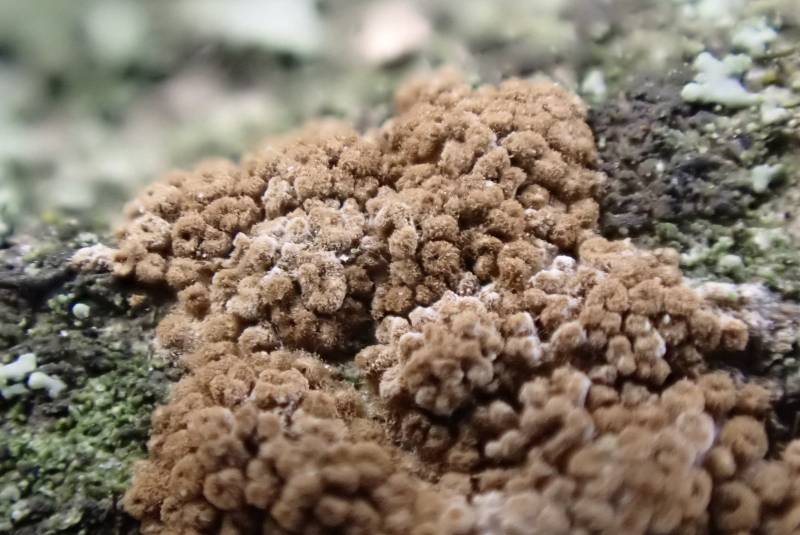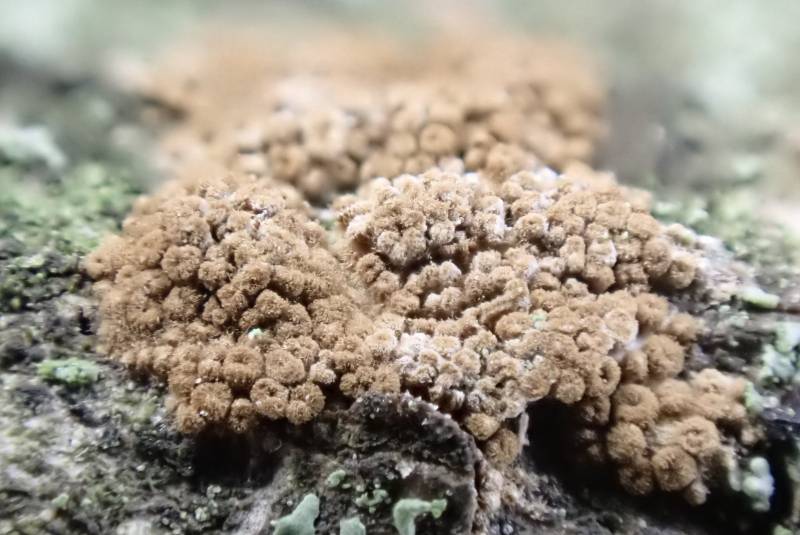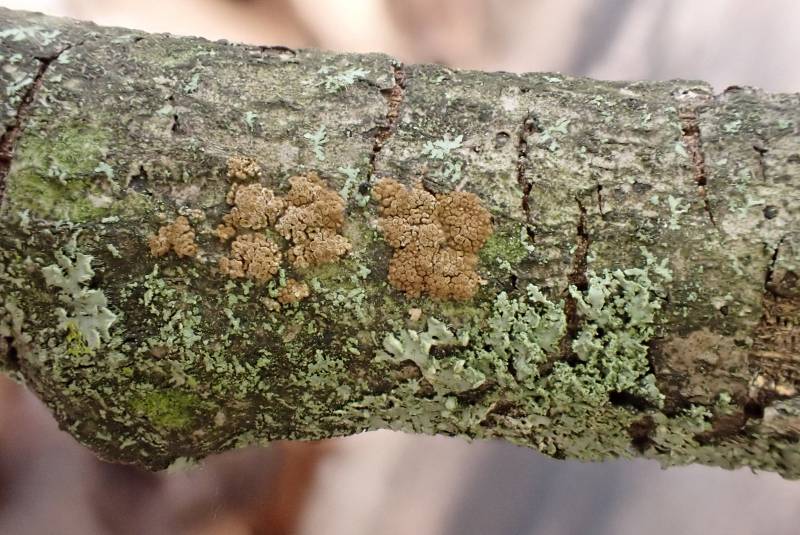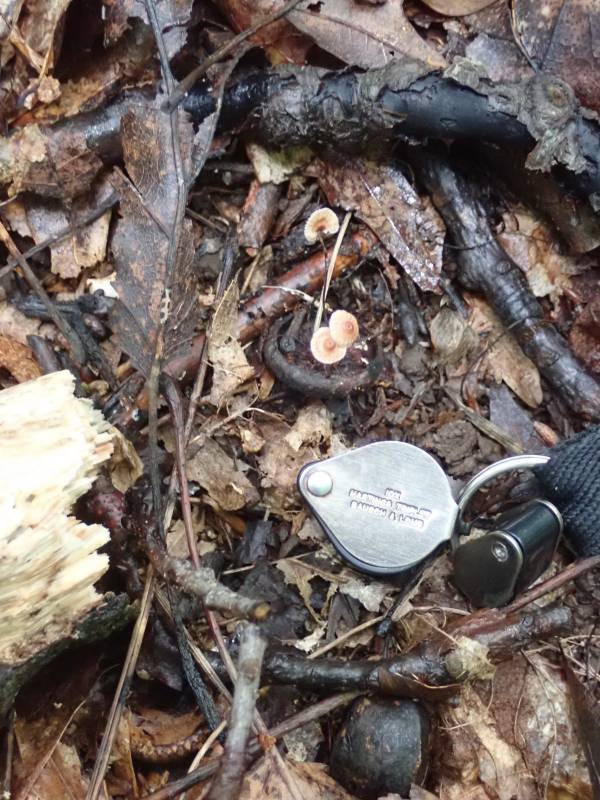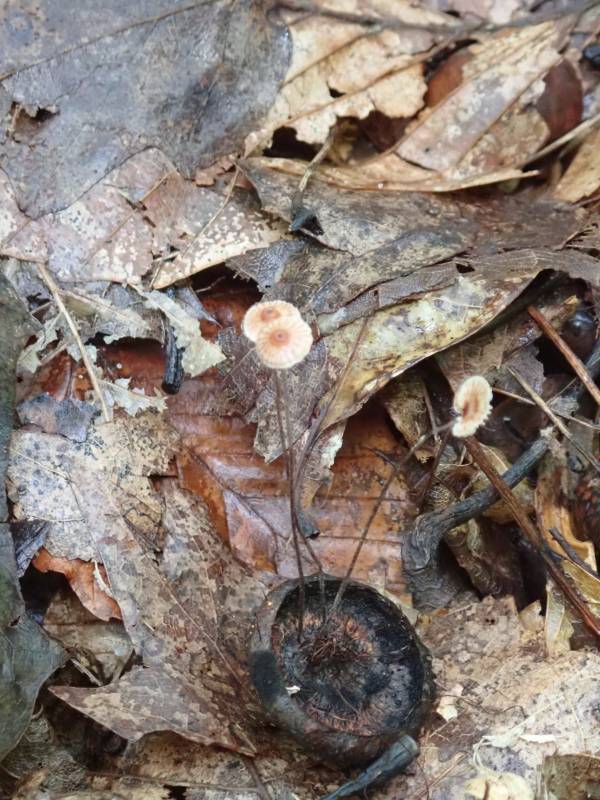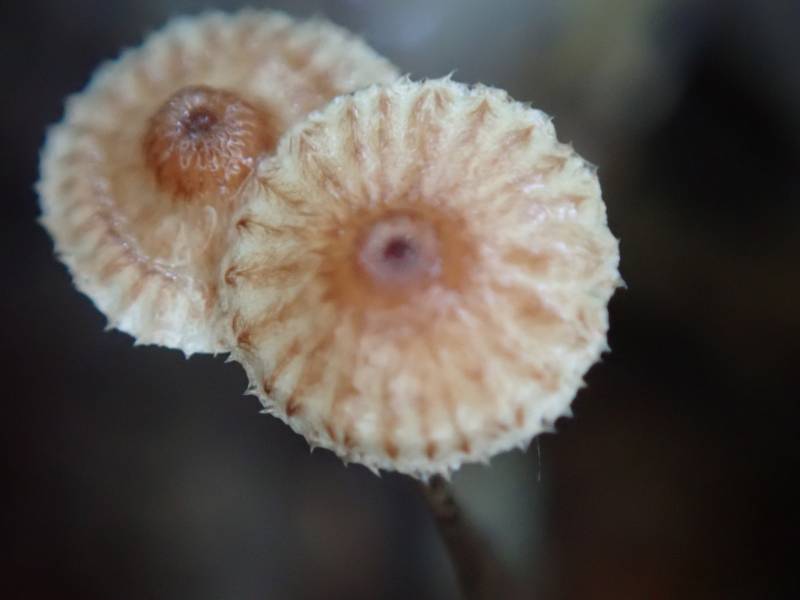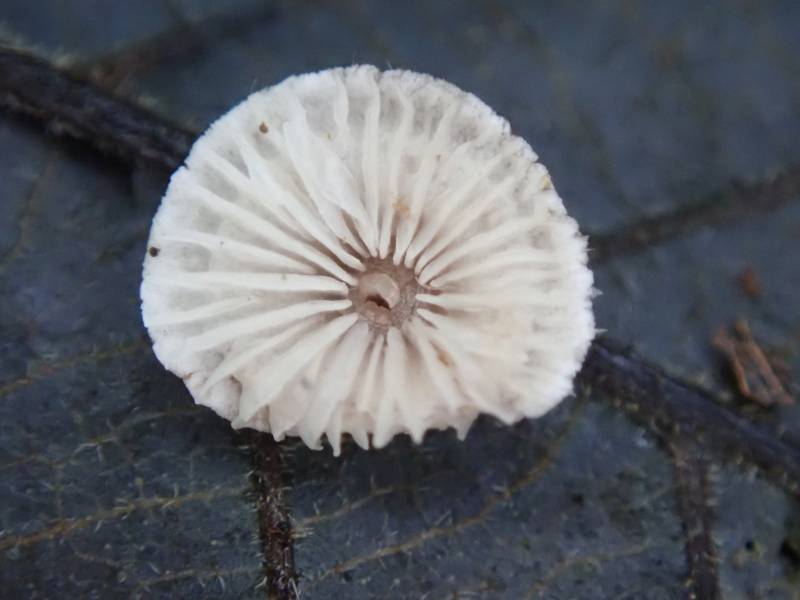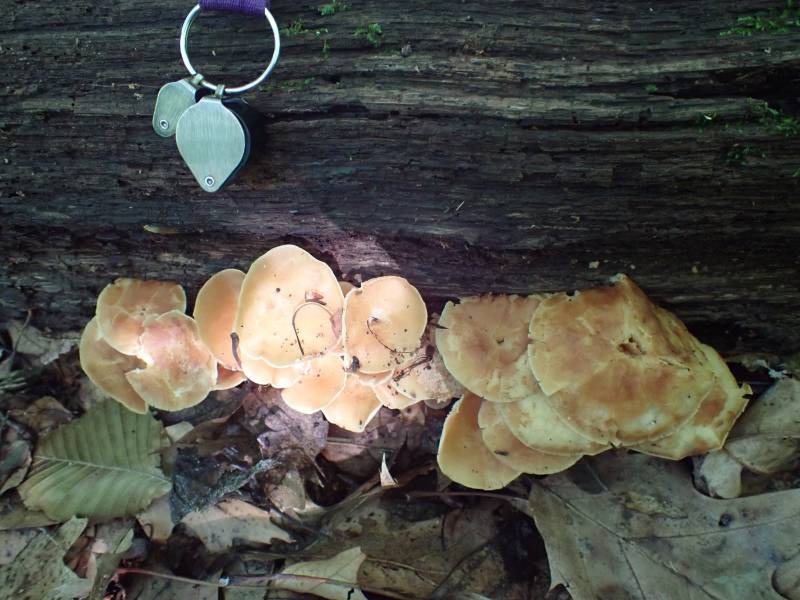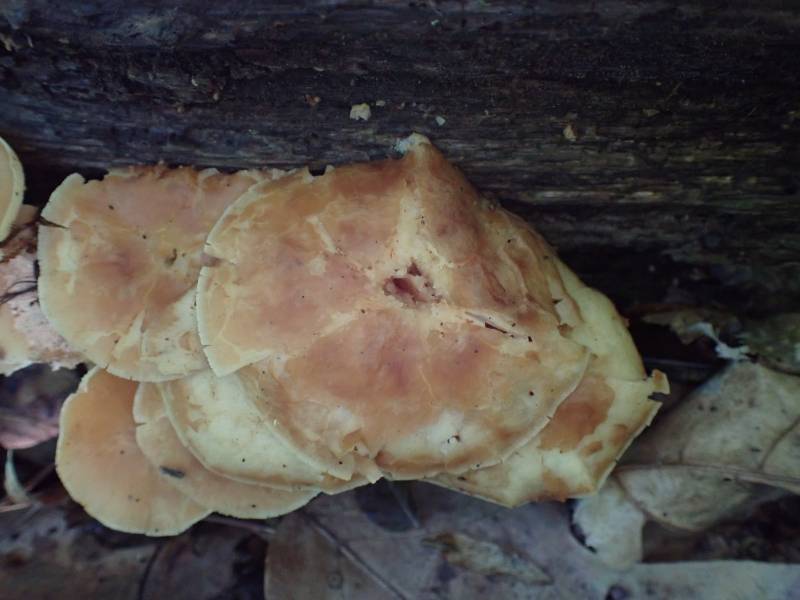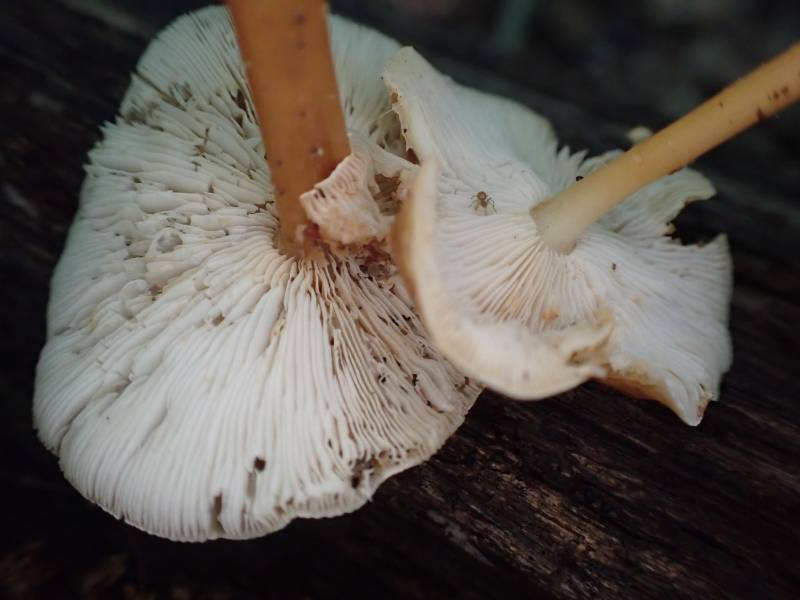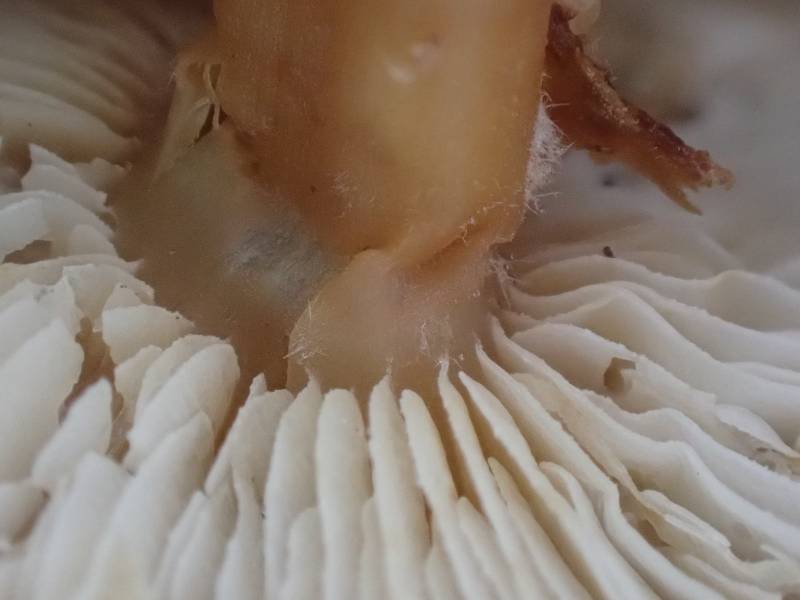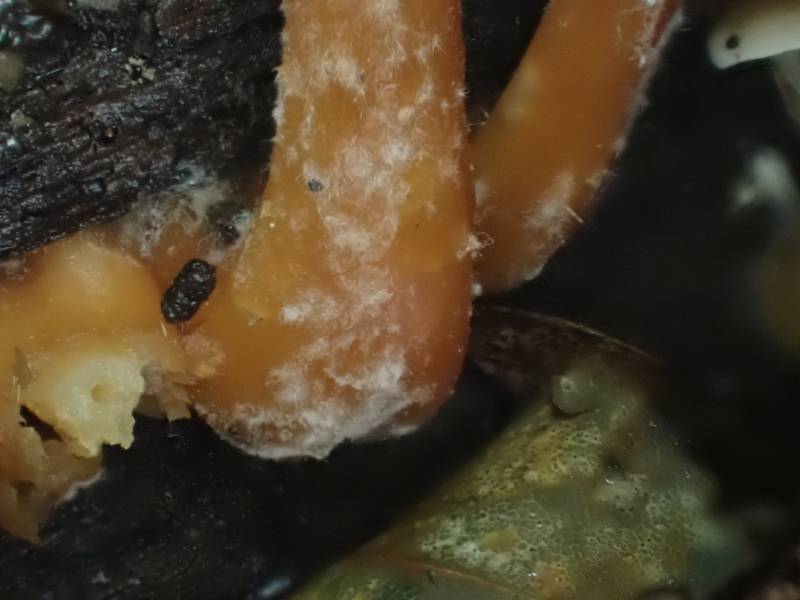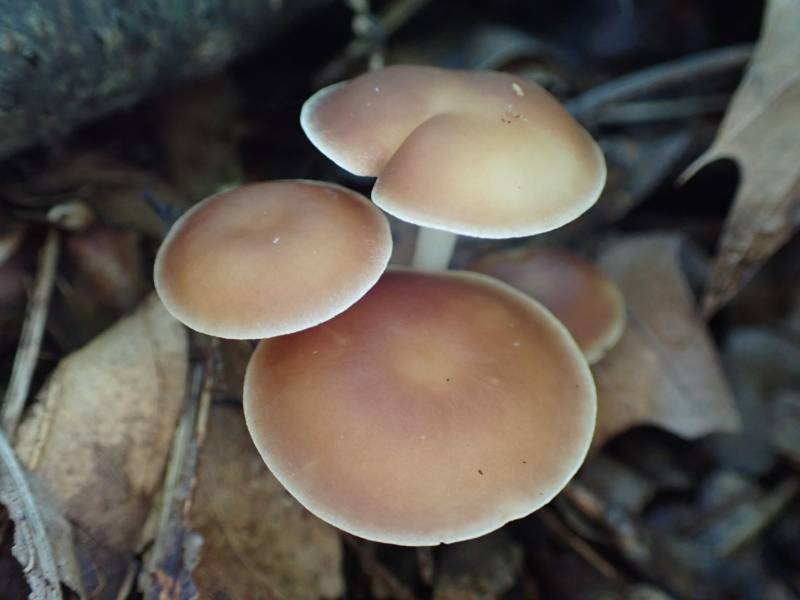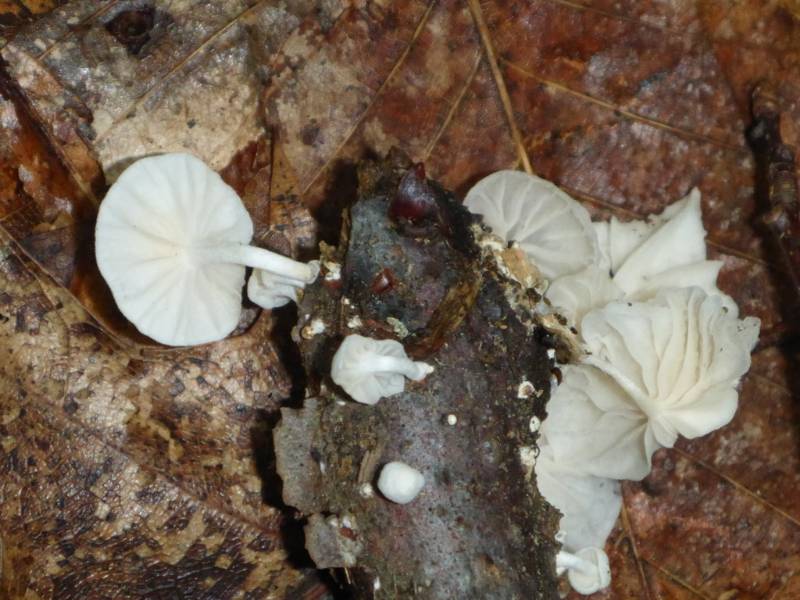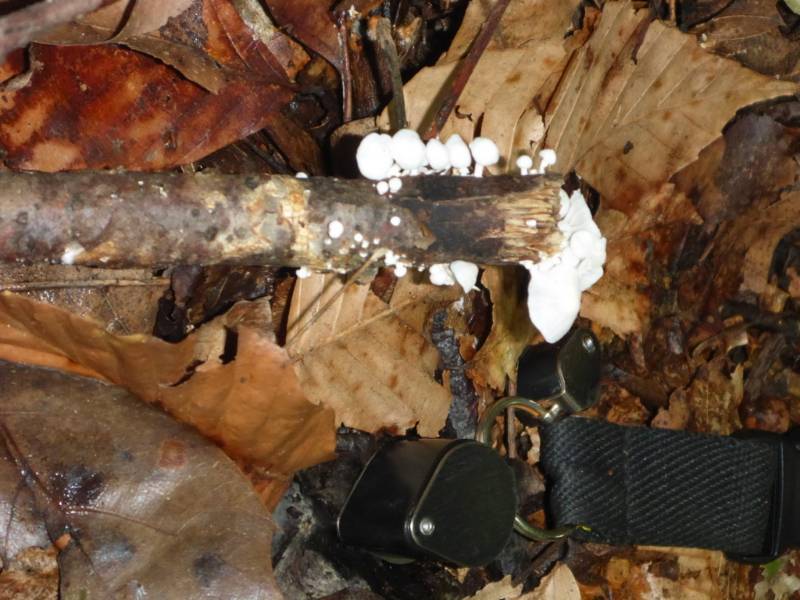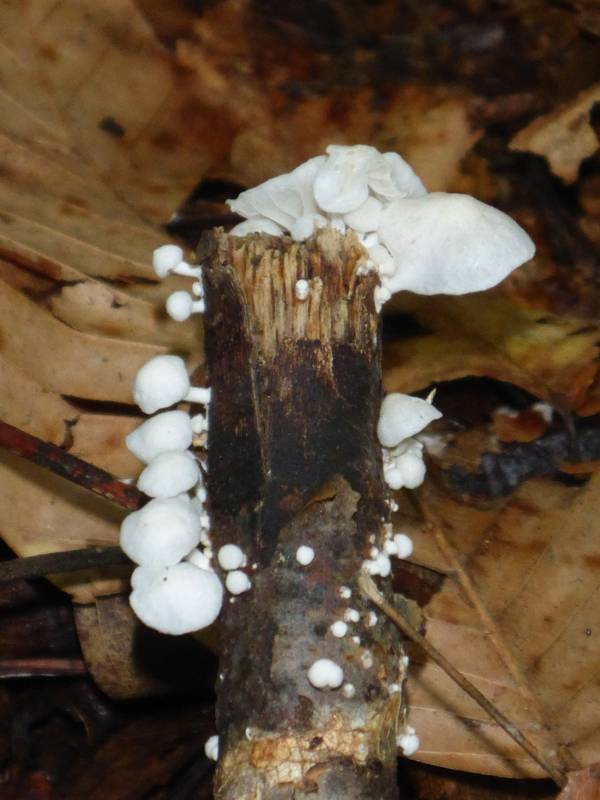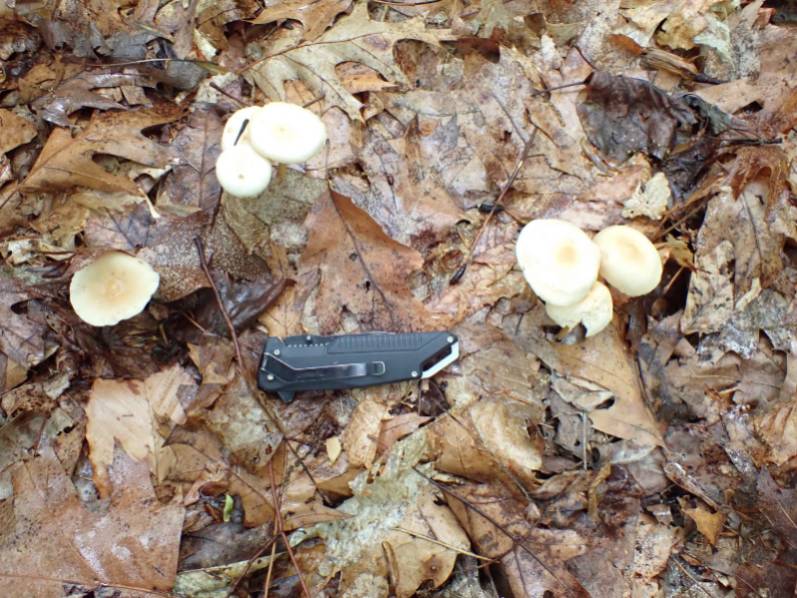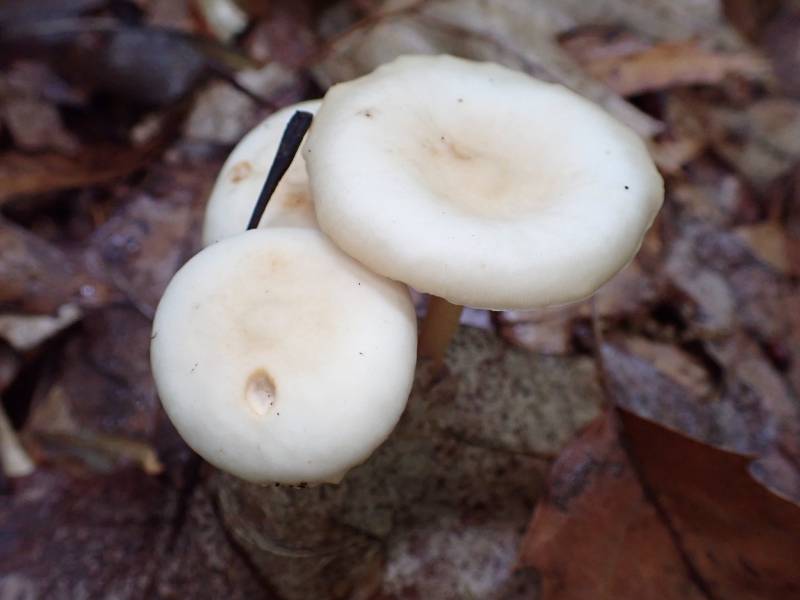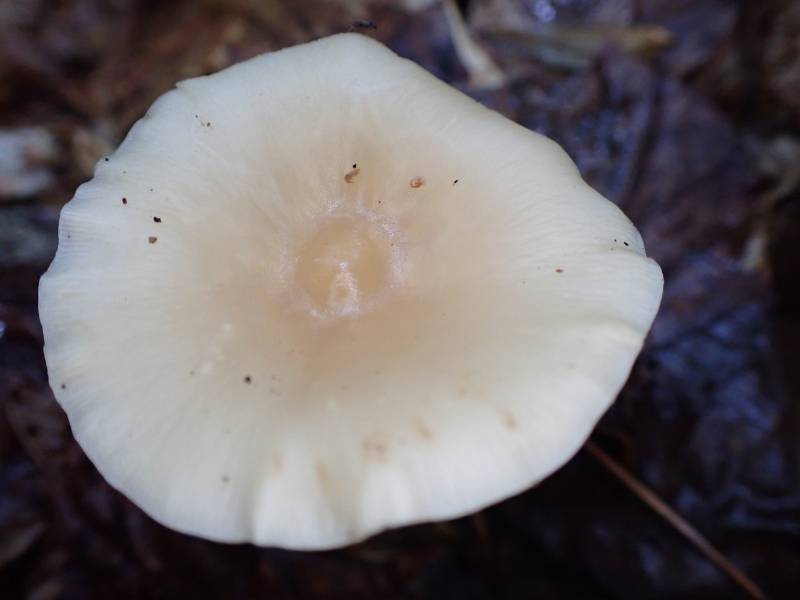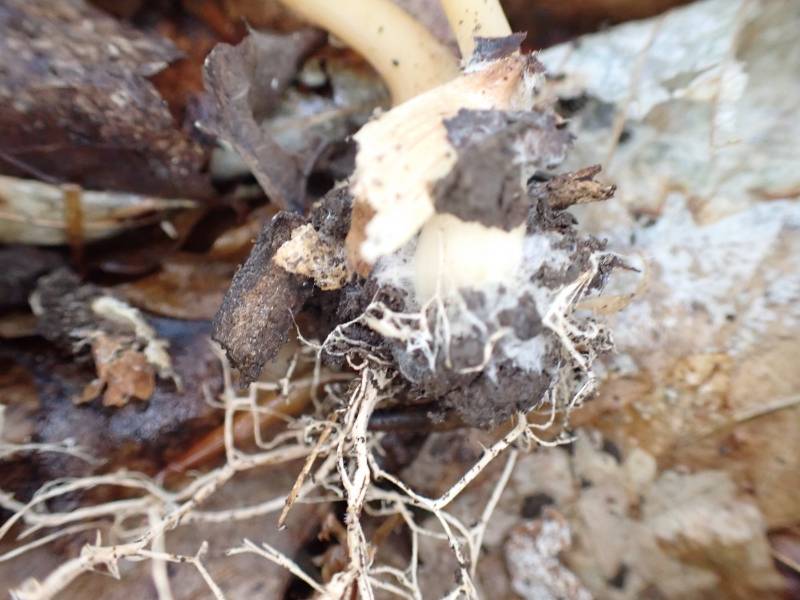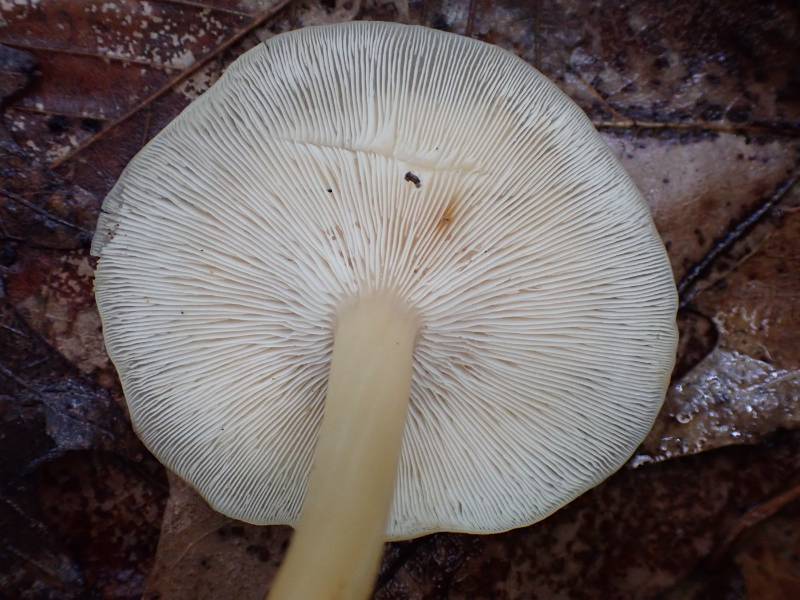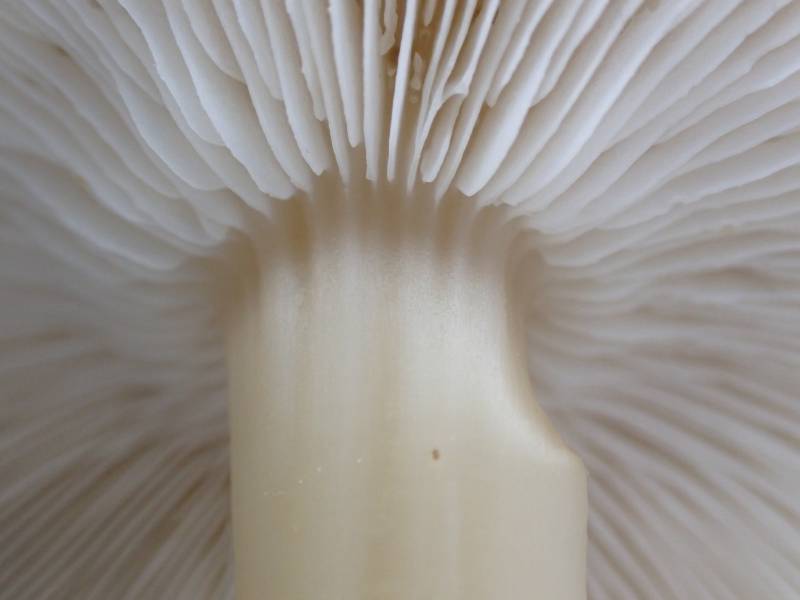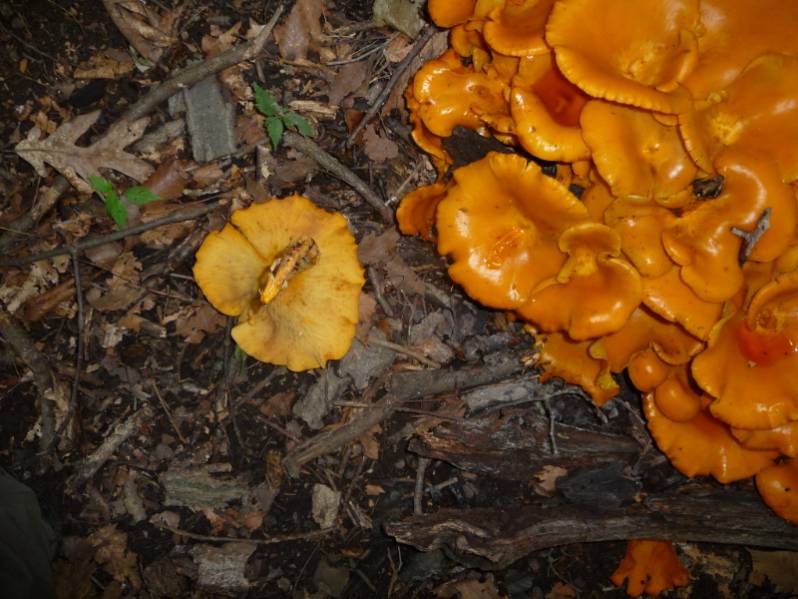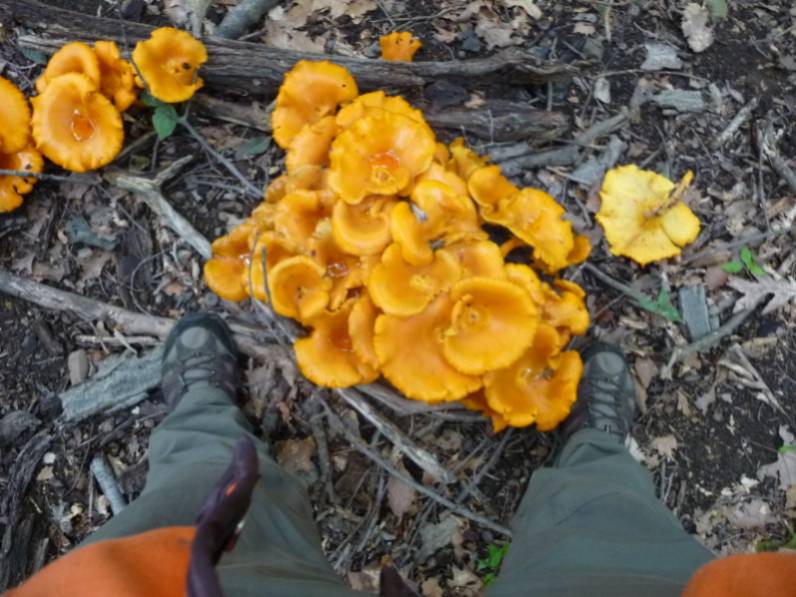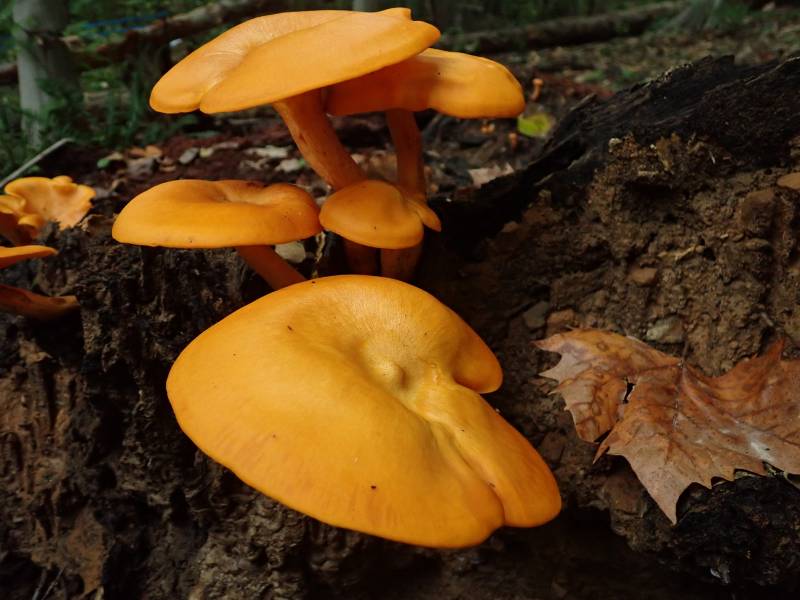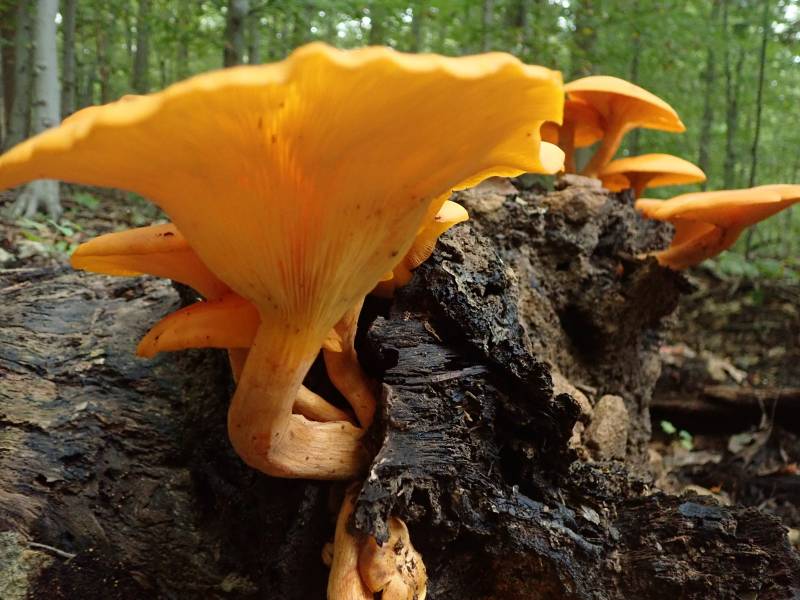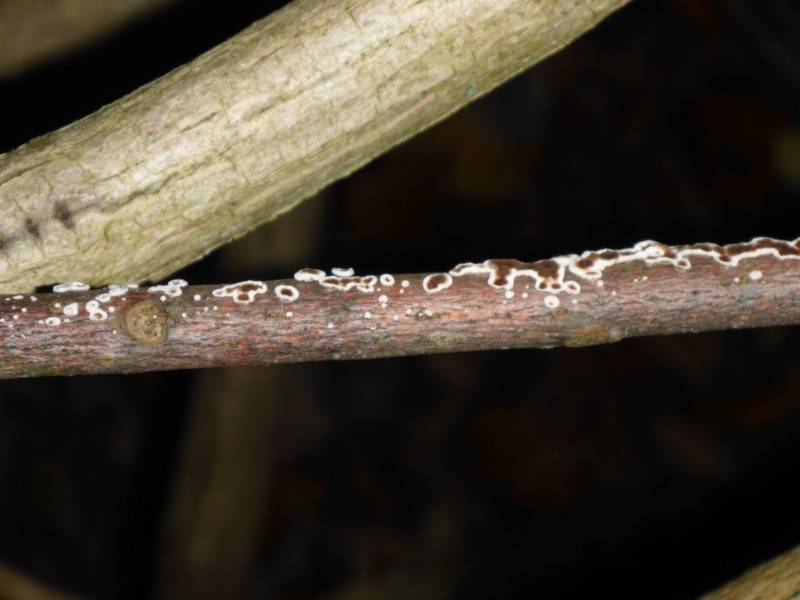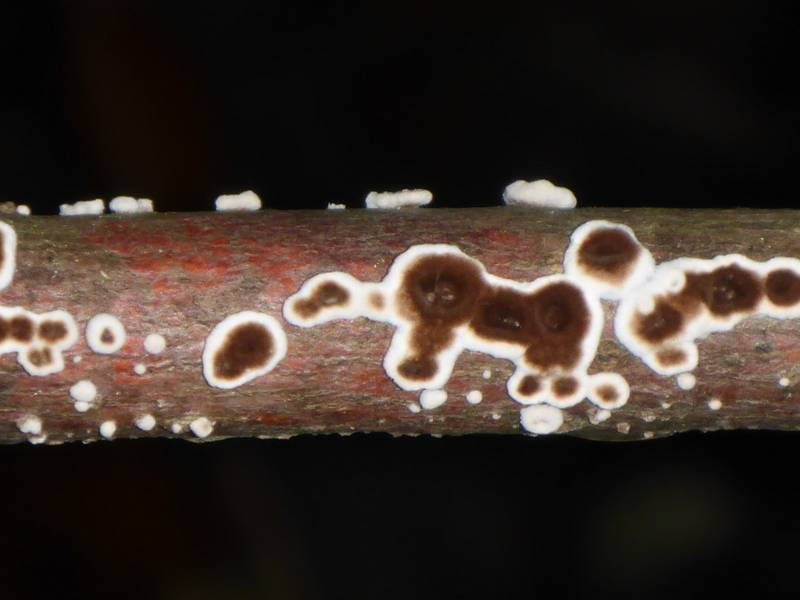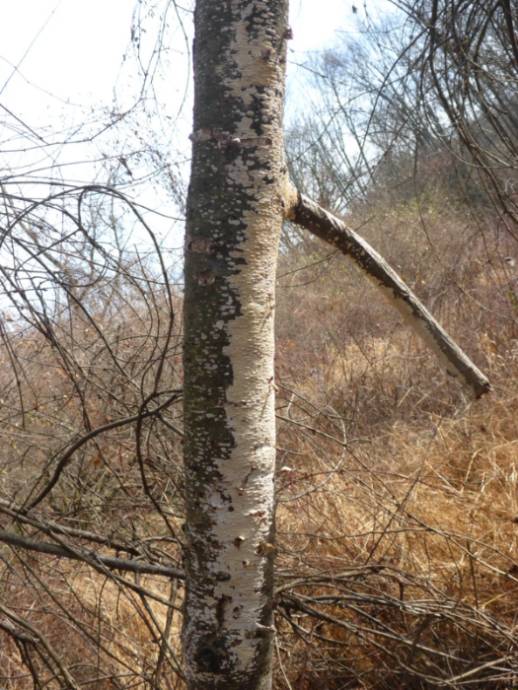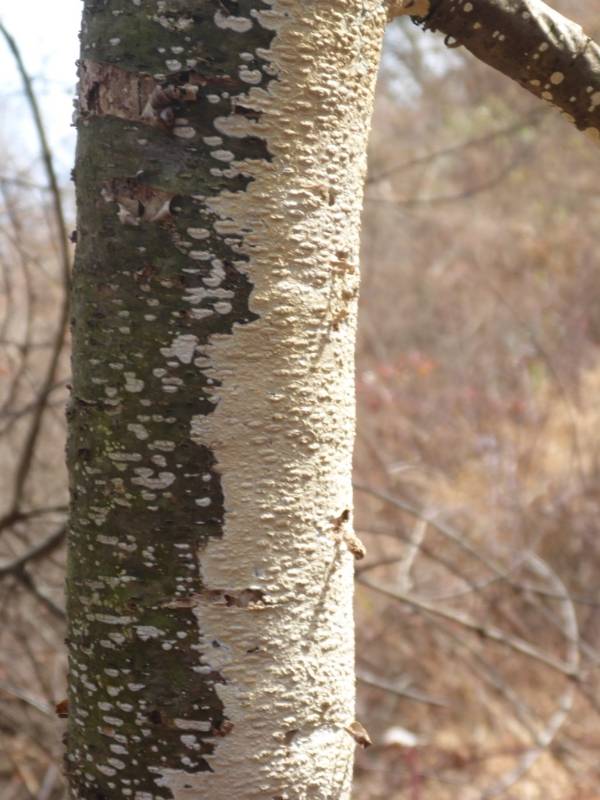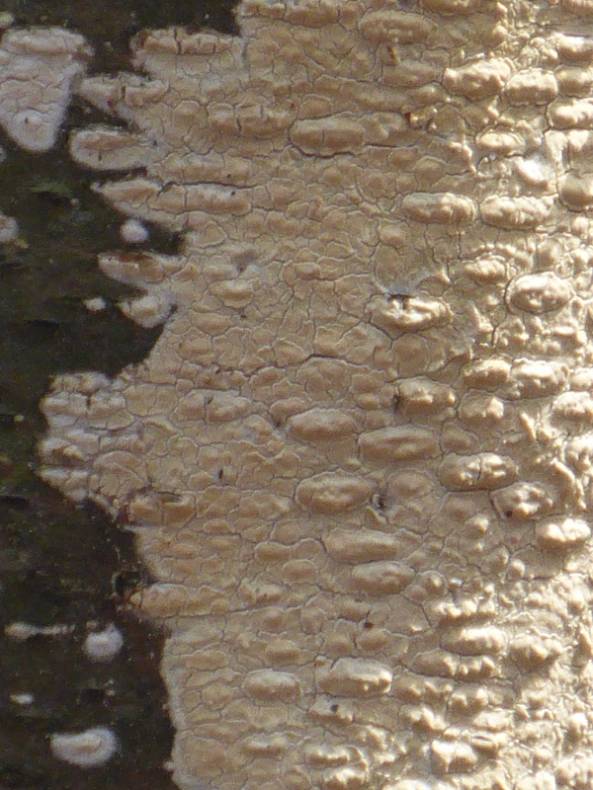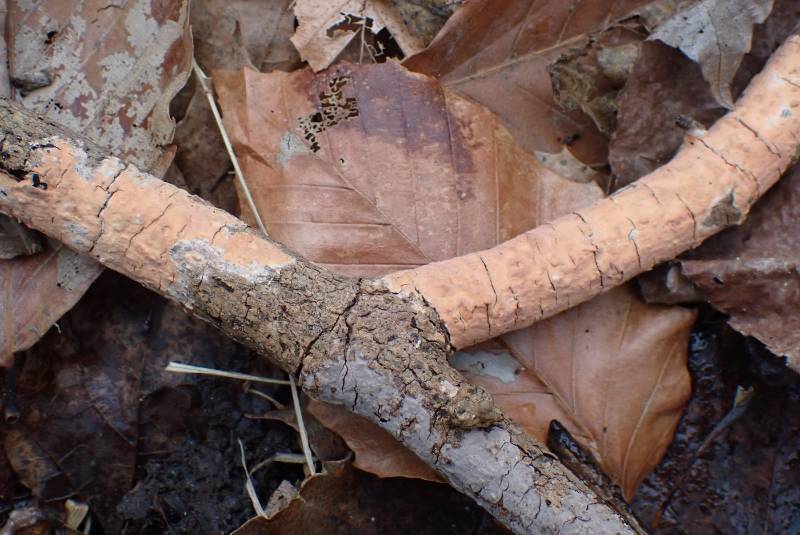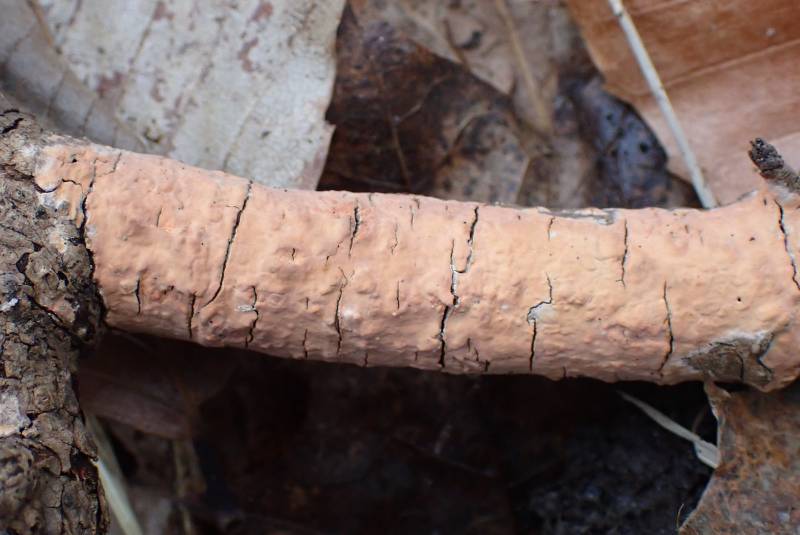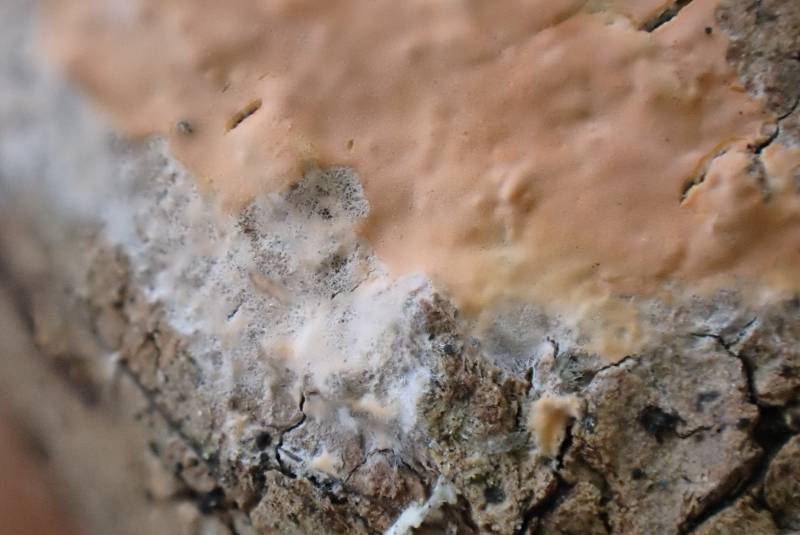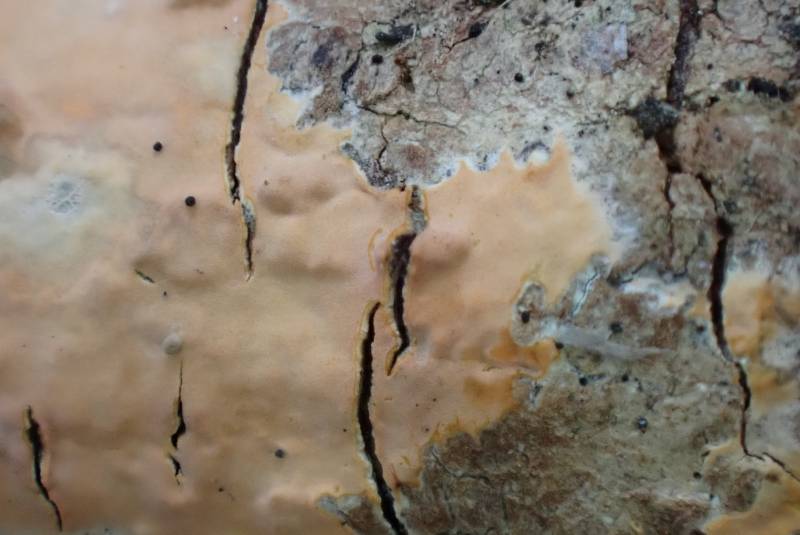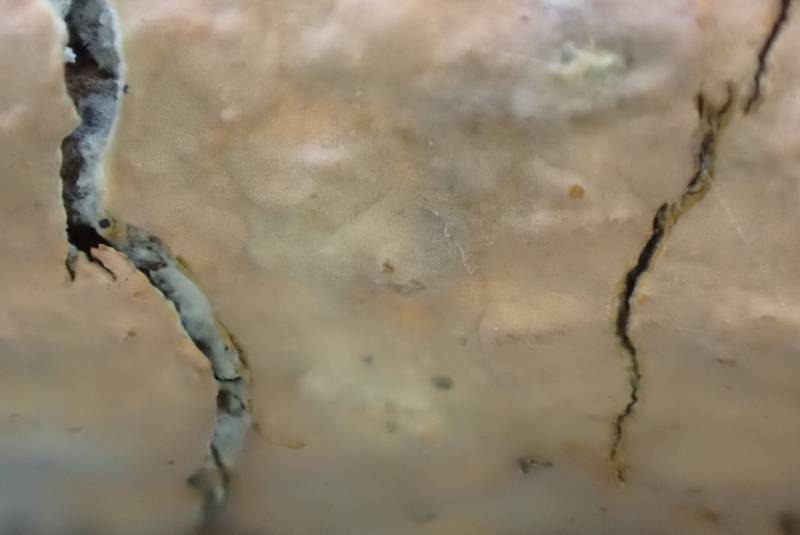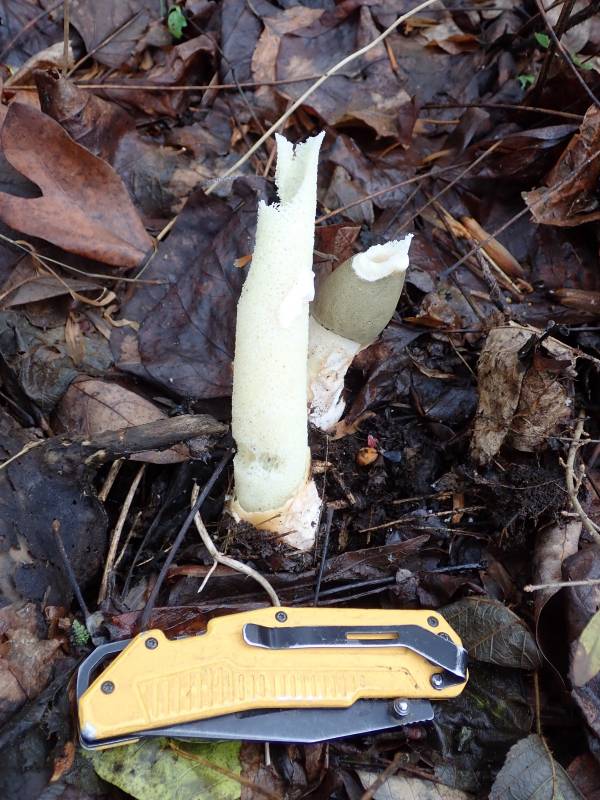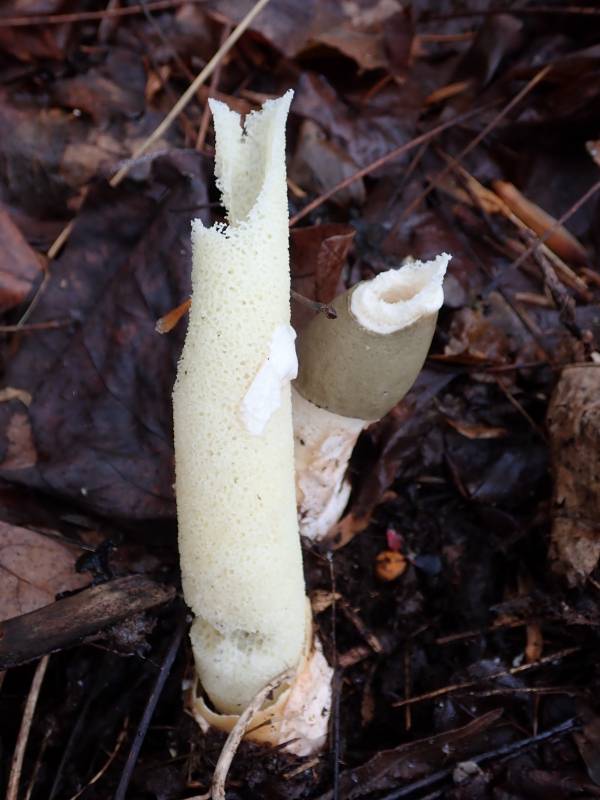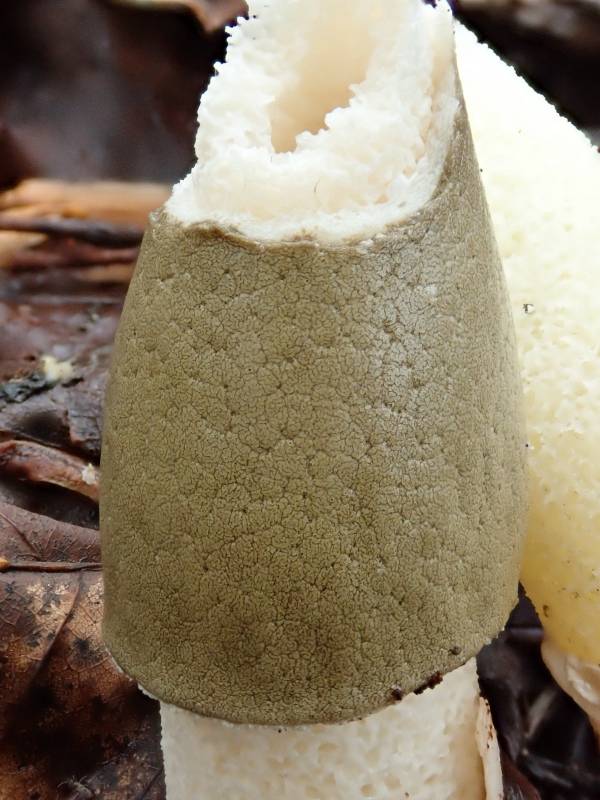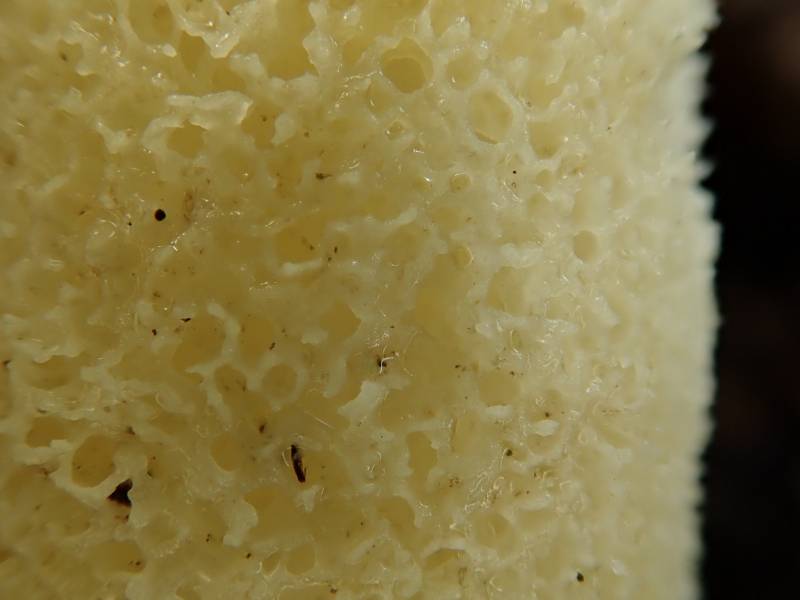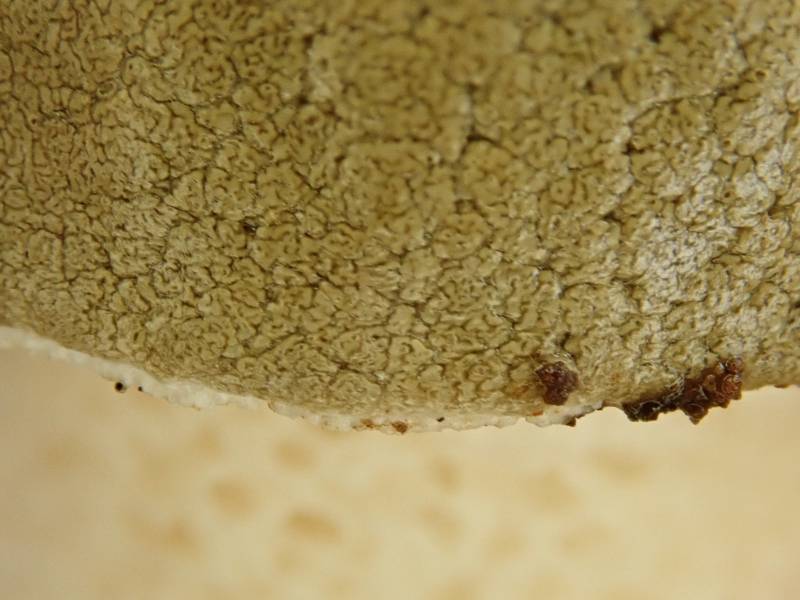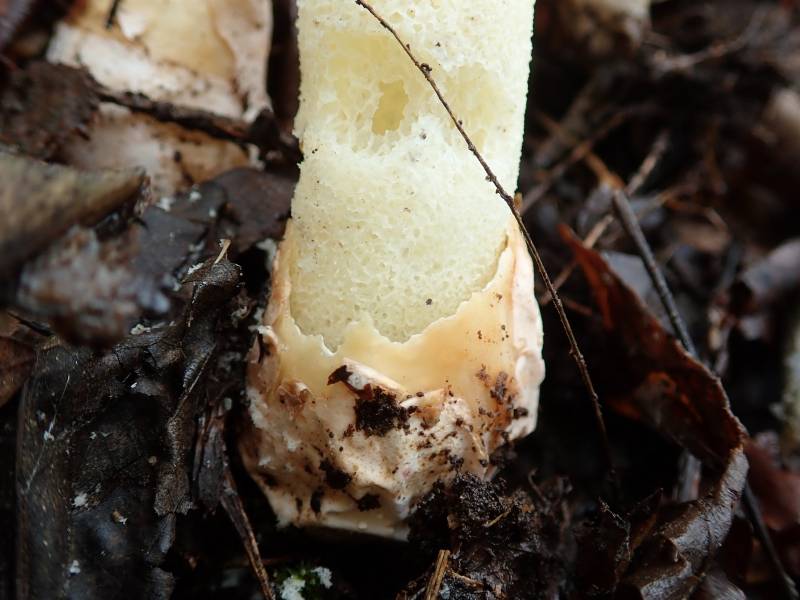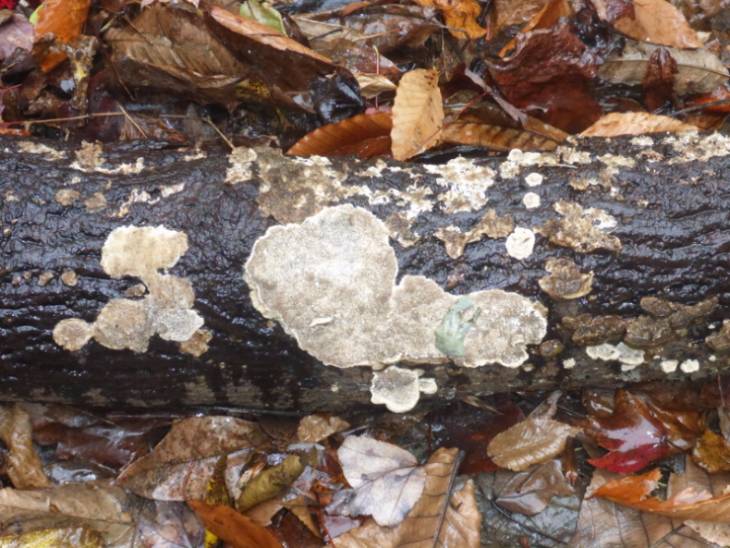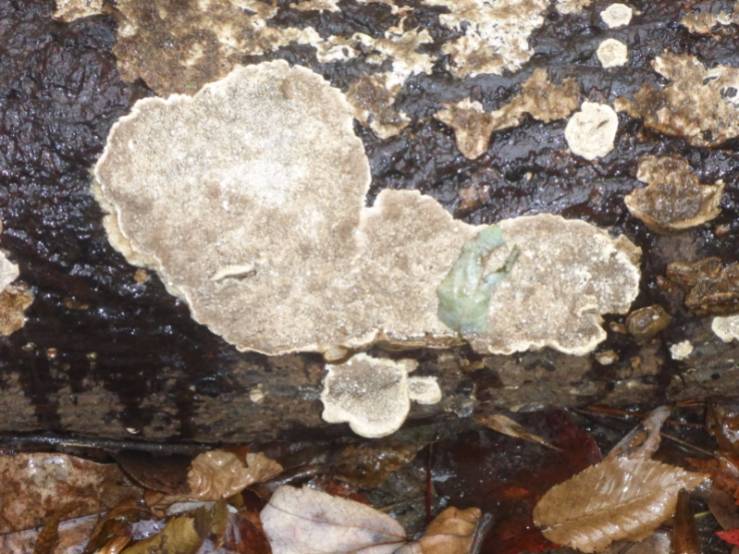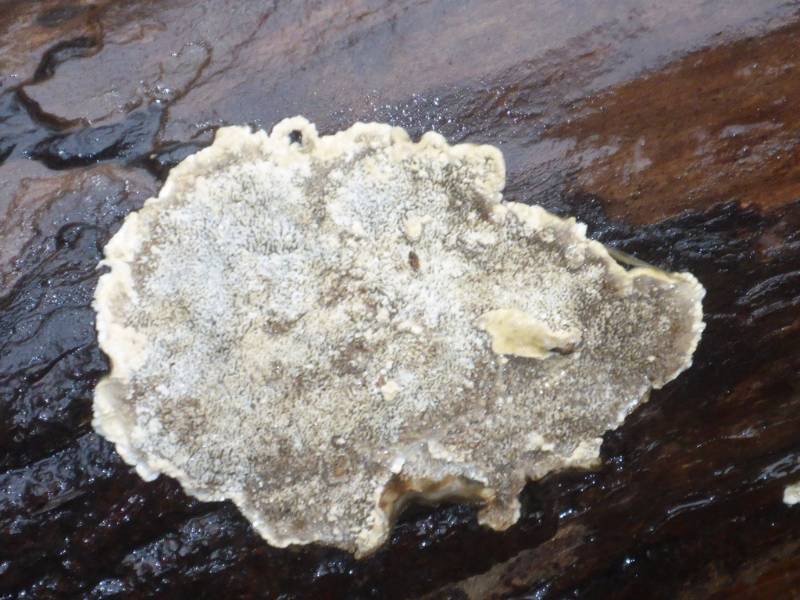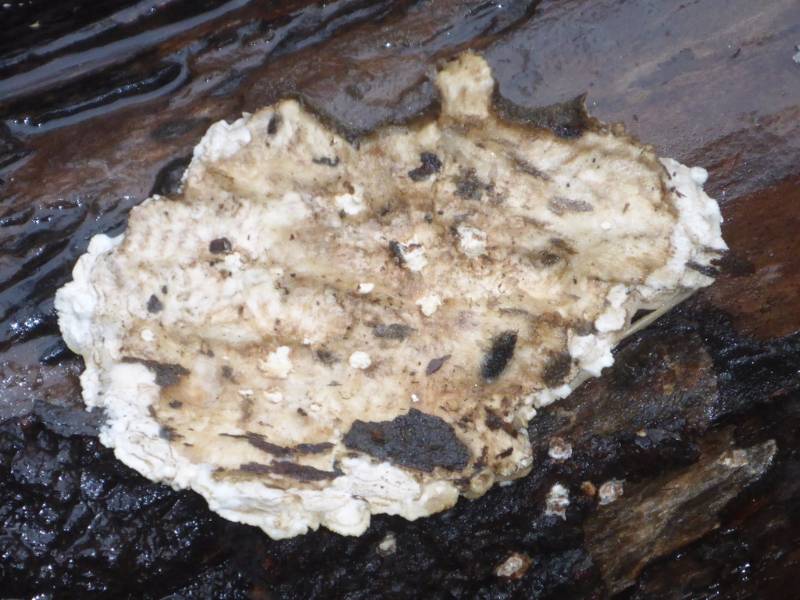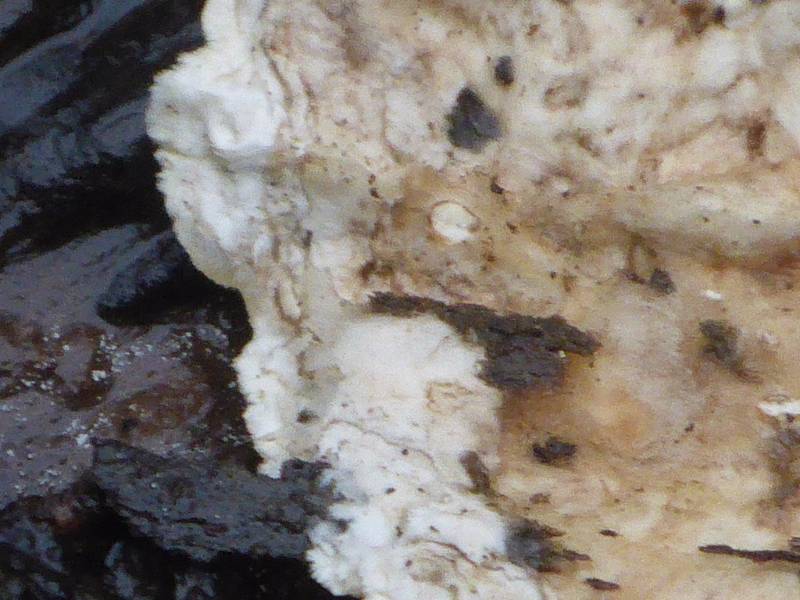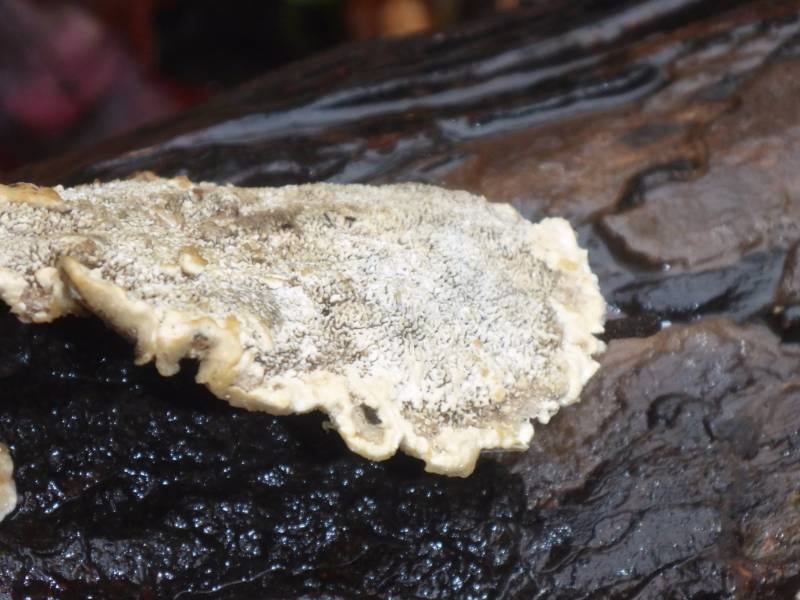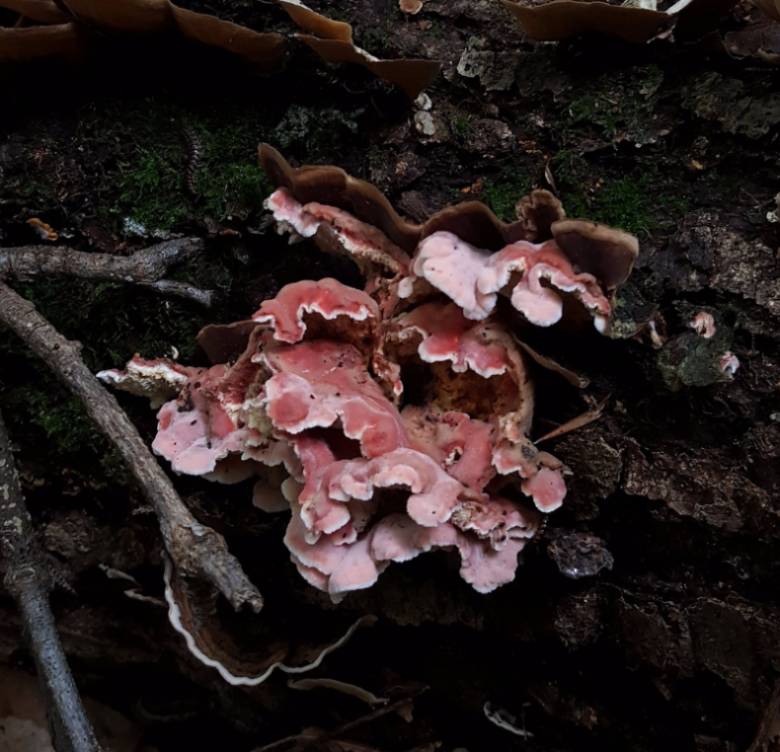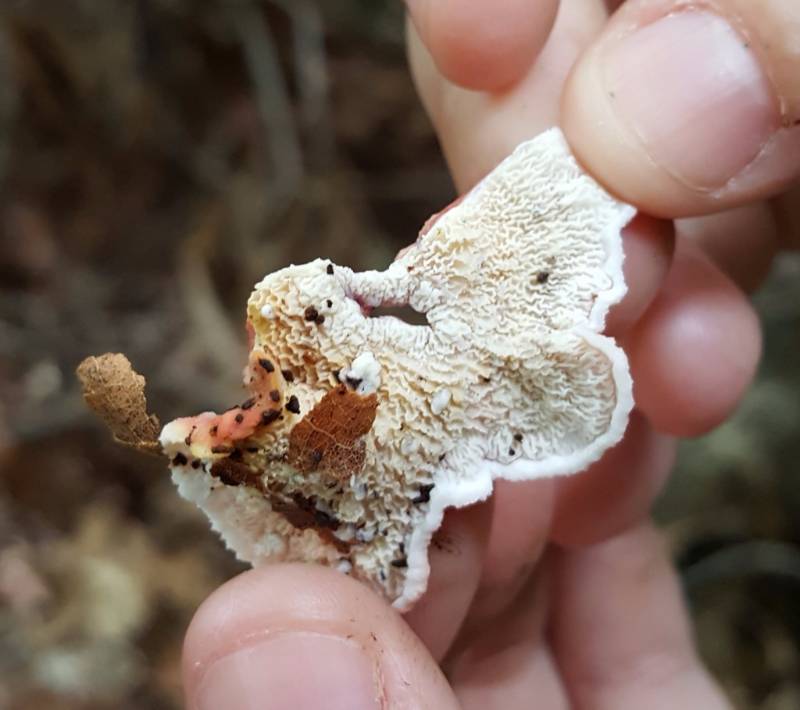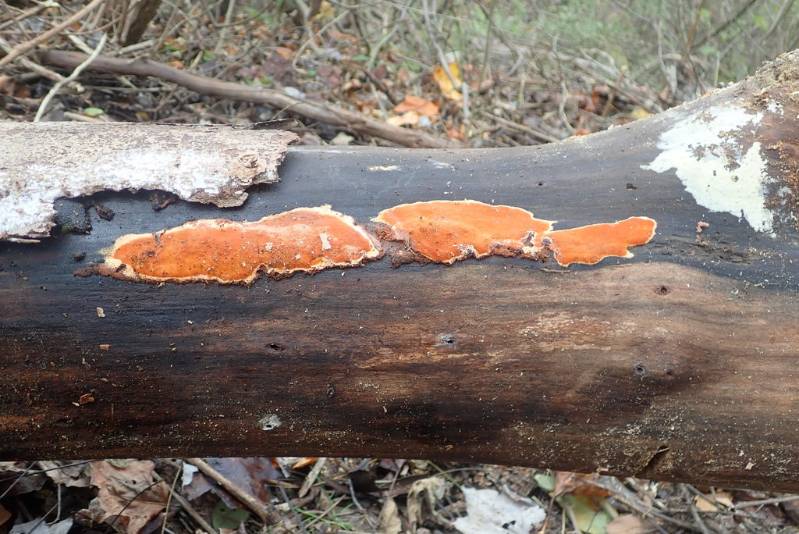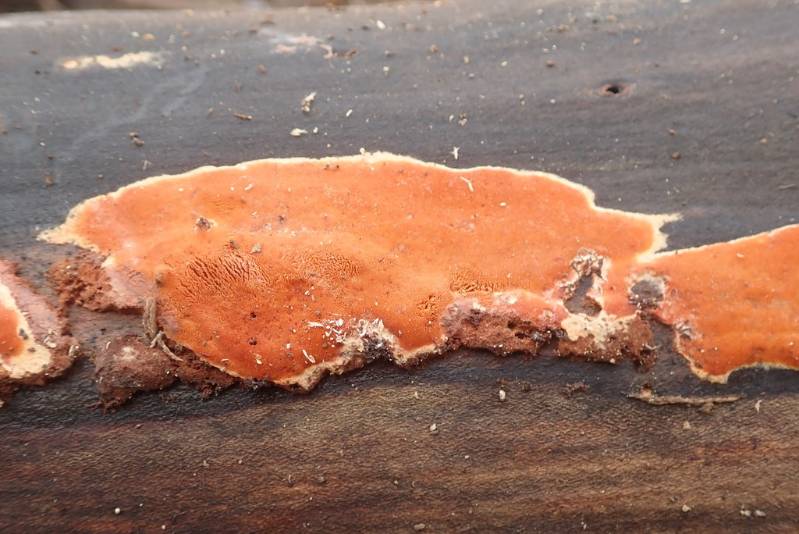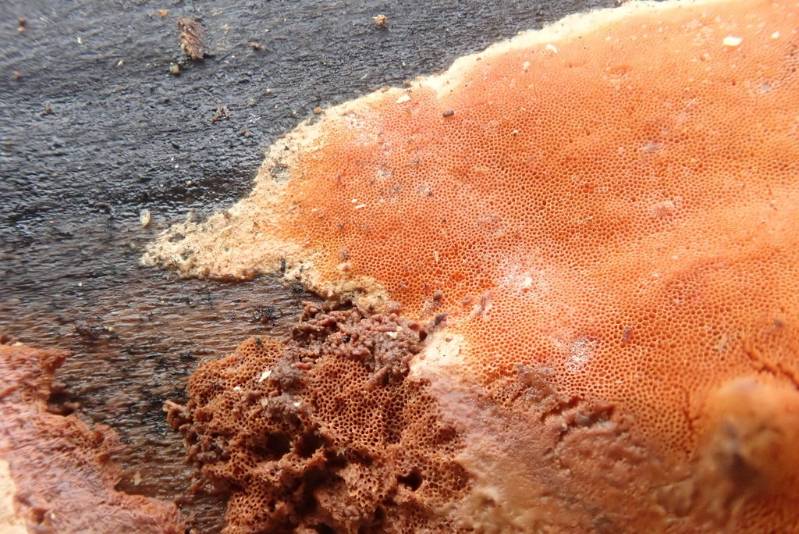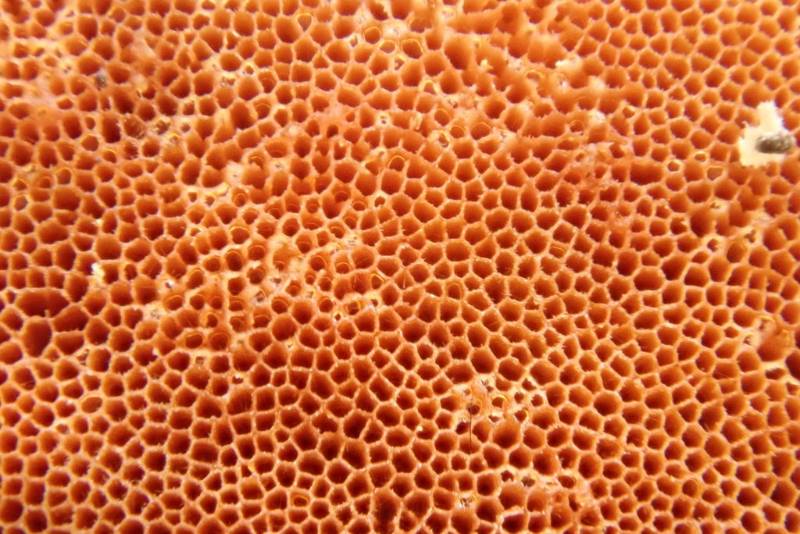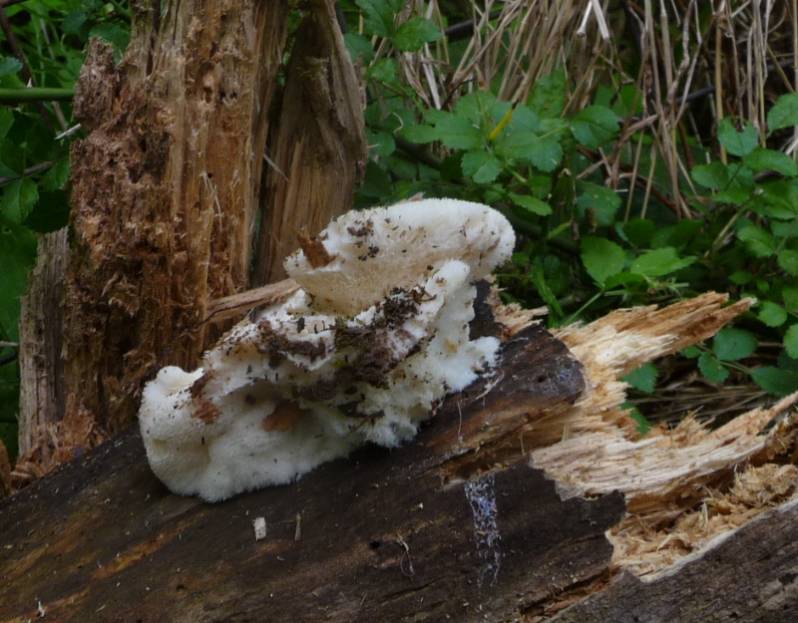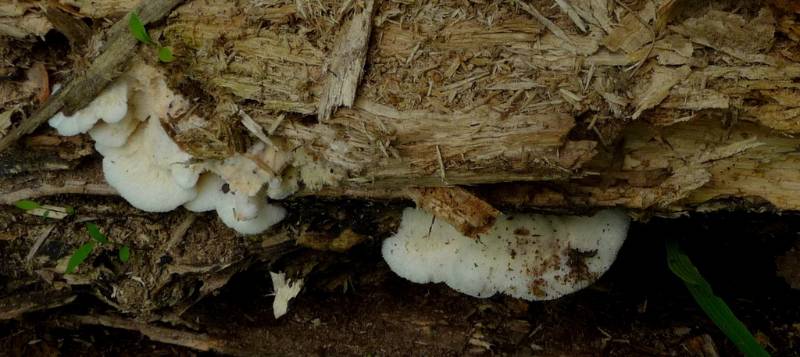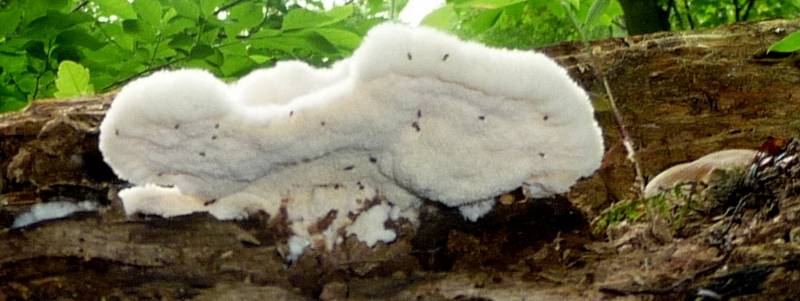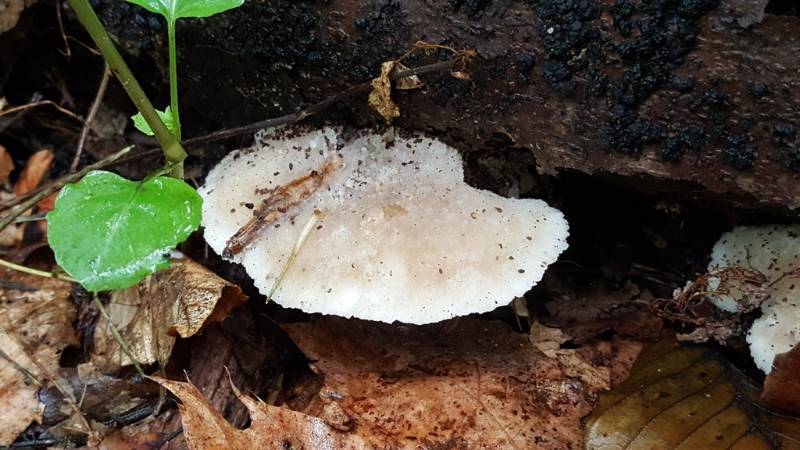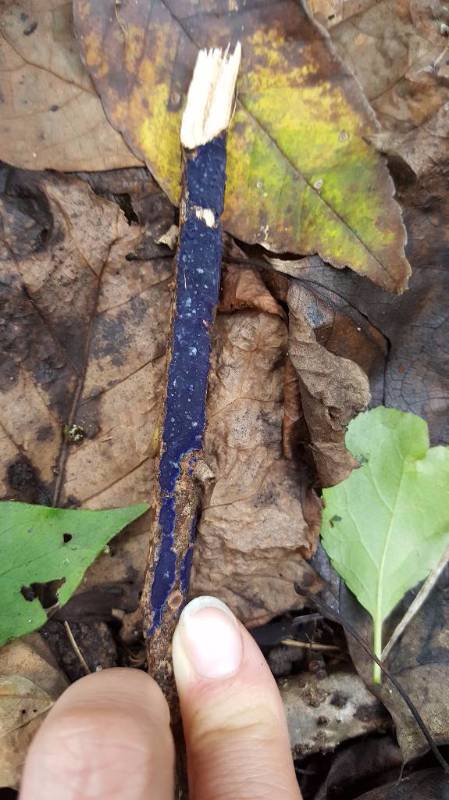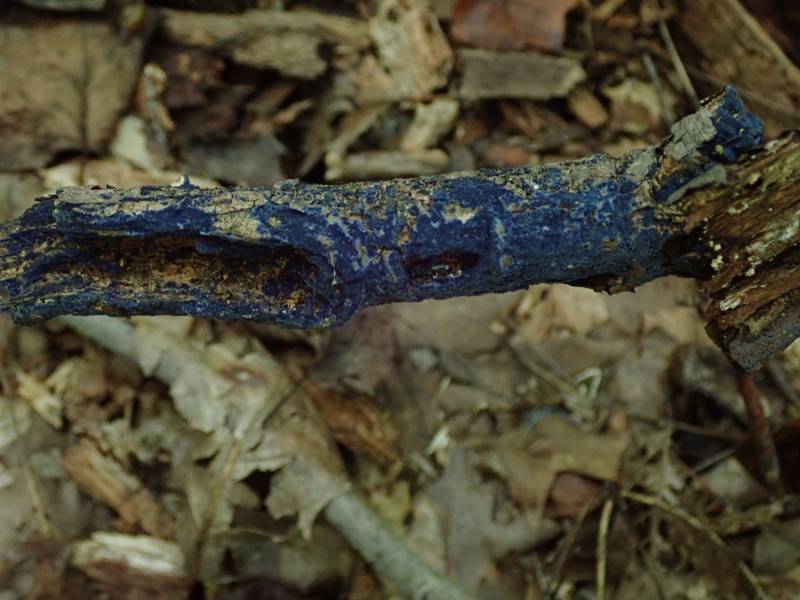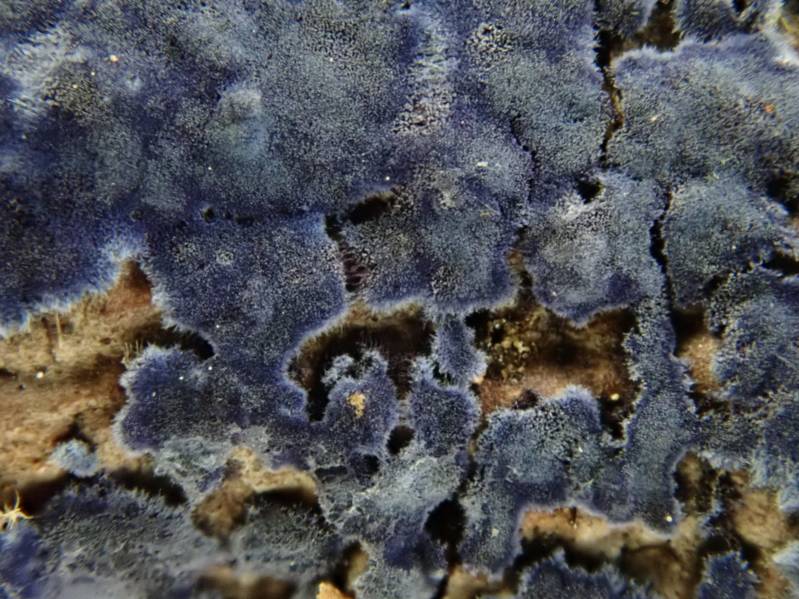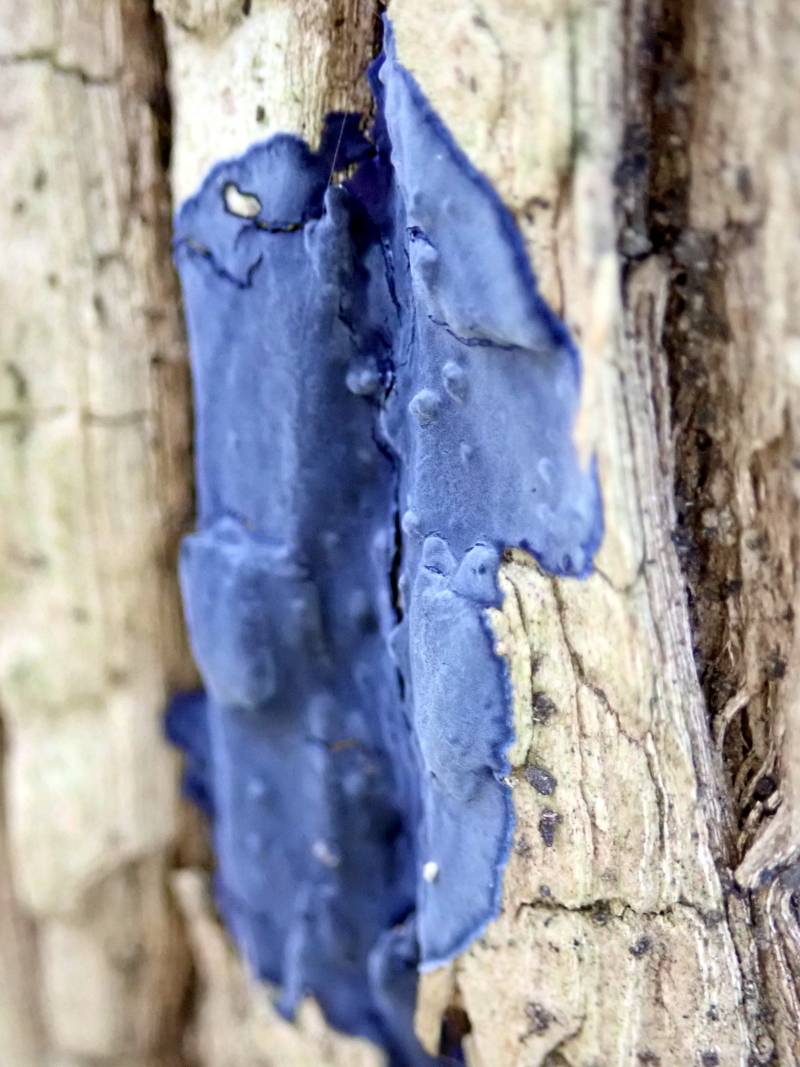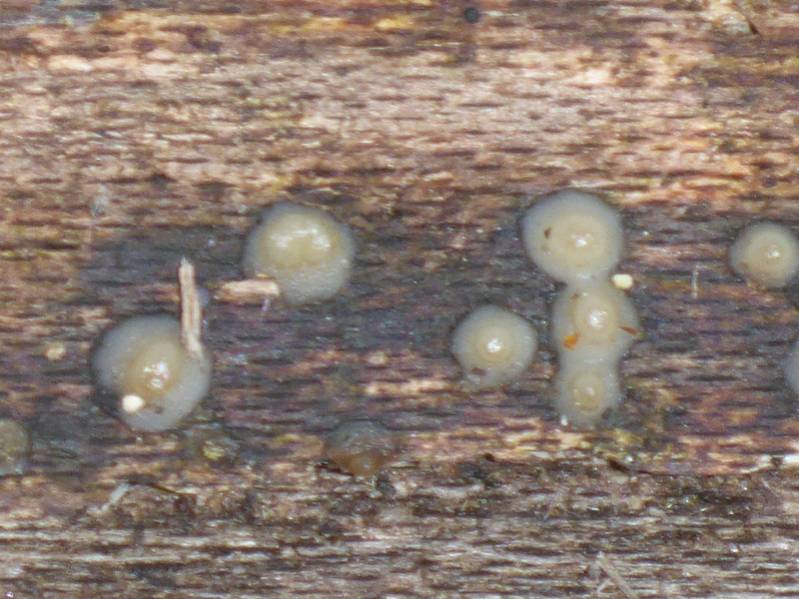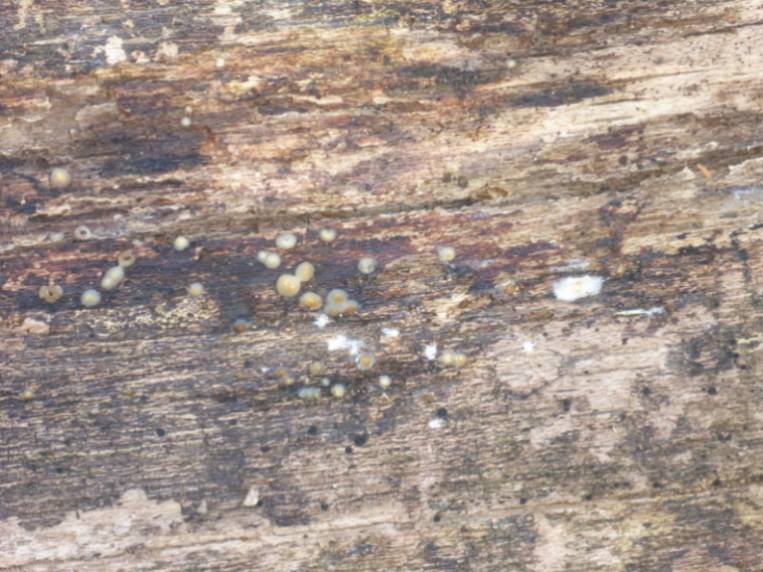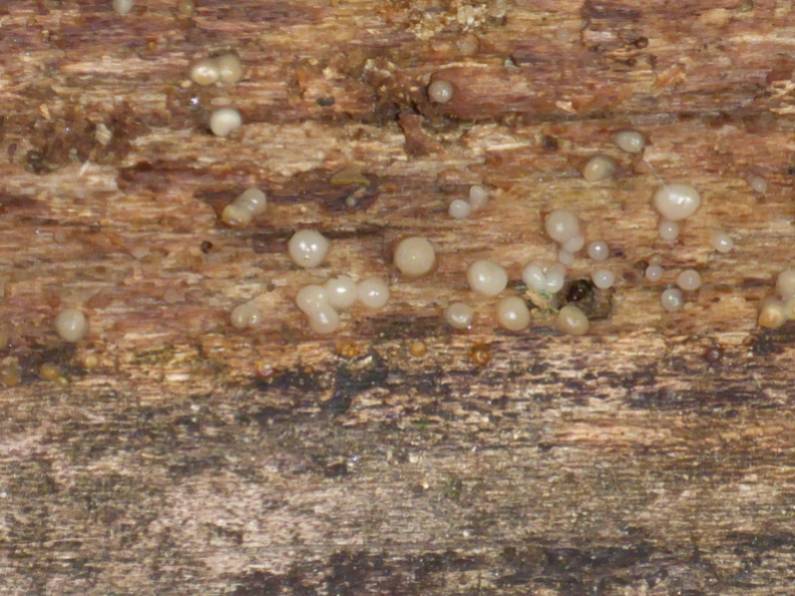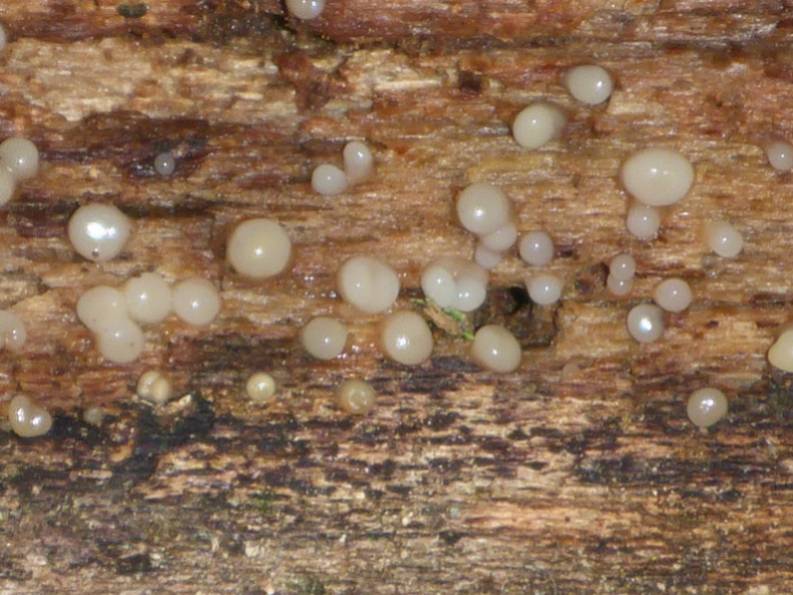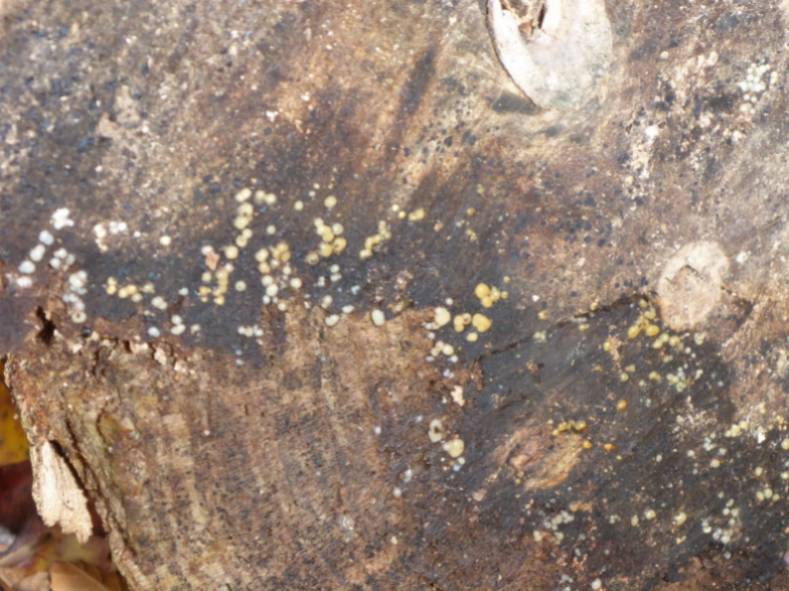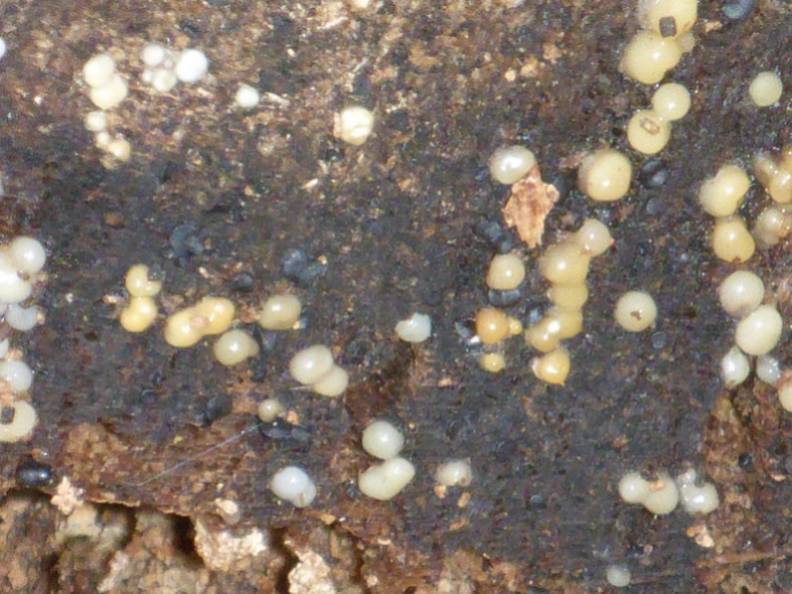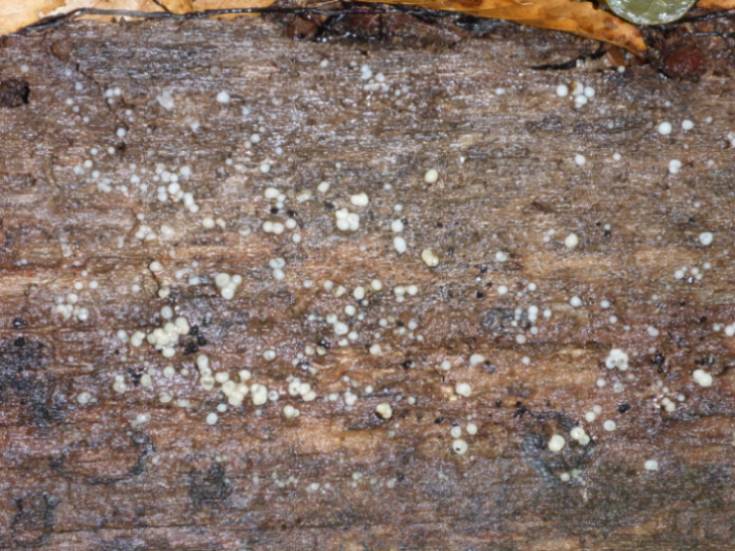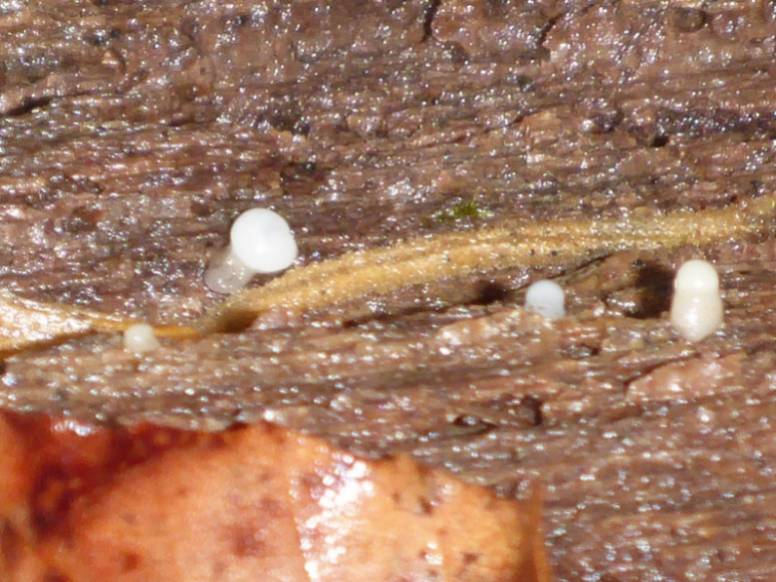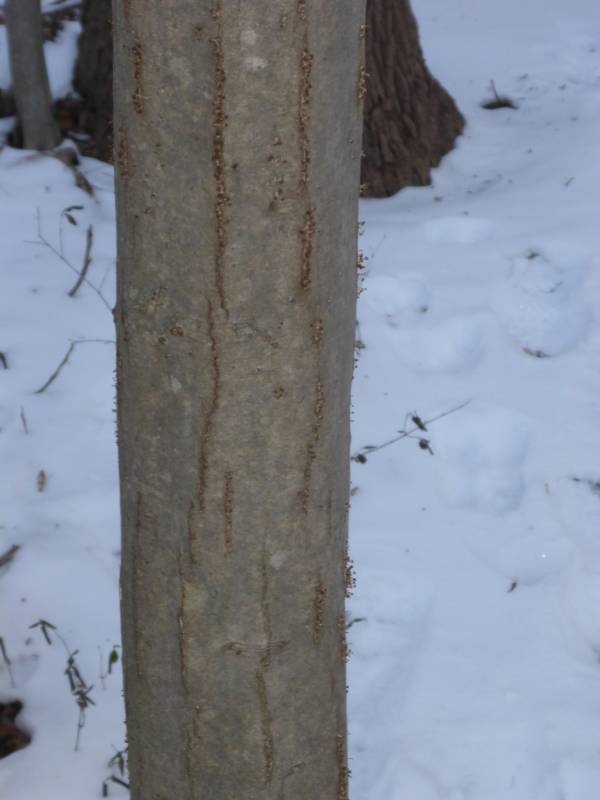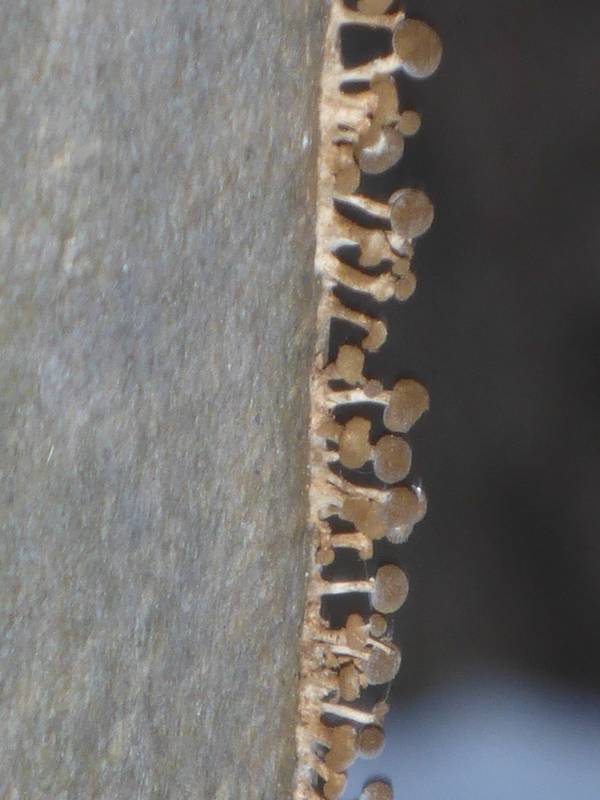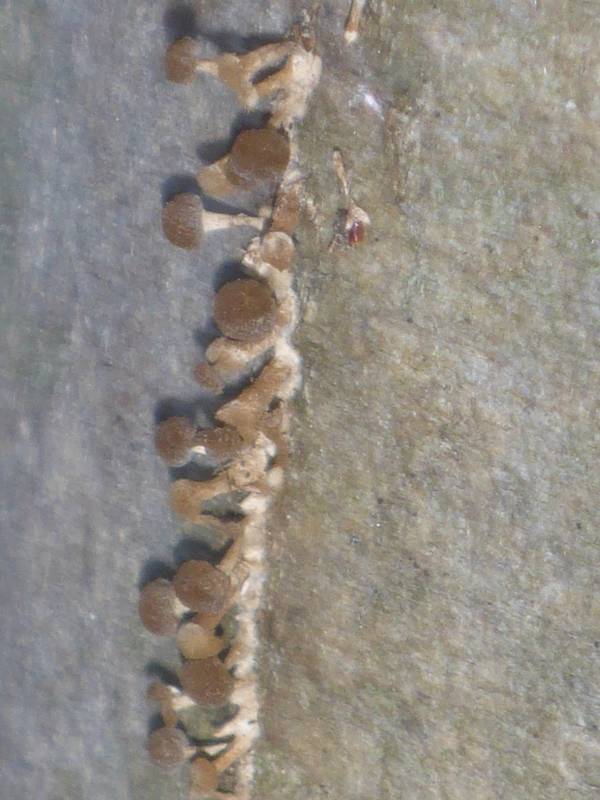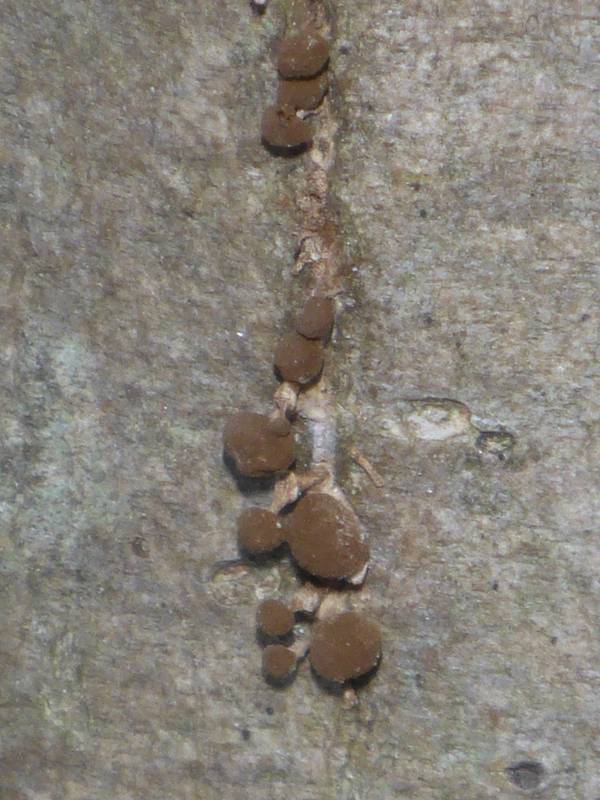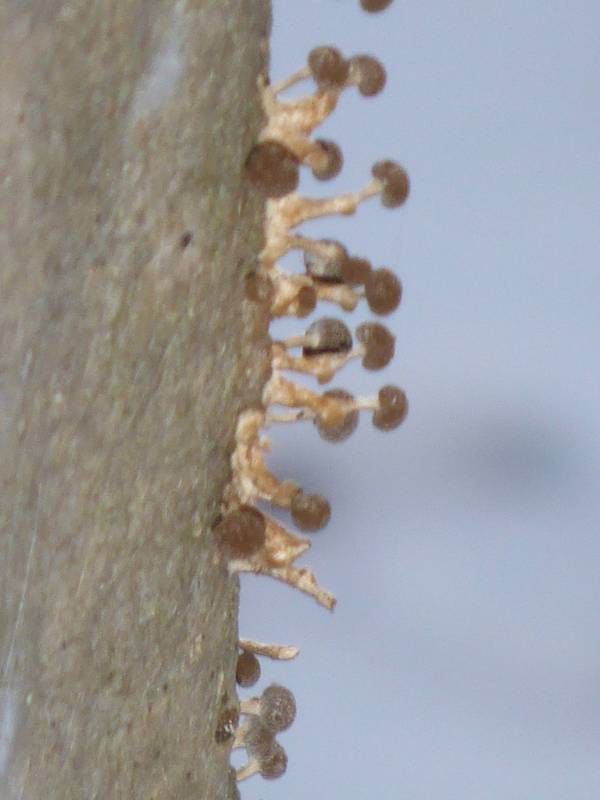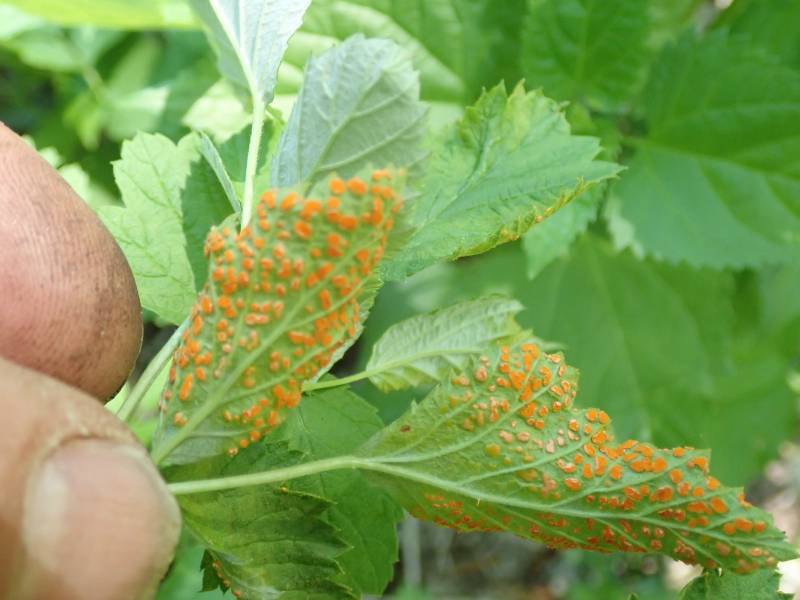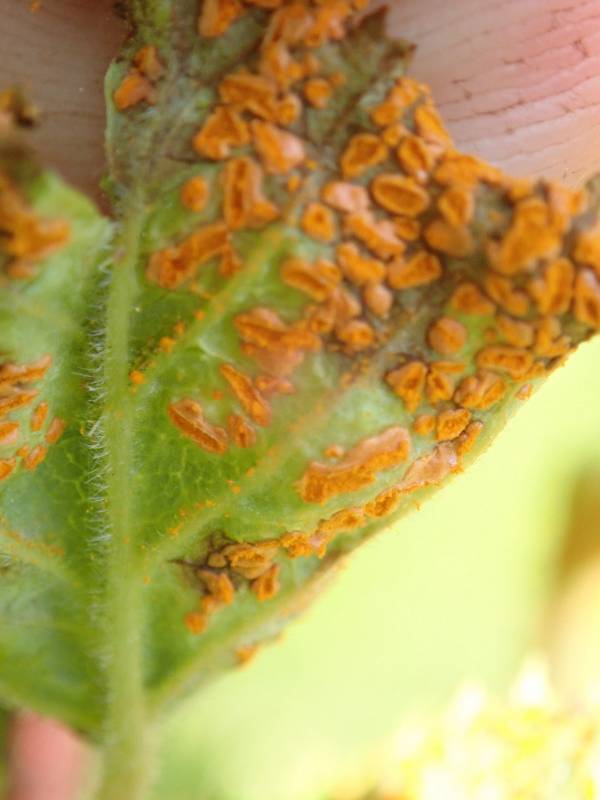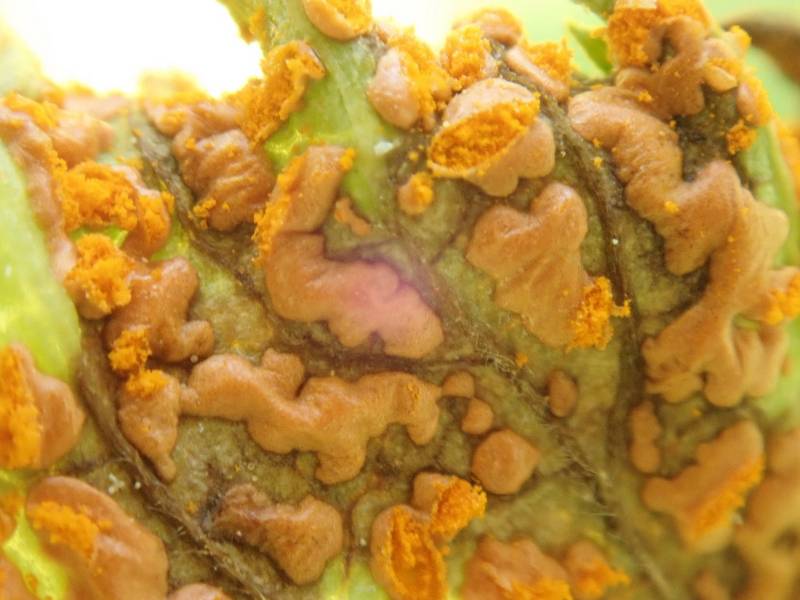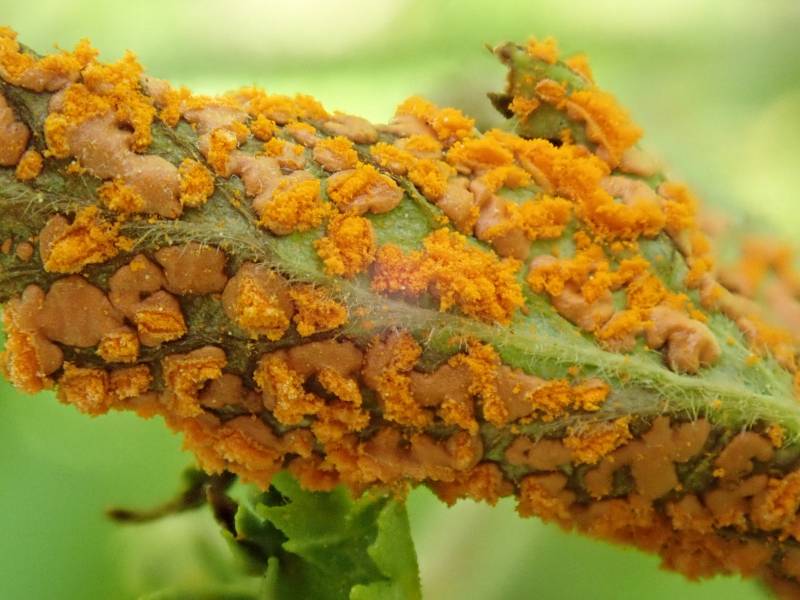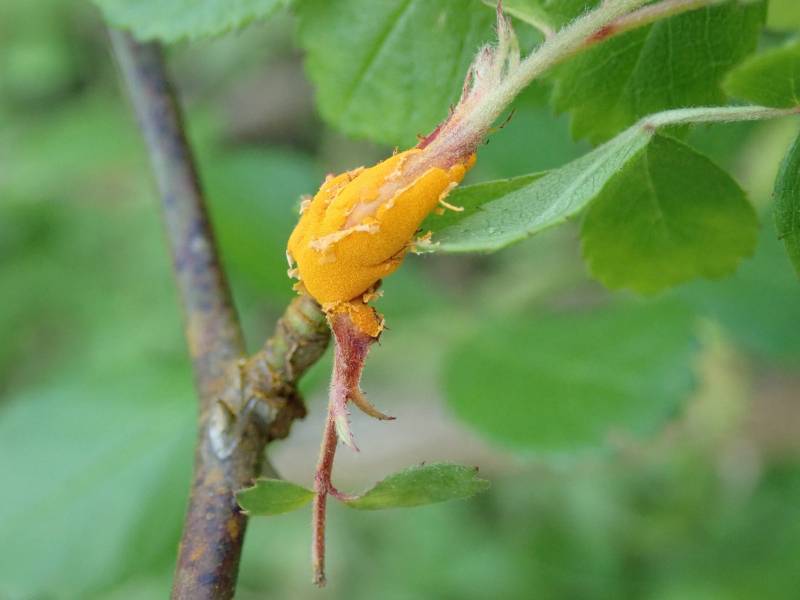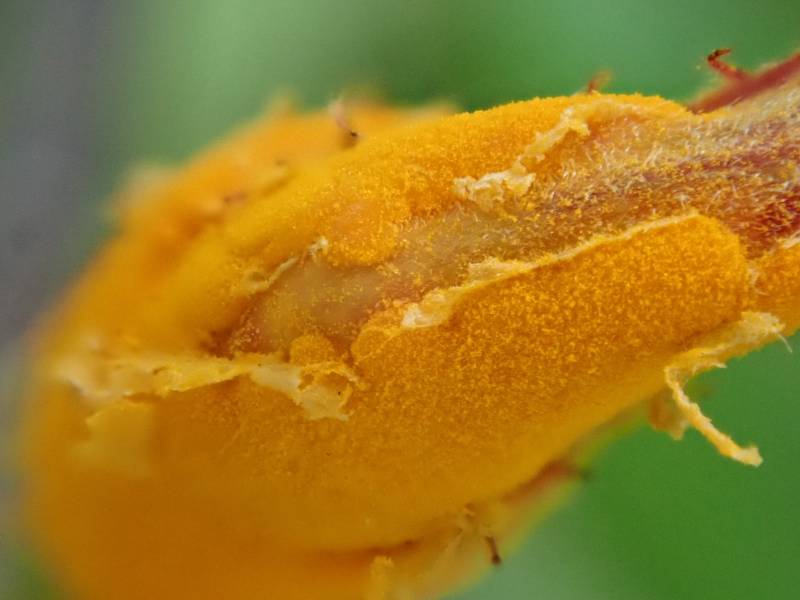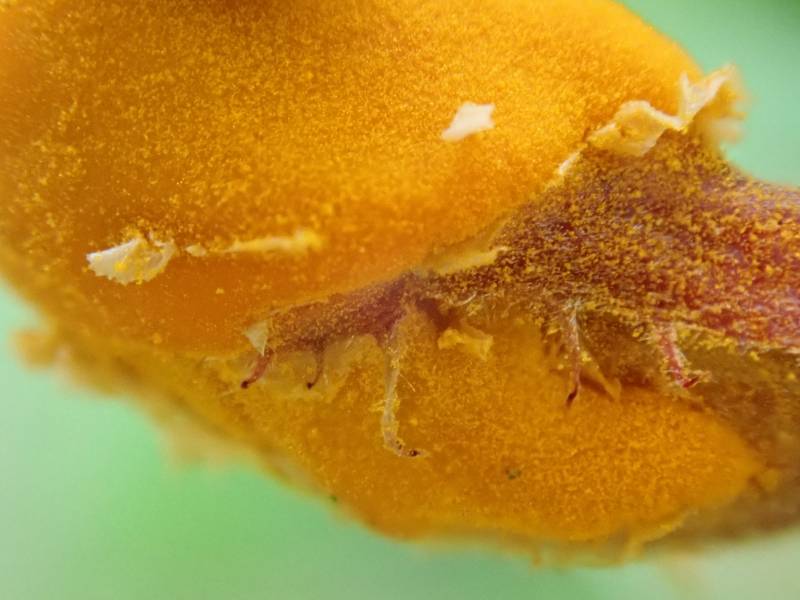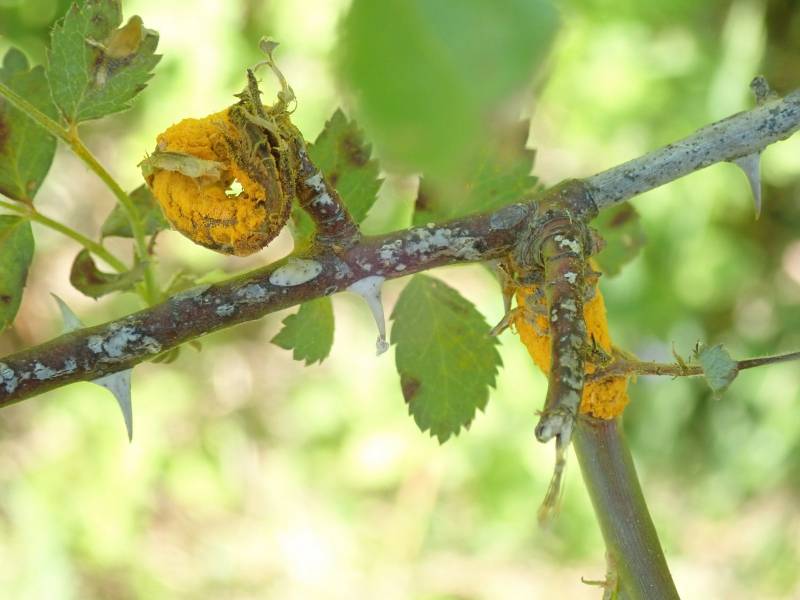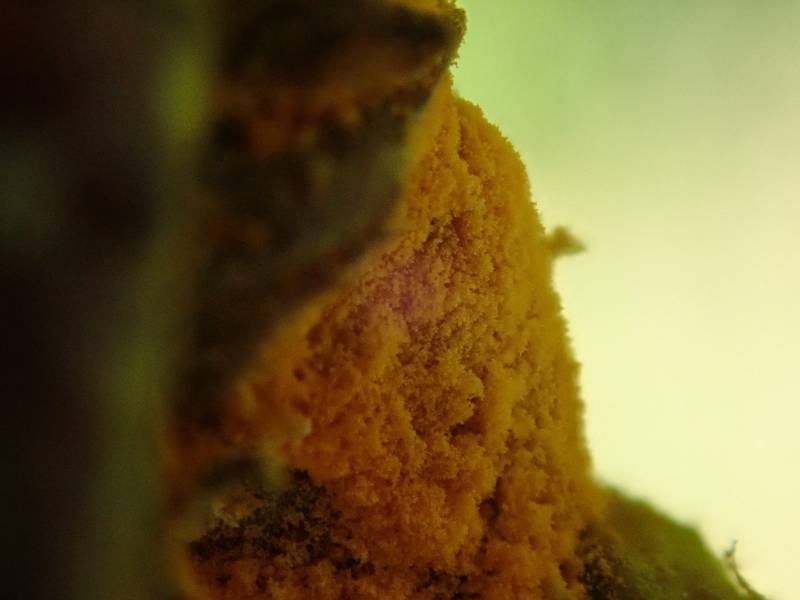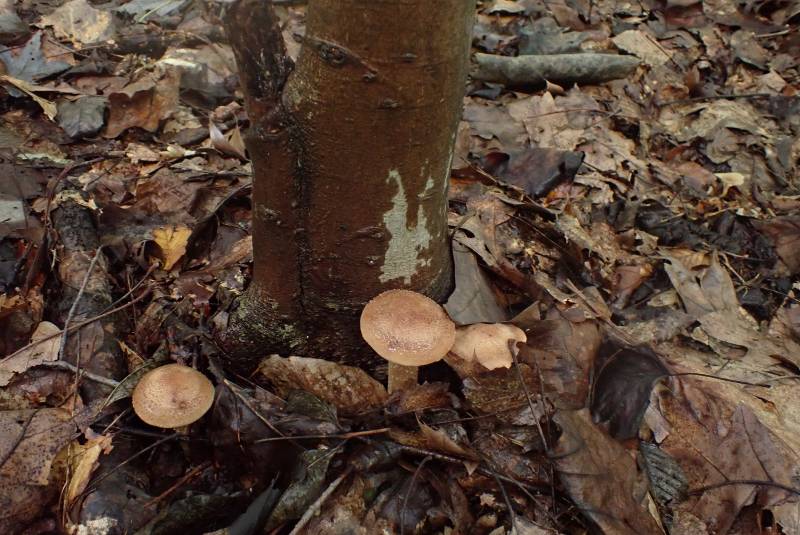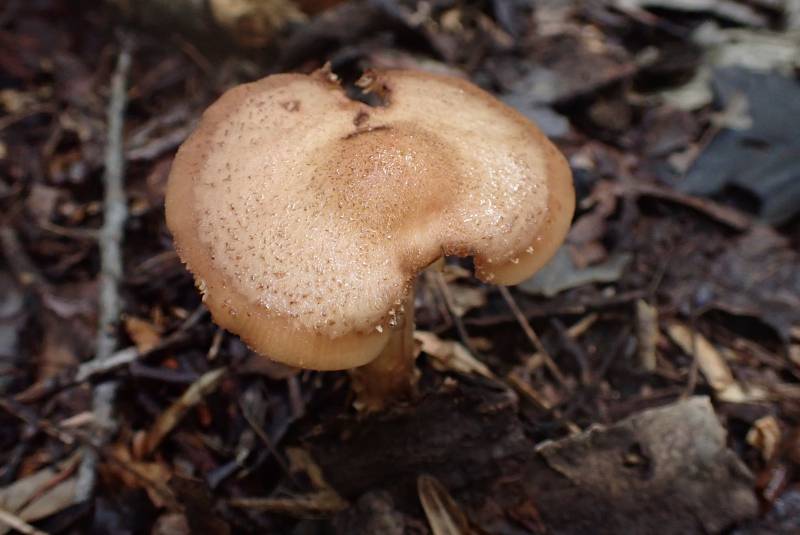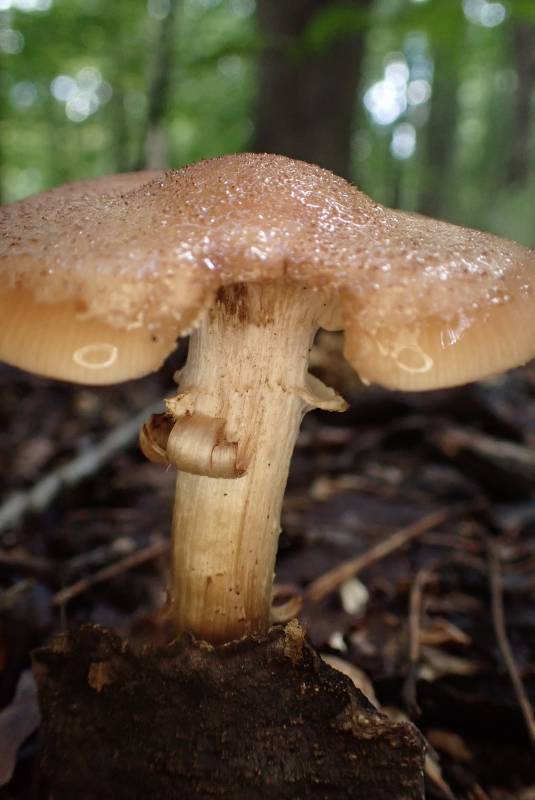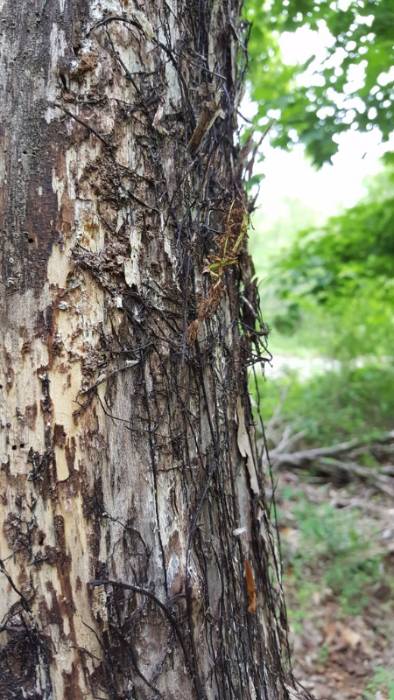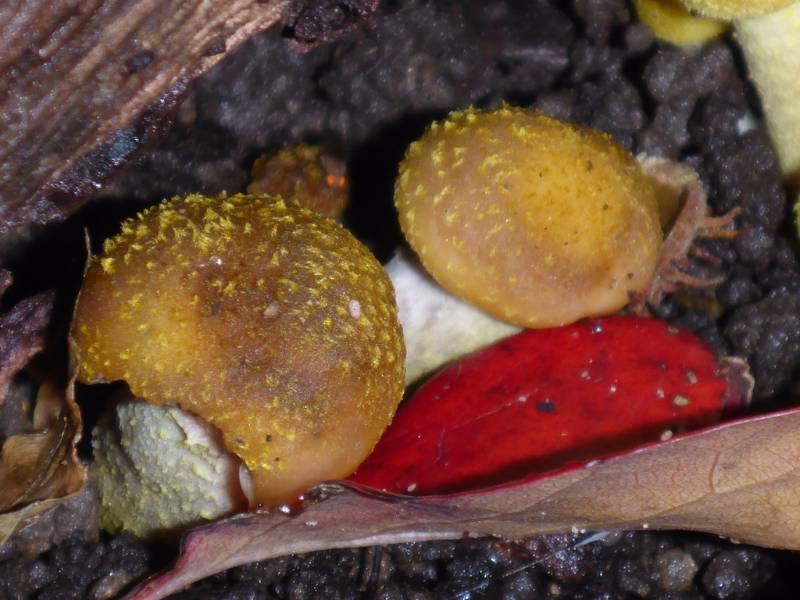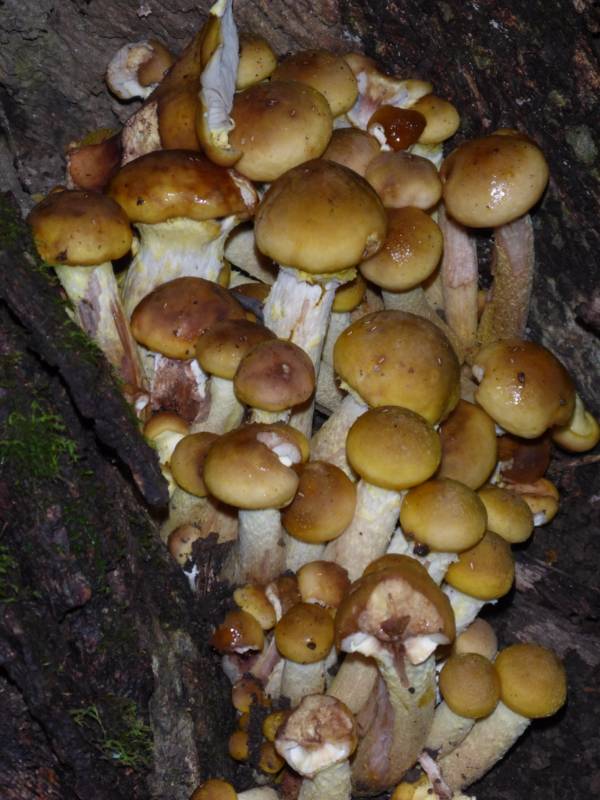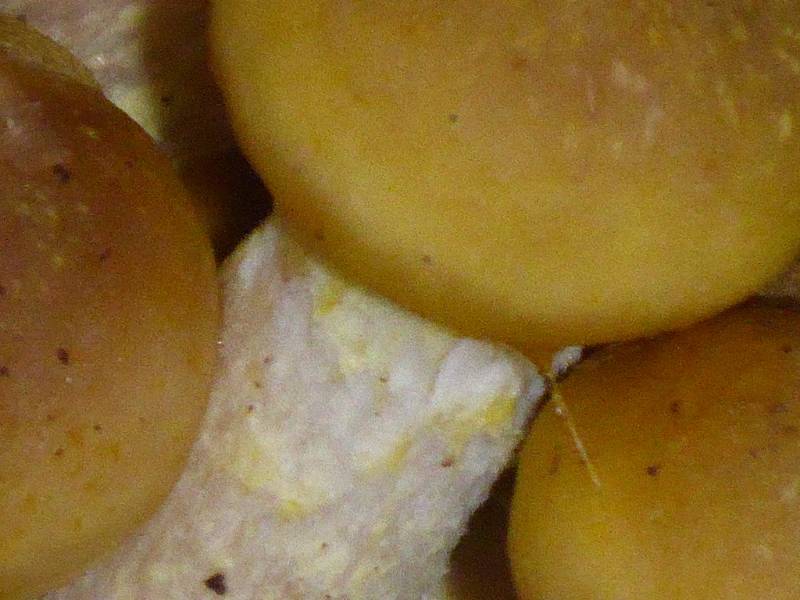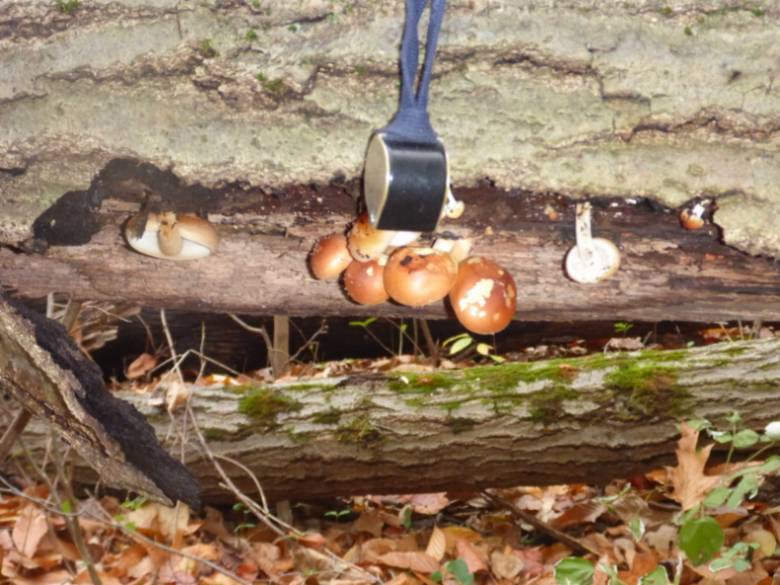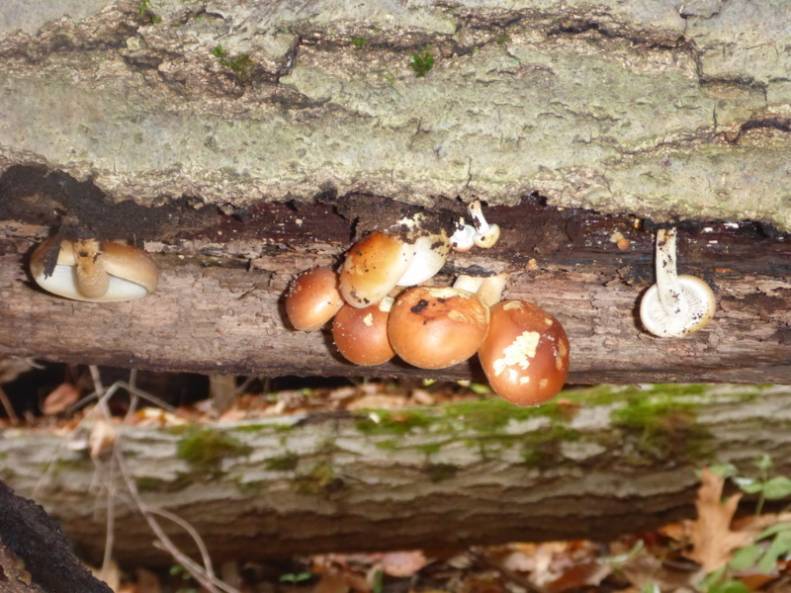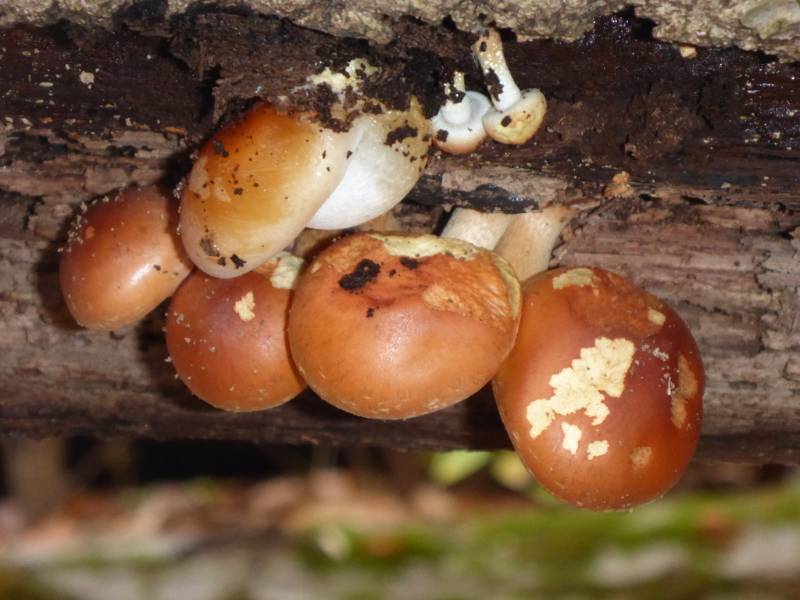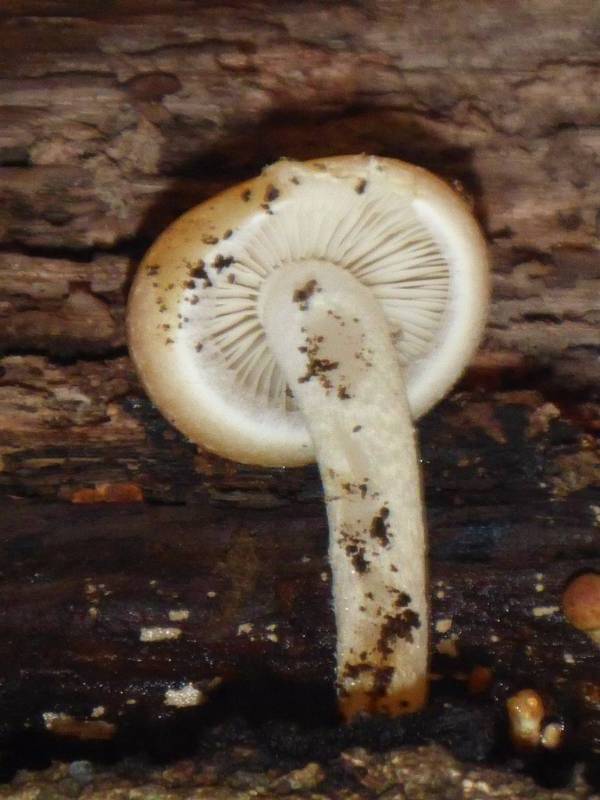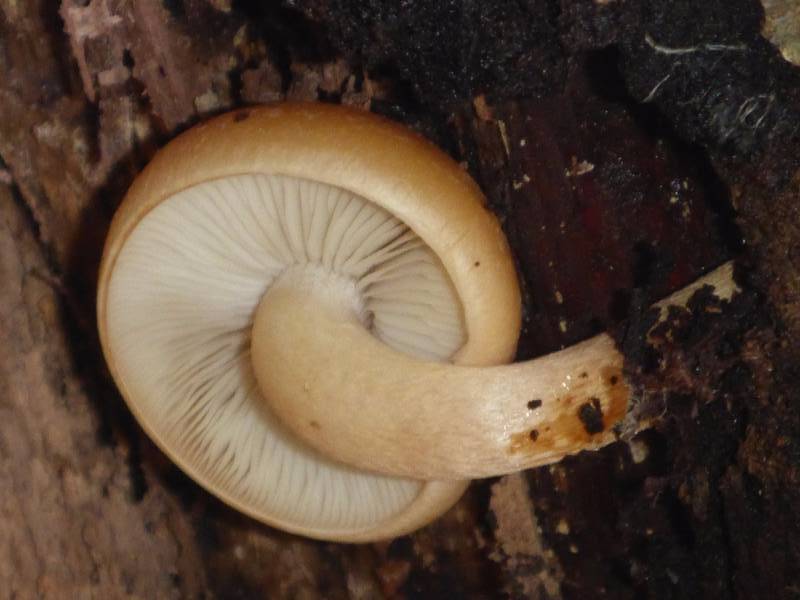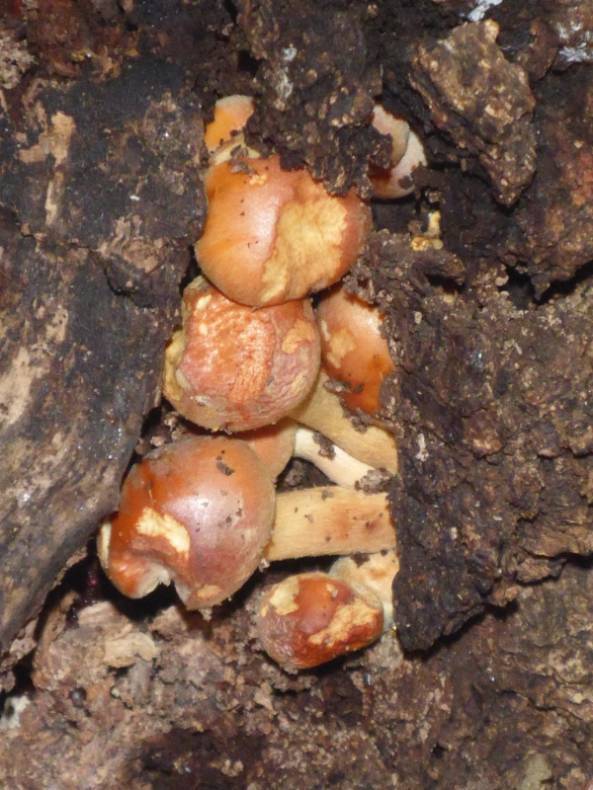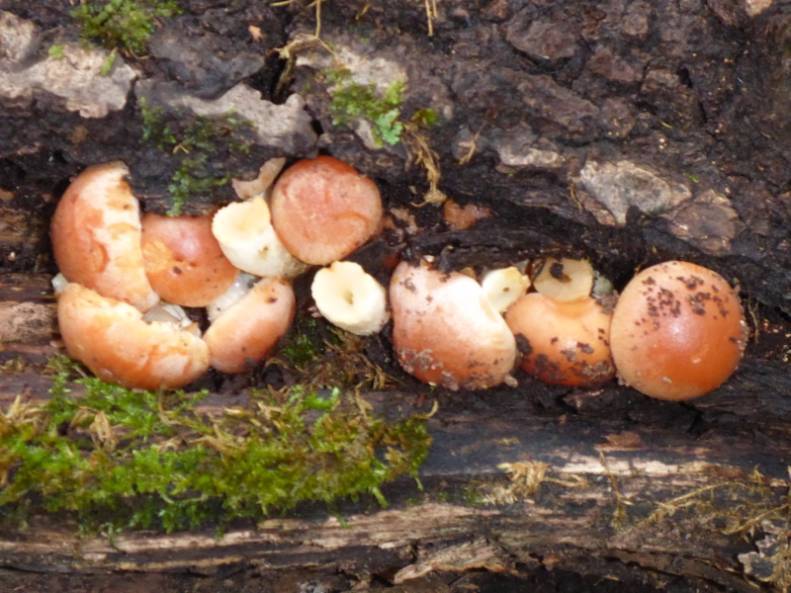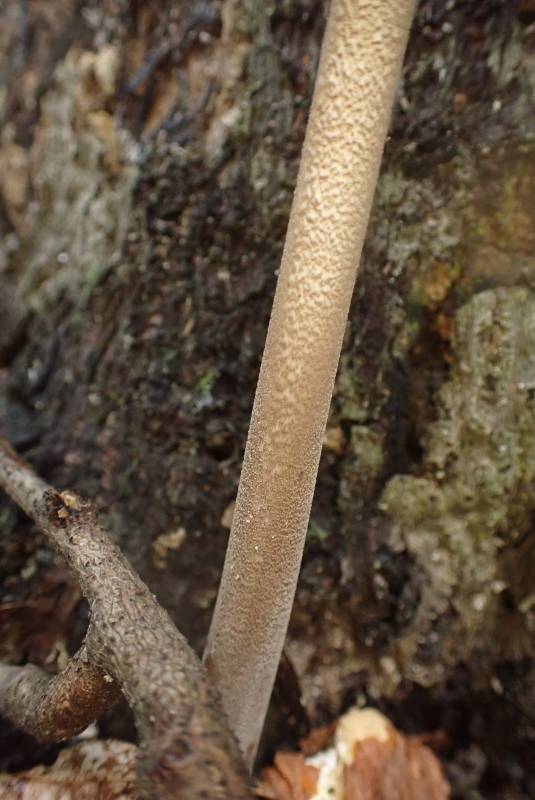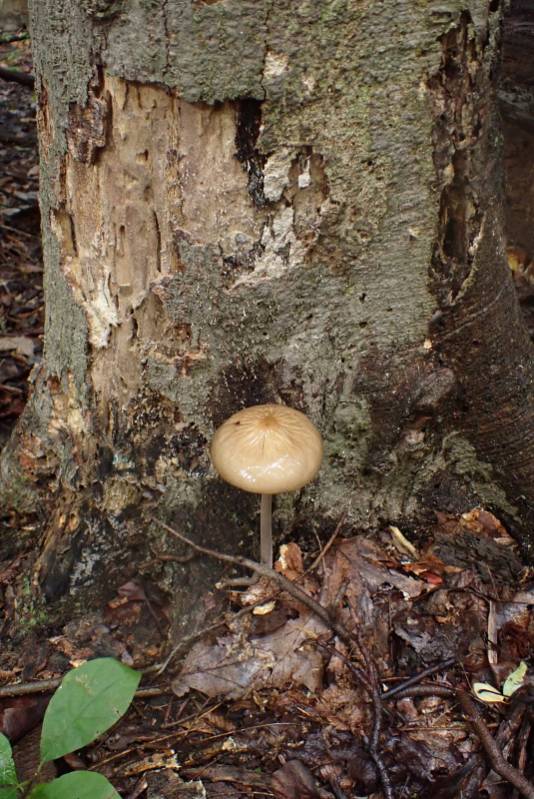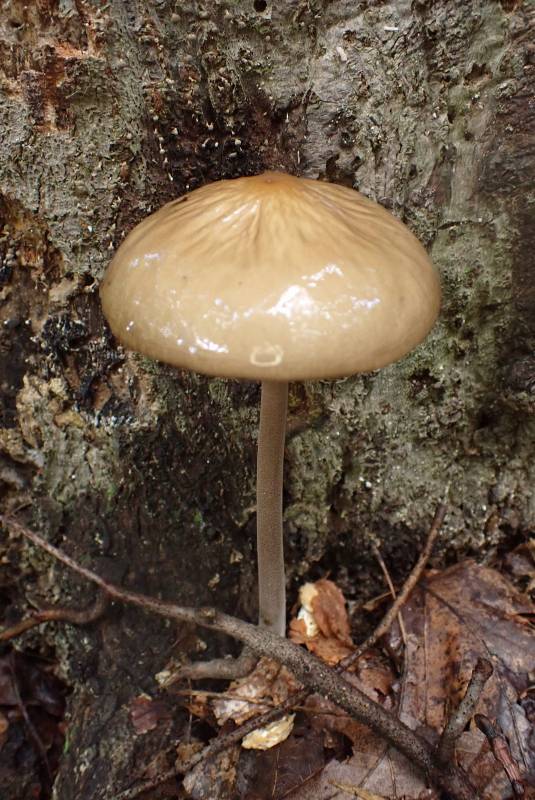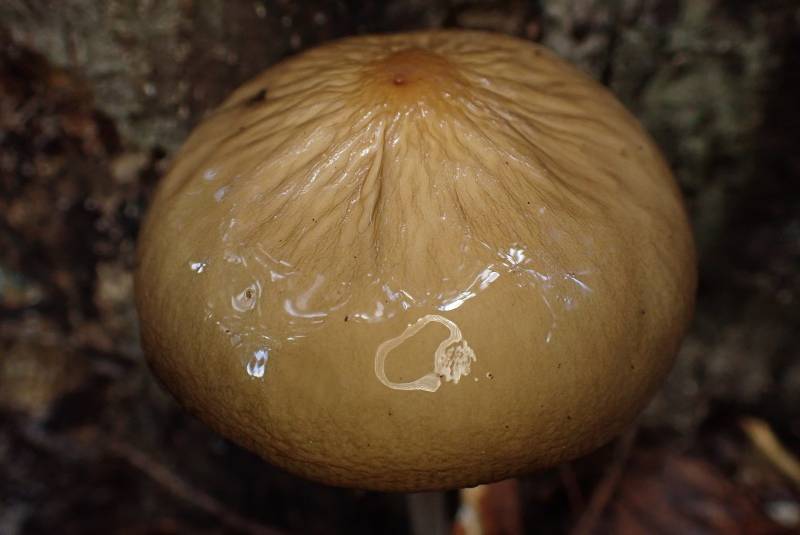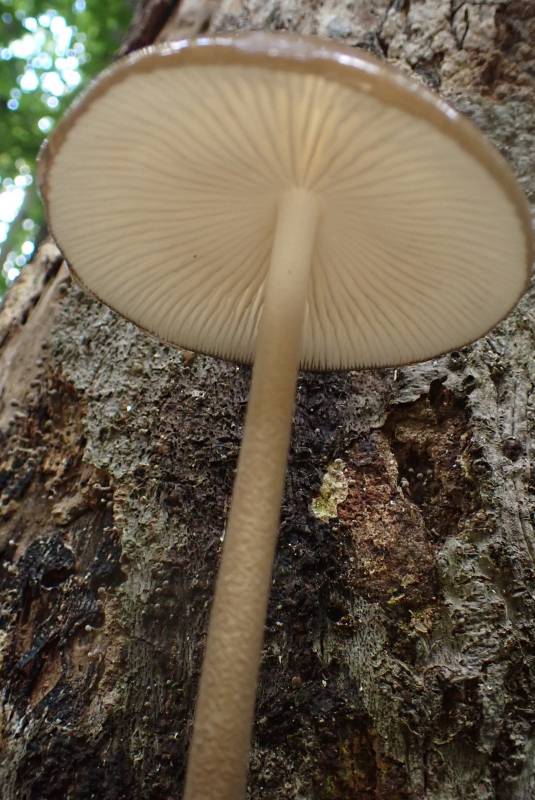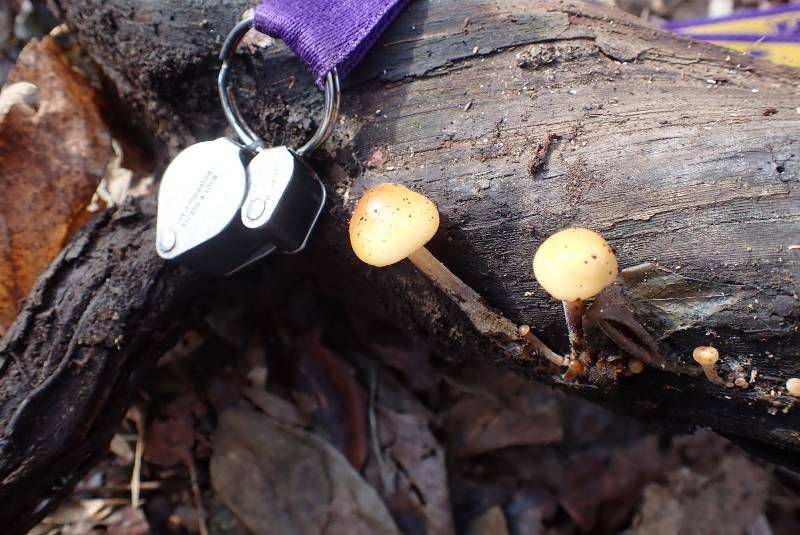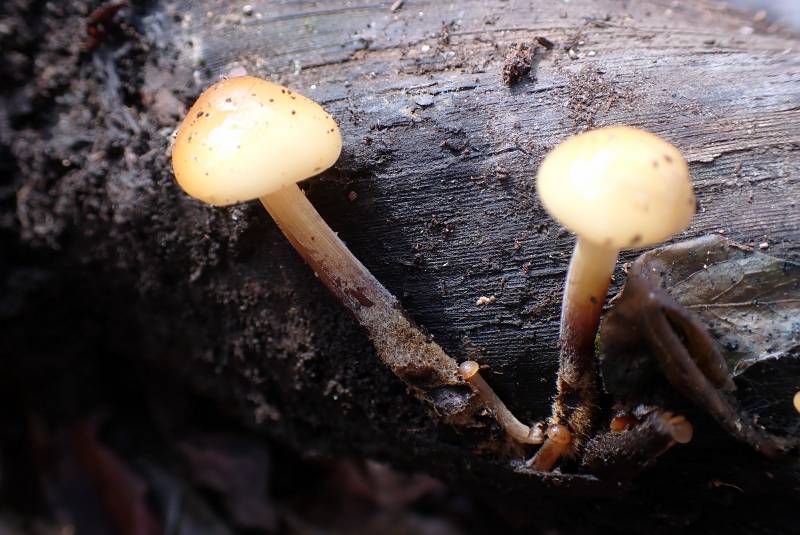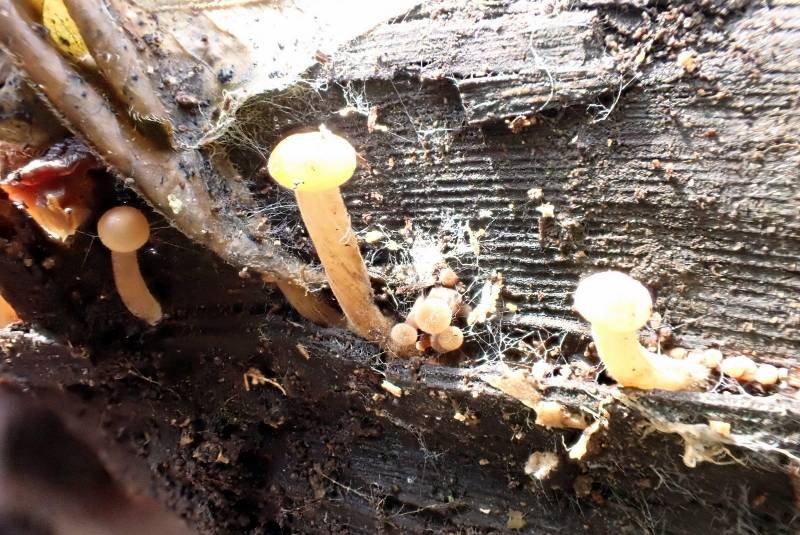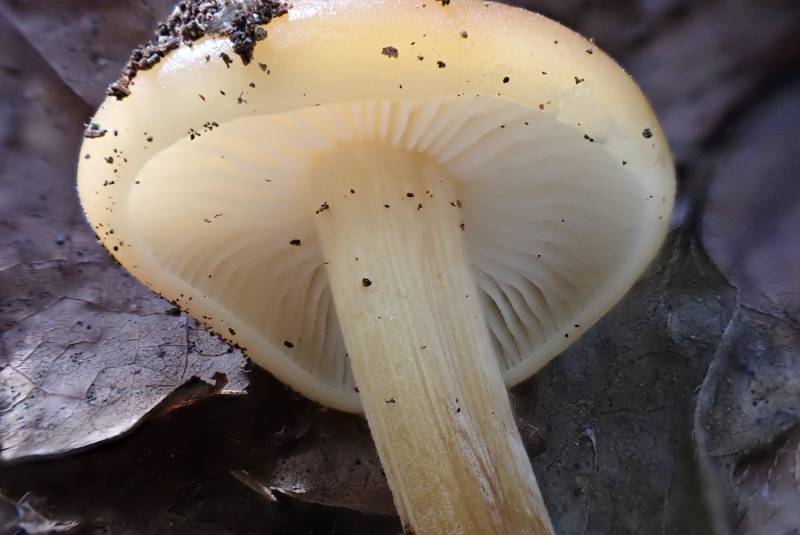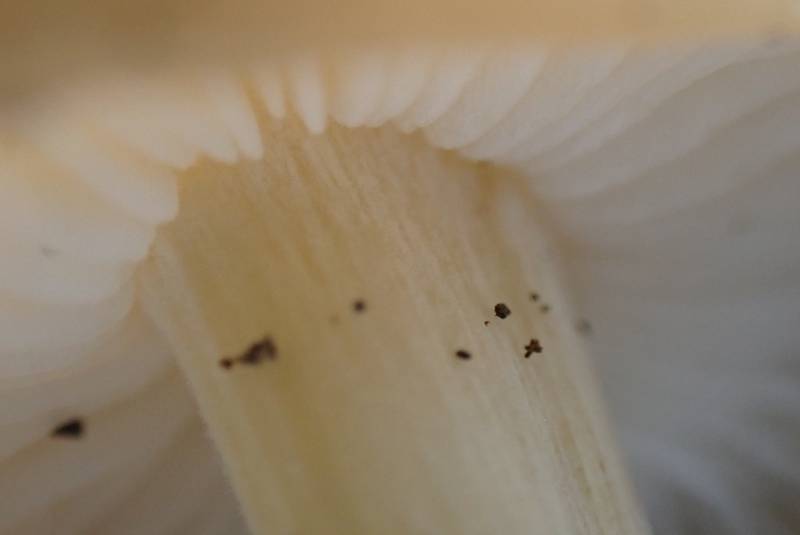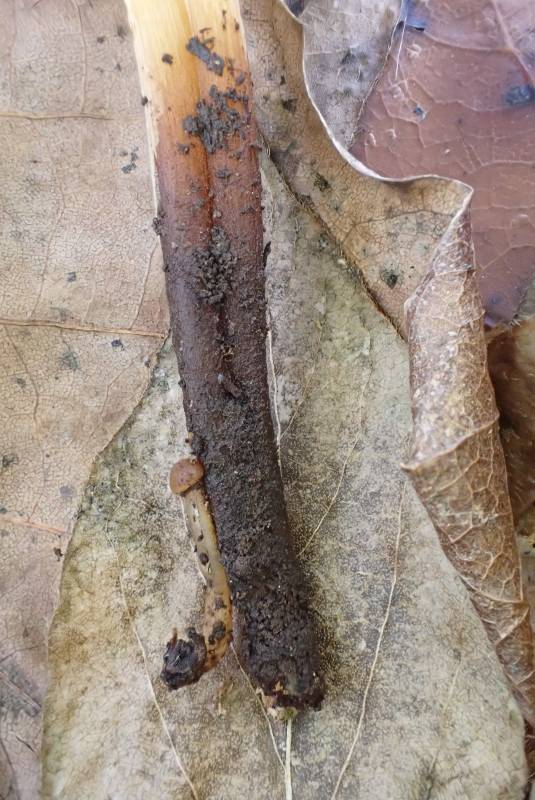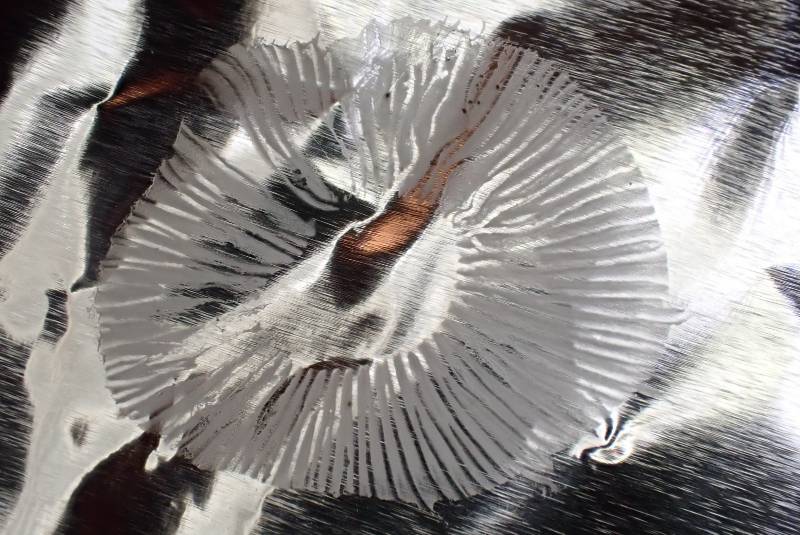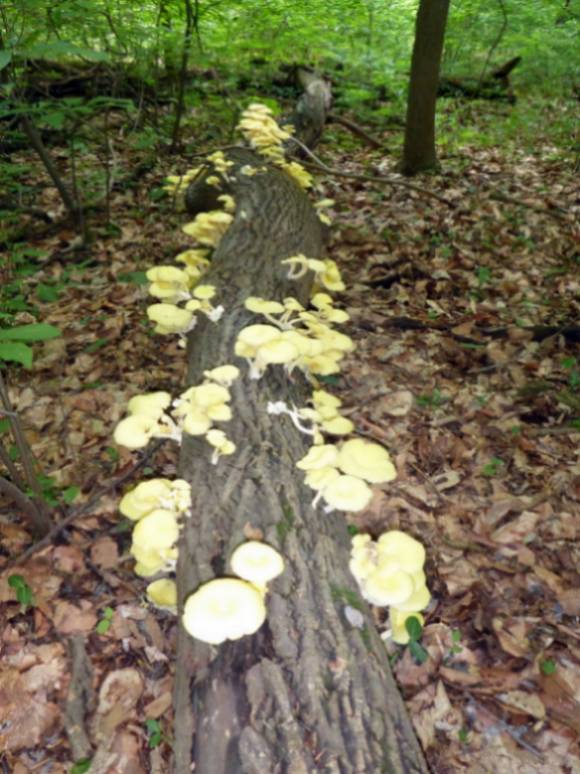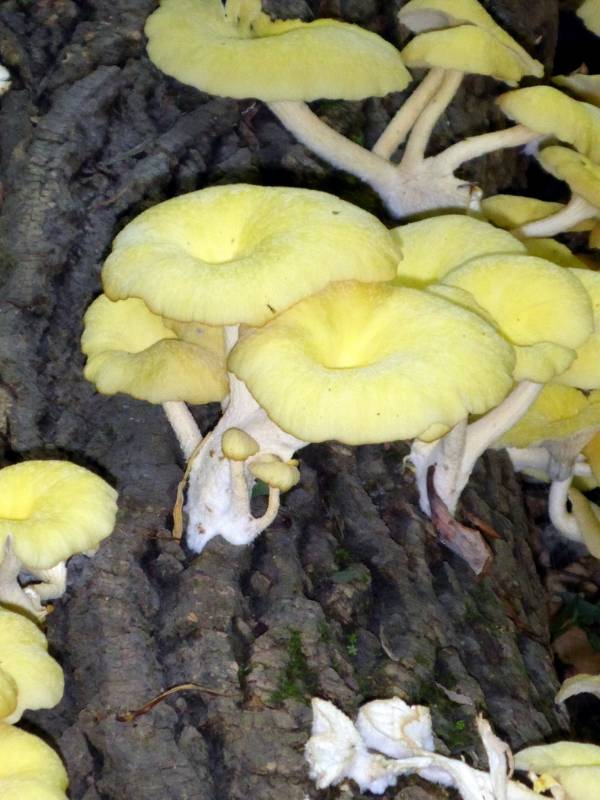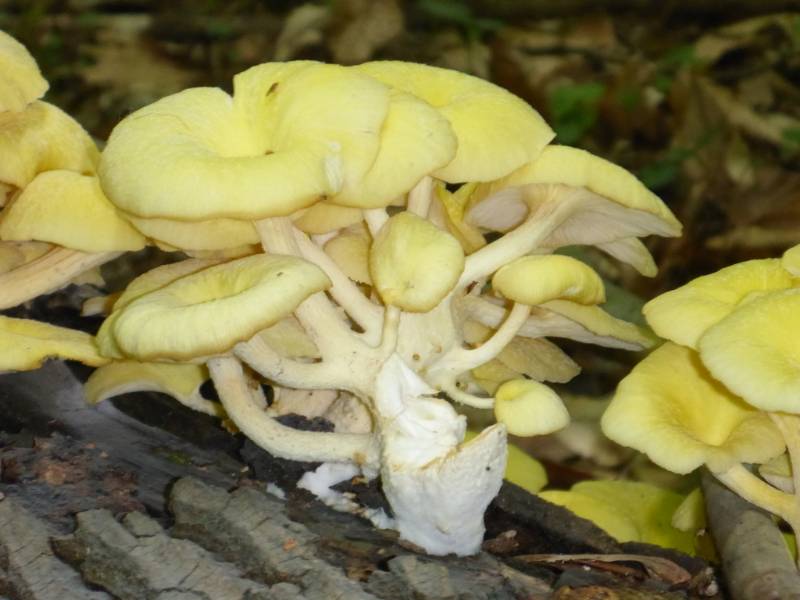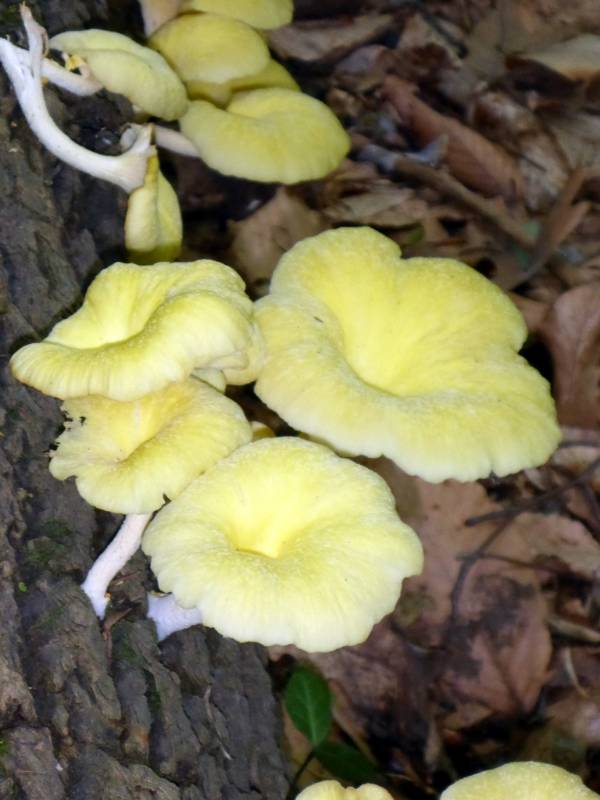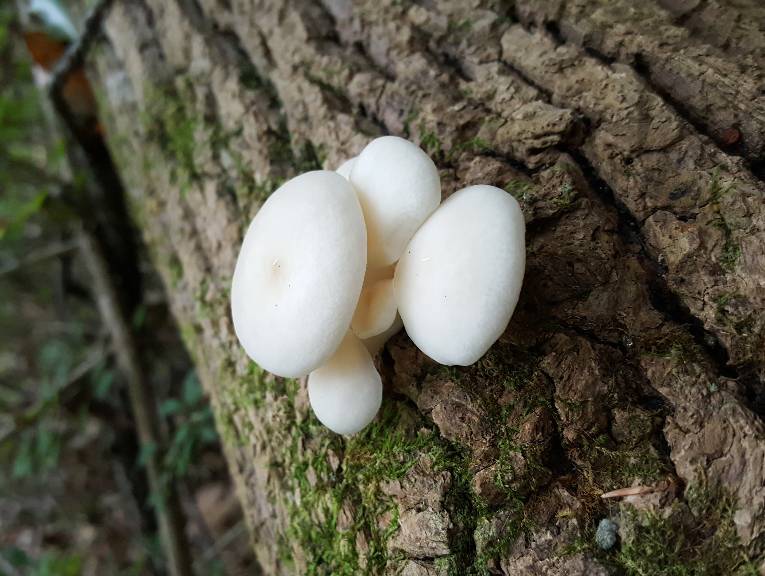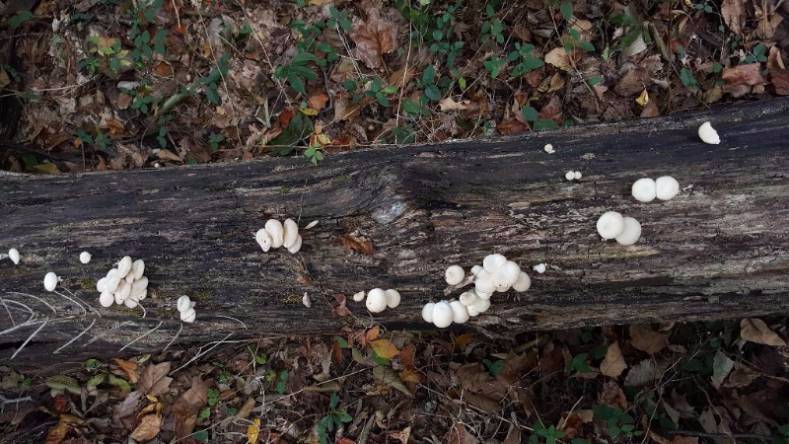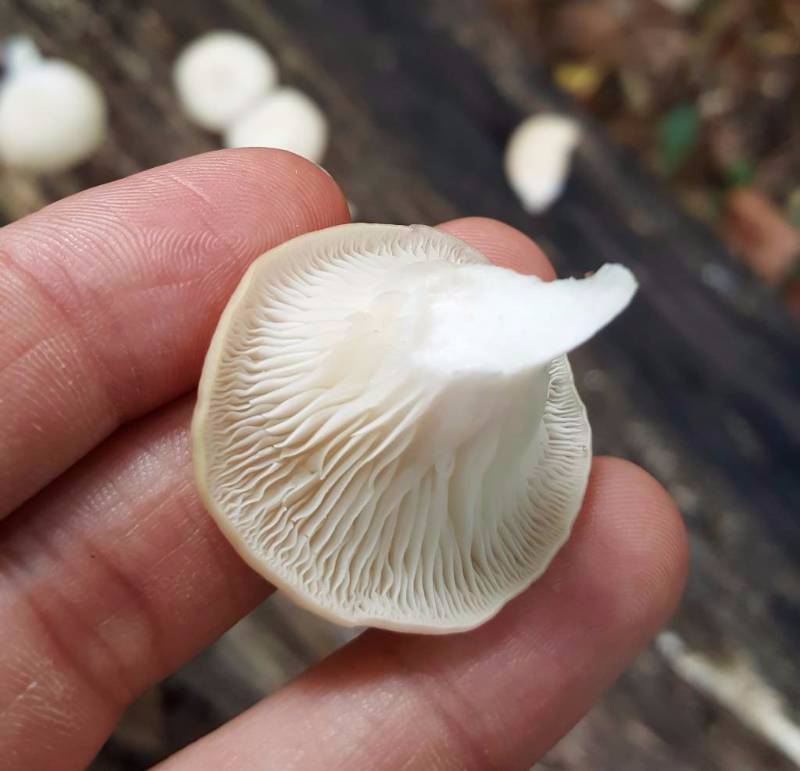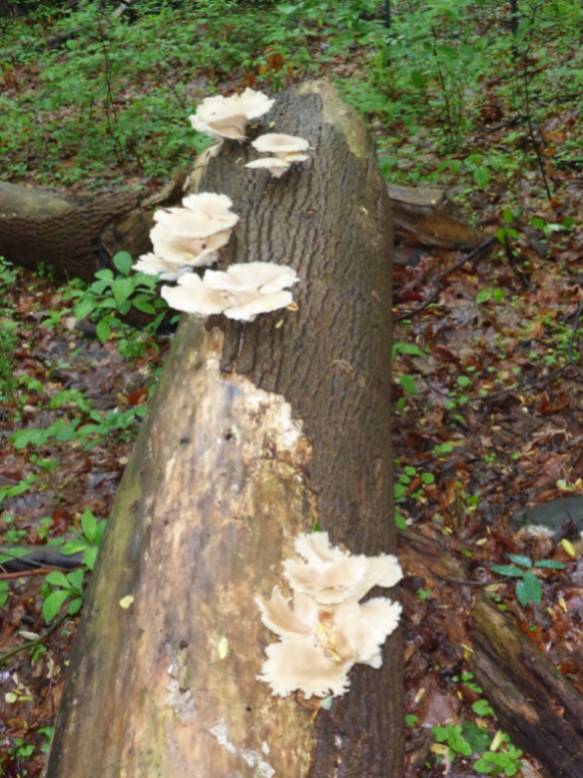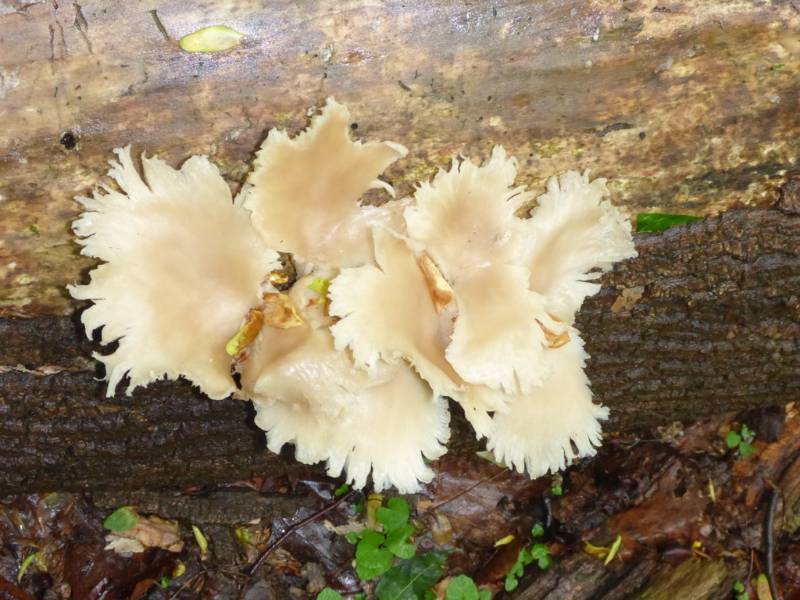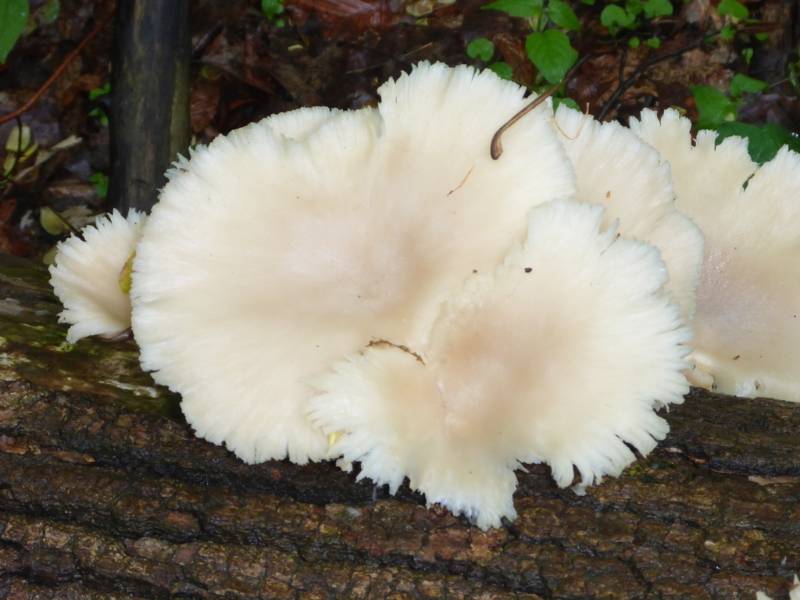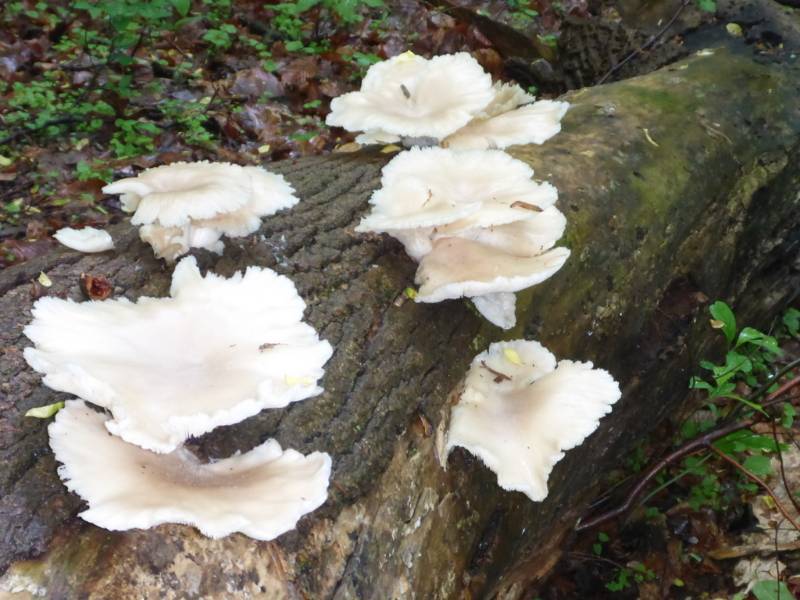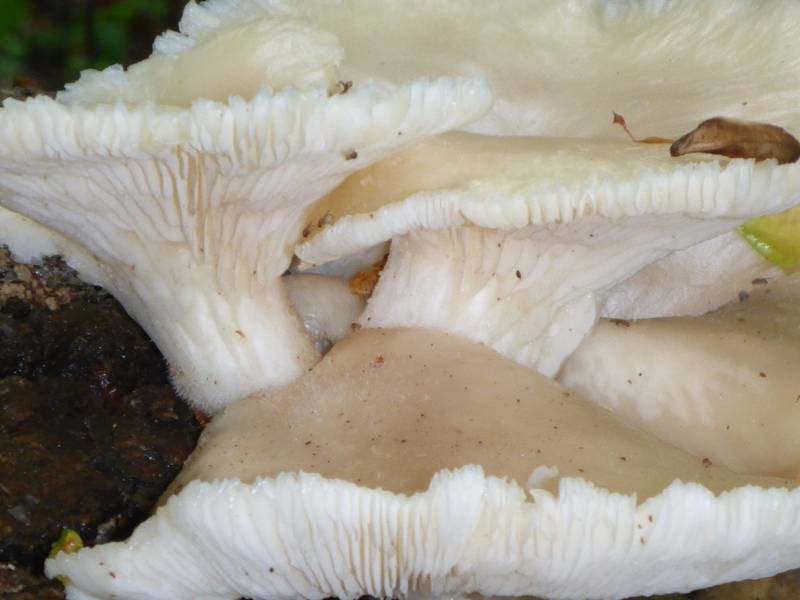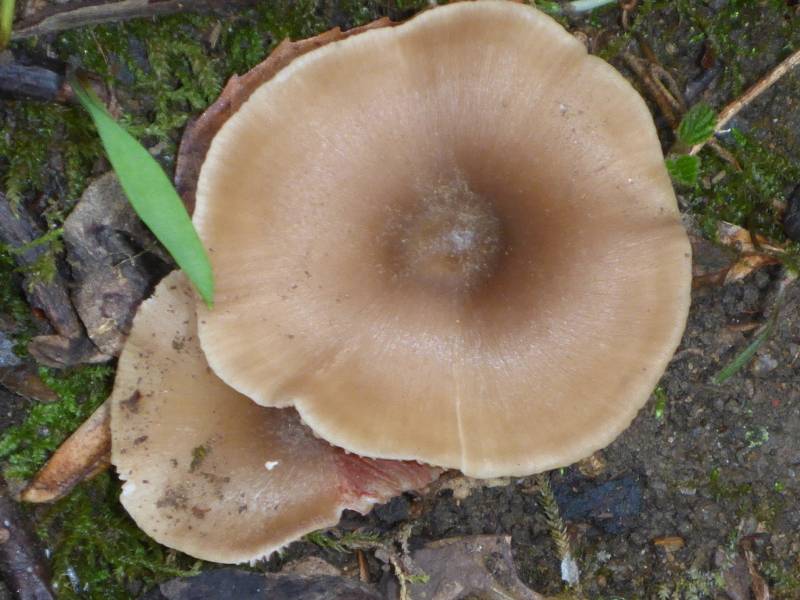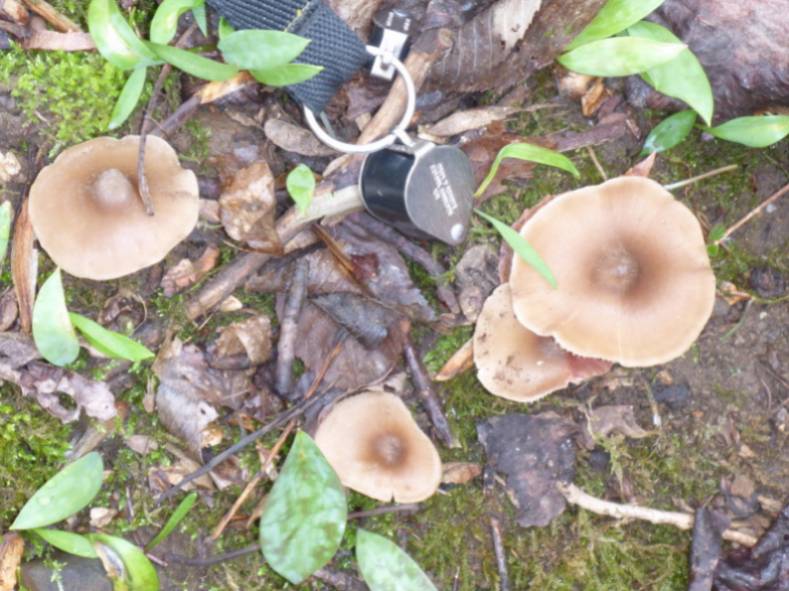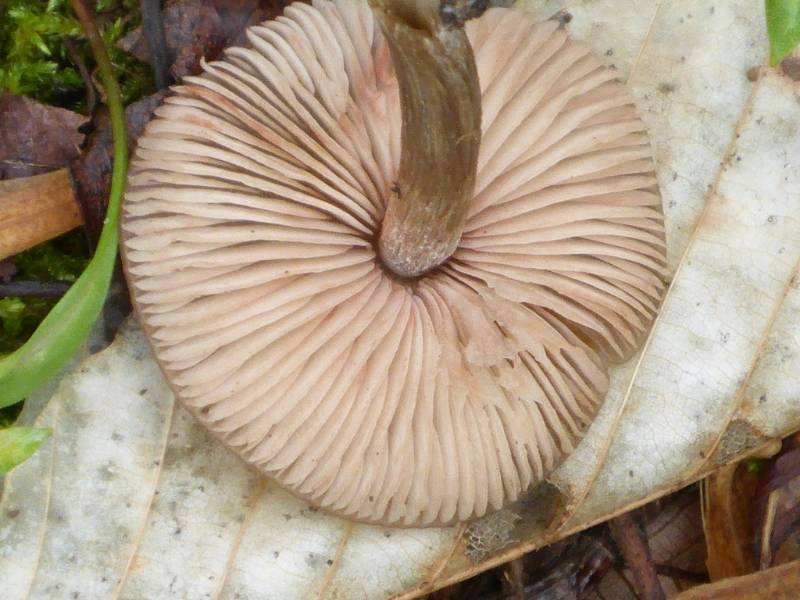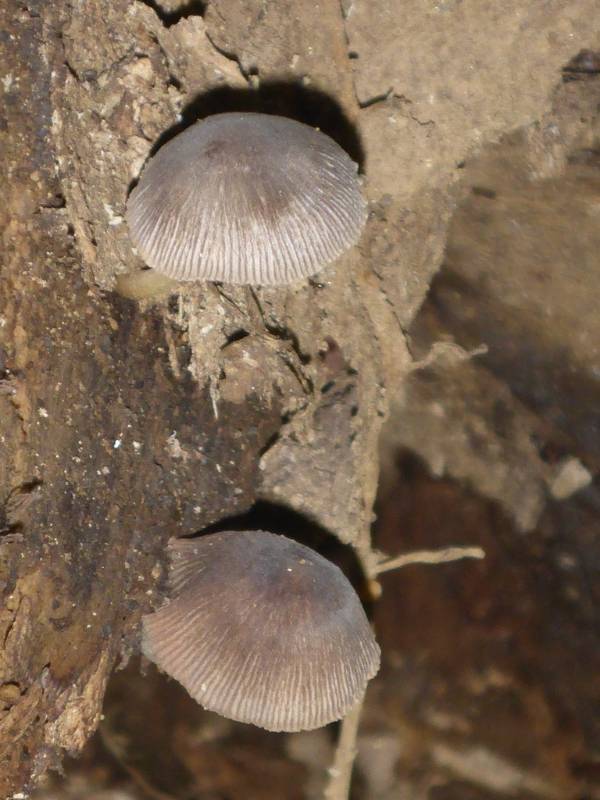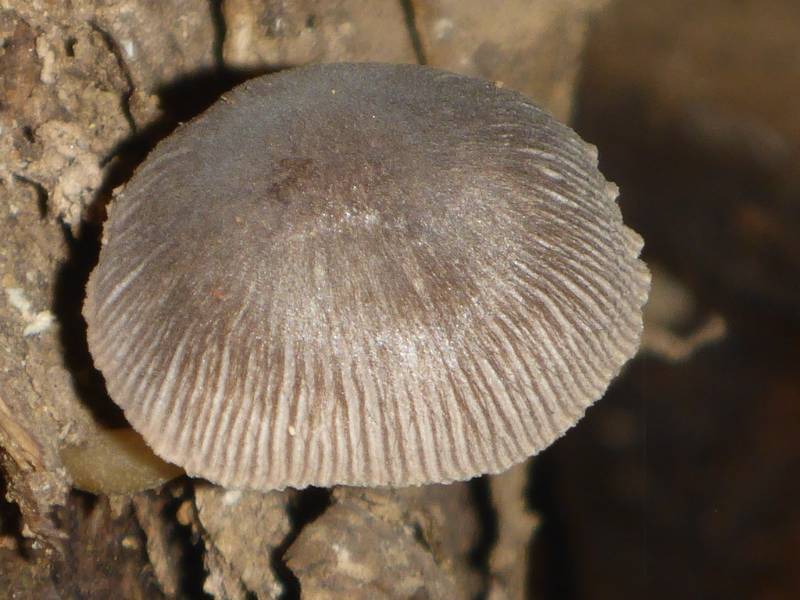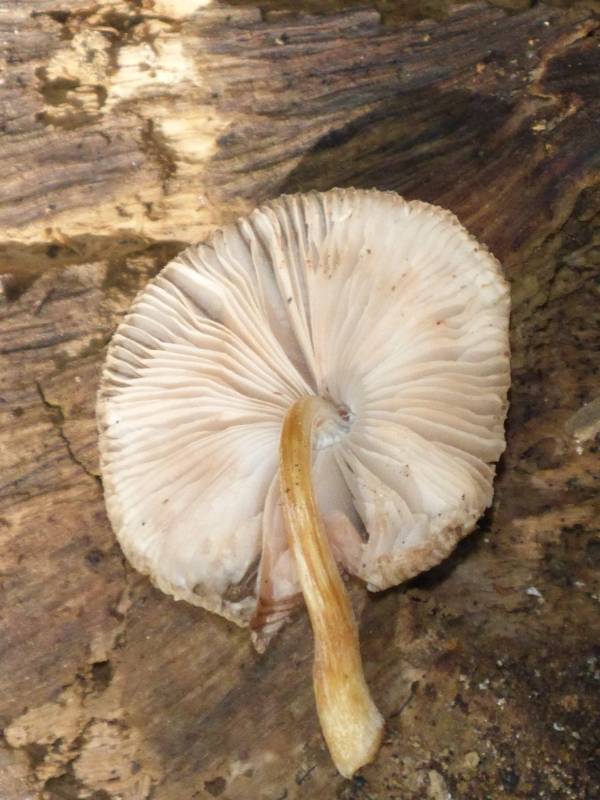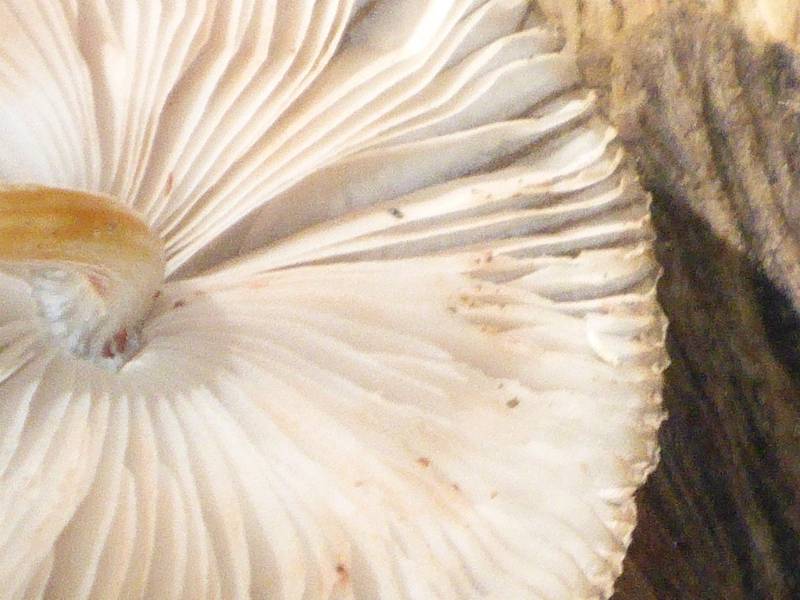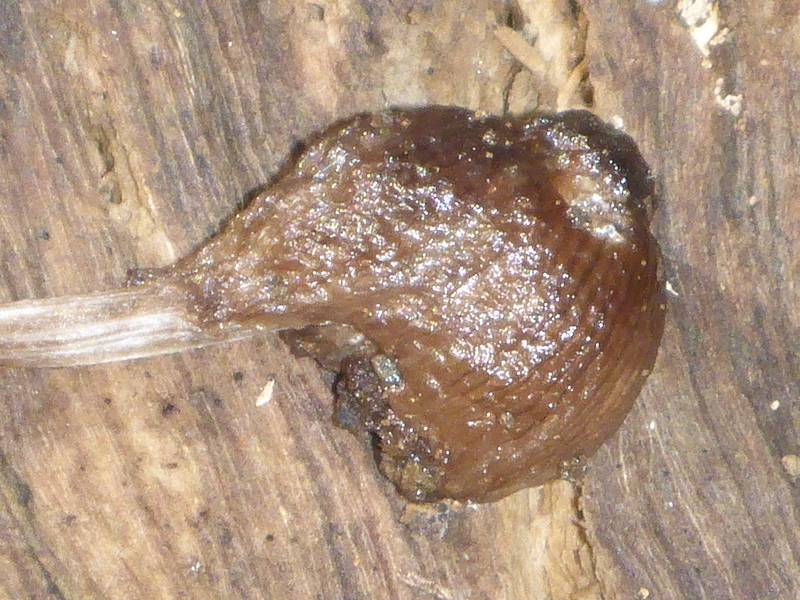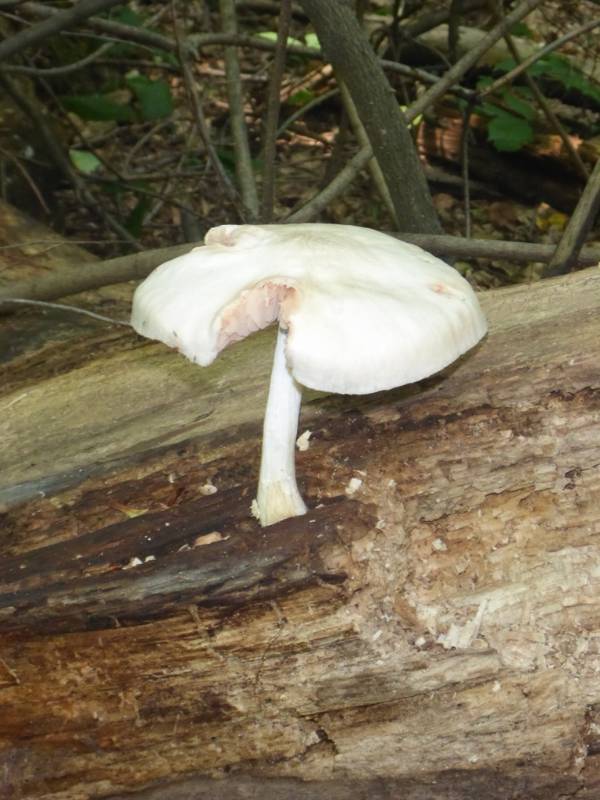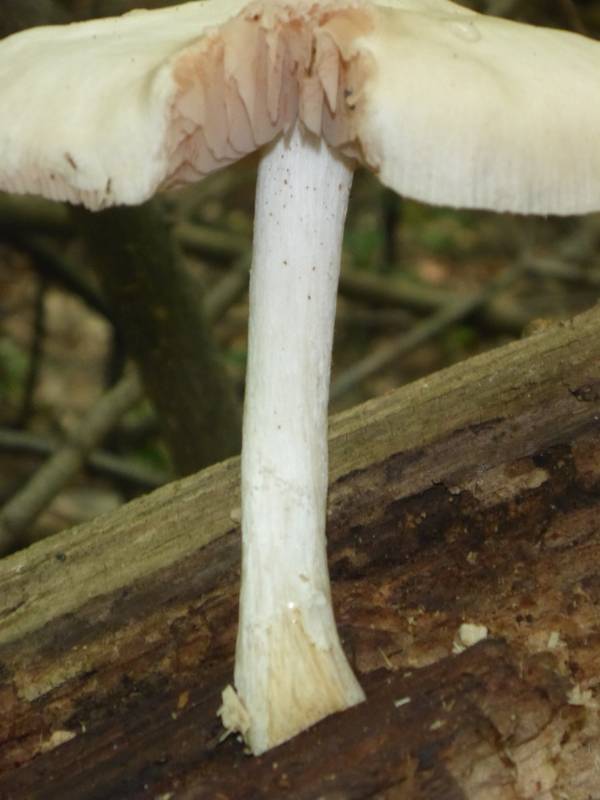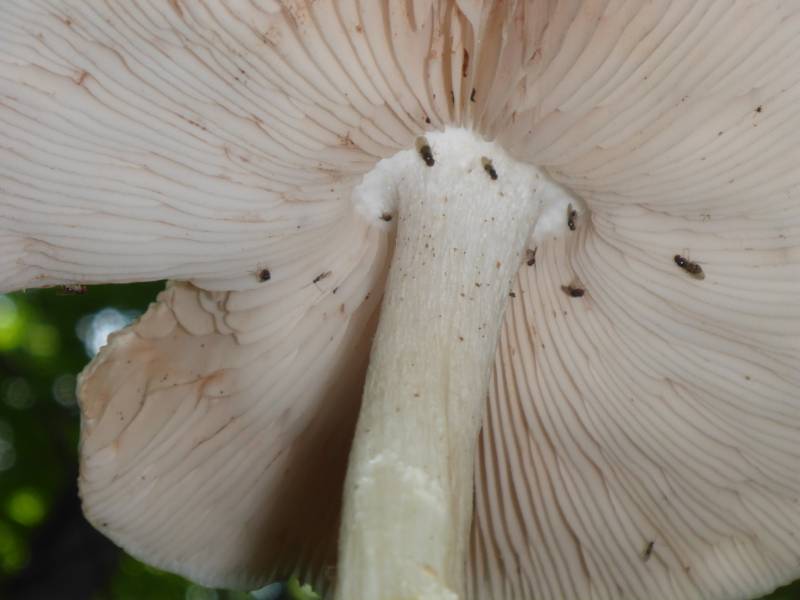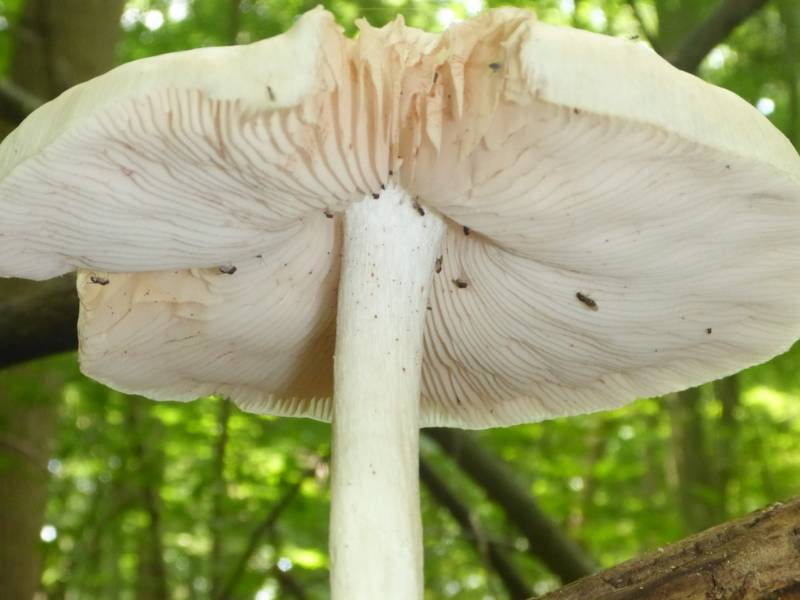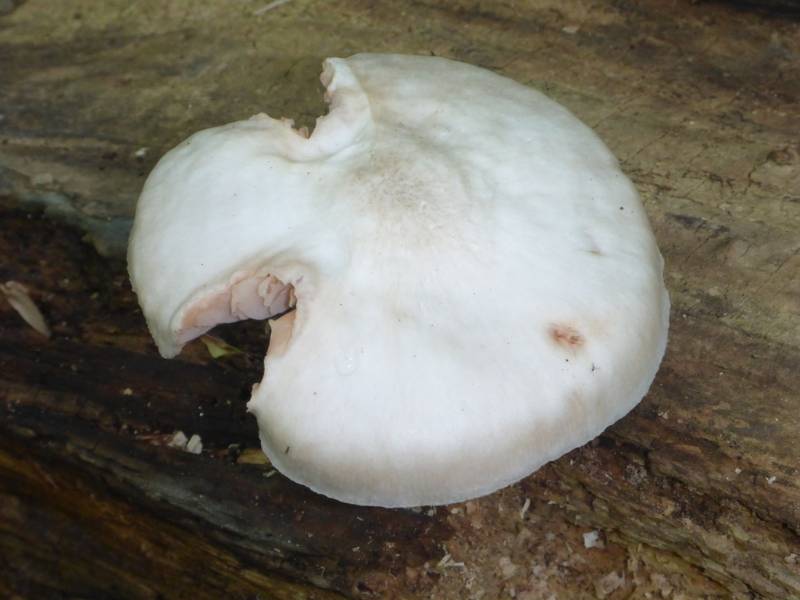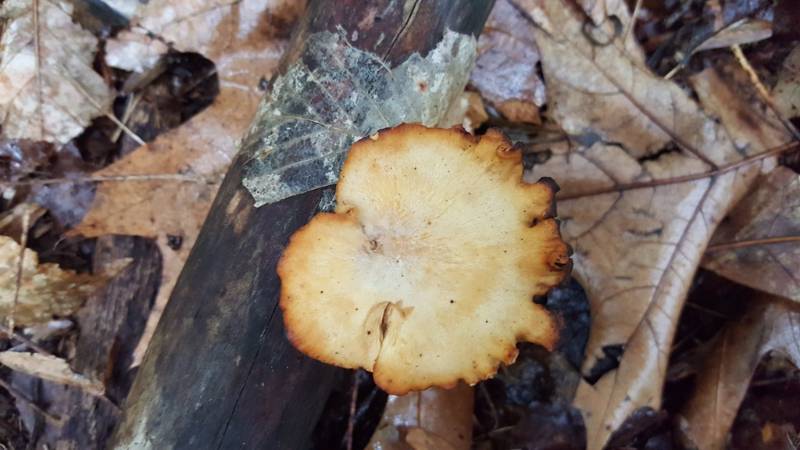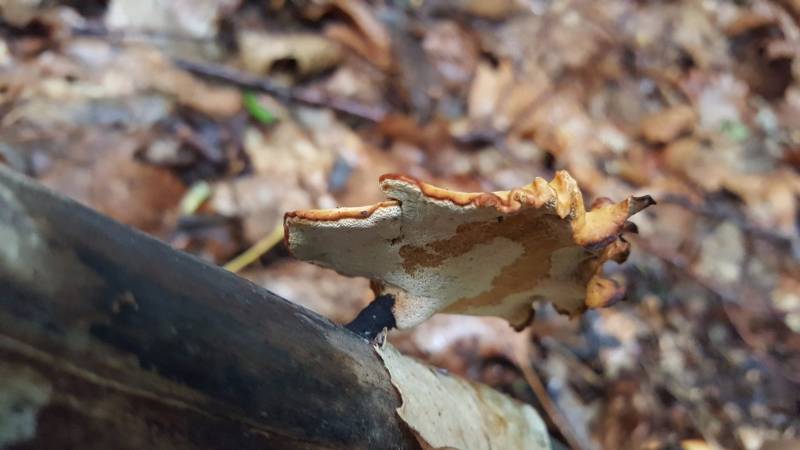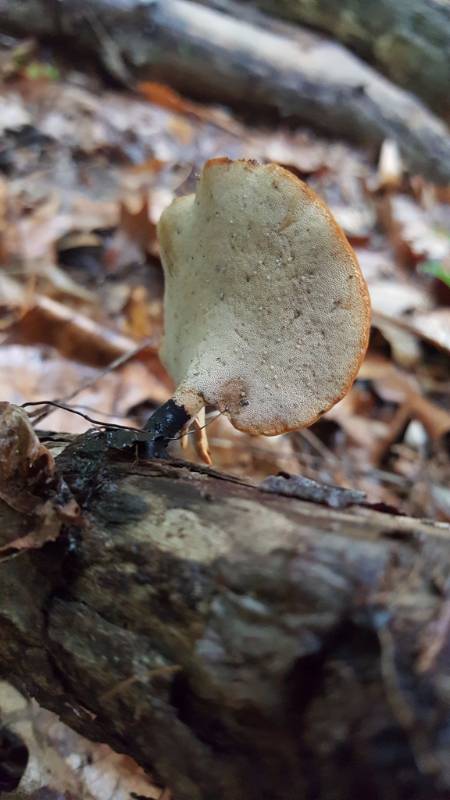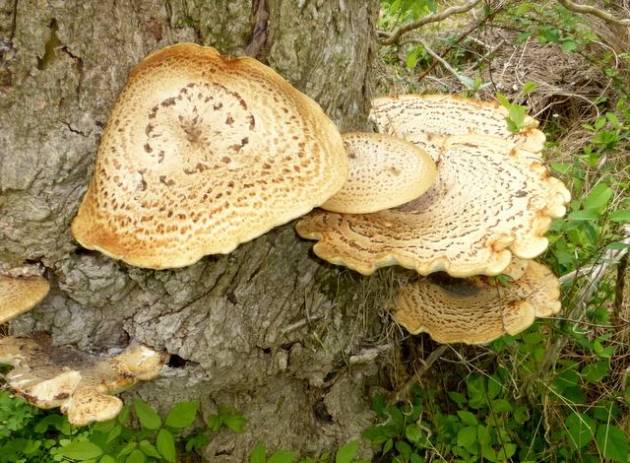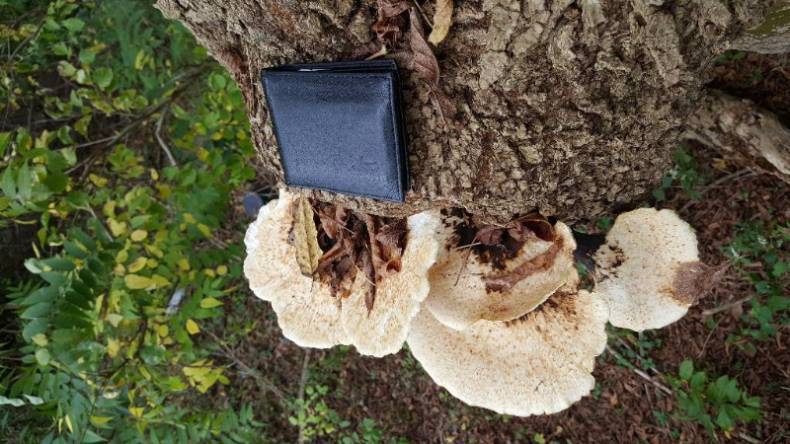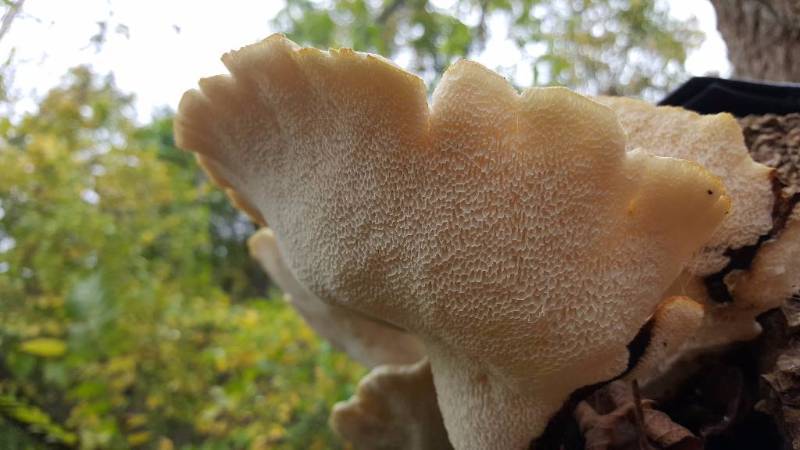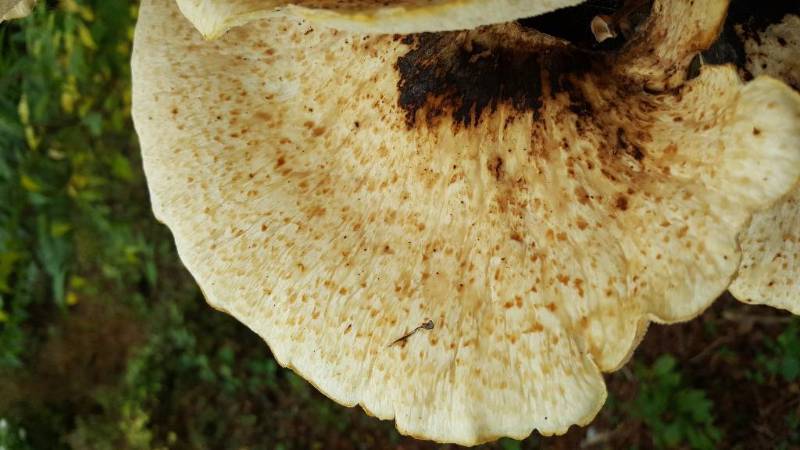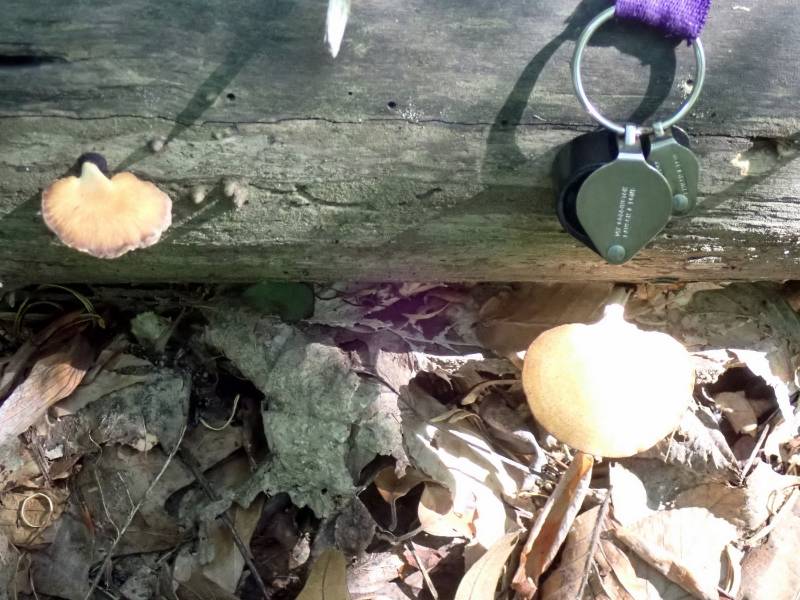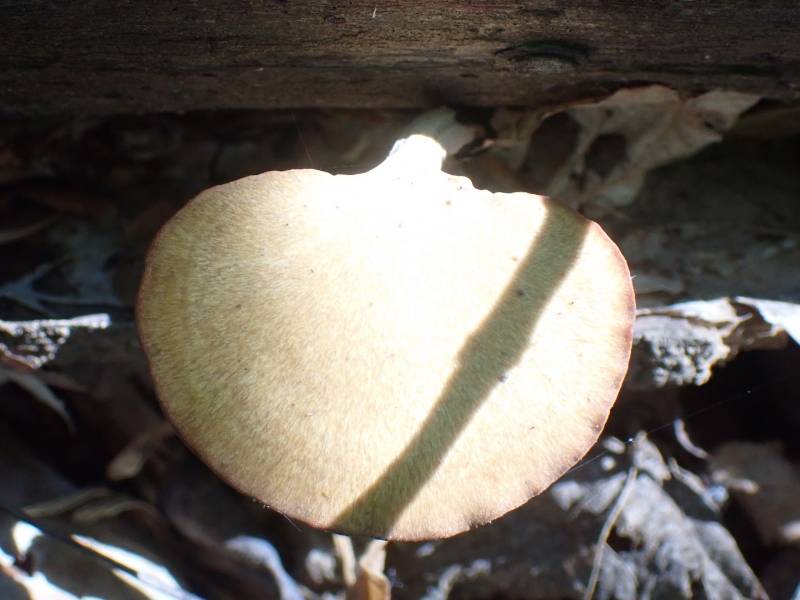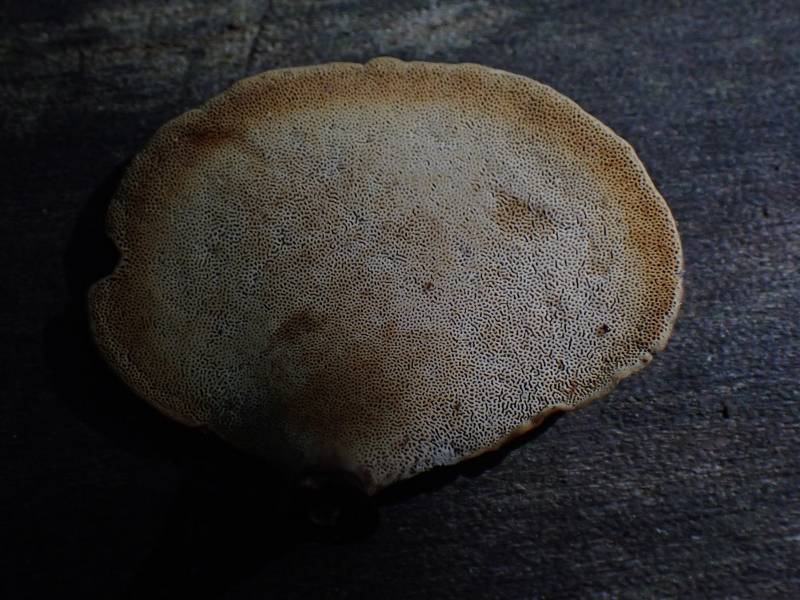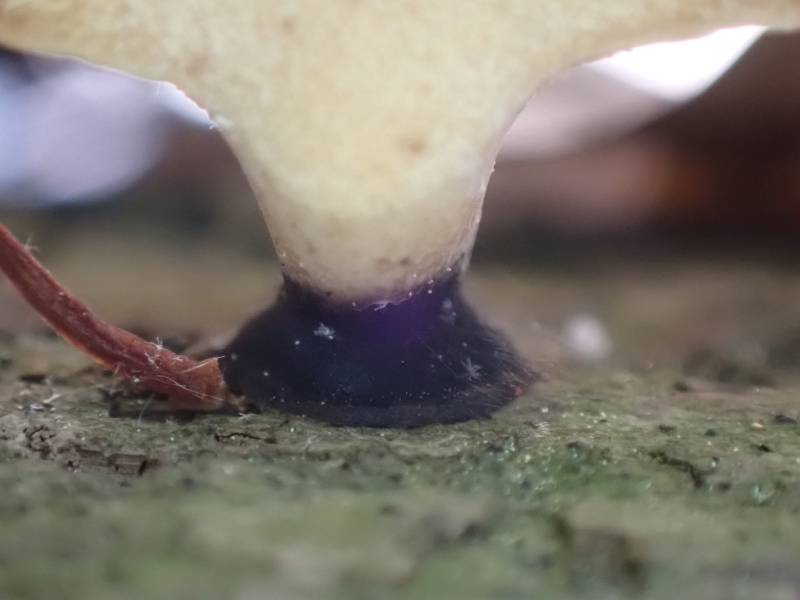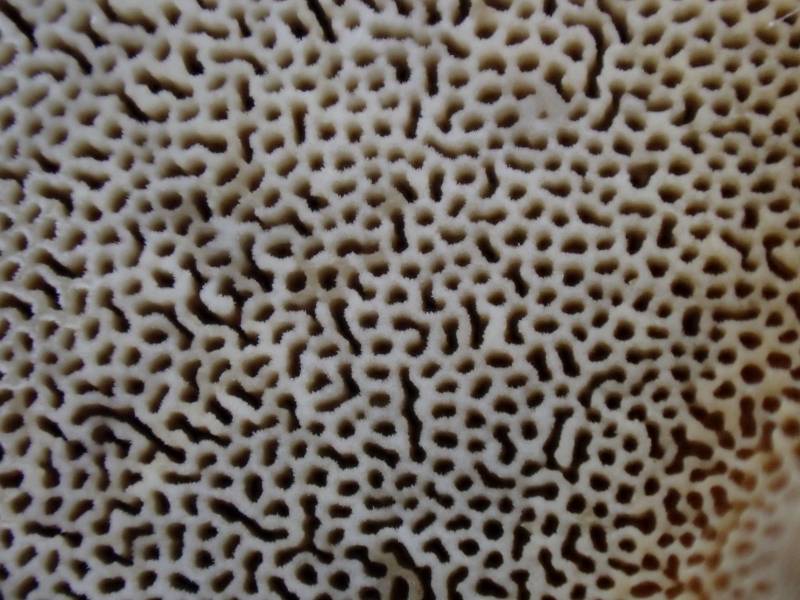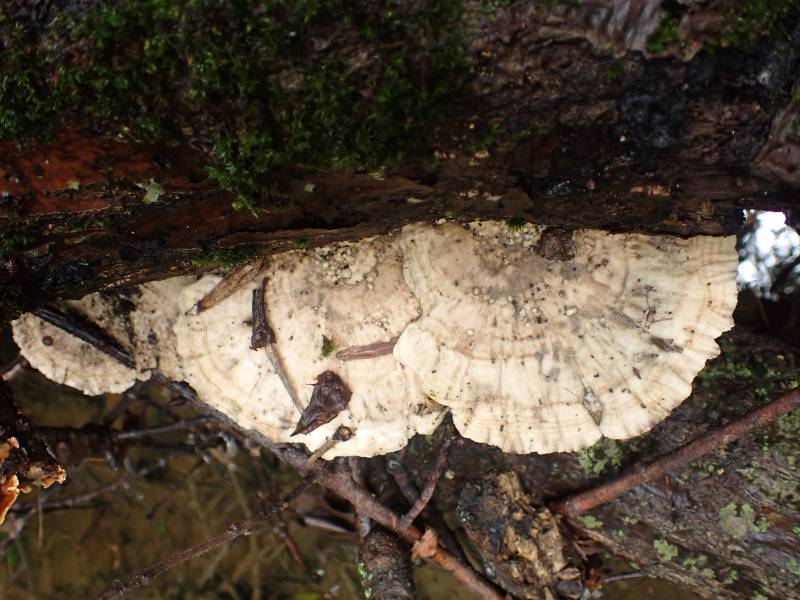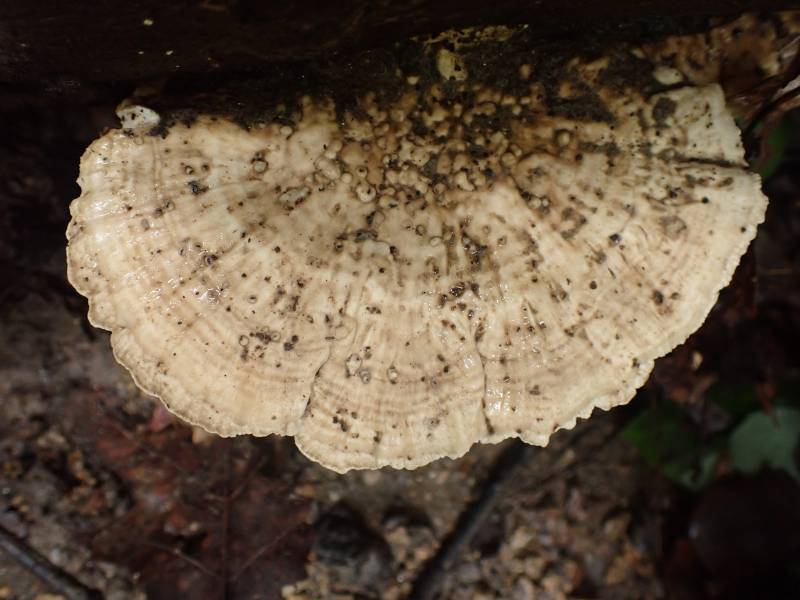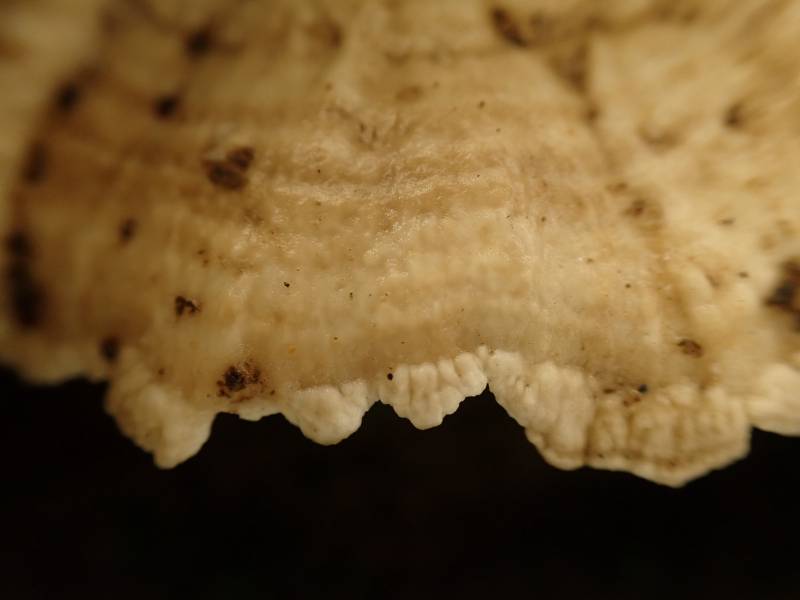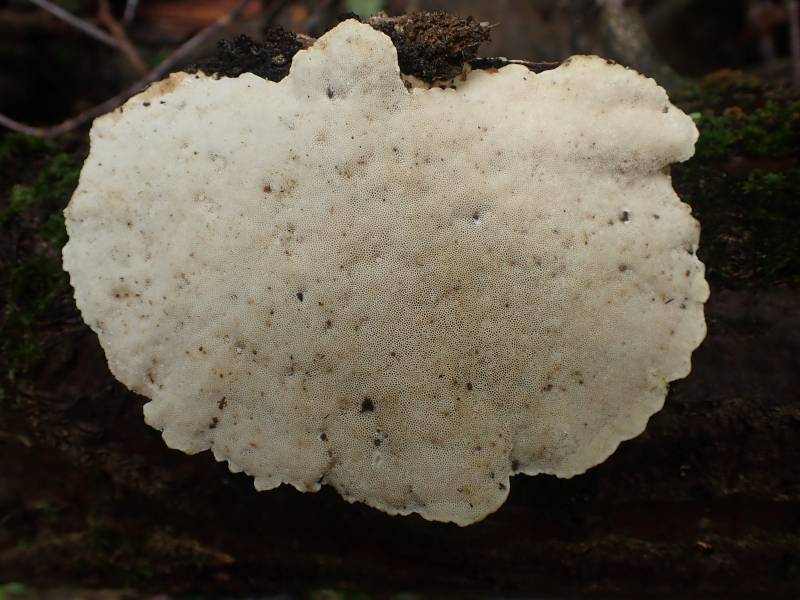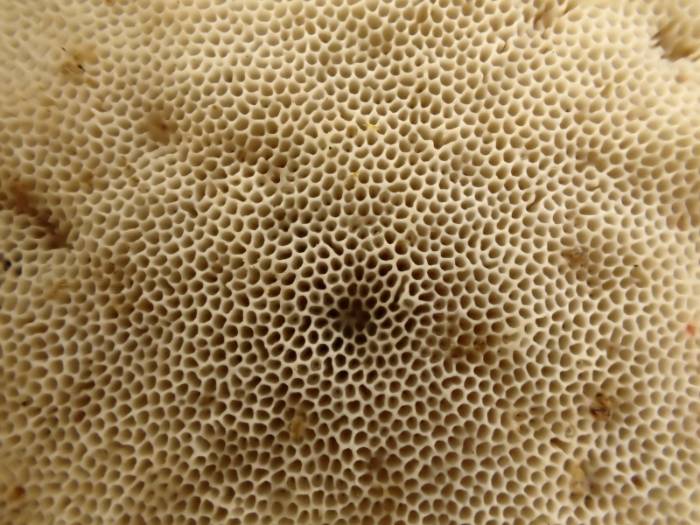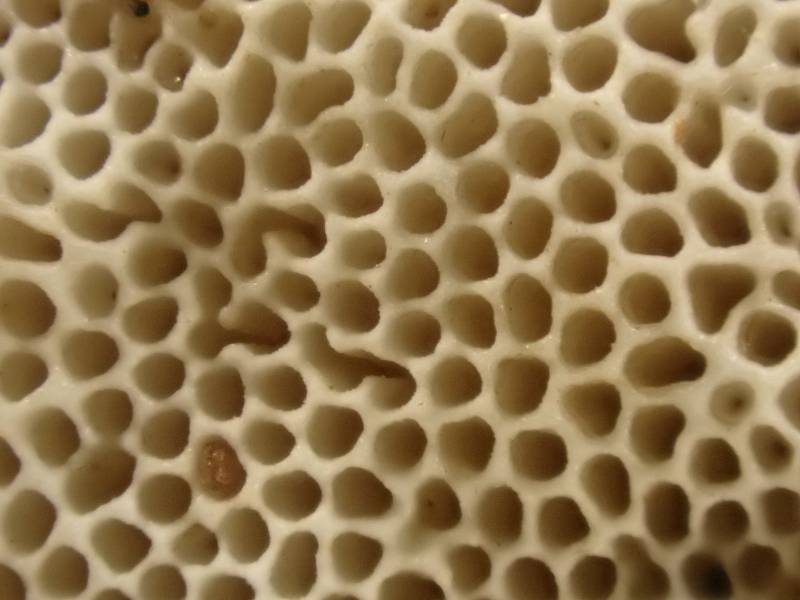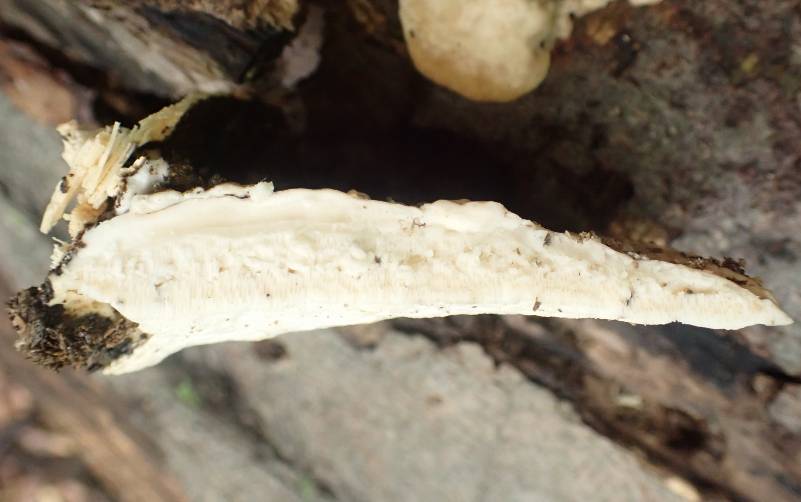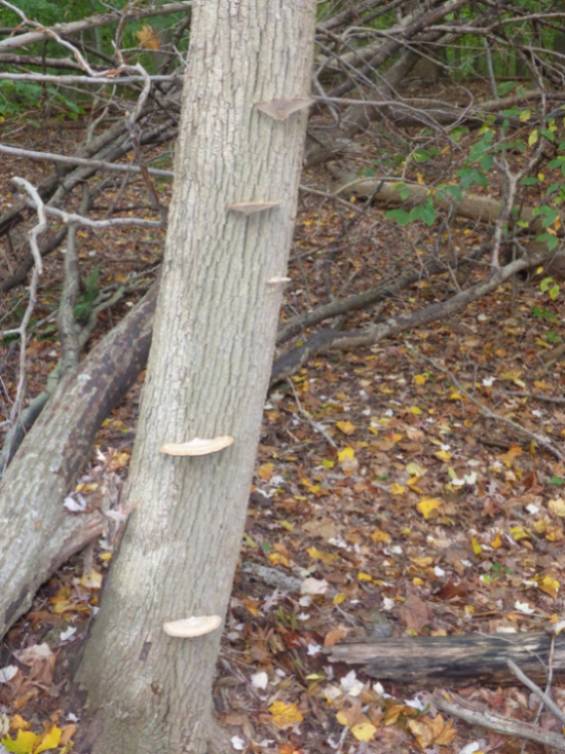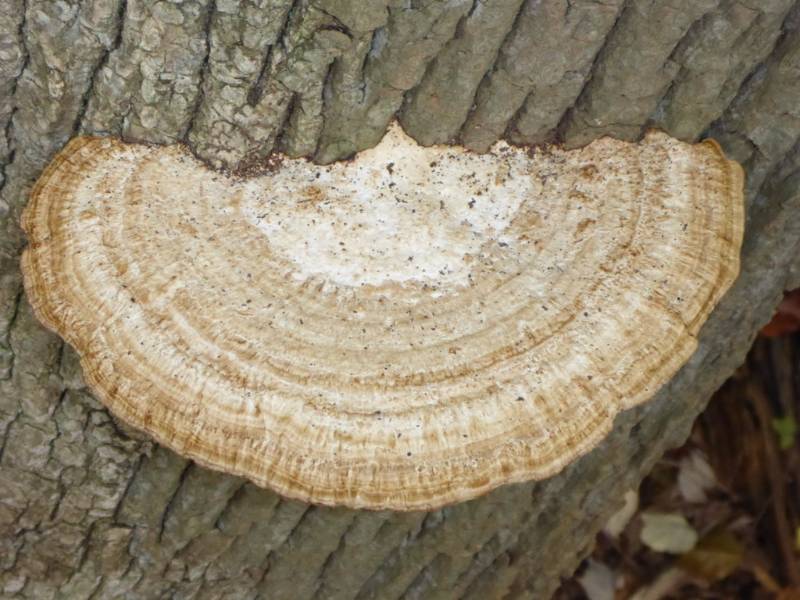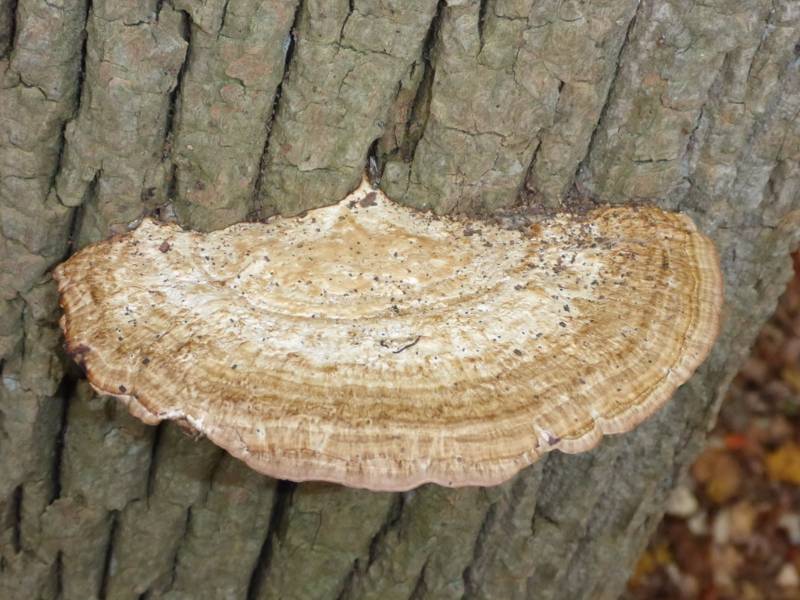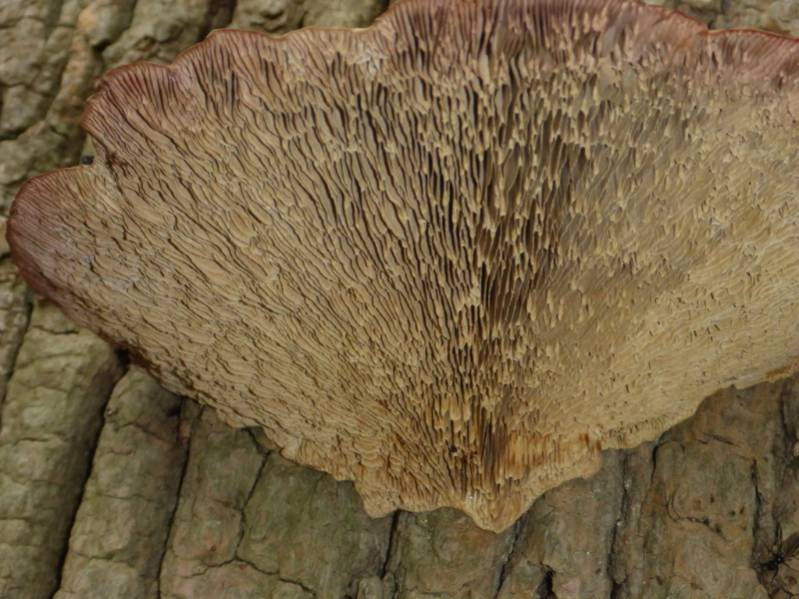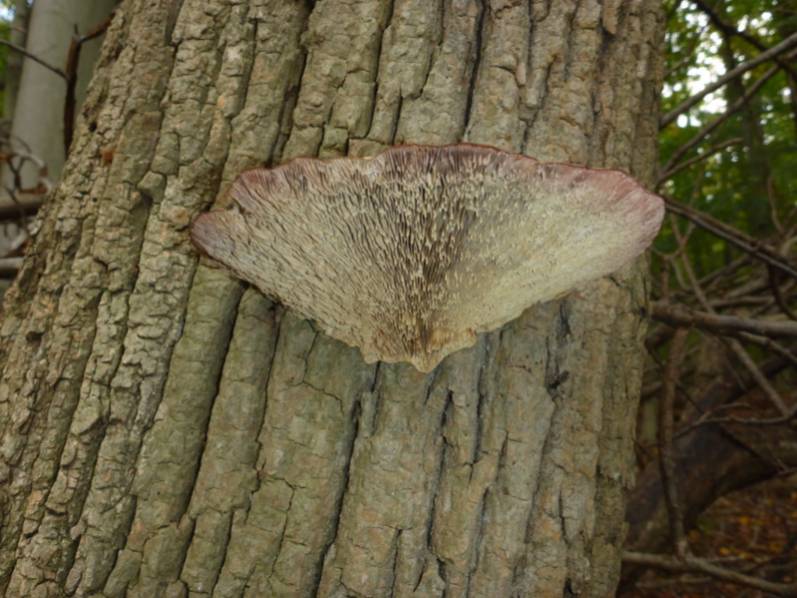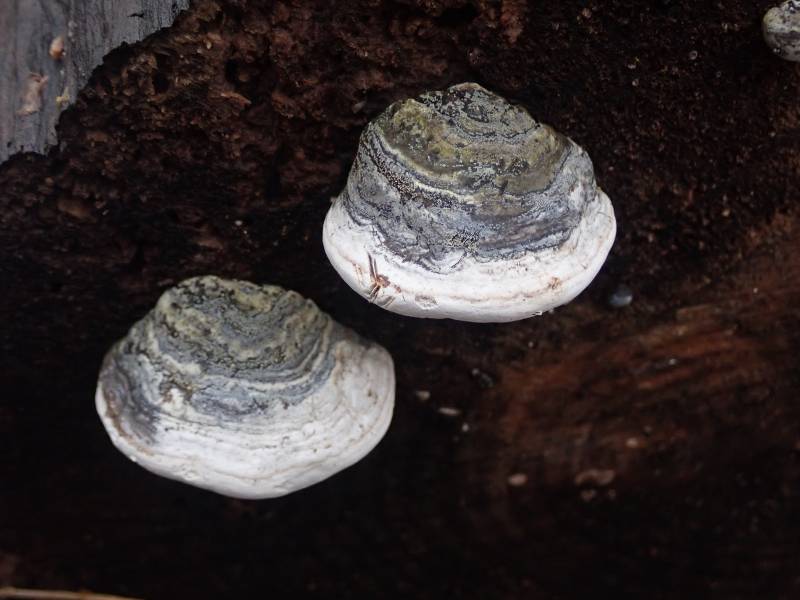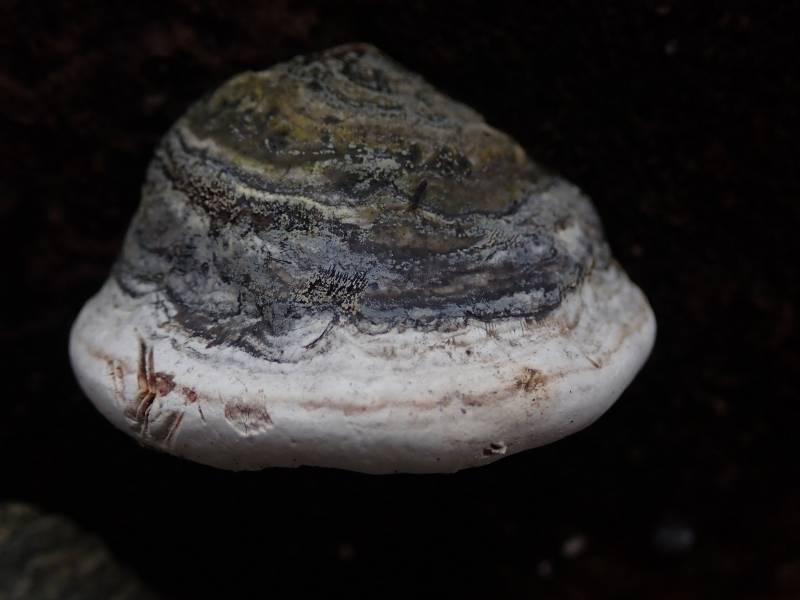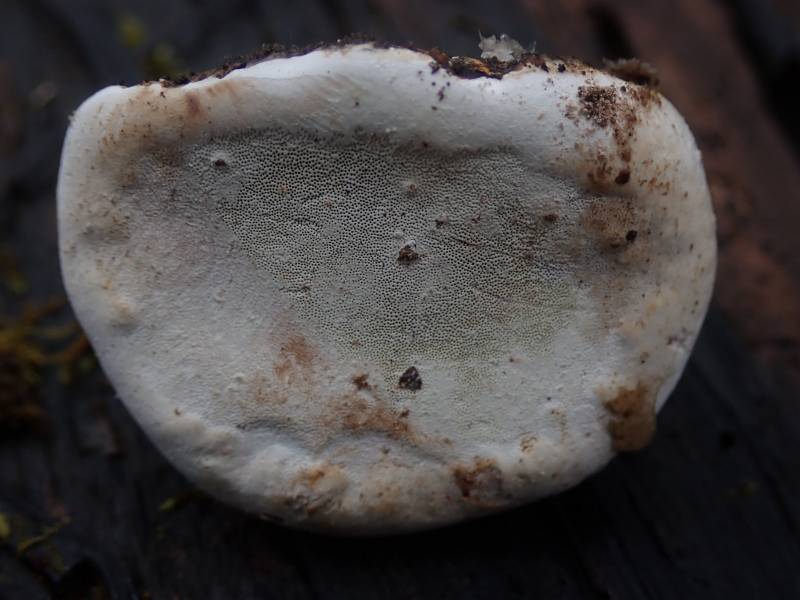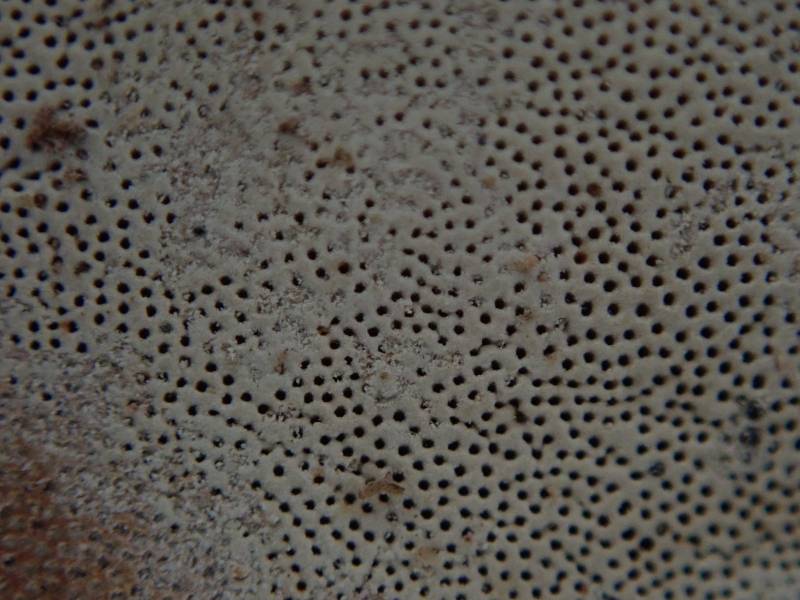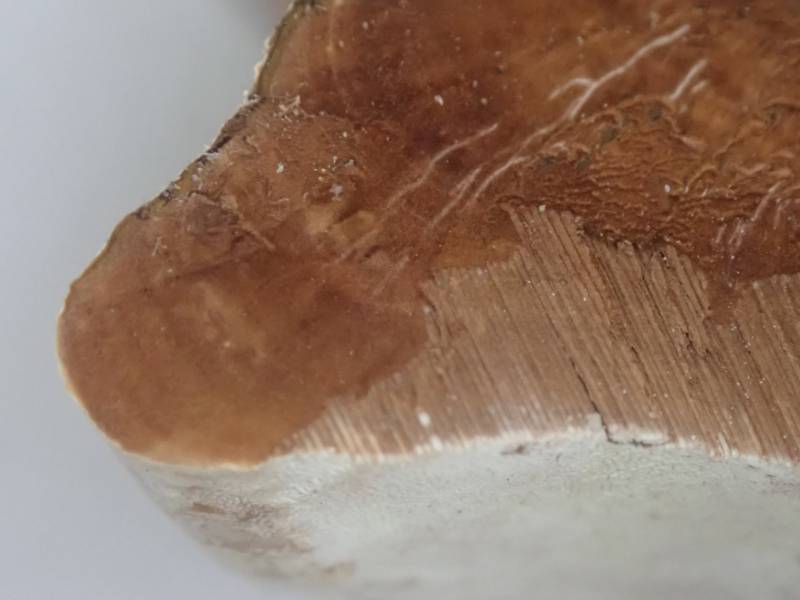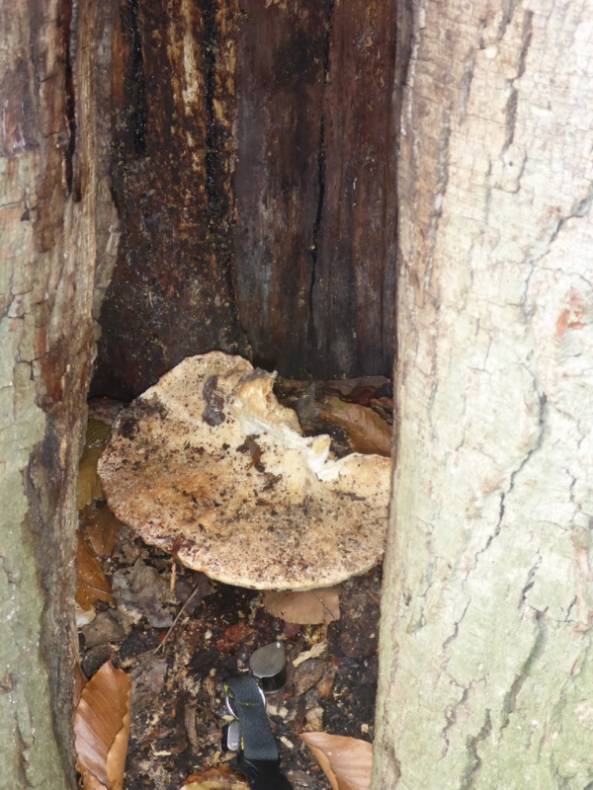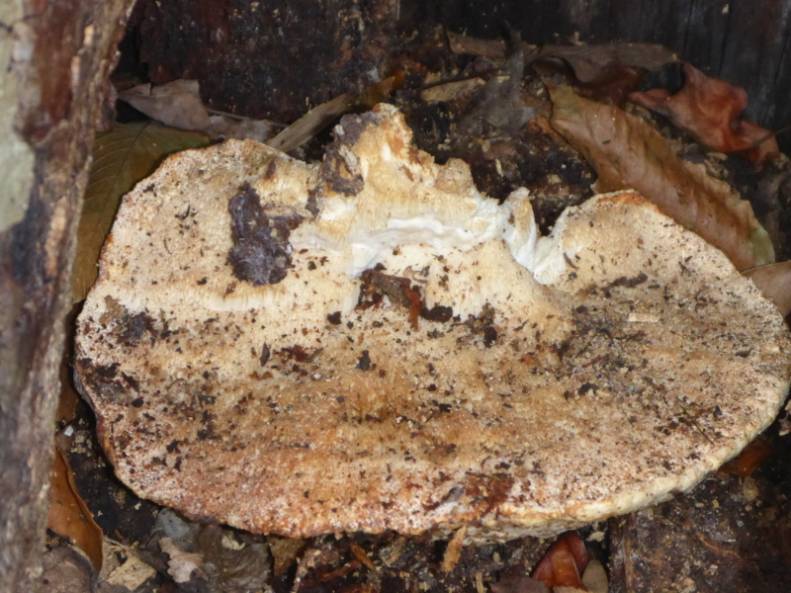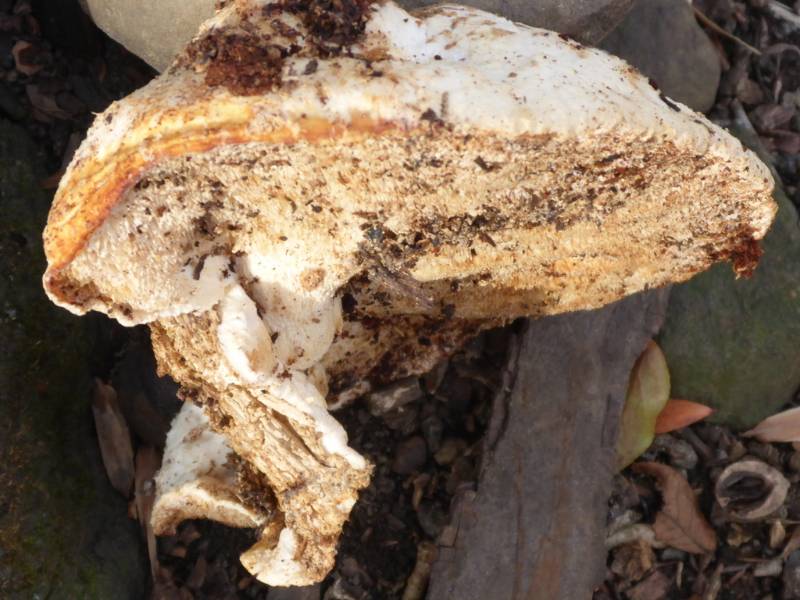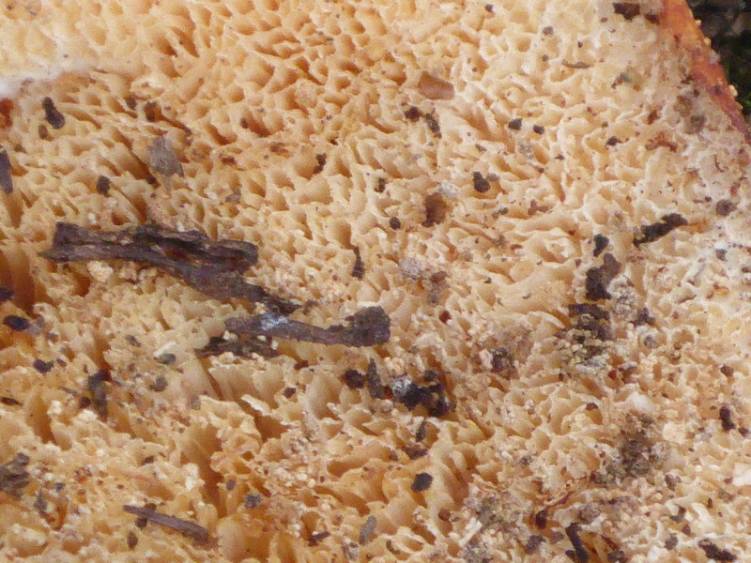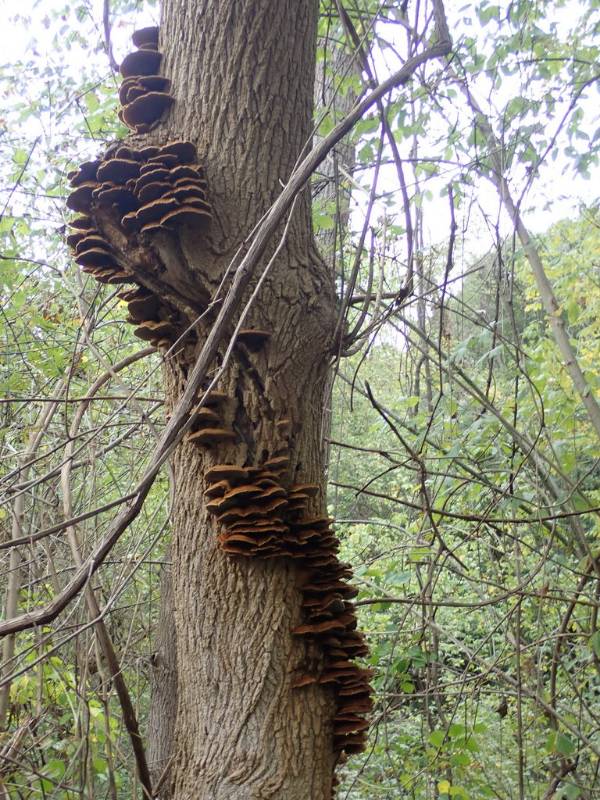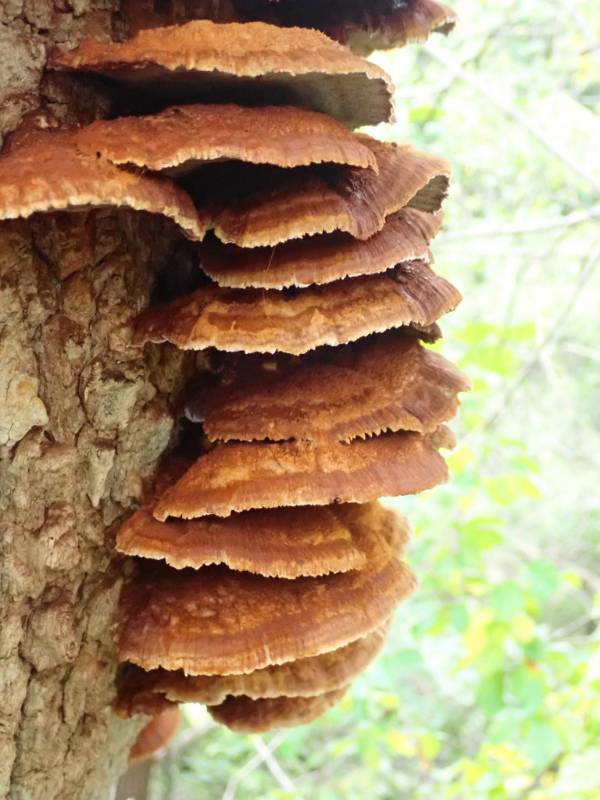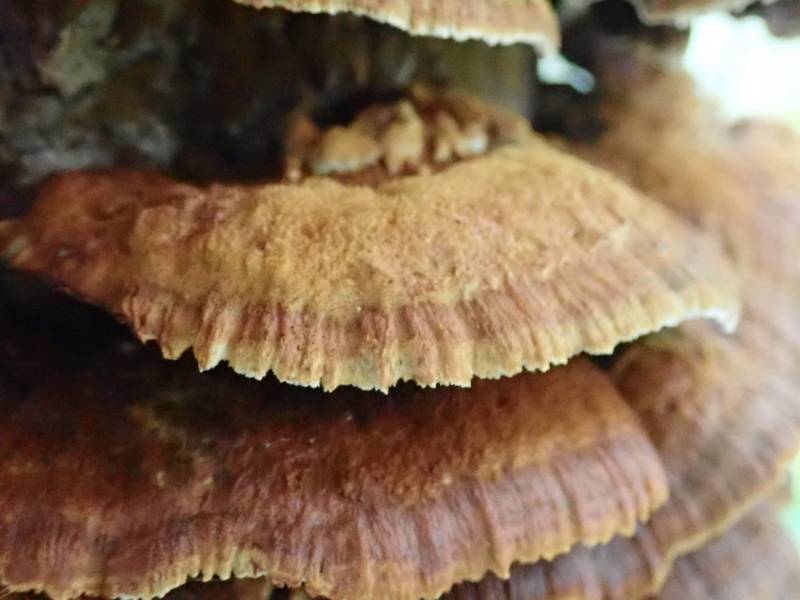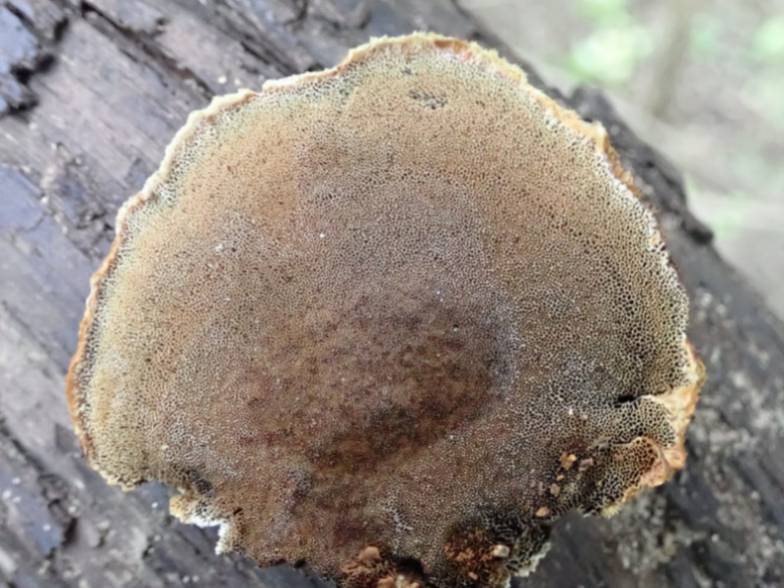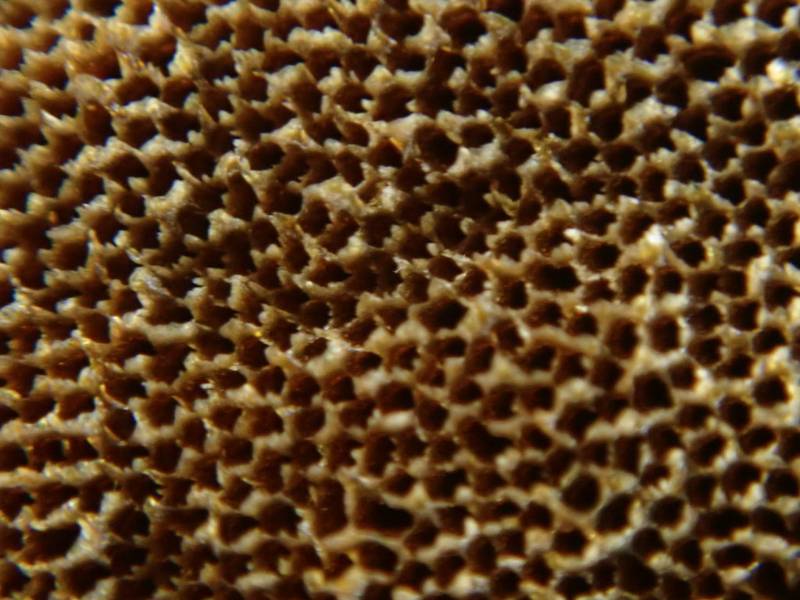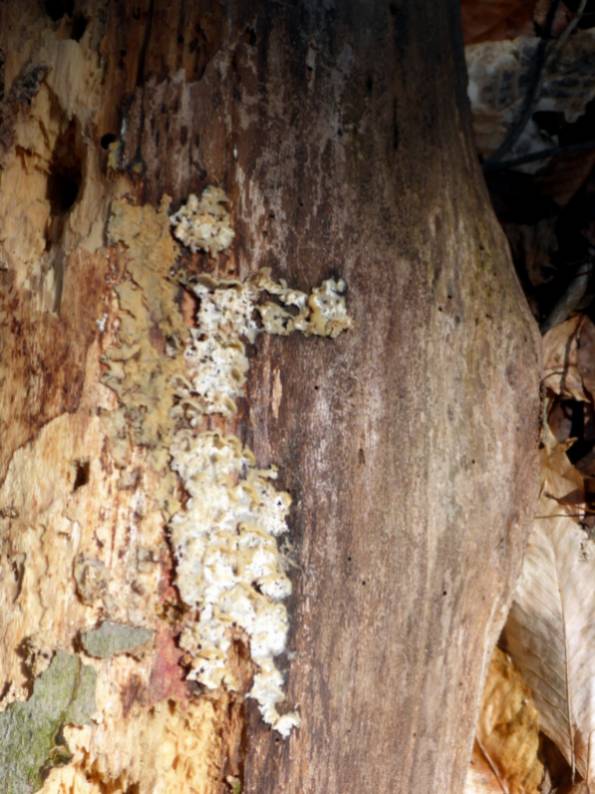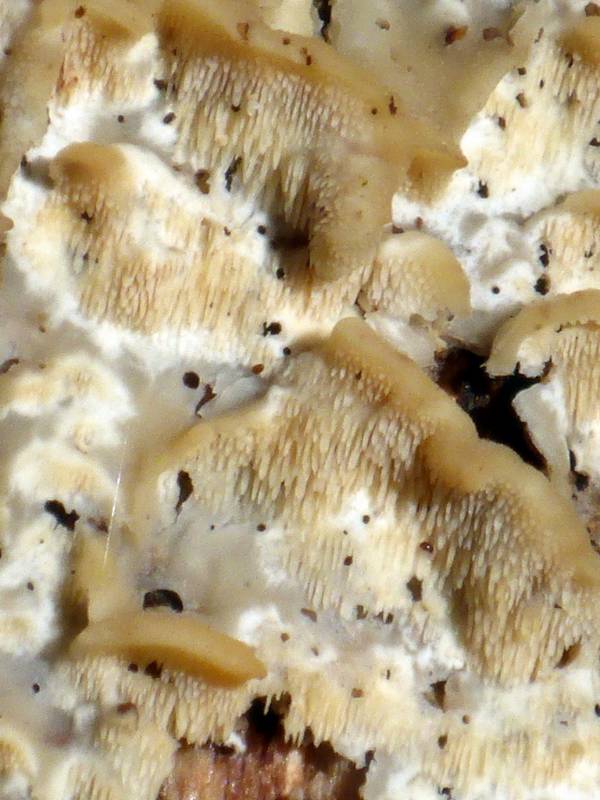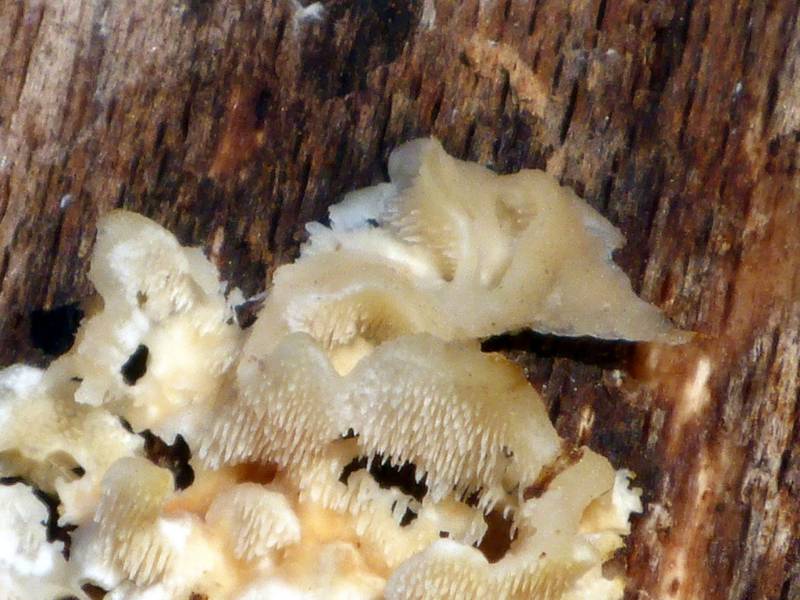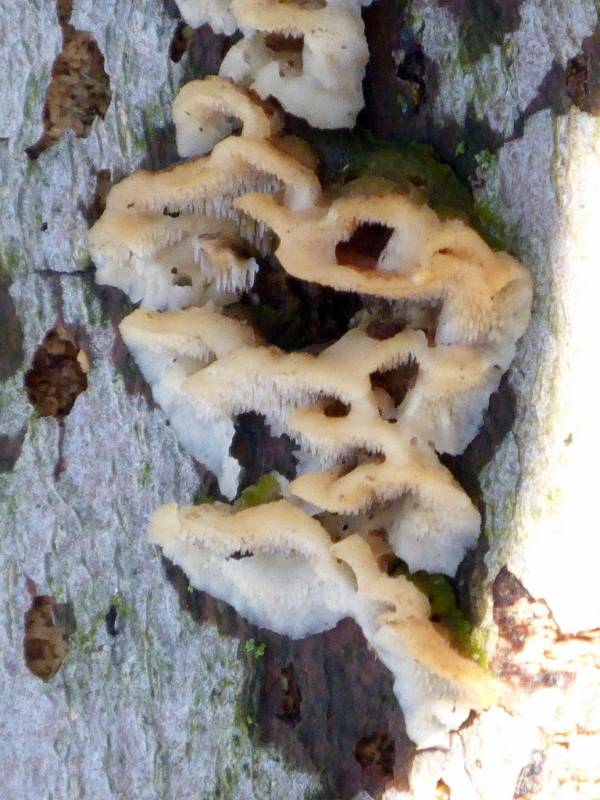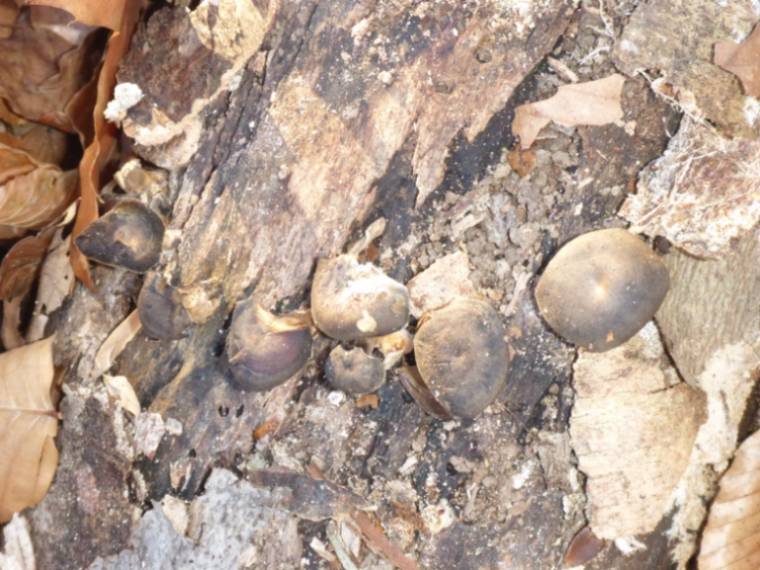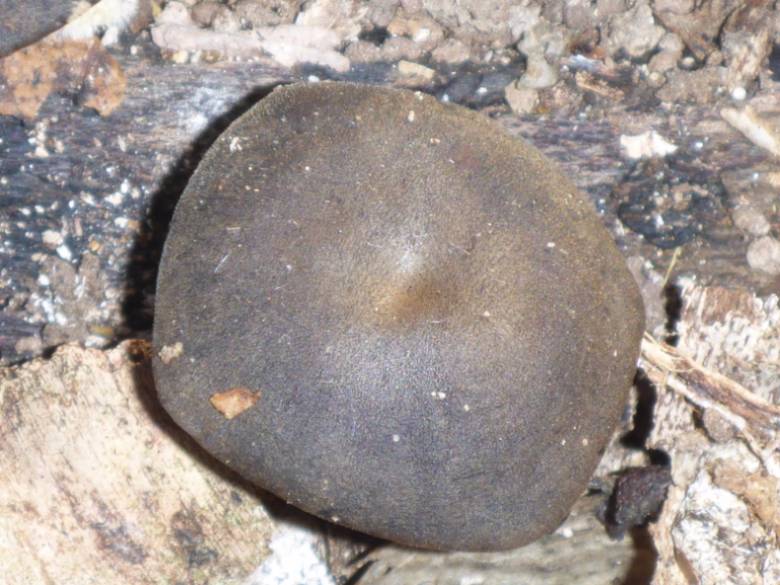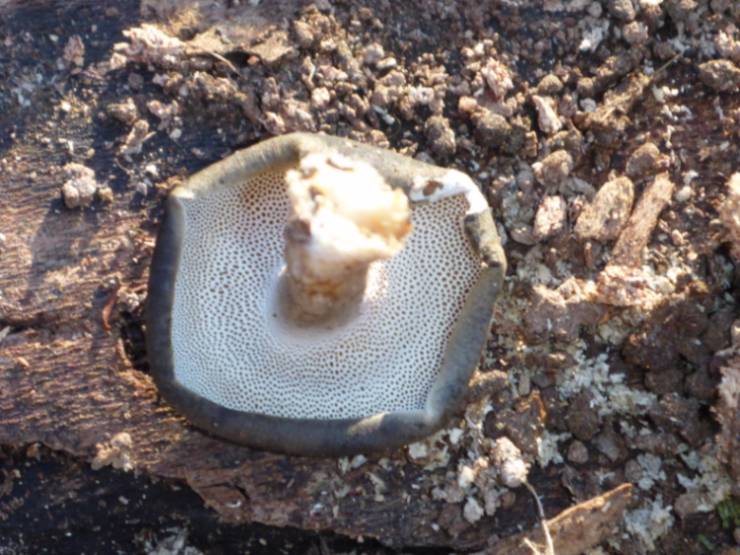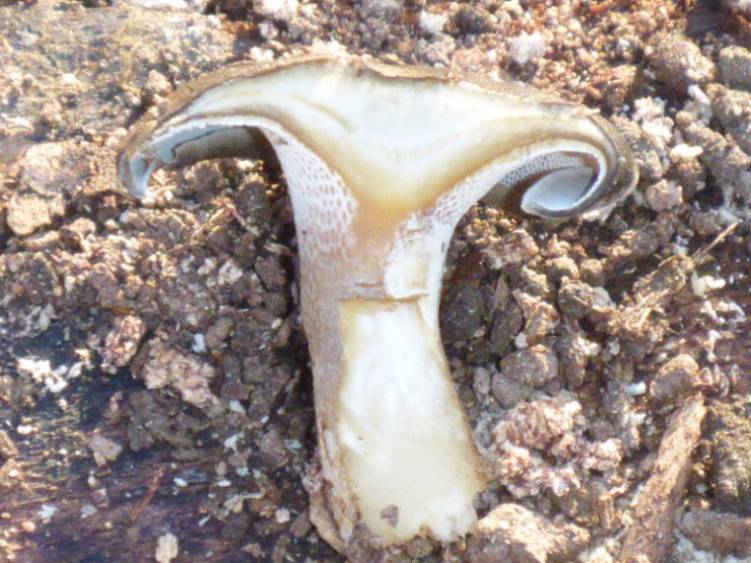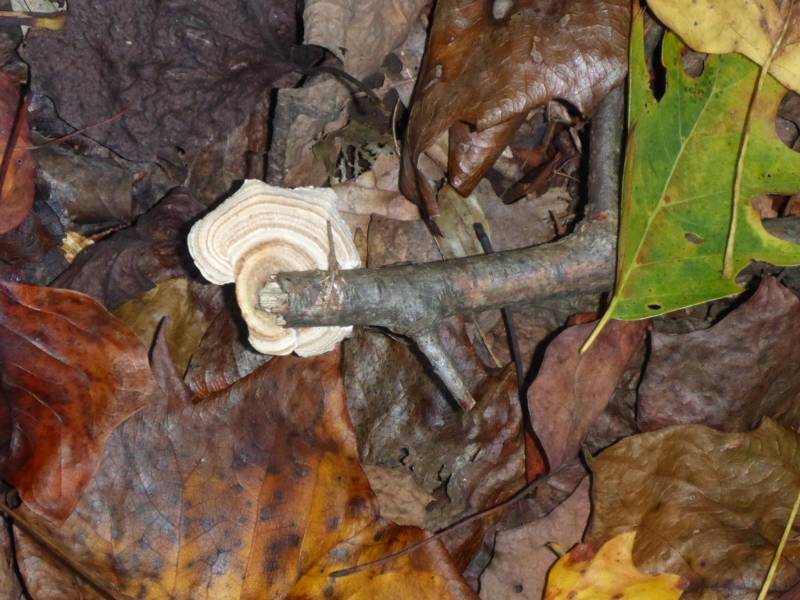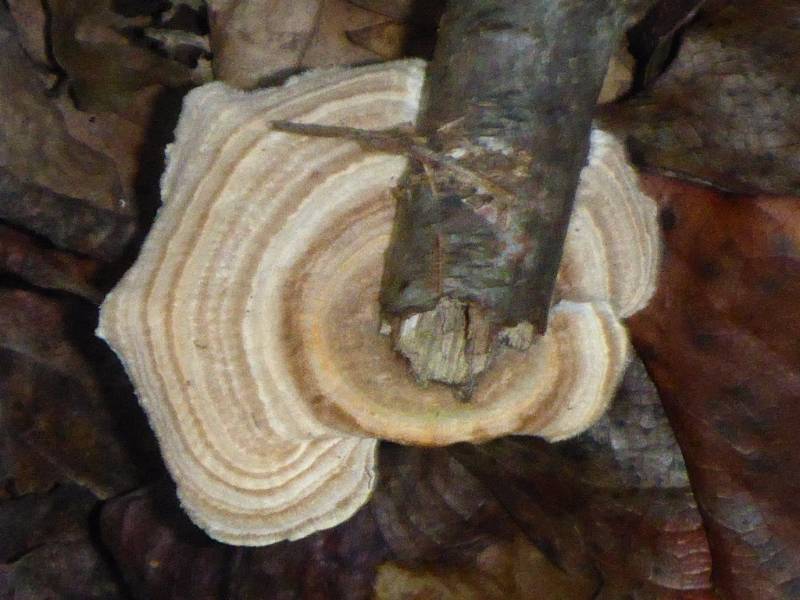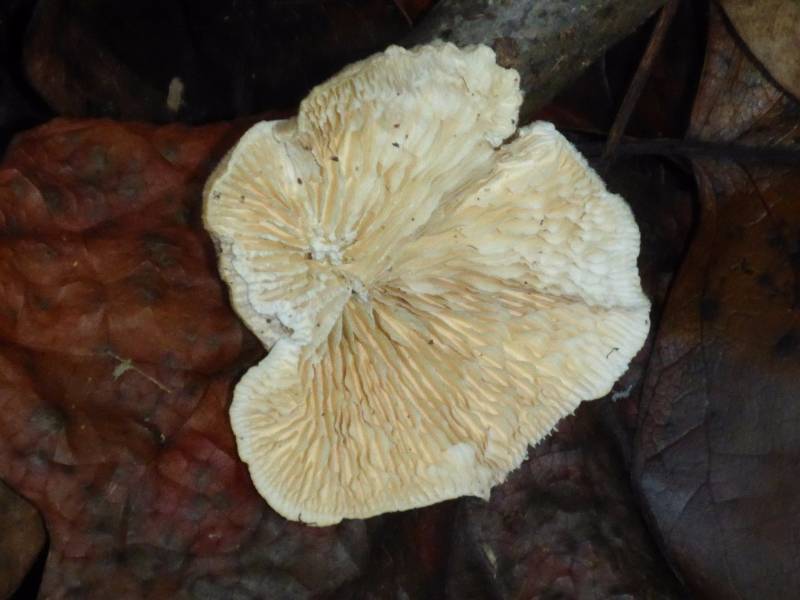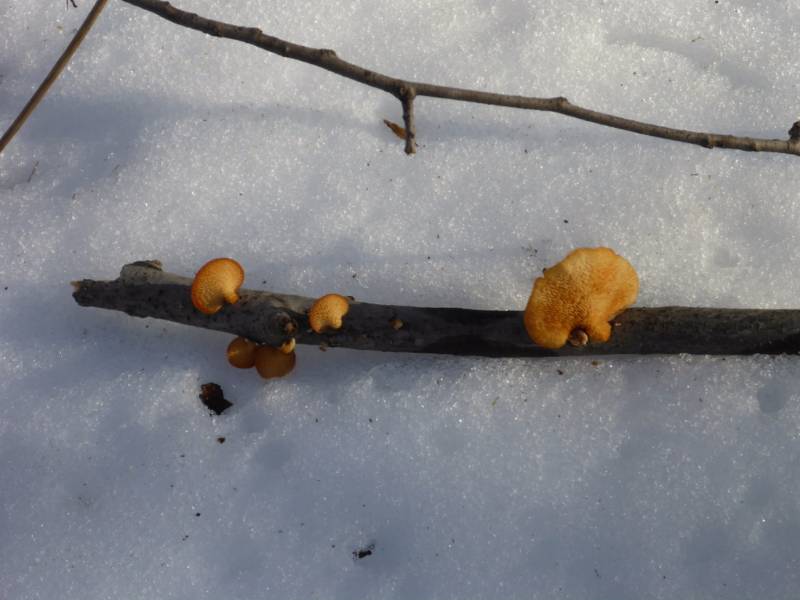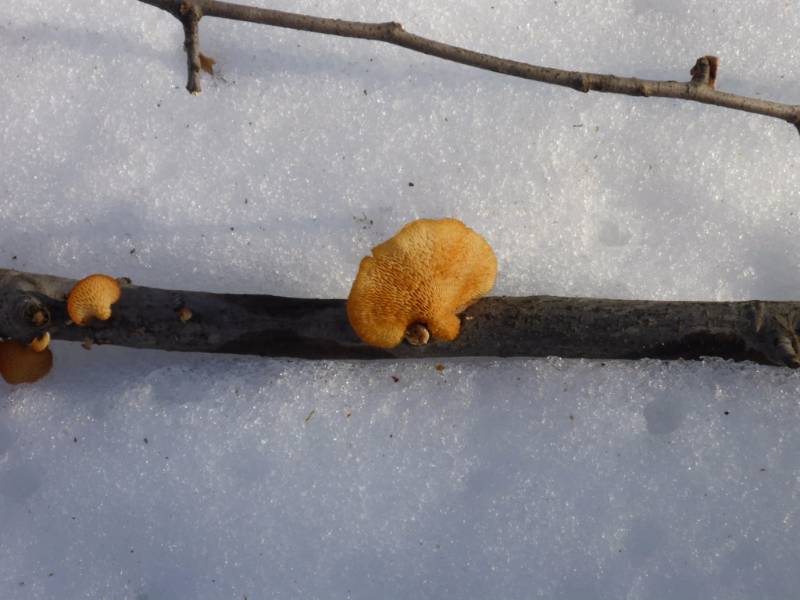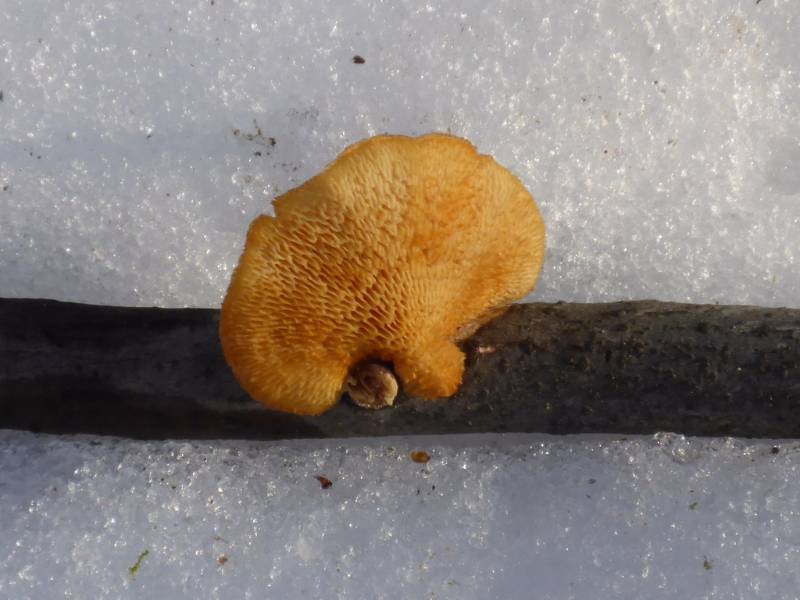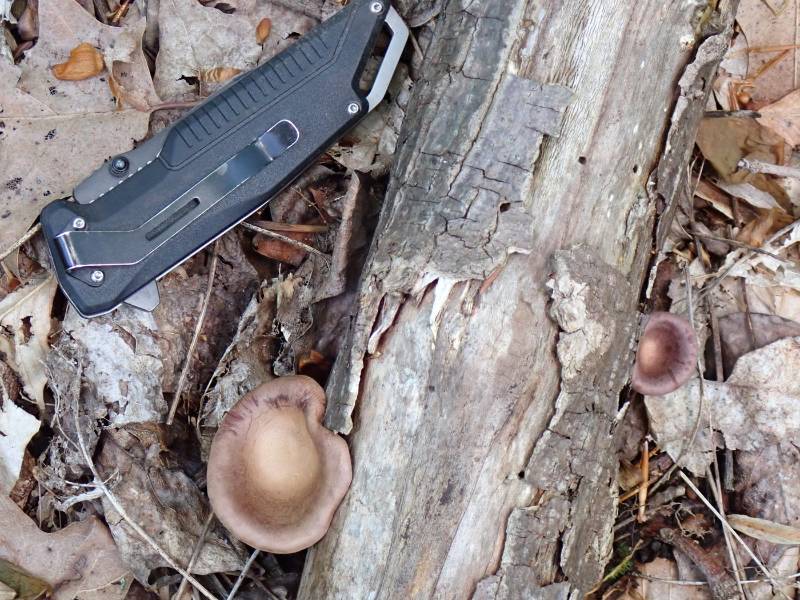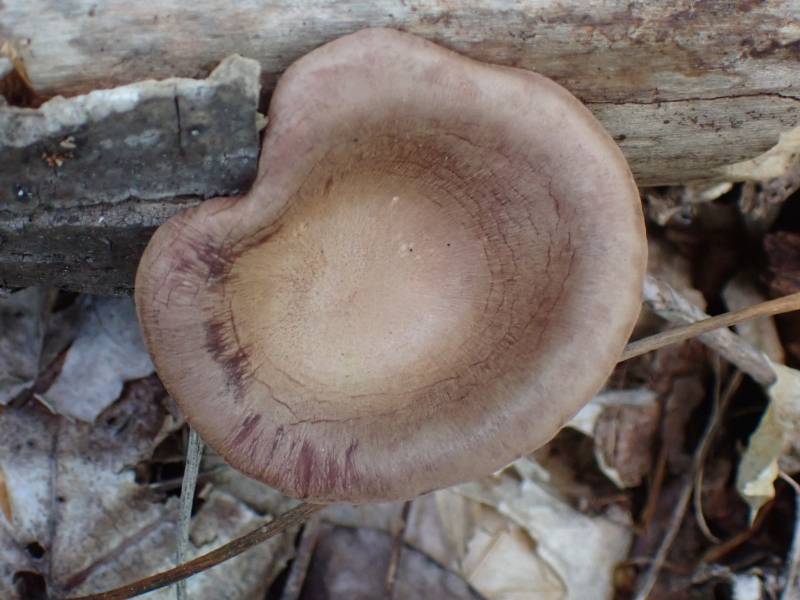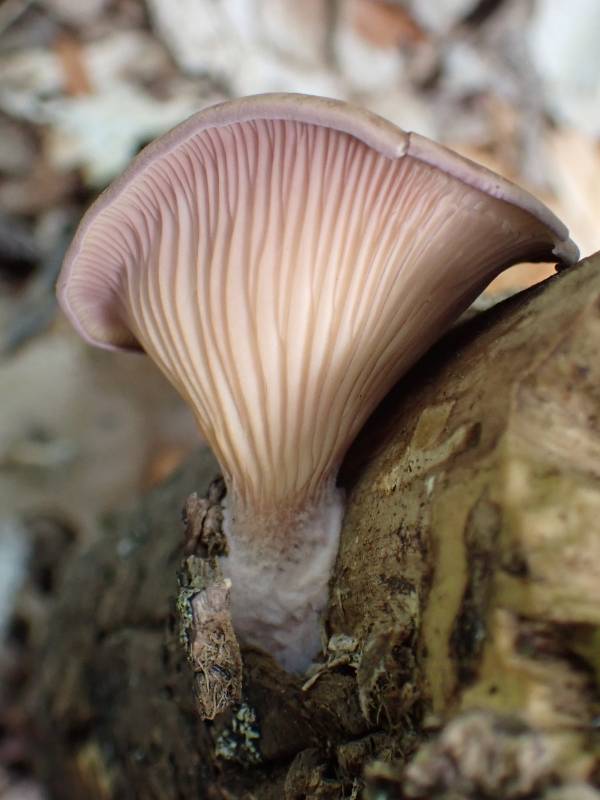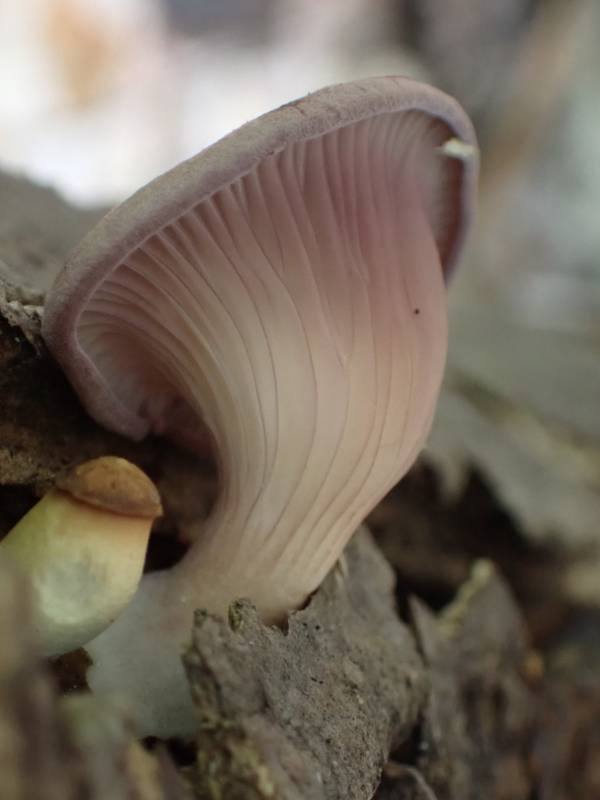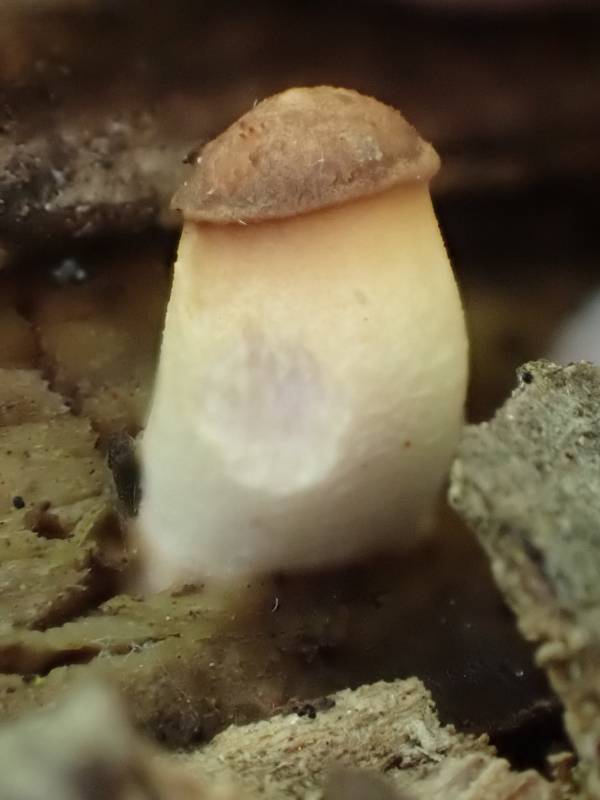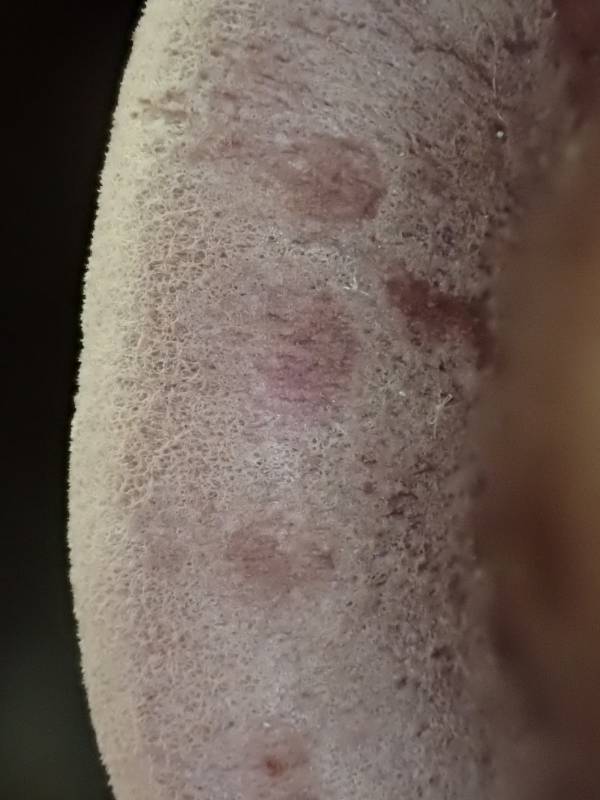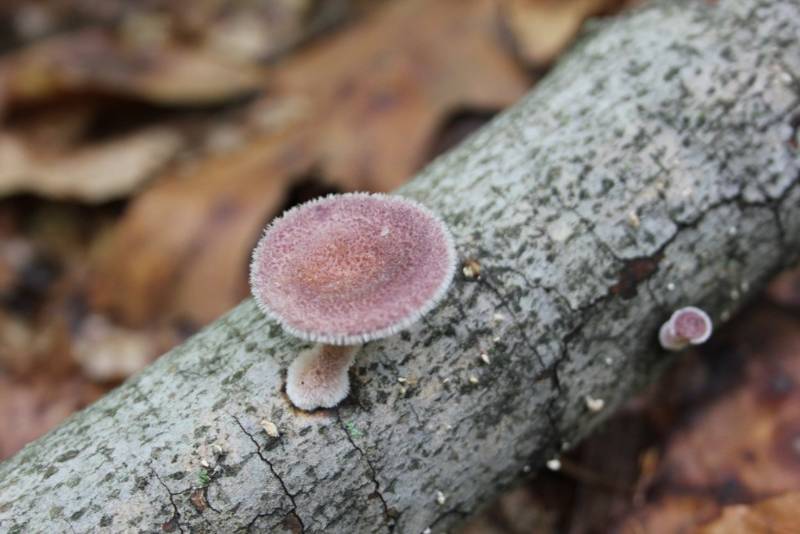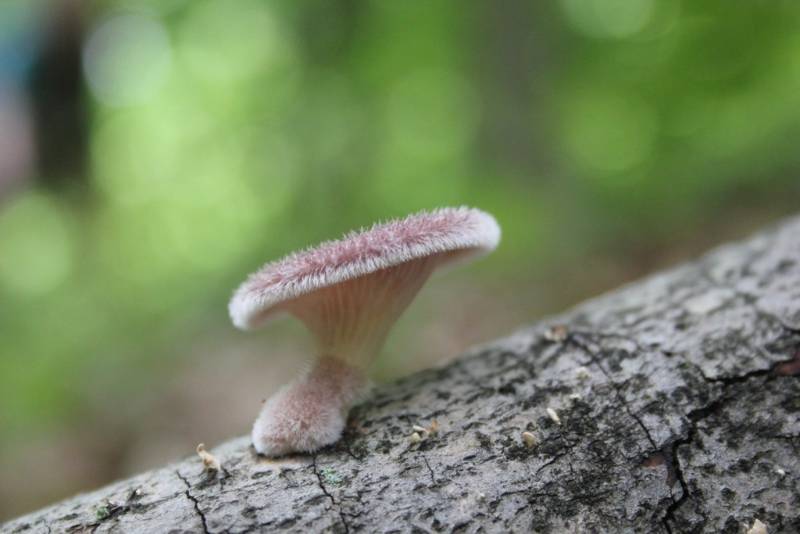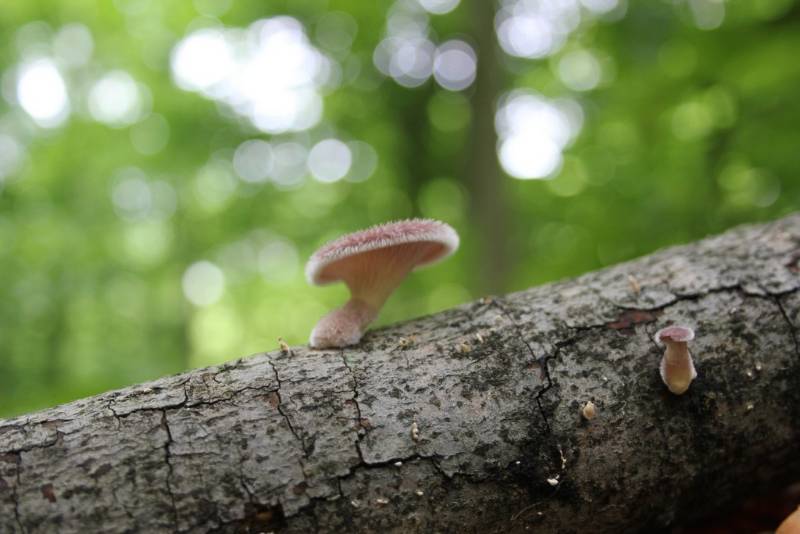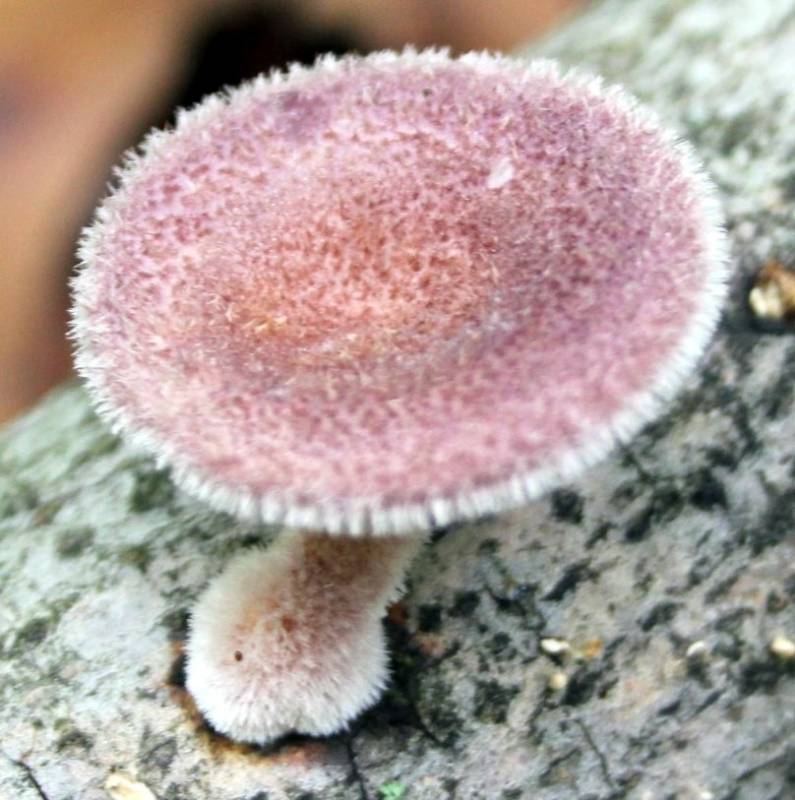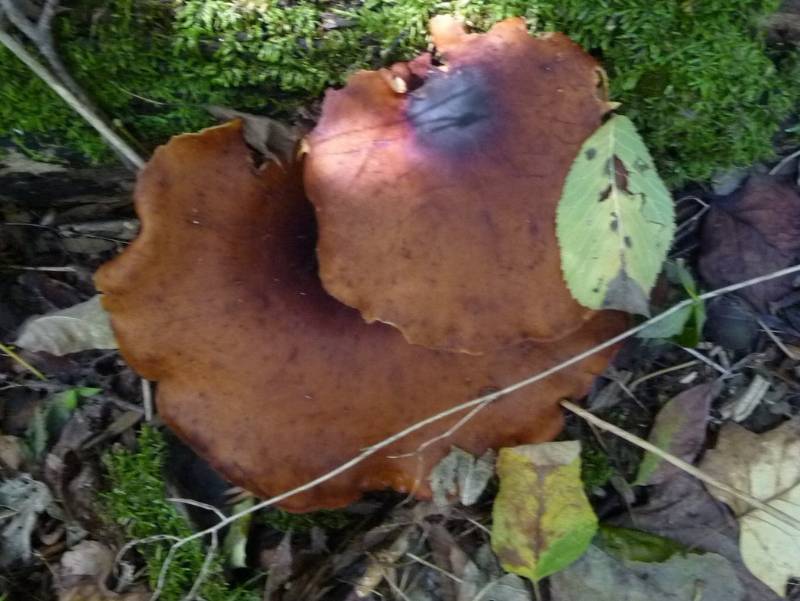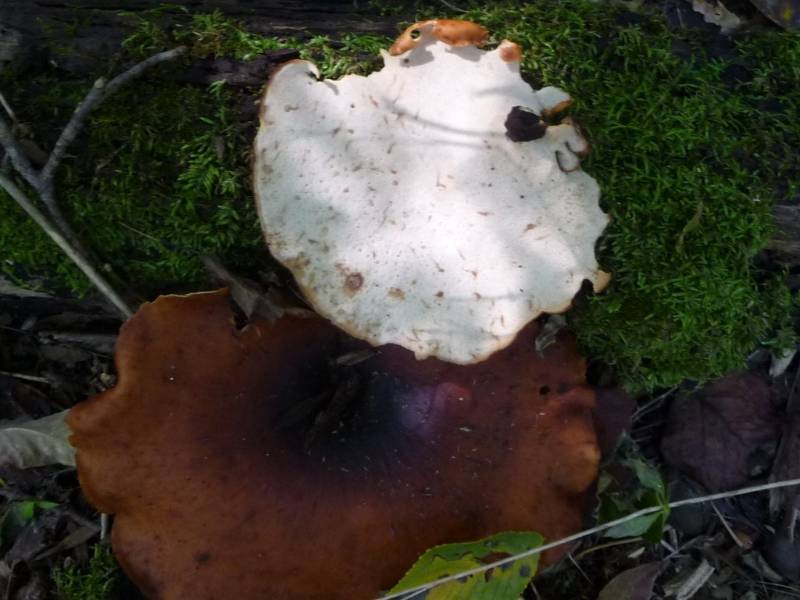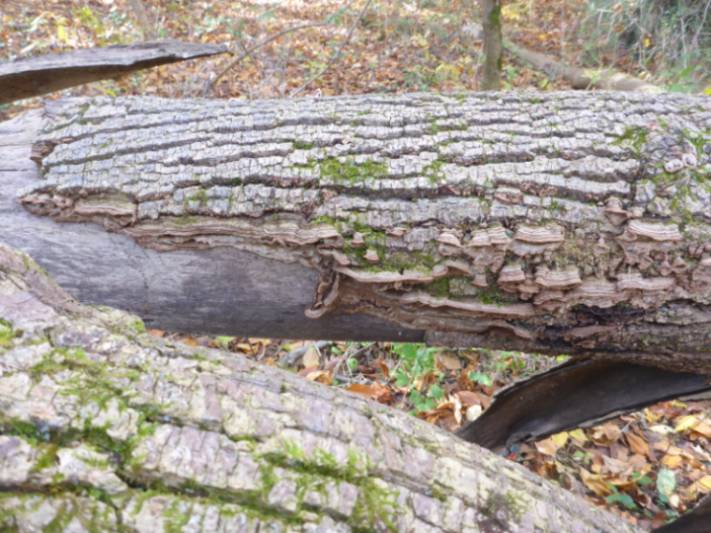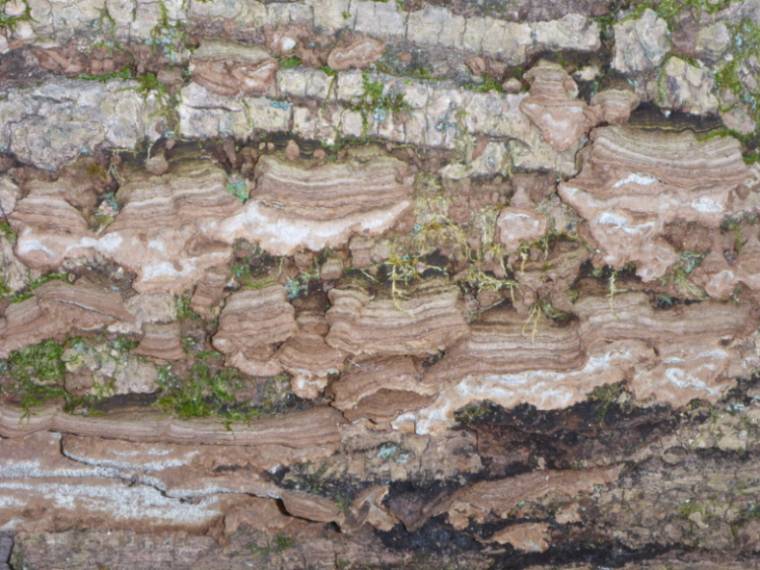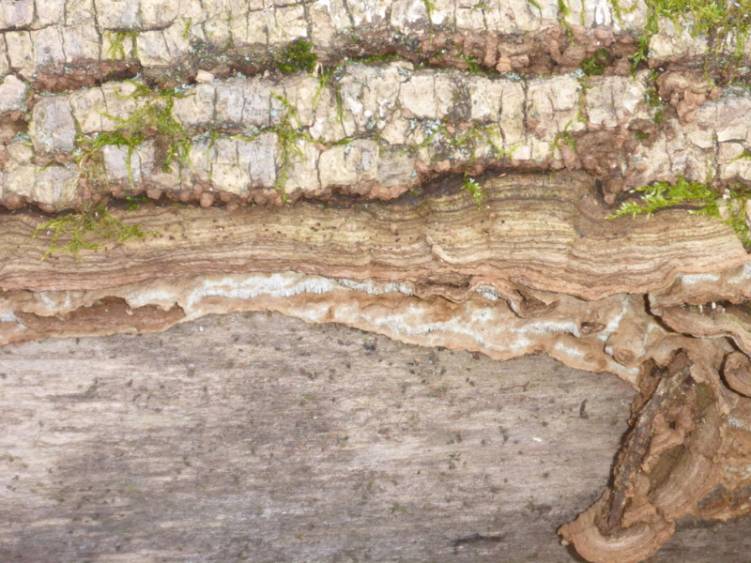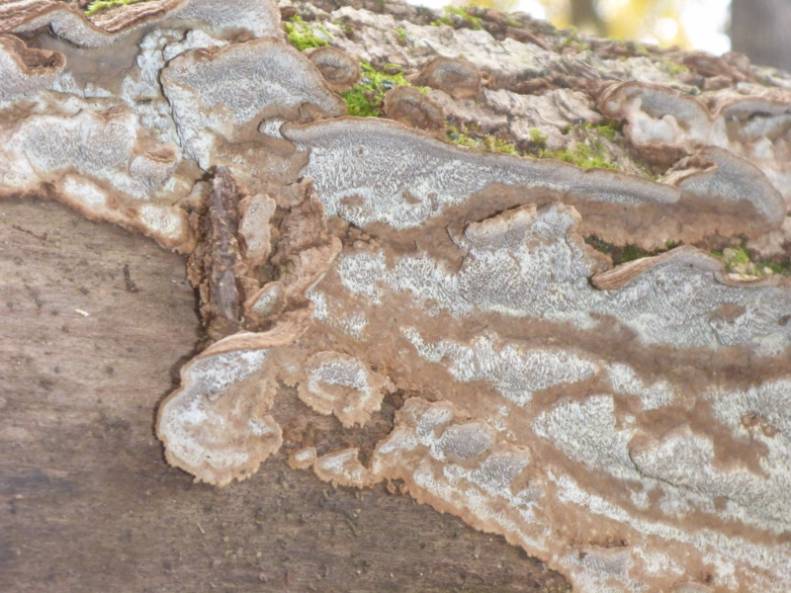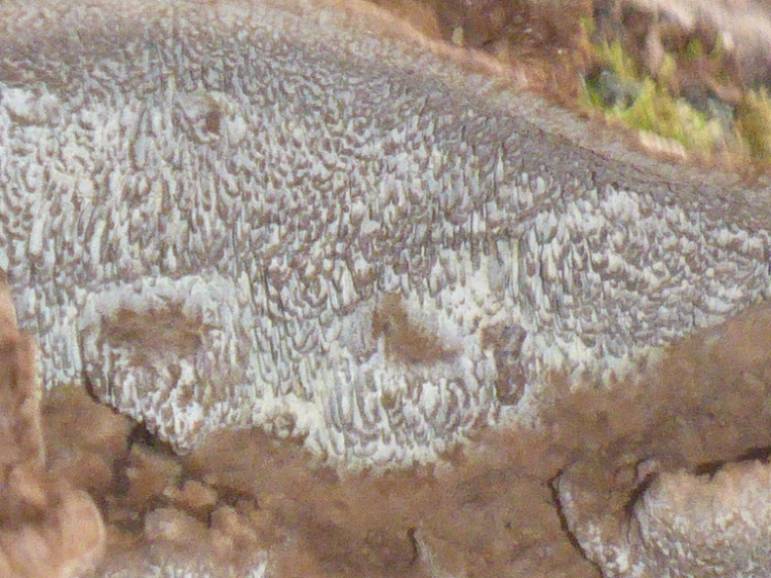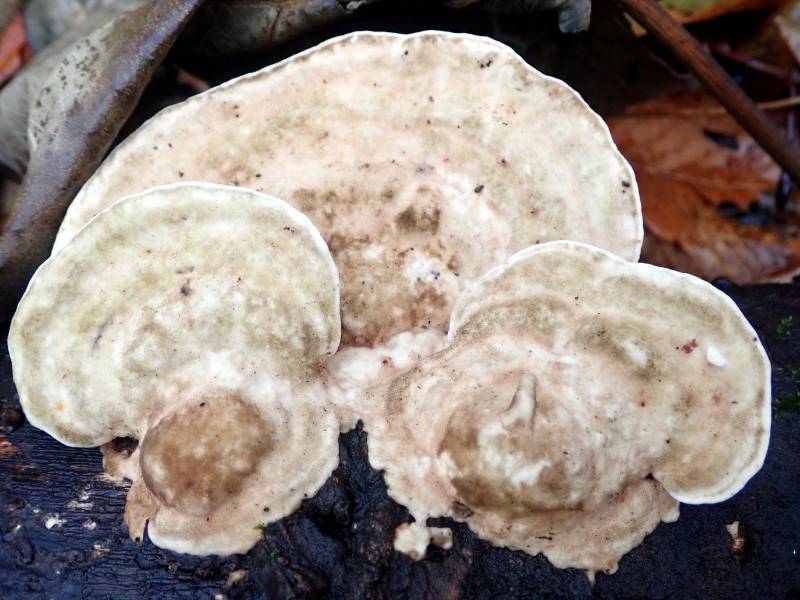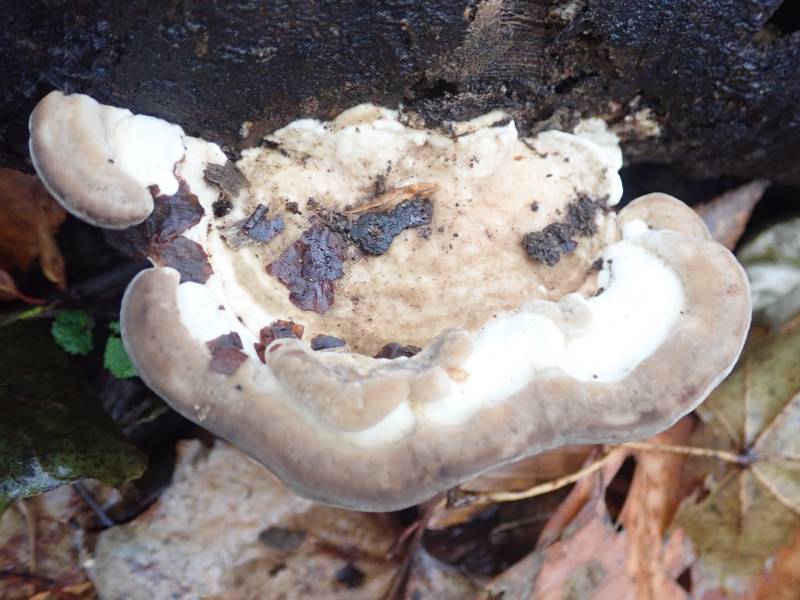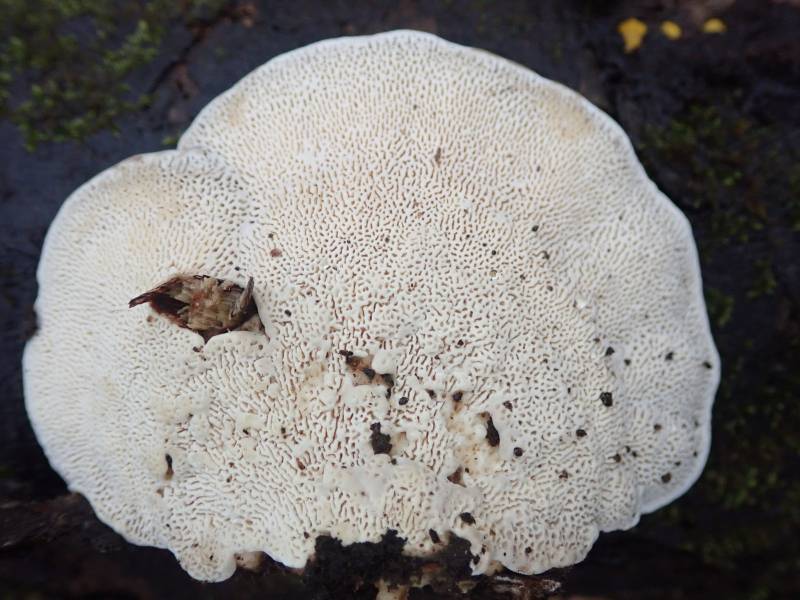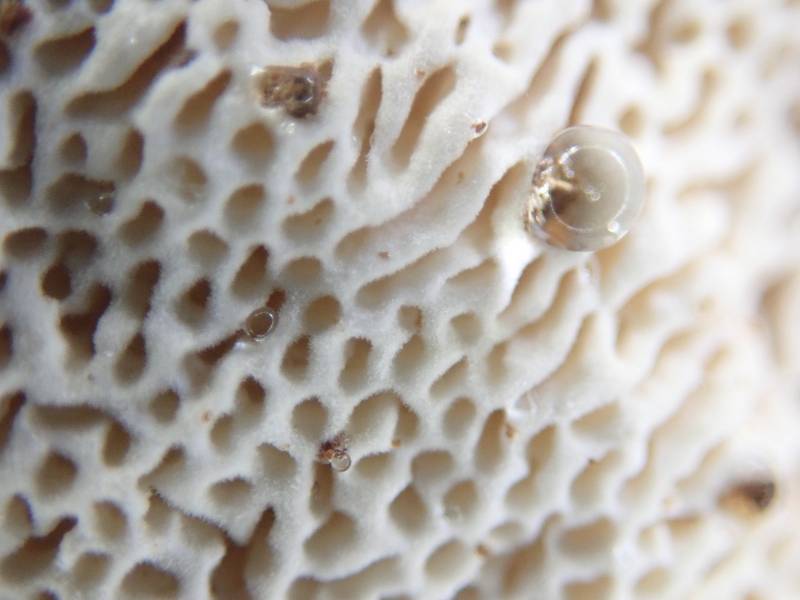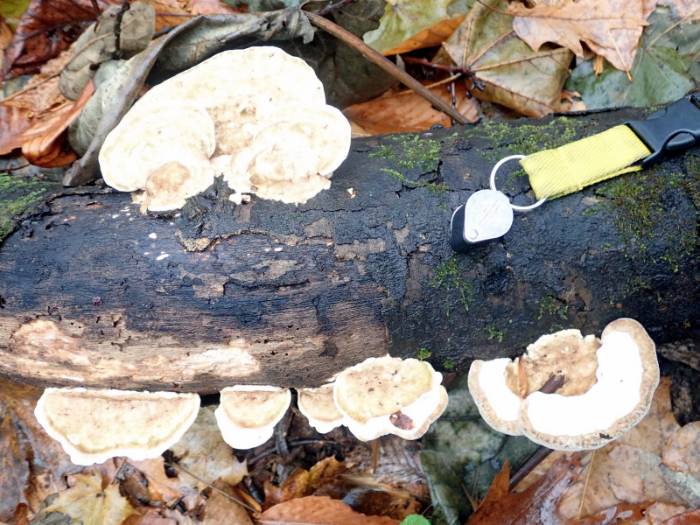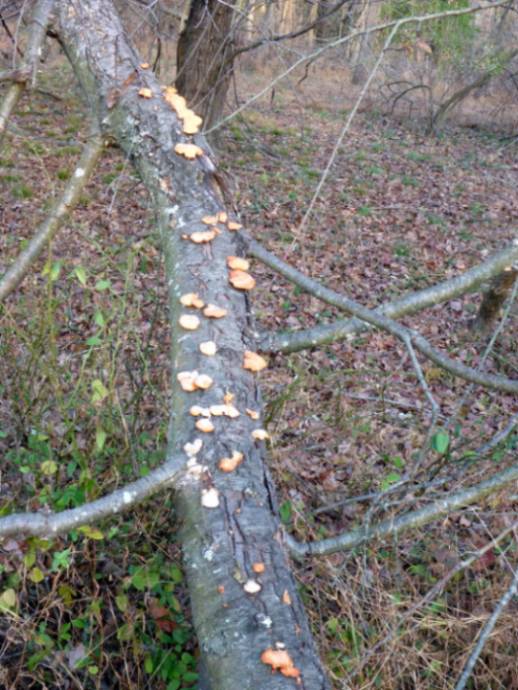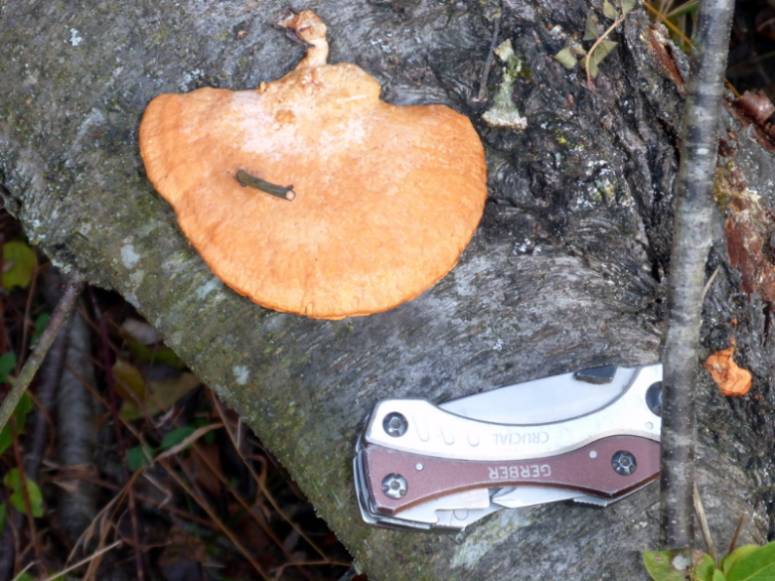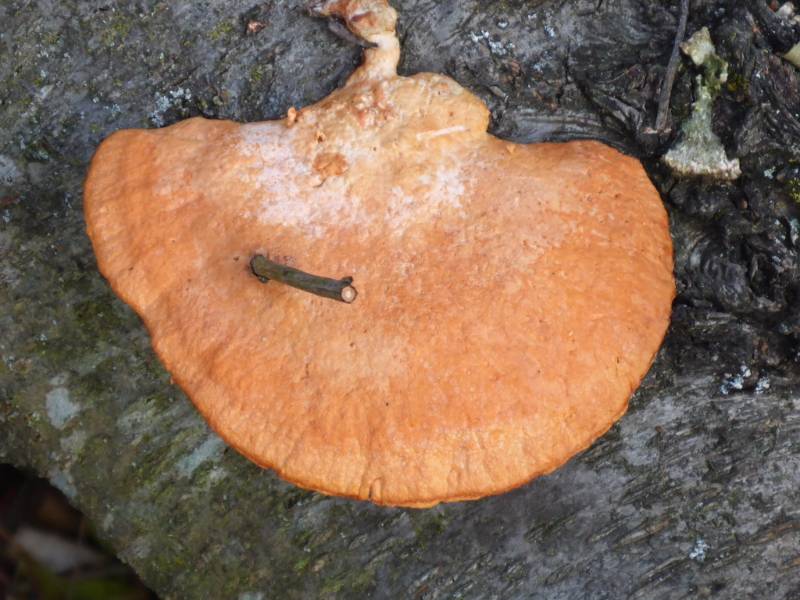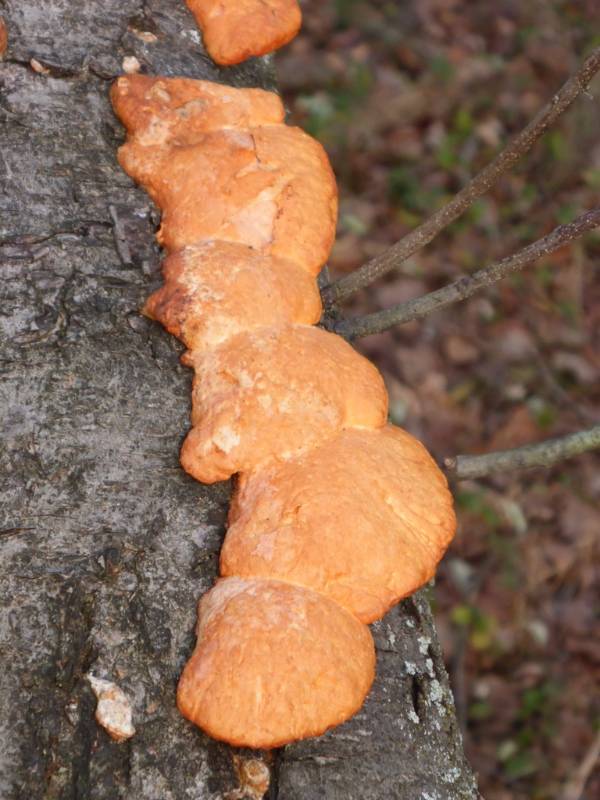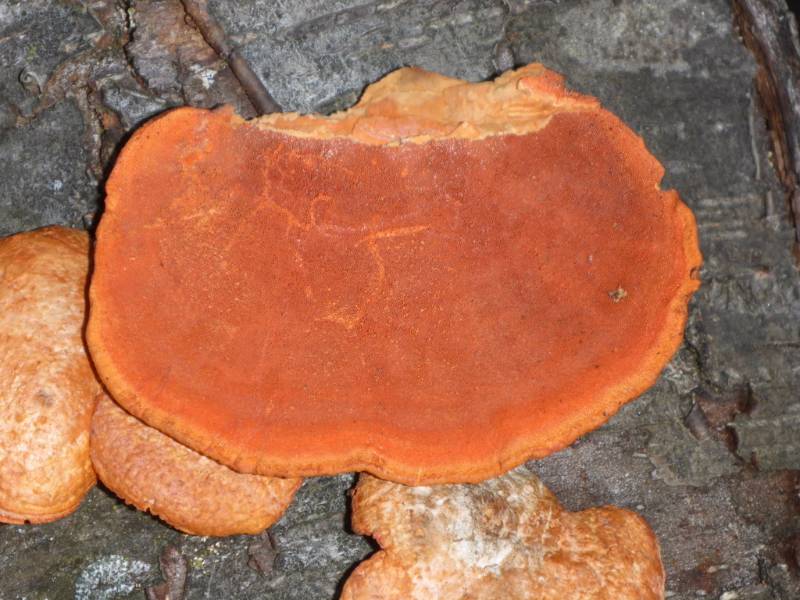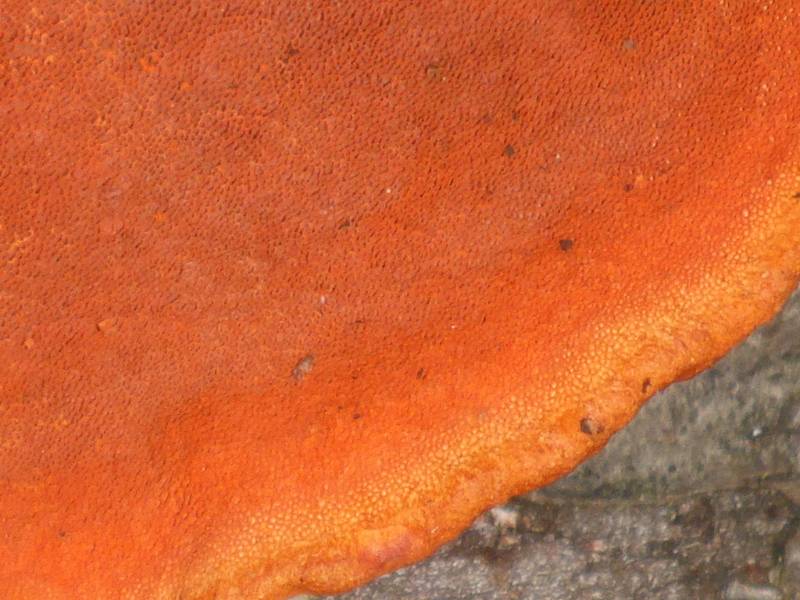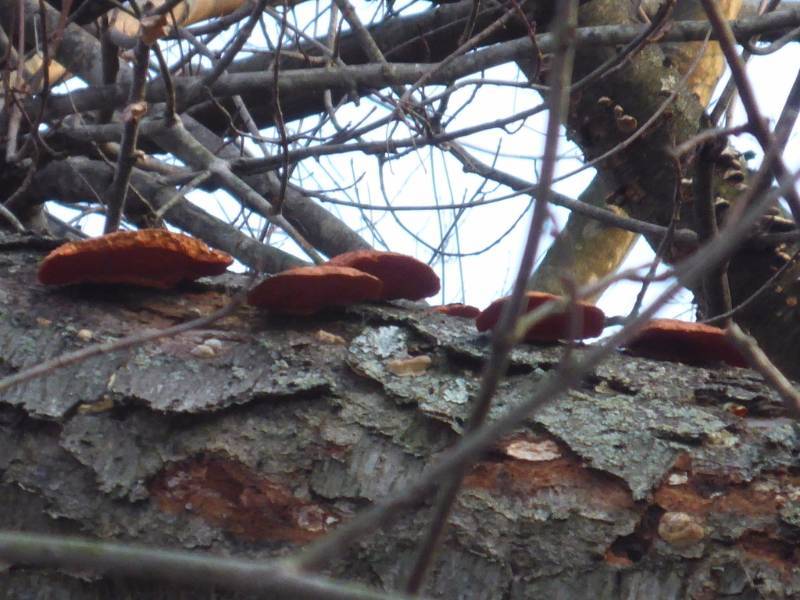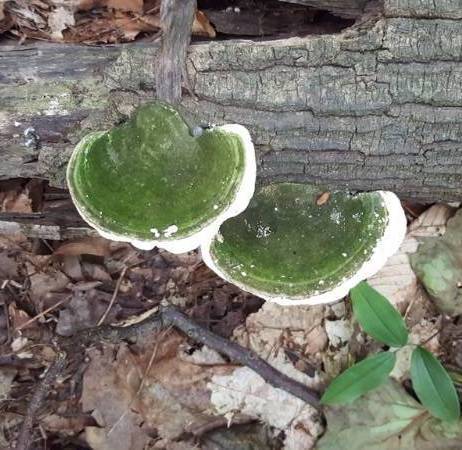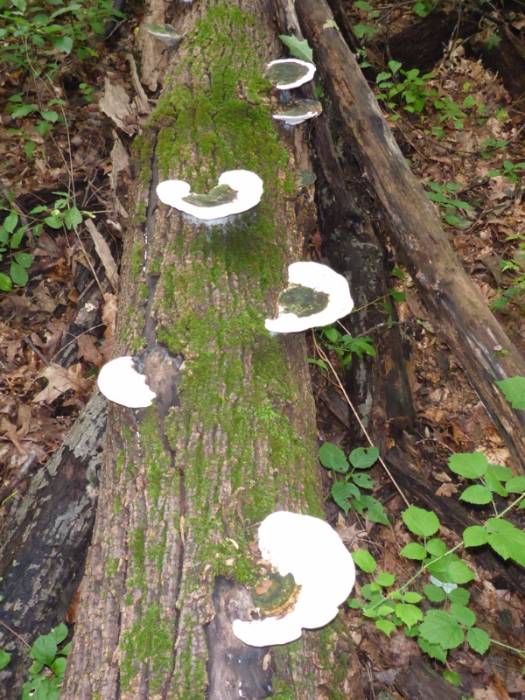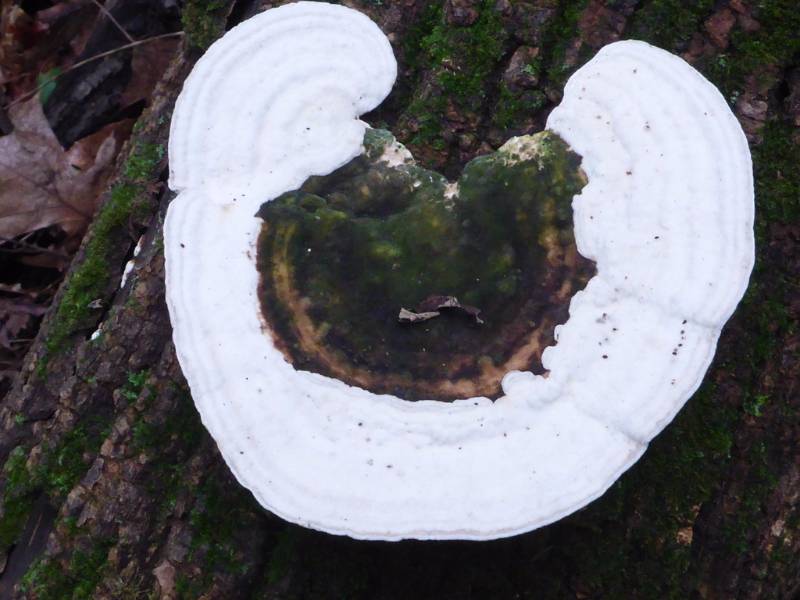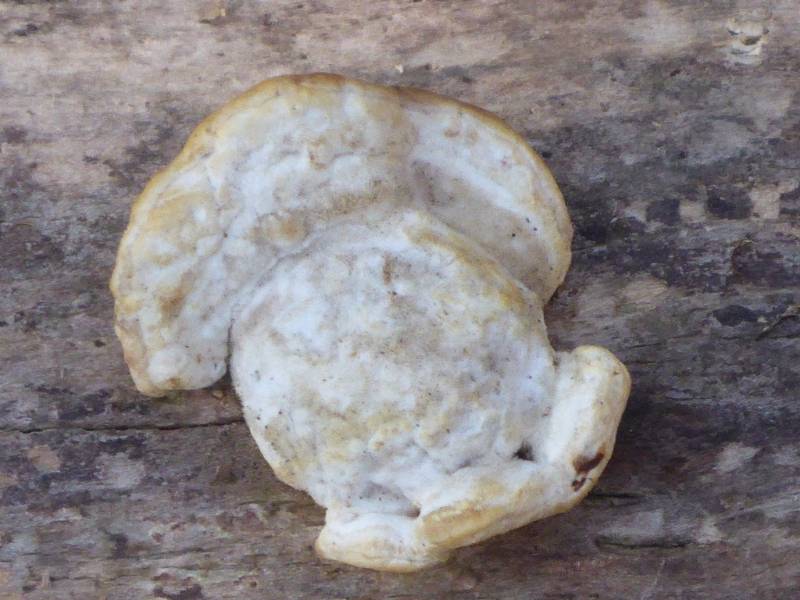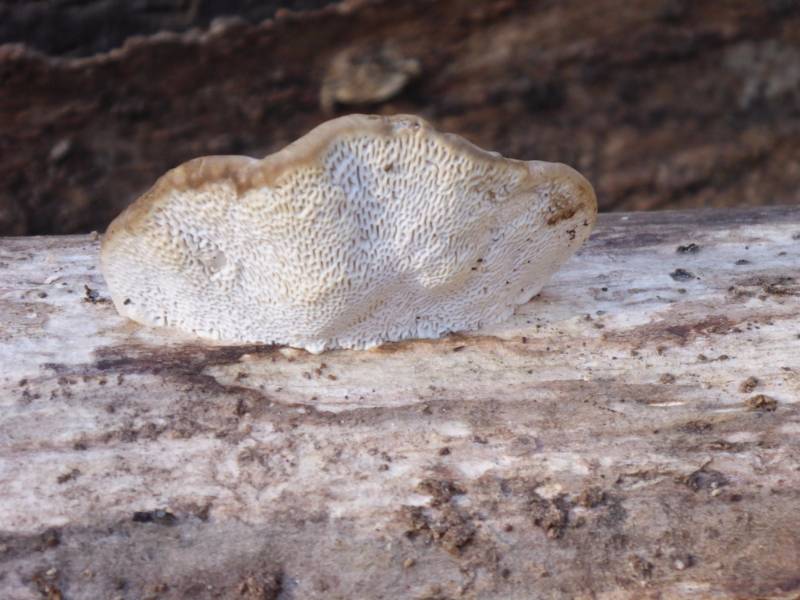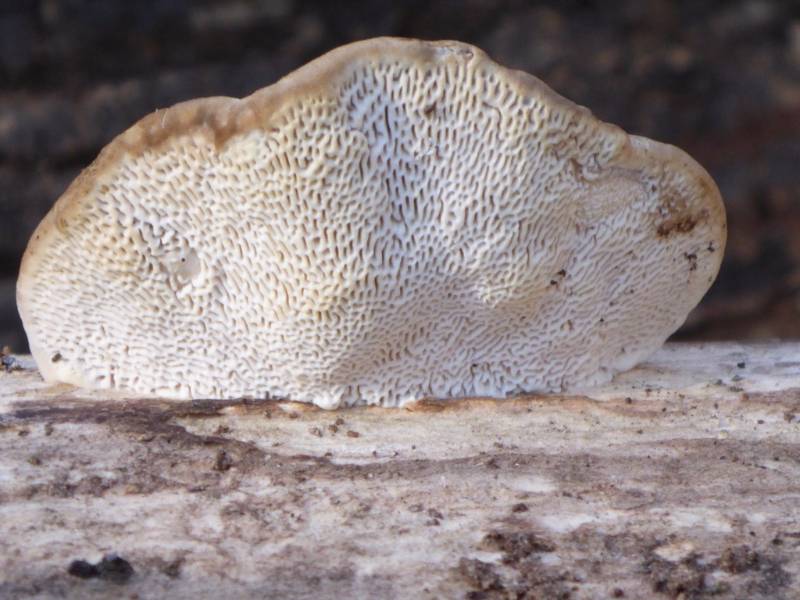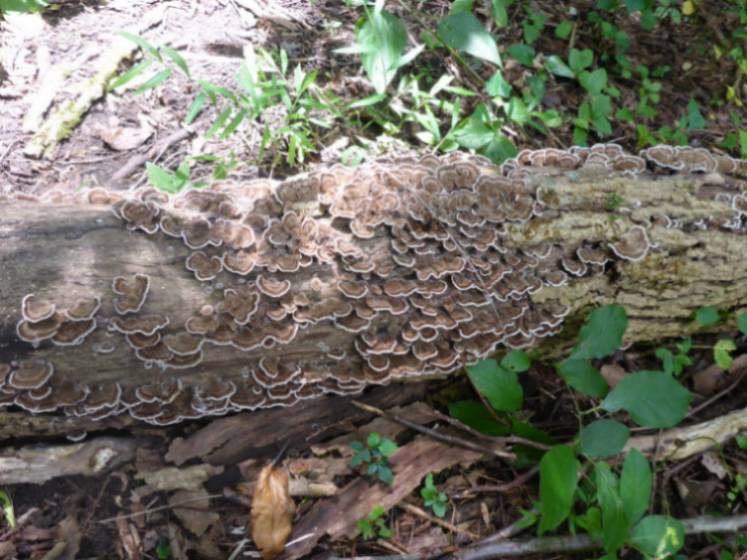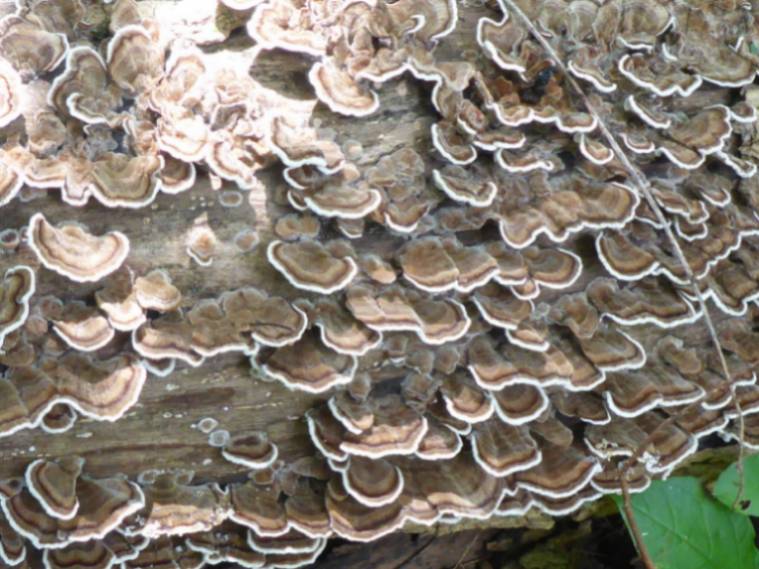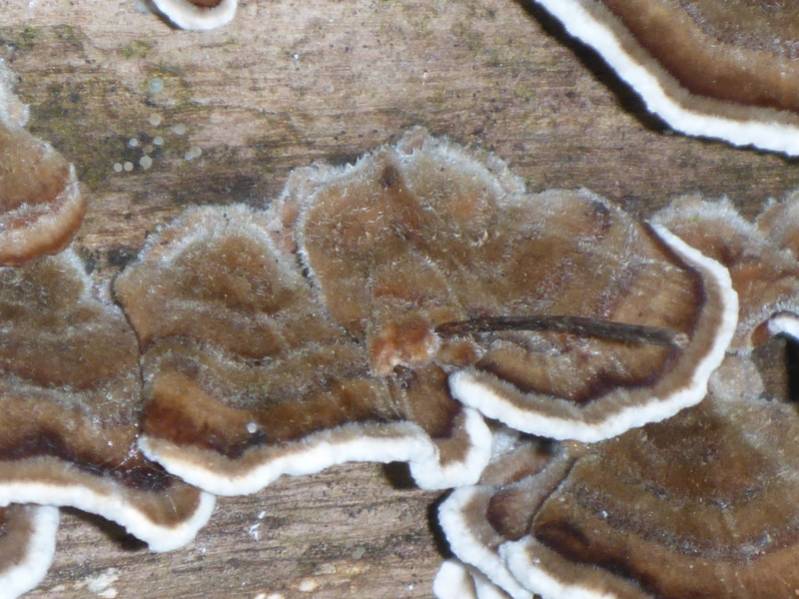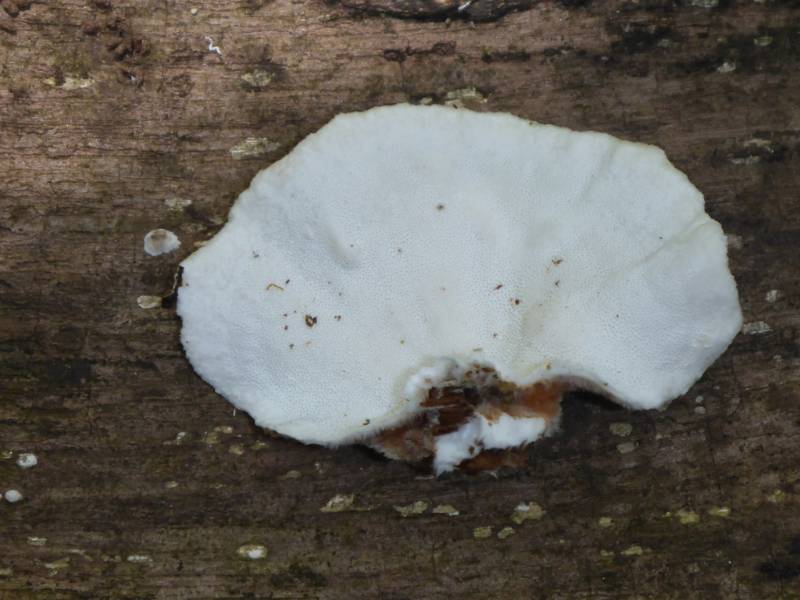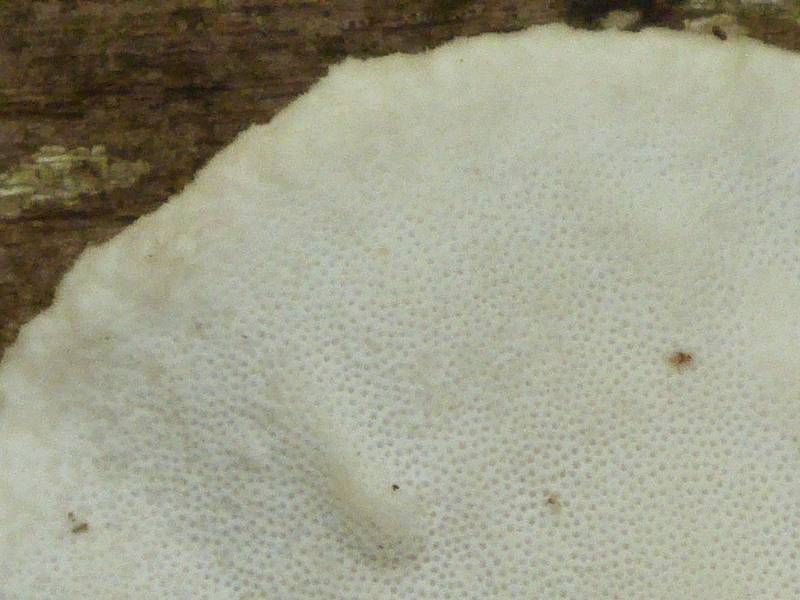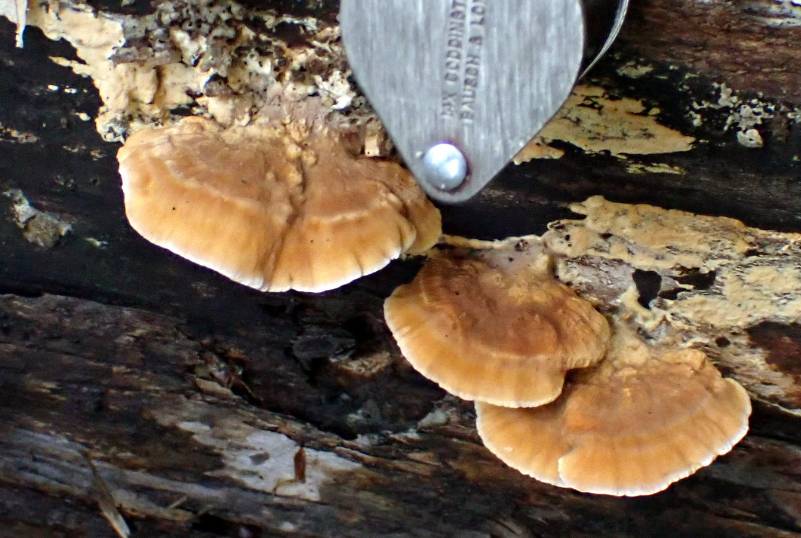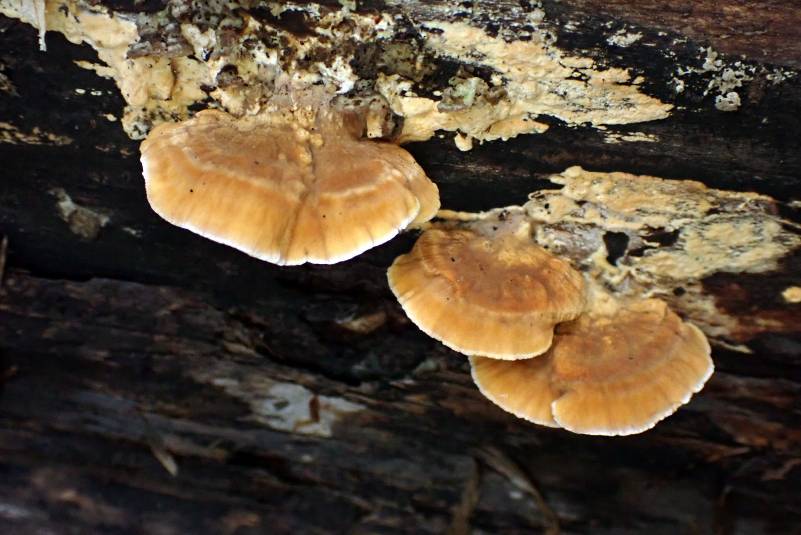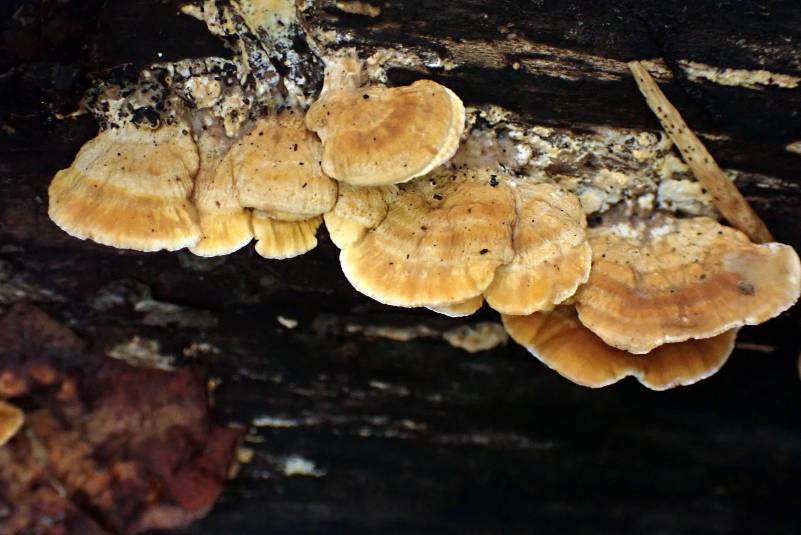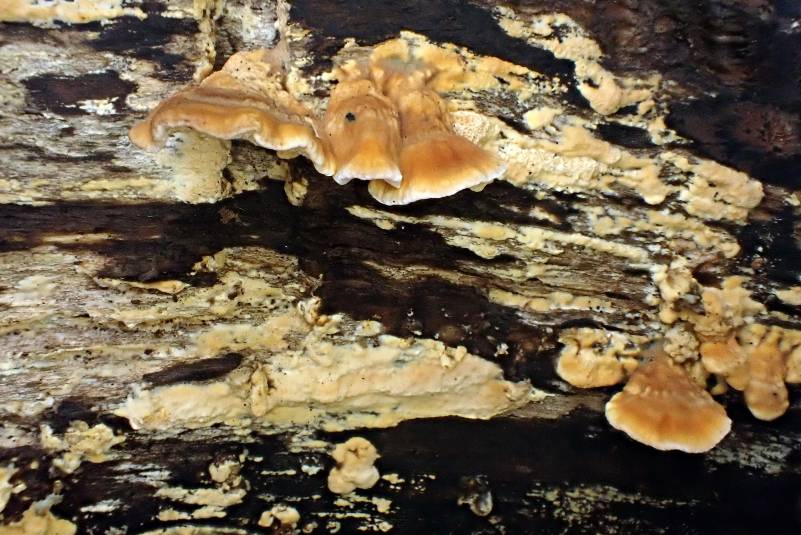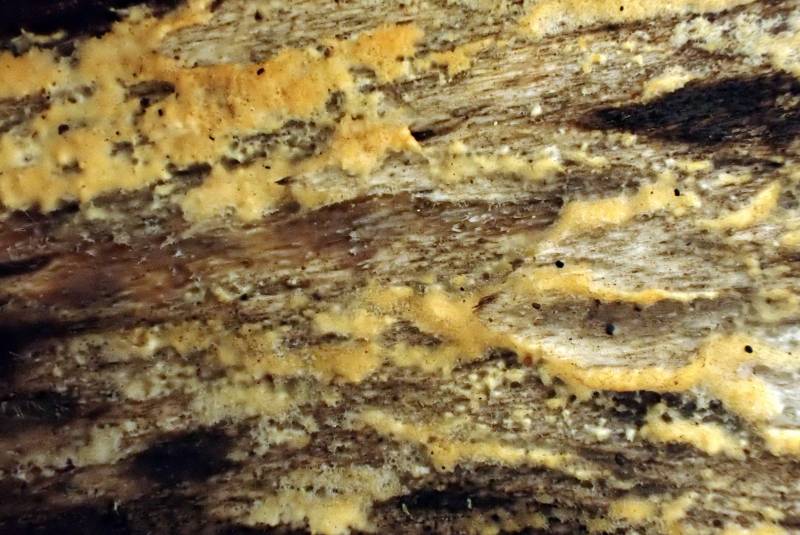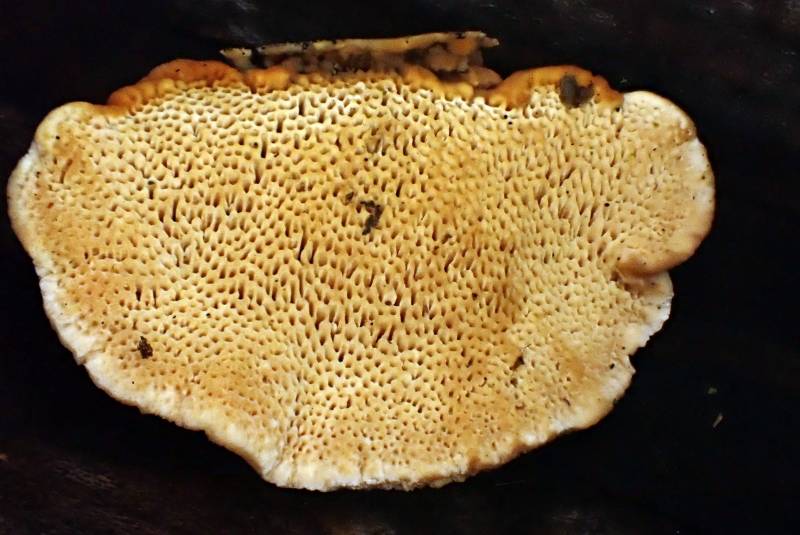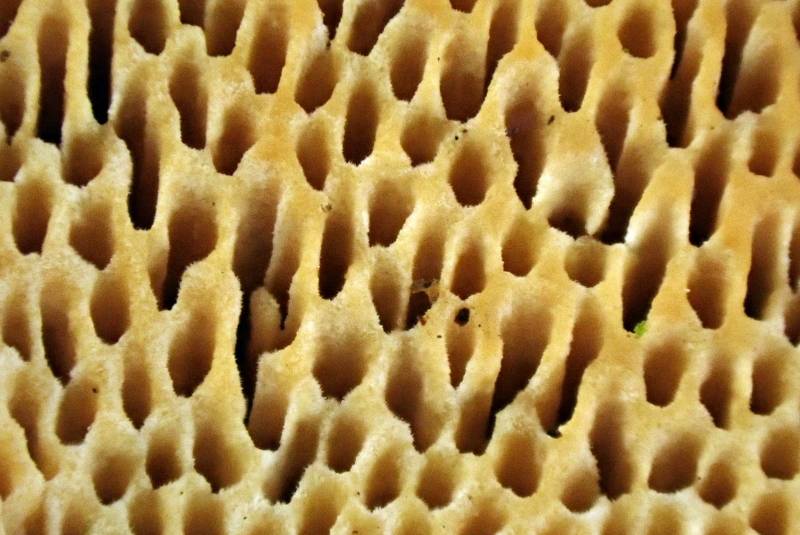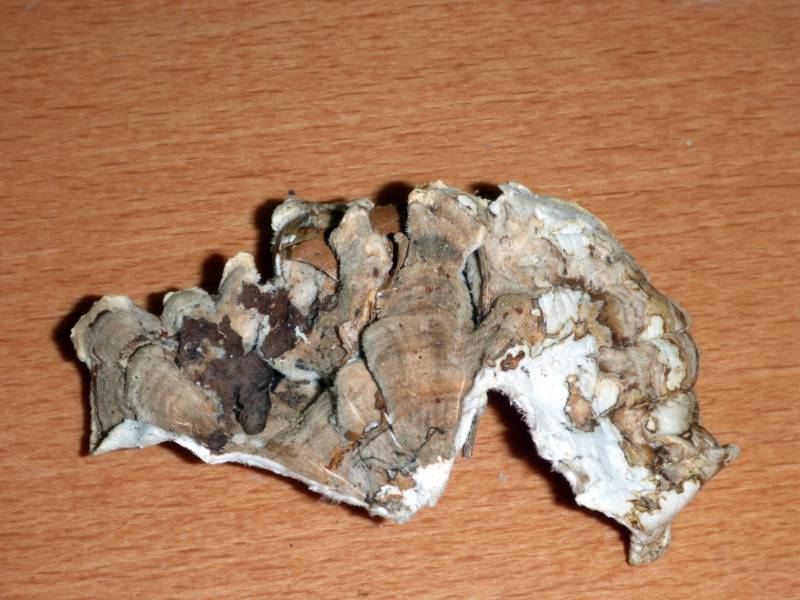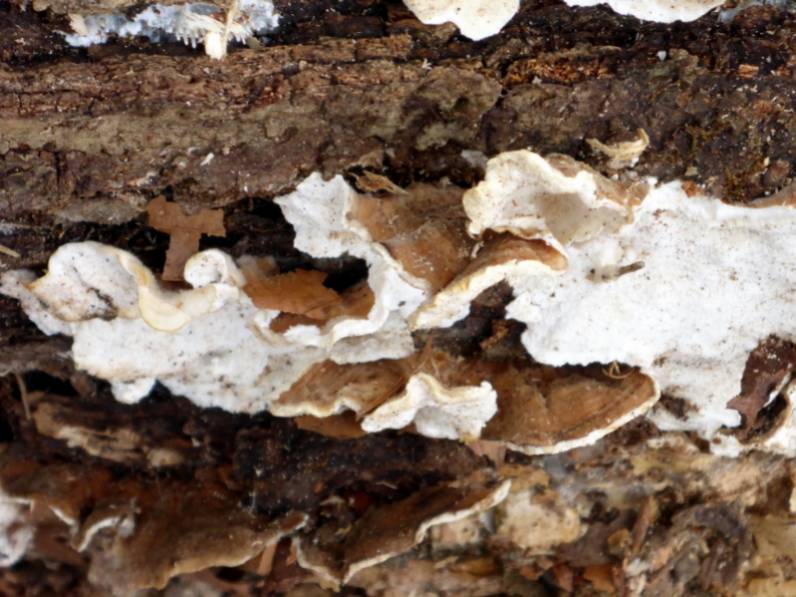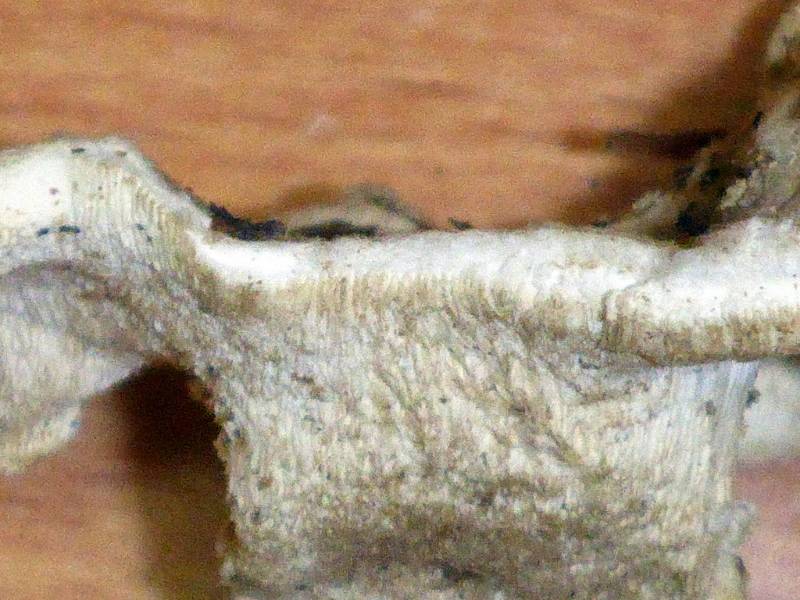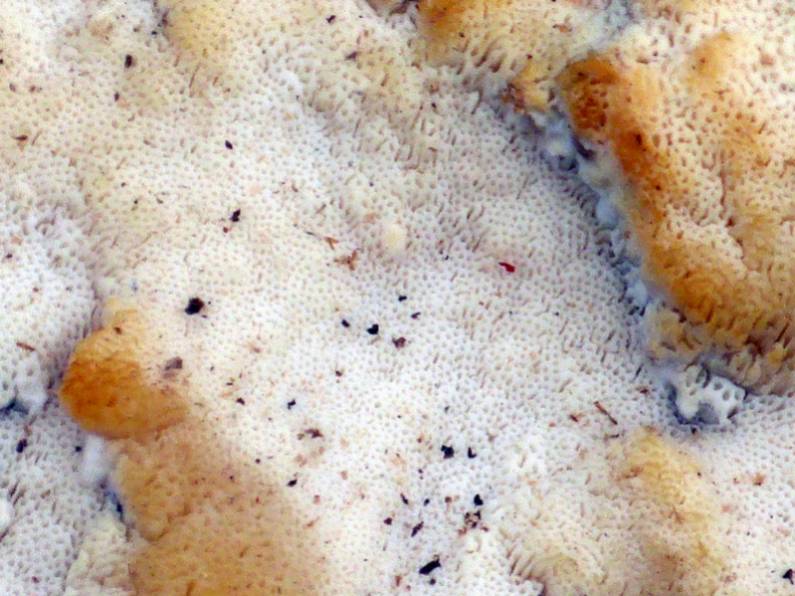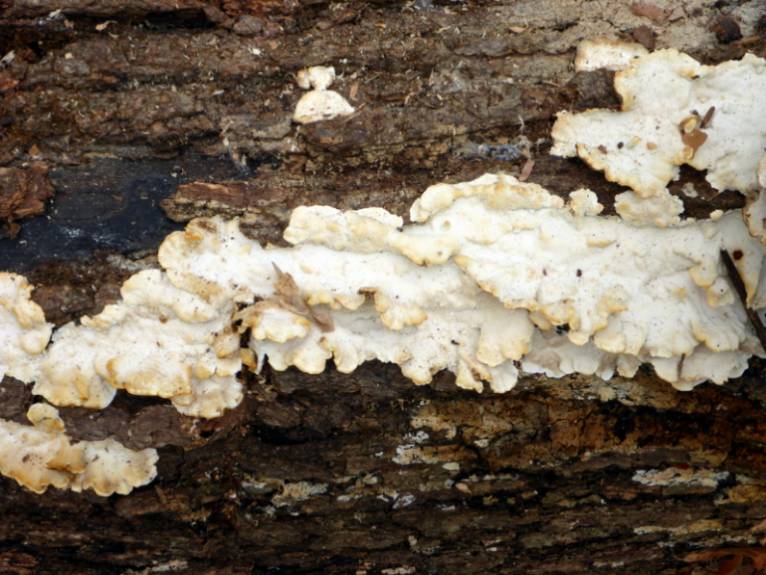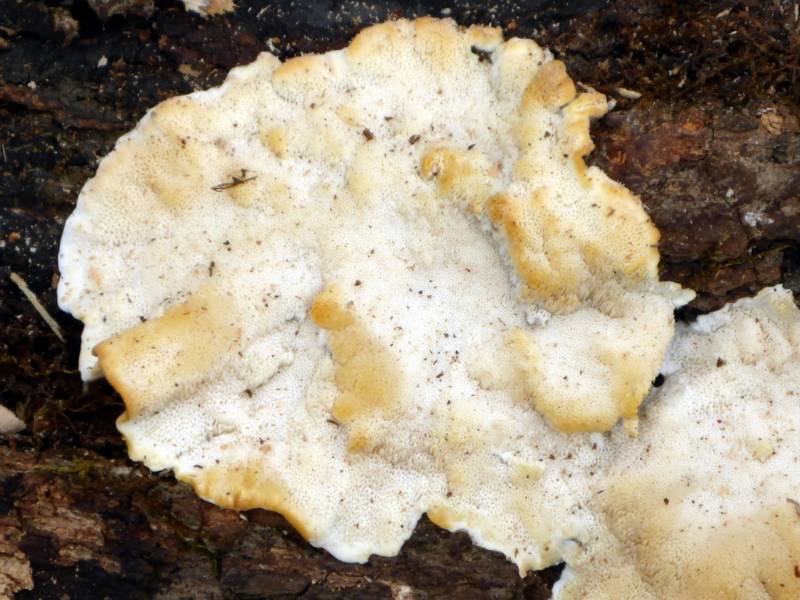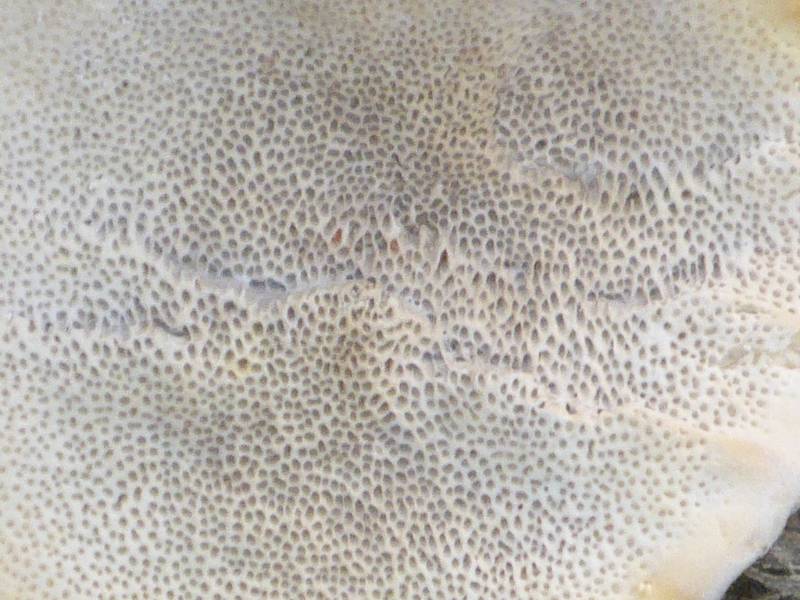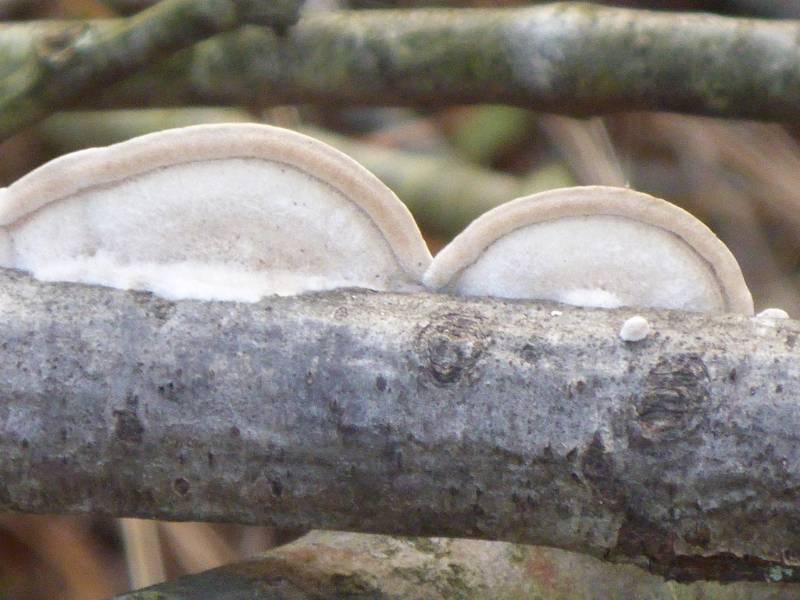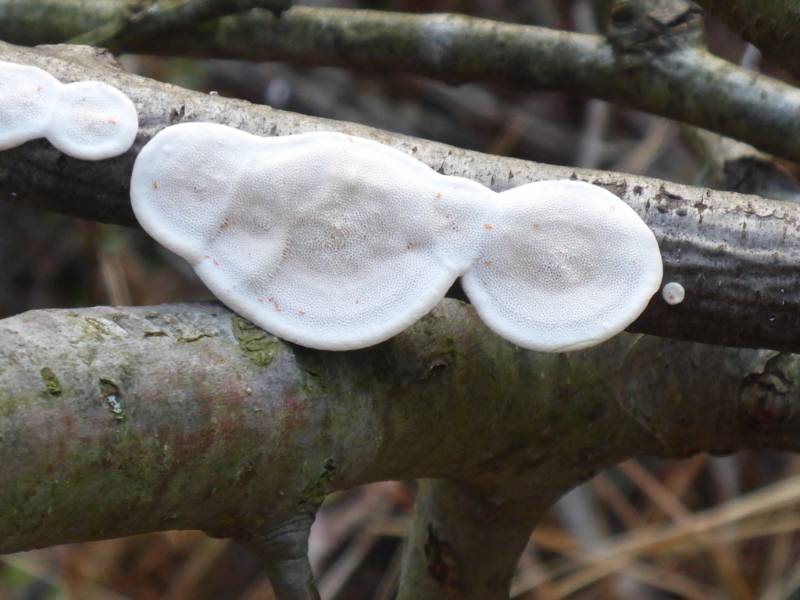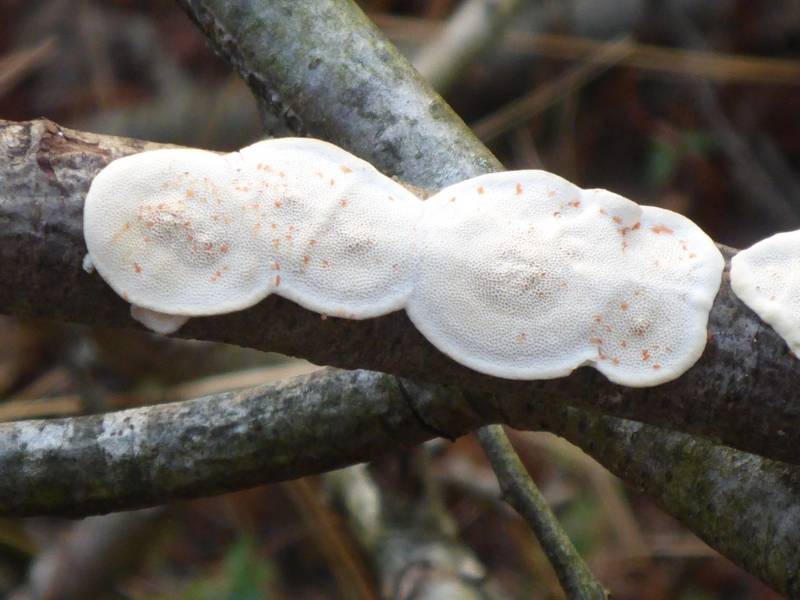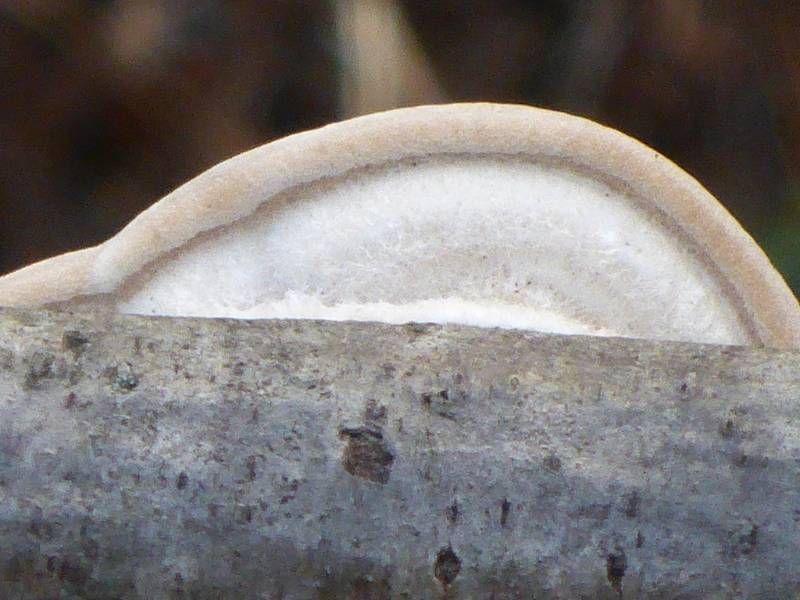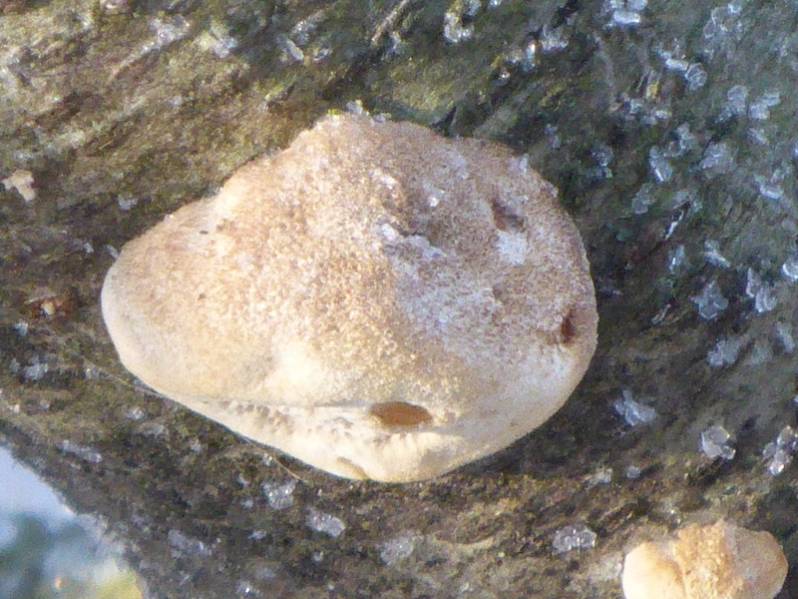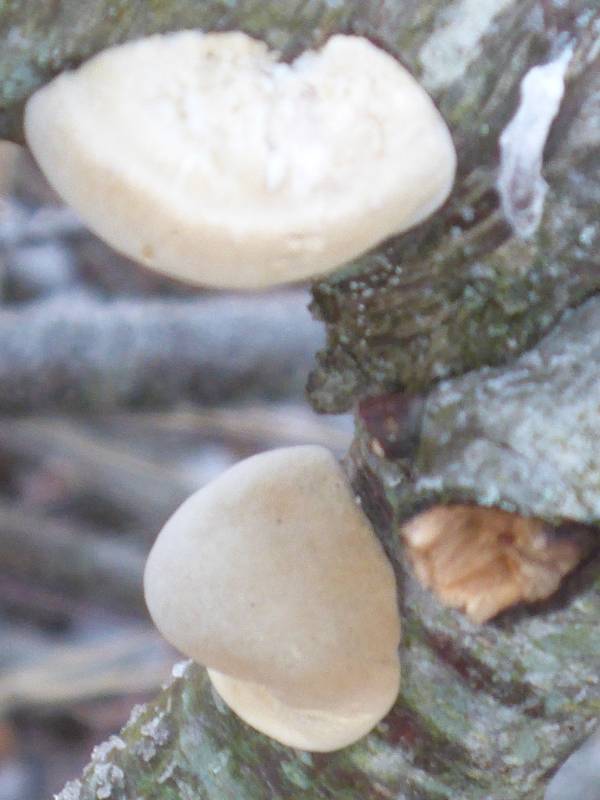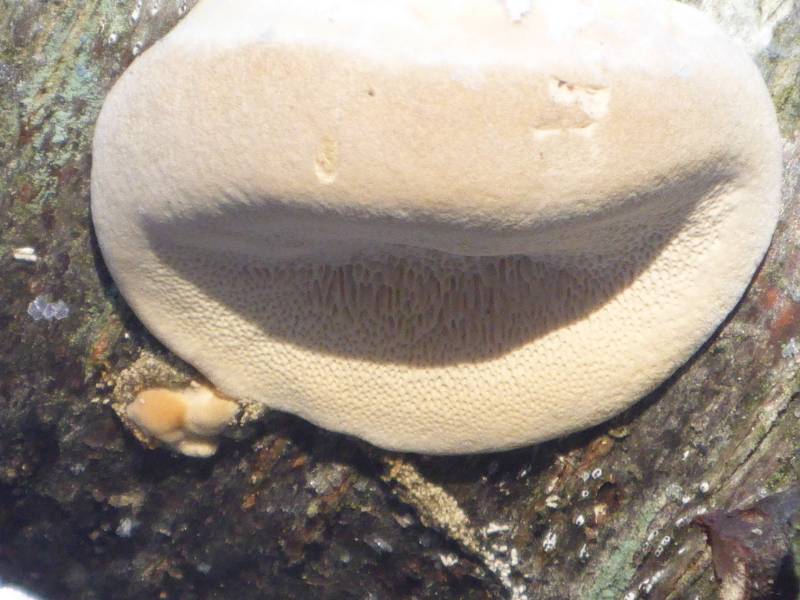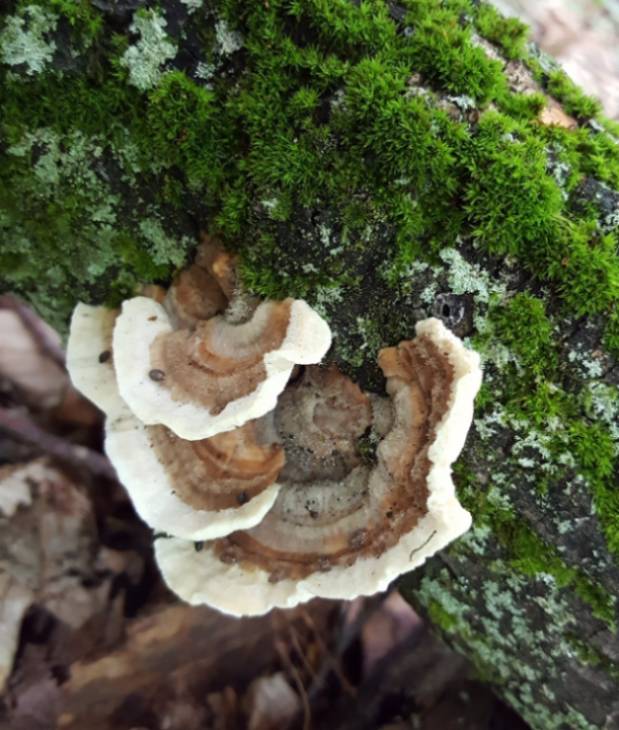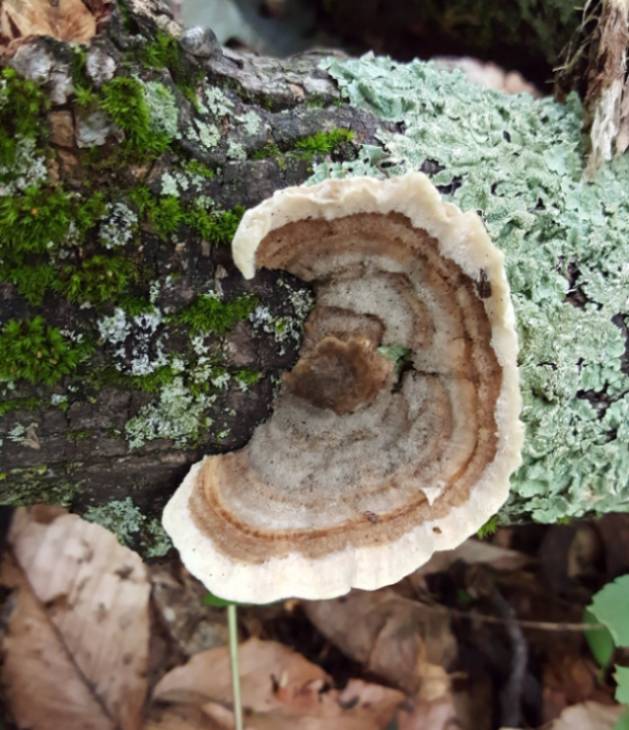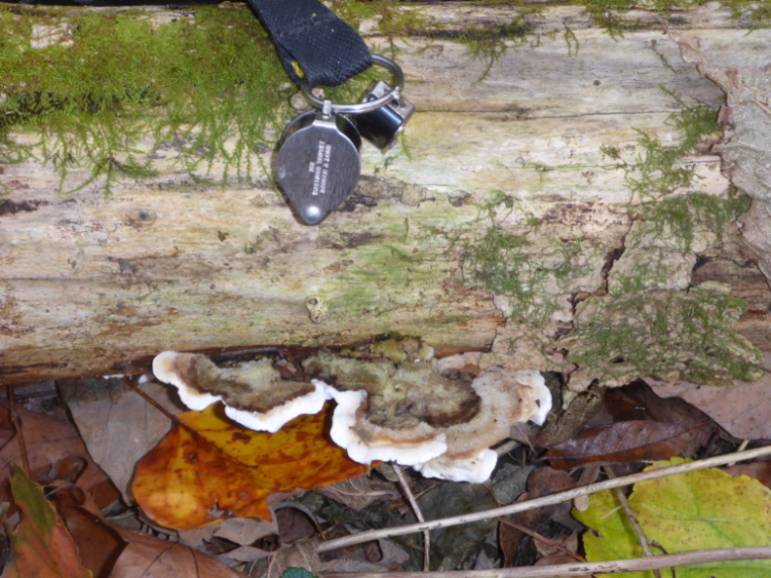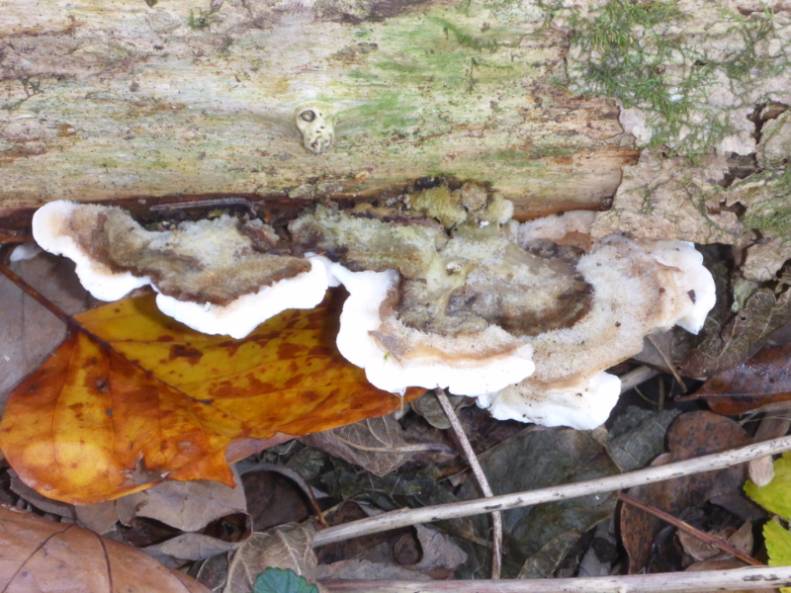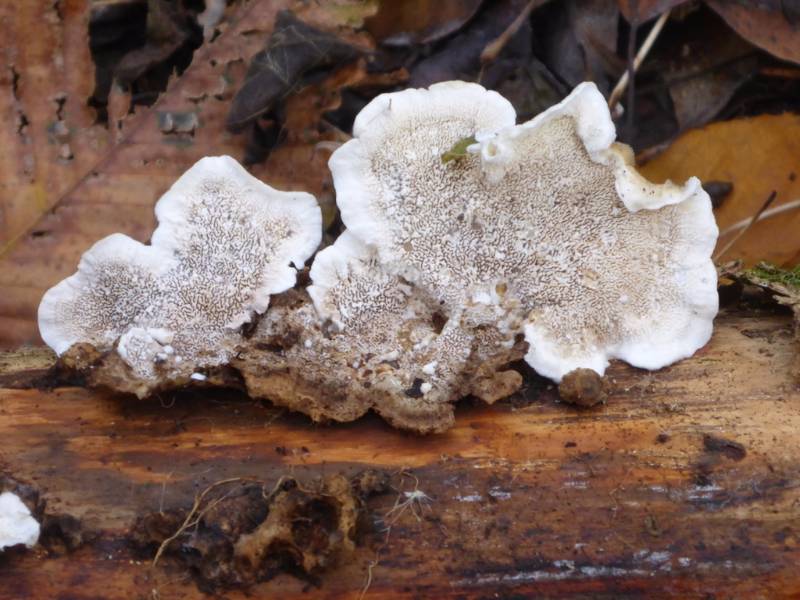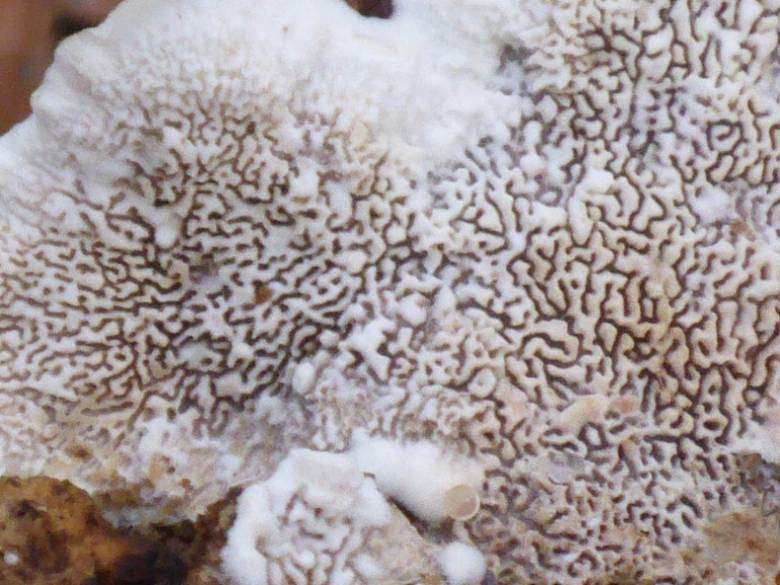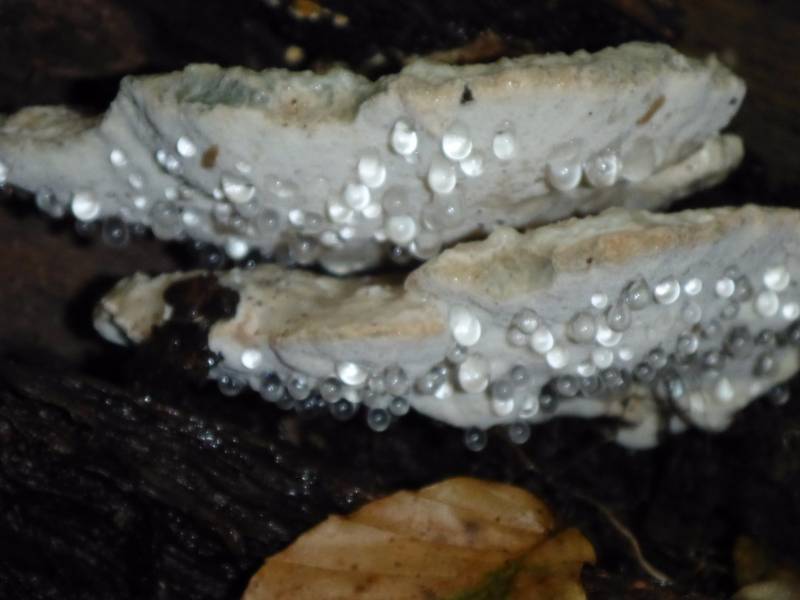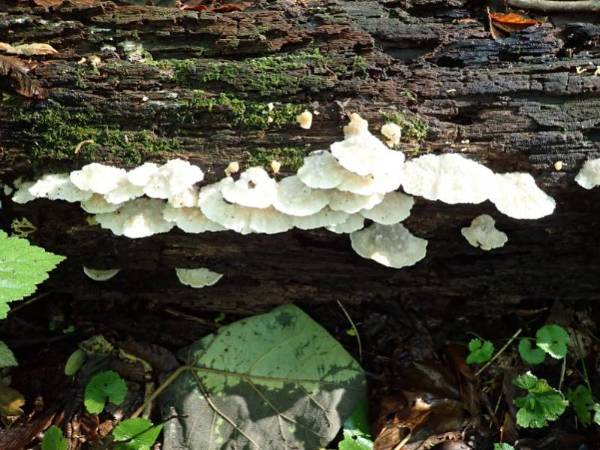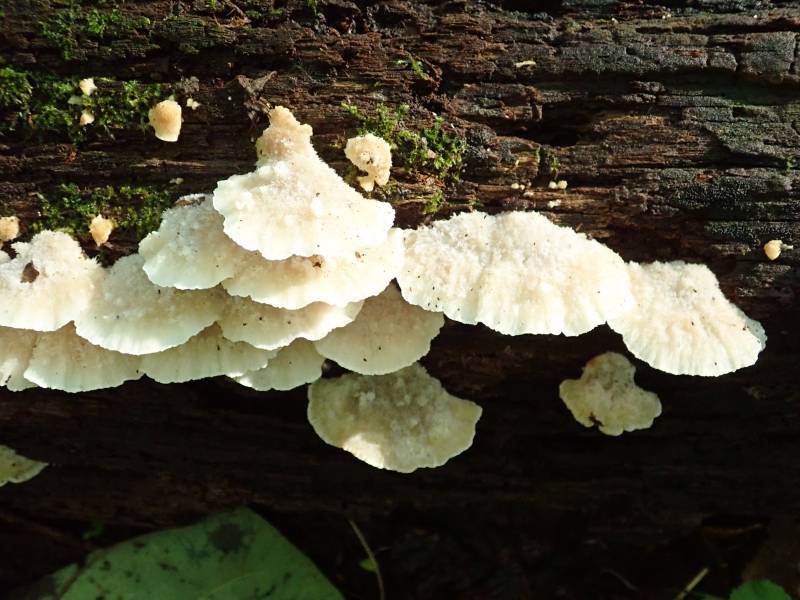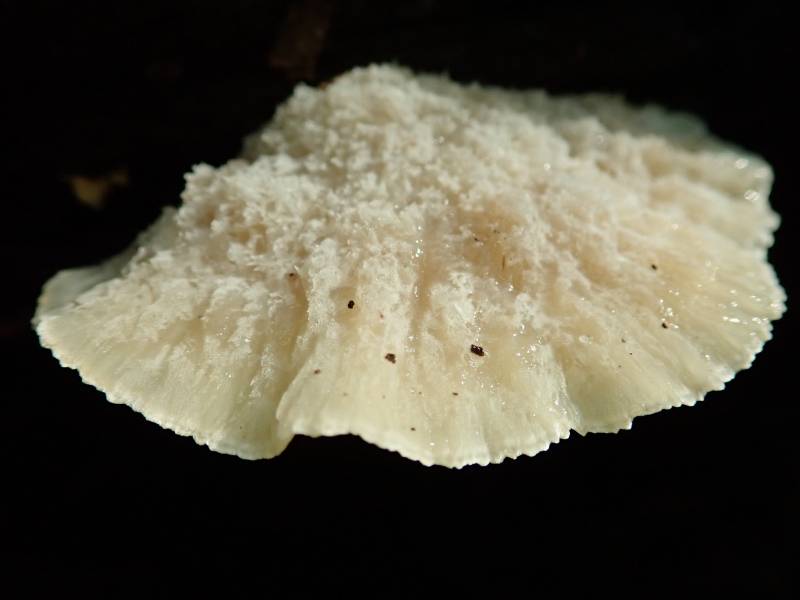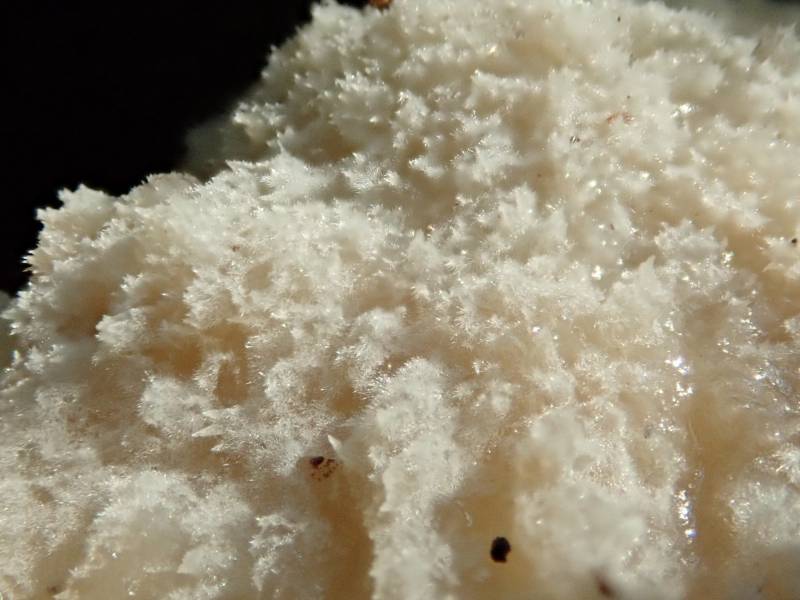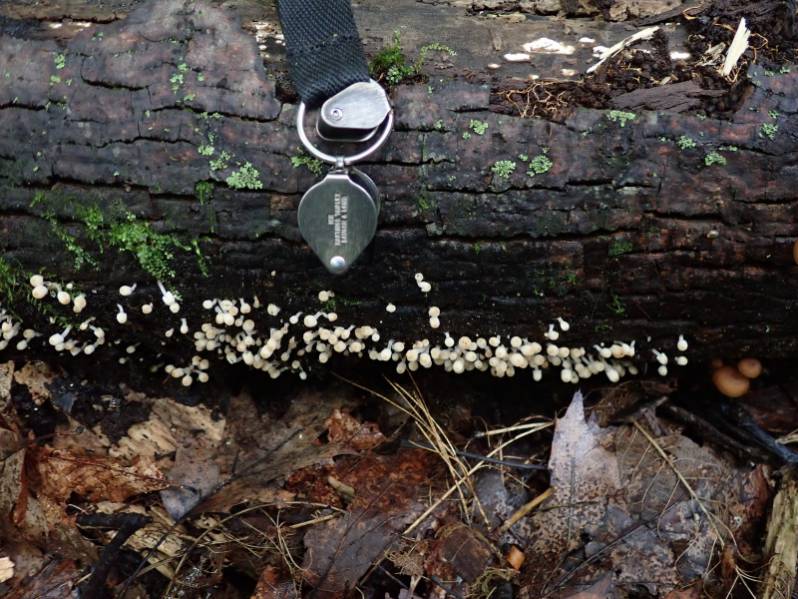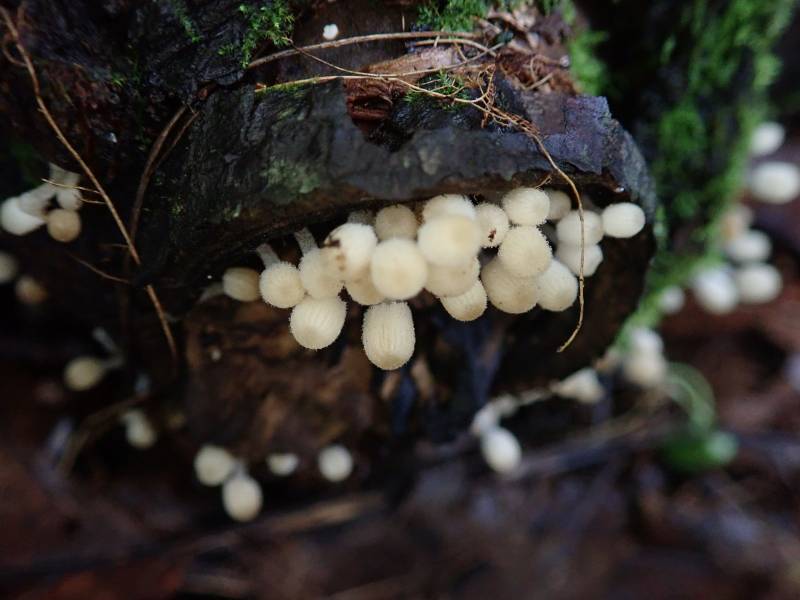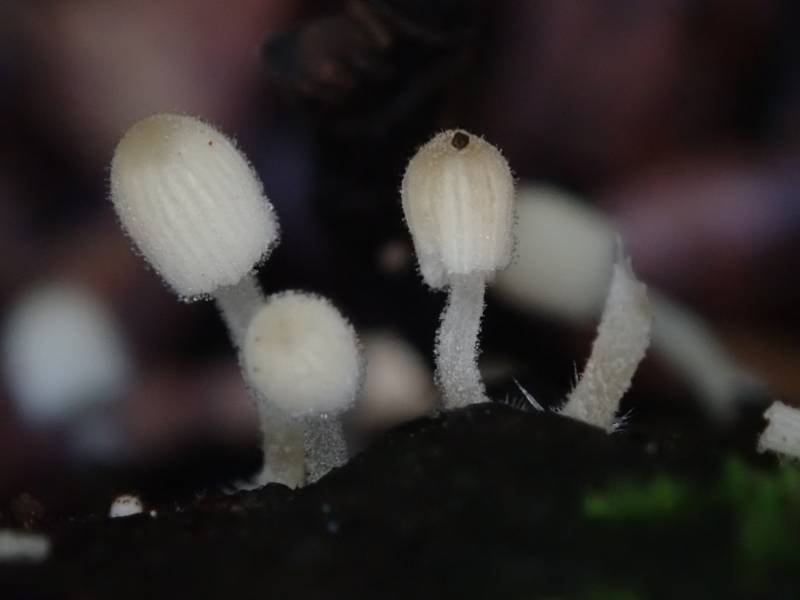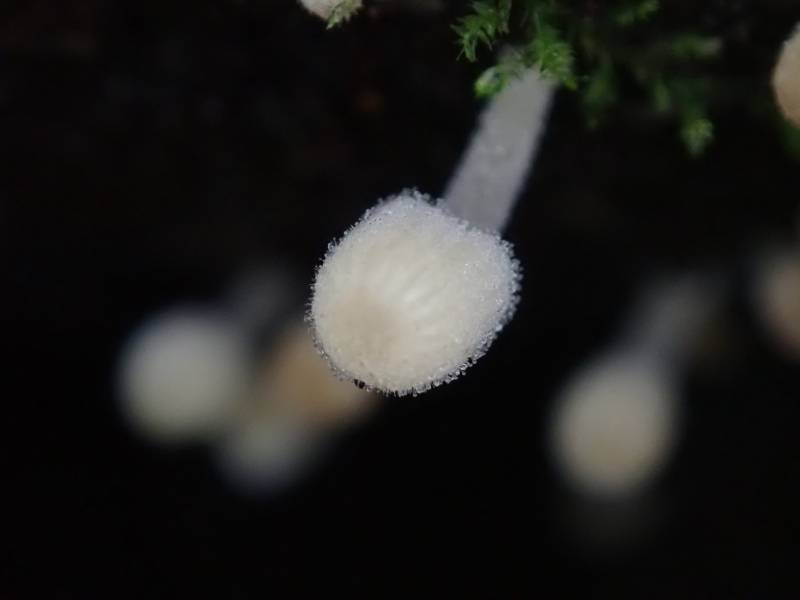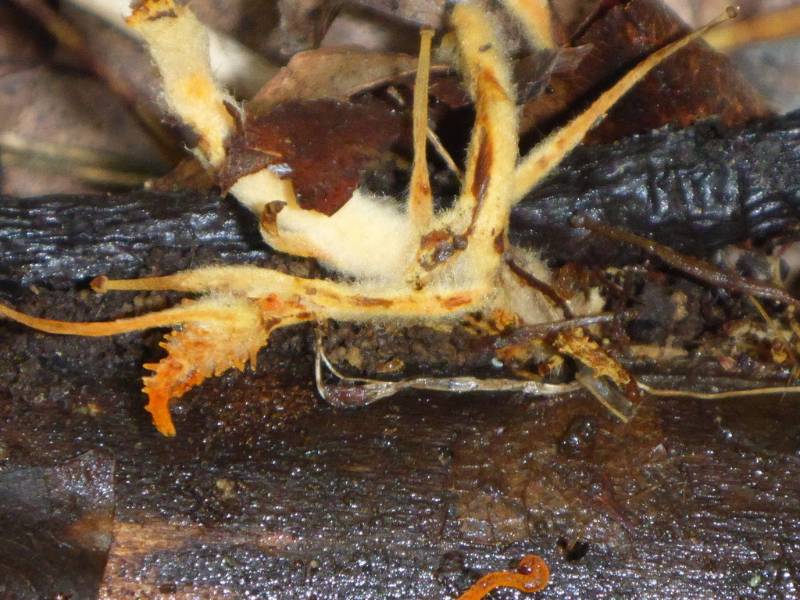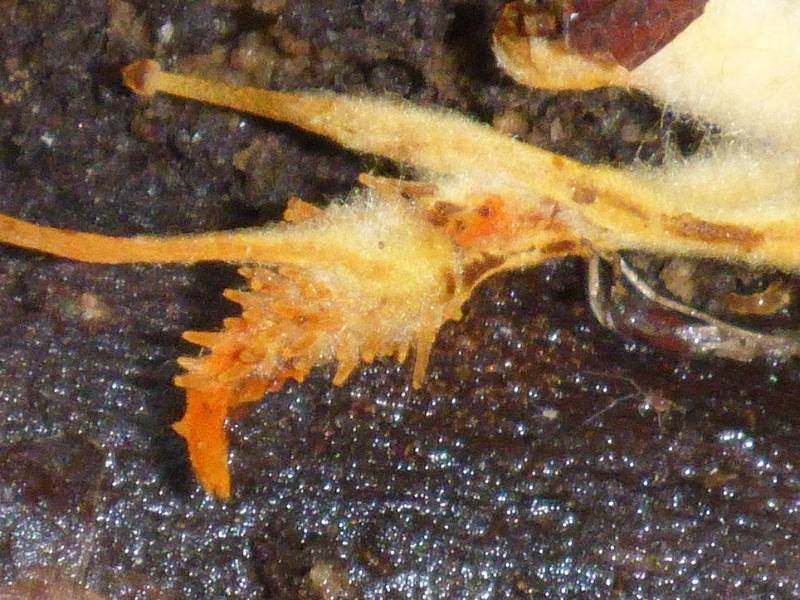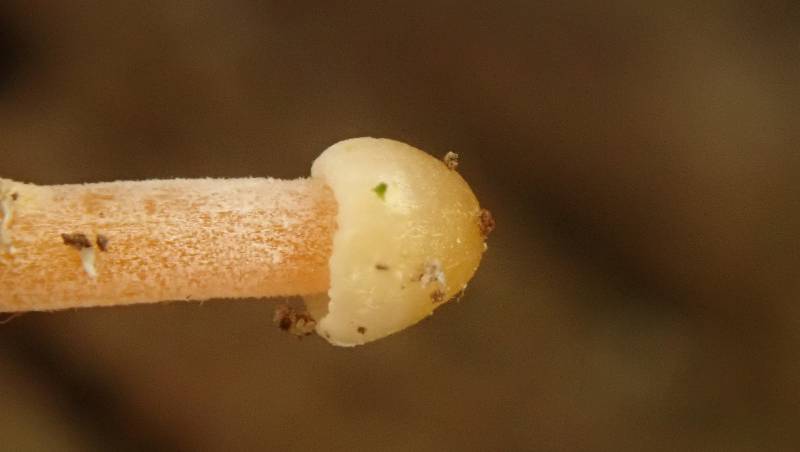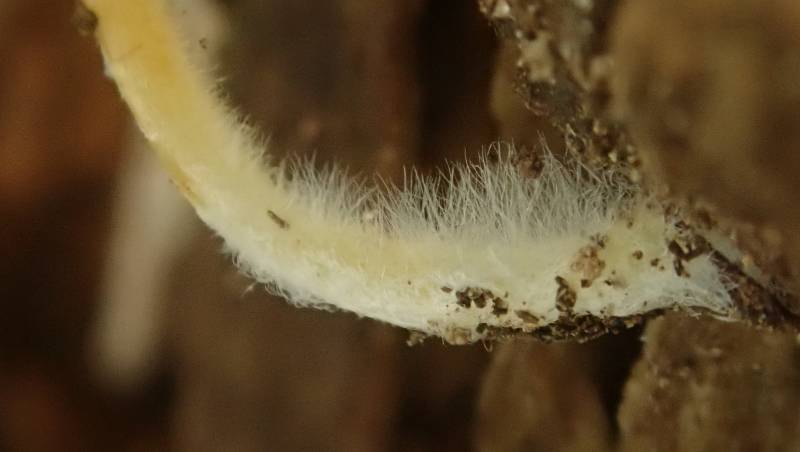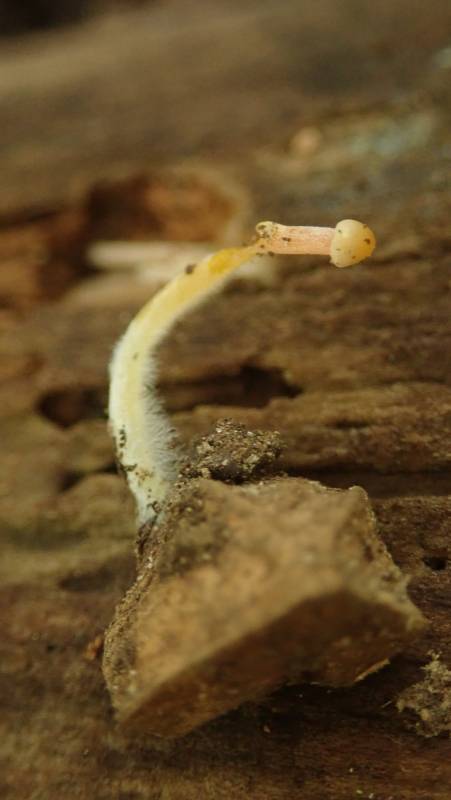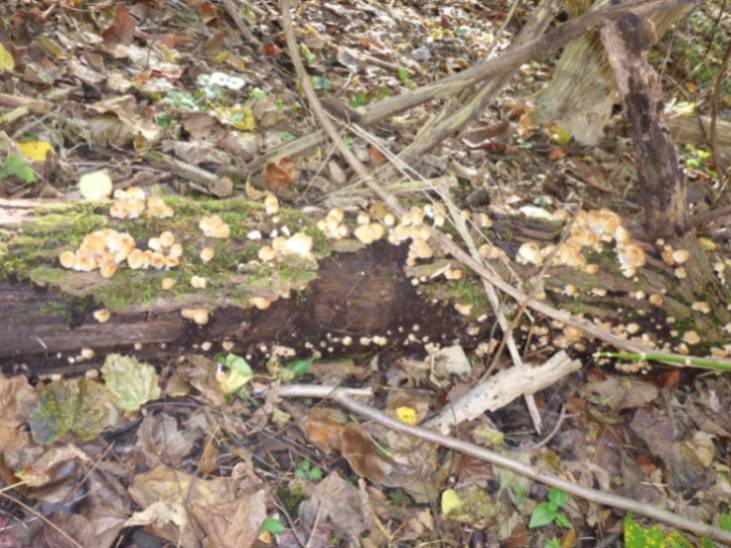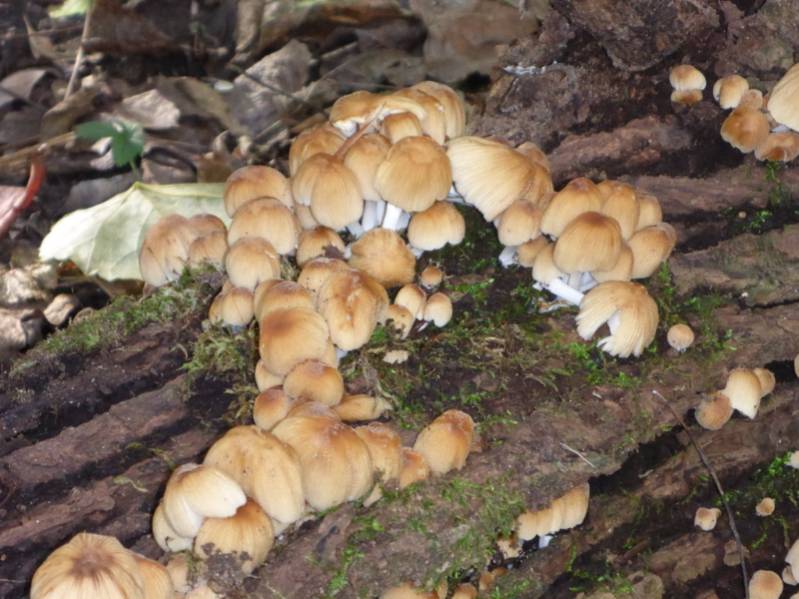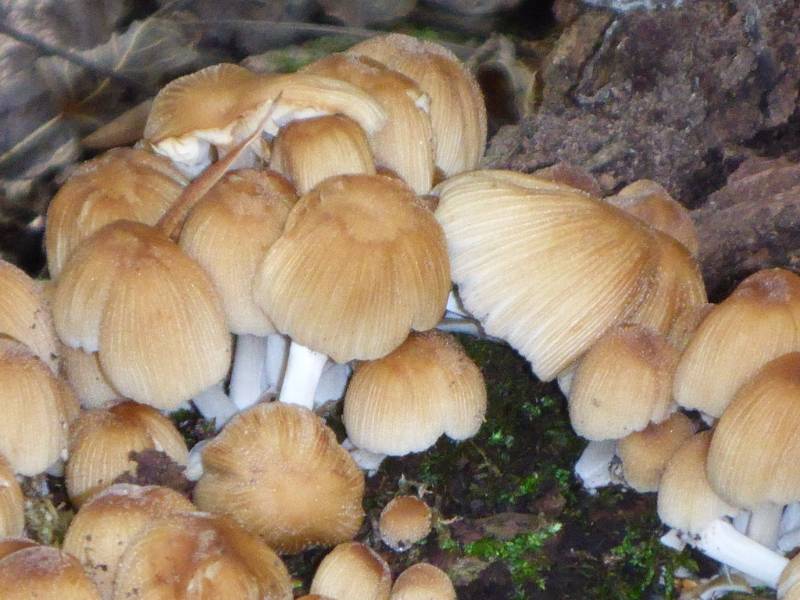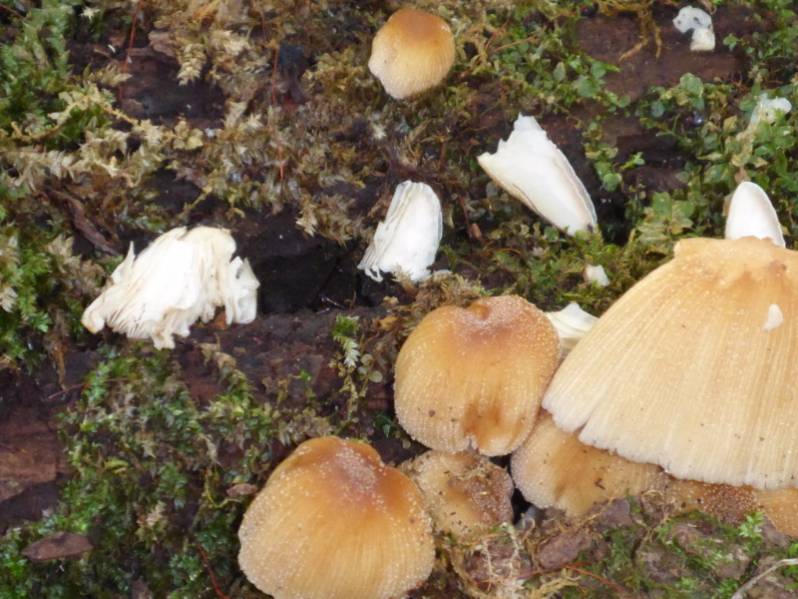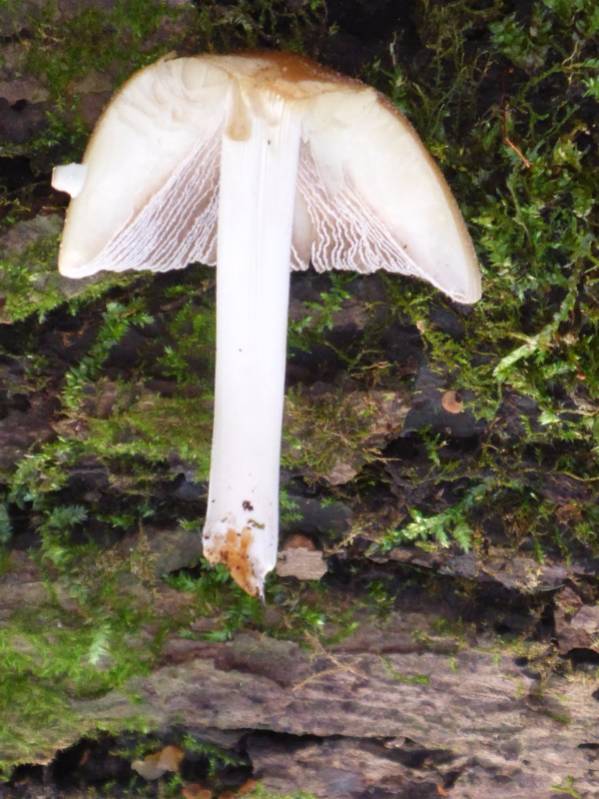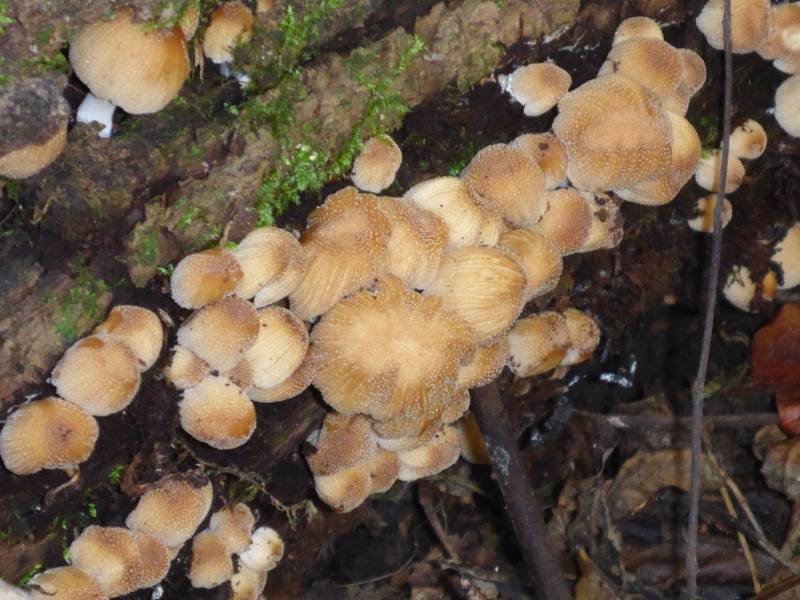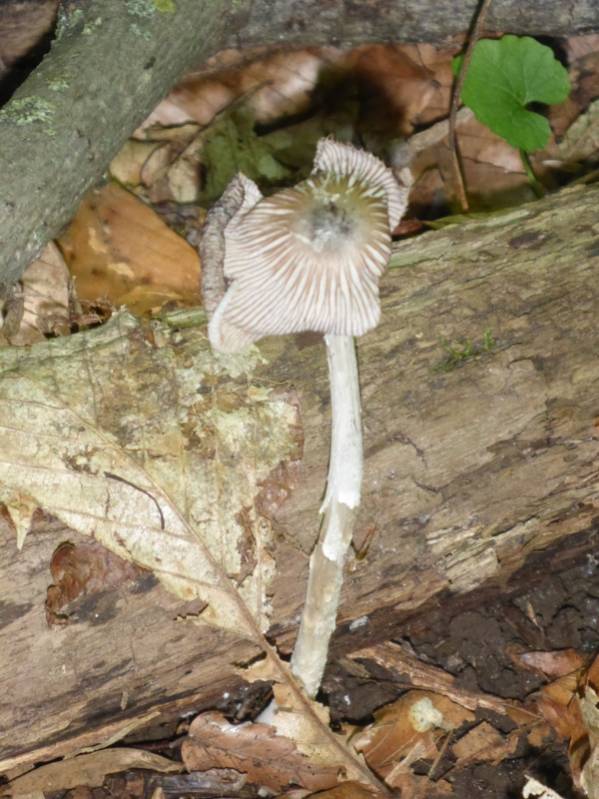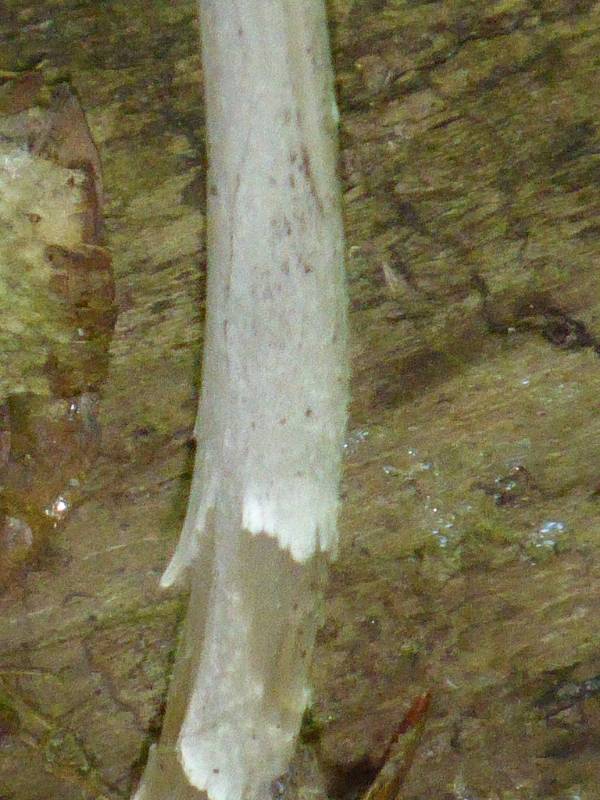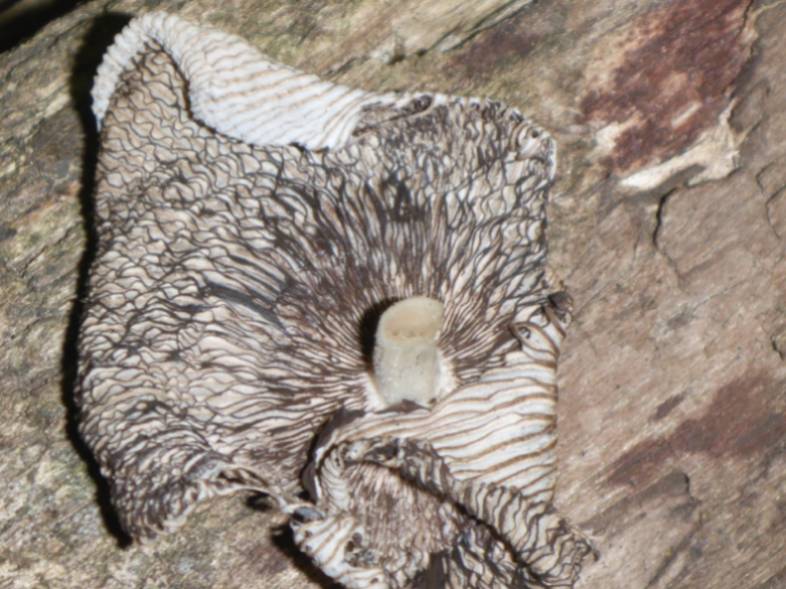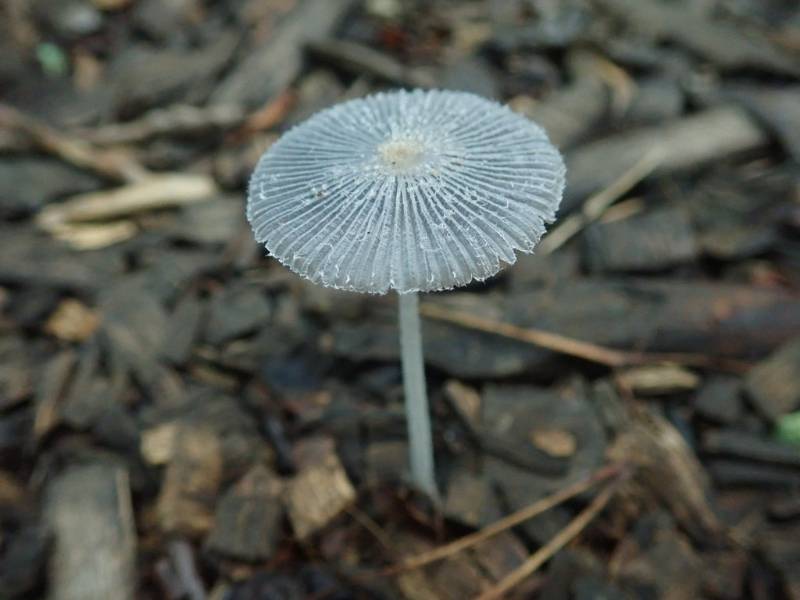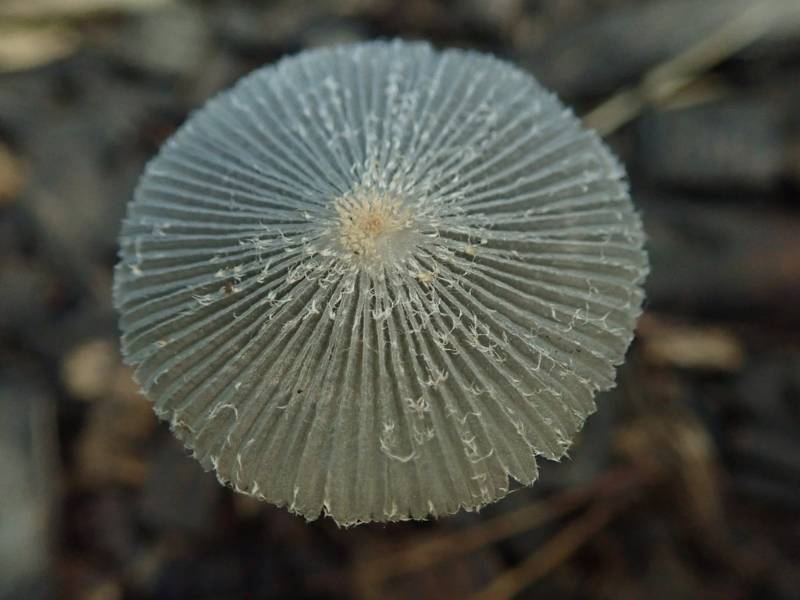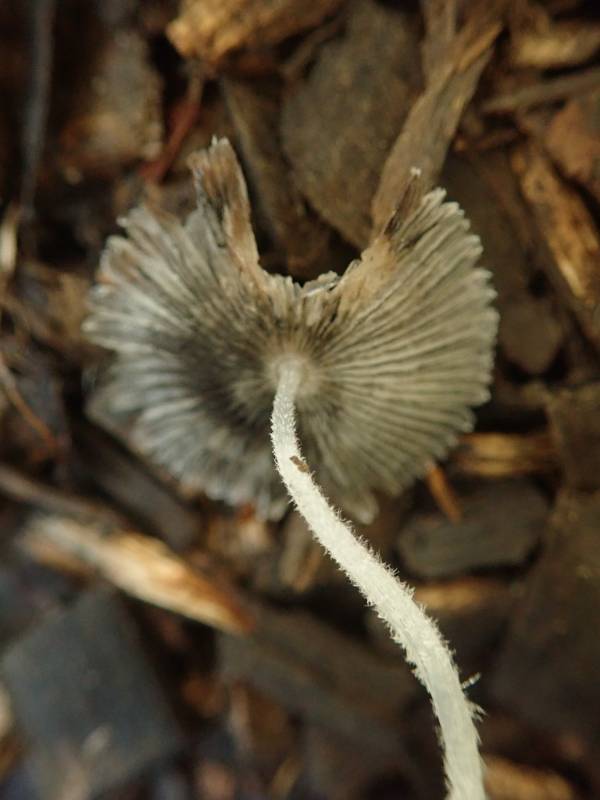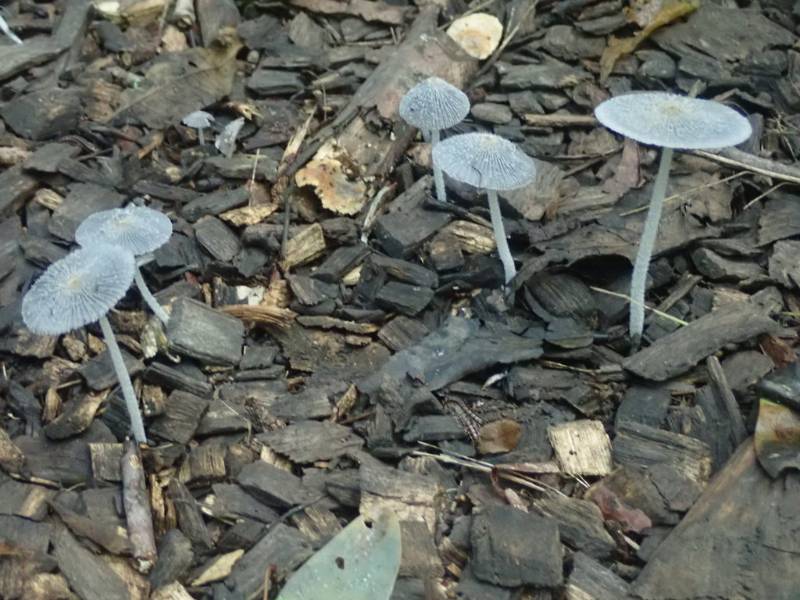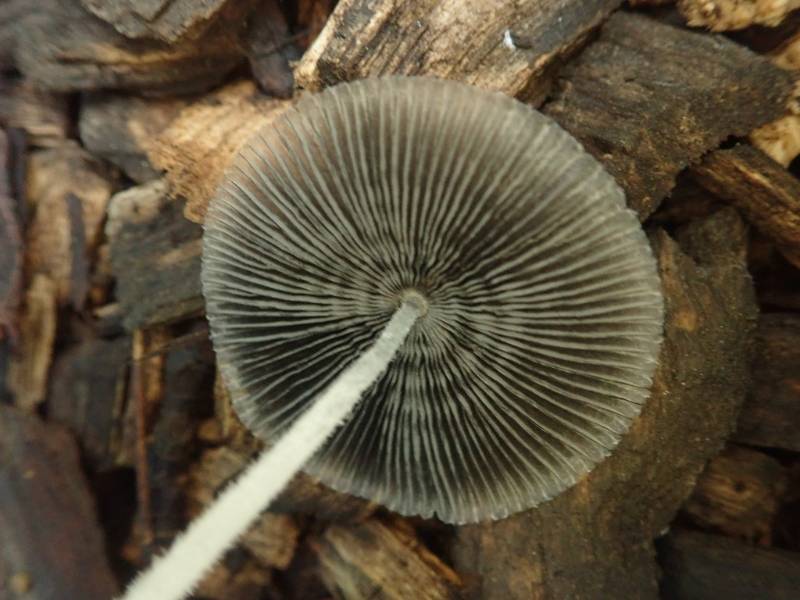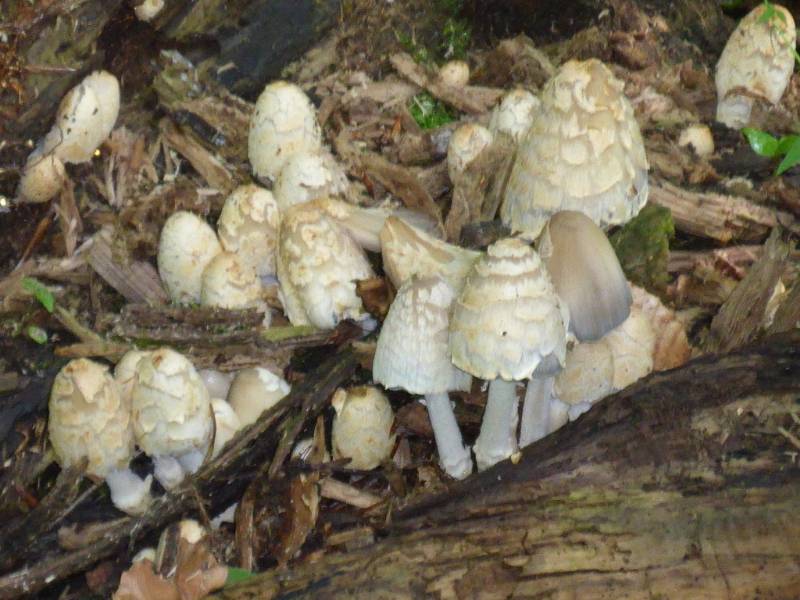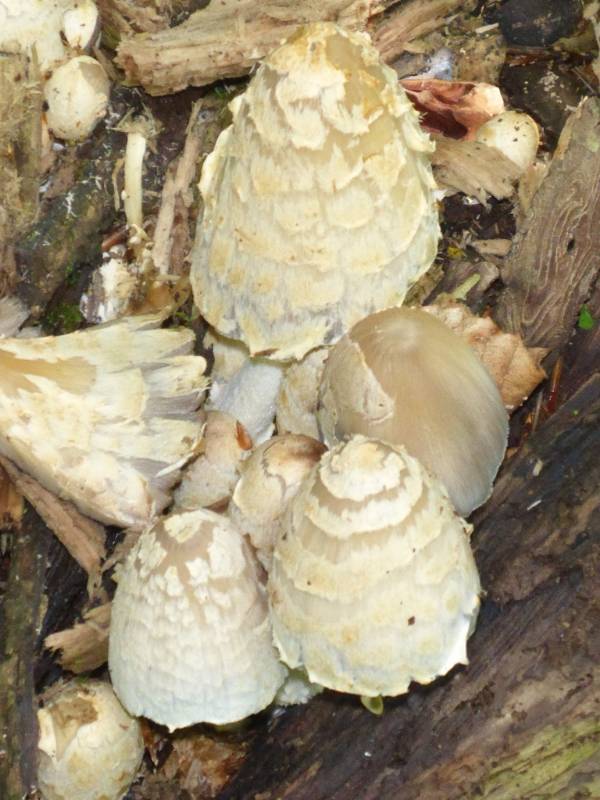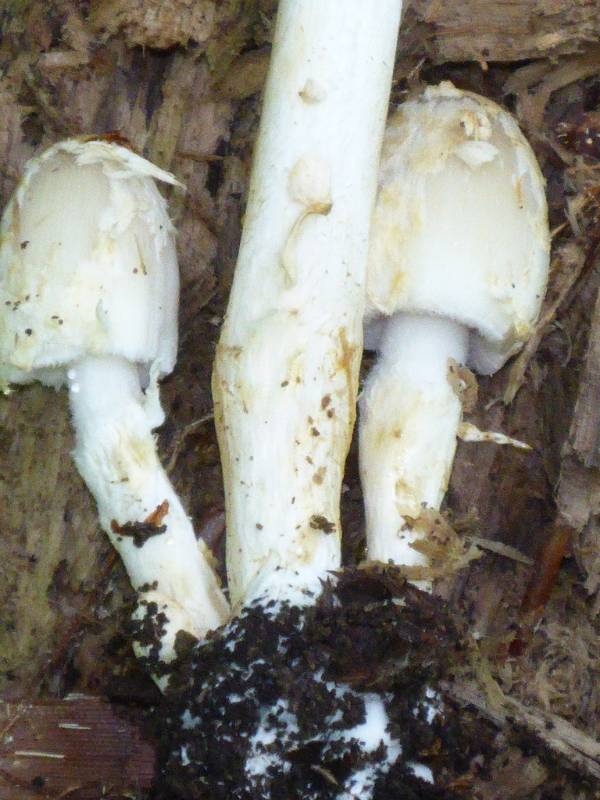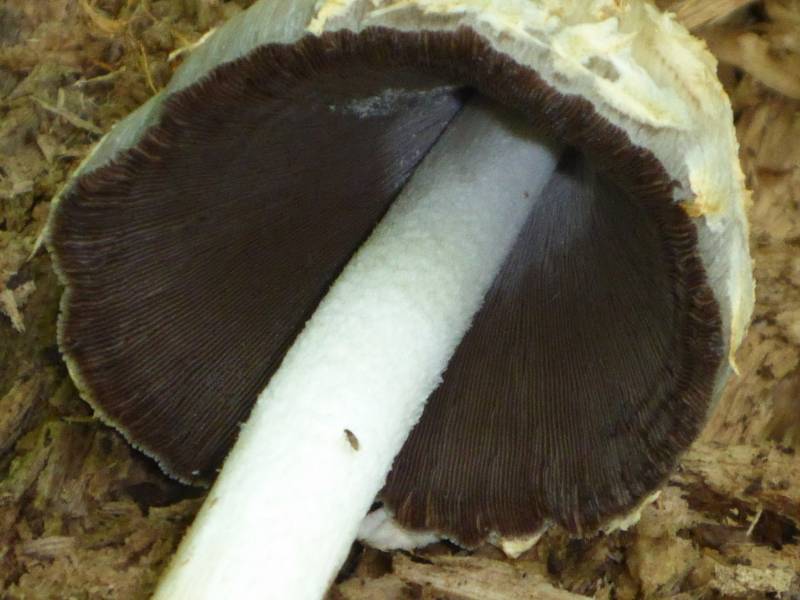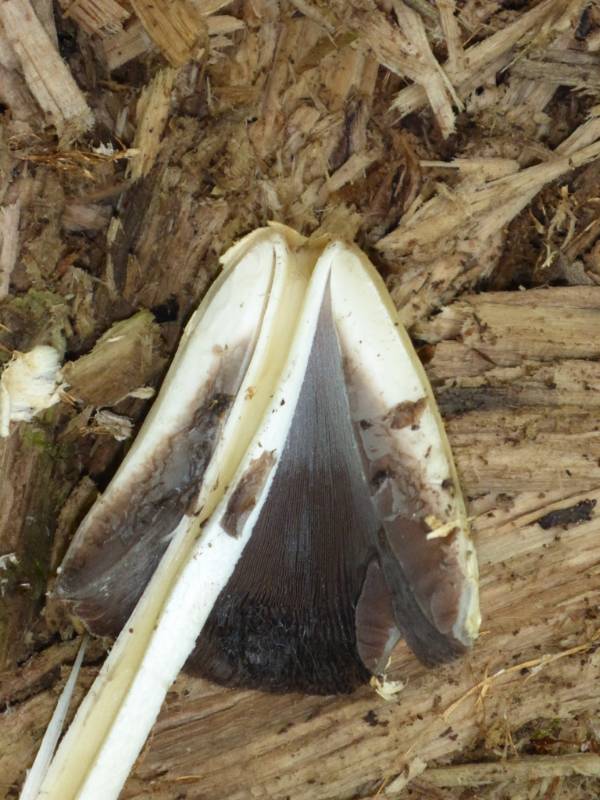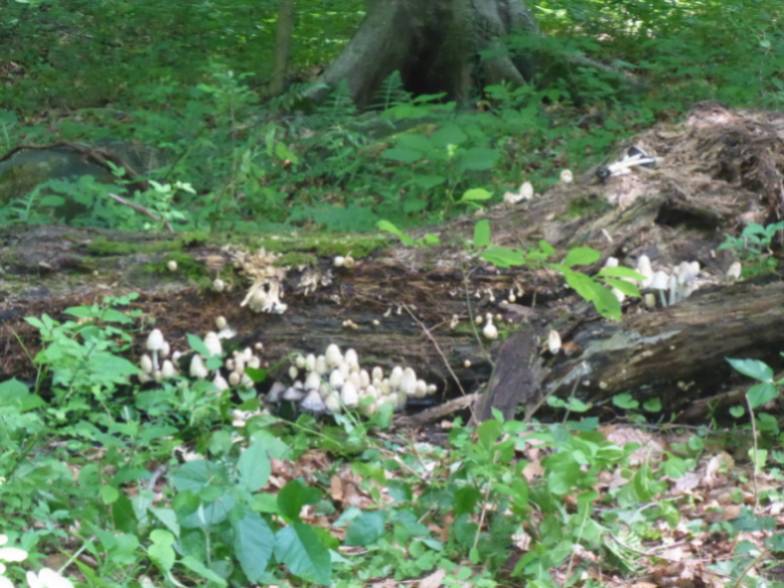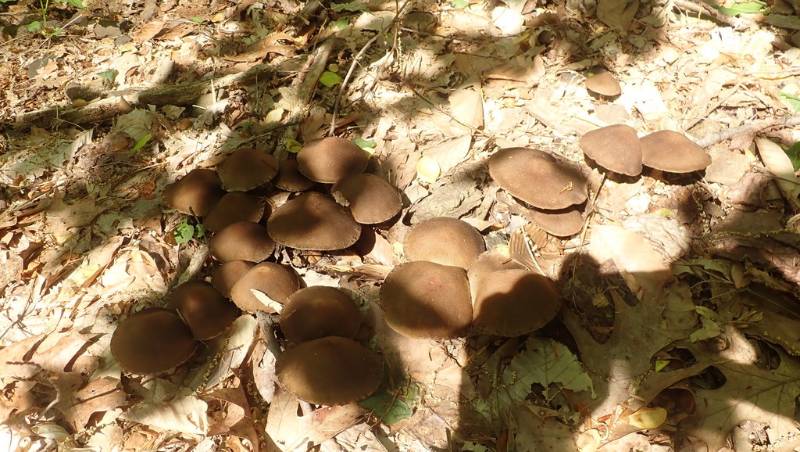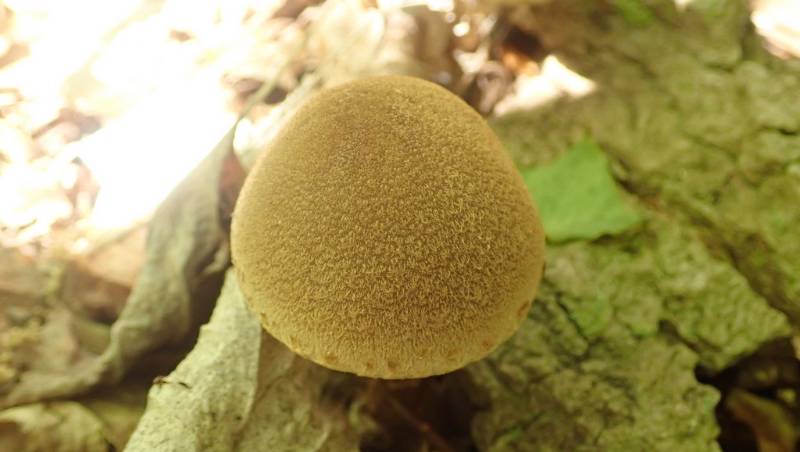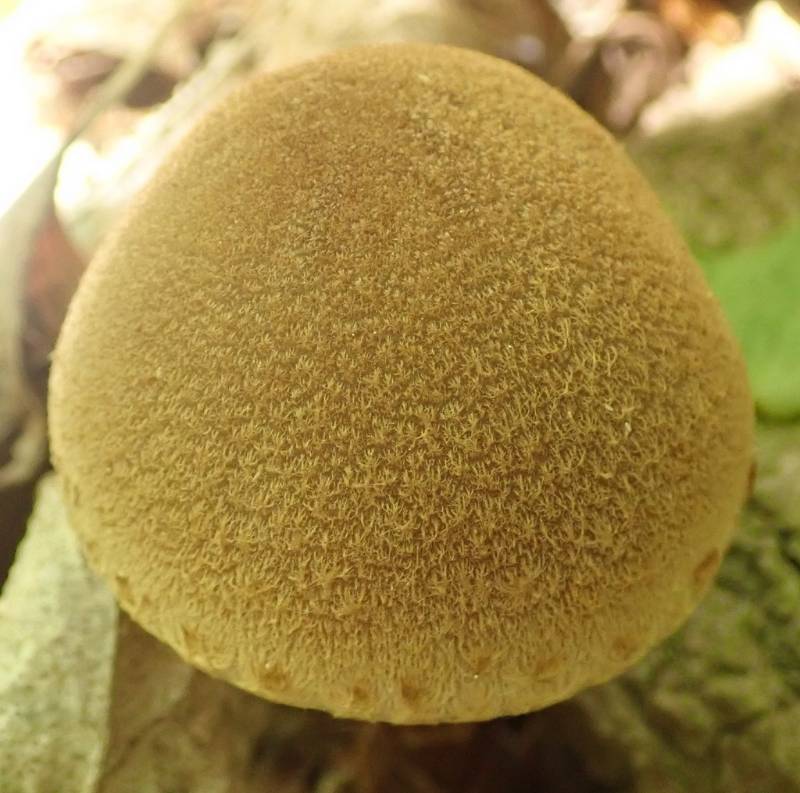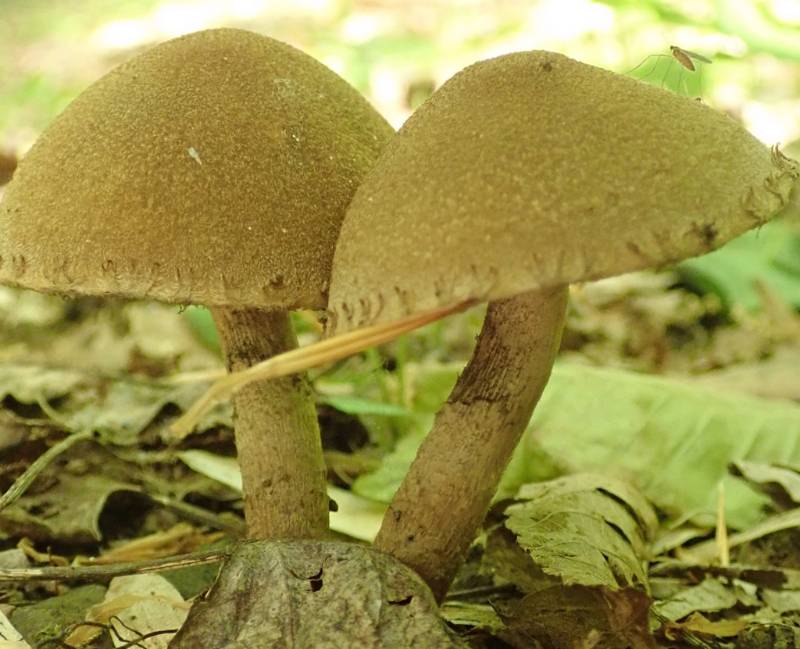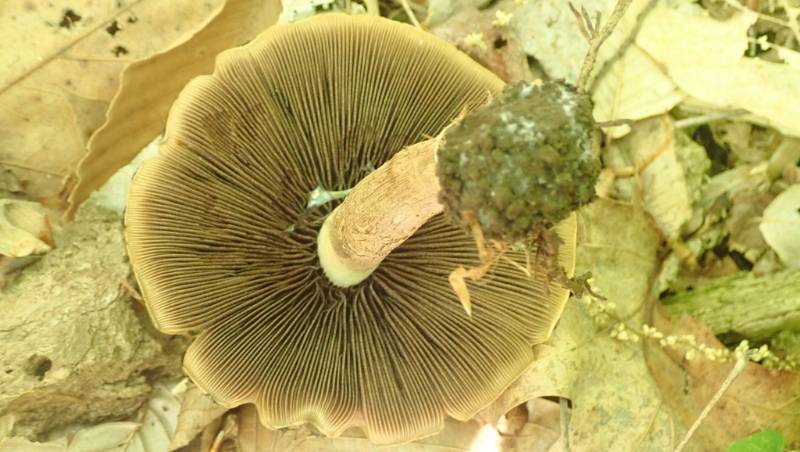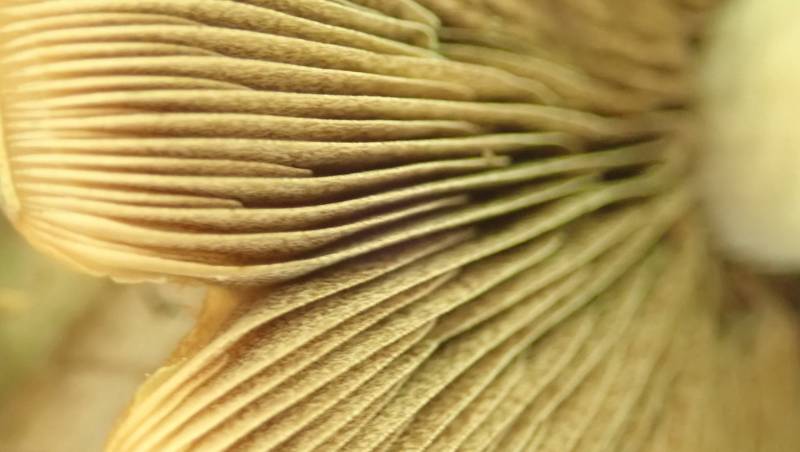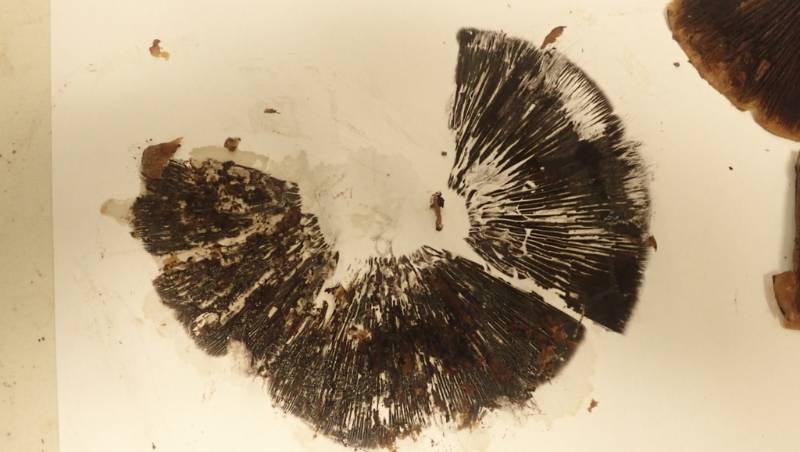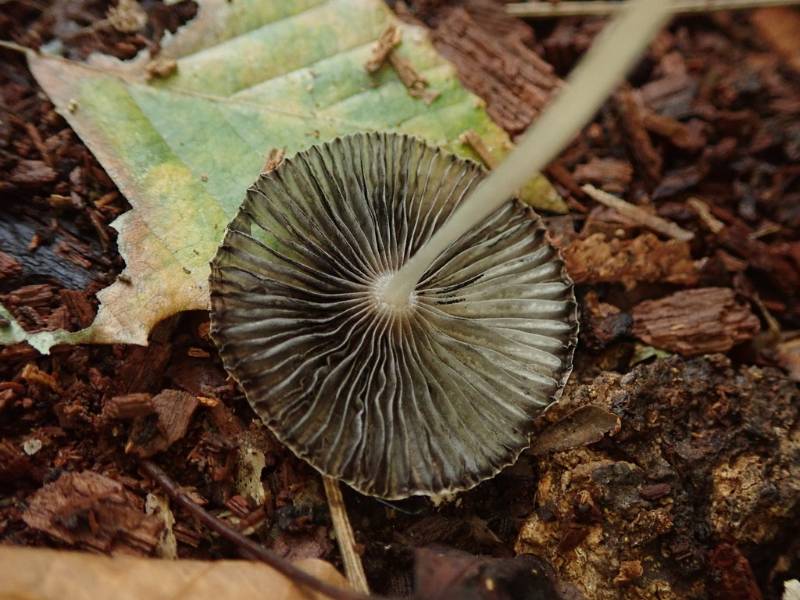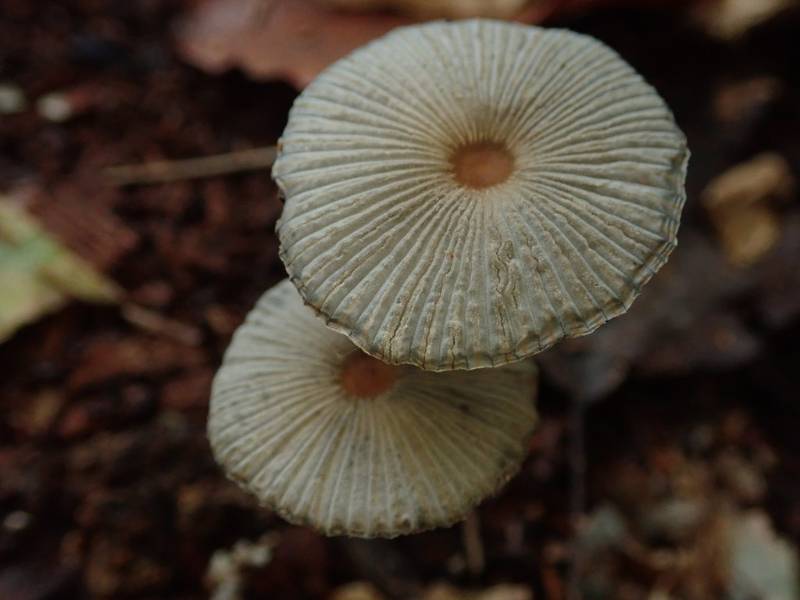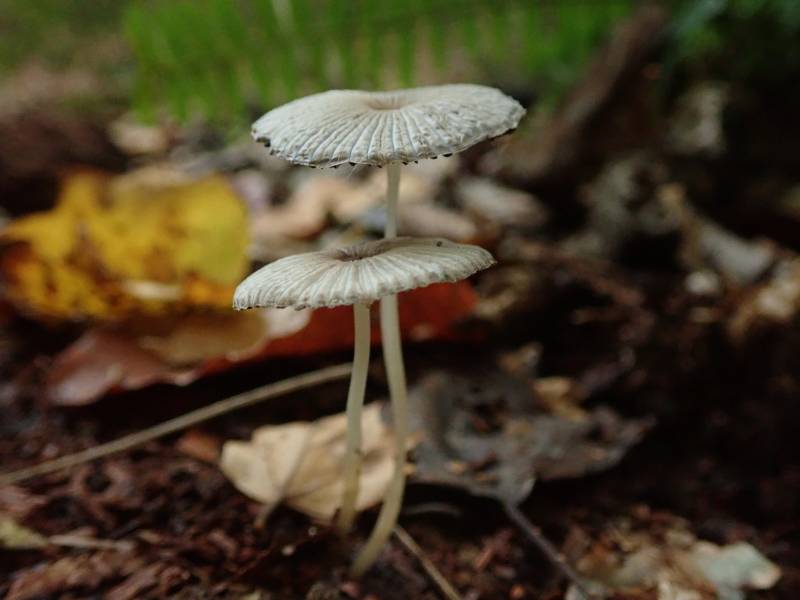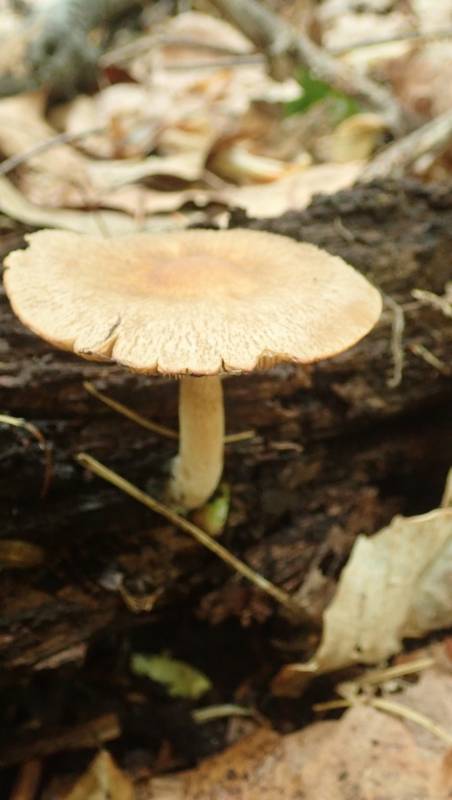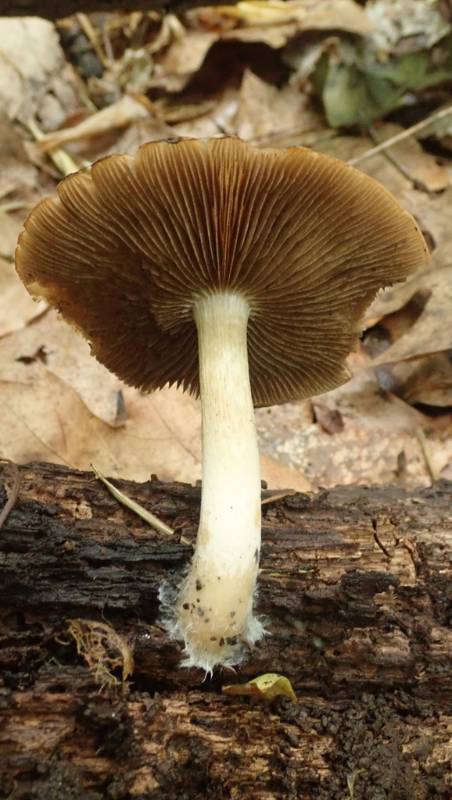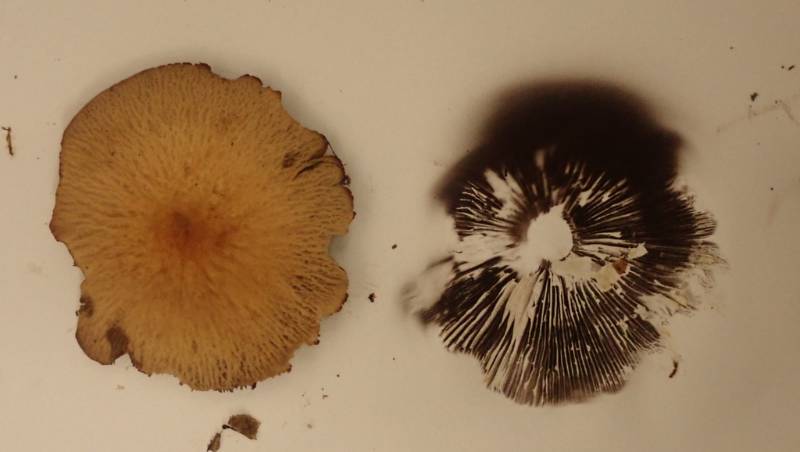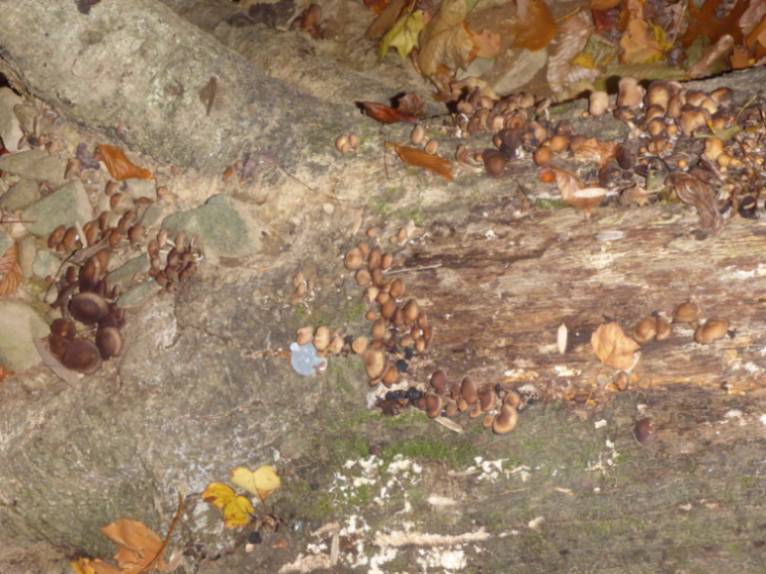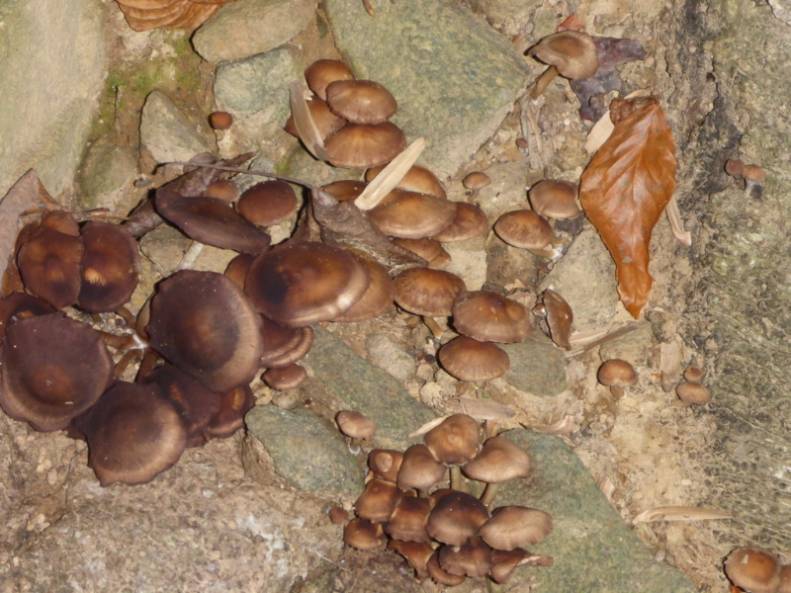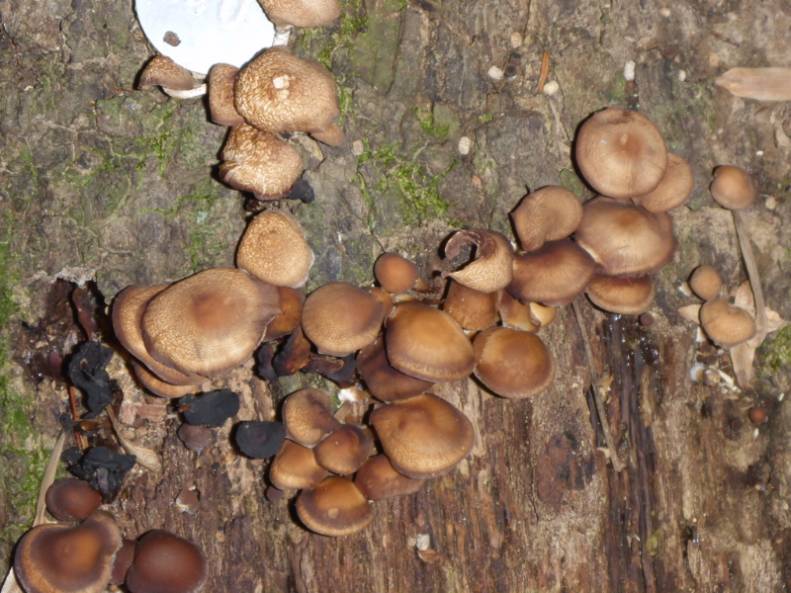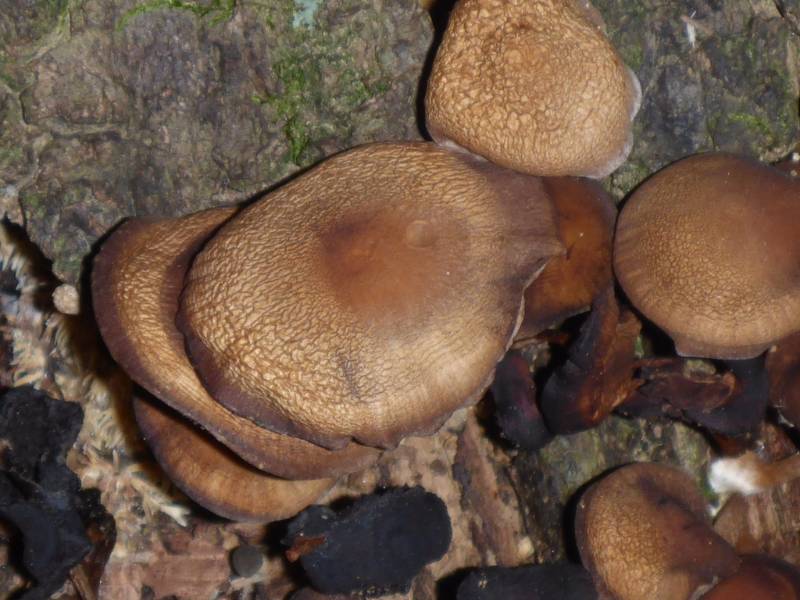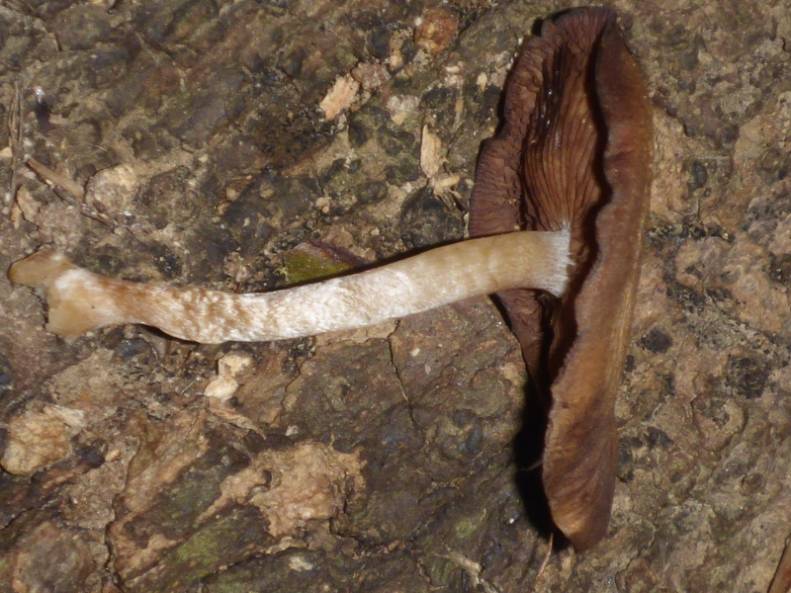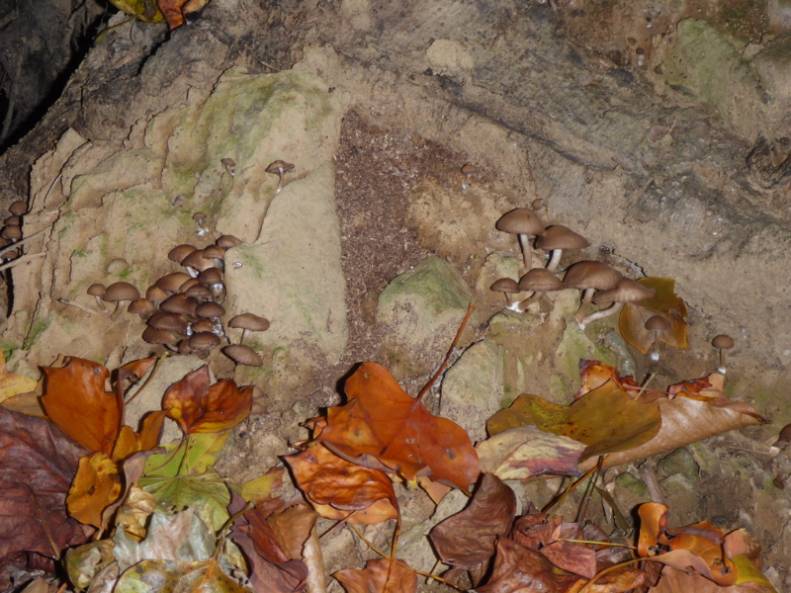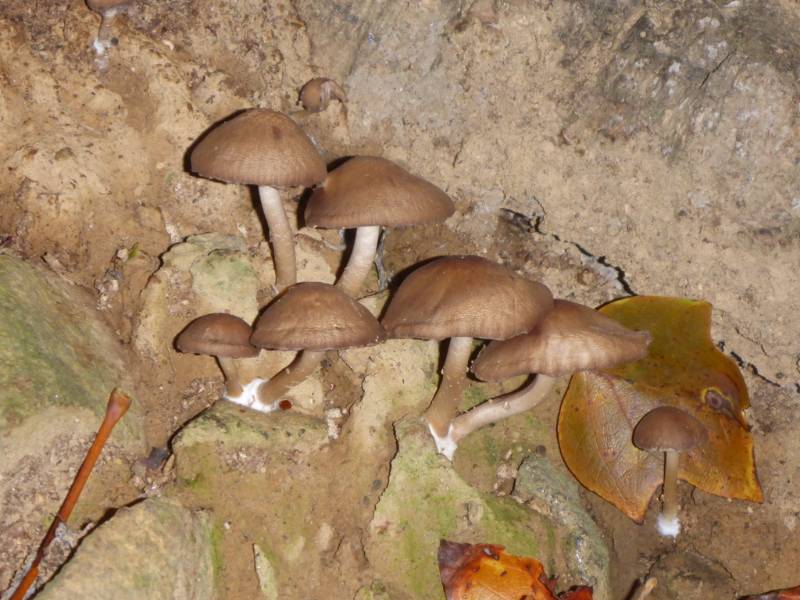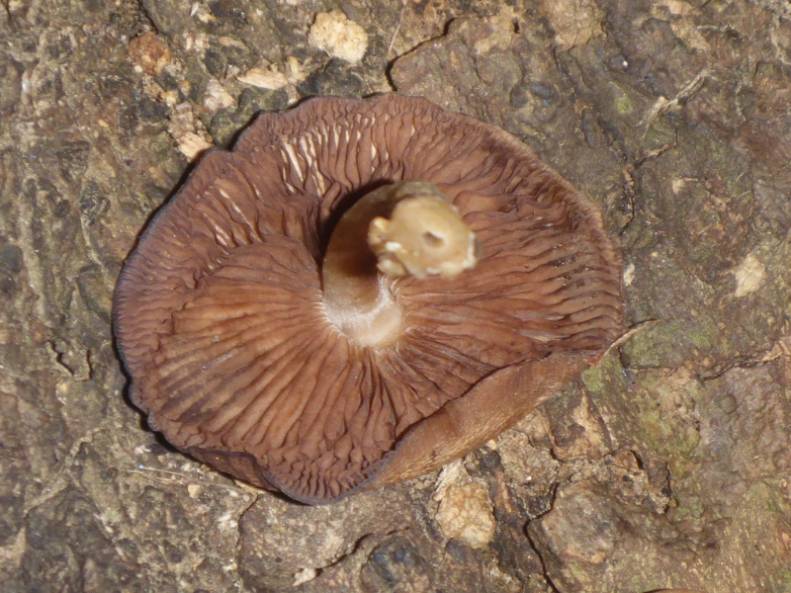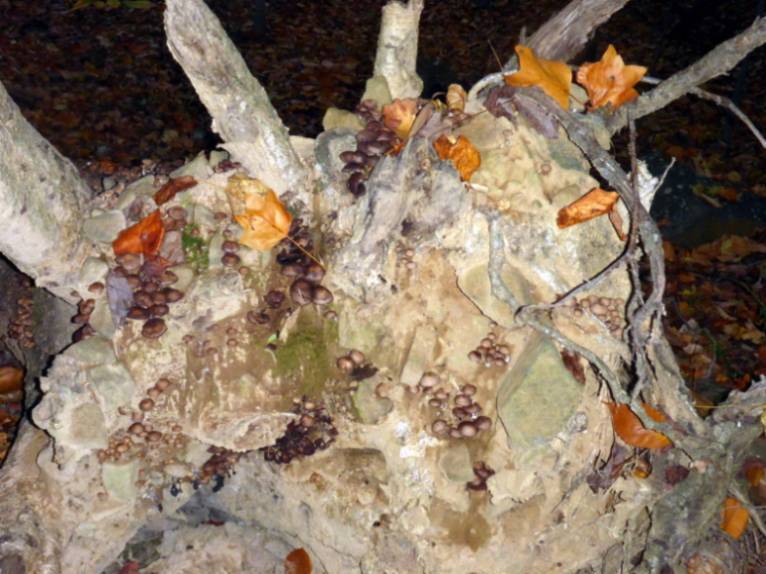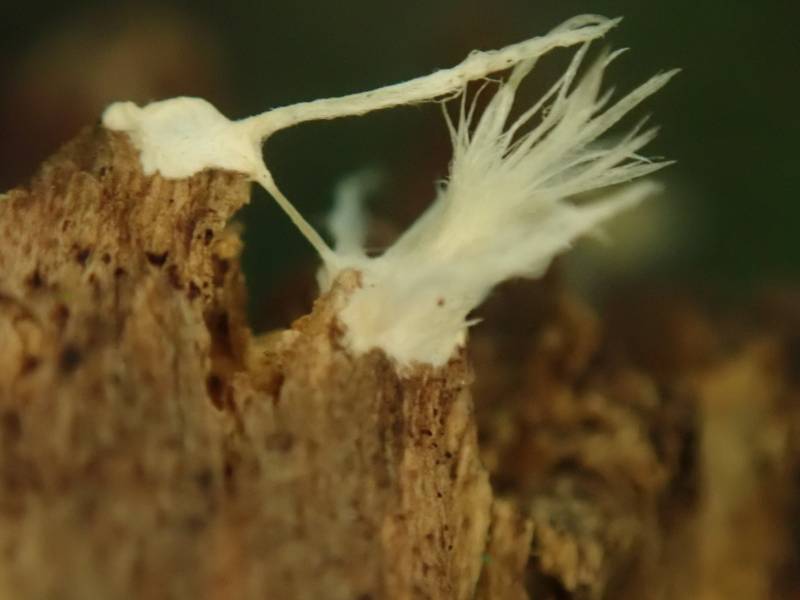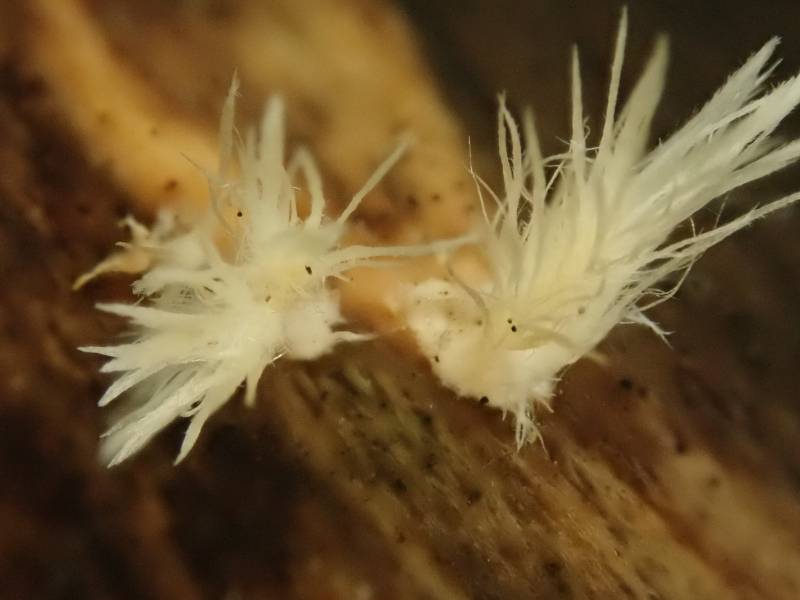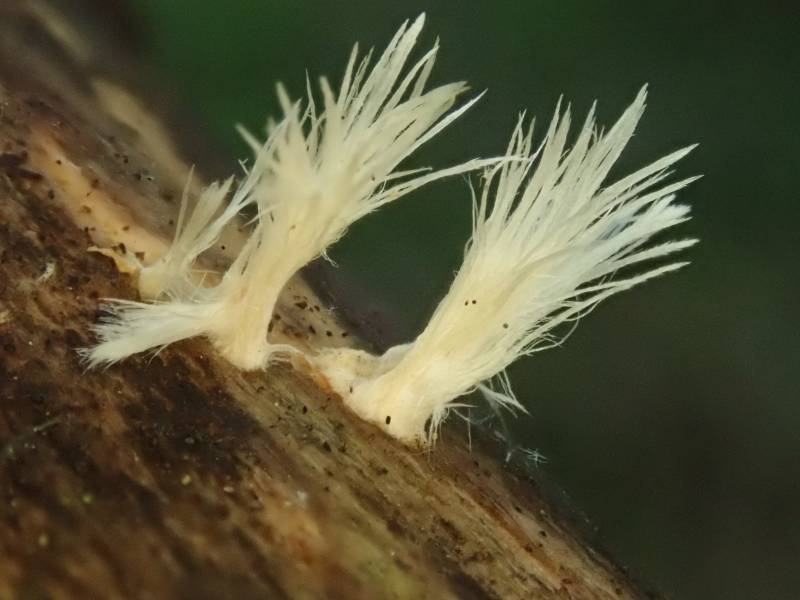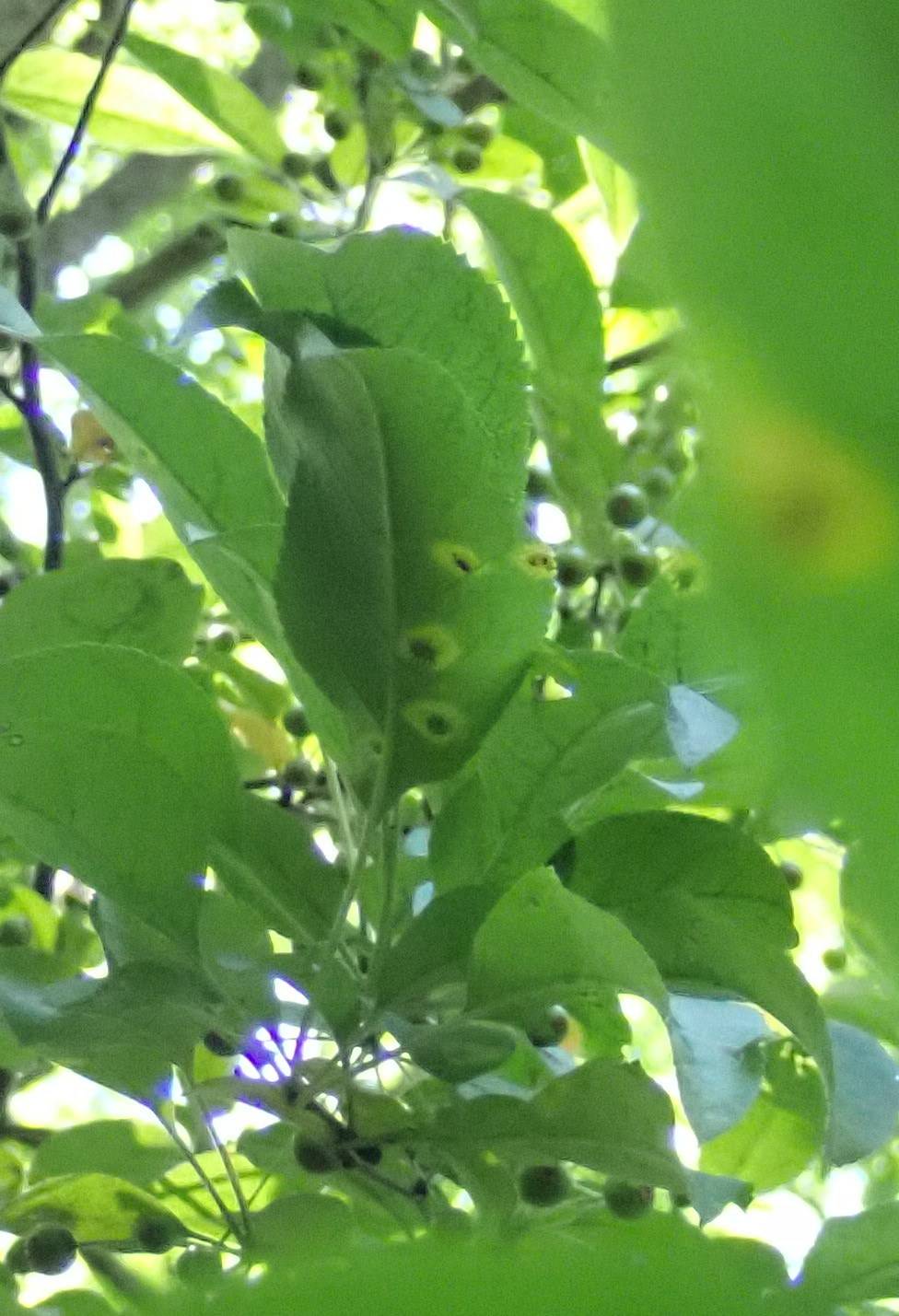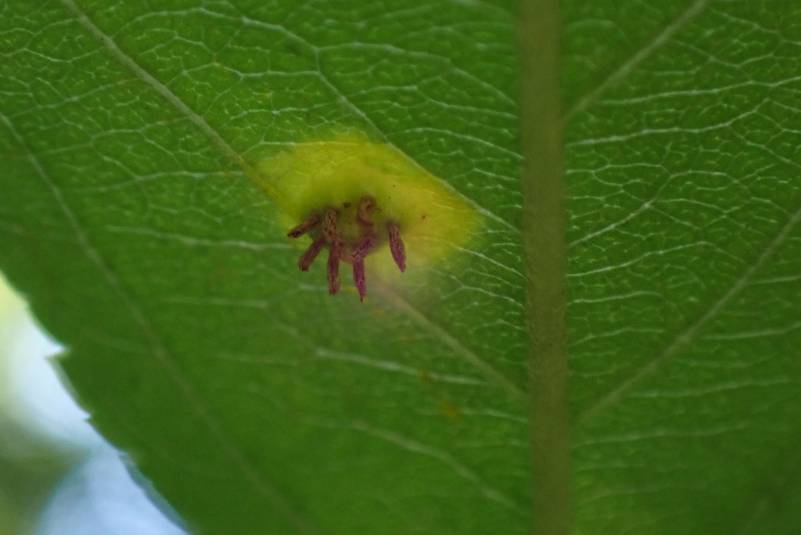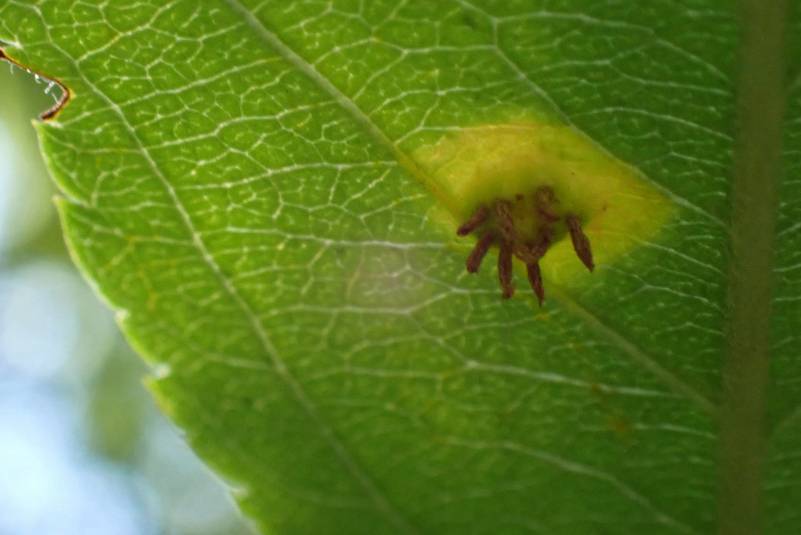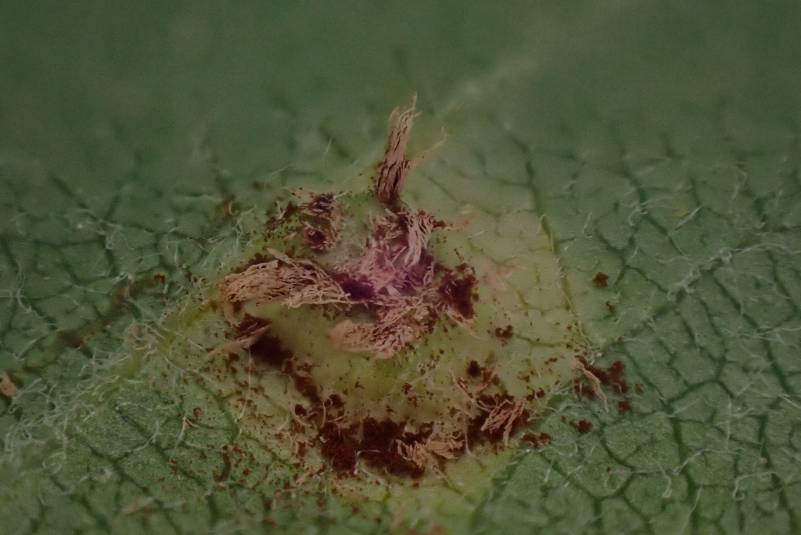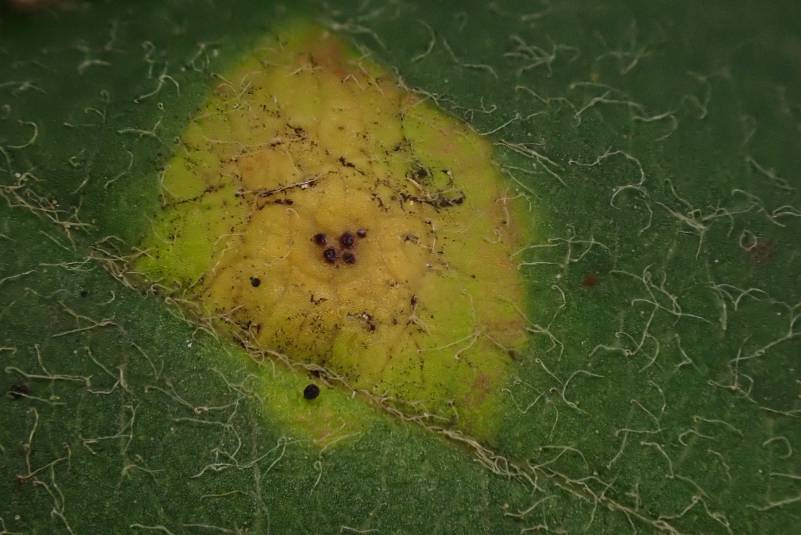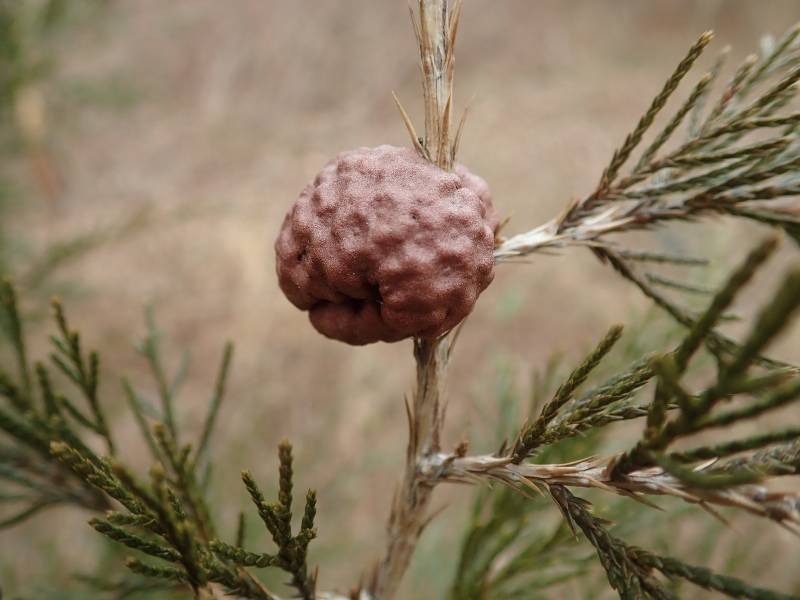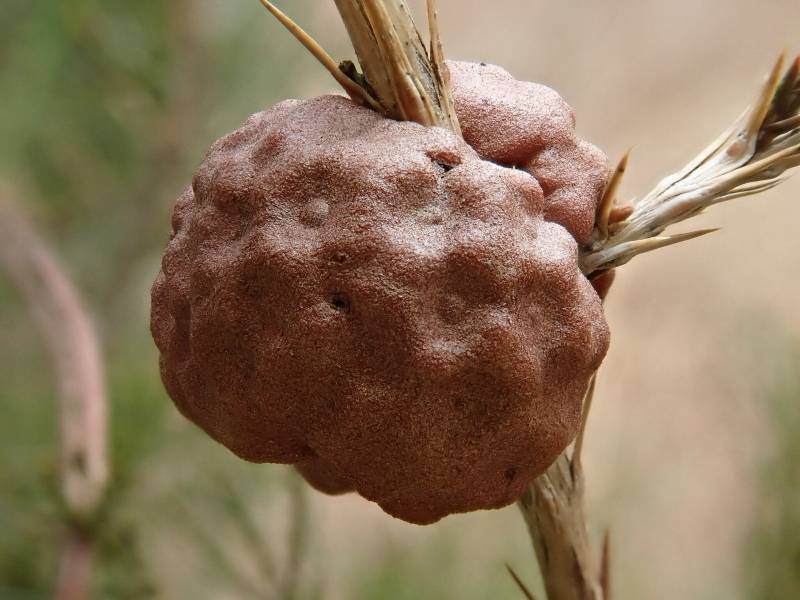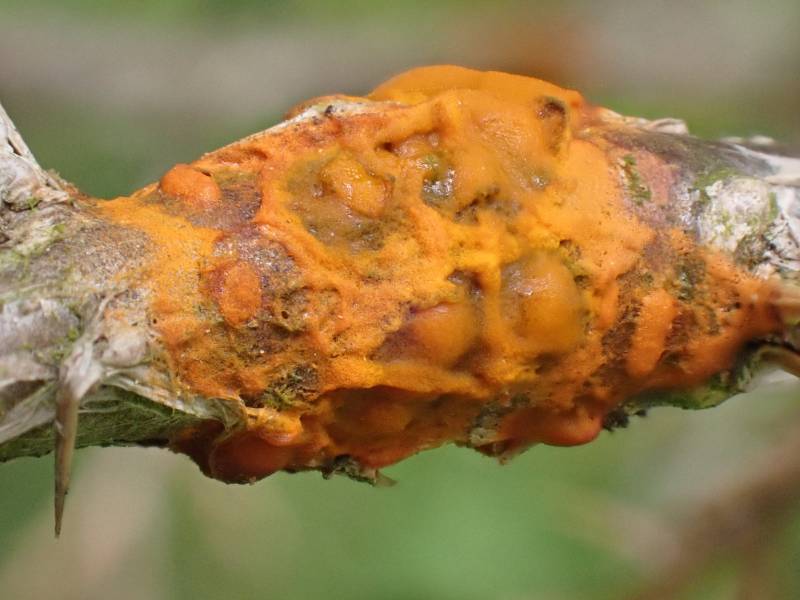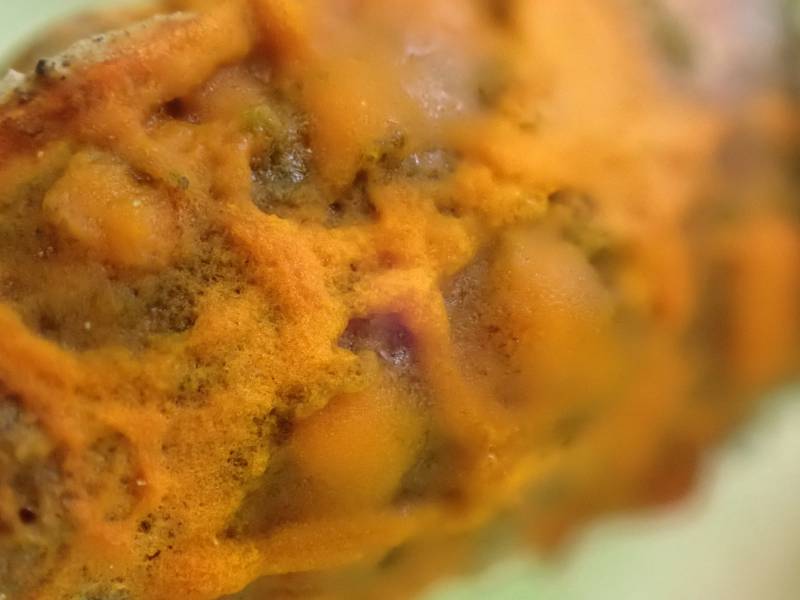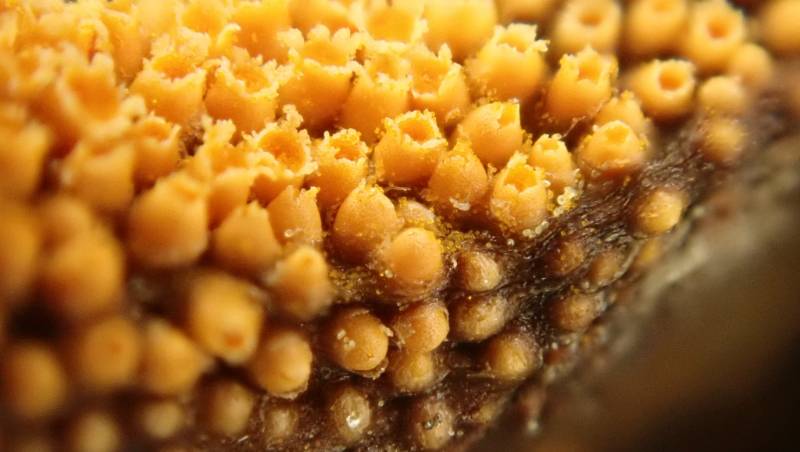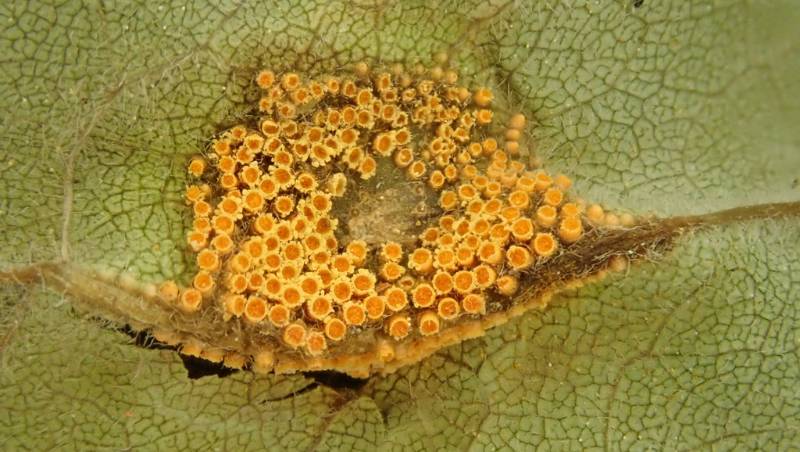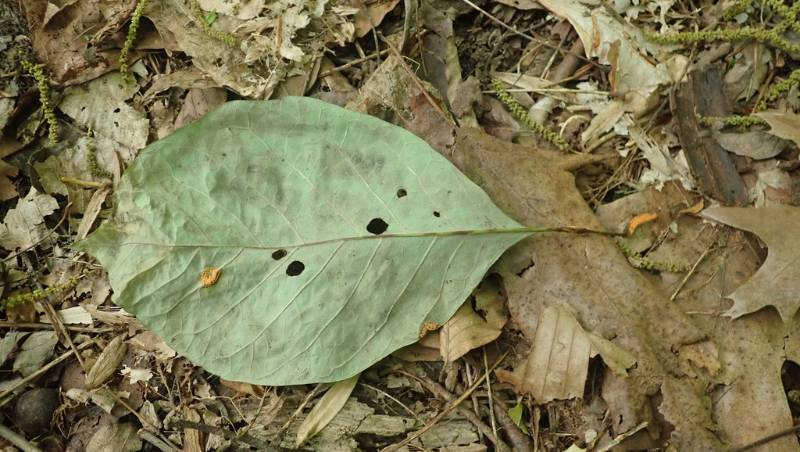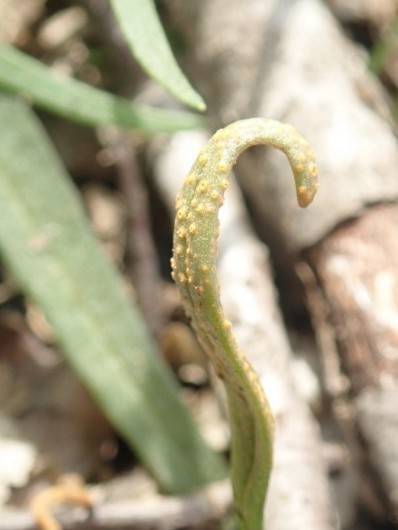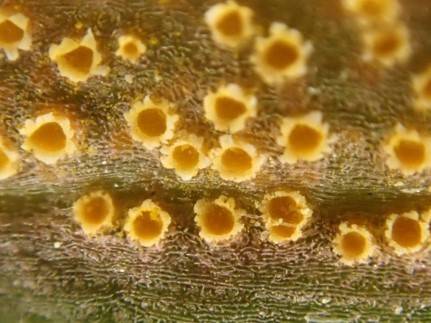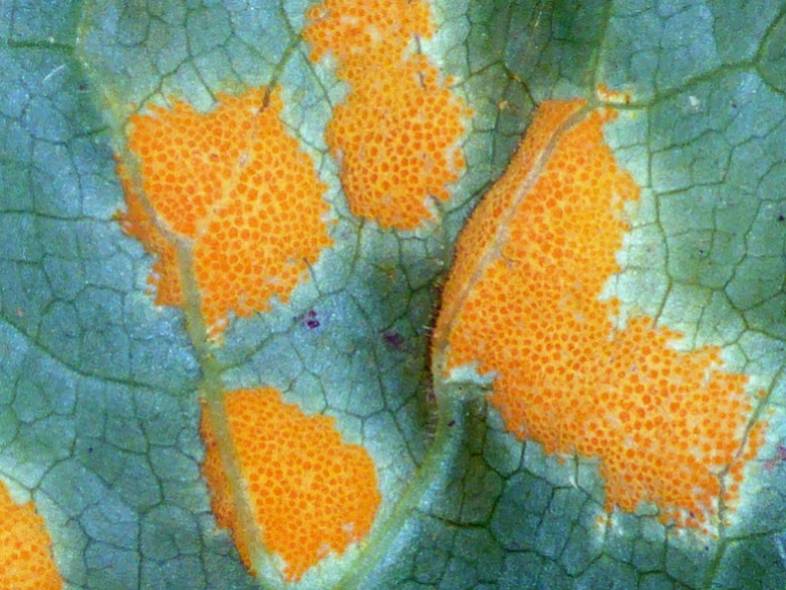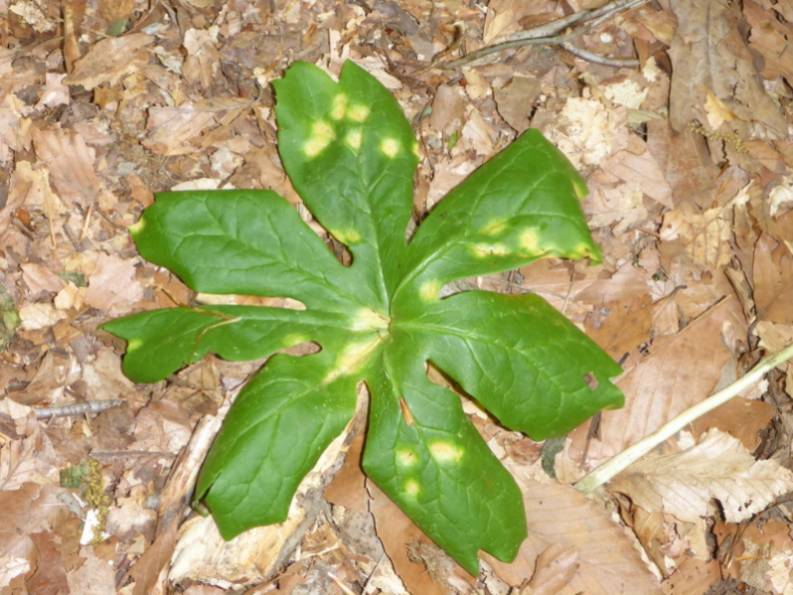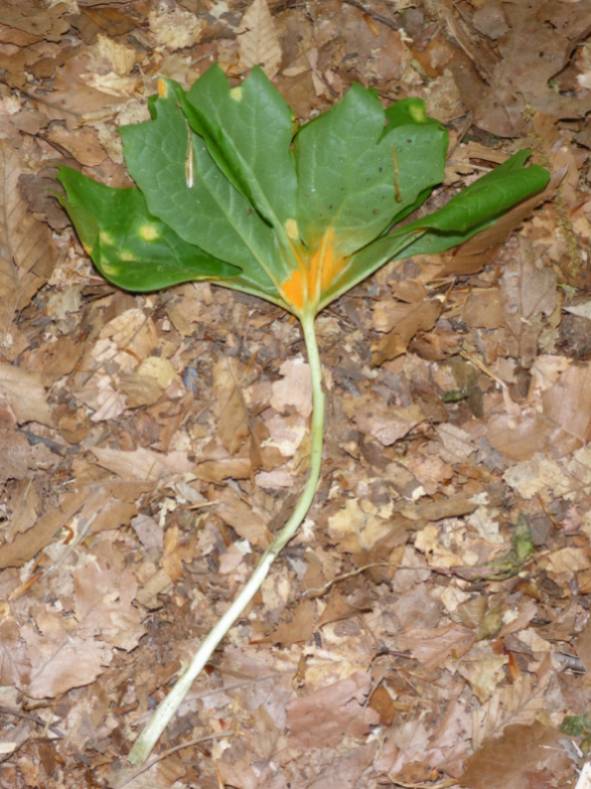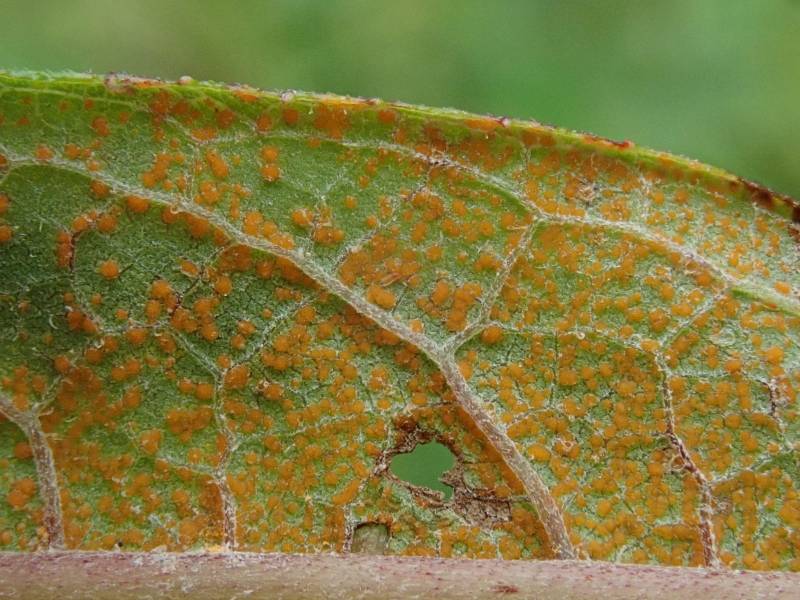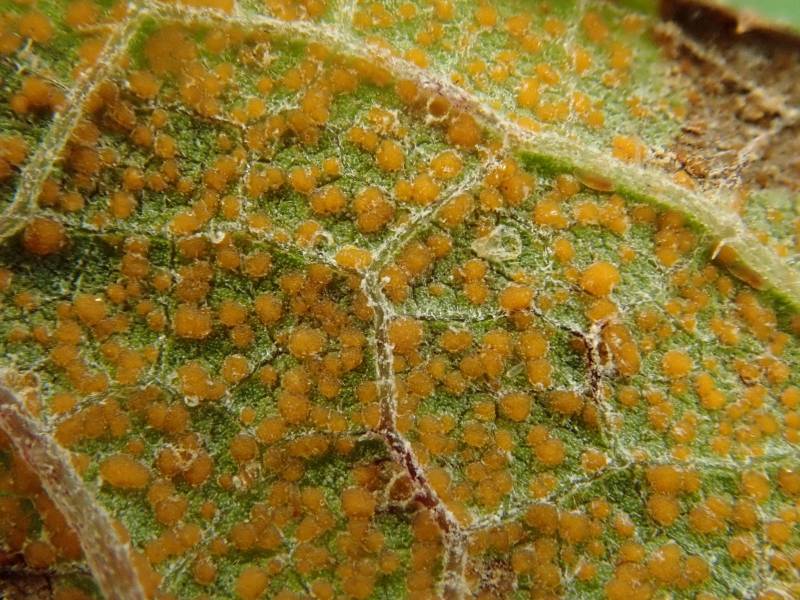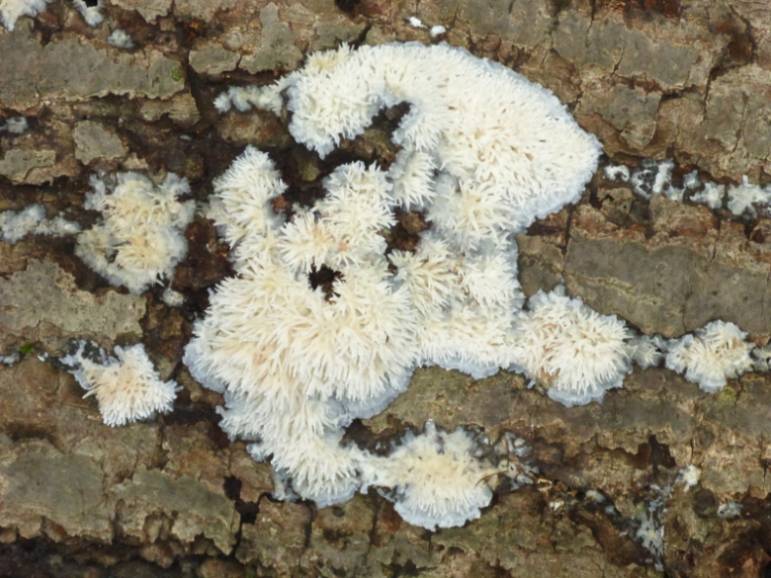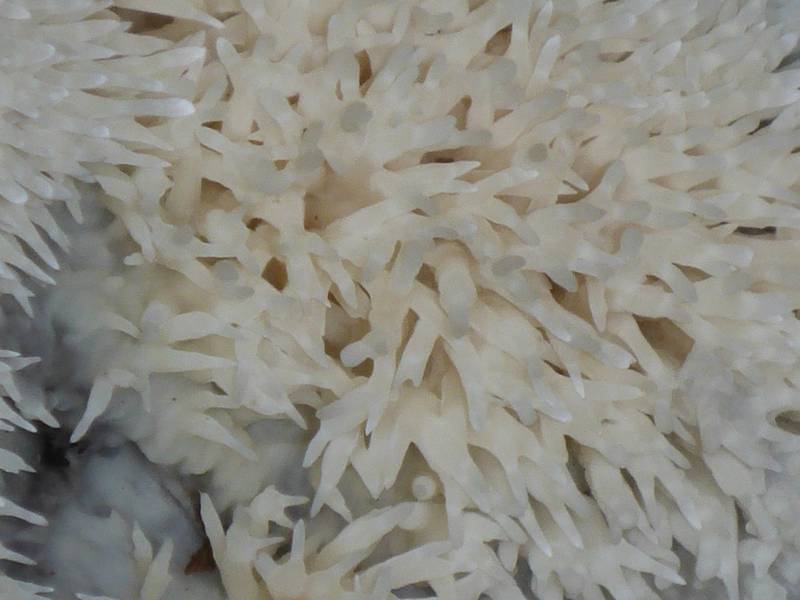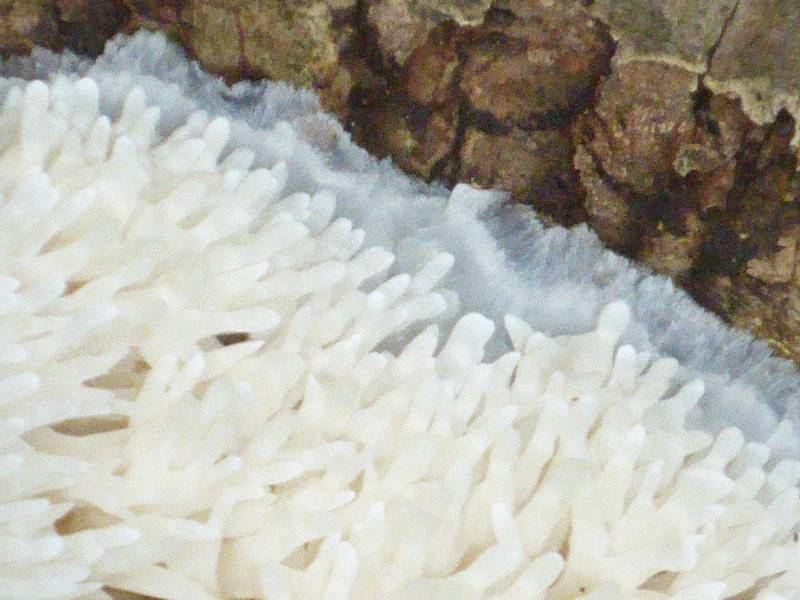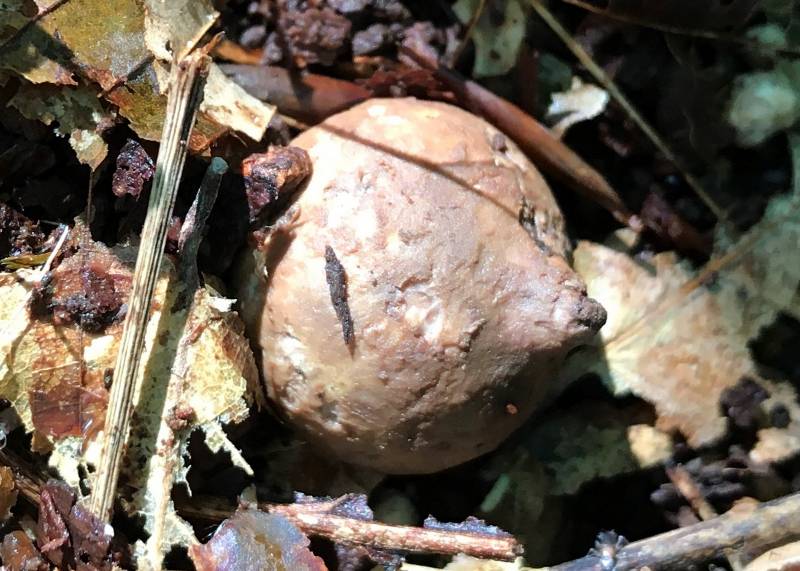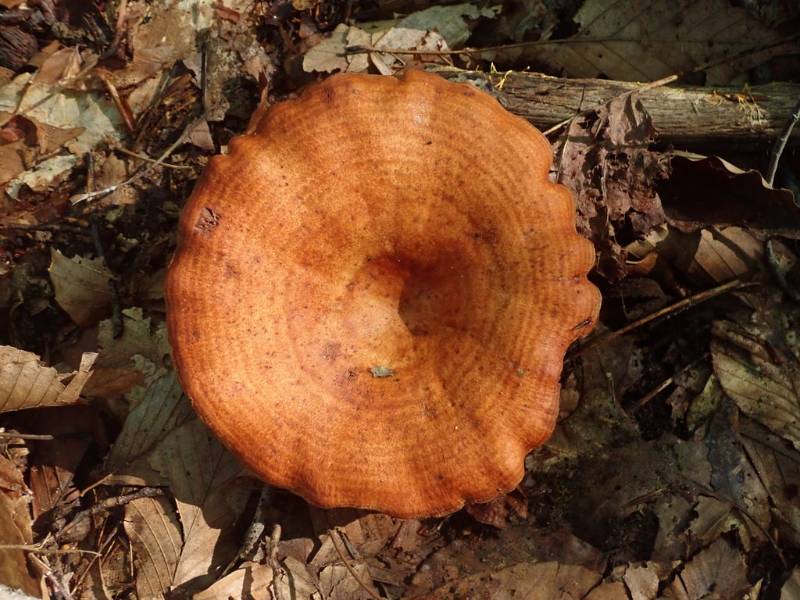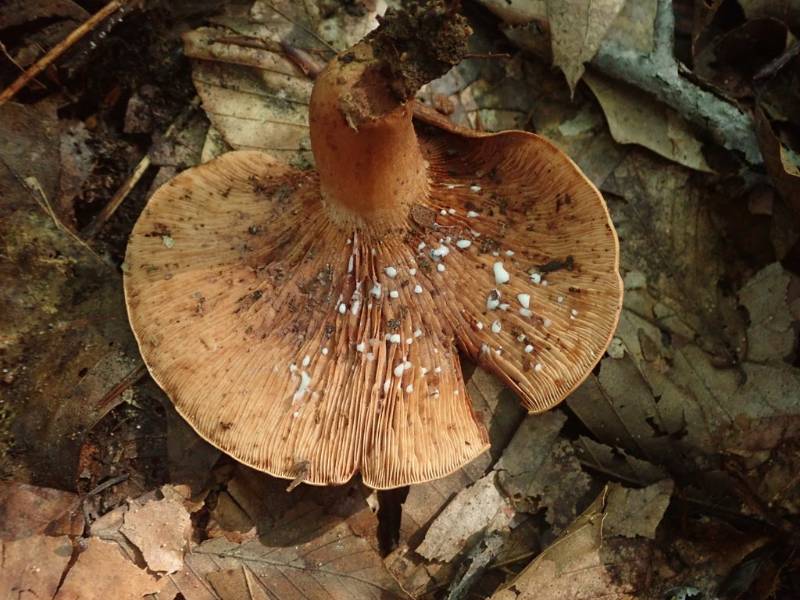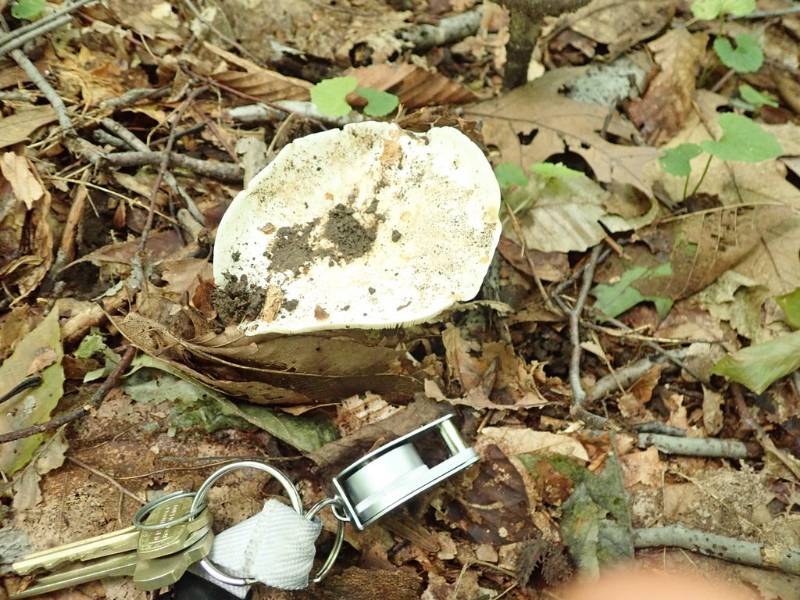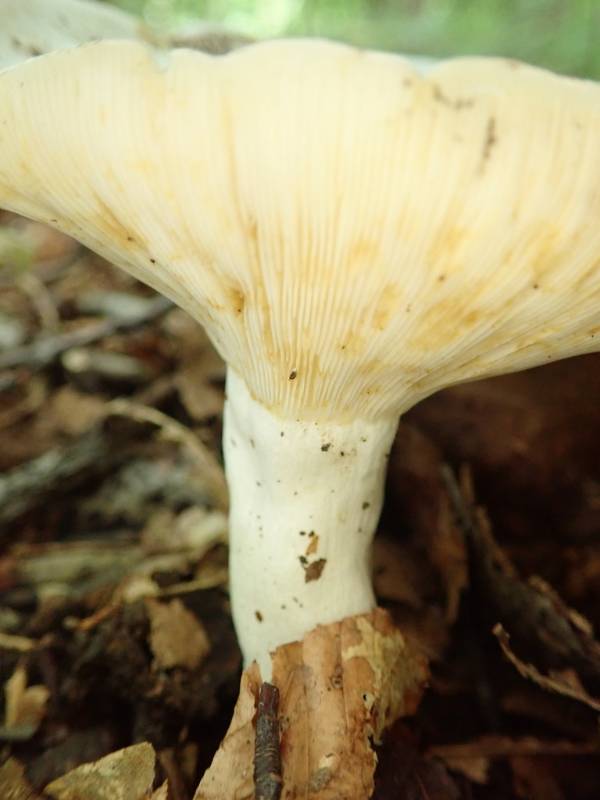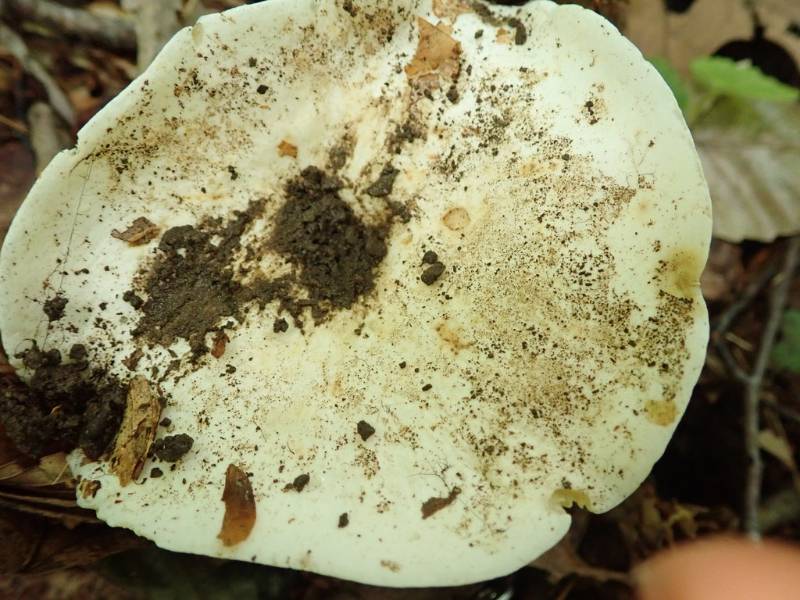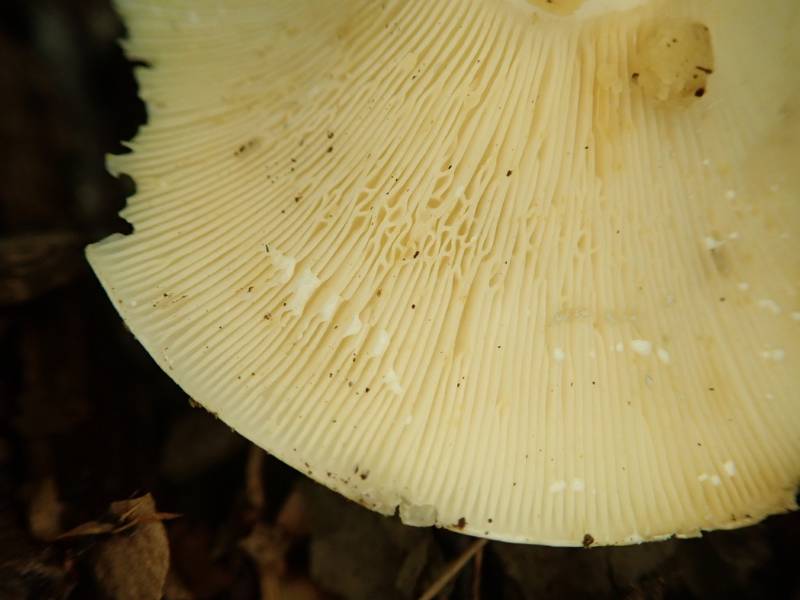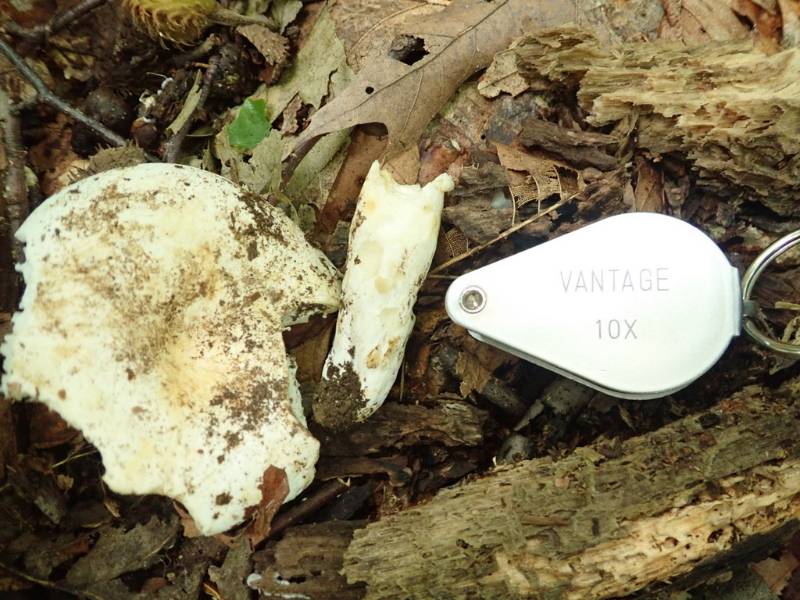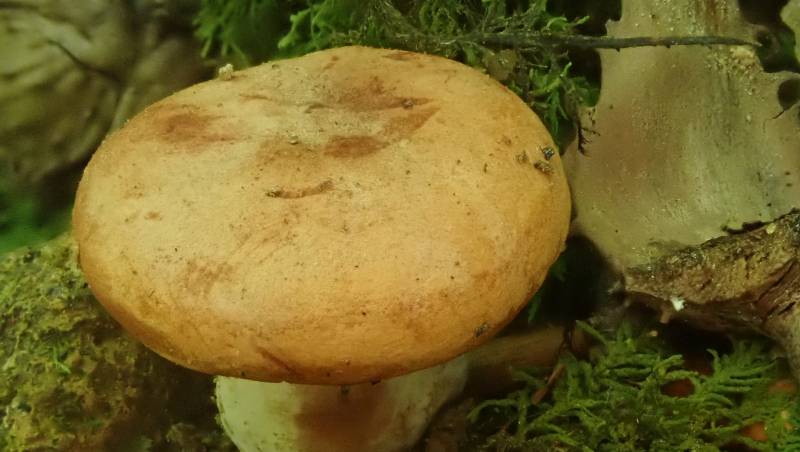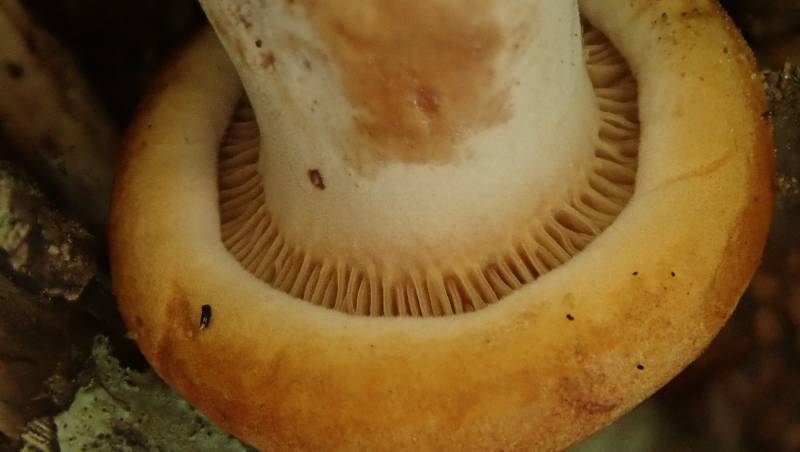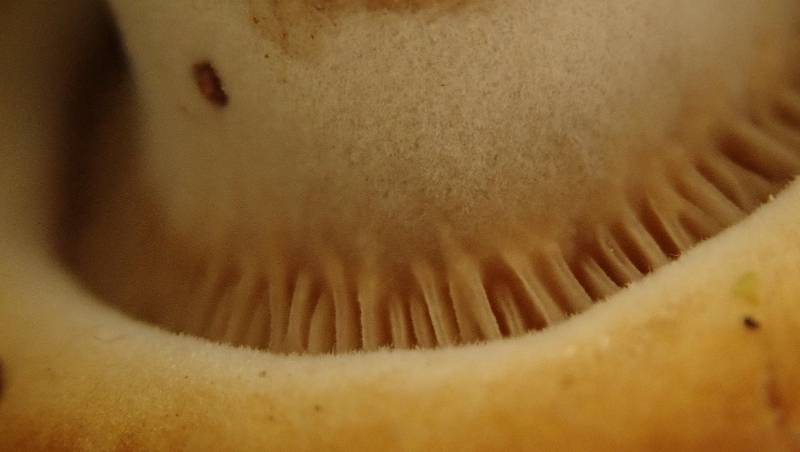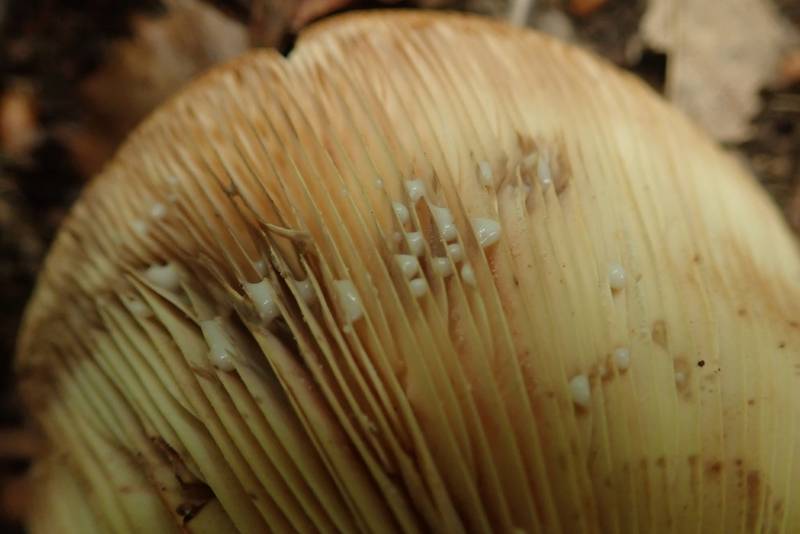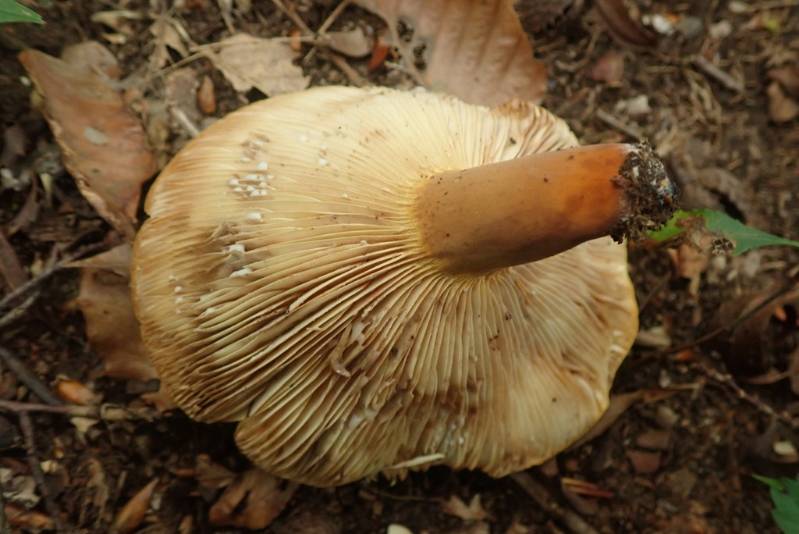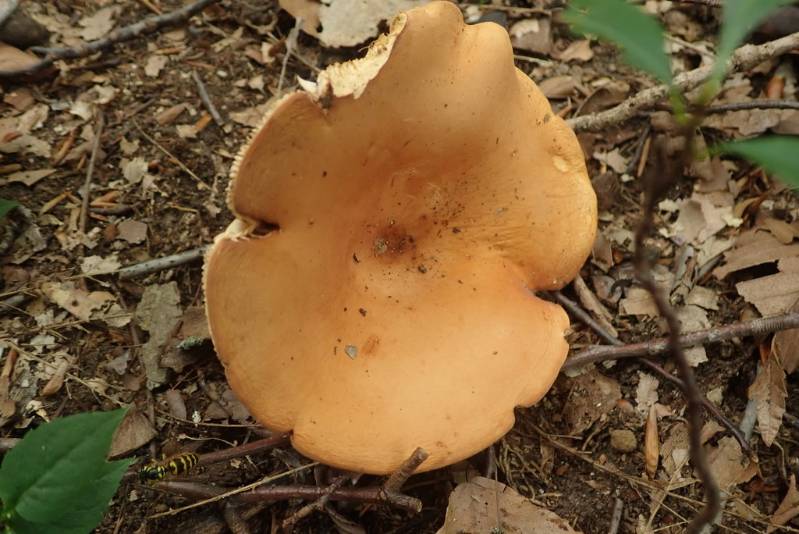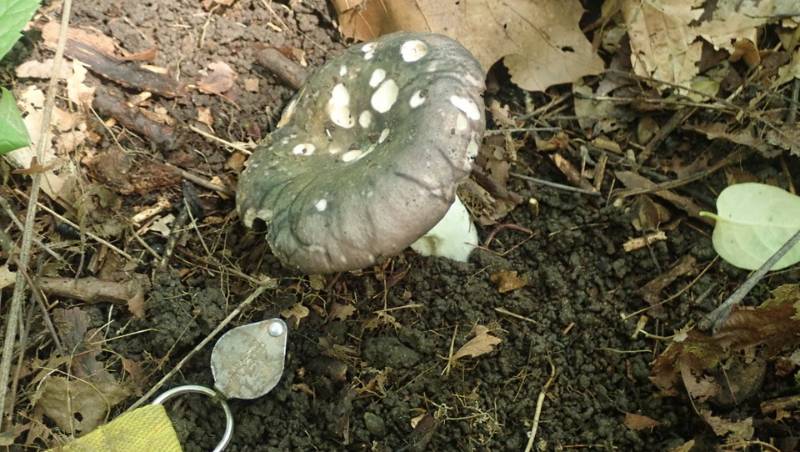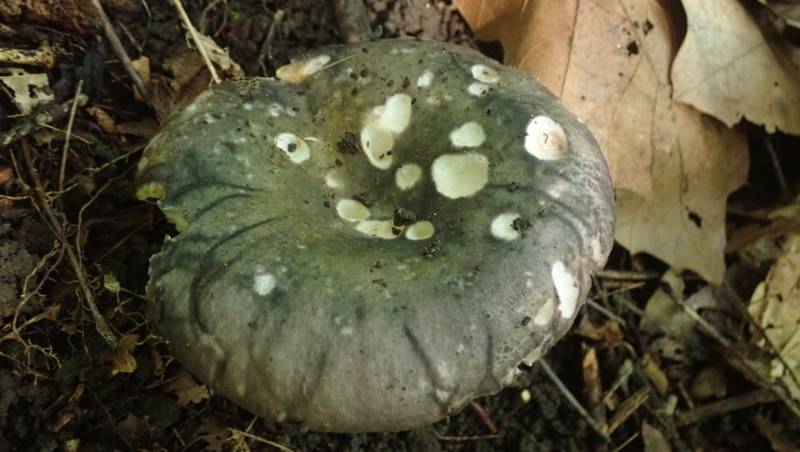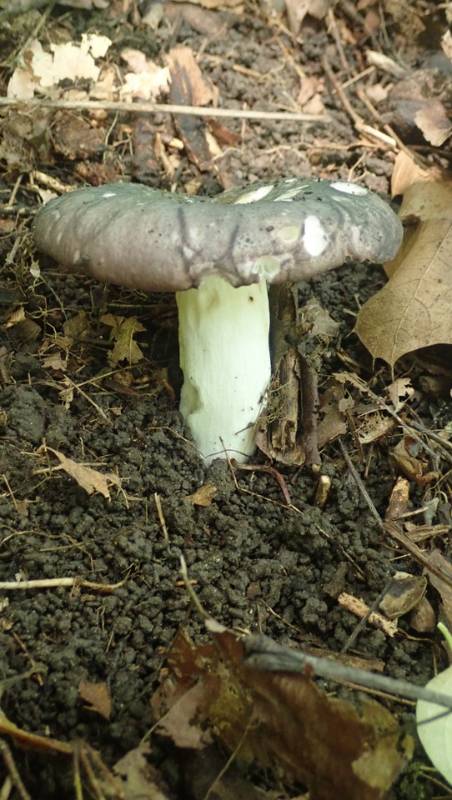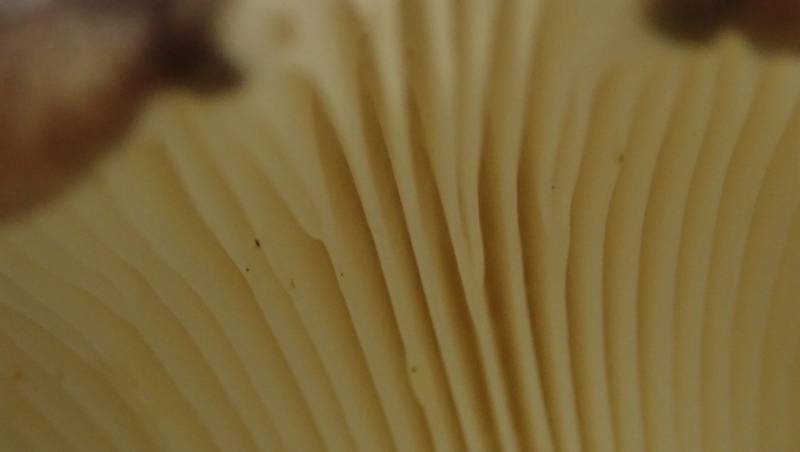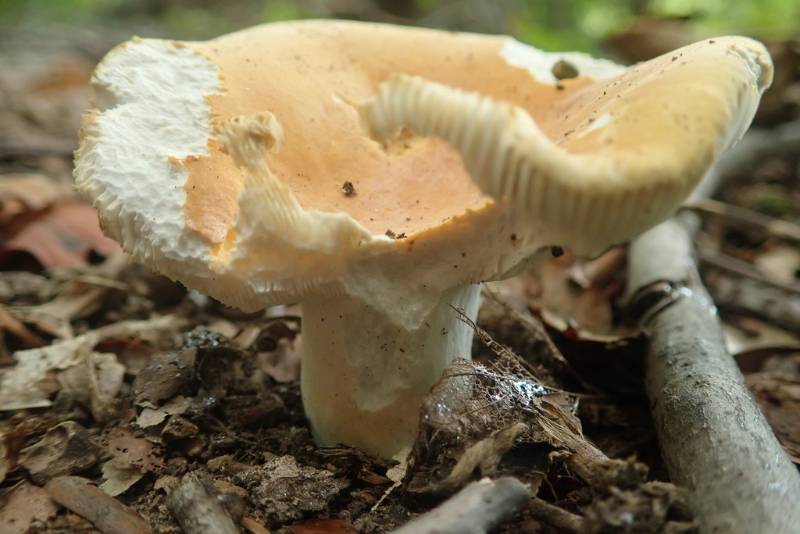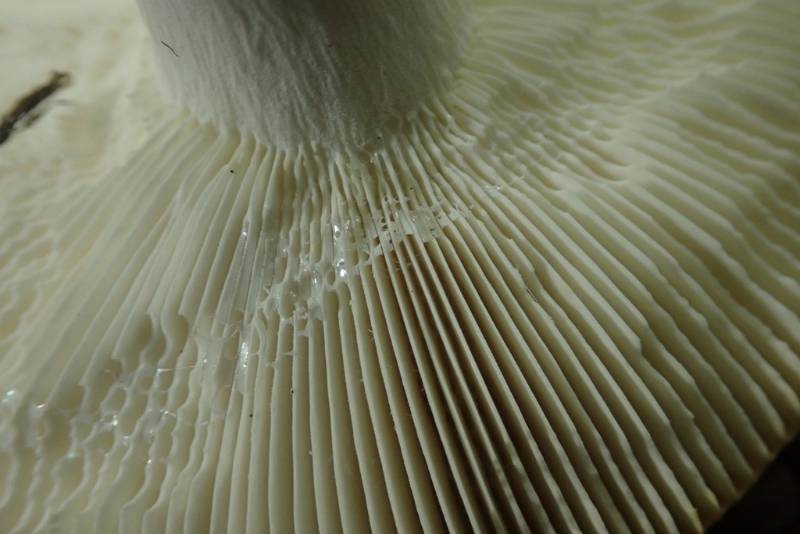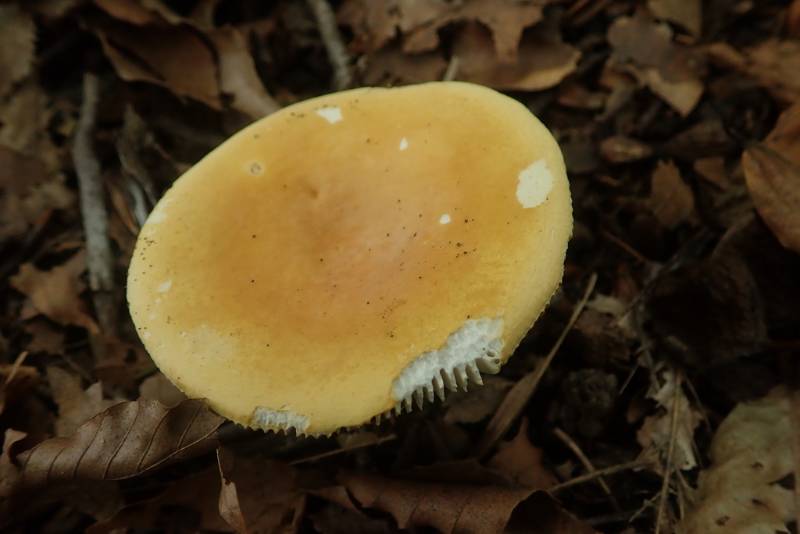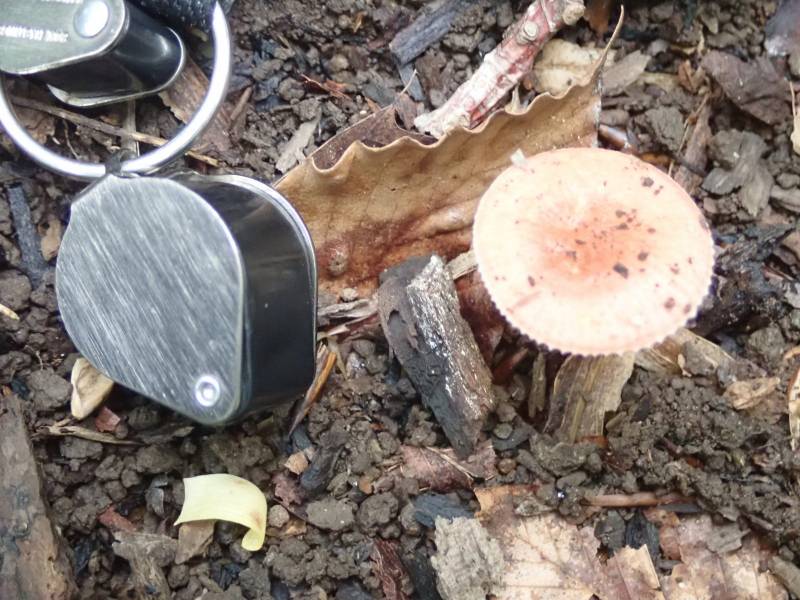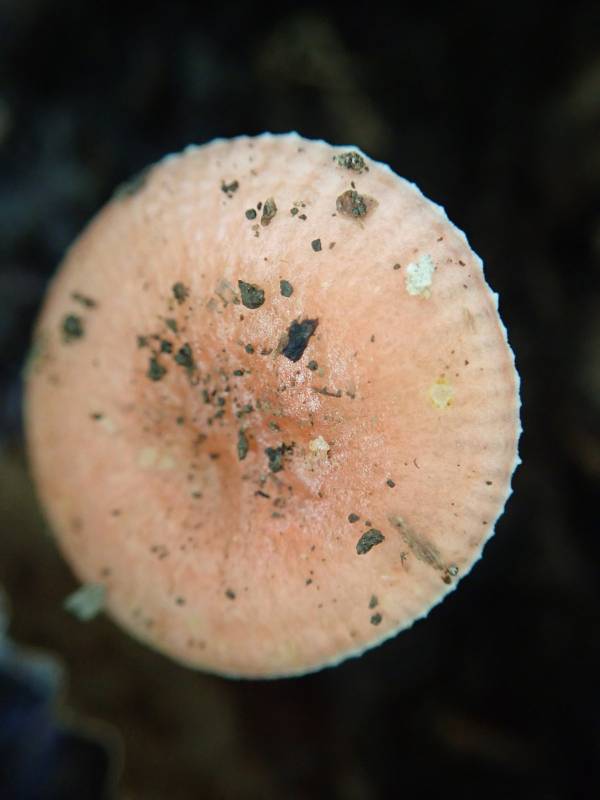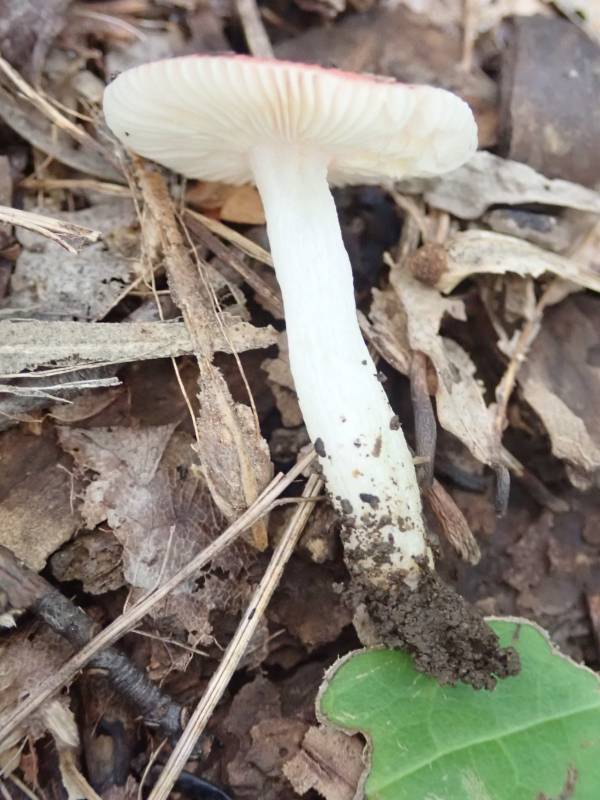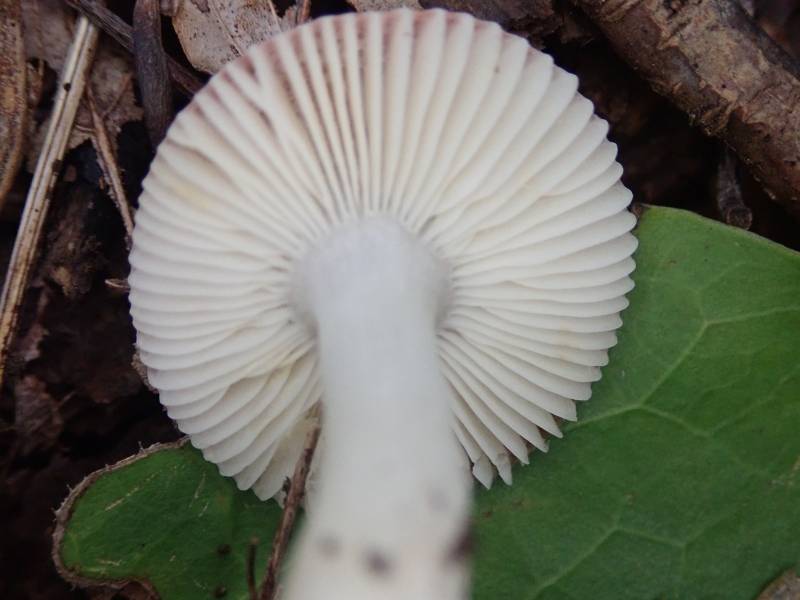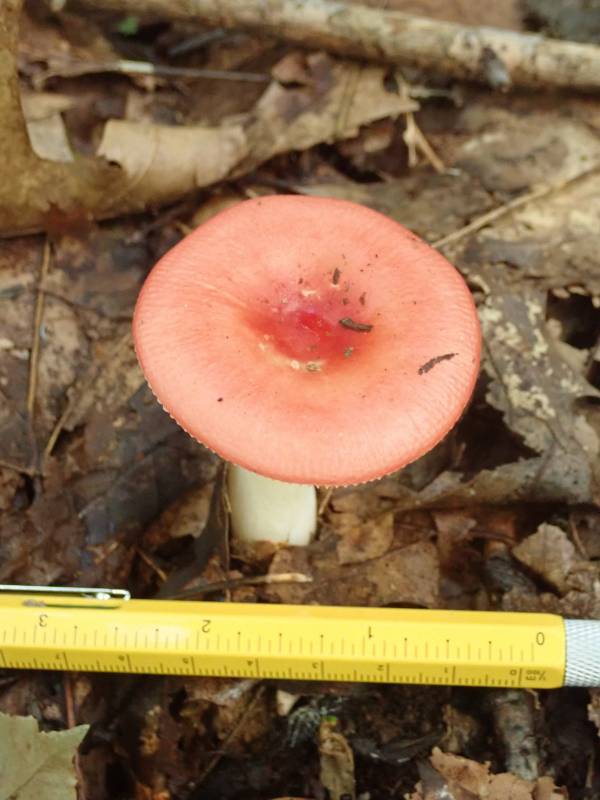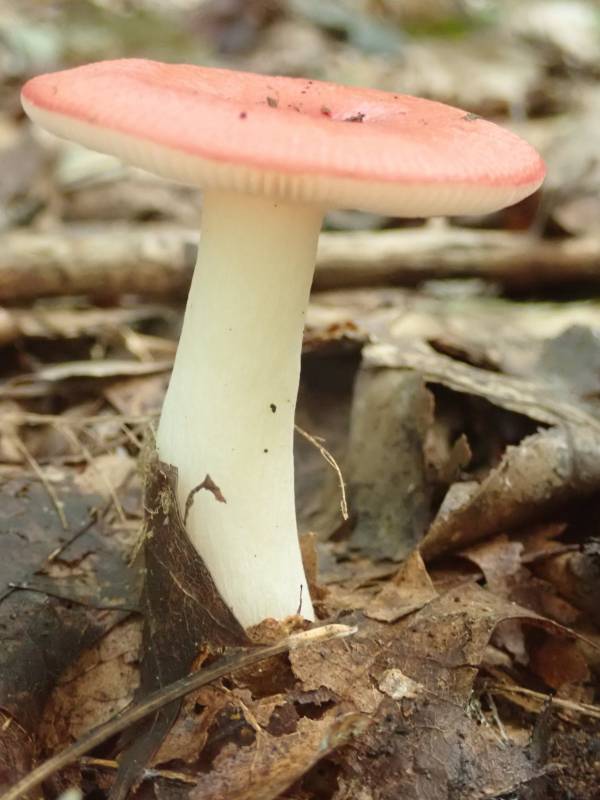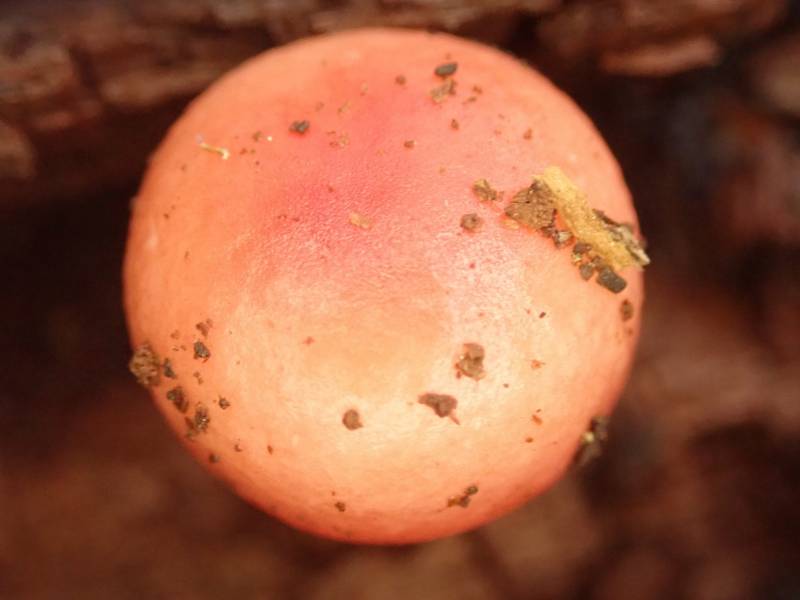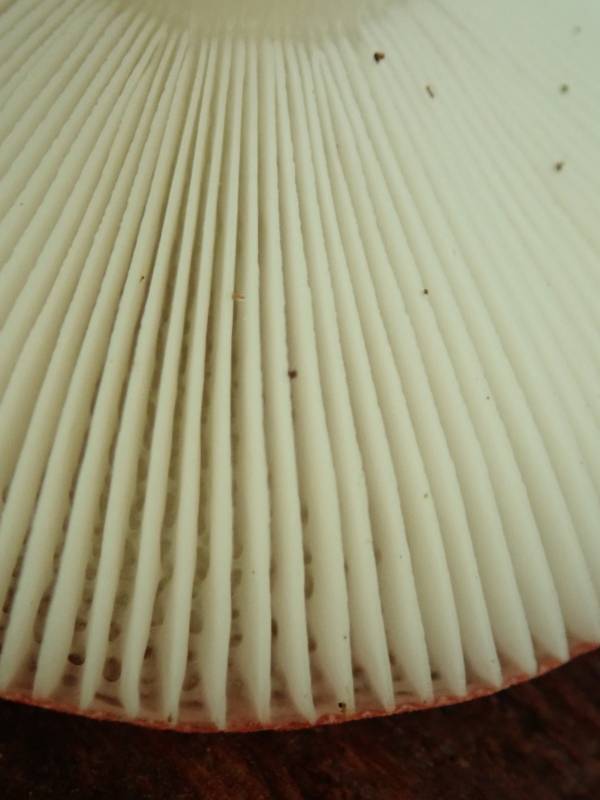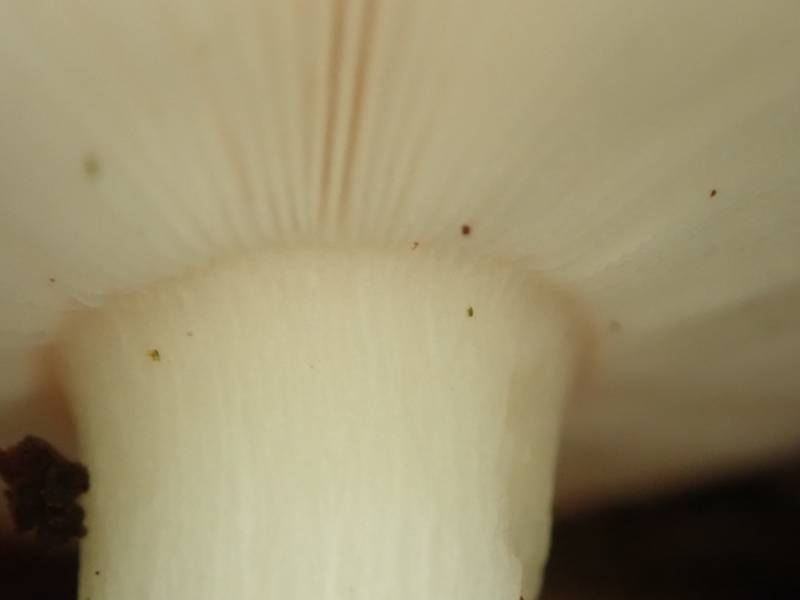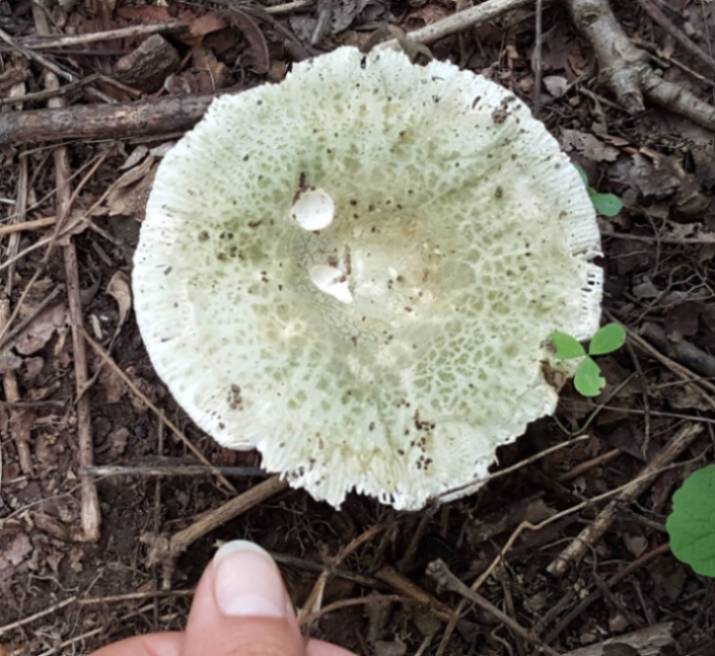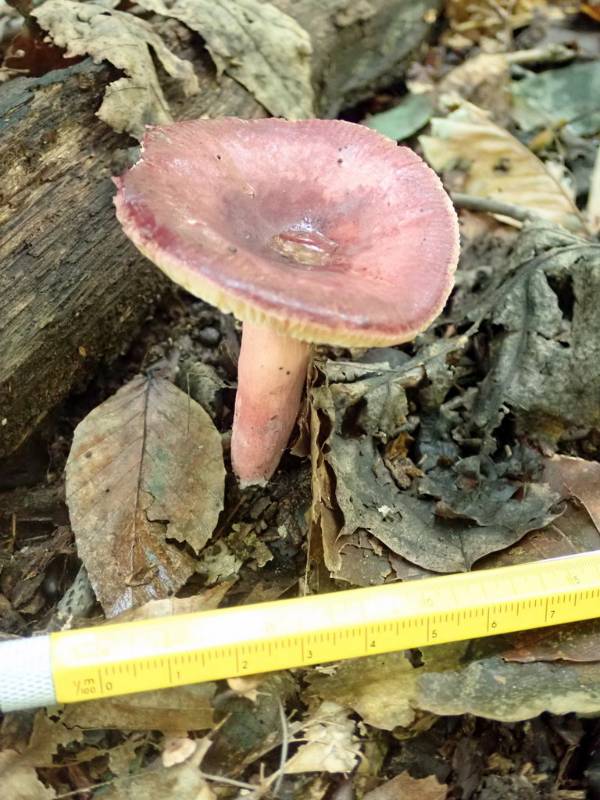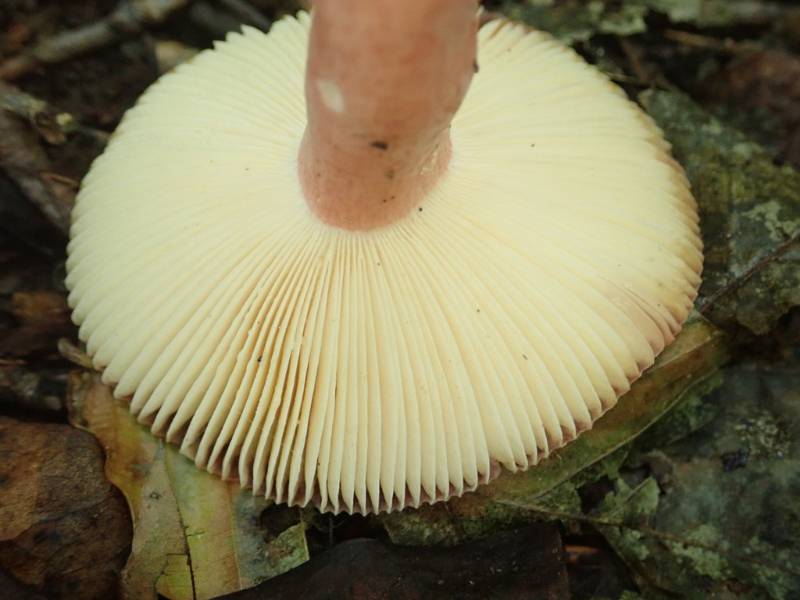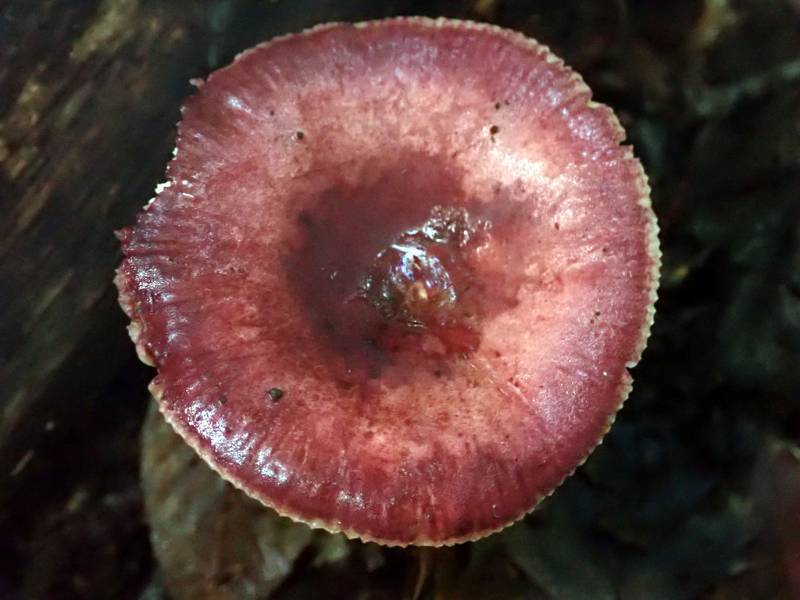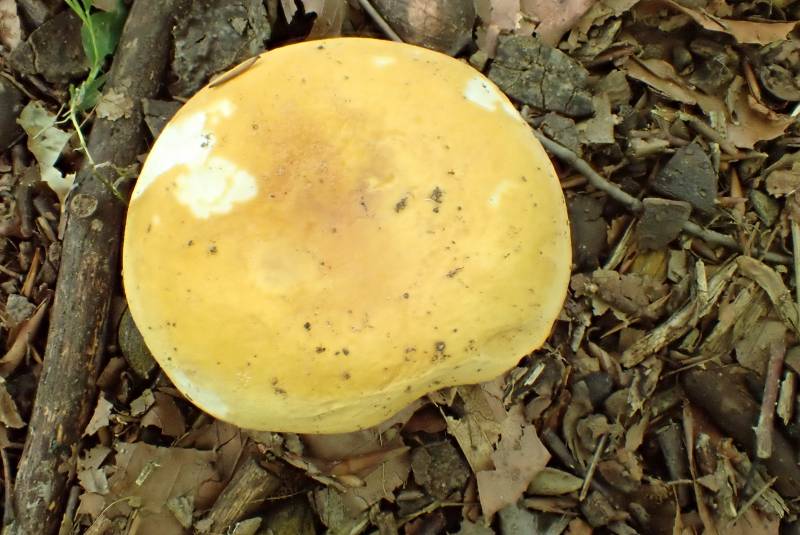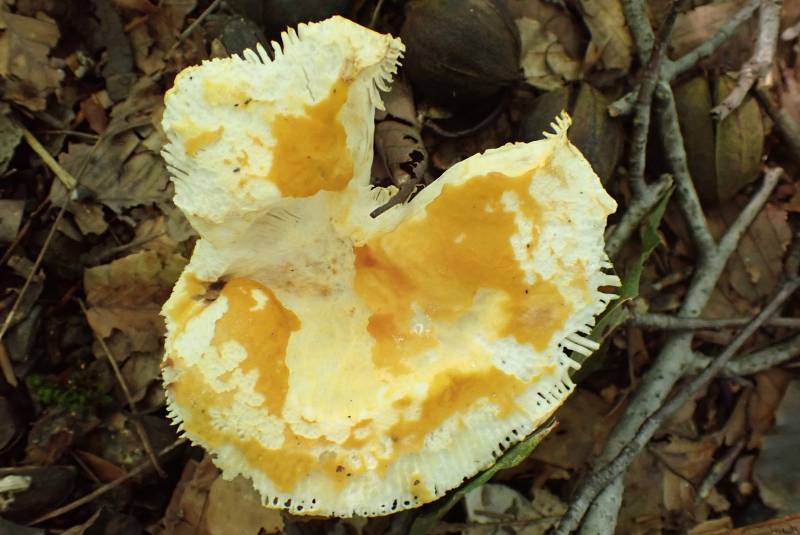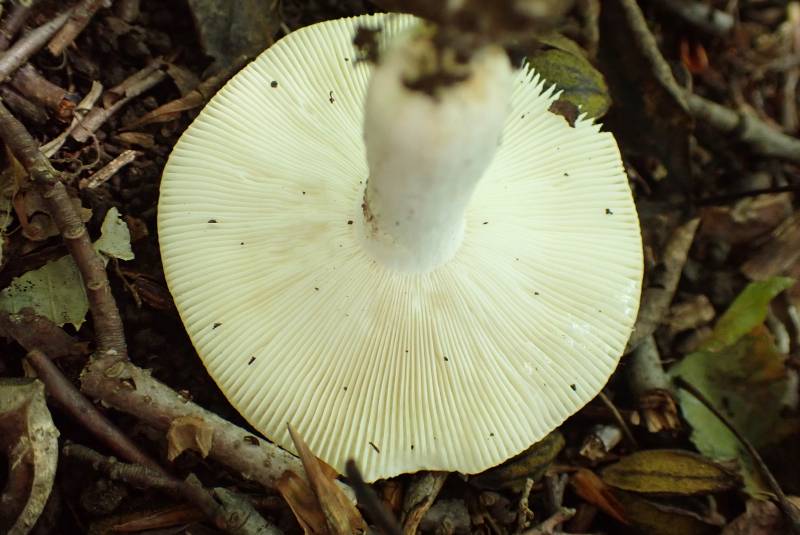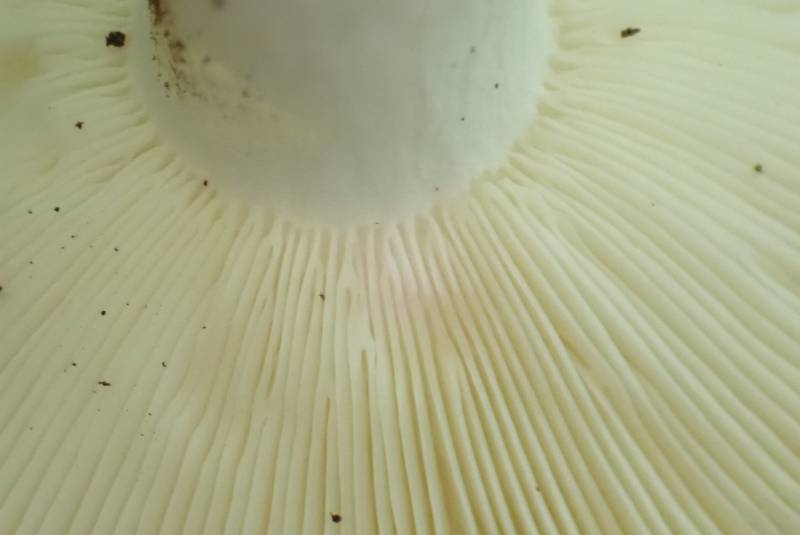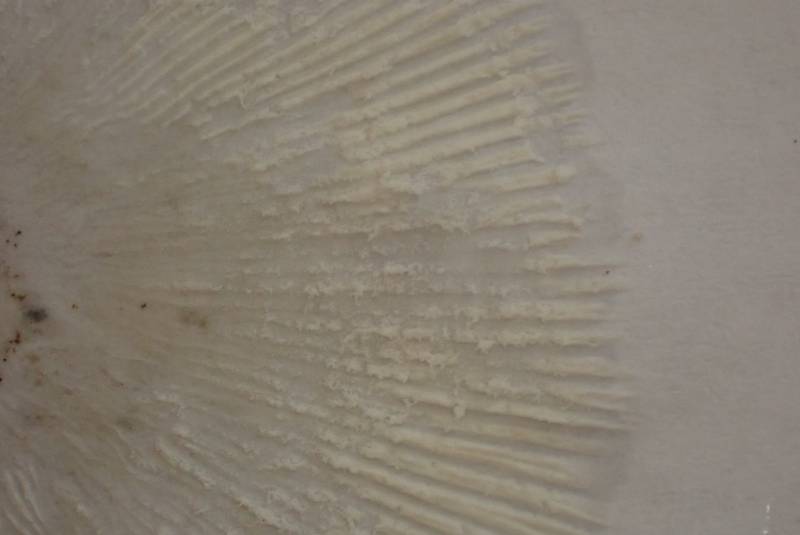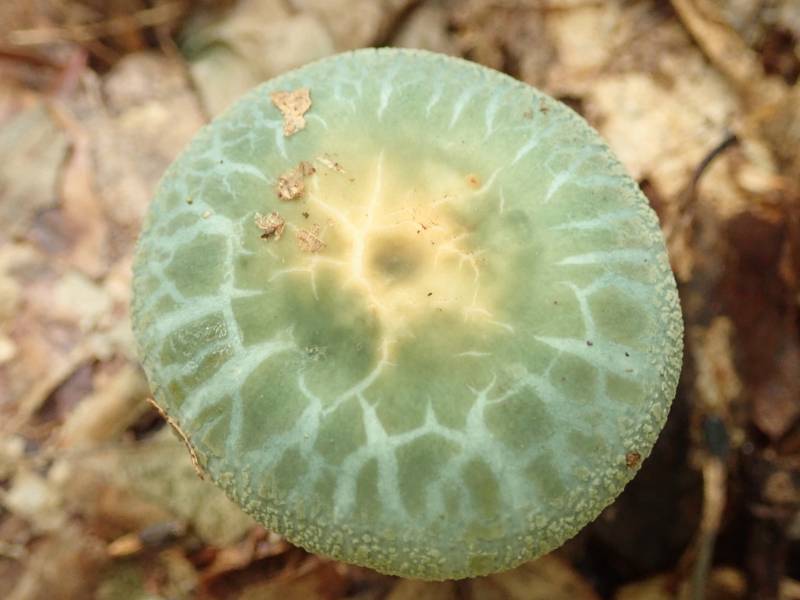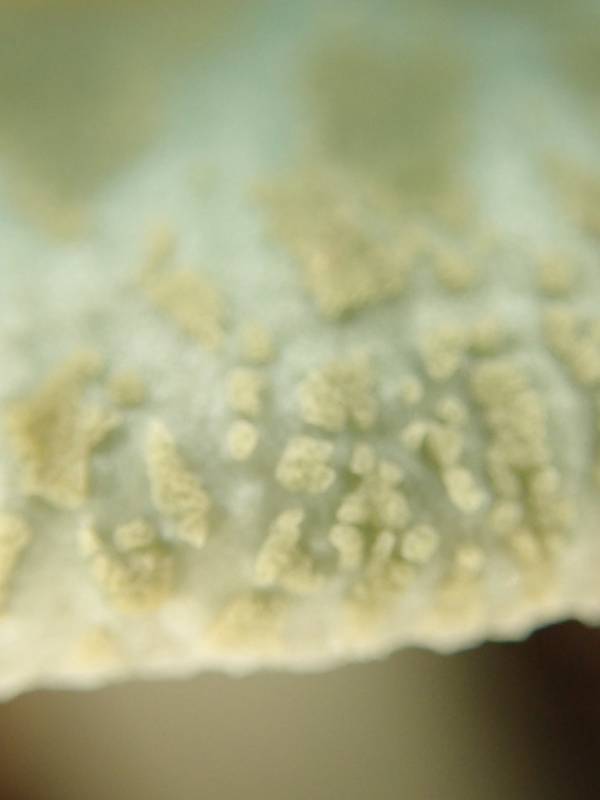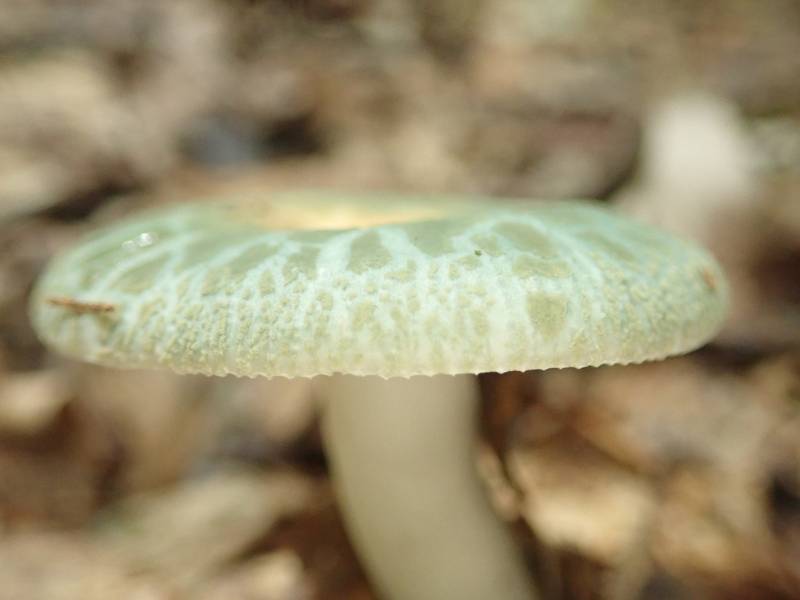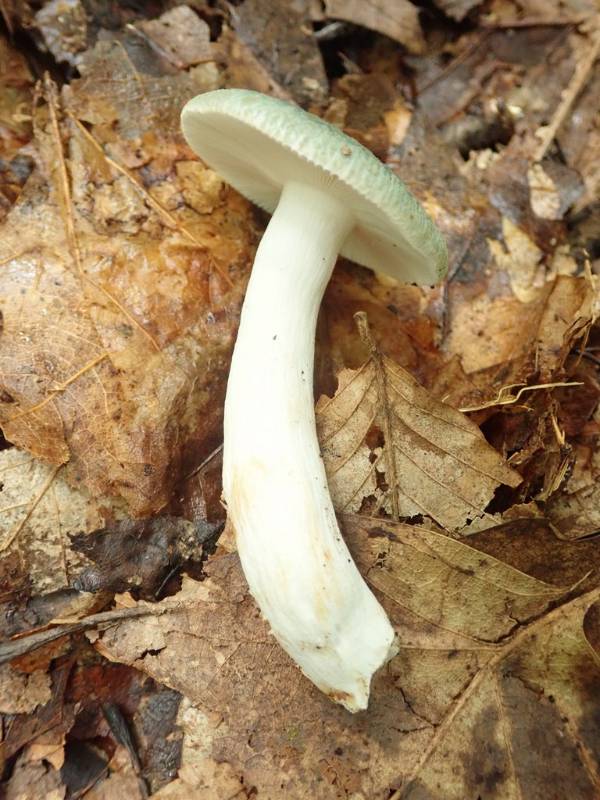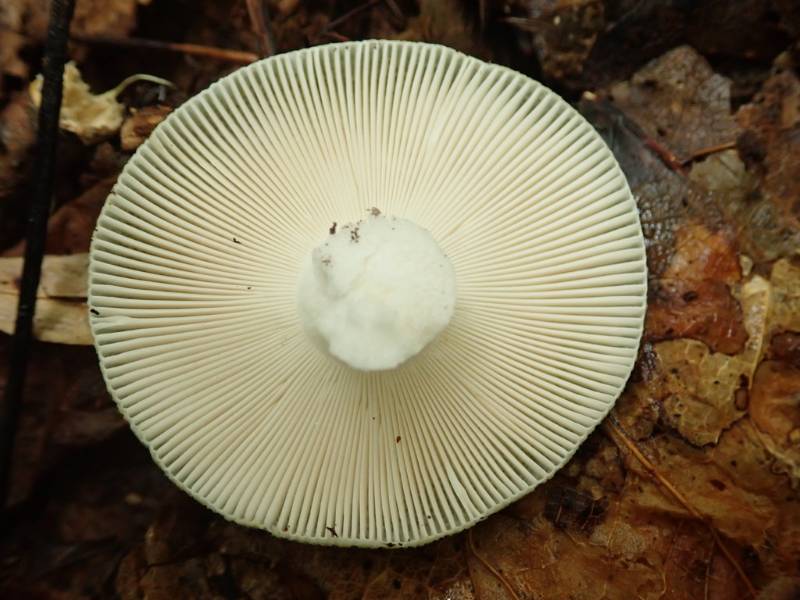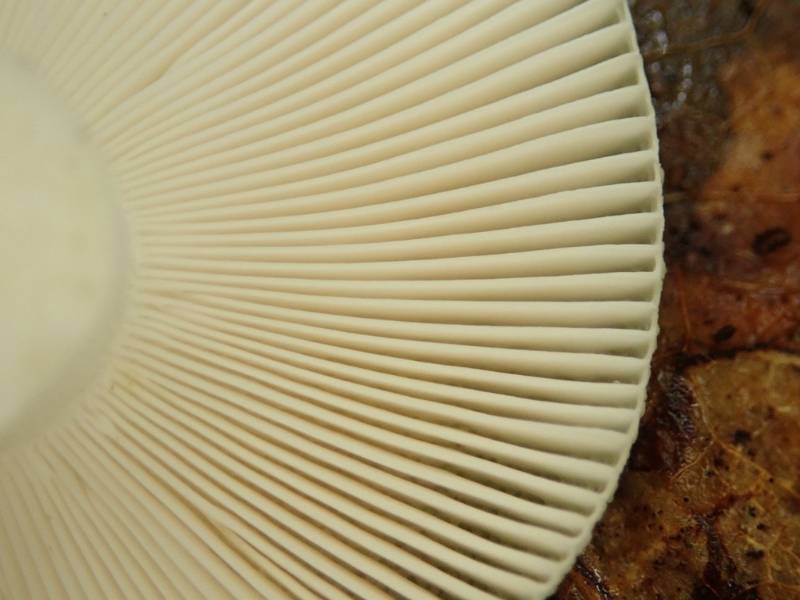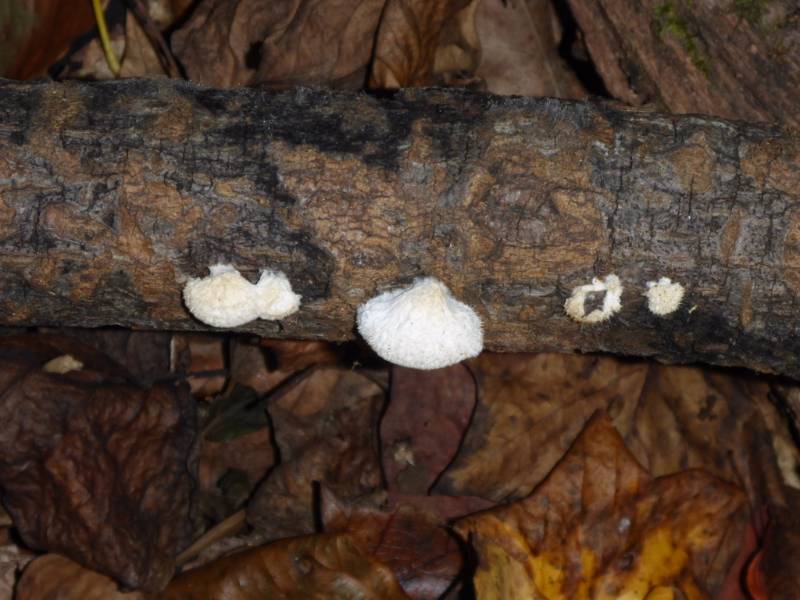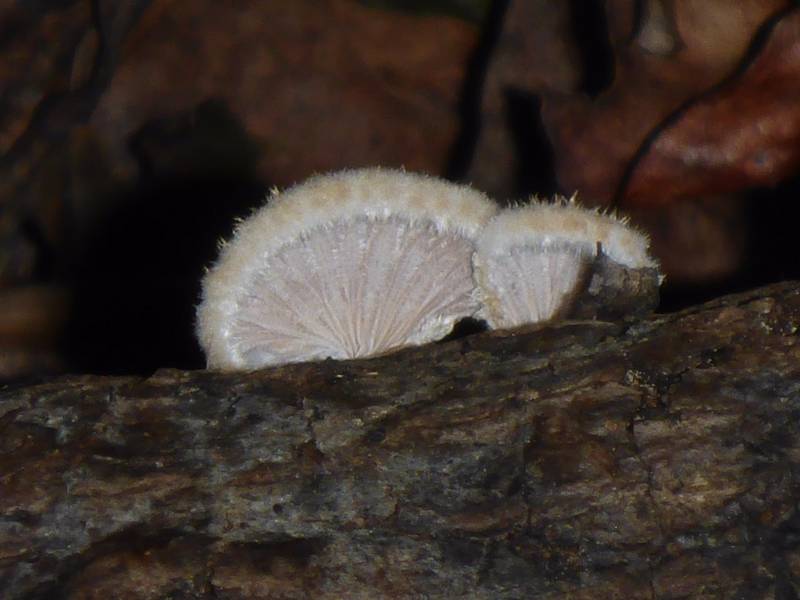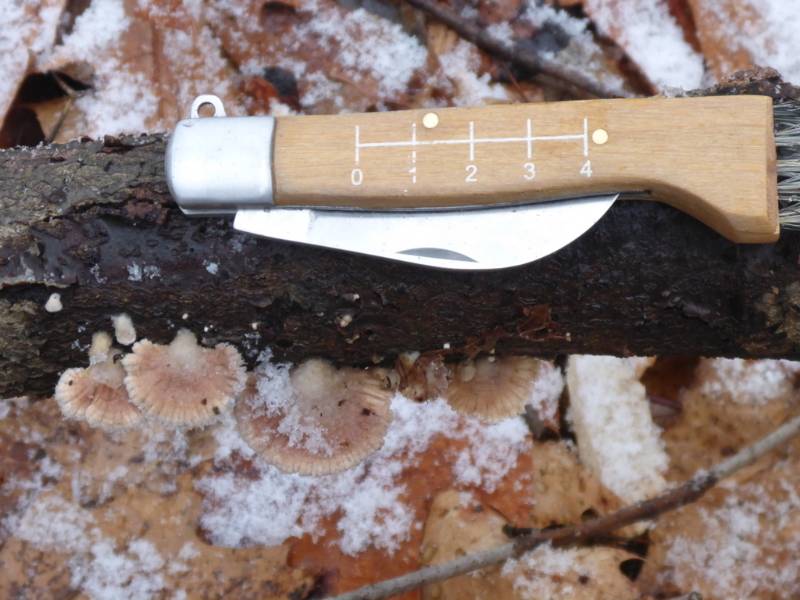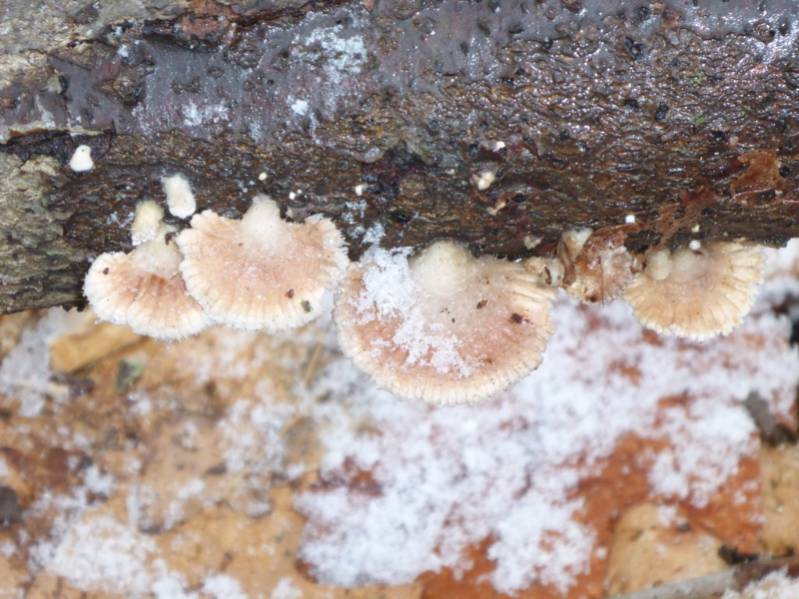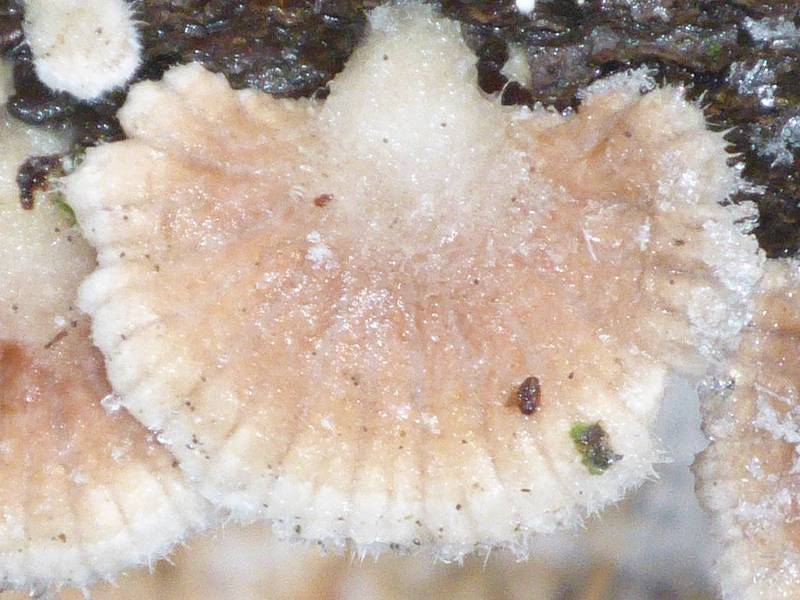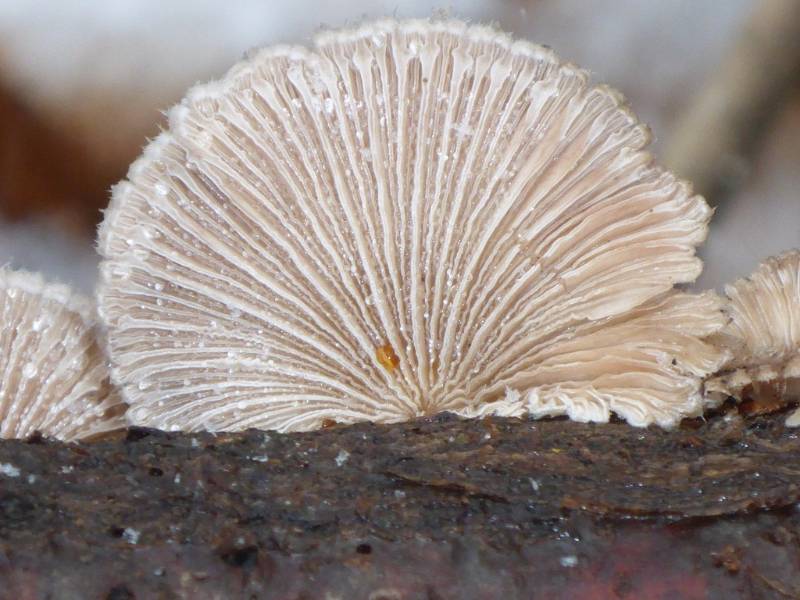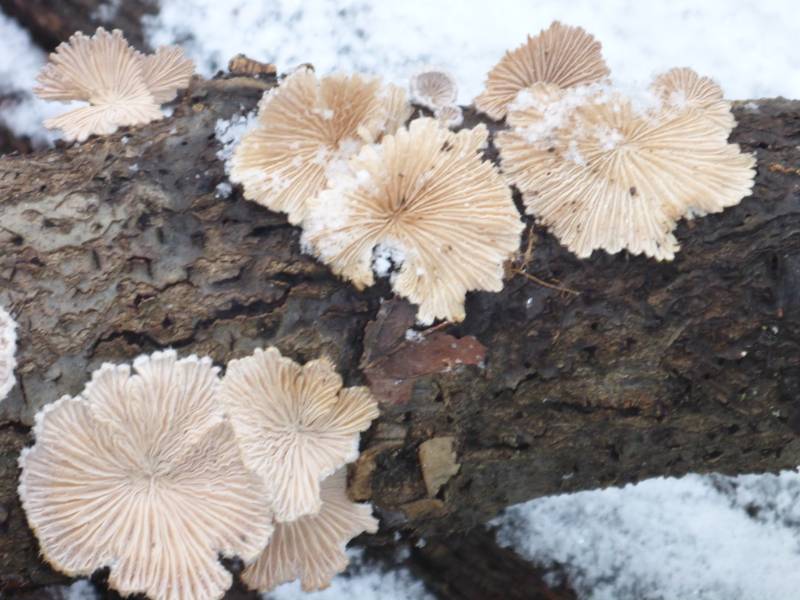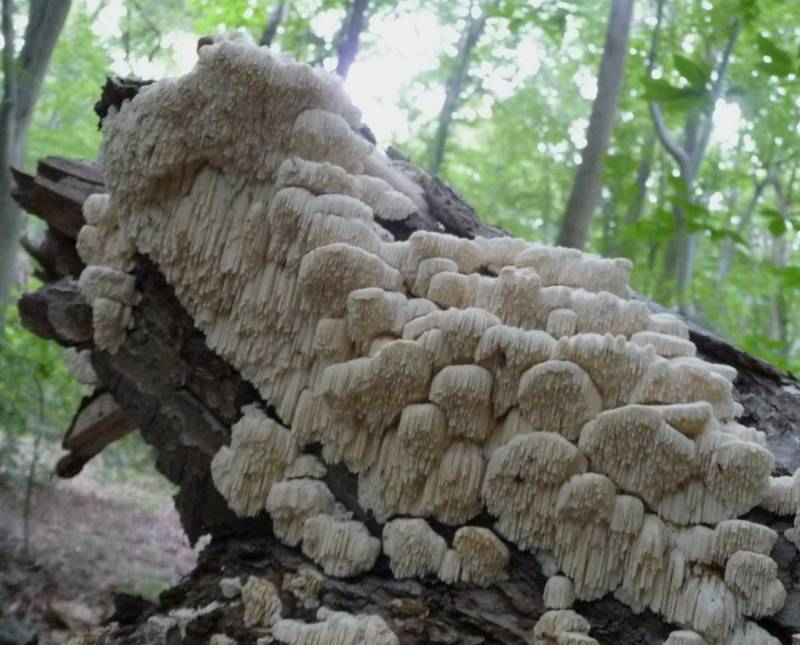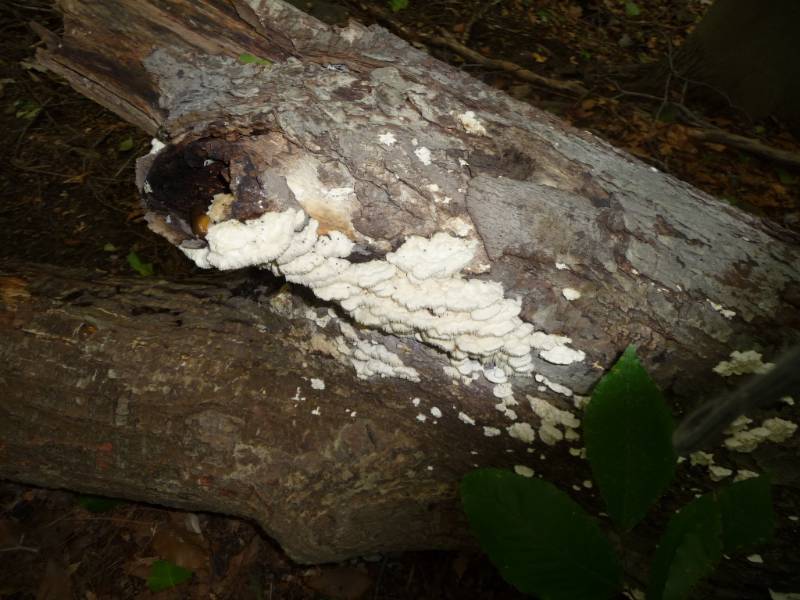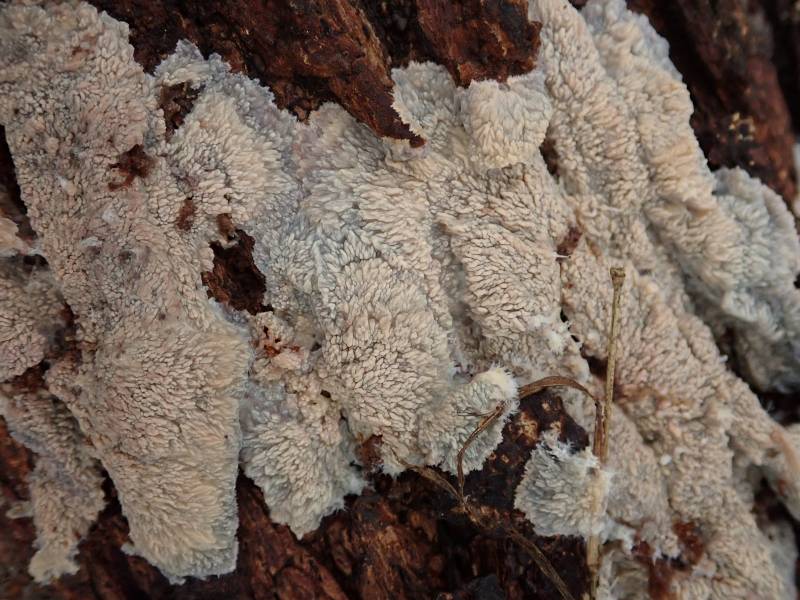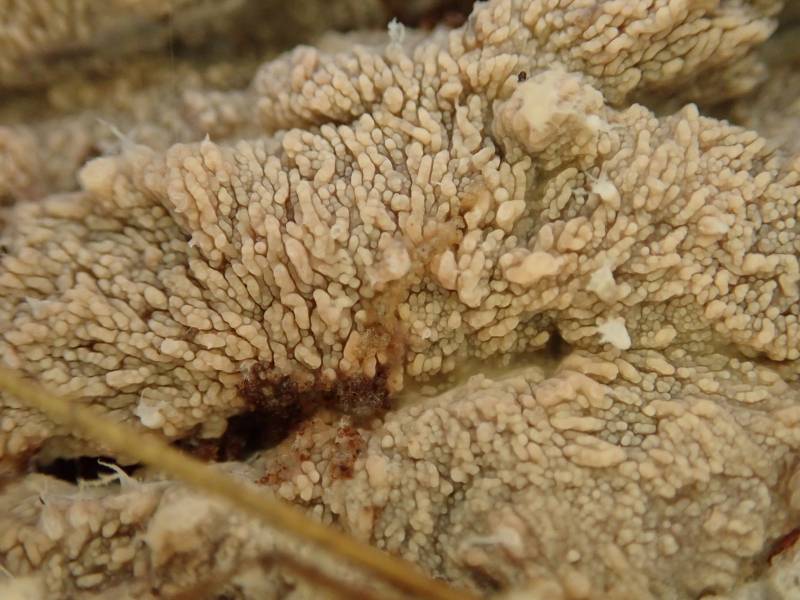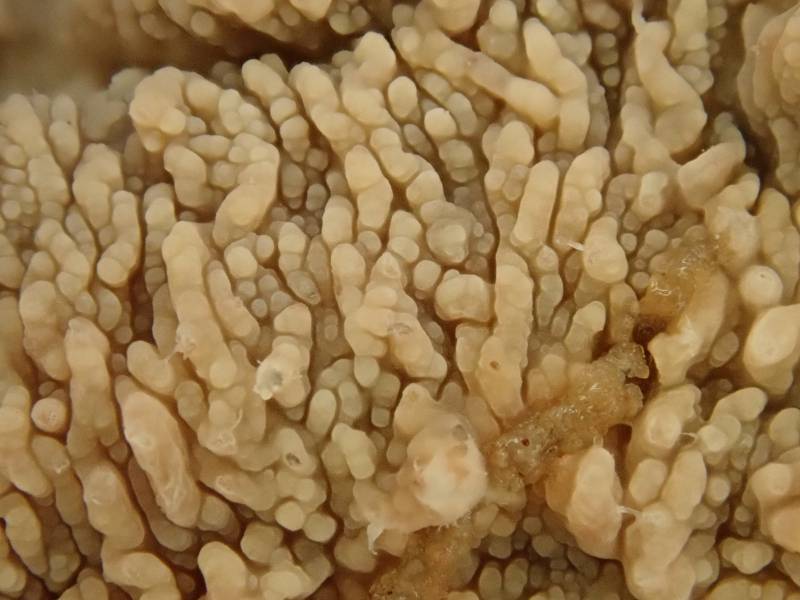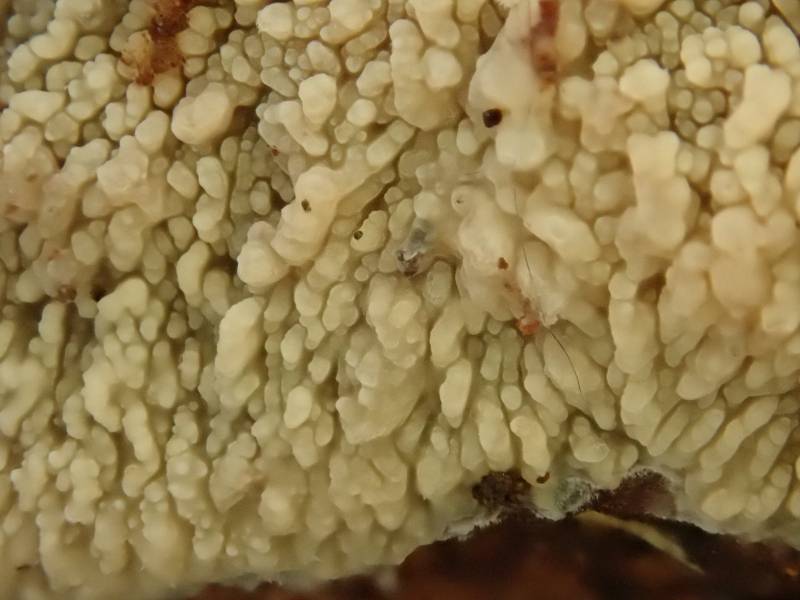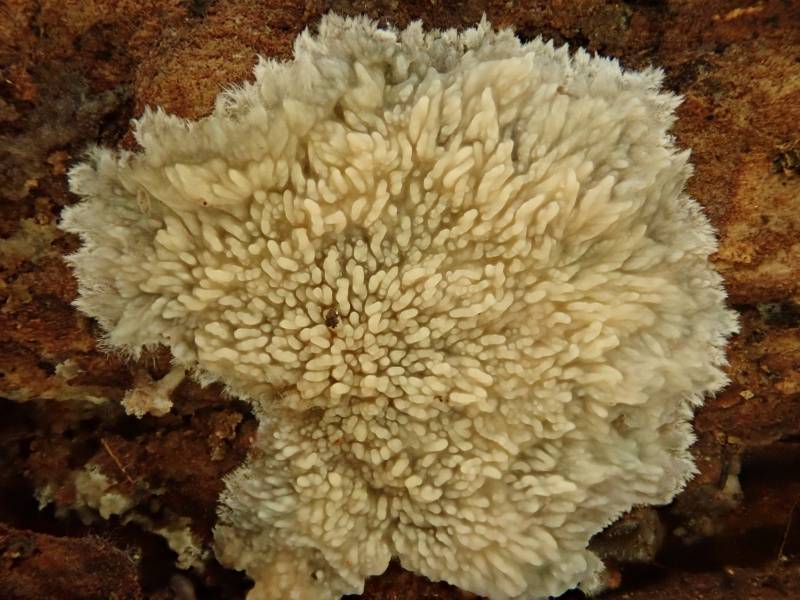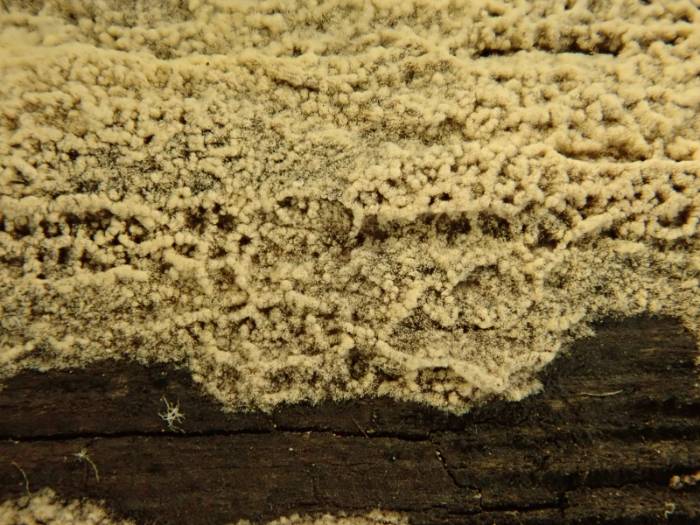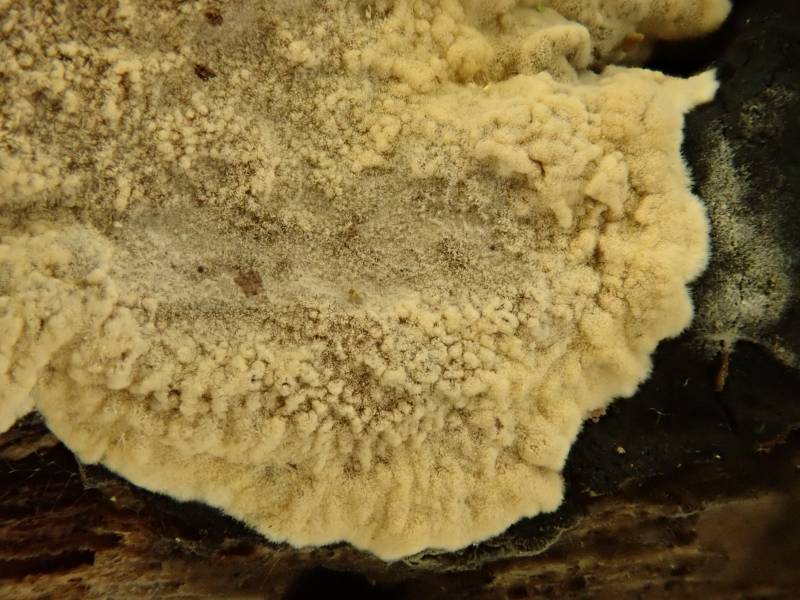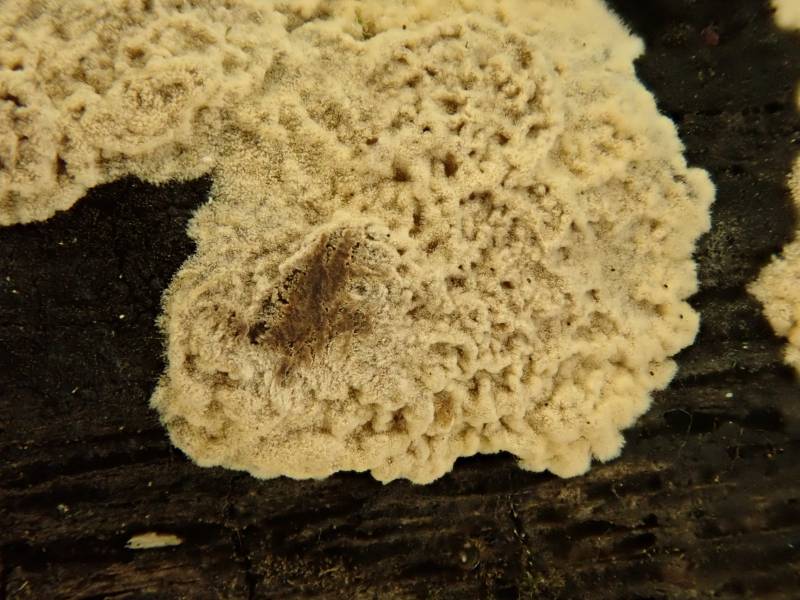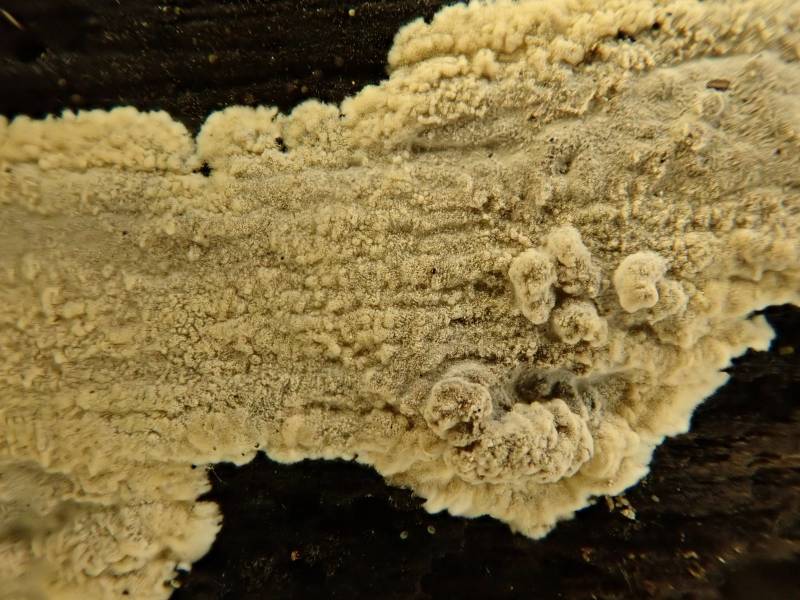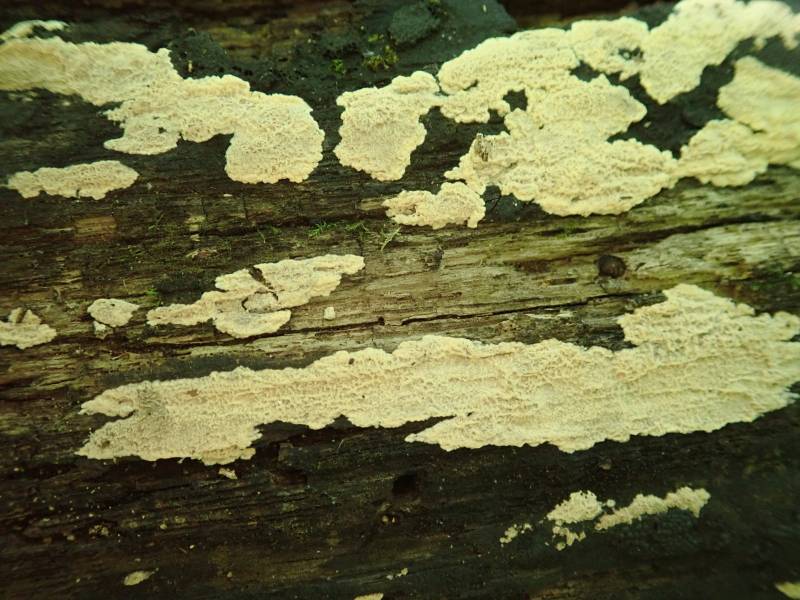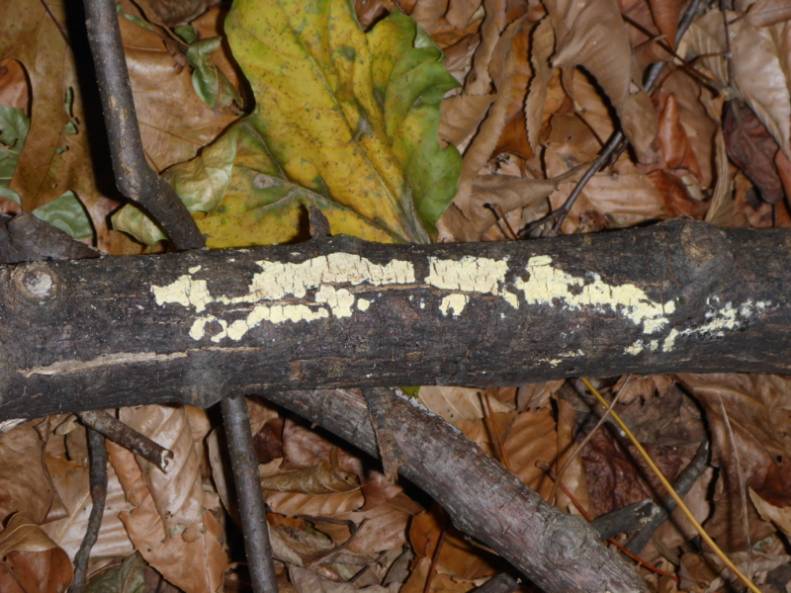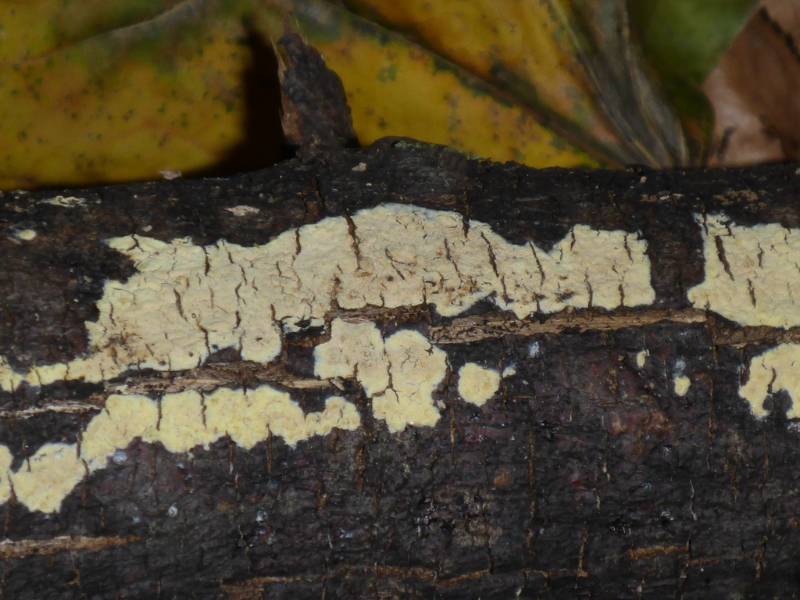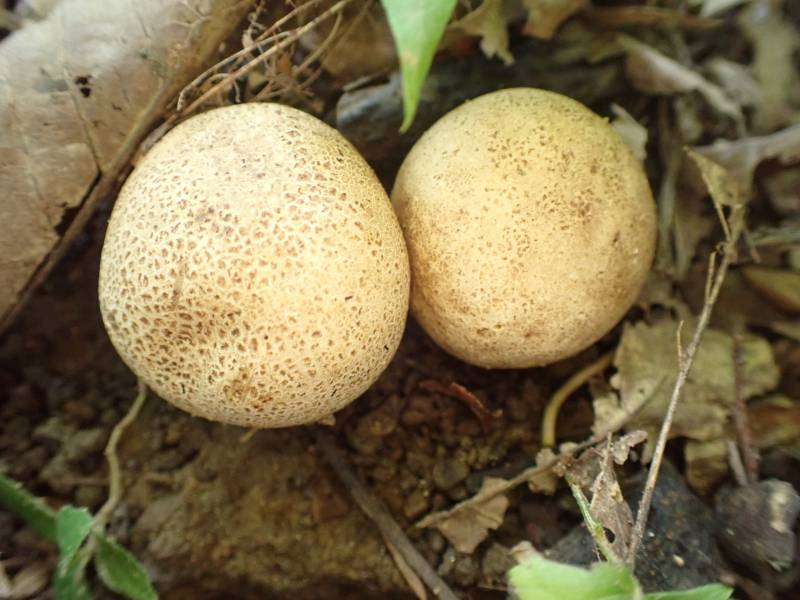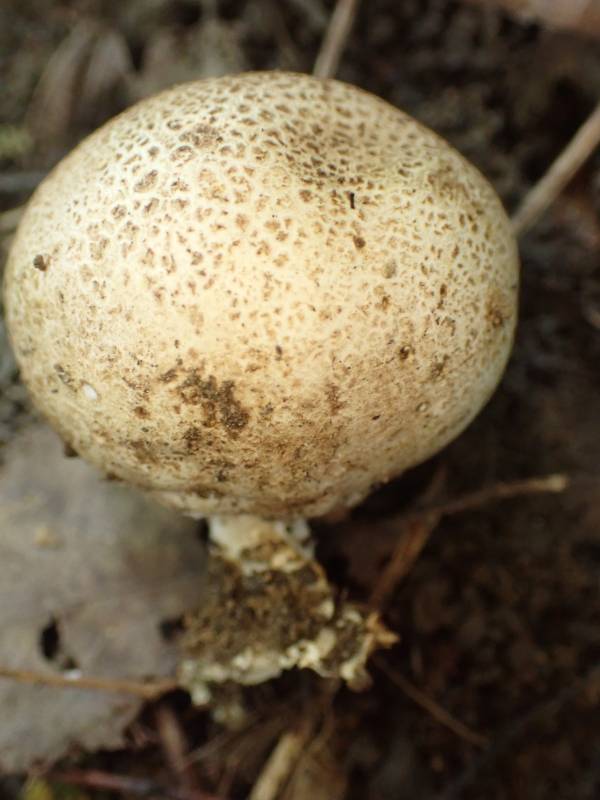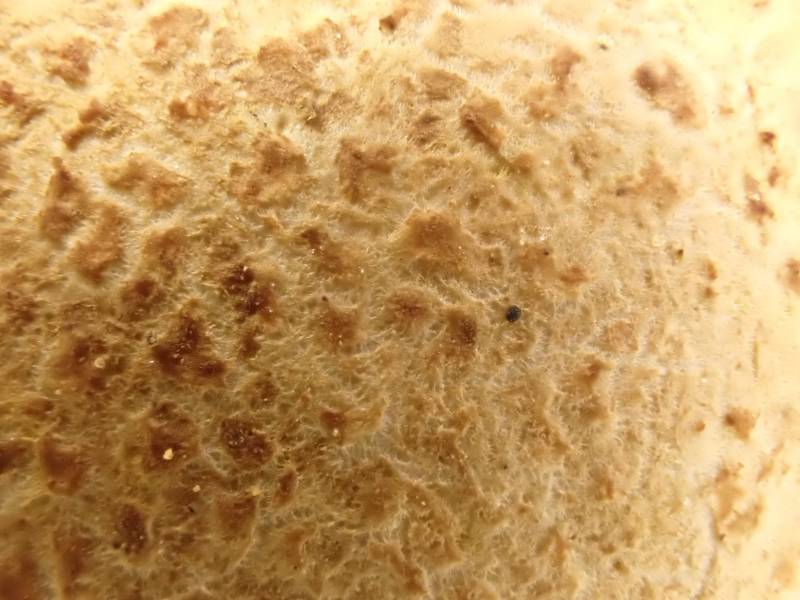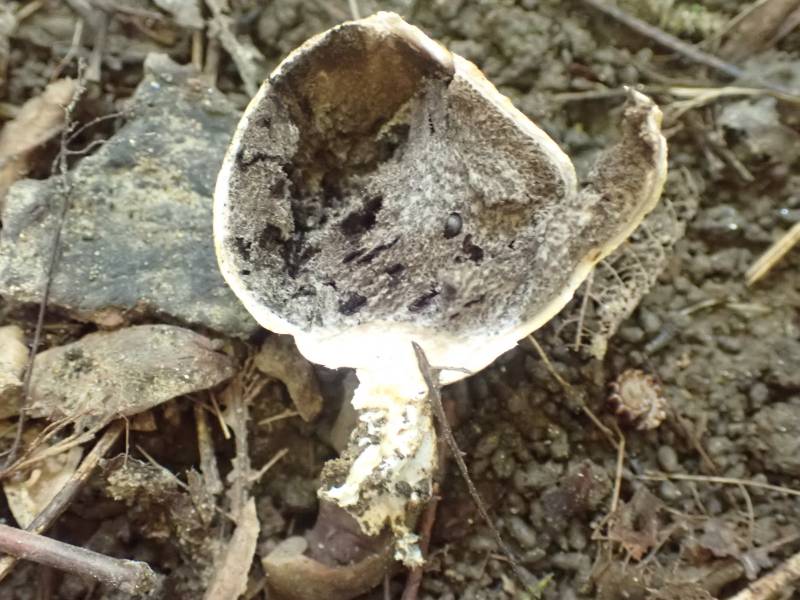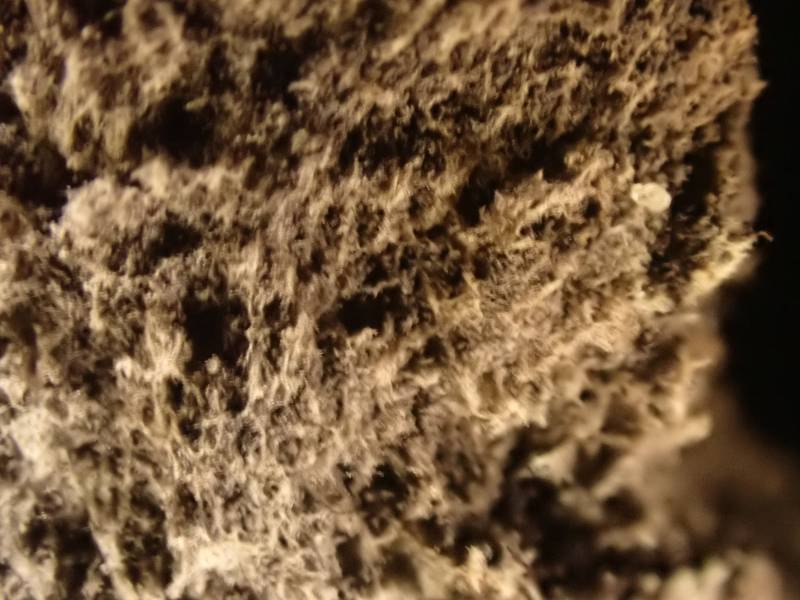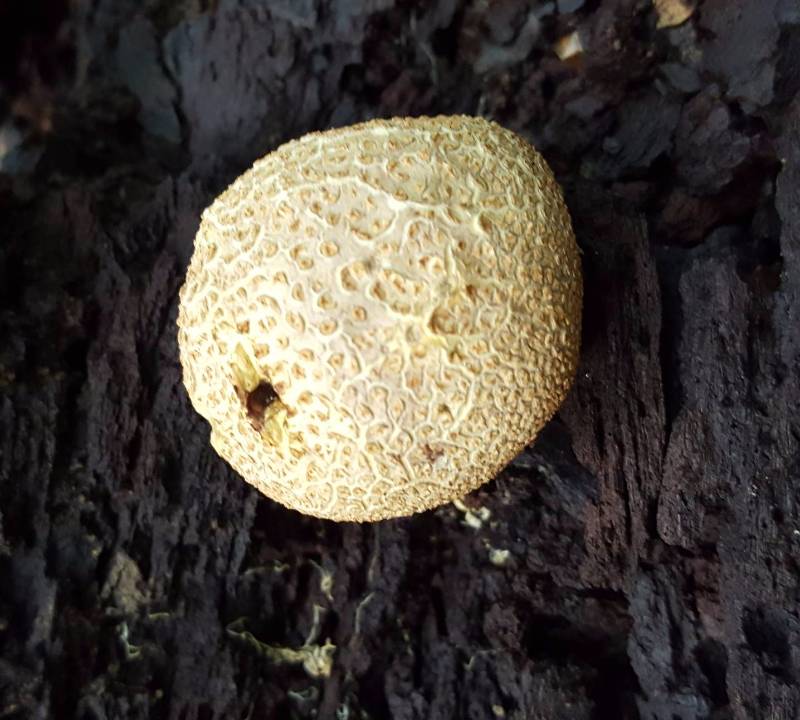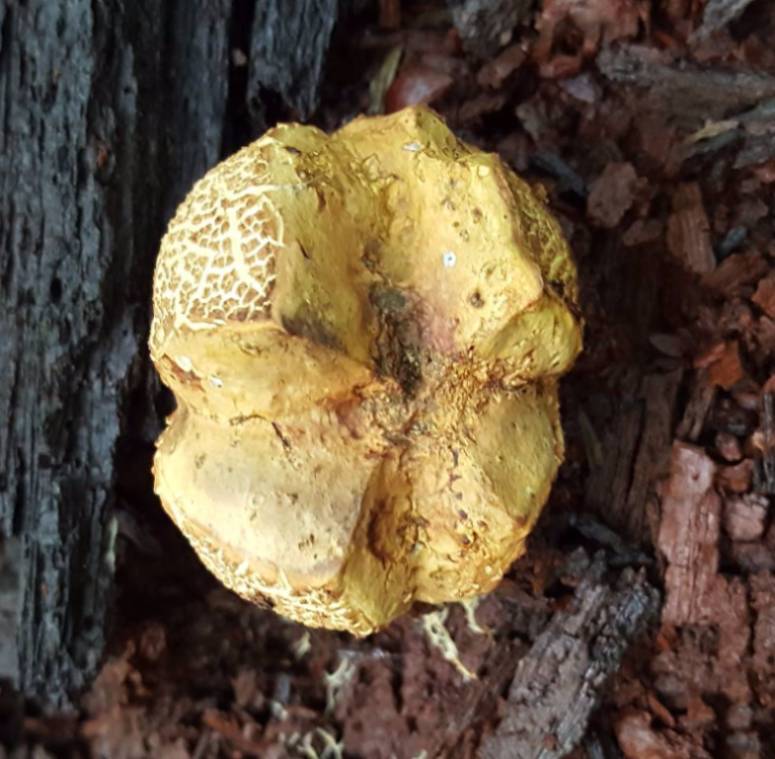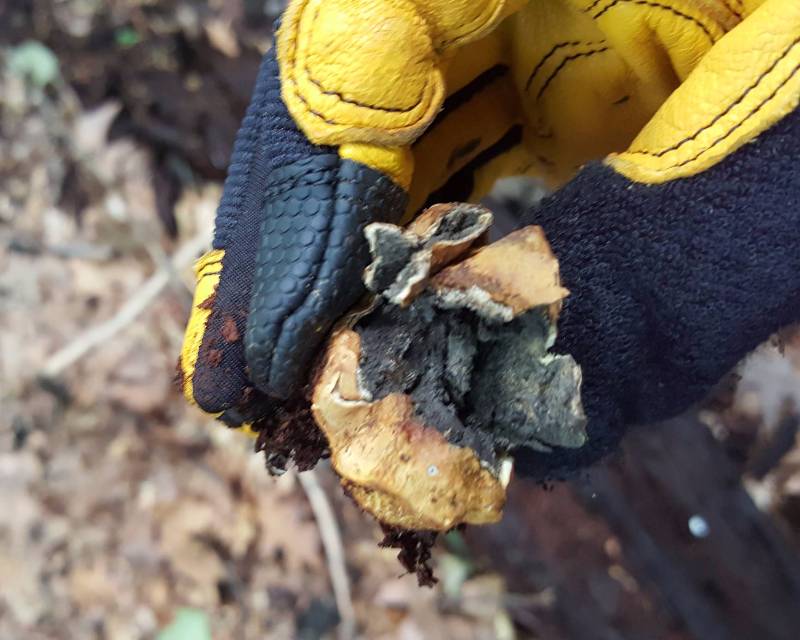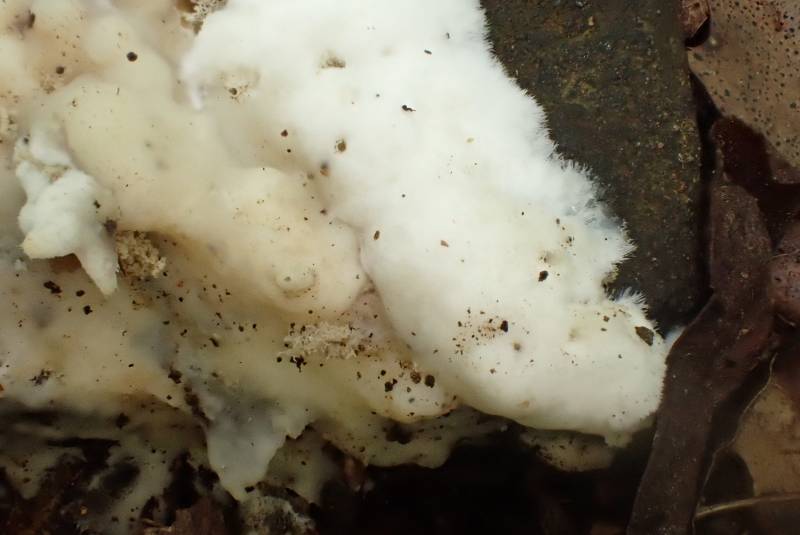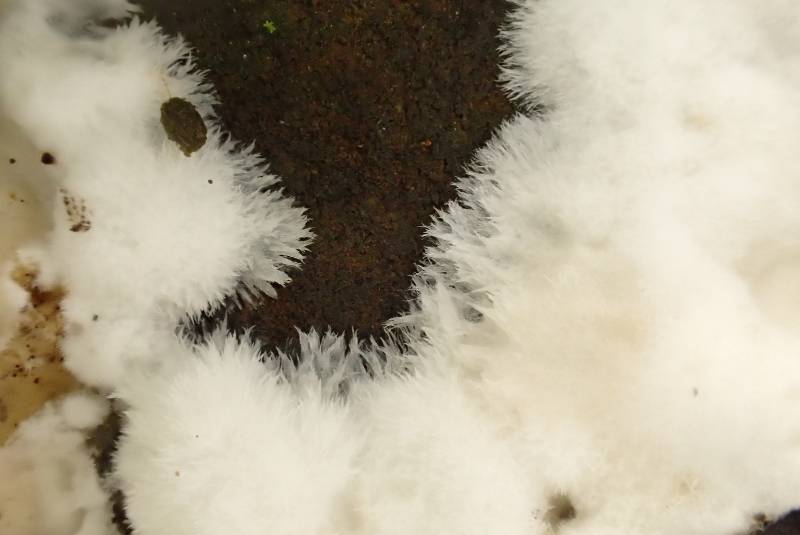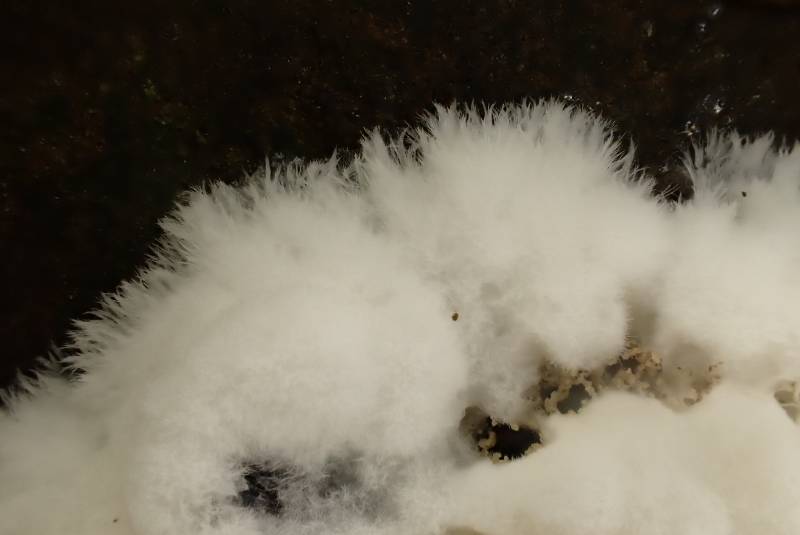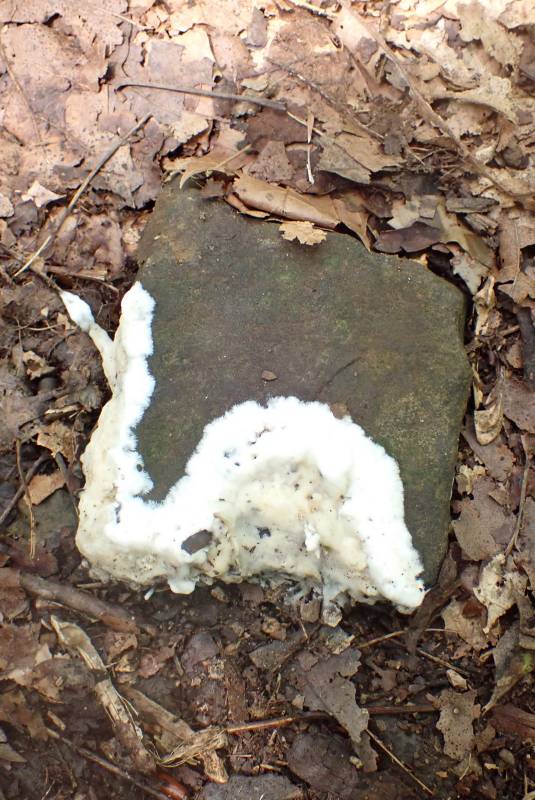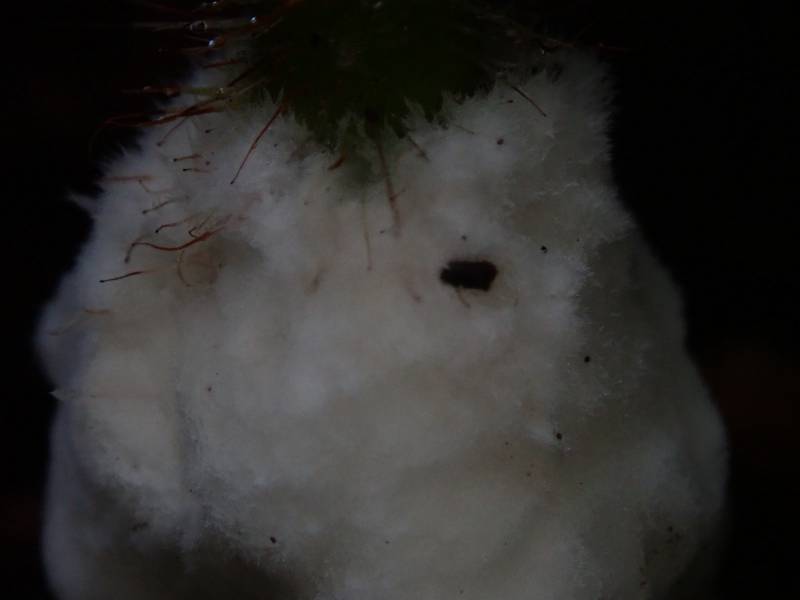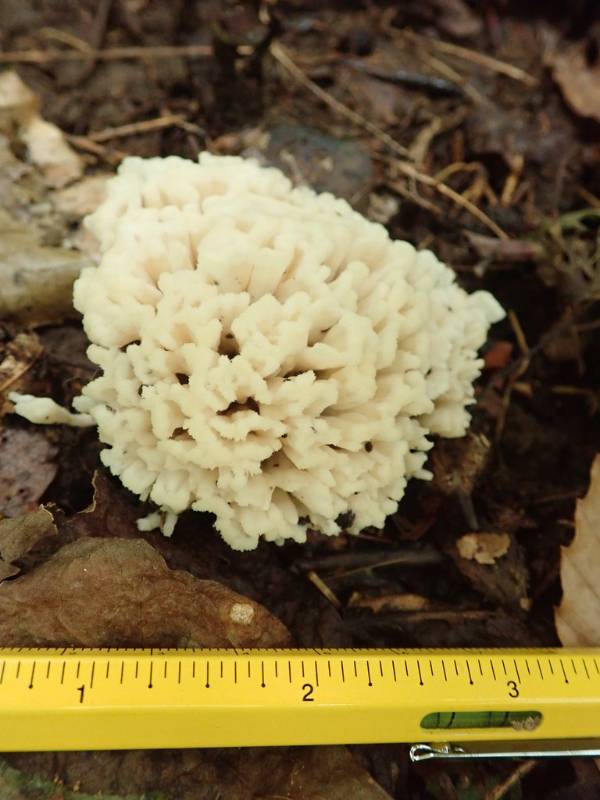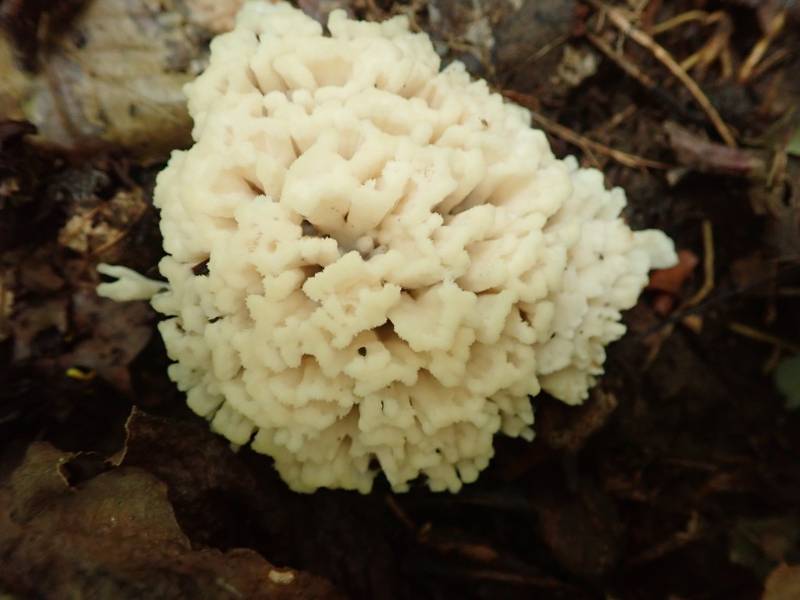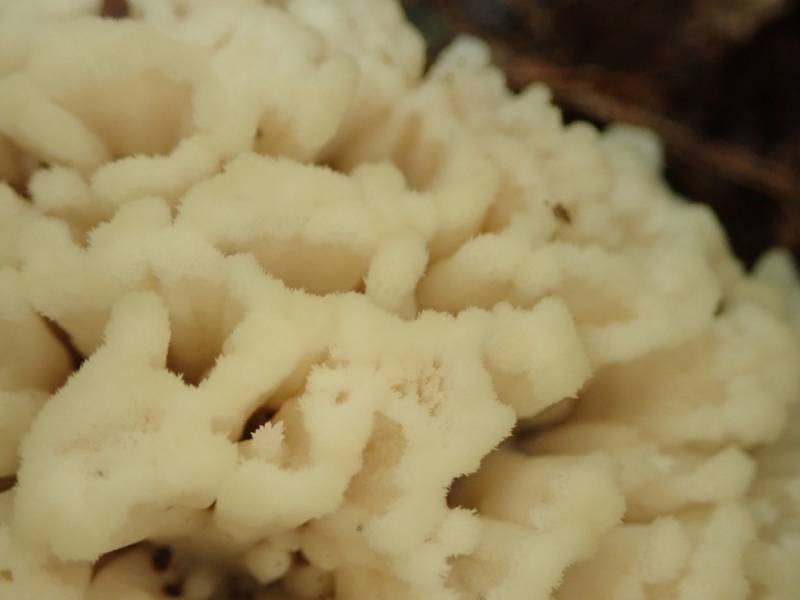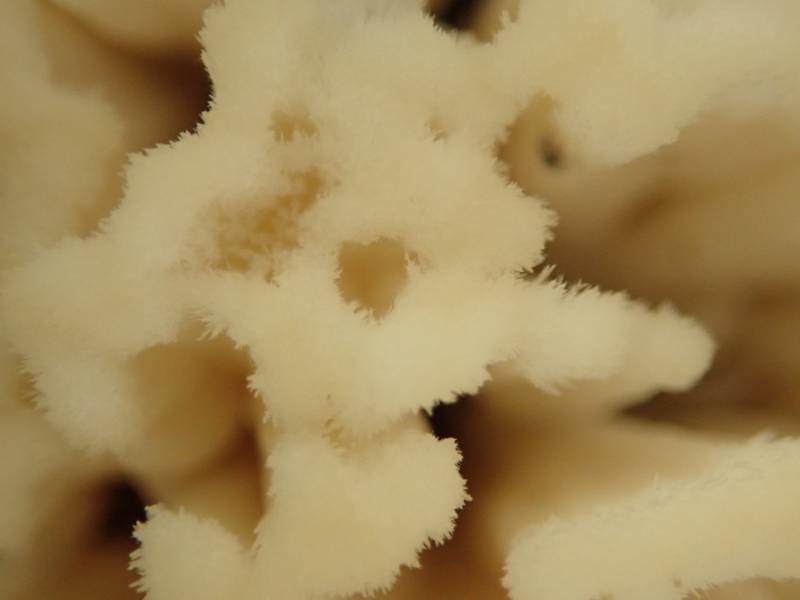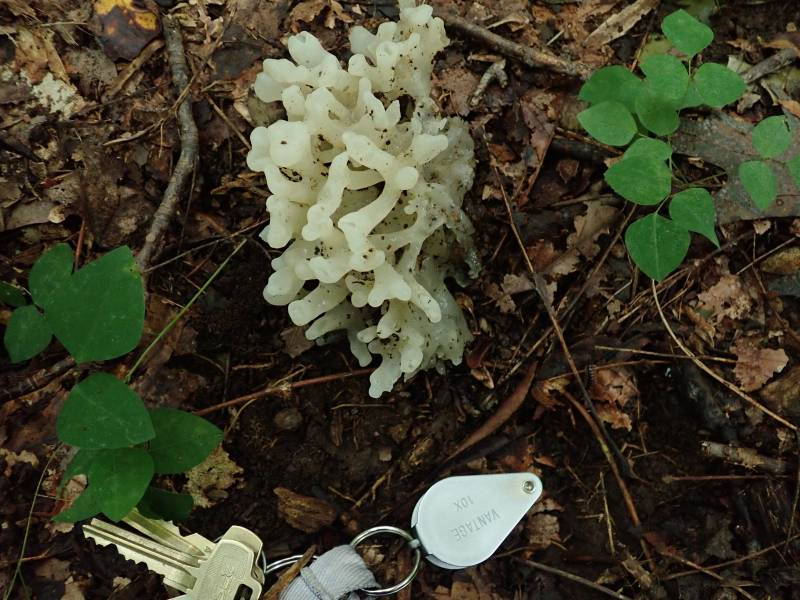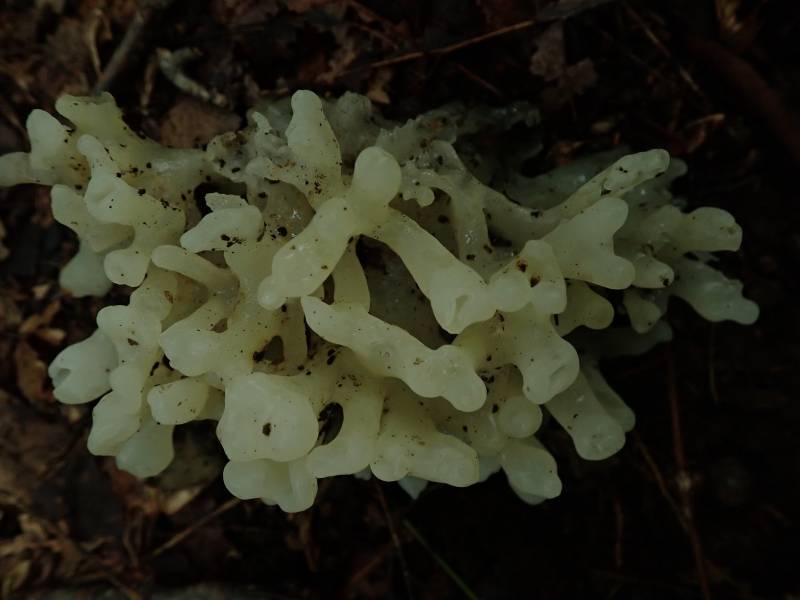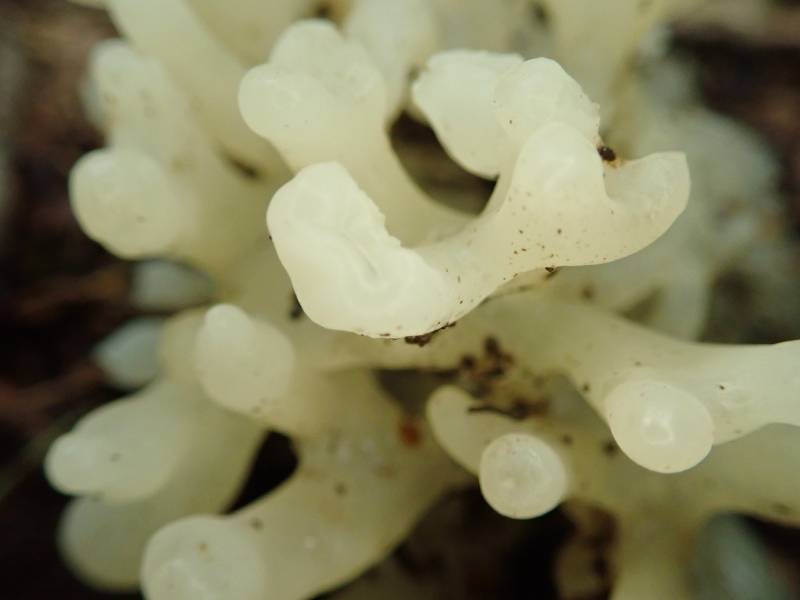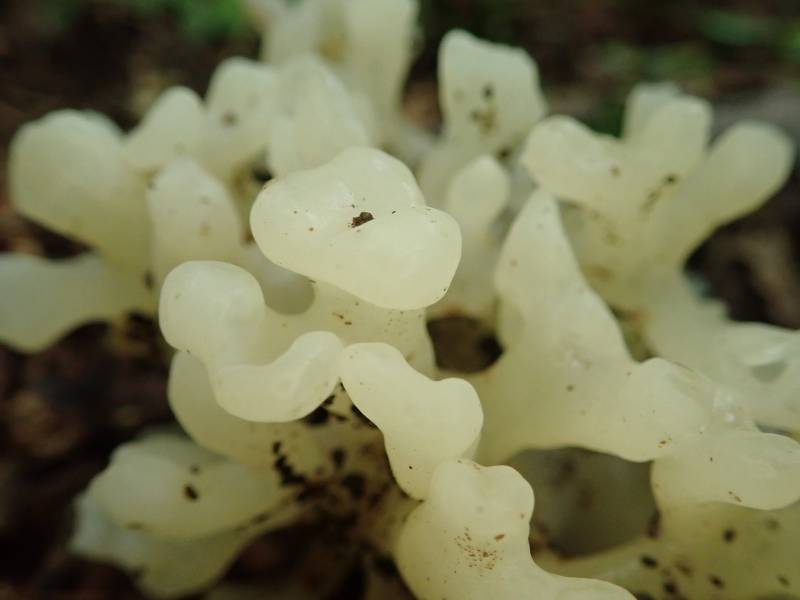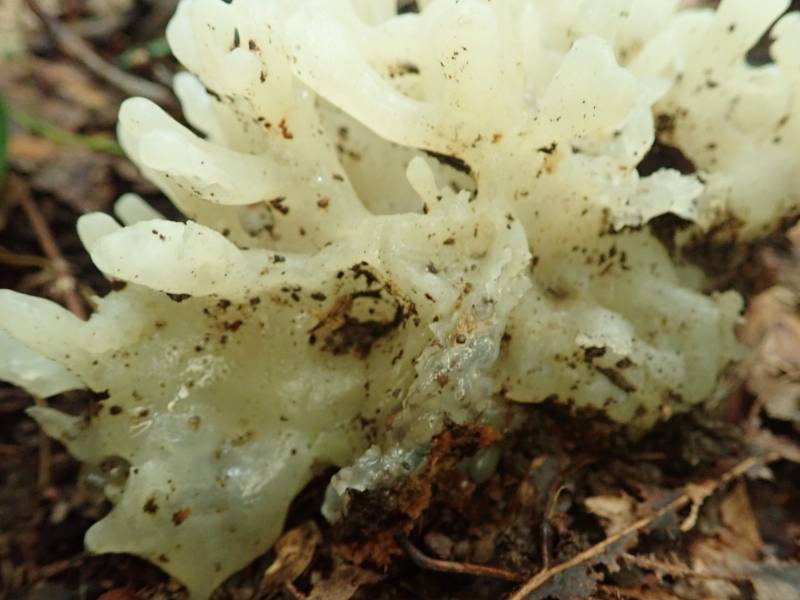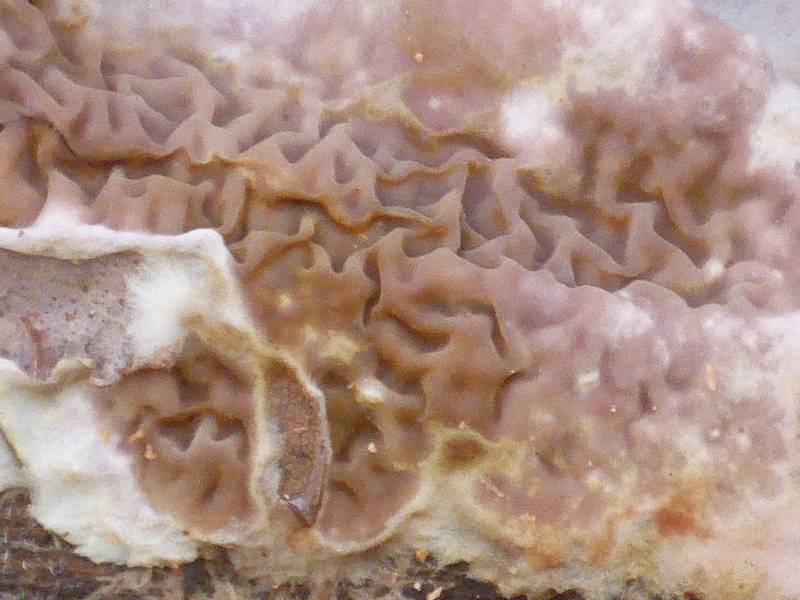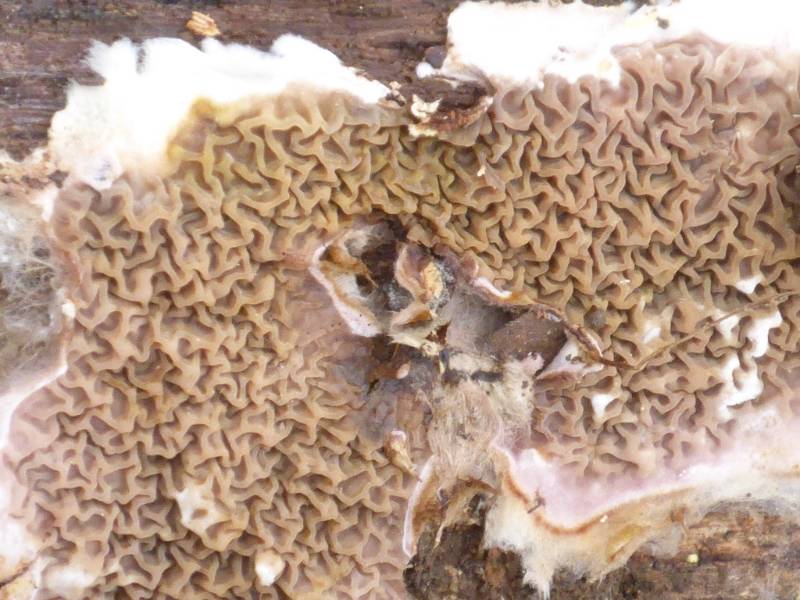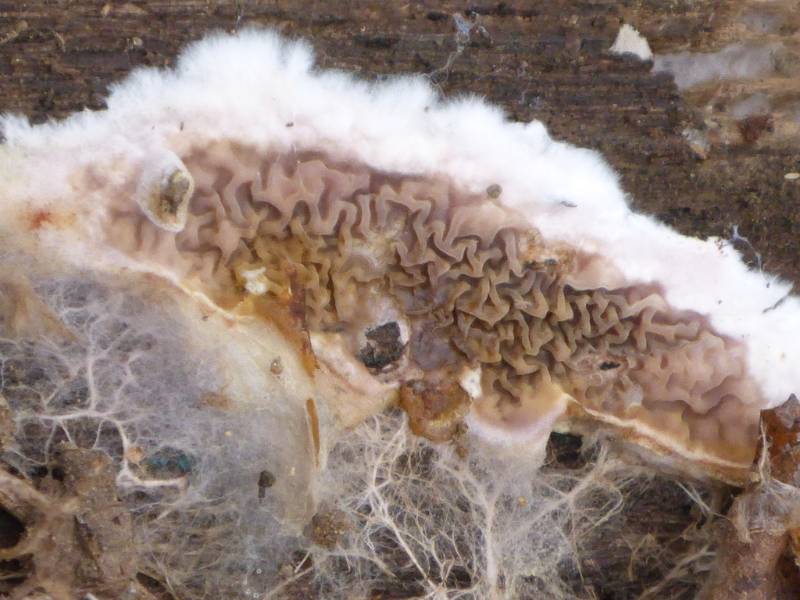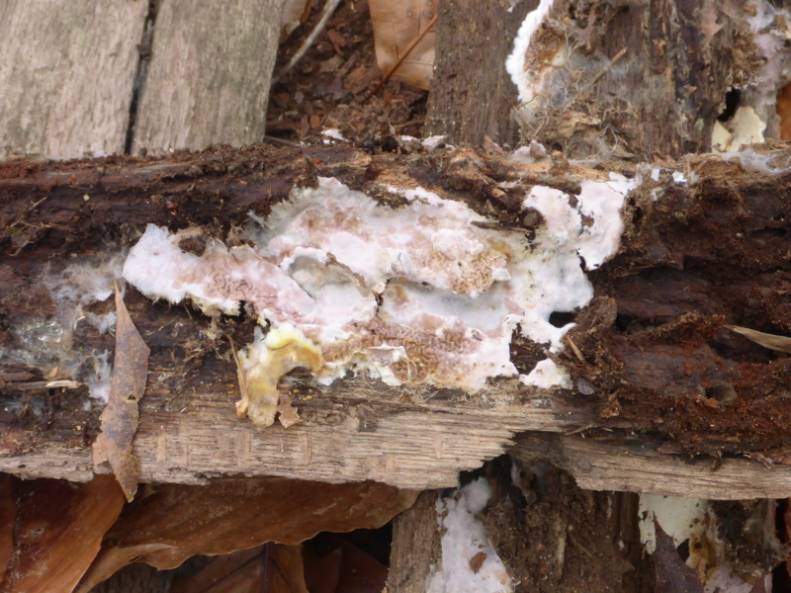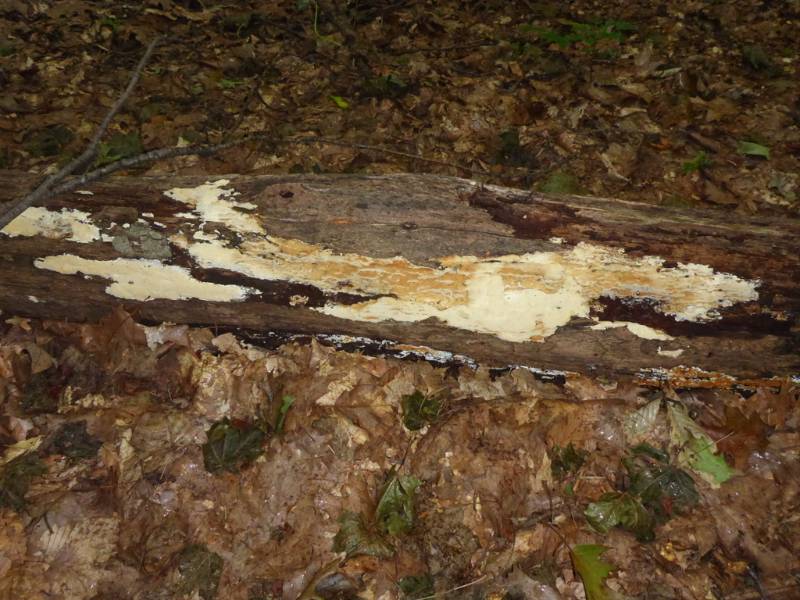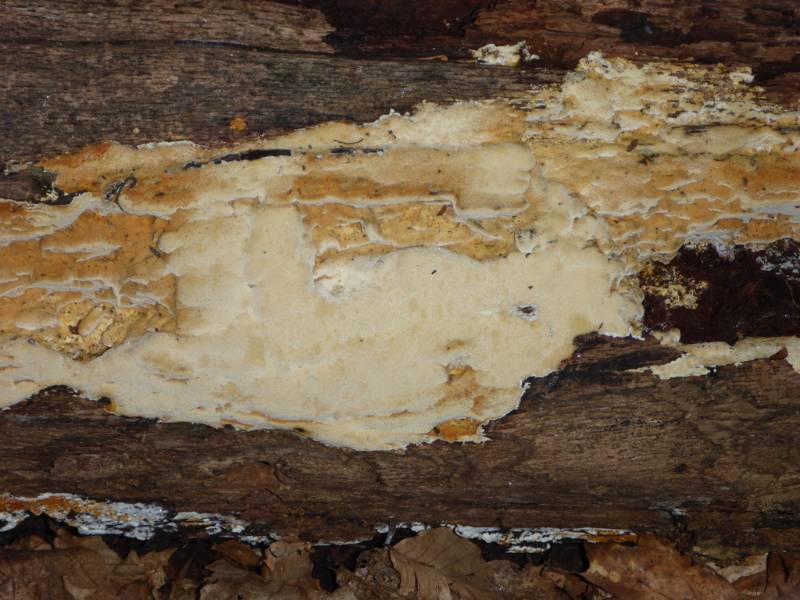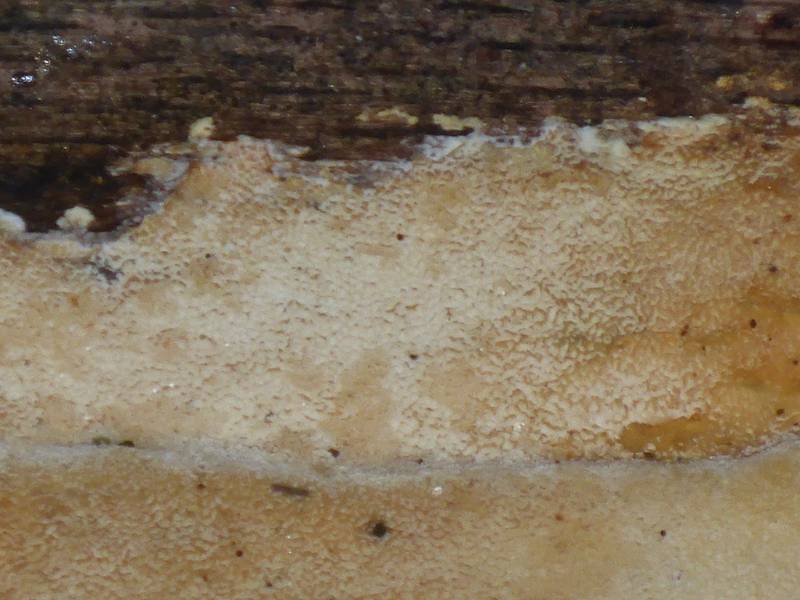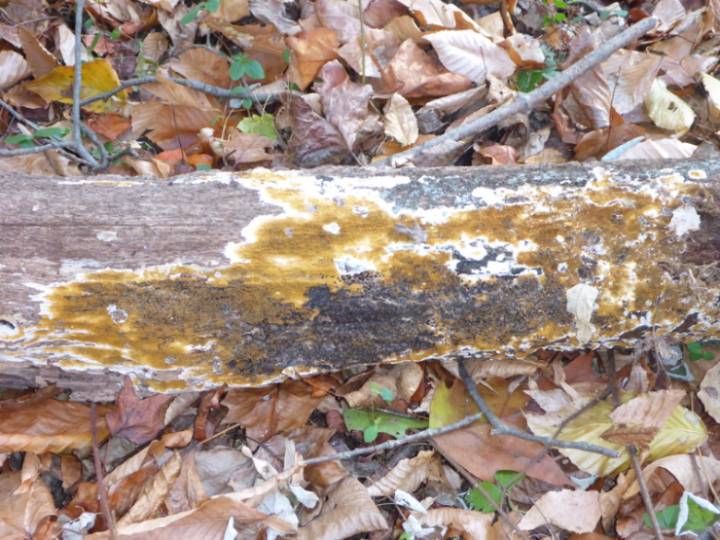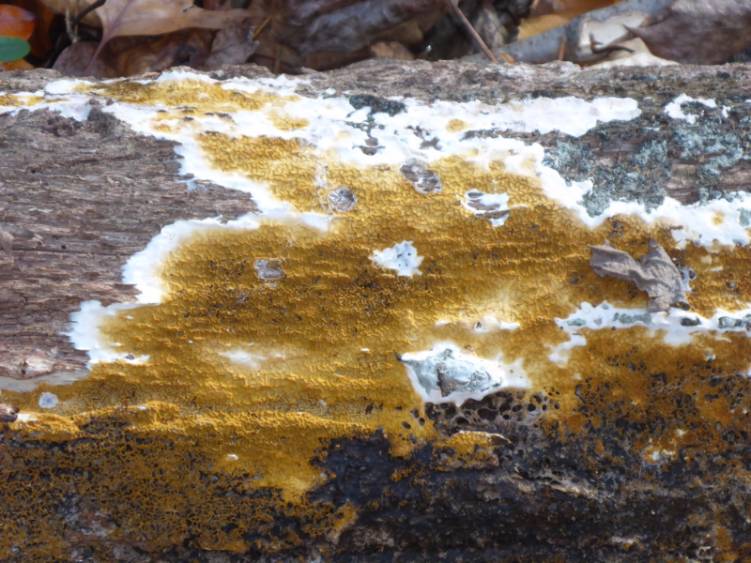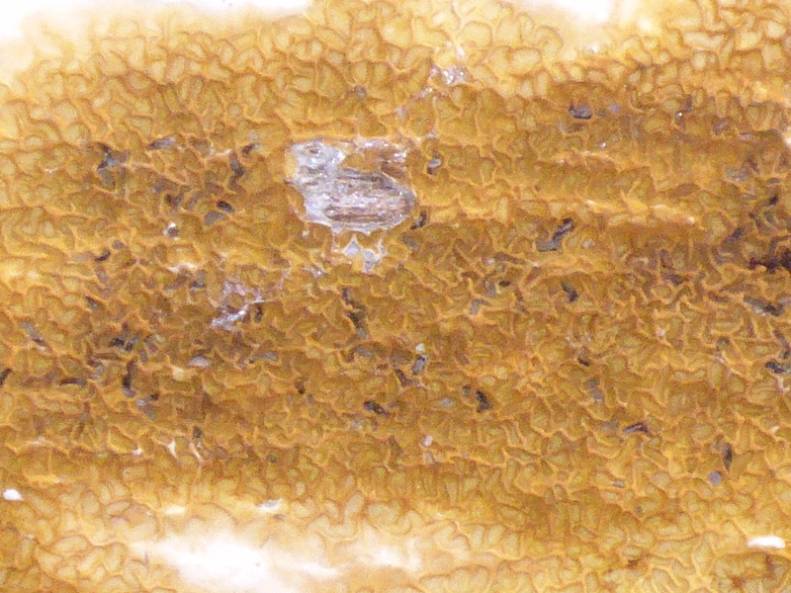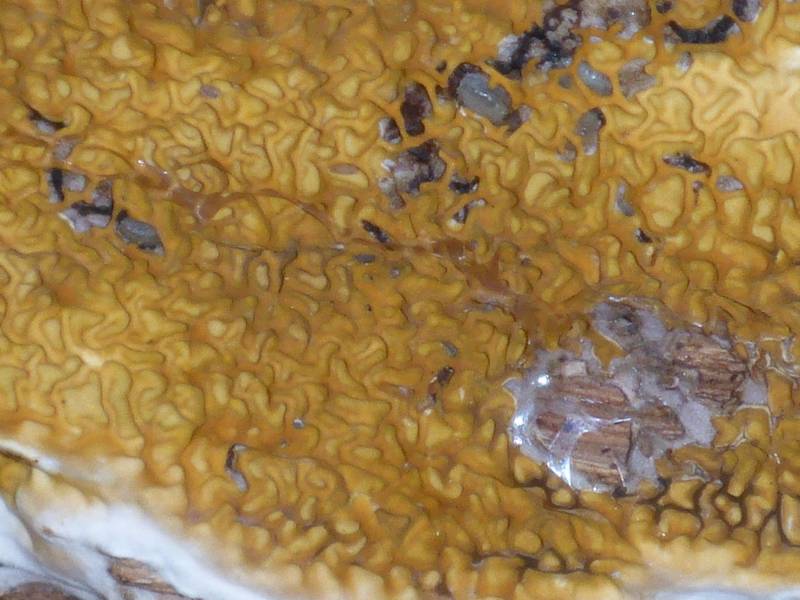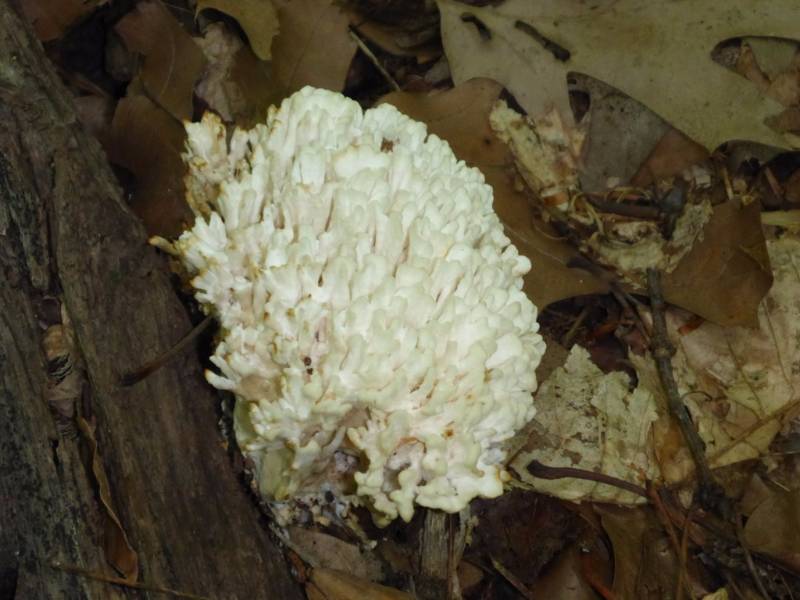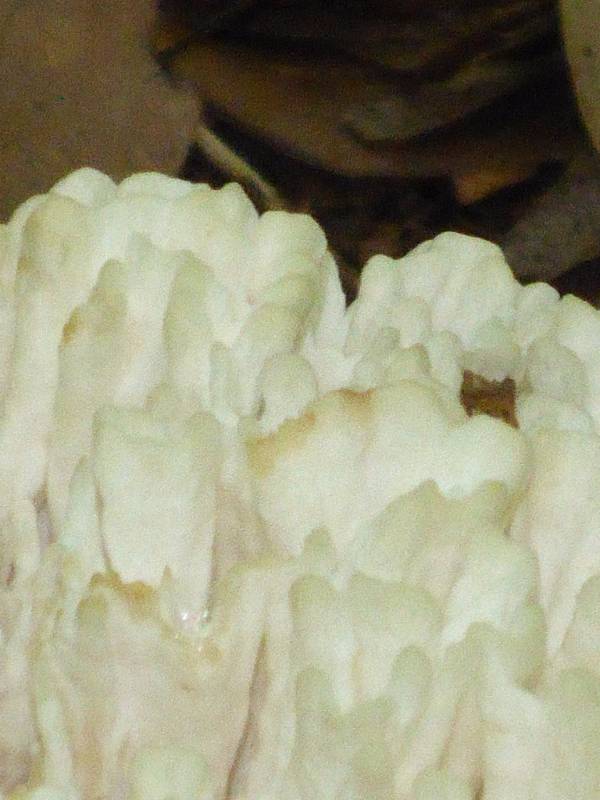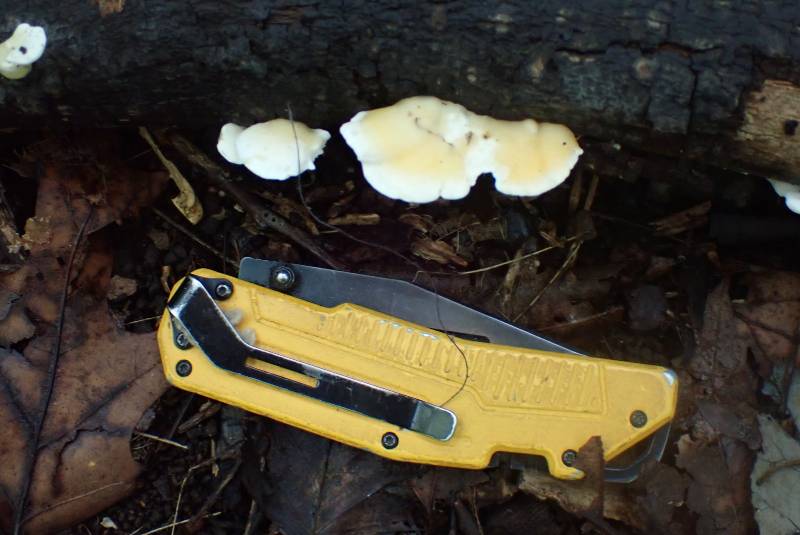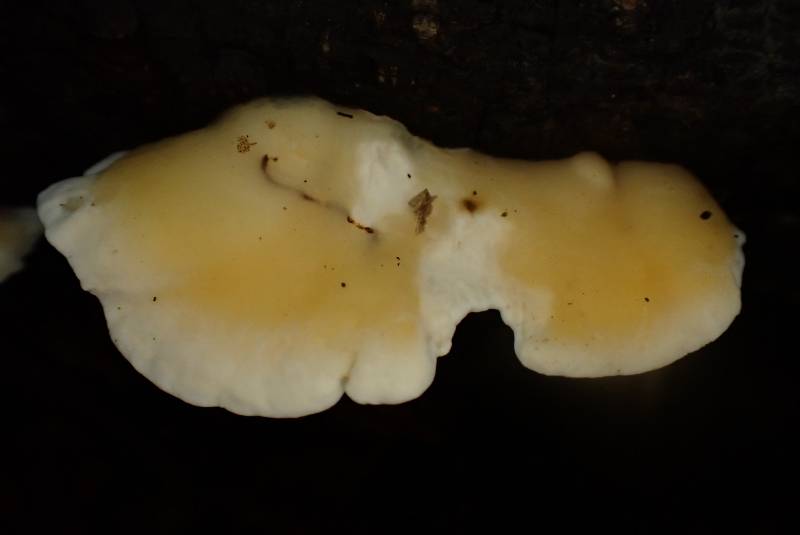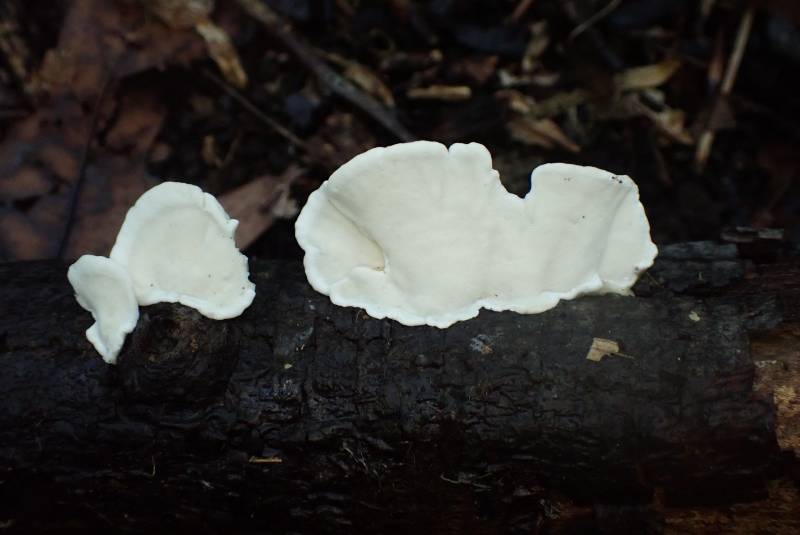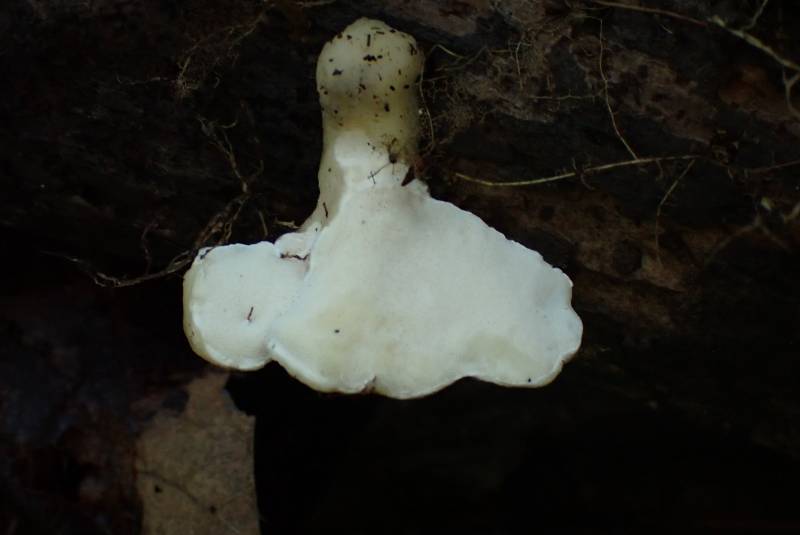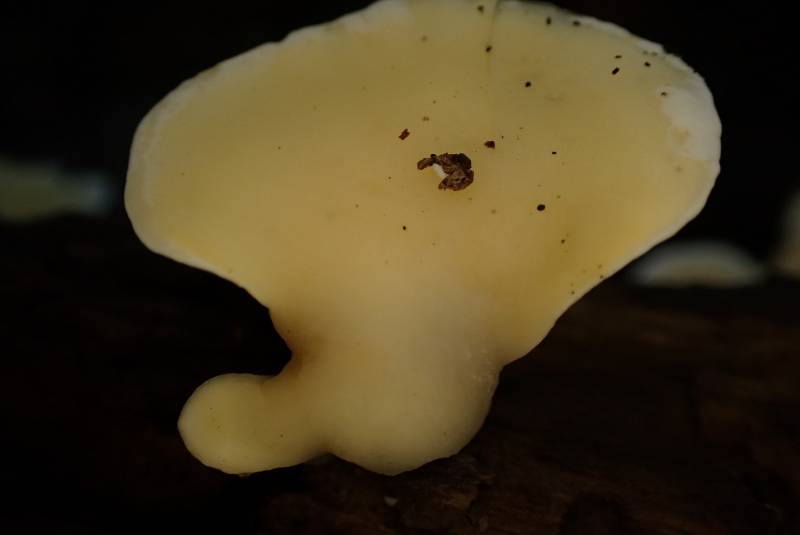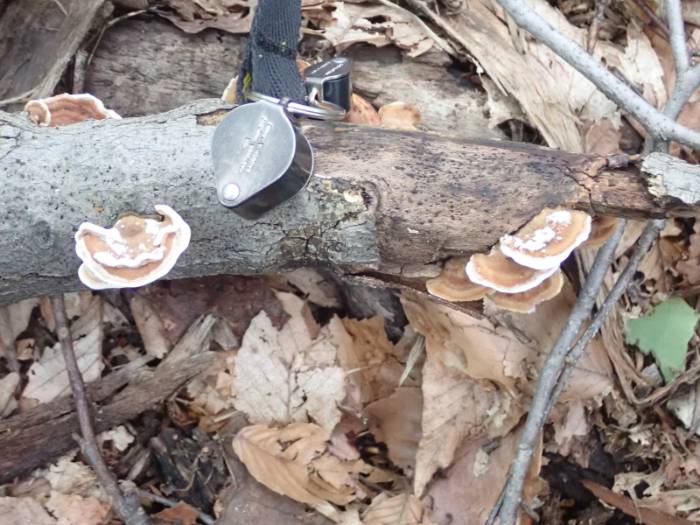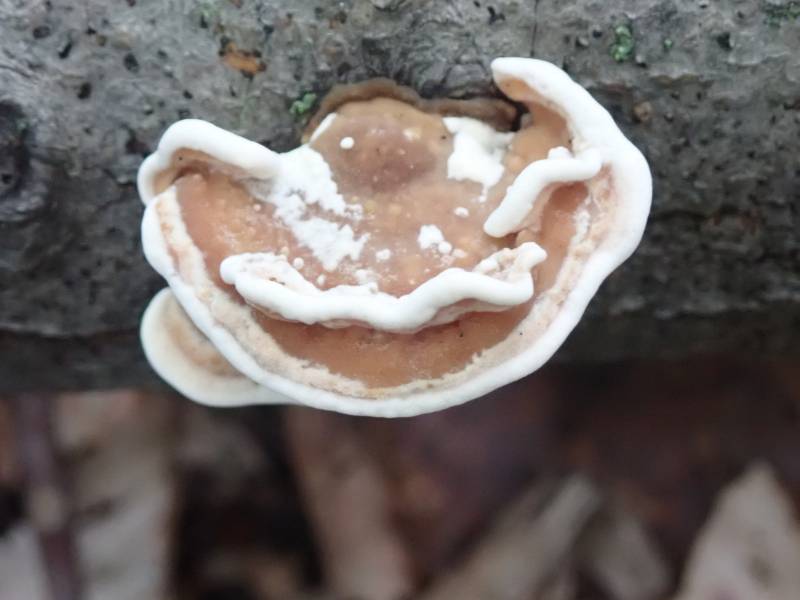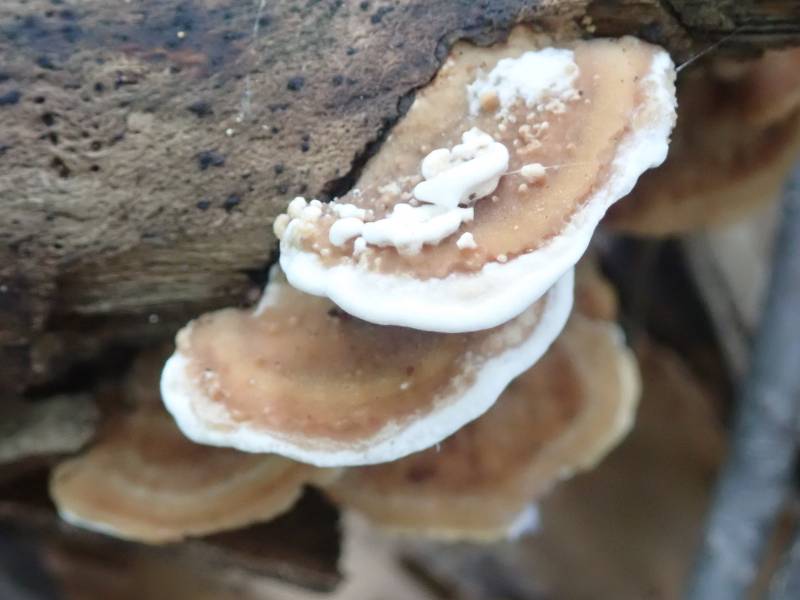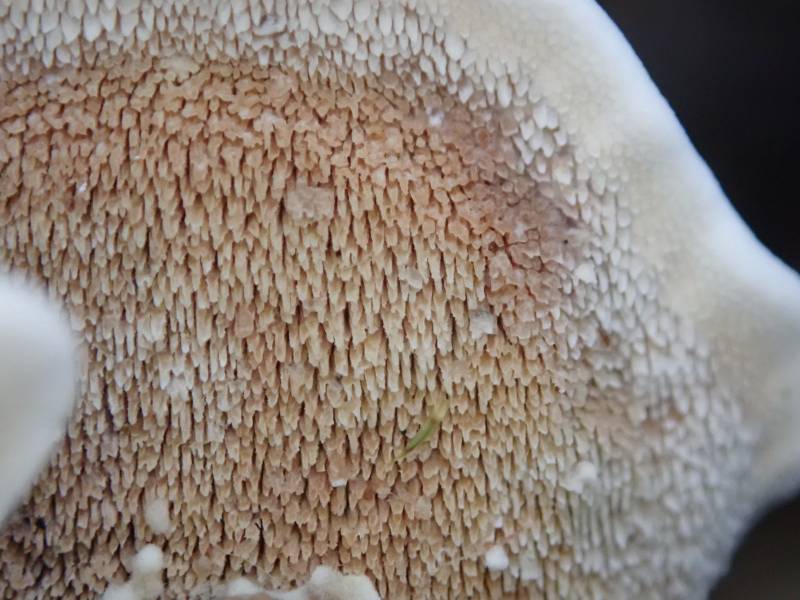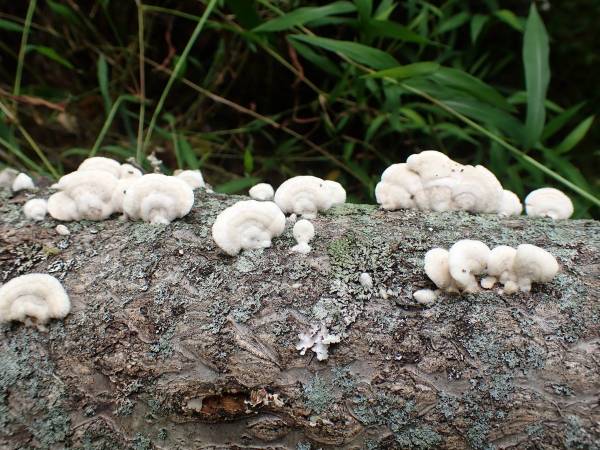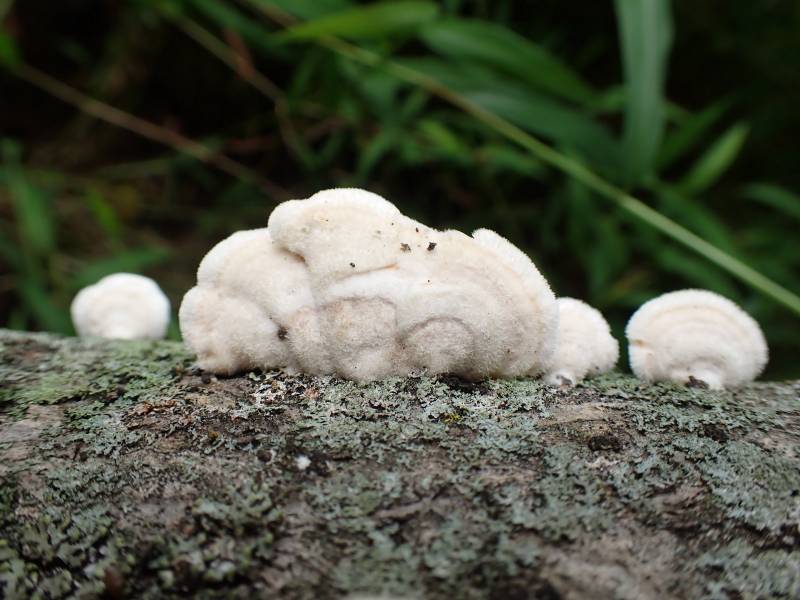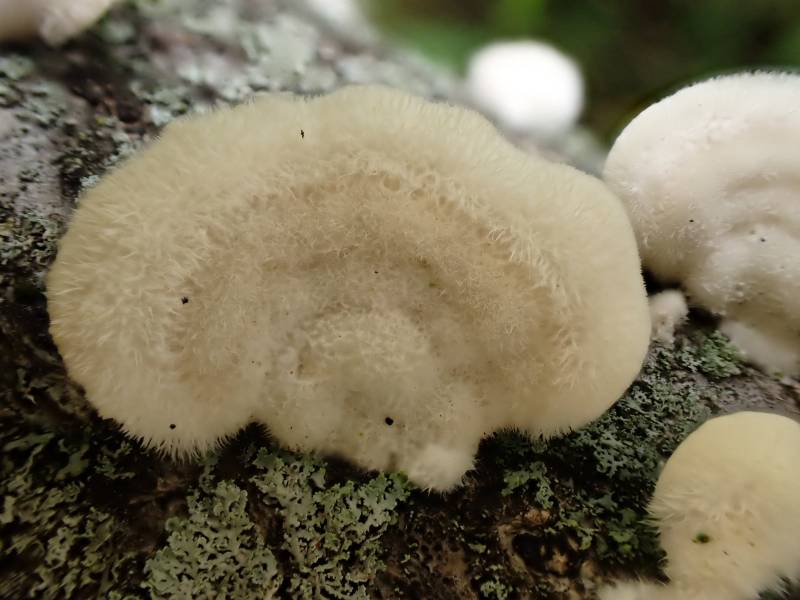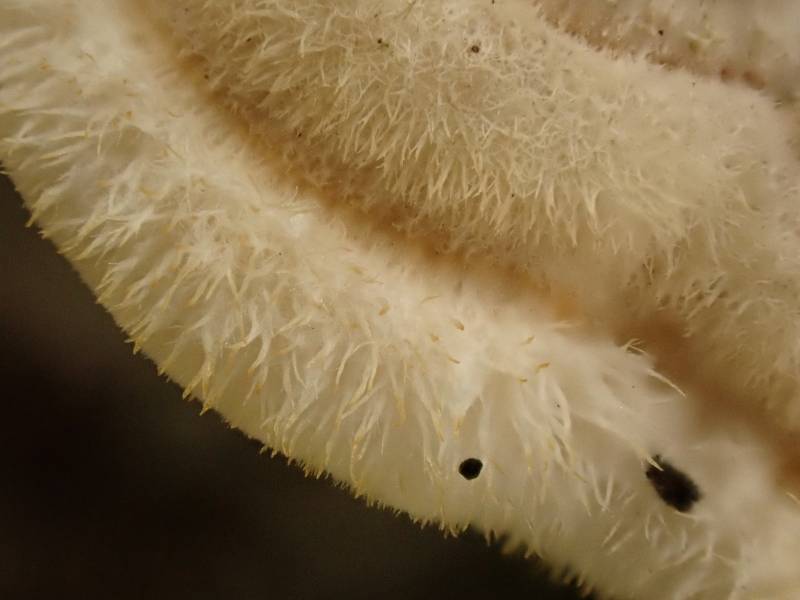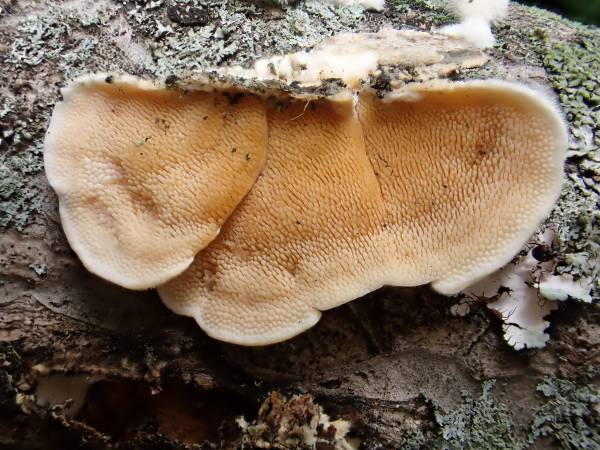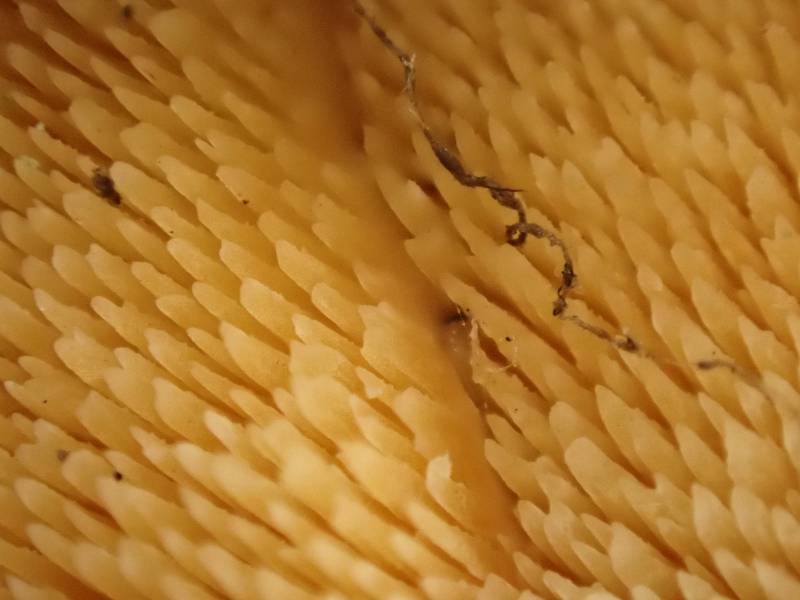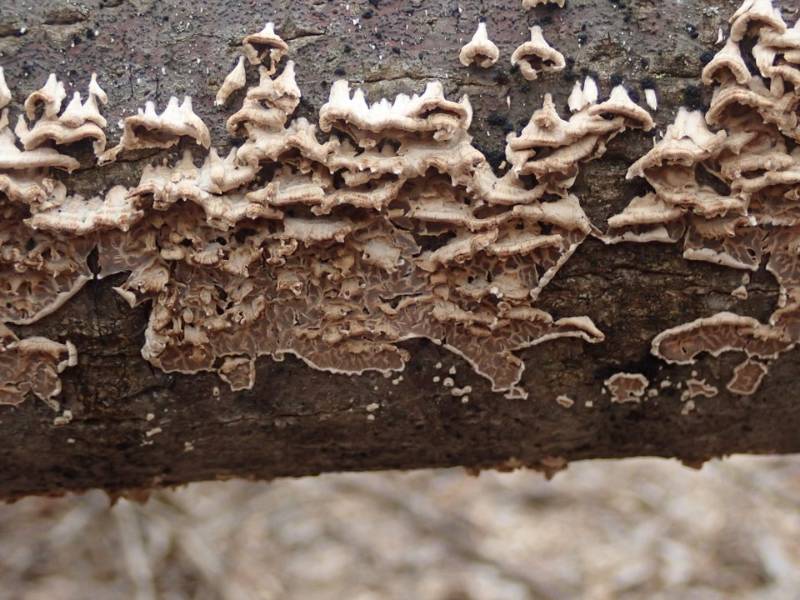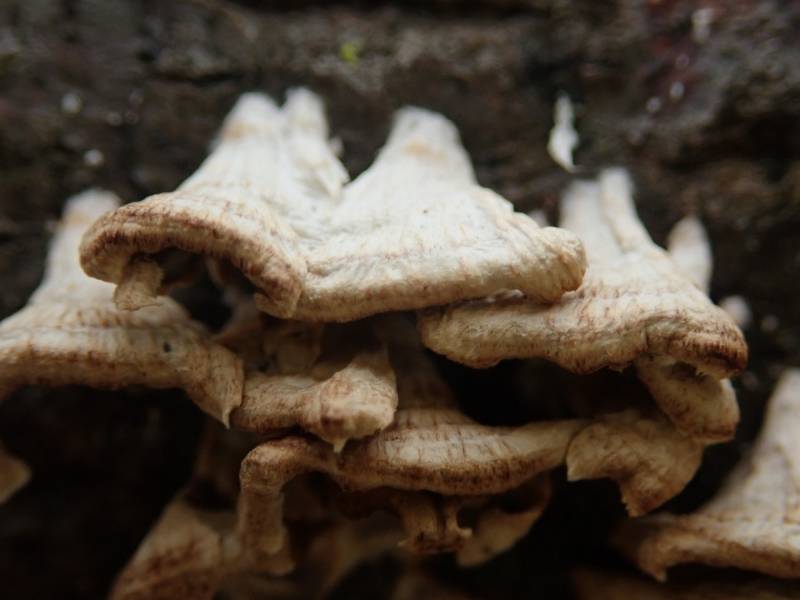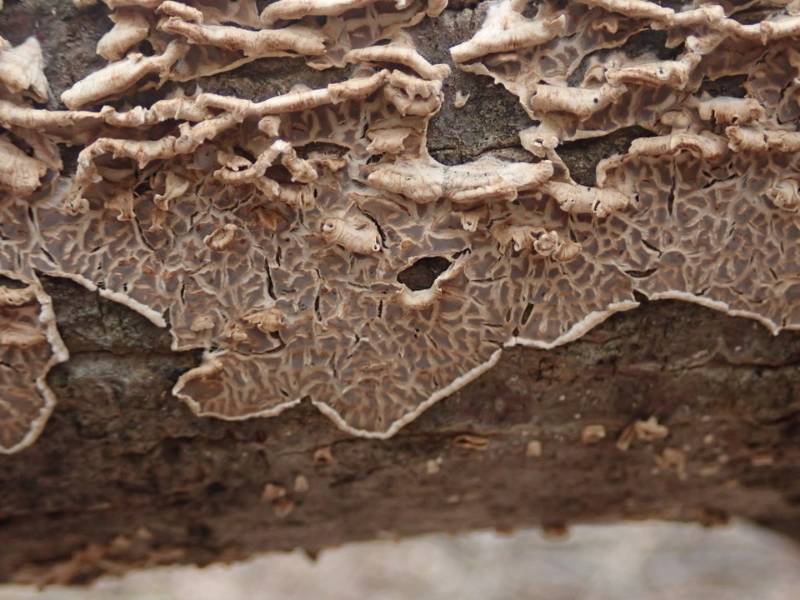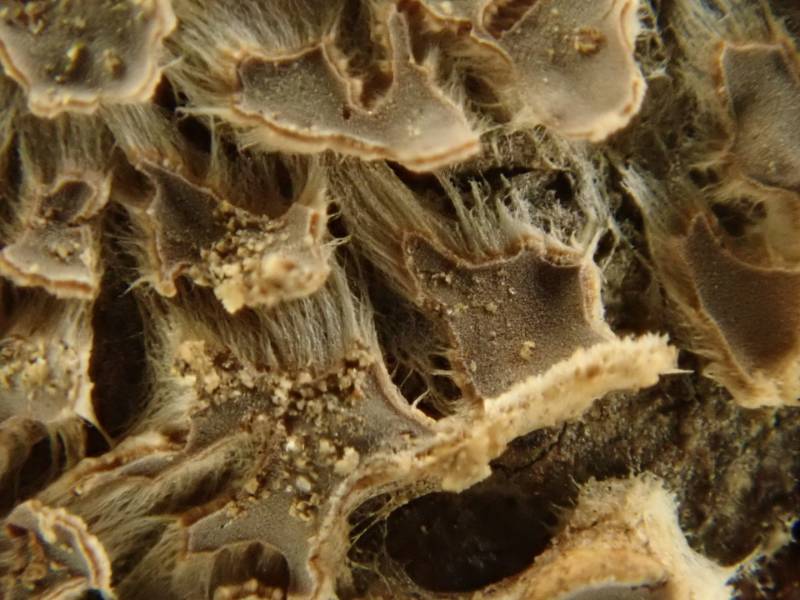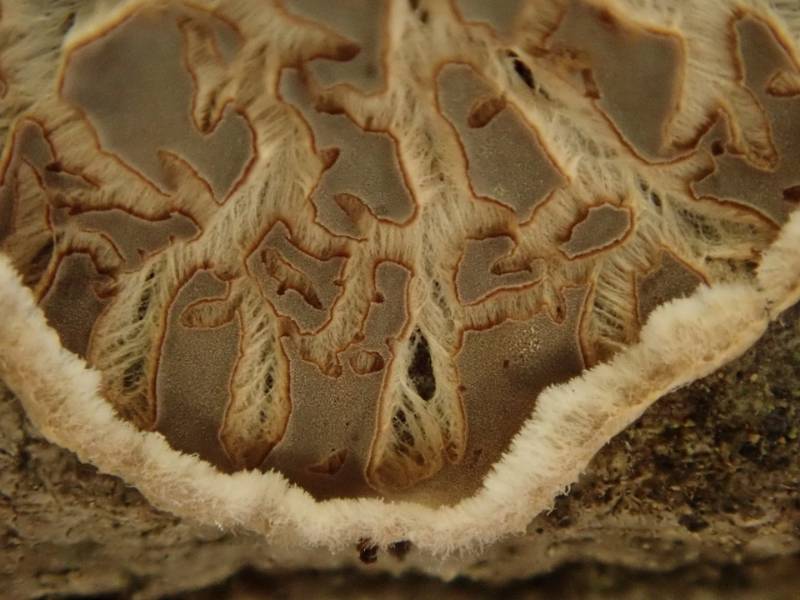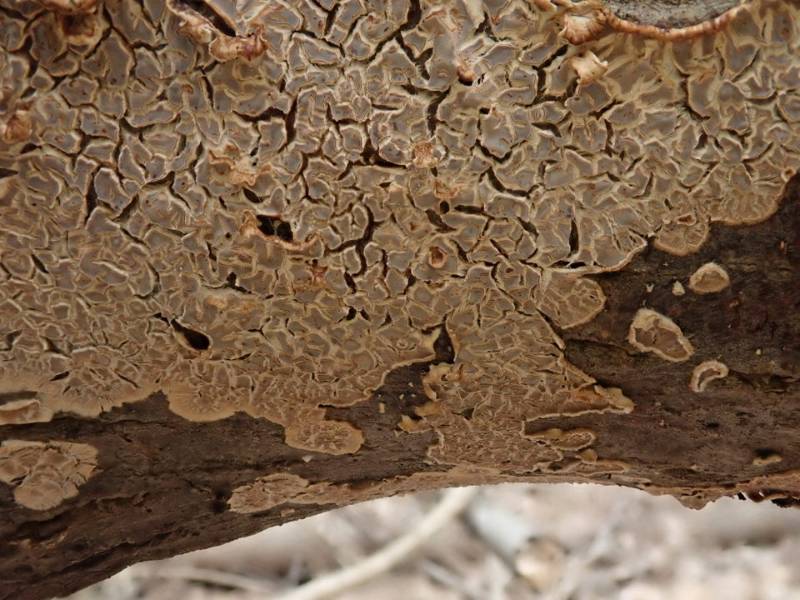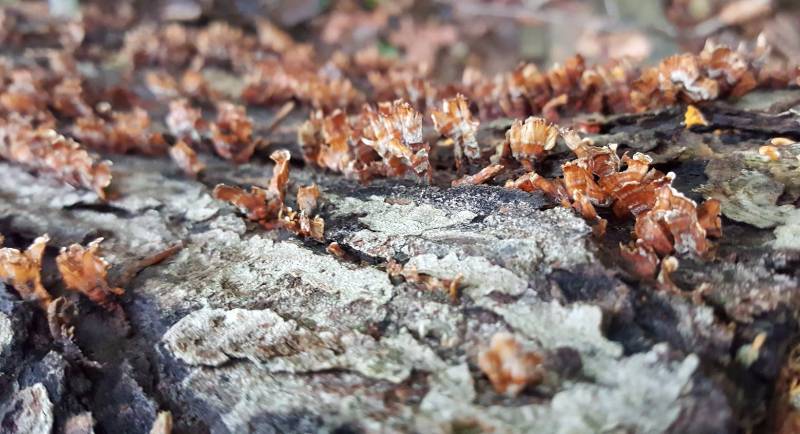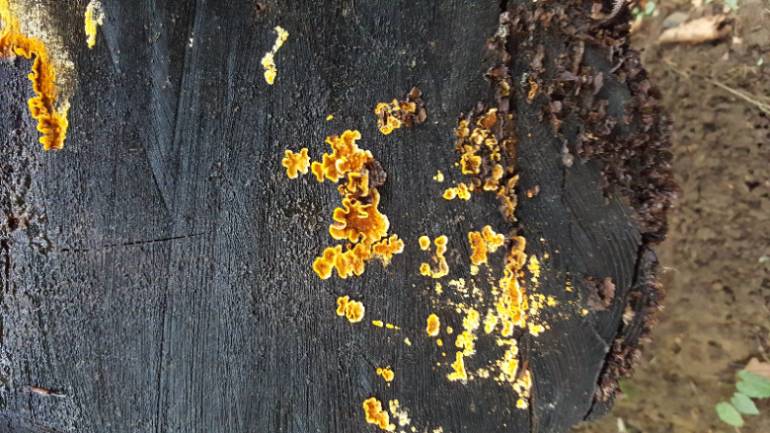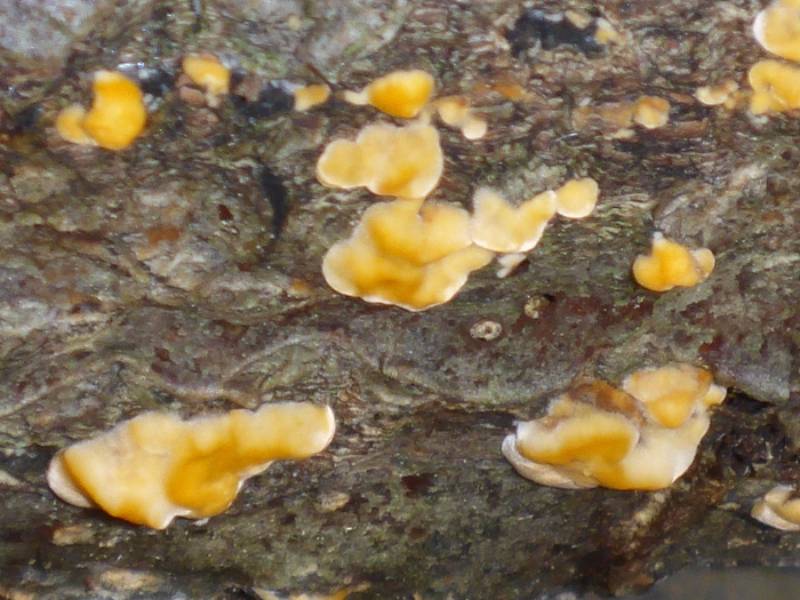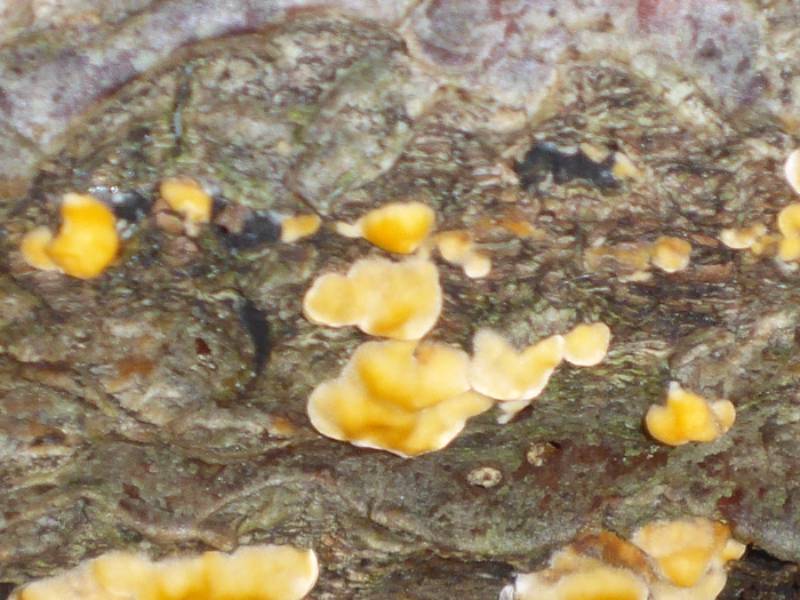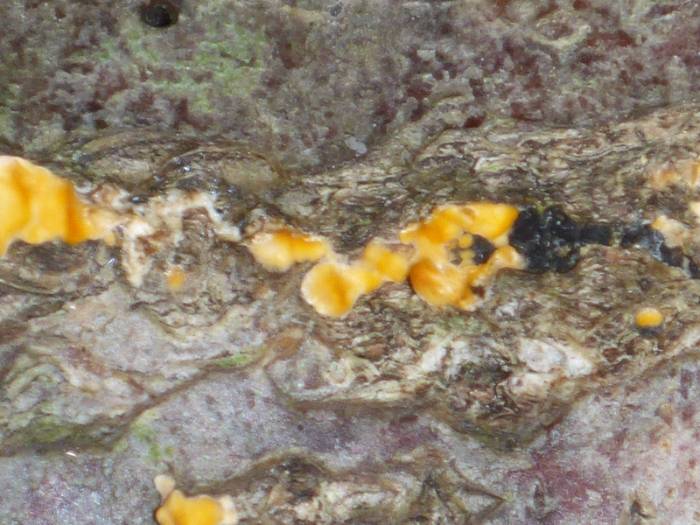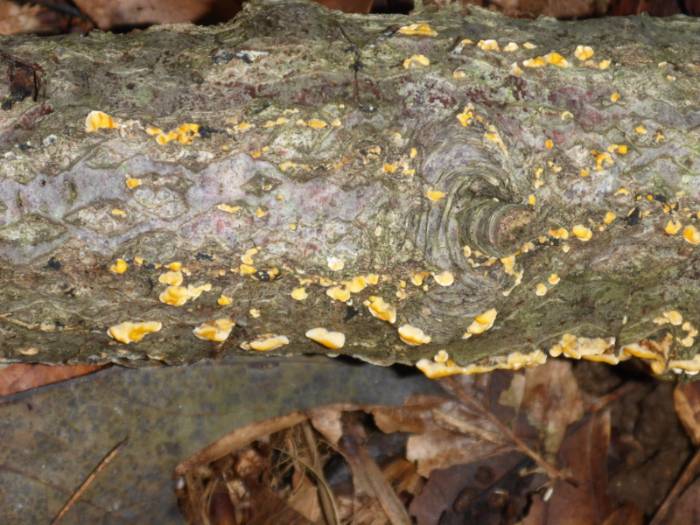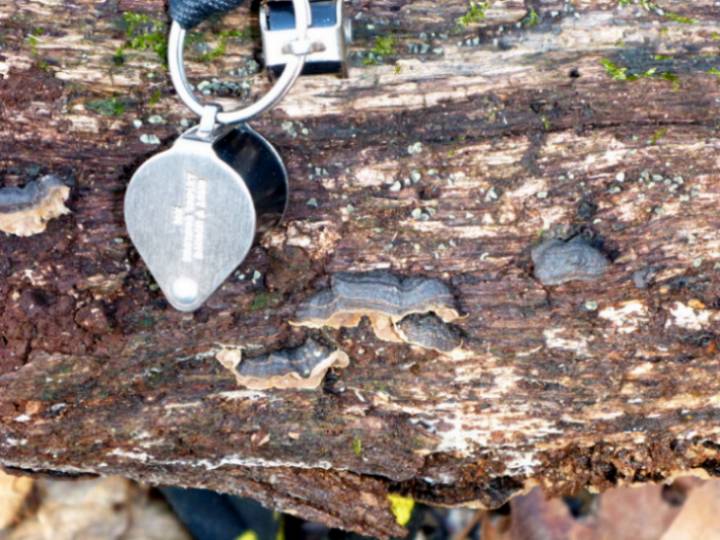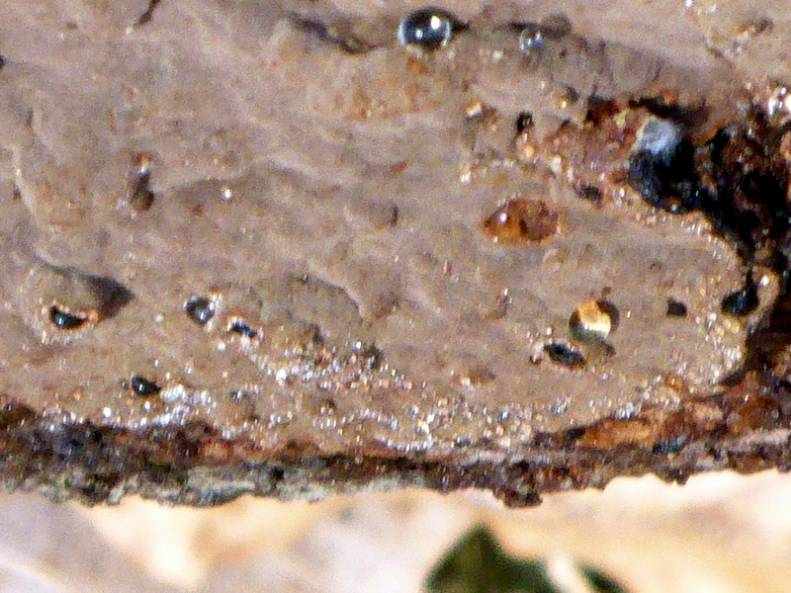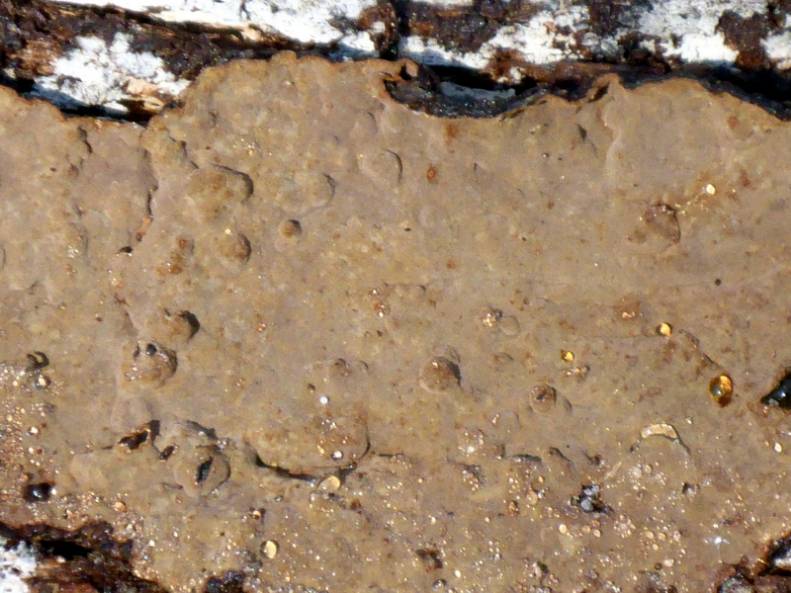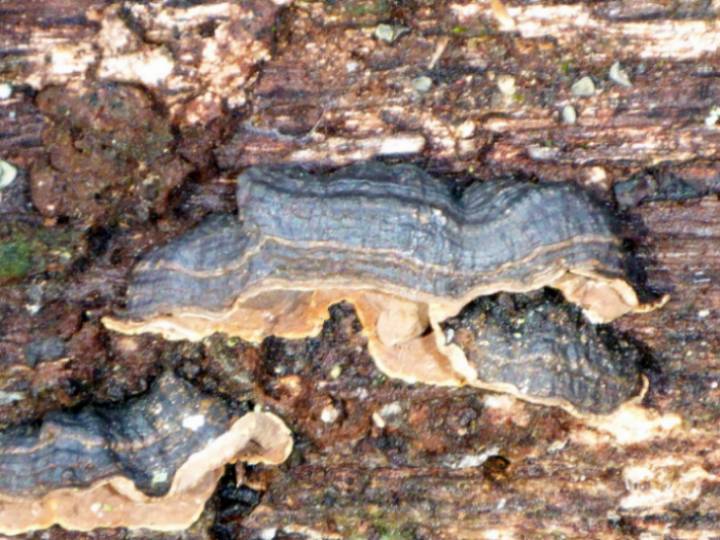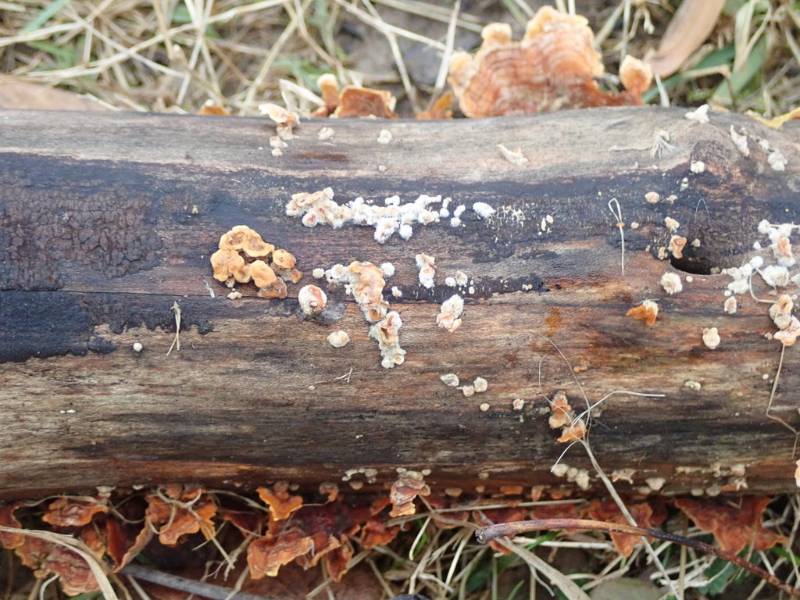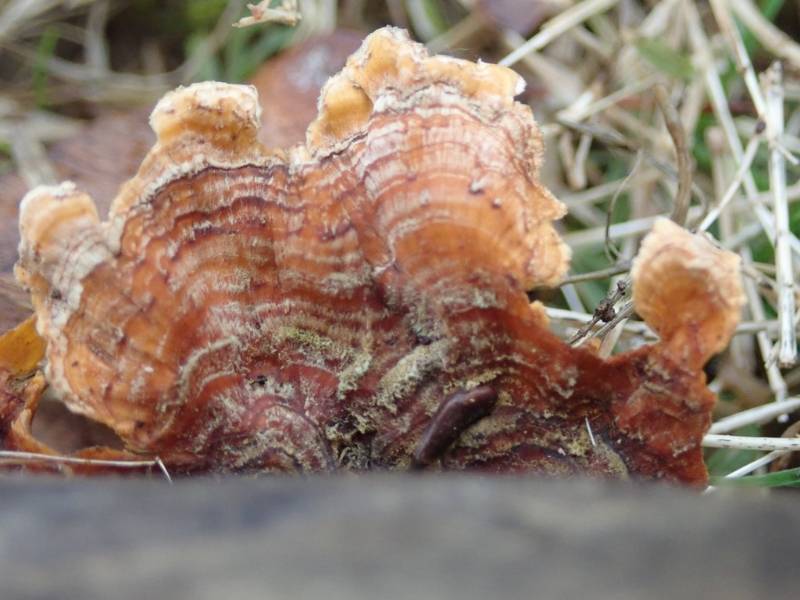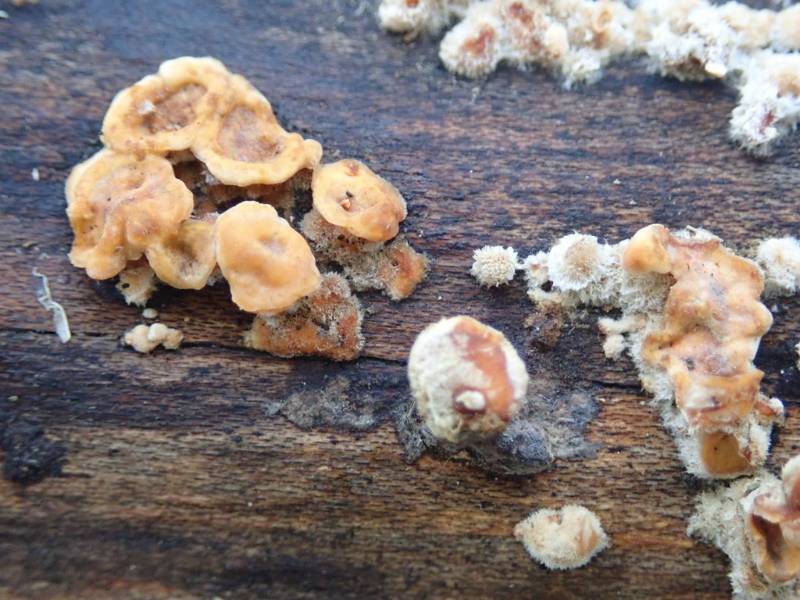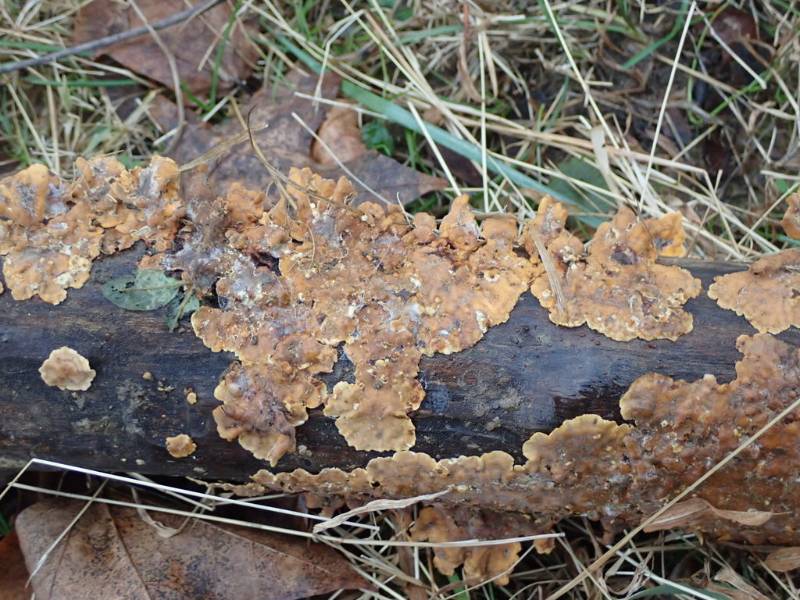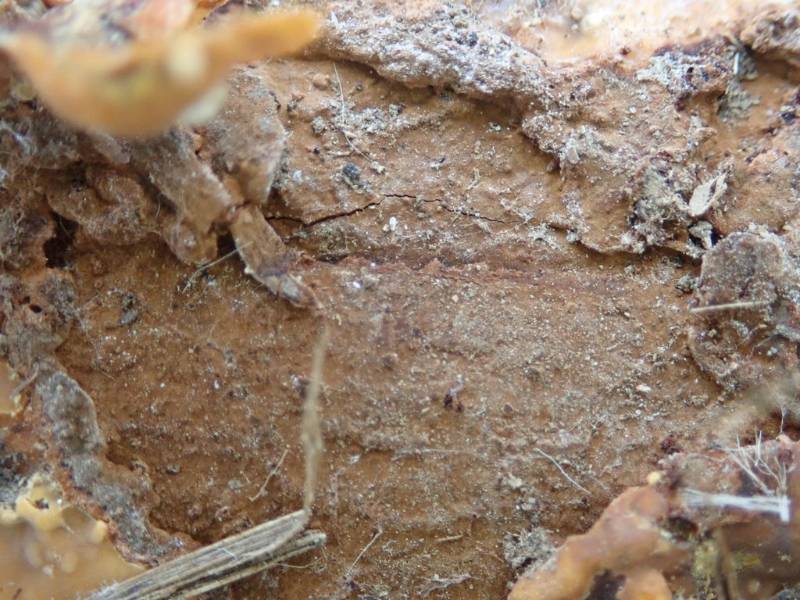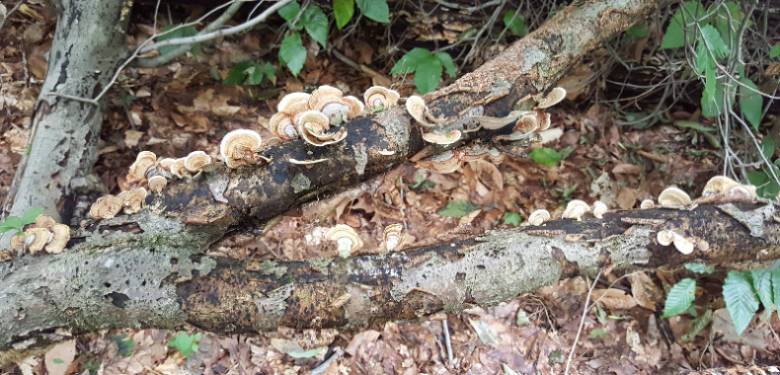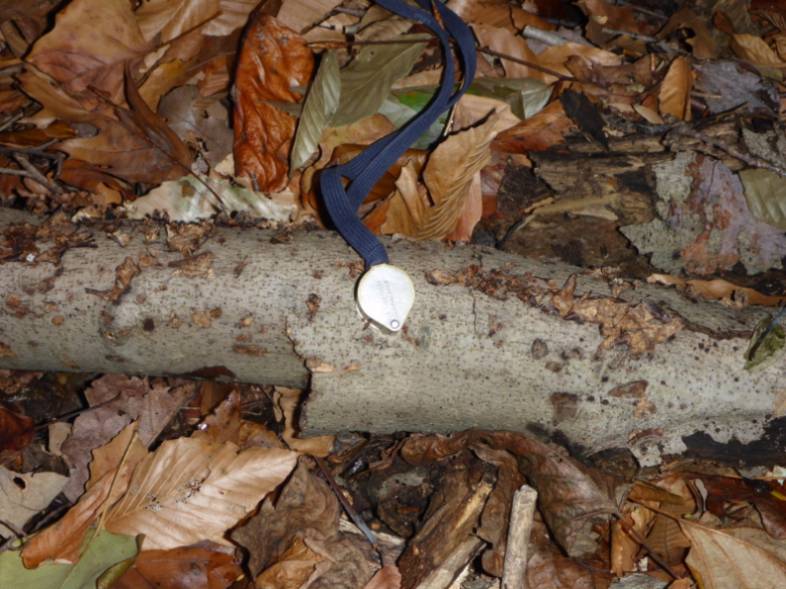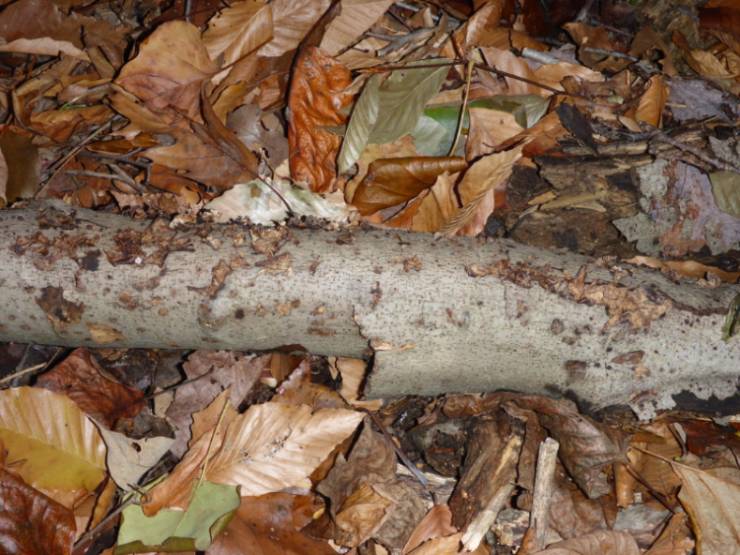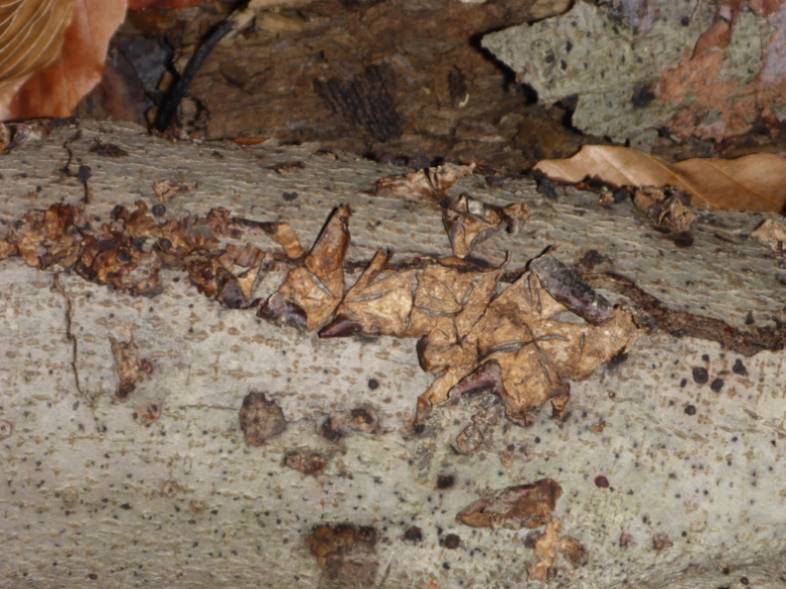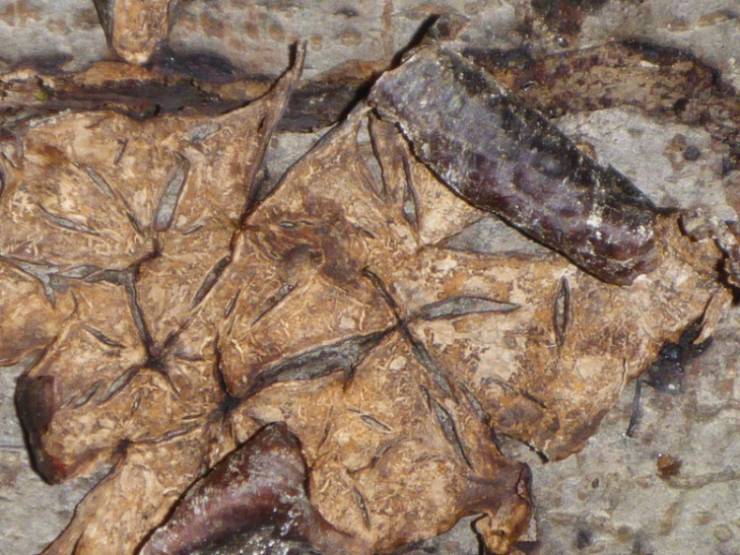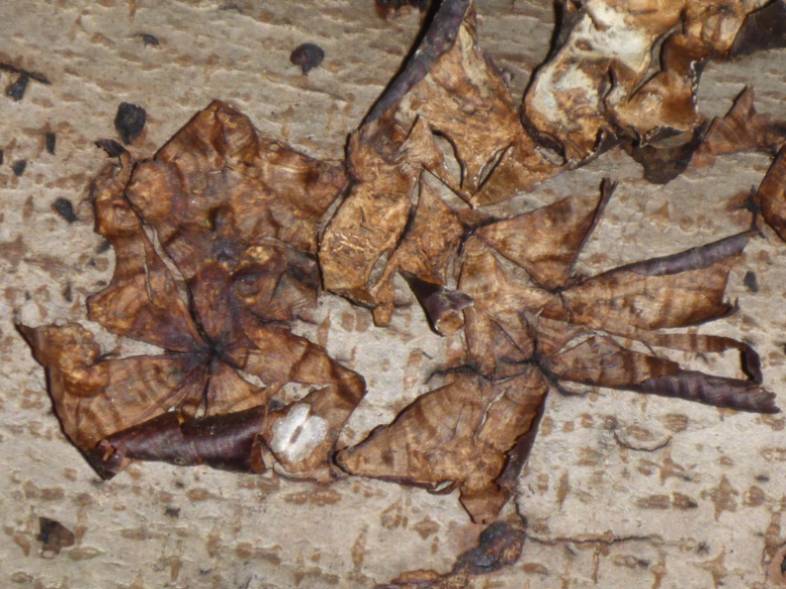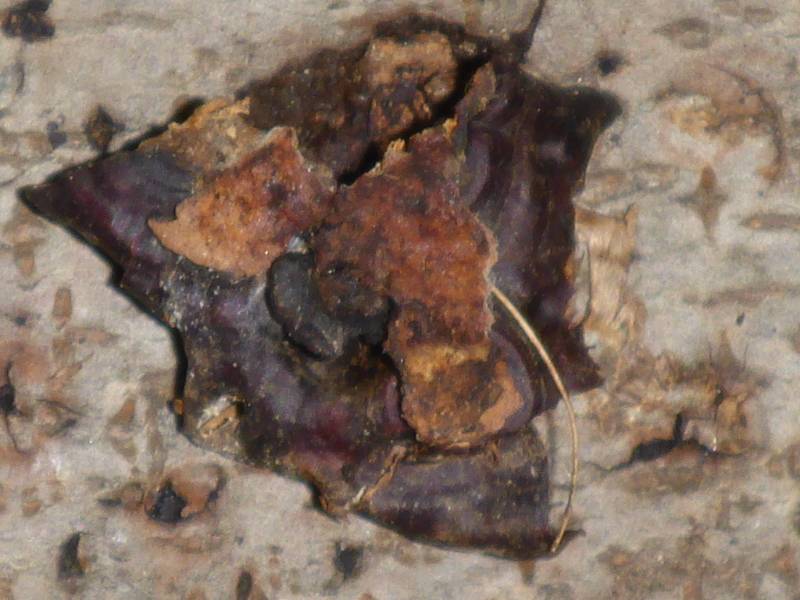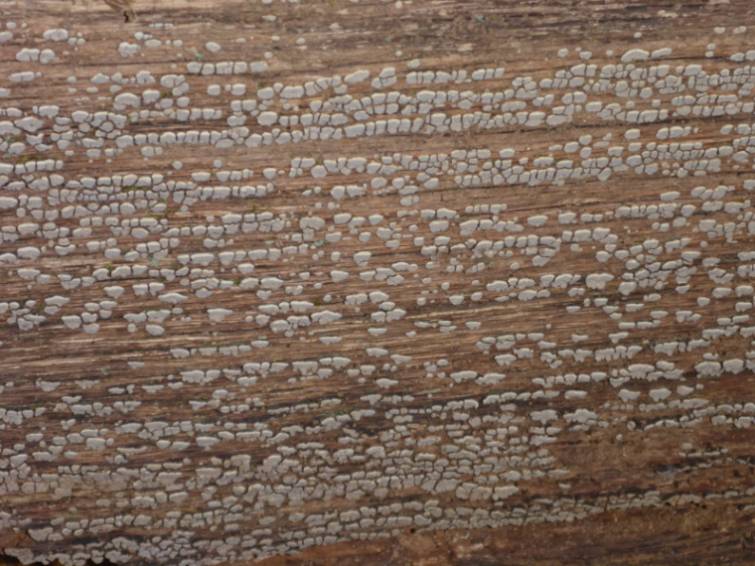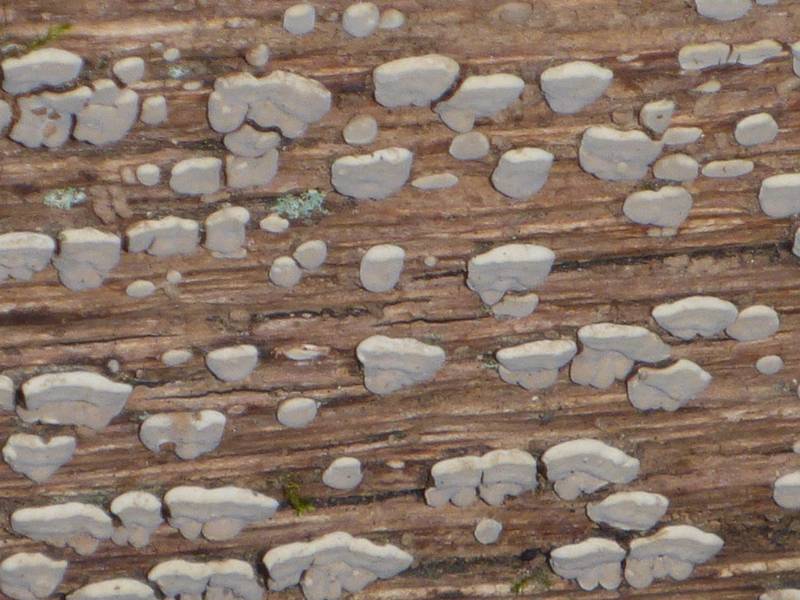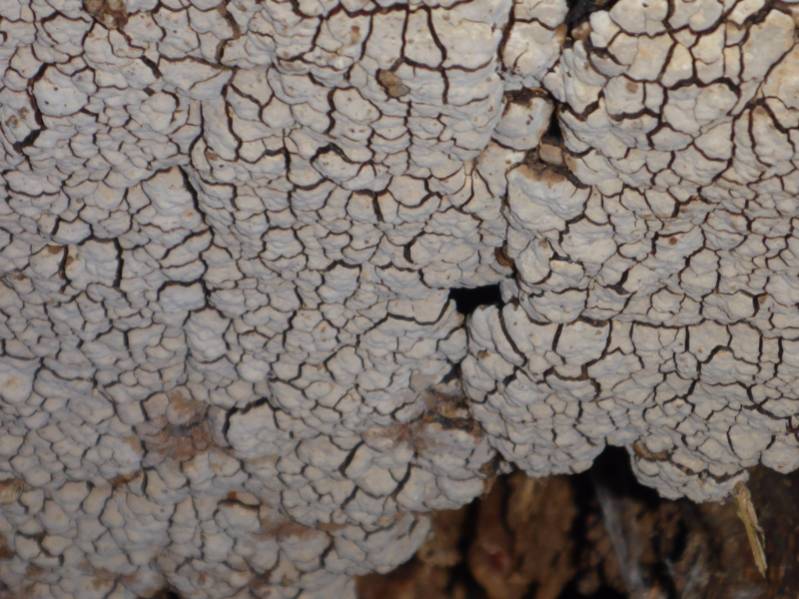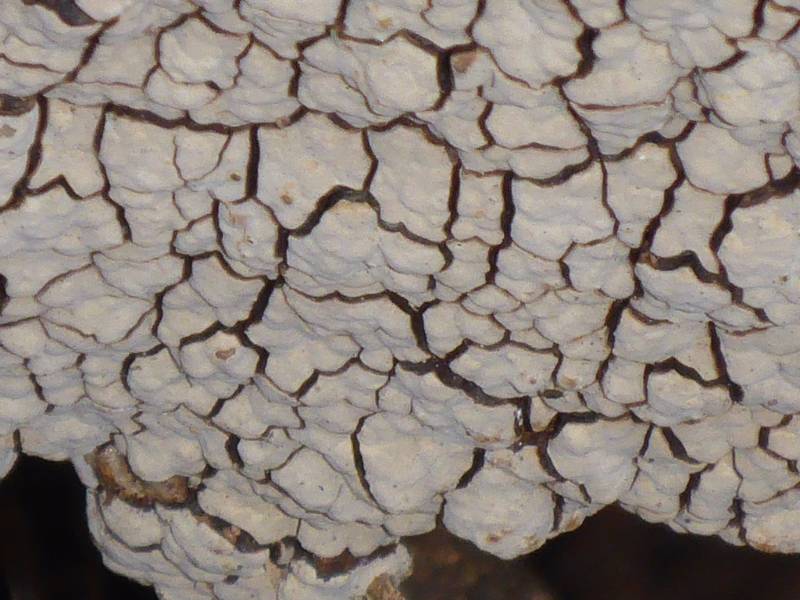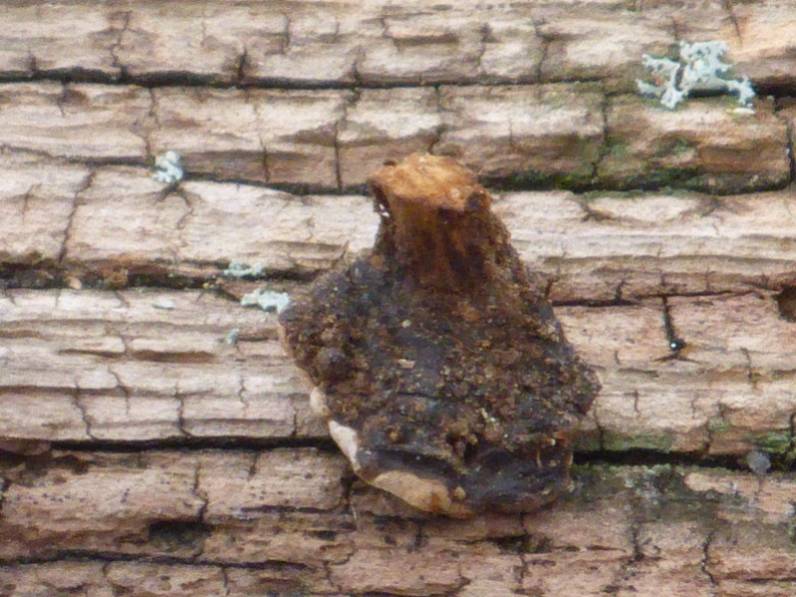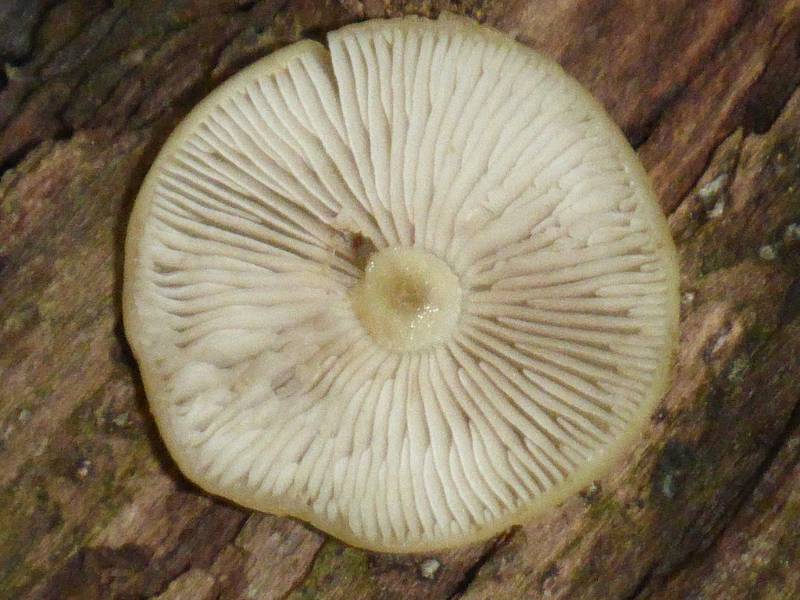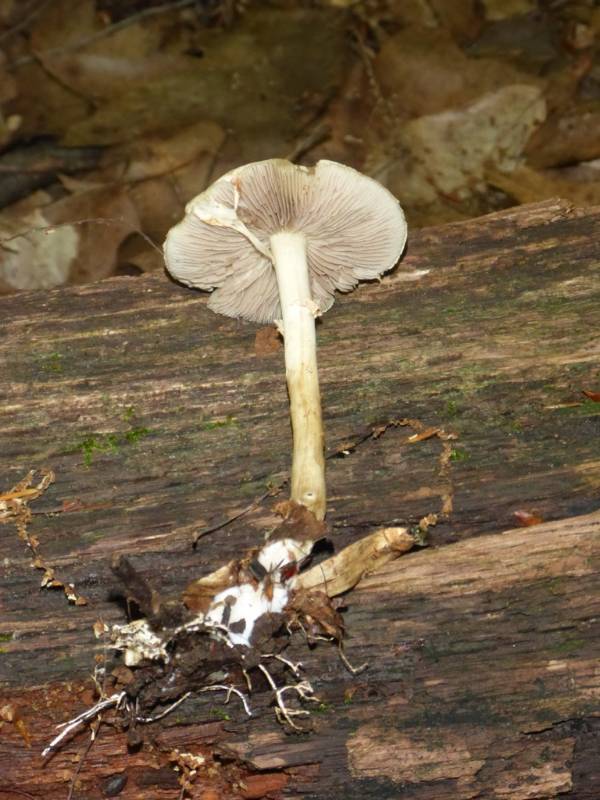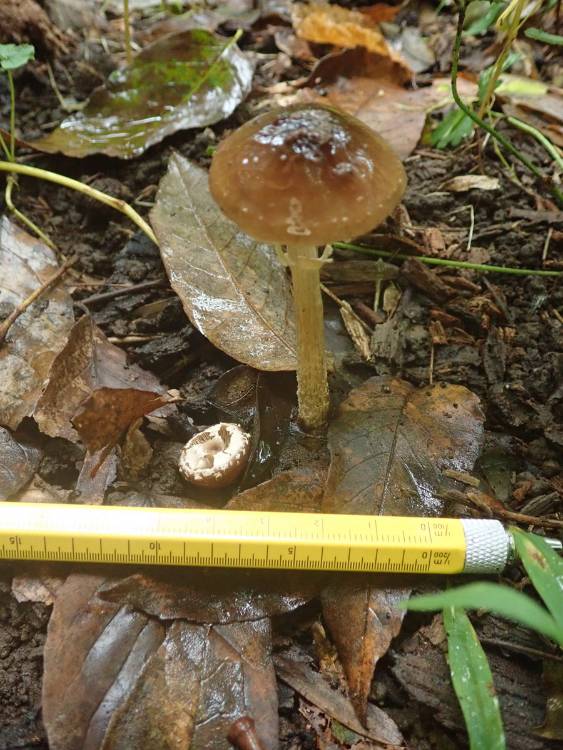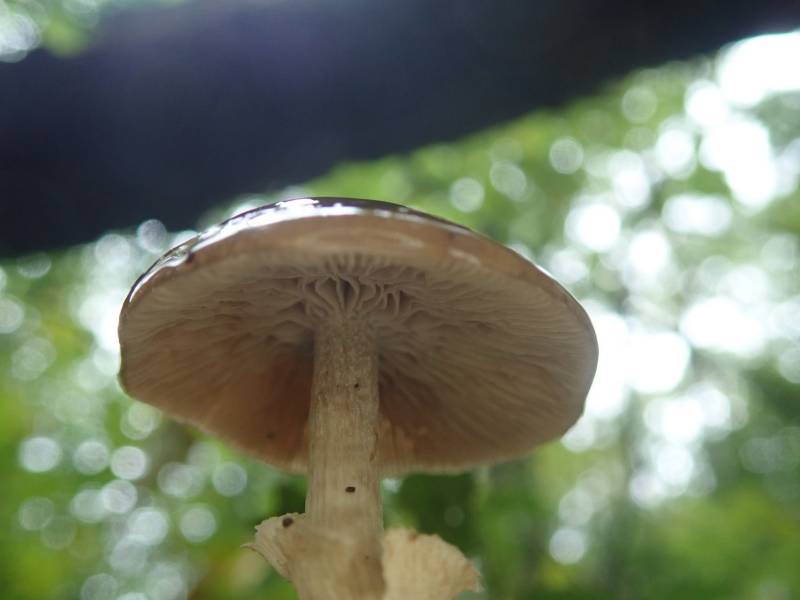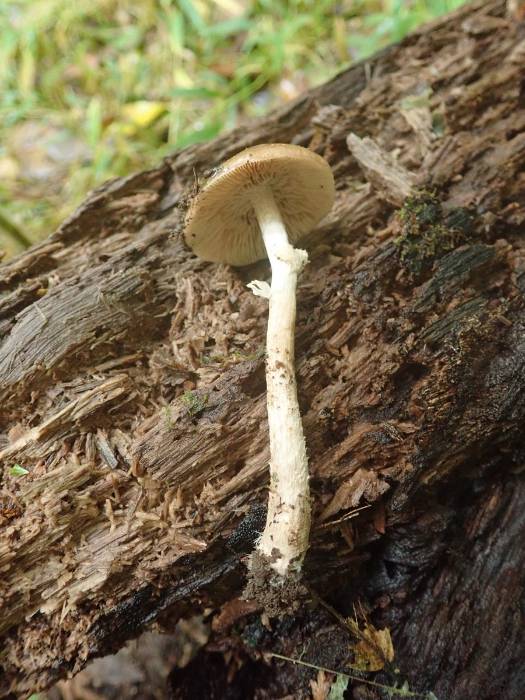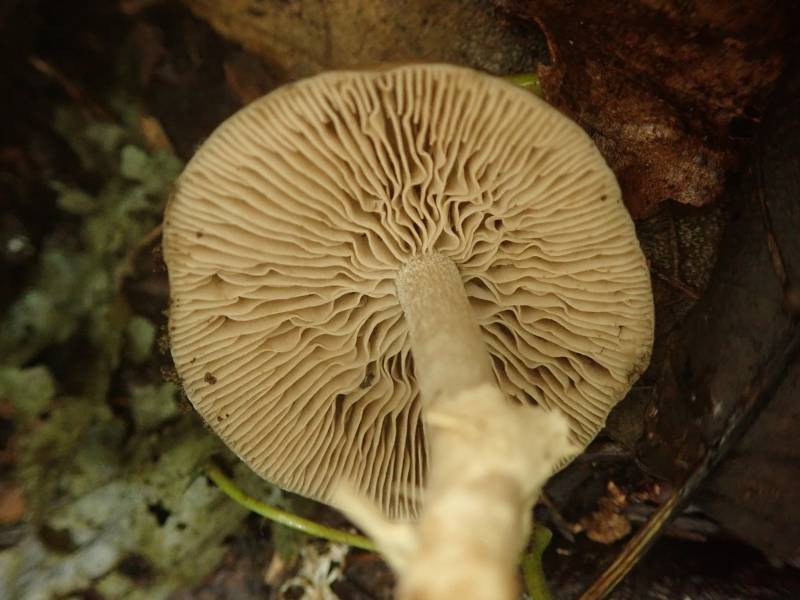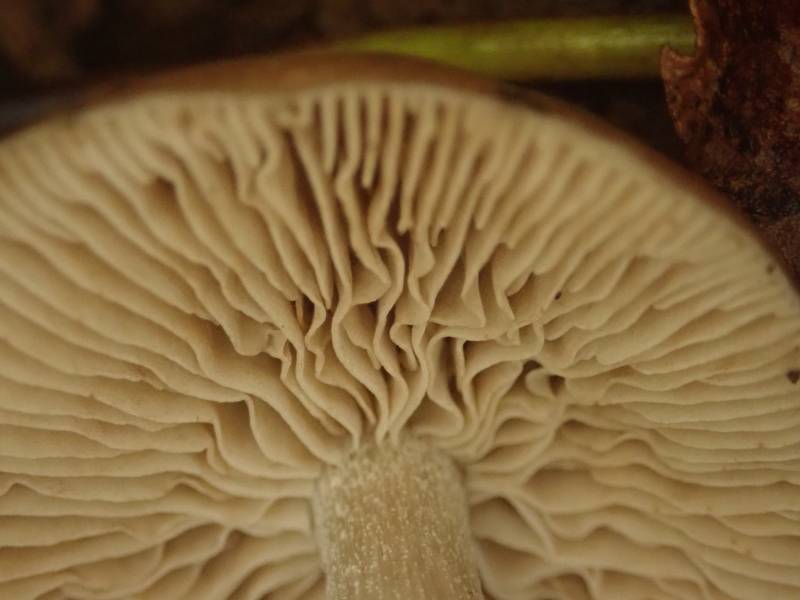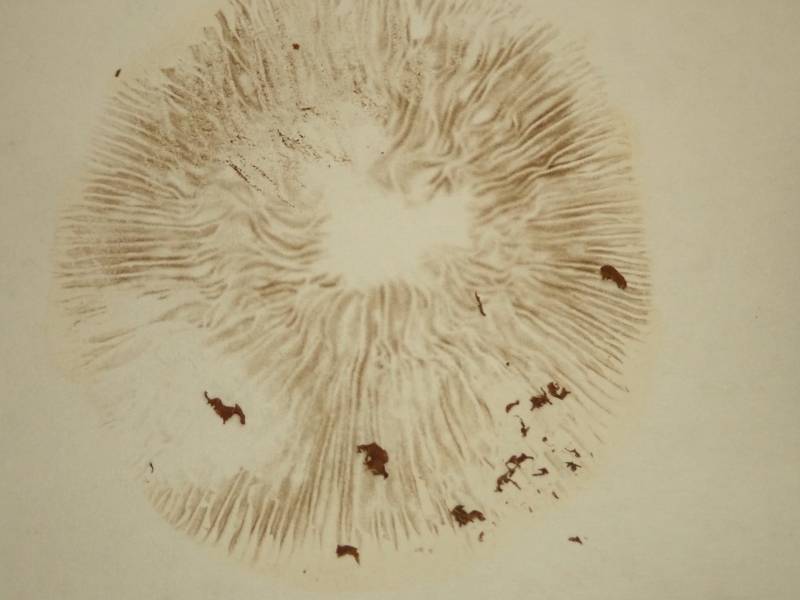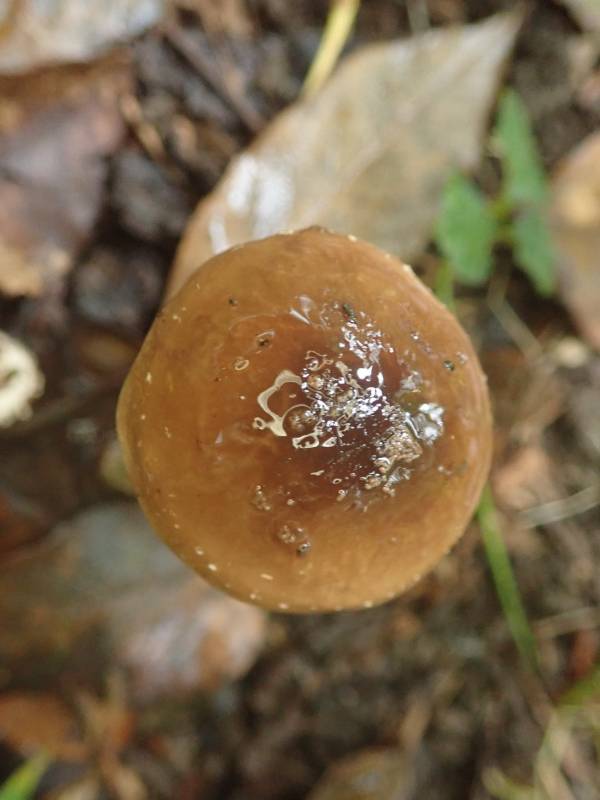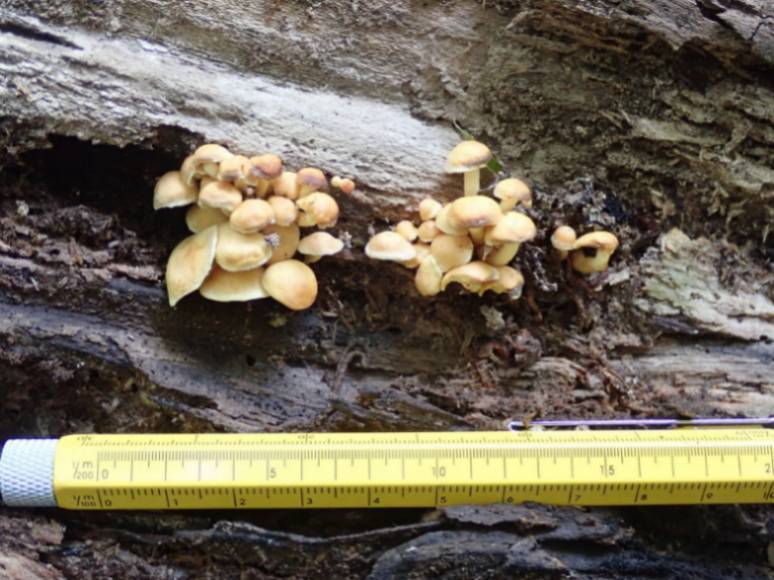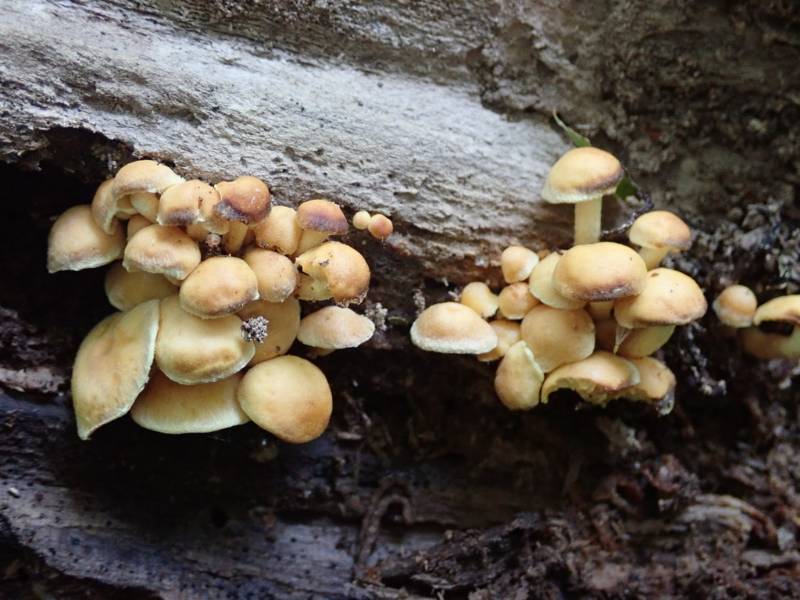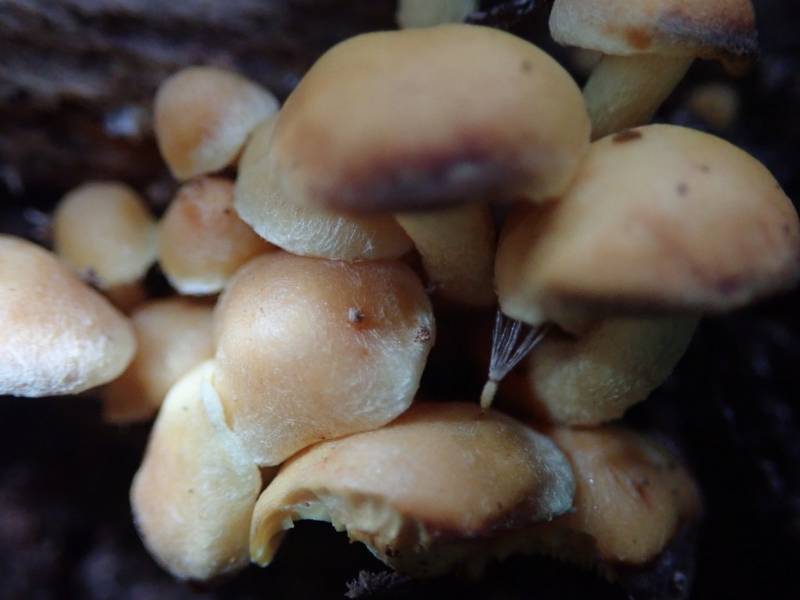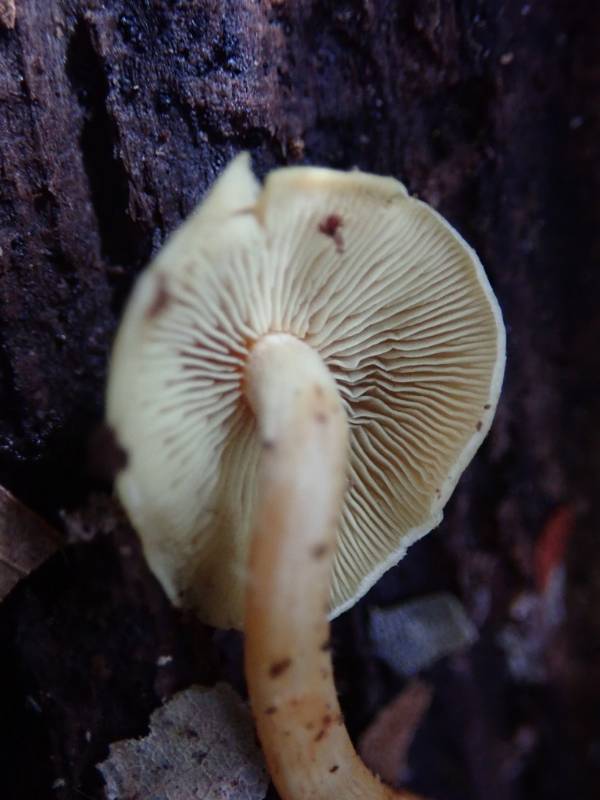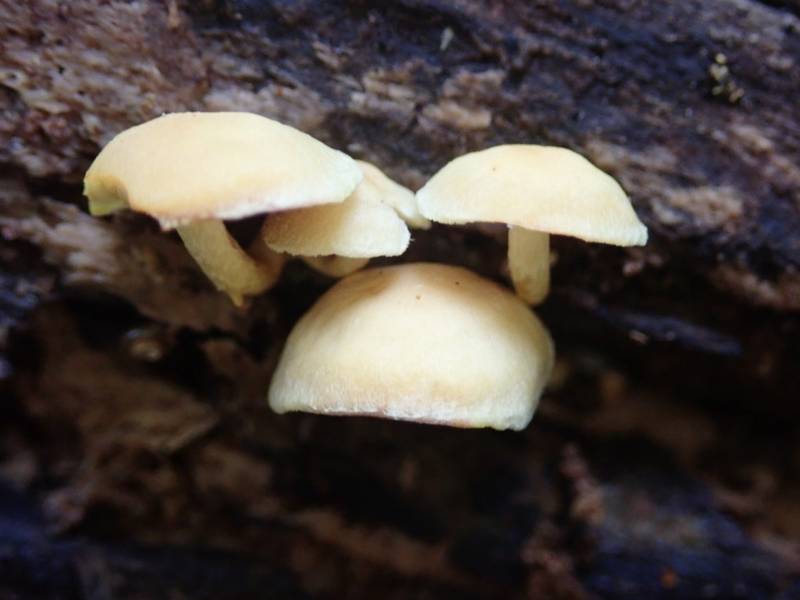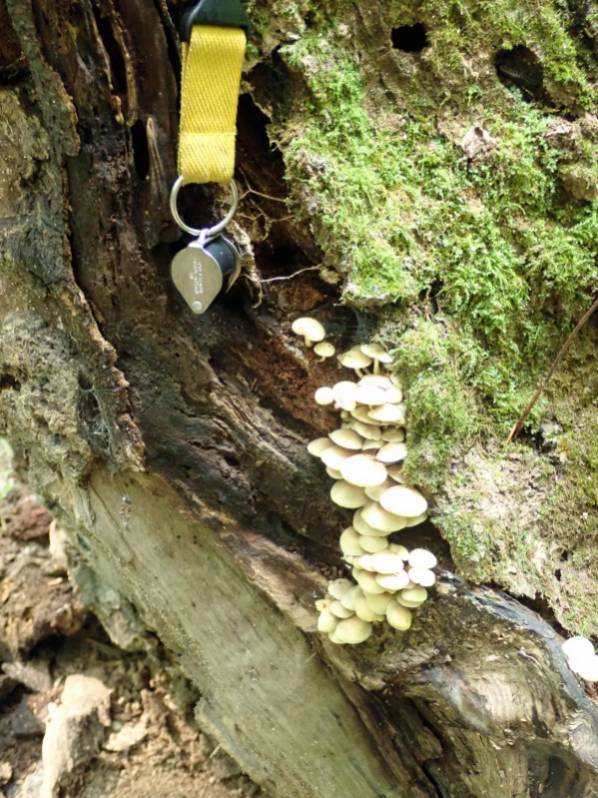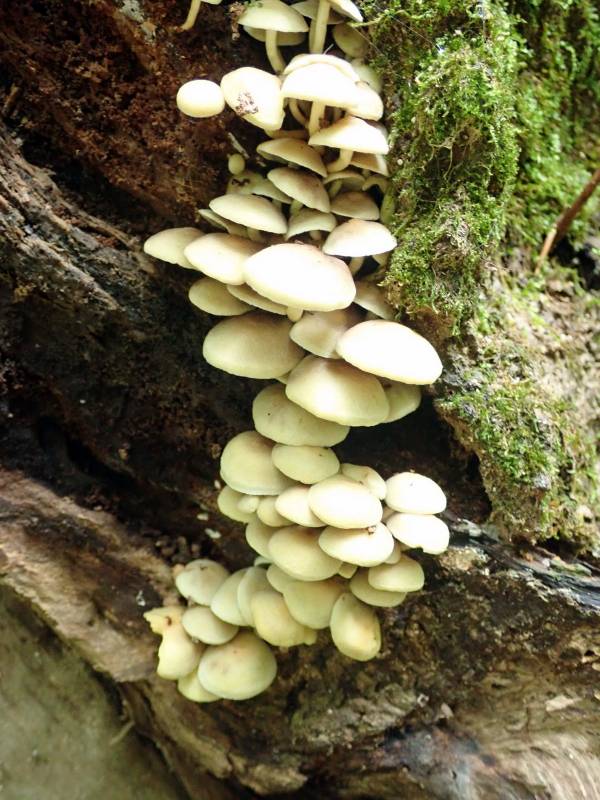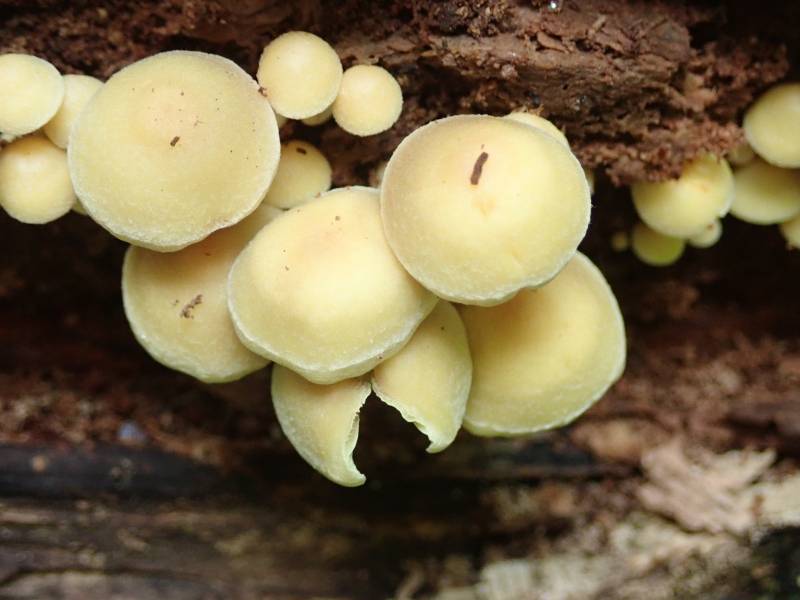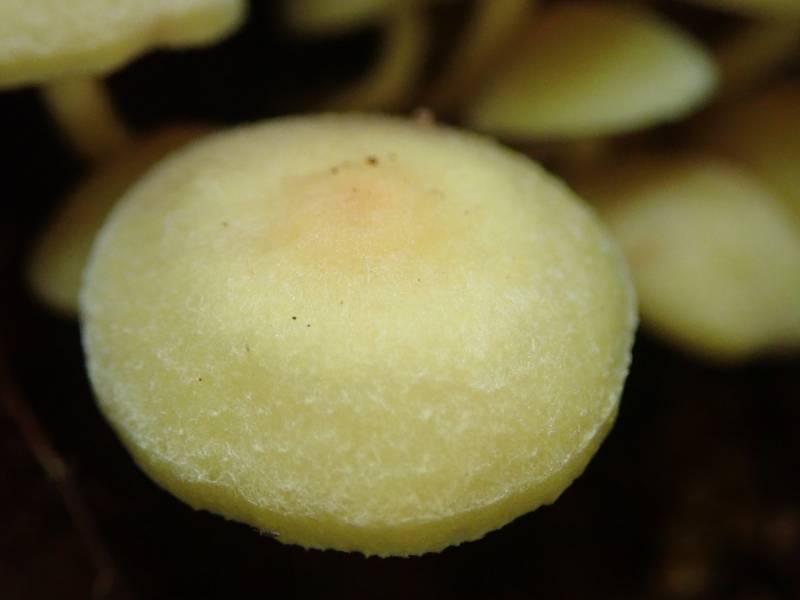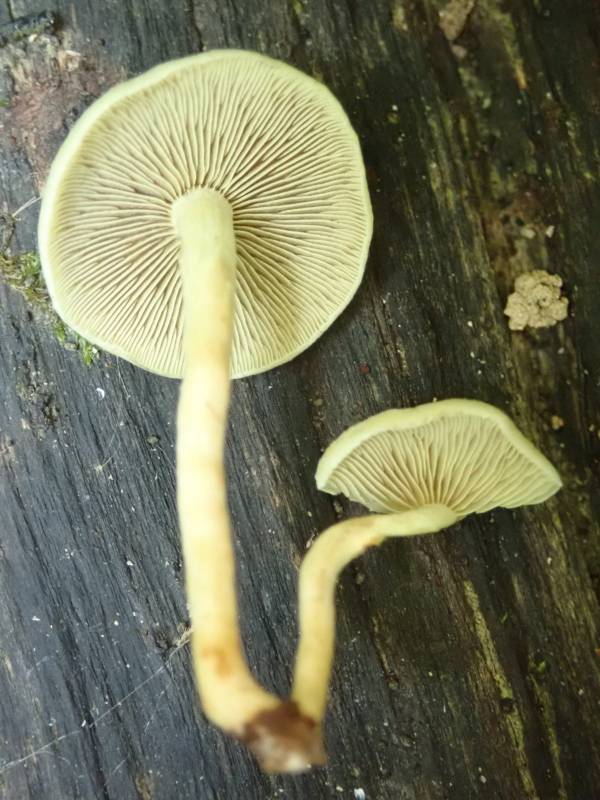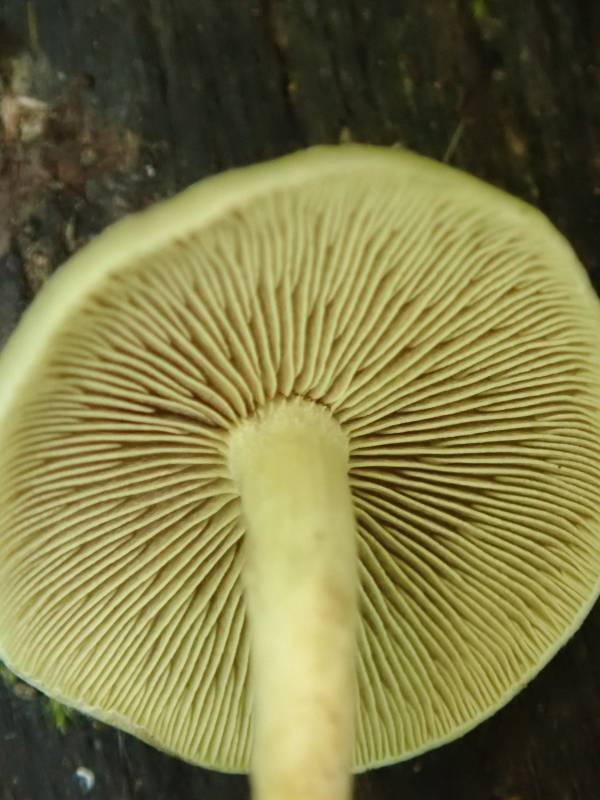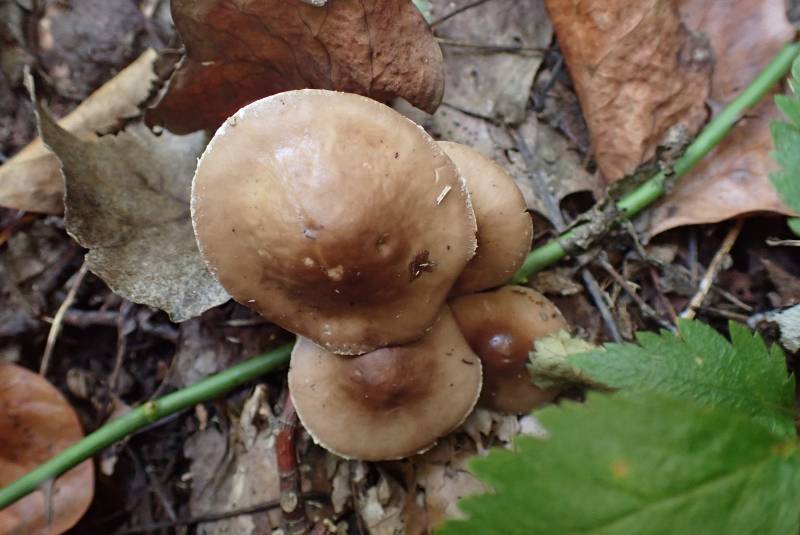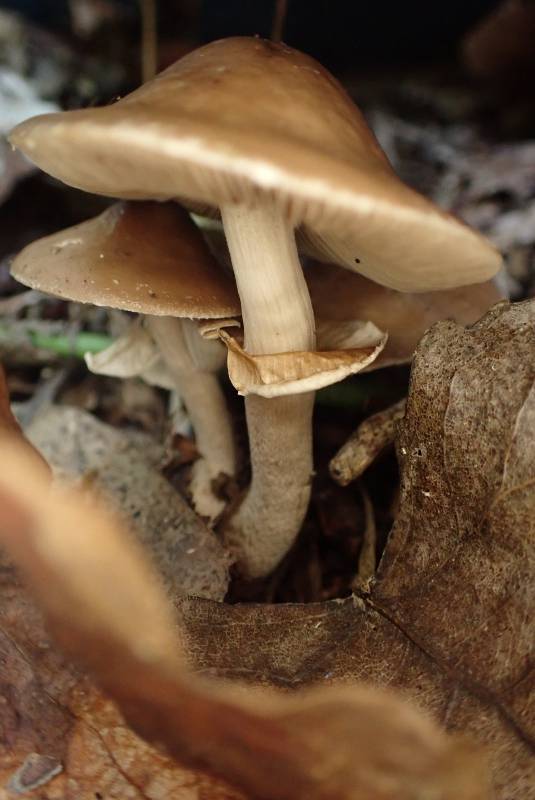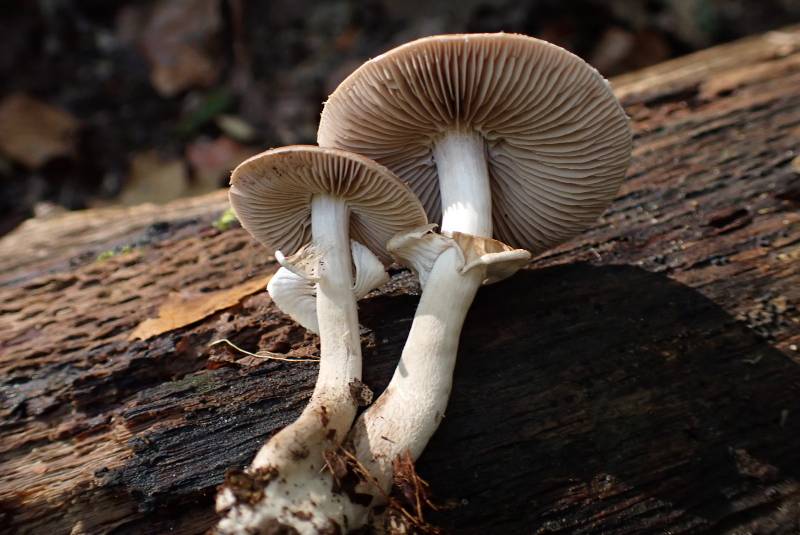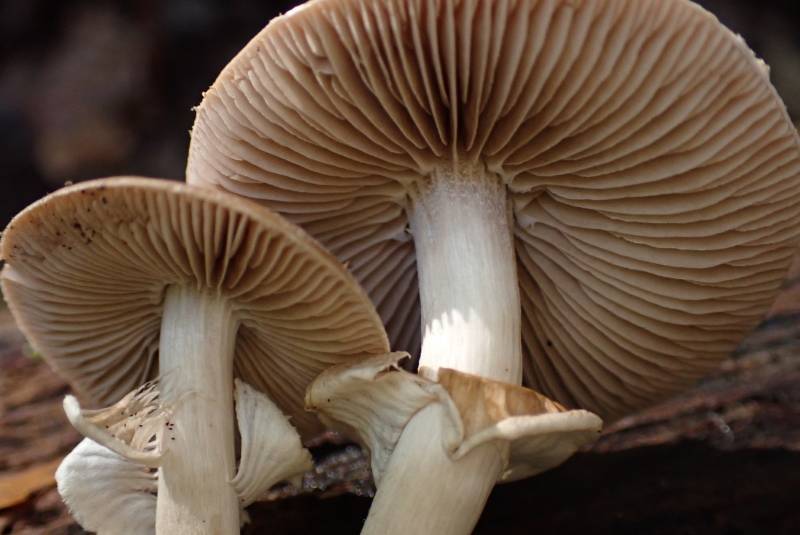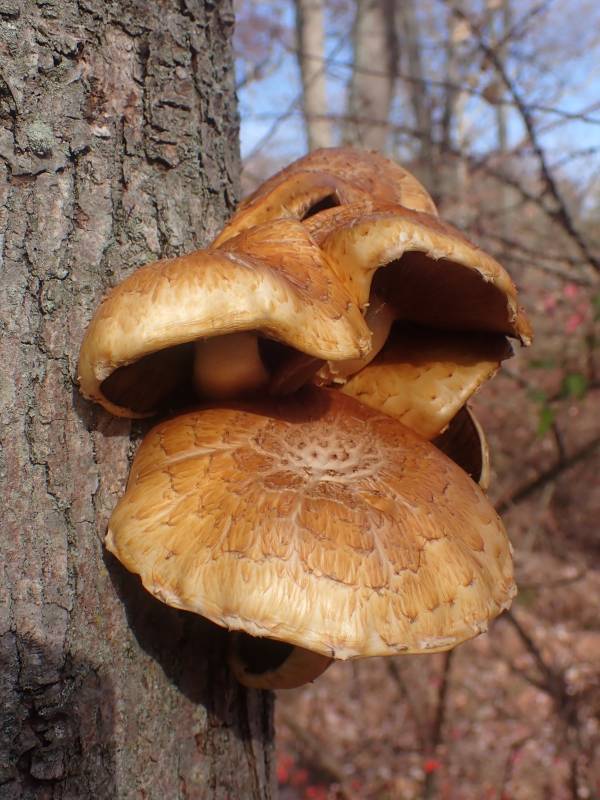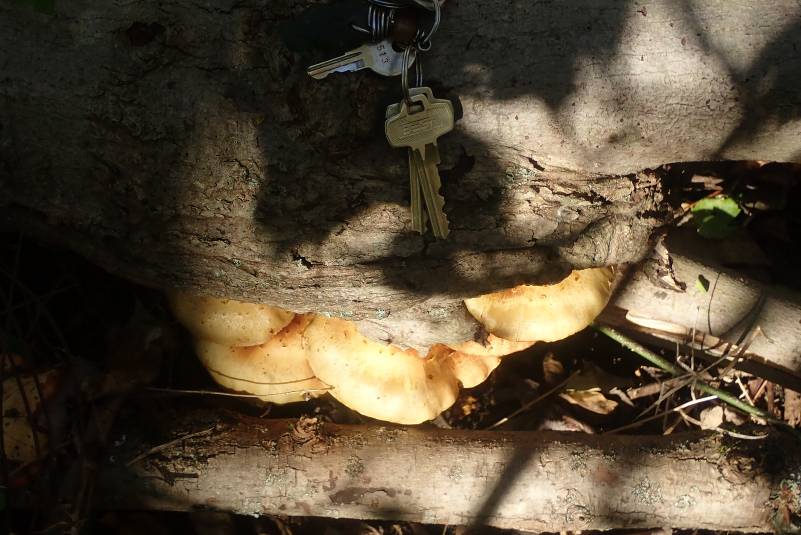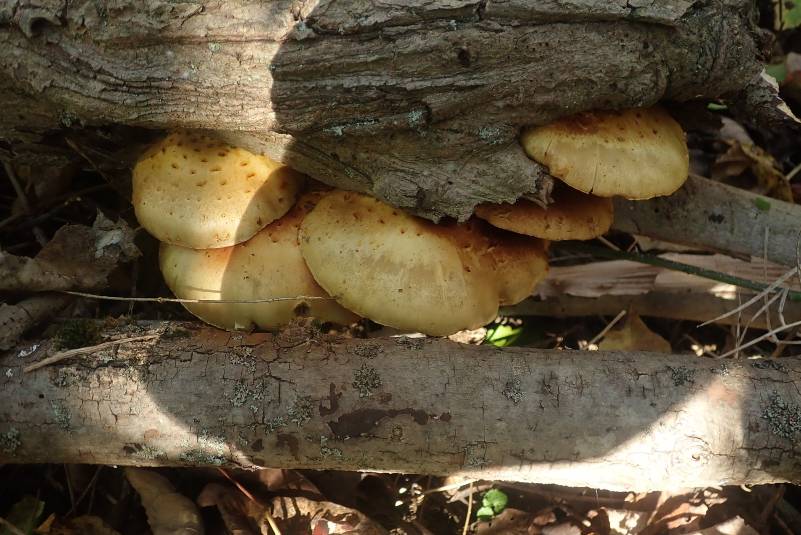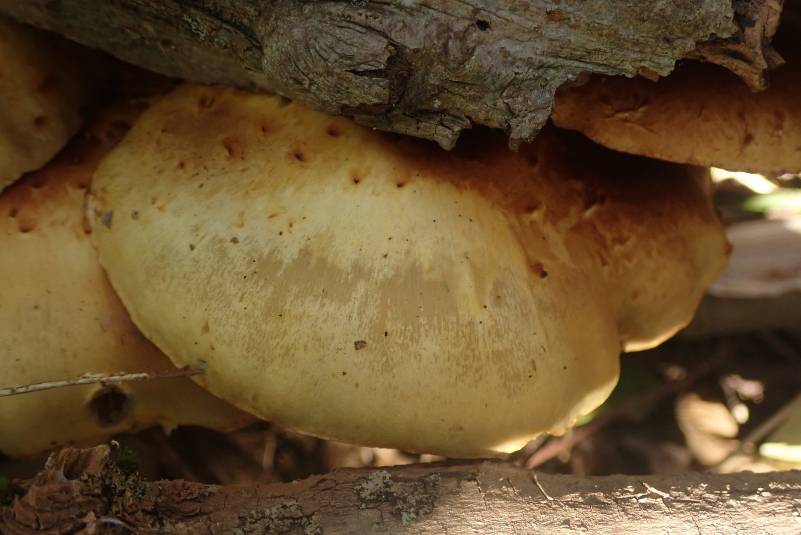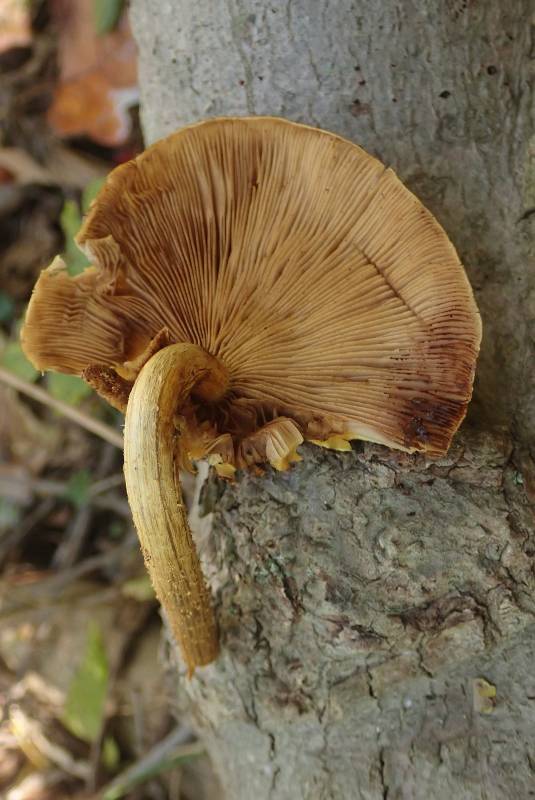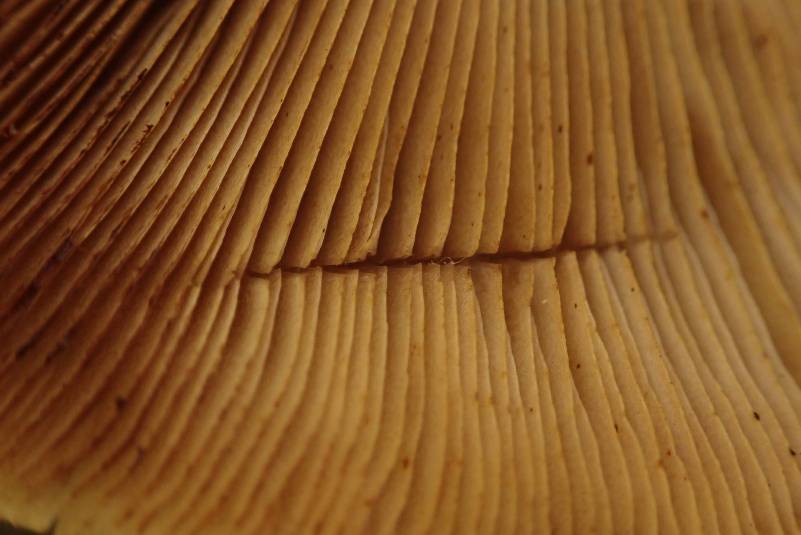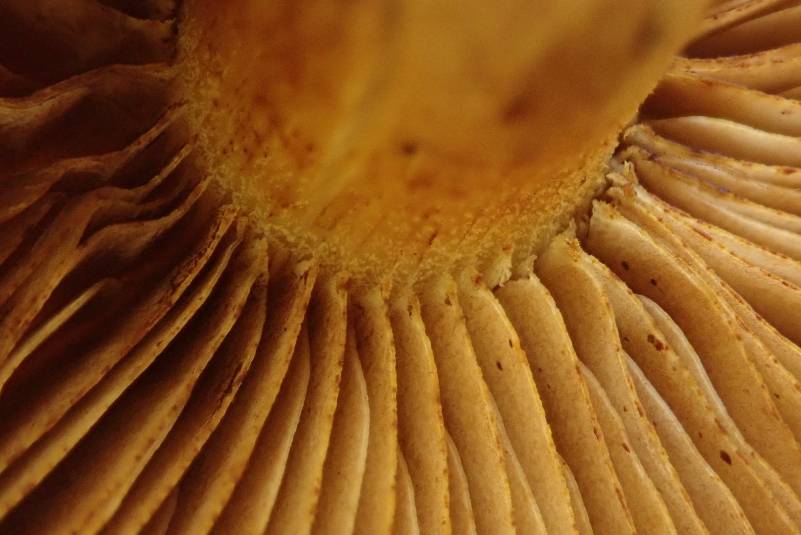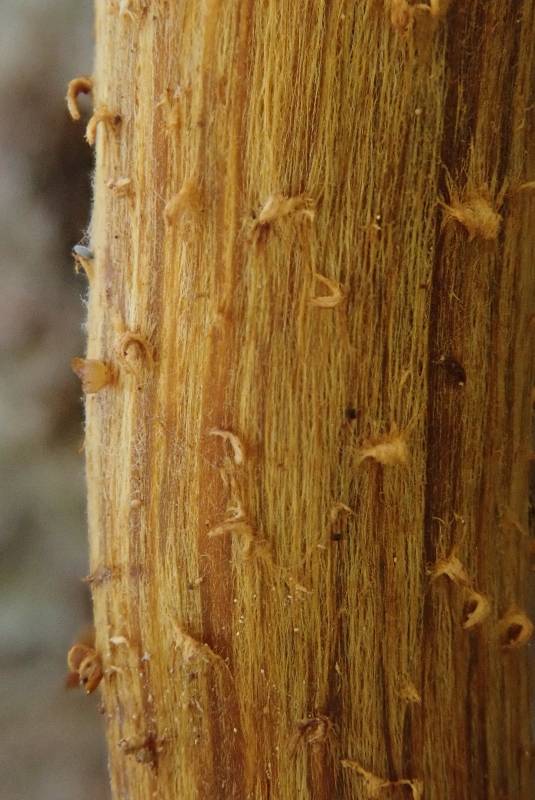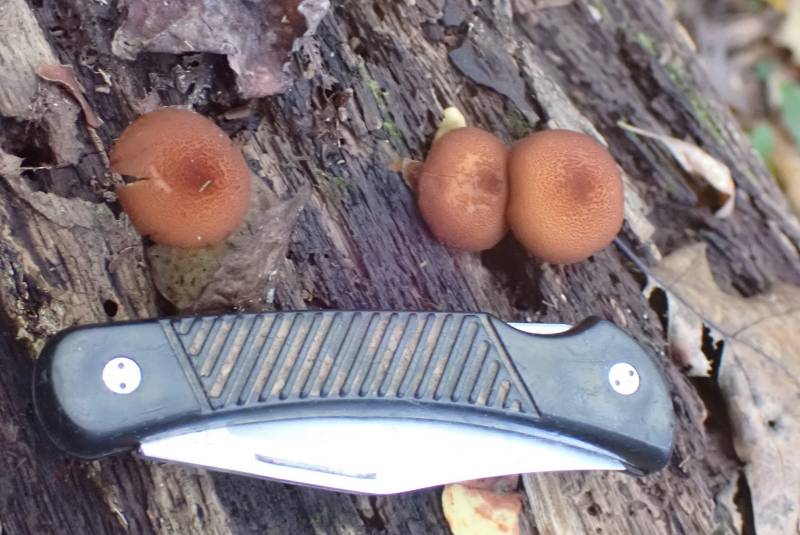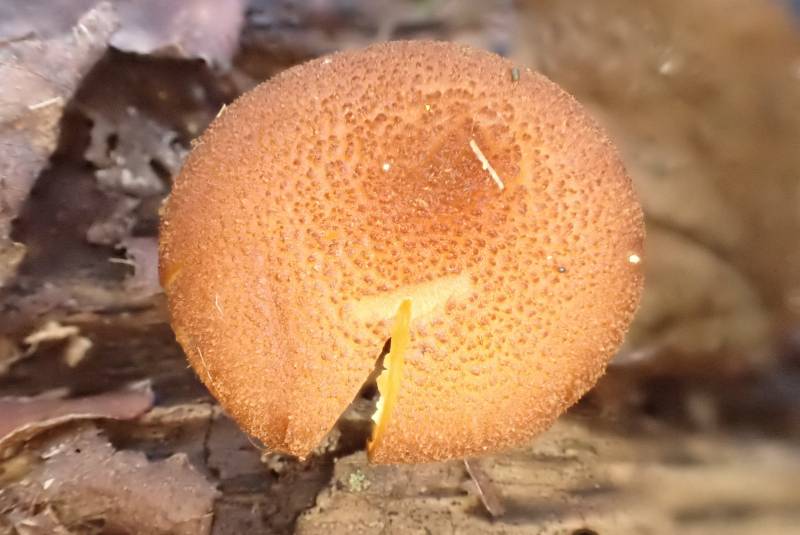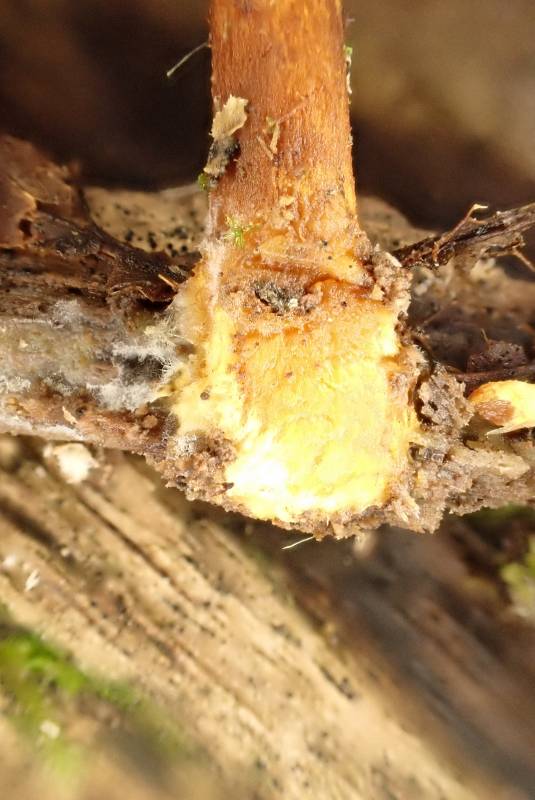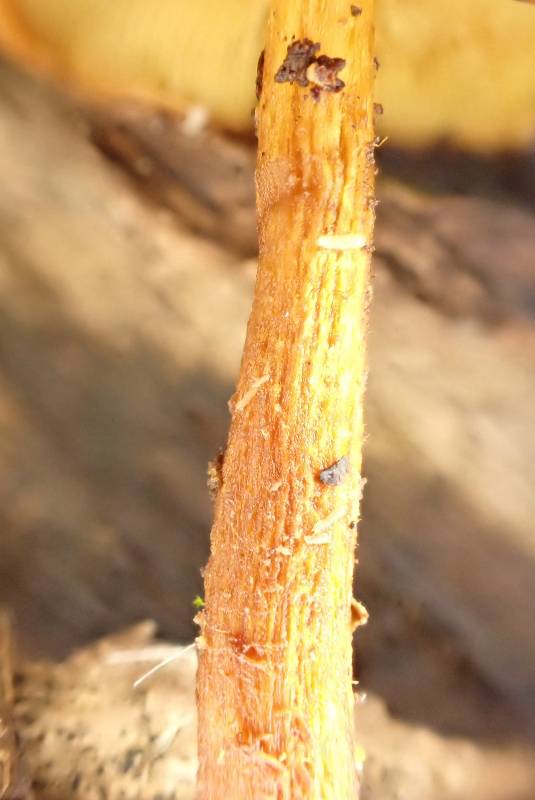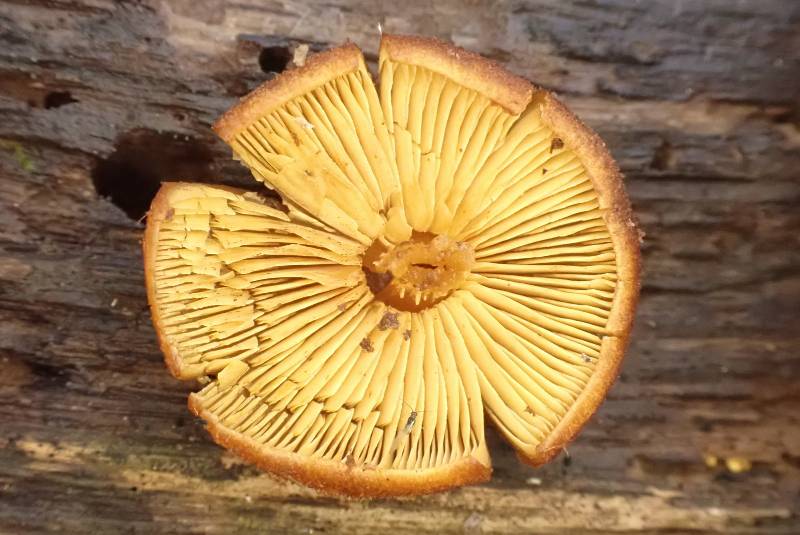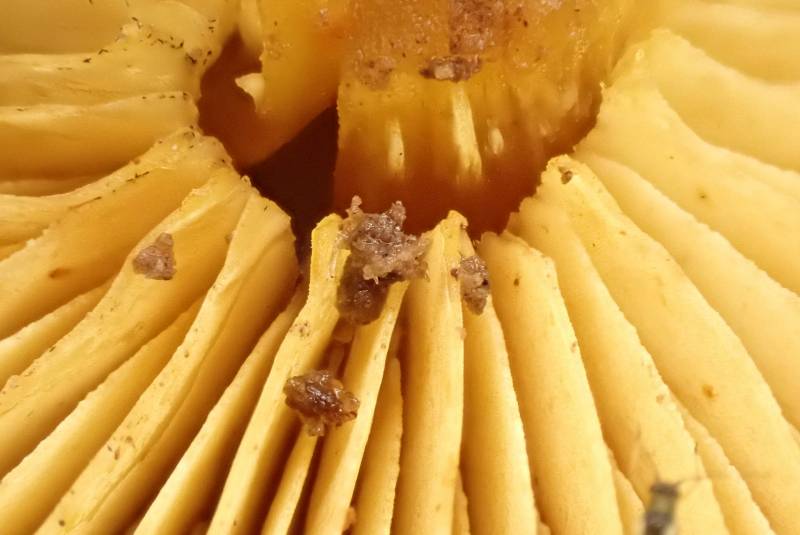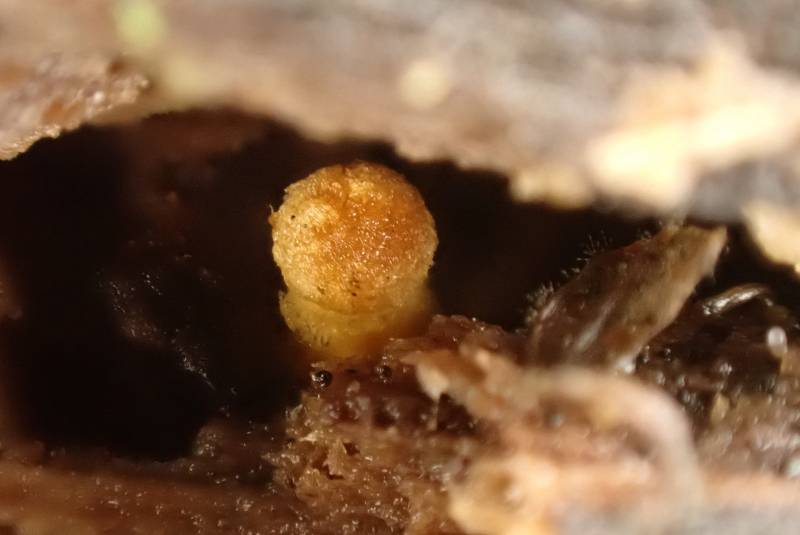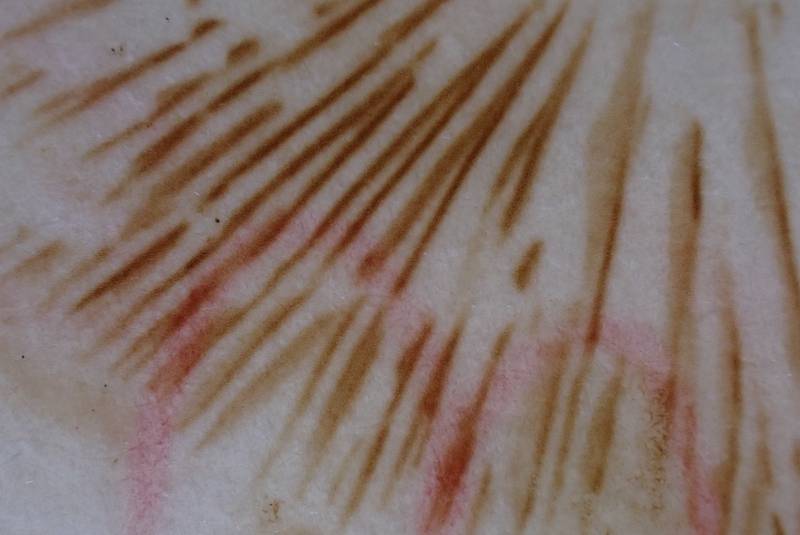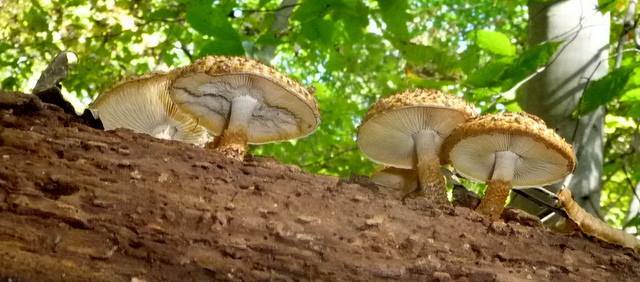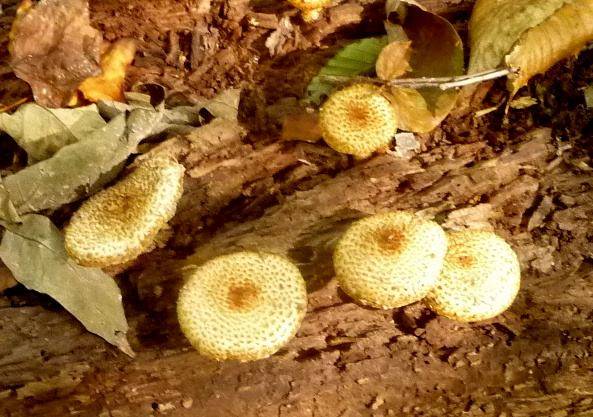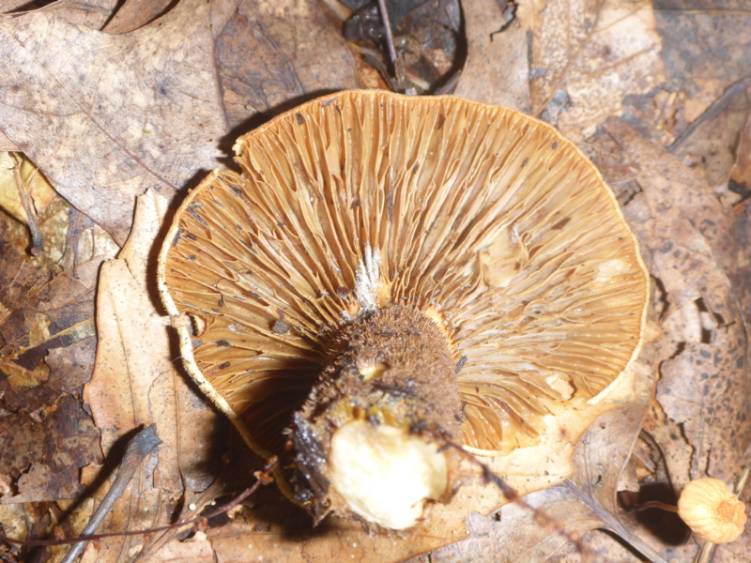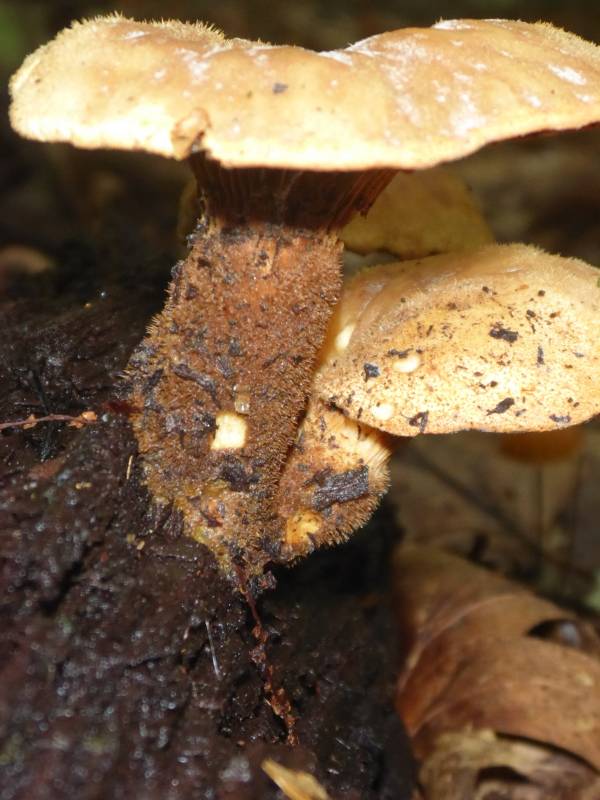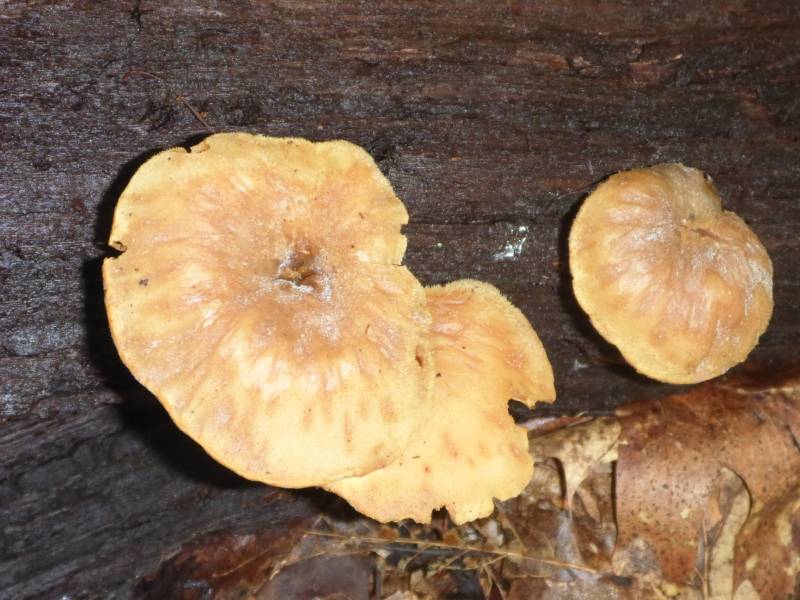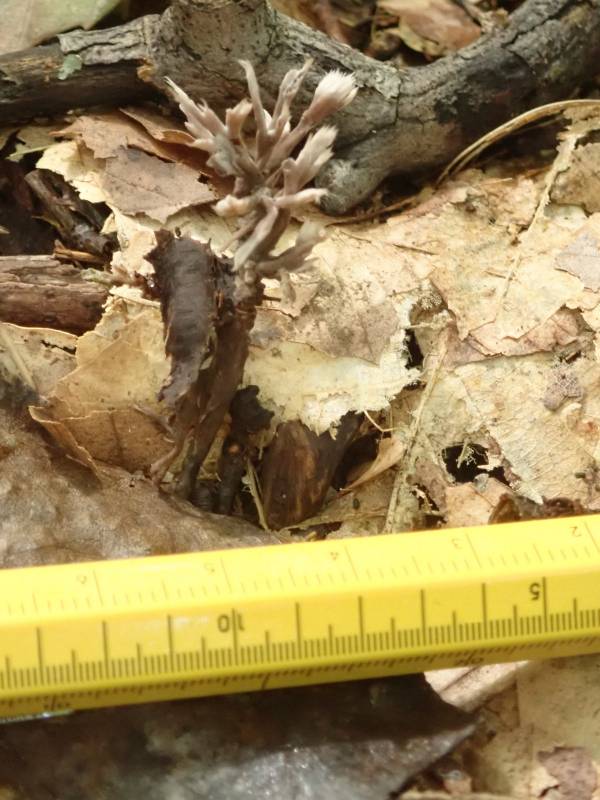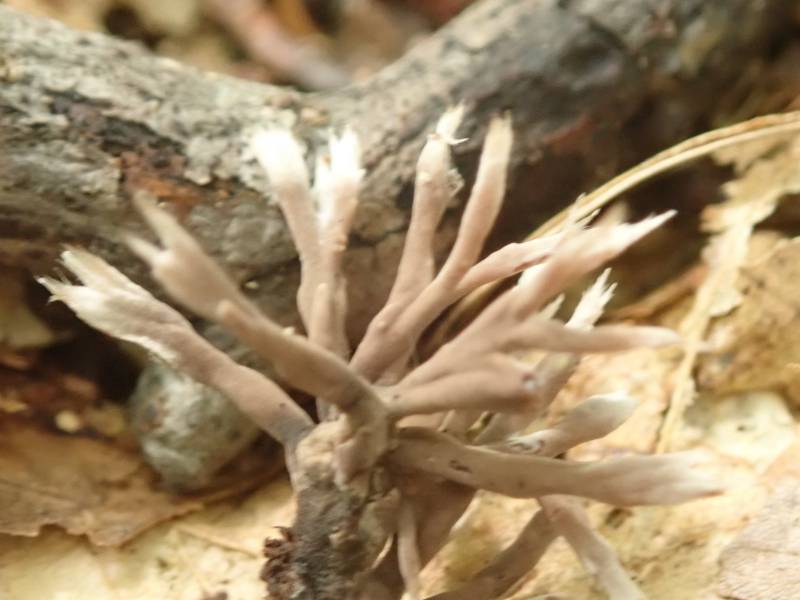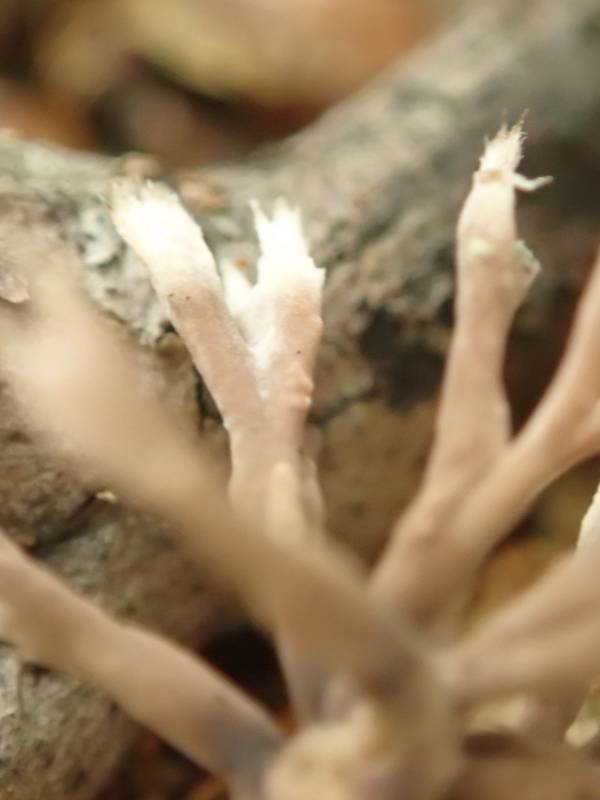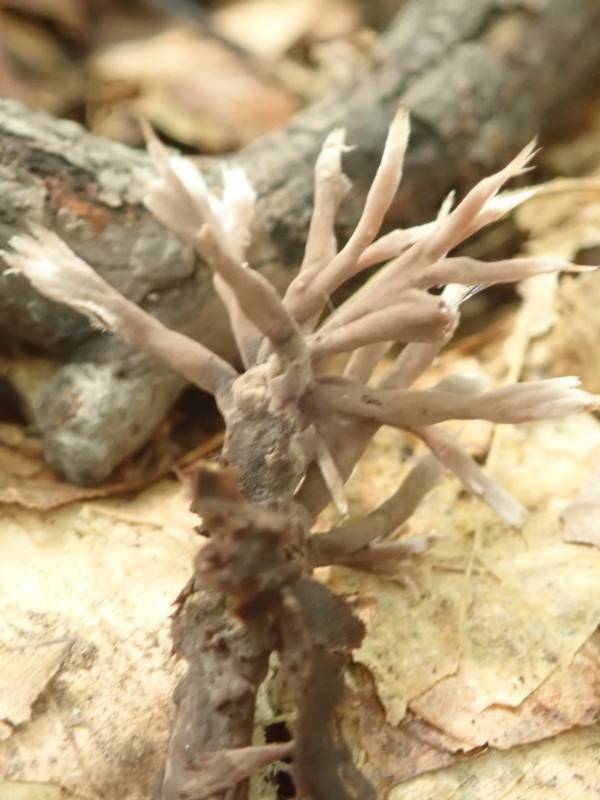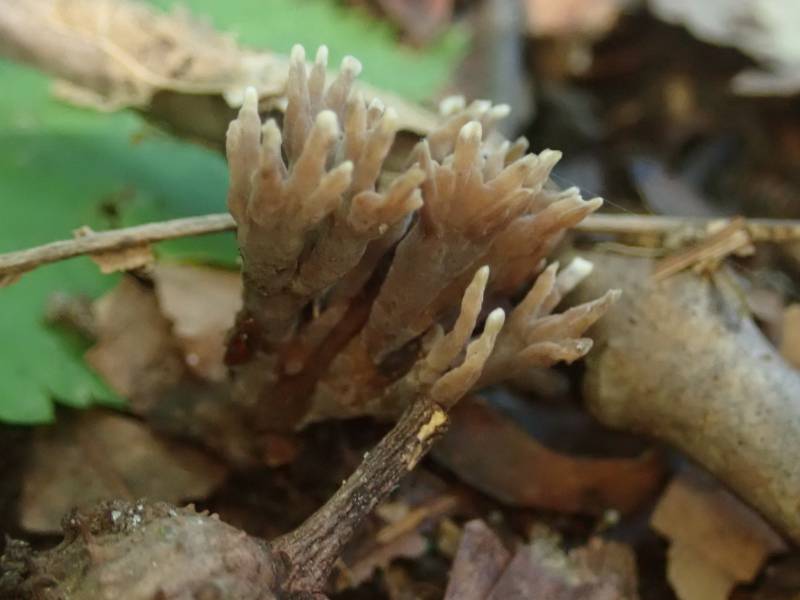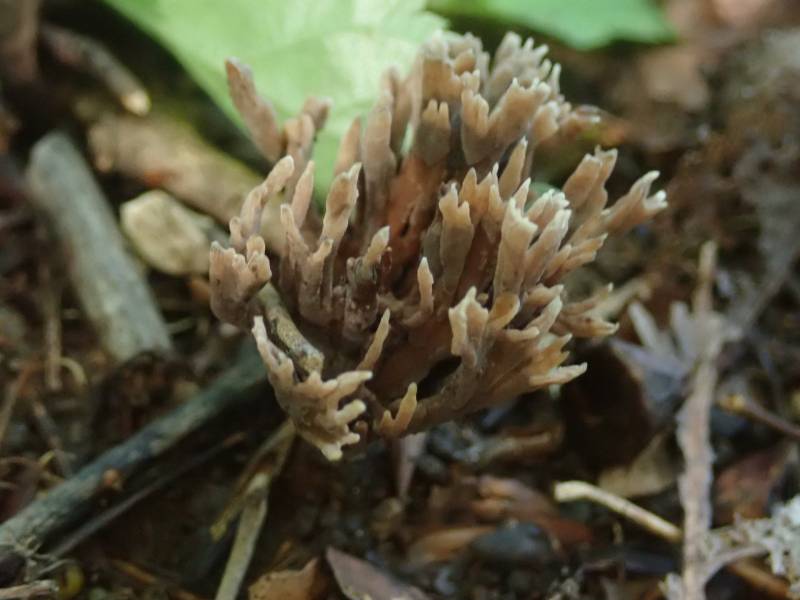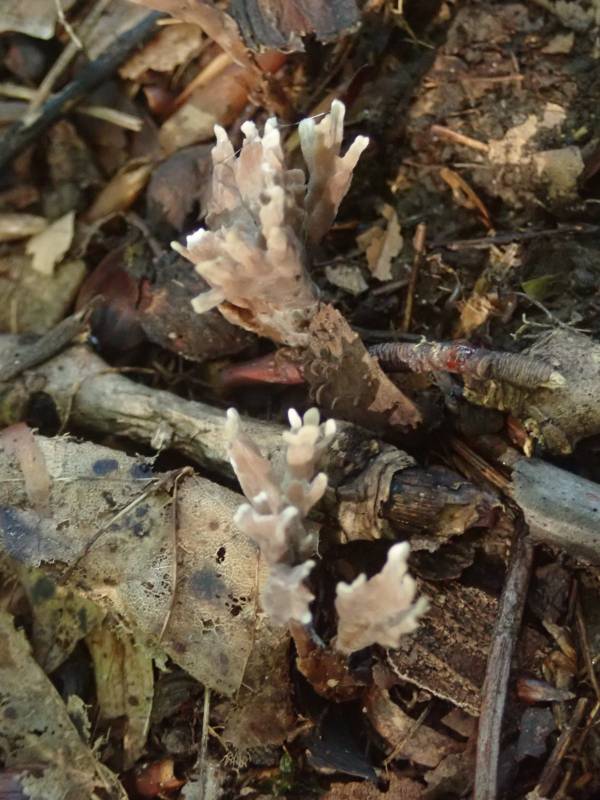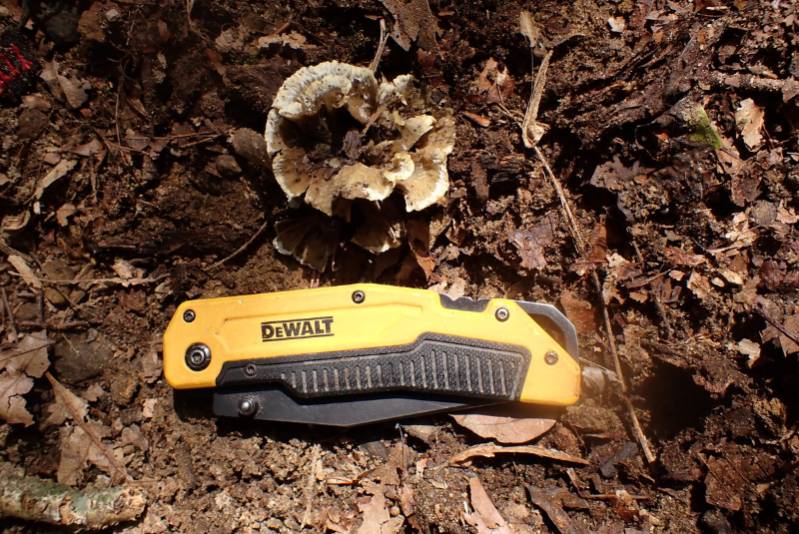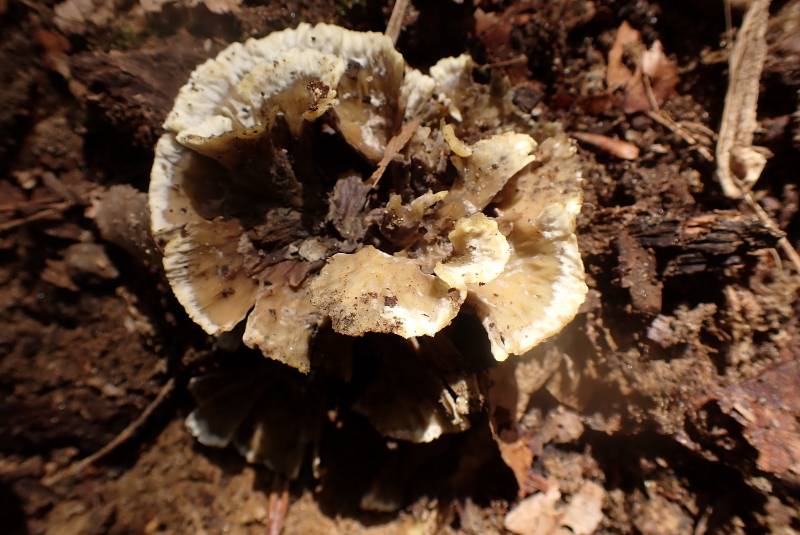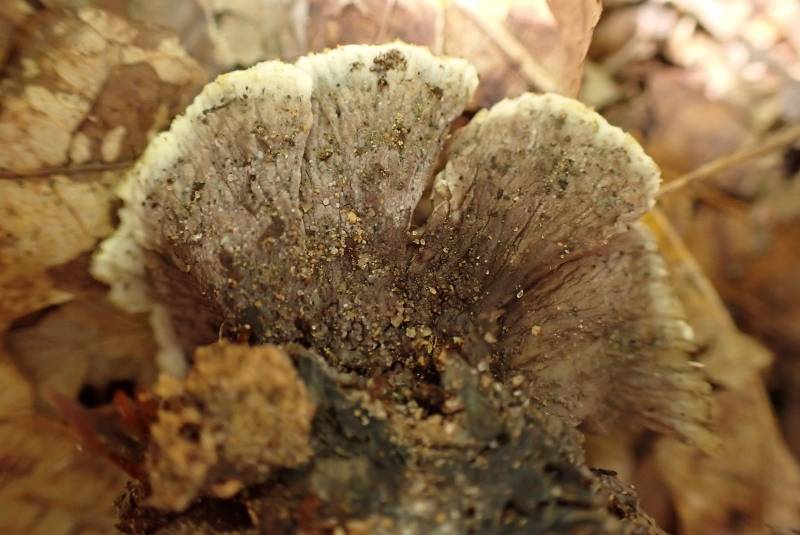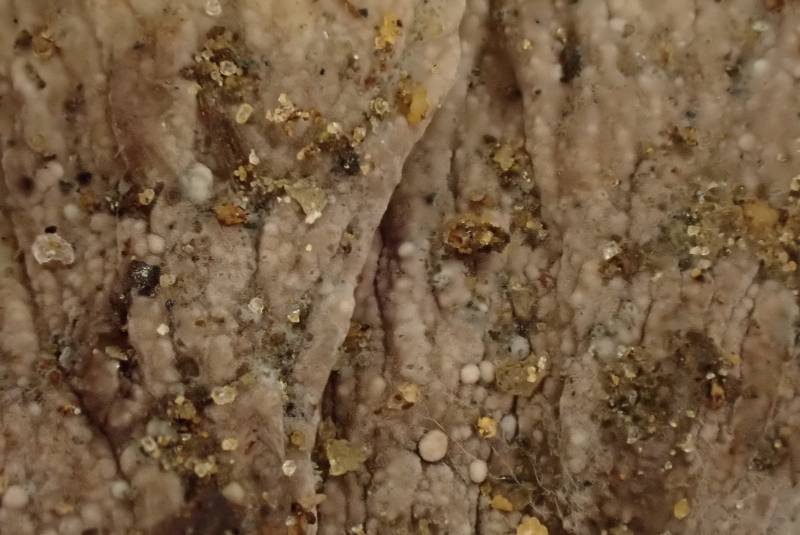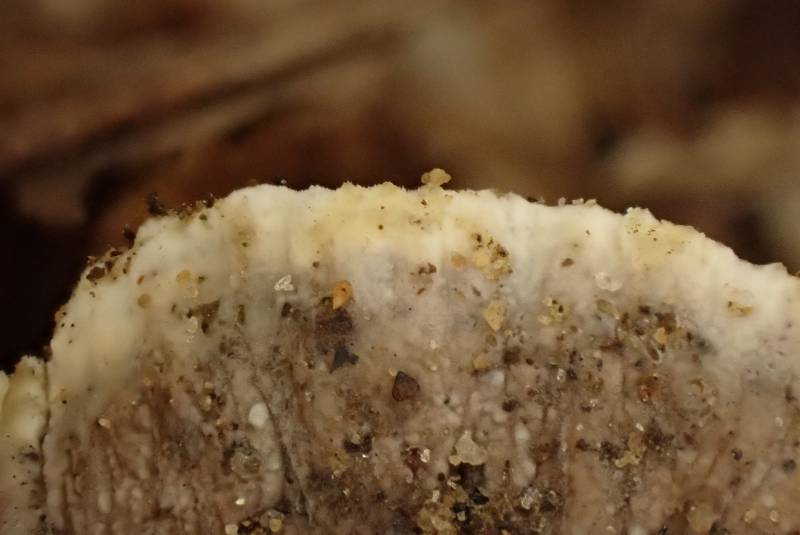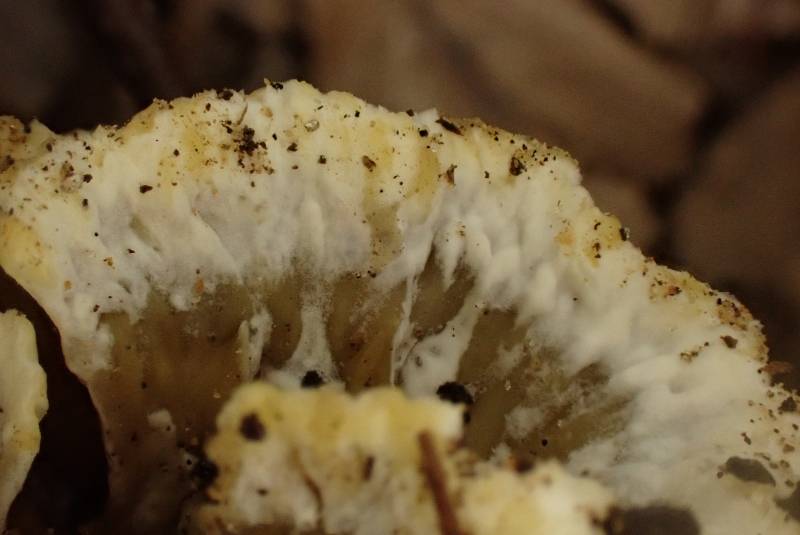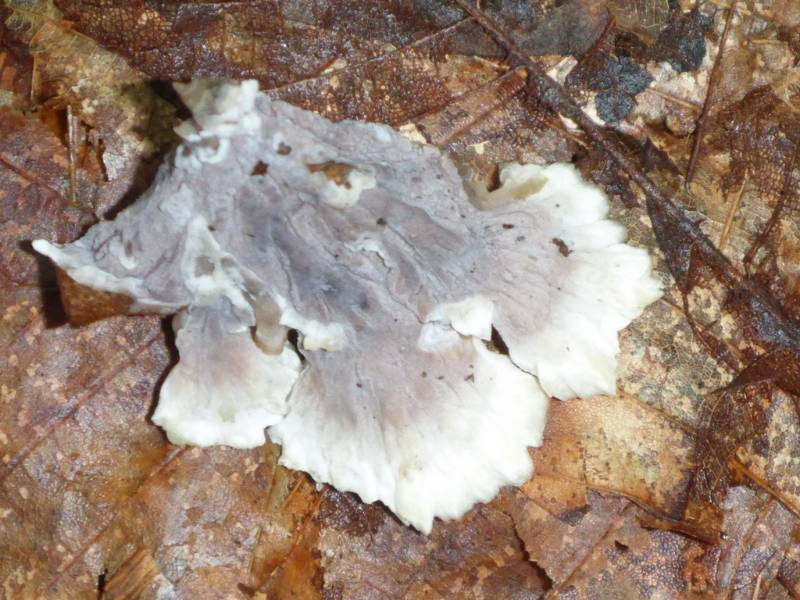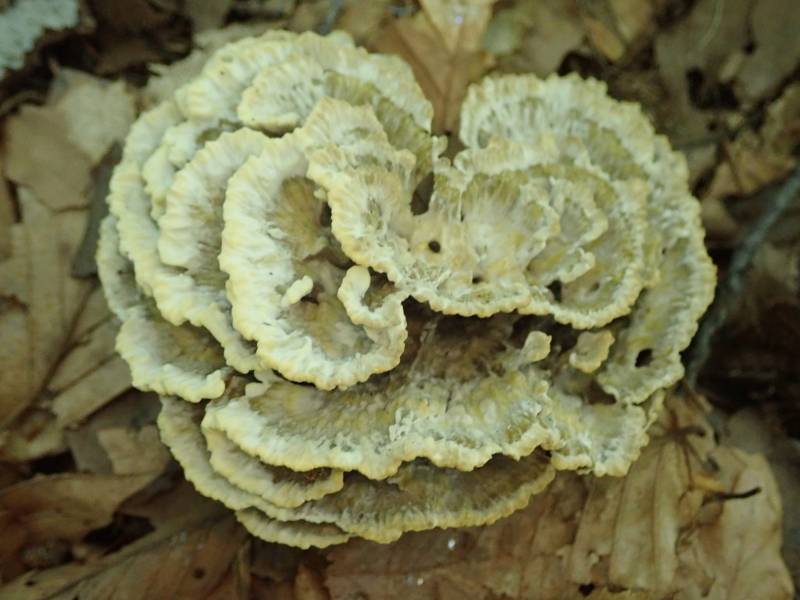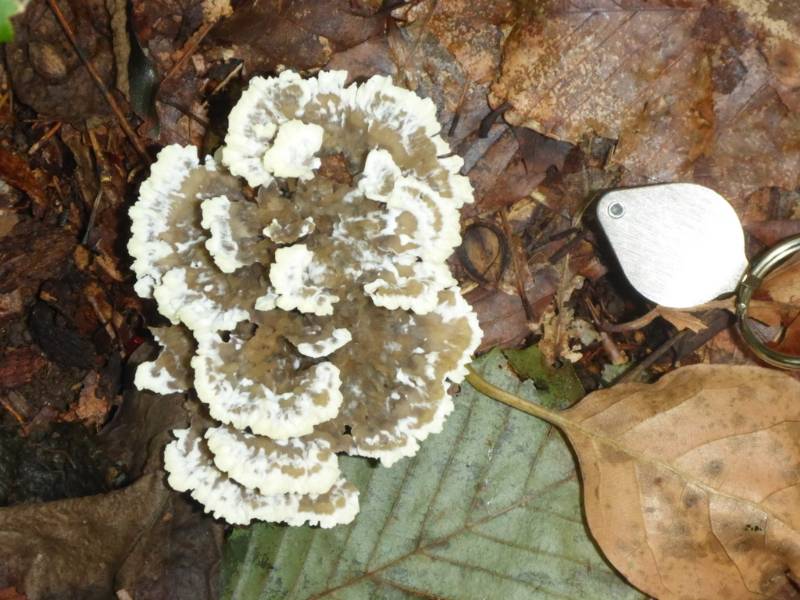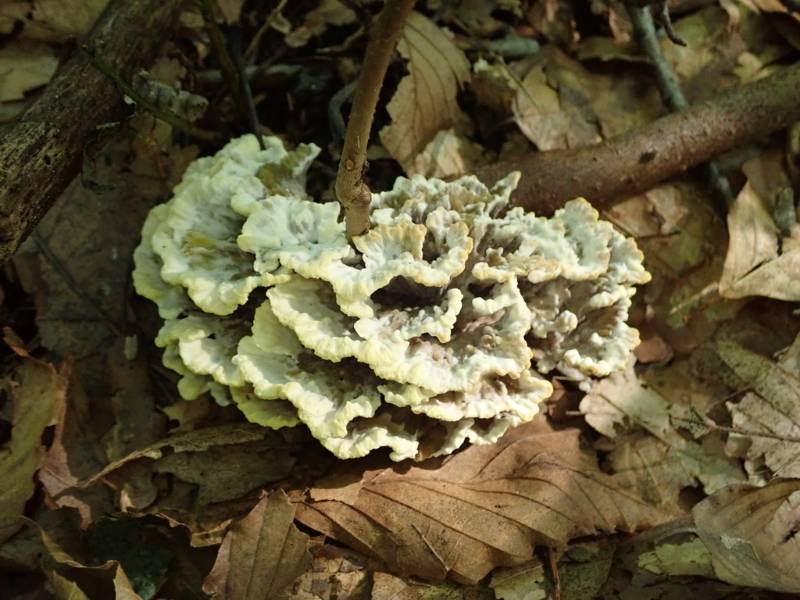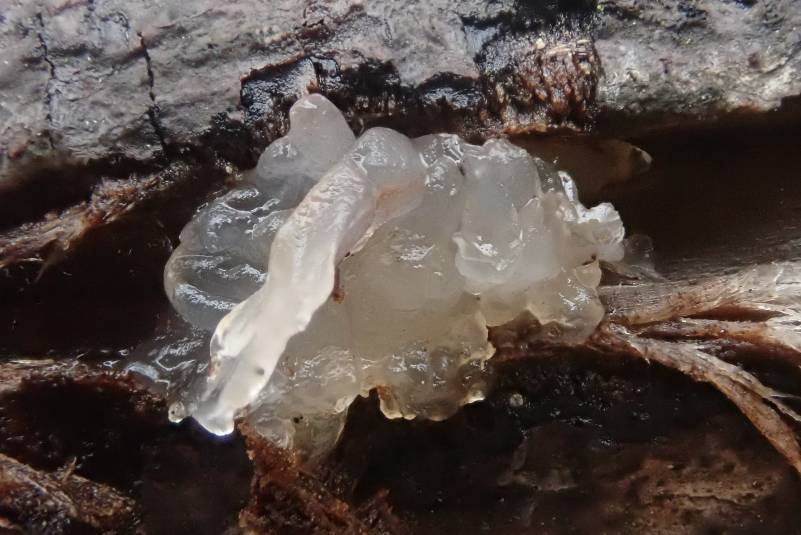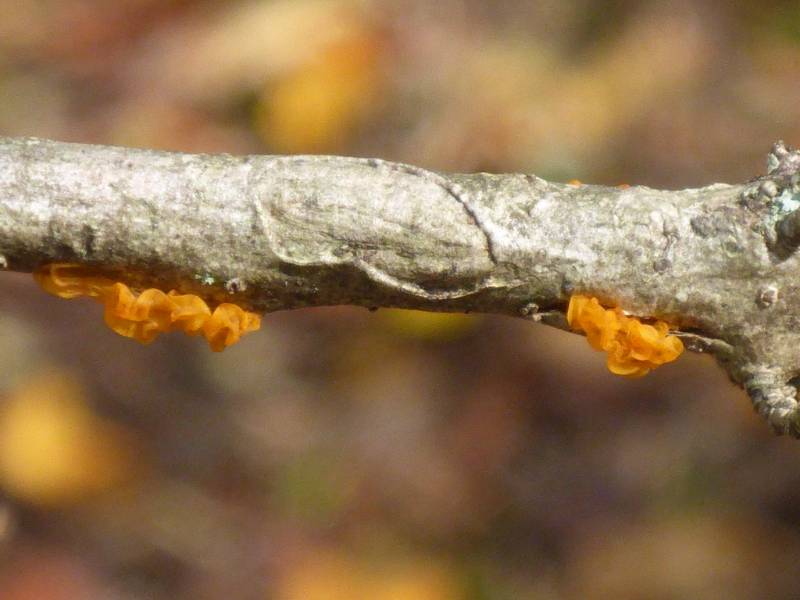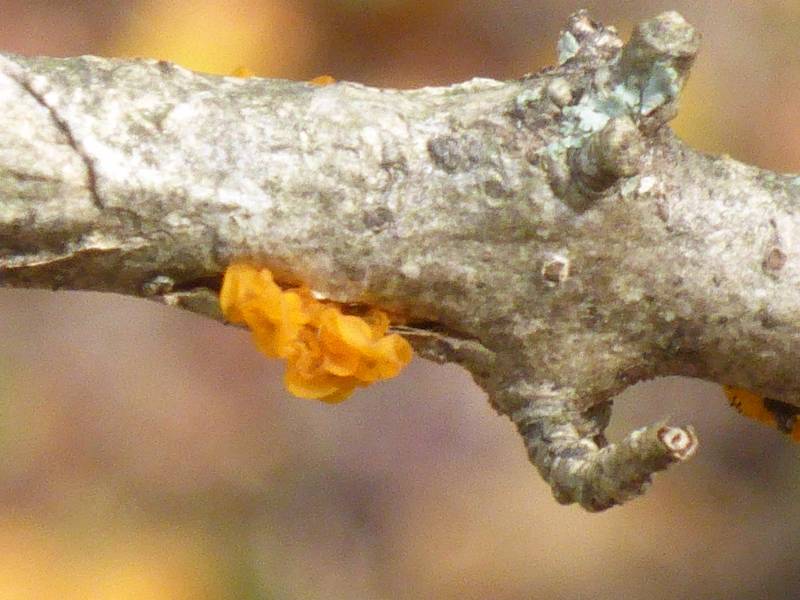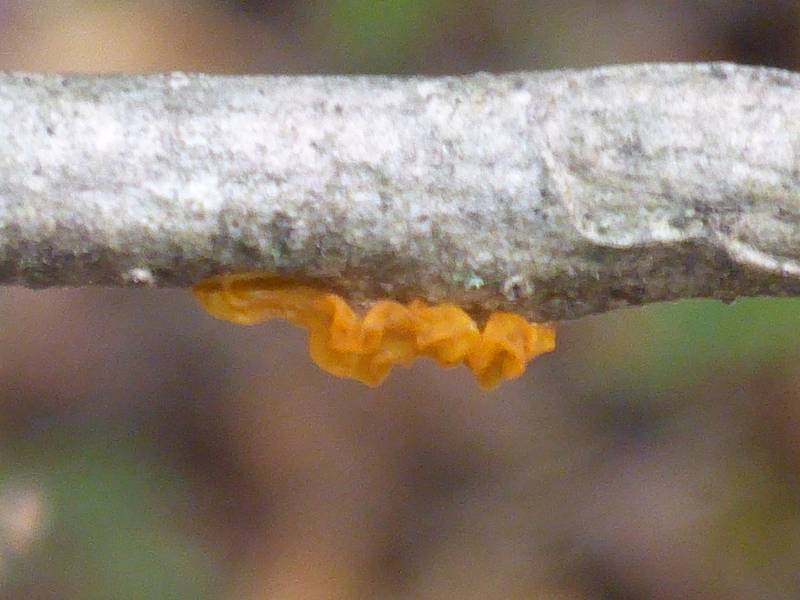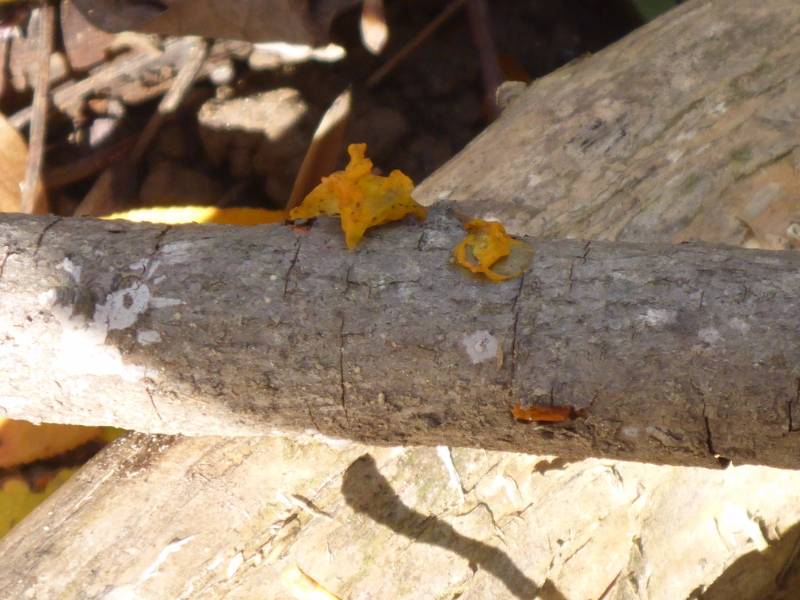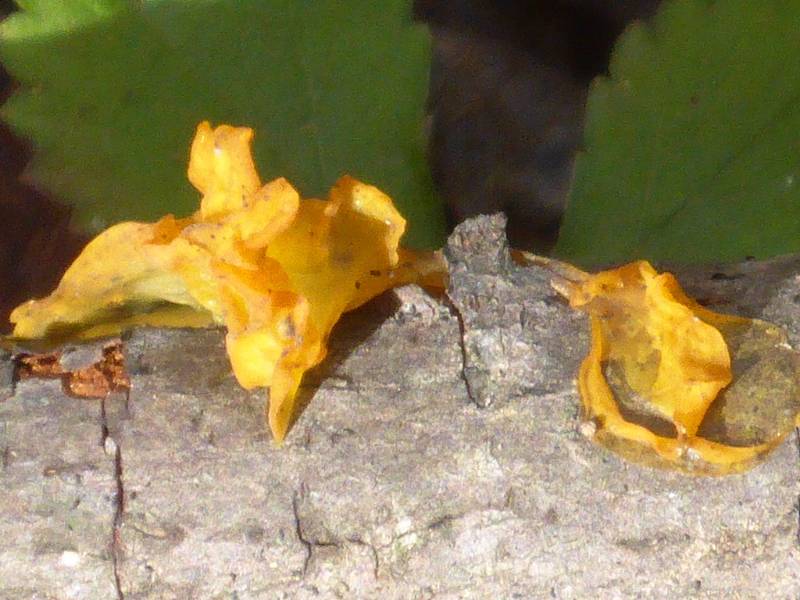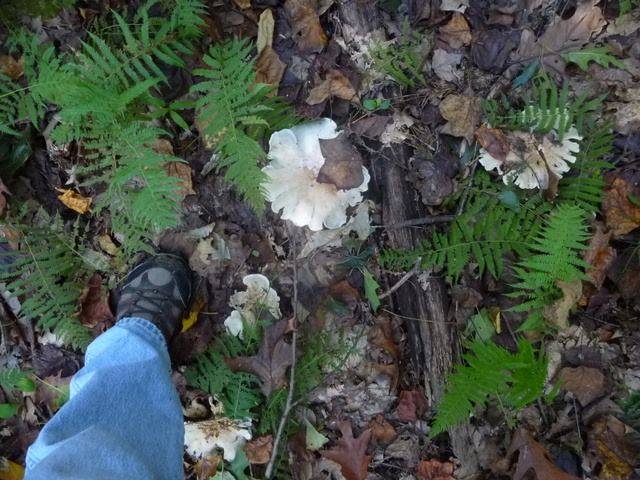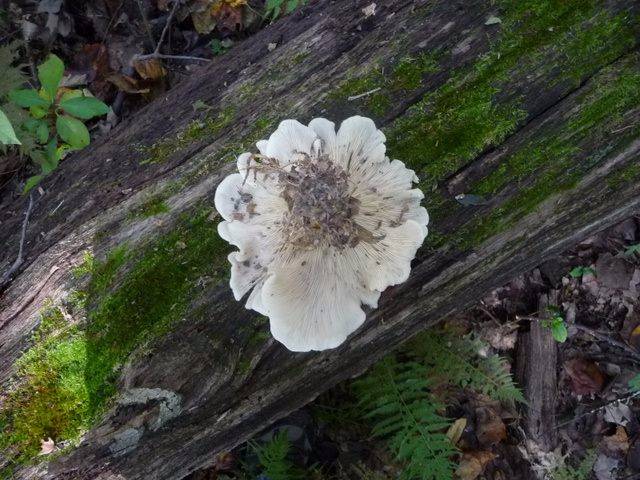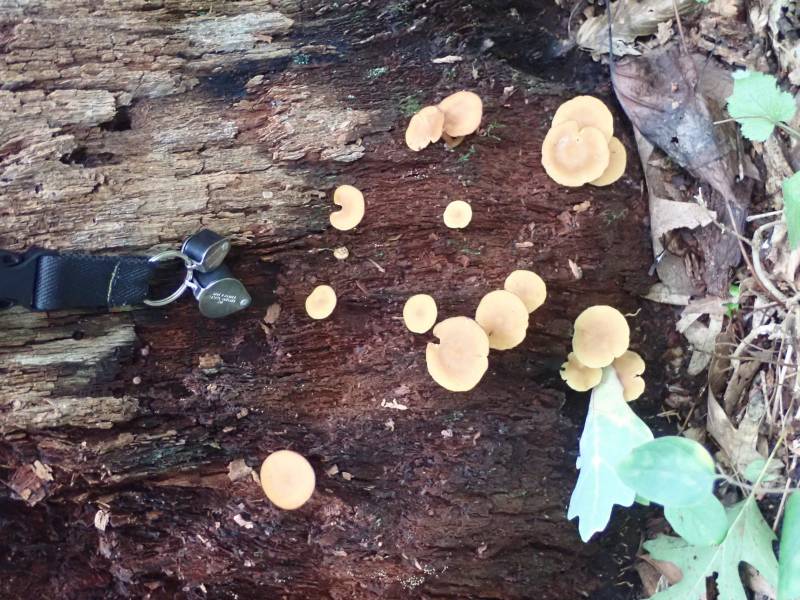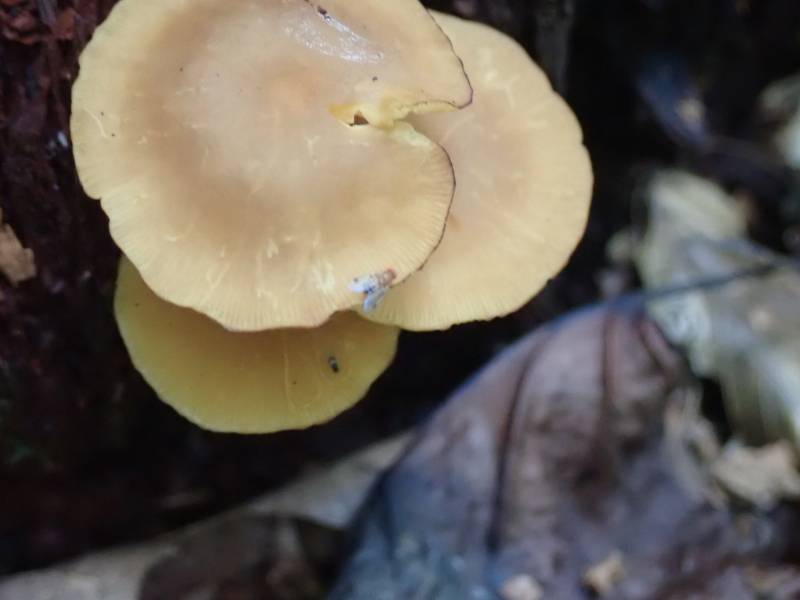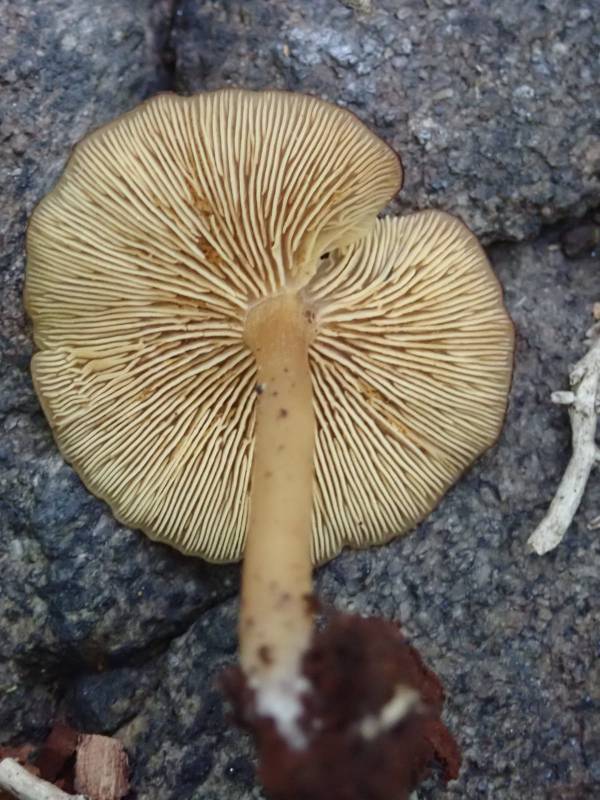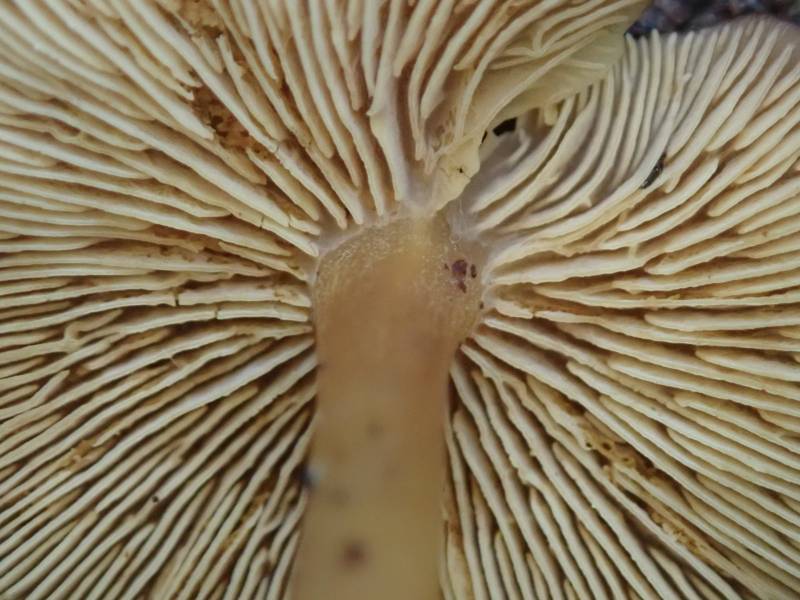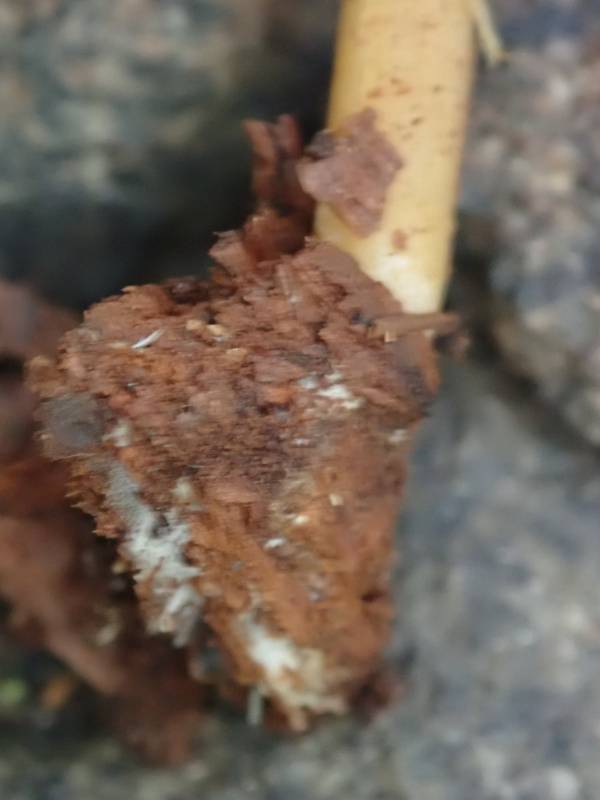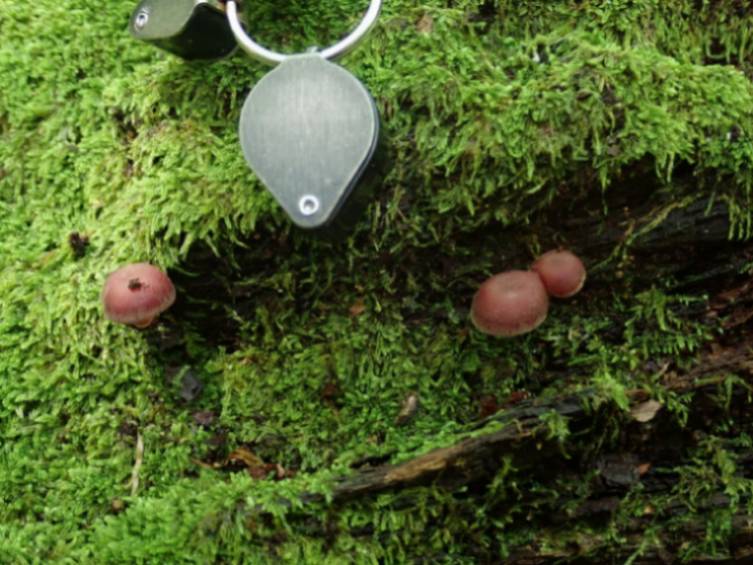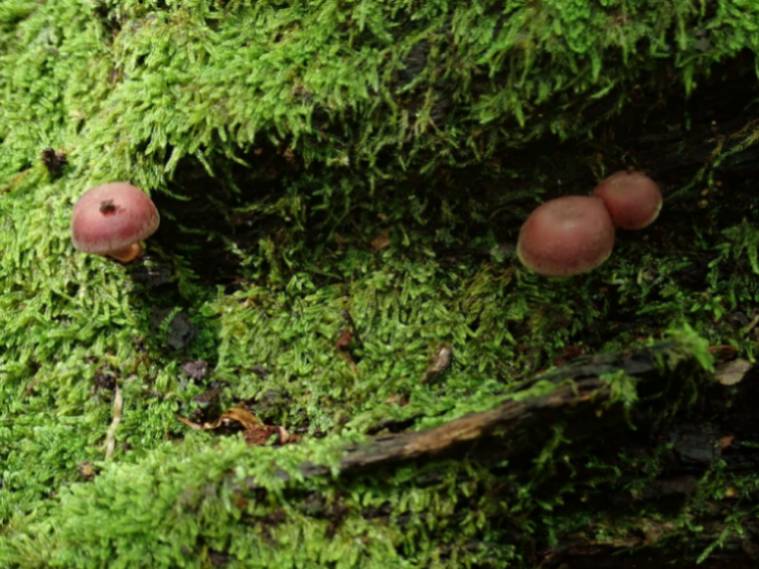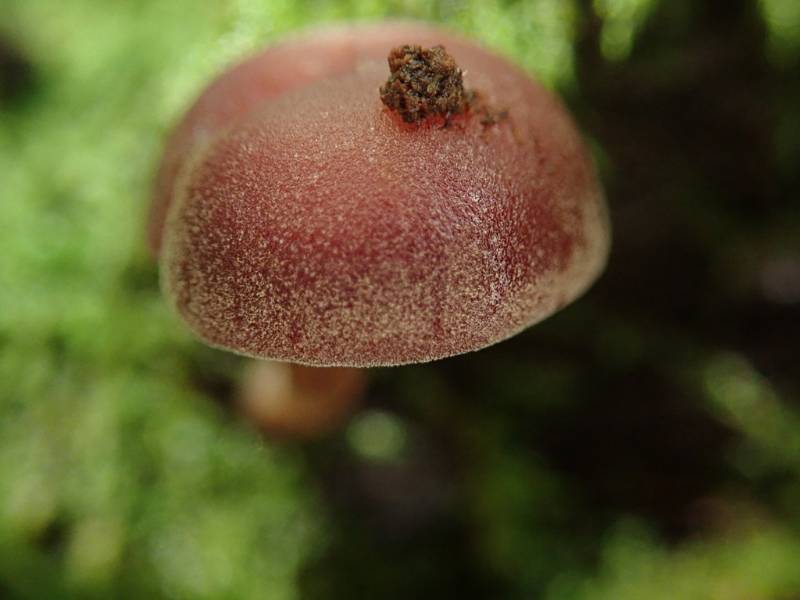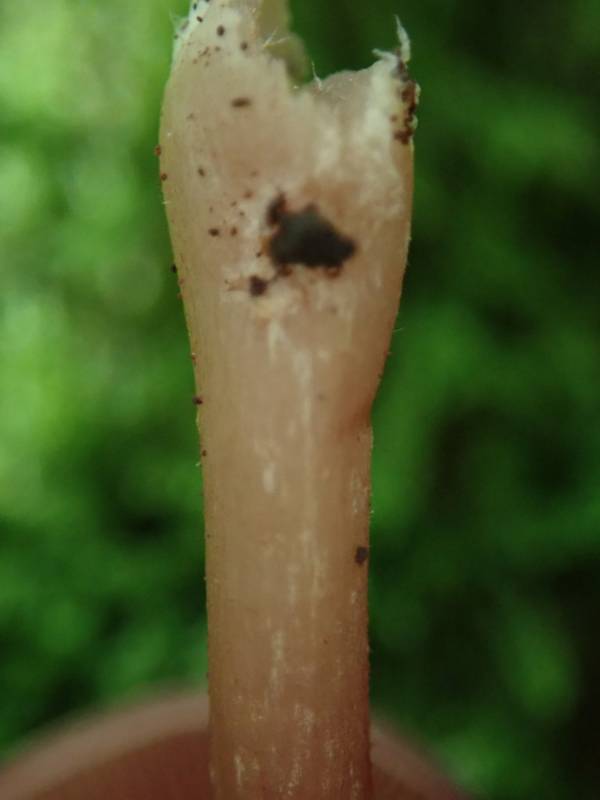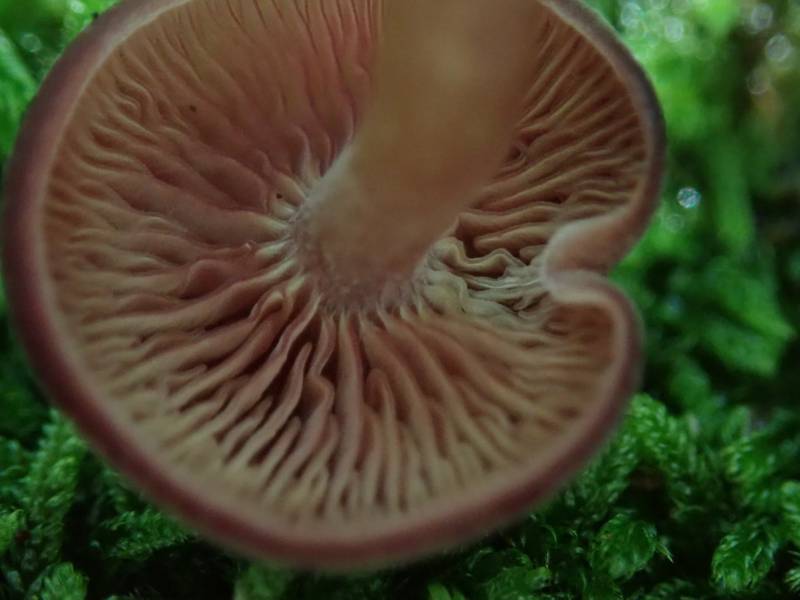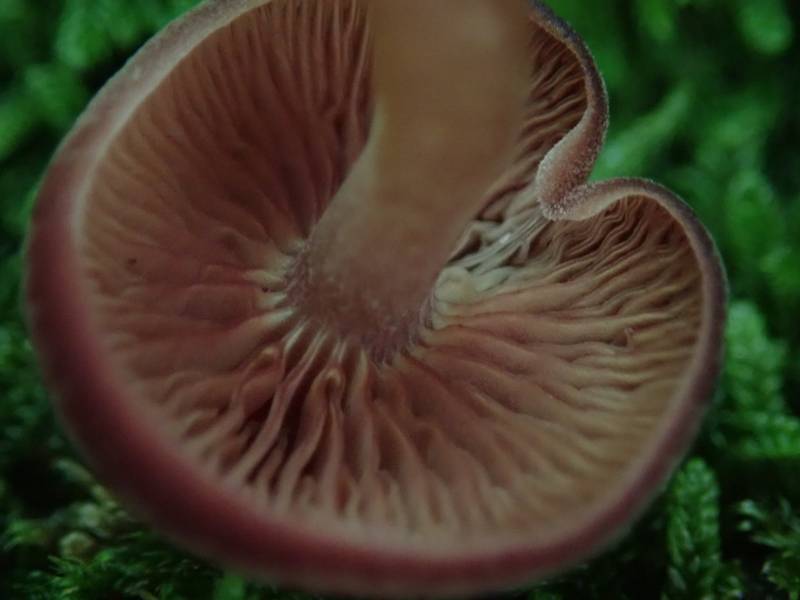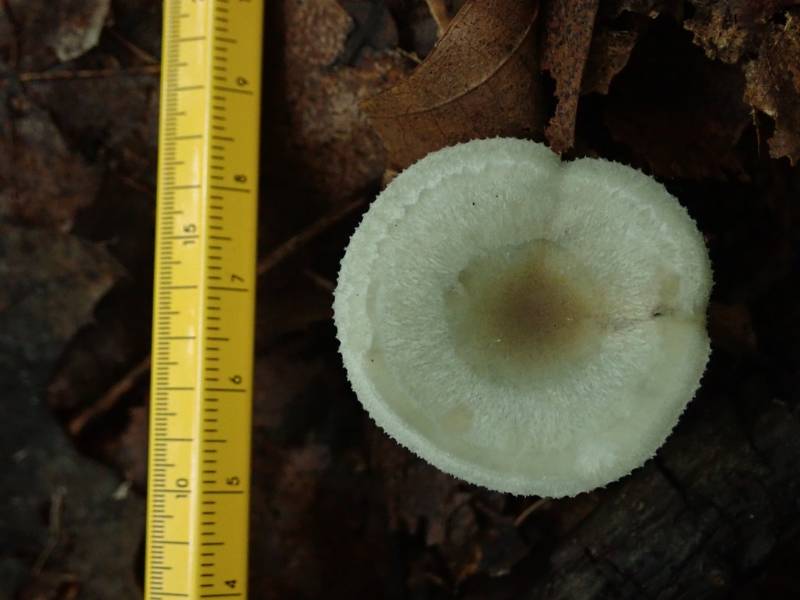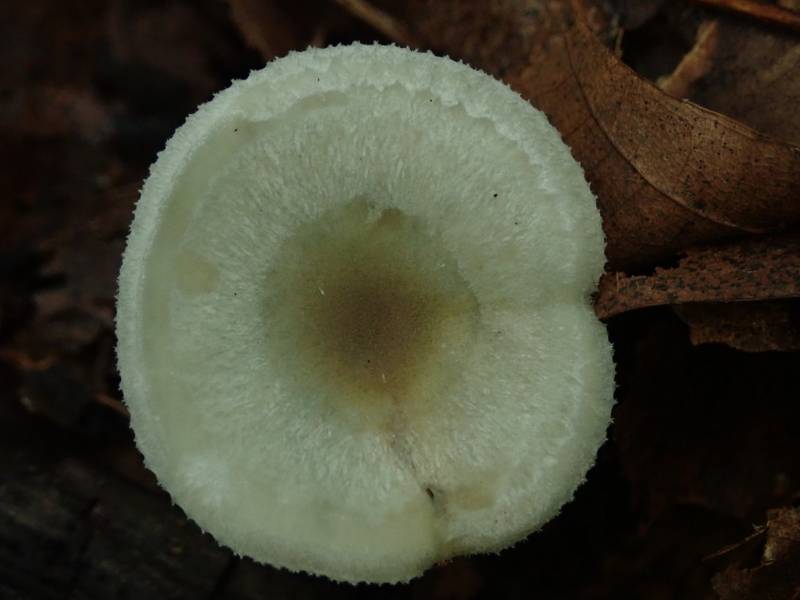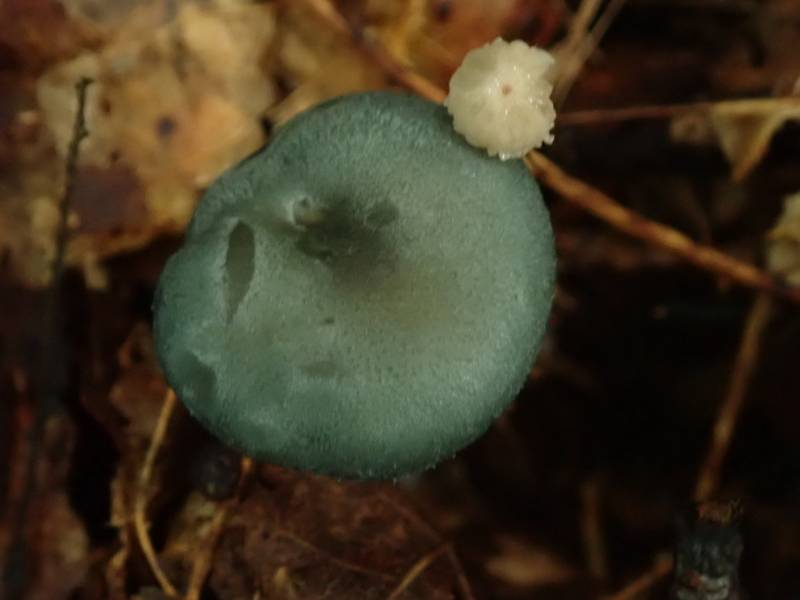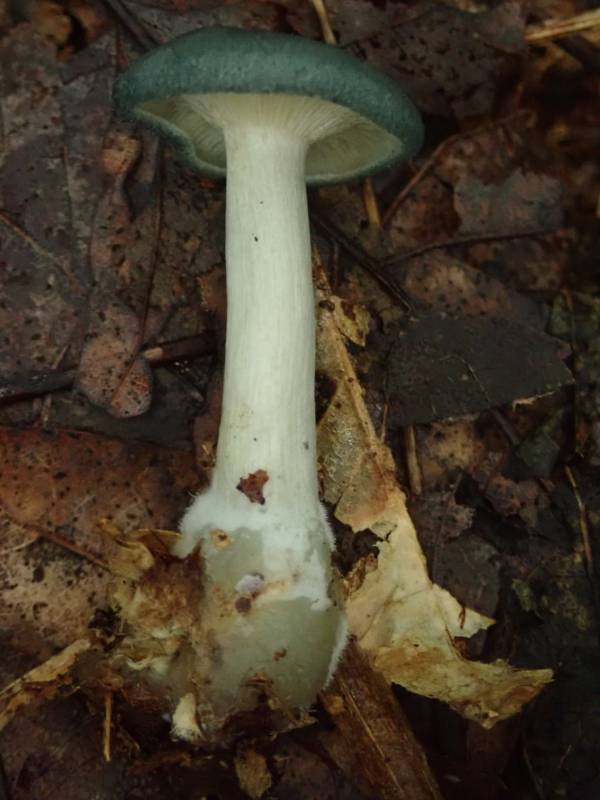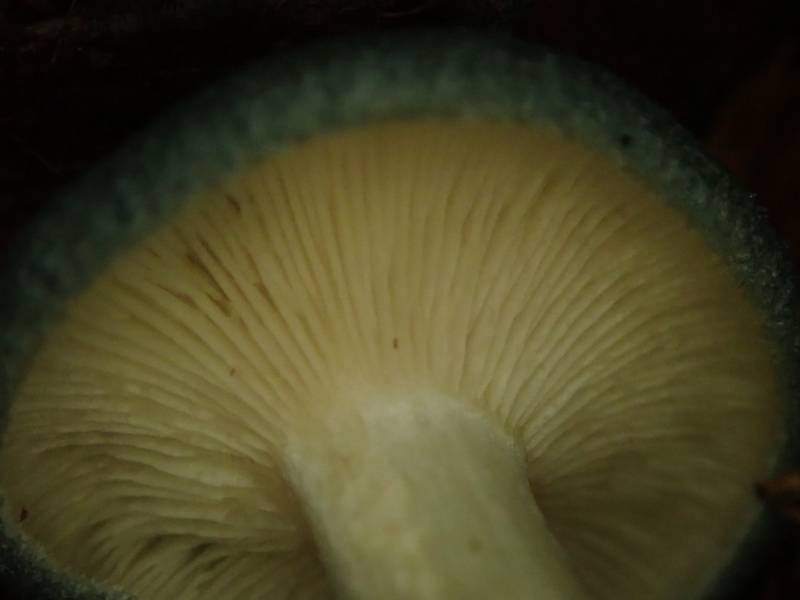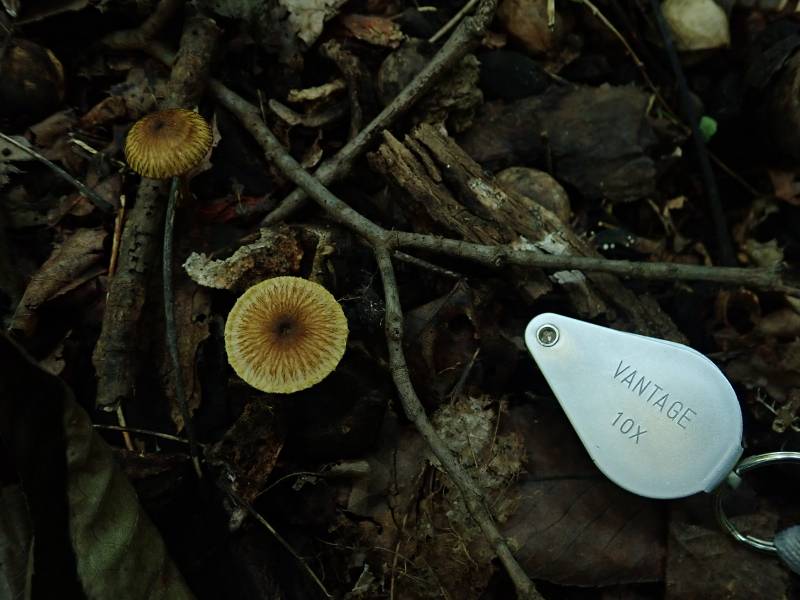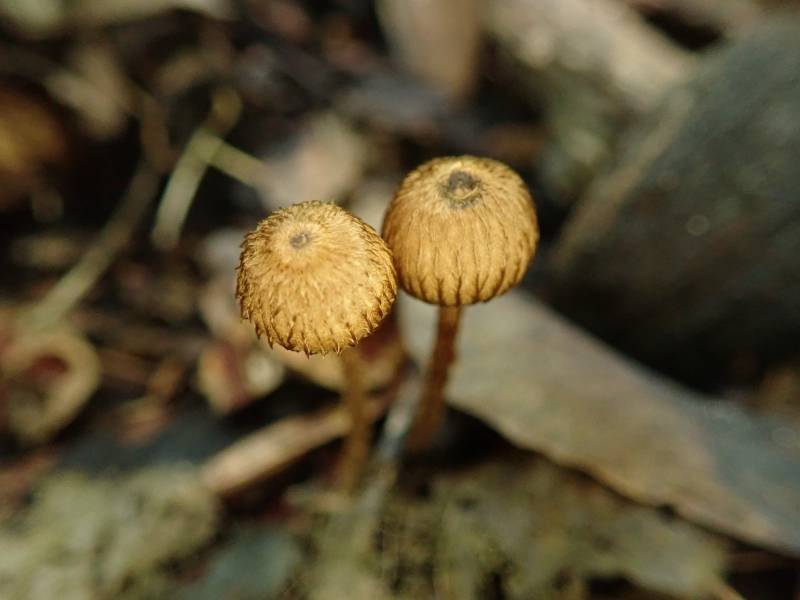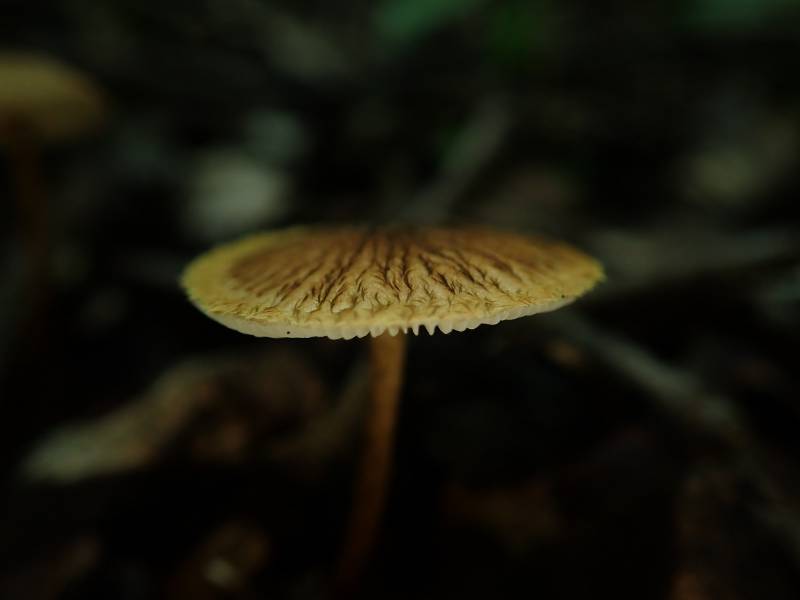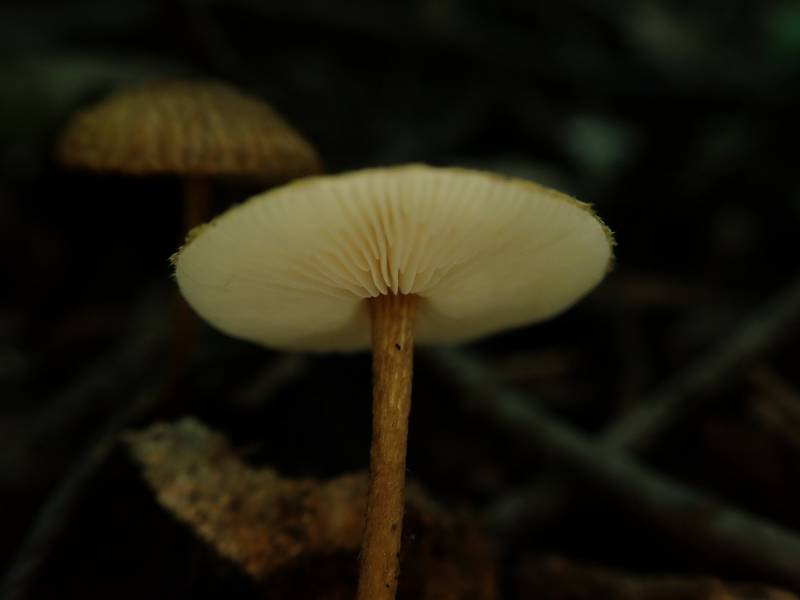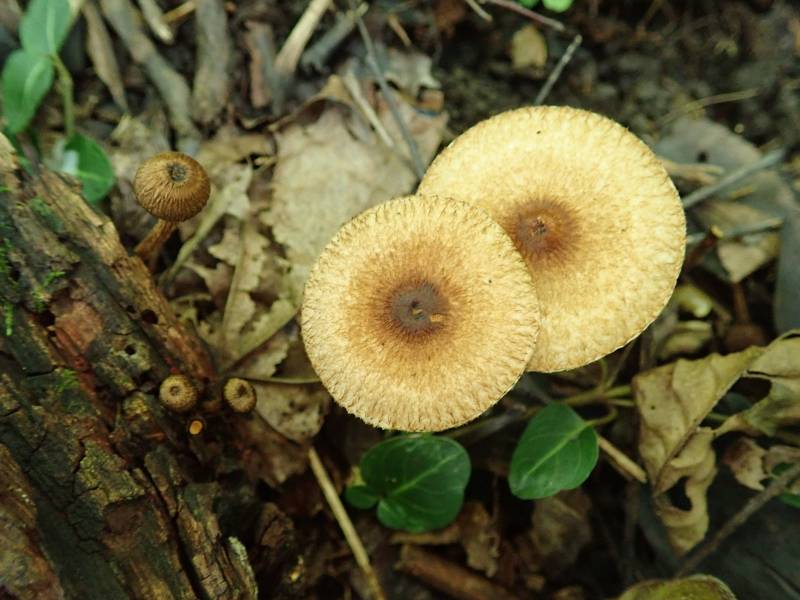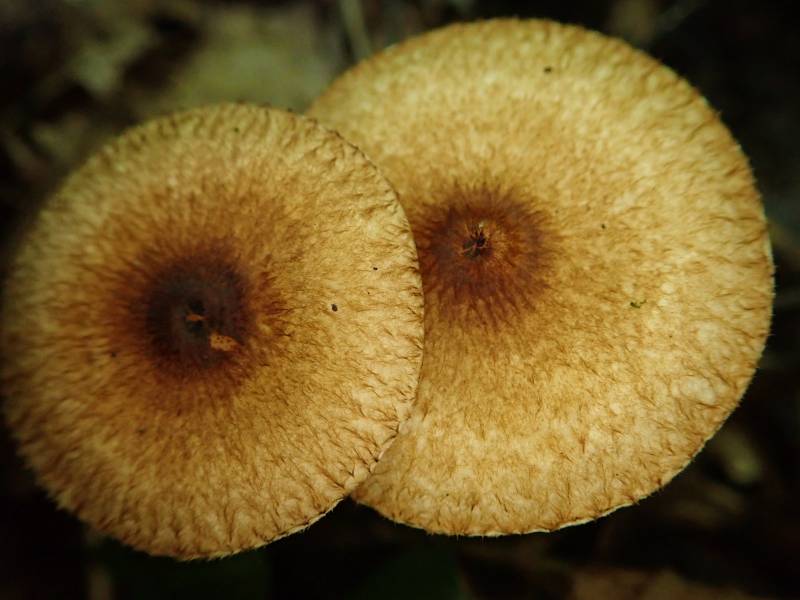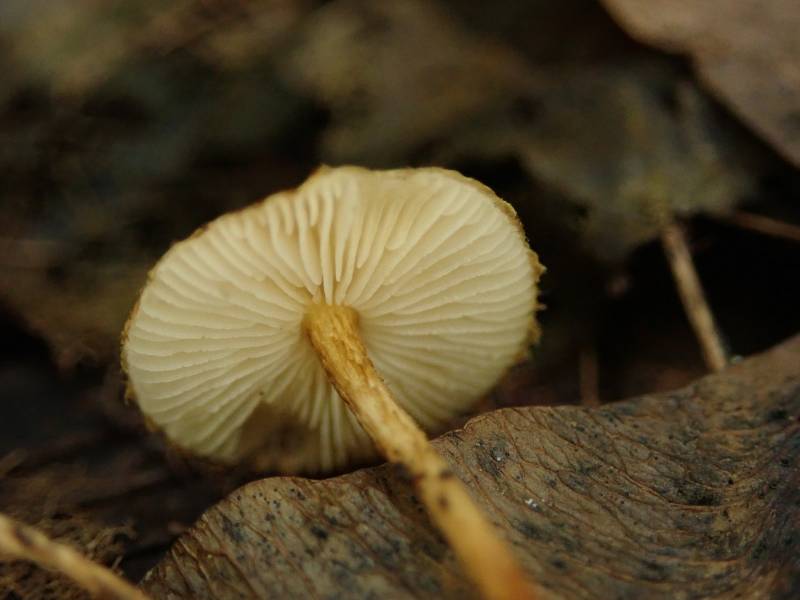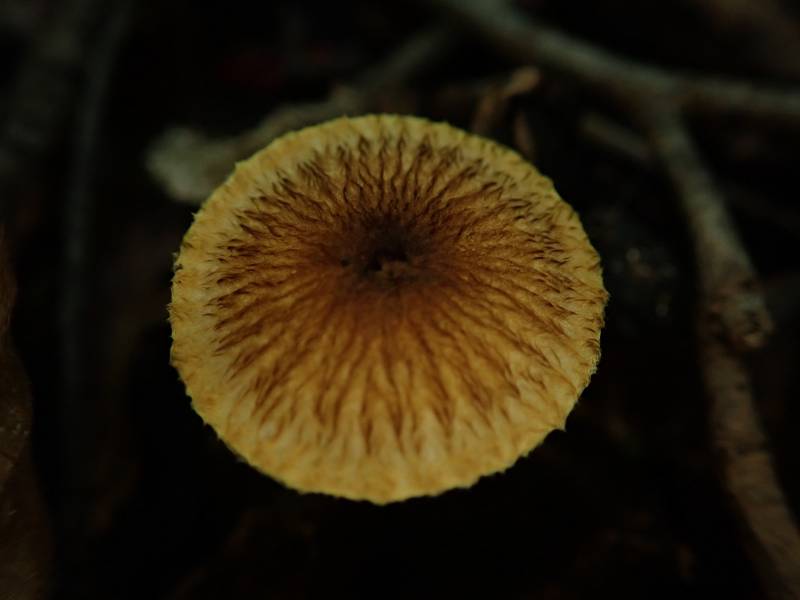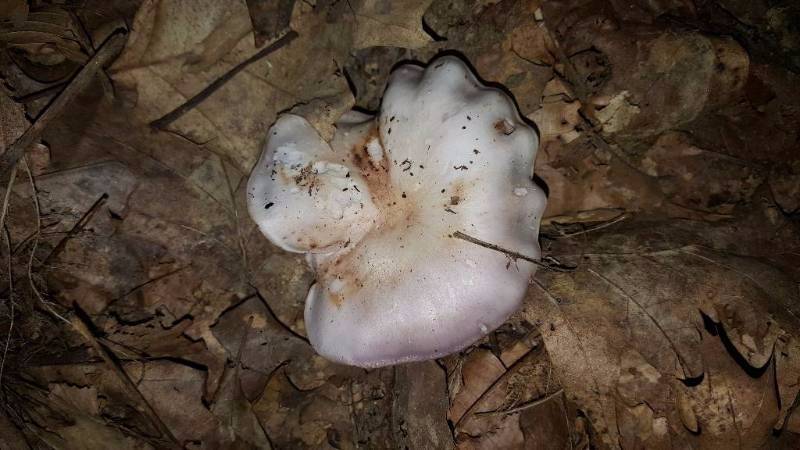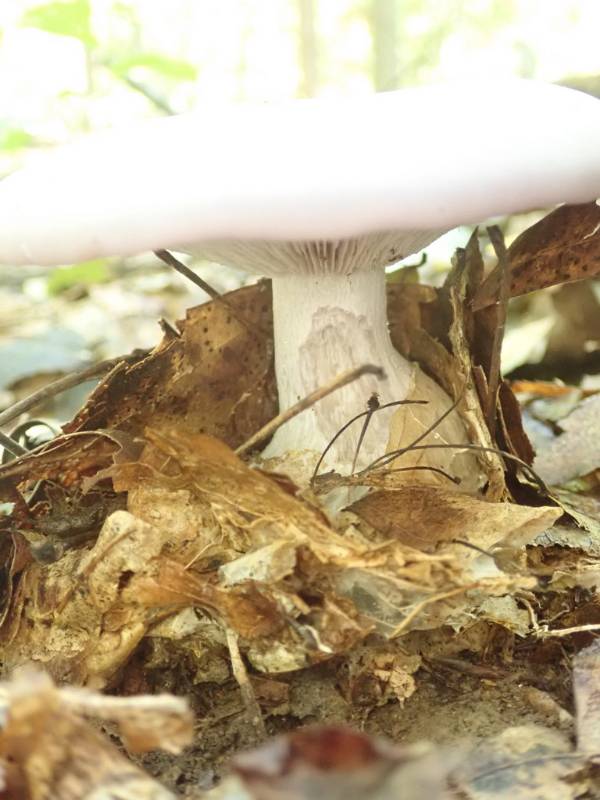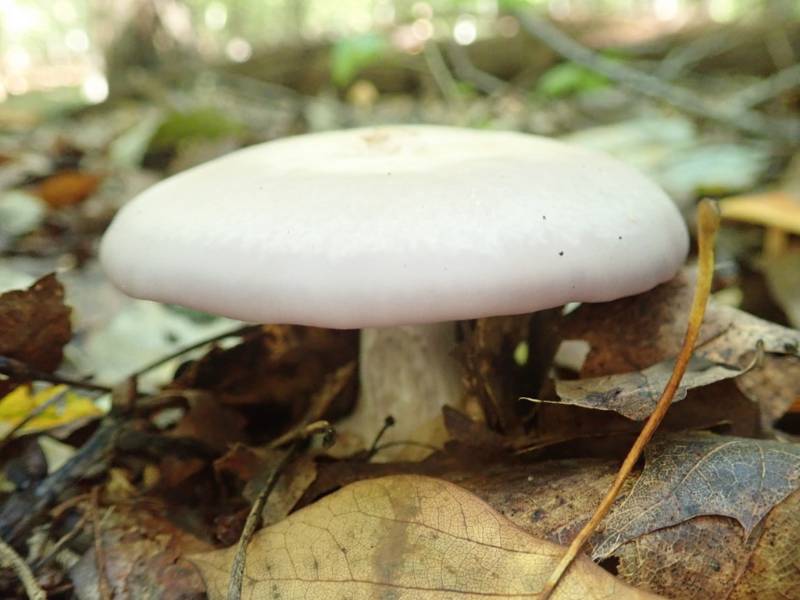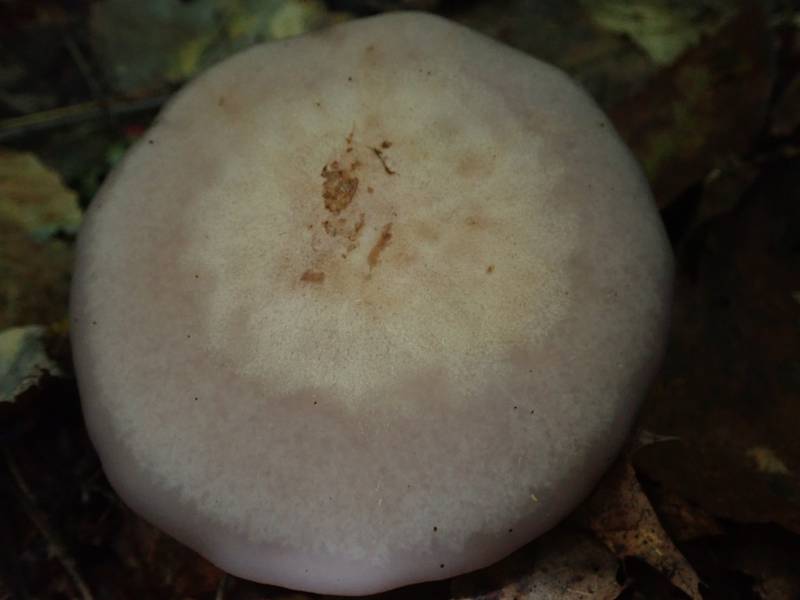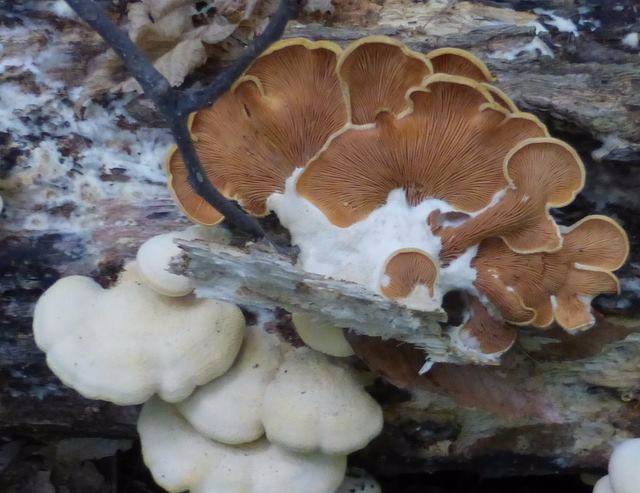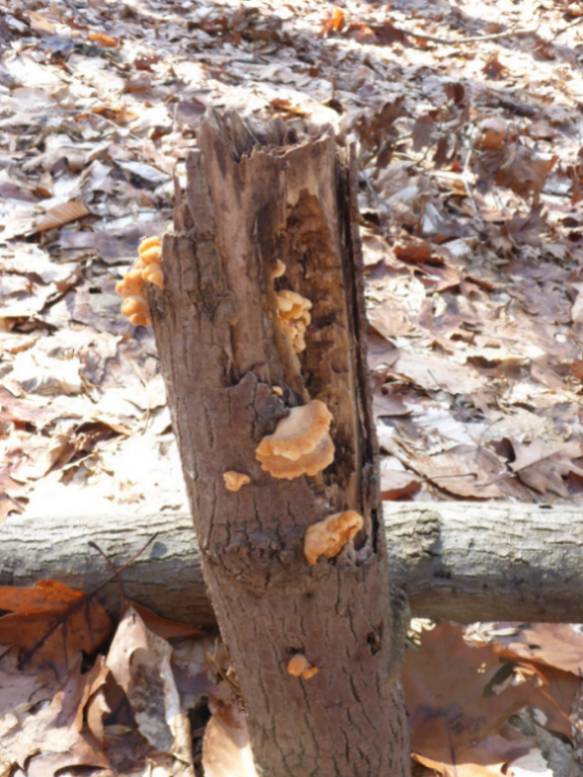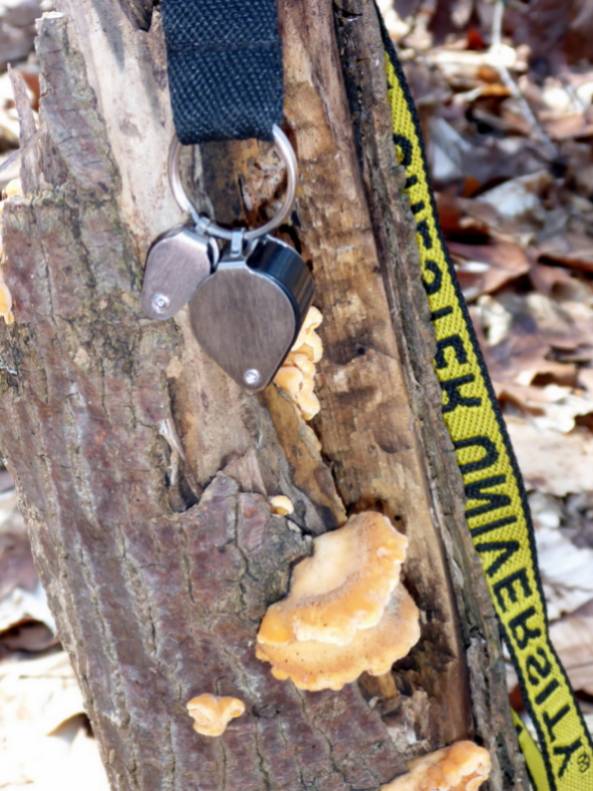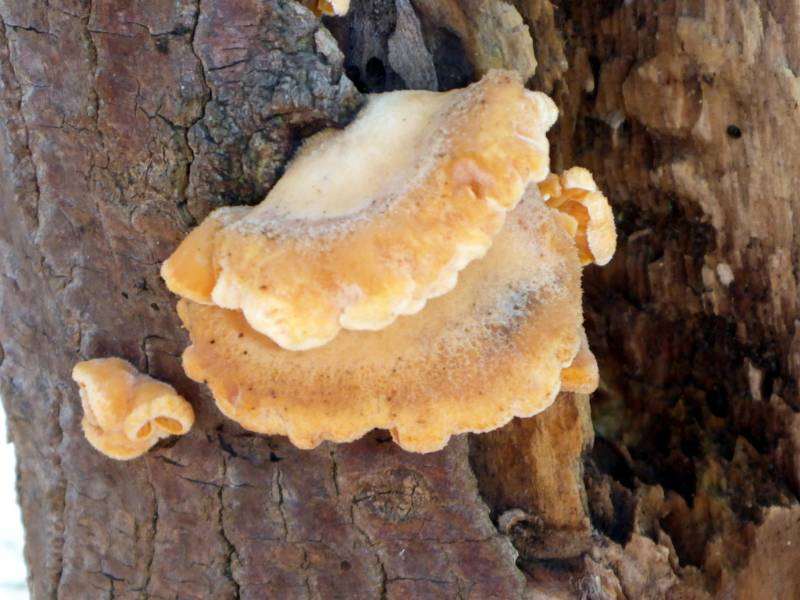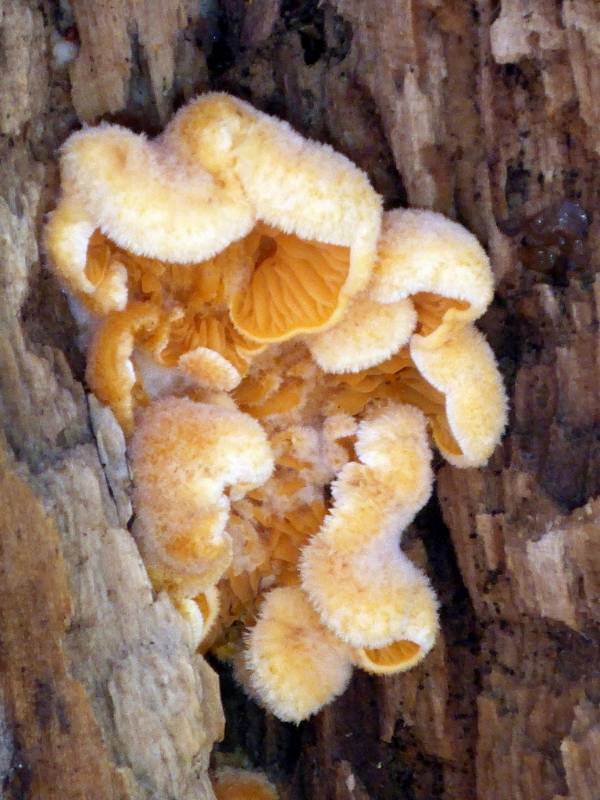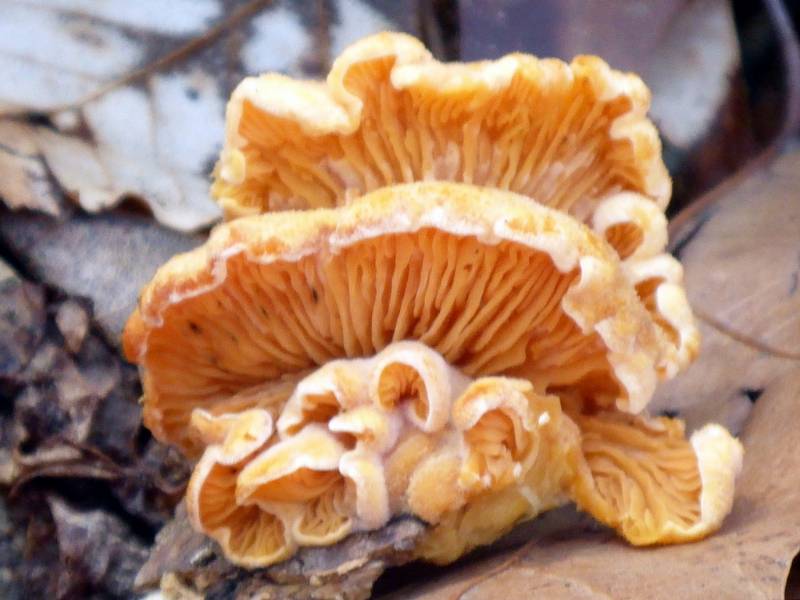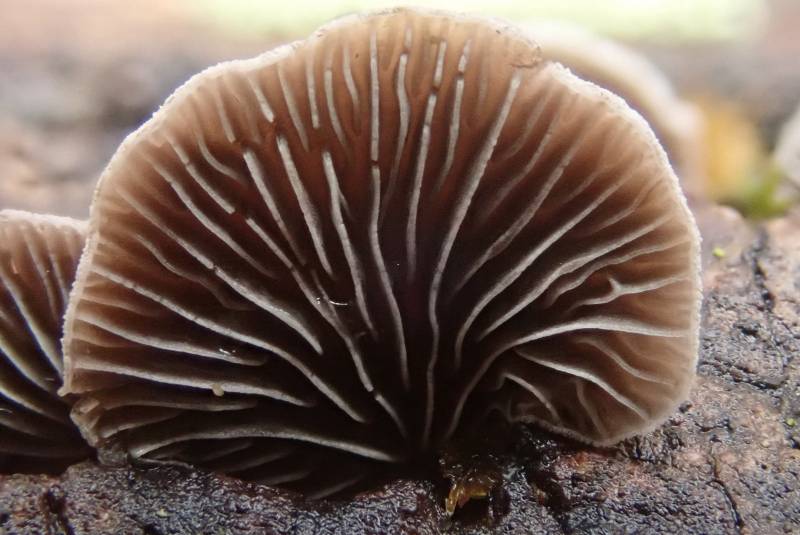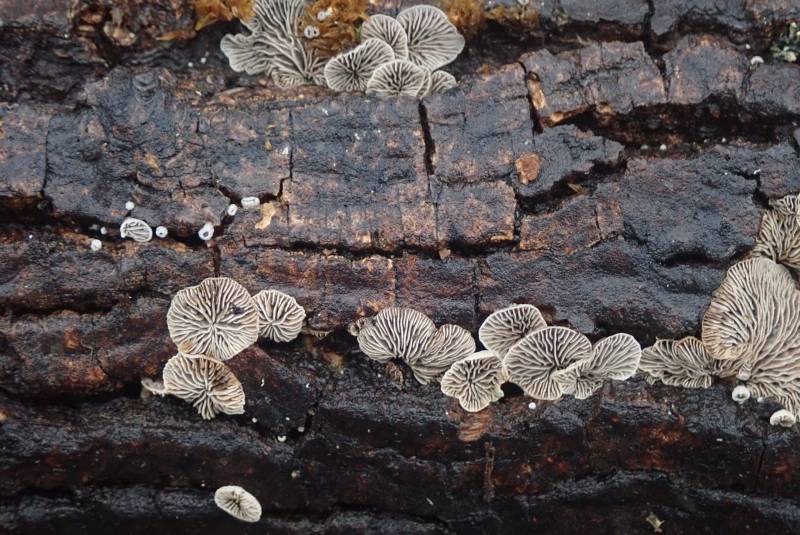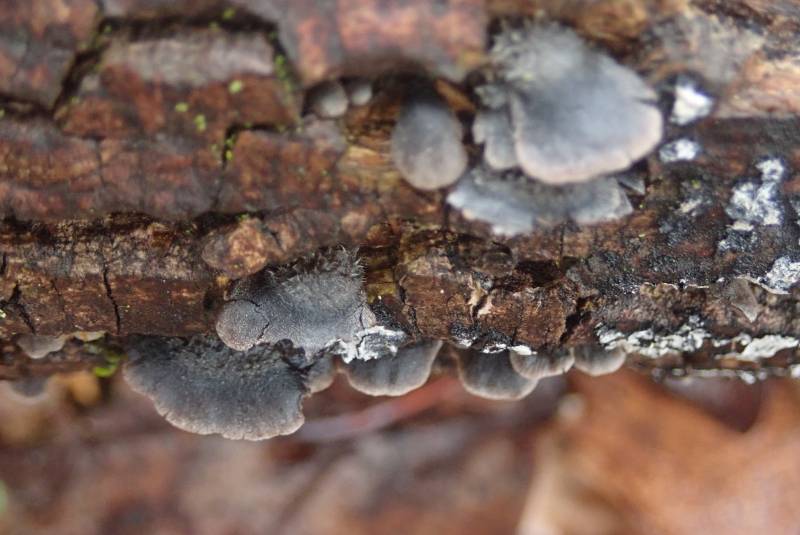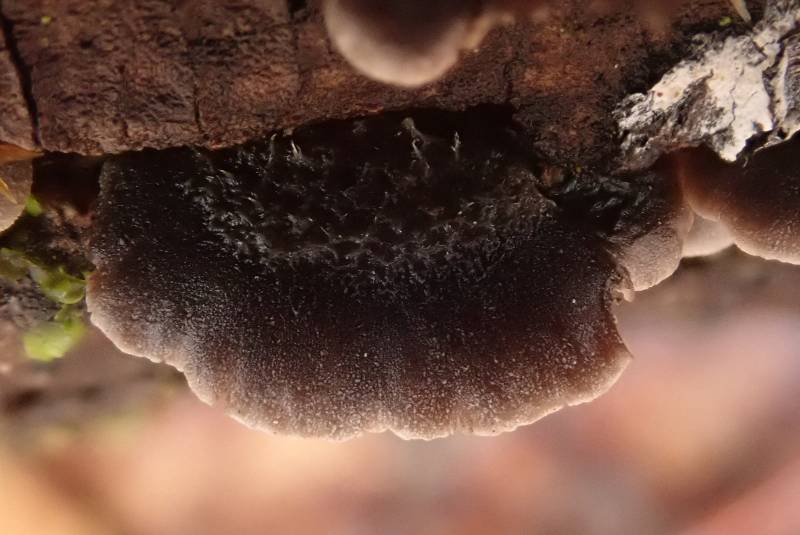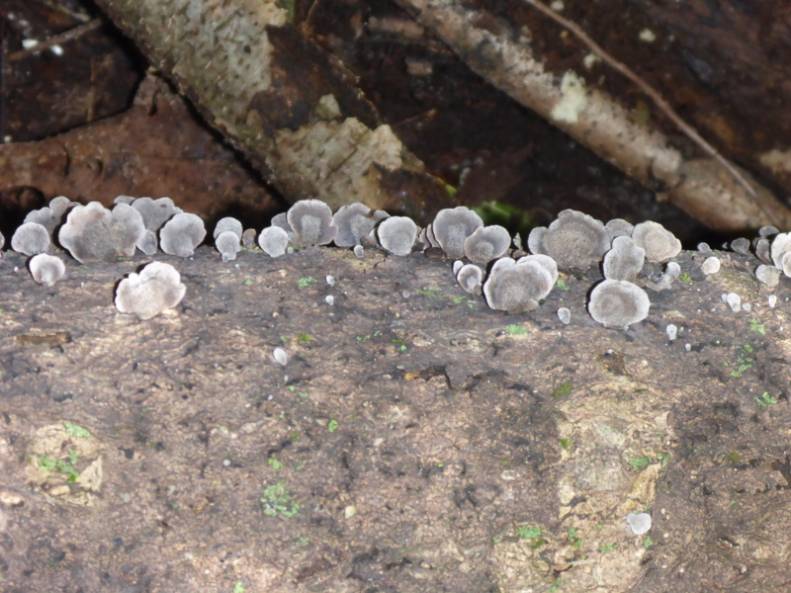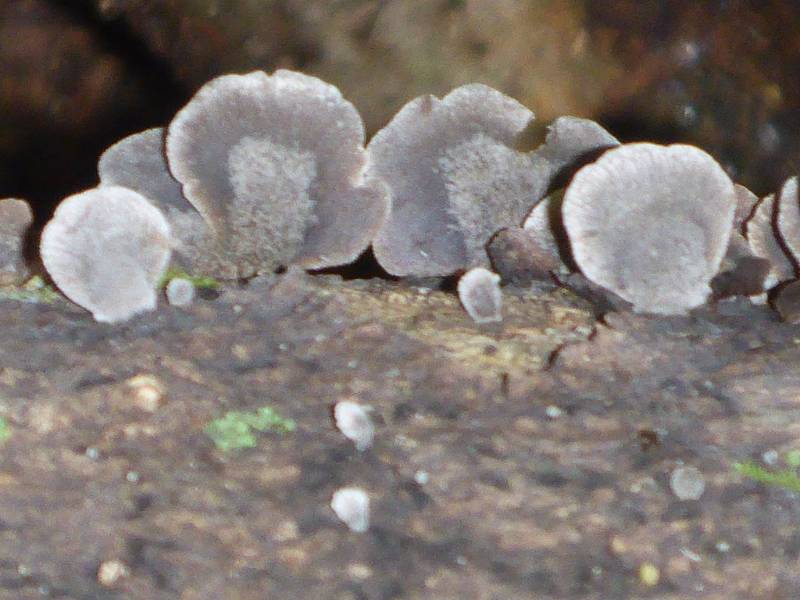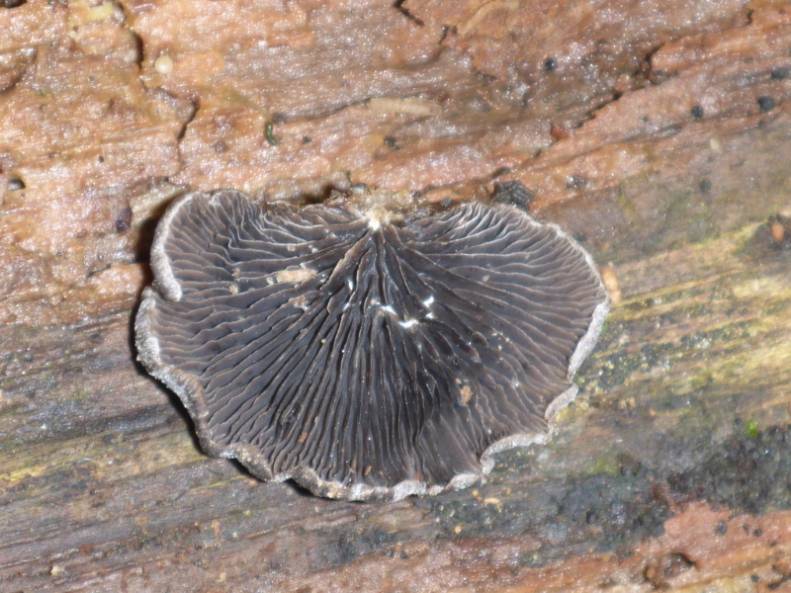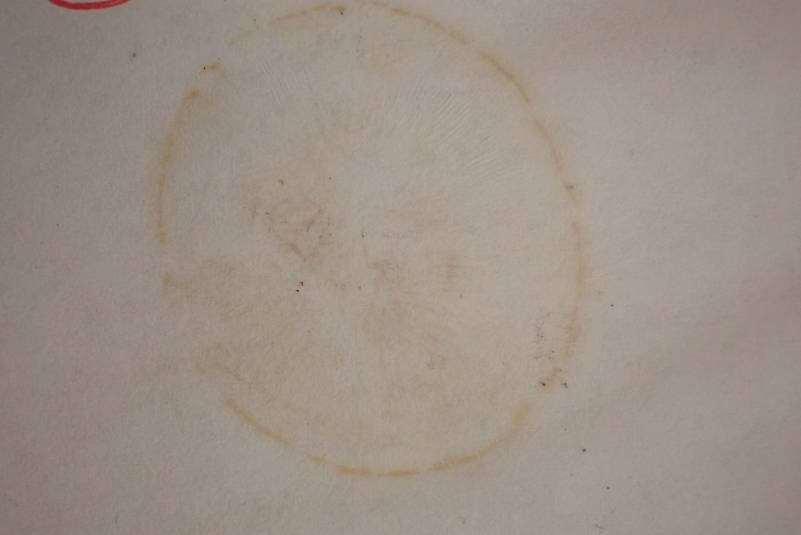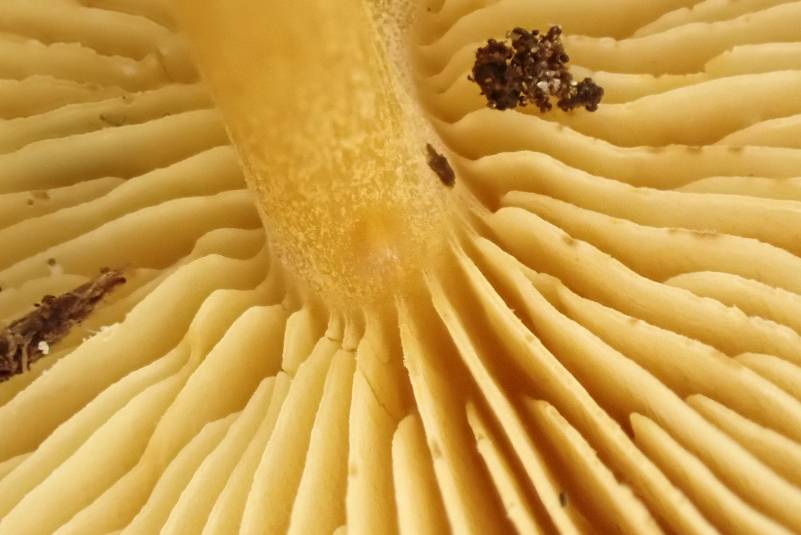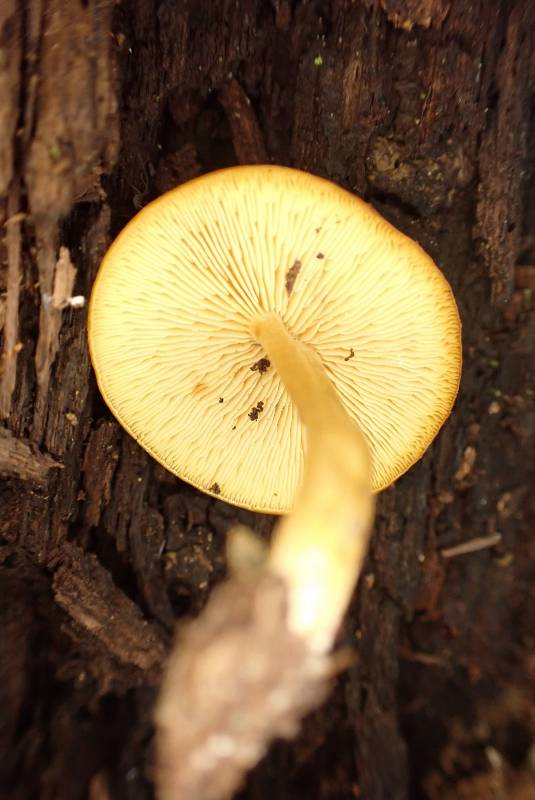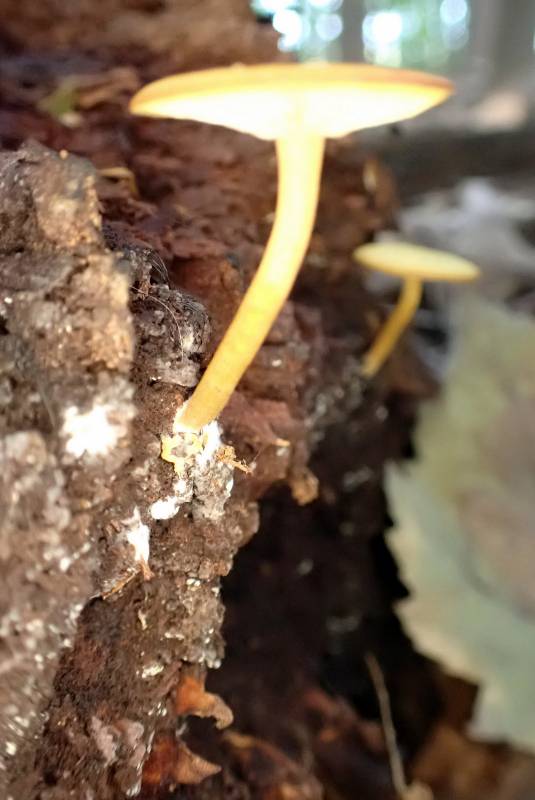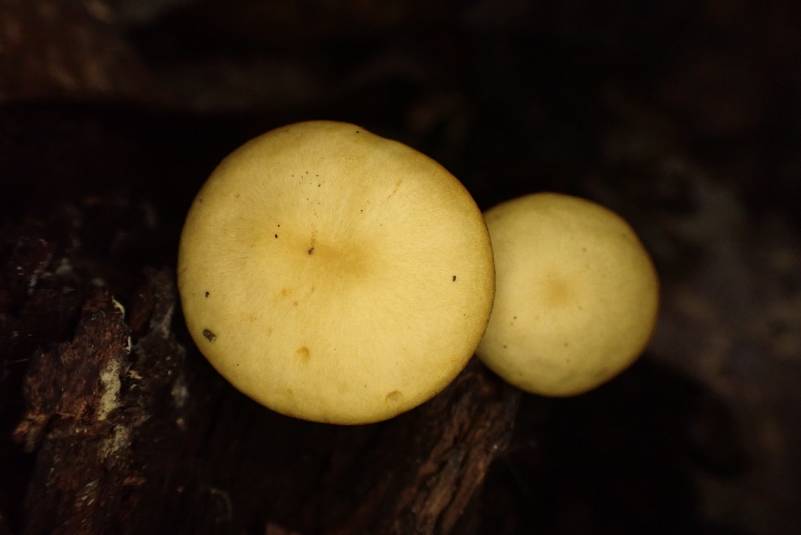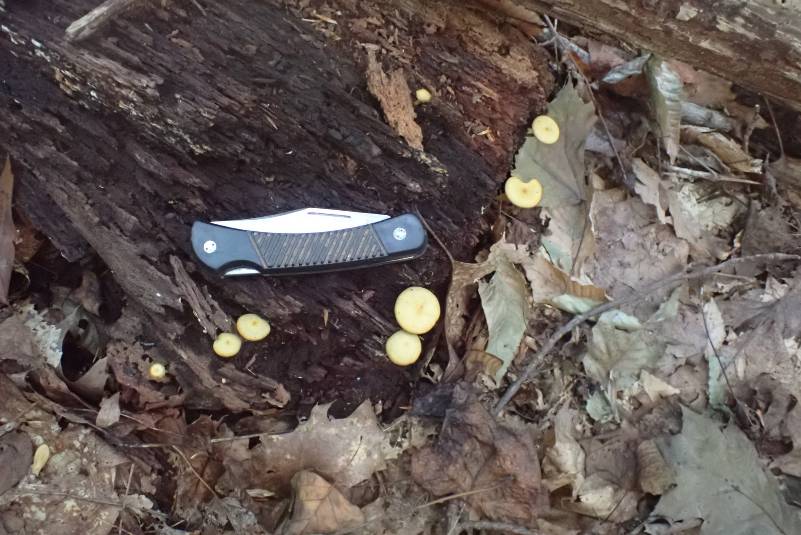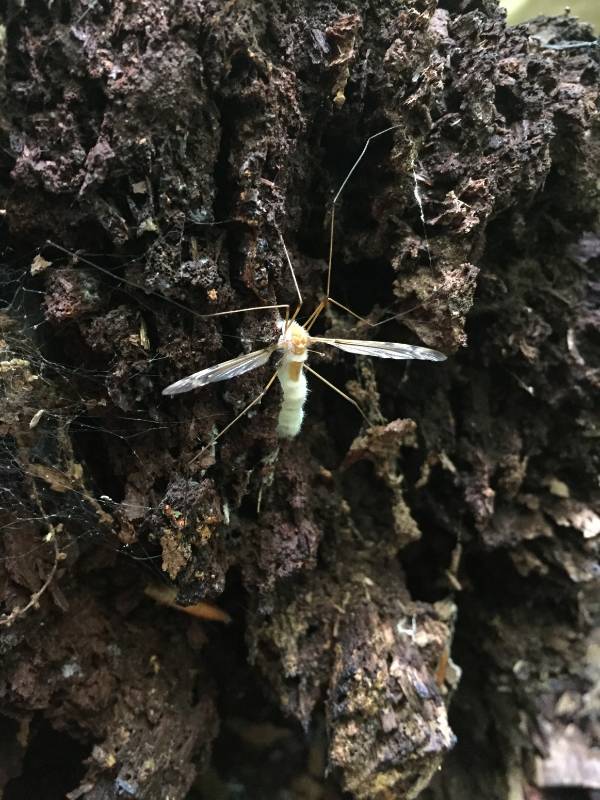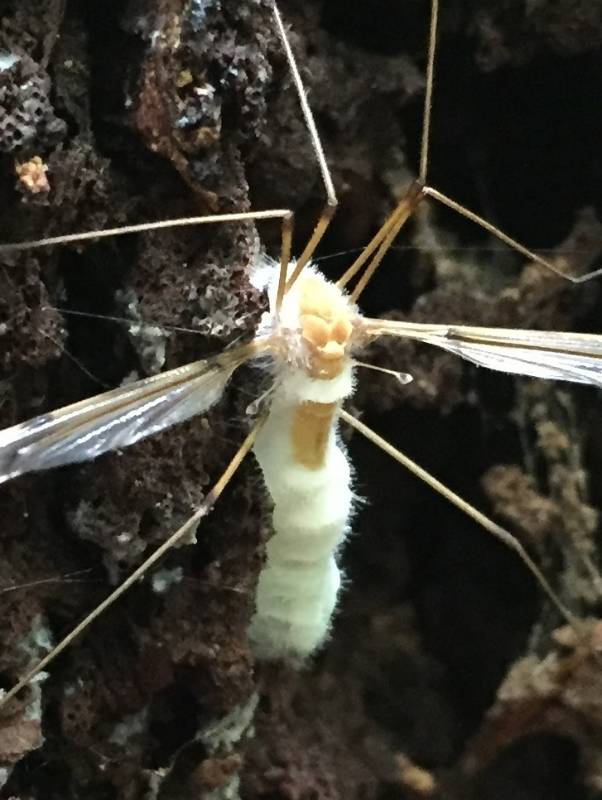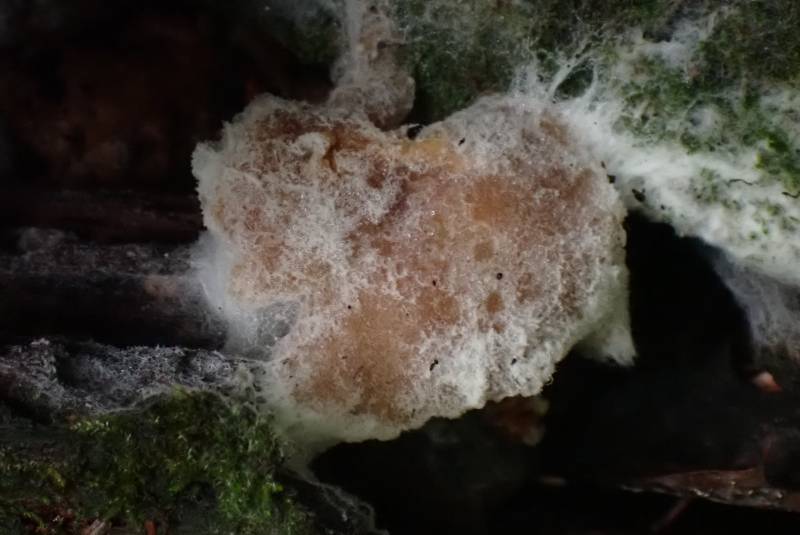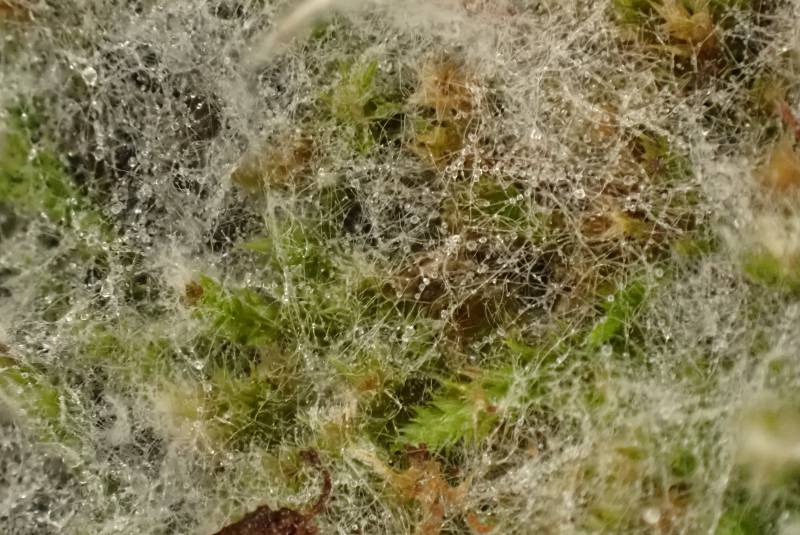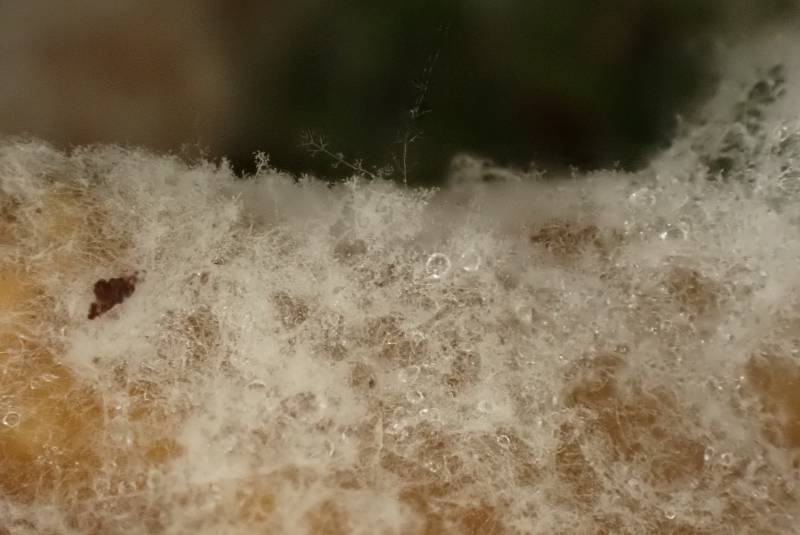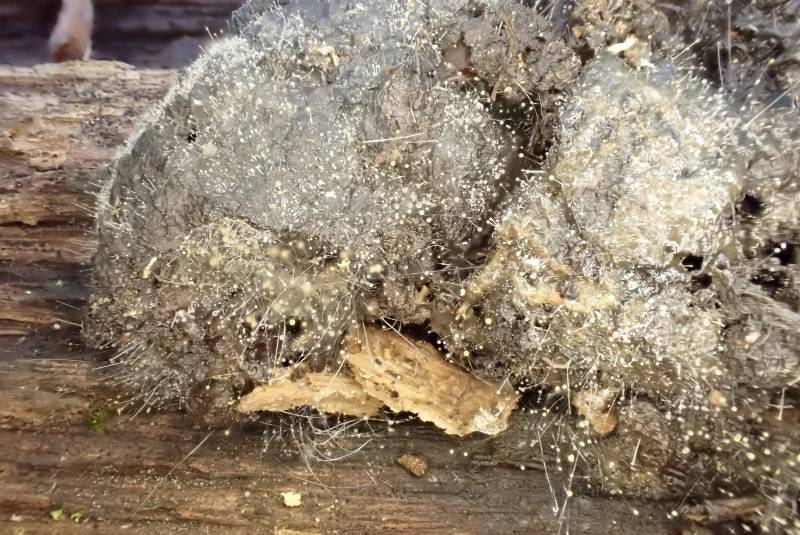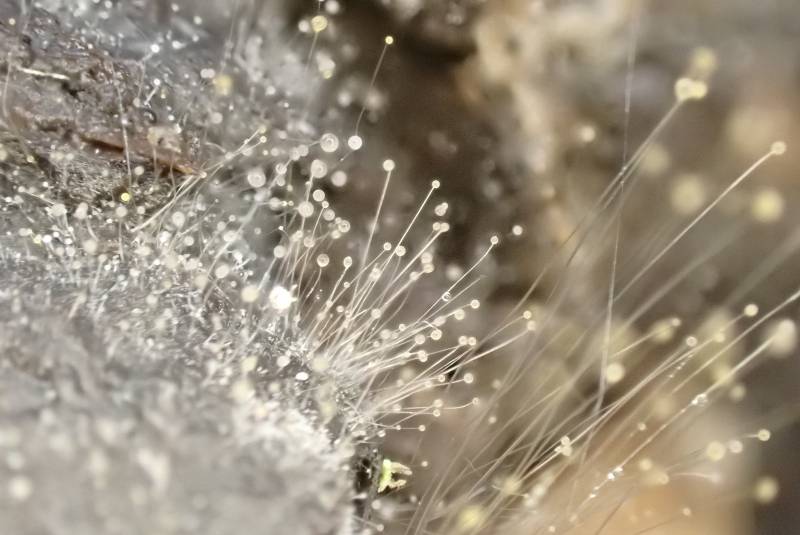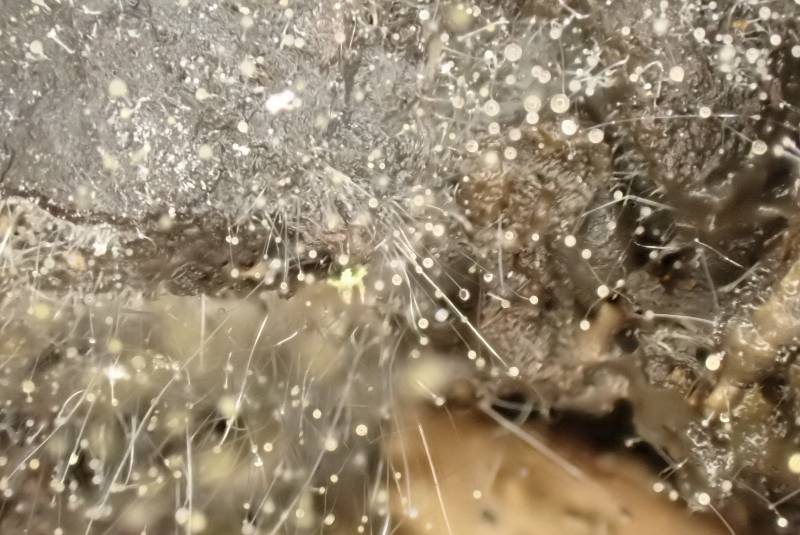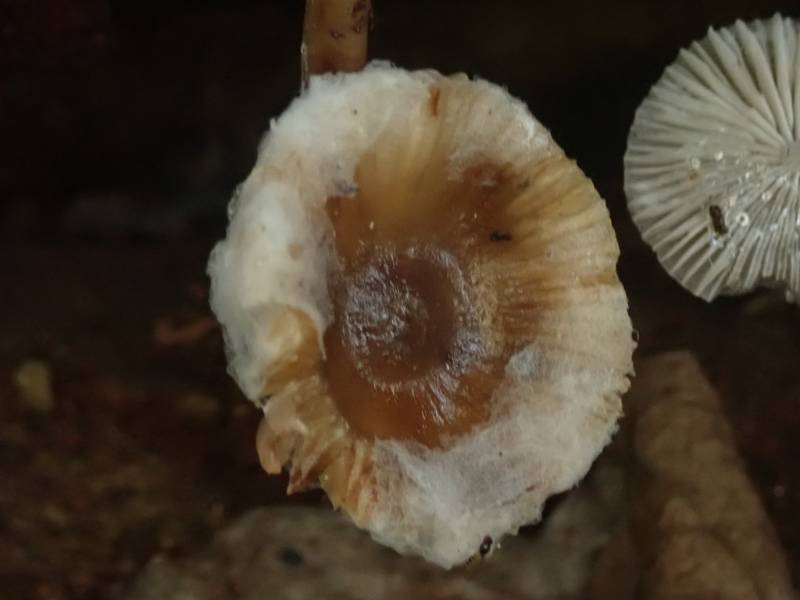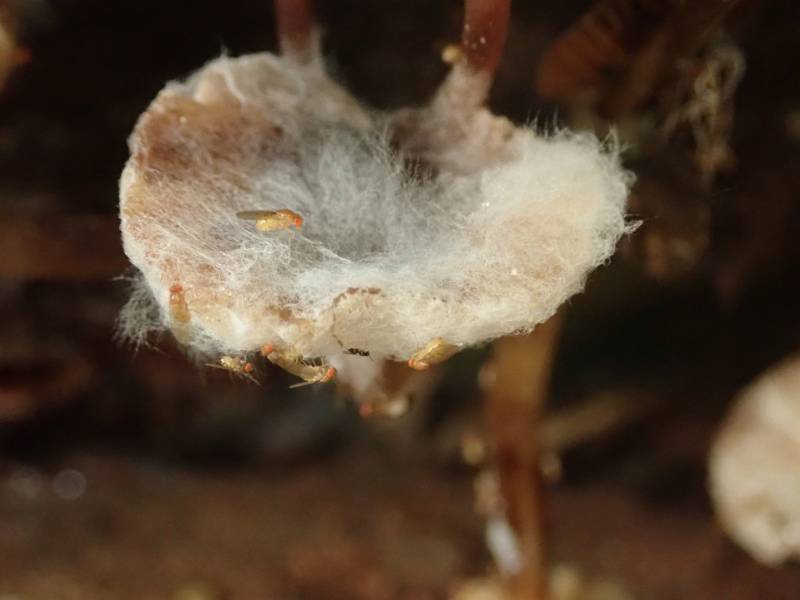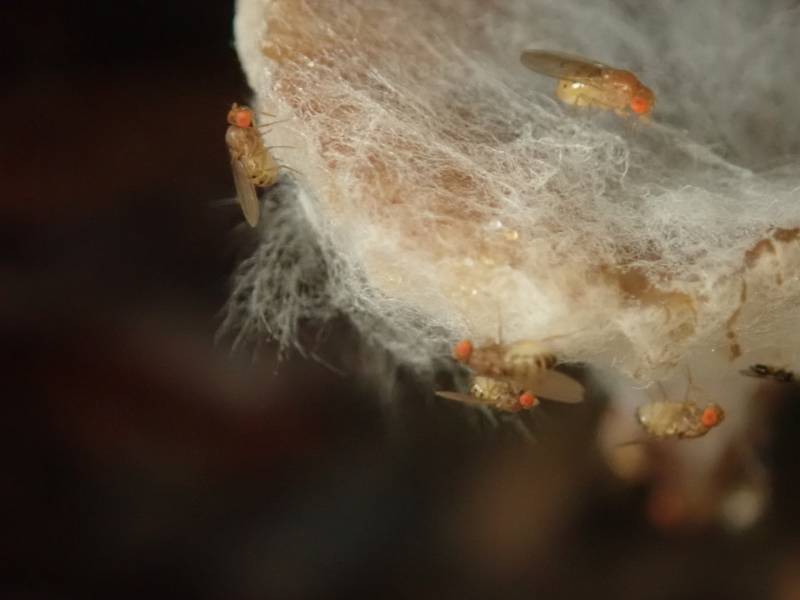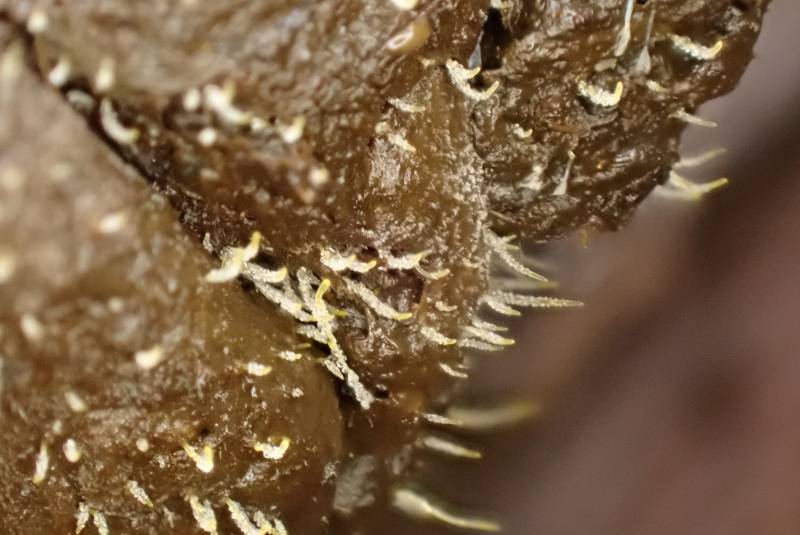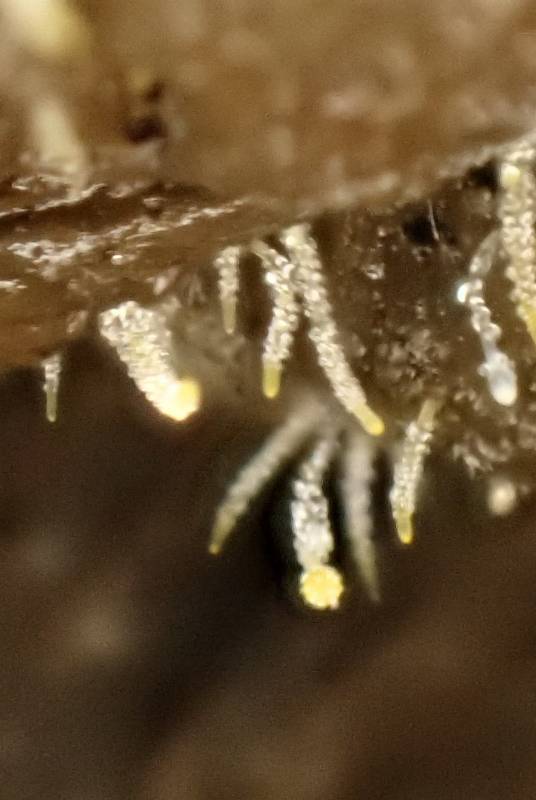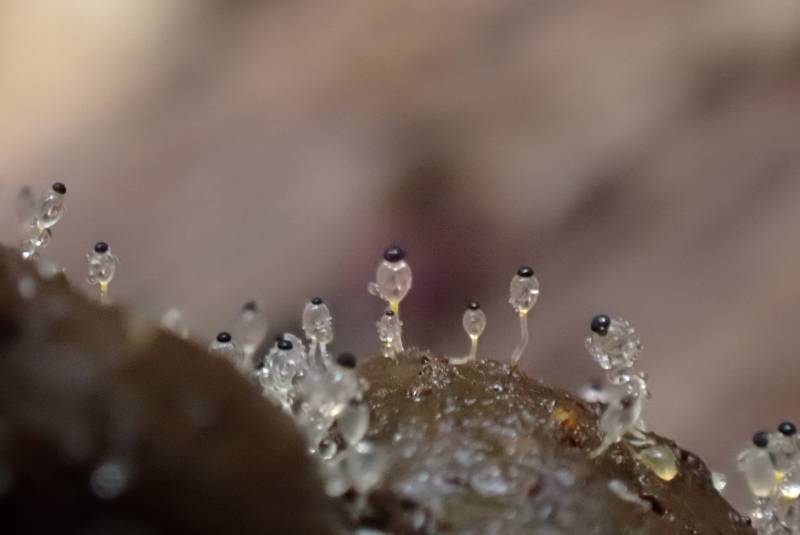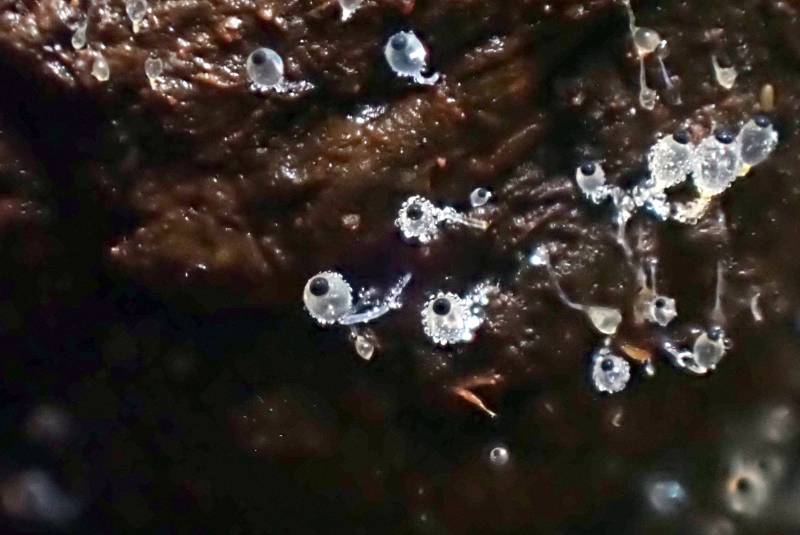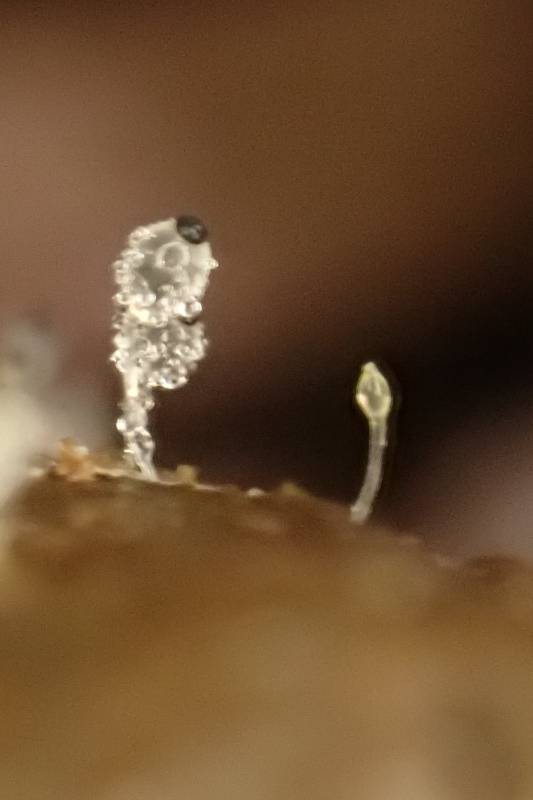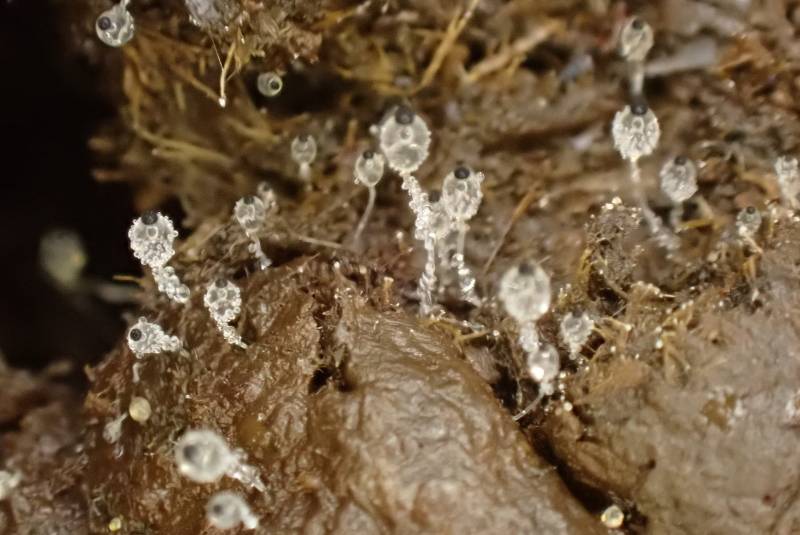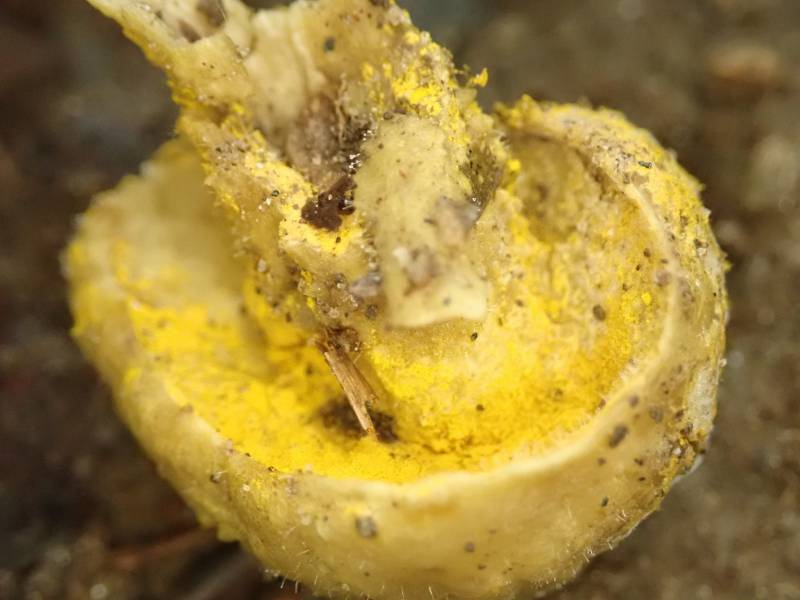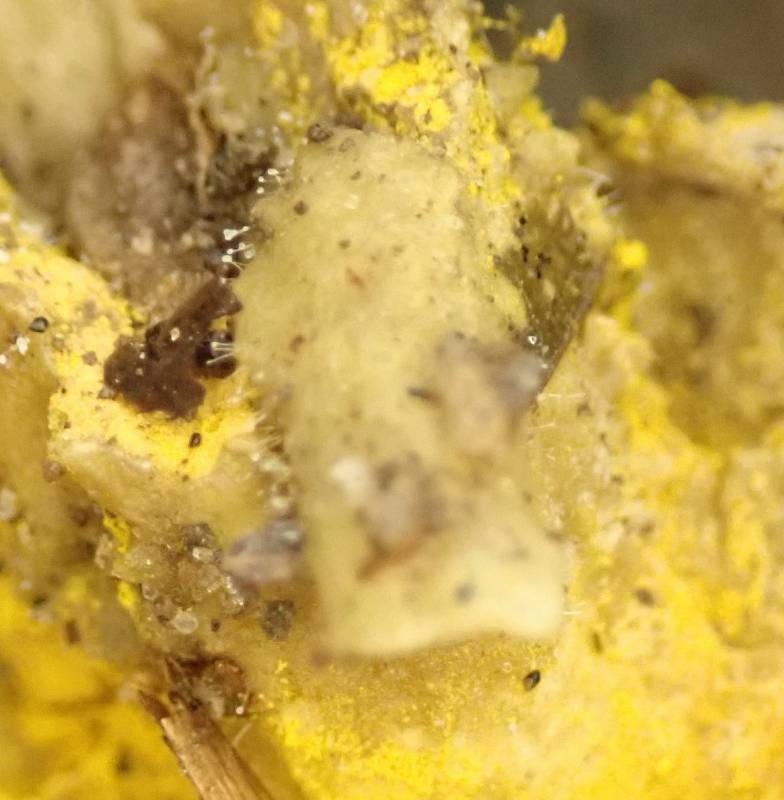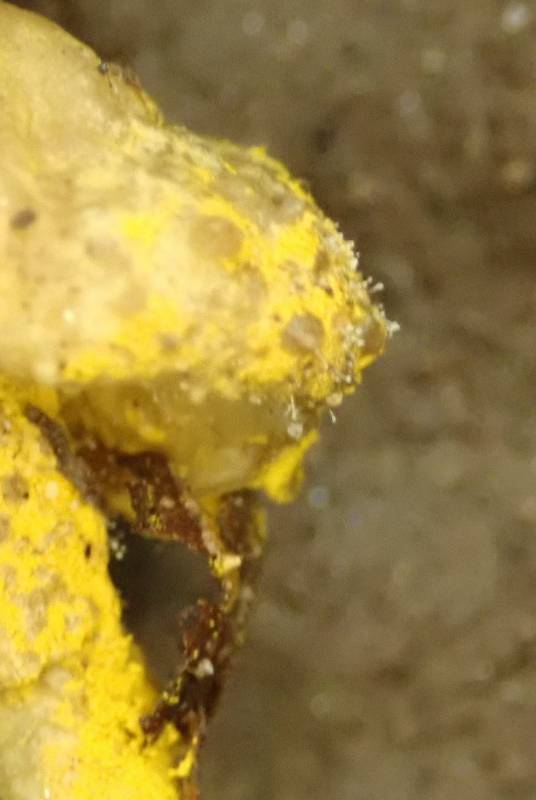The Biota of the Gordon Natural Area - Fungi
Macrofungi at the GNA
A good deal of mycological investigation has taken place at the GNA. In 2009, undergrad Lauryn Levy, under the supervision of Dr. Greg Turner, conducted a survey of the GNA macrofungi, in which she noted 21 species of fungi (and one slime mold). For the next eight years, no mycological work appears to have taken place at the GNA, other than occasional photographing of fungi by then GNA Stewardship Manager Gerry Hertel and GNA Student Intern William Ricci.
Beginning in late 2017, GNA Student Intern Alexandra Hodowanec and GNA Stewardship Manager Nur Ritter began photographing and documenting the fungi (and slime molds) at the Gordon. This work has continued since that time with other student interns who have surveyed, identified, and catalogued the GNA’s fungi. Student Interns Paige Vermeulen, Maribeth Beatty, and Ariana Rivellini have all been at the forefront of this work.
To date, 378 species of fungi, in 240 Genera, 109 Families, and 33 Orders have been noted at the GNA. As with the bryophytes and lichens, there are numerous photos of unidentified fungi awaiting determination. And, one important thing to note is that macrofungi (i.e., the ‘visible’ fungi) represent only a tiny portion of an ecosystem's fungi, with mycorrhizal fungi representing the majority of the ecosystem's fungal component.
The species are organized in three Phyla: Ascomycetes (92 species); Basidiomycetes (282 species); and, Zygomycetes (4 species). For the Basidiomycetes, the best-represented families are the Polyporaceae (26 species) and Meruliaceae (15 species). The most speciose Ascomycete Families are the Xylariaceae (10 species), and the Hypocreaceae (8 species). Although we haven't collected any abundance data, it appears to us that the most commonly encountered and abundant species are Trichaptum biforme (Violet-toothed Polypore), Trametes versicolor (Turkey Tail), Stereum ostrea (False Turkey Tail), and Stereum complicatum (Crowded Parchment).
The actual number of species of fungi at the Gordon is assumed to be significantly higher than the 378 species currently known for the GNA and could easily be two to three times that number. What can be said is that when one of us goes out looking for fungi, they frequently encounter at least one 'new' species (i.e., one that hadn't previously been noted in the GNA). For example, of the 181 species of fungi noted in the GNA during 2020, approximately one-fifth (41 species; 22.7%) constituted first records for the Gordon.
Below, is a list of the species that have been observed at the GNA. PLEASE NOTE: The greatest part of these species identifications has been by amateurs (i.e., lovers of fungi who, in some cases, have little or no training in mycology). Hence, you should not consider these images to be a reliable source for identification. Many fungi are poisonous and you should not collect or eat any mushrooms without being absolutely certain of their identity!
You can explore the fungi checklist below, or you can access a pdf copy of the checklist.
Ascomycota Indet. #1.
Group: Fungi
Type: Ascomycota
Notes
Common Name:
Year Noted: 2020
Identified and First Noted By:
iNaturalist Observations:
49370006 (Observed: 6/12/2020)
Images
Leotiomycota Indet. #1. (No Common Name)
Group: Fungi
Type: Ascomycota
Notes
Common Name: No Common Name
Year Noted: 2019
Identified By: James K. Mictchell (iNaturalist)
First Noted By: Nur Ritter
iNaturalist Observations:
43079642 (Observed: 11/1/2019)
Images
Orbiliomycete Indet. #1. (No Common Name)
Group: Fungi
Type: Ascomycota
Notes
Common Name: No Common Name
Year Noted: 2019
Identified By: imasongster (iNaturalist)
First Noted By: Paige Vermeulen
iNaturalist Observations:
36346907 (Observed: 10/5/2019)
Images
Pezizomycotina Indet. #1. (Operculate Ascomycetes)
Group: Fungi
Type: Ascomycota
Notes
Common Name: Operculate Ascomycetes
Year Noted: 2020
Identified and First Noted By: Nur Ritter
iNaturalist Observations:
49369012 (Observed: 6/12/2020)
Images
Pezizomycotina Indet. #2. (Operculate Ascomycetes)
Group: Fungi
Type: Ascomycota
Notes
Common Name: Operculate Ascomycetes
Year Noted: 2020
Identified and First Noted By: Nur Ritter
iNaturalist Observations:
56972746 (Observed: 8/17/2020)
Images
Pezizomycotina Indet. #3. (Operculate Ascomycetes)
Group: Fungi
Type: Ascomycota
Notes
Common Name: Operculate Ascomycetes
Year Noted: 2018
Identified and First Noted By: Nur Ritter
iNaturalist Observations:
63815589 (Observed: 10/24/2020)
Images
Sordariomycetes Indet. #1.
Group: Fungi
Type: Ascomycota
Notes
Common Name:
Year Noted: 2020
Identified By: James K. Mictchell (iNaturalist)
First Noted By: Nur Ritter
Comments:
To date, a single occurrence known for the GNA. Growing on the broken top of a small Box Elder (Acer negundo).
iNaturalist Observations:
41901469 (Observed: 4/10/2020)
Images
cf. Arachnopeziza aurelia (Spider Cup)
Group: Fungi
Type: Ascomycota
Family: Arachnopezizaceae
Notes
Common Name: Spider Cup
Synonyms: Peziza aurelia
Years Noted: 2019; 2021
Identified and First Noted By: Nur Ritter
Comments:
A tentative identification that needs microscopy for verification.
Note: The common name 'Spider Cup' was assigned to this species by GNA staff.
Images
Ascobolus Indet. #1.
Group: Fungi
Type: Ascomycota
Family: Ascobolaceae
Notes
Common Name:
Year Noted: 2021
Identified and First Noted By: Nur Ritter
Comments:
A diminutive coprophilous species (i.e., one that colonizes feces).
To date, only a single occurrence has been noted in the GNA: this was growing on the same White-tailed Deer scat that Dung Cannon (Pilobolus crystallinus) was noted on.
iNaturalist Observations:
98120964 (Observed: 10/13/2021)
Images
Nectriopsis rexiana (No Common Name)
Group: Fungi
Type: Ascomycota
Family: Bionectriaceae
Notes
Common Name: No Common Name
Synonyms: Verticillium rexianum
Year Noted: 2019
Identified and First Noted By: Nur Ritter
Comments:
A myxomyceticolous fungus: i.e., a species that parasitizes slime molds (myxomycetes). Shown growing on Cribraria Indet.
iNaturalist Observations:
40253334 (Observed: 7/10/2019)
Images
Stilbocrea gracilipes (No Common Name)
Group: Fungi
Type: Ascomycota
Family: Bionectriaceae
Notes
Common Name: No Common Name
Synonyms: Nectria gracilipes
Years Noted: 2019; 2020; 2021; 2022
Identified By: Nur Ritter
First Noted By: Paige Vermeulen
Also Noted By: Nur Ritter
iNaturalist Observations:
41064680 (Observed: 7/10/2019)
141991508 (Observed: 11/10/2022)
102305318 (Observed: 11/30/2021)
61515736 (Observed: 10/2/2020)
Images
Camarops petersii (Dogs Nose Fungus)
Group: Fungi
Type: Ascomycota
Family: Boliniaceae
Notes
Common Name: Dog's Nose Fungus
Synonyms: Hypoxylon petersii; Peridoxylon petersii
Years Noted: 2019; 2020
Identified By: Chase Mayers
First Noted By: Ariana Rivellini
Also Noted By: Nur Ritter
Comments:
To date, a single population noted in the GNA. Growing on a highly-decayed fallen tree.
iNaturalist Observations:
40131513 (Observed: 7/19/2019)
55865310 (Observed: 8/8/2020)
Images
Caloscypha fulgens (Snowbank Orange Peel Fungus)
Group: Fungi
Type: Ascomycota
Family: Caloscyphaceae
Notes
Common Names: Snowbank Orange Peel Fungus; Blue-Staining Cup; Dazzling Cup; Golden Cup: UK
Synonyms: Pseudoplectania fulgens
Years Noted: 2019; 2020
Identified and First Noted By: Nur Ritter
Also Noted By: Maribeth Beatty
Comments:
To date, just a few individuals noted in the GNA, growing alongside a fallen log. CHANGE THIS
iNaturalist Observations:
43101747 (Observed: 4/19/2020)
41188415 (Observed: 4/19/2019)
Images
Scorias spongiosa (Beech Aphid Poop-eater)
Group: Fungi
Type: Ascomycota
Family: Capnodiaceae
Notes
Common Name: Beech Aphid Poop-eater
Years Noted: 2018; 2019; 2020; 2024
Identified and First Noted By: Nur Ritter
Also Noted By: Paige Vermeulen
Comments:
This mold utilizes the honeydew droppings of beech blight aphids; thus, the honeydew eater is commonly found below aphid colonies and on American Beech trees and plant matter. The mold is white but darkens to brown and black after months as it generates ascopores. (A Field Guide to Mushrooms of the Carolinas, pg.285)
iNaturalist Observations:
18449861 (Observed: 11/17/2018)
Images
Chlorociboria aeruginascens (Blue-green Wood Stain)
Group: Fungi
Type: Ascomycota
Family: Chlorociboriaceae
Notes
Common Names: Blue-green Wood Stain; Blue-stain Fungus
Synonyms: Chlorosplenium aeruginascens
Years Noted: 2018; 2019; 2021; 2022; 2023; 2024
Identified and First Noted By: Nur Ritter
Also Noted By: Paige Vermeulen; Ariana Rivellini; Kathryn Krueger
Comments:
Fairly common in the Gordon, with stained wood encountered much more frequently than are the cups.
iNaturalist Observations:
146976039 (Observed: 1/20/2023)
131887849 (Observed: 8/18/2022)
108193335 (Observed: 3/8/2022)
100932641 (Observed: 11/3/2021)
69999645 (Observed: 9/10/2018)
Images
Chlorosplenium chlora (No Common Name)
Group: Fungi
Type: Ascomycota
Family: Chlorospleniaceae
Notes
Common Name: No Common Name
Years Noted: 2017; 2018; 2021
Identified and First Noted By: Nur Ritter
Also Noted By: Paige Vermeulen; Ariana Rivellini; Maribeth Beatty
Comments:
Formerly placed in the Dermateaceae.
iNaturalist Observations:
101468609 (Observed: 11/17/2021)
100171569 (Observed: 11/3/2021)
Images
Metarhizium Indet. #1. (Green Muscardine Fungus)
Group: Fungi
Type: Ascomycota
Family: Clavicipitaceae
Notes
Common Name: Green Muscardine Fungus
Year Noted: 2020
Identified By: John Plischke (iNaturalist)
First Noted By: Nur Ritter
Comments:
A single 'occurrence' noted: on a Reddish-brown Stag Beetle (Lucanus capreolus).
iNaturalist Observations:
192092865 (Observed: 11/17/2023)
55826104 (Observed: 8/8/2020)
Images
Akanthomyces tuberculatus Complex (Dwarf Caterpillarclub)
Group: Fungi
Type: Ascomycota
Family: Cordycipitaceae
Notes
Common Names: Dwarf Caterpillarclub; Perithecial Moth Cordyceps
Synonyms: Cordyceps tuberculata
Years Noted: 2018; 2019; 2021
Identified and First Noted By: Nur Ritter
Also Noted By: Maribeth Beatty; Paige Vermeulen; Jebadiah Hickman; Ariana Rivellini; Alden Ritchey
iNaturalist Observations:
39922281 (Observed: 2/28/2018)
39922833 (Observed: 11/30/2018)
98812926 (Observed: 10/20/2021)
Images
Beauveria Indet. #1. (No Common Name)
Gibellula arachnophila (No Common Name)
Group: Fungi
Type: Ascomycota
Family: Cordycipitaceae
Notes
Common Name: No Common Name
Synonyms: Isaria arachnophila
Years Noted: 2020; 2021
Identified By: Nur Ritter
First Noted By: Paige Vermeulen
Also Noted By: Kathryn Krueger
iNaturalist Observations:
103157508 (Observed: 12/15/2021)
60011598 (Observed: 9/18/2020)
Images
Lecanicillium fungicola (No Common Name)
Group: Fungi
Type: Ascomycota
Family: Cordycipitaceae
Notes
Common Name: No Common Name
Synonyms: Verticillium fungicola
Year Noted: 2017
Identified and First Noted By: Nur Ritter
iNaturalist Observations:
39926877 (Observed: 11/10/2017)
Images
Diatrype disciformis (Beech Barkspot)
Group: Fungi
Type: Ascomycota
Family: Diatrypaceae
Notes
Common Name: Beech Barkspot
Synonyms: Hypoxylon disciforme; Sphaeria disciformis
Years Noted: 2017; 2018; 2020
Identified and First Noted By: Nur Ritter
iNaturalist Observations:
47676381 (Observed: 5/28/2020)
Images
Diatrype stigma (Common Tarcrust)
Group: Fungi
Type: Ascomycota
Family: Diatrypaceae
Notes
Common Name: Common Tarcrust
Synonyms: Hypoxylon stigma; Sphaeria decorticata; Sphaeria stigma
Years Noted: 2017; 2018; 2019; 2020; 2021; 2022
Identified and First Noted By: Nur Ritter
Also Noted By: Noah Long
iNaturalist Observations:
110840226 (Observed: 3/29/2022)
49753304 (Observed: 6/15/2020)
87293065 (Observed: 3/26/2021)
65956232 (Observed: 11/24/2020)
Images
Arthrophaga myriapodina (No Common Name)
Group: Fungi
Type: Ascomycota
Family: Entomophthoraceae
Notes
Common Name: No Common Name
Year Noted: 2025
Identified and First Noted By: Mackenzie Rose
Also Noted By: Jack Ridenour; Nur Ritter
Comments:
Arthrophaga myriapodina is a "zombie" fungus that is a pathogen of millipedes. Most common during the late summer and fall, this fugus infects millipedes and causes them to climb before death, allowing the spores to spread with greater reach. Arthrophaga myriapodina was first spotted in the GNA on October 22nd by GNA intern Mackenzie Rose.
iNaturalist Observations:
322424894 (Observed: 10/22/2025)
Images
Erysiphaceae Indet. #1. (Powdery Mildews)
Group: Fungi
Type: Ascomycota
Family: Erysiphaceae
Notes
Common Name: Powdery Mildews
Year Noted: 2023
Identified and First Noted By: Jonathan Blithe
iNaturalist Observations:
163690912 (Observed: 5/25/2023)
Ascocoryne sarcoides (Purple Jelly Drops)
Group: Fungi
Type: Ascomycota
Family: Gelatinodiscaceae
Notes
Common Names: Purple Jelly Drops; Purple Jellydisc
Synonyms: Coryne sarcoides; Lichen sarcoides
Years Noted: 2017; 2018; 2019; 2020; 2021; 2022; 2023
Identified and First Noted By: Nur Ritter
Also Noted By: Alexandra Hodowanec; Ariana Rivellini
Comments:
Ascocoryne sarcoides represents the teleomorphic (i.e., sexual) phase of this fungus; Coryne sarcoides is the anamorphic (i.e., asexual) phase.
iNaturalist Observations:
139555445 (Observed: 10/21/2022)
18449477 (Observed: 11/17/2018)
102182099 (Observed: 11/29/2021)
61905239 (Observed: 10/6/2020)
Images
Trichoglossum hirsutum (Velvety Earth Tongue)
Group: Fungi
Type: Ascomycota
Family: Geoglossaceae
Notes
Common Names: Velvety Earth Tongue; Velvety Black Earth Tongue; Hairy Earth Tongue: UK
Synonyms: Geoglossum hirsutum
Year Noted: 2018
Identified and First Noted By: Nur Ritter
Also Noted By: Maribeth Beatty
iNaturalist Observations:
15517404 (Observed: 8/16/2018)
Images
cf. Biscogniauxia repanda (No Common Name)
Group: Fungi
Type: Ascomycota
Family: Graphostromataceae
Notes
Common Name: No Common Name
Synonyms: Nummularia repanda
Year Noted: 2017
Identified and First Noted By: Nur Ritter
Comments:
Formerly placed in the Xylariaceae.
Images
Biscogniauxia atropunctata (Hypoxylon Canker)
Group: Fungi
Type: Ascomycota
Family: Graphostromataceae
Notes
Common Name: Hypoxylon Canker
Synonyms: Diatrype atropunctata; Hypoxylon atropunctatum; Sphaeria atropunctata
Years Noted: 2017; 2018; 2019; 2020; 2021; 2022; 2023; 2024
Identified and First Noted By: Nur Ritter
Also Noted By: Noah Long; Kathryn Krueger
Comments:
A white-rot fungus that is saprobic on the deadwood of oaks and other hardwood species (mushroomexpert.com).
iNaturalist Observations:
108195533 (Observed: 3/8/2022)
41187785 (Observed: 4/10/2019)
47678023 (Observed: 5/28/2020)
96932734 (Observed: 10/1/2021)
66307373 (Observed: 12/8/2020)
Images
Biscogniauxia marginata (No Common Name)
Group: Fungi
Type: Ascomycota
Family: Graphostromataceae
Notes
Common Name: No Common Name
Synonyms: Sphaeria marginata
Year Noted: 2022
Identified By: Garrett Taylor (iNaturalist)
First Noted By: Nur Ritter
iNaturalist Observations:
140252523 (Observed: 10/27/2022)
105978426 (Observed: 2/1/2022)
Images
Hymenoscyphus cf. calyculus (No Common Name)
Hymenoscyphus fructigenus (Acorn Cup Fungus)
Group: Fungi
Type: Ascomycota
Family: Helotiaceae
Notes
Common Names: Acorn Cup Fungus; Nut Disco
Synonyms: Ciboria fructigena; Helotium fructigenum; Helotium virgultorum var. fructigenum; Peziza fructigena; Phialea fructigena
Years Noted: 2018; 2019; 2020; 2021
Identified and First Noted By: Nur Ritter
Also Noted By: Paige Vermeulen; Kathryn Krueger
iNaturalist Observations:
102297962 (Observed: 11/30/2021)
39889583 (Observed: 9/27/2018)
39924676 (Observed: 10/2/2019)
61516668 (Observed: 10/2/2020)
Images
Hymenoscyphus Indet. #1. (No Common Name)
Group: Fungi
Type: Ascomycota
Family: Helotiaceae
Notes
Common Name: No Common Name
Year Noted: 2021
Identified and First Noted By: Nur Ritter
iNaturalist Observations:
98135139 (Observed: 10/13/2021)
Images
Tatraea macrospora (No Common Name)
Helvella crispa (Fluted White Helvella)
Group: Fungi
Type: Ascomycota
Family: Helvellaceae
Notes
Common Names: Fluted White Helvella; White Elfin Saddle; White Saddle
Synonyms: Costapeda crispa
Year Noted: 2018
Identified and First Noted By: Nur Ritter
iNaturalist Observations:
69834135 (Observed: 5/30/2019)
Images
Helvella lacunosa (Elfin Saddle)
Group: Fungi
Type: Ascomycota
Family: Helvellaceae
Notes
Common Name: Elfin Saddle
Synonyms: Helvella sulcata
Year Noted: 2018
Identified and First Noted By: Nur Ritter
Also Noted By: Paige Vermeulen; Maribeth Beatty
iNaturalist Observations:
69834328 (Observed: 10/9/2018)
69829607 (Observed: 9/14/2018)
Images
Helvella macropus (Long-stalked Gray Cup)
Group: Fungi
Type: Ascomycota
Family: Helvellaceae
Notes
Common Names: Long-stalked Gray Cup; Felt Saddle Fungus
Synonyms: Paxina hispida; Peziza macropus
Year Noted: 2018
Identified and First Noted By: Nur Ritter
Also Noted By: Maribeth Beatty
iNaturalist Observations:
40138130 (Observed: 11/9/2018)
Images
Chlorencoelia cf. versiformis (Olive-brown Cup)
Group: Fungi
Type: Ascomycota
Family: Hemiphacidiaceae
Notes
Common Names: Olive-brown Cup; Flea's Ear: UK
Synonyms: Chlorociboria versiformis; Chlorosplenium versiforme; Midotis versiformis; Peziza versiformis
Years Noted: 2018; 2019; 2020; 2021
Identified and First Noted By: Nur Ritter
Also Noted By: Ariana Rivellini
Comments:
A tentative identification that needs microscopy for verification.
Images
cf. Sphaerostilbella aurifila (No Common Name)
Group: Fungi
Type: Ascomycota
Family: Hypocreaceae
Notes
Common Name: No Common Name
Year Noted: 2017
Identified and First Noted By: Nur Ritter
iNaturalist Observations:
69949488 (Observed: 8/8/2017)
Images
Hypocrea gelatinosa (No Common Name)
Group: Fungi
Type: Ascomycota
Family: Hypocreaceae
Notes
Common Name: No Common Name
Synonyms: Creopus gelatinosus; Sphaeria gelatinosa
Years Noted: 2018; 2019; 2020; 2022; 2023
Identified and First Noted By: Nur Ritter
Also Noted By: Paige Vermeulen
Comments:
Trichoderma gelatinosum is the anamorph (i.e., the sexual form); Hypocrea gelatinosa—which is more commonly encountered in the literature—is the teleomorph (i.e., the asexual form).
iNaturalist Observations:
173787879 (Observed: 7/17/2023)
137671030 (Observed: 10/5/2022)
39923222 (Observed: 10/4/2019)
56781118 (Observed: 8/17/2020)
63817647 (Observed: 10/23/2020)
71309703 (Observed: 6/22/2020)
Images
Hypomyces aurantius (Orange Polypore Mold)
Group: Fungi
Type: Ascomycota
Family: Hypocreaceae
Notes
Common Name: Orange Polypore Mold
Synonyms: Sphaeria aurantia
Year Noted: 2018
Identified and First Noted By: Nur Ritter
Images
Hypomyces cervinigenus (Helvella Eater)
Group: Fungi
Type: Ascomycota
Family: Hypocreaceae
Notes
Common Name: Helvella Eater
Years Noted: 2019; 2022
Identified and First Noted By: Nur Ritter
Also Noted By: Maribeth Beatty
Comments:
A mycoparasite. Note: the common name was assigned by GNA staff.
iNaturalist Observations:
119722598 (Observed: 5/31/2022)
69834078 (Observed: 5/30/2019)
Images
Hypomyces chrysospermus (Bolete Mold)
Group: Fungi
Type: Ascomycota
Family: Hypocreaceae
Notes
Common Names: Bolete Mold; Golden Hypomyces
Years Noted: 2018; 2021
Identified and First Noted By: Nur Ritter
Also Noted By: Noah Long
iNaturalist Observations:
87613420 (Observed: 7/18/2021)
Images
Hypomyces papulasporae (No Common Name)
Trichoderma flavipes (No Common Name)
Group: Fungi
Type: Ascomycota
Family: Hypocreaceae
Notes
Common Name: No Common Name
Year Noted: 2020
Identified By: Jonathan Mack M. (Facebook Ascomycete Group)
First Noted By: Nur Ritter
iNaturalist Observations:
61166406 (Observed: 9/28/2020)
Images
Trichoderma sulphureum (No Common Name)
Group: Fungi
Type: Ascomycota
Family: Hypocreaceae
Notes
Common Name: No Common Name
Synonyms: Hypocrea sulphurea
Years Noted: 2017; 2021; 2022; 2023
Identified and First Noted By: Nur Ritter
Comments:
A mycoparasitic species that parasitizes Black Jelly Roll Fungus (Exidia glandulosa) and also (presumably) a saprophyte.
iNaturalist Observations:
130283473 (Observed: 8/10/2022)
61513794 (Observed: 10/2/2020)
99482303 (Observed: 10/26/2021)
94212474 (Observed: 9/2/2021)
Images
Trichoderma viride (No Common Name)
Group: Fungi
Type: Ascomycota
Family: Hypocreaceae
Notes
Common Name: No Common Name
Synonyms: Trichoderma lignorum
Years Noted: 2017; 2020; 2021; 2022
Identified and First Noted By: Nur Ritter
Also Noted By: Paige Vermeulen; Rachel Resuta; Kathryn Krueger
iNaturalist Observations:
127263590 (Observed: 7/21/2022)
102305873 (Observed: 11/30/2021)
39925317 (Observed: 9/24/2019)
52519202 (Observed: 7/9/2020)
61166097 (Observed: 9/28/2020)
63815666 (Observed: 10/24/2020)
77680621 (Observed: 5/6/2021)
66302215 (Observed: 12/8/2020)
Images
Daldinia concentrica (Carbon Balls)
Group: Fungi
Type: Ascomycota
Family: Hypoxylaceae
Notes
Common Names: Carbon Balls; King Alfred's Cakes; Cramp Balls
Synonyms: Hypoxylon concentricum; Sphaeria concentrica
Years Noted: 2017; 2018; 2019
Identified and First Noted By: Nur Ritter
Comments:
Formerly placed in the Xylariaceae.
iNaturalist Observations:
42279928 (Observed: 4/15/2020)
Images
Hypoxylon cf. ferrugineum (Rusty Woodwart)
Group: Fungi
Type: Ascomycota
Family: Hypoxylaceae
Notes
Common Name: Rusty Woodwart
Synonyms: Hypoxylon rubiginosum var. ferrugineum
Years Noted: 2017; 2018; 2019
Identified and First Noted By: Nur Ritter
Comments:
Formerly placed in the Xylariaceae.
Images
Hypoxylon fragiforme (Beech Woodwart)
Group: Fungi
Type: Ascomycota
Family: Hypoxylaceae
Notes
Common Names: Beech Woodwart; Red Cushion Hypoxylon
Synonyms: Hypoxylon coccineum; Sphaeria fragiformis
Years Noted: 2017; 2020; 2022
Identified and First Noted By: Nur Ritter
Comments:
Very common at the GNA.
iNaturalist Observations:
107763181 (Observed: 3/1/2022)
56473654 (Observed: 8/14/2020)
Images
Hypoxylon howeanum (Harlequin Woodwart)
Group: Fungi
Type: Ascomycota
Family: Hypoxylaceae
Notes
Common Name: Harlequin Woodwart
Years Noted: 2018; 2020; 2022
Identified and First Noted By: Nur Ritter
Comments:
Note: the common name was assigned by GNA staff.
iNaturalist Observations:
49878915 (Observed: 6/16/2020)
50586574 (Observed: 6/22/2020)
Images
Periconia cookei (No Common Name)
Group: Fungi
Type: Ascomycota
Family: Incertae sedis
Notes
Common Name: No Common Name
Year Noted: 2020
Identified and First Noted By: Nur Ritter
iNaturalist Observations:
62190308 (Observed: 10/8/2020)
Images
Lachnum virgineum (Stalked Hairy Fairy Cup)
Group: Fungi
Type: Ascomycota
Family: Lachnaceae
Notes
Common Name: Stalked Hairy Fairy Cup
Synonyms: Dasyscyphus virgineus; Dasyscyphus virgineus
Years Noted: 2019; 2021; 2022; 2023
Identified and First Noted By: Nur Ritter
Also Noted By: Noah Long; Kathryn Krueger; Miranda Davies
Comments:
A single occurrence noted at the GNA, but this species is easily missed.
iNaturalist Observations:
146335026 (Observed: 1/10/2023)
146334570 (Observed: 1/10/2023)
141004885 (Observed: 11/3/2022)
131882969 (Observed: 5/6/2022)
119768612 (Observed: 6/1/2022)
83040722 (Observed: 6/10/2021)
83126934 (Observed: 6/14/2021)
40137654 (Observed: 6/14/2019)
71308773 (Observed: 11/19/2019)
71308595 (Observed: 3/9/2020)
Images
Lasiosphaeria ovina (Woolly Woodwart: UK)
Group: Fungi
Type: Ascomycota
Family: Lasiosphaeriaceae
Notes
Common Name: Woolly Woodwart: UK
Synonyms: Sphaeria ovina
Years Noted: 2020; 2022
Identified and First Noted By: Nur Ritter
Also Noted By: Miranda Davies
iNaturalist Observations:
145772394 (Observed: 12/20/2022)
40999228 (Observed: 3/29/2020)
Images
Lasiosphaeriaceae Indet.
Group: Fungi
Type: Ascomycota
Family: Lasiosphaeriaceae
Notes
Common Name:
Year Noted: 2018
Identified and First Noted By: Nur Ritter
Also Noted By: Paige Vermeulen
iNaturalist Observations:
45079017 (Observed: 5/23/2018)
Images
Ruzenia spermoides (No Common Name)
Group: Fungi
Type: Ascomycota
Family: Lasiosphaeriaceae
Notes
Common Name: No Common Name
Synonyms: Lasiosphaeria spermoides; Sphaeria spermoides
Years Noted: 2018; 2020
Identified and First Noted By: Nur Ritter
Also Noted By: Maribeth Beatty
iNaturalist Observations:
39805580 (Observed: 11/30/2018)
61202928 (Observed: 9/28/2020)
Images
Leotia lubrica (Jelly Babies)
Group: Fungi
Type: Ascomycota
Family: Leotiaceae
Notes
Common Name: Jelly Babies
Years Noted: 2018; 2019
Identified and First Noted By: Nur Ritter
Also Noted By: Paige Vermeulen; Maribeth Beatty; Ariana Rivellini
Images
Microglossum rufum (Orange Earth Tongue)
Group: Fungi
Type: Ascomycota
Family: Leotiaceae
Notes
Common Names: Orange Earth Tongue; Yellow Earth Tongue
Year Noted: 2018
Identified and First Noted By: Nur Ritter
Also Noted By: Maribeth Beatty
iNaturalist Observations:
39852443 (Observed: 9/20/2018)
Images
Microglossum viride (Green Earth Tongue)
Group: Fungi
Type: Ascomycota
Family: Leotiaceae
Notes
Common Name: Green Earth Tongue
Year Noted: 2018
Identified and First Noted By: Nur Ritter
Also Noted By: Paige Vermeulen
iNaturalist Observations:
42280600 (Observed: 10/5/2018)
Images
Melogramma gyrosum (Orange Hobnail Canker)
Group: Fungi
Type: Ascomycota
Family: Melogrammataceae
Notes
Common Name: Orange Hobnail Canker
Synonyms: Endothia gyrosa; Sphaeria gyrosa
Years Noted: 2017; 2021; 2023
Identified and First Noted By: Nur Ritter
Comments:
Seemingly, this species is rarely noted. At the GNA, known from a single dead tree.
iNaturalist Observations:
159503425 (Observed: 5/2/2023)
68069273 (Observed: 1/14/2021)
71297055 (Observed: 2/26/2021)
Images
Parascedosporium putredinis (No Common Name)
Group: Fungi
Type: Ascomycota
Family: Microascaceae
Notes
Common Name: No Common Name
Synonyms: Graphium putredinis
Years Noted: 2019; 2020
Identified and First Noted By: Nur Ritter
Comments:
To date, a single occurrence known for the GNA. Growing on a Sweetgum (Liquidambar styraciflua) fruit.
Note: the identification is tentative, as it is based solely on morphologic characters (no microscopic work has been undertaken).
iNaturalist Observations:
42464438 (Observed: 6/3/2019)
49868644 (Observed: 6/16/2020)
Images
Mollisia cf. cinerea (Common Gray Disco)
Group: Fungi
Type: Ascomycota
Family: Mollisiaceae
Notes
Common Name: Common Gray Disco
Synonyms: Peziza cinerea
Years Noted: 2017; 2018; 2019; 2020; 2021; 2022; 2023
Identified and First Noted By: Nur Ritter
Also Noted By: Paige Vermeulen; Ariana Rivellini; Maribeth Beatty; Miranda Davies
Images
Morchella esculenta (Yellow Morel)
Group: Fungi
Type: Ascomycota
Family: Morchellaceae
Notes
Common Name: Yellow Morel
Years Noted: 2007; 2017; 2018; 2019; 2020; 2022
Identified and First Noted By: Lauren Levy
Also Noted By: Alexandra Hodowanec, Nur Ritter; Gerry Hertel; Paige Vermeulen; Maribeth Beatty; Greg Turner; Tug DeLuce; Kathryn Krueger
Images
Morchella punctipes (Half-free Morel)
Group: Fungi
Type: Ascomycota
Family: Morchellaceae
Notes
Common Name: Half-free Morel
Years Noted: 2020; 2022
Identified and First Noted By: Nur Ritter
Also Noted By: Kathryn Krueger
Comments:
To date, a single occurrence known for the GNA.
iNaturalist Observations:
112071219 (Observed: 4/19/2022)
42258897 (Observed: 4/15/2020)
Images
Mycosphaerellaceae Indet. #1. (No Common Name)
Group: Fungi
Type: Ascomycota
Family: Mycosphaerellaceae
Notes
Common Name: No Common Name
Year Noted: 2020
Identified and First Noted By: Nur Ritter
Comments:
Noted a single time at the GNA: growing on a Tulip Tree (Liriodendron tulipifera) leaf.
iNaturalist Observations:
58994693 (Observed: 9/8/2020)
Images
Ramularia rubella (Red Dock Spot)
Group: Fungi
Type: Ascomycota
Family: Mycosphaerellaceae
Notes
Common Names: Red Dock Spot; Ramularia Leaf Spot
Synonyms: Ovularia obliqua
Identified and First Noted By: Nur Ritter
iNaturalist Observations:
121910361 (Observed: 6/15/2022)
cf. Neonectria coccinea (Beech Rust)
Group: Fungi
Type: Ascomycota
Family: Nectriaceae
Notes
Common Name: Beech Rust
Synonyms: Nectria coccinea; Sphaeria coccinea
Year Noted: 2019
Identified and First Noted By: Nur Ritter
Comments:
A tentative identification that needs more work for verification.
Images
Dialonectria episphaeria (Nectrie des Sphaeria: France)
Group: Fungi
Type: Ascomycota
Family: Nectriaceae
Notes
Common Name: Nectrie des Sphaeria: France
Synonyms: Cosmospora episphaeria; Fusarium episphaeria; Nectria episphaeria; Sphaeria episphaeria
Years Noted: 2017; 2018
Identified and First Noted By: Nur Ritter
Images
Fusicolla merismoides (Deer Vomit)
Group: Fungi
Type: Ascomycota
Family: Nectriaceae
Notes
Common Names: Deer Vomit; Tree Slime Fungus
Years Noted: 2023; 2024
Identified and First Noted By: Nur Ritter
iNaturalist Observations:
330459146 (Observed: 3/30/2023)
Images
Nectria cinnabarina (Coral Spot Fungus)
Group: Fungi
Type: Ascomycota
Family: Nectriaceae
Notes
Common Name: Coral Spot Fungus
Synonyms: Sphaeria cinnabarina
Years Noted: 2019; 2023
Identified and First Noted By: Nur Ritter
Also Noted By: Miranda Davies
iNaturalist Observations:
148909472 (Observed: 2/16/2023)
42789751 (Observed: 12/23/2019)
Images
Nectria peziza (Yellow Spot)
Group: Fungi
Type: Ascomycota
Family: Nectriaceae
Notes
Common Name: Yellow Spot
Synonyms: Hydropisphaera peziza; Neuronectria peziza; Sphaeria peziza
Year Noted: 2017
Identified and First Noted By: Nur Ritter
iNaturalist Observations:
41365983 (Observed: 10/9/2018)
Images
Nitschkia Indet. #1. (No Common Name)
Group: Fungi
Type: Ascomycota
Family: Nitschkiaceae
Notes
Common Name: No Common Name
Year Noted: 2021
Identified By:
First Noted By: Nur Ritter
iNaturalist Observations:
106862756 (Observed: 1/8/2021)
Images
Ophiocordyceps Indet. (No Common Name)
Group: Fungi
Type: Ascomycota
Family: Ophiocordycipitaceae
Notes
Common Name: No Common Name
Year Noted: 2019
Identified By: Nur Ritter
First Noted By: Ariana Rivellini
Comments:
Entomopathogenic species; a single 'occurrence' noted on an unidentified insect.
iNaturalist Observations:
39926648 (Observed: 10/11/2019)
Images
Polycephalomyces tomentosus (Slime Mold Fairy Pin)
Group: Fungi
Type: Ascomycota
Family: Ophiocordycipitaceae
Notes
Common Name: Slime Mold Fairy Pin
Synonyms: Blistum tomentosum
Years Noted: 2017; 2018; 2019; 2020
Identified and First Noted By: Nur Ritter
Also Noted By: Paige Vermeulen
Comments:
Note: The common name was assigned by GNA Staff.
iNaturalist Observations:
192636167 (Observed: 12/15/2020)
56782658 (Observed: 8/17/2020)
Images
Tolypocladium ophioglossoides (Goldenthread Cordyceps)
Group: Fungi
Type: Ascomycota
Family: Ophiocordycipitaceae
Notes
Common Name: Goldenthread Cordyceps
Synonyms: Cordyceps ophioglossoides
Year Noted: 2018
Identified and First Noted By: Paige Vermeulen
iNaturalist Observations:
39891315 (Observed: 8/21/2018)
Images
Ophiostoma Indet 1 (Dutch Elm Disease)
Group: Fungi
Type: Ascomycota
Family: Ophiostomataceae
Notes
Common Name: Dutch Elm Disease
Year Noted: 2020
Identified By: E. Johannesen
First Noted By: Paige Vermeulen
Also Noted By: Nur Ritter
Comments:
Growing on a small, decaying branch on the forest floor.
As noted by Alisha Millican regarding the iNaturalist specimen: "This could be either O. ulmi or O. novo-ulmi, or even a hybrid of the two. See here.
iNaturalist Observations:
39177432 (Observed: 2/24/2020)
Images
cf. Orbilia delicatula (Delicate Glasscup)
Group: Fungi
Type: Ascomycota
Family: Orbiliaceae
Notes
Common Name: Delicate Glasscup
Year Noted: 2019
Identified and First Noted By: Nur Ritter
Comments:
The identification of this species is uncertain and needs microscopy work for a definitive id. Note: the common name was assigned by GNA staff.
Images
Orbilia Indet. #1. (No Common Name)
Group: Fungi
Type: Ascomycota
Family: Orbiliaceae
Notes
Common Name: No Common Name
Year Noted: 2019
Identified and First Noted By: Nur Ritter
iNaturalist Observations:
45102772 (Observed: 8/7/2019)
Images
Chromelosporiopsis coerulescens (No Common Name)
Group: Fungi
Type: Ascomycota
Family: Pezizaceae
Notes
Common Name: No Common Name
Synonyms: Chromelosporium coerulescens
Year Noted: 2021
Identified By: Nur Ritter
First Noted By: Noah Long
Comments:
Is found growing on rotten wood and on mosses in forests (MycoQuébec).
iNaturalist Observations:
81615803 (Observed: 6/4/2021)
Images
Chromelosporium Indet 1
Group: Fungi
Type: Ascomycota
Family: Pezizaceae
Notes
Common Name:
Year Noted: 2023
Identified By: Nur Ritter
First Noted By: Kathryn Krueger & Miranda Davies
Also Noted By: Nur Ritter
iNaturalist Observations:
172502543 (Observed: 7/11/2023)
Images
Legaliana badia (Bay Cup)
Group: Fungi
Type: Ascomycota
Family: Pezizaceae
Notes
Common Names: Bay Cup; Bat Cup Fungus; Yellow-ear Cup
Synonyms: Galactinia badia; Peziza badia; Plicaria badia; Scodellina badia
Year Noted: 2017
Identified and First Noted By: Nur Ritter
Images
Peziza phyllogena (Common Brown Cup)
Group: Fungi
Type: Ascomycota
Family: Pezizaceae
Notes
Common Name: Common Brown Cup
Years Noted: 2018; 2019; 2020
Identified and First Noted By: Nur Ritter
Also Noted By: Paige Vermeulen; Jessica Schedlbauer; Maribeth Beatty
Comments:
In the spring of 2018, this cup fungus was very abundant locally in at least two areas of the GNA.
iNaturalist Observations:
41192466 (Observed: 5/3/2019)
44921469 (Observed: 5/4/2020)
Images
Peziza varia (Recurved Cup)
Group: Fungi
Type: Ascomycota
Family: Pezizaceae
Notes
Common Names: Recurved Cup; Layered Cup
Year Noted: 2018
Identified and First Noted By: Nur Ritter
iNaturalist Observations:
69631369 (Observed: 7/19/2018)
Images
Peziza vesiculosa (Recurved Cup)
Group: Fungi
Type: Ascomycota
Family: Pezizaceae
Notes
Common Names: Recurved Cup; Bladder Cup; Blistered Cup: UK
Year Noted: 2017
Identified and First Noted By: Nur Ritter
iNaturalist Observations:
41324411 (Observed: 4/3/2020)
Images
Calycina citrina (Yellow Fairy Cups)
Group: Fungi
Type: Ascomycota
Family: Pezizellaceae
Notes
Common Names: Yellow Fairy Cups; Lemon Disco: UK
Synonyms: Bisporella citrina
Years Noted: 2017; 2018; 2019; 2020; 2021; 2022; 2023
Identified and First Noted By: Alexandra Hodowanec
Also Noted By: Paige Vermeulen; Ariana Rivellini; Maribeth Beatty; Kathryn Krueger; Mary Teresa Ohara
iNaturalist Observations:
146977014 (Observed: 1/20/2023)
138290538 (Observed: 10/7/2022)
61903441 (Observed: 10/6/2020)
96814111 (Observed: 10/1/2021)
66020770 (Observed: 12/2/2020)
Images
Calycina lactea (No Common Name)
Group: Fungi
Type: Ascomycota
Family: Pezizellaceae
Notes
Common Name: No Common Name
Years Noted: 2018; 2019
Identified By: John Plischke (iNaturalist)
First Noted By: Nur Ritter
Comments:
Growing on a large, fallen Tulip Tree (Liriodendron tulipifera).
iNaturalist Observations:
40130573 (Observed: 11/29/2018)
Images
Bulgaria inquinans (Black Jelly Drops)
Group: Fungi
Type: Ascomycota
Family: Phacidiaceae
Notes
Common Names: Black Jelly Drops; Black Bulgar
Synonyms: Peziza inquinans; Phaeobulgaria inquinans
Years Noted: 2018; 2019; 2020
Identified and First Noted By: Nur Ritter
Also Noted By: Paige Vermeulen
iNaturalist Observations:
101278053 (Observed: 6/21/2019)
56452711 (Observed: 8/14/2020)
Images
Humaria hemisphaerica (Hairy Fariy Cup)
Group: Fungi
Type: Ascomycota
Family: Pyronemataceae
Notes
Common Names: Hairy Fariy Cup; Glazed Cup: UK
Synonyms: Lachnea hemisphaerica; Patella albida
Year Noted: 2018
Identified By: Nur Ritter
First Noted By: Paige Vermeulen
iNaturalist Observations:
93051955 (Observed: 8/8/2018)
Images
Scutellinia cf. umbrorum (Orange-red Eyelash Cup)
Group: Fungi
Type: Ascomycota
Family: Pyronemataceae
Notes
Common Name: Orange-red Eyelash Cup
Synonyms: Patella umbrorum
Year Noted: 2018
Identified and First Noted By: Nur Ritter
iNaturalist Observations:
40024324 (Observed: 7/20/2018)
Images
Scutellinia erinaceus (Orange Eyelash Cup)
Group: Fungi
Type: Ascomycota
Family: Pyronemataceae
Notes
Common Name: Orange Eyelash Cup
Synonyms: Patella erinaceus; Peziza erinaceus
Years Noted: 2018; 2019; 2020; 2021
Identified and First Noted By: Nur Ritter
iNaturalist Observations:
138609073 (Observed: 10/12/2022)
102181907 (Observed: 11/29/2021)
39574577 (Observed: 10/10/2018)
61910467 (Observed: 10/6/2020)
Images
Scutellinia scutellata (Eyelash Cup)
Group: Fungi
Type: Ascomycota
Family: Pyronemataceae
Notes
Common Name: Eyelash Cup
Synonyms: Lachnea scutellata; Patella scutellata; Peziza scutellata
Years Noted: 2017; 2018; 2019; 2020; 2022
Identified and First Noted By: Alexandra Hodowanec
Also Noted By: Nur Ritter; Paige Vermeulen; Ariana Rivellini; Noah Long; Maribeth Beatty; Kathryn Krueger
Comments:
A commonly encountered Ascomycetes at the GNA.
iNaturalist Observations:
127255964 (Observed: 7/21/2022)
Images
Scutellinia setosa (No Common Name)
Group: Fungi
Type: Ascomycota
Family: Pyronemataceae
Notes
Common Name: No Common Name
Synonyms: Humaria setosa; Lachnea setosa; Peziza setosa
Year Noted: 2019
Identified By: Malcolm Greaves (iNaturalist)
First Noted By: Nur Ritter
iNaturalist Observations:
39923273 (Observed: 10/4/2019)
Images
Sphaerosporium lignatile (No Common Name)
Group: Fungi
Type: Ascomycota
Family: Pyronemataceae
Notes
Common Name: No Common Name
Years Noted: 2018; 2019; 2021; 2022
Identified By: J. Thornhill (Facebook Ascomycete Group)
First Noted By: Nur Ritter
Also Noted By: Maribeth Beatty
iNaturalist Observations:
138422790 (Observed: 10/11/2022)
39462335 (Observed: 7/26/2018)
98704029 (Observed: 10/19/2021)
Images
Colpoma Indet 1 (No Common Name)
Group: Fungi
Type: Ascomycota
Family: Rhytismataceae
Notes
Common Name: No Common Name
Year Noted: 2023
Identified By: kidneymoth (iNaturalist)
First Noted By: Nur Ritter
iNaturalist Observations:
167240125 (Observed: 6/13/2023)
Rhytisma acerinum (Black Tar Spot)
Group: Fungi
Type: Ascomycota
Family: Rhytismataceae
Notes
Common Names: Black Tar Spot; Sycamore Tarspot: UK
Year Noted: 2024
Identified and First Noted By: Nur Ritter
iNaturalist Observations:
197899273 (Observed: 1/5/2024)
Rhytisma punctatum (Speckled Tar Spot)
Group: Fungi
Type: Ascomycota
Family: Rhytismataceae
Notes
Common Name: Speckled Tar Spot
Year Noted: 2023
Identified and First Noted By: Nur Ritter
iNaturalist Observations:
146842680 (Observed: 1/18/2023)
Sarcoscypha occidentalis (Stalked Scarlet Cup)
Group: Fungi
Type: Ascomycota
Family: Sarcoscyphaceae
Notes
Common Name: Stalked Scarlet Cup
Years Noted: 2017; 2018; 2019; 2020; 2021; 2022; 2023
Identified and First Noted By: Alexandra Hodowanec
Also Noted By: Paige Vermeulen; Nur Ritter; Maribeth Beatty; Jared KIine; Ariana Rivellini; Noah Long; Gerry Hertel; Miranda Davies
Comments:
Encountered very frequently at the GNA in the spring and early summer.
iNaturalist Observations:
119731548 (Observed: 5/31/2022)
39573307 (Observed: 10/10/2018)
47664207 (Observed: 5/28/2020)
Images
Galiella rufa (Hairy Rubber Cup)
Group: Fungi
Type: Ascomycota
Family: Sarcosomataceae
Notes
Common Names: Hairy Rubber Cup; Peanut Butter Cup
Synonyms: Bulgaria rufa
Years Noted: 2013; 2018; 2019; 2020; 2021; 2022
Identified and First Noted By: Nur Ritter
Also Noted By: Paige Vermeulen; Jared KIine; Maribeth Beatty; William Ricci; Ariana Rivellini; Noah Long; Matt Desko
Comments:
A very common and widespread species at the GNA.
iNaturalist Observations:
13408431 (Observed: 6/13/2018)
49360055 (Observed: 6/12/2020)
56787910 (Observed: 8/17/2020)
83676643 (Observed: 6/18/2021)
Images
Sarea resinae (Pine Pumpkins)
Group: Fungi
Type: Ascomycota
Family: Sareaceae
Notes
Common Name: Pine Pumpkins
Synonyms: Zythia resinae
Years Noted: 2020; 2021; 2022; 2023; 2024
Identified By: James K. Mictchell (iNaturalist)
First Noted By: Nur Ritter
Also Noted By: Kathryn Krueger
iNaturalist Observations:
45906534 (Observed: 5/14/2020)
46770528 (Observed: 3/8/2021)
68735084 (Observed: 1/28/2021)
70734141 (Observed: 2/26/2021)
107431174 (Observed: 2/22/2022)
157257262 (Observed: 4/28/2023)
Images
Ciboria Indet. (Ciboria)
Group: Fungi
Type: Ascomycota
Family: Sclerotiniaceae
Notes
Common Name: Ciboria
Year Noted: 2007
Identified and First Noted By: Lauren Levy
Sclerotiniaceae Indet.
Taphrina caerulescens (Oak Leaf Blister)
Group: Fungi
Type: Ascomycota
Family: Taphrinaceae
Notes
Common Name: Oak Leaf Blister
Year Noted: 2021
Identified and First Noted By: Nur Ritter
iNaturalist Observations:
95843561 (Observed: 9/21/2021)
Images
Holwaya mucida (No Common Name)
Tympanis Indet. #1. (No Common Name)
Group: Fungi
Type: Ascomycota
Family: Tympanidaceae
Notes
Common Name: No Common Name
Year Noted: 2020
Identified and First Noted By: Nur Ritter
Comments:
To date, a single occurrence known for the GNA. Growing on a fallen, hardwood (cf. Carya) branch.
iNaturalist Observations:
39765493 (Observed: 3/9/2020)
Images
Apiosporina morbosa (Black Knot Fungus)
Group: Fungi
Type: Ascomycota
Family: Venturiaceae
Notes
Common Name: Black Knot Fungus
Synonyms: Dibotryon morbosum; Plowrightia morbosa
Years Noted: 2017; 2018; 2020; 2022; 2023
Identified and First Noted By: Nur Ritter
Also Noted By: Alexandra Hodowanec
iNaturalist Observations:
140888271 (Observed: 11/1/2022)
52512559 (Observed: 7/9/2020)
Images
Kretzschmaria deusta (Brittle Cinder)
Group: Fungi
Type: Ascomycota
Family: Xylariaceae
Notes
Common Names: Brittle Cinder; Carbon Cushion
Synonyms: Hypoxylon deustum; Hypoxylon ustulatum; Sphaeria deusta; Ustulina deusta; Ustulina vulgaris
Years Noted: 2014; 2017; 2018; 2019; 2021; 2022
Identified and First Noted By: Nur Ritter
Also Noted By: Paige Vermeulen; Gerry Hertel; Noah Long
Comments:
A commonly encountered Ascomycetes at the GNA.
iNaturalist Observations:
118826236 (Observed: 5/26/2022)
41194870 (Observed: 5/14/2019)
81914285 (Observed: 6/4/2021)
Images
Lindquistia Indet. (No Common Name)
Group: Fungi
Type: Ascomycota
Family: Xylariaceae
Notes
Common Name: No Common Name
Years Noted: 2018; 2019; 2020; 2021
Identified By: D. Newman
First Noted By: Noah Long
Also Noted By: Paige Vermeulen; Nur Ritter
Comments:
Only a few individuals noted, but the two areas in which this species was noted were separated by ~1,000 feet.
iNaturalist Observations:
83176438 (Observed: 6/14/2021)
49869138 (Observed: 6/16/2020)
36684096 (Observed: 6/14/2019)
36715025 (Observed: 9/14/2018)
49365360 (Observed: 6/12/2020)
Images
Nemania serpens (No Common Name)
Group: Fungi
Type: Ascomycota
Family: Xylariaceae
Notes
Common Name: No Common Name
Synonyms: Hypoxylon serpens; Nemania serpens var. colliculosa; Nemania serpens var. hydnicola; Sphaeria hydnicola; Sphaeria serpens
Year Noted: 2019
Identified and First Noted By: Nur Ritter
Images
Rosellinia cf. corticium (No Common Name)
Group: Fungi
Type: Ascomycota
Family: Xylariaceae
Notes
Common Name: No Common Name
Synonyms: Sphaeria corticium
Years Noted: 2018; 2020
Identified and First Noted By: Nur Ritter
iNaturalist Observations:
49880215 (Observed: 6/16/2020)
Images
Rosellinia subiculata (No Common Name)
Group: Fungi
Type: Ascomycota
Family: Xylariaceae
Notes
Common Name: No Common Name
Years Noted: 2018; 2019; 2020; 2021
Identified and First Noted By: Nur Ritter
Also Noted By: Paige Vermeulen
iNaturalist Observations:
36500395 (Observed: 12/9/2019)
62187601 (Observed: 10/9/2020)
97883738 (Observed: 10/8/2021)
Images
Xylaria cubensis (Powdery Xylaria)
Group: Fungi
Type: Ascomycota
Family: Xylariaceae
Notes
Common Name: Powdery Xylaria
Synonyms: Xylocoremium flabelliforme
Year Noted: 2018
Identified and First Noted By: Paige Vermeulen
Also Noted By: Nur Ritter
Comments:
Xylaria cubensis represents the anamorphic (i.e., sexual) stage of Xylocoremium flabelliforme (the teleomorphic stage).
iNaturalist Observations:
101279511 (Observed: 5/23/2018)
Images
Xylaria filiformis
Group: Fungi
Type: Ascomycota
Family: Xylariaceae
Notes
Common Name:
Year Noted: 2019
Identified and First Noted By: Nur Ritter
iNaturalist Observations:
101278673 (Observed: 6/21/2019)
Xylaria hypoxylon (Carbon Antlers)
Xylaria Indet. #1. (No Common Name)
Group: Fungi
Type: Ascomycota
Family: Xylariaceae
Notes
Common Name: No Common Name
Year Noted: 2020
Identified and First Noted By: Nur Ritter
iNaturalist Observations:
39766001 (Observed: 3/9/2020)
Images
Xylaria liquidambaris (Sweetgum Xylaria)
Xylaria longipes (Dead Molls Fingers)
Group: Fungi
Type: Ascomycota
Family: Xylariaceae
Notes
Common Name: Dead Moll's Fingers
Years Noted: 2017; 2018; 2020
Identified and First Noted By: Nur Ritter
iNaturalist Observations:
49114708 (Observed: 6/9/2020)
Images
Xylaria polymorpha (Dead Mans Fingers)
Group: Fungi
Type: Ascomycota
Family: Xylariaceae
Notes
Common Name: Dead Man's Fingers
Years Noted: 2017; 2018; 2020; 2023
Identified and First Noted By: Alexandra Hodowanec
Also Noted By: Nur Ritter; Paige Vermeulen
iNaturalist Observations:
172337784 (Observed: 7/11/2023)
169632959 (Observed: 6/26/2023)
52520750 (Observed: 7/9/2020)
Images
Agaricales Indet. #1. (No Common Name)
Basidiomycota Indet. #1.
Group: Fungi
Type: Basidiomycota
Notes
Common Name:
Identified By: Nur Ritter
First Noted By: Paige Vermeulen
iNaturalist Observations:
39766997 (Observed: 3/9/2020)
Images
Candolleomyces candolleanus (Common Psathyrella)
Group: Fungi
Type: Basidiomycota
Notes
Common Names: Common Psathyrella; Uncertain Hypholoma; Pale Brittlestem
Synonyms: Hypholoma candolleanum; Psathyrella candolleana
Years Noted: 2018; 2020
Identified and First Noted By: Tug DeLuce
Also Noted By: Paige Vermeulen
iNaturalist Observations:
61939385 (Observed: 10/6/2020)
Images
Cyanosporus caesius (Blue Cheese Polypore)
Group: Fungi
Type: Basidiomycota
Notes
Common Names: Blue Cheese Polypore; Conifer Blueing Bracket: UK
Synonyms: Oligoporus caesius; Postia caesia; Tyromyces caesius
Years Noted: 2018; 2019
Identified and First Noted By: Nur Ritter
Also Noted By: Maribeth Beatty
iNaturalist Observations:
70000783 (Observed: 8/29/2018)
Images
Penttilamyces olivascens (No Common Name)
Group: Fungi
Type: Basidiomycota
Notes
Common Name: No Common Name
Synonyms: Coniophora olivascens; Leucogyrophana olivascens
Year Noted: 2021
Identified and First Noted By: Nur Ritter
iNaturalist Observations:
97890205 (Observed: 9/14/2021)
Images
Tricholomatineae Indet. #1. (No Common Name)
Group: Fungi
Type: Basidiomycota
Notes
Common Name: No Common Name
Year Noted: 2018
Identified By: Garrett Taylor (iNaturalist)
First Noted By: Nur Ritter
iNaturalist Observations:
69827624 (Observed: 10/9/2018)
Images
Agaricus abruptibulbus (Abruptly-bulbous Agaricus)
Group: Fungi
Type: Basidiomycota
Family: Agaricaceae
Notes
Common Name: Abruptly-bulbous Agaricus
Year Noted: 2018
Identified and First Noted By: Nur Ritter
iNaturalist Observations:
45108678 (Observed: 9/21/2018)
Images
Agaricus cantharellus (Wrinkled Crust)
Group: Fungi
Type: Basidiomycota
Family: Agaricaceae
Notes
Common Names: Wrinkled Crust; Trembling Merulius; Trembling Crust; Jelly Rot Fungus
Synonyms: Merulius tremellosus; Phlebia tremellosa
Years Noted: 2017; 2018; 2019; 2020; 2022; 2025
Identified and First Noted By: Nur Ritter
Also Noted By: Ariana Rivellini;
iNaturalist Observations:
322751918 (Observed: 10/23/2025)
141994306 (Observed: 10/27/2022)
138428541 (Observed: 10/11/2022)
93048518 (Observed: 12/2/2018)
61910830 (Observed: 10/6/2020)
41048669 (Observed: 10/25/2019)
42659660 (Observed: 6/3/2019)
63338879 (Observed: 10/23/2020)
65101243 (Observed: 11/17/2020)
66390806 (Observed: 12/10/2020)
Images
Agaricus siccus (Orange Pinwheel Marasmius)
Group: Fungi
Type: Basidiomycota
Family: Agaricaceae
Notes
Common Name: Orange Pinwheel Marasmius
Synonyms: Chamaeceras siccus; Marasmius siccus
Years Noted: 2017; 2018; 2019; 2020; 2021; 2023
Identified and First Noted By: Alexandra Hodowanec
Also Noted By: Nur Ritter; Paige Vermeulen; Maribeth Beatty
Comments:
Formerly placed in the Marasmiaceae.
iNaturalist Observations:
177432840 (Observed: 8/8/2023)
92396721 (Observed: 8/24/2021)
56450064 (Observed: 8/14/2020)
Images
Agaricus sylvaticus (Bleeding Agaricus)
Group: Fungi
Type: Basidiomycota
Family: Agaricaceae
Notes
Common Names: Bleeding Agaricus; Wood Agaricus; Blushing Wood Mushroom: UK
Synonyms: Agaricus haemorrhoidarius
Year Noted: 2018
Identified and First Noted By: Nur Ritter
Images
Calvatia craniiformis (Brain-like Puffball)
Group: Fungi
Type: Basidiomycota
Family: Agaricaceae
Notes
Common Names: Brain-like Puffball; Skull-shaped Puffball
Synonyms: Bovista craniiformis
Year Noted: 2023
Identified and First Noted By: Nur Ritter
iNaturalist Observations:
186841027 (Observed: 10/6/2023)
Images
Calvatia gigantea (Giant Puffball)
Group: Fungi
Type: Basidiomycota
Family: Agaricaceae
Notes
Common Name: Giant Puffball
Synonyms: Calvatia bovista; Langermannia gigantea
Year Noted: 2018
Identified and First Noted By: Nur Ritter
Also Noted By: Paige Vermeulen
iNaturalist Observations:
50665452 (Observed: 9/10/2018)
Images
Coprinus comatus (Shaggy Mane)
Group: Fungi
Type: Basidiomycota
Family: Agaricaceae
Notes
Common Names: Shaggy Mane; Shaggy Ink Cap; Lawyer's Wig
Year Noted: 2007
Identified and First Noted By: Lauren Levy
Crucibulum laeve (White-egg Birds Nest)
Group: Fungi
Type: Basidiomycota
Family: Agaricaceae
Notes
Common Names: White-egg Bird's Nest; Common Bird's Nest Fungus
Synonyms: Crucibulum crucibuliforme; Crucibulum vulgare; Nidularia crucibulum; Nidularia scutellaris
Years Noted: 2018; 2019; 2020; 2022
Identified and First Noted By: Nur Ritter
Also Noted By: Maribeth Beatty; Paige Vermeulen; Ariana Rivellini
iNaturalist Observations:
138289937 (Observed: 10/7/2022)
121904055 (Observed: 6/15/2022)
66629091 (Observed: 12/15/2020)
Images
Cyathus striatus (Striate Birds Nest)
Group: Fungi
Type: Basidiomycota
Family: Agaricaceae
Notes
Common Names: Striate Bird's Nest; Splash Cups; Fluted Bird's Nest: UK
Synonyms: Nidularia striata; Peziza striata
Years Noted: 2018; 2019; 2020; 2021
Identified and First Noted By: Nur Ritter
Also Noted By: Paige Vermeulen; Maribeth Beatty
iNaturalist Observations:
99373211 (Observed: 9/4/2019)
85391248 (Observed: 7/2/2021)
57675851 (Observed: 8/26/2020)
Images
Cystolepiota Indet. #1. (No Common Name)
Group: Fungi
Type: Basidiomycota
Family: Agaricaceae
Notes
Common Name: No Common Name
Year Noted: 2018
Identified and First Noted By: Nur Ritter
iNaturalist Observations:
93054027 (Observed: 7/30/2018)
Images
Lepiota cristata (Stinking Dapperling)
Group: Fungi
Type: Basidiomycota
Family: Agaricaceae
Notes
Common Names: Stinking Dapperling; Malodorous Lepiota
Year Noted: 2021
Identified and First Noted By: Nur Ritter
iNaturalist Observations:
97368309 (Observed: 10/6/2021)
Images
Leucoagaricus americanus (Reddening Lepiota)
Group: Fungi
Type: Basidiomycota
Family: Agaricaceae
Notes
Common Name: Reddening Lepiota
Synonyms: Lepiota americana
Year Noted: 2020
Identified and First Noted By: Ryan Gehman
iNaturalist Observations:
56891891 (Observed: 8/18/2020)
Images
Leucocoprinus cepistipes (Onion-stalk Parasol)
Group: Fungi
Type: Basidiomycota
Family: Agaricaceae
Notes
Common Names: Onion-stalk Parasol; Onion-stalk Lepiota
Synonyms: Lepiota cepistipes; Lepiota lutea; Leucocoprinus cepaestipes
Year Noted: 2020
Identified and First Noted By: Nur Ritter
iNaturalist Observations:
57674345 (Observed: 8/26/2020)
Images
Lycoperdon perlatum (Gem-studded Puffball)
Group: Fungi
Type: Basidiomycota
Family: Agaricaceae
Notes
Common Names: Gem-studded Puffball; Devil's Snuffbox; Common Puffball
Years Noted: 2012; 2021; 2022; 2023
Identified By: Nur Ritter
First Noted By: Gerry Hertel
Also Noted By: Nur Ritter
iNaturalist Observations:
104421450 (Observed: 10/16/2021)
61779337 (Observed: 10/4/2020)
134975767 (Observed: 9/13/2022)
94245706 (Observed: 8/31/2021)
Images
Lycoperdon subincarnatum (Flesh-coloured Puffball)
Group: Fungi
Type: Basidiomycota
Family: Agaricaceae
Notes
Common Name: Flesh-coloured Puffball
Year Noted: 2017
Identified and First Noted By: Nur Ritter
Images
Macrolepiota Indet. #1. (No Common Name)
Group: Fungi
Type: Basidiomycota
Family: Agaricaceae
Notes
Common Name: No Common Name
Year Noted: 2018
Identified and First Noted By: Nur Ritter
iNaturalist Observations:
69955344 (Observed: 7/27/2018)
Images
Macrolepiota macilenta (No Common Name)
Group: Fungi
Type: Basidiomycota
Family: Agaricaceae
Notes
Common Name: No Common Name
Year Noted: 2022
Identified By: Jessica Williams (iNaturalist)
First Noted By: Nur Ritter
iNaturalist Observations:
134975284 (Observed: 9/13/2022)
Images
Amanita banningiana (Yellow Caesar)
Group: Fungi
Type: Basidiomycota
Family: Amanitaceae
Notes
Common Names: Yellow Caesar; Mary Banning Slender Caesar
Years Noted: 2018; 2021
Identified and First Noted By: Paige Vermeulen
Also Noted By: Nur Ritter
Comments:
To date, only observed at the GNA during the very wet summer of 2018.
iNaturalist Observations:
95686539 (Observed: 9/21/2021)
Images
Amanita bisporigera (Destroying Angel)
Amanita brunnescens (Cleft-foot Amanita)
Amanita citrina (False Death-cap)
Amanita cokeri (Coker’s Amanita)
Group: Fungi
Type: Basidiomycota
Family: Amanitaceae
Notes
Common Name: Coker’s Amanita
Year Noted: 2018
Identified By: Nur Ritter
First Noted By: Nur Ritter & Paige Vermeulen
iNaturalist Observations:
57542985 (Observed: 8/29/2018)
Images
Amanita daucipes (Carrot-footed Amanita)
Amanita farinosa (Powder-cap Amanita)
Group: Fungi
Type: Basidiomycota
Family: Amanitaceae
Notes
Common Name: Powder-cap Amanita
Year Noted: 2018
Identified and First Noted By: Nur Ritter
iNaturalist Observations:
108240304 (Observed: 7/30/2018)
Images
Amanita Indet. #1. (Amanita)
Group: Fungi
Type: Basidiomycota
Family: Amanitaceae
Notes
Common Name: Amanita
Year Noted: 2017
Identified By: Nur Ritter
First Noted By: Alexandra Hodowanec
iNaturalist Observations:
69950584 (Observed: 7/12/2017)
Images
Amanita Indet. #2. (Amanita)
Group: Fungi
Type: Basidiomycota
Family: Amanitaceae
Notes
Common Name: Amanita
Year Noted: 2019
Identified and First Noted By: Nur Ritter
iNaturalist Observations:
32607096 (Observed: 9/12/2019)
Images
Amanita Indet. #3. (Amanita)
Amanita jacksonii (North Eastern American Caesars Mushroom)
Group: Fungi
Type: Basidiomycota
Family: Amanitaceae
Notes
Common Names: North Eastern American Caesars Mushroom; American Slender Caesar
Synonyms: Amanita umbonata
Year Noted: 2018
Identified By: spresogna (iNaturalist)
First Noted By: Maribeth Beatty
iNaturalist Observations:
13884704 (Observed: 6/28/2018)
Images
Amanita rubescens (Blusher)
Group: Fungi
Type: Basidiomycota
Family: Amanitaceae
Notes
Common Name: Blusher
Year Noted: 2020
Identified and First Noted By: Ryan Gehman
iNaturalist Observations:
56892105 (Observed: 8/18/2020)
Images
Amanita Section. Amidella
Group: Fungi
Type: Basidiomycota
Family: Amanitaceae
Notes
Common Name:
Year Noted: 2018
Identified By: Erlon Bailey (iNaturalist)
First Noted By: Paige Vermeulen
iNaturalist Observations:
69989334 (Observed: 8/14/2018)
Amanita vaginata Group (Grisette)
Group: Fungi
Type: Basidiomycota
Family: Amanitaceae
Notes
Common Name: Grisette
Synonyms: Amanita vaginata var. alba; Amanitopsis vaginata
Years Noted: 2007; 2018; 2019; 2021
Identified and First Noted By: Lauren Levy
Also Noted By: Nur Ritter; Ariana Rivellini
iNaturalist Observations:
99366709 (Observed: 10/25/2021)
93028854 (Observed: 8/29/2021)
71312397 (Observed: 9/26/2018)
70006581 (Observed: 8/29/2018)
Images
Plicaturopsis crispa (Crimped Gill Fungus)
Group: Fungi
Type: Basidiomycota
Family: Amylocorticiaceae
Notes
Common Name: Crimped Gill Fungus
Synonyms: Plicatura crispa; Trogia crispa
Years Noted: 2017; 2018; 2019; 2020; 2021; 2022; 2023
Identified and First Noted By: Nur Ritter
Also Noted By: Kathryn Krueger
Comments:
Formerly placed in the Schizophyllaceae.
iNaturalist Observations:
139253158 (Observed: 10/18/2022)
108193583 (Observed: 3/8/2022)
101700277 (Observed: 11/19/2021)
36095790 (Observed: 11/26/2019)
61125409 (Observed: 9/28/2020)
63332658 (Observed: 10/23/2020)
66629245 (Observed: 12/15/2020)
Images
Athelia arachnoidea (Cobweb Duster)
Atheliaceae Indet. #1. (No Common Name)
Group: Fungi
Type: Basidiomycota
Family: Atheliaceae
Notes
Common Name: No Common Name
Year Noted: 2021
Identified and First Noted By: Nur Ritter
iNaturalist Observations:
74092210 (Observed: 4/15/2021)
Images
Byssocorticium atrovirens (Pale Blue Crust)
Group: Fungi
Type: Basidiomycota
Family: Atheliaceae
Notes
Common Name: Pale Blue Crust
Synonyms: Corticium atrovirens; Thelephora atrovirens
Years Noted: 2017; 2018; 2019; 2021
Identified and First Noted By: Nur Ritter
Comments:
Formerly placed in the Corticiaceae.
iNaturalist Observations:
90812134 (Observed: 8/4/2021)
Images
Auricularia americana (Jelly Ear)
Group: Fungi
Type: Basidiomycota
Family: Auriculariaceae
Notes
Common Name: Jelly Ear
Years Noted: 2017; 2018; 2019; 2020; 2021; 2022; 2023; 2024
Identified and First Noted By: Alexandra Hodowanec
Also Noted By: Nur Ritter; Maribeth Beatty; Paige Vermeulen; Kathryn Krueger; Miranda Davies
Comments:
Frequently, mushroom guides refer to this species as Auricularia auricula-judae. However, it is now considered that A. auricula-judae does not occur in the United States and that the correct name for the U.S. species is Auricularia americana.
iNaturalist Observations:
139253957 (Observed: 10/18/2022)
58280769 (Observed: 9/1/2020)
Images
Auricularia polytricha (Cloud Ear Fungus)
Group: Fungi
Type: Basidiomycota
Family: Auriculariaceae
Notes
Common Name: Cloud Ear Fungus
Years Noted: 2018; 2019; 2020
Identified and First Noted By: Nur Ritter
Also Noted By: Maribeth Beatty
iNaturalist Observations:
162176196 (Observed: 5/2/2023)
45105842 (Observed: 1/4/2019)
46771776 (Observed: 5/21/2020)
Images
Exidia crenata (Amber Jelly Fungus)
Group: Fungi
Type: Basidiomycota
Family: Auriculariaceae
Notes
Common Name: Amber Jelly Fungus
Years Noted: 2017; 2018; 2019; 2020; 2021; 2023; 2024
Identified and First Noted By: Alexandra Hodowanec
Also Noted By: Nur Ritter
Comments:
Formerly placed in the Tremellaceae.
iNaturalist Observations:
97366657 (Observed: 10/6/2021)
41029461 (Observed: 3/29/2020)
71298024 (Observed: 2/28/2021)
Images
Exidia glandulosa (Black Jelly Roll)
Group: Fungi
Type: Basidiomycota
Family: Auriculariaceae
Notes
Common Names: Black Jelly Roll; Black Witch's Butter
Years Noted: 2018; 2020
Identified and First Noted By: Nur Ritter
Also Noted By: Noah Long
Comments:
Formerly placed in the Tremellaceae.
iNaturalist Observations:
96001833 (Observed: 9/24/2021)
39568844 (Observed: 2/28/2020)
41004997 (Observed: 3/29/2020)
63344253 (Observed: 10/23/2020)
Images
Exidia nigricans (Warlocks Butter)
Group: Fungi
Type: Basidiomycota
Family: Auriculariaceae
Notes
Common Name: Warlock's Butter
Year Noted: 2024
Identified and First Noted By: Nur Ritter
iNaturalist Observations:
201679788 (Observed: 3/8/2024)
Images
Artomyces pyxidatus (Crown-tipped Coral Fungus)
Group: Fungi
Type: Basidiomycota
Family: Auriscalpiaceae
Notes
Common Names: Crown-tipped Coral Fungus; Coral Fungus
Synonyms: Clavicorona pyxidata
Years Noted: 2011; 2013; 2017; 2018; 2019; 2020; 2021; 2023
Identified and First Noted By: Alexandra Hodowanec
Also Noted By: Nur Ritter; Paige Vermeulen; William Ricci; Gerry Hertel; Ryan Gehman; Noah Long; Clark Green
Comments:
Formerly placed in the Auriscalpiaceae.
iNaturalist Observations:
56891851 (Observed: 8/18/2020)
104412688 (Observed: 10/16/2021)
40520055 (Observed: 6/7/2018)
98813793 (Observed: 10/20/2021)
83177861 (Observed: 6/14/2021)
49066098 (Observed: 6/9/2020)
Images
Lentinellus castoreus (No Common Name)
Group: Fungi
Type: Basidiomycota
Family: Auriscalpiaceae
Notes
Common Name: No Common Name
Year Noted: 2018
Identified and First Noted By: Nur Ritter
Images
Lentinellus cochleatus (Cockle-shell Fungus)
Group: Fungi
Type: Basidiomycota
Family: Auriscalpiaceae
Notes
Common Names: Cockle-shell Fungus; Aniseed Cockleshell: UK
Synonyms: Clavicorona dryophila; Lentinellus cornucopioides; Lentinus cochleatus; Lentinus cornucopioides
Year Noted: 2018
Identified and First Noted By: Nur Ritter
Also Noted By: Paige Vermeulen
Images
Lentinellus micheneri (Stalked Lentinellus)
Group: Fungi
Type: Basidiomycota
Family: Auriscalpiaceae
Notes
Common Name: Stalked Lentinellus
Synonyms: Lentinellus omphalodes; Lentinus omphalodes; Lentinus umbilicatus
Years Noted: 2017; 2019; 2020
Identified and First Noted By: Nur Ritter
iNaturalist Observations:
43118994 (Observed: 12/17/2019)
49358151 (Observed: 6/12/2020)
Images
Lentinellus ursinus (Bear Lentinellus)
Group: Fungi
Type: Basidiomycota
Family: Auriscalpiaceae
Notes
Common Names: Bear Lentinellus; Bear Lentinus
Synonyms: Lentinus ursinus
Years Noted: 2018; 2019; 2020; 2021; 2022
Identified and First Noted By: Nur Ritter
Also Noted By: Ariana Rivellini; Noah Long
iNaturalist Observations:
138610547 (Observed: 10/11/2022)
122945462 (Observed: 6/17/2022)
96929009 (Observed: 10/1/2021)
49357834 (Observed: 6/12/2020)
56788045 (Observed: 8/17/2020)
Images
Bolbitius titubans (Egg Yolk)
Group: Fungi
Type: Basidiomycota
Family: Bolbitiaceae
Notes
Common Names: Egg Yolk; Yellow Fieldcap
Synonyms: Bolbitius vitellinus
Year Noted: 2021
Identified and First Noted By:
iNaturalist Observations:
83181204 (Observed: 6/14/2021)
Images
Conocybe apala (Milky Conecap)
Group: Fungi
Type: Basidiomycota
Family: Bolbitiaceae
Notes
Common Name: Milky Conecap
Synonyms: Conocybe huijsmanii
Year Noted: 2020
Identified and First Noted By: Nur Ritter
iNaturalist Observations:
58268254 (Observed: 9/1/2020)
Images
Boletellus chrysenteroides (No Common Name)
Group: Fungi
Type: Basidiomycota
Family: Boletaceae
Notes
Common Name: No Common Name
Synonyms: Boletus chrysenteroides
Years Noted: 2018; 2020
Identified and First Noted By: Nur Ritter
Also Noted By: Maribeth Beatty
Images
Cyanoboletus pulverulentus (Blackening Bolete)
Group: Fungi
Type: Basidiomycota
Family: Boletaceae
Notes
Common Name: Blackening Bolete
Synonyms: Boletus pulverulentus
Year Noted: 2019
Identified and First Noted By: Paige Vermeulen
Also Noted By: Nur Ritter
Images
Hortiboletus rubellus (Ruby Bolete)
Imleria pallida (Pallid Bolete)
Group: Fungi
Type: Basidiomycota
Family: Boletaceae
Notes
Common Name: Pallid Bolete
Synonyms: Boletus pallidus
Year Noted: 2024
Identified and First Noted By: Nur Ritter
iNaturalist Observations:
237503665 (Observed: 8/21/2024)
Images
Phylloporus leucomycelinus (Gilled Bolete)
Group: Fungi
Type: Basidiomycota
Family: Boletaceae
Notes
Common Name: Gilled Bolete
Years Noted: 2018; 2019; 2020
Identified and First Noted By: Nur Ritter
Also Noted By: Ariana Rivellini
Comments:
Note: The white mycelia at the base of the plant serves to differentiate this species from Phylloporus rhodoxanthus).
iNaturalist Observations:
42797692 (Observed: 8/7/2019)
56454598 (Observed: 8/14/2020)
Images
Phylloporus rhodoxanthus (Gilled Bolete)
Group: Fungi
Type: Basidiomycota
Family: Boletaceae
Notes
Common Name: Gilled Bolete
Synonyms: Paxillus rhodoxanthus; Phylloporus rhodoxanthus ssp. americanus
Years Noted: 2017; 2020; 2021
Identified and First Noted By: Alexandra Hodowanec
Also Noted By: Nur Ritter; Ryan Gehman
iNaturalist Observations:
56892636 (Observed: 8/18/2020)
93390275 (Observed: 9/2/2021)
Images
Pulveroboletus ravenelii (Powdery Sulphur Bolete)
Group: Fungi
Type: Basidiomycota
Family: Boletaceae
Notes
Common Names: Powdery Sulphur Bolete; Sulphur Bolete; Ravenel's Bolete
Year Noted: 2020
Identified and First Noted By: Ryan Gehman
iNaturalist Observations:
56460213 (Observed: 8/14/2020)
Images
Strobilomyces strobilaceus (Old Man of the Woods)
Group: Fungi
Type: Basidiomycota
Family: Boletaceae
Notes
Common Name: Old Man of the Woods
Synonyms: Strobilomyces floccopus
Years Noted: 2007; 2017; 2018; 2019; 2020; 2021; 2023
Identified and First Noted By: Lauren Levy
Also Noted By: Alexandra Hodowanec; Nur Ritter; Paige Vermeulen; Ariana Rivellini
iNaturalist Observations:
56787543 (Observed: 8/17/2020)
58984905 (Observed: 9/8/2020)
15508023 (Observed: 8/16/2018)
Images
Sutorius eximius (Lilac-brown Bolete)
Group: Fungi
Type: Basidiomycota
Family: Boletaceae
Notes
Common Name: Lilac-brown Bolete
Synonyms: Boletus eximius; Leccinum eximium; Tylopilus eximius
Year Noted: 2023
Identified By: Nur Ritter
First Noted By: Miranda Davies
iNaturalist Observations:
174920617 (Observed: 7/25/2023)
Tylopilus alboater (Black Velvet Bolete)
Group: Fungi
Type: Basidiomycota
Family: Boletaceae
Notes
Common Name: Black Velvet Bolete
Years Noted: 2017; 2018; 2019; 2021
Identified and First Noted By: Alexandra Hodowanec
Also Noted By: Paige Vermeulen; Jared KIine; Nur Ritter; Noah Long
Images
Tylopilus ballouii (Burnt-orange Bolete)
Group: Fungi
Type: Basidiomycota
Family: Boletaceae
Notes
Common Name: Burnt-orange Bolete
Year Noted: 2018
Identified and First Noted By: Nur Ritter
iNaturalist Observations:
108239878 (Observed: 7/30/2018)
Images
Tylopilus Indet. #1.
Tylopilus plumbeoviolaceus (Violet-gray Bolete)
Tylopilus rubrobrunneus (Reddish-Brown Bitter Bolete)
Group: Fungi
Type: Basidiomycota
Family: Boletaceae
Notes
Common Name: Reddish-Brown Bitter Bolete
Year Noted: 2020
Identified and First Noted By: Ryan Gehman
iNaturalist Observations:
56459941 (Observed: 8/14/2020)
Images
Xerocomus chrysenteron (Red Cracking Bolete)
Group: Fungi
Type: Basidiomycota
Family: Boletaceae
Notes
Common Name: Red Cracking Bolete
Year Noted: 2020
Identified and First Noted By: Ryan Gehman
iNaturalist Observations:
56460288 (Observed: 8/14/2020)
Images
Xerocomus rubellus (Ruby Bolete)
Group: Fungi
Type: Basidiomycota
Family: Boletaceae
Notes
Common Name: Ruby Bolete
Years Noted: 2017; 2018; 2020
Identified and First Noted By: Alexandra Hodowanec
Also Noted By: Nur Ritter
Images
Bondarzewia berkeleyi (Berkeleys Polypore)
Group: Fungi
Type: Basidiomycota
Family: Bondarzewiaceae
Notes
Common Name: Berkeley's Polypore
Synonyms: Grifola berkeleyi; Polyporus berkeleyi
Years Noted: 2018; 2020; 2022; 2023
Identified and First Noted By: Maribeth Beatty
Also Noted By: Michael Di Giovine; Nur Ritter; Kathryn Krueger
iNaturalist Observations:
134205923 (Observed: 9/8/2022)
Images
Botryobasidium aureum (Fuzzy Wuzzy Crust Fungus)
Group: Fungi
Type: Basidiomycota
Family: Botryobasidiaceae
Notes
Common Name: Fuzzy Wuzzy Crust Fungus
Years Noted: 2018; 2019; 2020; 2021; 2022
Identified and First Noted By: Nur Ritter
Also Noted By: Kathryn Krueger; Miranda Davies
iNaturalist Observations:
109244012 (Observed: 3/22/2022)
71578805 (Observed: 3/19/2021)
45155578 (Observed: 11/7/2018)
64263937 (Observed: 11/5/2020)
Images
Botryobasidium conspersum (Fluffy Crust)
Group: Fungi
Type: Basidiomycota
Family: Botryobasidiaceae
Notes
Common Name: Fluffy Crust
Identified By: Nur Ritter
First Noted By: Miranda Davies
Comments:
Note: the common name was assigned by GNA staff.
iNaturalist Observations:
138618514 (Observed: 10/11/2022)
Botryobasidium Indet. #1.
Group: Fungi
Type: Basidiomycota
Family: Botryobasidiaceae
Notes
Common Name:
Year Noted: 2021
Identified and First Noted By: Nur Ritter
iNaturalist Observations:
94211278 (Observed: 9/2/2021)
Images
Craterellus fallax (Black Trumpet)
Group: Fungi
Type: Basidiomycota
Family: Cantharellaceae
Notes
Common Names: Black Trumpet; Black Chanterelle; Horn of Plenty
Years Noted: 2018; 2019; 2020; 2023
Identified and First Noted By: Nur Ritter
Also Noted By: Maribeth Beatty; Ariana Rivellini
iNaturalist Observations:
173976117 (Observed: 7/20/2023)
15507290 (Observed: 8/16/2018)
Images
Craterellus foetidus (Fragrant Black Trumpet)
Group: Fungi
Type: Basidiomycota
Family: Cantharellaceae
Notes
Common Name: Fragrant Black Trumpet
Years Noted: 2018; 2019
Identified and First Noted By: Nur Ritter
Also Noted By: Maribeth Beatty; Paige Vermeulen
Images
Multiclavula mucida (White Green-Algae Coral)
Group: Fungi
Type: Basidiomycota
Family: Cantharellaceae
Notes
Common Names: White Green-Algae Coral; Scum-Lover
Years Noted: 2020; 2021; 2022
Identified and First Noted By: Nur Ritter
Comments:
"This interesting fungus grows in symbiosis with algae (Coccomyxa) similar to lichens. While in true lichens algae are internal to fungi body, algae associated with Multiclavula mucida grow externally to the fungus on the same substratum. Algae can be observed like a thin layer of something green spreading around fungi sporocarps. M. mucida is also a rare example of symbiosis of a Basidiomycete and algae. Vast majority of lichens is an association of Ascomycete with algae." — https://mushroomobserver.org/observer/show_observation/157303.
This species has been noted in various parts of the Gordon forest and appears to be fairly common.
iNaturalist Observations:
137443152 (Observed: 9/27/2022)
66523280 (Observed: 12/13/2020)
66624827 (Observed: 12/15/2020)
70521633 (Observed: 3/3/2021)
95680690 (Observed: 9/21/2021)
Images
Rickenella fibula (Orange Moss Agaric)
Group: Fungi
Type: Basidiomycota
Family: Cantharellaceae
Notes
Common Names: Orange Moss Agaric; Orange Mosscap
Synonyms: Mycena fibula; Omphalia fibula
Year Noted: 2019
Identified and First Noted By: Nur Ritter
iNaturalist Observations:
45103723 (Observed: 5/28/2019)
Images
Clavaria fragilis (Fairy Fingers)
Group: Fungi
Type: Basidiomycota
Family: Clavariaceae
Notes
Common Names: Fairy Fingers; White Worm Coral; Worm-like Coral
Synonyms: Clavaria cylindrica; Clavaria vermicularis
Years Noted: 2017; 2018; 2023
Identified and First Noted By: Nur Ritter
Also Noted By: Alexandra Hodowanec; Maribeth Beatty
iNaturalist Observations:
13315876 (Observed: 6/10/2018)
Images
Clavaria fumosa (Smoky Worm Coral)
Group: Fungi
Type: Basidiomycota
Family: Clavariaceae
Notes
Common Names: Smoky Worm Coral; Smoky Spindles
Year Noted: 2018
Identified and First Noted By: Nur Ritter
Also Noted By: Maribeth Beatty
iNaturalist Observations:
57555253 (Observed: 9/27/2018)
Images
Clavaria zollingeri (Violet Coral)
Group: Fungi
Type: Basidiomycota
Family: Clavariaceae
Notes
Common Name: Violet Coral
Years Noted: 2018; 2019; 2023
Identified and First Noted By: Nur Ritter
Also Noted By: Maribeth Beatty; Jared KIine; Ariana Rivellini
iNaturalist Observations:
39852178 (Observed: 9/20/2018)
Images
Clavulinopsis aurantiocinnabarina (Spindle-Shaped Orange Coral)
Group: Fungi
Type: Basidiomycota
Family: Clavariaceae
Notes
Common Name: Spindle-Shaped Orange Coral
Year Noted: 2018
Identified and First Noted By: Nur Ritter
Comments:
To date, a single population noted at the GNA. Only observed during the very wet summer of 2018.
iNaturalist Observations:
40132608 (Observed: 8/23/2018)
Images
Mucronella Indet. #1. (No Common Name)
Ramariopsis kunzei (White Coral Fungus)
Group: Fungi
Type: Basidiomycota
Family: Clavariaceae
Notes
Common Names: White Coral Fungus; Ivory Coral
Synonyms: Clavaria krombholzii; Clavaria subcaespitosa; Ramariopsis lentofragilis
Year Noted: 2018
Identified and First Noted By: Nur Ritter
iNaturalist Observations:
140053742 (Observed: 9/14/2018)
57534233 (Observed: 9/6/2018)
57554778 (Observed: 9/26/2018)
Images
Clavariadelphus unicolor (Flat-topped Fairy Club)
Group: Fungi
Type: Basidiomycota
Family: Clavariadelphaceae
Notes
Common Name: Flat-topped Fairy Club
Year Noted: 2018
Identified and First Noted By: Nur Ritter
Also Noted By: Paige Vermeulen
Comments:
One small population noted at the GNA. To date, only observed during the very wet summer of 2018.
Images
Coniophora Indet. #1.
Group: Fungi
Type: Basidiomycota
Family: Coniophoraceae
Notes
Common Name:
Year Noted: 2021
Identified and First Noted By: Nur Ritter
iNaturalist Observations:
98726043 (Observed: 10/15/2021)
Images
cf. Marchandiomyces corallinus (No Common Name)
Group: Fungi
Type: Basidiomycota
Family: Corticiaceae
Notes
Common Name: No Common Name
Years Noted: 2021; 2022
Identified and First Noted By: Nur Ritter
Comments:
A lichenicolous species (i.e., one that parasitizes lichens).
iNaturalist Observations:
140691162 (Observed: 10/31/2022)
103058730 (Observed: 12/14/2021)
Images
Corticium roseum (Pink Crust)
Group: Fungi
Type: Basidiomycota
Family: Corticiaceae
Notes
Common Name: Pink Crust
Synonyms: Aleurodiscus roseus; Laeticorticium roseum; Thelephora rosea
Years Noted: 2017; 2018; 2019
Identified and First Noted By: Nur Ritter
iNaturalist Observations:
100931412 (Observed: 11/11/2021)
36503684 (Observed: 12/7/2019)
52395314 (Observed: 10/29/2019)
Images
Erythricium aurantiacum (No Common Name)
Group: Fungi
Type: Basidiomycota
Family: Corticiaceae
Notes
Common Name: No Common Name
Years Noted: 2021; 2022; 2023
Identified and First Noted By: Nur Ritter
Comments:
A lichenicolous species that parasitizes species of Physcia and other lichens.
iNaturalist Observations:
178529453 (Observed: 8/11/2023)
178528696 (Observed: 8/11/2023)
106556885 (Observed: 2/11/2022)
102678631 (Observed: 12/7/2021)
Images
Cortinarius alboviolaceus (Silvery-violet Cort)
Group: Fungi
Type: Basidiomycota
Family: Cortinariaceae
Notes
Common Names: Silvery-violet Cort; Pearly Webcap
Years Noted: 2018; 2023
Identified and First Noted By: Nur Ritter
Also Noted By: Mary Teresa Ohara
Comments:
To date, only observed at the GNA during the very wet summer of 2018.
iNaturalist Observations:
186149817 (Observed: 9/29/2023)
40134371 (Observed: 9/27/2018)
Images
Cortinarius caperatus (The Gypsy)
Group: Fungi
Type: Basidiomycota
Family: Cortinariaceae
Notes
Common Name: The Gypsy
Synonyms: Pholiota caperata; Rozites caperatus
Year Noted: 2020
Identified By: Nur Ritter
First Noted By: Nur Ritter & Paige Vermeulen
iNaturalist Observations:
61528700 (Observed: 10/2/2020)
Images
Cortinarius corrugatus (Corrugated Cap Cort)
Group: Fungi
Type: Basidiomycota
Family: Cortinariaceae
Notes
Common Names: Corrugated Cap Cort; Wrinkled Cortinarius
Year Noted: 2021
Identified and First Noted By: Nur Ritter
iNaturalist Observations:
95691739 (Observed: 9/21/2021)
Images
Cortinarius violaceus (Violet Cort)
Group: Fungi
Type: Basidiomycota
Family: Cortinariaceae
Notes
Common Names: Violet Cort; Violet Webcap
Year Noted: 2018
Identified and First Noted By: Nur Ritter
Also Noted By: Maribeth Beatty
Comments:
To date, only observed at the GNA during the very wet summer of 2018.
iNaturalist Observations:
39852275 (Observed: 9/20/2018)
Images
Chondrostereum purpureum (Silver Leaf Fungus)
Group: Fungi
Type: Basidiomycota
Family: Cyphellaceae
Notes
Common Name: Silver Leaf Fungus
Synonyms: Stereum micheneri; Thelephora purpurea
Years Noted: 2019; 2023
Identified and First Noted By: Nur Ritter
Comments:
To date, a single occurrence known for the GNA. Growing on a fallen, hardwood (cf. Acer rubrum) branch.
iNaturalist Observations:
145897647 (Observed: 1/4/2023)
139256635 (Observed: 10/18/2022)
41047381 (Observed: 10/25/2019)
43101609 (Observed: 11/26/2019)
66021243 (Observed: 12/2/2020)
Images
Cystofilobasidium macerans (Orange Slime)
Group: Fungi
Type: Basidiomycota
Family: Cystofilobasidiaceae
Notes
Common Names: Orange Slime; Sap Yeast
Synonyms: Cryptococcus macerans; Rhodotorula macerans
Year Noted: 2017
Identified and First Noted By: Nur Ritter
Images
Calocera cornea (Club-like Tuning Fork)
Group: Fungi
Type: Basidiomycota
Family: Dacrymycetaceae
Notes
Common Names: Club-like Tuning Fork; Small Stagshorn
Years Noted: 2018; 2019; 2020; 2021; 2023
Identified and First Noted By: Nur Ritter
Also Noted By: Paige Vermeulen; Noah Long
iNaturalist Observations:
172145783 (Observed: 7/6/2023)
101469688 (Observed: 11/17/2021)
86232976 (Observed: 6/10/2021)
49114165 (Observed: 6/4/2020)
Images
Calocera viscosa (Yellow Staghorn)
Group: Fungi
Type: Basidiomycota
Family: Dacrymycetaceae
Notes
Common Names: Yellow Staghorn; Yellow False Coral
Synonyms: Clavaria viscosa; Merisma viscosum
Year Noted: 2018
Identified By: Nur Ritter
First Noted By: Maribeth Beatty
iNaturalist Observations:
39890061 (Observed: 9/27/2018)
Images
Dacrymyces capitatus (No Common Name)
Dacrymyces chrysospermus (Orange Jelly Spot)
Dacrymyces stillatus (Common Jellyspot)
Group: Fungi
Type: Basidiomycota
Family: Dacrymycetaceae
Notes
Common Name: Common Jellyspot
Synonyms: Dacrymyces deliquescens
Years Noted: 2020; 2023
Identified and First Noted By: Nur Ritter
Also Noted By: Miranda Davies
iNaturalist Observations:
71480826 (Observed: 3/29/2020)
Images
Dacryopinax elegans (Jelly Fans)
Group: Fungi
Type: Basidiomycota
Family: Dacrymycetaceae
Notes
Common Name: Jelly Fans
Synonyms: Guepinia elegans
Years Noted: 2018; 2020; 2021; 2023
Identified By: Nur Ritter
First Noted By: Maribeth Beatty
Also Noted By: Paige Vermeulen; Nur Ritter; Miranda Davies
Comments:
Note: the common name was assigned by GNA staff.
iNaturalist Observations:
145771086 (Observed: 1/3/2023)
91781738 (Observed: 8/19/2021)
85383593 (Observed: 7/2/2021)
61562461 (Observed: 10/2/2020)
69826672 (Observed: 9/14/2018)
Images
Dacryopinax spathularia (Fan Shaped Jelly)
Guepiniopsis buccina (Shepherds Horn)
Group: Fungi
Type: Basidiomycota
Family: Dacrymycetaceae
Notes
Common Name: Shepherd's Horn
Synonyms: Peziza buccina
Year Noted: 2018
Identified and First Noted By: Nur Ritter
Also Noted By: Paige Vermeulen
Comments:
Note: the common name was assigned by GNA staff.
iNaturalist Observations:
39448606 (Observed: 6/11/2018)
Images
Clitopilus prunulus (Sweetbread Mushroom)
Group: Fungi
Type: Basidiomycota
Family: Entolomataceae
Notes
Common Names: Sweetbread Mushroom; The Miller
Synonyms: Clitopilus orcellus
Years Noted: 2017; 2018; 2019
Identified and First Noted By: Nur Ritter
Also Noted By: Praire (iNaturalist)
iNaturalist Observations:
35096578 (Observed: 10/30/2019)
Images
Entoloma abortivum (Aborted Entoloma)
Group: Fungi
Type: Basidiomycota
Family: Entolomataceae
Notes
Common Names: Aborted Entoloma; Shrimp Of The Woods
Synonyms: Clitopilus abortivus
Years Noted: 2017; 2018; 2020; 2021; 2022; 2023
Identified and First Noted By: Alexandra Hodowanec
Also Noted By: Nur Ritter; Paige Vermeulen
iNaturalist Observations:
174741237 (Observed: 7/24/2023)
98718017 (Observed: 10/15/2021)
40141173 (Observed: 9/15/2017)
98718429 (Observed: 10/15/2021)
61516254 (Observed: 10/2/2020)
69827794 (Observed: 10/9/2018)
39574499 (Observed: 10/10/2018)
Images
Entoloma Indet. #1.
Entoloma strictius (Straight-stalked Entoloma)
Group: Fungi
Type: Basidiomycota
Family: Entolomataceae
Notes
Common Name: Straight-stalked Entoloma
Years Noted: 2021; 2022; 2023
Identified By: Nur Ritter
First Noted By: Miranda Davies
Also Noted By: Nur Ritter
iNaturalist Observations:
172520942 (Observed: 7/11/2023)
74677771 (Observed: 4/19/2021)
Images
Entoloma subserrulatum (No Common Name)
Group: Fungi
Type: Basidiomycota
Family: Entolomataceae
Notes
Common Name: No Common Name
Synonyms: Leptonia subserrulata
Year Noted: 2018
Identified By: Jacob Kalichman (iNaturalist)
First Noted By:
iNaturalist Observations:
41463198 (Observed: 7/27/2018)
Images
Porodisculus pendulus (Pendulous-disc Polypore)
Group: Fungi
Type: Basidiomycota
Family: Fistulinaceae
Notes
Common Name: Pendulous-disc Polypore
Synonyms: Polyporus pendulus; Polyporus pocula; Sphaeria pocula
Years Noted: 2017; 2019; 2020
Identified and First Noted By: Nur Ritter
iNaturalist Observations:
38058812 (Observed: 1/2/2019)
39161852 (Observed: 2/24/2020)
41029206 (Observed: 3/29/2020)
Images
Antrodia Indet. #1. (Porecrust)
Group: Fungi
Type: Basidiomycota
Family: Fomitopsidaceae
Notes
Common Name: Porecrust
Year Noted: 2021
Identified and First Noted By: Nur Ritter
iNaturalist Observations:
96930965 (Observed: 10/1/2021)
Images
Daedalea xantha (Yellow Porecrust)
Group: Fungi
Type: Basidiomycota
Family: Fomitopsidaceae
Notes
Common Name: Yellow Porecrust
Synonyms: Amyloporia xantha; Antrodia xantha; Polyporus xanthus; Poria selecta; Poria xantha
Year Noted: 2022
Identified and First Noted By: Nur Ritter
iNaturalist Observations:
138607558 (Observed: 10/12/2022)
Fomitopsis betulina (Birch Polypore)
Ischnoderma resinosum (Resinous Polypore)
Group: Fungi
Type: Basidiomycota
Family: Fomitopsidaceae
Notes
Common Names: Resinous Polypore; Late Fall Polypore; Steak Of The Woods
Synonyms: Polyporus resinosus
Years Noted: 2017; 2018; 2019; 2020; 2021; 2022
Identified and First Noted By: Nur Ritter
Also Noted By: Paige Vermeulen
iNaturalist Observations:
104408460 (Observed: 1/4/2022)
35407819 (Observed: 11/1/2019)
42792862 (Observed: 11/1/2019)
62192075 (Observed: 10/9/2020)
66013850 (Observed: 12/2/2020)
66630138 (Observed: 12/15/2020)
Images
Laetiporus sulphureus (Chicken of the Woods)
Group: Fungi
Type: Basidiomycota
Family: Fomitopsidaceae
Notes
Common Name: Chicken of the Woods
Synonyms: Boletus tenax; Laetiporus cincinnatus; Laetiporus speciosus; Polyporus sulphureus
Years Noted: 2012; 2017; 2018; 2019; 2020; 2021; 2022; 2023
Identified By: Nur Ritter
First Noted By: Gerry Hertel
Also Noted By: Alexandra Hodowanec, Nur Ritter; Paige Vermeulen; Maribeth Beatty; Ariana Rivellini; Gerry Hertel; Jared KIine; Noah Long; Kathryn Krueger
Comments:
There are some taxonomic issues regarding this species. In particular, a number of researchers consider Laetiporus cincinnatus to be a separate species.
iNaturalist Observations:
121900301 (Observed: 6/15/2022)
39925976 (Observed: 10/4/2019)
85455905 (Observed: 7/2/2021)
45023170 (Observed: 5/5/2020)
Images
Niveoporofomes spraguei (Green Cheese Polypore)
Group: Fungi
Type: Basidiomycota
Family: Fomitopsidaceae
Notes
Common Name: Green Cheese Polypore
Synonyms: Fomitopsis spraguei; Polyporus spraguei; Trametes spraguei; Tyromyces spraguei
Years Noted: 2017; 2018; 2019; 2020; 2022
Identified and First Noted By: Nur Ritter
Also Noted By: Ariana Rivellini; Kathryn Krueger
iNaturalist Observations:
130285015 (Observed: 8/10/2022)
108245578 (Observed: 7/30/2018)
96933176 (Observed: 10/1/2021)
56964929 (Observed: 8/19/2020)
Images
Ganoderma applanatum (Artists Conk)
Group: Fungi
Type: Basidiomycota
Family: Ganodermataceae
Notes
Common Names: Artist's Conk; Artist's Bracket
Years Noted: 2017; 2018; 2019; 2020; 2022
Identified and First Noted By: Alexandra Hodowanec
Also Noted By: Nur Ritter; Ryan Gehman
iNaturalist Observations:
58897168 (Observed: 9/7/2020)
40810242 (Observed: 3/27/2019)
49877669 (Observed: 6/16/2020)
Images
Ganoderma lobatum (Soft Artist’s Conk)
Group: Fungi
Type: Basidiomycota
Family: Ganodermataceae
Notes
Common Name: Soft Artist’s Conk
Synonyms: Fomes lobatus; Polyporus lobatus
Years Noted: 2017; 2018; 2019; 2020
Identified and First Noted By: Nur Ritter
Images
Ganoderma sessile (Ling Chih)
Geastrum triplex (Collared Earthstar)
Group: Fungi
Type: Basidiomycota
Family: Geastraceae
Notes
Common Name: Collared Earthstar
Years Noted: 2018; 2019; 2020
Identified and First Noted By: Nur Ritter
Also Noted By: Paige Vermeulen
iNaturalist Observations:
61518934 (Observed: 10/2/2020)
Images
Sphaerobolus stellatus (Cannonball Fungus)
Group: Fungi
Type: Basidiomycota
Family: Geastraceae
Notes
Common Names: Cannonball Fungus; Shooting Star: UK
Year Noted: 2018
Identified and First Noted By: Paige Vermeulen
Also Noted By: Nur Ritter
Comments:
Formerly placed in the Geastraceae.
Images
Gomphaceae Indet. #1.
Ramaria stricta (Upright Coral)
Group: Fungi
Type: Basidiomycota
Family: Gomphaceae
Notes
Common Names: Upright Coral; Straight-branched Coral
Synonyms: Clavaria stricta
Years Noted: 2011; 2018; 2020; 2021
Identified By: Nur Ritter
First Noted By: Gerry Hertel
Also Noted By: Nur Ritter; Paige Vermeulen; Clark Green
iNaturalist Observations:
140053196 (Observed: 9/14/2018)
57564004 (Observed: 9/27/2018)
64139799 (Observed: 11/3/2020)
Images
Grifola frondosa (Hen of the Woods)
Group: Fungi
Type: Basidiomycota
Family: Grifolaceae
Notes
Common Names: Hen of the Woods; Maitake
Synonyms: Polyporus frondosus
Years Noted: 2012; 2018; 2019; 2021; 2023
Identified and First Noted By: Nur Ritter
Also Noted By: Maribeth Beatty; Ariana Rivellini; Gerry Hertel; Noah Long; Brice Dorwart
Comments:
Formerly placed in the Meripilaceae.
Images
Gyroporus castaneus (Chestnut Bolete)
Hericium erinaceus (Lions Mane Mushroom)
Group: Fungi
Type: Basidiomycota
Family: Hericiaceae
Notes
Common Names: Lion's Mane Mushroom; Satyr’s Beard; Bearded Tooth; Pom-Pom Mushroom; Old Man's Beard
Synonyms: Steccherinum quercinum
Years Noted: 2018; 2019; 2020; 2021
Identified and First Noted By: Nur Ritter
Also Noted By: Paige Vermeulen; Ariana Rivellini; Maribeth Beatty; Clark Greene
iNaturalist Observations:
104421437 (Observed: 10/16/2021)
18449453 (Observed: 11/17/2018)
71506620 (Observed: 10/11/2018)
63157720 (Observed: 10/10/2018)
63818367 (Observed: 10/23/2020)
Images
Myxarium nucleatum (Crystal Brain)
Group: Fungi
Type: Basidiomycota
Family: Hyaloriaceae
Notes
Common Name: Crystal Brain
Synonyms: Exidia nucleata; Naematelia nucleata; Tremella nucleata
Years Noted: 2018; 2020; 2021; 2023
Identified and First Noted By: Nur Ritter
iNaturalist Observations:
172147535 (Observed: 7/6/2023)
40994691 (Observed: 3/29/2020)
100079121 (Observed: 11/1/2021)
49367430 (Observed: 6/12/2020)
Images
Cantharellus cf. cibarius (Golden Chanterelle)
Group: Fungi
Type: Basidiomycota
Family: Hydnaceae
Notes
Common Names: Golden Chanterelle; Common Chanterelle
Synonyms: Cantharellus amethysteus
Years Noted: 2018; 2019
Identified and First Noted By: Nur Ritter
Also Noted By: Paige Vermeulen; Ariana Rivellini
Comments:
To date, a single population noted at the GNA.
Images
Cantharellus cinnabarinus (Cinnabar Red Chanterelle)
Group: Fungi
Type: Basidiomycota
Family: Hydnaceae
Notes
Common Names: Cinnabar Red Chanterelle; Red Chanterelle
Years Noted: 2011; 2017; 2018; 2019; 2023
Identified and First Noted By: Alexandra Hodowanec
Also Noted By: Paige Vermeulen; Ariana Rivellini; Gerry Hertel; Nur Ritter; Miranda Davies
iNaturalist Observations:
174923884 (Observed: 7/25/2023)
70009205 (Observed: 7/24/2019)
70009014 (Observed: 8/14/2018)
Images
Cantharellus minor (Small Chanterelle)
Group: Fungi
Type: Basidiomycota
Family: Hydnaceae
Notes
Common Name: Small Chanterelle
Years Noted: 2018; 2019; 2021
Identified and First Noted By: Nur Ritter
Also Noted By: Paige Vermeulen; Maribeth Beatty; Amy Maxcy
iNaturalist Observations:
86907634 (Observed: 7/13/2021)
41066080 (Observed: 7/10/2019)
13711877 (Observed: 6/23/2001)
69828886 (Observed: 6/27/2019)
Images
Laccaria laccata (The Deceiver)
Group: Fungi
Type: Basidiomycota
Family: Hydnangiaceae
Notes
Common Names: The Deceiver; Common Laccaria; Deceiver Laccaria
Synonyms: Laccaria amethystea; Laccaria ohiensis; Laccaria tetraspora
Year Noted: 2019
Identified and First Noted By: Nur Ritter
iNaturalist Observations:
40809524 (Observed: 3/27/2019)
69833547 (Observed: 9/14/2018)
Images
Arrhenia epichysium (No Common Name)
Group: Fungi
Type: Basidiomycota
Family: Hygrophoraceae
Notes
Common Name: No Common Name
Synonyms: Omphalia epichysium; Omphalina epichysium
Year Noted: 2019
Identified and First Noted By: Nur Ritter
iNaturalist Observations:
41187287 (Observed: 4/9/2019)
Images
Cuphophyllus pratensis (Salmon Waxy Cap)
Group: Fungi
Type: Basidiomycota
Family: Hygrophoraceae
Notes
Common Names: Salmon Waxy Cap; Meadow Waxy Cap
Synonyms: Camarophyllus pratensis; Hygrocybe pratensis; Hygrocybe pratensis var. pallida; Hygrophorus pratensis var. pallidus
Year Noted: 2018
Identified and First Noted By: Nur Ritter
Also Noted By: Paige Vermeulen
Images
Cuphophyllus virgineus (Snow White Waxcap)
Group: Fungi
Type: Basidiomycota
Family: Hygrophoraceae
Notes
Common Names: Snow White Waxcap; Snowy Waxcap
Synonyms: Camarophyllus virgineus; Hygrocybe virginea; Hygrophorus niveus; Hygrophorus virgineus
Years Noted: 2018; 2020
Identified and First Noted By: Nur Ritter
Also Noted By: Paige Vermeulen; Maribeth Beatty
iNaturalist Observations:
61904945 (Observed: 10/6/2020)
Images
Gliophorus psittacinus (Parrot Waxcap)
Group: Fungi
Type: Basidiomycota
Family: Hygrophoraceae
Notes
Common Names: Parrot Waxcap; Parrot Mushroom
Synonyms: Hygrocybe psittacina; Hygrophorus psittacinus
Years Noted: 2018; 2024
Identified and First Noted By: Nur Ritter
Also Noted By: Maribeth Beatty; Kinsey Cuoco
iNaturalist Observations:
216166757 (Observed: 5/16/2024)
39852681 (Observed: 9/27/2018)
Images
Hygrocybe coccinea (Scarlet Waxcap)
Group: Fungi
Type: Basidiomycota
Family: Hygrophoraceae
Notes
Common Name: Scarlet Waxcap
Synonyms: Hygrophorus coccineus
Year Noted: 2018
Identified By: boletusreticulatus (iNaturalist)
First Noted By: Nur Ritter
iNaturalist Observations:
41359148 (Observed: 10/11/2018)
Images
Hygrocybe conica Complex (Witchs Hat)
Group: Fungi
Type: Basidiomycota
Family: Hygrophoraceae
Notes
Common Names: Witch's Hat; Blackening Waxcap
Synonyms: Hygrophorus conicus
Years Noted: 2019; 2023
Identified and First Noted By: Maribeth Beatty
Also Noted By: Nur Ritter
iNaturalist Observations:
175223846 (Observed: 7/27/2023)
29528603 (Observed: 7/25/2019)
Images
Hygrocybe cuspidata (Persistent Waxcap)
Group: Fungi
Type: Basidiomycota
Family: Hygrophoraceae
Notes
Common Names: Persistent Waxcap; Acute Conic Waxy-cap; Sharply Conic Waxy-cap
Synonyms: Hygrocybe acutoconica var. cuspidata
Year Noted: 2018
Identified and First Noted By: Nur Ritter
Images
Hygrophoropsis aurantiaca (False Chanterelle)
Group: Fungi
Type: Basidiomycota
Family: Hygrophoraceae
Notes
Common Name: False Chanterelle
Synonyms: Cantharellus aurantiacus; Clitocybe aurantiaca
Year Noted: 2024
Identified and First Noted By: Nur Ritter
iNaturalist Observations:
243647878 (Observed: 9/23/2024)
Images
Coltricia cinnamomea (Shiny Cinnamon Polypore)
Group: Fungi
Type: Basidiomycota
Family: Hymenochaetaceae
Notes
Common Names: Shiny Cinnamon Polypore; Tiger's Eye Polypore
Synonyms: Boletus cinnamomeus; Polyporus cinnamomeus
Years Noted: 2018; 2019; 2023
Identified and First Noted By: Nur Ritter
Also Noted By: Paige Vermeulen; Maribeth Beatty; Kathryn Krueger; Miranda Davies
Comments:
Seemingly, fairly common at the GNA, but easily missed.
iNaturalist Observations:
175251666 (Observed: 7/27/2023)
172515000 (Observed: 7/11/2023)
70005616 (Observed: 8/14/2018)
40132910 (Observed: 8/29/2018)
Images
Fomitiporia punctata (Elbowpatch Crust)
Group: Fungi
Type: Basidiomycota
Family: Hymenochaetaceae
Notes
Common Name: Elbowpatch Crust
Synonyms: Phellinus punctatus
Years Noted: 2017; 2018; 2019; 2020; 2021; 2022
Identified and First Noted By: Nur Ritter
Also Noted By: Ariana Rivellini; Miranda Davies
iNaturalist Observations:
41049333 (Observed: 10/25/2019)
66431013 (Observed: 12/10/2020)
Images
Fuscoporia gilva (Mustard-yellow Polypore)
Group: Fungi
Type: Basidiomycota
Family: Hymenochaetaceae
Notes
Common Names: Mustard-yellow Polypore; Annual Shelf Fungus
Synonyms: Boletus gilvus; Hapalopilus gilvus; Phellinus gilvus; Polyporus gilvus
Years Noted: 2017; 2018; 2019; 2020; 2021; 2022
Identified and First Noted By: Nur Ritter
Also Noted By: Ariana Rivellini
iNaturalist Observations:
41947111 (Observed: 4/11/2020)
96373704 (Observed: 9/21/2021)
42310060 (Observed: 6/17/2019)
58995234 (Observed: 9/8/2020)
Images
Hydnoporia diffissa (Glue Crust Fungus)
Group: Fungi
Type: Basidiomycota
Family: Hymenochaetaceae
Notes
Common Name: Glue Crust Fungus
Year Noted: 2022
Identified and First Noted By: Nur Ritter
iNaturalist Observations:
109284436 (Observed: 3/23/2022)
Images
Hydnoporia olivacea (Toothed Oak Crust)
Group: Fungi
Type: Basidiomycota
Family: Hymenochaetaceae
Notes
Common Names: Toothed Oak Crust; Brown-toothed Crust
Synonyms: Hydnochaete olivacea; Hydnoporia fuscescens; Hymenochaetopsis olivacea; Irpex cinnamomeus; Pseudochaete olivacea
Years Noted: 2017; 2018; 2020; 2021; 2022; 2023
Identified and First Noted By: Nur Ritter
iNaturalist Observations:
146494568 (Observed: 1/11/2023)
122937852 (Observed: 6/21/2022)
90810912 (Observed: 8/4/2021)
51628842 (Observed: 7/1/2020)
66309223 (Observed: 12/8/2020)
Images
Hydnoporia tabacina (Reddish-brown Crust)
Group: Fungi
Type: Basidiomycota
Family: Hymenochaetaceae
Notes
Common Names: Reddish-brown Crust; Willow Glue
Synonyms: Hymenochaete badioferruginea; Hymenochaete tabacina; Hymenochaetopsis tabacina
Years Noted: 2017; 2023
Identified and First Noted By: Nur Ritter
Also Noted By: Miranda Davies
iNaturalist Observations:
146334285 (Observed: 1/11/2023)
Images
Hymenochaetaceae Indet. #1. (No Common Name)
Group: Fungi
Type: Basidiomycota
Family: Hymenochaetaceae
Notes
Common Name: No Common Name
Year Noted: 2018
Identified and First Noted By: Nur Ritter
iNaturalist Observations:
69833955 (Observed: 9/14/2018)
Images
Phellinus robiniae (Cracked Cap Polypore)
Group: Fungi
Type: Basidiomycota
Family: Hymenochaetaceae
Notes
Common Names: Cracked Cap Polypore; Locust Polypore
Synonyms: Fomes robiniae; Fulvifomes robiniae
Years Noted: 2017; 2018; 2019; 2020; 2022
Identified By: Tug DeLuce
First Noted By: Alexandra Hodowanec
Also Noted By: Nur Ritter; Maribeth Beatty
iNaturalist Observations:
140252895 (Observed: 10/27/2022)
39926080 (Observed: 10/8/2019)
53099572 (Observed: 7/14/2020)
70522651 (Observed: 3/3/2021)
64129415 (Observed: 11/3/2020)
Images
Pseudoinonotus dryadeus (Oak Bracket)
Group: Fungi
Type: Basidiomycota
Family: Hymenochaetaceae
Notes
Common Names: Oak Bracket; Weeping Polypore
Synonyms: Inonotus dryadeus; Polyporus dryadeus
Year Noted: 2024
Identified and First Noted By: Nur Ritter
iNaturalist Observations:
246303995 (Observed: 10/7/2024)
Images
Xanthoporia radiata (Alder Bracket)
Group: Fungi
Type: Basidiomycota
Family: Hymenochaetaceae
Notes
Common Name: Alder Bracket
Synonyms: Inonotus radiatus; Mensularia radiata; Polyporus radiatus; Polyporus radiatus var. cephalanthi
Years Noted: 2017; 2018
Identified and First Noted By: Nur Ritter
Images
Galerina marginata (Deadly Galerina)
Group: Fungi
Type: Basidiomycota
Family: Hymenogastraceae
Notes
Common Names: Deadly Galerina; Funeral Bell: UK
Synonyms: Galerina autumnalis
Years Noted: 2018; 2019; 2020; 2021
Identified and First Noted By: Nur Ritter
iNaturalist Observations:
39850957 (Observed: 4/18/2018)
83637820 (Observed: 6/18/2021)
63334310 (Observed: 10/23/2020)
Images
Gymnopilus luteus (Yellow Gymnopilus)
Group: Fungi
Type: Basidiomycota
Family: Hymenogastraceae
Notes
Common Name: Yellow Gymnopilus
Year Noted: 2021
Identified and First Noted By: Nur Ritter
iNaturalist Observations:
100172951 (Observed: 11/3/2021)
Images
Psilocybe ovoideocystidiata (Psilocybe Ovoid)
Group: Fungi
Type: Basidiomycota
Family: Hymenogastraceae
Notes
Common Name: Psilocybe Ovoid
Year Noted: 2020
Identified By: Alan Rockefeller (iNaturalist)
First Noted By: Nur Ritter
iNaturalist Observations:
66102045 (Observed: 12/4/2020)
Images
Ductifera pululahuana (White Jelly Fungus)
Group: Fungi
Type: Basidiomycota
Family: Incertae sedis
Notes
Common Name: White Jelly Fungus
Synonyms: Exidia alba; Sebacina pululahuana
Year Noted: 2018
Identified and First Noted By: Nur Ritter
Also Noted By: Paige Vermeulen
iNaturalist Observations:
43146871 (Observed: 10/3/2018)
Images
Gloioxanthomyces nitidus (Nested Waxcap)
Group: Fungi
Type: Basidiomycota
Family: Incertae sedis
Notes
Common Name: Nested Waxcap
Synonyms: Gliophorus nitidus; Hydrocybe nitida; Hygrocybe nitida; Hygrophorus nitidus
Year Noted: 2018
Identified and First Noted By: Nur Ritter
iNaturalist Observations:
42333629 (Observed: 8/7/2018)
Images
Megacollybia rodmanii (Eastern American Platterful Mushroom)
Trichaptum biforme (Violet-toothed Polypore)
Group: Fungi
Type: Basidiomycota
Family: Incertae sedis
Notes
Common Name: Violet-toothed Polypore
Synonyms: Coriolus prolificans; Polyporus biformis; Polyporus menandianus; Polystictus biformis
Years Noted: 2017; 2018; 2019; 2020; 2021; 2022; 2023; 2024
Identified and First Noted By: Nur Ritter
Also Noted By: Maribeth Beatty; Paige Vermeulen; Ariana Rivellini; Noah Long; kojo1019; Kathryn Krueger
Comments:
One of the most common and abundant bracket fungi at the GNA.
iNaturalist Observations:
104421428 (Observed: 10/16/2021)
127264957 (Observed: 7/21/2022)
18448116 (Observed: 11/17/2018)
104408932 (Observed: 1/4/2022)
85456666 (Observed: 7/2/2021)
46023384 (Observed: 5/12/2020)
Images
cf. Inocybe tahquamenonensis (No Common Name)
Crepidotus applanatus (Flat Crep)
Group: Fungi
Type: Basidiomycota
Family: Inocybaceae
Notes
Common Names: Flat Crep; Soft-skinned Crepidotus; Flat Oysterling
Synonyms: Crepidotus malachius
Years Noted: 2017; 2018; 2019; 2020; 2021; 2022; 2023
Identified and First Noted By: Nur Ritter
Also Noted By: Paige Vermeulen; Miranda Davies
iNaturalist Observations:
170865855 (Observed: 7/3/2023)
135283530 (Observed: 9/16/2022)
92396469 (Observed: 8/24/2021)
47665250 (Observed: 5/28/2020)
Images
Crepidotus crocophyllus (Yellow-gilled Crep)
Group: Fungi
Type: Basidiomycota
Family: Inocybaceae
Notes
Common Names: Yellow-gilled Crep; Saffron Crep; Saffron Oysterling
Synonyms: Crepidotus appalachianensis; Crepidotus subaureifolius
Years Noted: 2018; 2021
Identified and First Noted By: Paige Vermeulen
Also Noted By: Nur Ritter; Maribeth Beatty
iNaturalist Observations:
96933670 (Observed: 10/1/2021)
96382566 (Observed: 9/21/2021)
64041921 (Observed: 7/30/2018)
Images
Crepidotus mollis (Peeling Oysterling)
Group: Fungi
Type: Basidiomycota
Family: Inocybaceae
Notes
Common Names: Peeling Oysterling; Soft Slipper Mushroom; Jelly Crep; Flabby Crepidotus
Years Noted: 2011; 2017; 2018; 2019; 2020; 2022
Identified and First Noted By: Nur Ritter
Also Noted By: Gerry Hertel
iNaturalist Observations:
47963119 (Observed: 5/30/2020)
Images
Flammulaster erinaceellus (Powder-scale Pholiota)
Group: Fungi
Type: Basidiomycota
Family: Inocybaceae
Notes
Common Name: Powder-scale Pholiota
Synonyms: Flammulaster erinaceella; Phaeomarasmius erinaceellus; Pholiota erinaceella
Year Noted: 2019
Identified and First Noted By: Nur Ritter
iNaturalist Observations:
67249937 (Observed: 6/7/2019)
Images
Phaeomarasmius erinaceus (Hedgehog Scalycap)
Group: Fungi
Type: Basidiomycota
Family: Inocybaceae
Notes
Common Name: Hedgehog Scalycap
Year Noted: 2020
Identified By: Nur Ritter
First Noted By: Paige Vermeulen
iNaturalist Observations:
62192519 (Observed: 10/9/2020)
Images
Pseudosperma sororium (Corn Silk Inocybe)
Group: Fungi
Type: Basidiomycota
Family: Inocybaceae
Notes
Common Names: Corn Silk Inocybe; Pungent Fiber Head
Year Noted: 2020
Identified and First Noted By: Nur Ritter
iNaturalist Observations:
58993360 (Observed: 9/8/2020)
Images
Simocybe centunculus (Dingy Twiglet)
Scytinostroma artocreas (No Common Name)
Vararia investiens (No Common Name)
Group: Fungi
Type: Basidiomycota
Family: Lachnocladiaceae
Notes
Common Name: No Common Name
Synonyms: Corticium alutarium; Radulum investiens
Year Noted: 2022
Identified and First Noted By: Nur Ritter
iNaturalist Observations:
121918504 (Observed: 6/15/2022)
Lentaria byssiseda (Cotton-base Coral)
Apioperdon pyriforme (Pear-shapped Puffball)
Group: Fungi
Type: Basidiomycota
Family: Lycoperdaceae
Notes
Common Names: Pear-shapped Puffball; Stump Puffball
Synonyms: Lycoperdon pyriforme; Morganella pyriformis
Years Noted: 2017; 2018; 2019; 2020; 2022
Identified and First Noted By: Nur Ritter
Also Noted By: Alexandra Hodowanec; Maribeth Beatty; Paige Vermeulen
Comments:
Seemingly, the most common and abundant puffball at the GNA.
iNaturalist Observations:
104421447 (Observed: 10/16/2021)
61779457 (Observed: 10/4/2020)
41358971 (Observed: 10/10/2018)
56454885 (Observed: 8/14/2020)
59366390 (Observed: 9/12/2020)
61938267 (Observed: 10/6/2020)
Images
Lyophyllum decastes (Fried Chicken Mushroom)
Baeospora myosura (Conifer Cone Baeospora)
Group: Fungi
Type: Basidiomycota
Family: Marasmiaceae
Notes
Common Names: Conifer Cone Baeospora; Conifercone Cap
Year Noted: 2022
Identified By: Nur Ritter
First Noted By: Kathryn Krueger
iNaturalist Observations:
136936810 (Observed: 9/27/2022)
Gerronema strombodes (Golden-Gilled Gerronema)
Group: Fungi
Type: Basidiomycota
Family: Marasmiaceae
Notes
Common Names: Golden-Gilled Gerronema; Gray Gerronema
Years Noted: 2017; 2018; 2020; 2021; 2022; 2023
Identified By: Alexandra Hodowanec
First Noted By: Nur Ritter
Also Noted By: Nur Ritter; Jared KIine; Paige Vermeulen; Noah Long
iNaturalist Observations:
121902183 (Observed: 6/15/2022)
87612631 (Observed: 7/18/2021)
56789610 (Observed: 8/17/2020)
69992307 (Observed: 7/27/2018)
Images
Marasmius capillaris (Dead Leaf Marasmius)
Group: Fungi
Type: Basidiomycota
Family: Marasmiaceae
Notes
Common Name: Dead Leaf Marasmius
Years Noted: 2017; 2018; 2020; 2021; 2023
Identified and First Noted By: Alexandra Hodowanec
Also Noted By: Nur Ritter; Paige Vermeulen
iNaturalist Observations:
92398277 (Observed: 8/24/2021)
56506297 (Observed: 8/14/2020)
Images
Marasmius epiphyllus (Leaf Parachute)
Group: Fungi
Type: Basidiomycota
Family: Marasmiaceae
Notes
Common Name: Leaf Parachute
Synonyms: Agaricus squamula; Marasmius squamula; Merulius squamula
Year Noted: 2018
Identified and First Noted By: Nur Ritter
Images
Marasmius rotula (Pinwheel Marasmius)
Group: Fungi
Type: Basidiomycota
Family: Marasmiaceae
Notes
Common Names: Pinwheel Marasmius; Collared Parachute; Horse Hair Fungus; Little Wheel
Years Noted: 2018; 2019; 2020; 2021
Identified and First Noted By: Nur Ritter
iNaturalist Observations:
39890281 (Observed: 9/27/2018)
56973801 (Observed: 8/19/2020)
Images
Marasmius strictipes (Orange-yellow Marasmius)
Group: Fungi
Type: Basidiomycota
Family: Marasmiaceae
Notes
Common Name: Orange-yellow Marasmius
Synonyms: Collybia strictipes
Year Noted: 2018
Identified By: Walt Sturgeon (iNaturalist)
First Noted By: Nur Ritter
iNaturalist Observations:
39853035 (Observed: 9/27/2018)
41193715 (Observed: 5/7/2019)
Images
Marasmius sullivantii (Small Orange Marasmius)
Group: Fungi
Type: Basidiomycota
Family: Marasmiaceae
Notes
Common Name: Small Orange Marasmius
Years Noted: 2022; 2023; 2024
Identified and First Noted By: Nur Ritter
Also Noted By: Kinsey Cuoco;
iNaturalist Observations:
217745817 (Observed: 5/23/2024)
170892460 (Observed: 6/30/2023)
175227459 (Observed: 7/27/2023)
119770970 (Observed: 5/31/2022)
Images
Pleurocybella porrigens (Angels Wings)
Group: Fungi
Type: Basidiomycota
Family: Marasmiaceae
Notes
Common Name: Angel's Wings
Synonyms: Pleurotus porrigens
Year Noted: 2018
Identified and First Noted By: Nur Ritter
Also Noted By: Paige Vermeulen
Images
Tetrapyrgos nigripes (Blackfoot Parachute)
Group: Fungi
Type: Basidiomycota
Family: Marasmiaceae
Notes
Common Names: Blackfoot Parachute; Black-stalked Marasmius
Synonyms: Agaricus nigripes; Heliomyces nigripes; Marasmiellus nigripes
Years Noted: 2018; 2019; 2020; 2021; 2023
Identified and First Noted By: Nur Ritter
Also Noted By: Paige Vermeulen
iNaturalist Observations:
183219122 (Observed: 9/13/2023)
175229754 (Observed: 7/27/2023)
98133586 (Observed: 10/13/2021)
69826593 (Observed: 10/9/2018)
41067865 (Observed: 7/10/2019)
Images
Hydnopolyporus fimbriatus (Poretooth Rosette)
Group: Fungi
Type: Basidiomycota
Family: Meripilaceae
Notes
Common Name: Poretooth Rosette
Year Noted: 2021
Identified and First Noted By: Nur Ritter
iNaturalist Observations:
98308163 (Observed: 10/15/2021)
Images
Meripilus sumstinei (Black-staining Polypore)
Group: Fungi
Type: Basidiomycota
Family: Meripilaceae
Notes
Common Names: Black-staining Polypore; Giant Polypore: UK
Years Noted: 2017; 2018; 2019; 2022; 2023
Identified and First Noted By: Nur Ritter
Also Noted By: Kathryn Krueger
iNaturalist Observations:
59723902 (Observed: 9/15/2020)
127267499 (Observed: 7/21/2022)
42800204 (Observed: 7/25/2019)
Images
Physisporinus Indet. #1.
Group: Fungi
Type: Basidiomycota
Family: Meripilaceae
Notes
Common Name:
Year Noted: 2020
Identified By: Garrett Taylor (iNaturalist)
First Noted By: Nur Ritter
iNaturalist Observations:
65104749 (Observed: 11/17/2020)
Images
Rigidoporus crocatus (Crazy Porecrust)
Group: Fungi
Type: Basidiomycota
Family: Meripilaceae
Notes
Common Name: Crazy Porecrust
Synonyms: Physisporinus crocatus; Poria crocata; Poria nigrescens
Year Noted: 2019
Identified and First Noted By: Nur Ritter
Comments:
Note: The common name was assigned by GNA Staff.
iNaturalist Observations:
198234321 (Observed: 2/2/2024)
Images
cf. Hyphoderma setigerum (Isonyhäkkä: in Finland)
Group: Fungi
Type: Basidiomycota
Family: Meruliaceae
Notes
Common Name: Isonyhäkkä: in Finland
Synonyms: Odontia cristulata; Odontia setigera; Peniophora aspera; Peniophora odontioides; Peniophora setigera; Peniophora subtestacea; Thelephora setigera
Year Noted: 2018
Identified and First Noted By: Nur Ritter
Images
Abortiporus biennis (Blushing Rosette)
Bjerkandera adusta (Smoky Polypore)
Group: Fungi
Type: Basidiomycota
Family: Meruliaceae
Notes
Common Names: Smoky Polypore; Scorched Bracket; Smoky Bracket
Synonyms: Polyporus adustus; Polyporus crispus
Years Noted: 2017; 2018; 2022; 2023
Identified and First Noted By: Nur Ritter
iNaturalist Observations:
176460201 (Observed: 7/28/2023)
137673221 (Observed: 10/5/2022)
Images
Hydnophlebia chrysorhiza (Spreading Yellow Tooth)
Group: Fungi
Type: Basidiomycota
Family: Meruliaceae
Notes
Common Names: Spreading Yellow Tooth; Orange Cord Crust
Synonyms: Hydnum chrysocomum; Mycoacia fragilissima; Oxydontia fragilissima; Phanerochaete chrysorhiza
Years Noted: 2018; 2019; 2020
Identified and First Noted By: Nur Ritter
Also Noted By: Ariana Rivellini
Comments:
Formerly placed in the Corticiaceae.
iNaturalist Observations:
82470375 (Observed: 6/10/2021)
56803472 (Observed: 8/17/2020)
64259777 (Observed: 11/5/2020)
Images
Hypochnicium bombycinum (Buff Crust)
Group: Fungi
Type: Basidiomycota
Family: Meruliaceae
Notes
Common Name: Buff Crust
Synonyms: Corticium bombycinum; Thelephora bombycina
Years Noted: 2017; 2018; 2019; 2020
Identified and First Noted By: Nur Ritter
Comments:
Formerly placed in the Corticiaceae.
iNaturalist Observations:
64136740 (Observed: 11/3/2020)
Images
Irpex lacteus (Milk-white Toothed Polypore)
Group: Fungi
Type: Basidiomycota
Family: Meruliaceae
Notes
Common Name: Milk-white Toothed Polypore
Synonyms: Irpex sinuosus; Irpiciporus lacteus; Polyporus tulipiferae; Poria tulipiferae
Years Noted: 2017; 2018; 2019; 2020; 2021; 2022; 2023; 2024
Identified and First Noted By: Nur Ritter
Also Noted By: Maribeth Beatty; Paige Vermeulen; Ariana Rivellini
Comments:
One of the most common and abundant crust fungi at the GNA.
iNaturalist Observations:
99546943 (Observed: 10/26/2021)
95783100 (Observed: 9/21/2021)
49065826 (Observed: 6/9/2020)
51629262 (Observed: 7/1/2020)
66630985 (Observed: 12/15/2020)
Images
Mycoacia Indet. #1.
Group: Fungi
Type: Basidiomycota
Family: Meruliaceae
Notes
Common Name:
Year Noted: 2021
Identified and First Noted By: Nur Ritter
iNaturalist Observations:
99490705 (Observed: 10/26/2021)
Images
Phlebia coccineofulva (Scarlet Waxcrust)
Group: Fungi
Type: Basidiomycota
Family: Meruliaceae
Notes
Common Name: Scarlet Waxcrust
Synonyms: Peniophora coccineofulva
Year Noted: 2018
Identified and First Noted By: Nur Ritter
iNaturalist Observations:
44476251 (Observed: 10/4/2018)
Images
Phlebia radiata (Wrinkled Crust Fungus)
Group: Fungi
Type: Basidiomycota
Family: Meruliaceae
Notes
Common Name: Wrinkled Crust Fungus
Synonyms: Phlebia merismoides
Years Noted: 2017; 2018; 2019; 2020
Identified and First Noted By: Nur Ritter
Also Noted By: Paige Vermeulen; Maribeth Beatty
iNaturalist Observations:
41064194 (Observed: 10/25/2019)
41244195 (Observed: 11/9/2018)
64136525 (Observed: 11/3/2020)
Images
Phlebia rufa (Red Waxcrust)
Group: Fungi
Type: Basidiomycota
Family: Meruliaceae
Notes
Common Name: Red Waxcrust
Synonyms: Merulius rufus
Years Noted: 2018; 2019
Identified and First Noted By: Nur Ritter
Also Noted By: Maribeth Beatty
Images
Phlebia tremellosa (Trembling Merulius)
Group: Fungi
Type: Basidiomycota
Family: Meruliaceae
Notes
Common Names: Trembling Merulius; Trembling Crust; Jelly Rot Fungus
Synonyms: Merulius tremellosus
Years Noted: 2017; 2018; 2019; 2020; 2022
Identified and First Noted By: Nur Ritter
Also Noted By: Ariana Rivellini
iNaturalist Observations:
141994306 (Observed: 10/27/2022)
138428541 (Observed: 10/11/2022)
93048518 (Observed: 12/2/2018)
61910830 (Observed: 10/6/2020)
41048669 (Observed: 10/25/2019)
42659660 (Observed: 6/3/2019)
63338879 (Observed: 10/23/2020)
65101243 (Observed: 11/17/2020)
66390806 (Observed: 12/10/2020)
Images
Sarcodontia setosa (No Common Name)
Steccherinum ochraceum (Ochre Spreading Tooth)
Group: Fungi
Type: Basidiomycota
Family: Meruliaceae
Notes
Common Name: Ochre Spreading Tooth
Synonyms: Hydnum ochraceum
Years Noted: 2017; 2018; 2019; 2020; 2021; 2022
Identified and First Noted By: Nur Ritter
Comments:
Formerly placed in the Hydnaceae and in the Meruliaceae.
iNaturalist Observations:
142312298 (Observed: 11/17/2022)
140887540 (Observed: 10/20/2022)
106935772 (Observed: 2/17/2022)
71577934 (Observed: 3/19/2021)
100068686 (Observed: 11/1/2021)
66630356 (Observed: 12/15/2020)
67720872 (Observed: 1/7/2021)
Images
Steccherinum reniforme (No Common Name)
Group: Fungi
Type: Basidiomycota
Family: Meruliaceae
Notes
Common Name: No Common Name
Year Noted: 2019
Identified By: Django Grootmyers (iNaturalist)
First Noted By: Nur Ritter
Comments:
Note from D. Grootmyers on iNaturalist: "What we've been calling Steccherinum subrawakense is the same as Metuloidea reniformis AKA Steccherinum reniforme. See: Westphalen, M. C., Motato-Vásquez, V., Tomšovský, M., & Gugliotta, A. M. (2021). Additions to the knowledge of hydnoid Steccherinaceae: Cabalodontia, Etheirodon, Metuloidea, and Steccherinum. Mycologia, 1-16."
iNaturalist Observations:
64041607 (Observed: 10/16/2019)
Images
Vitreoporus dichrous (Gelatinous-pored Polypore)
Group: Fungi
Type: Basidiomycota
Family: Meruliaceae
Notes
Common Names: Gelatinous-pored Polypore; Bicolored Bracket
Synonyms: Caloporus dichrous; Gloeoporus dichrous; Polyporus dichrous
Years Noted: 2017; 2018; 2019; 2020; 2021; 2022
Identified and First Noted By: Nur Ritter
iNaturalist Observations:
105619697 (Observed: 1/25/2022)
39461955 (Observed: 2/15/2019)
65953419 (Observed: 12/1/2020)
Images
Hemimycena Indet. #1. (Bonnet)
Group: Fungi
Type: Basidiomycota
Family: Mycenaceae
Notes
Common Name: Bonnet
Year Noted: 2021
Identified and First Noted By: Nur Ritter
iNaturalist Observations:
92394279 (Observed: 8/24/2021)
Images
Mycena corticola (Bark Mycena)
Group: Fungi
Type: Basidiomycota
Family: Mycenaceae
Notes
Common Name: Bark Mycena
Years Noted: 2018; 2019
Identified and First Noted By: Nur Ritter
Comments:
Probably much more common at the GNA than the relative lack of observations suggests; but, this is a small species that likely goes unnoticed.
iNaturalist Observations:
41358763 (Observed: 11/29/2018)
43347042 (Observed: 10/10/2018)
70496559 (Observed: 9/13/2019)
Images
Mycena crocea (Walnut Mycena)
Group: Fungi
Type: Basidiomycota
Family: Mycenaceae
Notes
Common Names: Walnut Mycena; Nut Mycena
Years Noted: 2018; 2020; 2021; 2022; 2023
Identified By: Cara Coulter (iNaturalist)
First Noted By: Nur Ritter
Also Noted By: Paige Vermeulen; Alex Desjardines
Comments:
We originally called the material at the Gordon Mycena luteopallens. However, Cara Coulter (iNaturalist, and vice President of the WPAMC) annotated one of our iNaturalist observations as follows: 'The type species for Mycena luteopallens was actually a Hygrocybe, and not a nut growing Mycena. Mycena crocea was/is commonly misidentified as M. luteopallens. Consesus is that these are now M. crocea.'
iNaturalist Observations:
97009149 (Observed: 10/1/2021)
136938338 (Observed: 9/27/2022)
96372792 (Observed: 9/24/2021)
61136310 (Observed: 9/28/2020)
Images
Mycena haematopus (Bleeding Mycena)
Group: Fungi
Type: Basidiomycota
Family: Mycenaceae
Notes
Common Names: Bleeding Mycena; Burgundydrop Bonnet
Synonyms: Agaricus haematopus
Years Noted: 2017; 2020; 2021; 2022
Identified and First Noted By: Nur Ritter
Also Noted By: Maribeth Beatty; Kathryn Krueger
iNaturalist Observations:
138289300 (Observed: 10/7/2022)
96378941 (Observed: 9/21/2021)
42678465 (Observed: 11/7/2017)
61167772 (Observed: 9/28/2020)
Images
Mycena inclinata (Clustered Bonnet)
Mycena leaiana (Golden Fairy Helmet)
Group: Fungi
Type: Basidiomycota
Family: Mycenaceae
Notes
Common Names: Golden Fairy Helmet; Orange Mycena; Lea's Mycena
Years Noted: 2007; 2011; 2012; 2016; 2018; 2019; 2020; 2021; 2022; 2023
Identified and First Noted By: Lauren Levy
Also Noted By: Paige Vermeulen; Nur Ritter; Maribeth Beatty; Jared KIine; Gerry Hertel; Ryan Gehman; Rachel Resuta; Noah Long; Maeve Dowd; Matt Desko
Comments:
One of the most common and easily recognizable gilled fungi at the GNA.
iNaturalist Observations:
183218683 (Observed: 9/13/2023)
56892143 (Observed: 8/18/2020)
186840425 (Observed: 10/6/2023)
99450358 (Observed: 10/23/2018)
97367370 (Observed: 10/6/2021)
91782524 (Observed: 8/19/2021)
56433826 (Observed: 8/14/2020)
Images
Mycena semivestipes (No Common Name)
Group: Fungi
Type: Basidiomycota
Family: Mycenaceae
Notes
Common Name: No Common Name
Year Noted: 2018
Identified and First Noted By: Nur Ritter
iNaturalist Observations:
69995430 (Observed: 7/27/2018)
Images
Panellus stipticus (Luminescent Panellus)
Group: Fungi
Type: Basidiomycota
Family: Mycenaceae
Notes
Common Names: Luminescent Panellus; Bitter Oysterling
Synonyms: Panus stipticus
Years Noted: 2017; 2018; 2019; 2020; 2021; 2022; 2023
Identified and First Noted By: Nur Ritter
Also Noted By: Noah Long
iNaturalist Observations:
188175942 (Observed: 10/19/2023)
144473273 (Observed: 12/14/2022)
88191069 (Observed: 12/17/2019)
99729108 (Observed: 10/28/2021)
96383629 (Observed: 9/21/2021)
41029360 (Observed: 3/29/2020)
Images
Resinomycena rhododendri (No Common Name)
Group: Fungi
Type: Basidiomycota
Family: Mycenaceae
Notes
Common Name: No Common Name
Synonyms: Agaricus rhododendri; Omphalia rhododendri; Omphalopsis rhododendri
Year Noted: 2018
Identified and First Noted By: Nur Ritter
Images
Xeromphalina kauffmanii (Cross-veined Troop Mushroom)
Group: Fungi
Type: Basidiomycota
Family: Mycenaceae
Notes
Common Names: Cross-veined Troop Mushroom; Golden Trumpet
Year Noted: 2018
Identified and First Noted By: Nur Ritter
Images
Xeromphalina tenuipes (Cross-veined Mushroom)
Group: Fungi
Type: Basidiomycota
Family: Mycenaceae
Notes
Common Name: Cross-veined Mushroom
Synonyms: Heimiomyces tenuipes
Years Noted: 2018; 2020
Identified and First Noted By: Nur Ritter
iNaturalist Observations:
42678223 (Observed: 6/7/2018)
57212415 (Observed: 8/20/2020)
71313320 (Observed: 9/26/2018)
Images
Flagelloscypha minutissima (No Common Name)
Group: Fungi
Type: Basidiomycota
Family: Niaceae
Notes
Common Name: No Common Name
Year Noted: 2020
Identified and First Noted By: Nur Ritter
Comments:
Thanks to Björn Wergen from the Facebook group Ascomycetes of the World for pointing me in the right direction (even though it isn't an Ascomycete). To date: a single occurrence noted.
iNaturalist Observations:
43066865 (Observed: 4/23/2020)
Images
Merismodes Indet. #1. (Hairy Cuplets)
Collybiopsis subnuda (Brown-cap Collybia)
Group: Fungi
Type: Basidiomycota
Family: Omphalotaceae
Notes
Common Name: Brown-cap Collybia
Synonyms: Gymnopus subnudus
Year Noted: 2023
Identified and First Noted By: Nur Ritter
iNaturalist Observations:
174673950 (Observed: 7/21/2023)
Gymnopus androsaceus (Horsehair Parachute)
Group: Fungi
Type: Basidiomycota
Family: Omphalotaceae
Notes
Common Name: Horsehair Parachute
Synonyms: Marasmius androsaceus
Year Noted: 2018
Identified and First Noted By: Nur Ritter
Comments:
Formerly placed in the Marasmiaceae.
iNaturalist Observations:
69631054 (Observed: 7/26/2018)
Images
Gymnopus dryophilus (Oak-loving Gymnopus)
Group: Fungi
Type: Basidiomycota
Family: Omphalotaceae
Notes
Common Names: Oak-loving Gymnopus; Russet Toughshank
Synonyms: Agaricus dryophilus; Collybia dryophila; Marasmius dryophilus; Omphalia dryophilus
Years Noted: 2018; 2020
Identified and First Noted By: Nur Ritter
iNaturalist Observations:
69999219 (Observed: 9/10/2018)
49357544 (Observed: 6/12/2020)
Images
Marasmiellus candidus (White Marasmius)
Group: Fungi
Type: Basidiomycota
Family: Omphalotaceae
Notes
Common Name: White Marasmius
Synonyms: Marasmiellus albocorticis; Marasmiellus albus-corticis; Marasmius candidus; Marasmius magnisporus
Years Noted: 2018; 2019
Identified and First Noted By: Nur Ritter
Also Noted By: Ariana Rivellini
Images
Omphalotaceae Indet. #1. (No Common Name)
Group: Fungi
Type: Basidiomycota
Family: Omphalotaceae
Notes
Common Name: No Common Name
Year Noted: 2020
Identified and First Noted By:
iNaturalist Observations:
47667372 (Observed: 5/28/2020)
Images
Omphalotus illudens (Eastern American Jack-O-Lantern)
Group: Fungi
Type: Basidiomycota
Family: Omphalotaceae
Notes
Common Name: Eastern American Jack-O'-Lantern
Years Noted: 2012; 2014; 2018; 2019; 2021
Identified By: Nur Ritter
First Noted By: Gerry Hertel
Also Noted By: Nur Ritter; Paige Vermeulen
Comments:
Formerly placed in the Marasmiaceae.
iNaturalist Observations:
104421446 (Observed: 10/16/2021)
Images
Peniophora albobadia (Giraffe Spots)
Group: Fungi
Type: Basidiomycota
Family: Peniophoraceae
Notes
Common Name: Giraffe Spots
Synonyms: Dendrophora albobadia; Lopharia heterospora; Peniophora albomarginata; Stereum albobadium; Stereum heterosporum
Years Noted: 2017; 2018; 2019; 2020; 2021; 2022; 2023
Identified and First Noted By: Nur Ritter
Also Noted By: Paige Vermeulen; Maribeth Beatty; Ariana Rivellini
Comments:
Formerly placed in the Corticiaceae.
iNaturalist Observations:
105619889 (Observed: 1/25/2022)
97462164 (Observed: 10/6/2021)
42999657 (Observed: 4/23/2020)
Images
Peniophora cinerea (No Common Name)
Group: Fungi
Type: Basidiomycota
Family: Peniophoraceae
Notes
Common Name: No Common Name
Synonyms: Peniophora obscura
Years Noted: 2017; 2019; 2020
Identified and First Noted By: Nur Ritter
Comments:
Formerly placed in the Corticiaceae.
iNaturalist Observations:
41042444 (Observed: 3/29/2020)
Images
Peniophora incarnata (Rosy Crust)
Group: Fungi
Type: Basidiomycota
Family: Peniophoraceae
Notes
Common Names: Rosy Crust; Orange-pink Bumpy Crust
Synonyms: Thelephora incarnata
Years Noted: 2018; 2022
Identified By: K. Köhler (FB Ascomycete Group)
First Noted By: Nur Ritter
iNaturalist Observations:
140059674 (Observed: 7/16/2018)
105621026 (Observed: 1/25/2022)
Images
Mutinus elegans (Devils Dipstick)
Group: Fungi
Type: Basidiomycota
Family: Phallaceae
Notes
Common Names: Devil's Dipstick; Elegant Stinkhorn
Year Noted: 2023
Identified By: David Enrigue (iNaturalist)
First Noted By: Nur Ritter
iNaturalist Observations:
174739144 (Observed: 7/24/2023)
Phallus ravenelii (Ravenel’s Stinkhorn)
Group: Fungi
Type: Basidiomycota
Family: Phallaceae
Notes
Common Name: Ravenel’s Stinkhorn
Year Noted: 2020
Identified and First Noted By: Nur Ritter
iNaturalist Observations:
65951808 (Observed: 12/1/2020)
Images
Byssomerulius corium (Netted Crust)
Group: Fungi
Type: Basidiomycota
Family: Phanerochaetaceae
Notes
Common Name: Netted Crust
Synonyms: Meruliopsis corium; Merulius aurantiacus; Merulius confluens; Merulius corium; Merulius pallens; Thelephora corium
Years Noted: 2017; 2018; 2019; 2020; 2021
Identified and First Noted By: Nur Ritter
Also Noted By: Noah Long
Comments:
Formerly placed in the Meruliaceae.
iNaturalist Observations:
88190797 (Observed: 12/17/2019)
99548666 (Observed: 10/26/2021)
64137891 (Observed: 11/3/2020)
Images
Byssomerulius incarnatus (Coral-pink Merulius)
Group: Fungi
Type: Basidiomycota
Family: Phanerochaetaceae
Notes
Common Names: Coral-pink Merulius; Coral-pink Polypore
Synonyms: Cantharellus incarnatus; Lentinus incarnatus
Years Noted: 2017; 2018; 2020; 2021
Identified and First Noted By: Alexandra Hodowanec
Also Noted By: Nur Ritter; Jared KIine; Greg Turner
Comments:
Formerly placed in the Meruliaceae.
iNaturalist Observations:
97371094 (Observed: 10/6/2021)
49754991 (Observed: 6/15/2020)
Images
Ceriporia spissa (Orange Poria)
Group: Fungi
Type: Basidiomycota
Family: Phanerochaetaceae
Notes
Common Name: Orange Poria
Synonyms: Mucronoporus spissus; Polyporus spissus; Poria crocipora; Poria spissa
Years Noted: 2019; 2020
Identified and First Noted By: Nur Ritter
Comments:
To date, a single occurrence known for the GNA. Growing on a fallen, hardwood log.
iNaturalist Observations:
117494823 (Observed: 5/17/2022)
35340197 (Observed: 11/5/2019)
Images
Climacodon pulcherrimus (No Common Name)
Group: Fungi
Type: Basidiomycota
Family: Phanerochaetaceae
Notes
Common Name: No Common Name
Synonyms: Creolophus pulcherrimus; Donkia pulcherrima; Hydnum kauffmanii; Hydnum pulcherrimum; Steccherinum pulcherrimum
Years Noted: 2012; 2017
Identified By: Nur Ritter
First Noted By: Alexandra Hodowanec
Also Noted By: Gerry Hertel
Comments:
Formerly placed in the Meruliaceae.
Images
Phlebiopsis crassa (No Common Name)
Group: Fungi
Type: Basidiomycota
Family: Phanerochaetaceae
Notes
Common Name: No Common Name
Synonyms: Phanerochaete crassa; Porostereum crassum; Stereum umbrinum
Year Noted: 2022
Identified and First Noted By: Nur Ritter
iNaturalist Observations:
138611764 (Observed: 10/11/2022)
Terana coerulea (Cobalt Crust Fungus)
Group: Fungi
Type: Basidiomycota
Family: Phanerochaetaceae
Notes
Common Name: Cobalt Crust Fungus
Synonyms: Corticium caeruleum; Corticium coeruleum; Terana caerulea
Years Noted: 2017; 2018; 2019; 2020
Identified and First Noted By: Alexandra Hodowanec
Also Noted By: Nur Ritter; Jared KIine; Greg Turner; Paige Vermeulen
iNaturalist Observations:
39923978 (Observed: 10/2/2019)
18447844 (Observed: 11/17/2018)
58984624 (Observed: 9/8/2020)
Images
Helicogloea compressa (Fairy Gumdrops)
Group: Fungi
Type: Basidiomycota
Family: Phleogenaceae
Notes
Common Name: Fairy Gumdrops
Synonyms: Dendrodochium compressum; Leucogloea compressa; Pleurocolla compressa
Years Noted: 2017; 2018; 2019; 2020; 2021; 2022; 2023; 2024
Identified and First Noted By: Nur Ritter
Also Noted By: Paige Vermeulen
Comments:
Formerly placed in the Bionectriaceae. Note: the common name was assigned by GNA staff.
iNaturalist Observations:
137441819 (Observed: 9/27/2022)
102182512 (Observed: 11/29/2021)
96376568 (Observed: 9/21/2021)
92398563 (Observed: 8/24/2021)
83177448 (Observed: 6/14/2021)
36327284 (Observed: 12/3/2019)
Images
Phleogena faginea (Fenugreek Stalkball)
Group: Fungi
Type: Basidiomycota
Family: Phleogenaceae
Notes
Common Name: Fenugreek Stalkball
Synonyms: Ecchyna faginea; Martindalia spironema; Onygena faginea; Phleogena decorticata; Pilacre faginea; Pilacre petersii
Years Noted: 2018; 2019; 2020; 2021; 2022
Identified and First Noted By: Nur Ritter
iNaturalist Observations:
71299439 (Observed: 3/3/2021)
108192697 (Observed: 3/8/2022)
86155711 (Observed: 7/7/2021)
58982582 (Observed: 9/8/2020)
63814691 (Observed: 10/24/2020)
Images
Arthuriomyces peckianus (Orange Rust)
Group: Fungi
Type: Basidiomycota
Family: Phragmidiaceae
Notes
Common Name: Orange Rust
Synonyms: Gymnoconia peckiana; Puccinia peckiana
Year Noted: 2021
Identified By: Nur Ritter
First Noted By: Noah Long
Also Noted By: Nur Ritter
iNaturalist Observations:
79578096 (Observed: 5/20/2021)
79443603 (Observed: 5/19/2021)
Images
Phragmidium rosae-multiflorae (Multiflora Rose Rust)
Armillaria gallica (Bulbous Honey Fungus)
Group: Fungi
Type: Basidiomycota
Family: Physalacriaceae
Notes
Common Name: Bulbous Honey Fungus
Years Noted: 2020; 2021
Identified By: Nur Ritter
First Noted By: Paige Vermeulen
iNaturalist Observations:
61779691 (Observed: 10/4/2020)
100068150 (Observed: 11/1/2021)
98129224 (Observed: 10/13/2021)
61562901 (Observed: 10/2/2020)
Images
Armillaria mellea (Honey Mushroom)
Group: Fungi
Type: Basidiomycota
Family: Physalacriaceae
Notes
Common Name: Honey Mushroom
Synonyms: Agaricus melleus; Armillaria mellea var. flava; Clitocybe mellea
Years Noted: 2017; 2018; 2021
Identified and First Noted By: Nur Ritter
Also Noted By: Alexandra Hodowanec
Comments:
The fruiting body of one of the fungal species that cause 'Armillaria Root Rot' - a common killer of trees at the Gordon.
iNaturalist Observations:
98303392 (Observed: 10/15/2021)
41363921 (Observed: 10/9/2018)
Images
Flammulina velutipes (Velvet Foot)
Group: Fungi
Type: Basidiomycota
Family: Physalacriaceae
Notes
Common Names: Velvet Foot; Winter Mushroom; Enoki
Synonyms: Collybia velutipes; Gymnopus velutipes; Pleurotus velutipes
Years Noted: 2017; 2018; 2019; 2022
Identified and First Noted By: Nur Ritter
Comments:
Formerly placed in the Tricholomataceae.
iNaturalist Observations:
63208771 (Observed: 10/18/2020)
140881014 (Observed: 10/20/2022)
Images
Hymenopellis furfuracea (Beech Rooter)
Group: Fungi
Type: Basidiomycota
Family: Physalacriaceae
Notes
Common Names: Beech Rooter; Rooted Collybia; Rooted Agaric; Rooting Oudemansiella
Synonyms: Oudemansiella furfuracea
Years Noted: 2007; 2018; 2020; 2021
Identified By: Nur Ritter
First Noted By: Lauren Levy
Also Noted By: Nur Ritter; Paige Vermeulen
Comments:
Originally identified as Xerula radicata (a synonym of Hymenopellis radicata) by Lauren Levy. However, Elliot and Stephenson 2018, Mushroom of the Southwest, p. 182) note that H. radicata is only found in Europe and that the correct name for the North American species is Hymenopellis furfuracea.
iNaturalist Observations:
96366299 (Observed: 9/24/2021)
Images
Hymenopellis radicata (Deep Root Mushroom)
Group: Fungi
Type: Basidiomycota
Family: Physalacriaceae
Notes
Common Names: Deep Root Mushroom; Rooting Shank
Synonyms: Collybia radicata; Oudemansiella radicata; Xerula radicata
Year Noted: 2007
Identified and First Noted By: Lauren Levy
Rhizomarasmius pyrrhocephalus (Hairy Long Stem Marasmius)
Group: Fungi
Type: Basidiomycota
Family: Physalacriaceae
Notes
Common Name: Hairy Long Stem Marasmius
Synonyms: Marasmius pyrrhocephalus
Year Noted: 2022
Identified and First Noted By: Nur Ritter
iNaturalist Observations:
104481665 (Observed: 1/6/2022)
Images
Pleurotus citrinopileatus (Golden Oyster)
Group: Fungi
Type: Basidiomycota
Family: Pleurotaceae
Notes
Common Name: Golden Oyster
Synonyms: Pleurotus cornucopiae ssp. citrinopileatus
Years Noted: 2018; 2019; 2020; 2021; 2022; 2023
Identified and First Noted By: Nur Ritter
Also Noted By: Paige Vermeulen; Maribeth Beatty; Ariana Rivellini; Noah Long; Tug DeLuce; Maeve Dowd; Kathryn Krueger; Mike VanMeter
iNaturalist Observations:
177044471 (Observed: 8/6/2023)
95077112 (Observed: 9/16/2021)
104421440 (Observed: 10/16/2021)
160676997 (Observed: 5/2/2023)
158734145 (Observed: 5/1/2023)
128033668 (Observed: 7/26/2022)
91783086 (Observed: 8/19/2021)
79447474 (Observed: 5/19/2021)
42677810 (Observed: 6/6/2018)
49066431 (Observed: 6/9/2020)
51626728 (Observed: 7/1/2020)
61938663 (Observed: 10/6/2020)
Images
Pleurotus ostreatus (Oyster Mushroom)
Group: Fungi
Type: Basidiomycota
Family: Pleurotaceae
Notes
Common Name: Oyster Mushroom
Years Noted: 2007; 2008; 2017; 2018; 2019; 2021; 2023
Identified and First Noted By: Lauren Levy
Also Noted By: Alexandra Hodowanec, Nur Ritter; Paige Vermeulen; Maribeth Beatty; Gerry Hertel; Maeve Dowd
iNaturalist Observations:
187111980 (Observed: 10/10/2023)
101354350 (Observed: 11/17/2021)
Images
Pleurotus pulmonarius (Summer Oyster Mushroom)
Group: Fungi
Type: Basidiomycota
Family: Pleurotaceae
Notes
Common Names: Summer Oyster Mushroom; Pale Oyster
Years Noted: 2018; 2021; 2022; 2023
Identified and First Noted By: Nur Ritter
Also Noted By: Kathryn Krueger
iNaturalist Observations:
128033480 (Observed: 7/26/2022)
91783846 (Observed: 8/19/2021)
Images
Pluteus cervinus (Deer Mushroom)
Group: Fungi
Type: Basidiomycota
Family: Pluteaceae
Notes
Common Names: Deer Mushroom; Fawn Mushroom; Deer Shield
Synonyms: Pluteus atricapillus
Years Noted: 2018; 2019; 2020; 2023
Identified and First Noted By: Nur Ritter
iNaturalist Observations:
159485571 (Observed: 5/3/2023)
158605173 (Observed: 4/26/2023)
63340318 (Observed: 10/23/2020)
Images
Pluteus longistriatus (Pleated Pluteus)
Group: Fungi
Type: Basidiomycota
Family: Pluteaceae
Notes
Common Name: Pleated Pluteus
Synonyms: Agaricus longistriatus
Year Noted: 2018
Identified and First Noted By: Nur Ritter
Images
Pluteus petasatus (White-gilled Pluteus)
Group: Fungi
Type: Basidiomycota
Family: Pluteaceae
Notes
Common Names: White-gilled Pluteus; Scaly Shield
Year Noted: 2018
Identified and First Noted By: Nur Ritter
Images
Volvopluteus gloiocephalus (Big Sheath Mushroom)
Group: Fungi
Type: Basidiomycota
Family: Pluteaceae
Notes
Common Names: Big Sheath Mushroom; Rose-gilled Grisette; Stubble Rosegill
Synonyms: Volvariella gloiocephala; Volvariella speciosa
Year Noted: 2007
Identified and First Noted By: Lauren Levy
Cerioporus leptocephalus (Elegant Polypore)
Group: Fungi
Type: Basidiomycota
Family: Polyporaceae
Notes
Common Names: Elegant Polypore; Black-footed Polypore; Blackfoot Polypore
Synonyms: Polyporus elegans; Polyporus leptocephalus; Polyporus varius
Years Noted: 2017; 2018; 2019; 2020; 2022; 2024
Identified and First Noted By: Alexandra Hodowanec
Also Noted By: Nur Ritter
iNaturalist Observations:
49122628 (Observed: 6/20/2020)
46424391 (Observed: 5/18/2020)
Images
Cerioporus squamosus (Pheasant-back Mushroom)
Group: Fungi
Type: Basidiomycota
Family: Polyporaceae
Notes
Common Names: Pheasant-back Mushroom; Dryad's Saddle
Synonyms: Polyporus squamosus
Years Noted: 2007; 2011; 2012; 2013; 2014; 2017; 2018; 2019; 2020; 2021; 2023
Identified and First Noted By: Lauren Levy
Also Noted By: Alexandra Hodowanec, Nur Ritter, Maribeth Beatty; Paige Vermeulen; Gerry Hertel
iNaturalist Observations:
77510947 (Observed: 5/5/2021)
74779506 (Observed: 4/21/2021)
41194136 (Observed: 5/7/2019)
69949721 (Observed: 10/13/2017)
46528022 (Observed: 5/19/2020)
Images
Cerioporus varius (Elegant Polypore)
Cerrena unicolor (Mossy Maze Polypore)
Group: Fungi
Type: Basidiomycota
Family: Polyporaceae
Notes
Common Name: Mossy Maze Polypore
Synonyms: Daedalea unicolor; Hydnum squalinum; Lenzites unicolor
Years Noted: 2017; 2018; 2019; 2020
Identified and First Noted By: Nur Ritter
iNaturalist Observations:
200617922 (Observed: 11/10/2017)
41786995 (Observed: 4/9/2020)
49871432 (Observed: 6/16/2020)
Images
Cubamyces lactineus (Latte Bracket)
Group: Fungi
Type: Basidiomycota
Family: Polyporaceae
Notes
Common Name: Latte Bracket
Synonyms: Trametes lactinea
Year Noted: 2024
Identified and First Noted By: Nur Ritter
iNaturalist Observations:
234388042 (Observed: 8/7/2024)
Images
Daedaleopsis confragosa (Blushing Bracket)
Group: Fungi
Type: Basidiomycota
Family: Polyporaceae
Notes
Common Names: Blushing Bracket; Thin-walled Mazegill
Synonyms: Daedalea confragosa; Daedalea rubescens; Trametes confragosa
Years Noted: 2017; 2018; 2019; 2020
Identified and First Noted By: Nur Ritter
Comments:
Formerly placed in the Fomitopsidaceae.
iNaturalist Observations:
36914131 (Observed: 12/24/2019)
63333078 (Observed: 10/23/2020)
Images
Fomes fomentarius (Tinder Polypore)
Group: Fungi
Type: Basidiomycota
Family: Polyporaceae
Notes
Common Names: Tinder Polypore; Horse Hoof Fungus; Tinder Bracket: UK
Synonyms: Fomes excavatus
Year Noted: 2019
Identified and First Noted By: Nur Ritter
iNaturalist Observations:
69630011 (Observed: 3/11/2019)
Images
Hapalopilus croceus (Orange Polypore)
Group: Fungi
Type: Basidiomycota
Family: Polyporaceae
Notes
Common Name: Orange Polypore
Synonyms: Aurantiporus croceus; Polyporus croceus; Polyporus pilotae; Tyromyces croceus
Years Noted: 2017; 2019
Identified and First Noted By: Nur Ritter
Comments:
Formerly placed in the Polyporaceae.
Images
Hapalopilus rutilans (Tender Nesting Polypore)
Group: Fungi
Type: Basidiomycota
Family: Polyporaceae
Notes
Common Names: Tender Nesting Polypore; Cinnamon Bracket
Synonyms: Hapalopilus nidulans; Polyporus nidulans; Polyporus rutilans
Years Noted: 2018; 2019; 2022; 2023
Identified and First Noted By: Nur Ritter
iNaturalist Observations:
175249859 (Observed: 7/27/2023)
110667524 (Observed: 4/5/2022)
49008350 (Observed: 6/14/2019)
Images
Irpiciporus pachyodon (Marshmallow Polypore)
Group: Fungi
Type: Basidiomycota
Family: Polyporaceae
Notes
Common Names: Marshmallow Polypore; Spongy Toothed Polypore; White Spongy Polypore
Synonyms: Irpex crassus; Irpex mollis; Irpex pachyodon; Irpiciporus mollis; Sarcodontia pachyodon; Spongipellis pachyodon
Years Noted: 2017; 2018; 2019; 2020; 2021; 2023
Identified and First Noted By: Nur Ritter
iNaturalist Observations:
146892050 (Observed: 1/19/2023)
18450305 (Observed: 11/17/2018)
100876788 (Observed: 11/11/2021)
72475032 (Observed: 3/30/2021)
56785707 (Observed: 8/17/2020)
59261469 (Observed: 9/11/2020)
Images
Lentinus arcularius (Spring Polypore)
Group: Fungi
Type: Basidiomycota
Family: Polyporaceae
Notes
Common Name: Spring Polypore
Synonyms: Favolus alveolaris
Year Noted: 2023
Identified By: Nur Ritter
First Noted By: Miranda Davies
iNaturalist Observations:
171596845 (Observed: 6/20/2023)
Lentinus brumalis (Winter Polypore)
Group: Fungi
Type: Basidiomycota
Family: Polyporaceae
Notes
Common Name: Winter Polypore
Synonyms: Polyporus brumalis
Year Noted: 2017
Identified and First Noted By: Nur Ritter
Also Noted By: Alexandra Hodowanec
Images
Lenzites betulinus (Gilled Polypore)
Group: Fungi
Type: Basidiomycota
Family: Polyporaceae
Notes
Common Name: Gilled Polypore
Synonyms: Trametes betulina
Years Noted: 2017; 2018; 2019; 2020; 2021; 2023; 2024
Identified and First Noted By: Nur Ritter
Also Noted By: Paige Vermeulen; Miranda Davies
iNaturalist Observations:
104421439 (Observed: 10/16/2021)
98123952 (Observed: 10/13/2021)
49264625 (Observed: 9/17/2019)
64138524 (Observed: 11/3/2020)
Images
Neofavolus alveolaris (Hexagonal-pored Polypore)
Group: Fungi
Type: Basidiomycota
Family: Polyporaceae
Notes
Common Name: Hexagonal-pored Polypore
Synonyms: Polyporus alveolaris; Polyporus mori
Years Noted: 2016; 2017; 2018; 2019; 2020; 2021; 2022; 2023
Identified and First Noted By: Nur Ritter
Also Noted By: Nick Galambos; Maribeth Beatty; Paige Vermeulen; Ryan Gehman
iNaturalist Observations:
163687993 (Observed: 5/25/2023)
104520865 (Observed: 1/6/2022)
75364408 (Observed: 4/26/2021)
41192116 (Observed: 5/2/2019)
42226640 (Observed: 4/14/2020)
Images
Nigroporus vinosus (No Common Name)
Group: Fungi
Type: Basidiomycota
Family: Polyporaceae
Notes
Common Name: No Common Name
Synonyms: Polyporus vinosus
Year Noted: 2018
Identified and First Noted By: Nur Ritter
iNaturalist Observations:
138630582 (Observed: 9/11/2018)
Panus conchatus (Lilac Oysterling)
Group: Fungi
Type: Basidiomycota
Family: Polyporaceae
Notes
Common Name: Lilac Oysterling
Synonyms: Lentinus torulosus; Panus torulosus; Panus torulosus var. conchatus
Year Noted: 2020
Identified and First Noted By: Nur Ritter
Comments:
At this time, this species has only been noted once at the Gordon.
iNaturalist Observations:
45202692 (Observed: 5/7/2020)
Images
Panus neostrigosus (Hairy Oyster Mushroom)
Group: Fungi
Type: Basidiomycota
Family: Polyporaceae
Notes
Common Names: Hairy Oyster Mushroom; Hairy Panus; Ruddy Panus
Synonyms: Panus lecomtei
Years Noted: 2018; 2020
Identified and First Noted By: Paige Vermeulen
Also Noted By: Maribeth Beatty; Nur Ritter
iNaturalist Observations:
13396532 (Observed: 6/12/2018)
47666822 (Observed: 5/28/2020)
Images
Picipes badius (Bay-brown Polypore)
Group: Fungi
Type: Basidiomycota
Family: Polyporaceae
Notes
Common Names: Bay-brown Polypore; Black-footed Polypore
Synonyms: Polyporus badius
Years Noted: 2011; 2018; 2019; 2020; 2021
Identified and First Noted By: Nur Ritter
Also Noted By: Maribeth Beatty; Gerry Hertel; Paige Vermeulen
iNaturalist Observations:
97003076 (Observed: 10/1/2021)
42226550 (Observed: 4/14/2020)
66309773 (Observed: 12/8/2020)
Images
Podofomes mollis (Common Mazegill)
Group: Fungi
Type: Basidiomycota
Family: Polyporaceae
Notes
Common Name: Common Mazegill
Synonyms: Cerioporus mollis; Datronia mollis
Years Noted: 2017; 2018
Identified and First Noted By: Nur Ritter
Images
Trametes aesculi (No Common Name)
Group: Fungi
Type: Basidiomycota
Family: Polyporaceae
Notes
Common Name: No Common Name
Year Noted: 2018
Identified and First Noted By: Nur Ritter
iNaturalist Observations:
99467100 (Observed: 12/2/2018)
Images
Trametes cinnabarina (Cinnabar-red Polypore)
Group: Fungi
Type: Basidiomycota
Family: Polyporaceae
Notes
Common Names: Cinnabar-red Polypore; Cinnabar Bracket
Synonyms: Pycnoporus cinnabarinus
Years Noted: 2017; 2018; 2019; 2020; 2021; 2023
Identified and First Noted By: Nur Ritter
iNaturalist Observations:
167366124 (Observed: 6/13/2023)
75464842 (Observed: 4/27/2021)
62344083 (Observed: 10/11/2020)
Images
Trametes gibbosa (Lumpy Bracket)
Group: Fungi
Type: Basidiomycota
Family: Polyporaceae
Notes
Common Name: Lumpy Bracket
Synonyms: Daedalea gibbosa; Merulius gibbosus
Years Noted: 2012; 2017; 2018; 2019; 2020; 2021; 2023
Identified and First Noted By: Alexandra Hodowanec
Also Noted By: Gerry Hertel; Nur Ritter; Miranda Davies
Comments:
The similar-looking Trametes elegans is listed in various mycological resources as occurring in the northeast; however, according to Bessette et al. (2021, p. 336) T. elegans does not occur in North America.
iNaturalist Observations:
7847968 (Observed: 9/9/2017)
153580651 (Observed: 4/5/2023)
99500607 (Observed: 10/26/2021)
53845832 (Observed: 7/20/2020)
Images
Trametes hirsuta (Hairy Bracket)
Group: Fungi
Type: Basidiomycota
Family: Polyporaceae
Notes
Common Name: Hairy Bracket
Synonyms: Coriolus nigromarginatus; Polyporus fagicola
Years Noted: 2007; 2017; 2018; 2019; 2023
Identified and First Noted By: Lauren Levy
Also Noted By: Alexandra Hodowanec, Nur Ritter
iNaturalist Observations:
147845582 (Observed: 2/1/2023)
42787631 (Observed: 12/31/2019)
40703224 (Observed: 10/30/2019)
Images
Trametes ochracea (Ochre Bracket)
Group: Fungi
Type: Basidiomycota
Family: Polyporaceae
Notes
Common Name: Ochre Bracket
Synonyms: Polyporus zonatus
Years Noted: 2019; 2021; 2022
Identified and First Noted By: Nur Ritter
iNaturalist Observations:
140256723 (Observed: 10/27/2022)
40291296 (Observed: 12/5/2019)
99501136 (Observed: 10/26/2021)
Images
Trametes pubescens (No Common Name)
Group: Fungi
Type: Basidiomycota
Family: Polyporaceae
Notes
Common Name: No Common Name
Synonyms: Coriolus pubescens; Polyporus pubescens; Polyporus velutinus; Trametes velutina
Years Noted: 2018; 2020
Identified and First Noted By: Nur Ritter
Images
Trametes suaveolens (Fragrant Bracket)
Group: Fungi
Type: Basidiomycota
Family: Polyporaceae
Notes
Common Name: Fragrant Bracket
Synonyms: Daedalea suaveolens
Years Noted: 2017; 2018
Identified and First Noted By: Nur Ritter
Images
Trametes versicolor (Turkey Tail)
Group: Fungi
Type: Basidiomycota
Family: Polyporaceae
Notes
Common Name: Turkey Tail
Synonyms: Coriolus versicolor; Polyporus versicolor
Years Noted: 2007; 2017; 2018; 2019; 2020; 2021; 2022; 2023; 2024
Identified and First Noted By: Lauren Levy
Also Noted By: Alexandra Hodowanec, Nur Ritter; Paige Vermeulen; Maribeth Beatty; Ariana Rivellini
Comments:
One of the most common and abundant fungi at the GNA.
iNaturalist Observations:
98380944 (Observed: 10/16/2021)
104421425 (Observed: 10/16/2021)
65952719 (Observed: 12/1/2020)
66309119 (Observed: 12/8/2020)
Images
Trametes villosa (White-rot Fungus)
Group: Fungi
Type: Basidiomycota
Family: Polyporaceae
Notes
Common Name: White-rot Fungus
Synonyms: Polyporus pinsitus; Polyporus villosus
Year Noted: 2024
Identified and First Noted By: Nur Ritter
iNaturalist Observations:
200616527 (Observed: 2/26/2024)
Images
Trametopsis cervina (Deer-colored Trametes)
Group: Fungi
Type: Basidiomycota
Family: Polyporaceae
Notes
Common Name: Deer-colored Trametes
Synonyms: Trametes cervina
Year Noted: 2023
Identified and First Noted By: Nur Ritter
iNaturalist Observations:
173763637 (Observed: 7/19/2023)
Tyromyces chioneus (White Cheese Polypore)
Group: Fungi
Type: Basidiomycota
Family: Polyporaceae
Notes
Common Name: White Cheese Polypore
Synonyms: Polyporus albellus; Polyporus chioneus; Tyromyces albellus
Years Noted: 2017; 2018; 2020; 2021
Identified By: Nur Ritter
First Noted By: Gerry Hertel
Also Noted By: Nur Ritter
iNaturalist Observations:
96375961 (Observed: 9/21/2021)
58659824 (Observed: 9/4/2020)
Images
Coprinellus disseminatus (Trooping Crumble Cap)
Group: Fungi
Type: Basidiomycota
Family: Psathyrellaceae
Notes
Common Names: Trooping Crumble Cap; Fairy Inkcap
Synonyms: Agaricus digitaliformis; Agaricus disseminatus; Agaricus striatellus; Amanita digitaliformis; Coprinus disseminatus; Psathyrella disseminata
Years Noted: 2018; 2020; 2021; 2022; 2023
Identified and First Noted By: Nur Ritter
Also Noted By: Paige Vermeulen
Comments:
Formerly placed in the Coprinaceae.
iNaturalist Observations:
135290178 (Observed: 9/16/2022)
98304214 (Observed: 10/15/2021)
59722467 (Observed: 9/15/2020)
69630773 (Observed: 7/26/2018)
Images
Coprinellus domesticus (Firerug Inkcap)
Coprinellus micaceus (Glistening Inkcap)
Group: Fungi
Type: Basidiomycota
Family: Psathyrellaceae
Notes
Common Names: Glistening Inkcap; Mica Cap
Synonyms: Coprinus micaceus
Years Noted: 2017; 2018; 2020
Identified and First Noted By: Nur Ritter
Also Noted By: Paige Vermeulen; Maribeth Beatty
iNaturalist Observations:
8679606 (Observed: 11/4/2017)
40999641 (Observed: 3/29/2020)
45204241 (Observed: 5/7/2020)
8863322 (Observed: 11/19/2017)
Images
Coprinopsis atramentaria (Inky Cap)
Group: Fungi
Type: Basidiomycota
Family: Psathyrellaceae
Notes
Common Names: Inky Cap; Tippler's Bane; Alcohol Inky; Common Inkcap
Synonyms: Coprinus atramentarius
Years Noted: 2007; 2018
Identified and First Noted By: Lauren Levy
Also Noted By: Nur Ritter
Comments:
Occasionally observed. Not nearly as common at the GNA as the Scaly Inky Cap (Coprinopsis variegata).
Images
Coprinopsis lagopus (Hares Foot Inkcap)
Group: Fungi
Type: Basidiomycota
Family: Psathyrellaceae
Notes
Common Name: Hare's Foot Inkcap
Year Noted: 2019
Identified By: Alan Rockefeller (iNaturalist)
First Noted By: Nur Ritter
iNaturalist Observations:
42806684 (Observed: 7/17/2019)
Images
Coprinopsis variegata (Scaly Inky Cap)
Group: Fungi
Type: Basidiomycota
Family: Psathyrellaceae
Notes
Common Name: Scaly Inky Cap
Synonyms: Coprinus variegatus
Years Noted: 2018; 2019; 2020; 2023
Identified and First Noted By: Maribeth Beatty
Also Noted By: Paige Vermeulen; Nur Ritter; Jared KIine; Ryan Gehman, Mike VanMeter, Seth Pollich
Comments:
One of the most common and abundant spring fungi at the GNA.
iNaturalist Observations:
13349998 (Observed: 6/10/2018)
56892686 (Observed: 8/18/2020)
169775072 (Observed: 6/27/2023)
159221158 (Observed: 5/2/2023)
50582623 (Observed: 6/22/2020)
56972895 (Observed: 8/19/2020)
Images
Lacrymaria lacrymabunda (Weeping Widow)
Group: Fungi
Type: Basidiomycota
Family: Psathyrellaceae
Notes
Common Names: Weeping Widow; Velvety Psathyrella
Synonyms: Hypholoma velutinum; Lacrymaria lacrymabunda var. velutina; Lacrymaria velutina; Psathyrella velutina
Years Noted: 2019; 2020
Identified and First Noted By: Nur Ritter
Also Noted By: Maribeth Beatty
Comments:
Noted a couple of times in the GNA.
iNaturalist Observations:
40141912 (Observed: 5/3/2019)
63339492 (Observed: 10/23/2020)
Images
Parasola conopilea (Conical Brittlestem)
Group: Fungi
Type: Basidiomycota
Family: Psathyrellaceae
Notes
Common Name: Conical Brittlestem
Year Noted: 2022
Identified and First Noted By: Nur Ritter
iNaturalist Observations:
138425239 (Observed: 10/11/2022)
Parasola plicatilis (Pleated Inkcap)
Group: Fungi
Type: Basidiomycota
Family: Psathyrellaceae
Notes
Common Names: Pleated Inkcap; Japanese Umbrella Inky
Synonyms: Coprinus plicatilis
Years Noted: 2018; 2019; 2021
Identified and First Noted By: Nur Ritter
Also Noted By: Paige Vermeulen
iNaturalist Observations:
95848426 (Observed: 9/21/2021)
Images
Psathyrella delineata (Wrinkled-cap Psathyrella)
Group: Fungi
Type: Basidiomycota
Family: Psathyrellaceae
Notes
Common Name: Wrinkled-cap Psathyrella
Years Noted: 2019; 2021
Identified and First Noted By: Nur Ritter
iNaturalist Observations:
98705545 (Observed: 10/15/2021)
Images
Psathyrella piluliformis (Clustered Psathyrella)
Group: Fungi
Type: Basidiomycota
Family: Psathyrellaceae
Notes
Common Names: Clustered Psathyrella; Common Stump Brittlestem
Synonyms: Hypholoma appendiculatum
Years Noted: 2017; 2018; 2021
Identified and First Noted By: Nur Ritter
iNaturalist Observations:
97393869 (Observed: 10/6/2021)
100950537 (Observed: 8/21/2018)
41369002 (Observed: 6/1/2018)
Images
Pterulaceae Indet. #1. (No Comon Name)
Gymnosporangium Indet. #1. (Rust Fungus)
Group: Fungi
Type: Basidiomycota
Family: Pucciniaceae
Notes
Common Name: Rust Fungus
Year Noted: 2020
Identified By: megachile (iNaturalist)
First Noted By: Nur Ritter
Comments:
To date, a single occurrence known for the GNA: parasitizing Malus Indet.
iNaturalist Observations:
53098997 (Observed: 7/14/2020)
Images
Gymnosporangium juniperi-virginianae (Cedar-Apple Rust)
Puccinia cf. coronata (Oat Crown Rust)
Puccinia mariae-wilsoniae (Spring Beauty Rust)
Group: Fungi
Type: Basidiomycota
Family: Pucciniaceae
Notes
Common Name: Spring Beauty Rust
Years Noted: 2019; 2020; 2022
Identified and First Noted By: Nur Ritter
Also Noted By: Kathryn Krueger
Comments:
Growing on Spring Beauty (Claytonia virginica).
iNaturalist Observations:
40140059 (Observed: 4/8/2019)
40229092 (Observed: 3/18/2020)
73240602 (Observed: 4/6/2021)
Images
Puccinia podophylli (Mayapple Rust)
Group: Fungi
Type: Basidiomycota
Family: Pucciniaceae
Notes
Common Name: Mayapple Rust
Synonyms: Allodus podophylli
Years Noted: 2018; 2019; 2021; 2022
Identified and First Noted By: Nur Ritter
Also Noted By: Paige Vermeulen; Maribeth Beatty; Jared KIine; Miranda Davies
iNaturalist Observations:
115396694 (Observed: 4/28/2022)
76708176 (Observed: 4/29/2021)
45023857 (Observed: 5/5/2020)
Images
Puccinia vernoniae (No Common Name)
Radulomyces copelandii (Asian Beauty)
Group: Fungi
Type: Basidiomycota
Family: Radulomycetaceae
Notes
Common Name: Asian Beauty
Synonyms: Radulodon copelandii; Radulomyces paumanokensis
Years Noted: 2017; 2018; 2019; 2020; 2021; 2022; 2023
Identified and First Noted By: Nur Ritter
Also Noted By: Paige Vermeulen; Maribeth Beatty; Ariana Rivellini; Praire (iNaturalist)
Comments:
Formerly placed in the Meruliaceae.
iNaturalist Observations:
61621680 (Observed: 10/3/2020)
13081945 (Observed: 6/3/2018)
136078009 (Observed: 9/22/2022)
97456770 (Observed: 10/7/2021)
95844921 (Observed: 9/21/2021)
49362204 (Observed: 6/12/2020)
56786635 (Observed: 8/17/2020)
35537822 (Observed: 10/30/2019)
Images
Rhizopogon Indet. #1. (False Truffle)
Group: Fungi
Type: Basidiomycota
Family: Rhizopogonaceae
Notes
Common Name: False Truffle
Year Noted: 2019
Identified and First Noted By: Nur Ritter
iNaturalist Observations:
96357491 (Observed: 9/27/2021)
Images
Lactarius peckii (Pecks Milk Cap)
Lactarius piperatus (Peppery Milky)
Group: Fungi
Type: Basidiomycota
Family: Russulaceae
Notes
Common Names: Peppery Milky; Peppery White Milkcap
Synonyms: Lactifluus piperatus
Years Noted: 2018; 2021; 2023
Identified and First Noted By: Nur Ritter
Also Noted By: Paige Vermeulen
iNaturalist Observations:
40128047 (Observed: 8/14/2018)
95690048 (Observed: 9/21/2021)
Images
Lactifluus allardii (No Common Name)
Group: Fungi
Type: Basidiomycota
Family: Russulaceae
Notes
Common Name: No Common Name
Year Noted: 2019
Identified and First Noted By: Nur Ritter
iNaturalist Observations:
101272786 (Observed: 6/27/2019)
Images
Lactifluus volemus (Weeping Milk Cap)
Group: Fungi
Type: Basidiomycota
Family: Russulaceae
Notes
Common Names: Weeping Milk Cap; Voluminous-Latex Milky; Fishy Milkcap; Leather Back Lactarius
Synonyms: Lactarius volemus; Lactarius volemus var. flavus
Years Noted: 2019; 2023
Identified and First Noted By: Paige Vermeulen
Also Noted By: Nur Ritter; Kathryn Krueger
iNaturalist Observations:
174925970 (Observed: 7/25/2023)
40128484 (Observed: 8/27/2019)
Images
Russula cyanoxantha (Charcoal Burner)
Russula flavida (Yellow Russula)
Group: Fungi
Type: Basidiomycota
Family: Russulaceae
Notes
Common Name: Yellow Russula
Year Noted: 2019
Identified and First Noted By: Paige Vermeulen
Also Noted By: Nur Ritter
Comments:
To date, a single population noted in the GNA.
Images
Russula Indet. #1. (Red Russula)
Group: Fungi
Type: Basidiomycota
Family: Russulaceae
Notes
Common Name: Red Russula
Years Noted: 2017; 2018; 2019
Identified and First Noted By: Alexandra Hodowanec
Also Noted By: Nur Ritter; Paige Vermeulen; Maribeth Beatty; Ariana Rivellini
Images
Russula Indet. #2. (Red Russula)
Group: Fungi
Type: Basidiomycota
Family: Russulaceae
Notes
Common Name: Red Russula
Year Noted: 2018
Identified and First Noted By: Nur Ritter
Also Noted By: Paige Vermeulen; Maribeth Beatty; Alexandra Hodowanec
Images
Russula Indet. #3. (Green-capped Russula)
Group: Fungi
Type: Basidiomycota
Family: Russulaceae
Notes
Common Name: Green-capped Russula
Years Noted: 2017; 2018; 2019; 2020
Identified and First Noted By: Alexandra Hodowanec
Also Noted By: Nur Ritter; Noah Long; Ariana Rivellini; Paige Vermeulen; Ryan Gehman
iNaturalist Observations:
39888530 (Observed: 7/24/2018)
57211489 (Observed: 8/20/2020)
Images
Russula mariae (Purple-Bloom Russula)
Group: Fungi
Type: Basidiomycota
Family: Russulaceae
Notes
Common Names: Purple-Bloom Russula; Mary's Russula;' Purple Bloom Brittlegill
Years Noted: 2018; 2019; 2020; 2023
Identified and First Noted By: Nur Ritter
Comments:
Occasionally observed at the GNA.
iNaturalist Observations:
43148597 (Observed: 10/3/2018)
58989069 (Observed: 9/8/2020)
Images
Russula ochroleuca (Ochre Brittlegill)
Group: Fungi
Type: Basidiomycota
Family: Russulaceae
Notes
Common Name: Ochre Brittlegill
Year Noted: 2021
Identified and First Noted By: Nur Ritter
iNaturalist Observations:
96370996 (Observed: 9/24/2021)
Images
Russula parvovirescens (Quilted Green Russula)
Group: Fungi
Type: Basidiomycota
Family: Russulaceae
Notes
Common Names: Quilted Green Russula; Blue-green Cracking Russula
Years Noted: 2018; 2020
Identified By: Walt Sturgeon (iNaturalist)
First Noted By: Nur Ritter
iNaturalist Observations:
39853172 (Observed: 9/27/2018)
56789193 (Observed: 8/17/2020)
Images
Schizophyllum commune (Split Gill Fungus)
Group: Fungi
Type: Basidiomycota
Family: Schizophyllaceae
Notes
Common Names: Split Gill Fungus; Common Porecrust
Synonyms: Schizophyllum alneum
Years Noted: 2017; 2018; 2019; 2020; 2021; 2022; 2023; 2024
Identified and First Noted By: Nur Ritter
Also Noted By: Maribeth Beatty; Paige Vermeulen; Ariana Rivellini; Kathryn Krueger
iNaturalist Observations:
18448017 (Observed: 11/17/2018)
40290586 (Observed: 3/18/2020)
56326935 (Observed: 8/8/2020)
70520439 (Observed: 3/3/2021)
Images
Schizopora paradoxa (Spilt-pore Polypore)
Group: Fungi
Type: Basidiomycota
Family: Schizoporaceae
Notes
Common Names: Spilt-pore Polypore; Split Porecrust
Synonyms: Daedalea mollis; Hydnum paradoxum; Irpex obliquus; Irpex paradoxus; Polyporus versiporus; Xylodon paradoxus
Year Noted: 2011
Identified By: Nur Ritter
First Noted By: Gerry Hertel
Images
Xylodon radula (Toothed Crust)
Group: Fungi
Type: Basidiomycota
Family: Schizoporaceae
Notes
Common Name: Toothed Crust
Synonyms: Basidioradulum radula
Years Noted: 2020; 2022
Identified and First Noted By: Nur Ritter
iNaturalist Observations:
140253606 (Observed: 10/27/2022)
136150529 (Observed: 9/22/2022)
66107056 (Observed: 12/4/2020)
Images
Xylodon raduloides (Labyrinth-toothed Fungus)
Group: Fungi
Type: Basidiomycota
Family: Schizoporaceae
Notes
Common Name: Labyrinth-toothed Fungus
Year Noted: 2021
Identified and First Noted By: Nur Ritter
iNaturalist Observations:
83624911 (Observed: 6/18/2021)
Images
Xylodon sambuci (White Paint Crust)
Group: Fungi
Type: Basidiomycota
Family: Schizoporaceae
Notes
Common Names: White Paint Crust; Elder Whitewash
Synonyms: Corticium sambuci; Hyphoderma sambuci; Hyphodontia sambuci; Lyomyces sambuci; Peniophora sambuci
Years Noted: 2017; 2018; 2023
Identified and First Noted By: Nur Ritter
Comments:
Formerly placed in the Schizoporaceae.
iNaturalist Observations:
140889929 (Observed: 11/1/2022)
Images
Scleroderma areolatum (Leopard Earthball)
Group: Fungi
Type: Basidiomycota
Family: Sclerodermataceae
Notes
Common Name: Leopard Earthball
Year Noted: 2024
Identified By: Jan Thornhill (iNaturalist)
First Noted By: Nur Ritter
iNaturalist Observations:
234330404 (Observed: 8/6/2024)
Images
Scleroderma citrinum (Common Earthball)
Group: Fungi
Type: Basidiomycota
Family: Sclerodermataceae
Notes
Common Names: Common Earthball; Pigskin Poison Puffball
Synonyms: Scleroderma vulgare
Years Noted: 2017; 2018; 2019; 2020; 2021; 2023; 2024
Identified By: Nur Ritter
First Noted By: Alexandra Hodowanec
Also Noted By: Nur Ritter; Paige Vermeulen; Jared KIine; Maribeth Beatty; Ariana Rivellini; Noah Long
iNaturalist Observations:
234330404 (Observed: 8/6/2024)
56449158 (Observed: 8/14/2020)
64136999 (Observed: 11/3/2020)
Images
Sebacina incrustans (Enveloping Crust)
Group: Fungi
Type: Basidiomycota
Family: Sebacinaceae
Notes
Common Name: Enveloping Crust
Synonyms: Thelephora cristata; Thelephora incrustans
Years Noted: 2018; 2020; 2021; 2022; 2023
Identified By: John Plischke (iNaturalist)
First Noted By: Nur Ritter
Also Noted By: Kathryn Krueger
iNaturalist Observations:
175224910 (Observed: 7/27/2023)
127257793 (Observed: 7/21/2022)
108243648 (Observed: 7/30/2018)
94208071 (Observed: 8/31/2021)
56973449 (Observed: 8/19/2020)
59038788 (Observed: 8/1/2018)
69956338 (Observed: 7/27/2018)
Images
Sebacina schweinitzii (Jellied False Coral)
Group: Fungi
Type: Basidiomycota
Family: Sebacinaceae
Notes
Common Name: Jellied False Coral
Synonyms: Thelephora schweinitzii; Tremellodendron pallidum
Years Noted: 2018; 2019; 2020; 2023
Identified and First Noted By: Nur Ritter
Also Noted By: Ariana Rivellini
iNaturalist Observations:
13408928 (Observed: 6/13/2018)
175228890 (Observed: 7/27/2023)
172144558 (Observed: 7/6/2023)
101272046 (Observed: 6/27/2019)
39458097 (Observed: 10/4/2018)
99368548 (Observed: 7/24/2019)
42798967 (Observed: 8/7/2019)
56971957 (Observed: 8/17/2020)
Images
Sebacina sparassoidea (White Coral Jelly)
Group: Fungi
Type: Basidiomycota
Family: Sebacinaceae
Notes
Common Name: White Coral Jelly
Year Noted: 2018
Identified By: Nur Ritter
First Noted By: Paige Vermeulen
iNaturalist Observations:
100949230 (Observed: 8/21/2018)
Images
Serpula himantioides Complex (Dry Rot)
Group: Fungi
Type: Basidiomycota
Family: Serpulaceae
Notes
Common Name: Dry Rot
Synonyms: Merulius americanus; Merulius himantioides; Serpula americana
Years Noted: 2017; 2018
Identified and First Noted By: Nur Ritter
iNaturalist Observations:
93047493 (Observed: 11/8/2018)
Images
Serpula lacrymans (Dry Rot)
Group: Fungi
Type: Basidiomycota
Family: Serpulaceae
Notes
Common Name: Dry Rot
Synonyms: Merulius lacrymans; Merulius vastator; Serpula lacrimans
Years Noted: 2017; 2018; 2019; 2020
Identified and First Noted By: Alexandra Hodowanec
Also Noted By: Nur Ritter
iNaturalist Observations:
58985127 (Observed: 9/8/2020)
Images
Sparassis spathulata (Eastern Cauliflower Mushroom)
Group: Fungi
Type: Basidiomycota
Family: Sparassidaceae
Notes
Common Name: Eastern Cauliflower Mushroom
Synonyms: Merisma spathulatum; Sparassis simplex
Years Noted: 2017; 2022
Identified and First Noted By: Nur Ritter
Also Noted By: Beatrice Murray
Comments:
Formerly placed in the Clavariaceae.
iNaturalist Observations:
134770239 (Observed: 9/12/2022)
134907605 (Observed: 9/13/2022)
Images
Loweomyces fractipes (No Common Name)
Group: Fungi
Type: Basidiomycota
Family: Steccherinaceae
Notes
Common Name: No Common Name
Synonyms: Abortiporus fractipes
Years Noted: 2020; 2023; 2024
Identified By: Sarah Duhon (iNaturalist)
First Noted By: Nur Ritter
iNaturalist Observations:
239773976 (Observed: 9/3/2024)
174097422 (Observed: 7/20/2023)
56779016 (Observed: 8/17/2020)
Images
Metuloidea reniformis (No Common Name)
Group: Fungi
Type: Basidiomycota
Family: Steccherinaceae
Notes
Common Name: No Common Name
Year Noted: 2018
Identified By: Luke Smithson (iNaturalist)
First Noted By: Nur Ritter
iNaturalist Observations:
108247504 (Observed: 7/30/2018)
Images
Mycorrhaphium adustum (Kidney-Shaped Tooth)
Group: Fungi
Type: Basidiomycota
Family: Steccherinaceae
Notes
Common Name: Kidney-Shaped Tooth
Synonyms: Hydnum adustum; Steccherinum adustum
Years Noted: 2017; 2019; 2022
Identified and First Noted By: Nur Ritter
iNaturalist Observations:
134207339 (Observed: 9/8/2022)
Images
Acanthophysium oakesii (Hophornbeam Disc)
Group: Fungi
Type: Basidiomycota
Family: Stereaceae
Notes
Common Name: Hophornbeam Disc
Synonyms: Aleurodiscus oakesii; Corticium oakesii
Years Noted: 2019; 2022
Identified and First Noted By: Nur Ritter
Also Noted By: Brice Dorwart
iNaturalist Observations:
41126064 (Observed: 3/25/2019)
Images
Stereum complicatum (Crowded Parchment)
Group: Fungi
Type: Basidiomycota
Family: Stereaceae
Notes
Common Name: Crowded Parchment
Years Noted: 2017; 2018; 2019; 2020; 2021; 2022; 2023; 2024
Identified and First Noted By: Alexandra Hodowanec
Also Noted By: Nur Ritter
iNaturalist Observations:
18449085 (Observed: 11/17/2018)
42322712 (Observed: 1/2/2019)
Images
Stereum gausapatum (Bleeding Oak Crust)
Group: Fungi
Type: Basidiomycota
Family: Stereaceae
Notes
Common Name: Bleeding Oak Crust
Synonyms: Haematostereum gausapatum; Stereum spadiceum; Thelephora gausapata
Year Noted: 2018
Identified and First Noted By: Nur Ritter
Images
Stereum hirsutum (Hairy Parchment)
Group: Fungi
Type: Basidiomycota
Family: Stereaceae
Notes
Common Names: Hairy Parchment; Hairy Curtain Crust
Synonyms: Thelephora hirsuta
Year Noted: 2018
Identified and First Noted By: Alexandra Hodowanec
Also Noted By: Nur Ritter
iNaturalist Observations:
18449859 (Observed: 11/17/2018)
49932629 (Observed: 11/7/2018)
Images
Stereum ostrea (False Turkey Tail)
Group: Fungi
Type: Basidiomycota
Family: Stereaceae
Notes
Common Names: False Turkey Tail; Golden Curtain Crust
Synonyms: Stereum fasciatum; Thelephora fasciata
Years Noted: 2007; 2011; 2017; 2018; 2019; 2020; 2021; 2022; 2023
Identified and First Noted By: Lauren Levy
Also Noted By: Alexandra Hodowanec, Nur Ritter, Gerry Hertel
Comments:
One of the most common and abundant fungi at the GNA.
Images
Stereum striatum (Silky Parchment)
Group: Fungi
Type: Basidiomycota
Family: Stereaceae
Notes
Common Name: Silky Parchment
Synonyms: Stereum sericeum
Years Noted: 2017; 2018
Identified and First Noted By: Nur Ritter
iNaturalist Observations:
41004861 (Observed: 3/29/2020)
Images
Xylobolus frustulatus (Ceramic Parchment)
Group: Fungi
Type: Basidiomycota
Family: Stereaceae
Notes
Common Names: Ceramic Parchment; Cracked Parchment
Synonyms: Stereum frustulatum; Stereum frustulosum
Years Noted: 2017; 2018; 2019; 2020; 2021; 2022; 2023; 2024
Identified and First Noted By: Nur Ritter
Also Noted By: Maribeth Beatty; Paige Vermeulen; Ariana Rivellini; Kathryn Krueger
iNaturalist Observations:
108194897 (Observed: 3/8/2022)
64257155 (Observed: 11/5/2020)
65959434 (Observed: 11/24/2020)
Images
Agrocybe praecox Cluster (Spring Agrocybe)
Group: Fungi
Type: Basidiomycota
Family: Strophariaceae
Notes
Common Names: Spring Agrocybe; Spring Fieldcap: UK
Synonyms: Pholiota ombrophila; Pholiota togularis
Years Noted: 2018; 2019
Identified and First Noted By: Tug DeLuce
Comments:
Formerly placed in the Bolbitiaceae.
Images
Cyclocybe erebia (Dark Fieldcap)
Hypholoma fasciculare (Sulfur Tuft)
Group: Fungi
Type: Basidiomycota
Family: Strophariaceae
Notes
Common Name: Sulfur Tuft
Synonyms: Hypholoma subviride
Years Noted: 2018; 2020
Identified and First Noted By: Nur Ritter
Also Noted By: Ryan Gehman
iNaturalist Observations:
43151609 (Observed: 10/3/2018)
63816399 (Observed: 10/24/2020)
Images
Hypholoma subviride (Sulfur Tuft)
Group: Fungi
Type: Basidiomycota
Family: Strophariaceae
Notes
Common Name: Sulfur Tuft
Year Noted: 2018
Identified and First Noted By: Nur Ritter
iNaturalist Observations:
39890813 (Observed: 8/29/2018)
Images
Leratiomyces squamosus (Roundhead)
Group: Fungi
Type: Basidiomycota
Family: Strophariaceae
Notes
Common Name: Roundhead
Synonyms: Stropharia squamosa
Year Noted: 2020
Identified By: Nur Ritter
First Noted By: Paige Vermeulen
iNaturalist Observations:
62187542 (Observed: 10/9/2020)
Images
Pholiota adiposa (Chestnut Fungus)
Group: Fungi
Type: Basidiomycota
Family: Strophariaceae
Notes
Common Name: Chestnut Fungus
Year Noted: 2024
Identified and First Noted By: Nur Ritter
iNaturalist Observations:
250593642 (Observed: 11/4/2024)
Images
Pholiota aurivella (Golden Pholiota)
Group: Fungi
Type: Basidiomycota
Family: Strophariaceae
Notes
Common Names: Golden Pholiota; Golden Scalycap
Year Noted: 2019
Identified and First Noted By: Nur Ritter
Also Noted By: Ariana Rivellini
iNaturalist Observations:
250571144 (Observed: 10/18/2019)
Images
Pholiota granulosa (No Common Name)
Pholiota squarrosoides (Sharp Scaly Pholiota)
Group: Fungi
Type: Basidiomycota
Family: Strophariaceae
Notes
Common Names: Sharp Scaly Pholiota; Sharp-scaly Pholiota
Synonyms: Agaricus squarrosoides; Hypodendrum squarrosoides
Year Noted: 2011
Identified By: Nur Ritter
First Noted By: Gerry Hertel
Images
Tapinella atrotomentosa (Velvet-Footed Pax)
Group: Fungi
Type: Basidiomycota
Family: Tapinellaceae
Notes
Common Names: Velvet-Footed Pax; Velvet-Stalked Paxillus; Velvet Rollrim: UK
Synonyms: Paxillus atrotomentosus
Year Noted: 2018
Identified and First Noted By: Nur Ritter
iNaturalist Observations:
100950145 (Observed: 8/21/2018)
Images
Thelephora anthocephala (No Common Name)
Group: Fungi
Type: Basidiomycota
Family: Thelephoraceae
Notes
Common Name: No Common Name
Year Noted: 2018
Identified By: Nur Ritter
First Noted By: Nur Ritter & Maribeth Beatty
iNaturalist Observations:
57552377 (Observed: 10/4/2018)
Images
Thelephora palmata (Stinking Earthfan)
Thelephora terrestris (Common Fiber Base)
Thelephora vialis (Vase Thelephore)
Tremella fuciformis (Snow Fungus)
Group: Fungi
Type: Basidiomycota
Family: Tremellaceae
Notes
Common Names: Snow Fungus; Silver Ear
Year Noted: 2020
Identified By: Karen Weaving (iNaturalist)
First Noted By: Nur Ritter
iNaturalist Observations:
89059505 (Observed: 3/29/2020)
Images
Tremella mesenterica (Witchs Butter)
Group: Fungi
Type: Basidiomycota
Family: Tremellaceae
Notes
Common Names: Witch's Butter; Yellow Brain
Synonyms: Tremella lutescens
Years Noted: 2017; 2018; 2019; 2020; 2021; 2022; 2023; 2024
Identified and First Noted By: Nur Ritter
Also Noted By: Paige Vermeulen; Maribeth Beatty; Ariana Rivellini; Stephanie Bernasconi
iNaturalist Observations:
159304890 (Observed: 5/2/2023)
107204927 (Observed: 2/21/2022)
18451330 (Observed: 11/17/2018)
102417995 (Observed: 12/1/2021)
41044189 (Observed: 3/29/2020)
71480158 (Observed: 3/17/2021)
70085212 (Observed: 3/22/2019)
66626250 (Observed: 12/15/2020)
Images
Aspropaxillus giganteus (Giant Funnel)
Group: Fungi
Type: Basidiomycota
Family: Tricholomataceae
Notes
Common Names: Giant Funnel; Giant Clitocybe
Synonyms: Clitocybe gigantea; Leucopaxillus giganteus
Year Noted: 2011
Identified By: Nur Ritter
First Noted By: Gerry Hertel
Images
Callistosporium luteo-olivaceum (Olive Lute)
Group: Fungi
Type: Basidiomycota
Family: Tricholomataceae
Notes
Common Name: Olive Lute
Year Noted: 2018
Identified and First Noted By: Nur Ritter
iNaturalist Observations:
108242528 (Observed: 7/30/2018)
Images
Callistosporium purpureomarginatum (Purple-edged Lute)
Group: Fungi
Type: Basidiomycota
Family: Tricholomataceae
Notes
Common Name: Purple-edged Lute
Years Noted: 2018; 2020; 2021; 2023
Identified and First Noted By: Nur Ritter
iNaturalist Observations:
173975314 (Observed: 7/20/2023)
39448718 (Observed: 8/24/2018)
56453791 (Observed: 8/14/2020)
56457380 (Observed: 8/14/2020)
Images
Clitocybe odora (Aniseed Funnel)
Group: Fungi
Type: Basidiomycota
Family: Tricholomataceae
Notes
Common Name: Aniseed Funnel
Years Noted: 2018; 2023
Identified and First Noted By: Nur Ritter
Also Noted By: Jared KIine; Kathryn Krueger
iNaturalist Observations:
177857191 (Observed: 8/10/2023)
Images
Collybia zonata (Zoned Hairy Parachute)
Group: Fungi
Type: Basidiomycota
Family: Tricholomataceae
Notes
Common Name: Zoned Hairy Parachute
Synonyms: Crinipellis zonata
Year Noted: 2018
Identified By: Nur Ritter
First Noted By: Nur Ritter & Paige Vermeulen
iNaturalist Observations:
57537345 (Observed: 8/15/2018)
Images
Lepista nuda (Wood Blewit)
Group: Fungi
Type: Basidiomycota
Family: Tricholomataceae
Notes
Common Name: Wood Blewit
Synonyms: Clitocybe nuda
Years Noted: 2017; 2018; 2021
Identified and First Noted By: Alexandra Hodowanec
Also Noted By: Nur Ritter; Ariana Rivellini
iNaturalist Observations:
97482327 (Observed: 10/7/2021)
98127213 (Observed: 10/13/2021)
Images
Phyllotopsis nidulans (Stinking Orange Oyster)
Group: Fungi
Type: Basidiomycota
Family: Tricholomataceae
Notes
Common Names: Stinking Orange Oyster; Orange Mock Oyster
Synonyms: Claudopus nidulans; Pleurotus nidulans
Years Noted: 2014; 2018; 2019; 2020; 2022
Identified and First Noted By: Nur Ritter
Also Noted By: Gerry Hertel
iNaturalist Observations:
142309837 (Observed: 11/18/2022)
63816055 (Observed: 10/24/2020)
Images
Resupinatus alboniger (No Common Name)
Group: Fungi
Type: Basidiomycota
Family: Tricholomataceae
Notes
Common Name: No Common Name
Year Noted: 2020
Identified and First Noted By: Nur Ritter
iNaturalist Observations:
41005756 (Observed: 3/29/2020)
Images
Resupinatus applicatus (Black Jelly Oyster)
Group: Fungi
Type: Basidiomycota
Family: Tricholomataceae
Notes
Common Names: Black Jelly Oyster; Smoked Oysterling
Synonyms: Pleurotus applicatus
Years Noted: 2017; 2018; 2019; 2020; 2022
Identified and First Noted By: Nur Ritter
Also Noted By: Paige Vermeulen
iNaturalist Observations:
105620301 (Observed: 1/25/2022)
99551958 (Observed: 10/26/2021)
99373907 (Observed: 9/4/2019)
Images
Tricholomopsis sulfureoides (Yellow Oyster Mop)
Group: Fungi
Type: Basidiomycota
Family: Tricholomataceae
Notes
Common Name: Yellow Oyster Mop
Synonyms: Dendrosarcus sulfureoides; Pleurotus sulphureoides; Tricholomopsis sulphureoides
Year Noted: 2021
Identified and First Noted By: Nur Ritter
iNaturalist Observations:
95846965 (Observed: 9/21/2021)
Images
Arthrophaga myriapodina (No Common Name)
Group: Fungi
Type: Entomophthoromycota
Family: Entomophthoraceae
Notes
Common Name: No Common Name
Year Noted: 2025
Identified and First Noted By: Mackenzie Rose
Also Noted By: Nur Ritter
iNaturalist Observations:
322424894 (Observed: 10/22/2025)
Images
Erynia sepulchralis (No Common Name)
Group: Fungi
Type: Entomophthoromycota
Family: Entomophthoraceae
Notes
Common Name: No Common Name
Years Noted: 2018; 2022
Identified By: Nur Ritter
First Noted By: Matt (one of Dr. Schedlbauer's students)
Also Noted By: Paige Vermeulen; R. Nygard (iNaturalist)
Comments:
Entomopathogenic fungus that parasitizes Mayflies (Tipulidae). To date, a single 'occurrence' has been noted at the Gordon. Quite similar to Icing Sugar Fungus (Cordyceps bassiana).
iNaturalist Observations:
39922427 (Observed: 6/26/2018)
123988050 (Observed: 6/29/2022)
Images
Syzygites megalocarpus (No Common Name)
Phycomyces Indet. #1. (Pin Mold)
Group: Fungi
Type: Mucoromycota
Family: Phycomycetaceae
Notes
Common Name: Pin Mold
Year Noted: 2021
Identified and First Noted By: Nur Ritter
iNaturalist Observations:
98704557 (Observed: 10/19/2021)
Images
Spinellus fusiger (Bonnet Mold)
Pilobolus crystallinus (Dung Cannon)
Group: Fungi
Type: Mucoromycota
Family: Pilobolaceae
Notes
Common Name: Dung Cannon
Year Noted: 2021
Identified and First Noted By: Nur Ritter
Comments:
A diminutive coprophilous species (i.e., one that colonizes feces). Despite it's small size, the 'Dung Cannon' can shoot its sporangium (i.e., the spore containing body) up to 2 meters!
To date, only a single occurrence has been noted in the GNA: this was growing on White-tailed Deer scat. However, with this species, timing is everything (i.e., you need to encounter scat at the time when the fungus is mature) and it likely is a common species at the Gordon.
iNaturalist Observations:
97381765 (Observed: 10/6/2021)
Images
Zygomycota Indet. #1. (No Common Name)
Group: Fungi
Type: Zygomycota
Notes
Common Name: No Common Name
Year Noted: 2018
Identified By: Nur Ritter
First Noted By: Paige Vermeulen
Comments:
Mycoparasite: growing on an unidentified species of bolete.
iNaturalist Observations:
69990734 (Observed: 8/14/2018)

